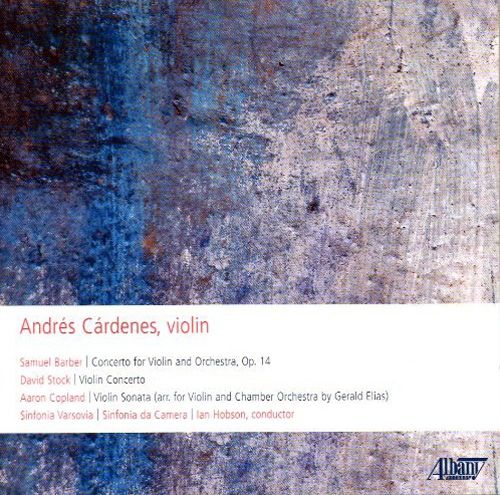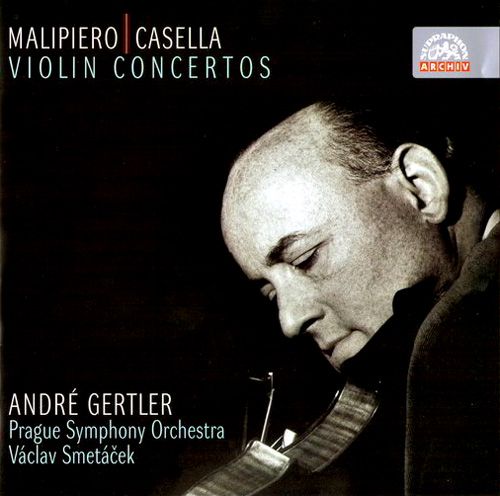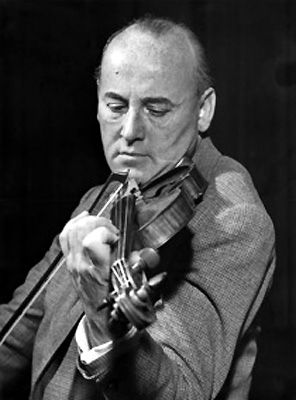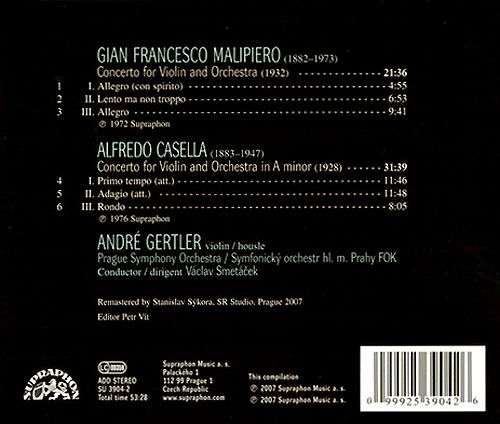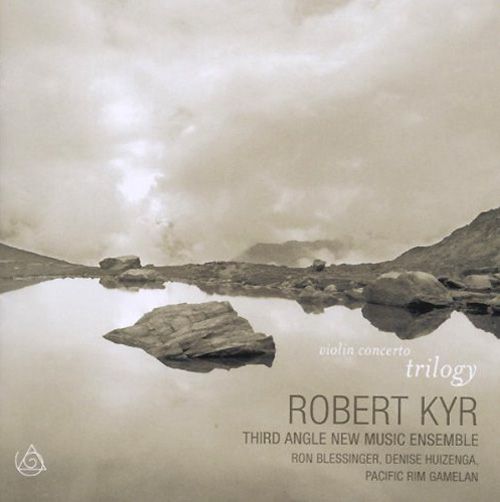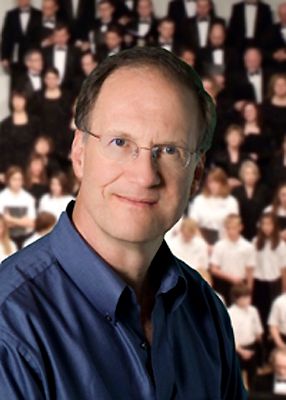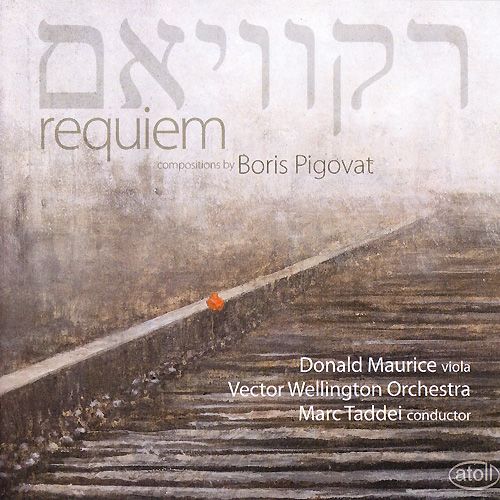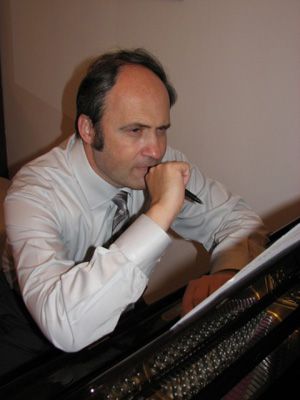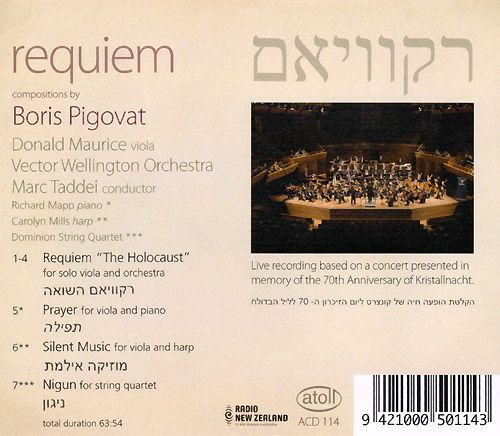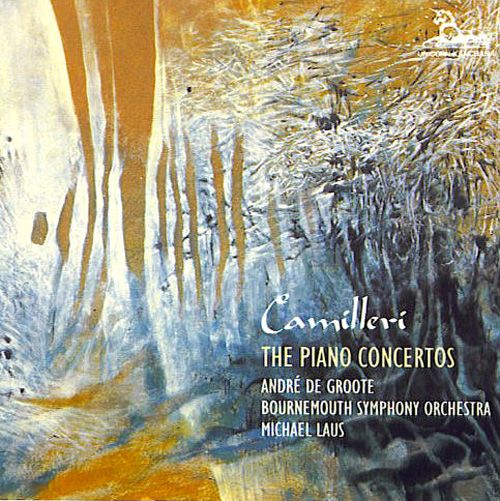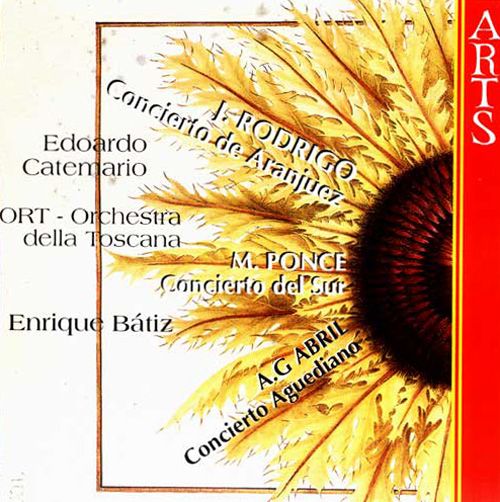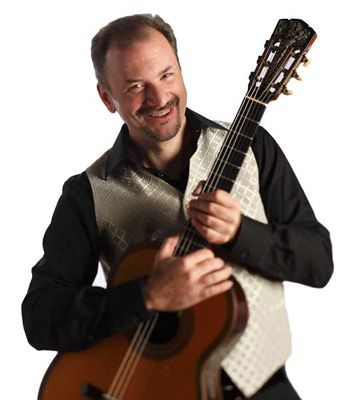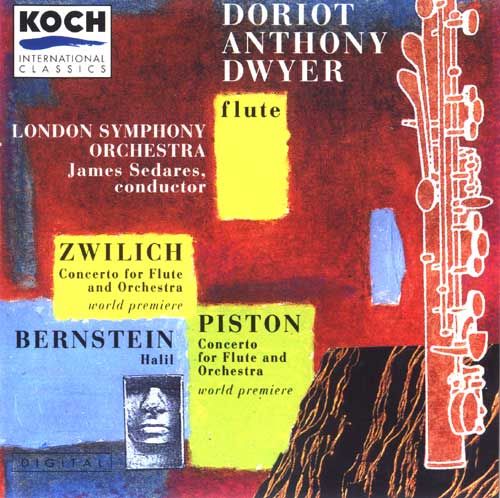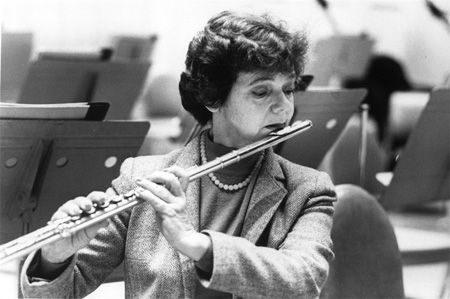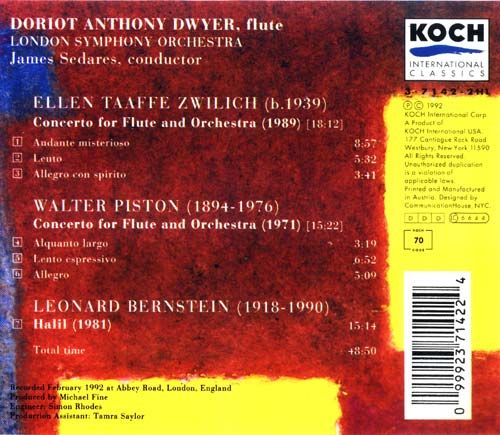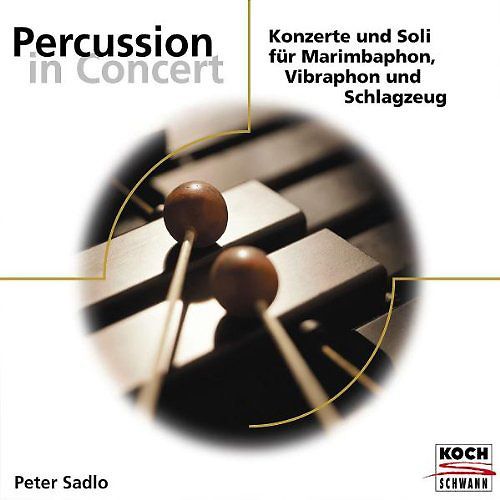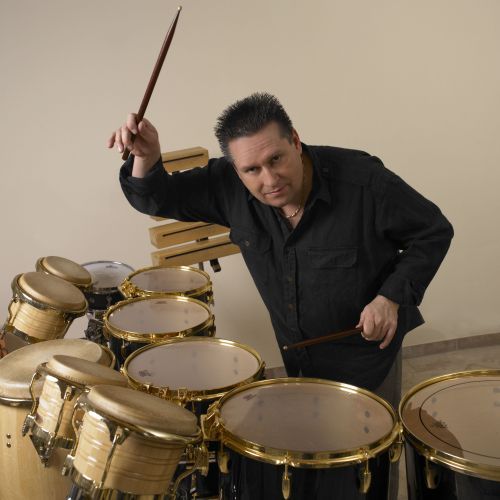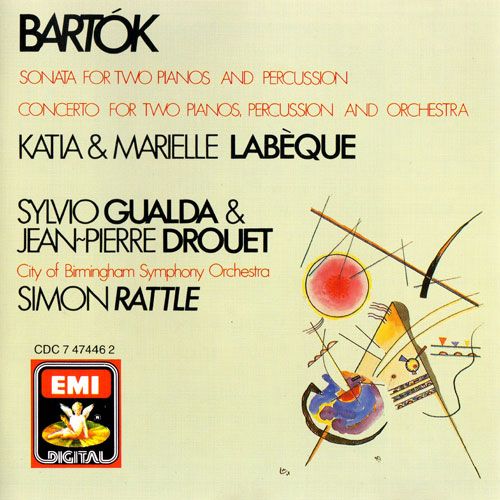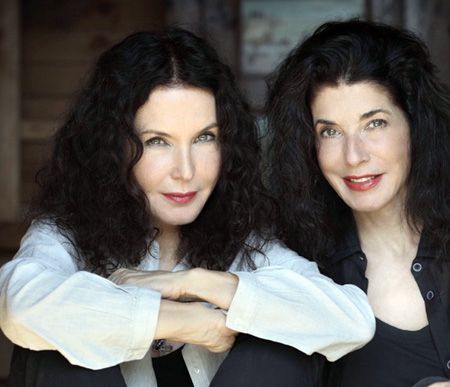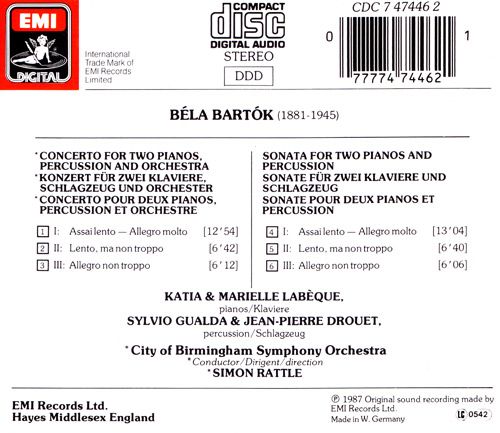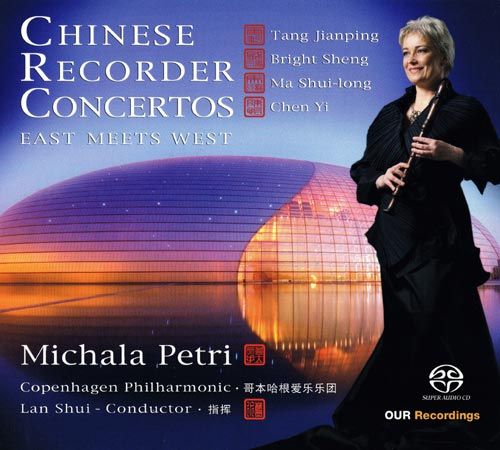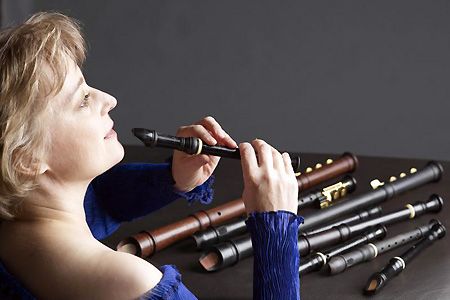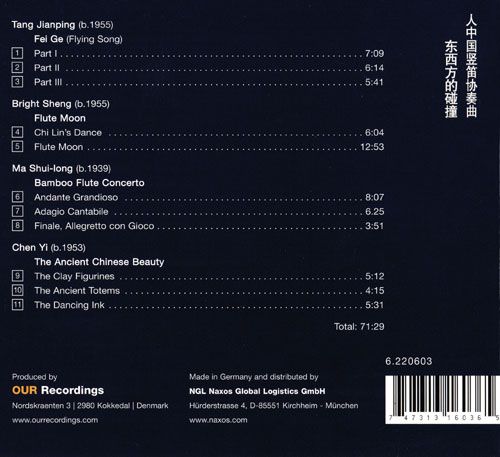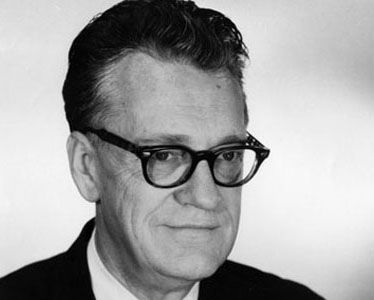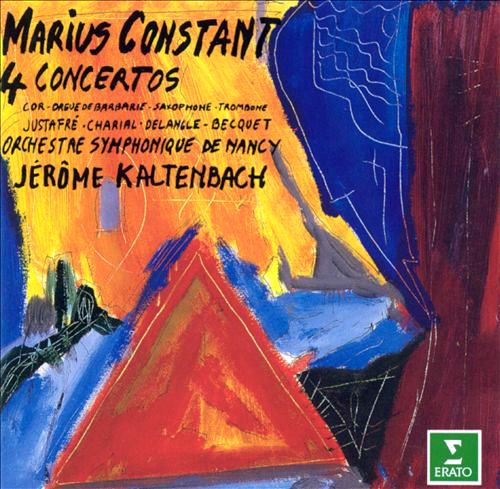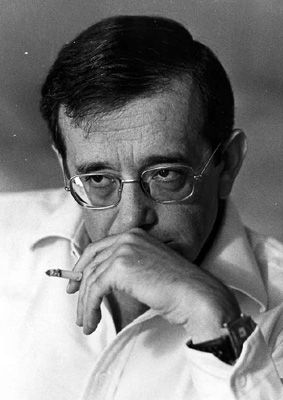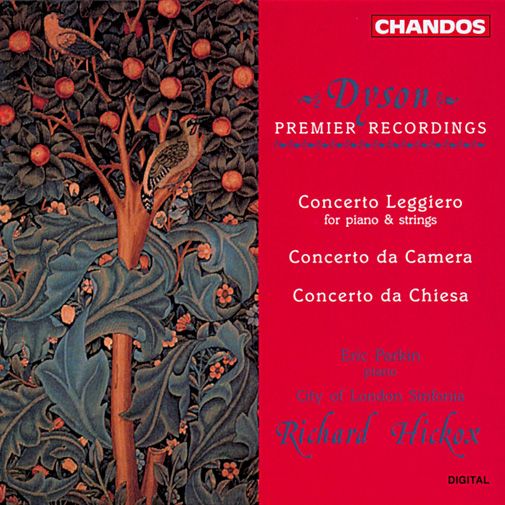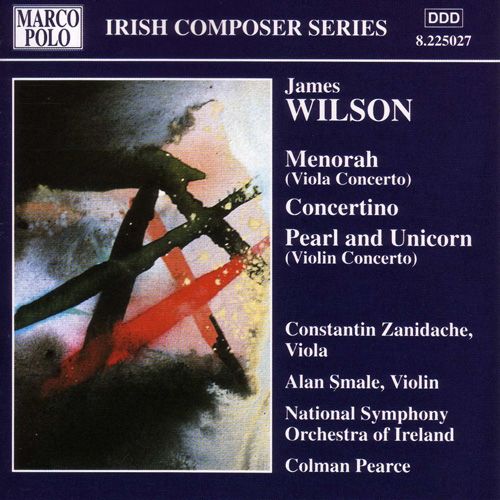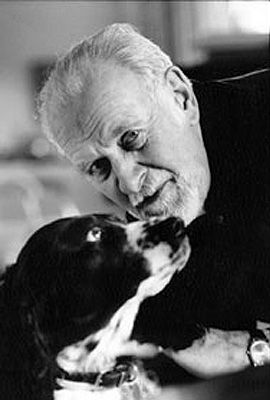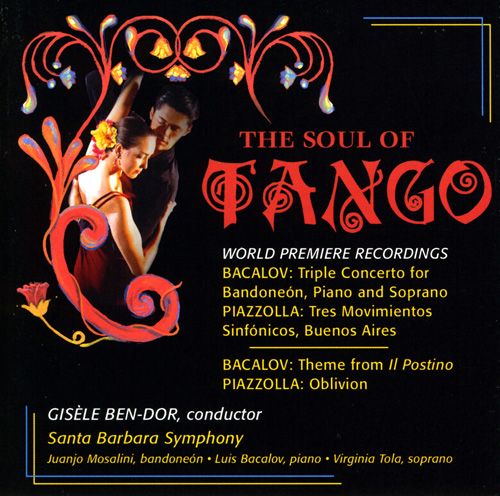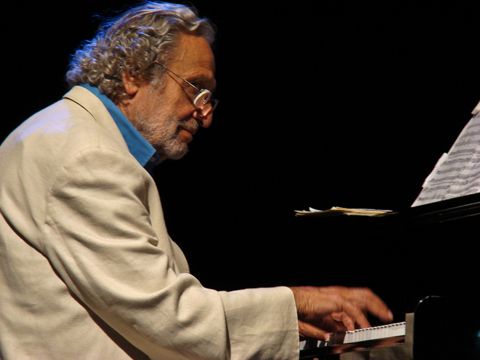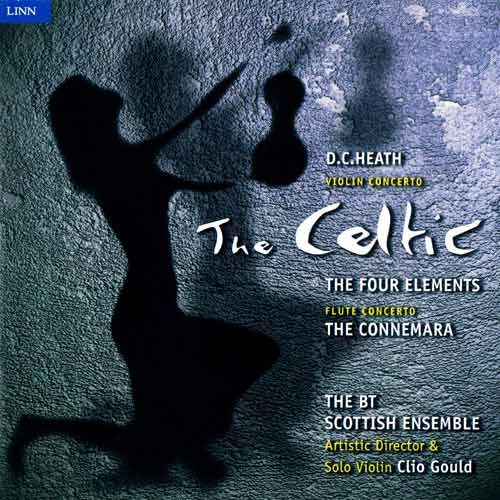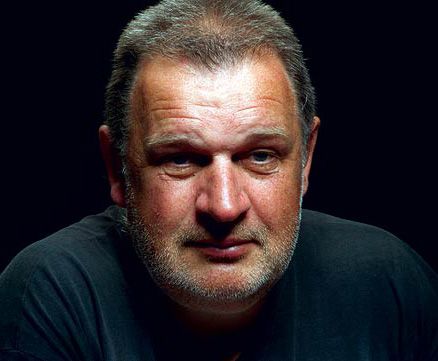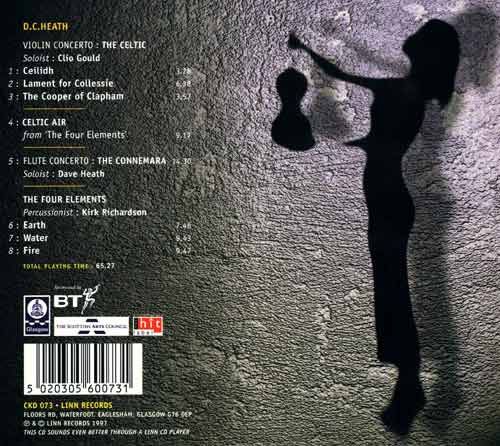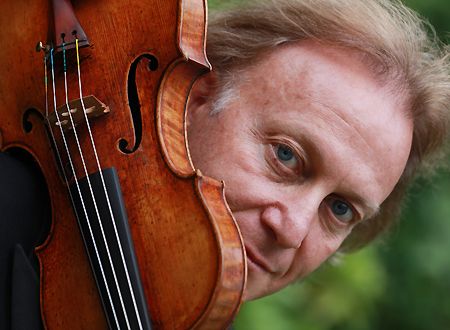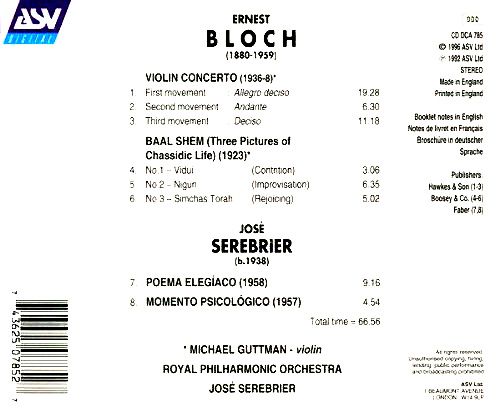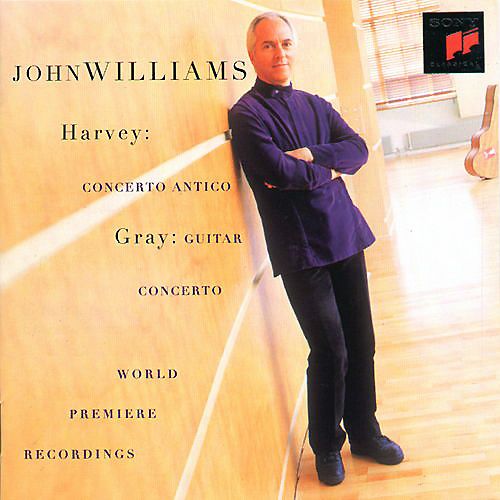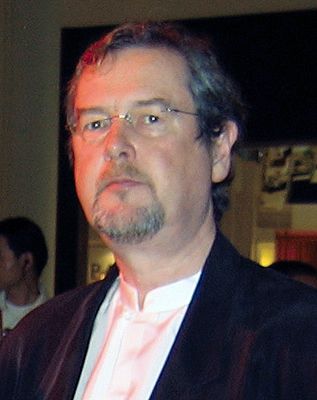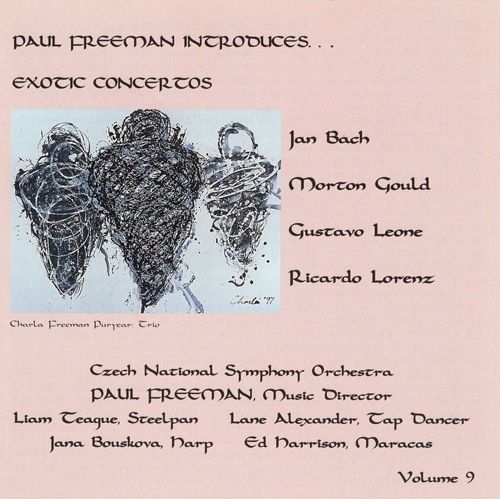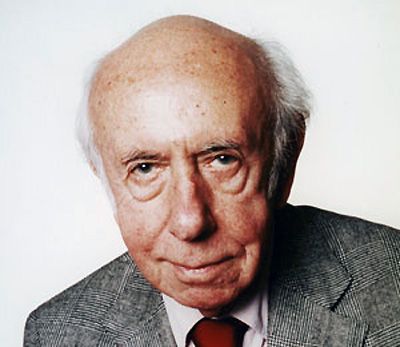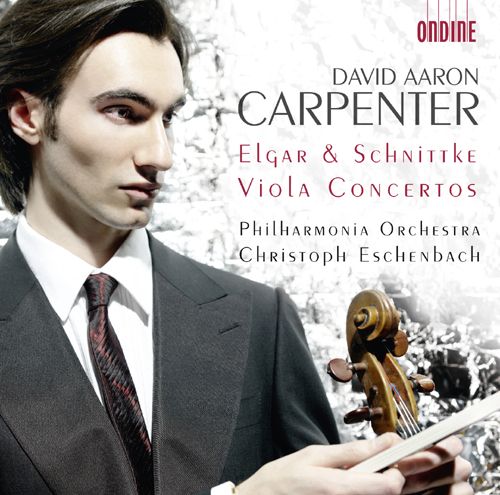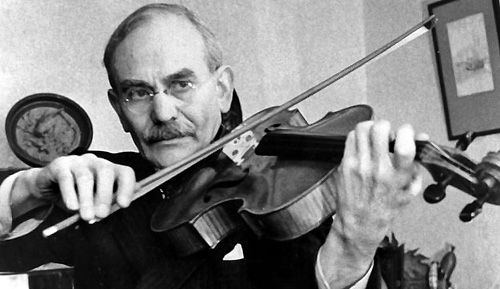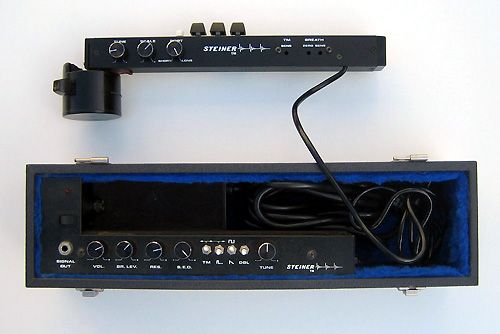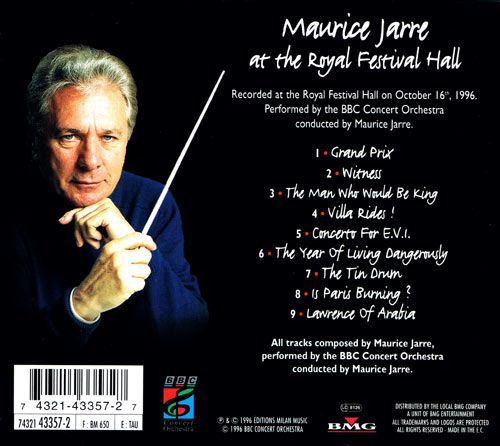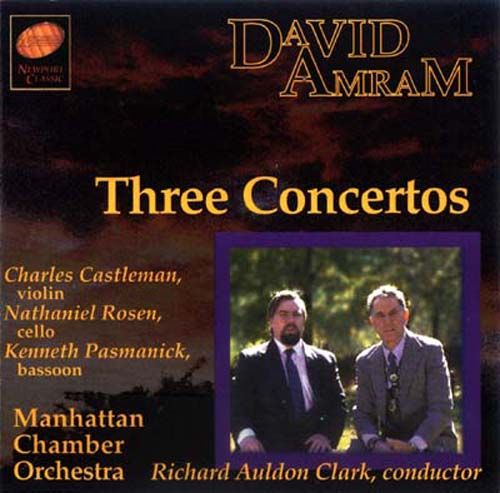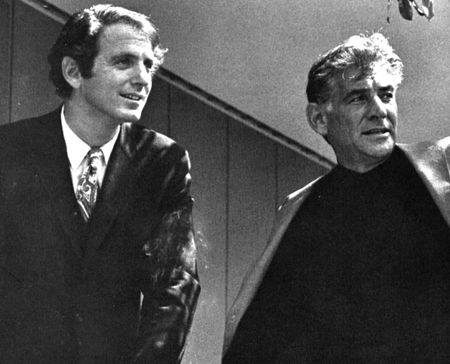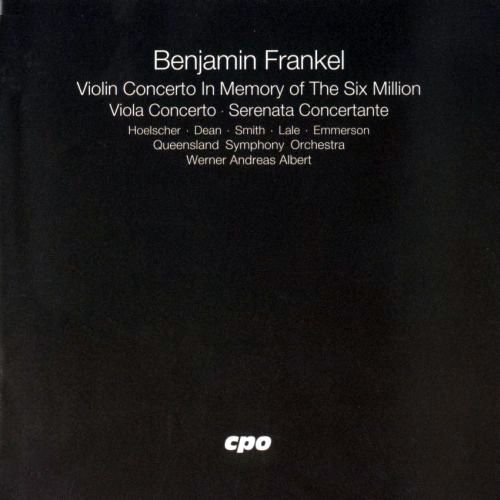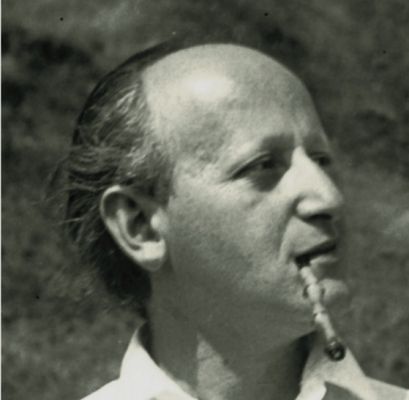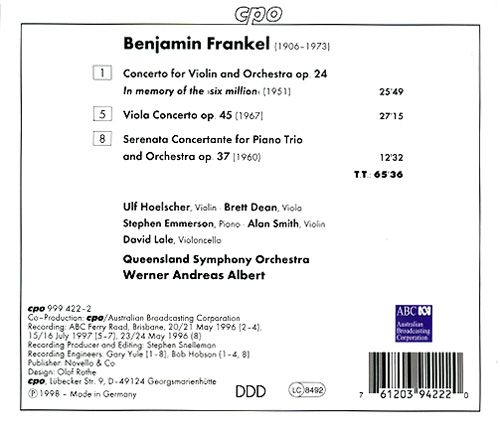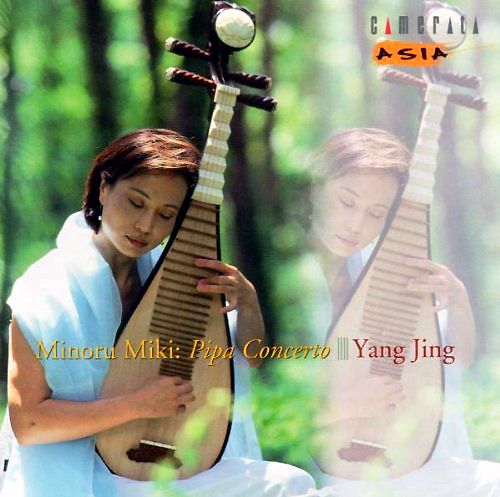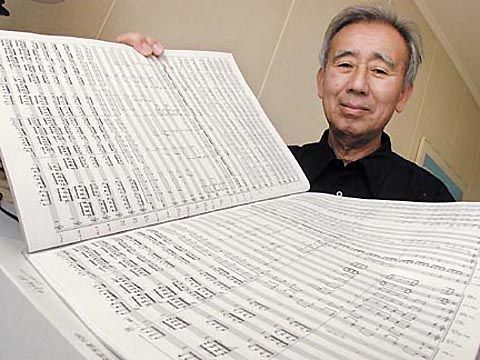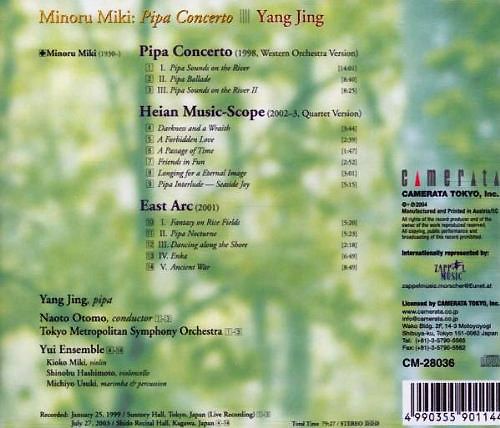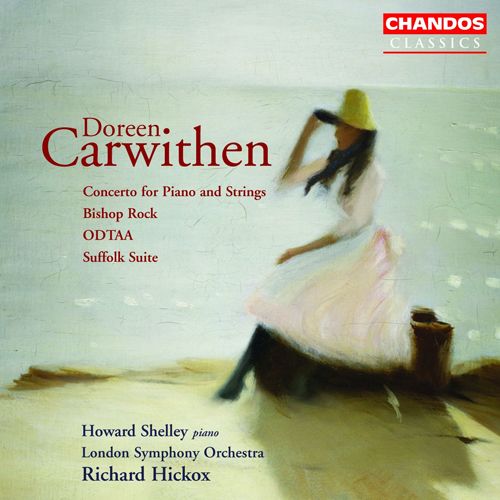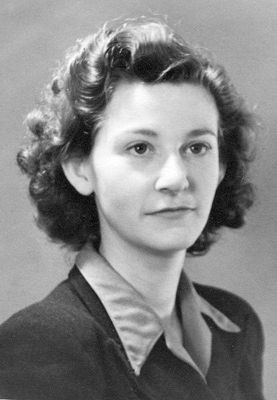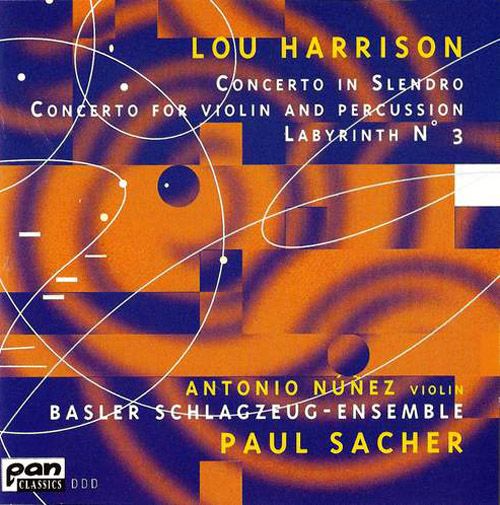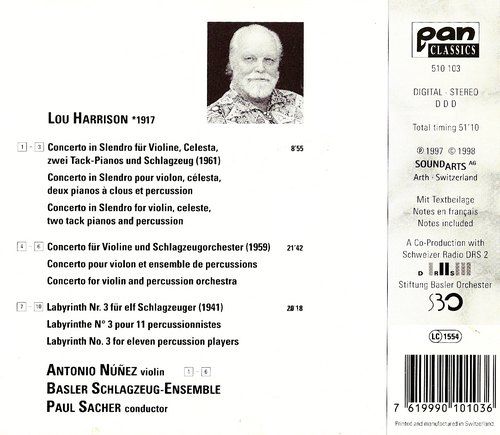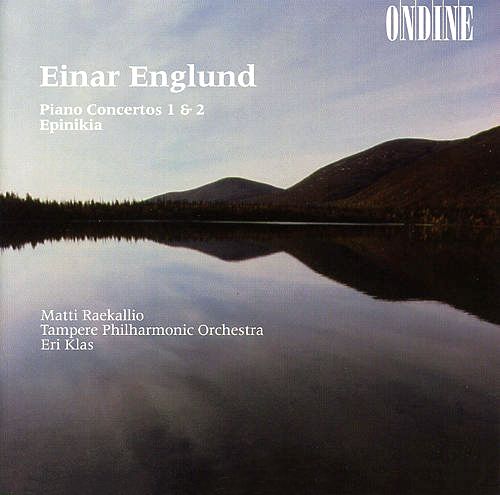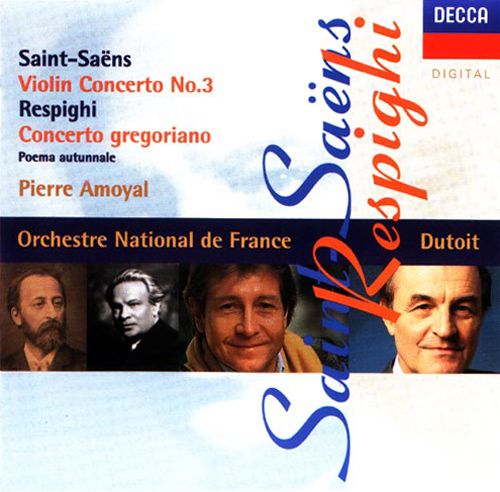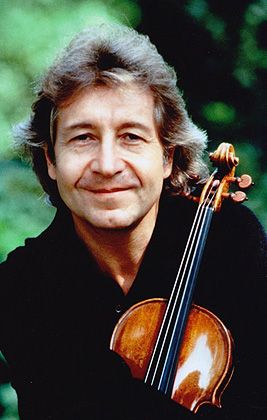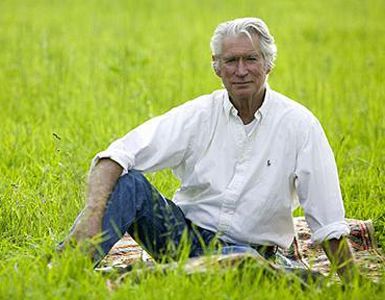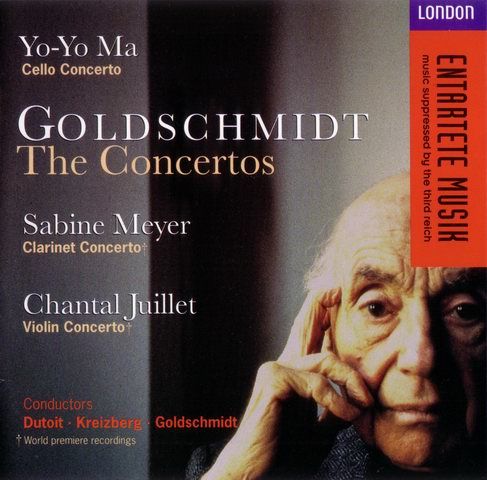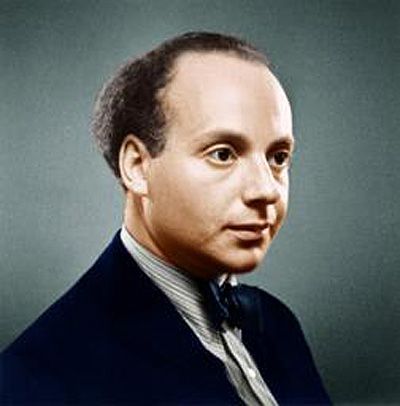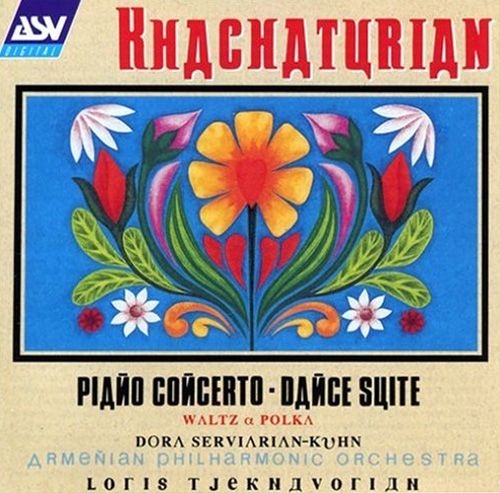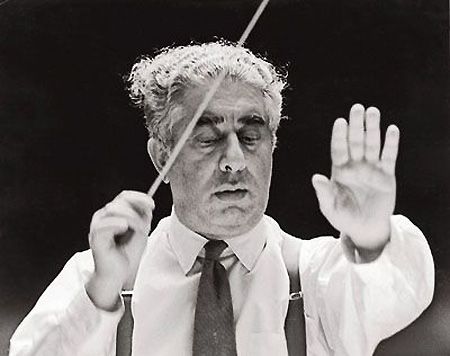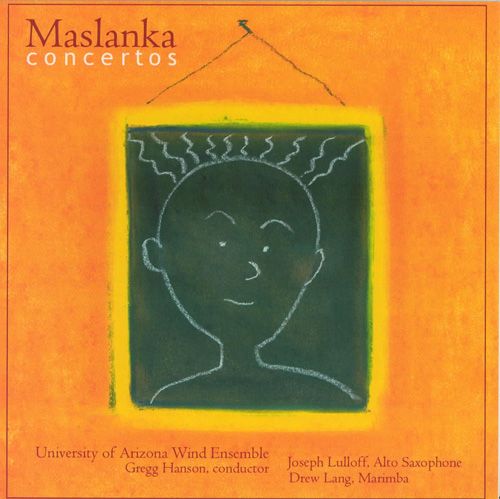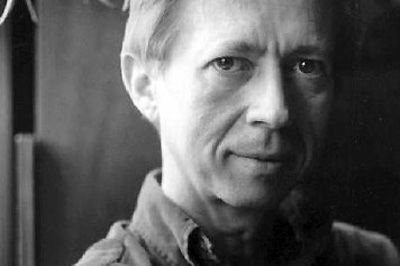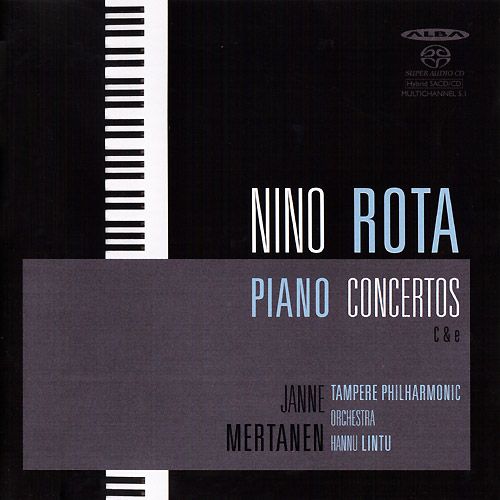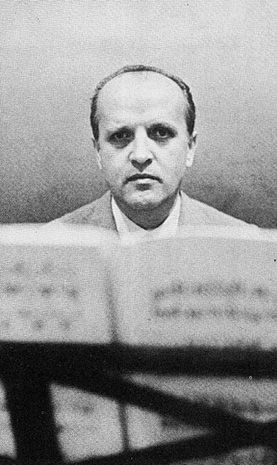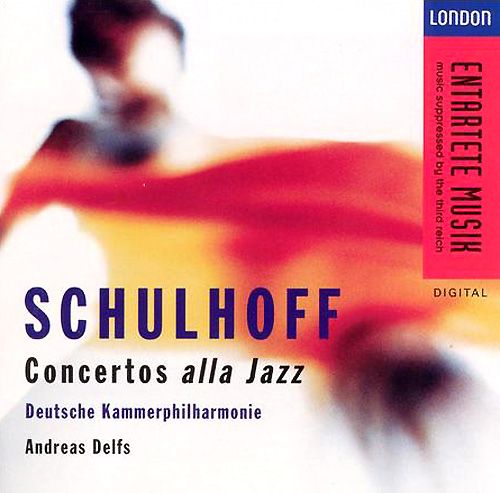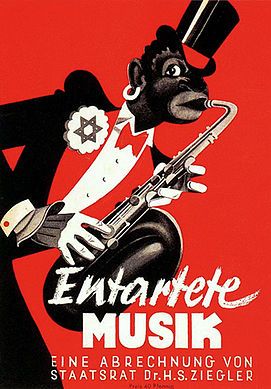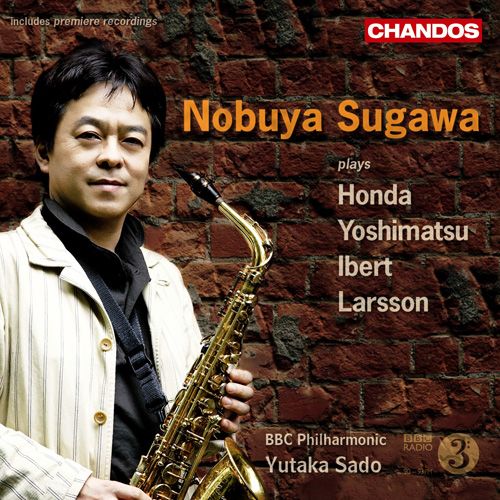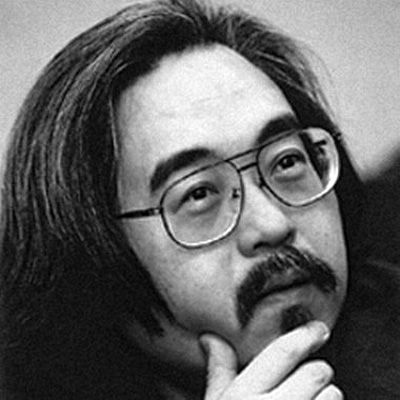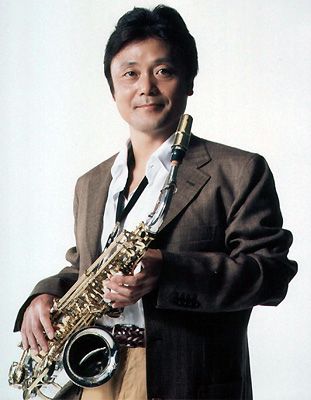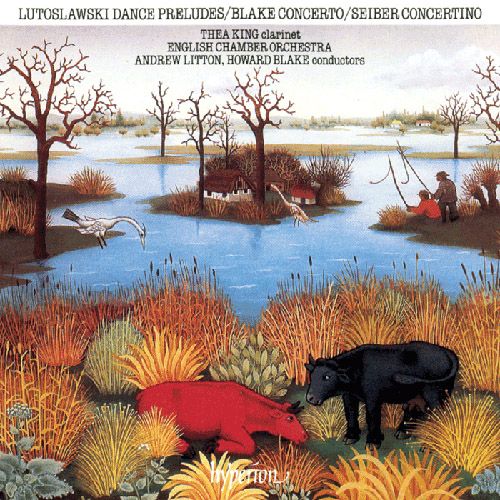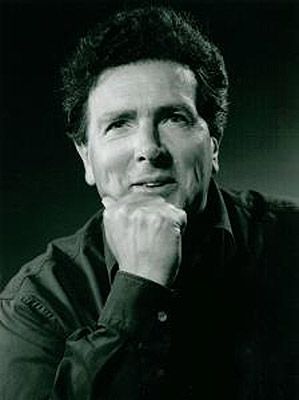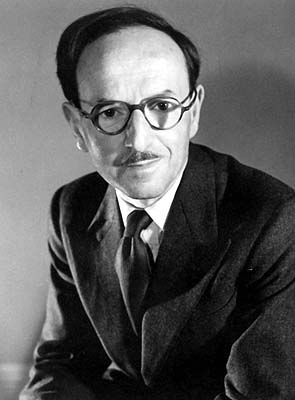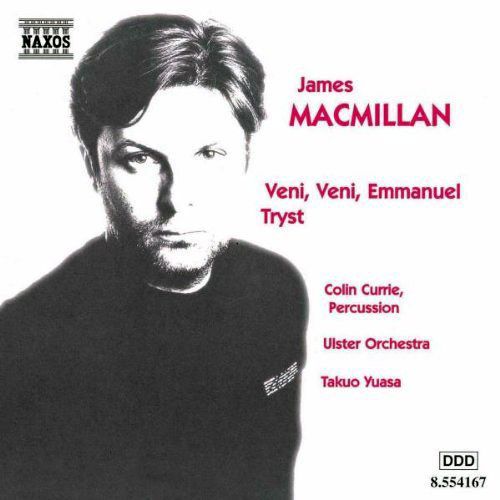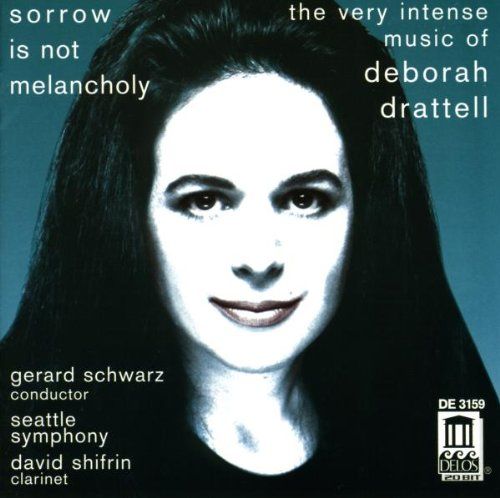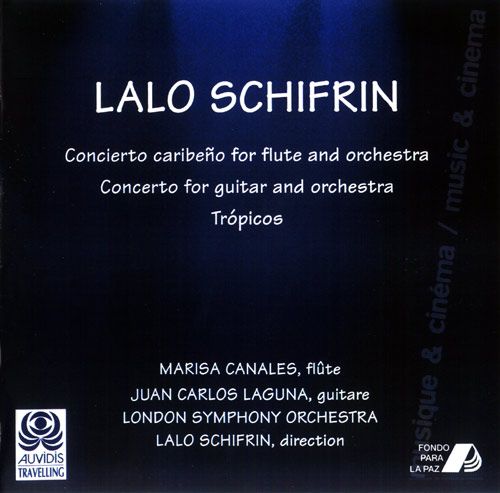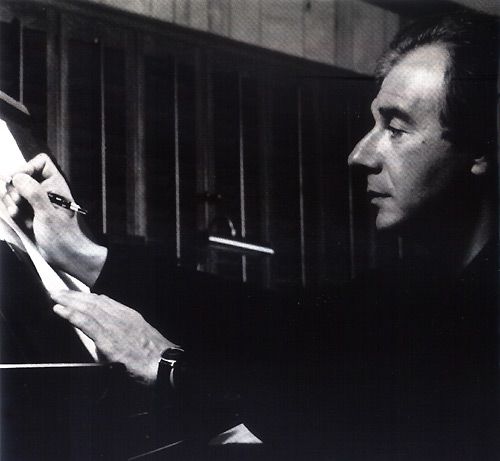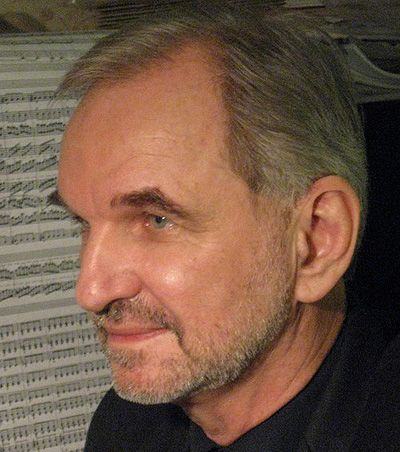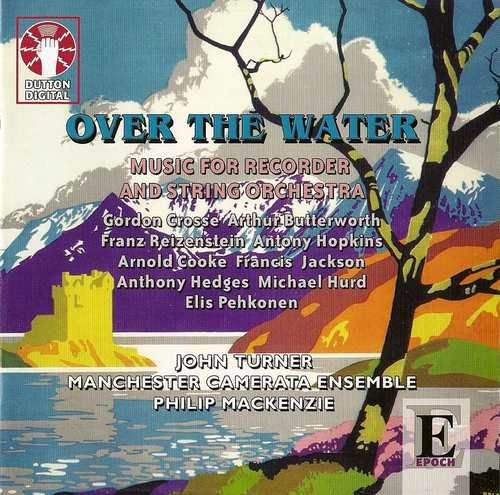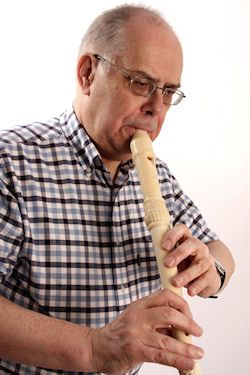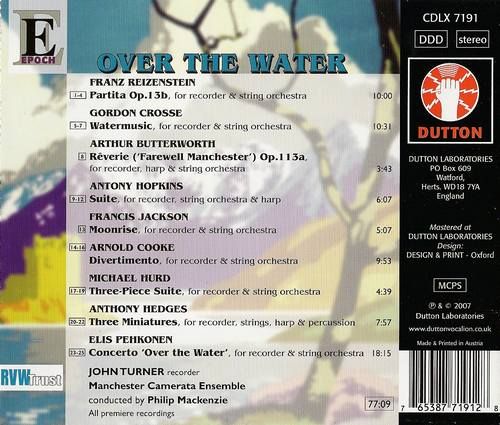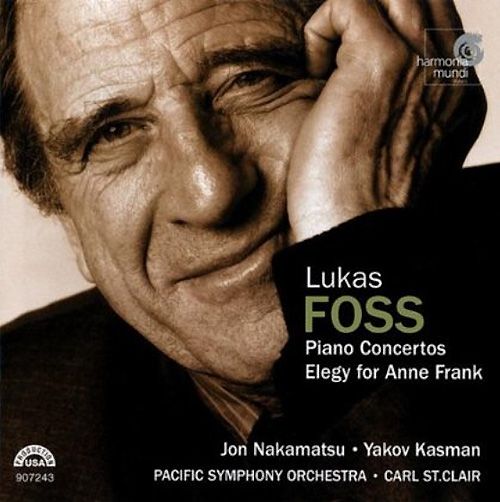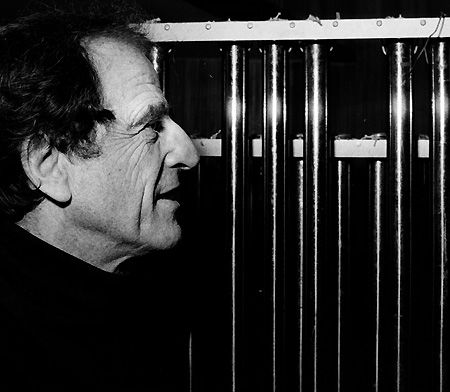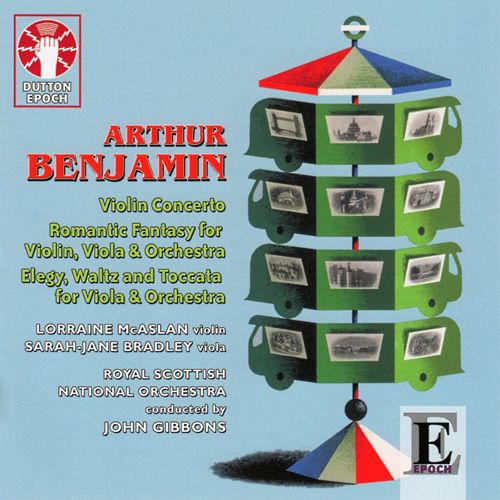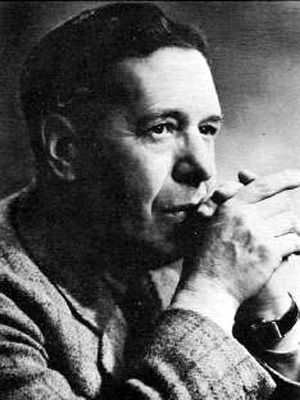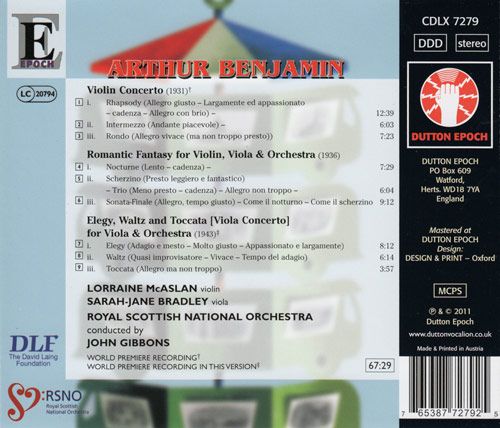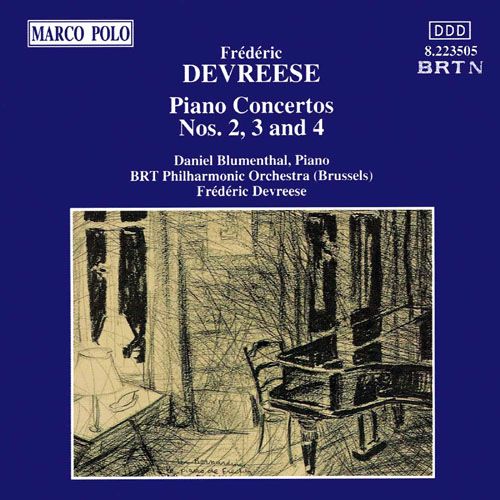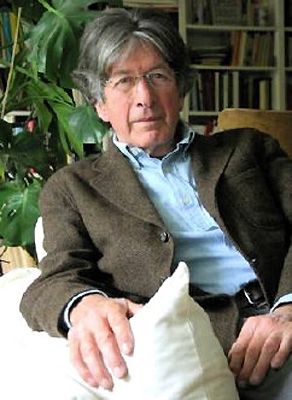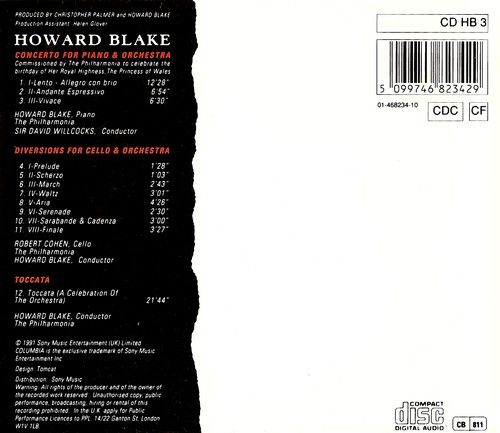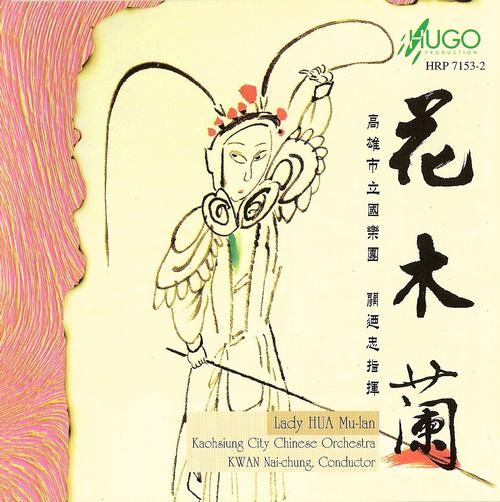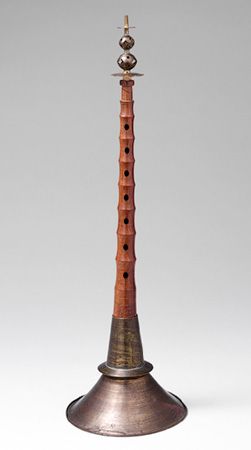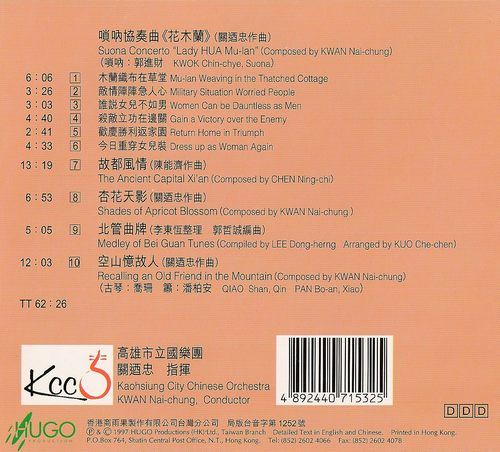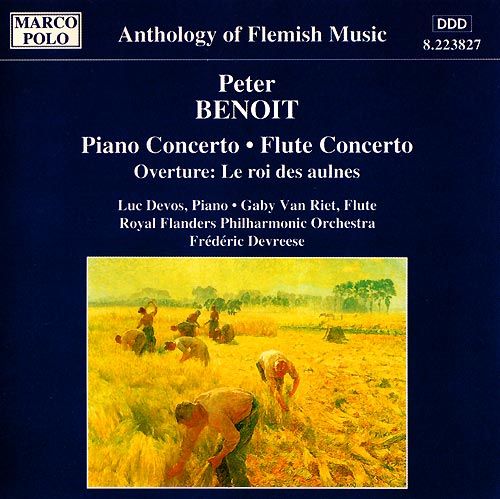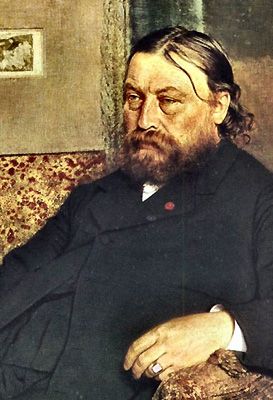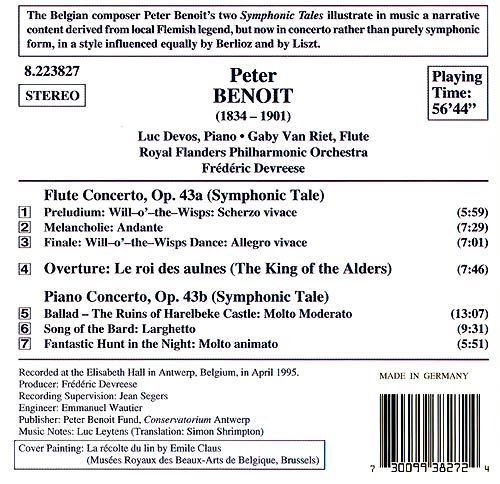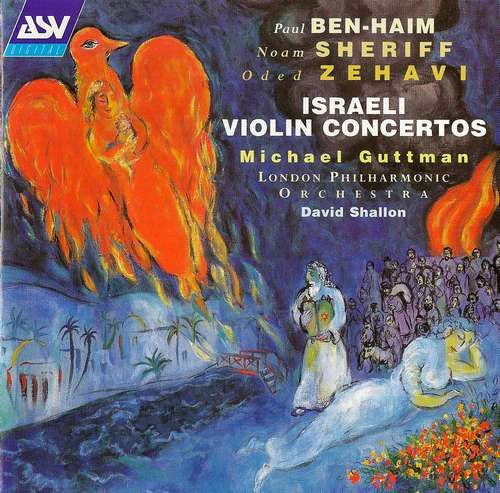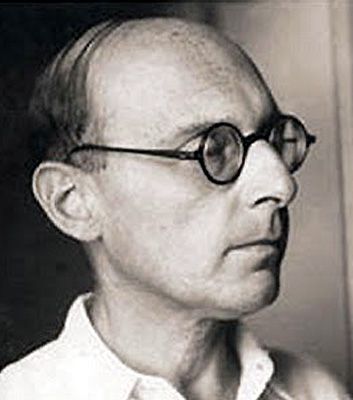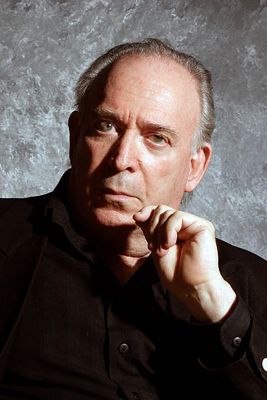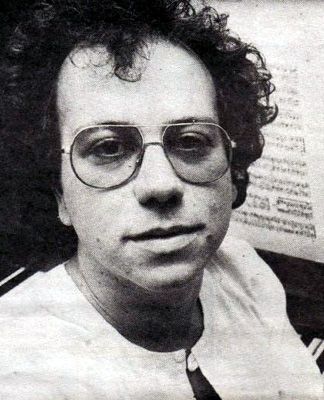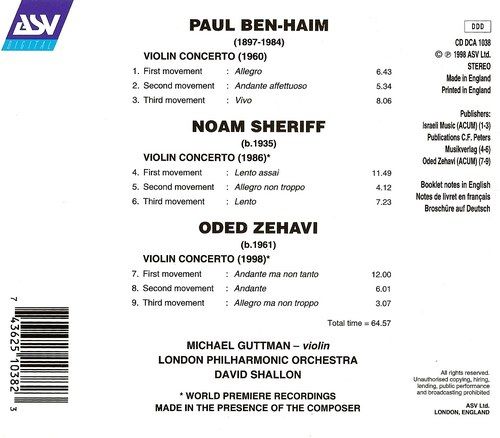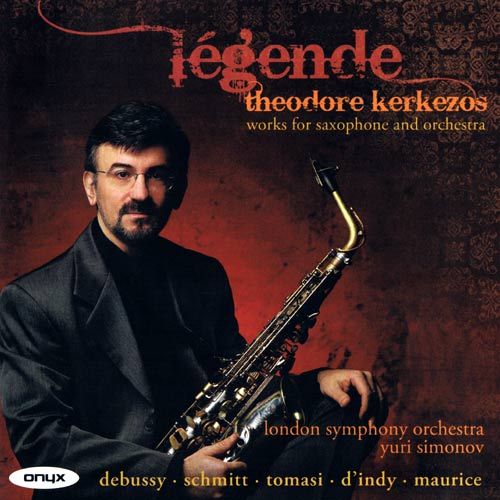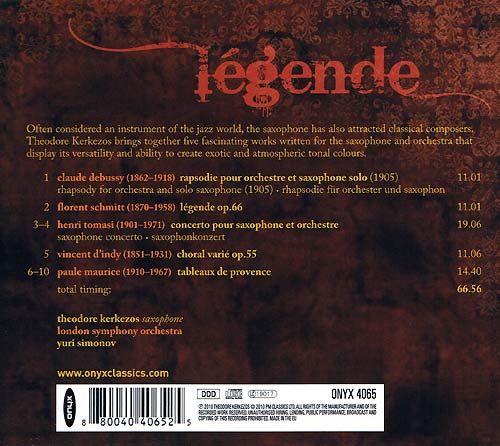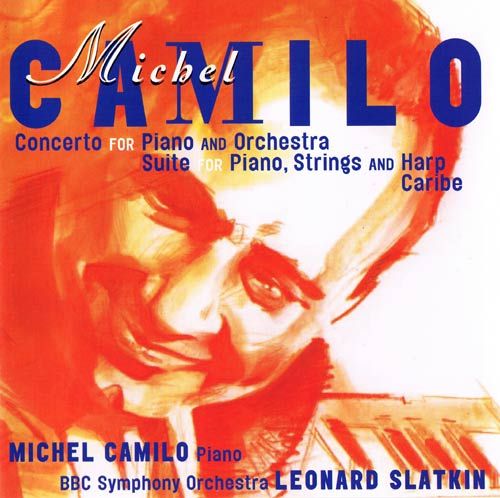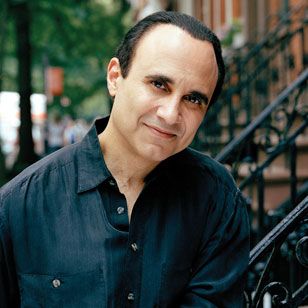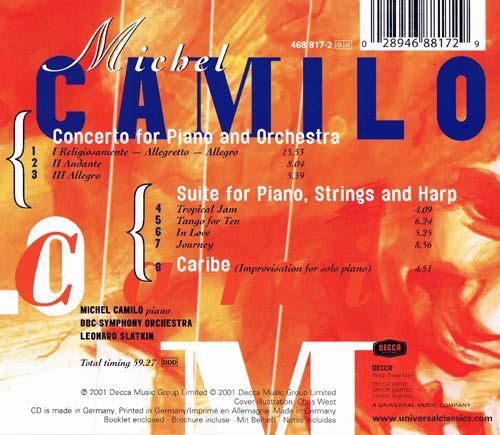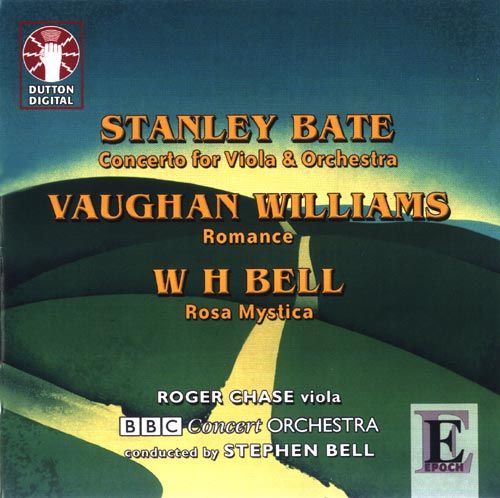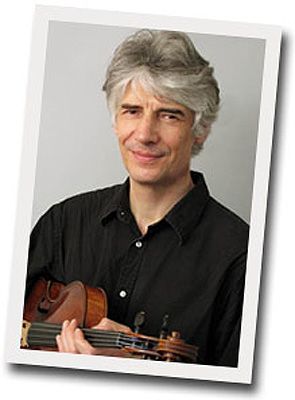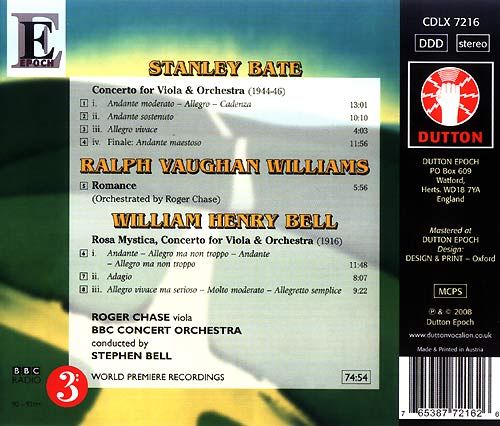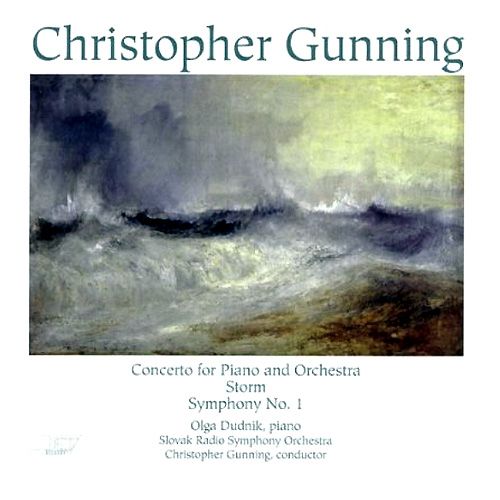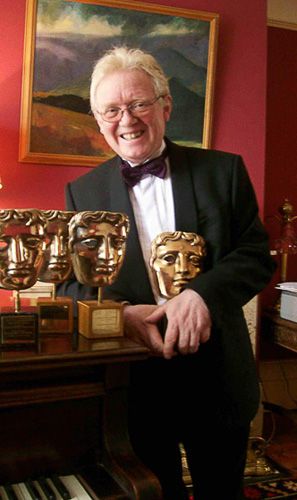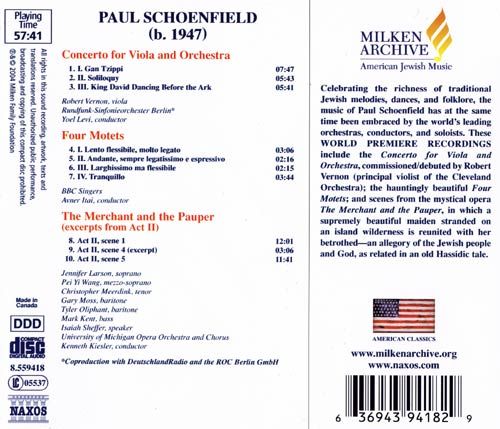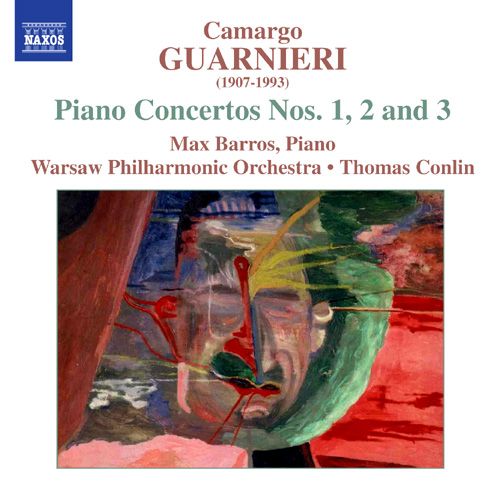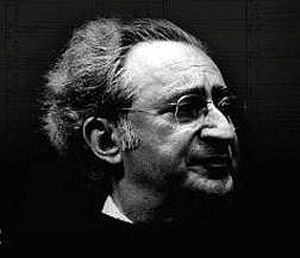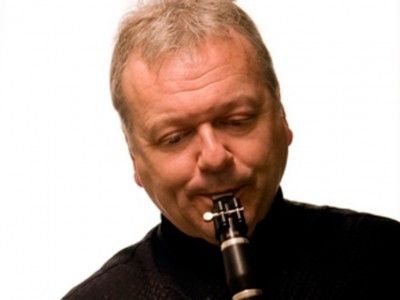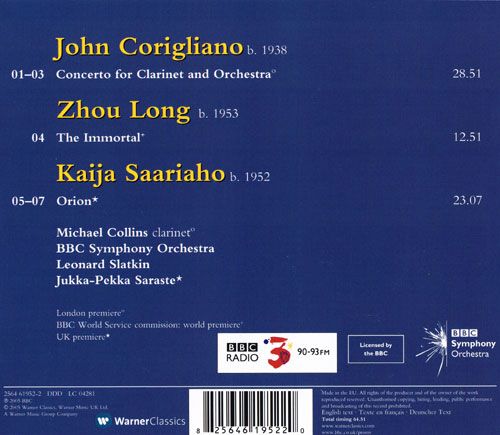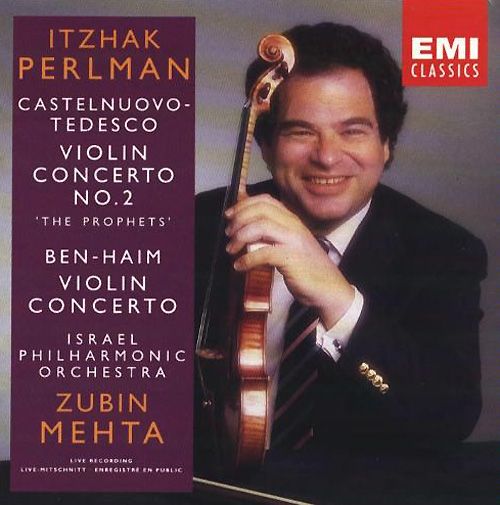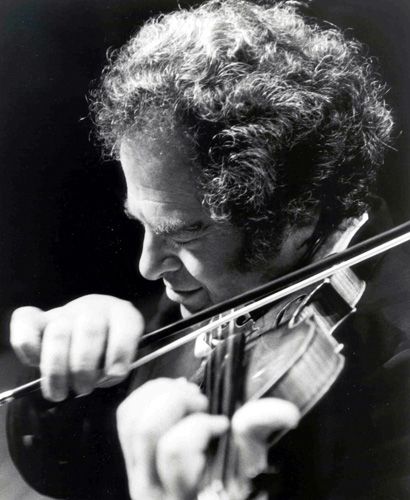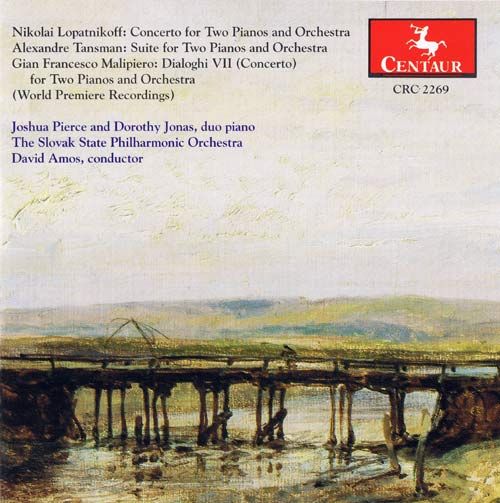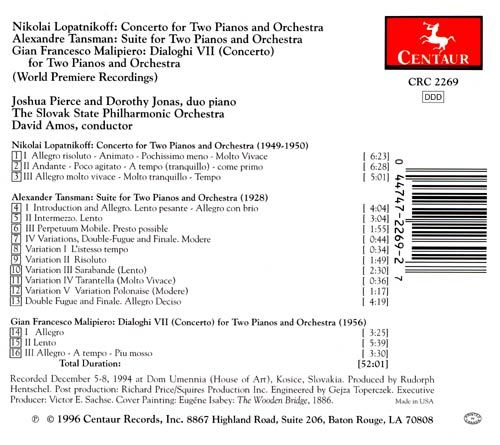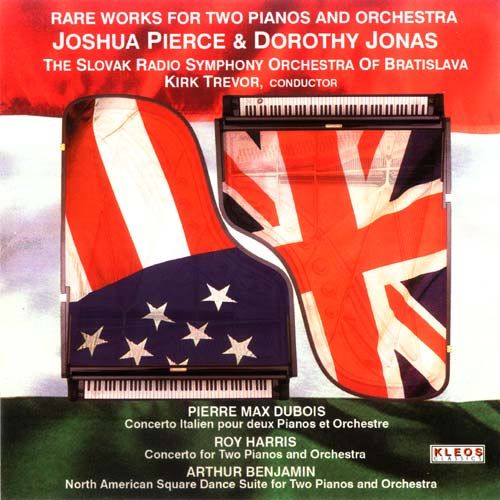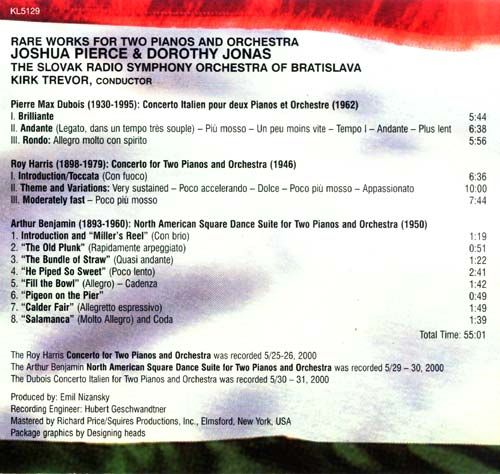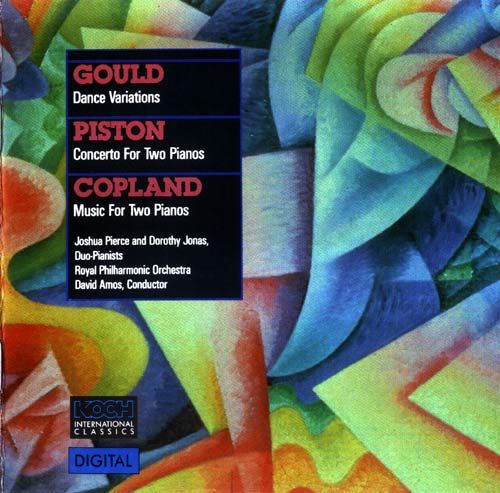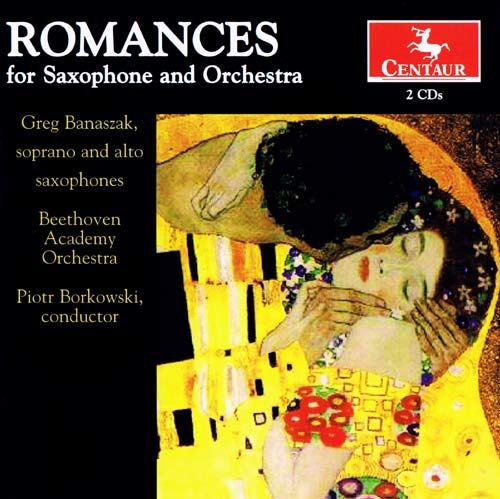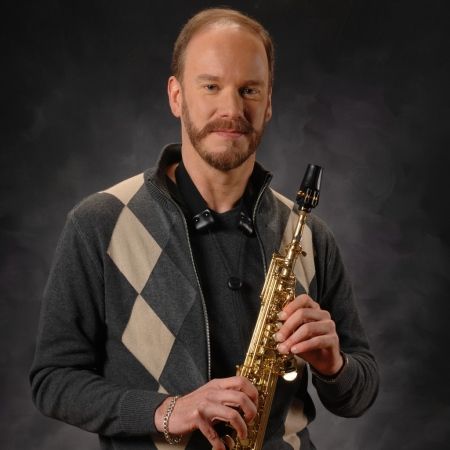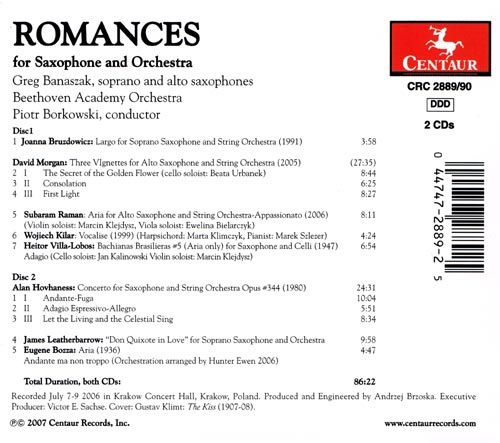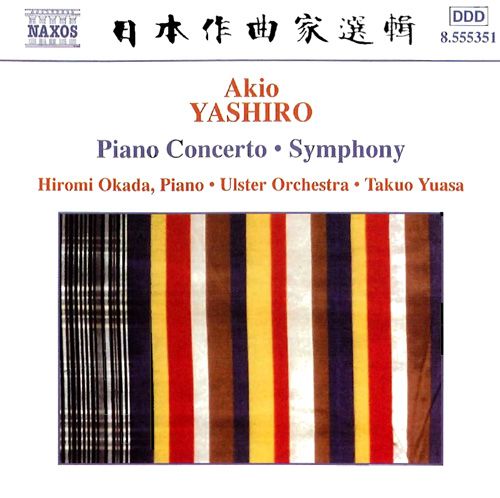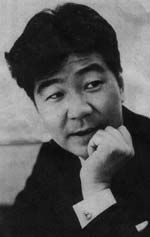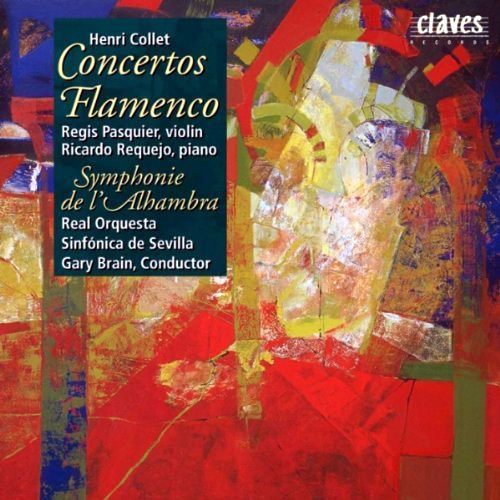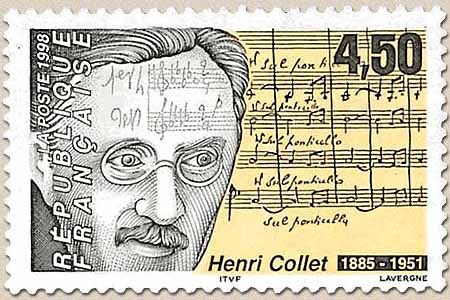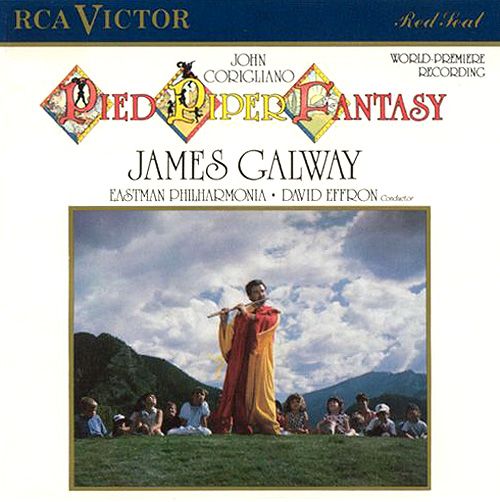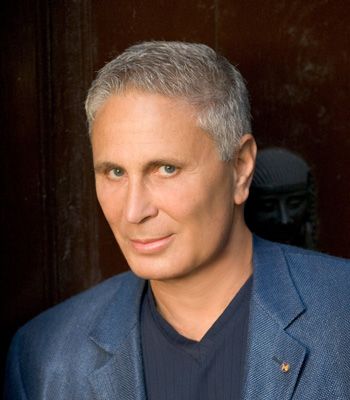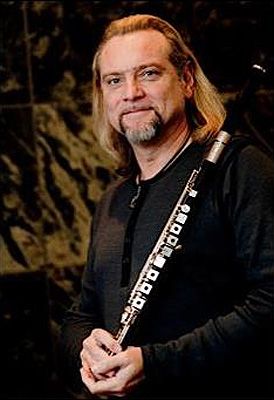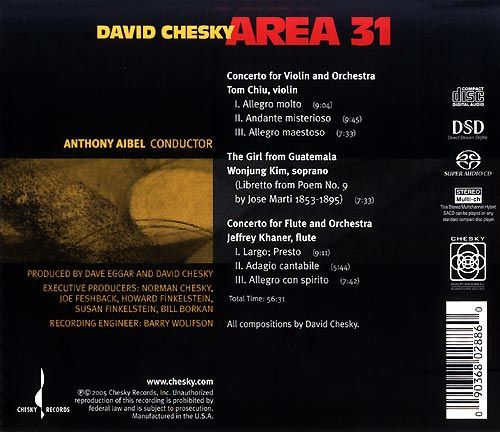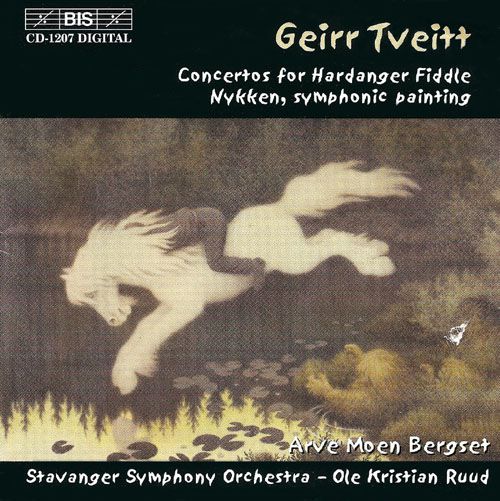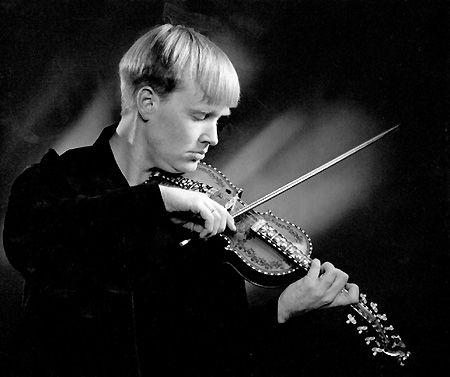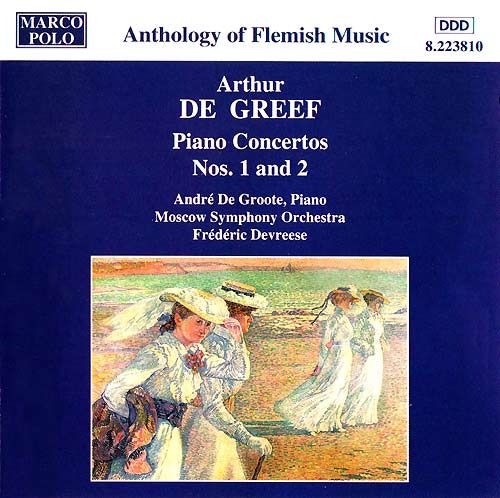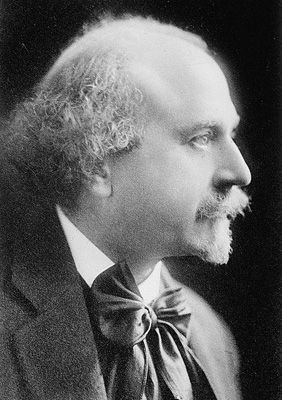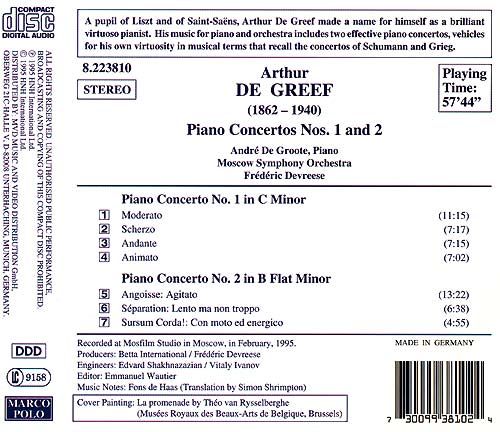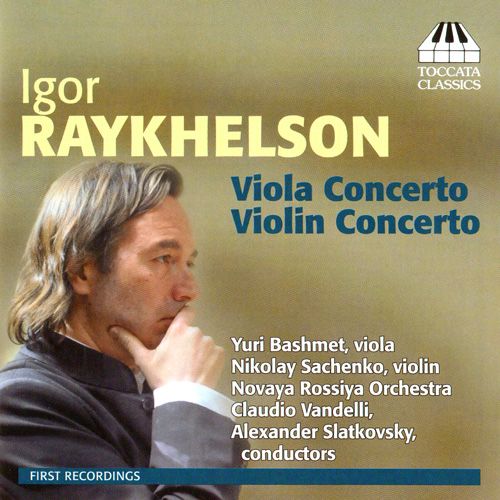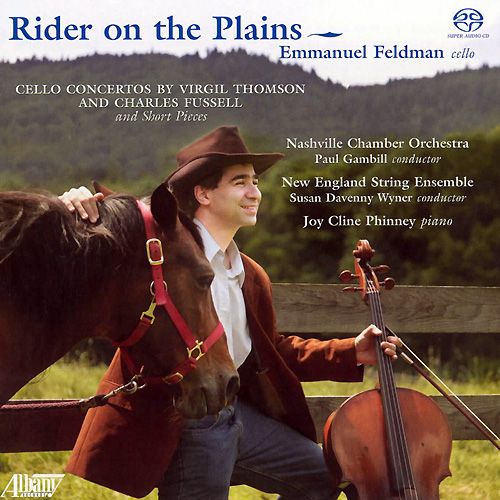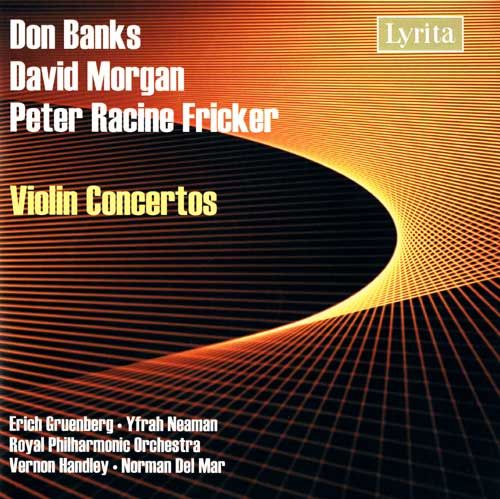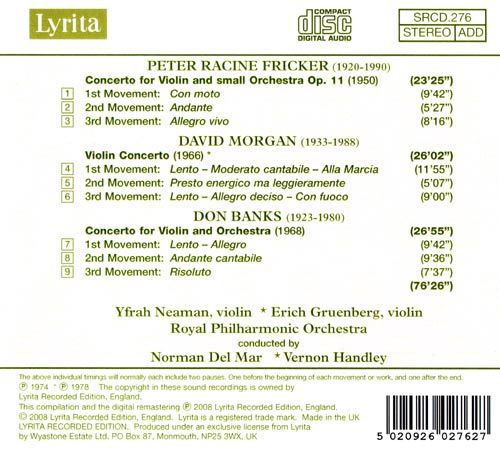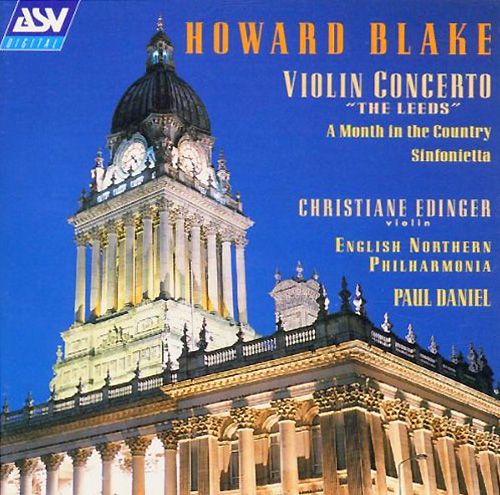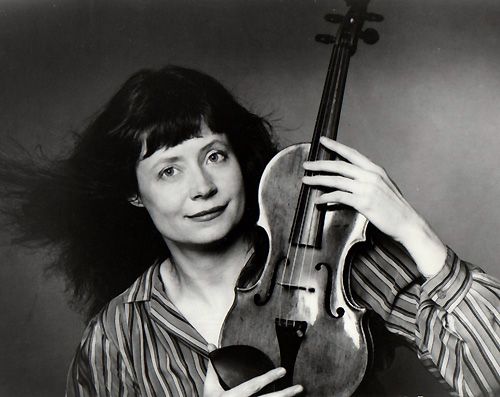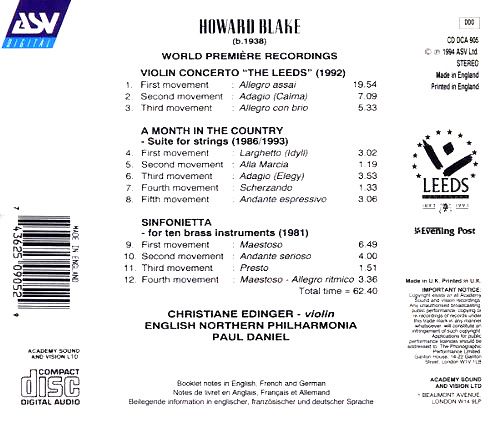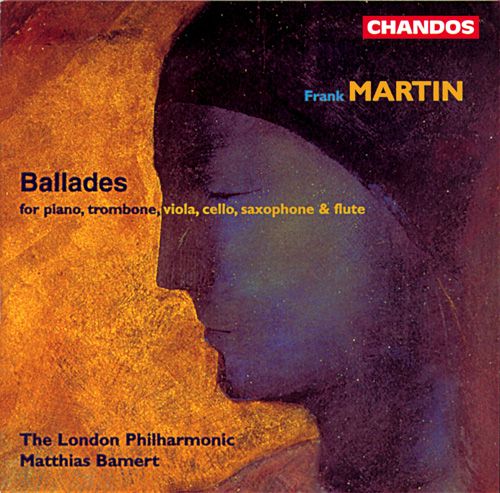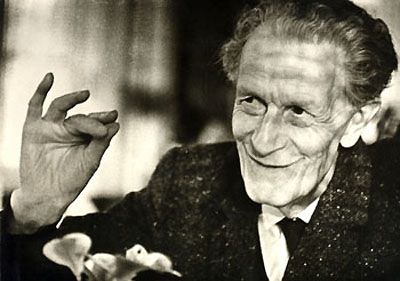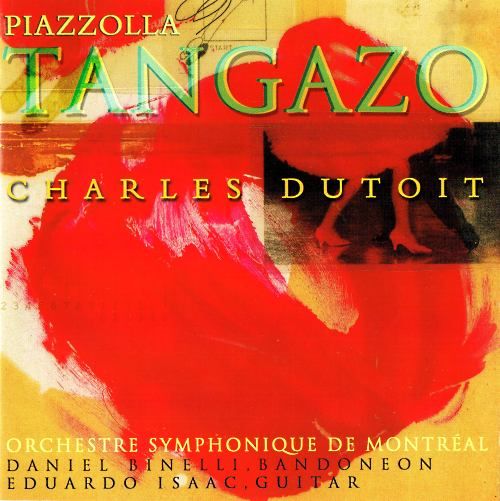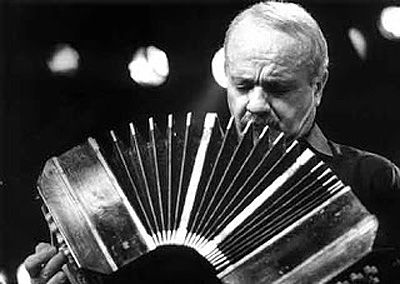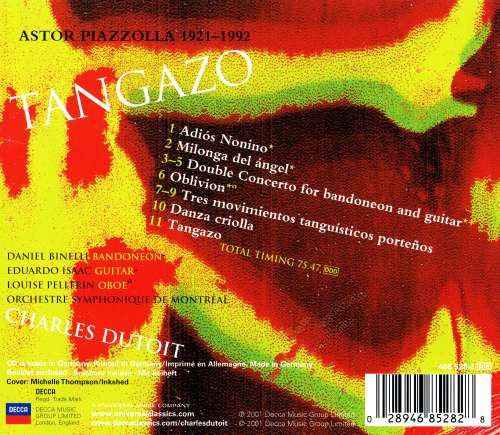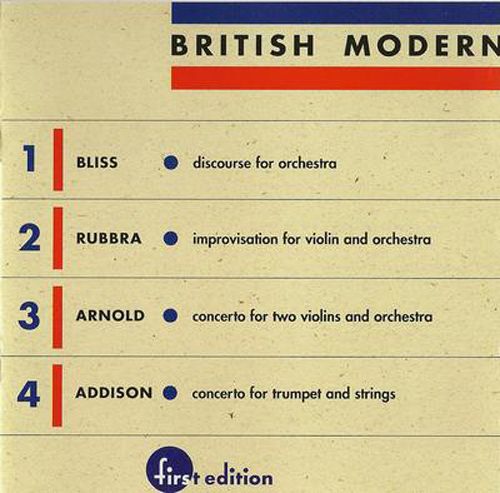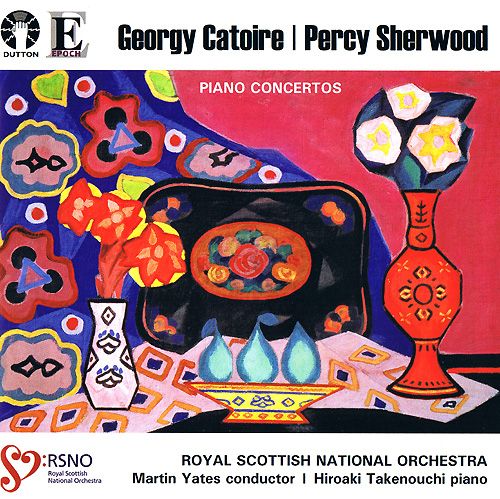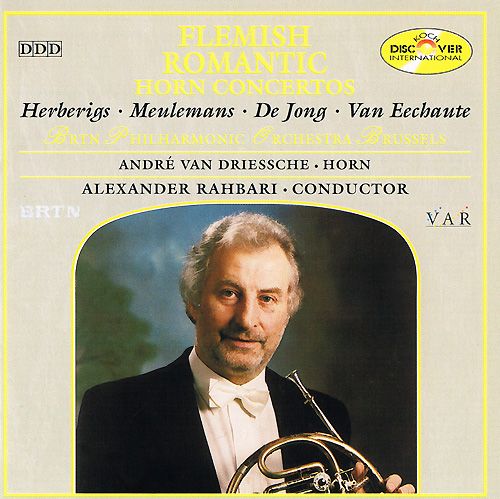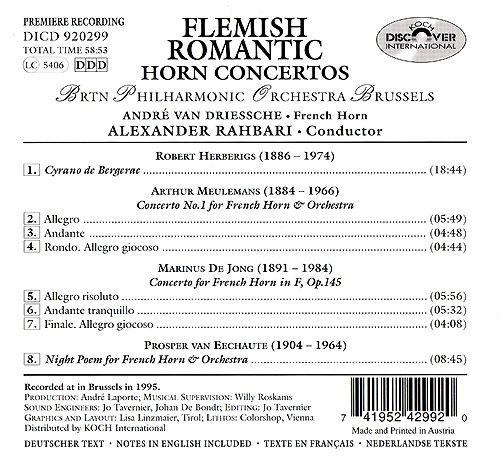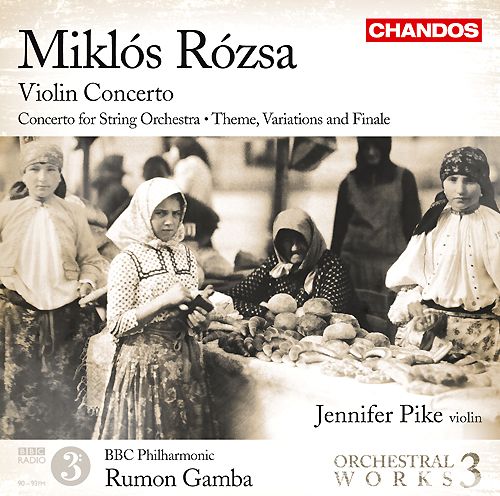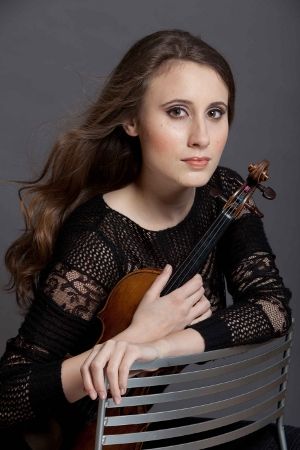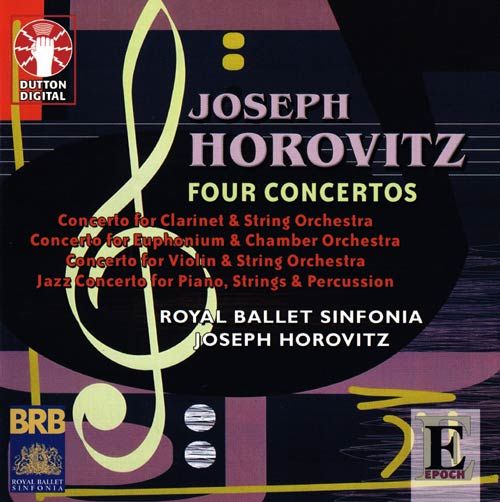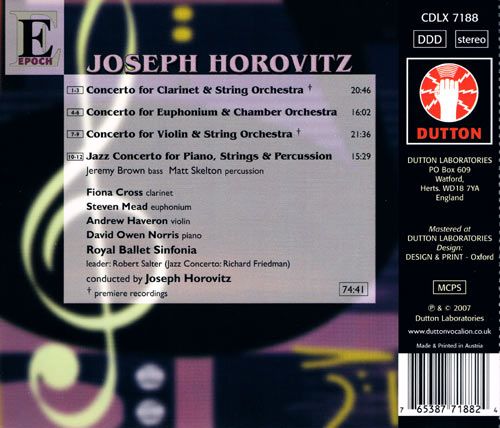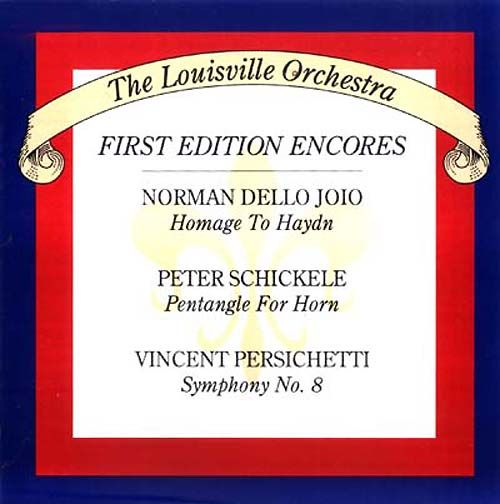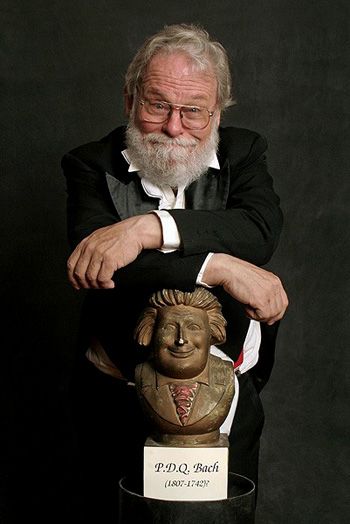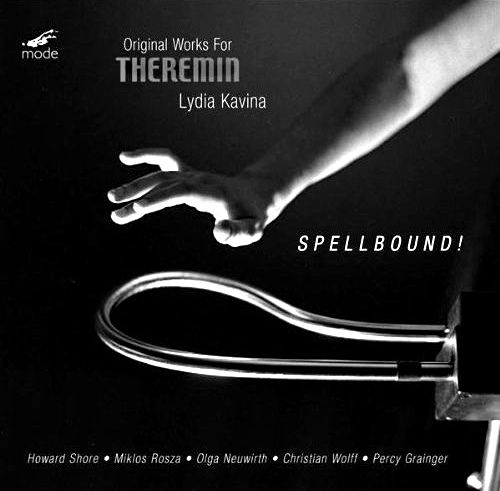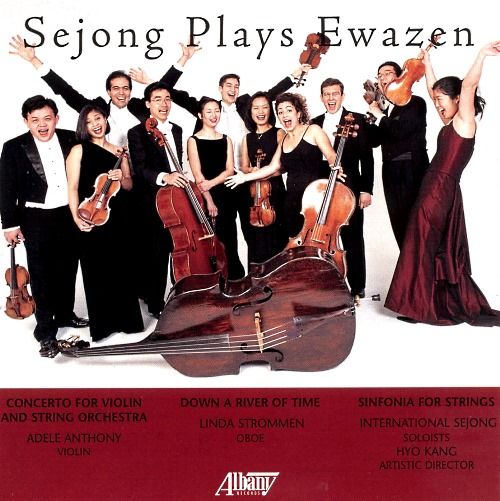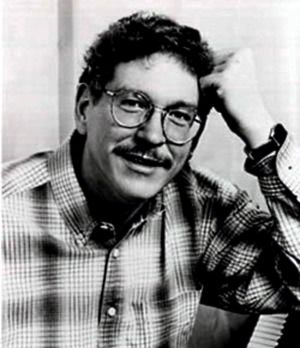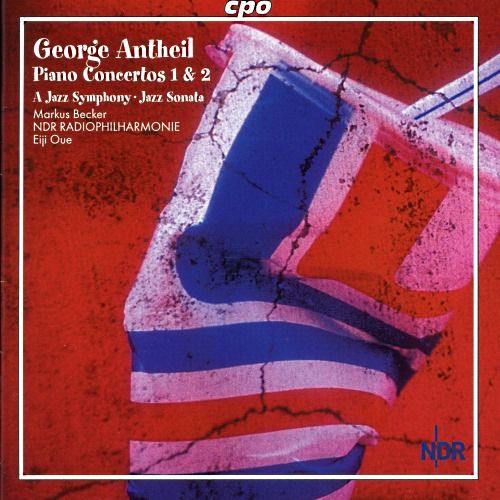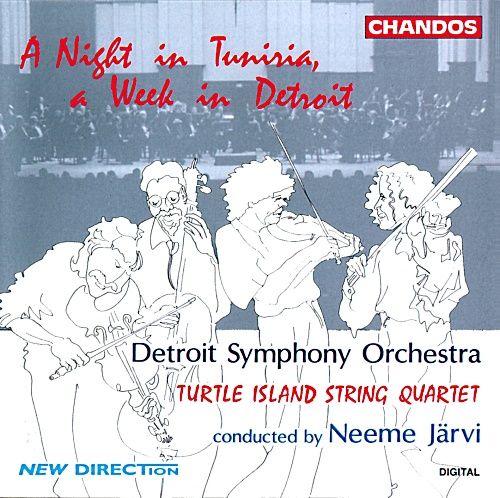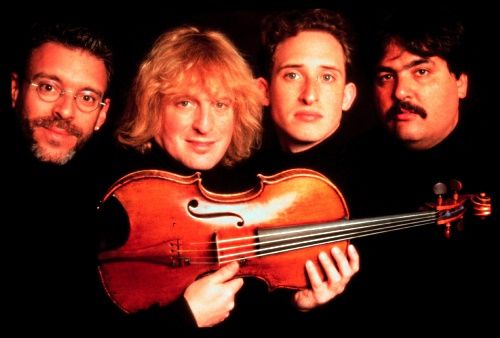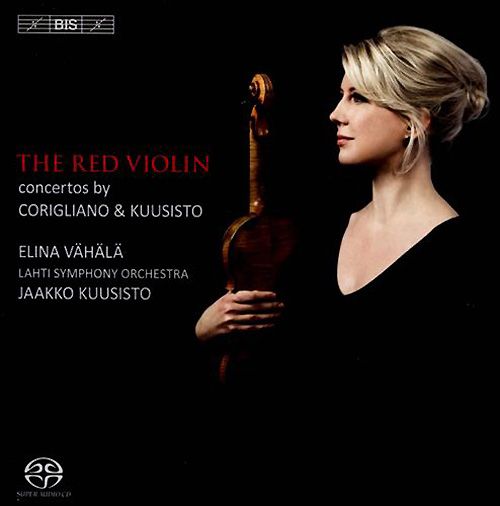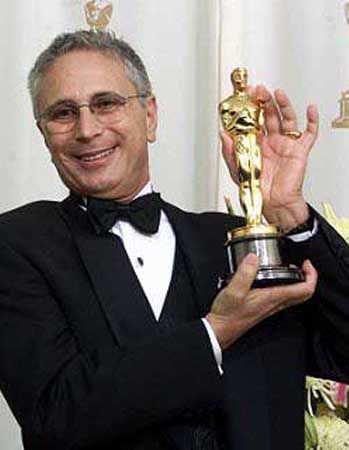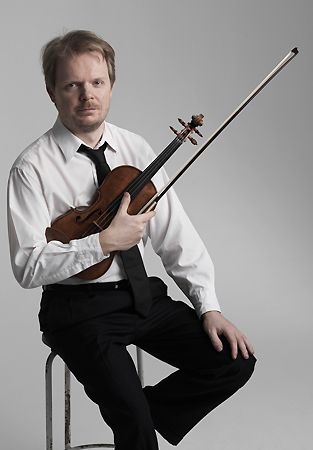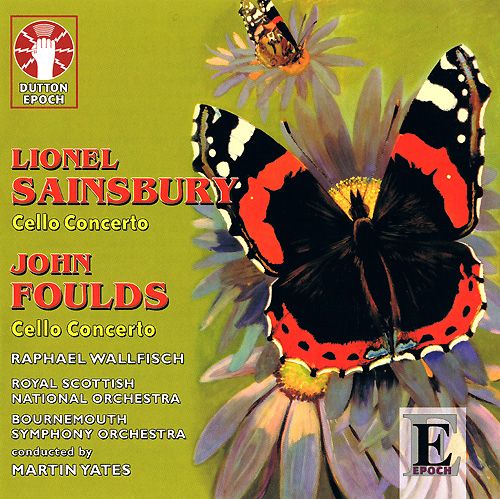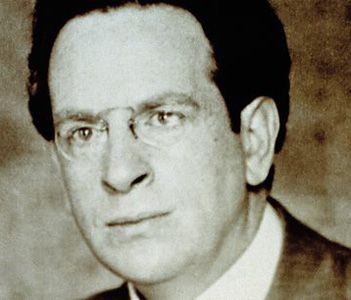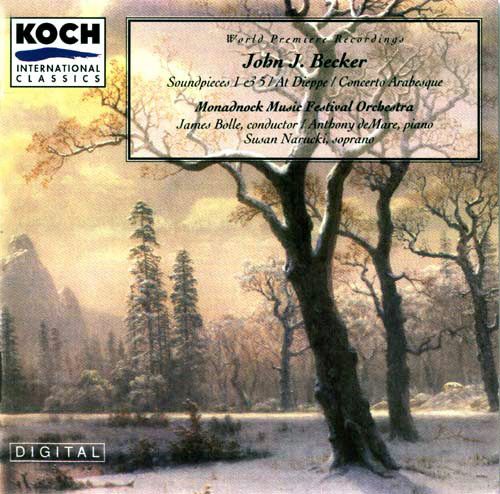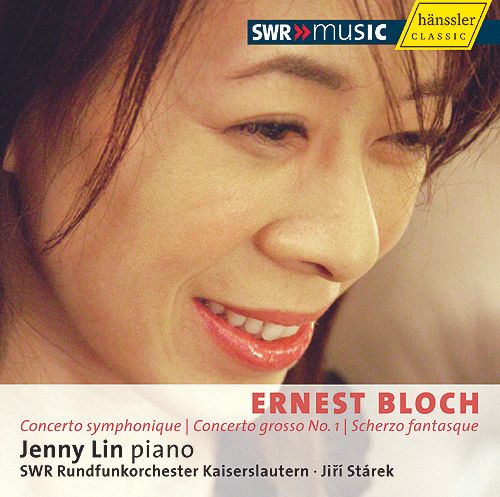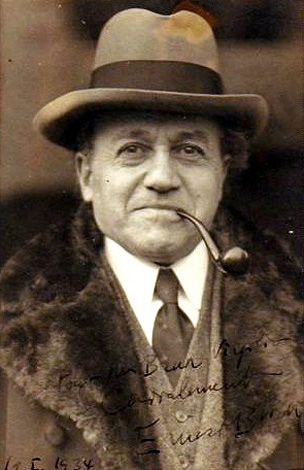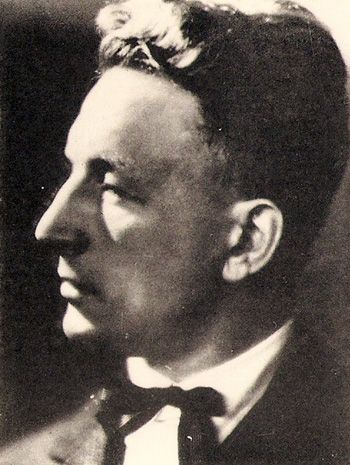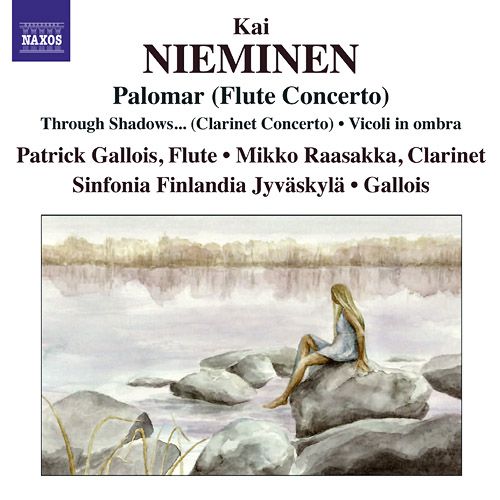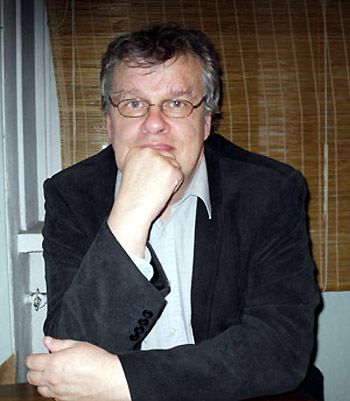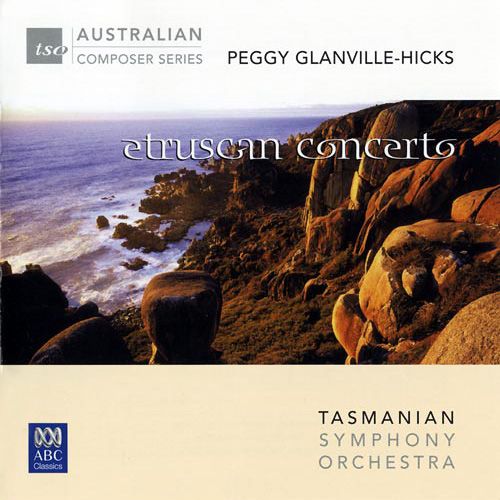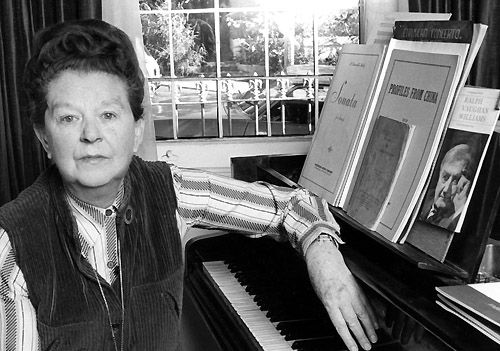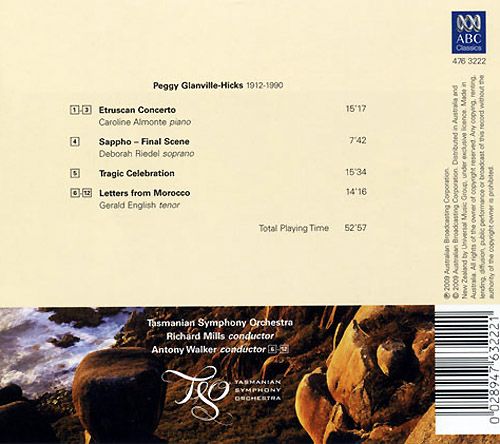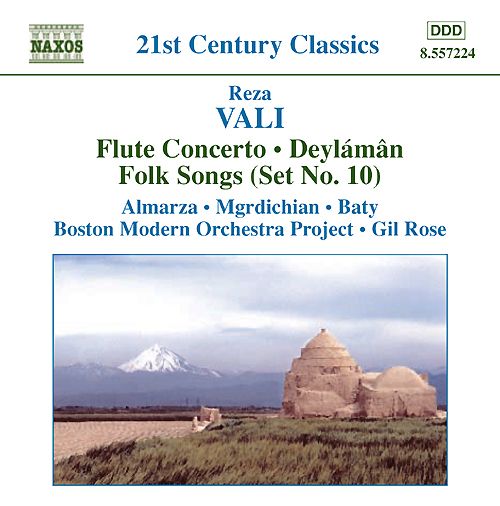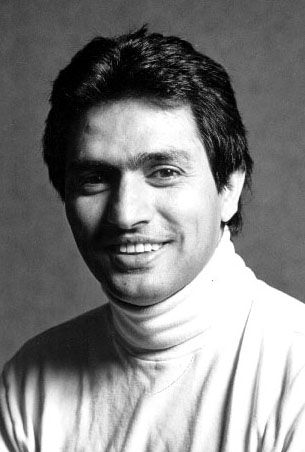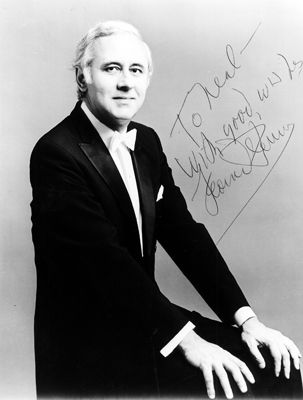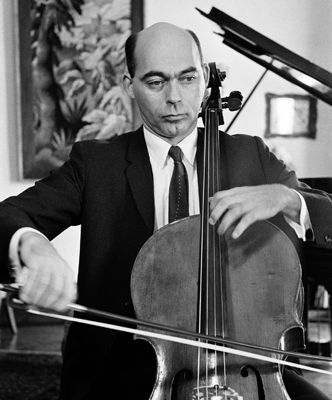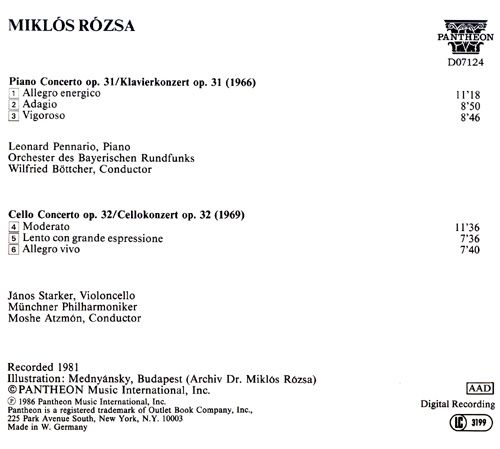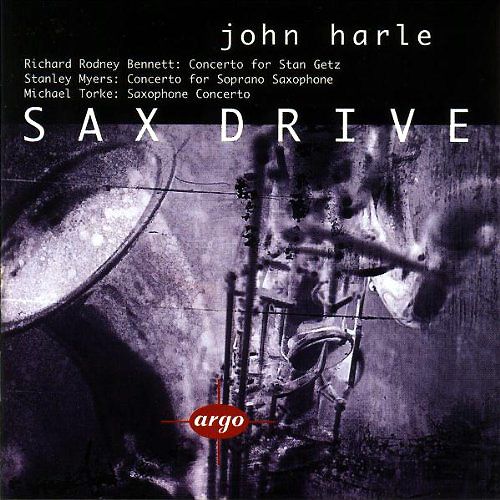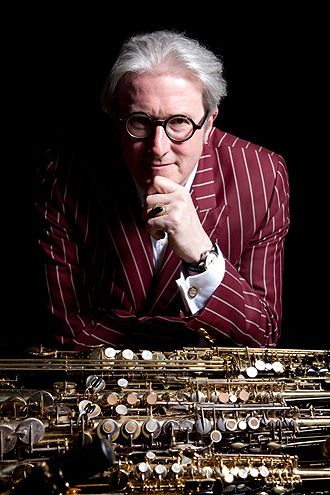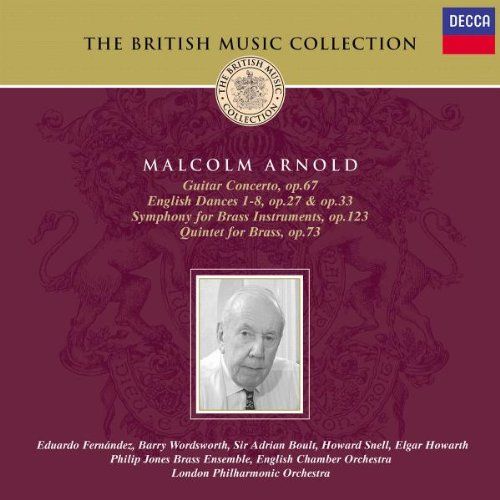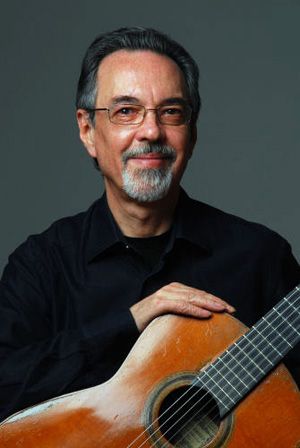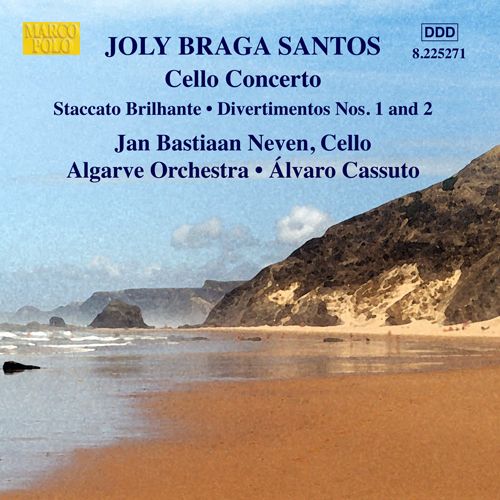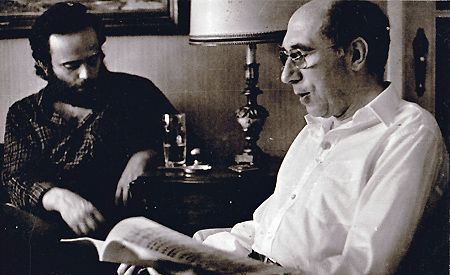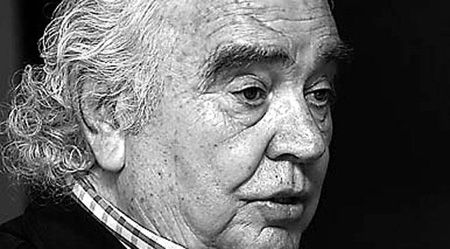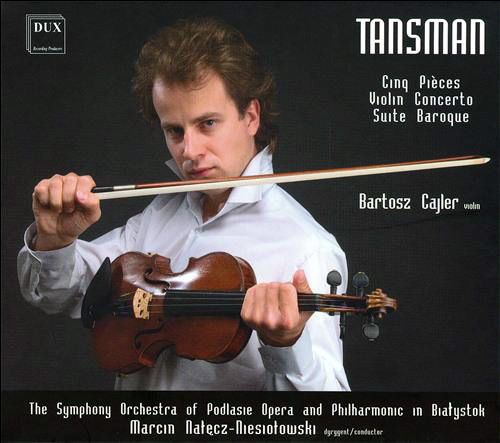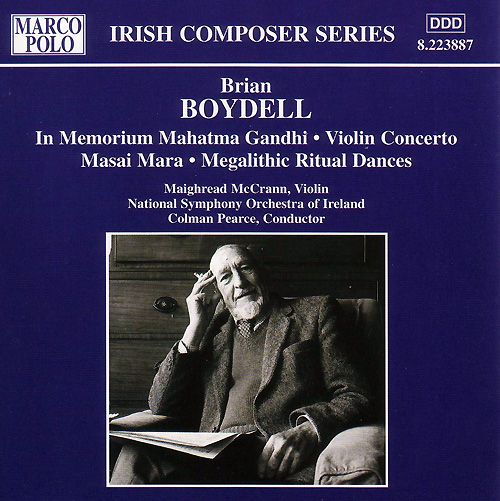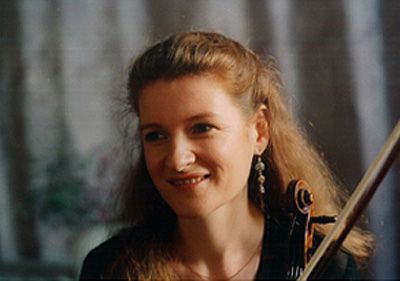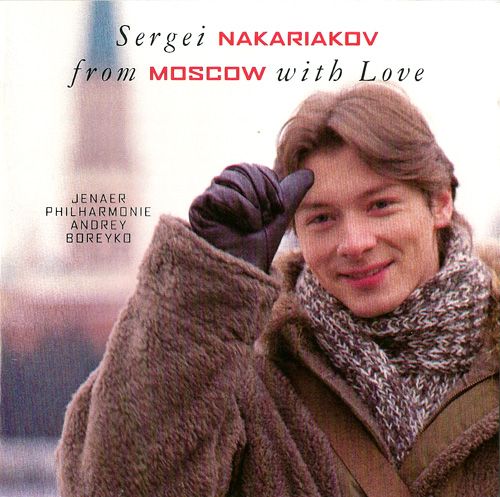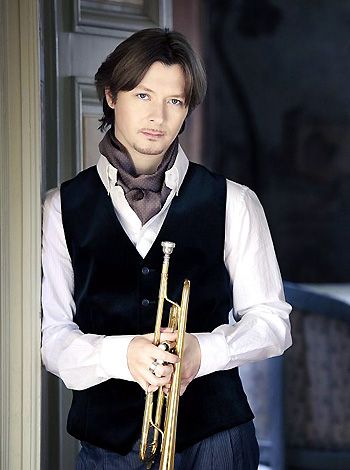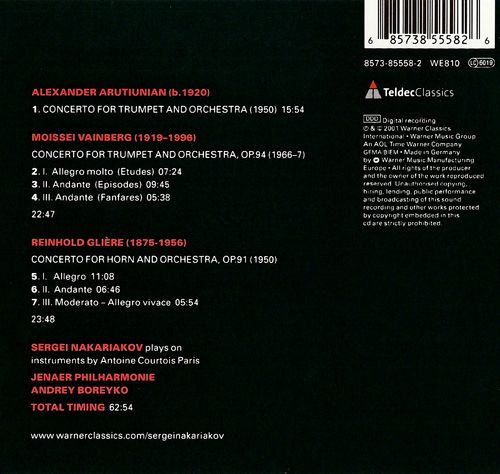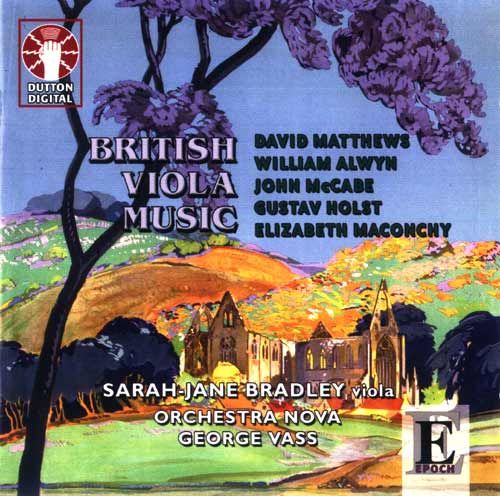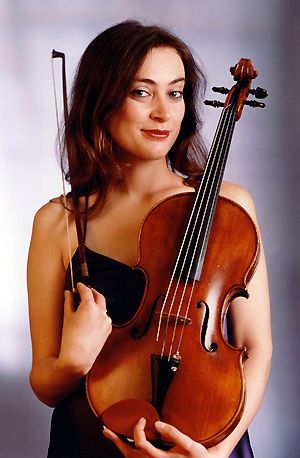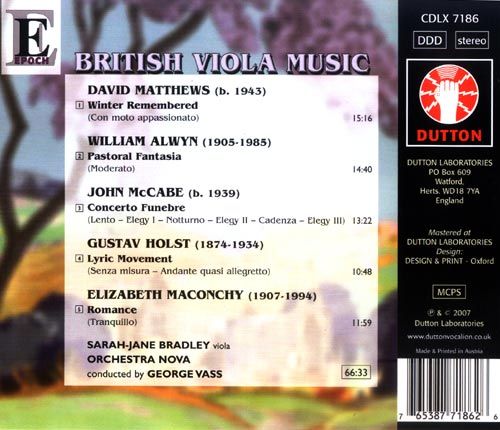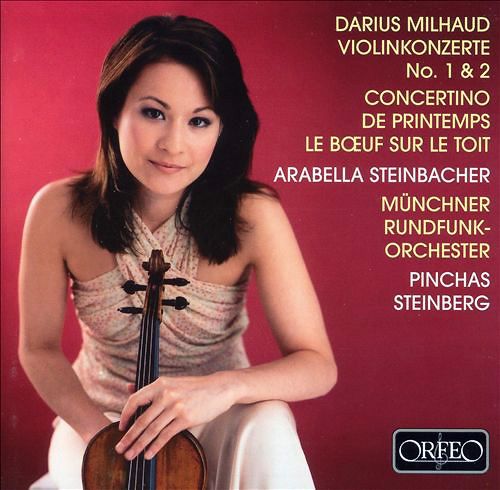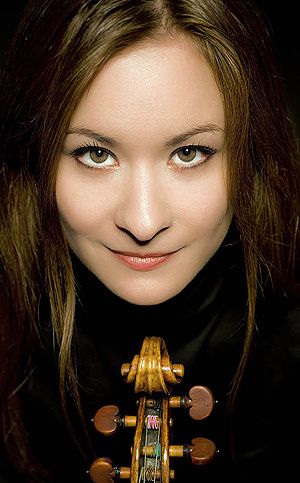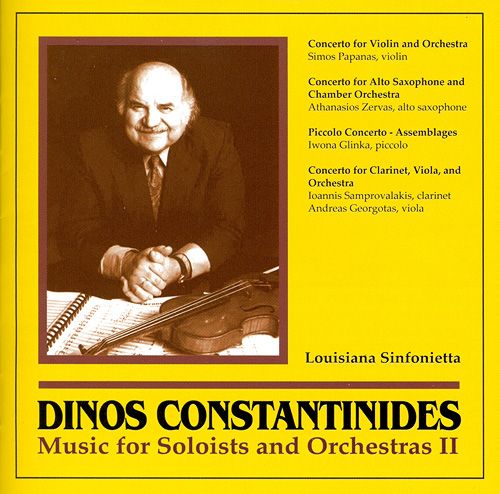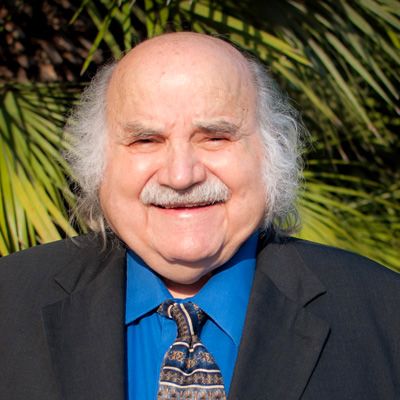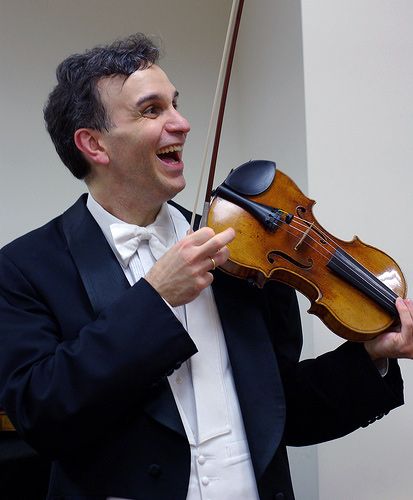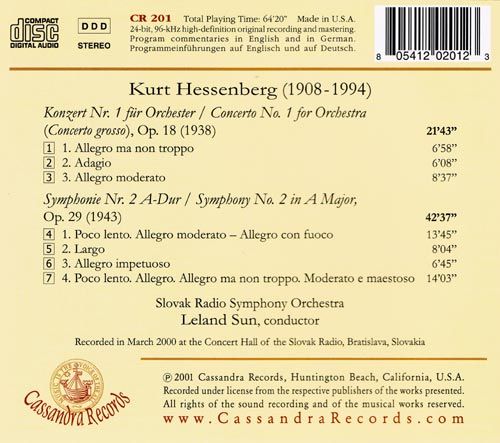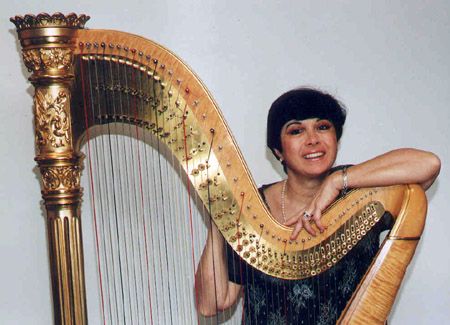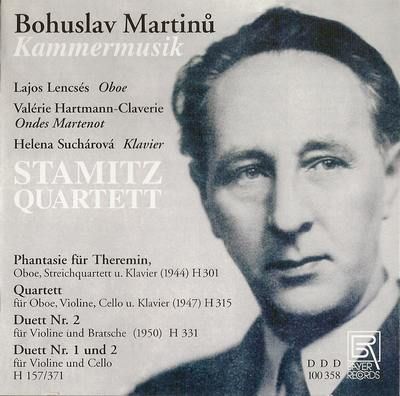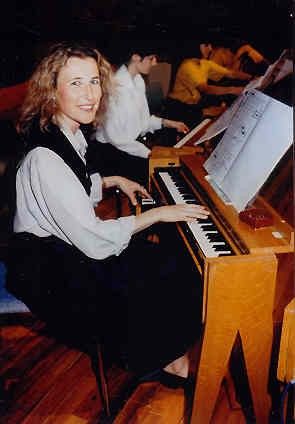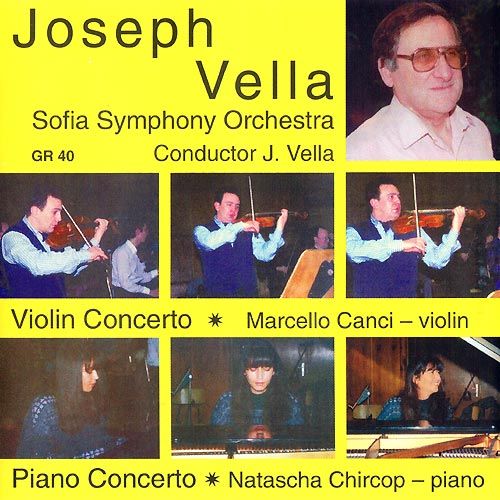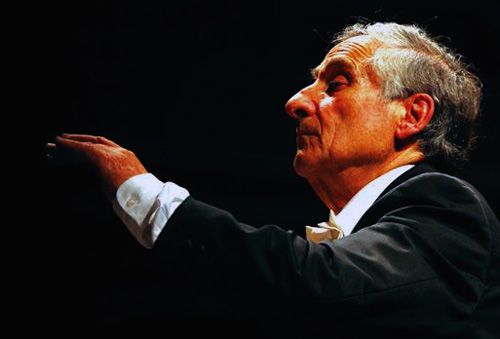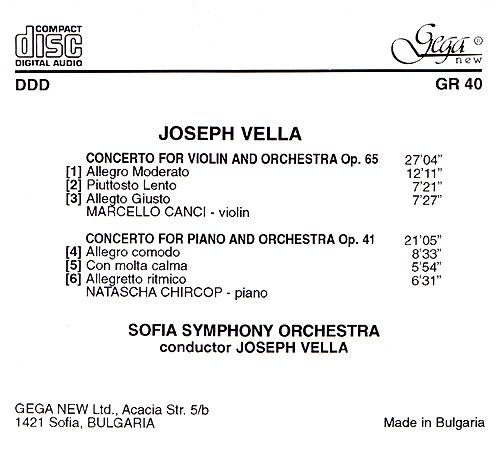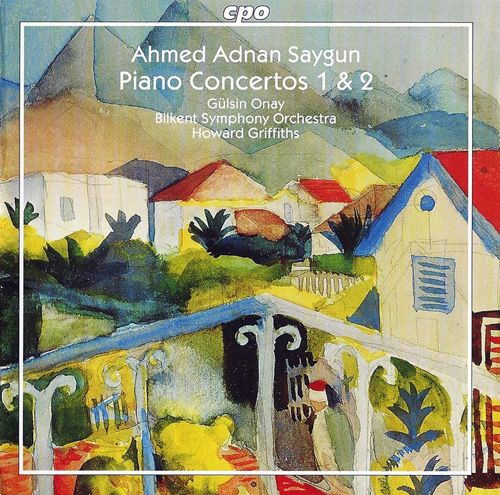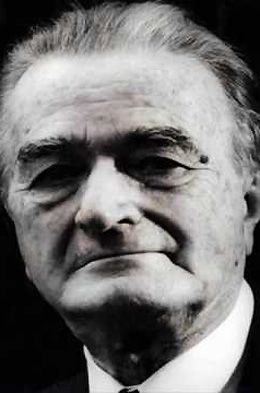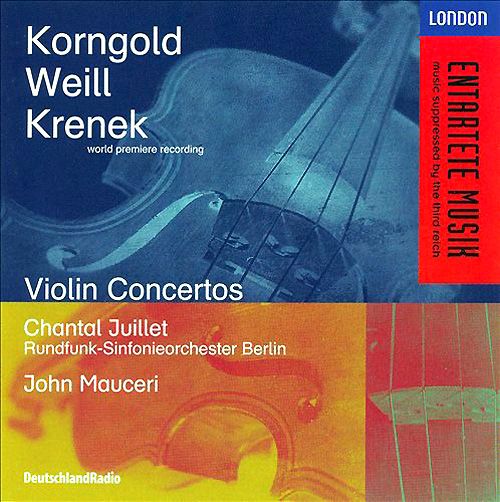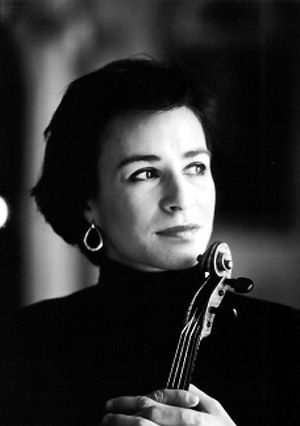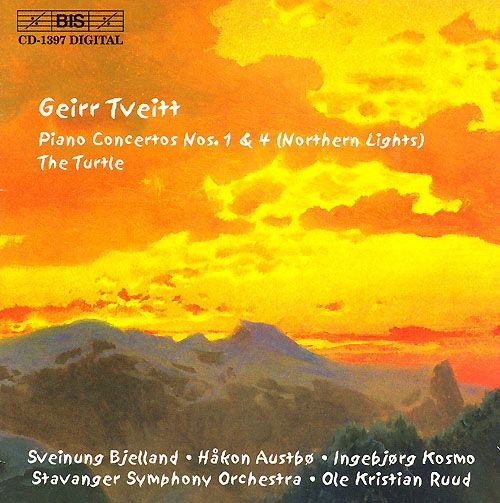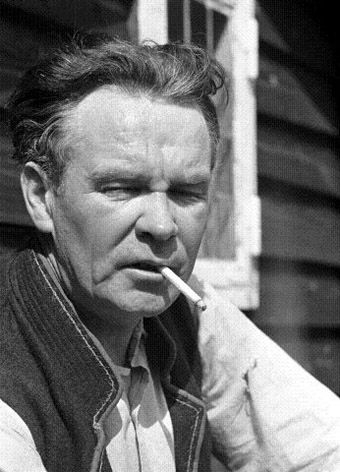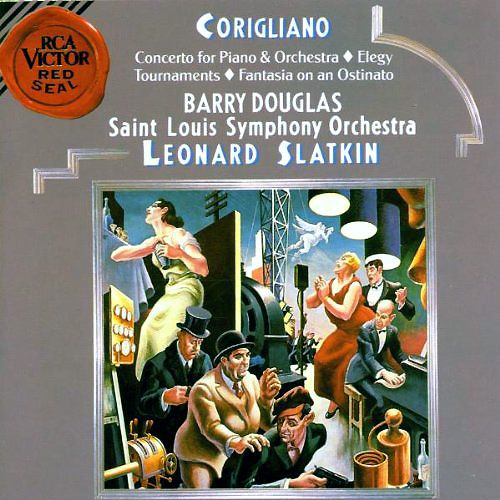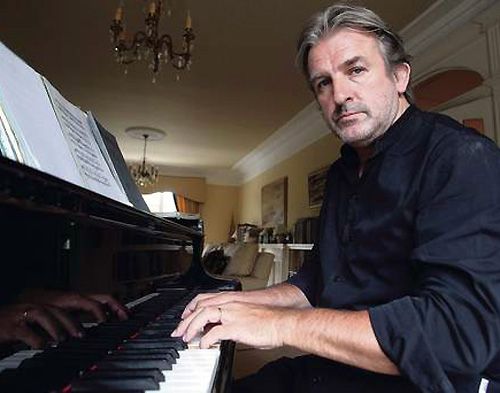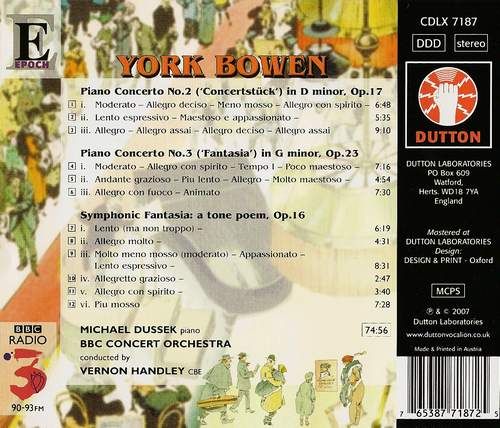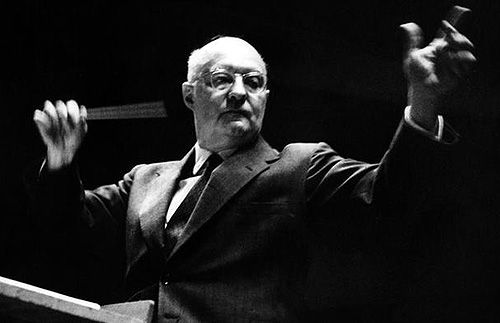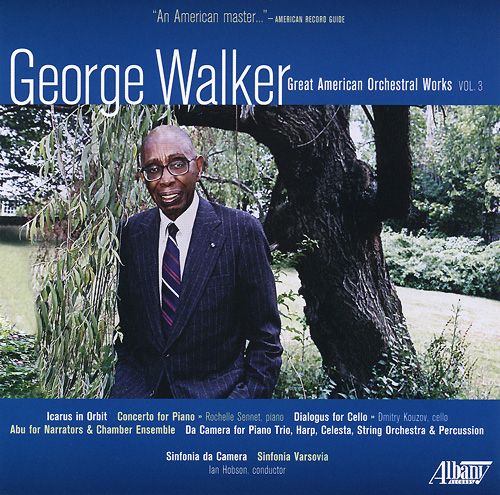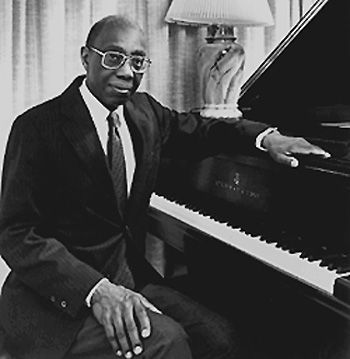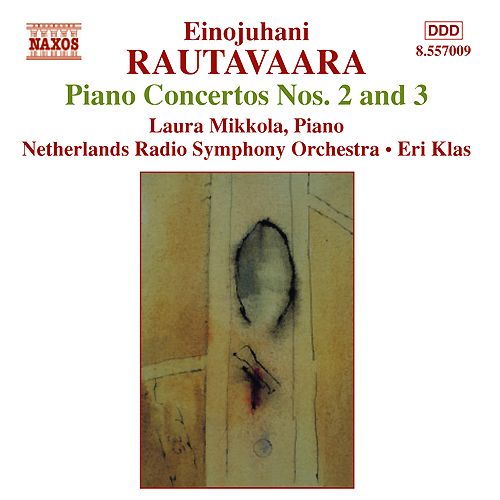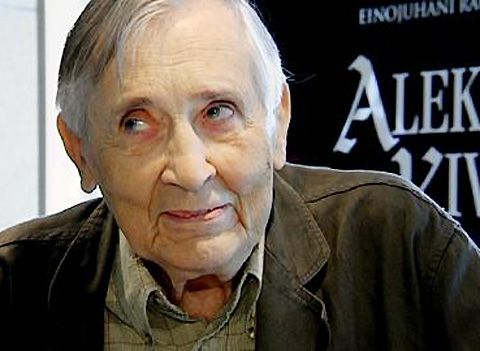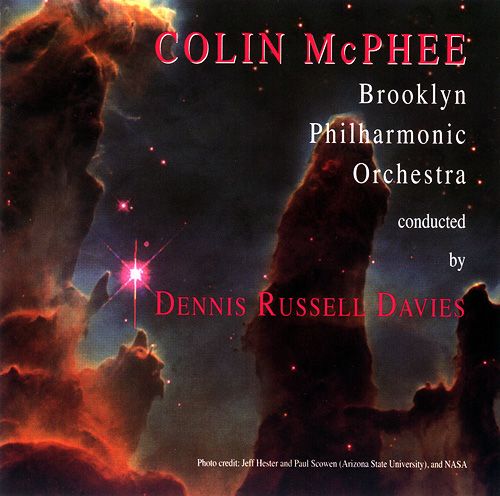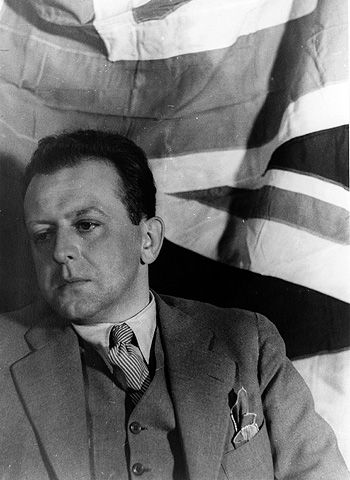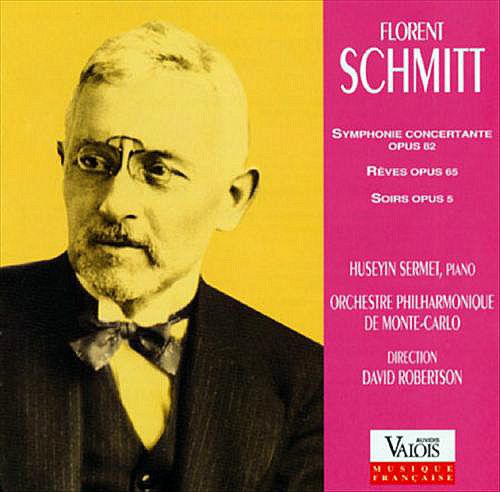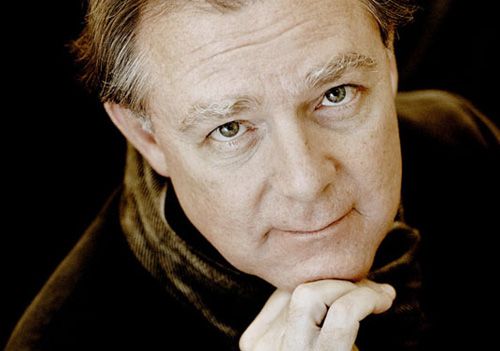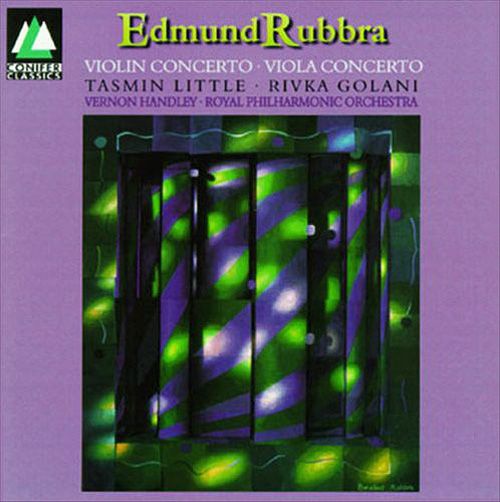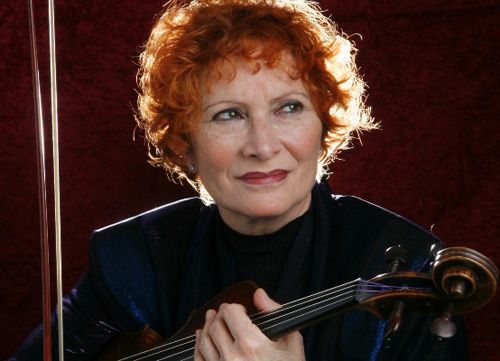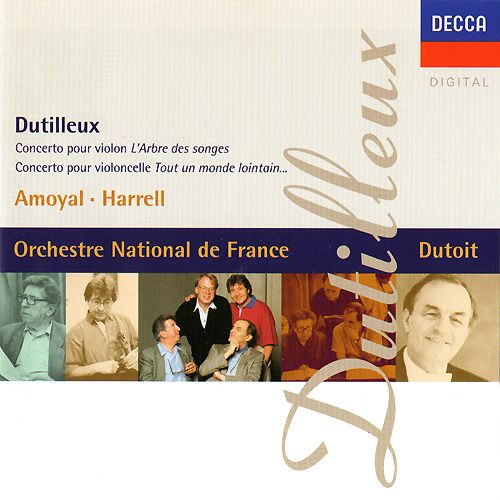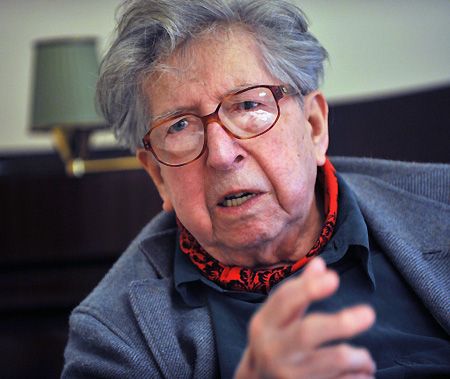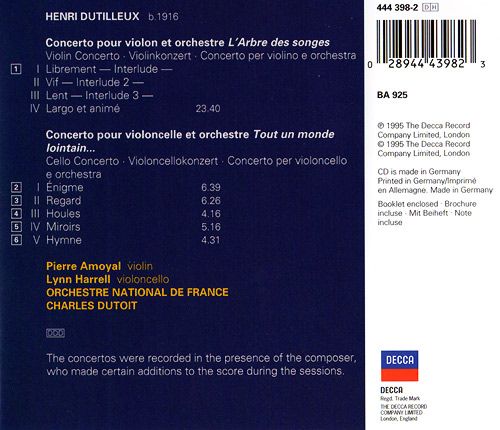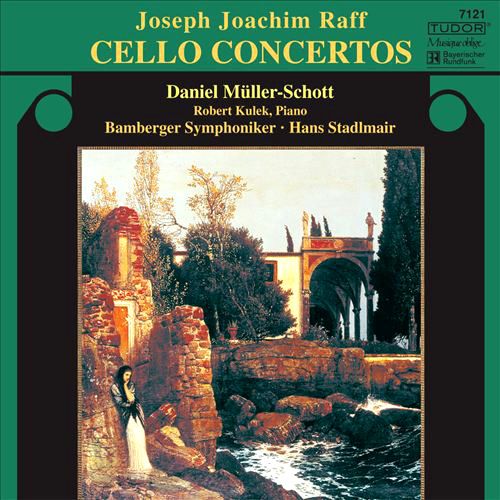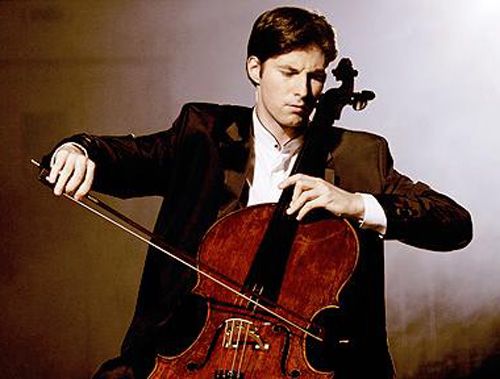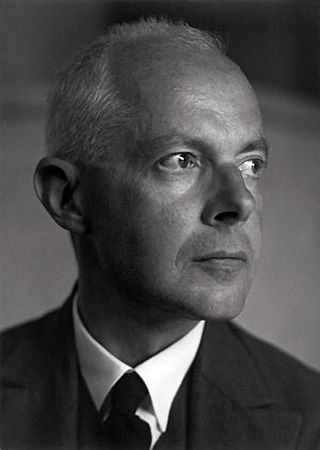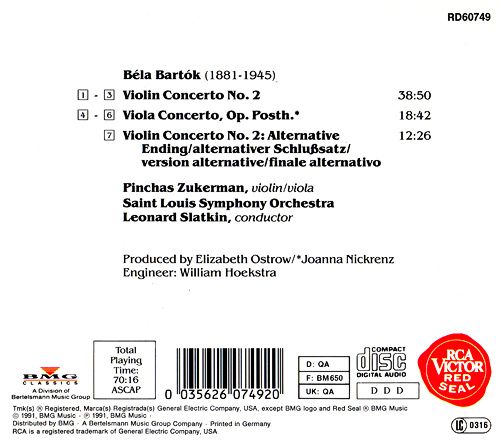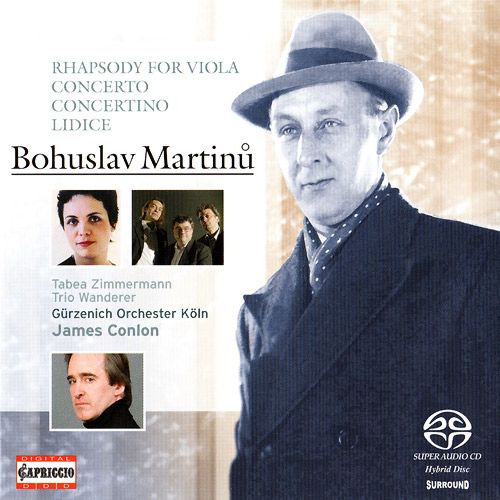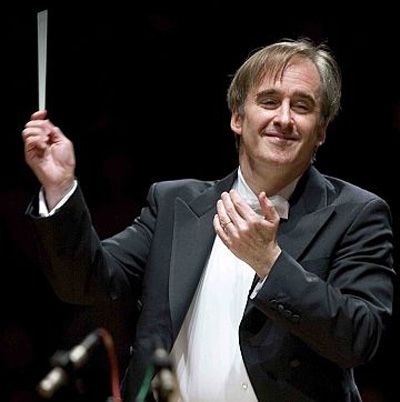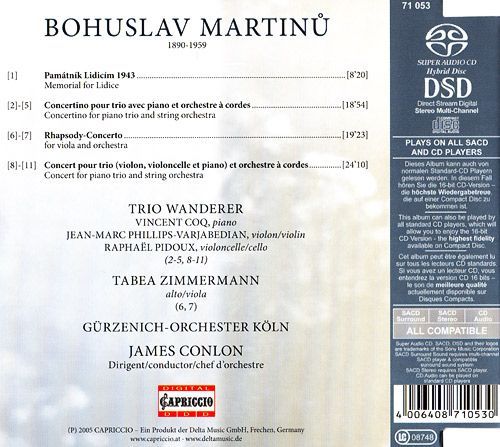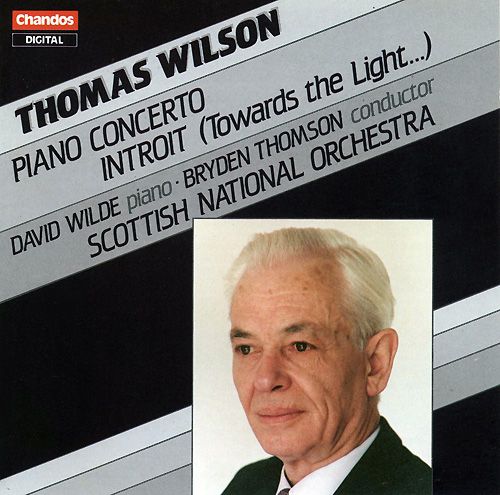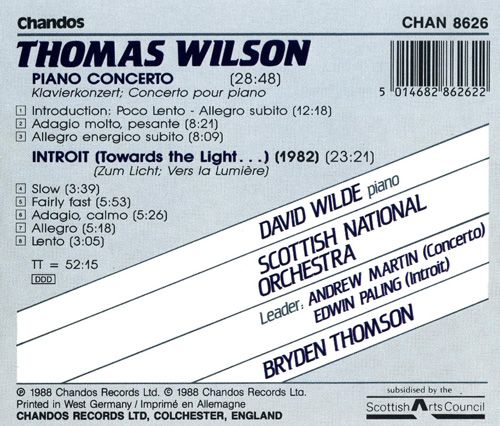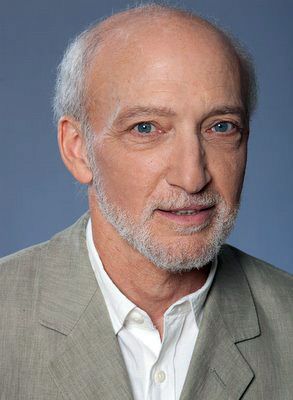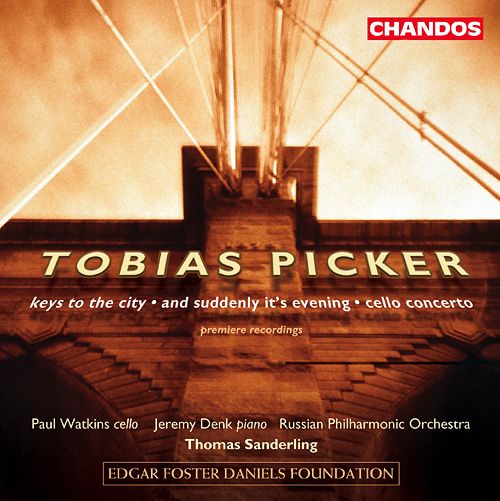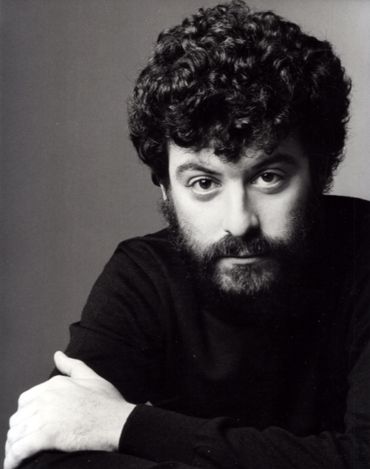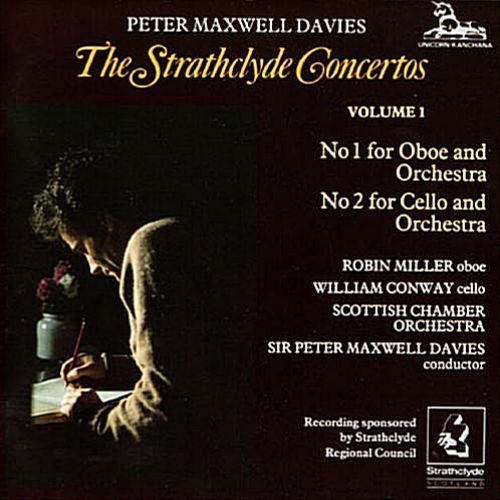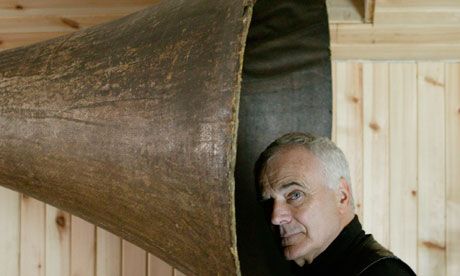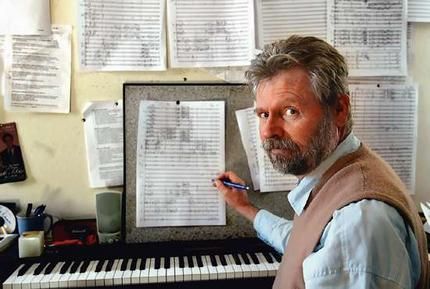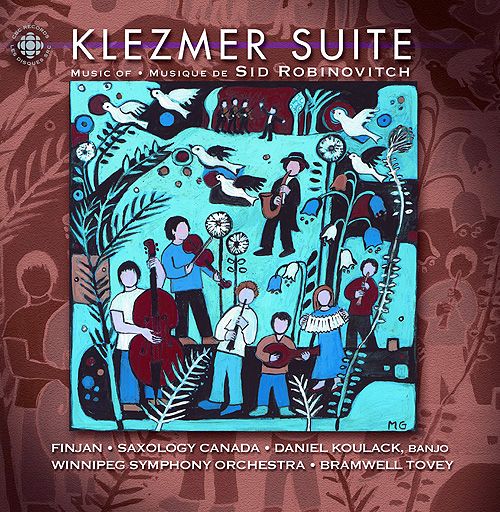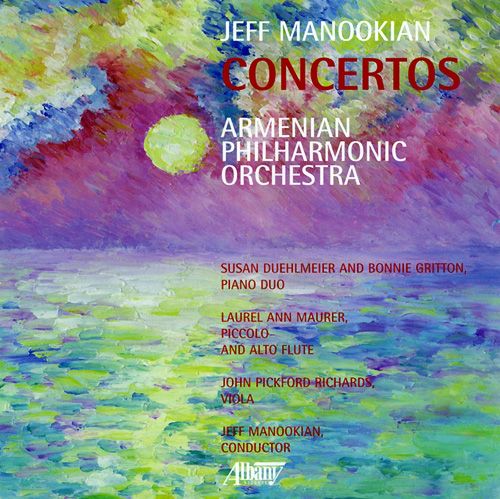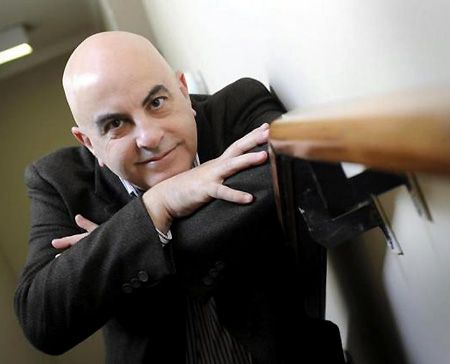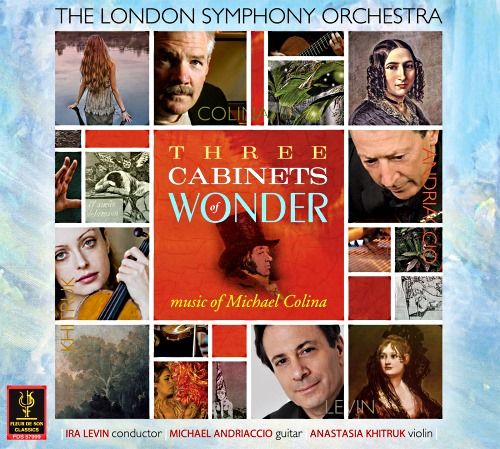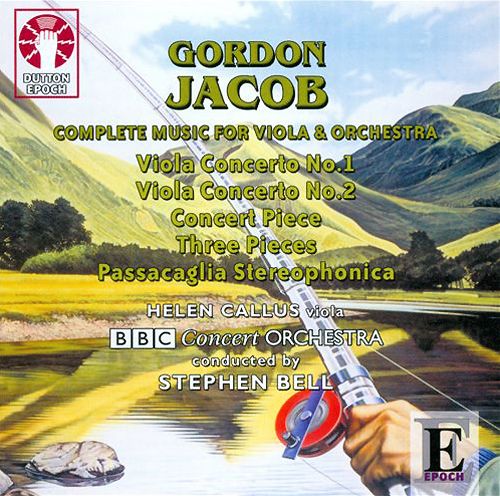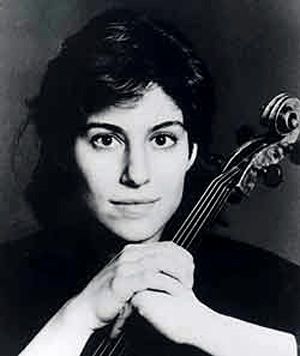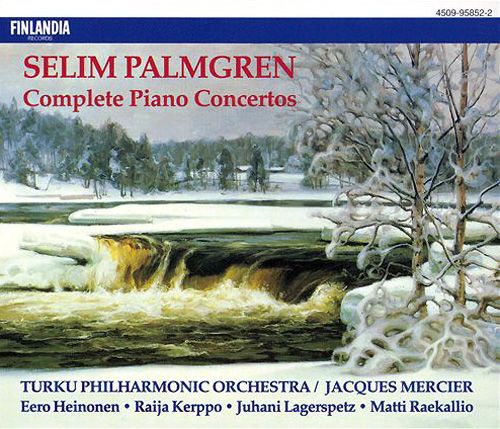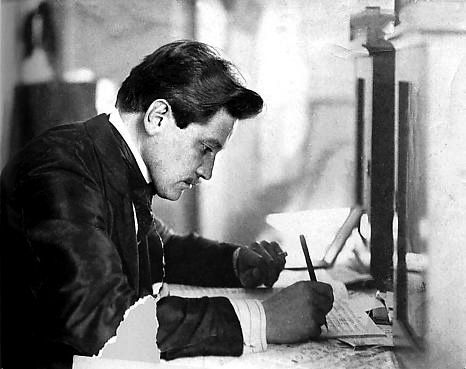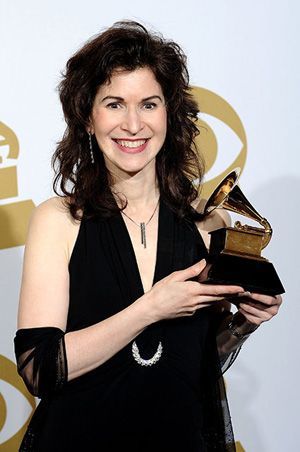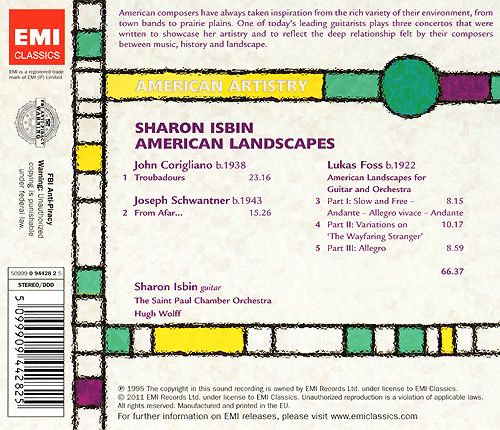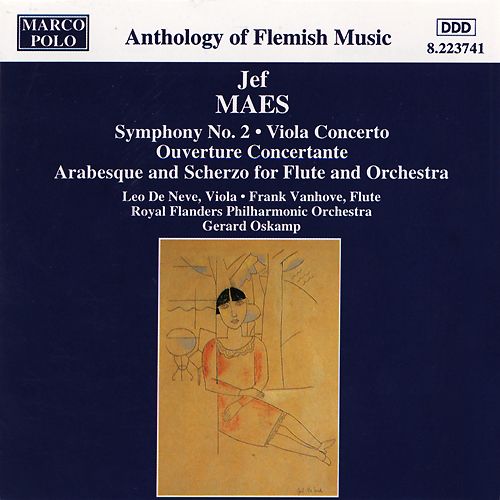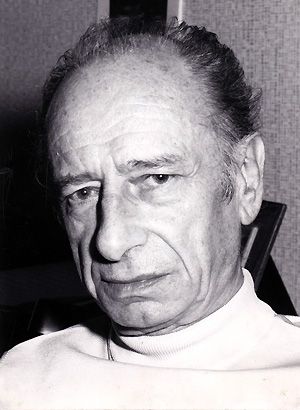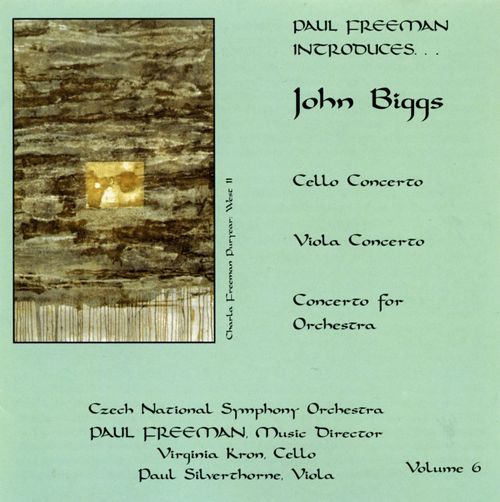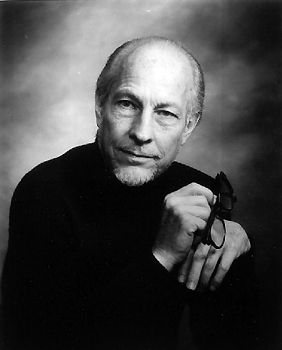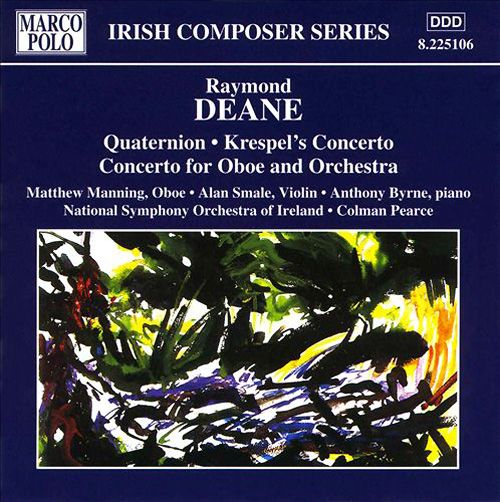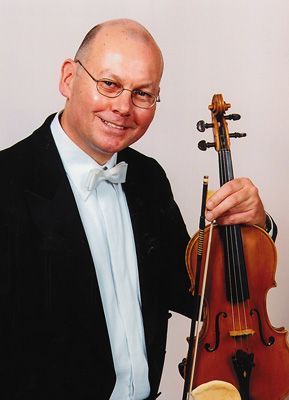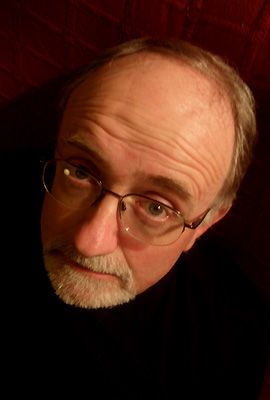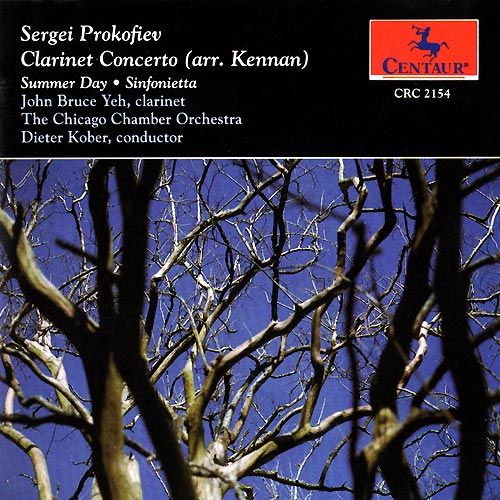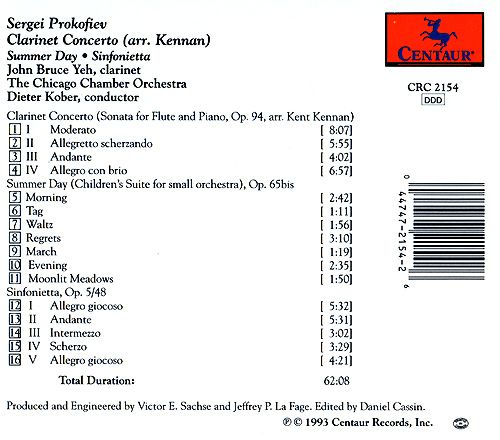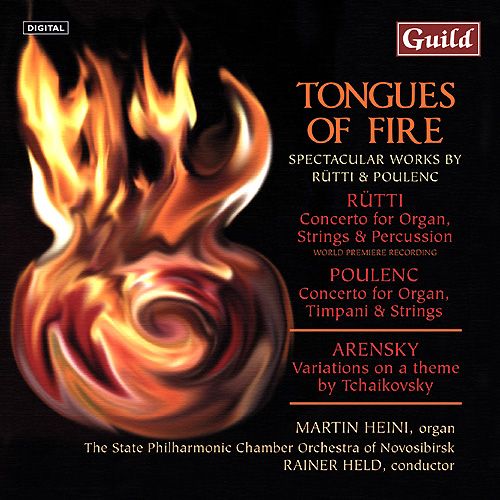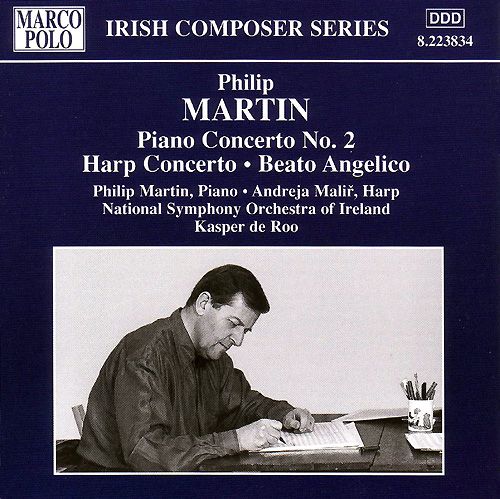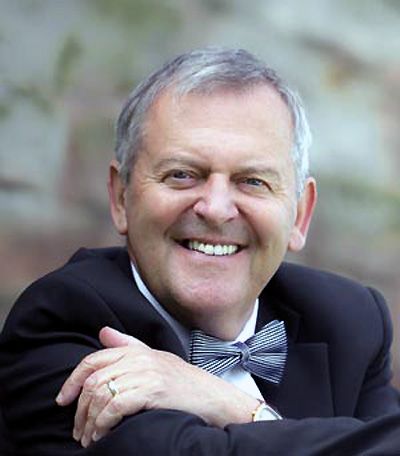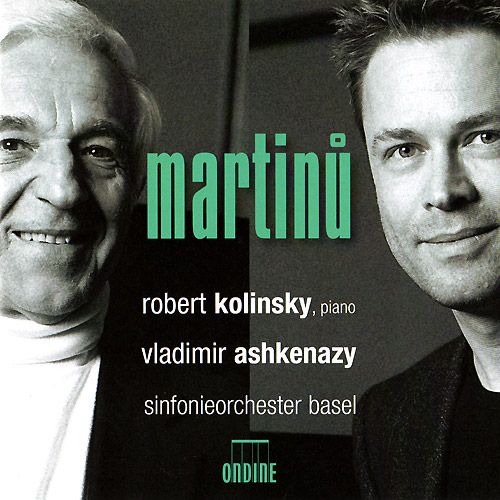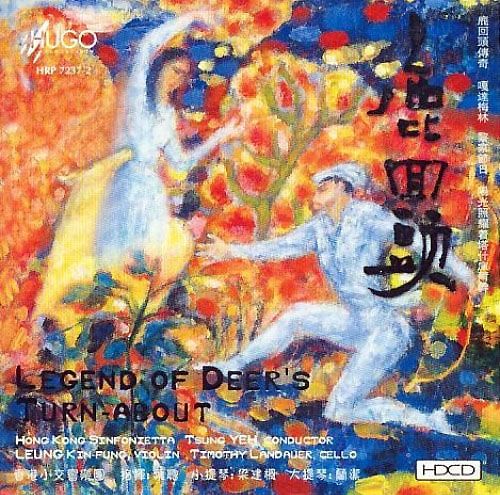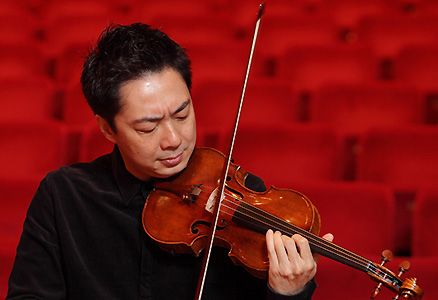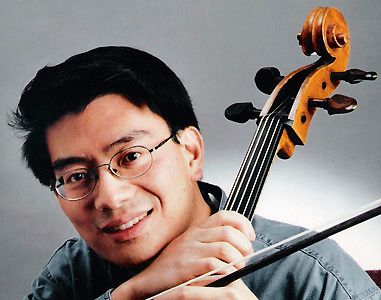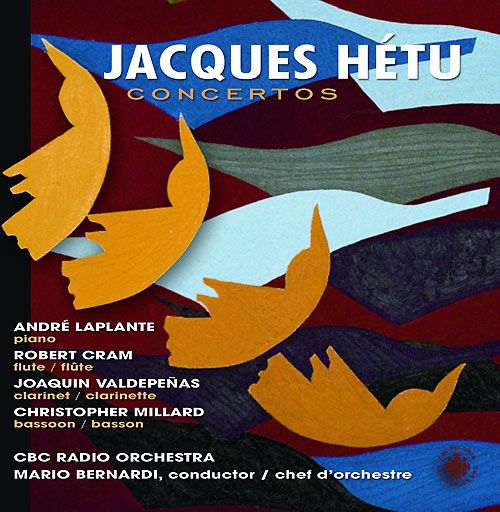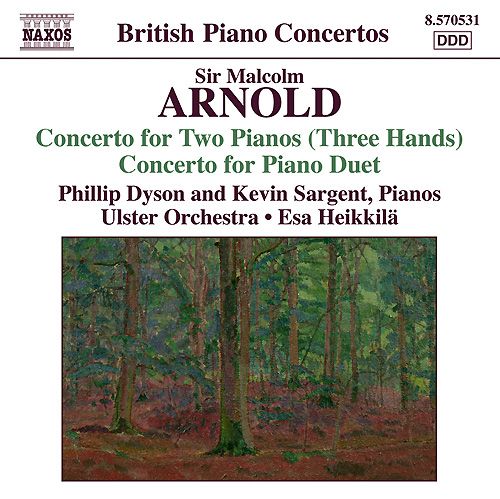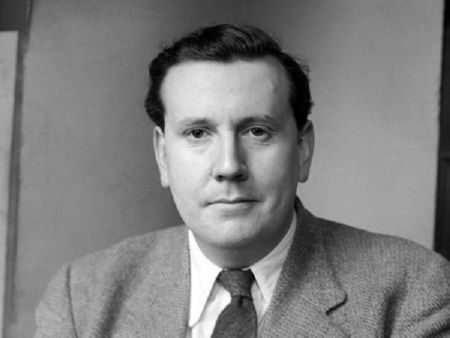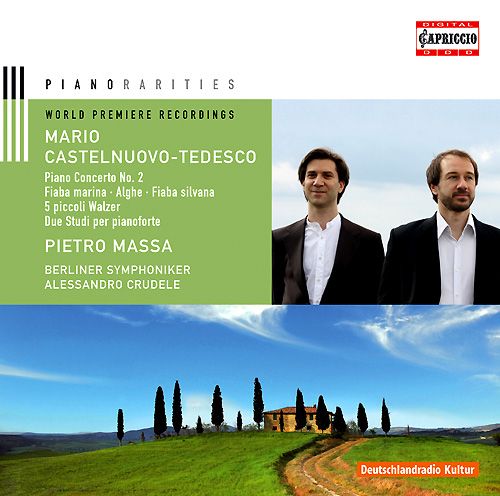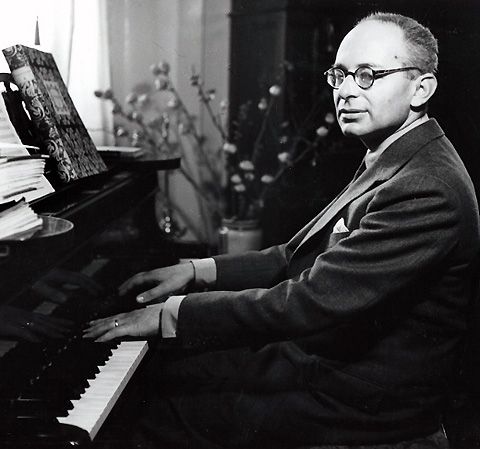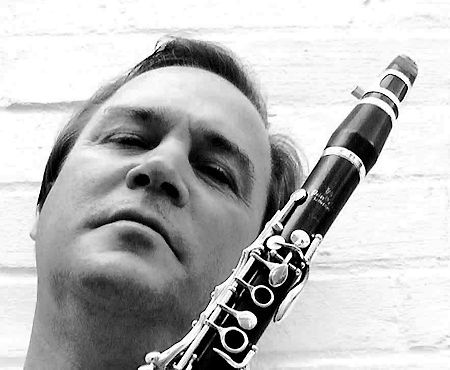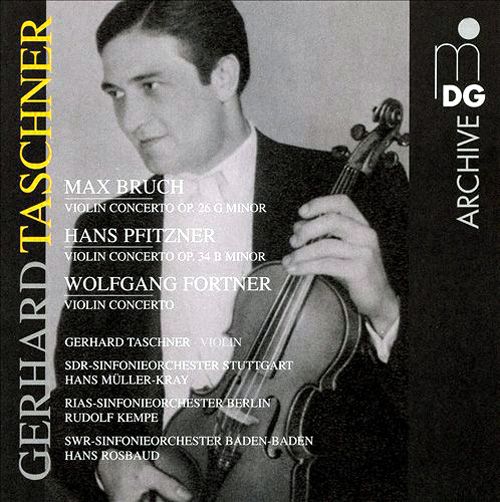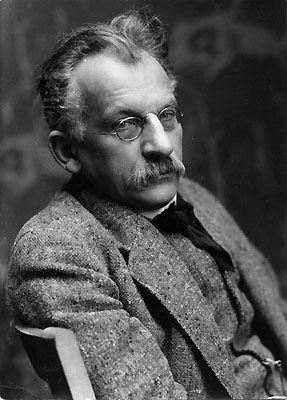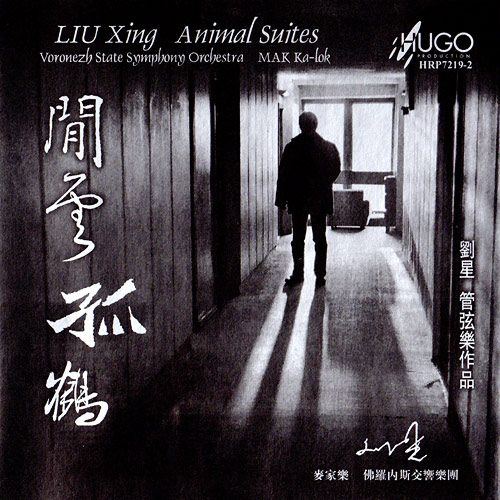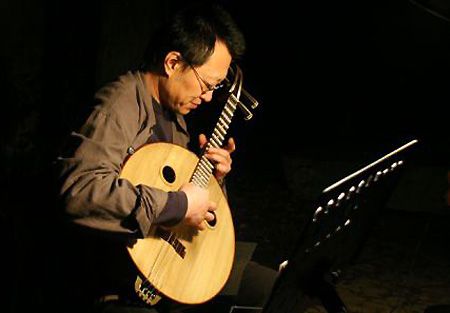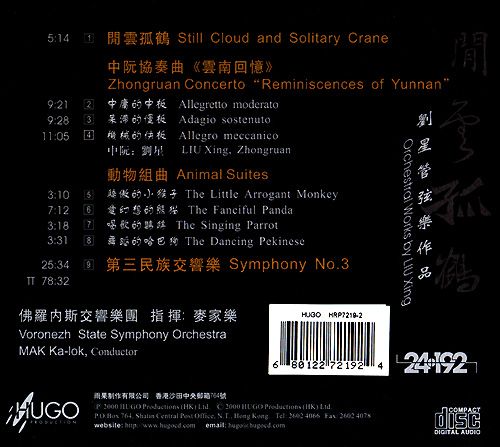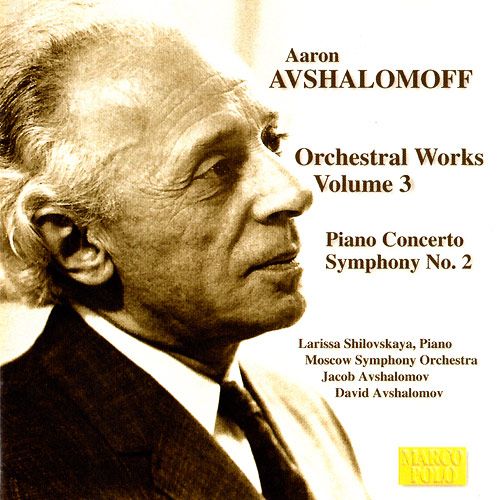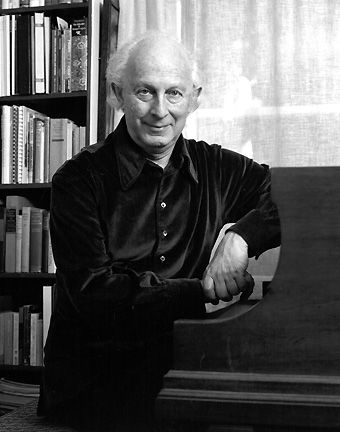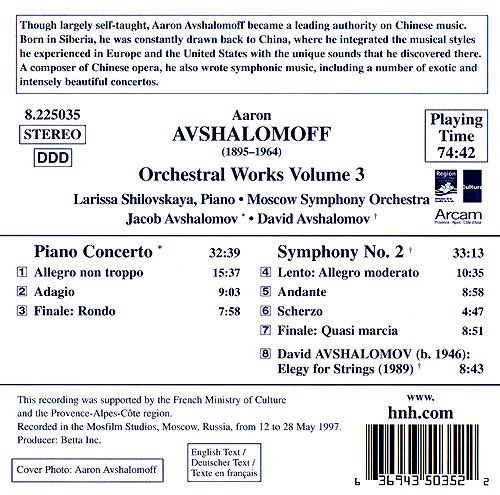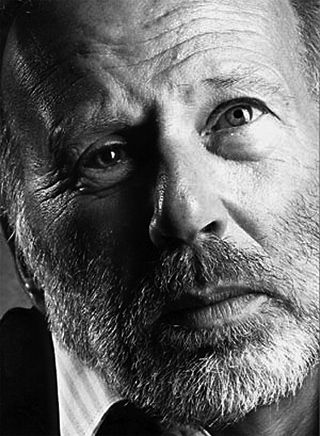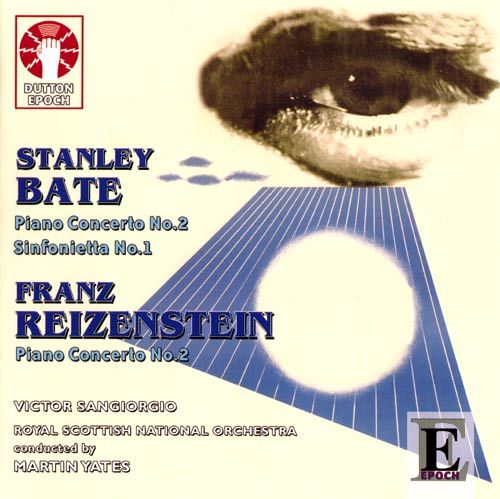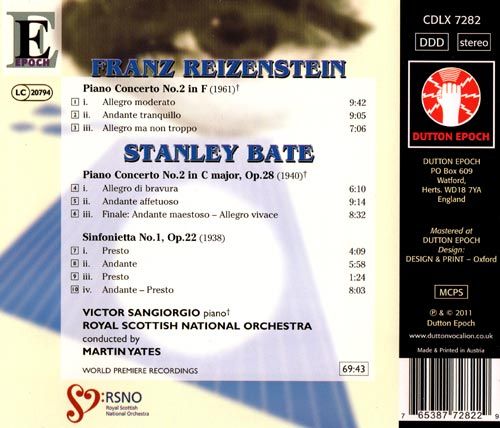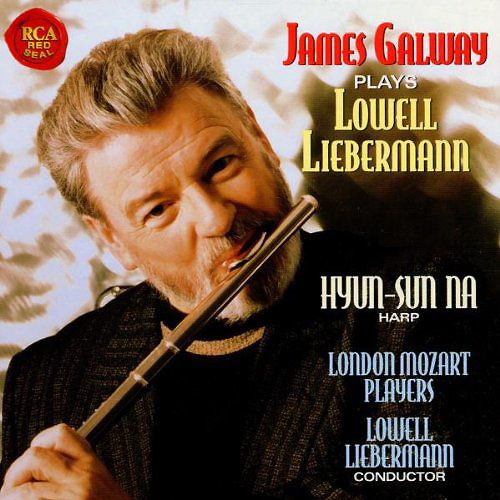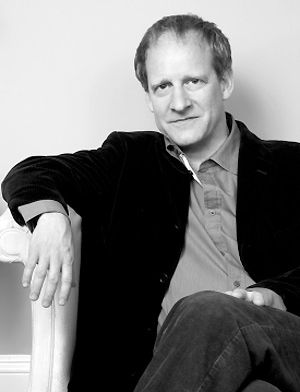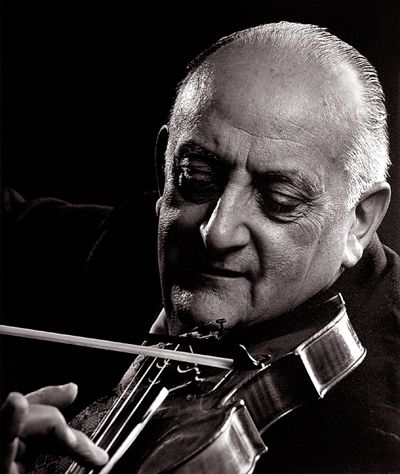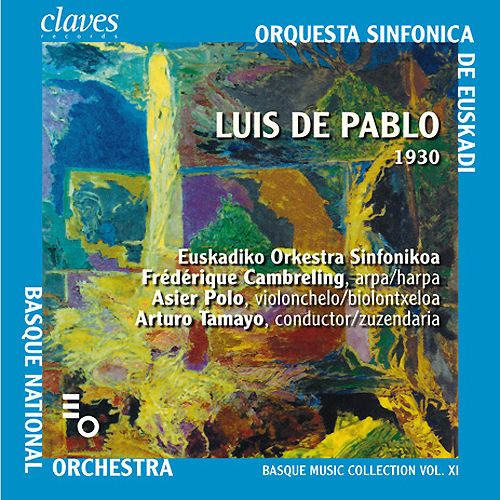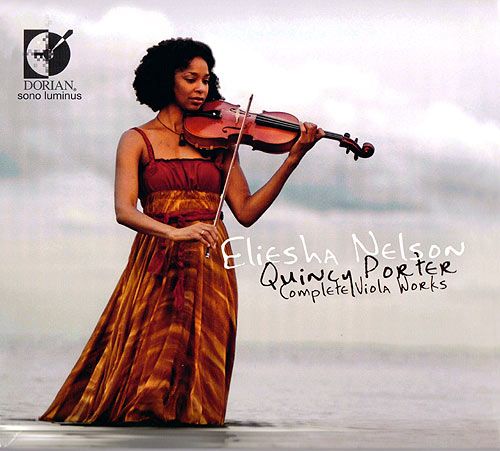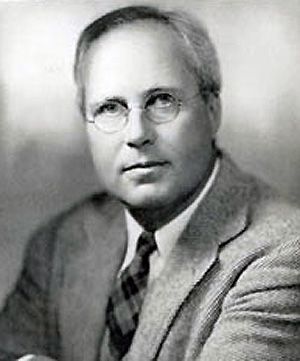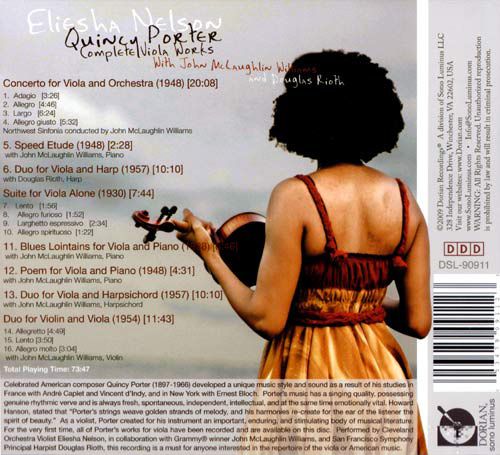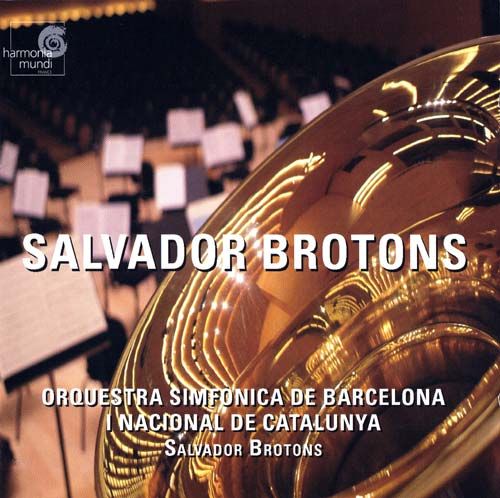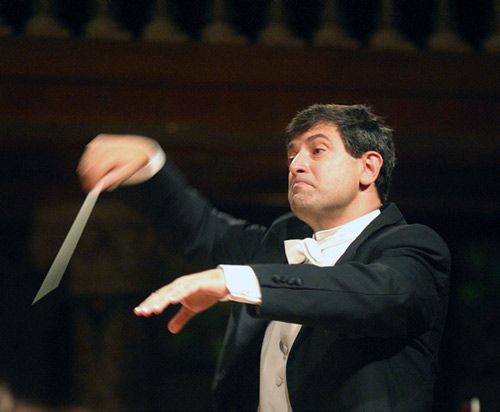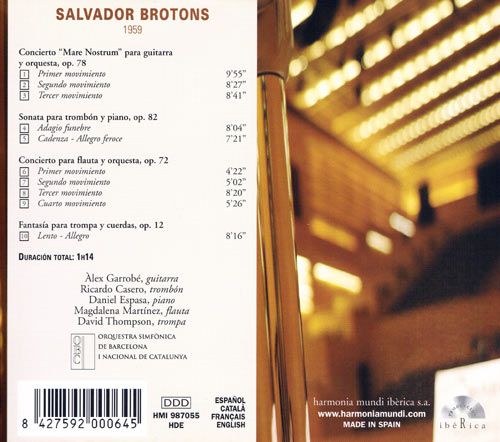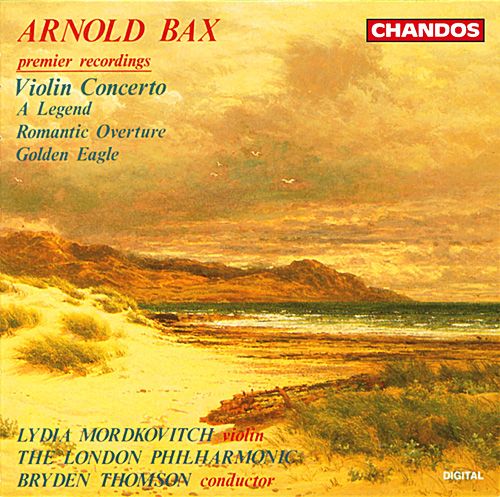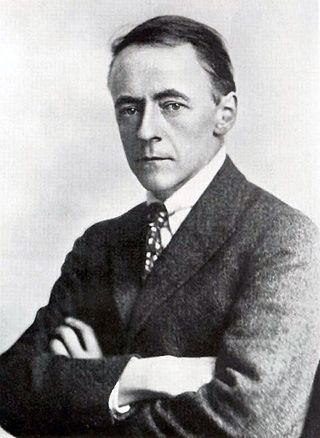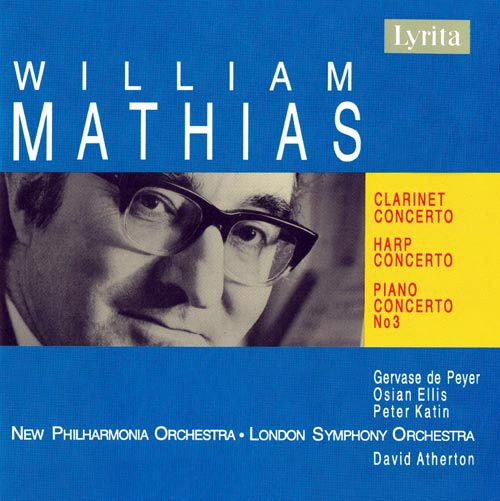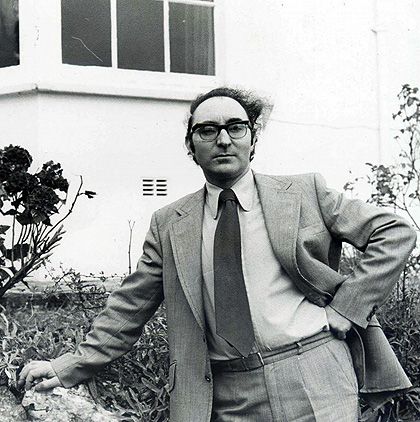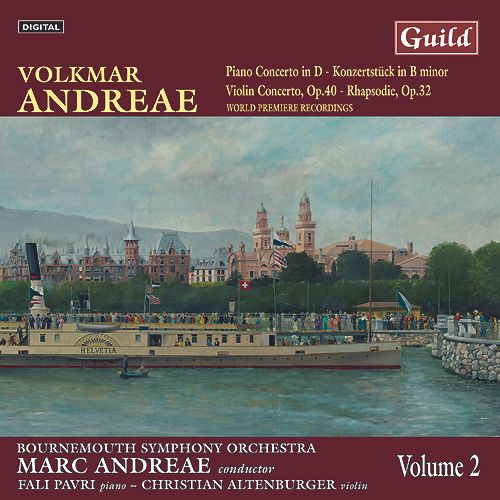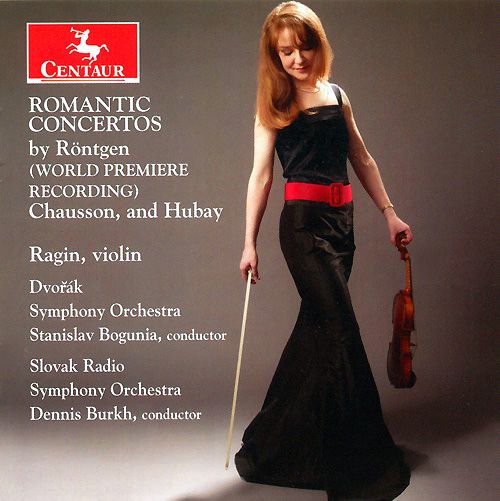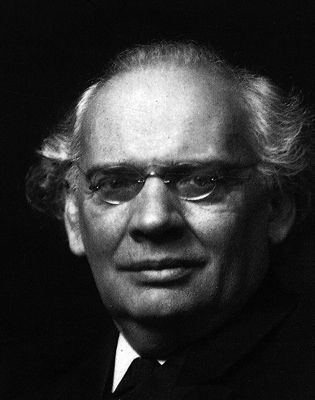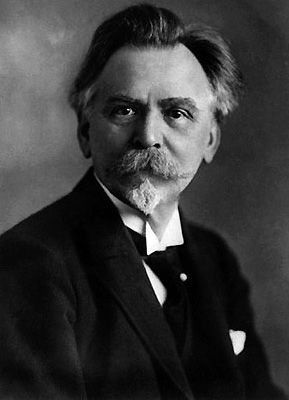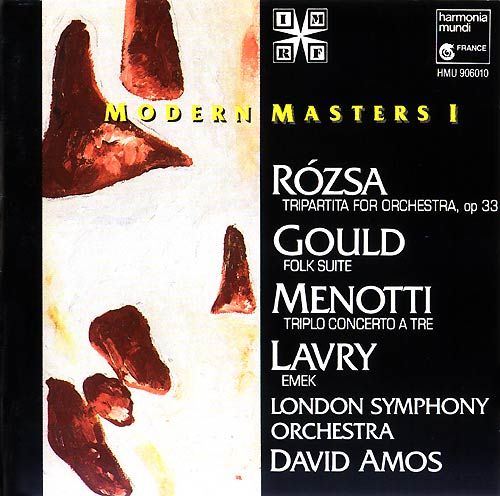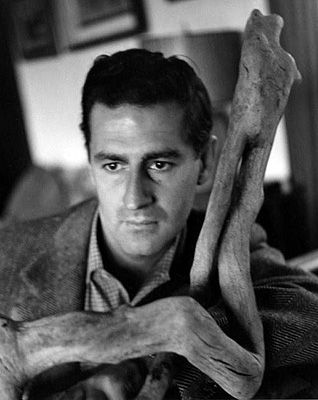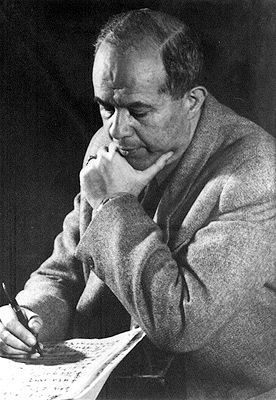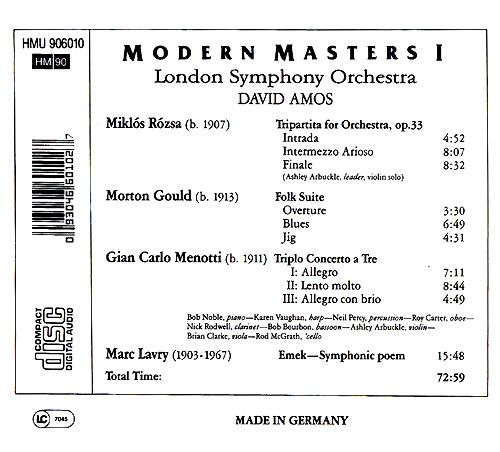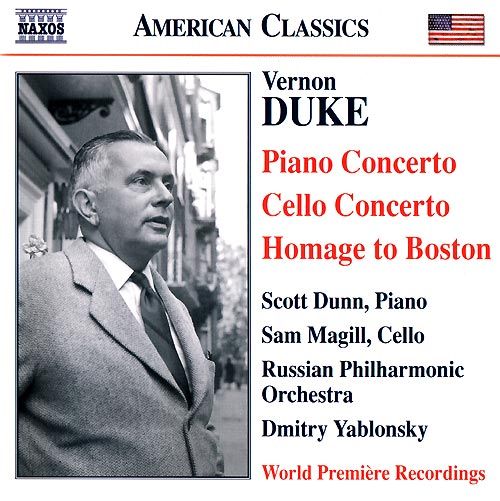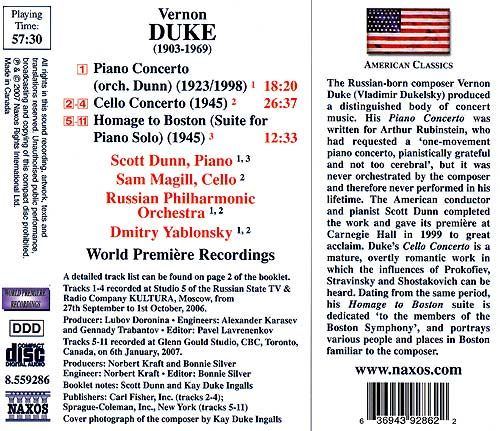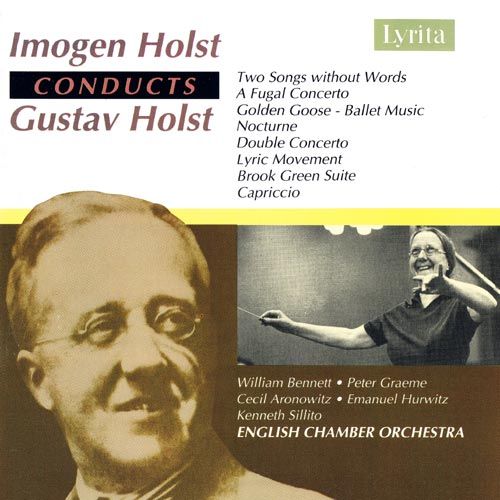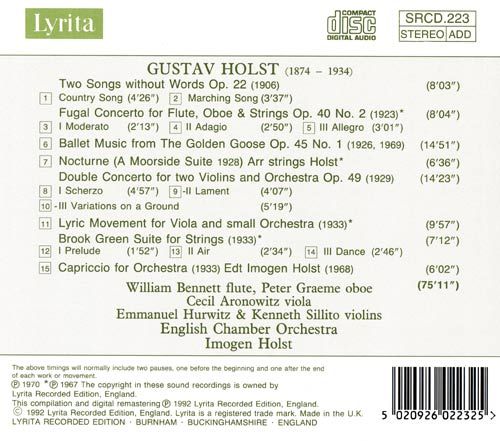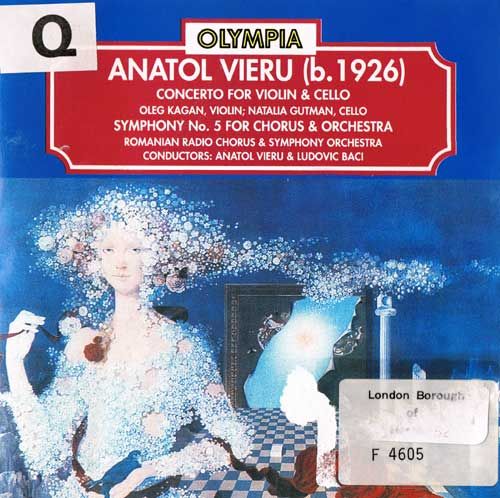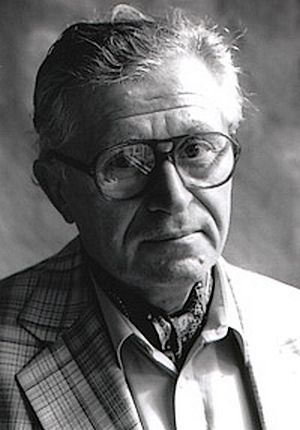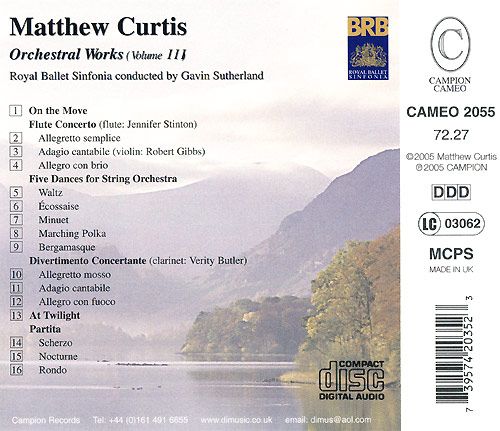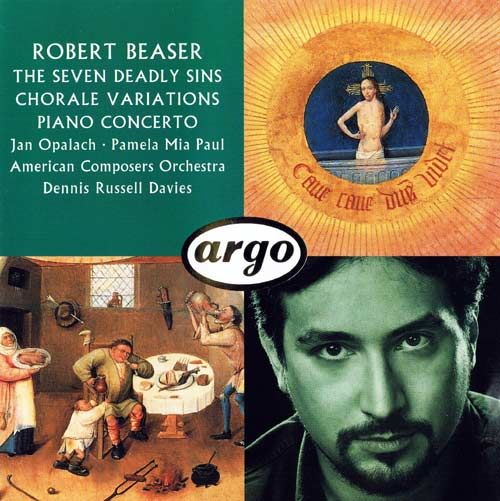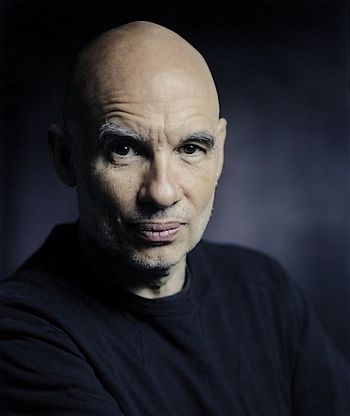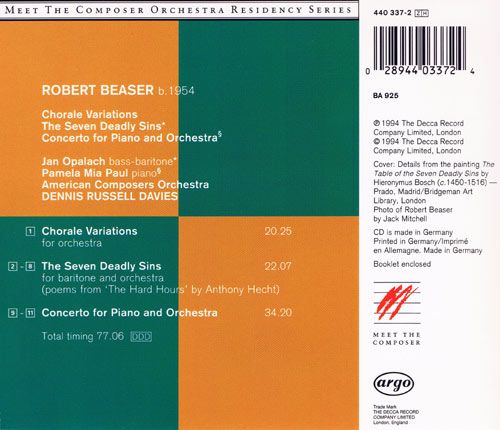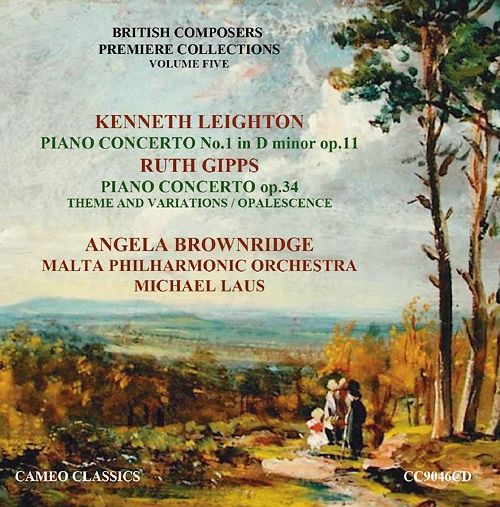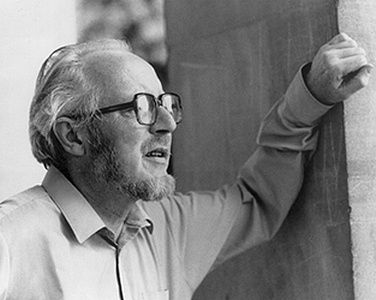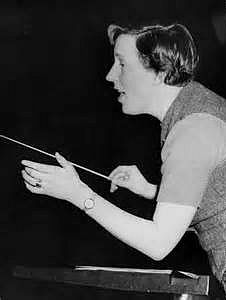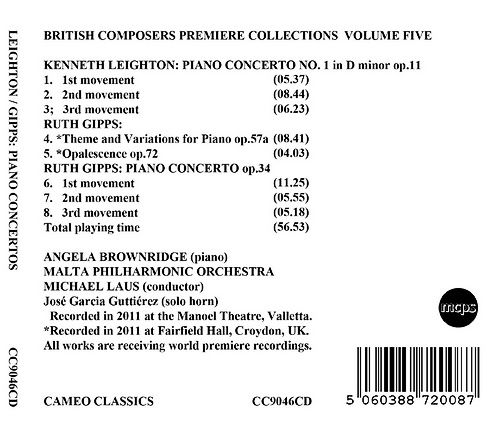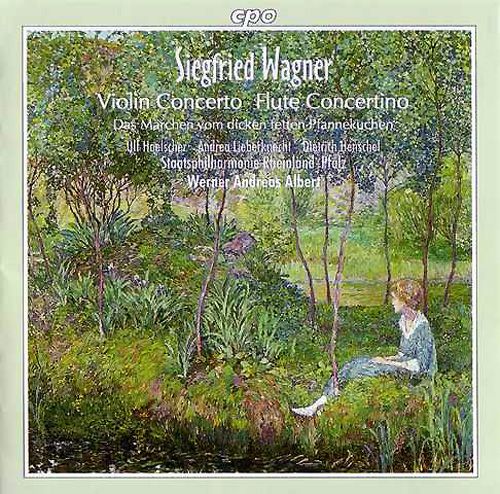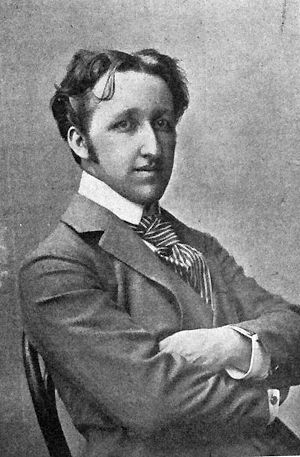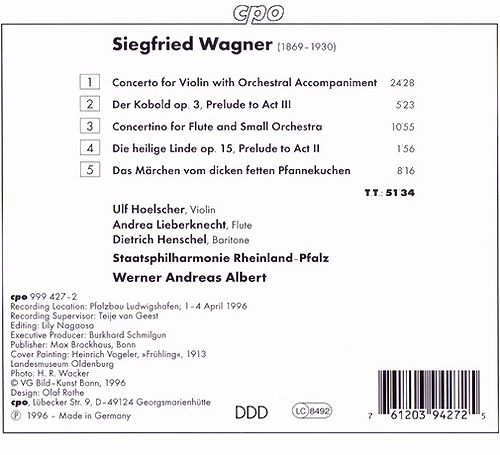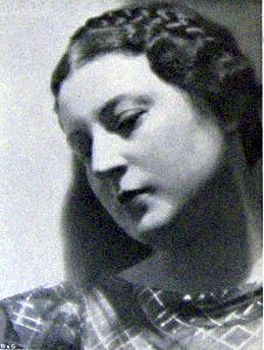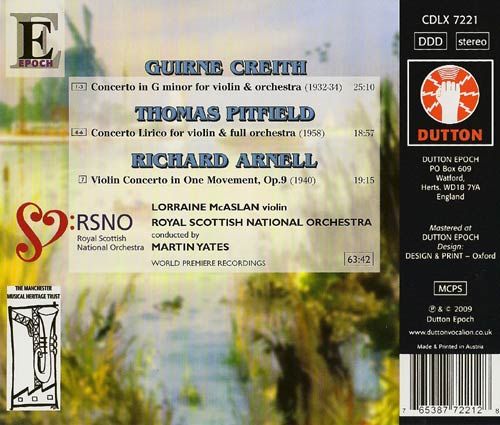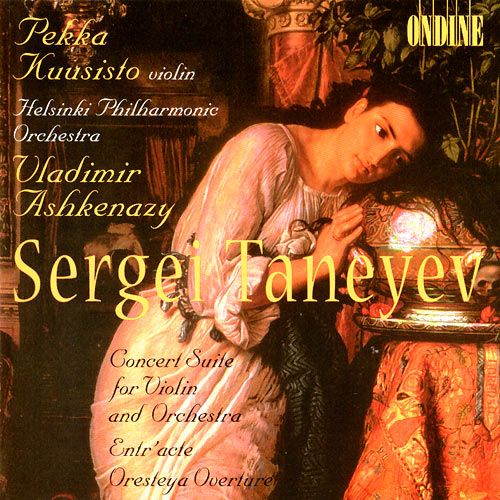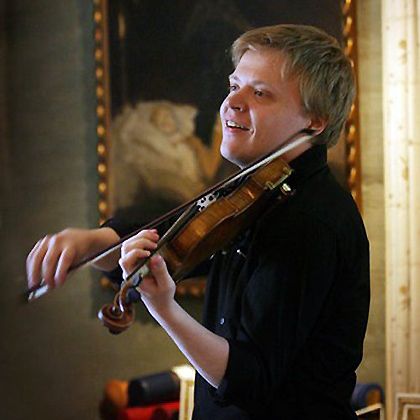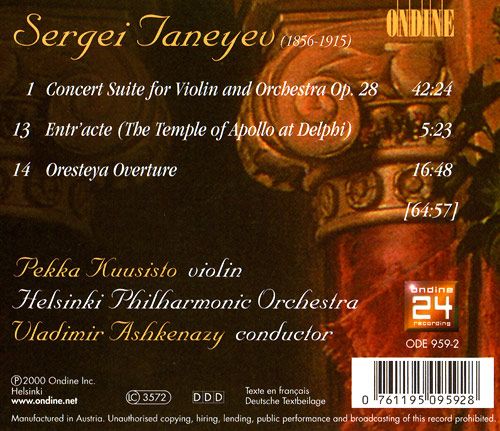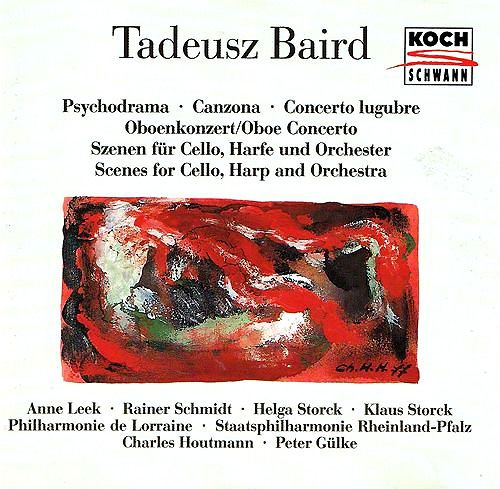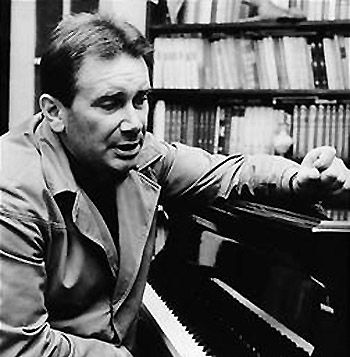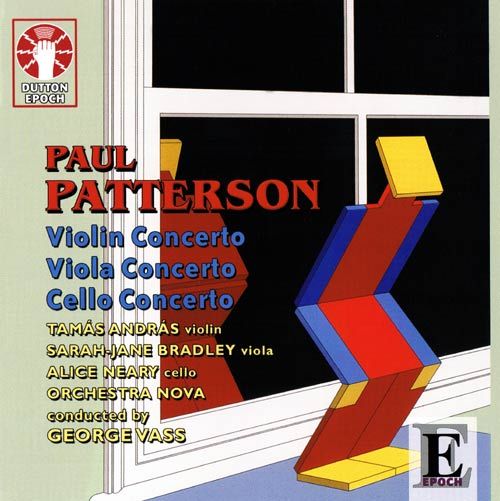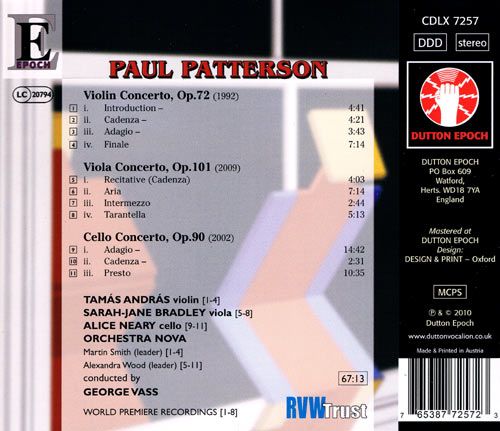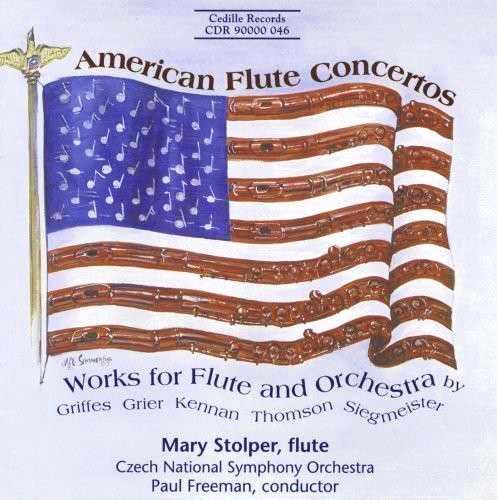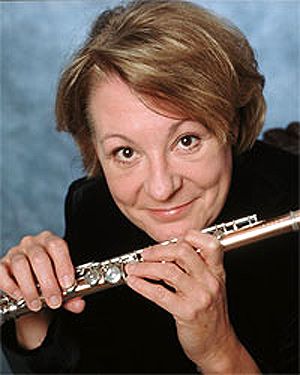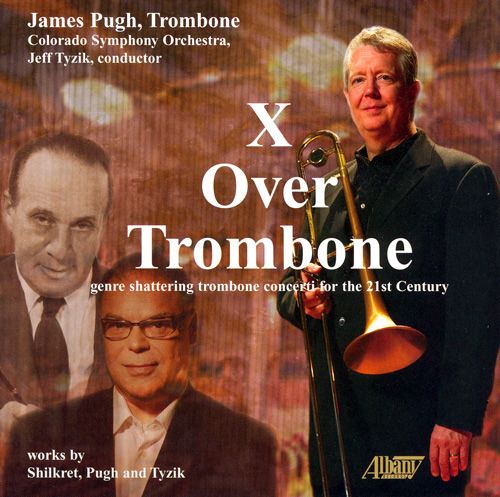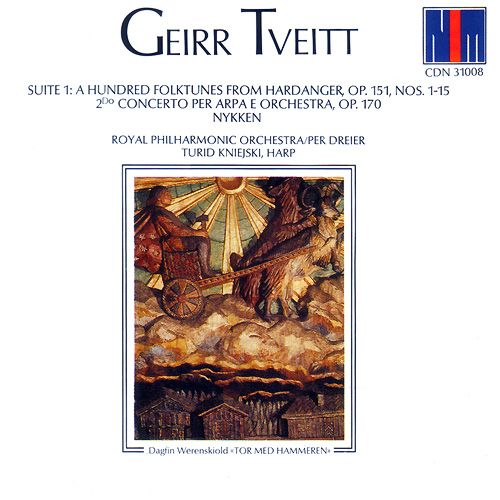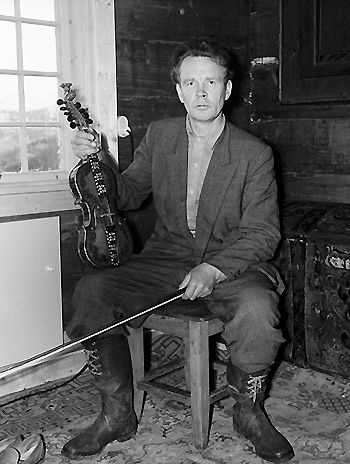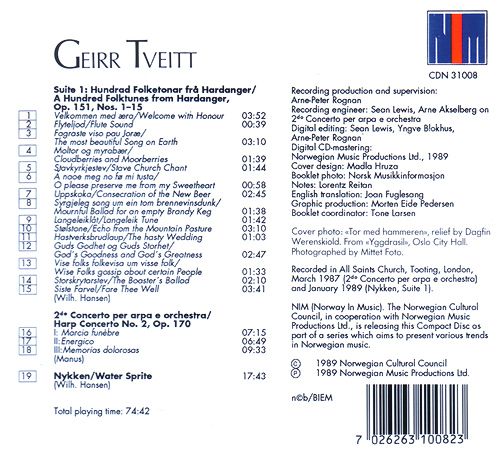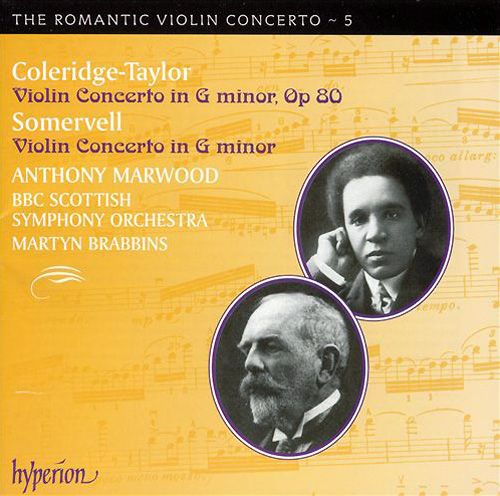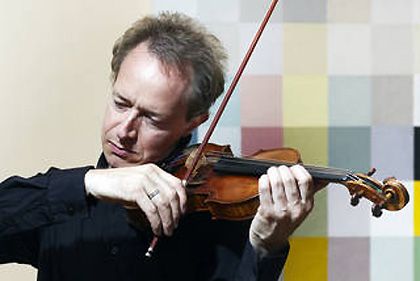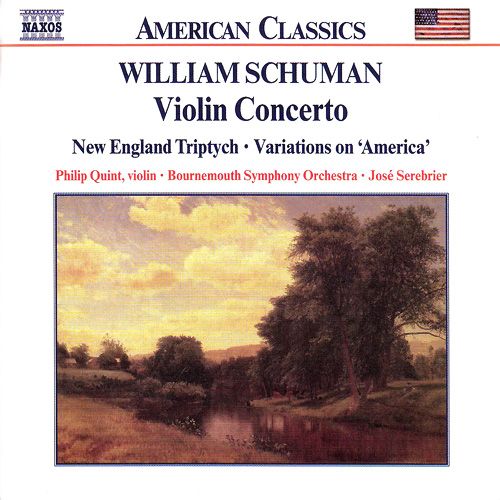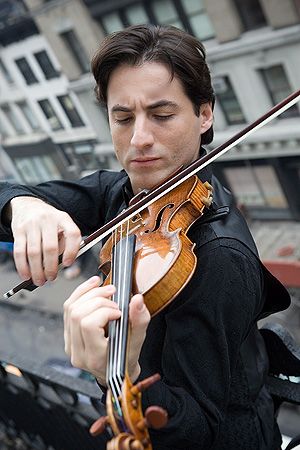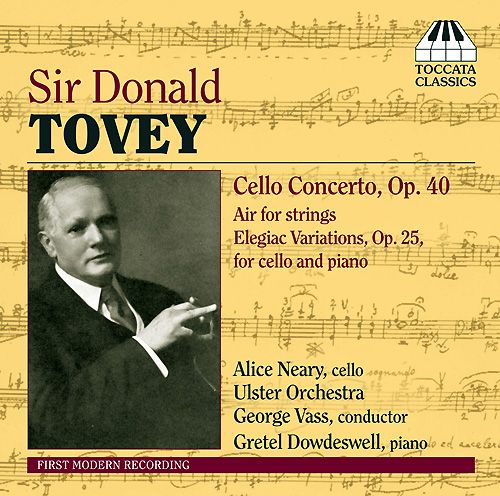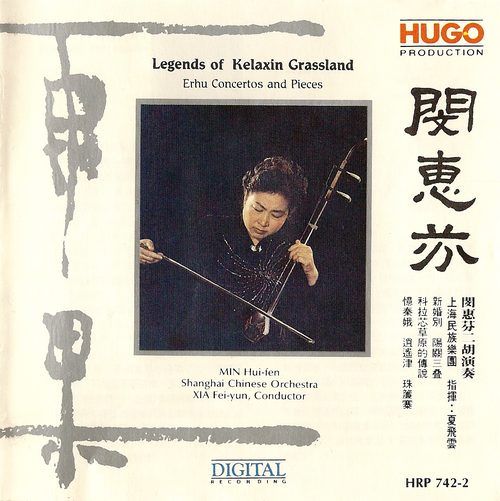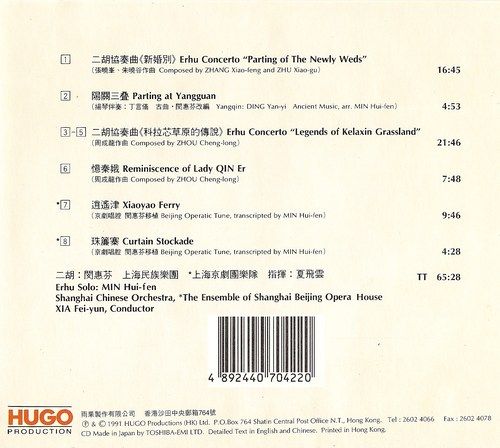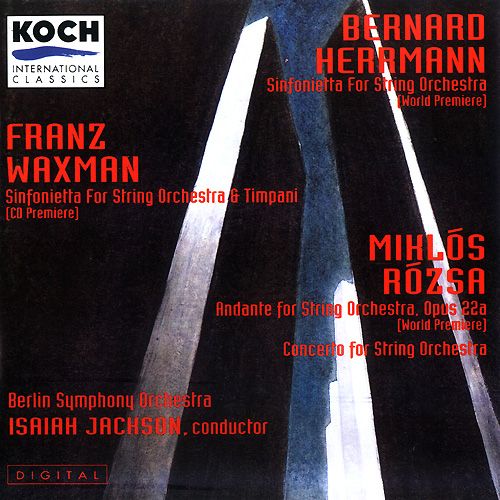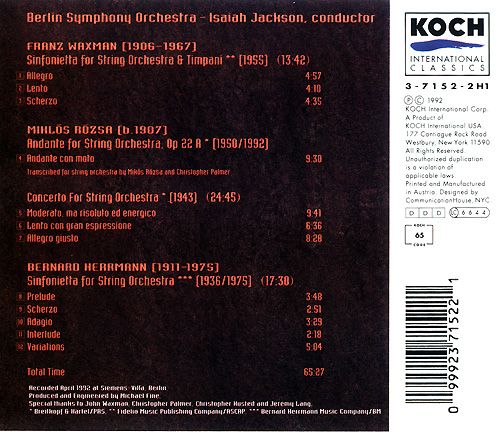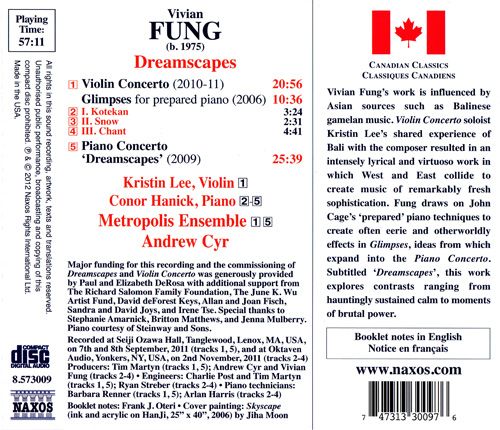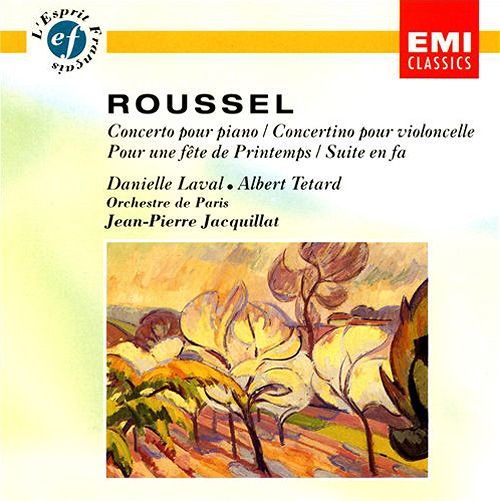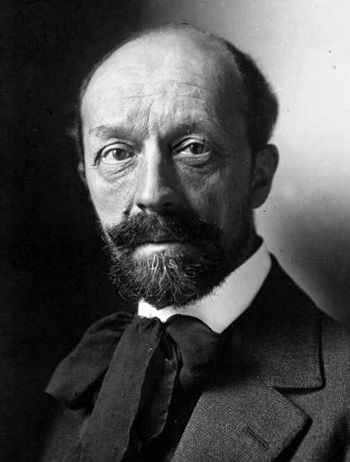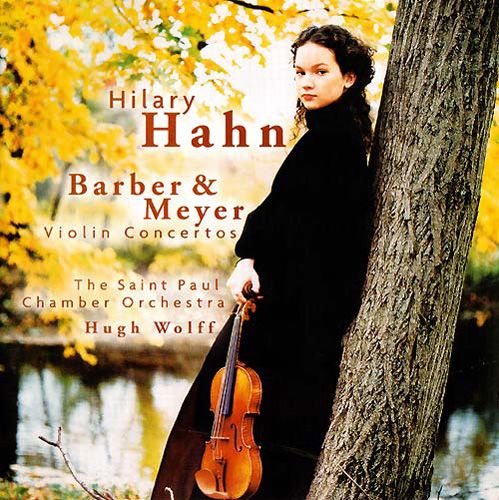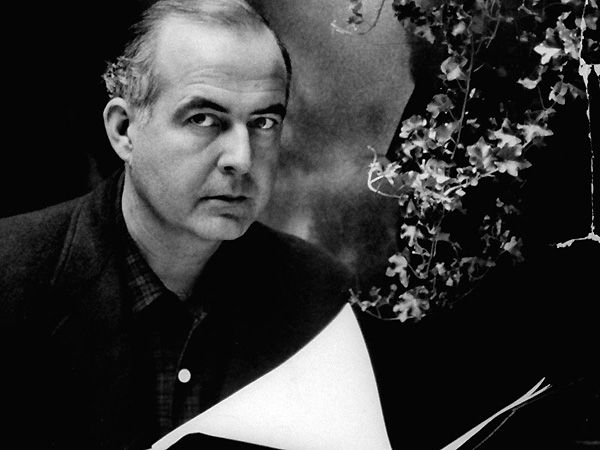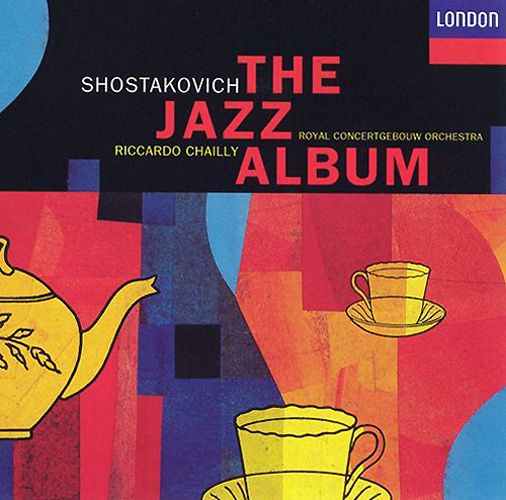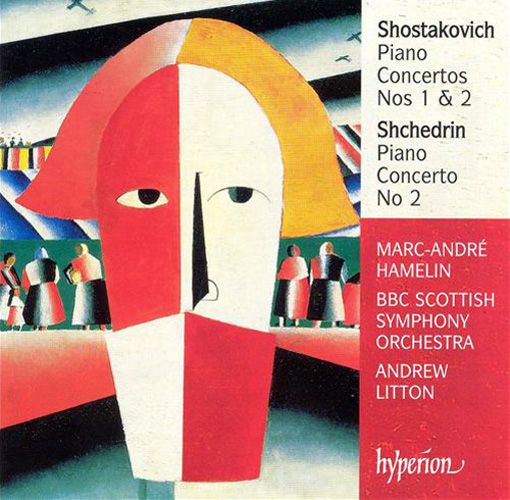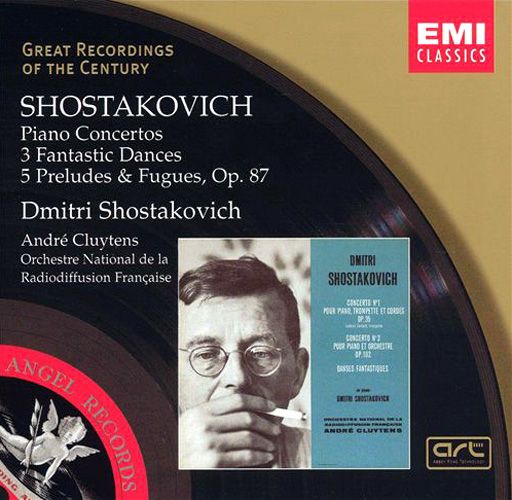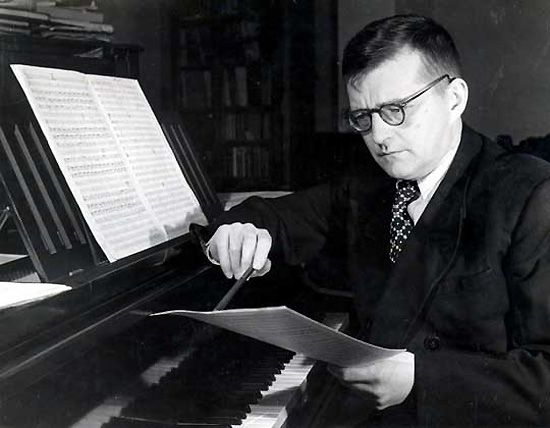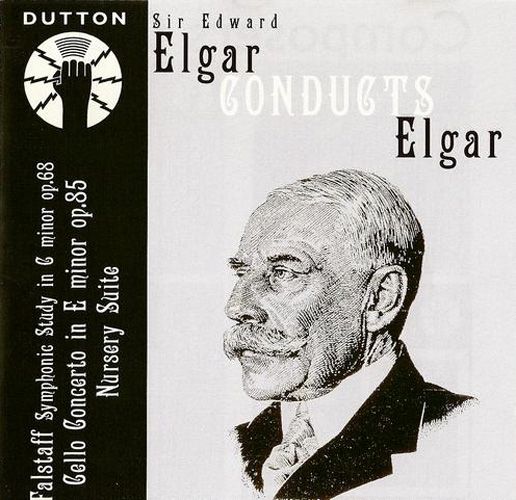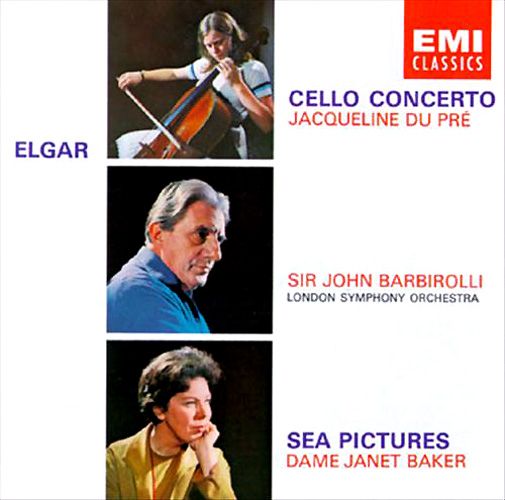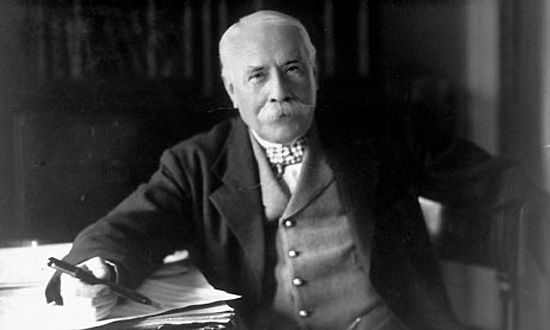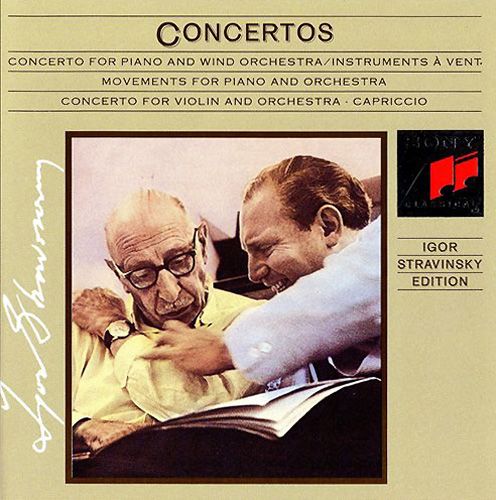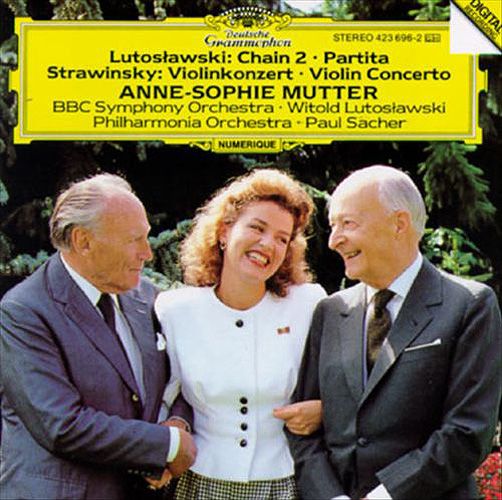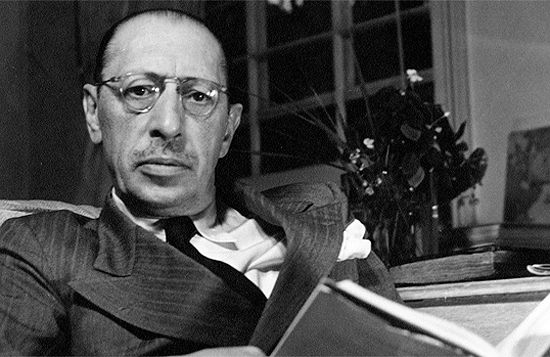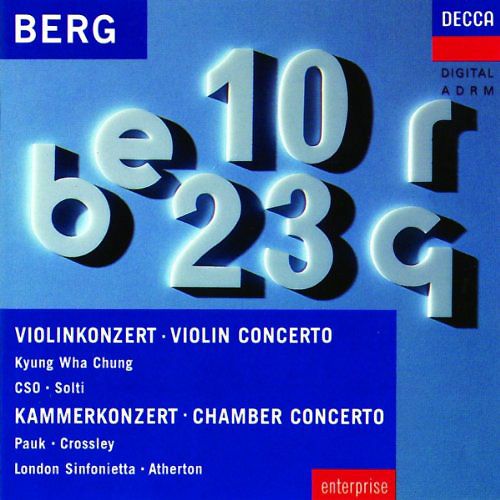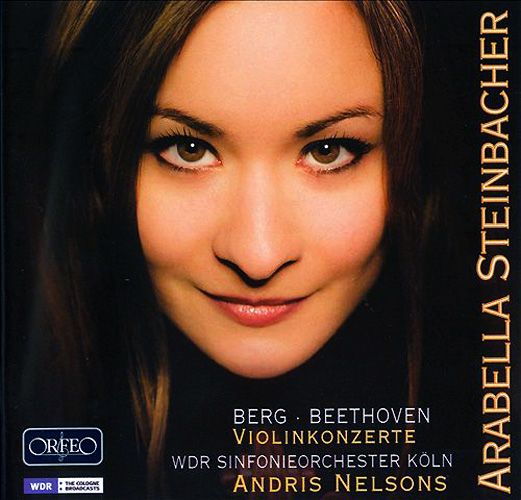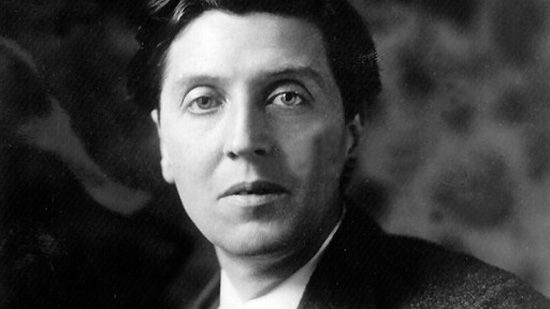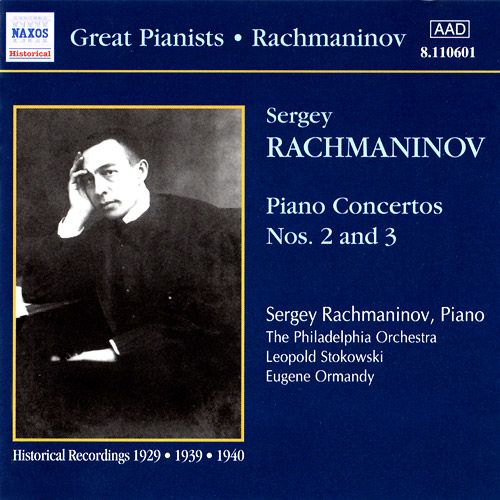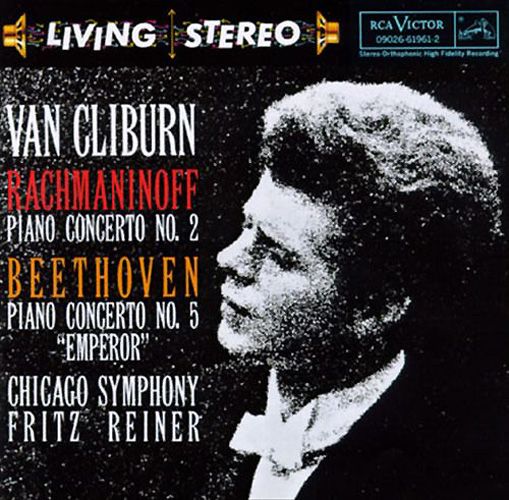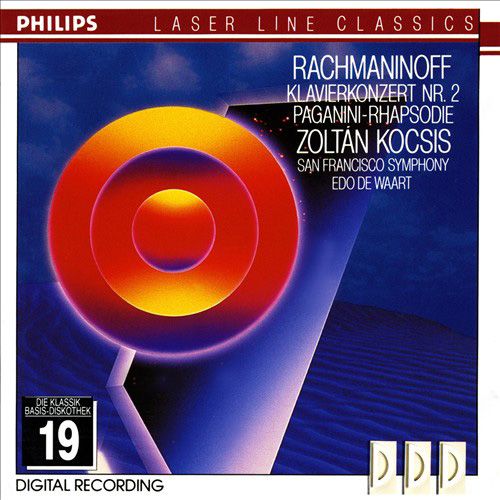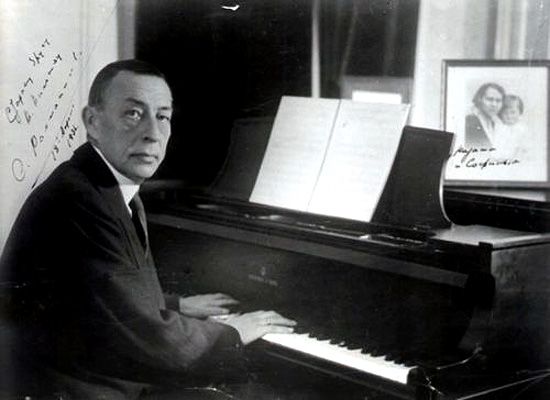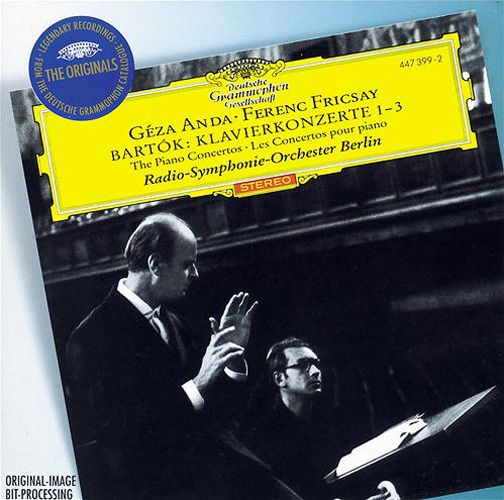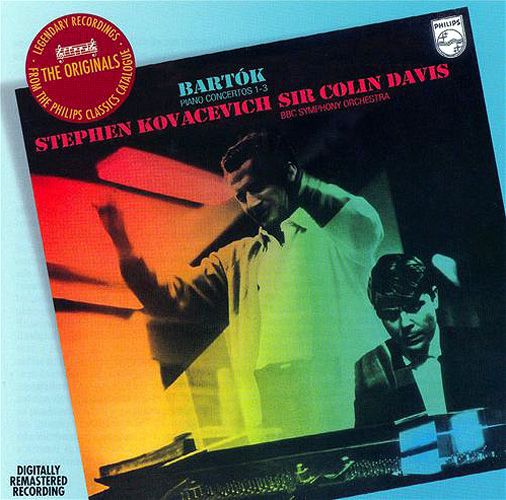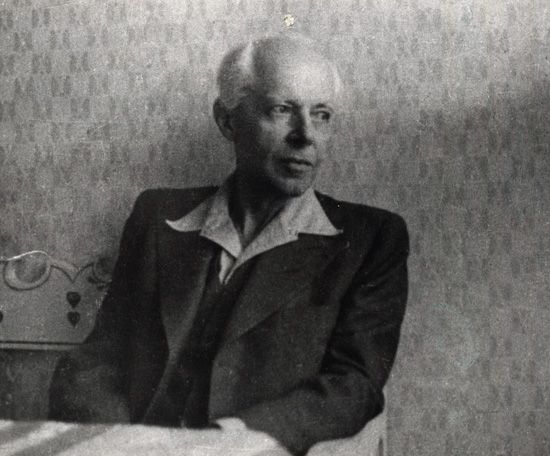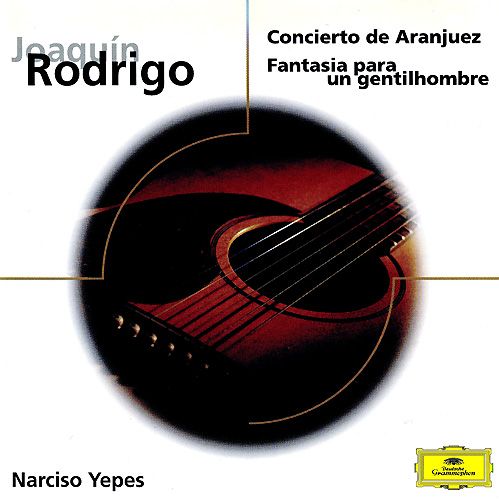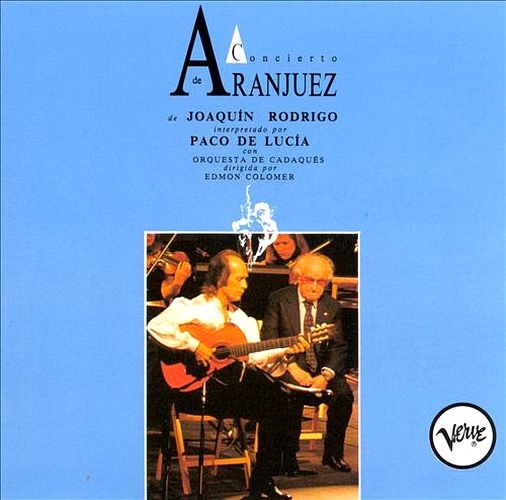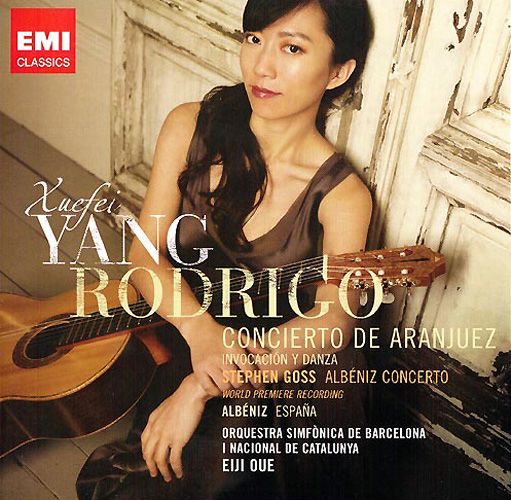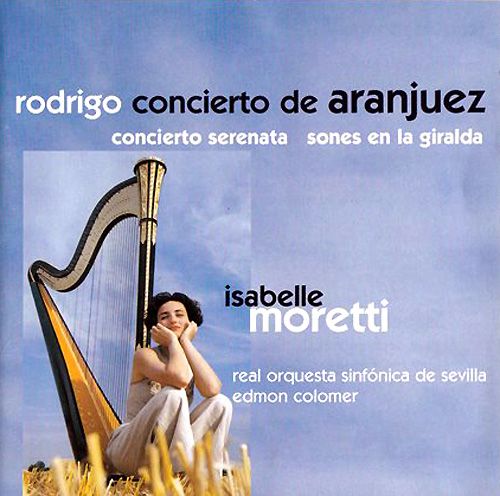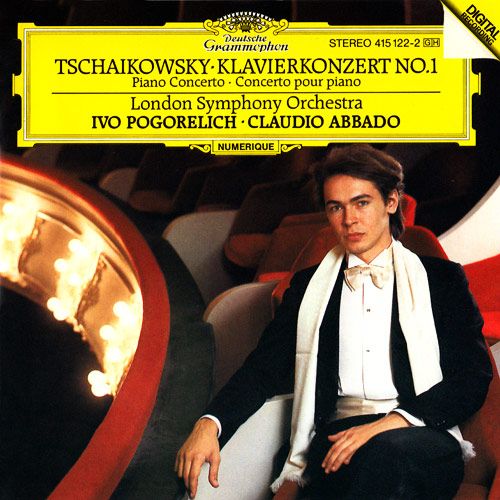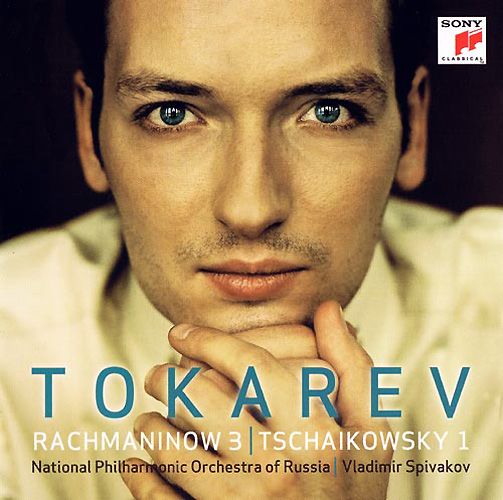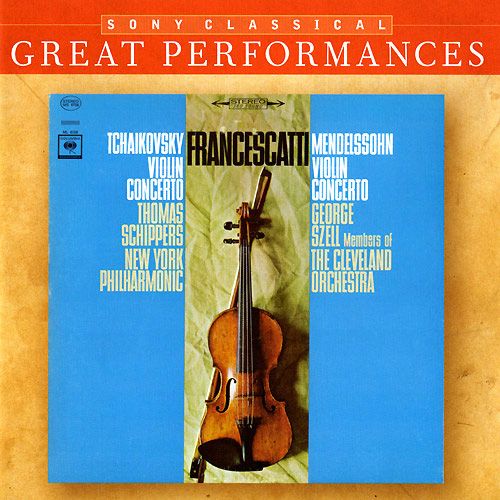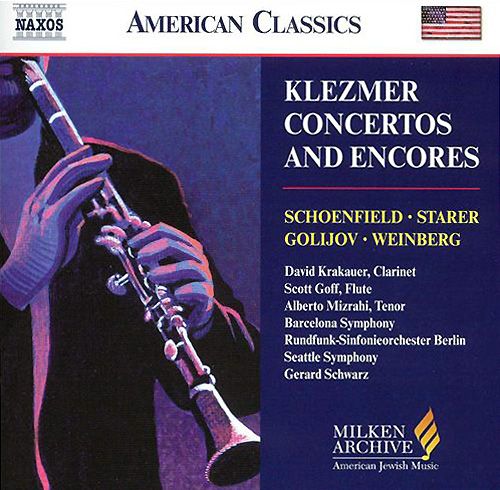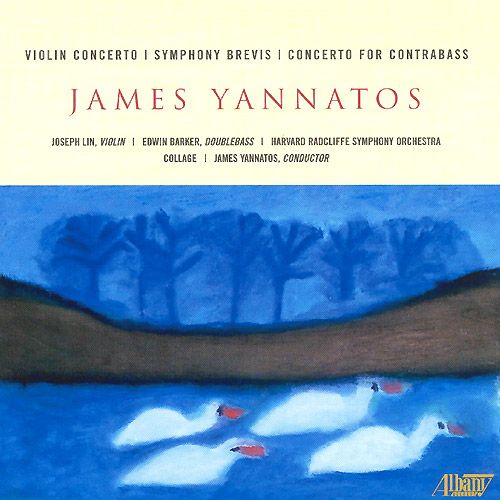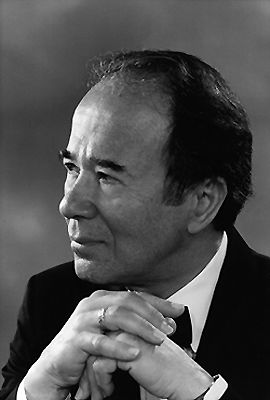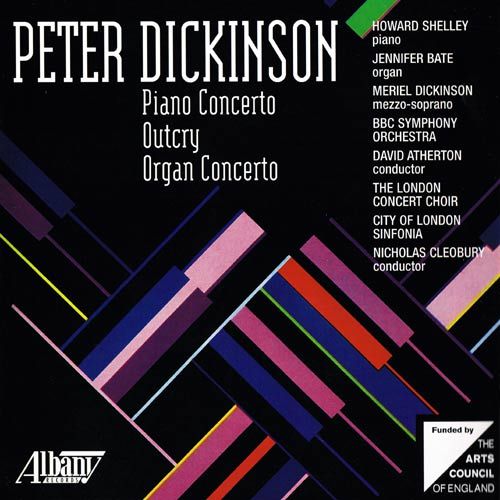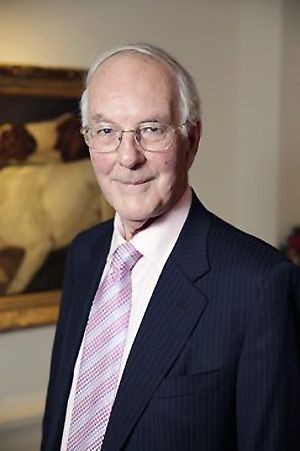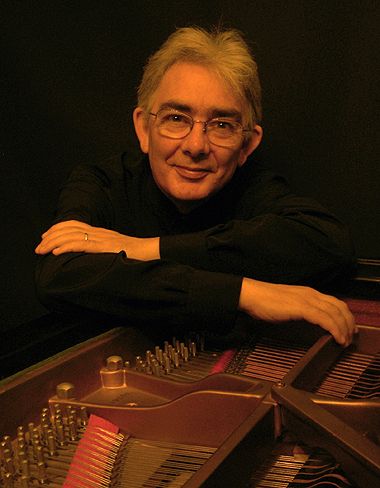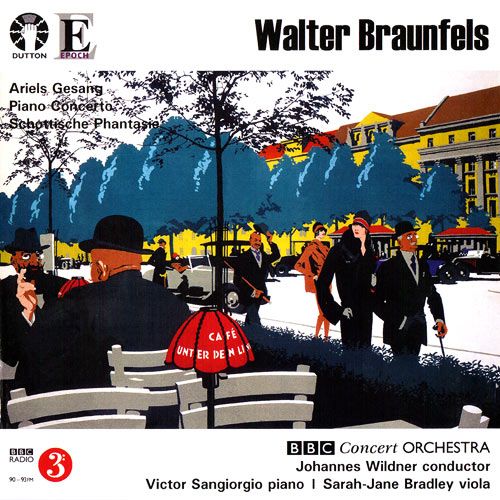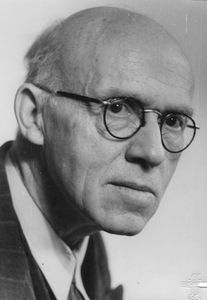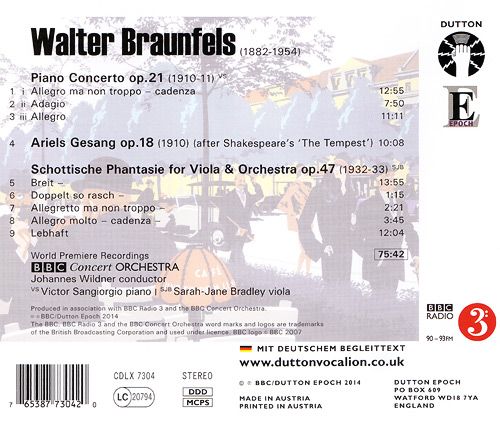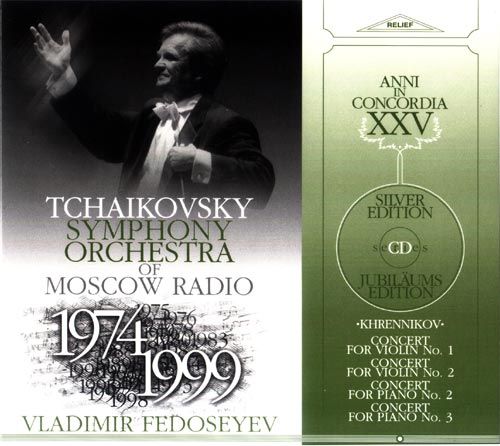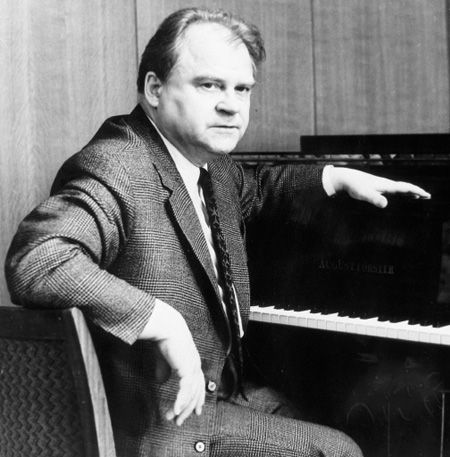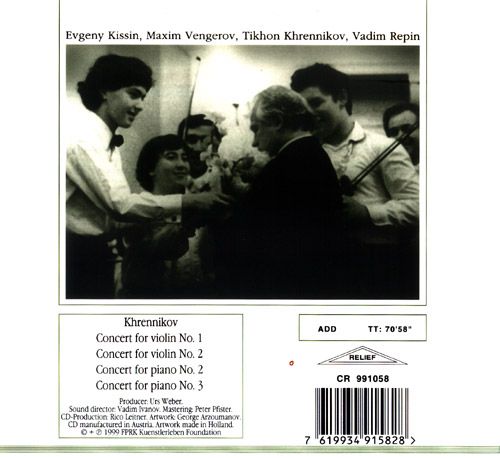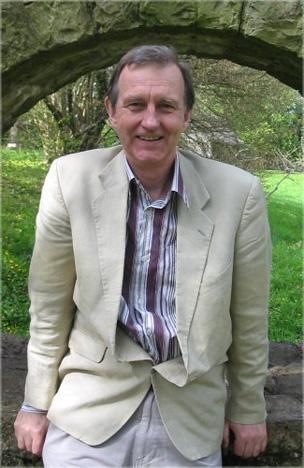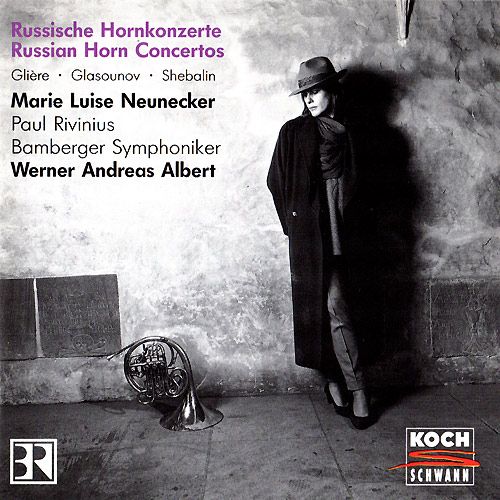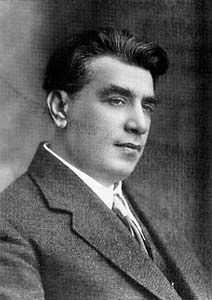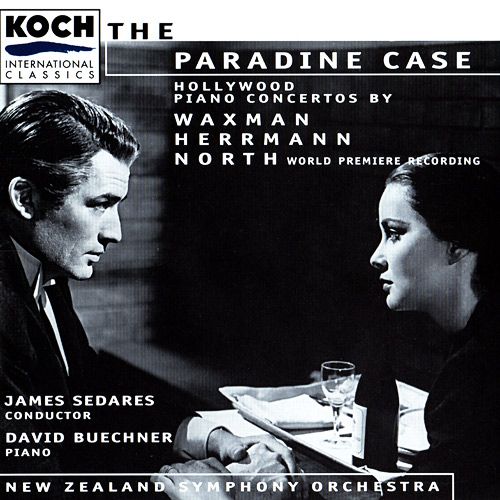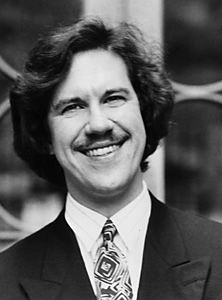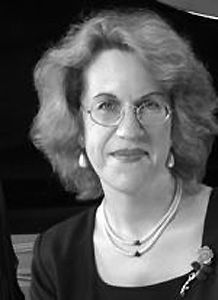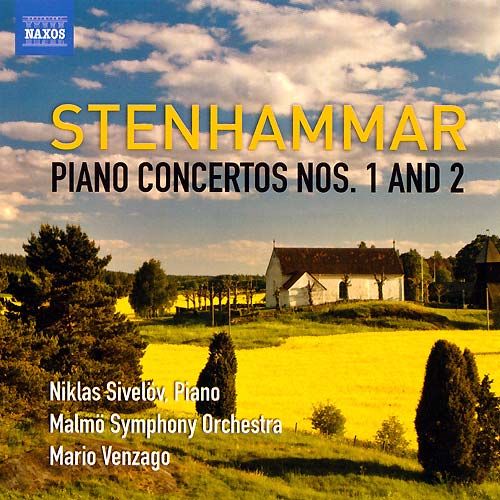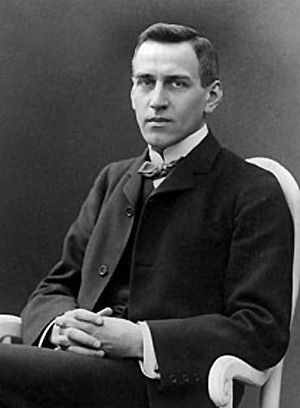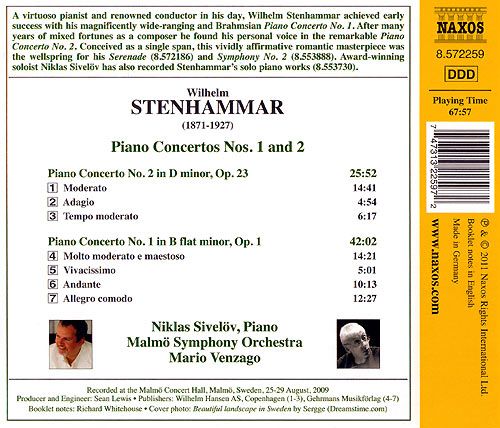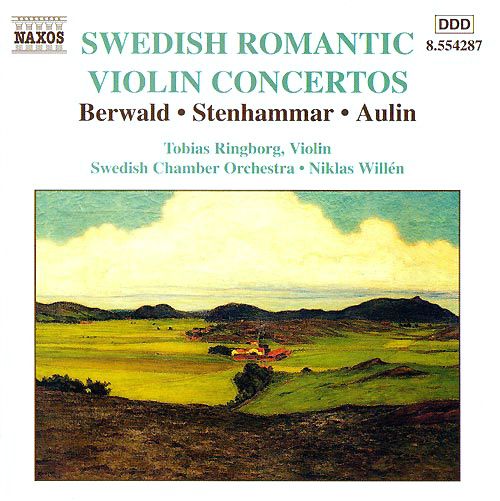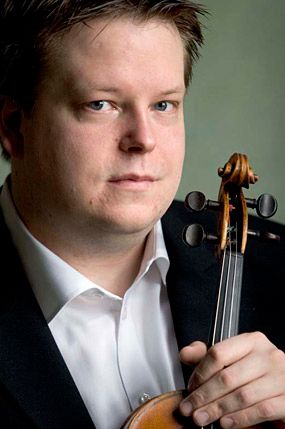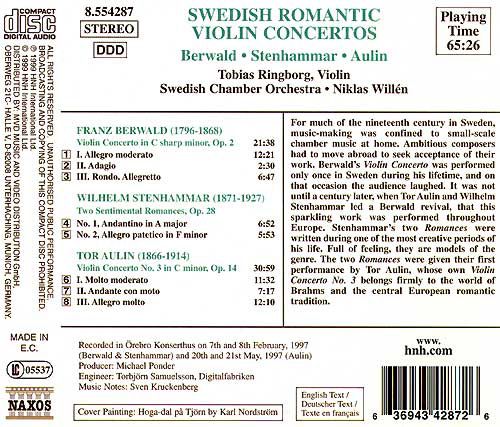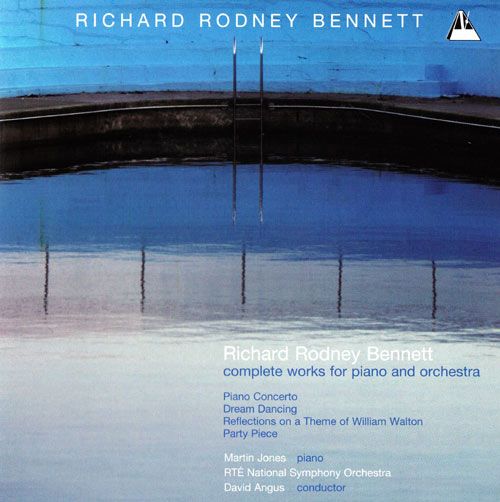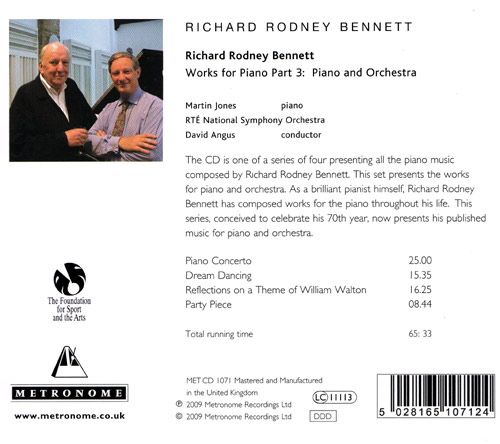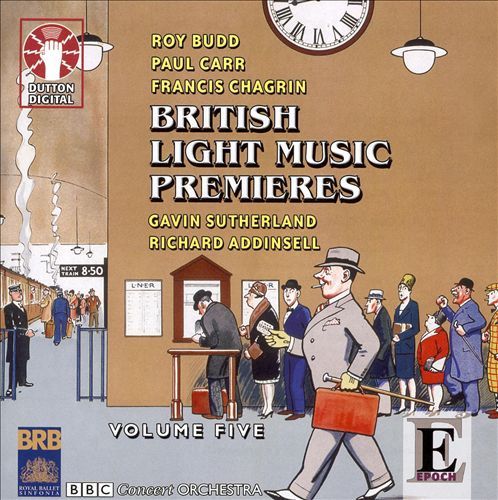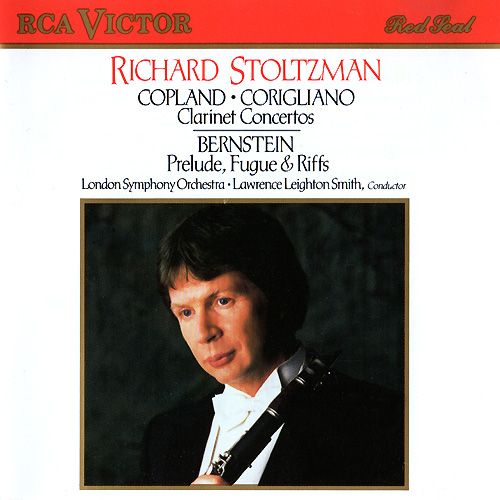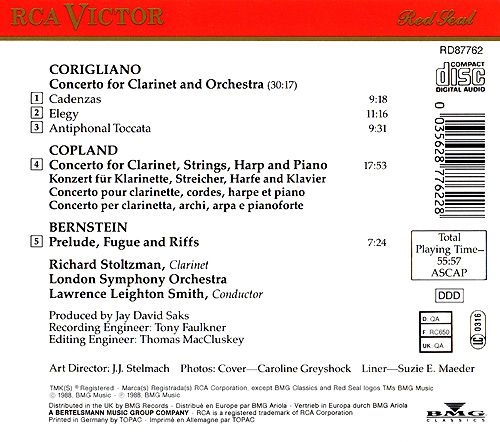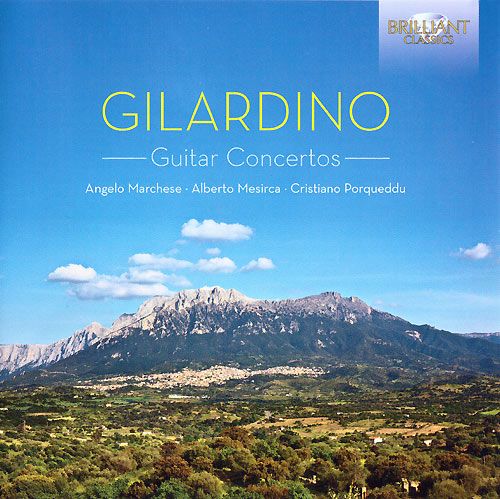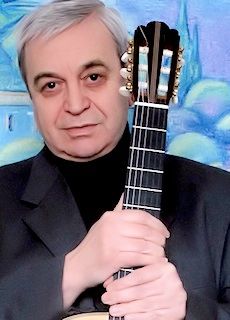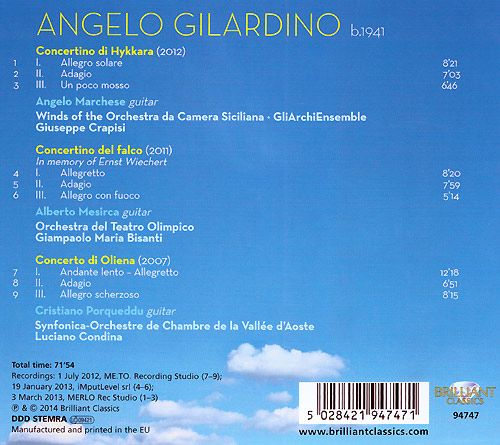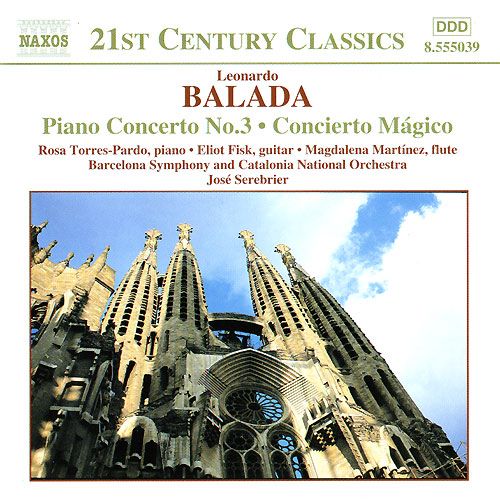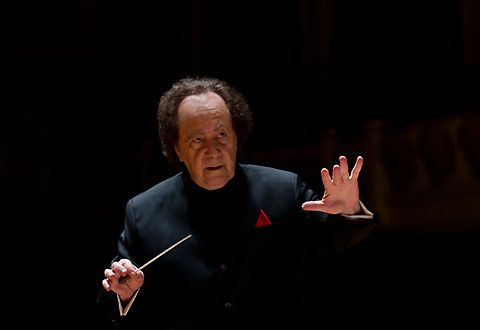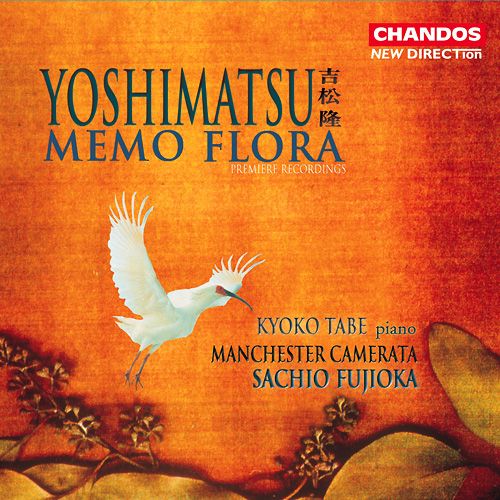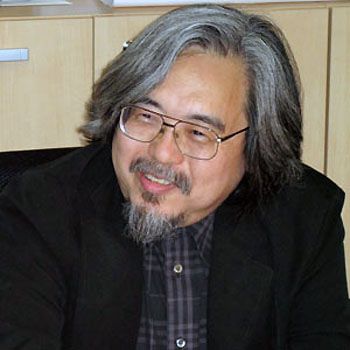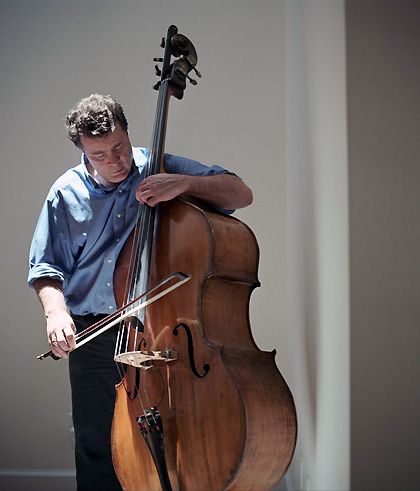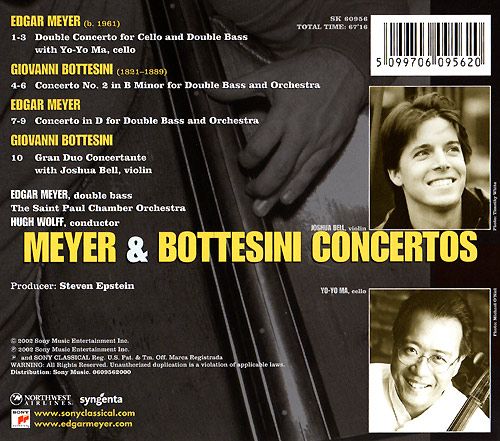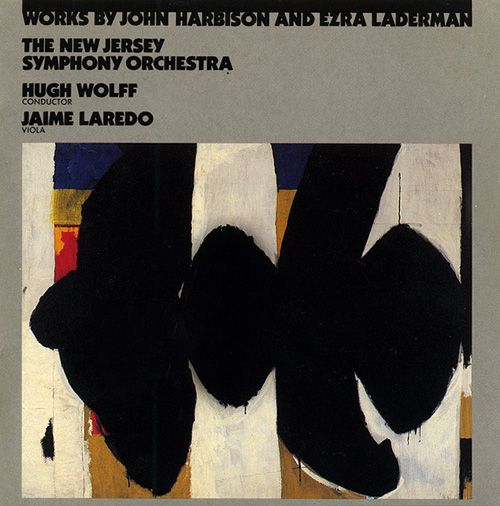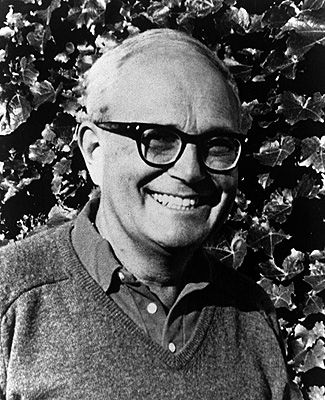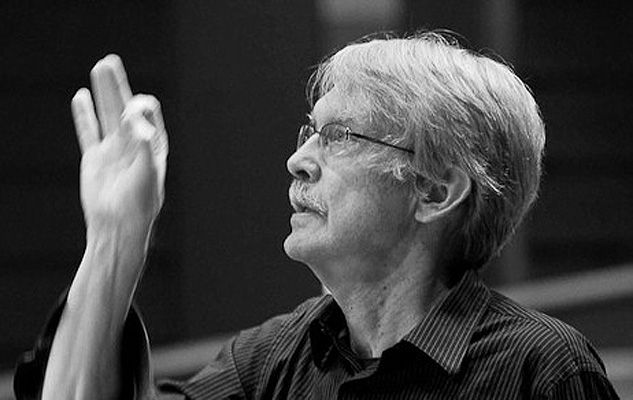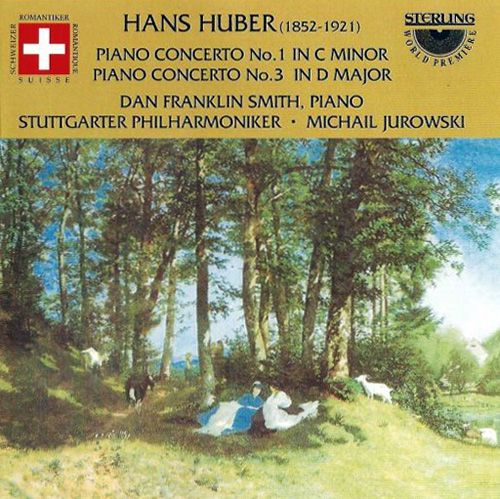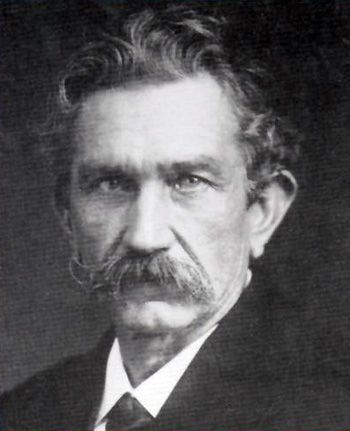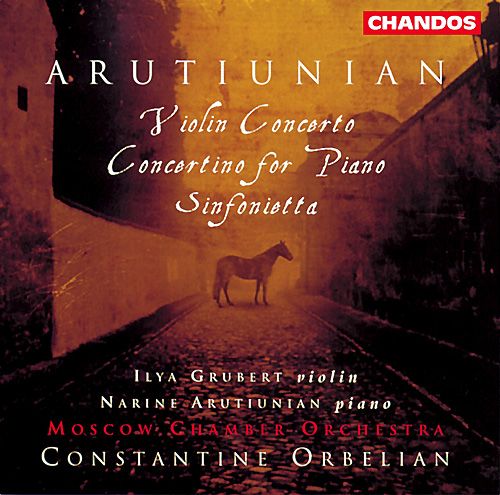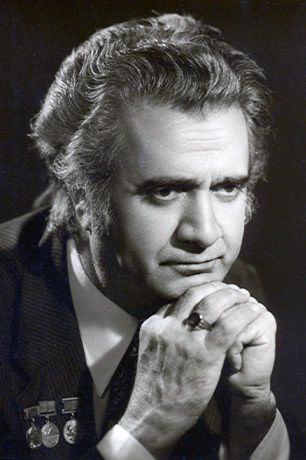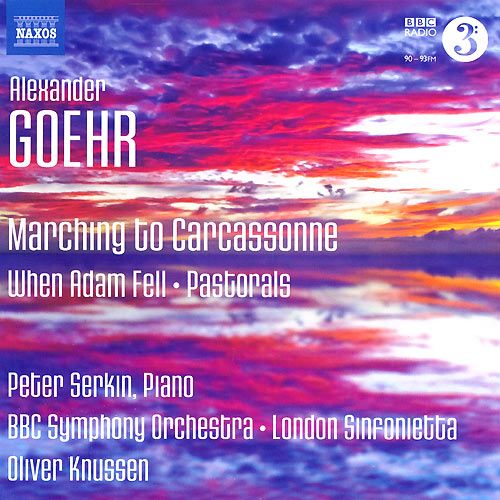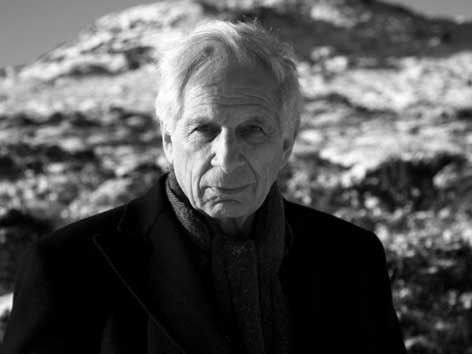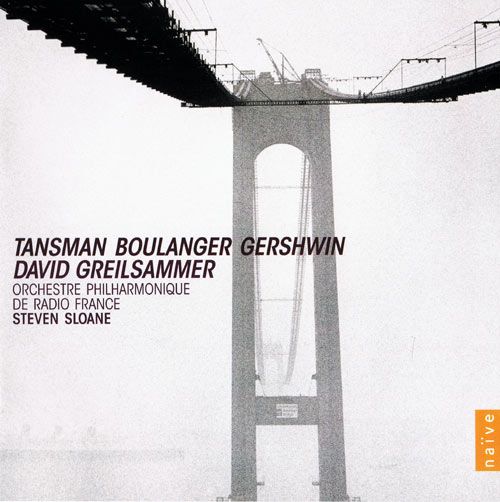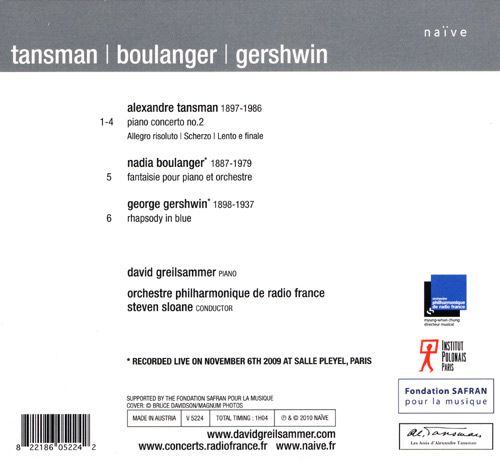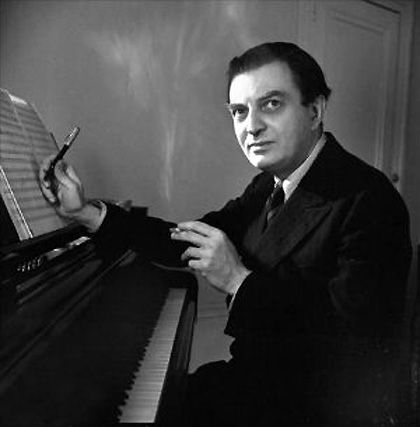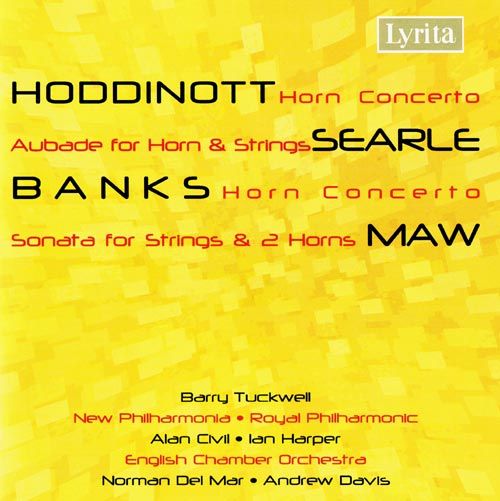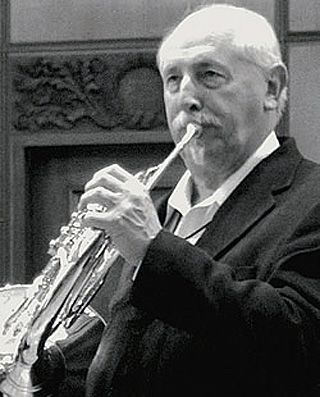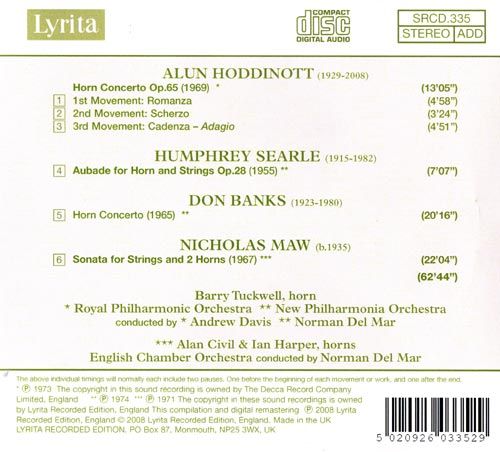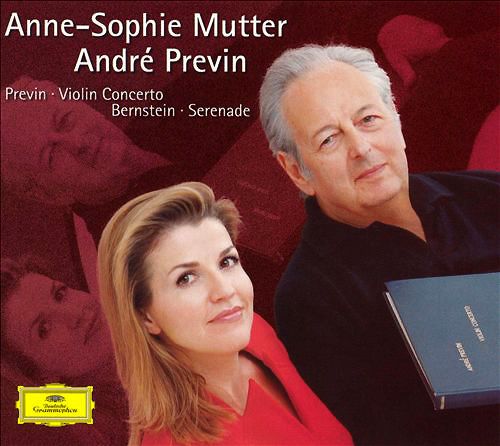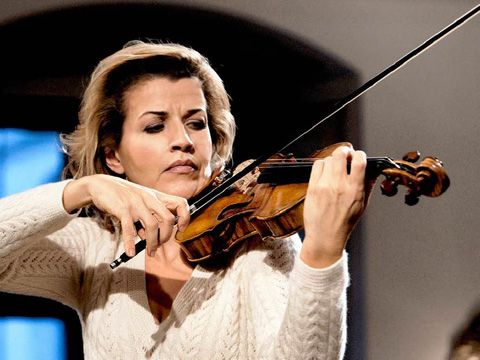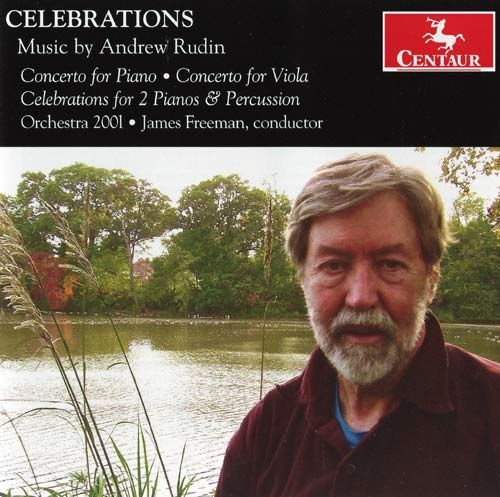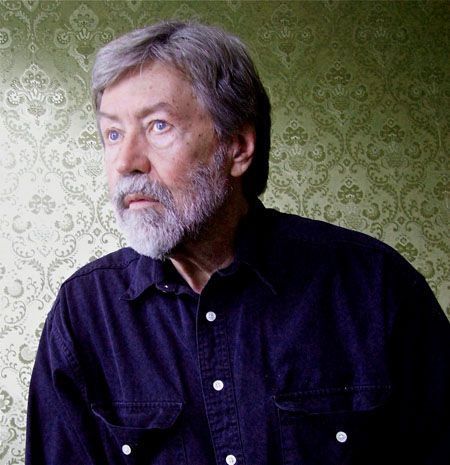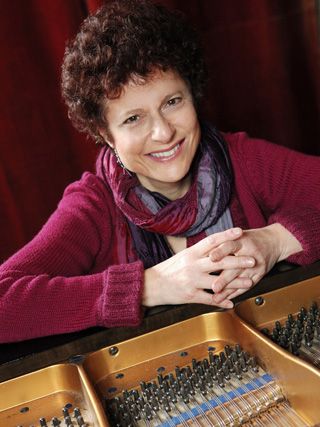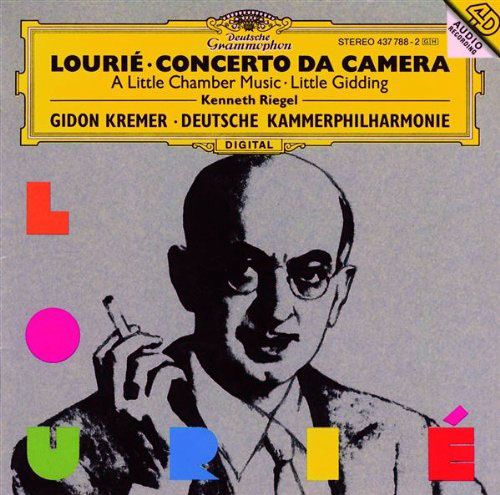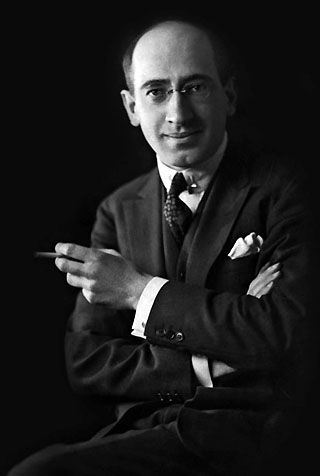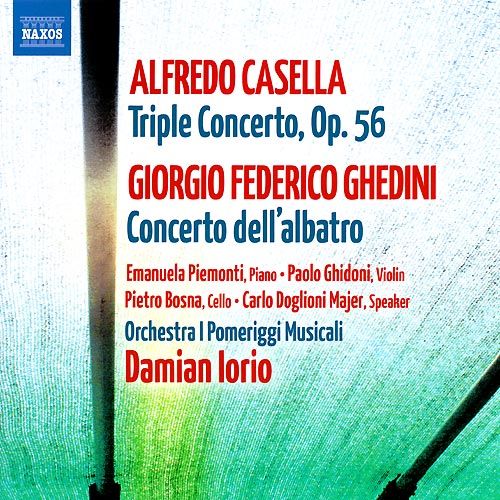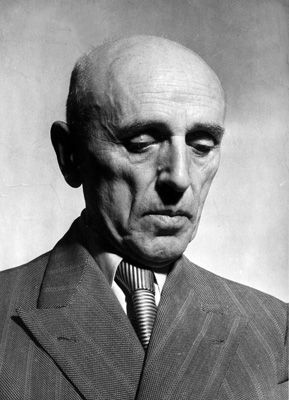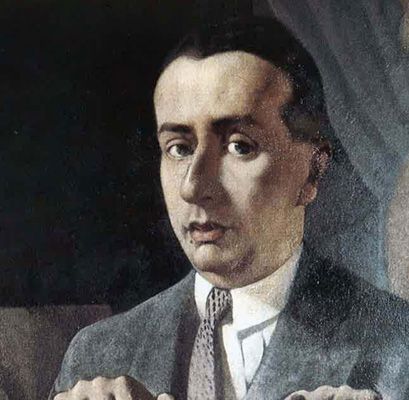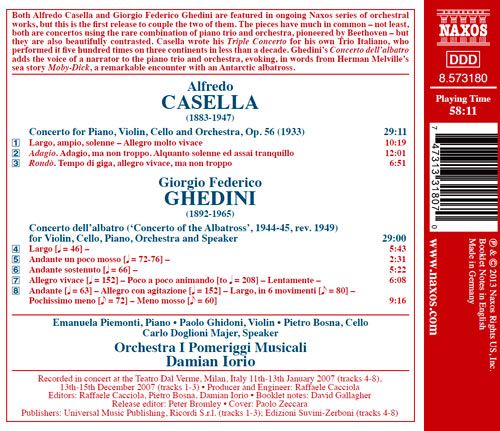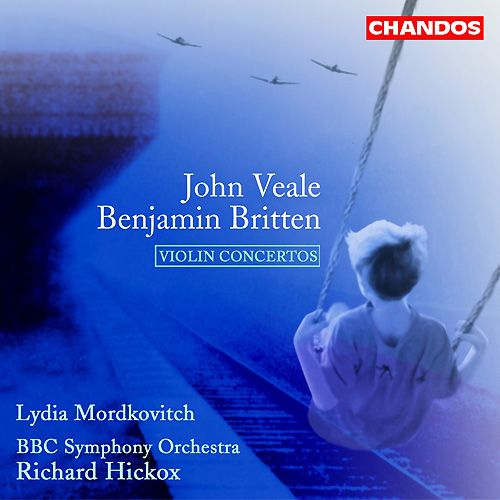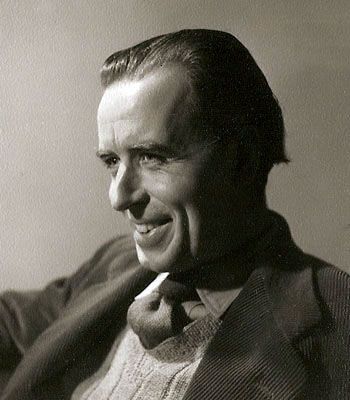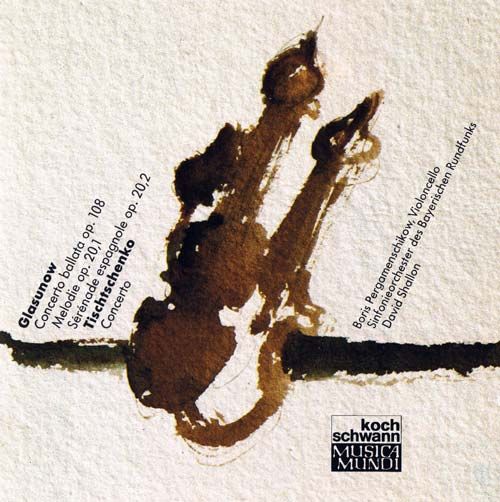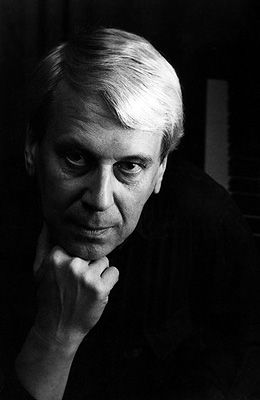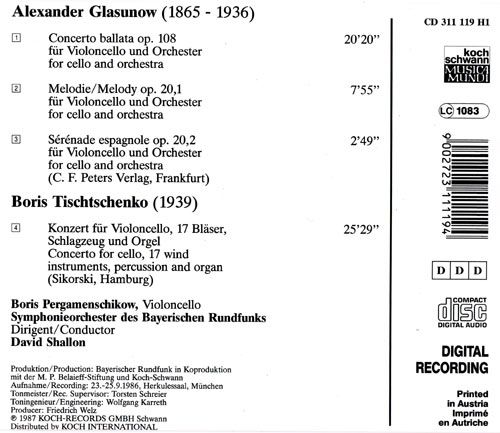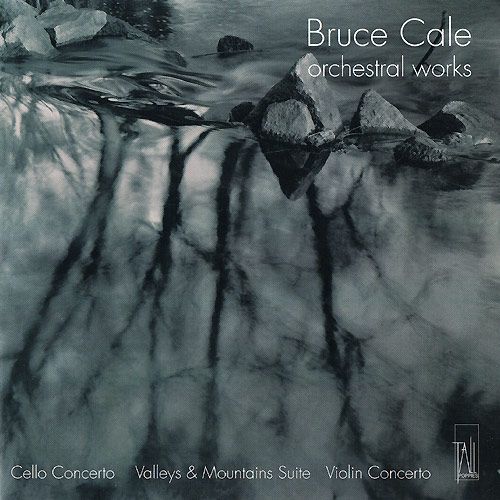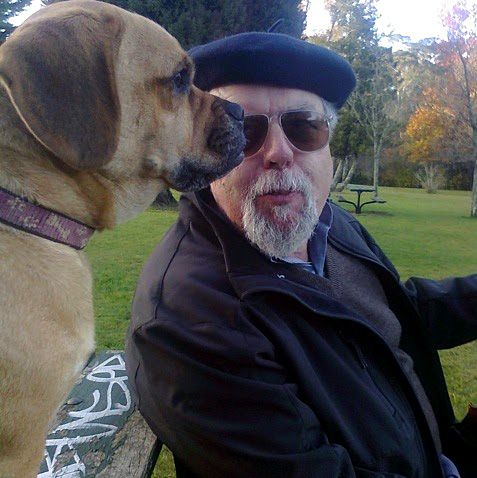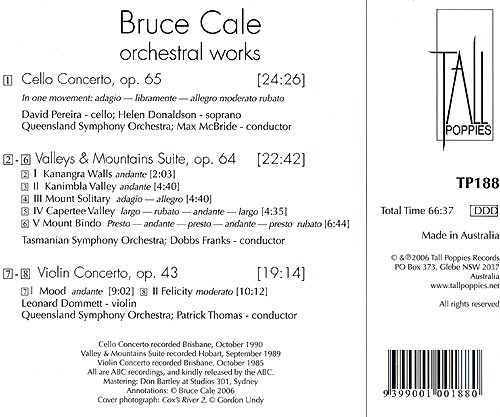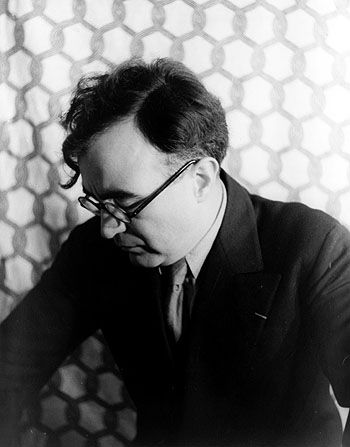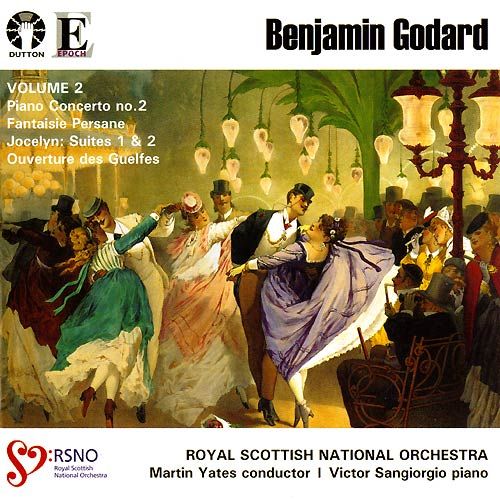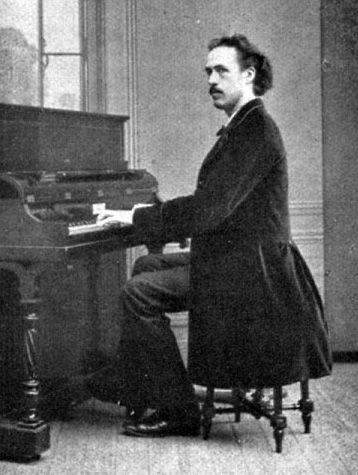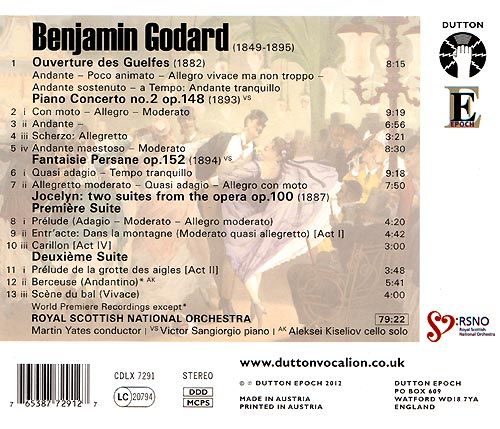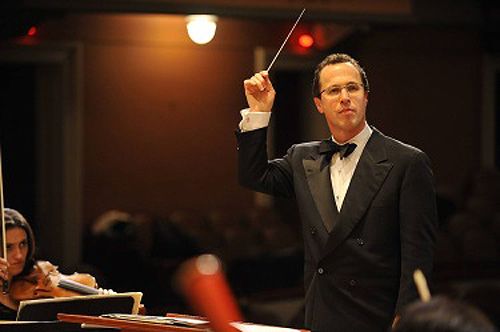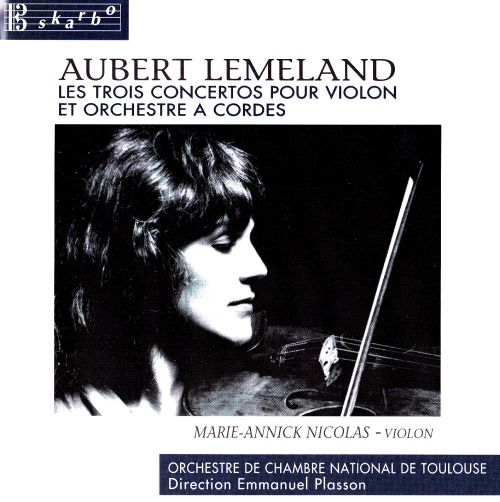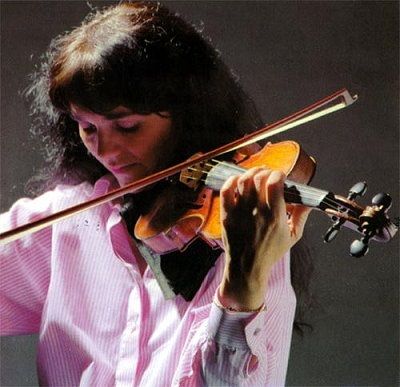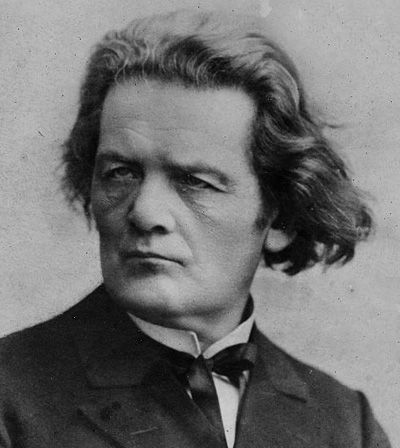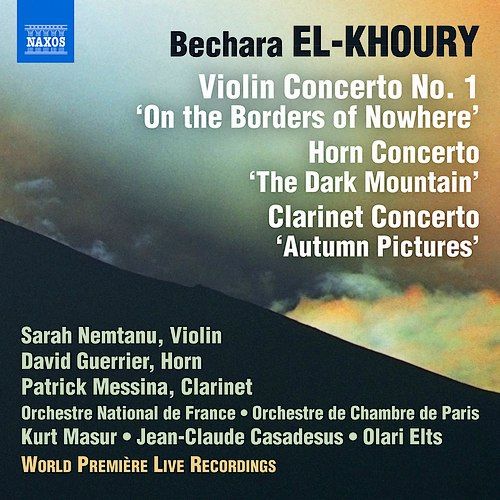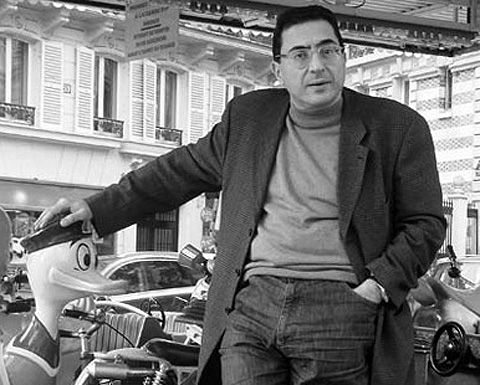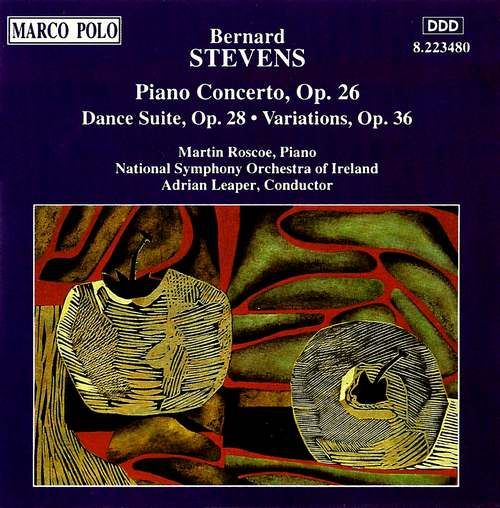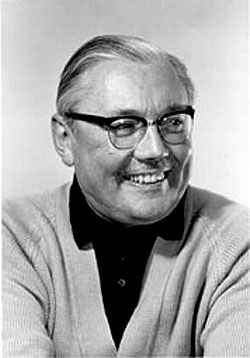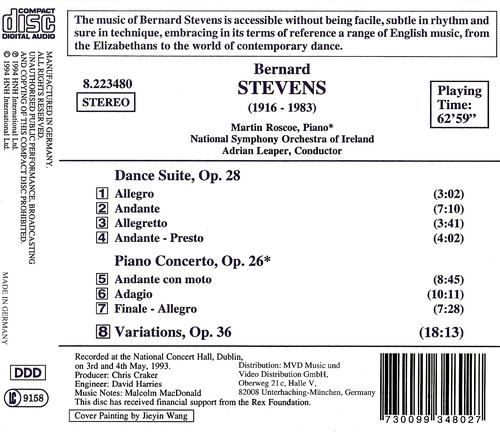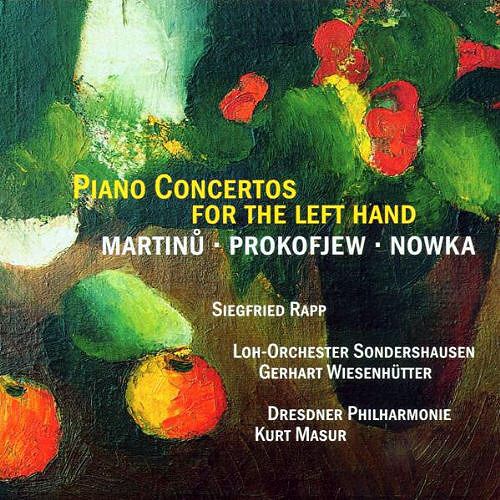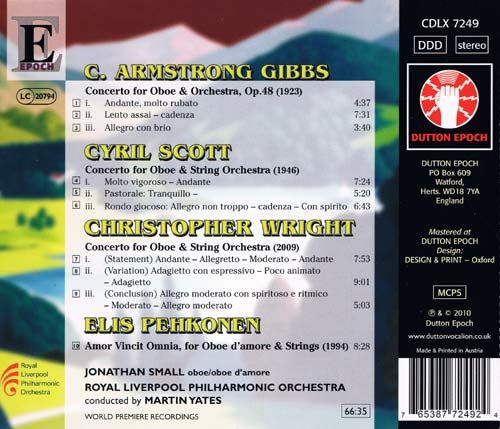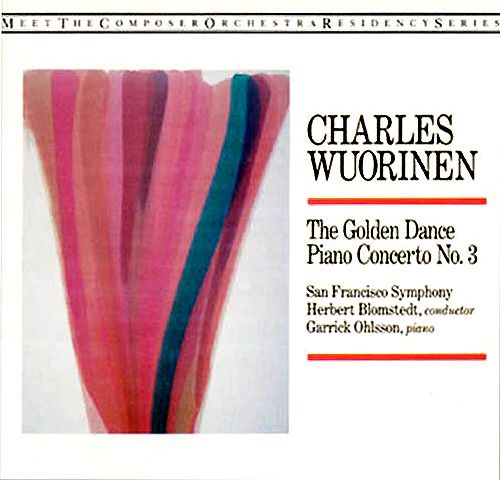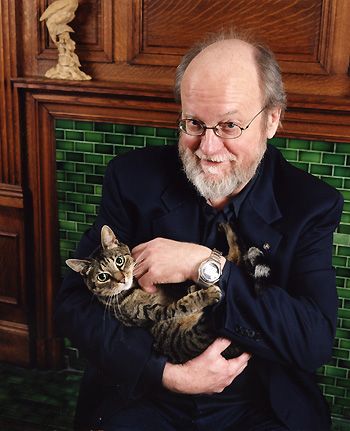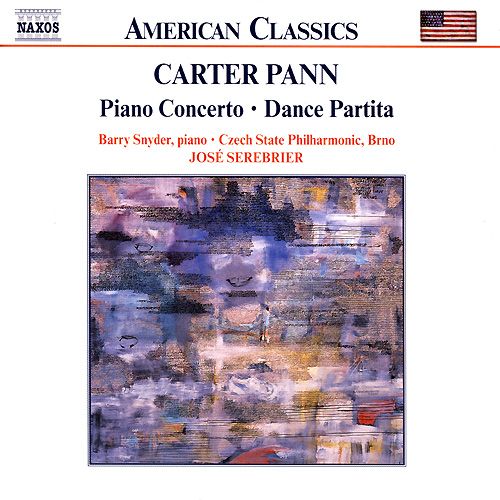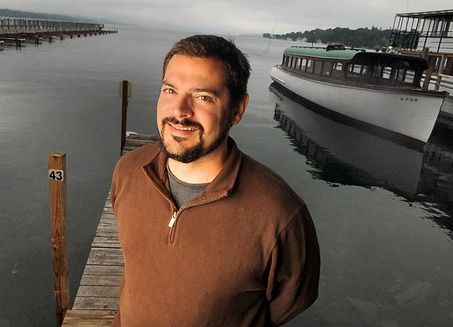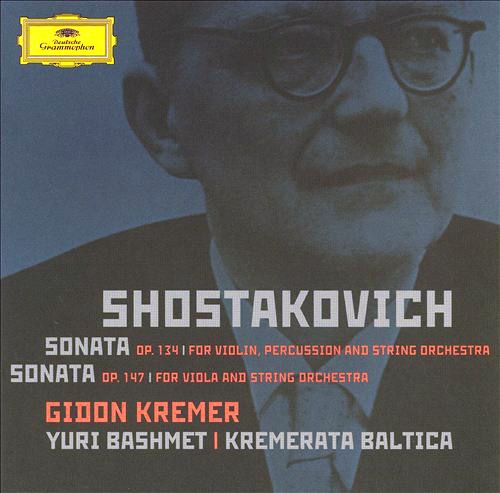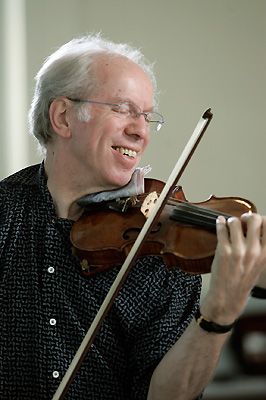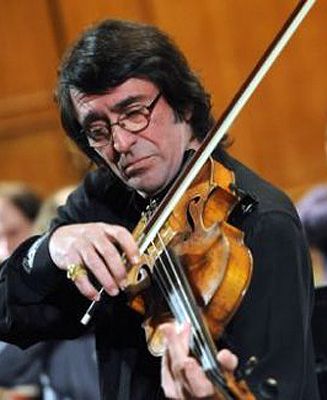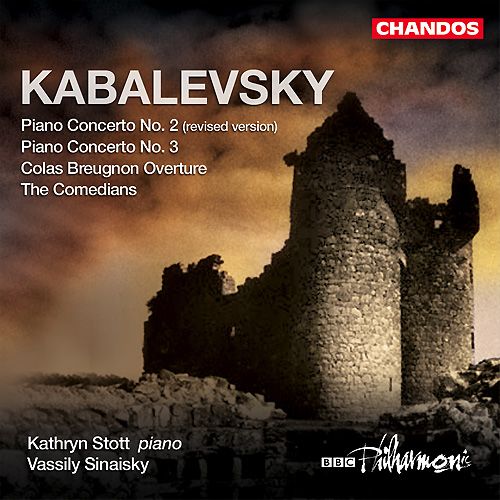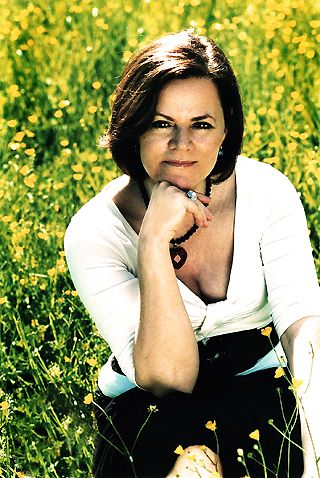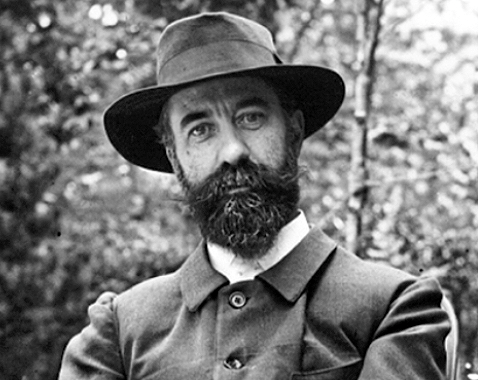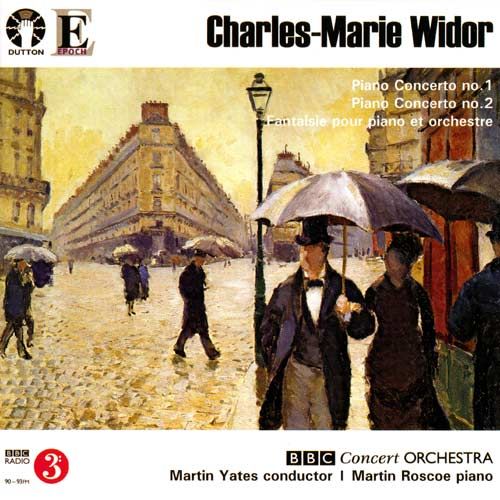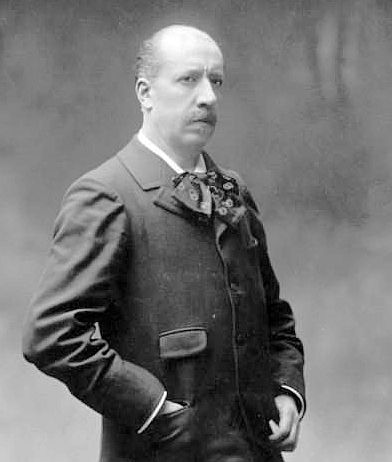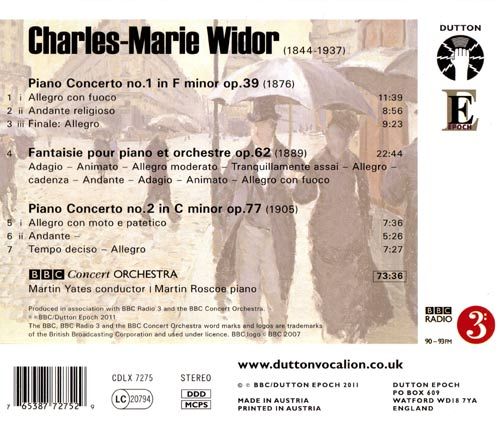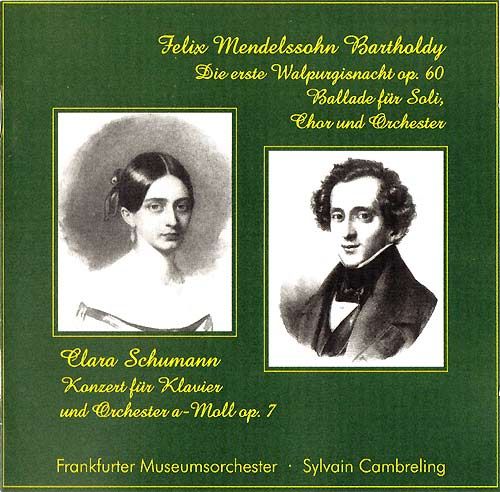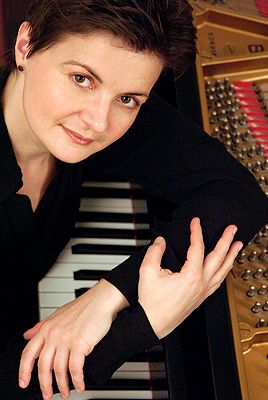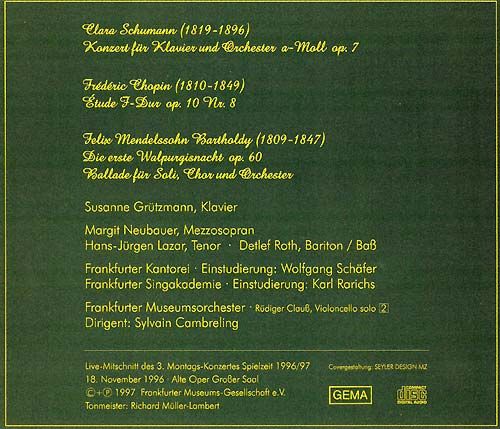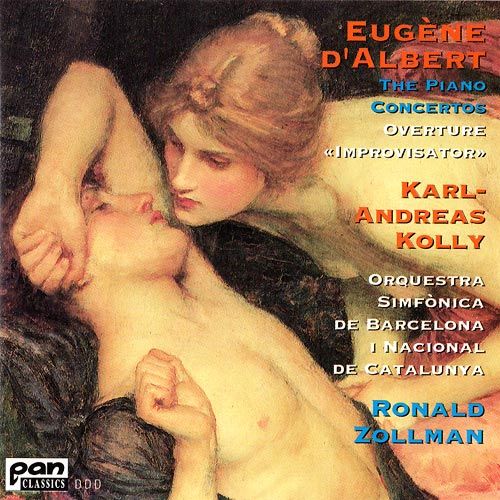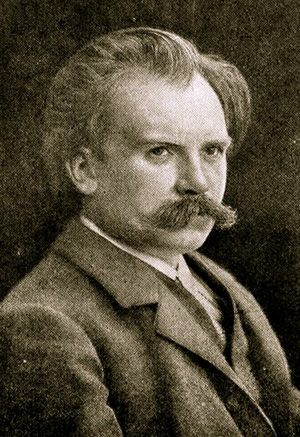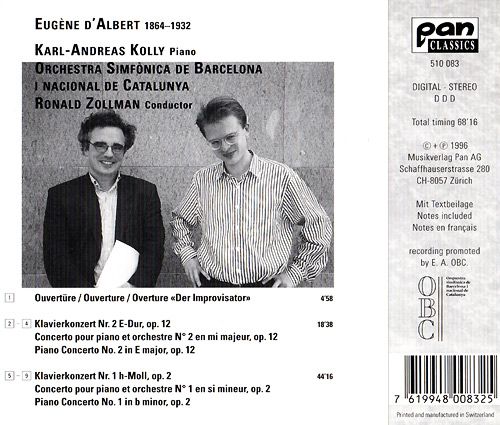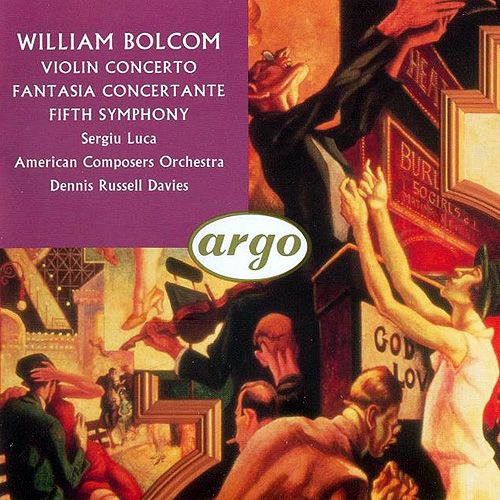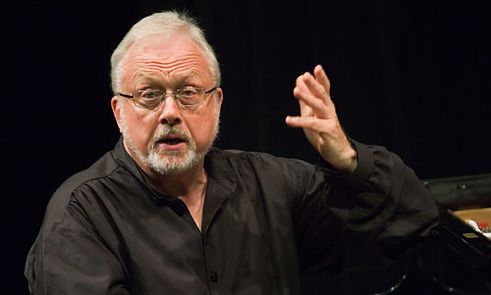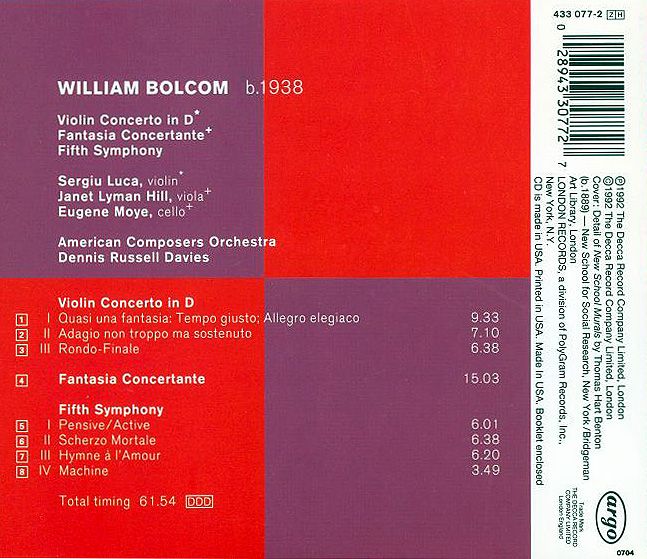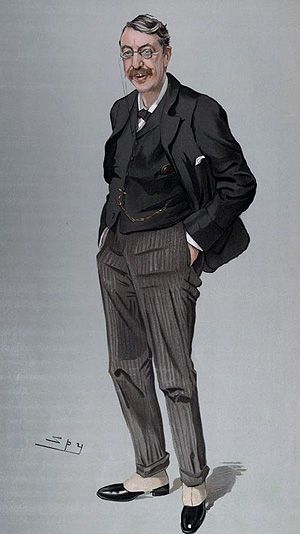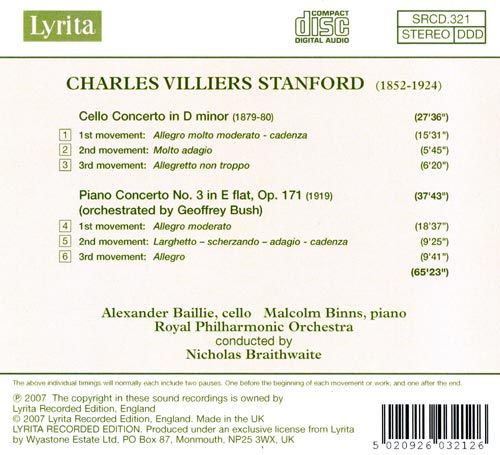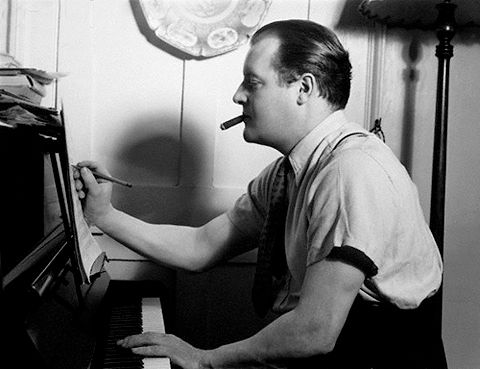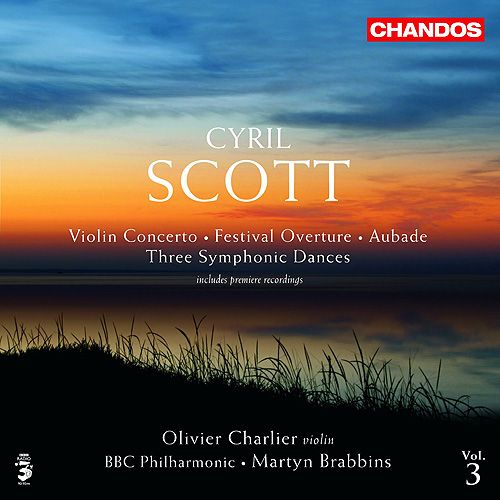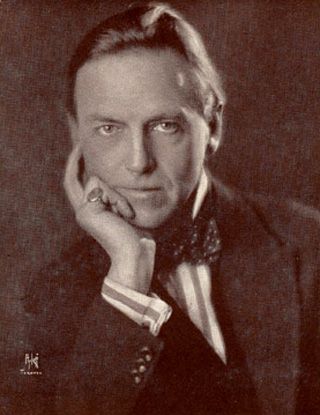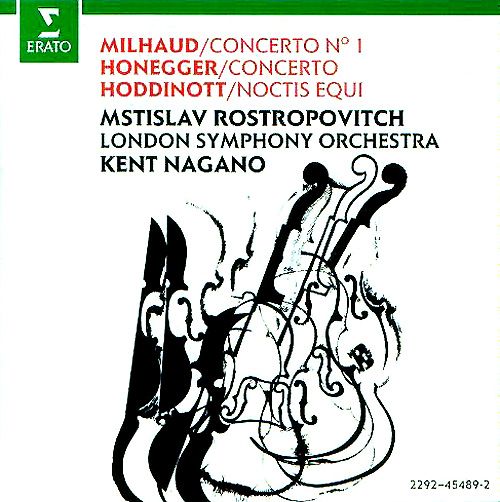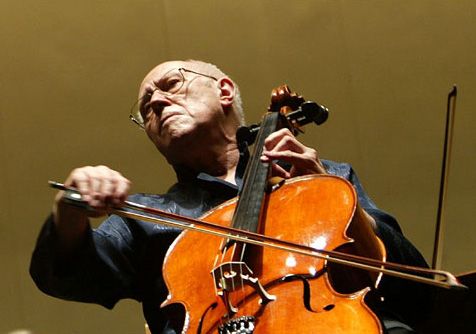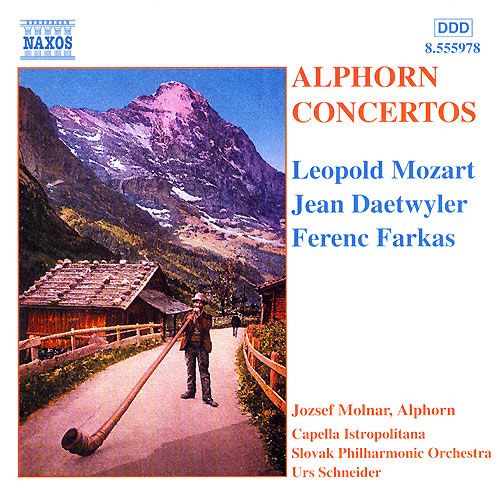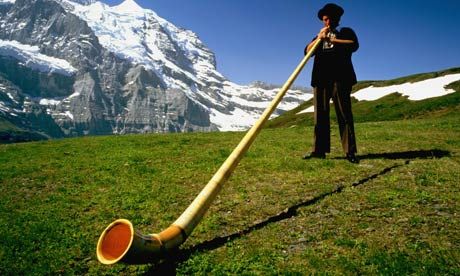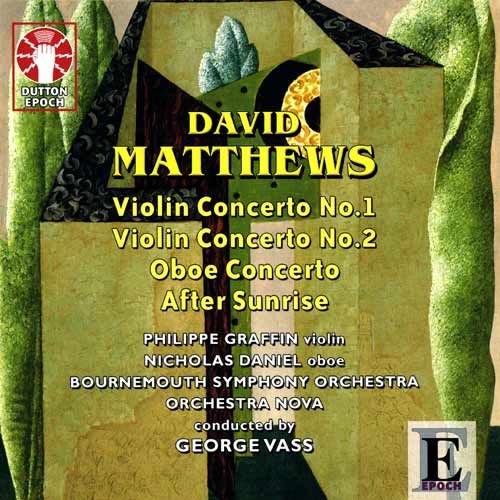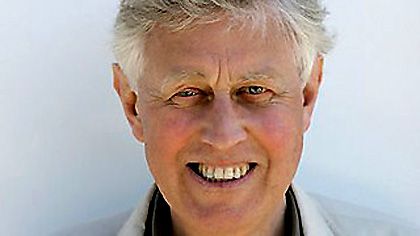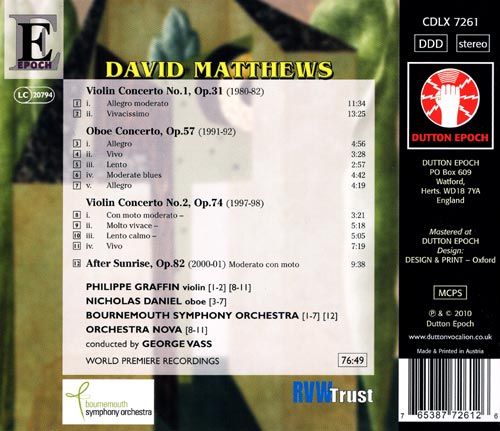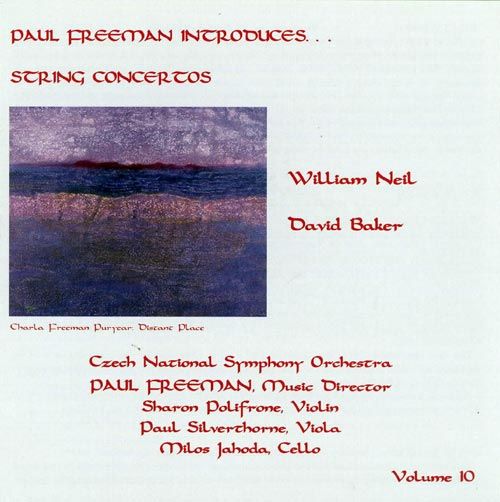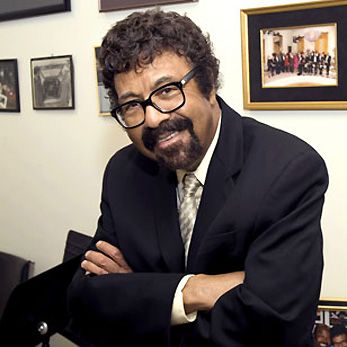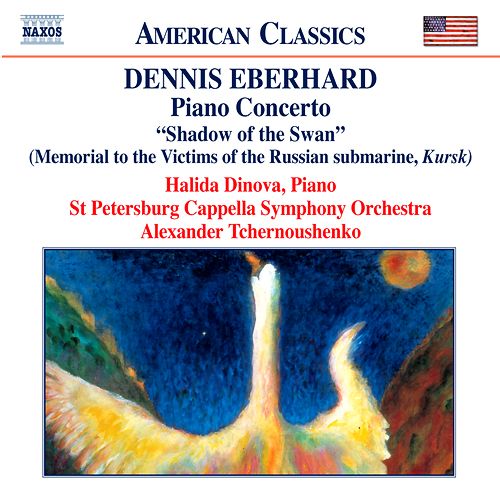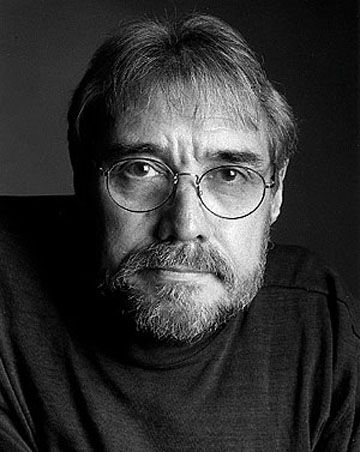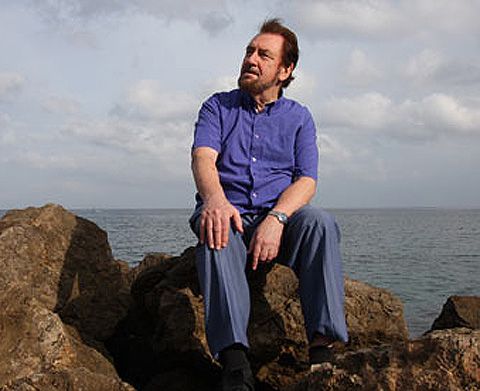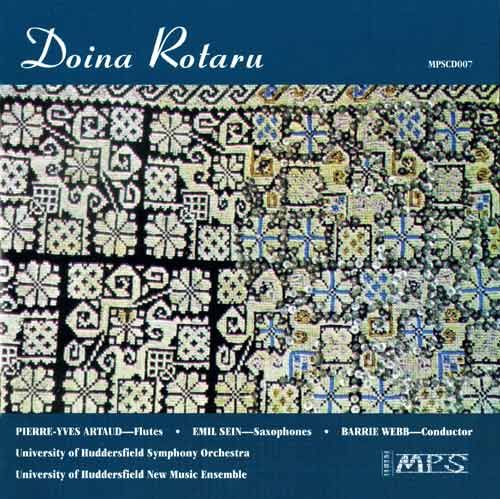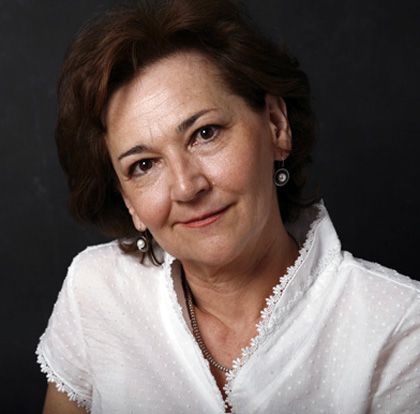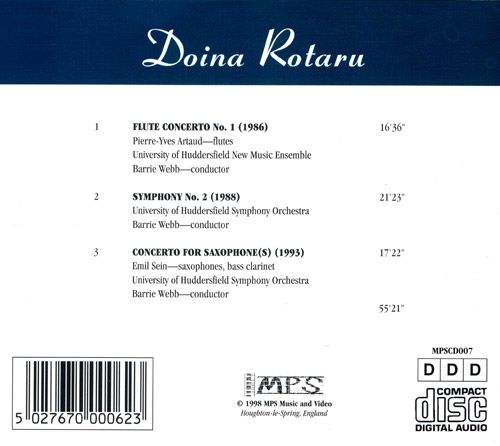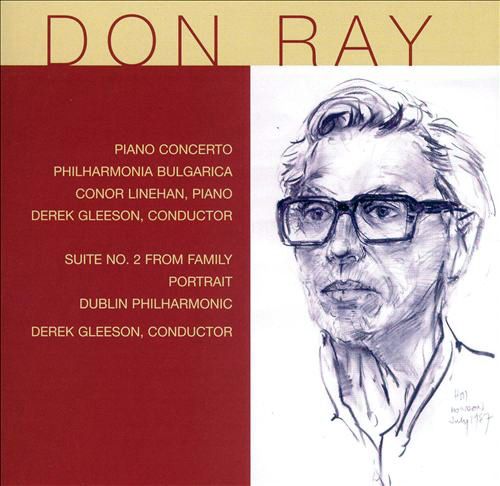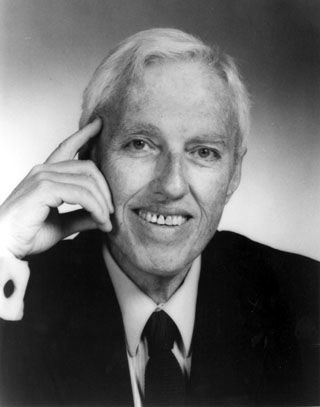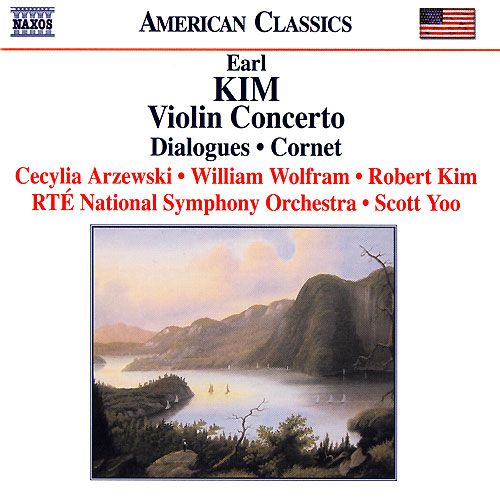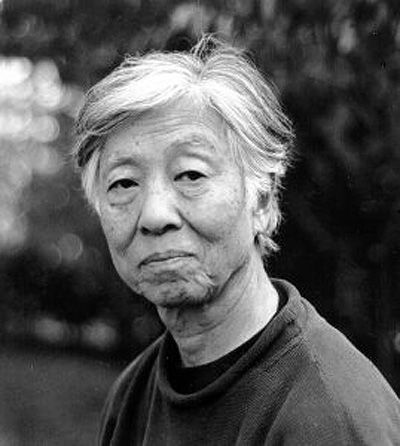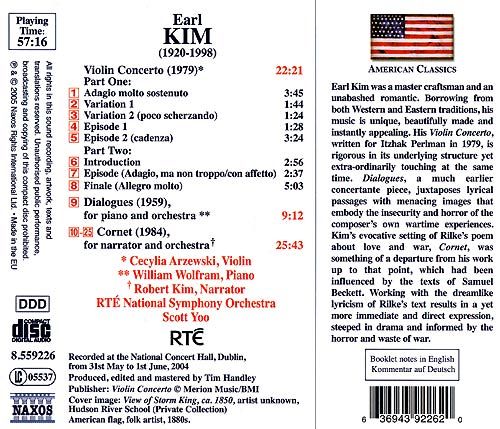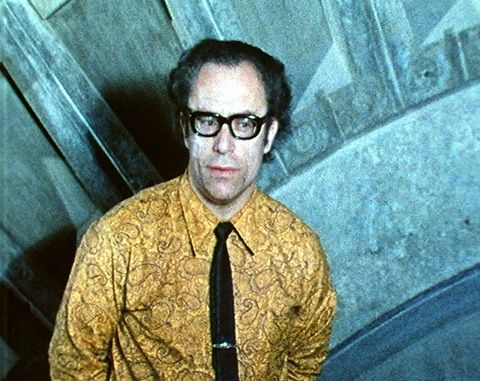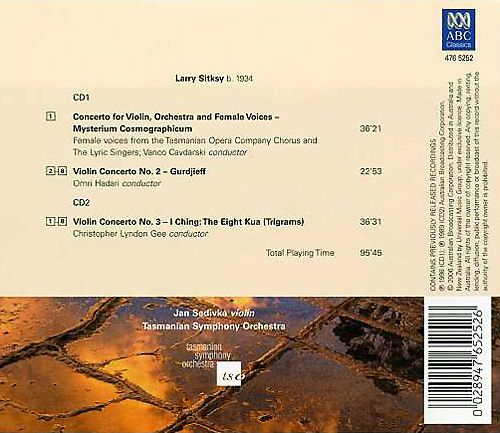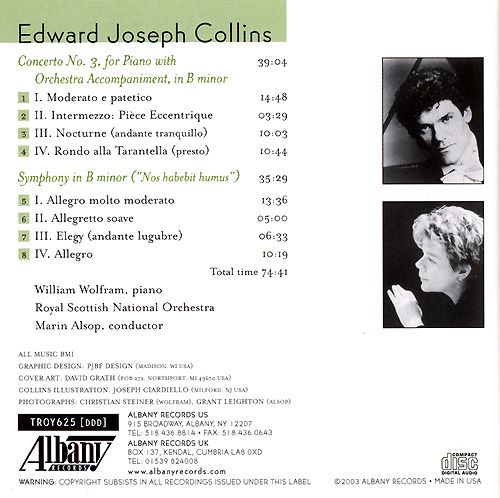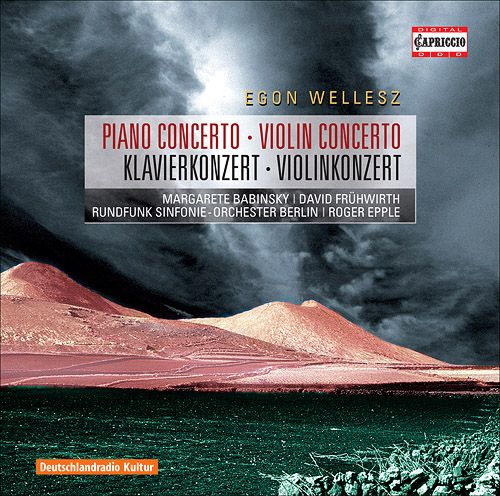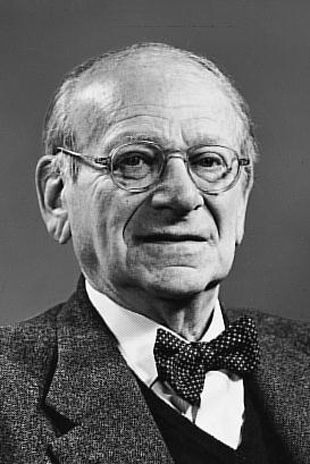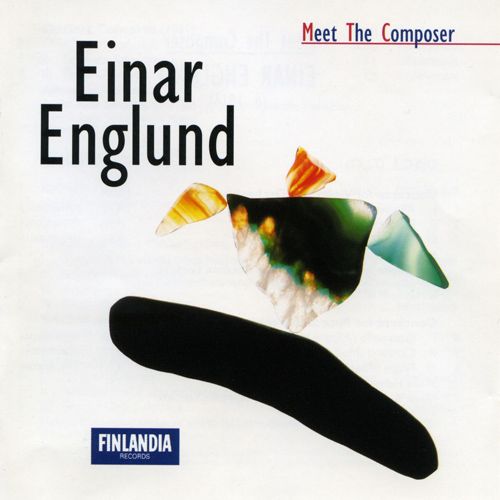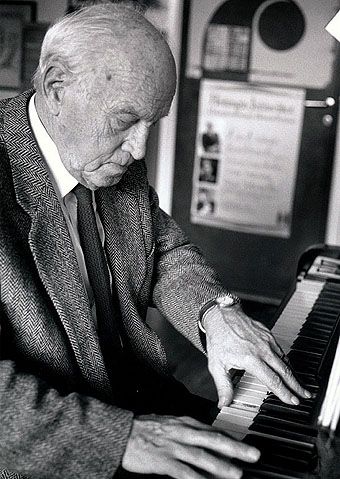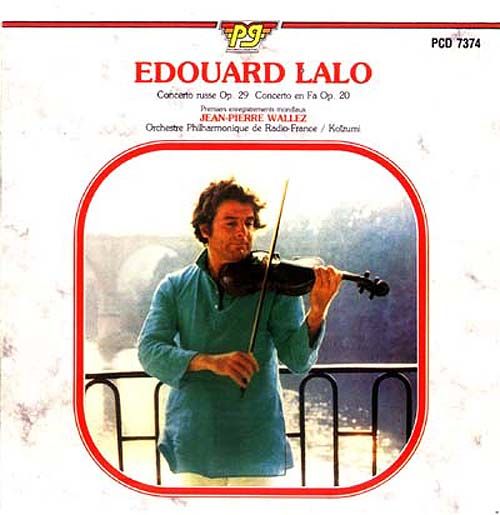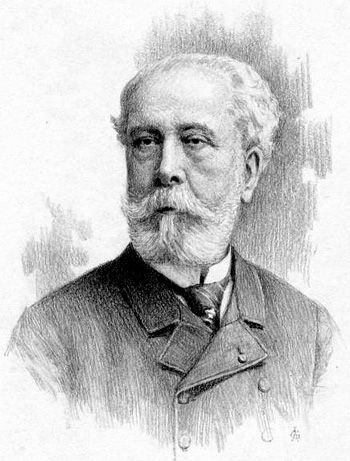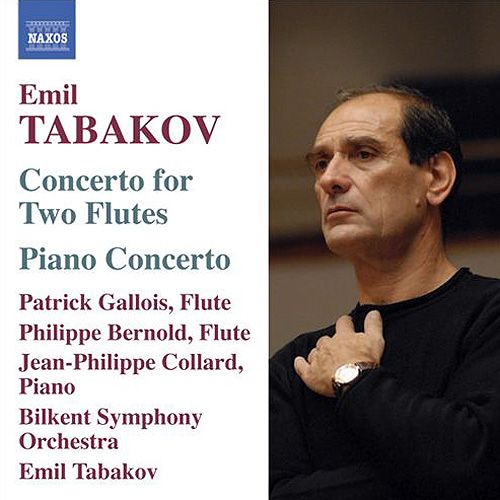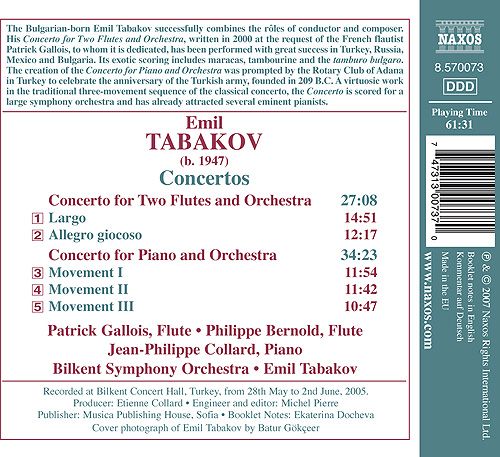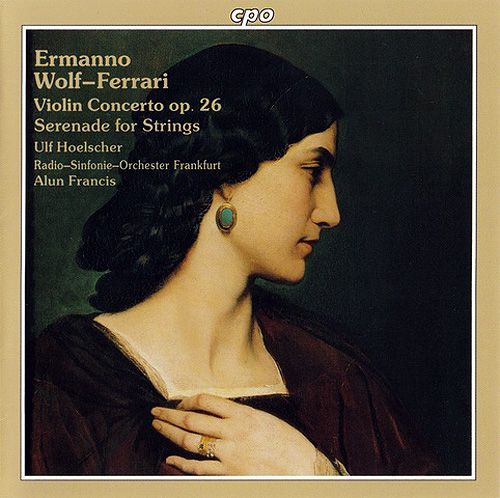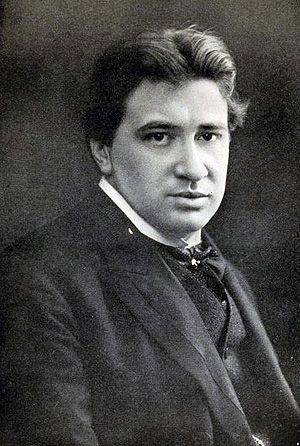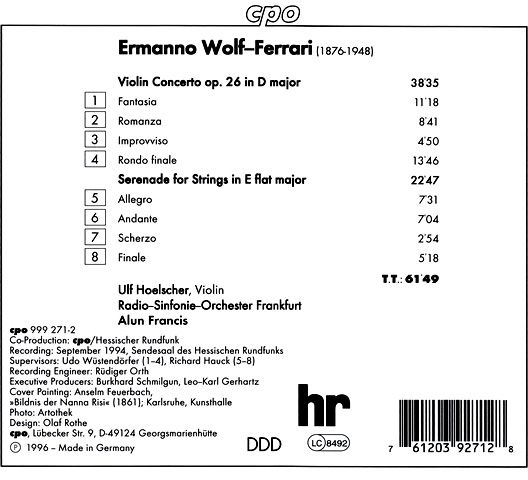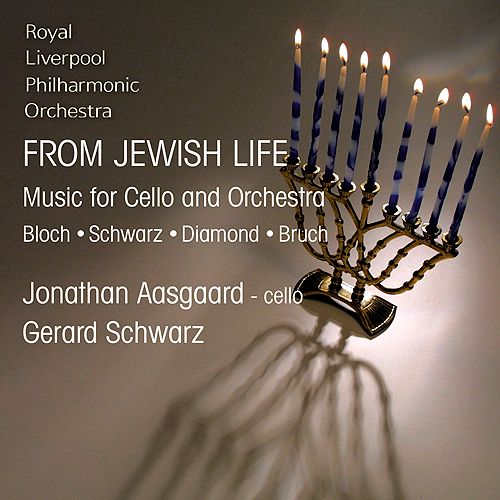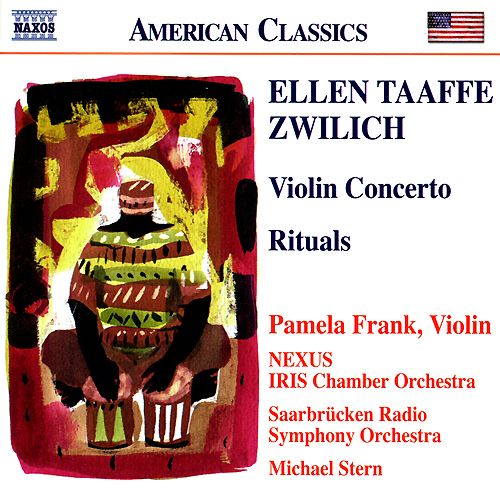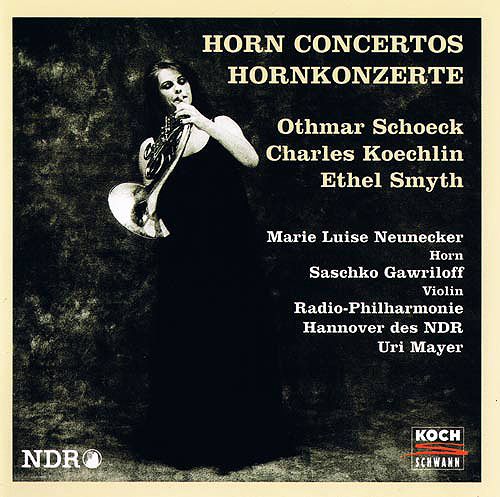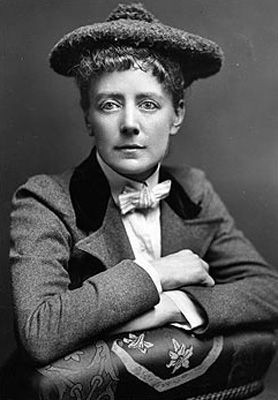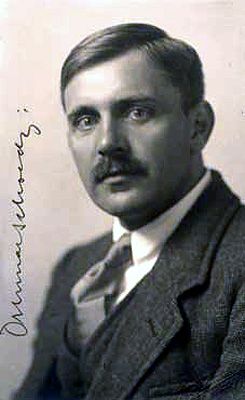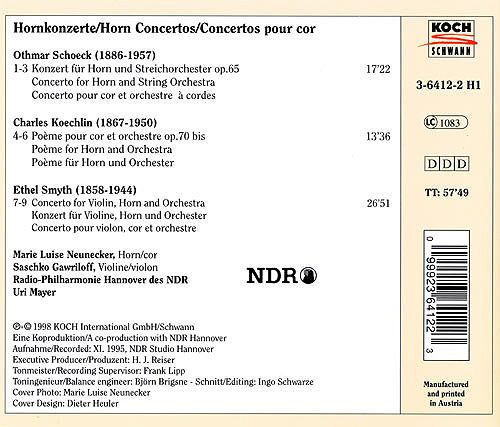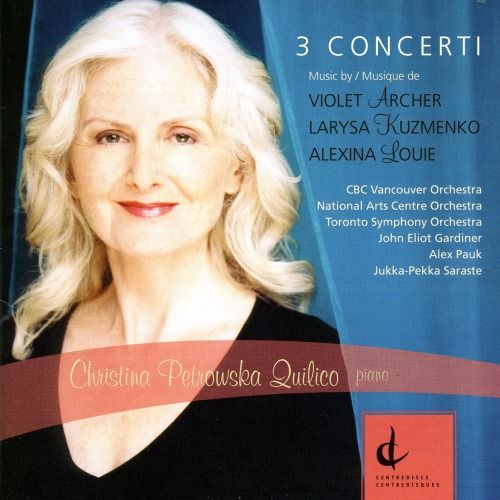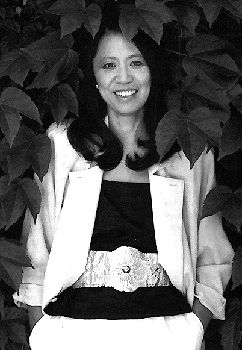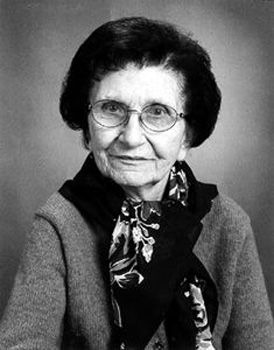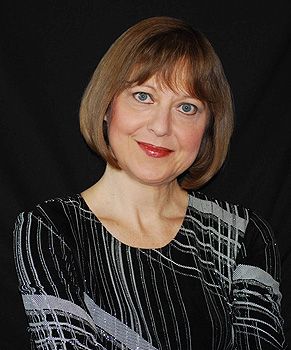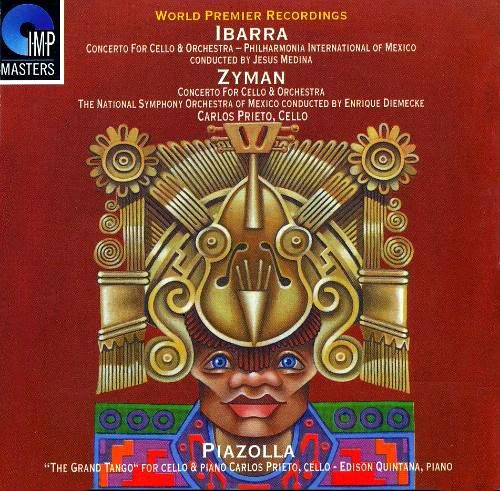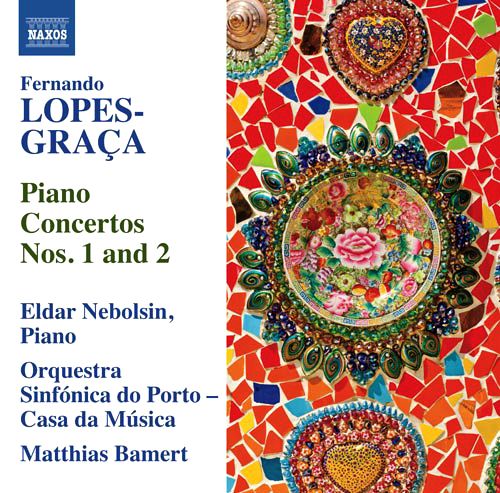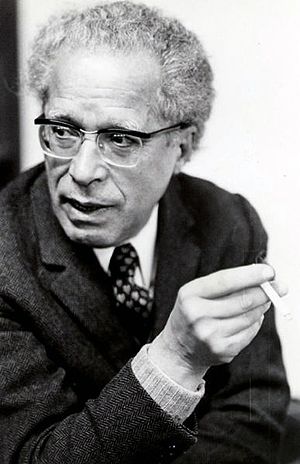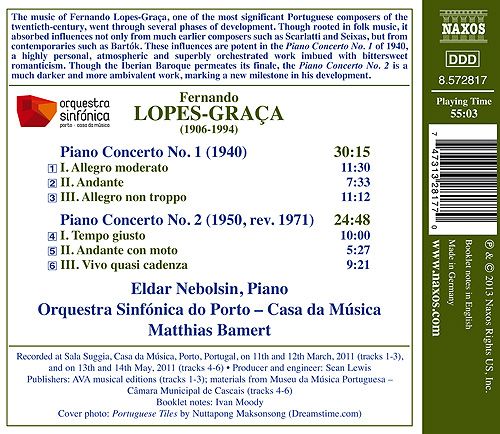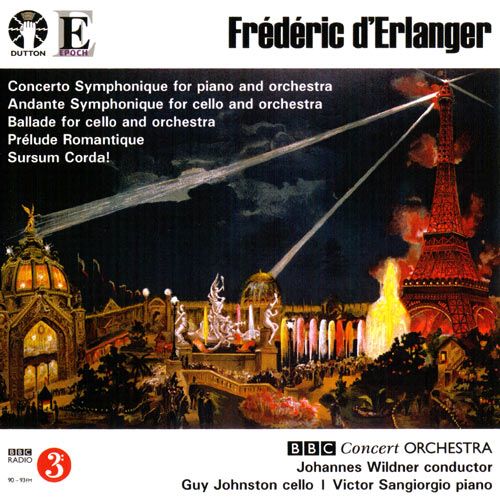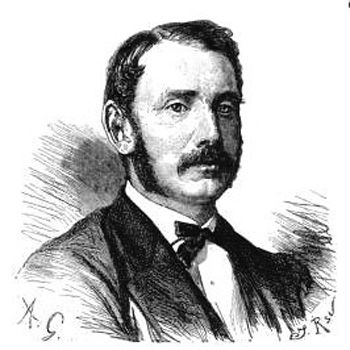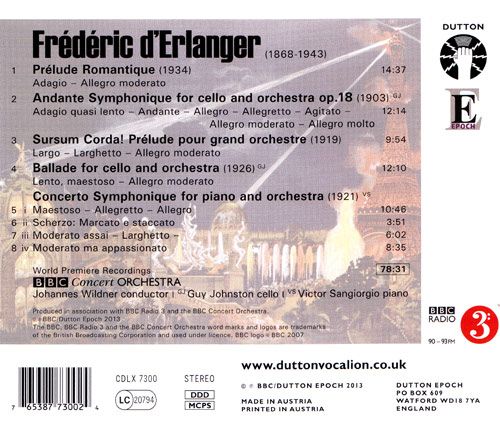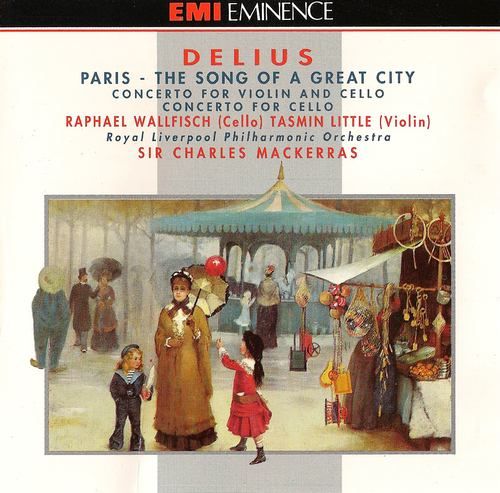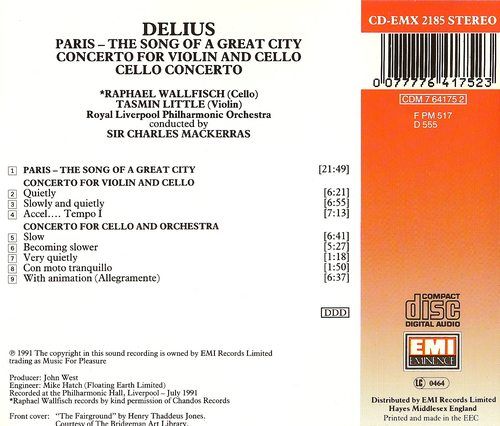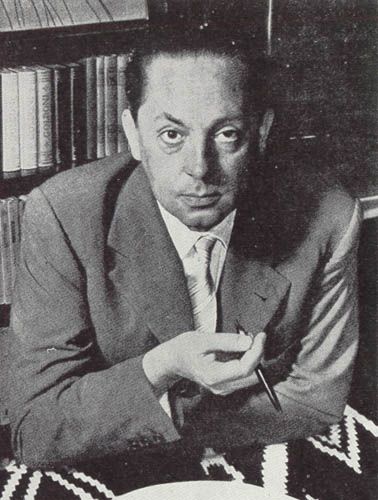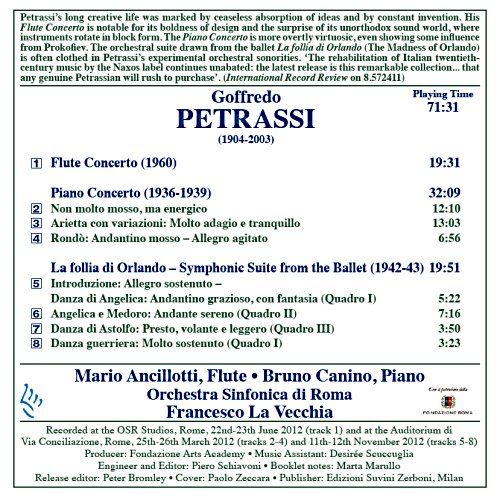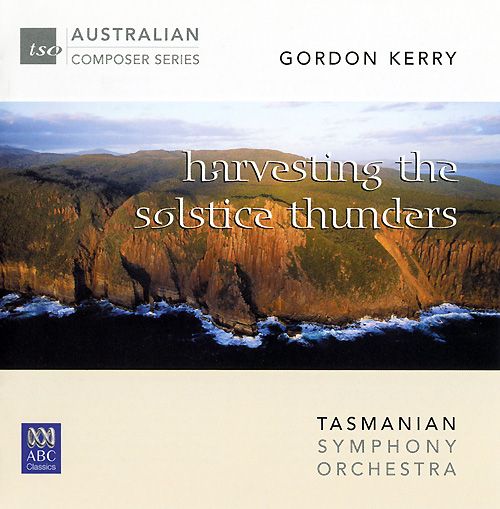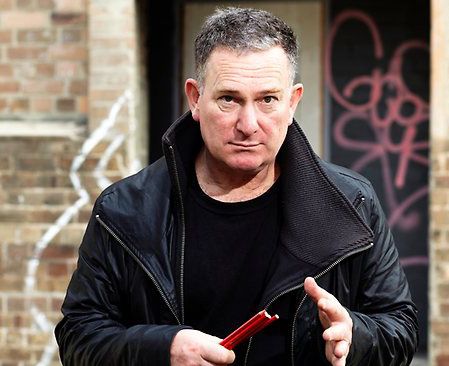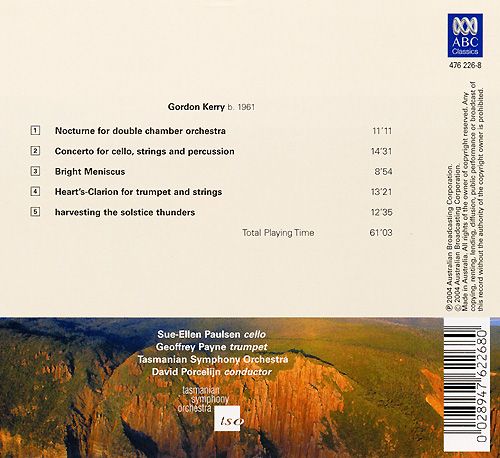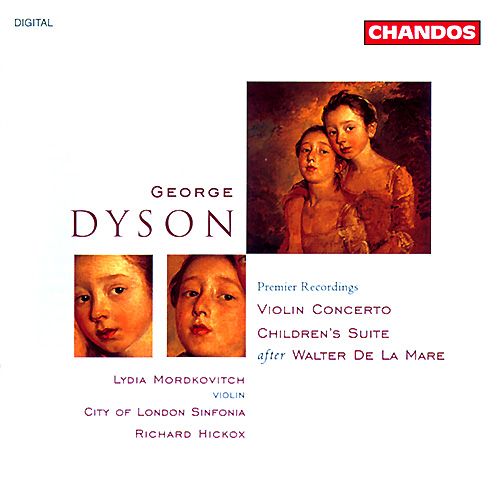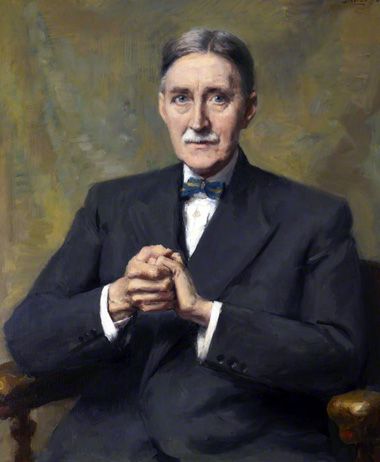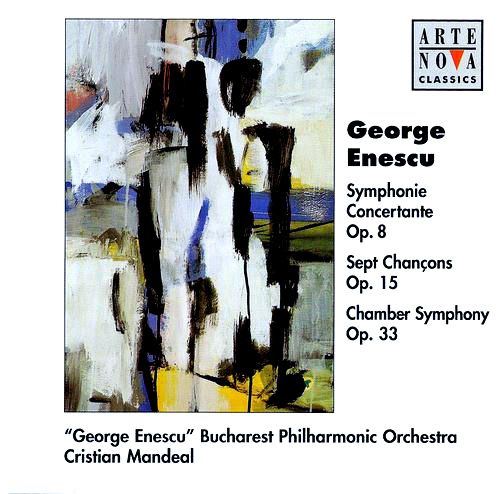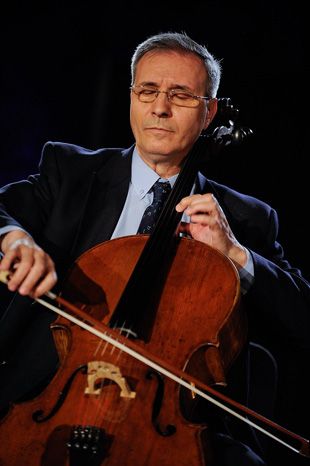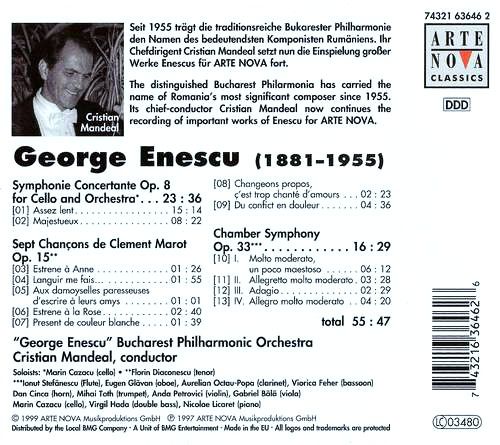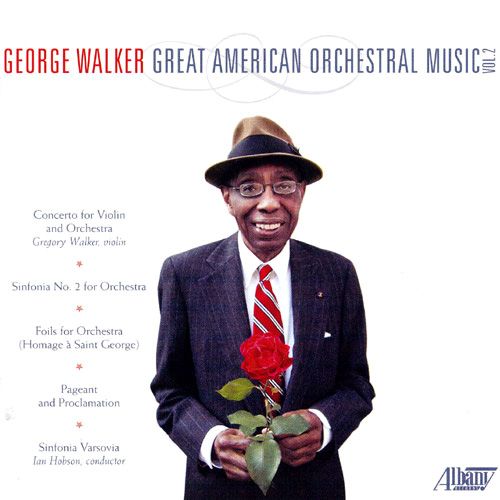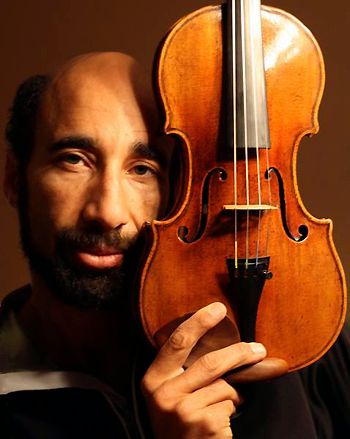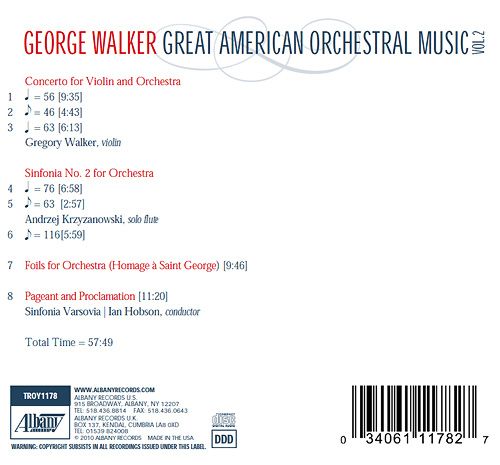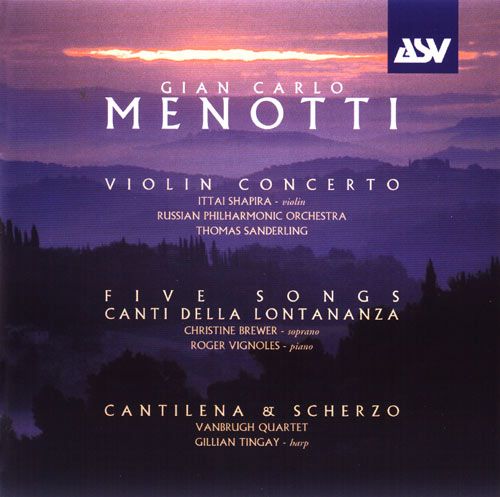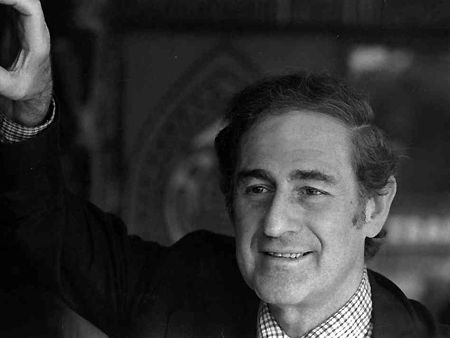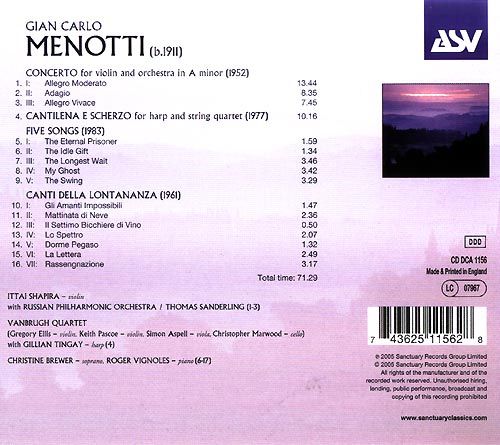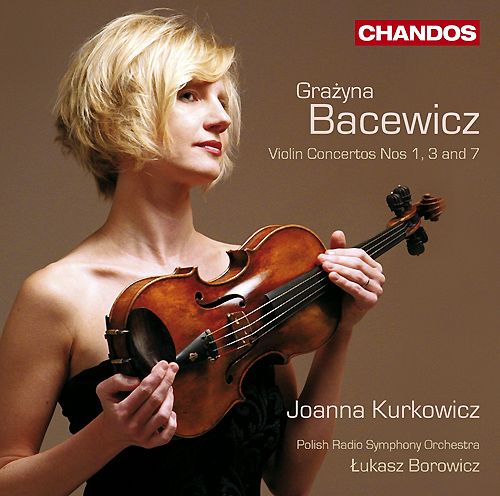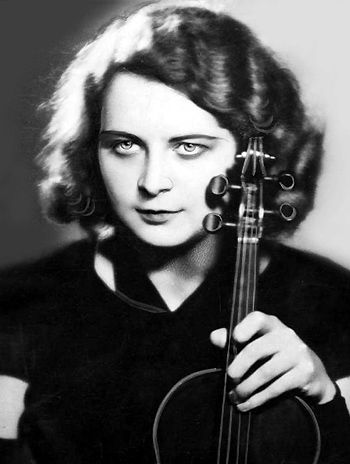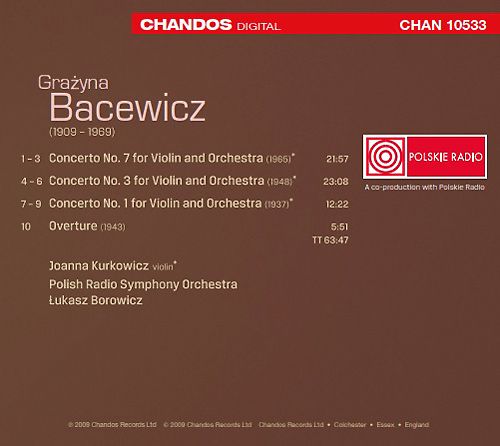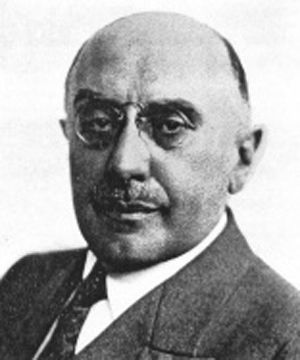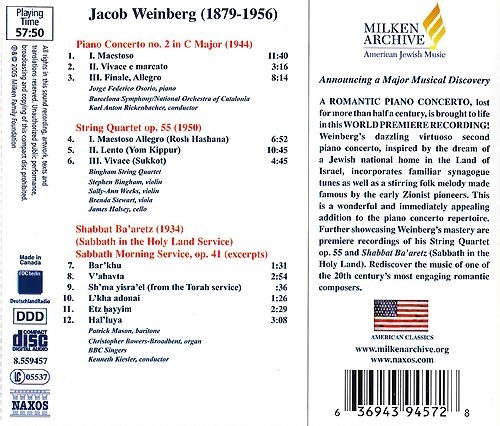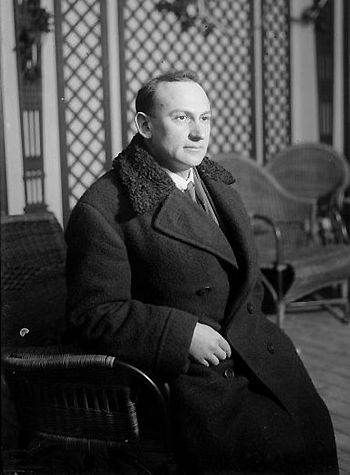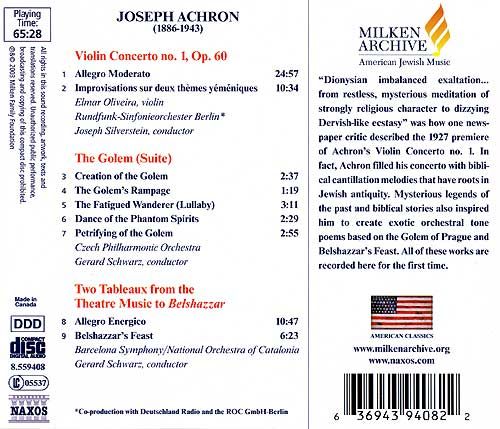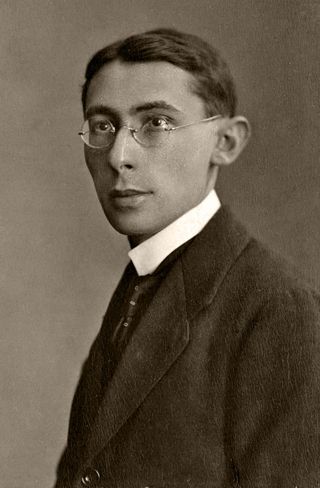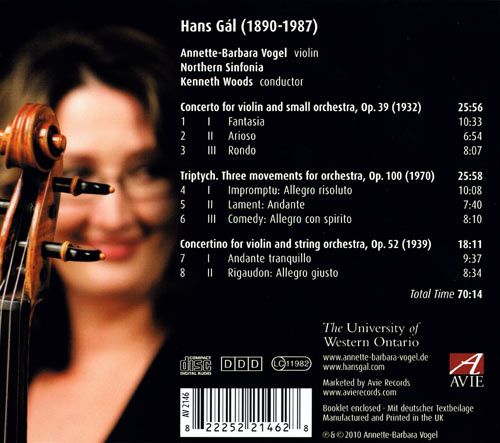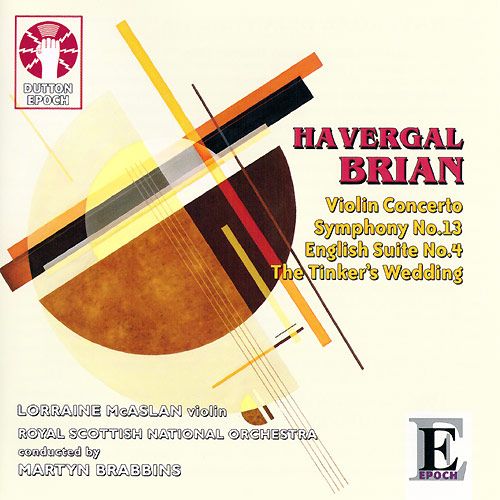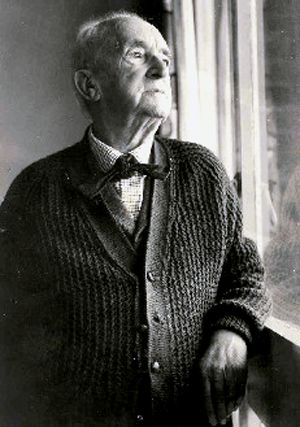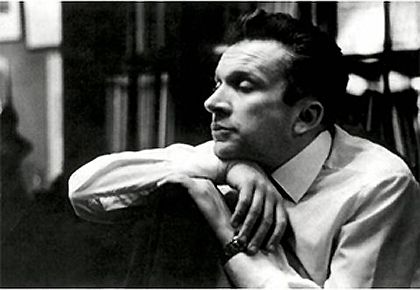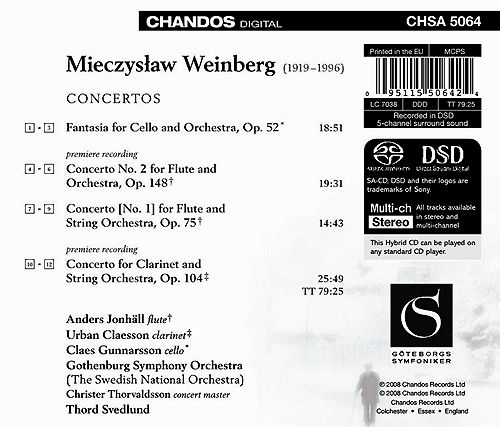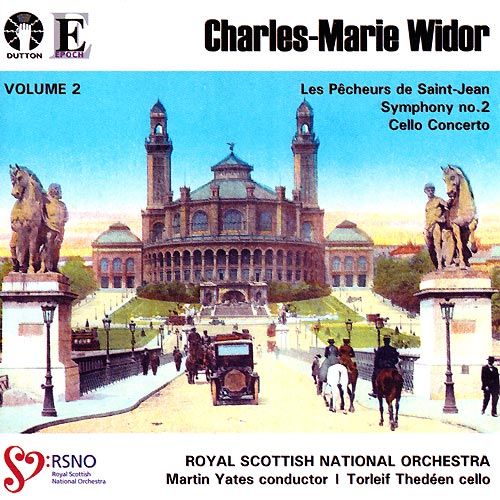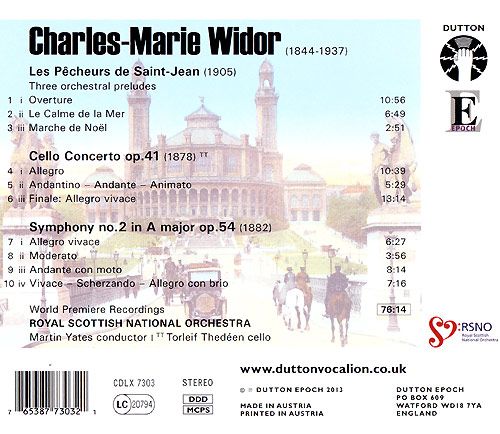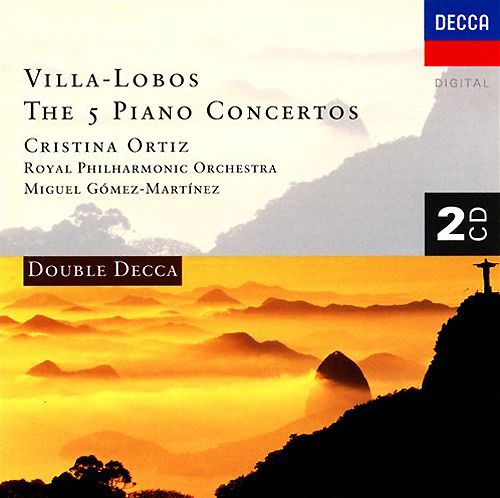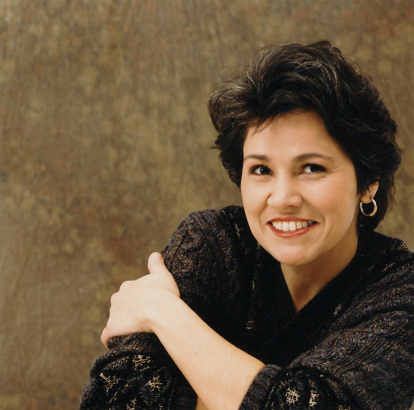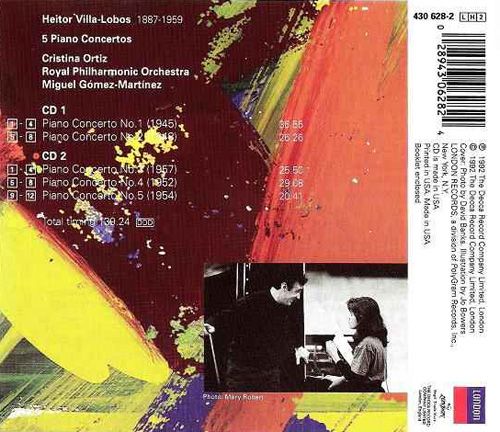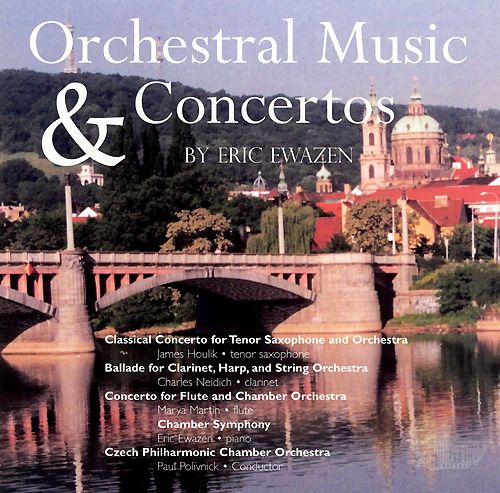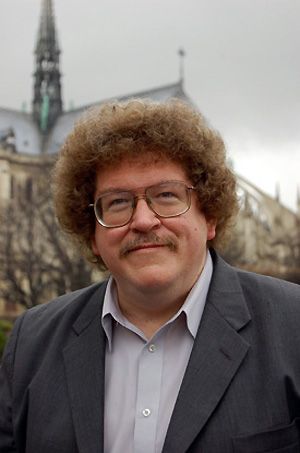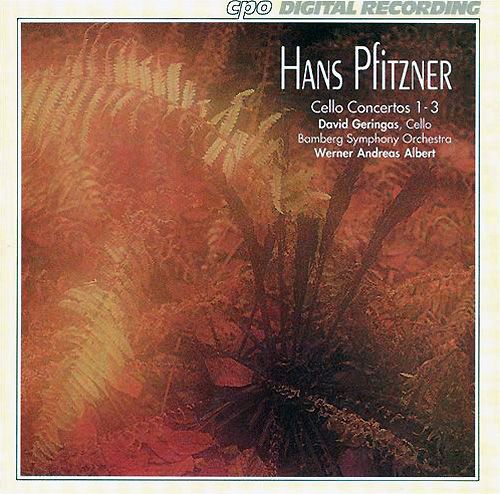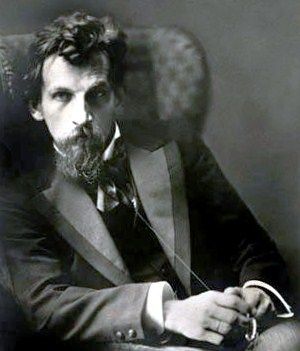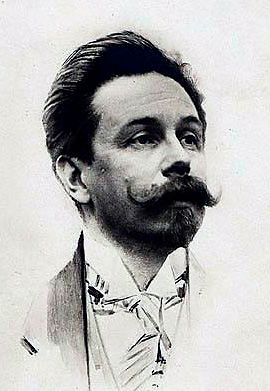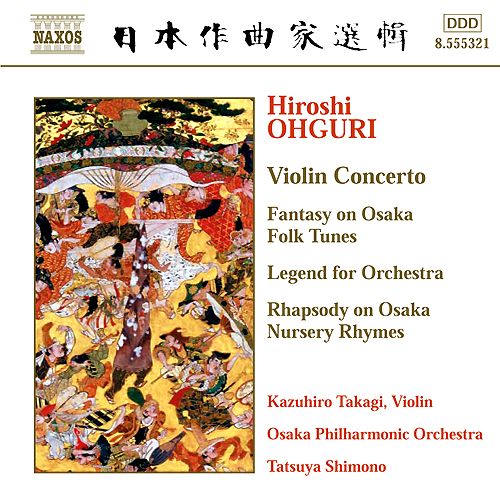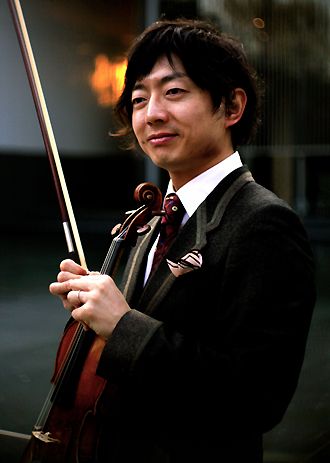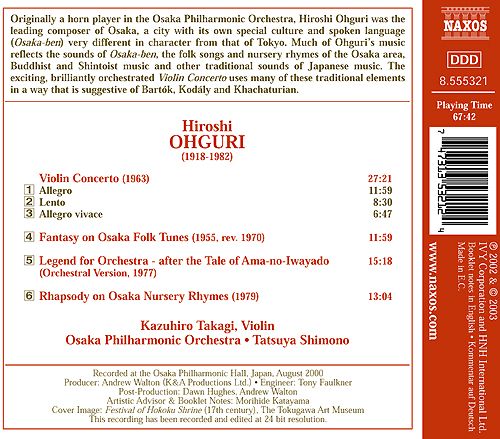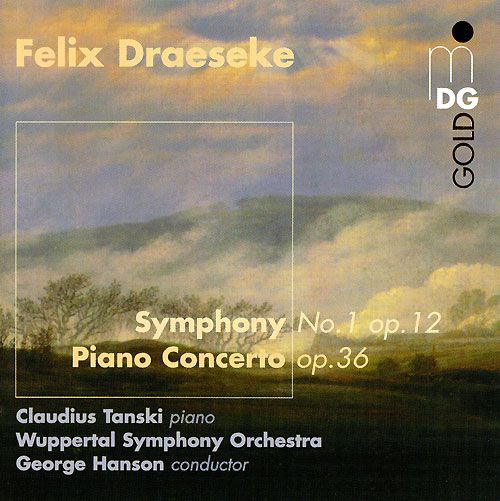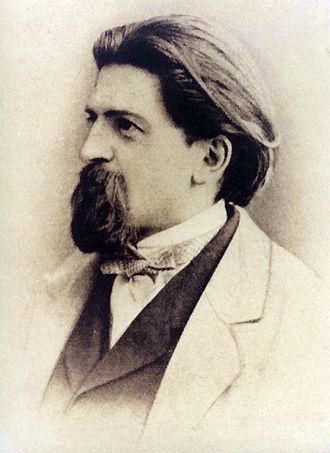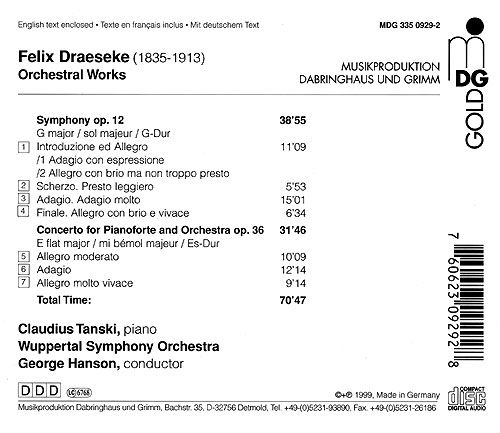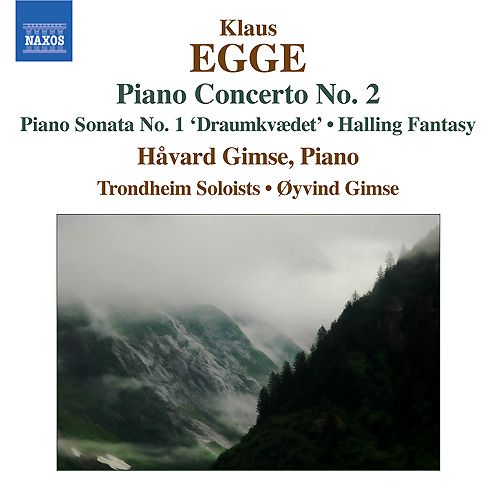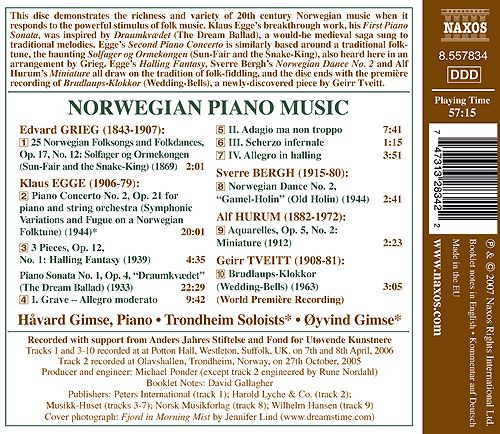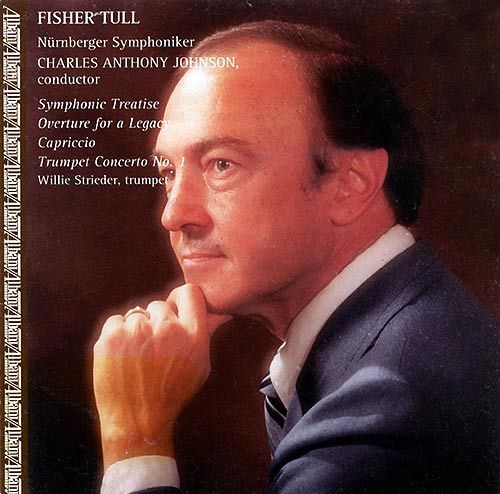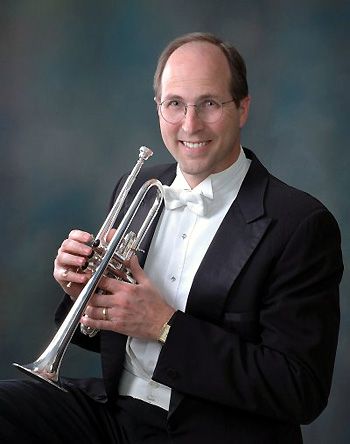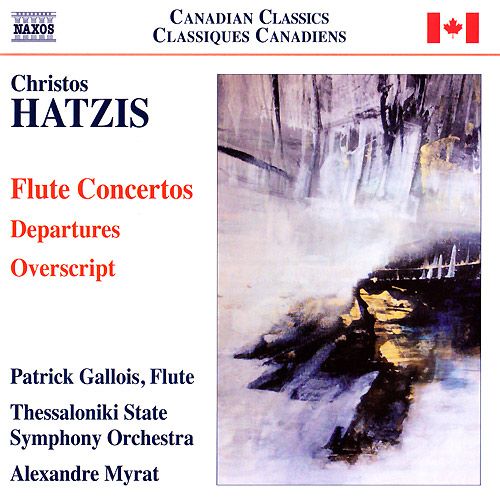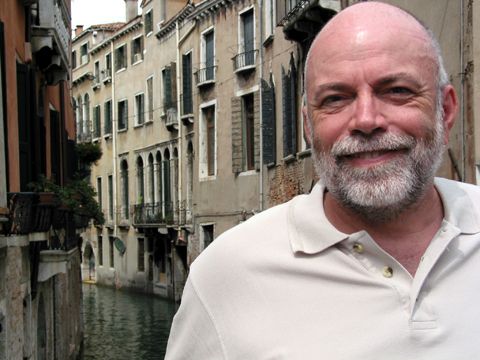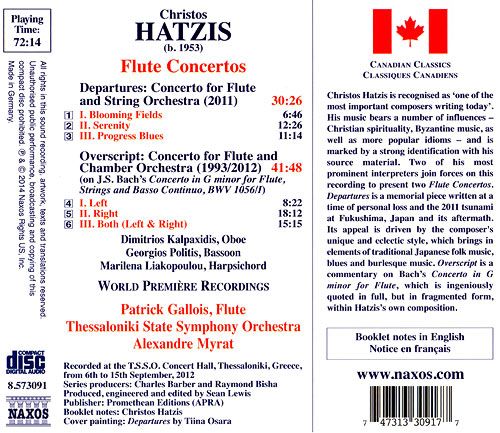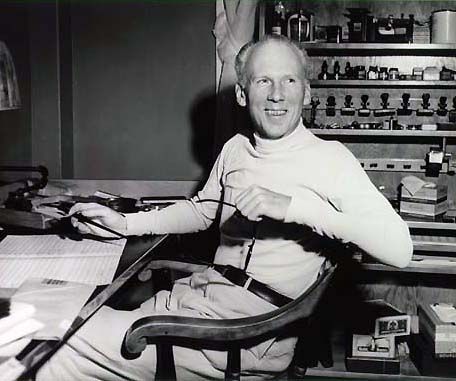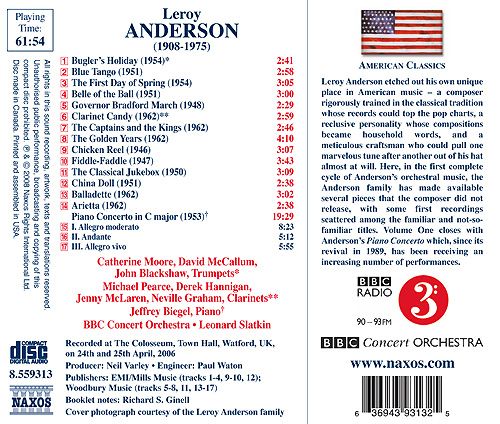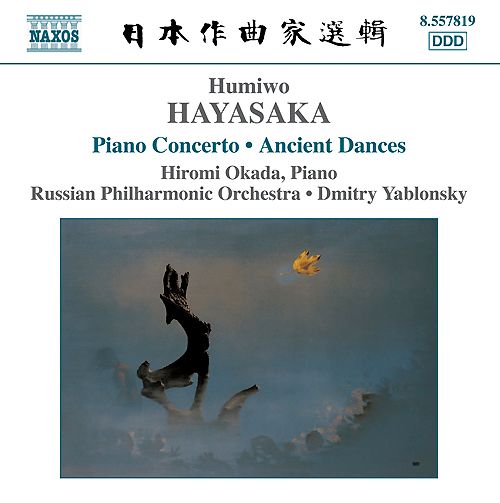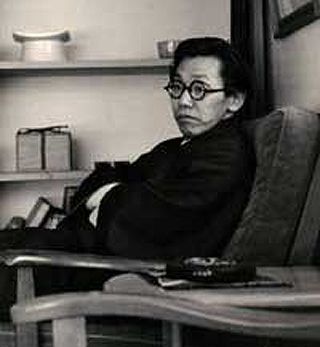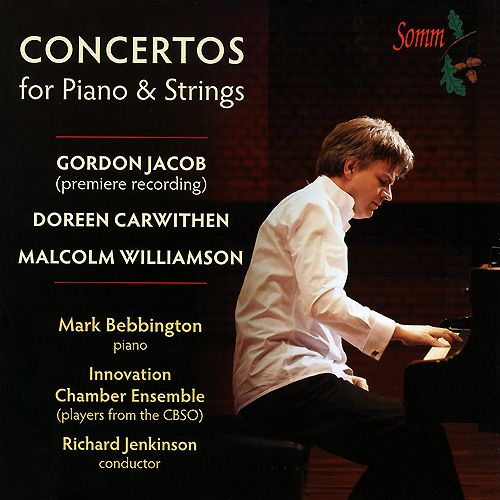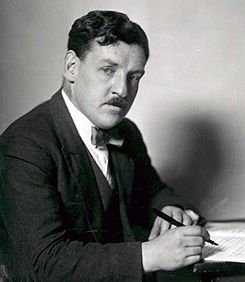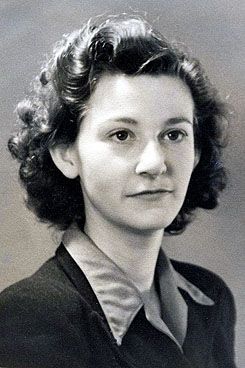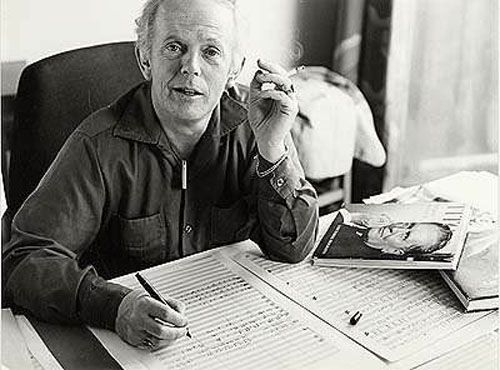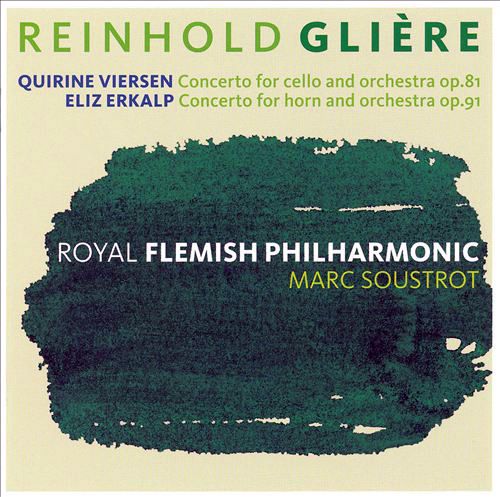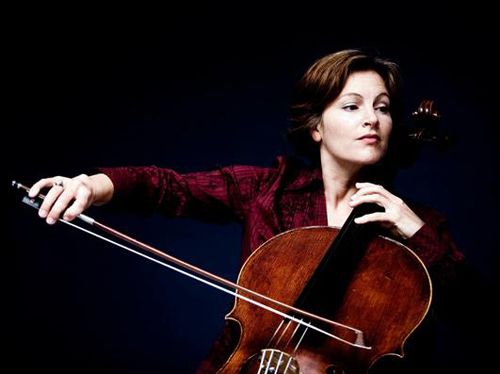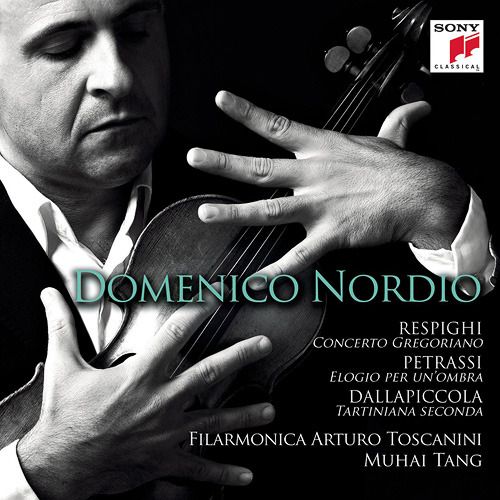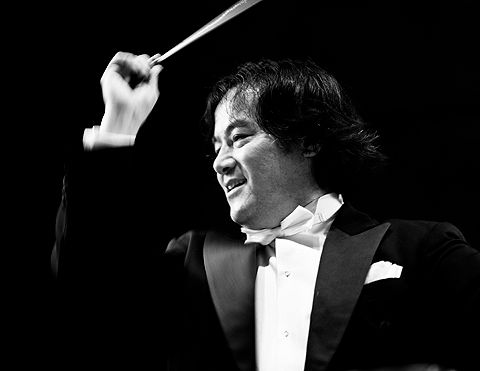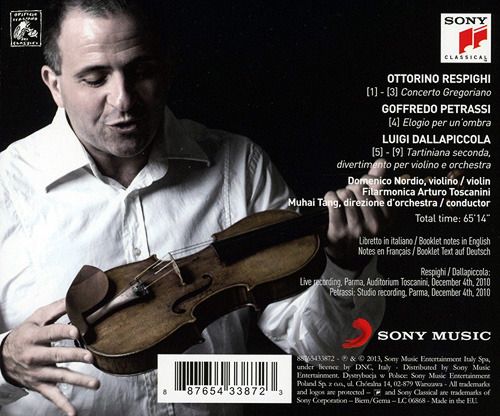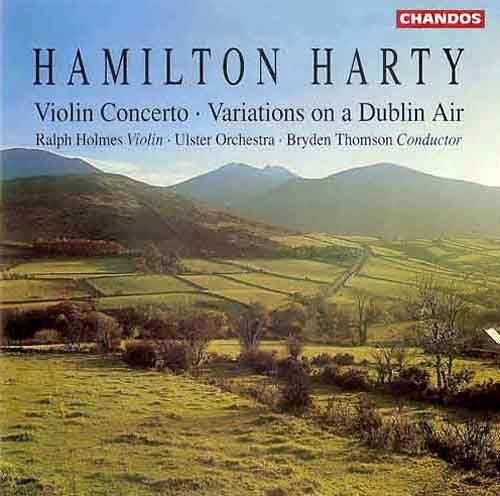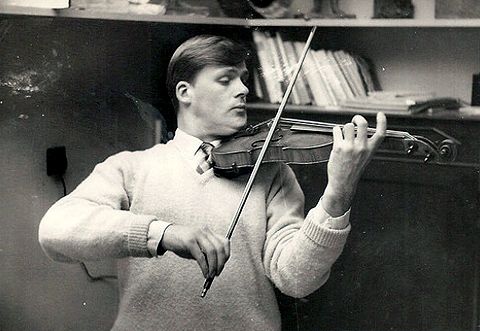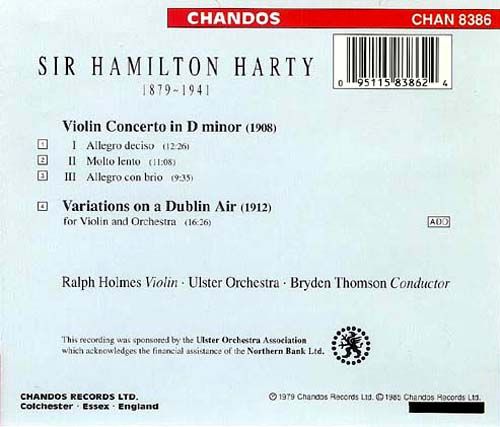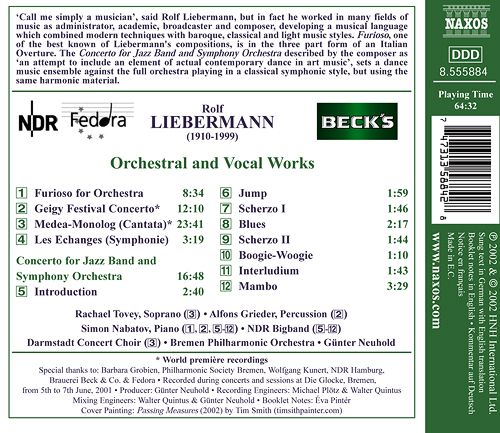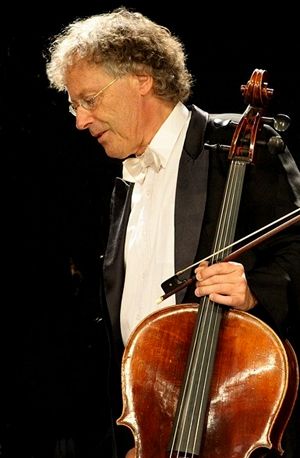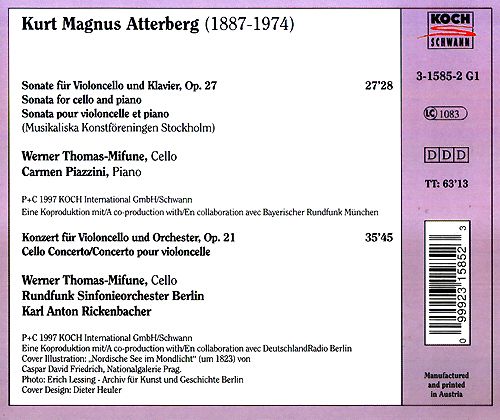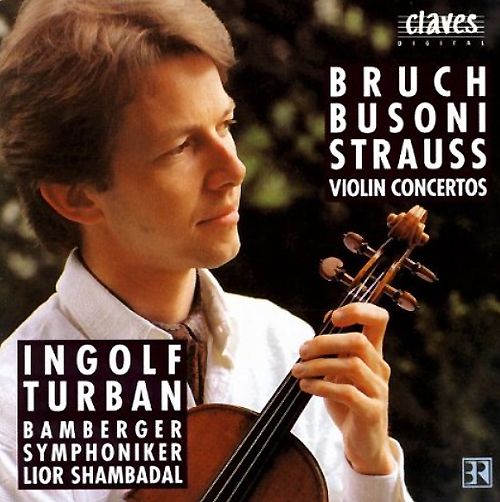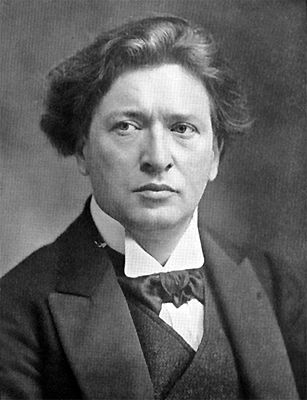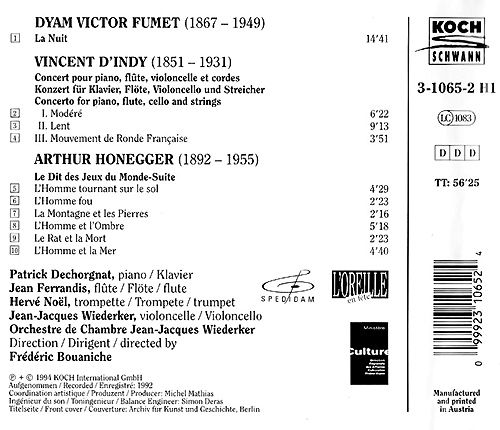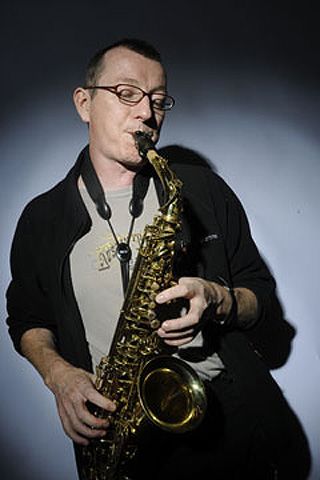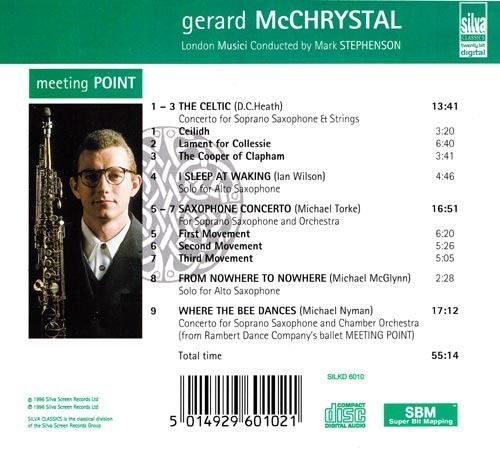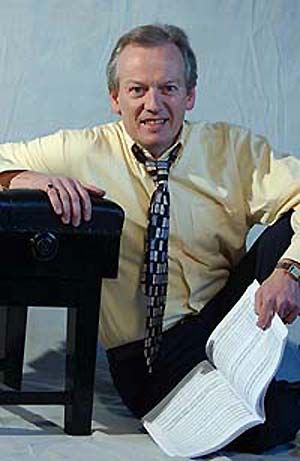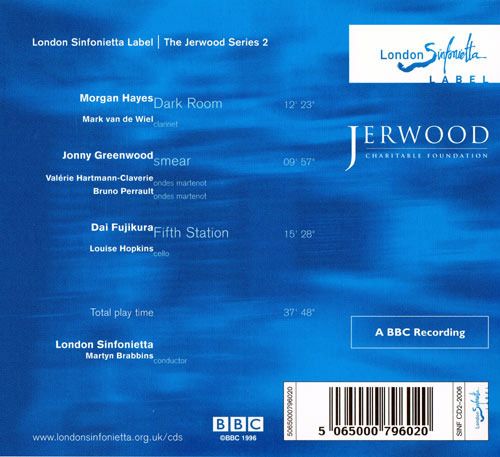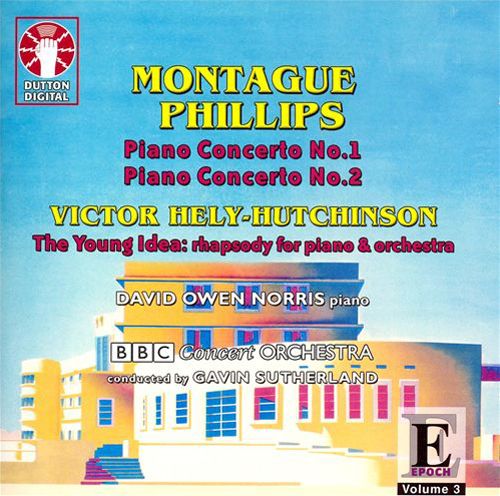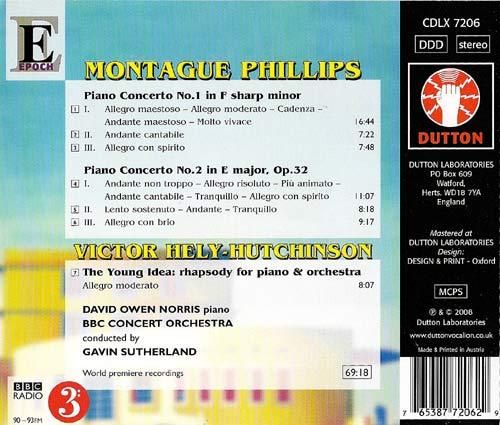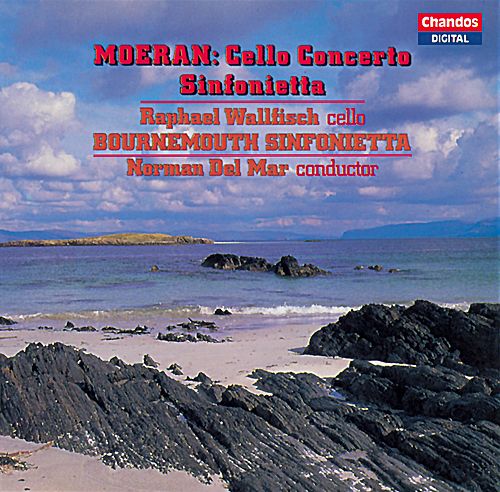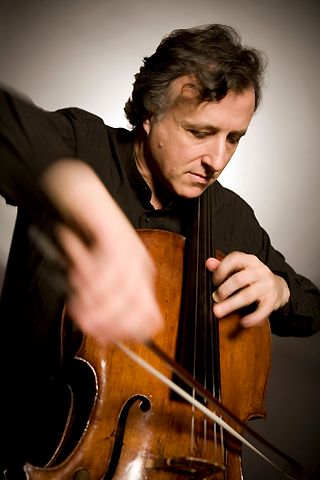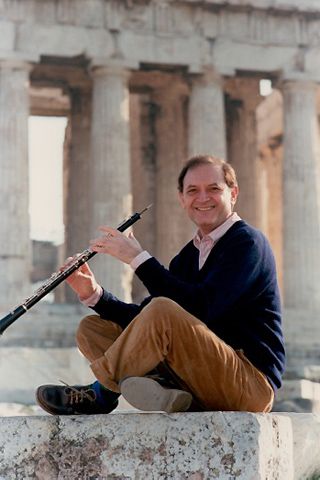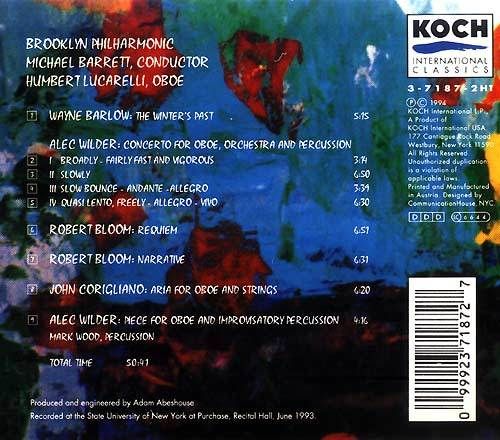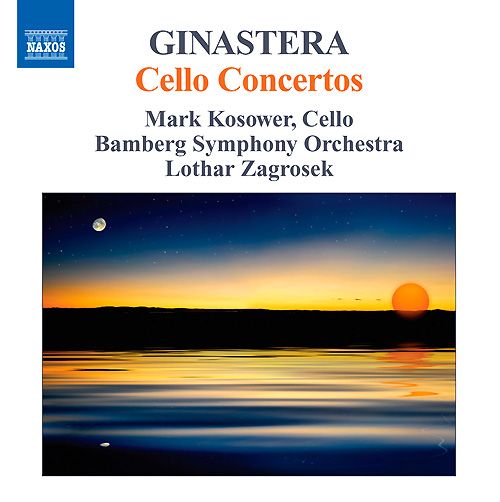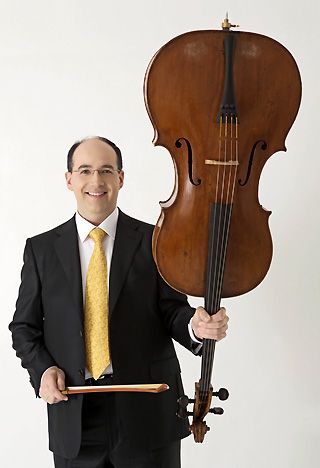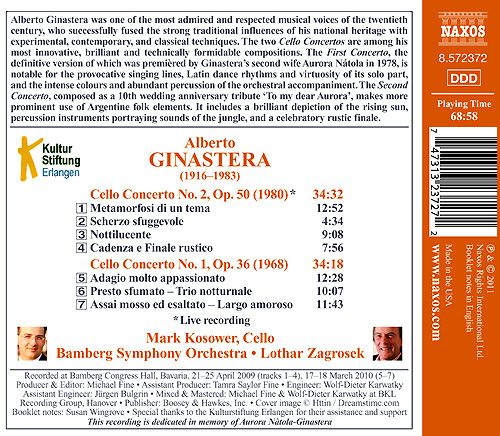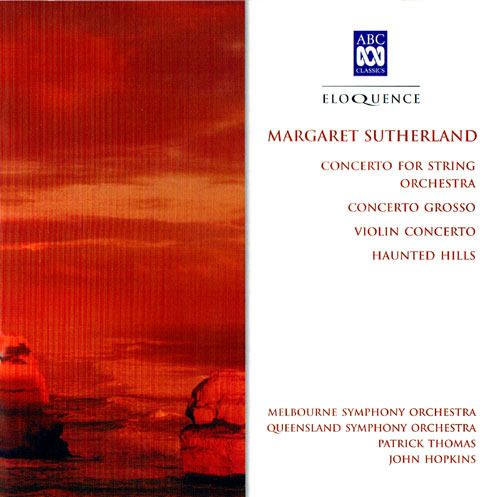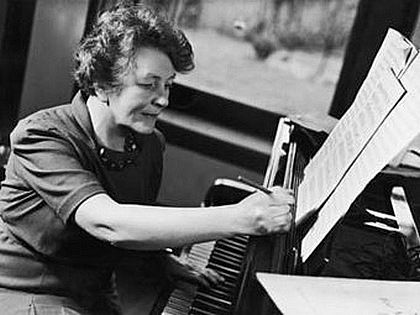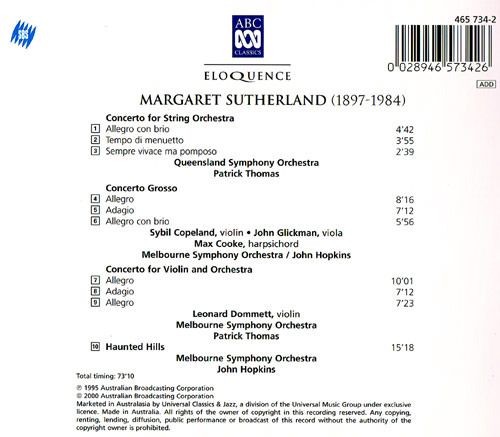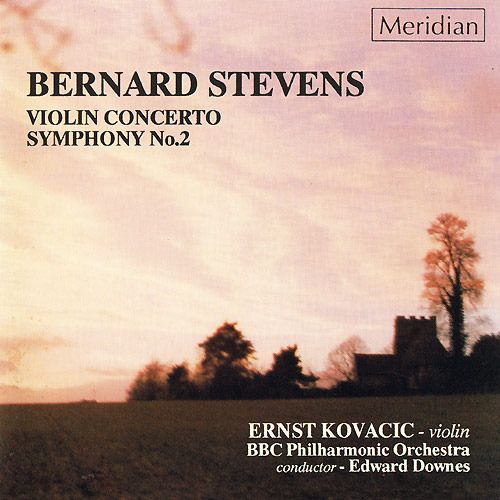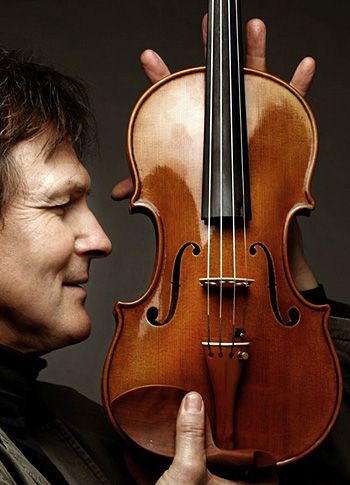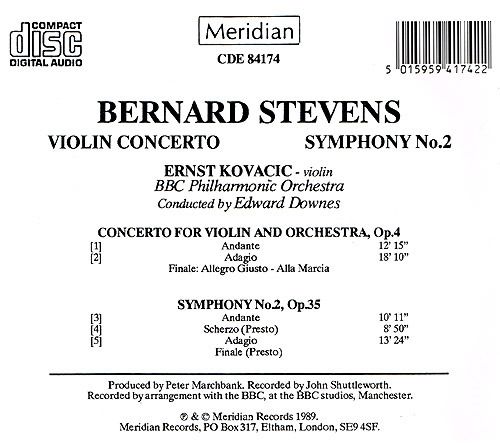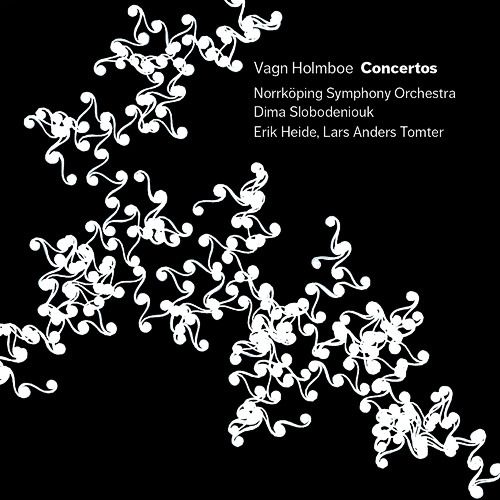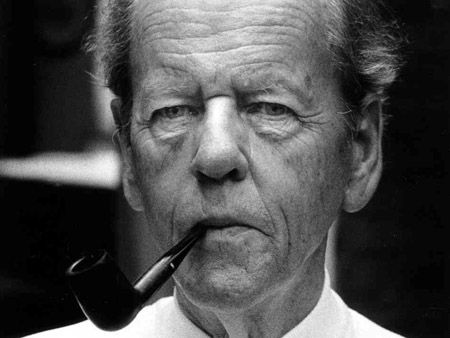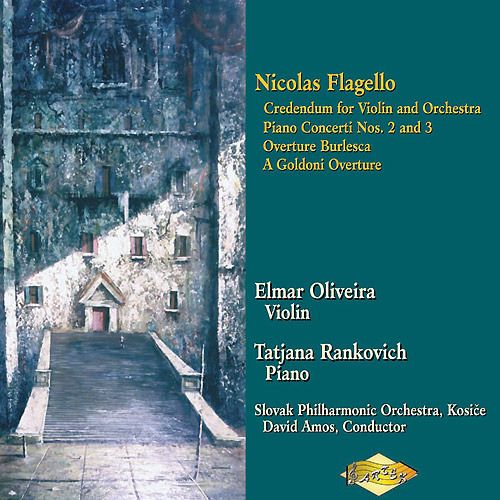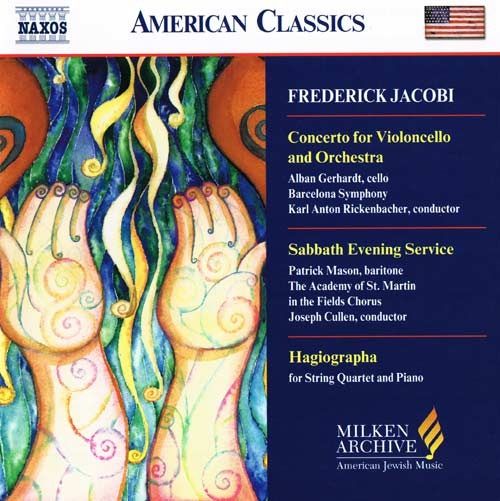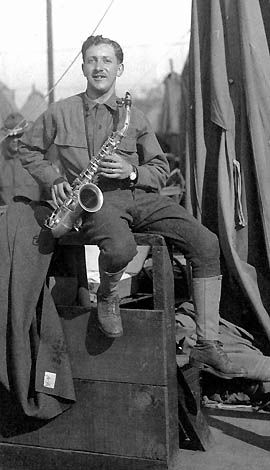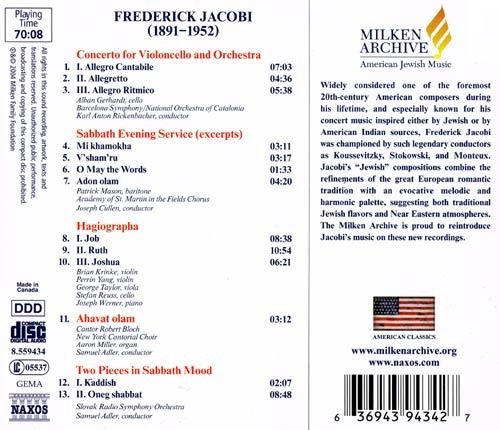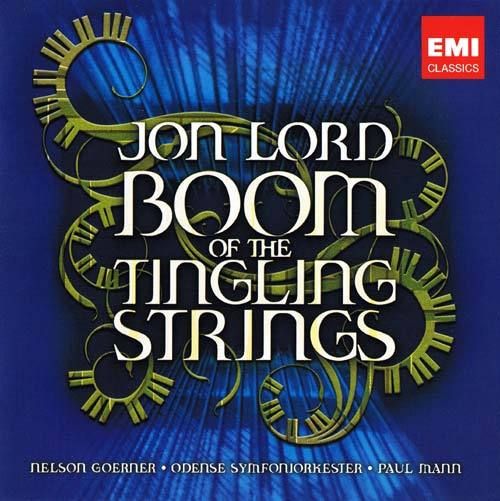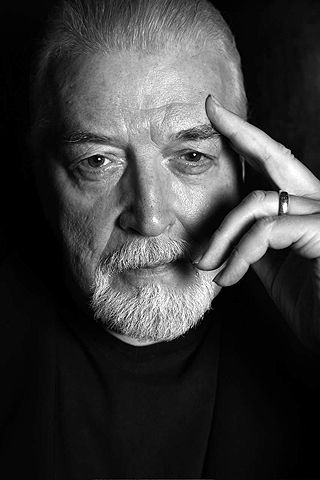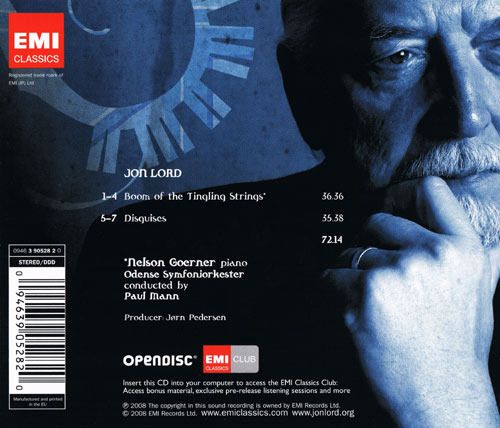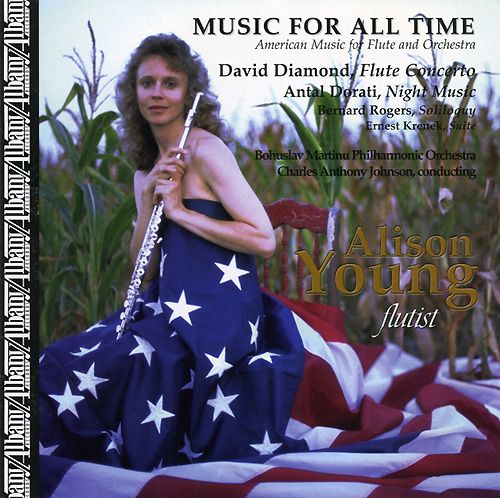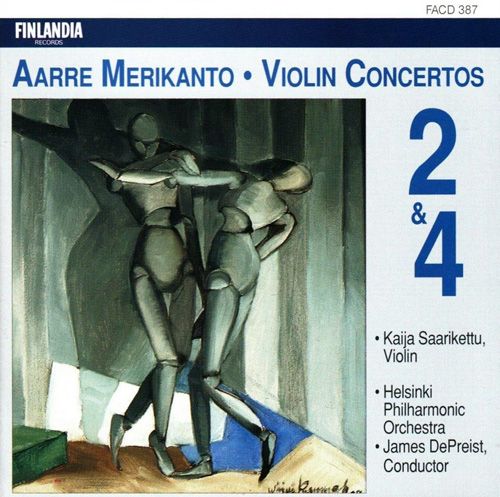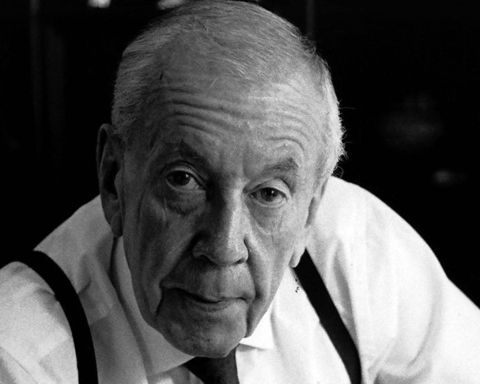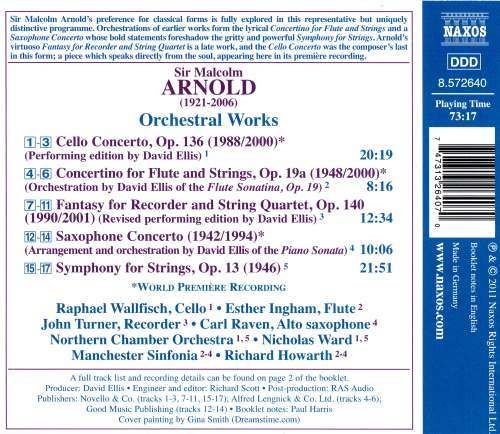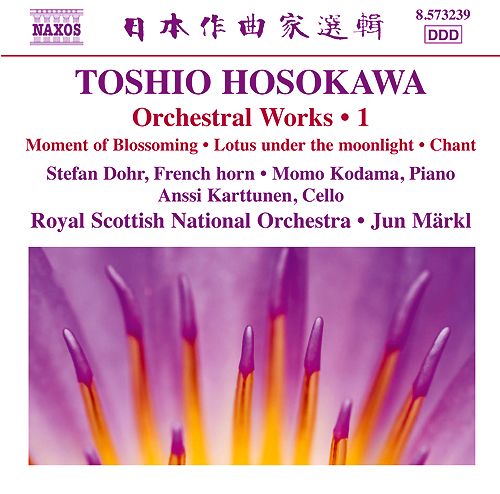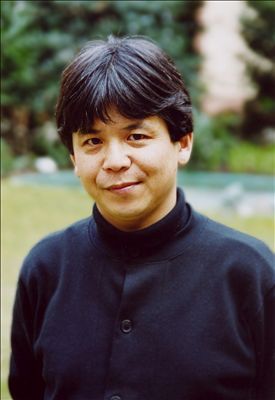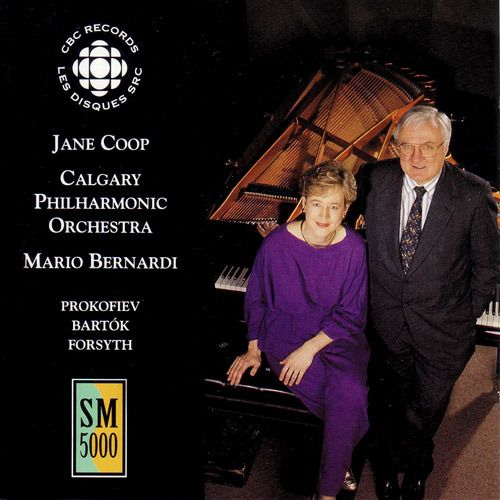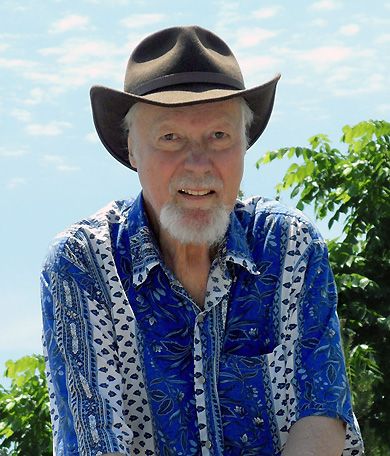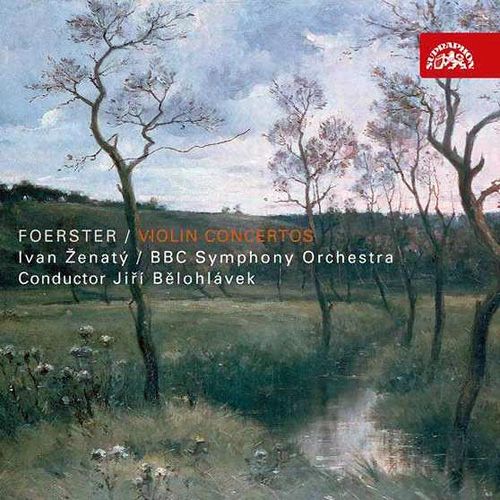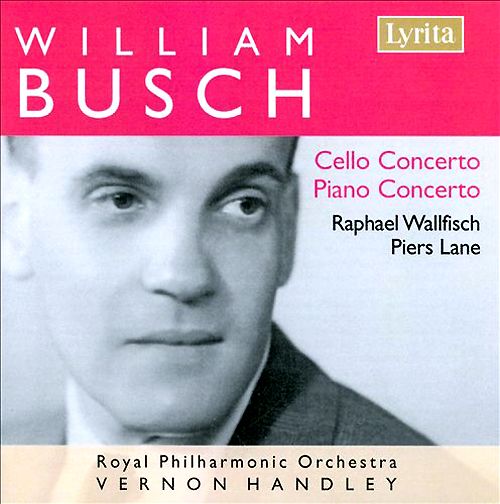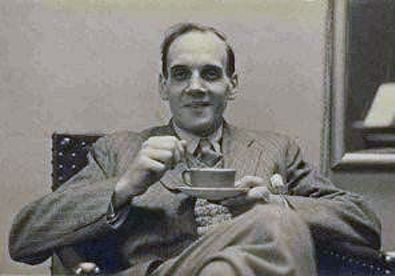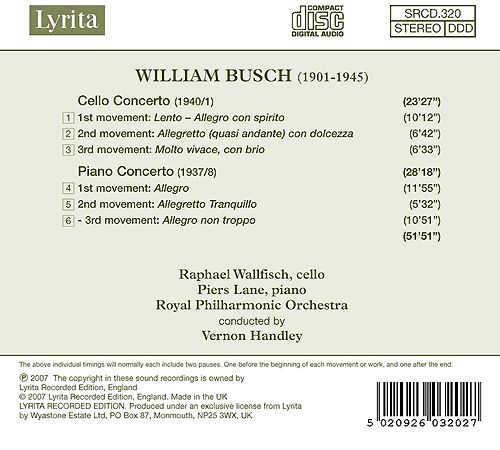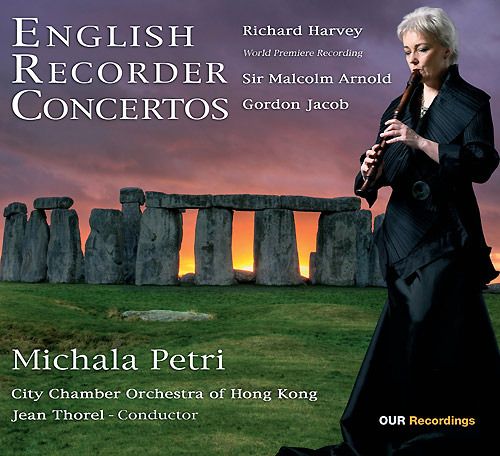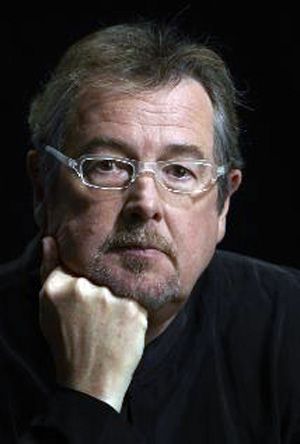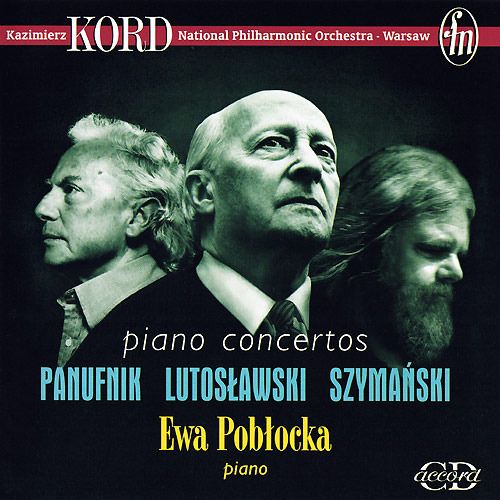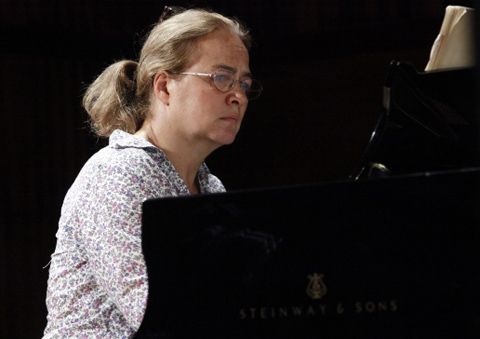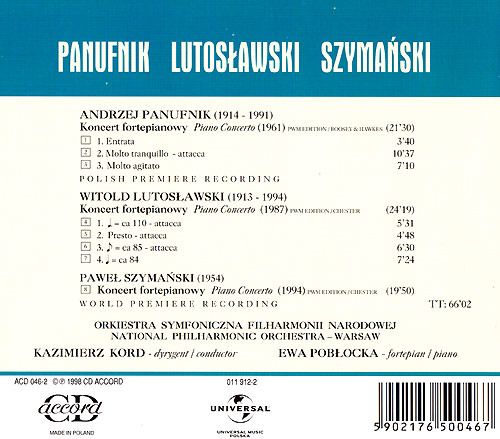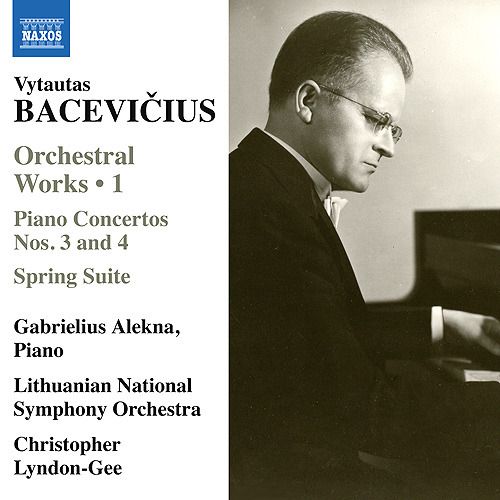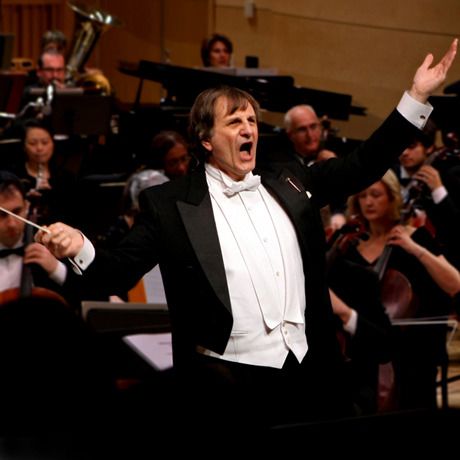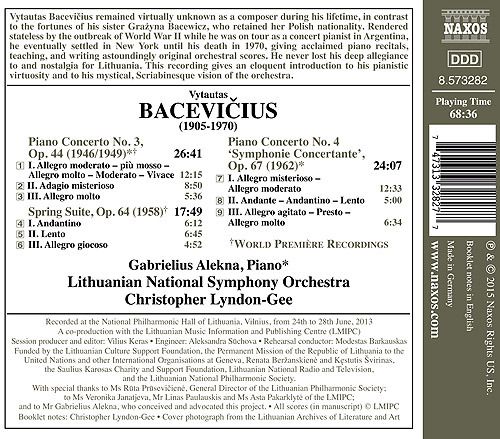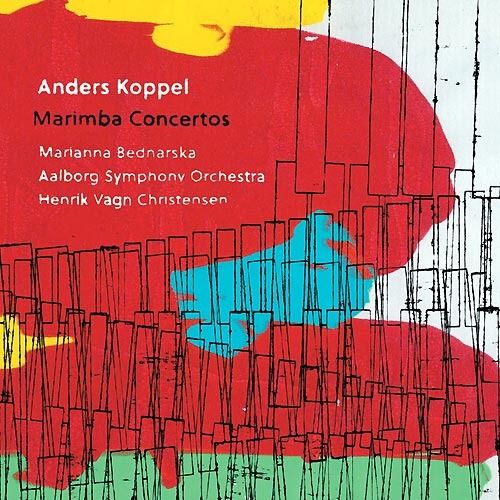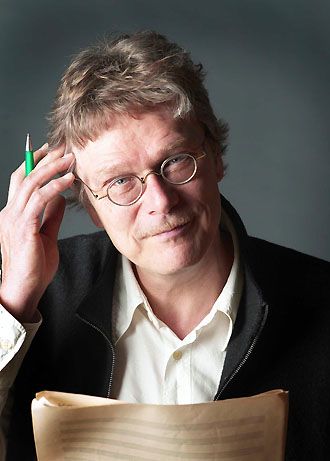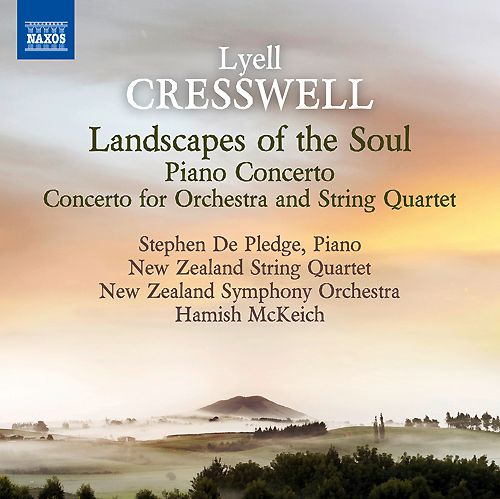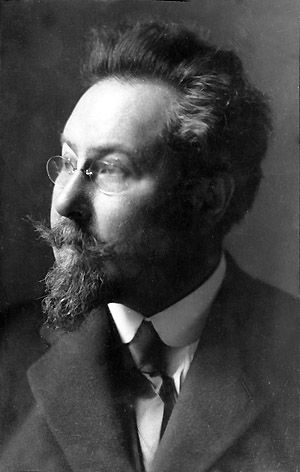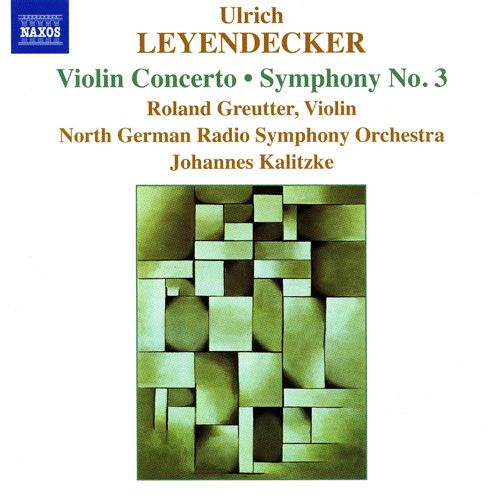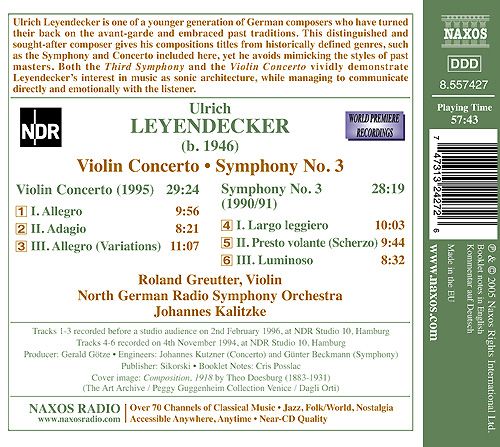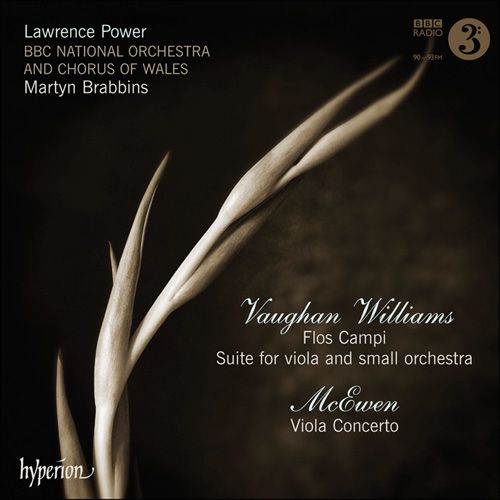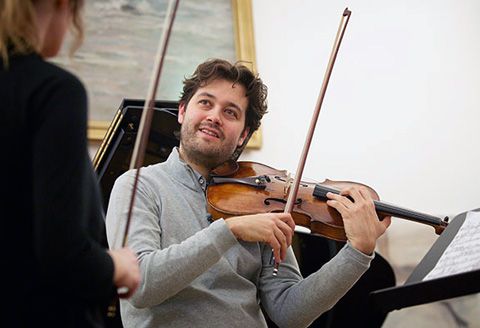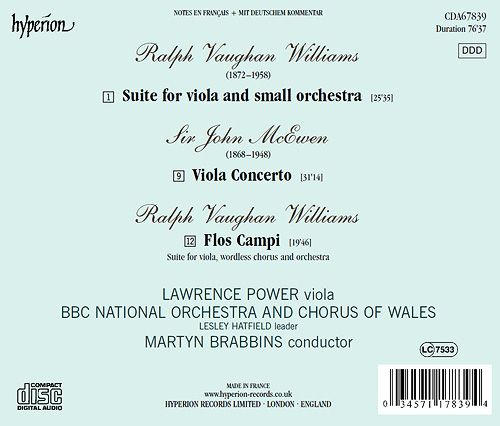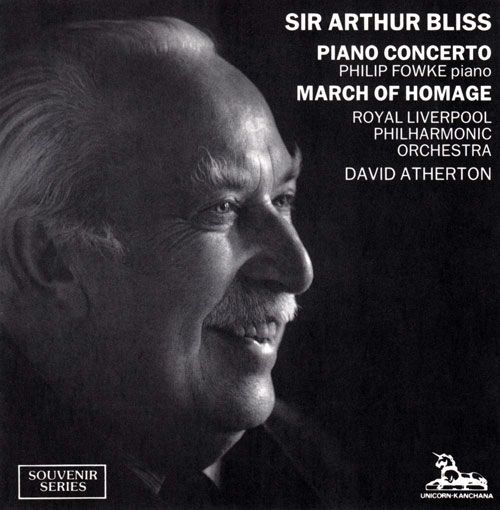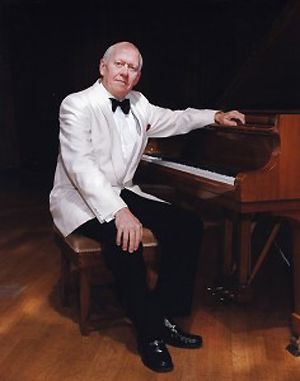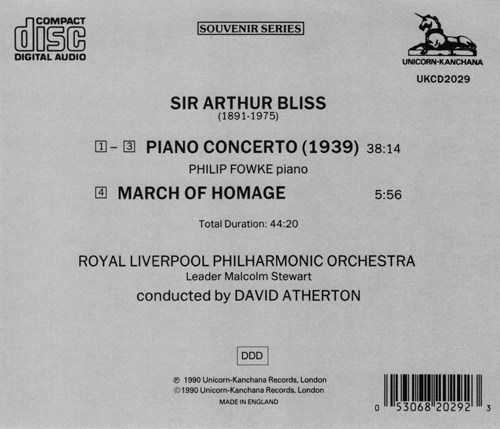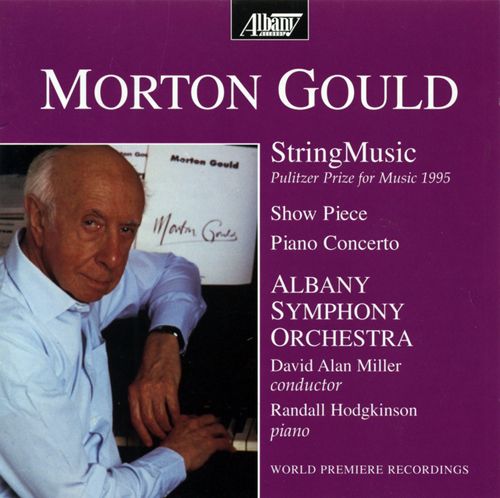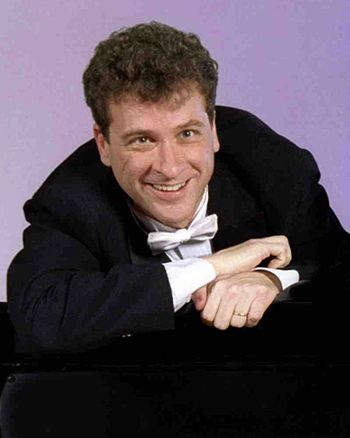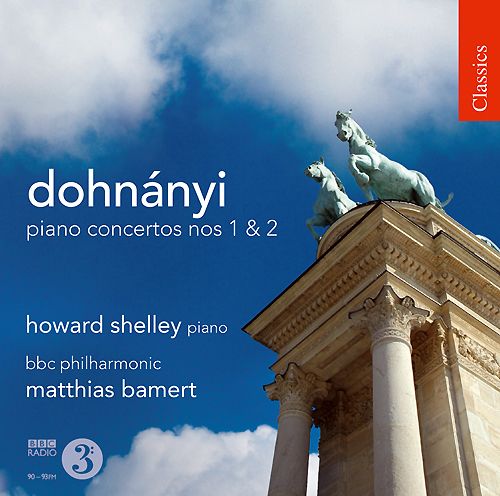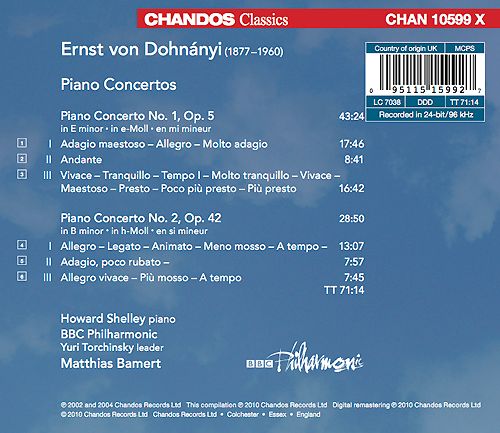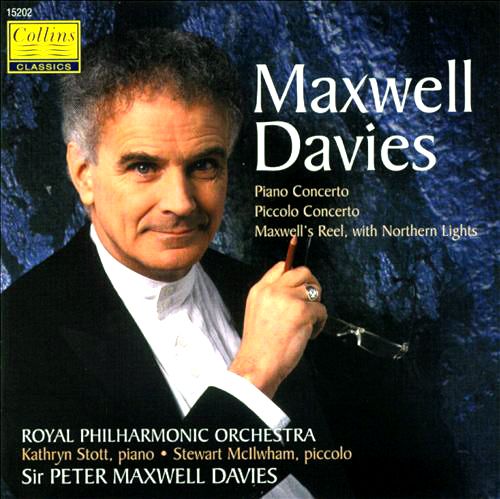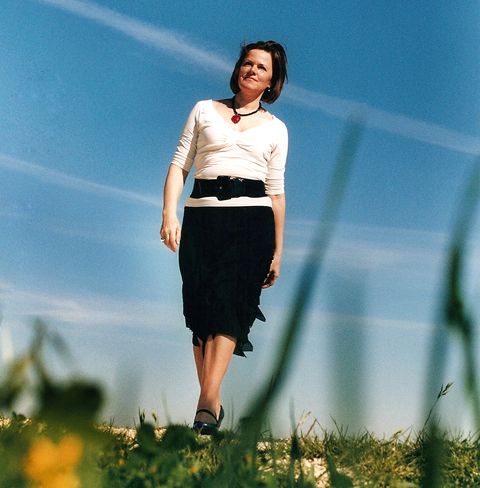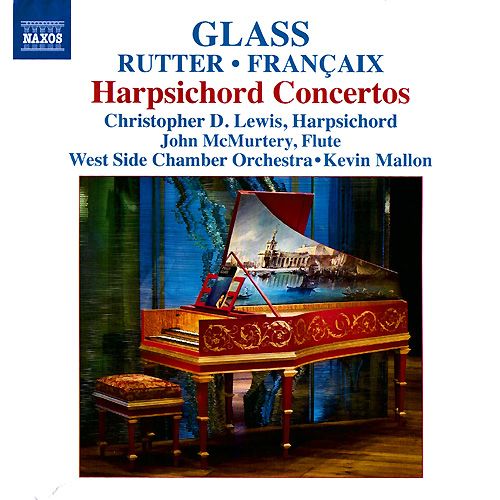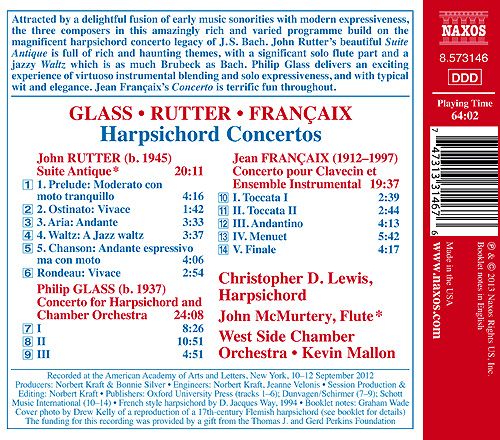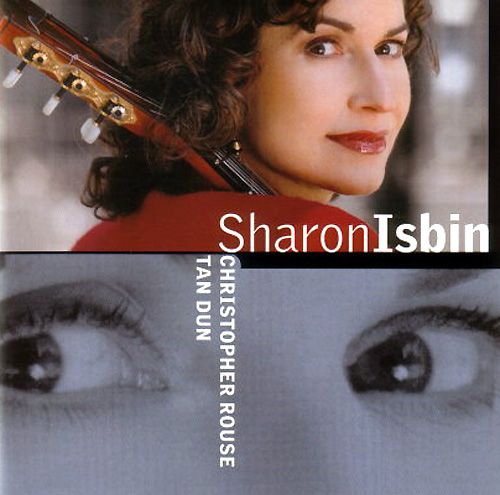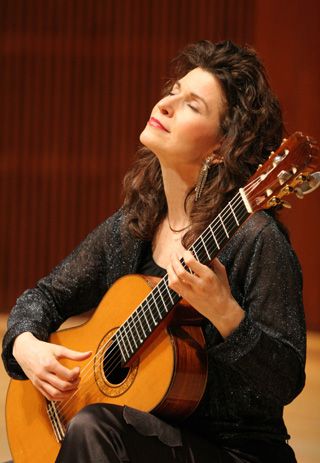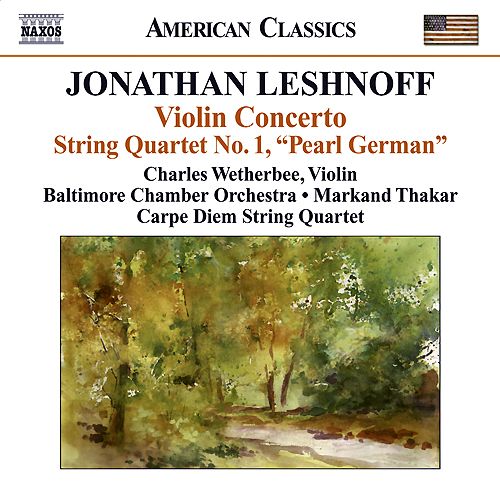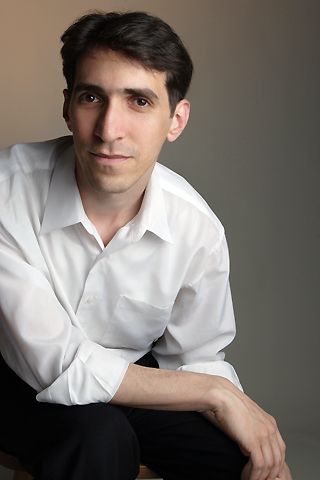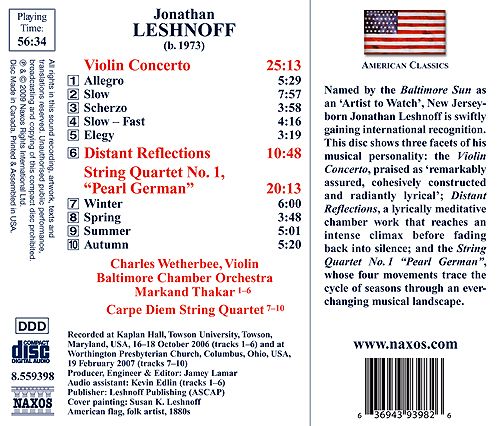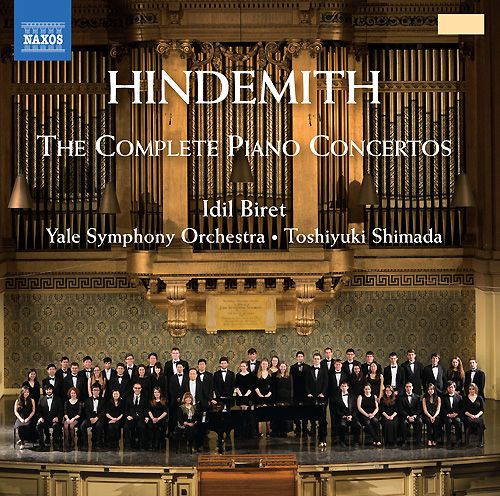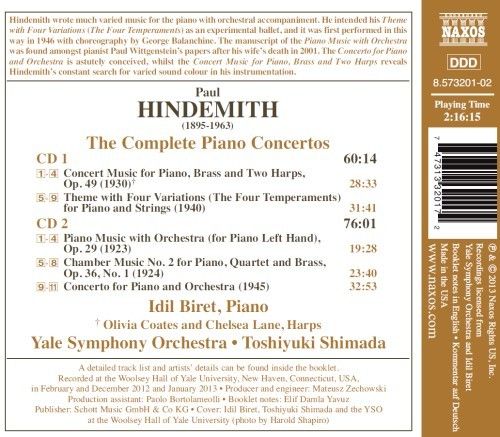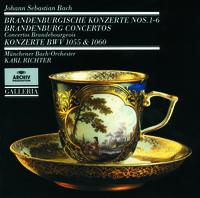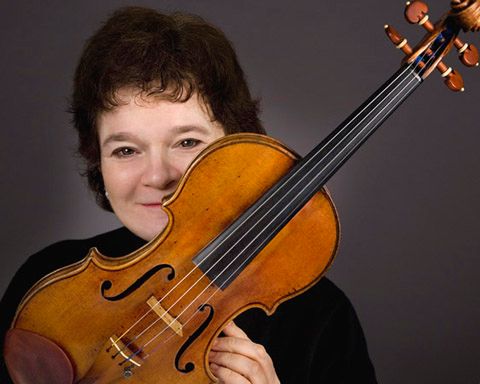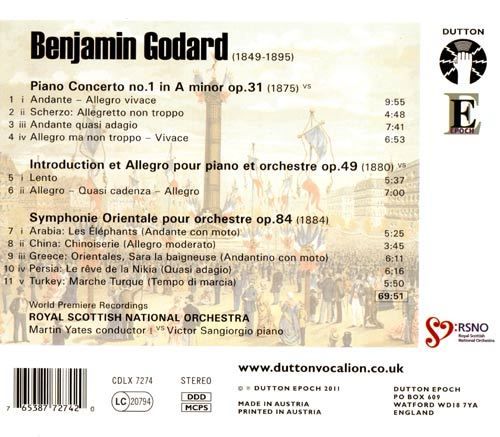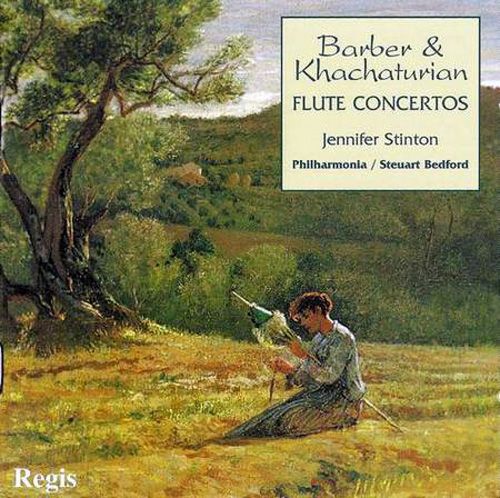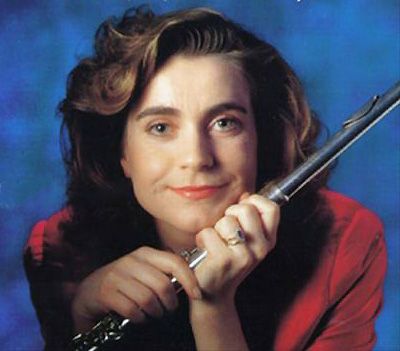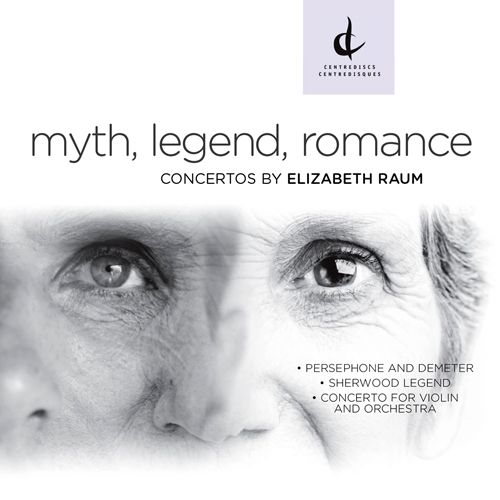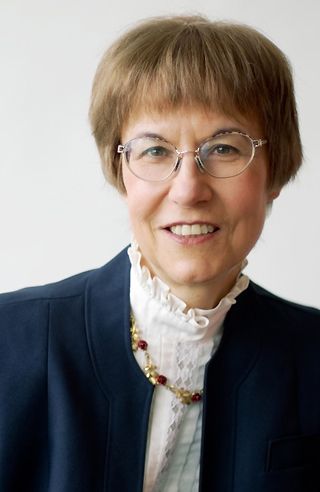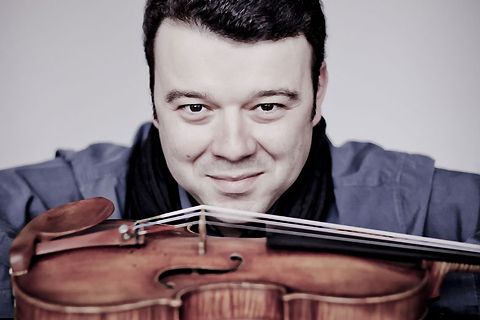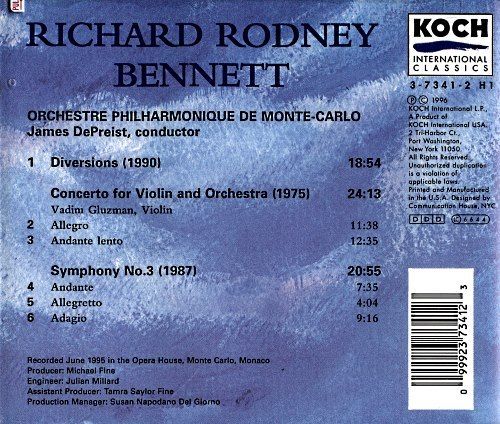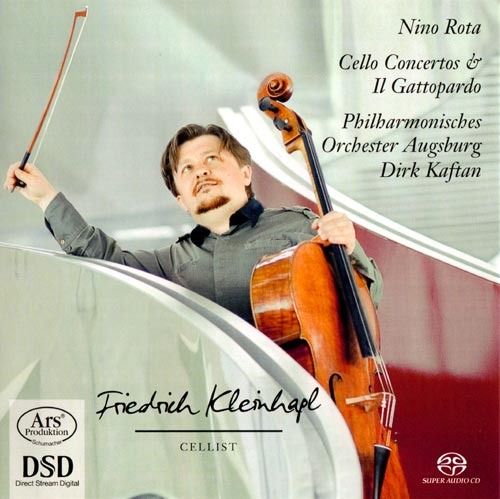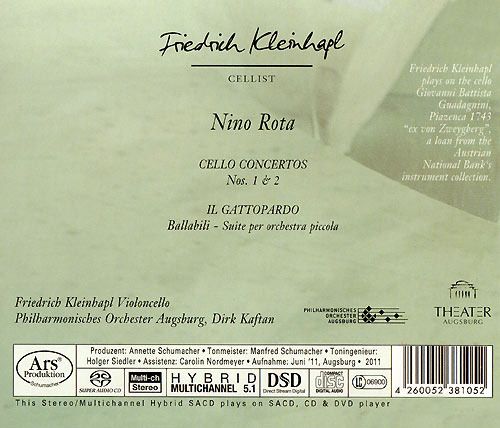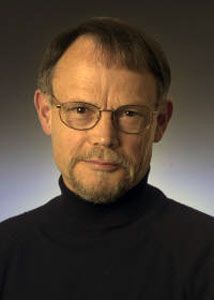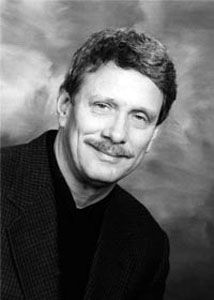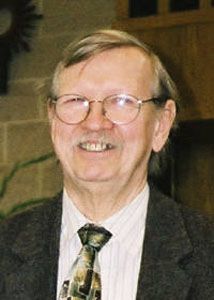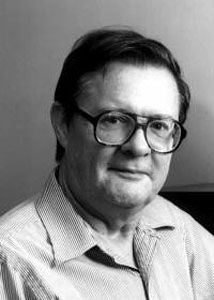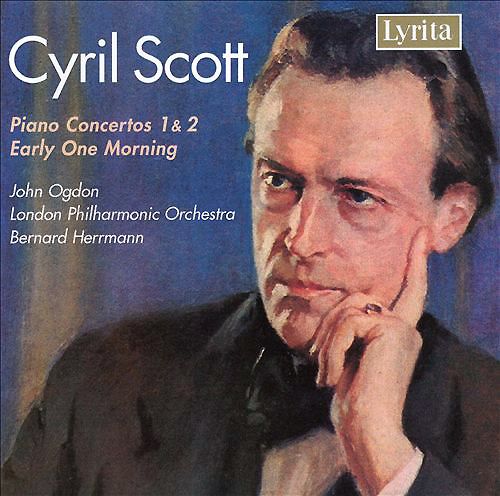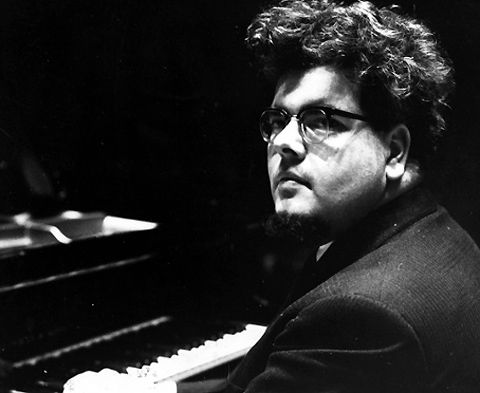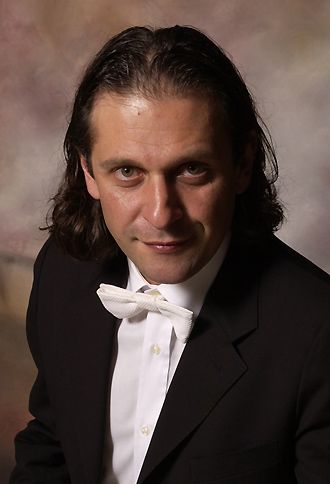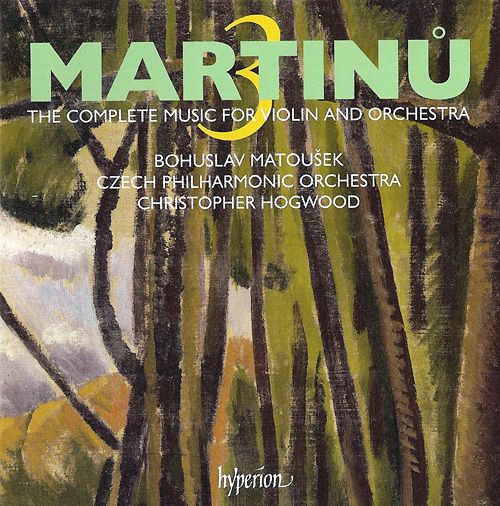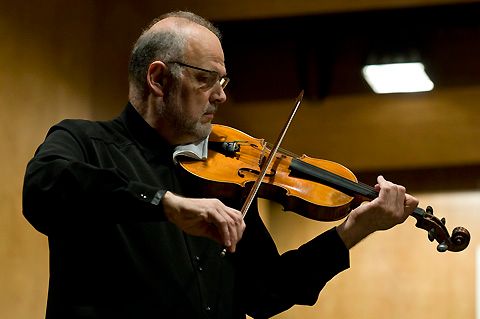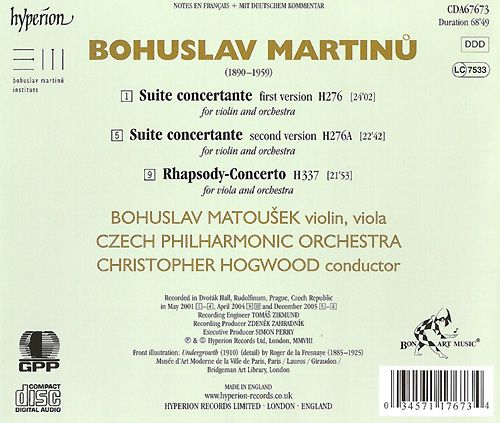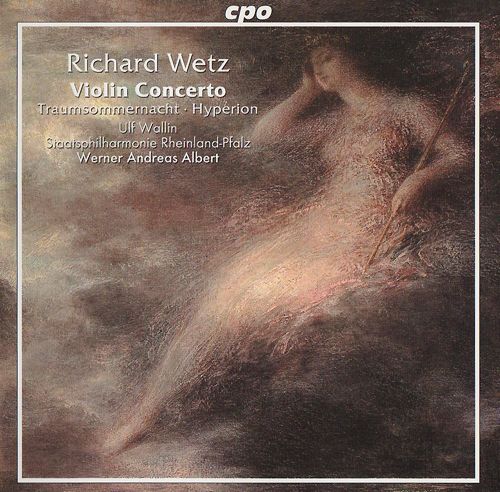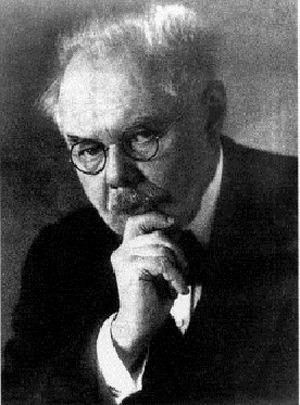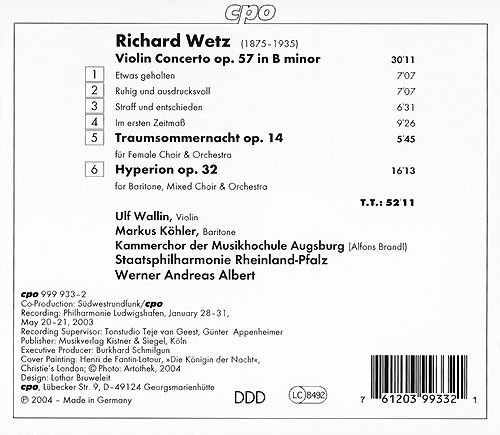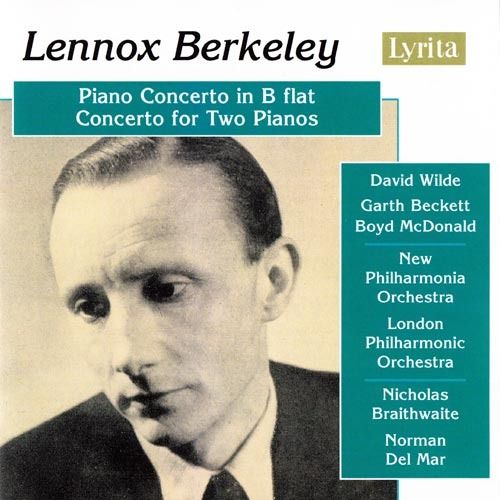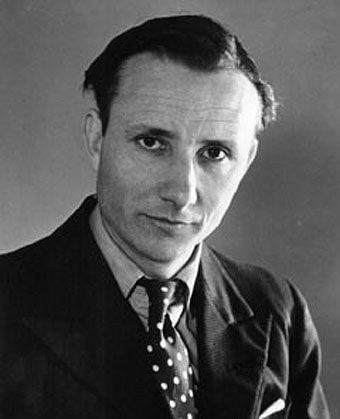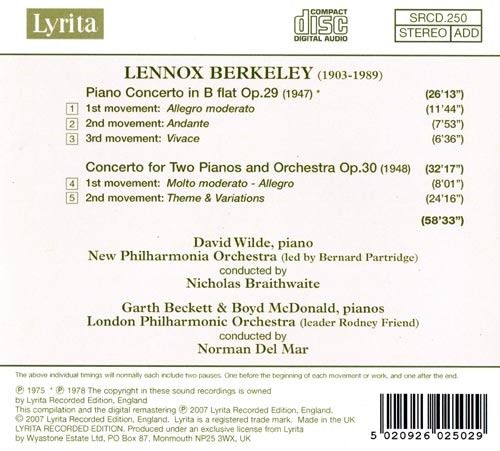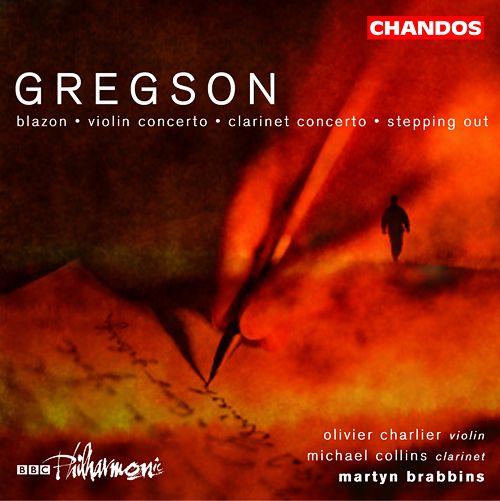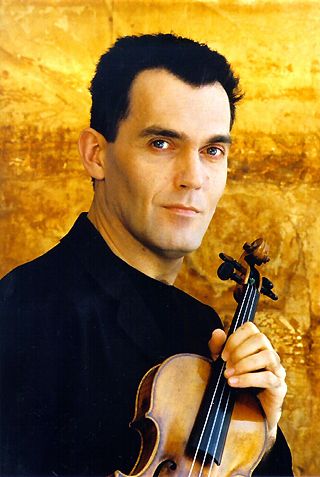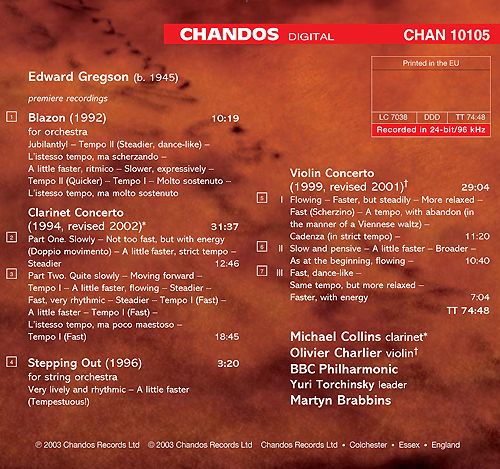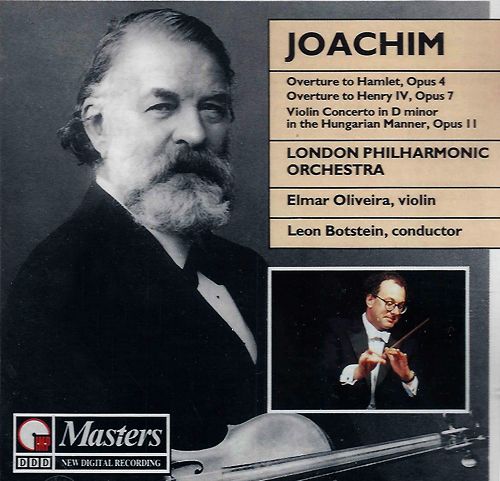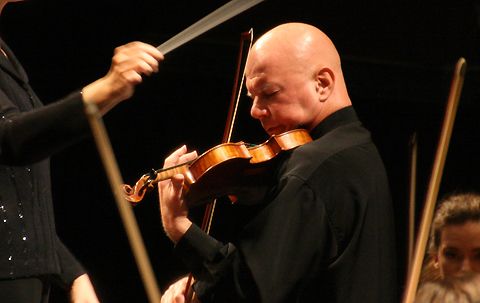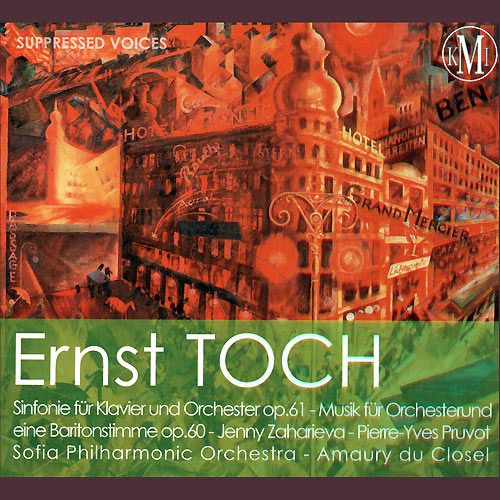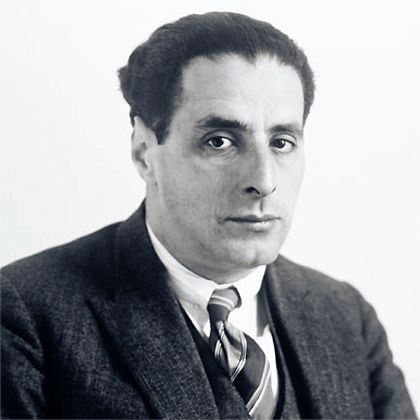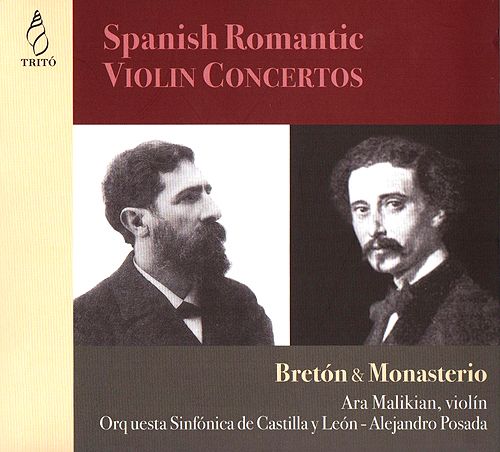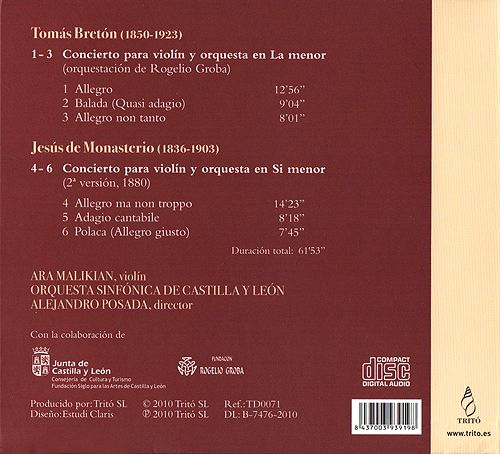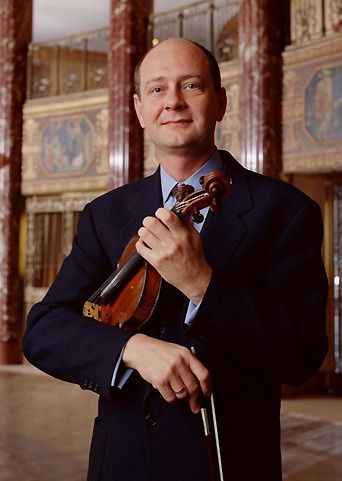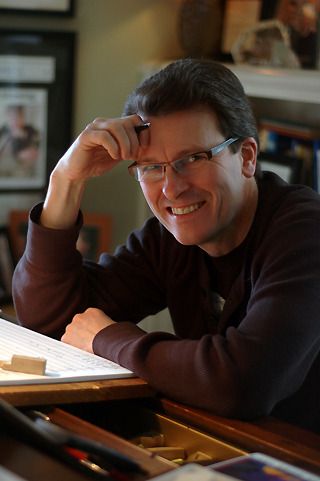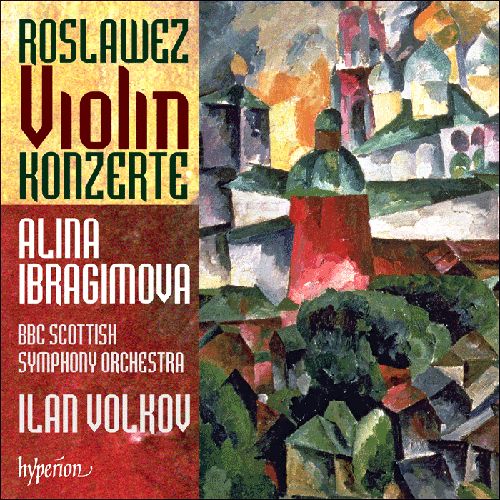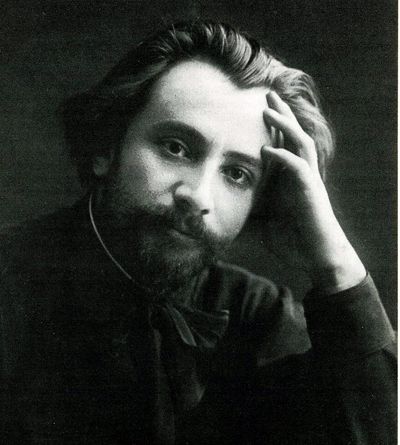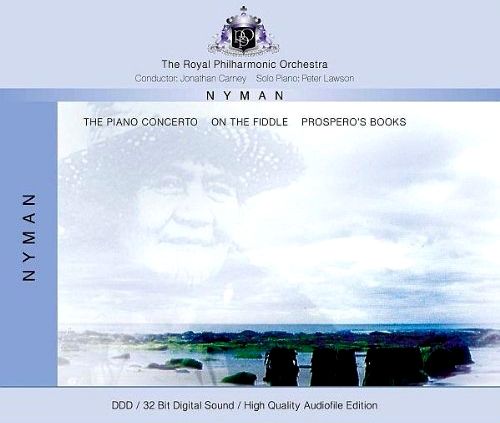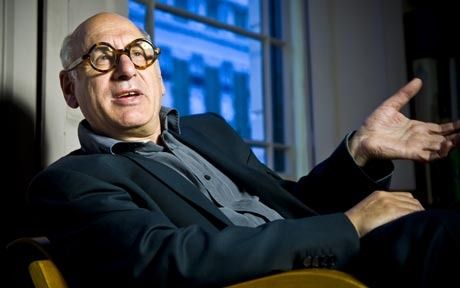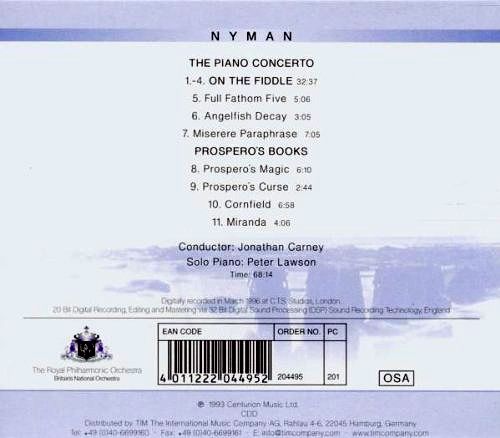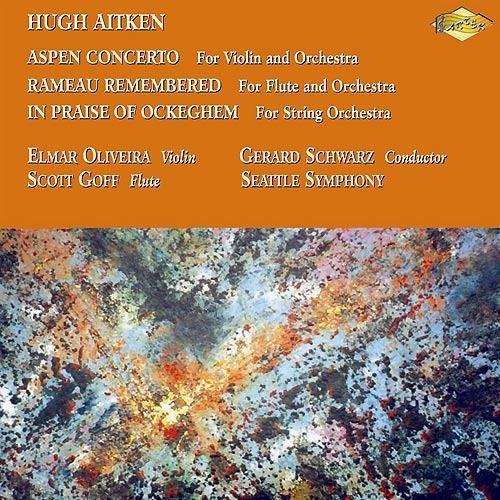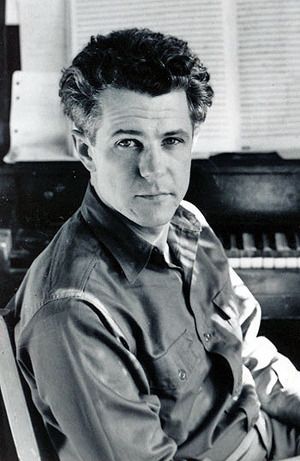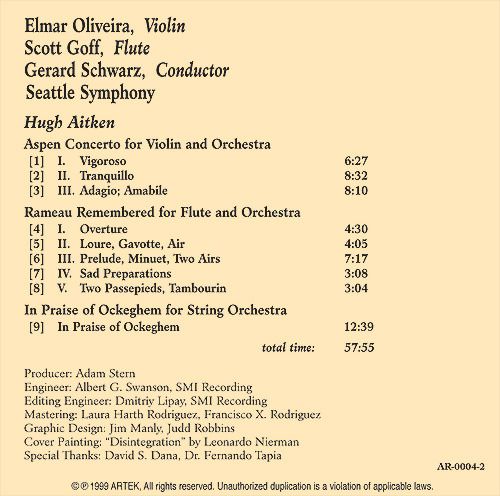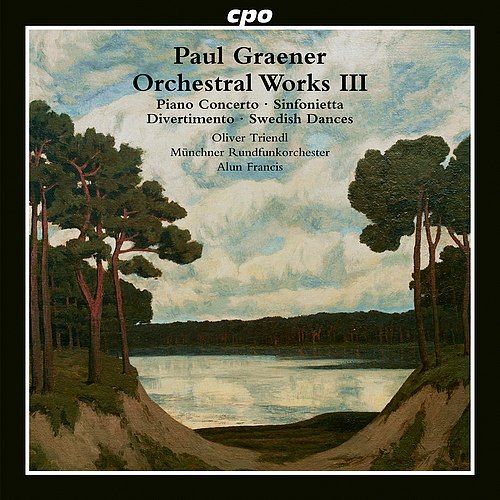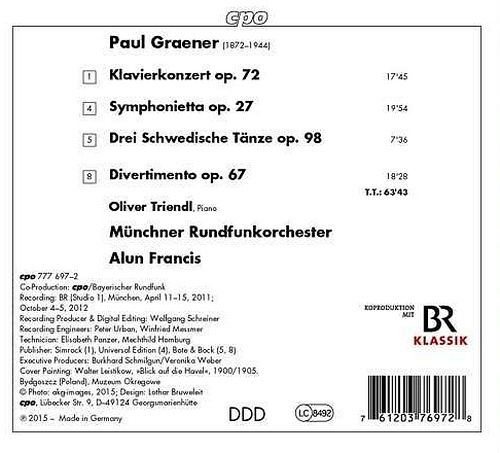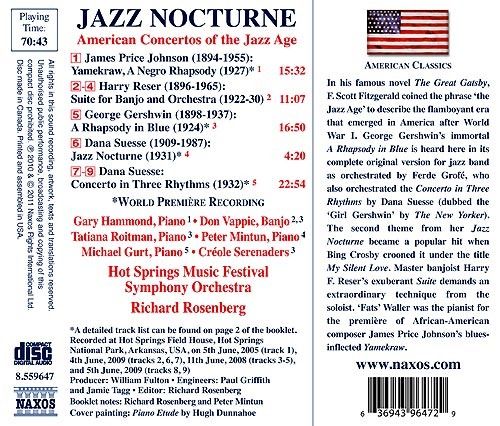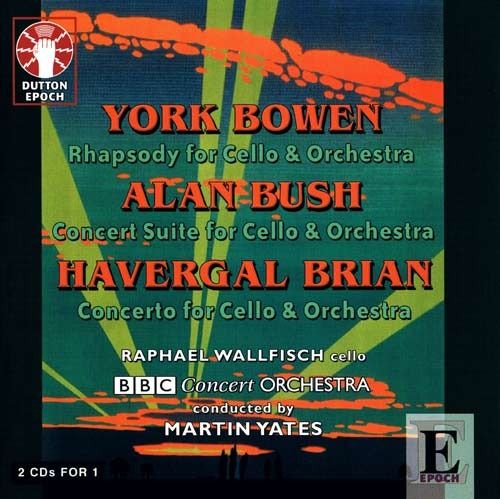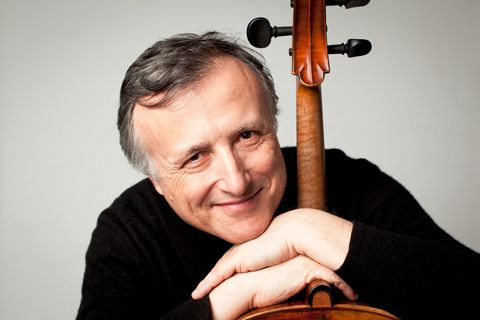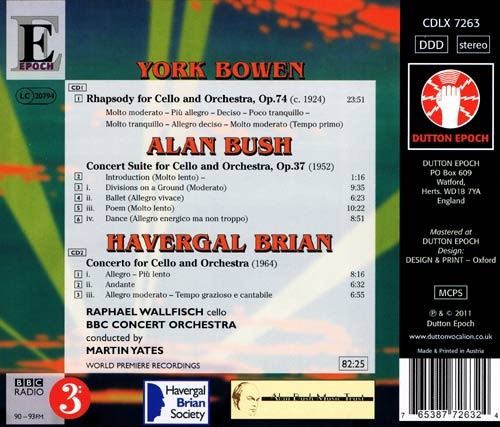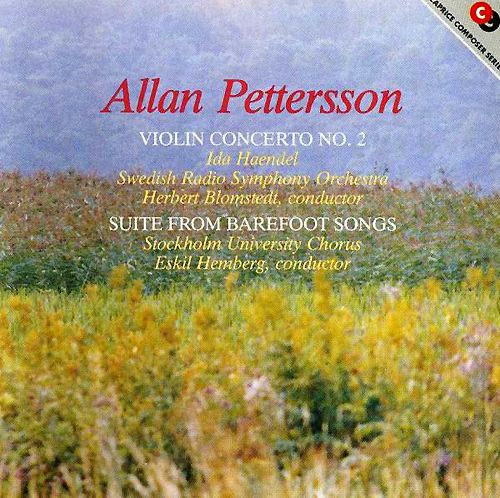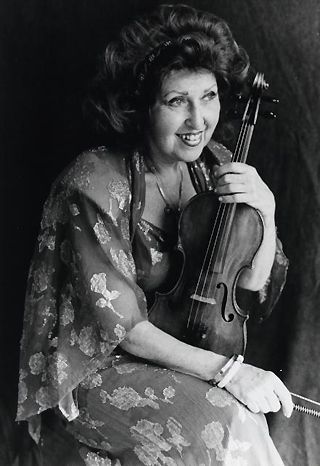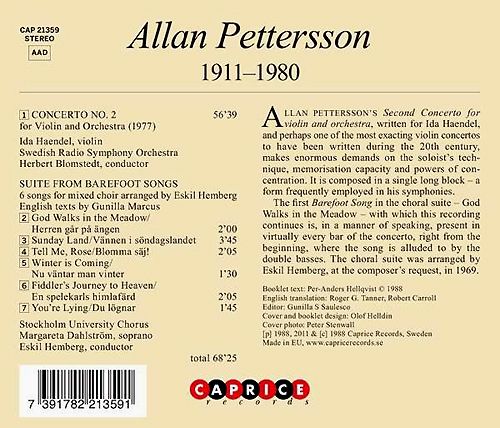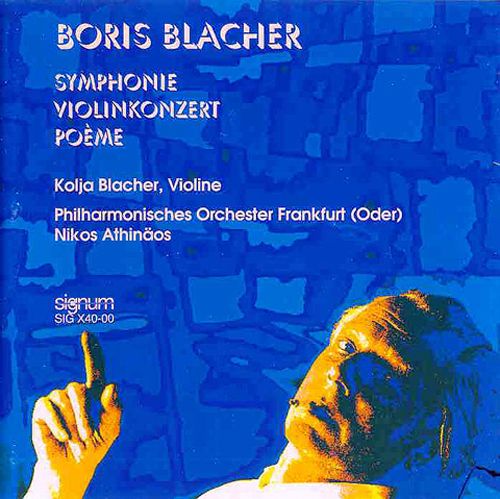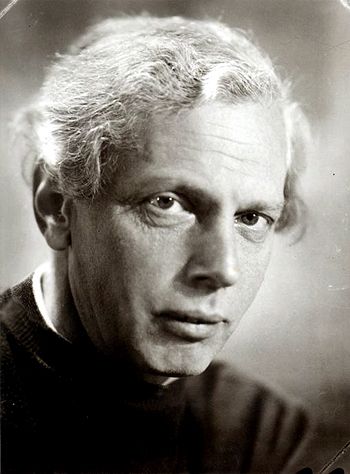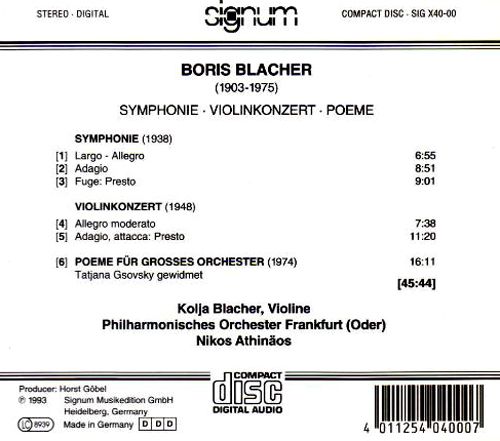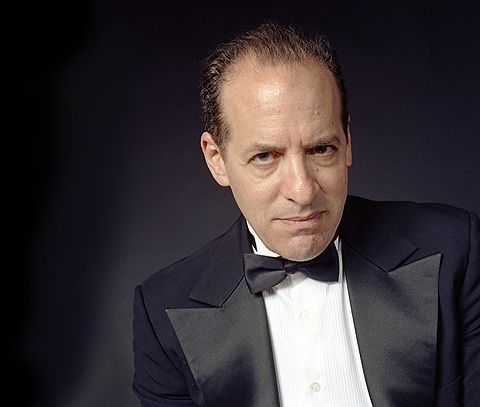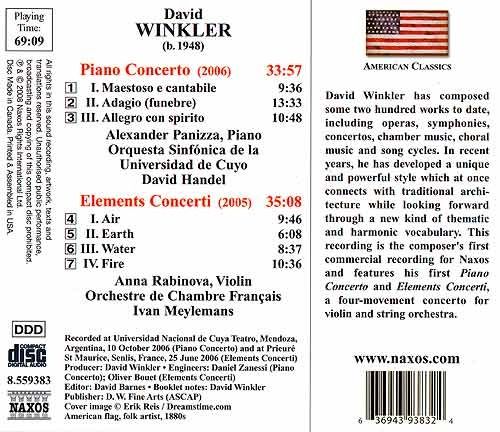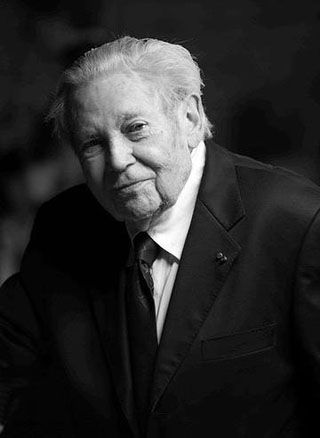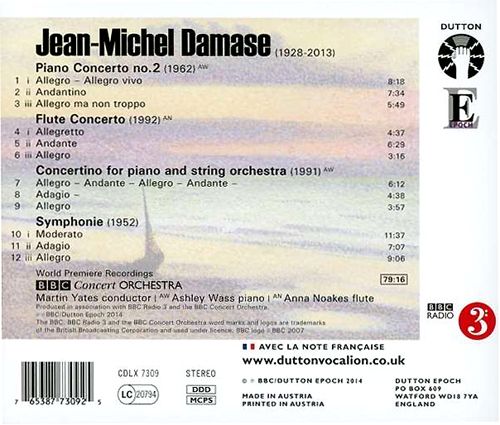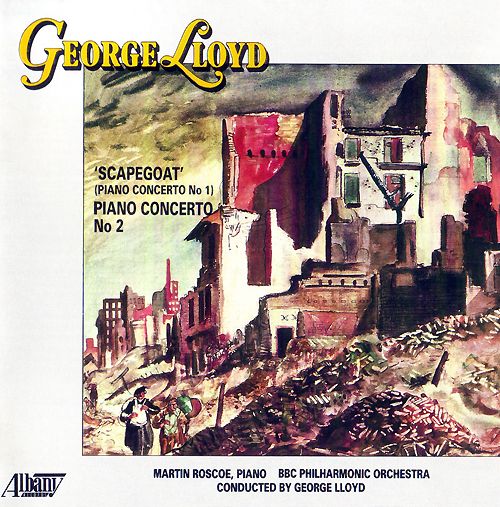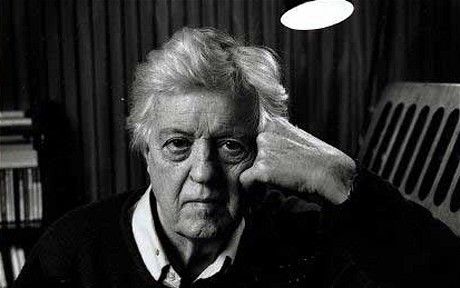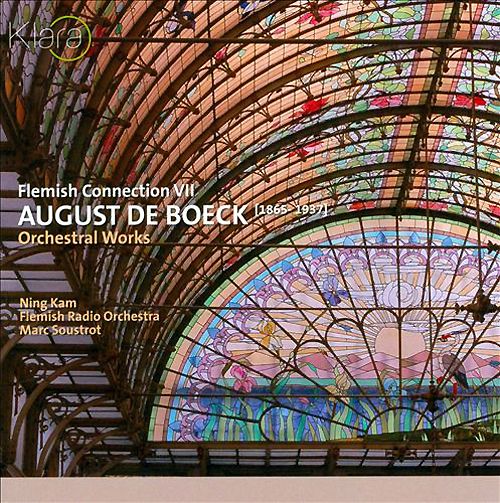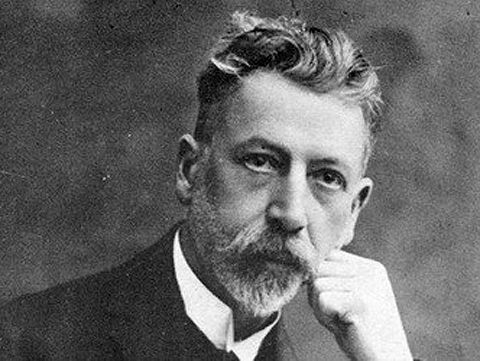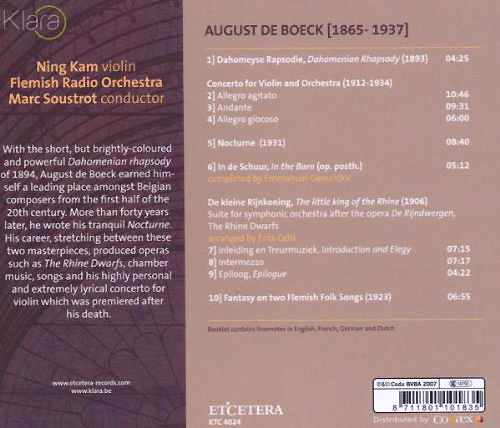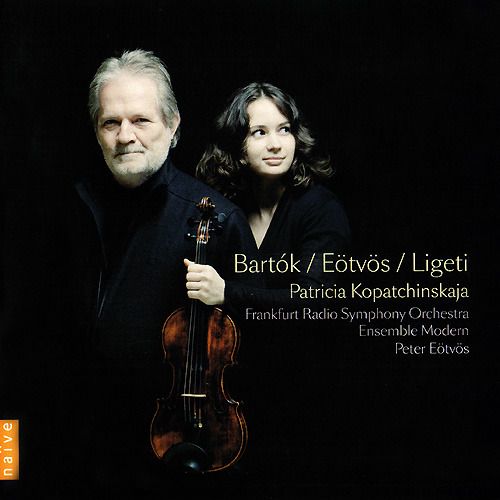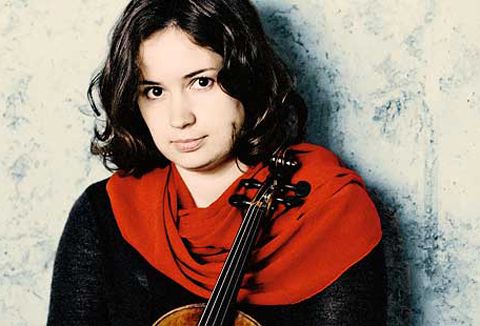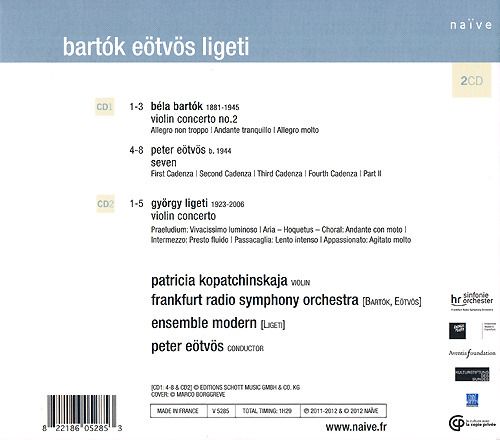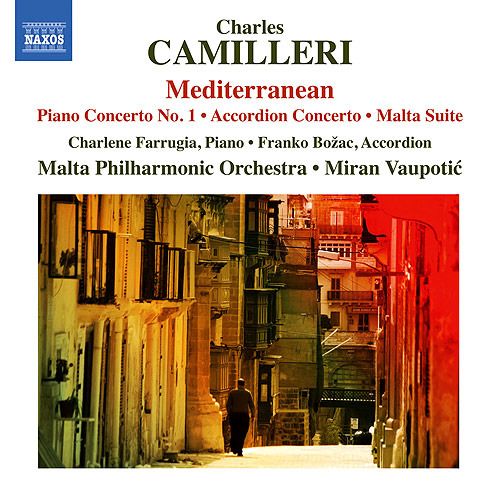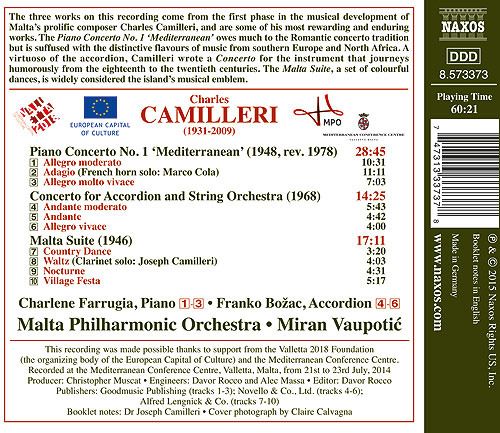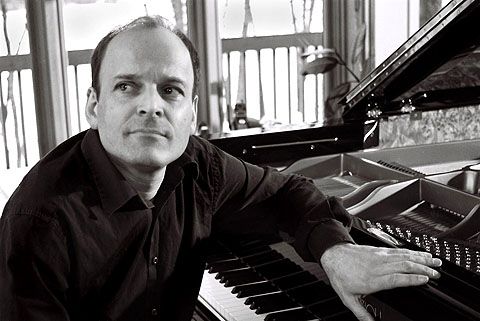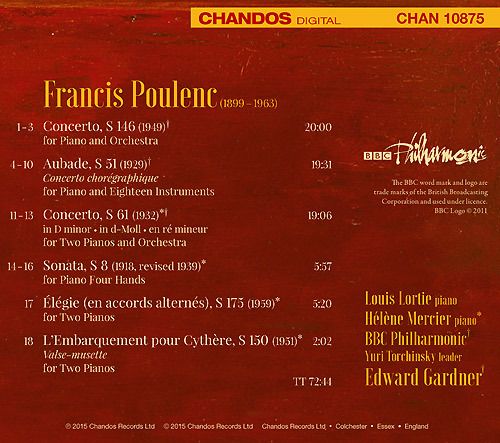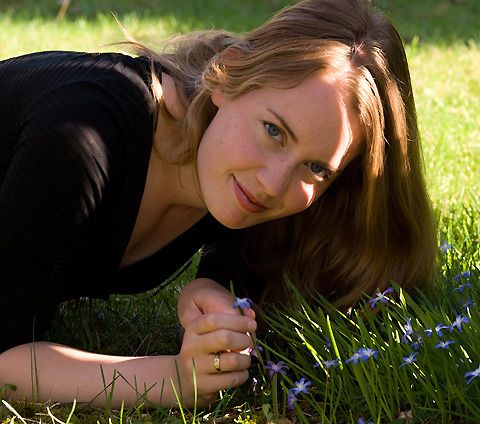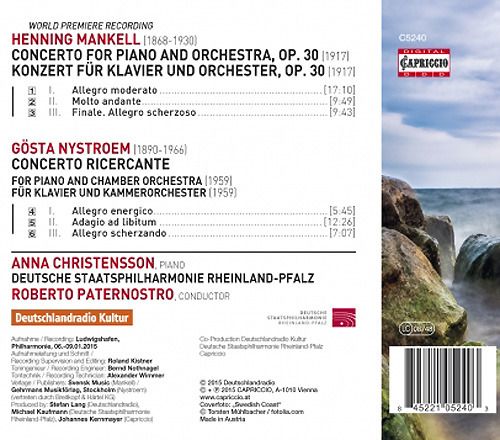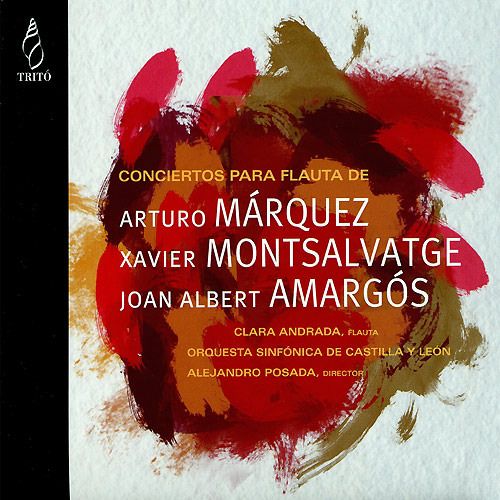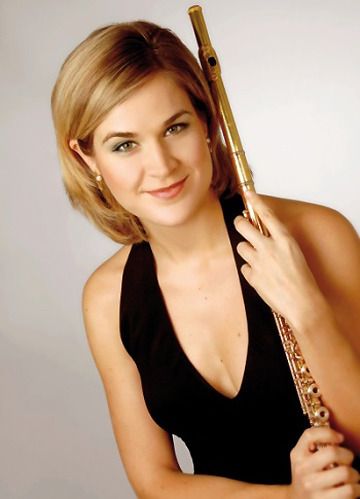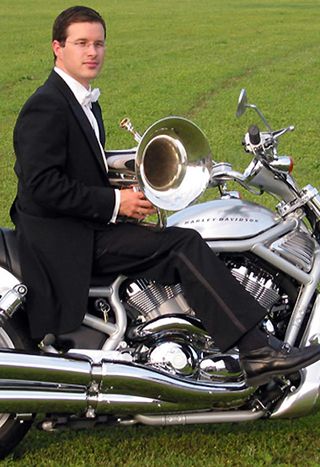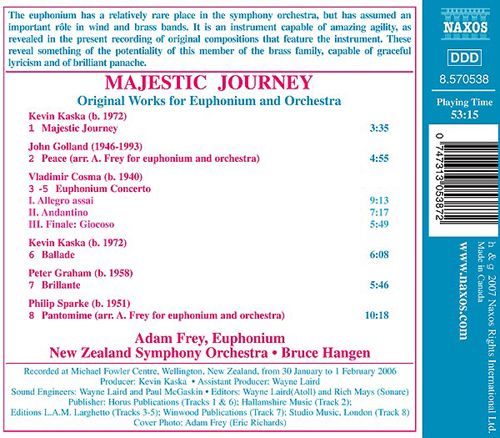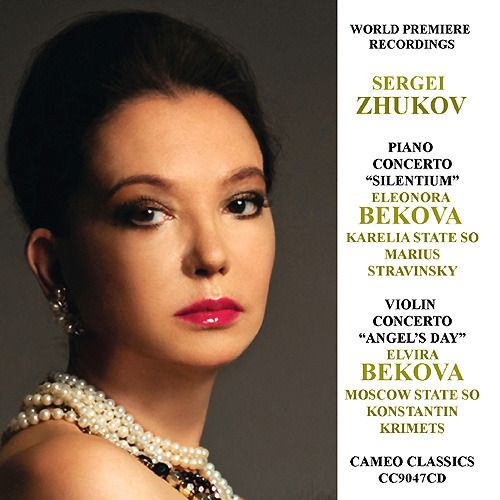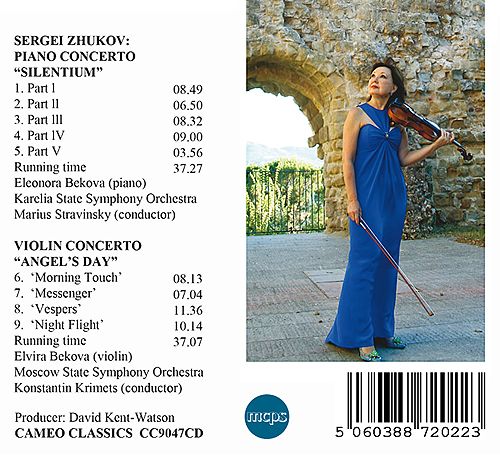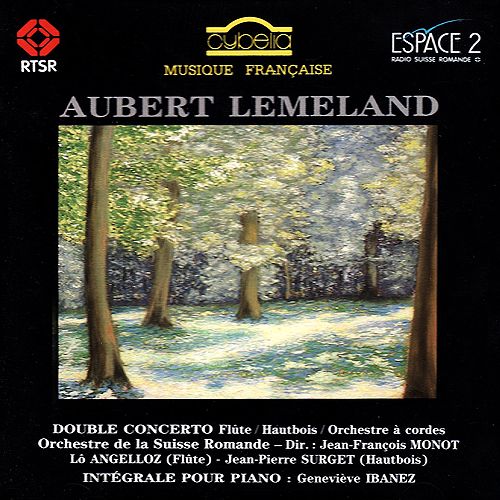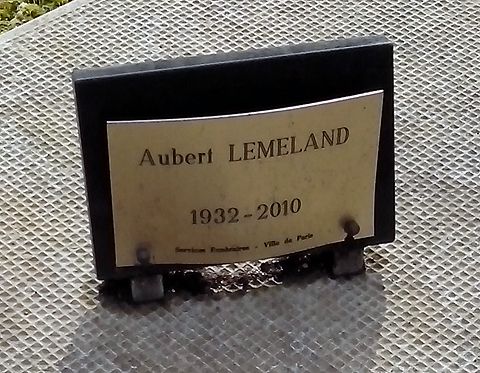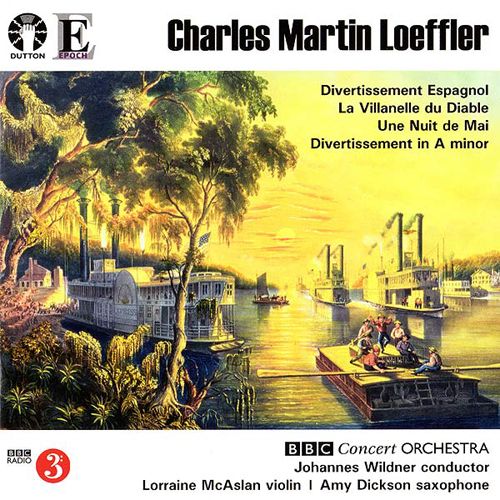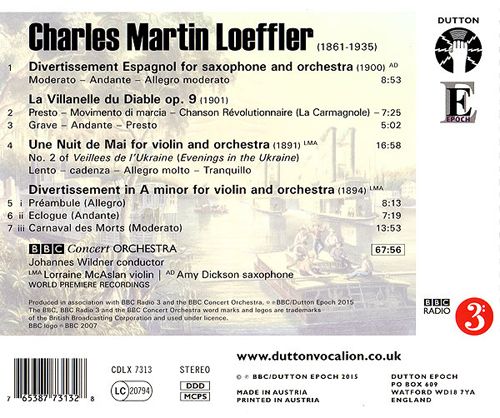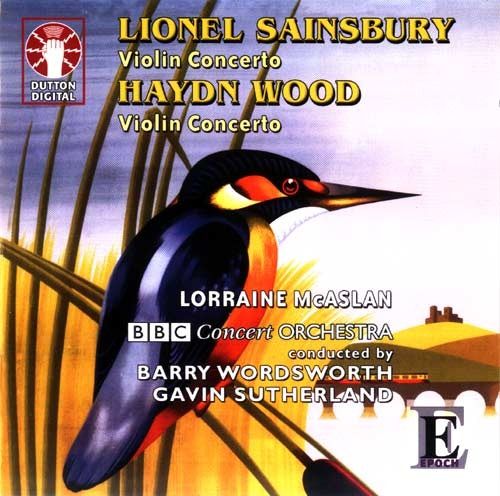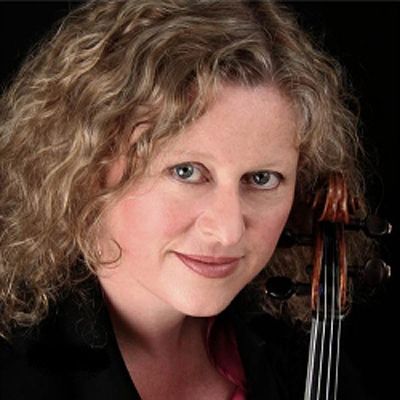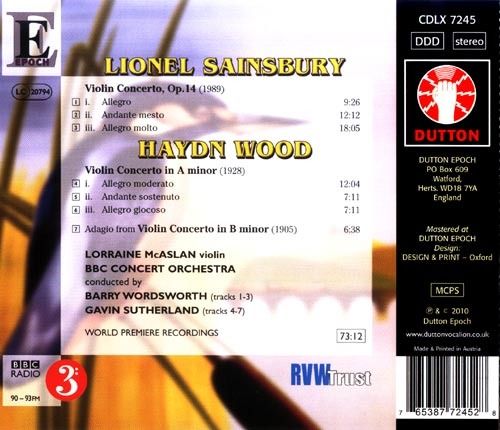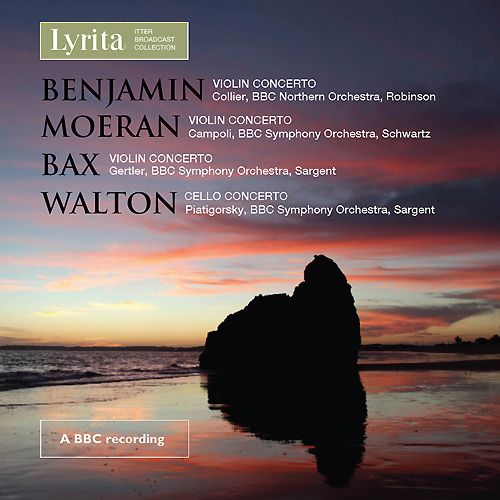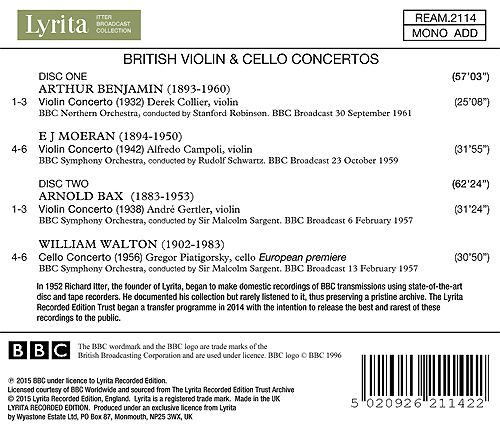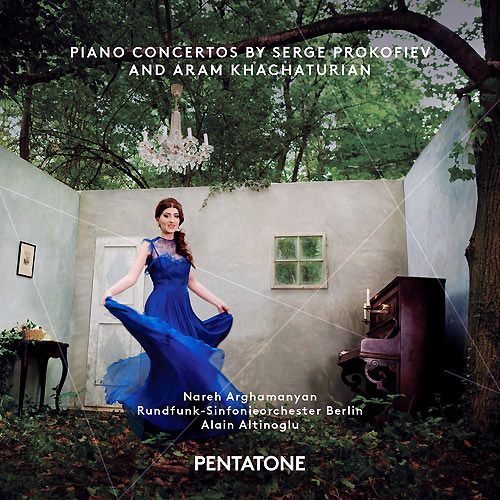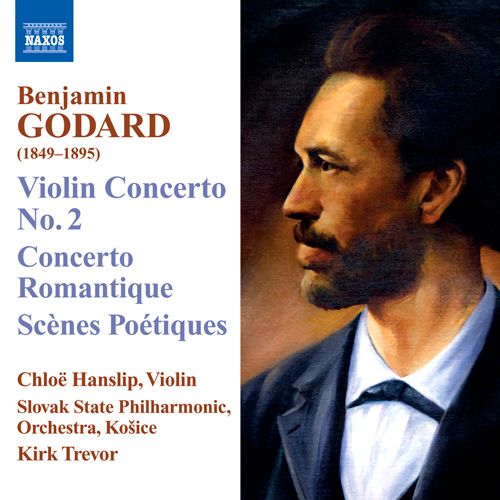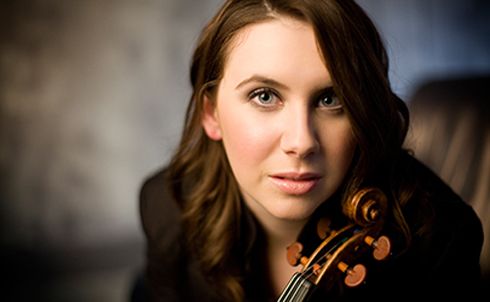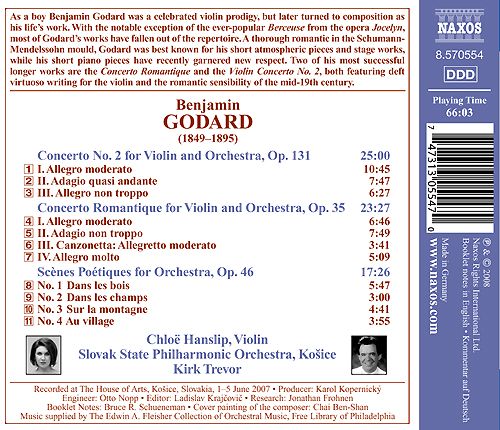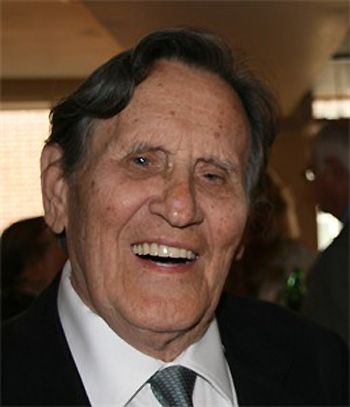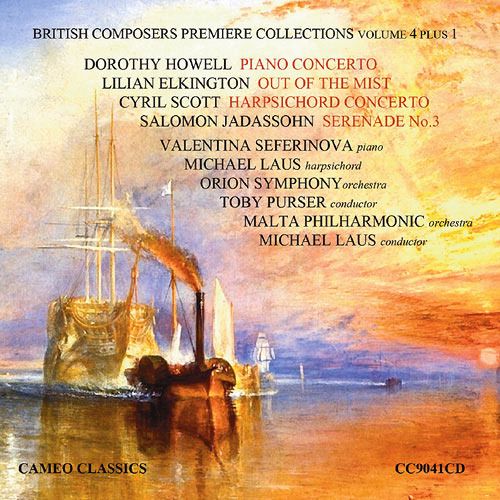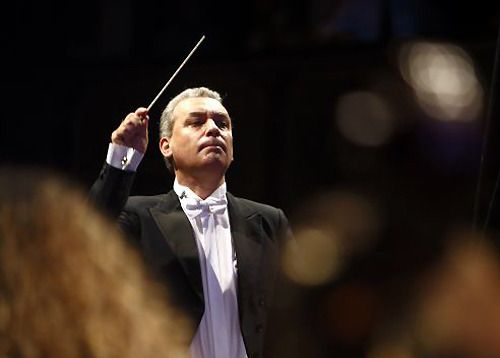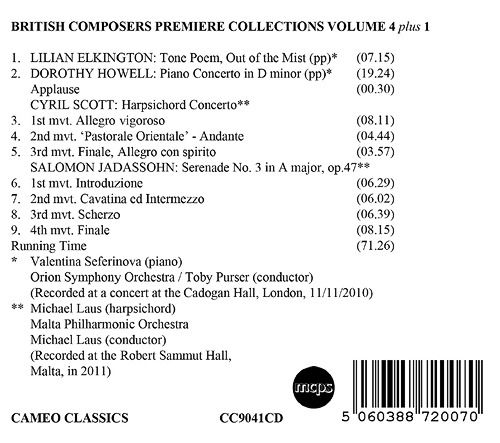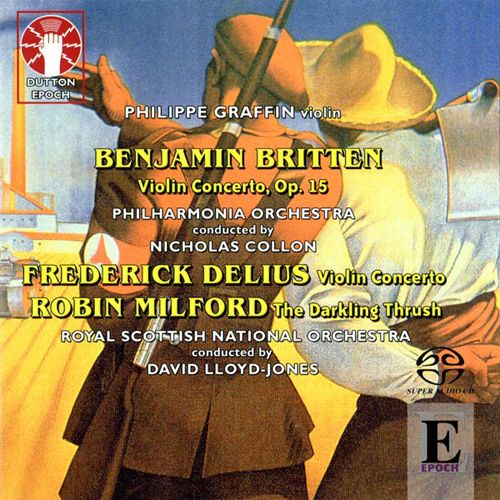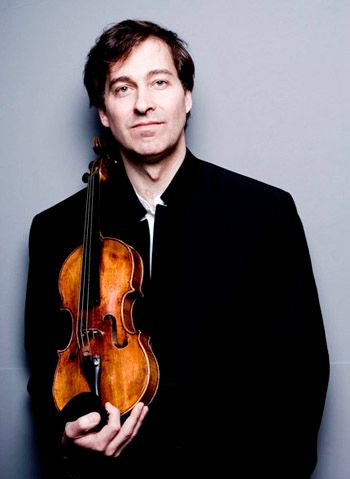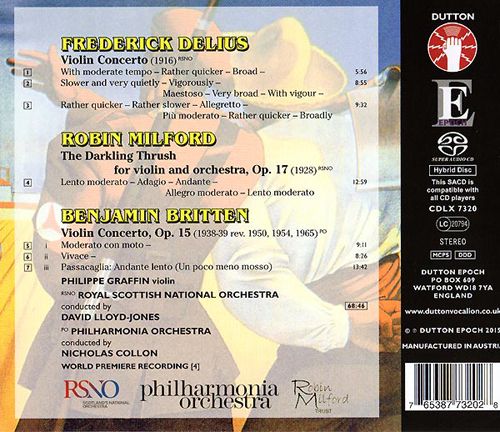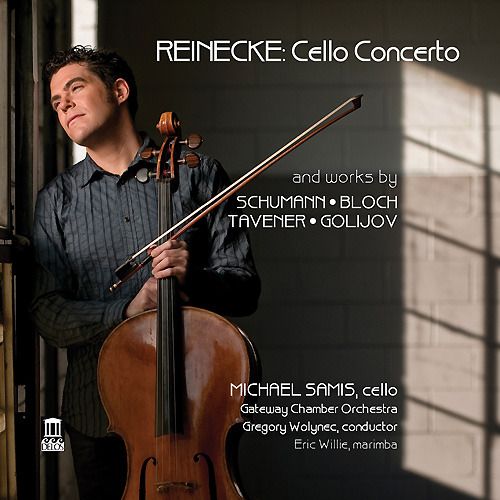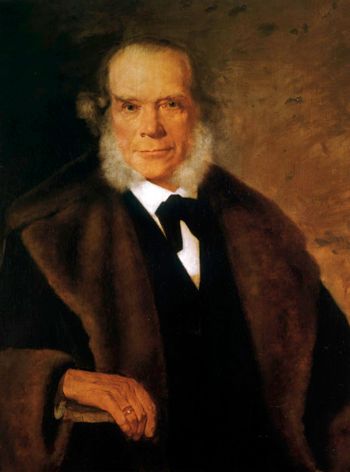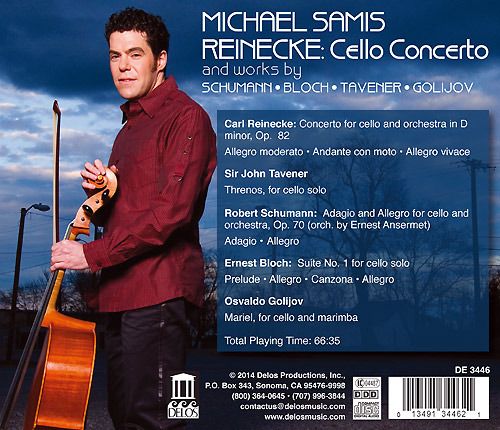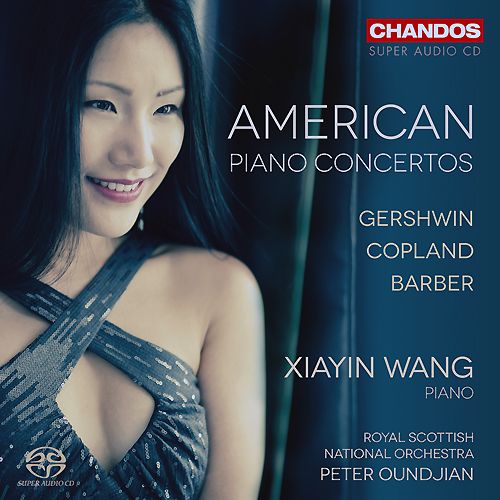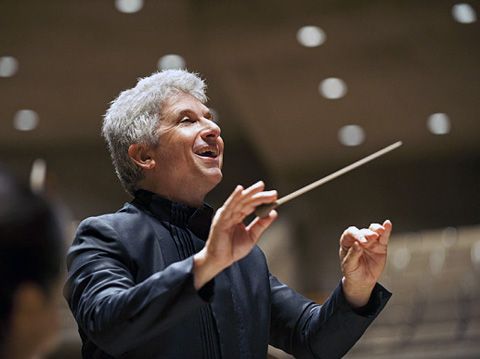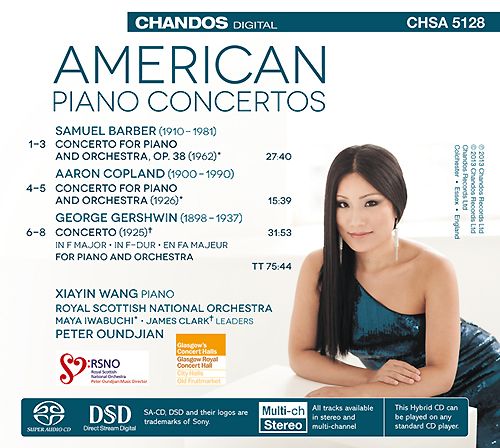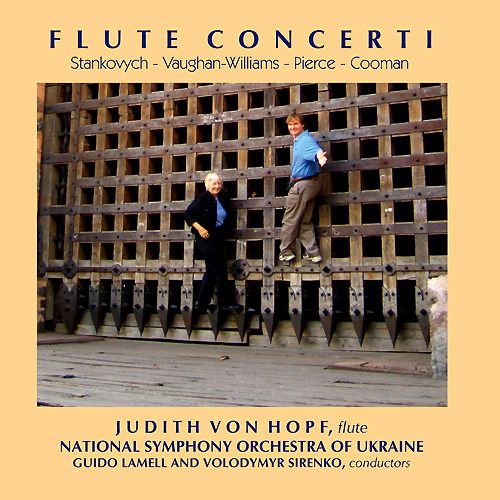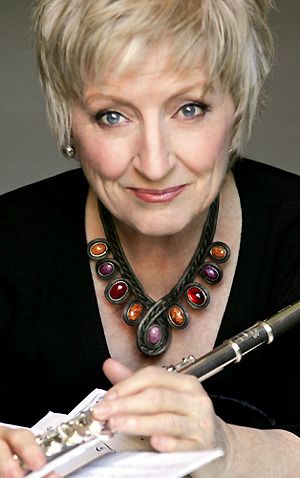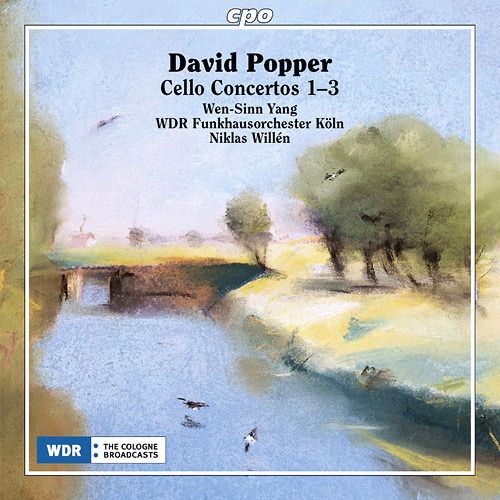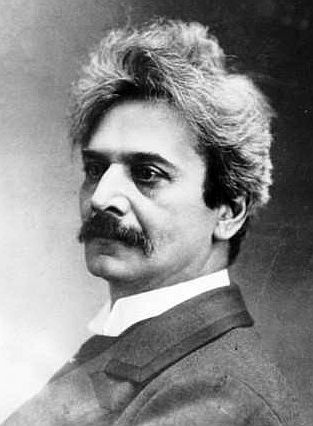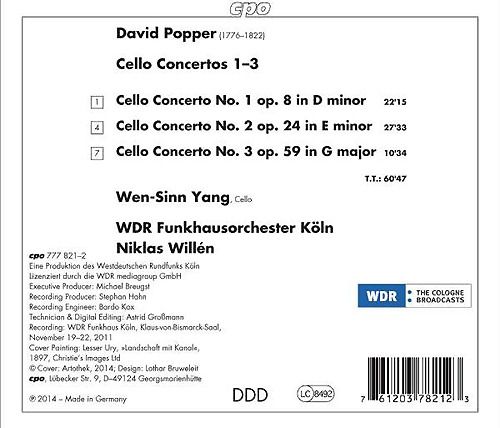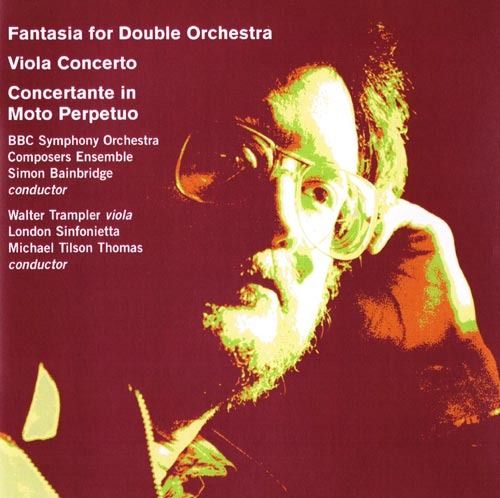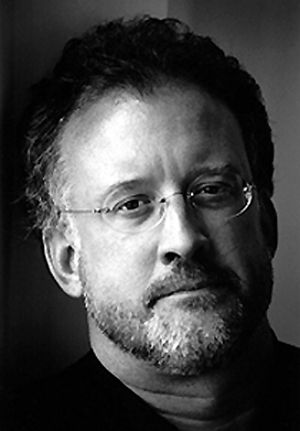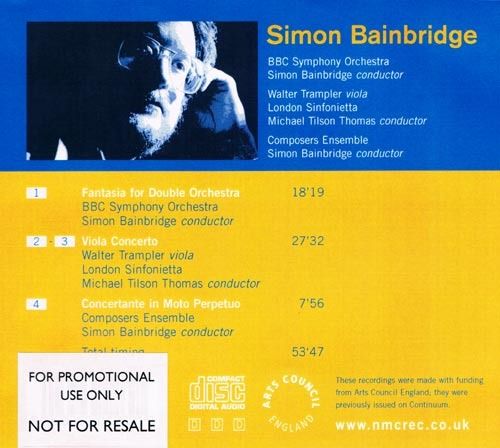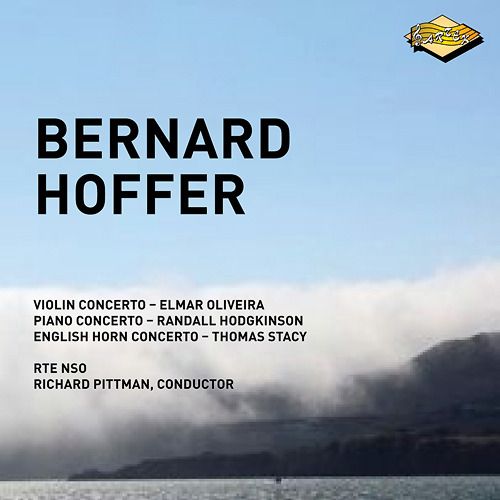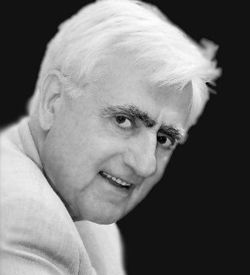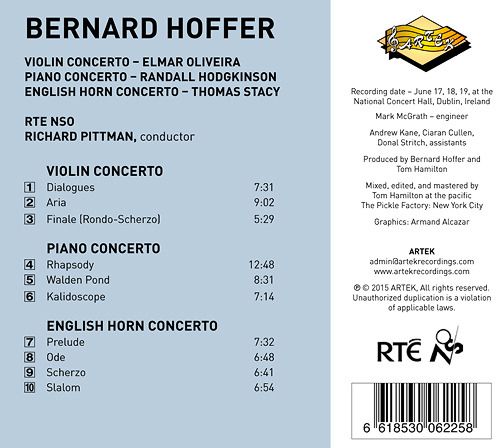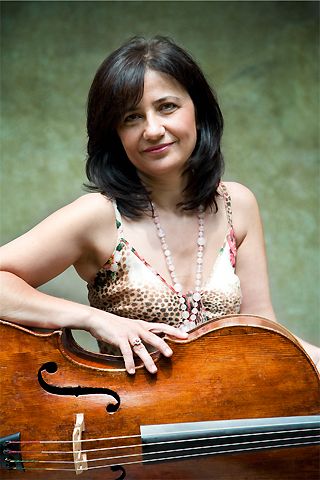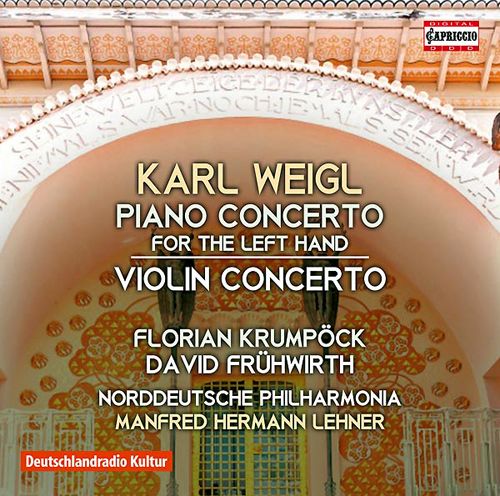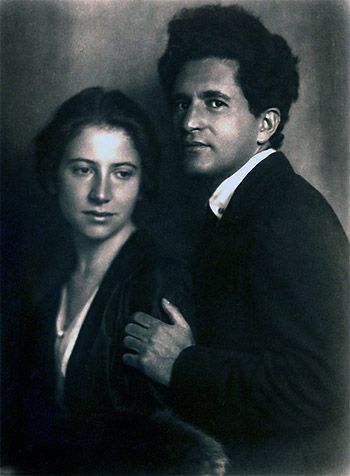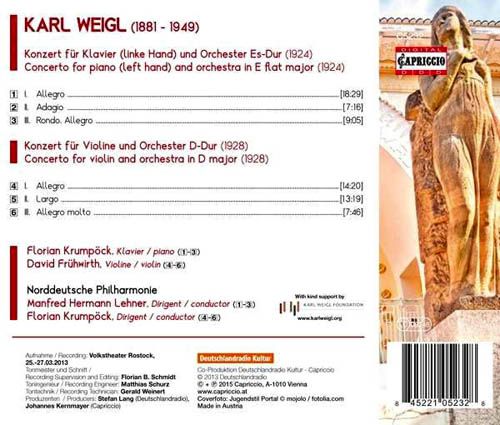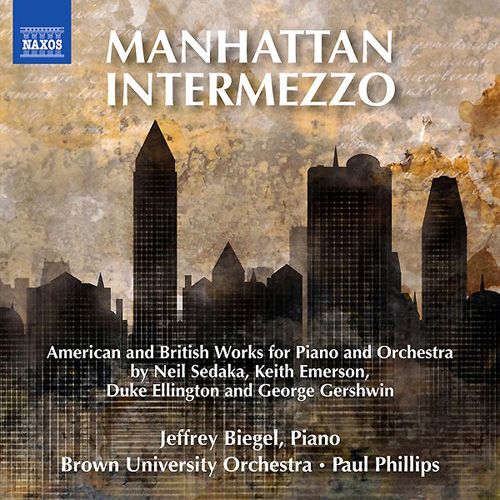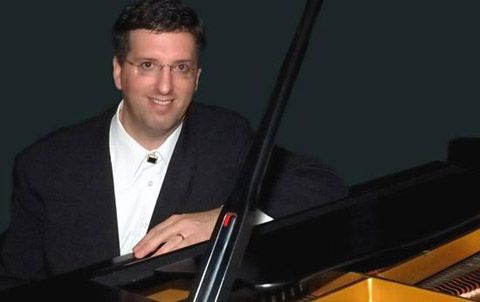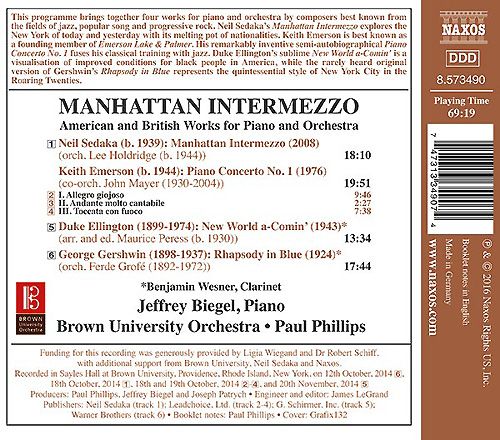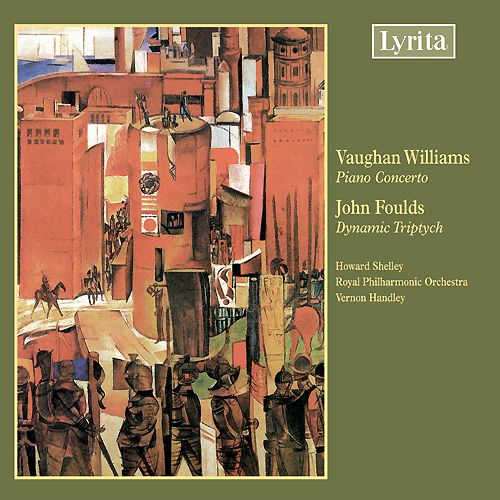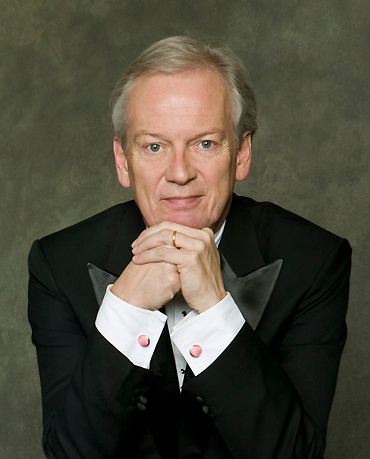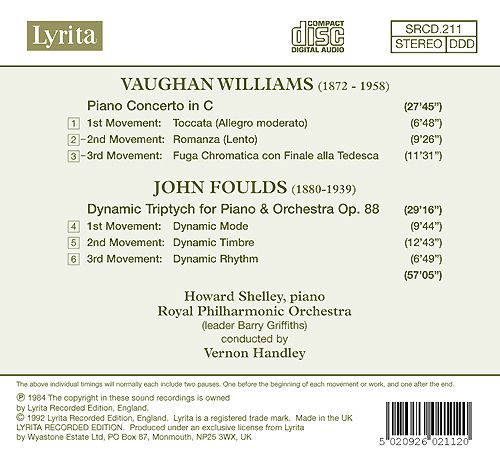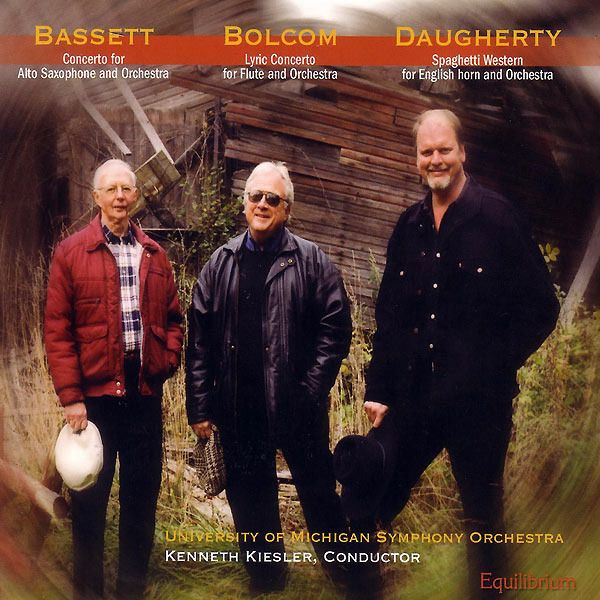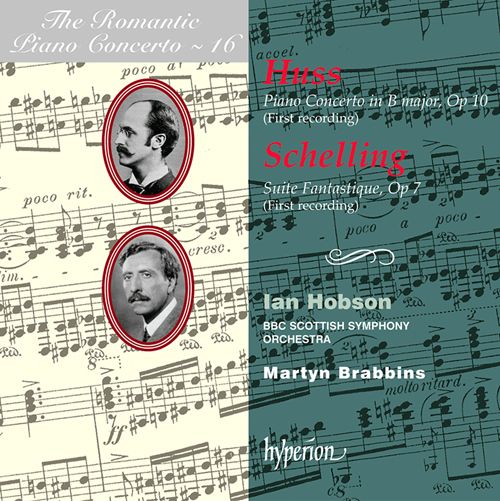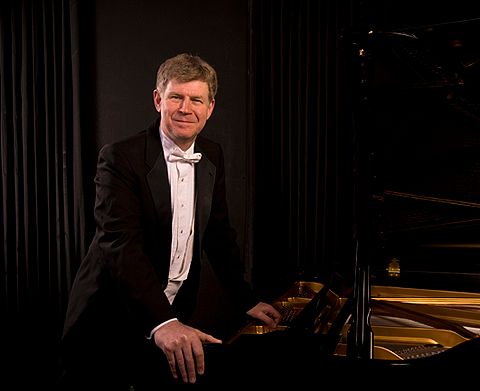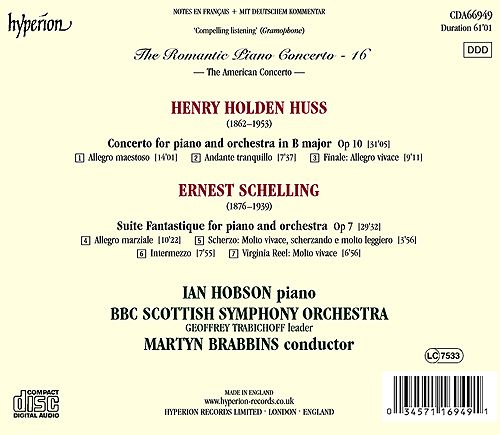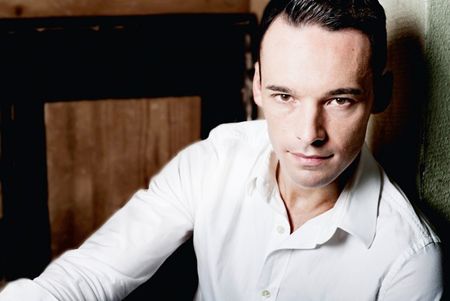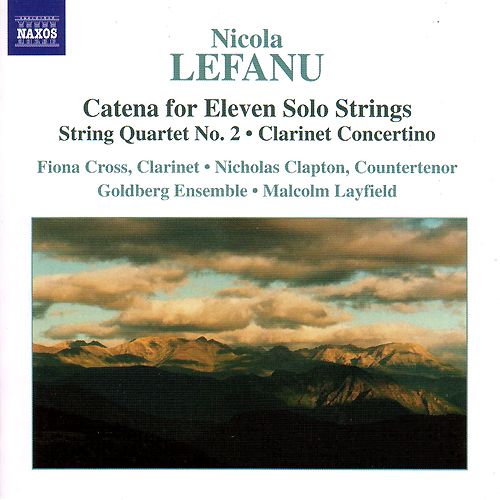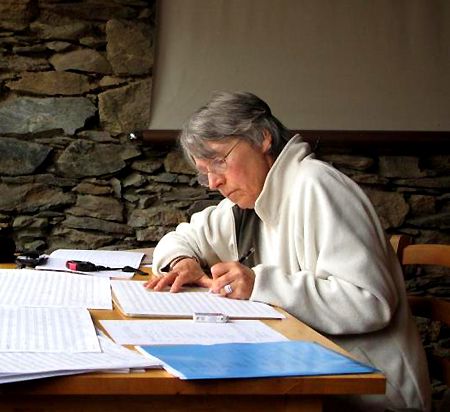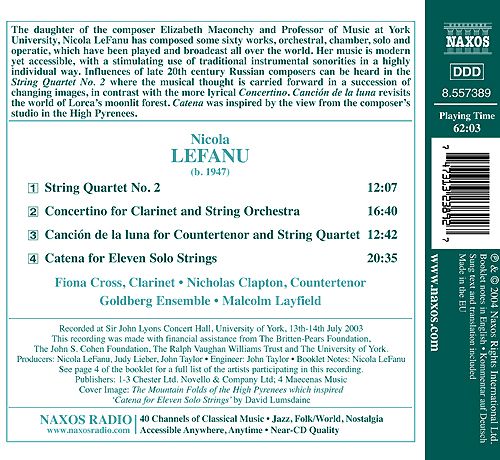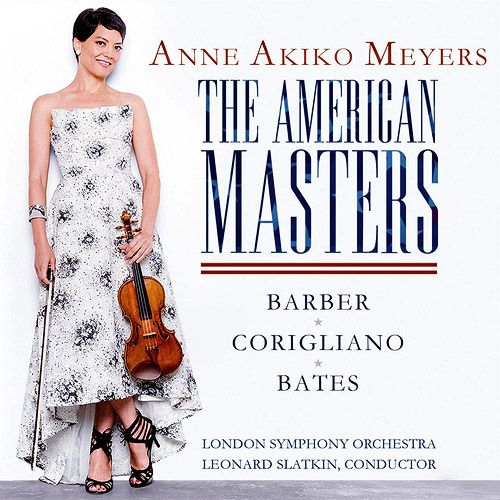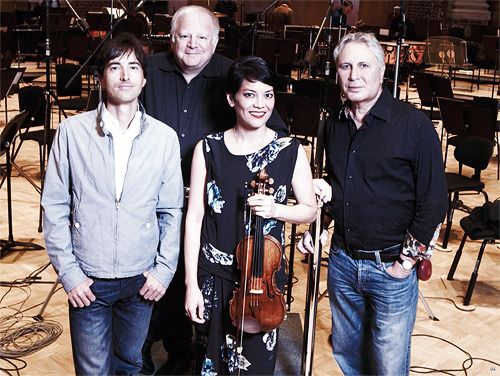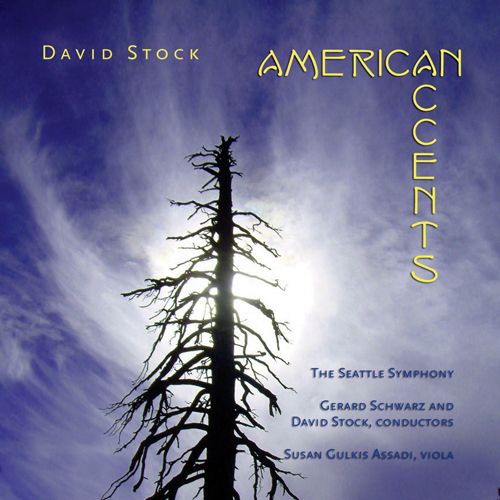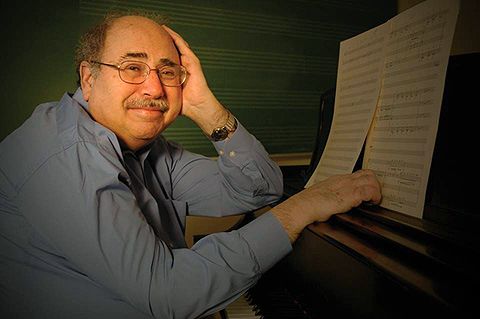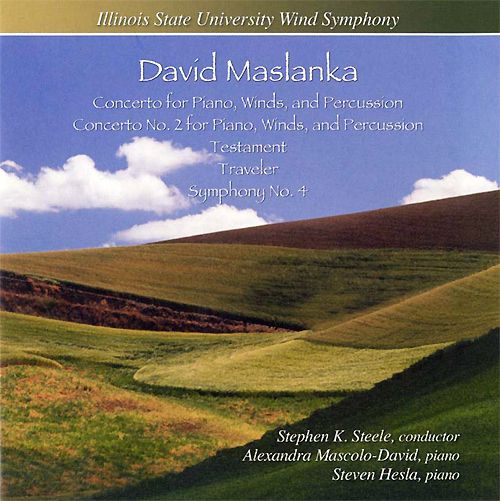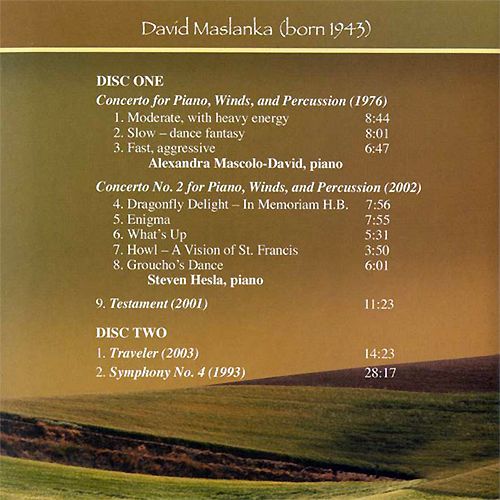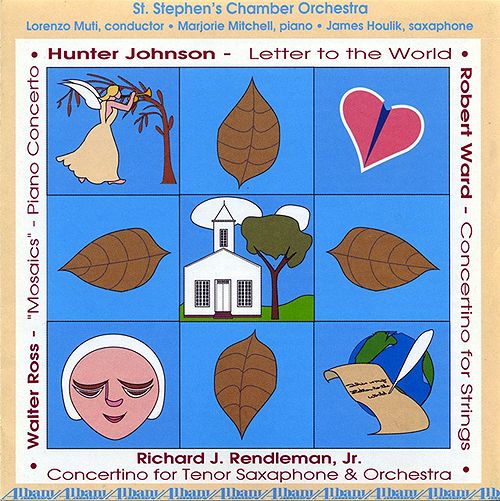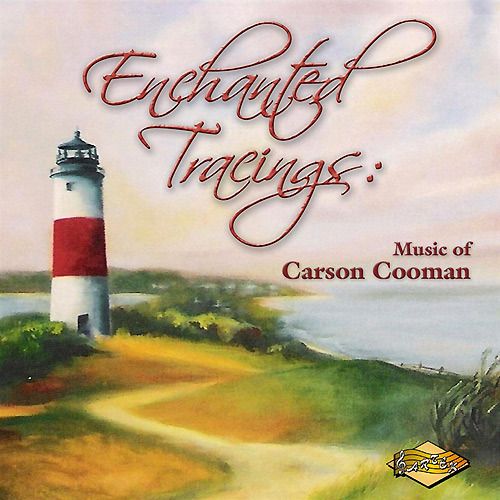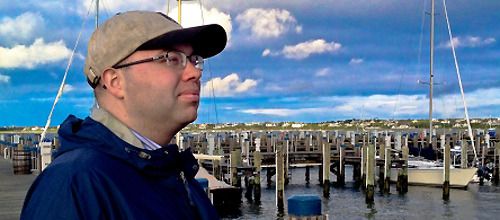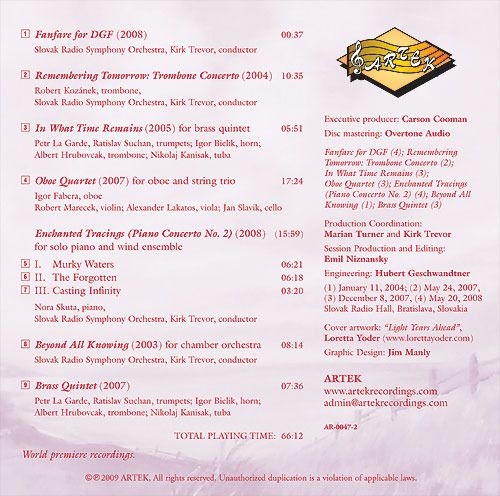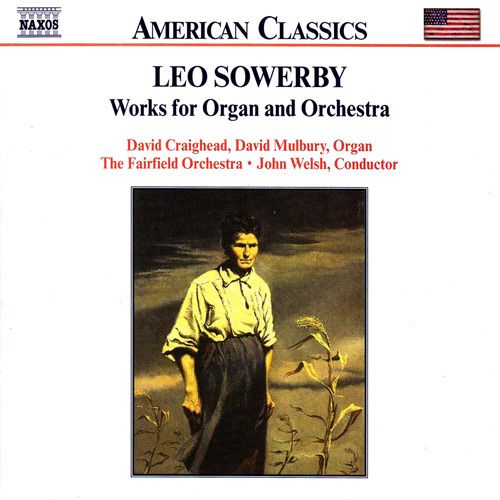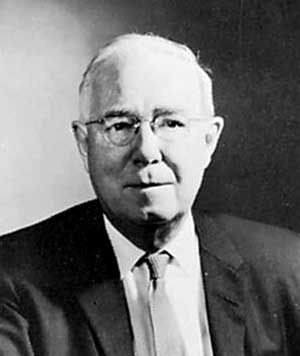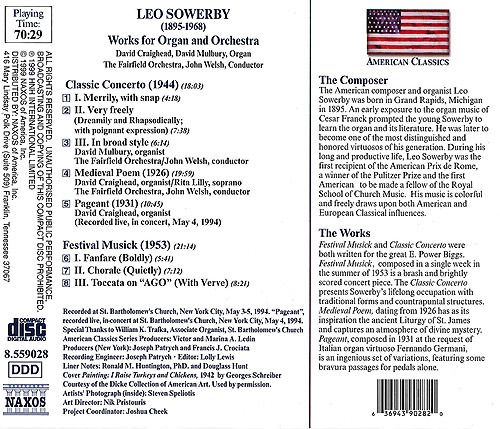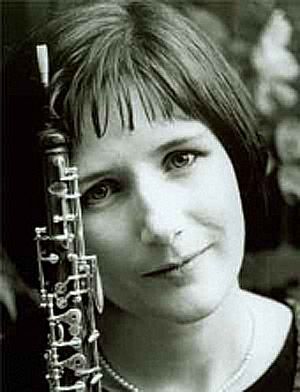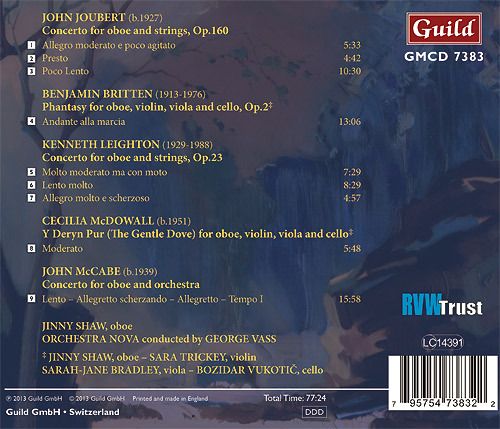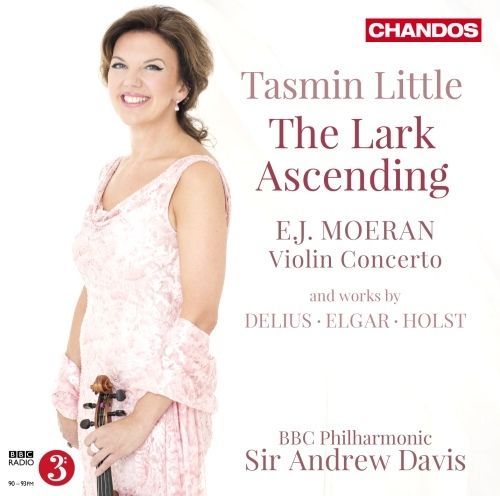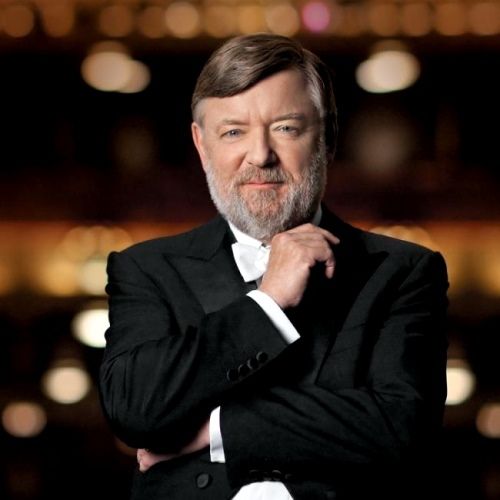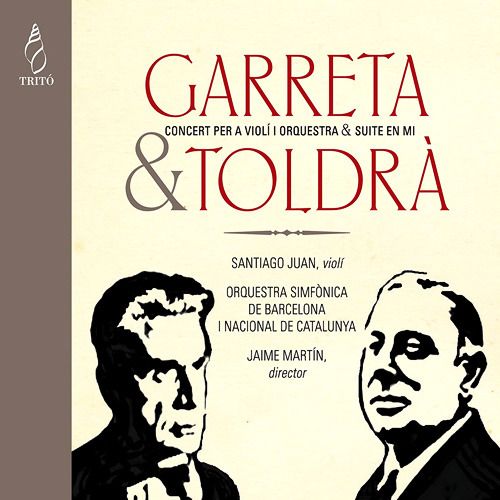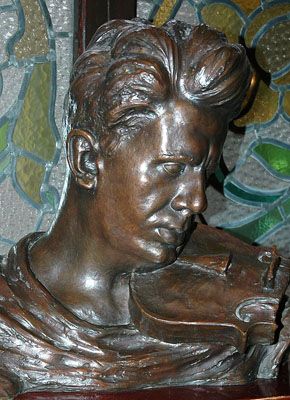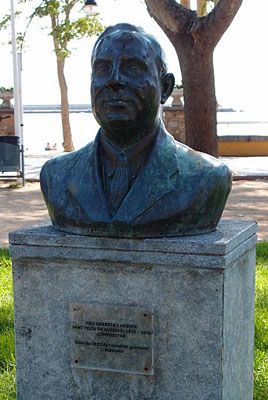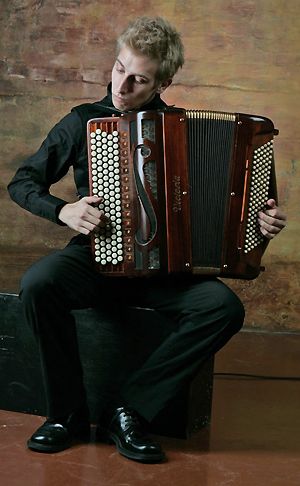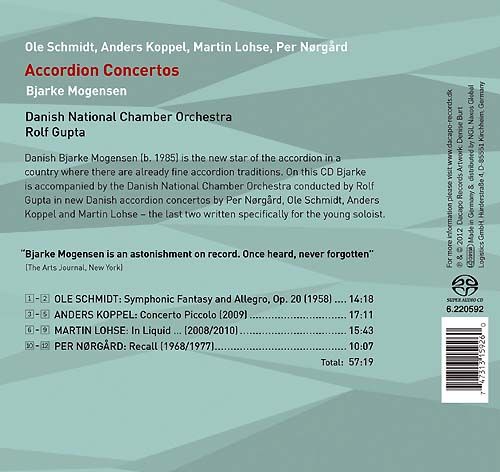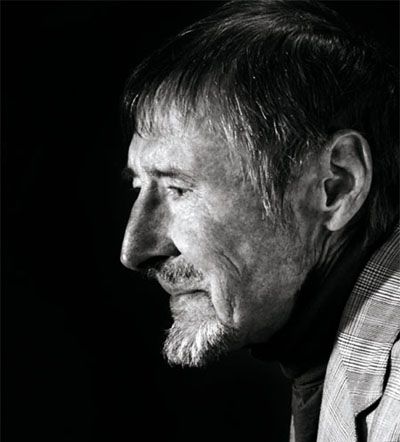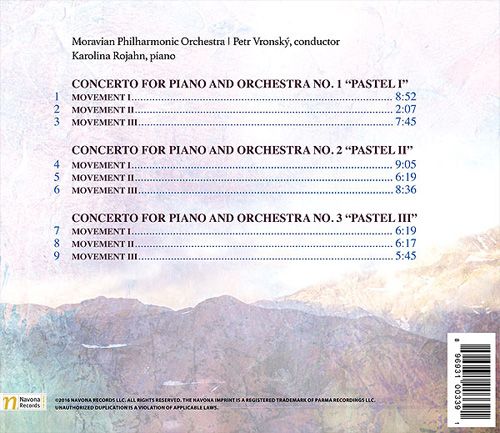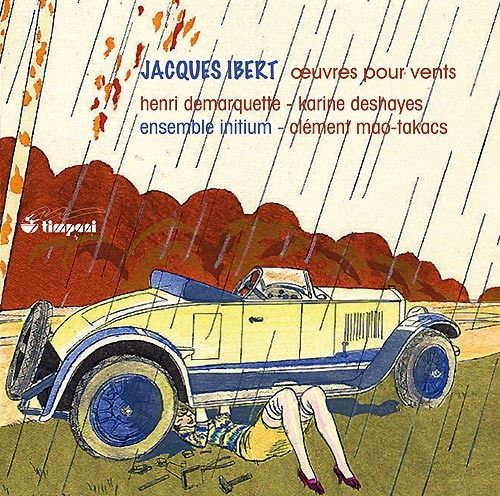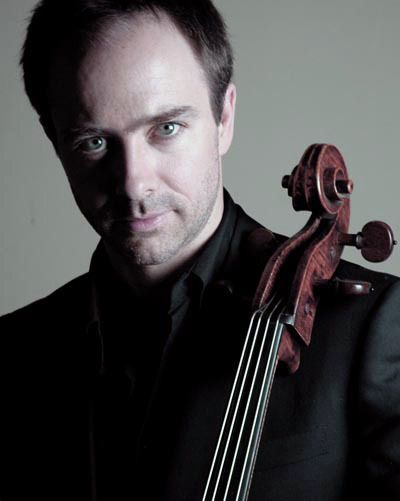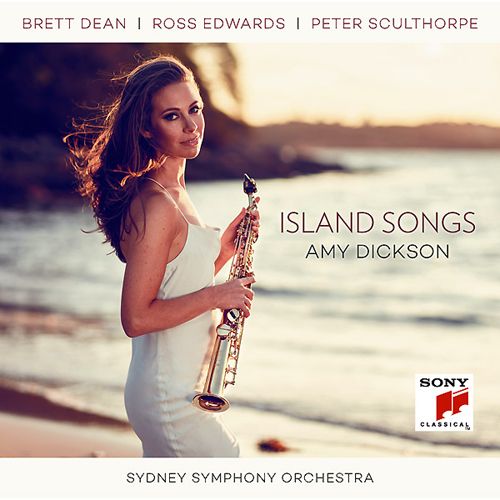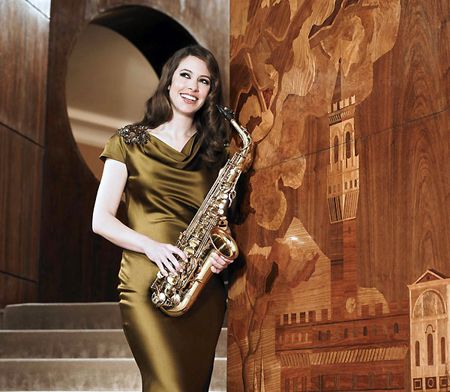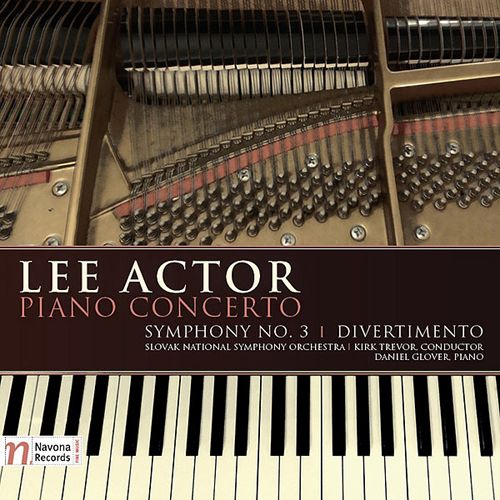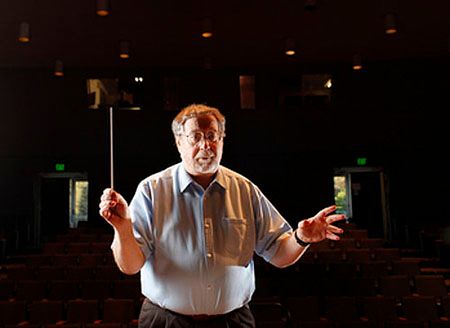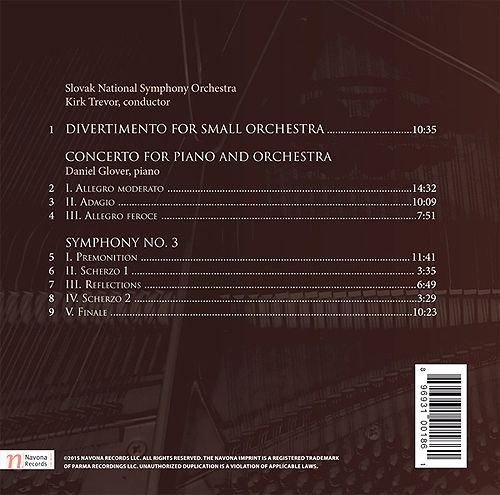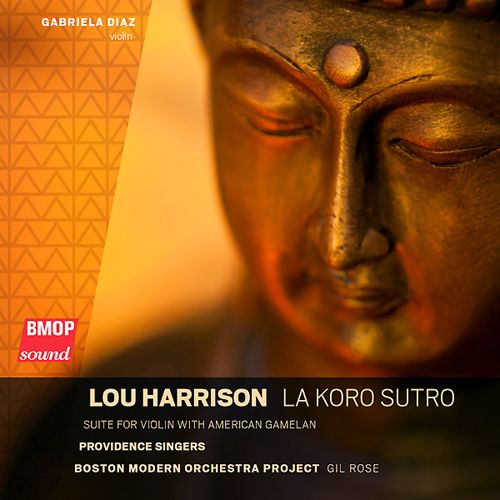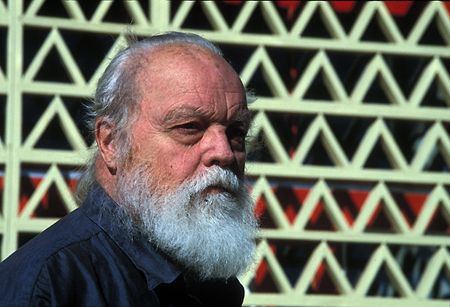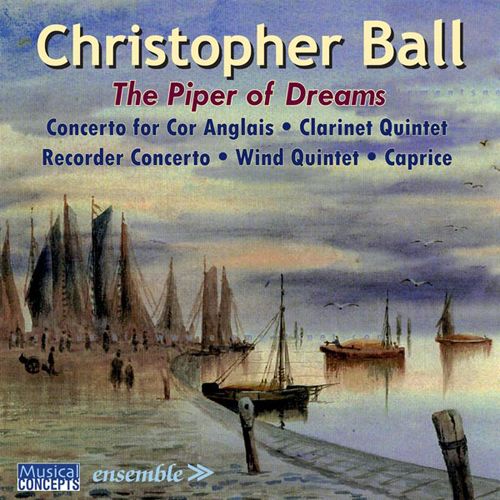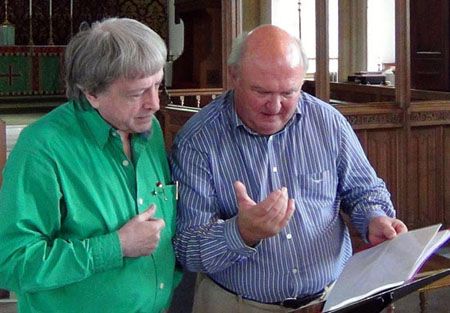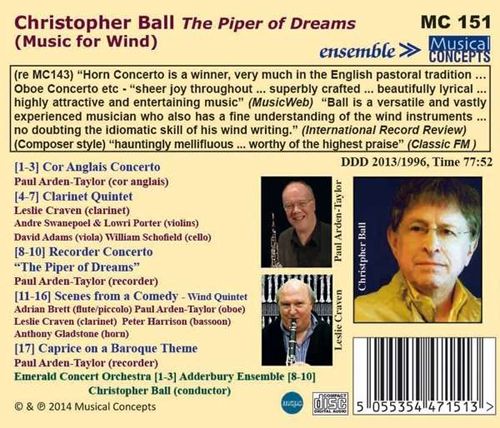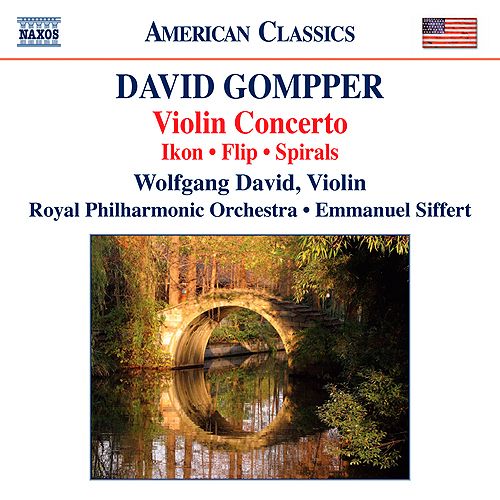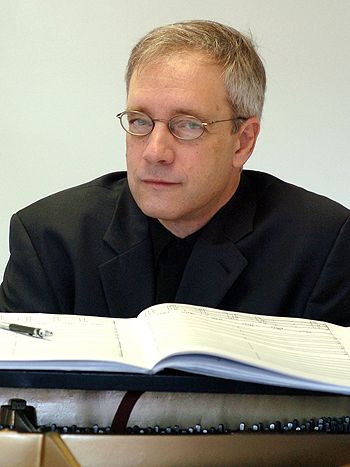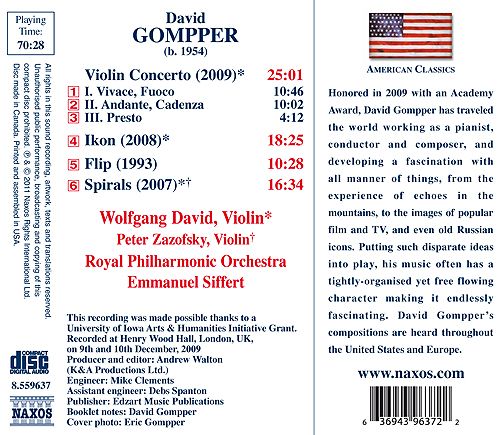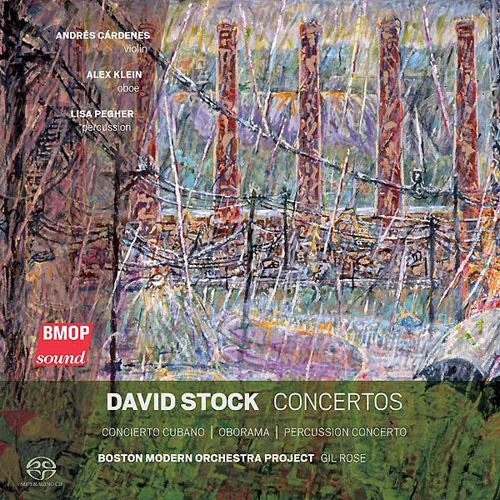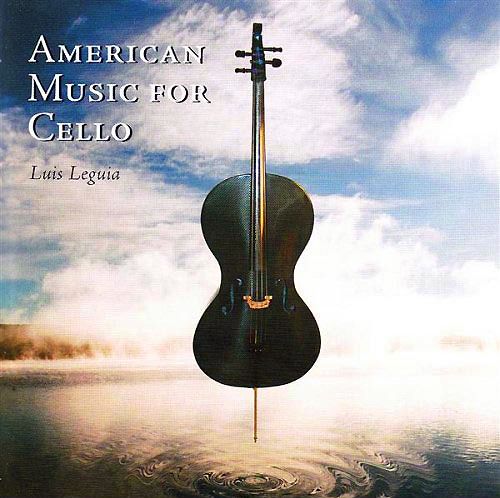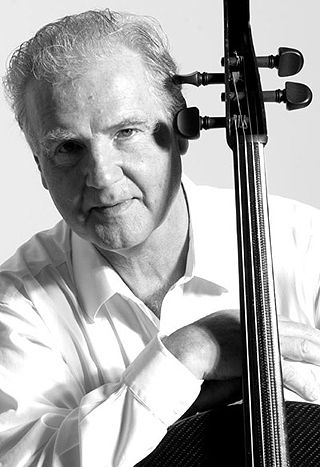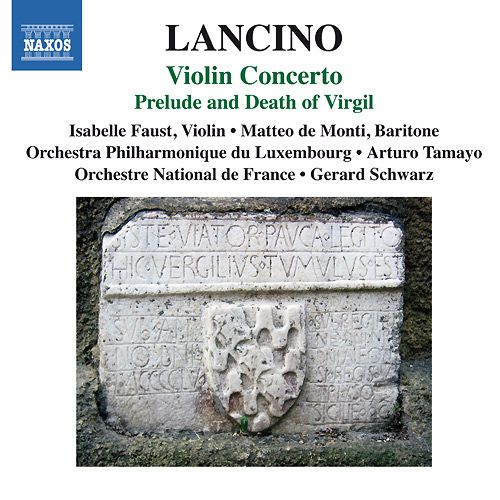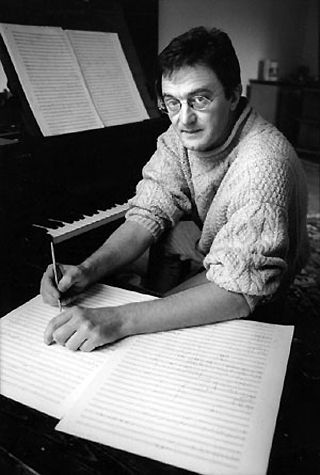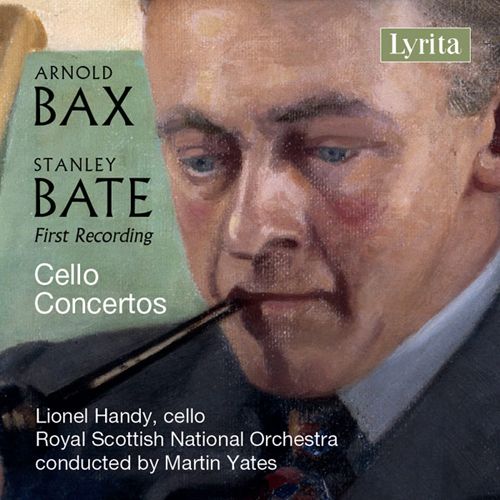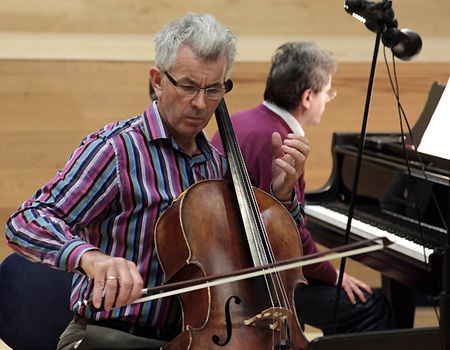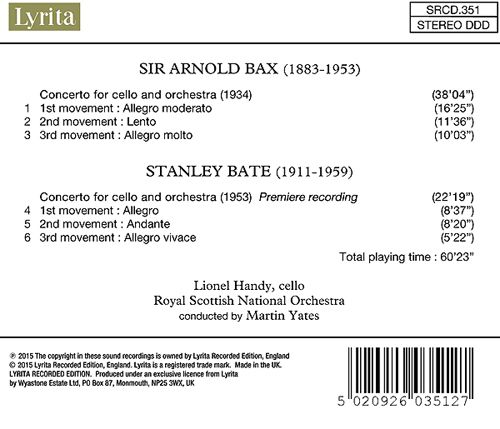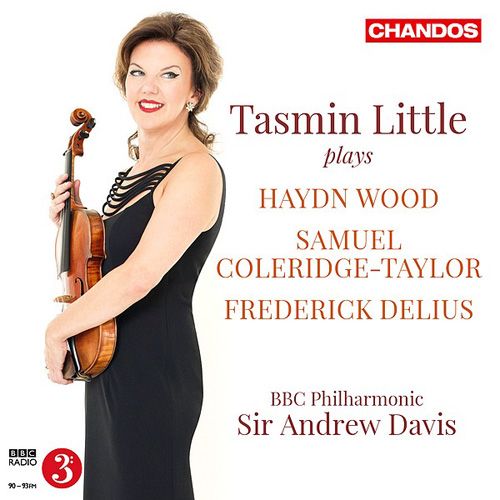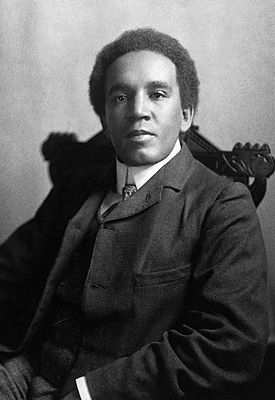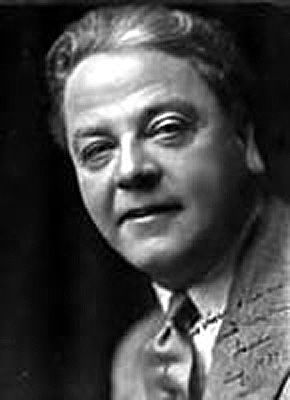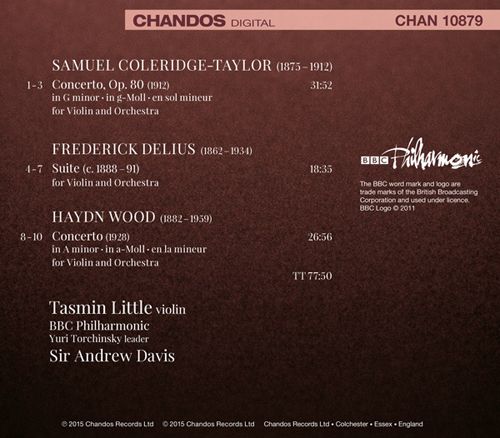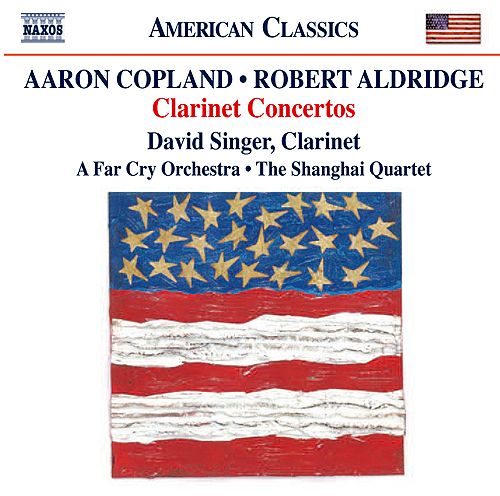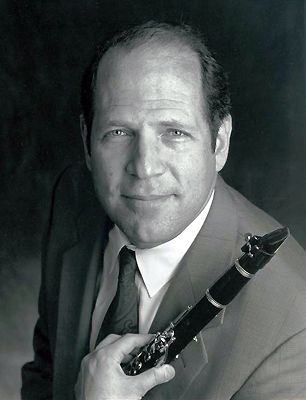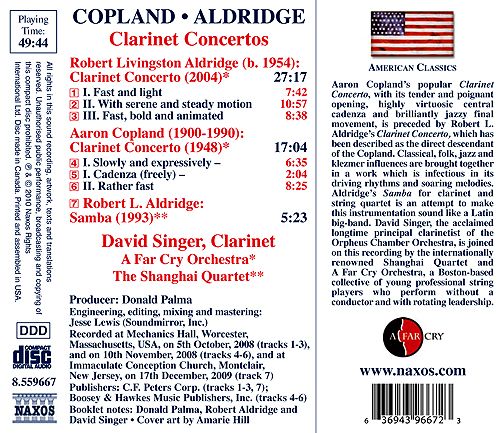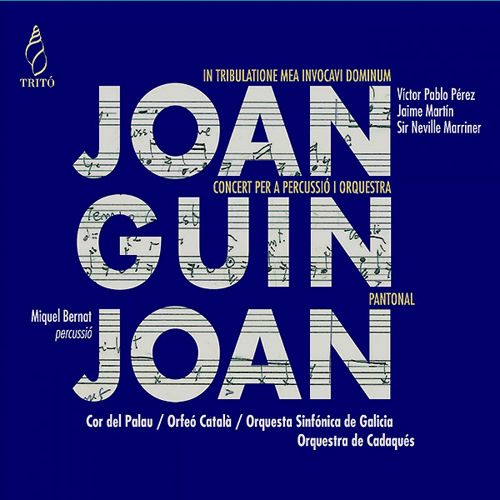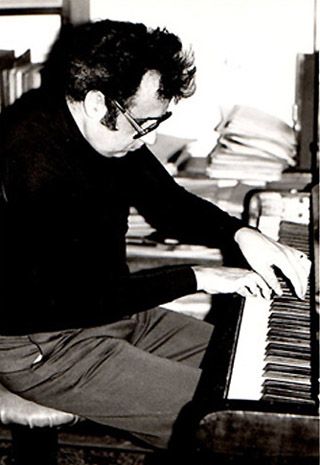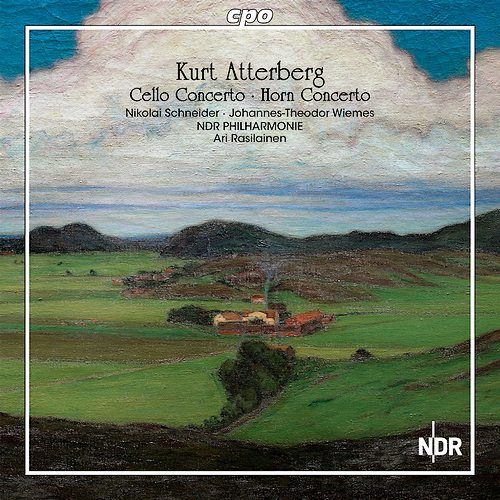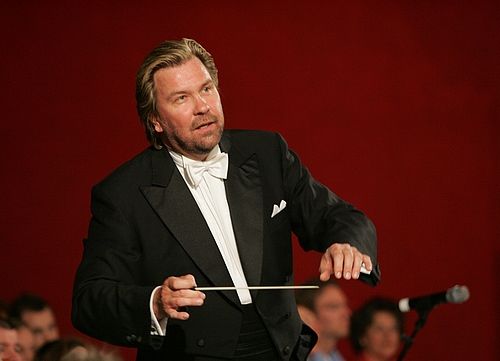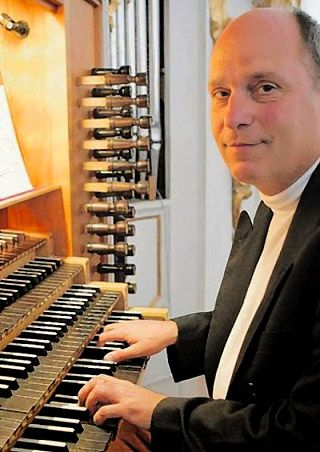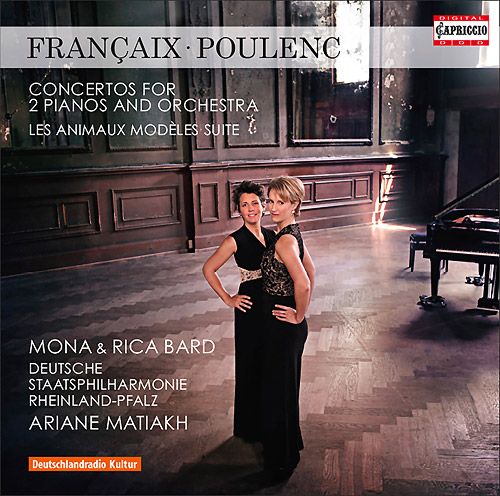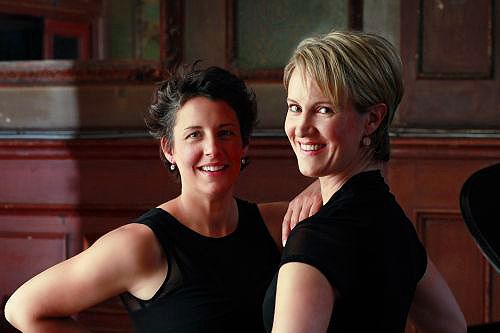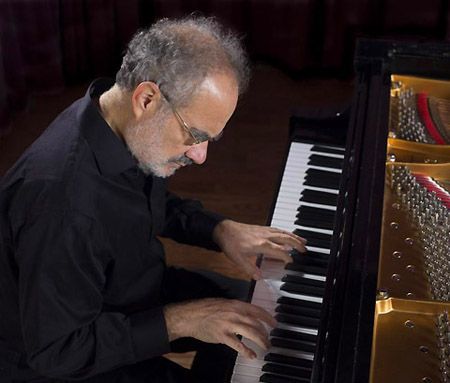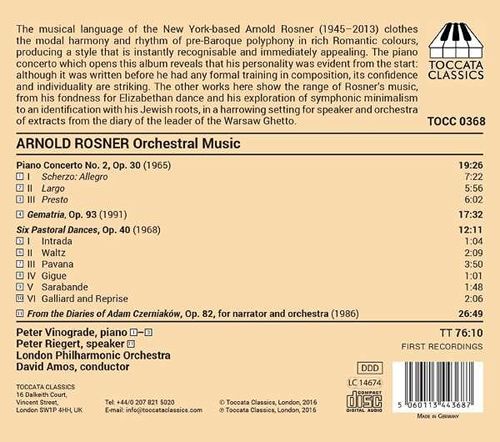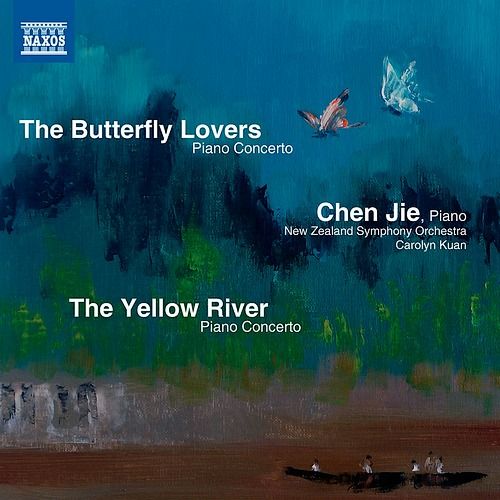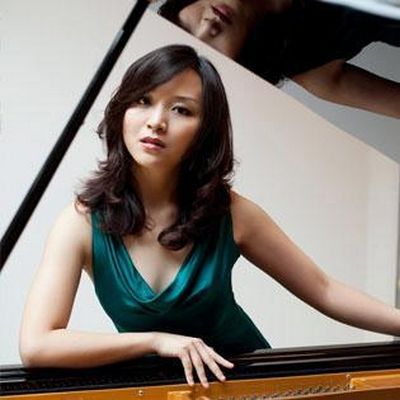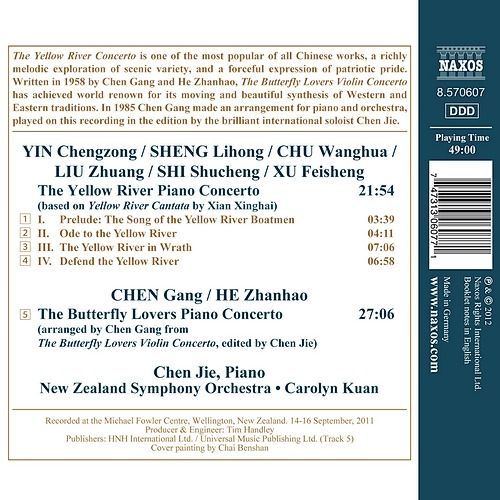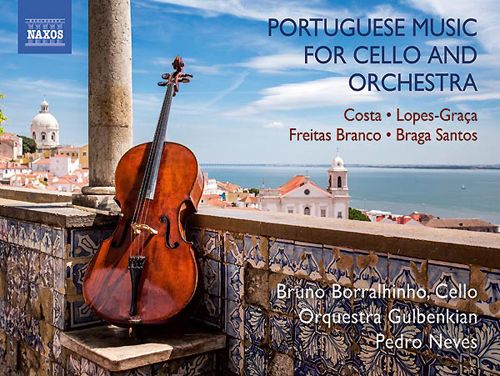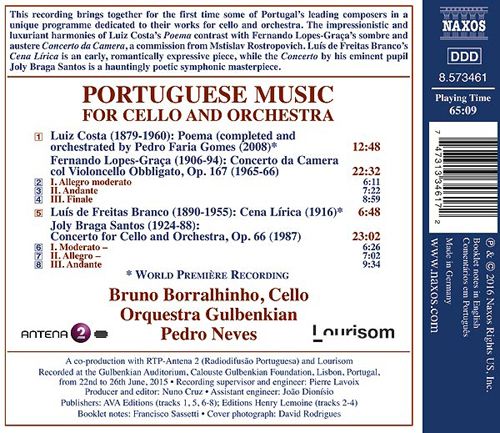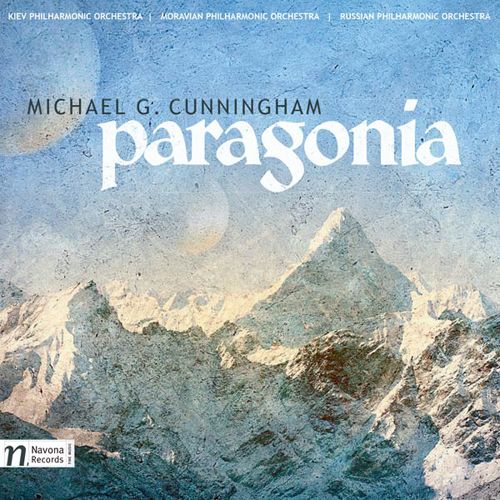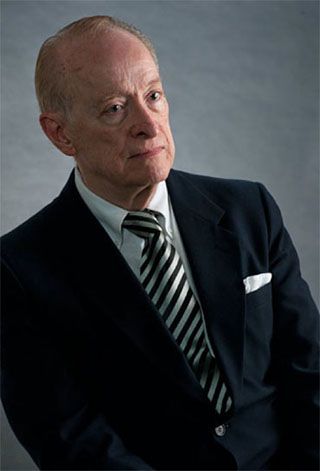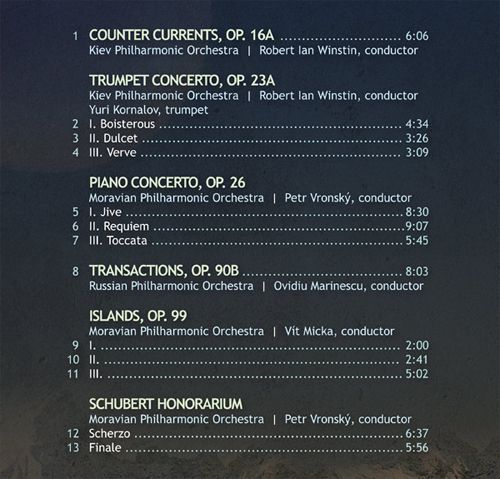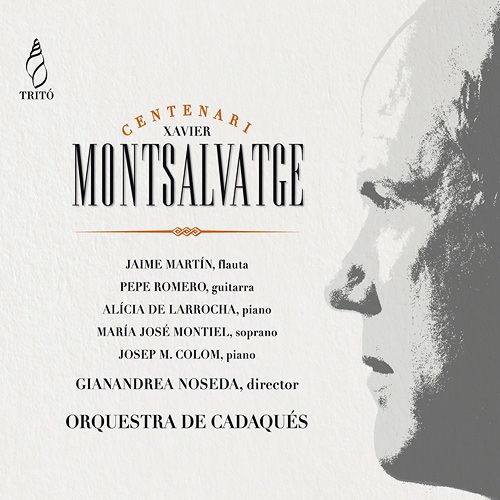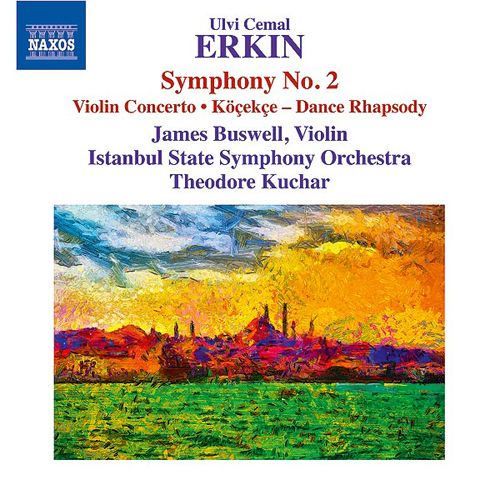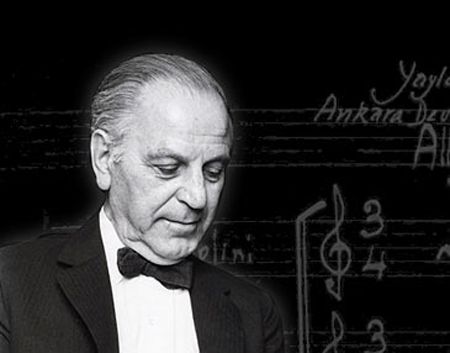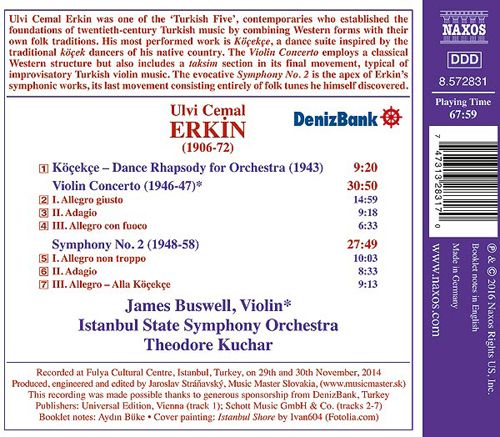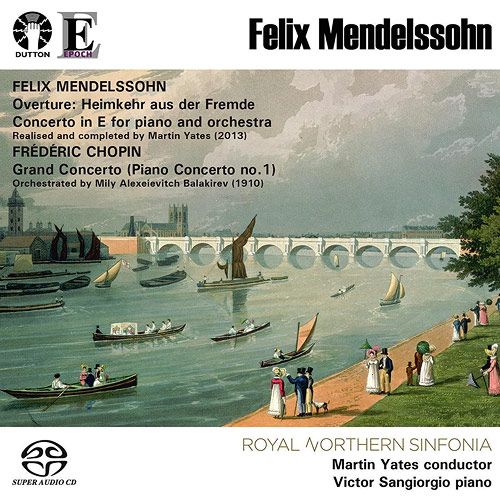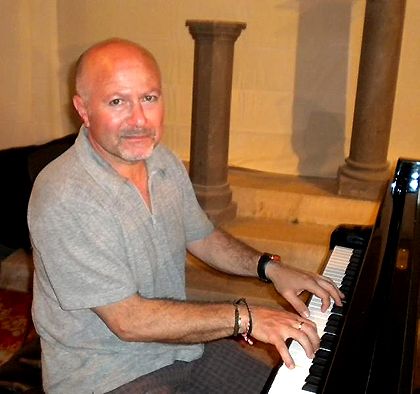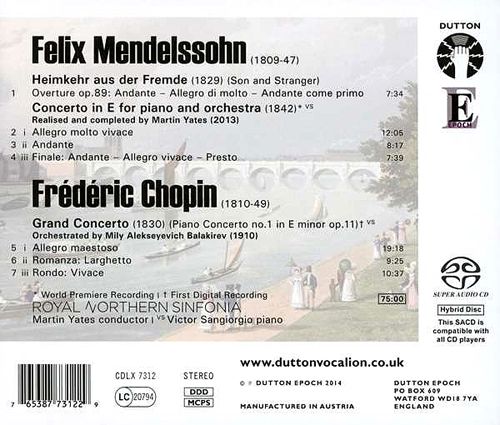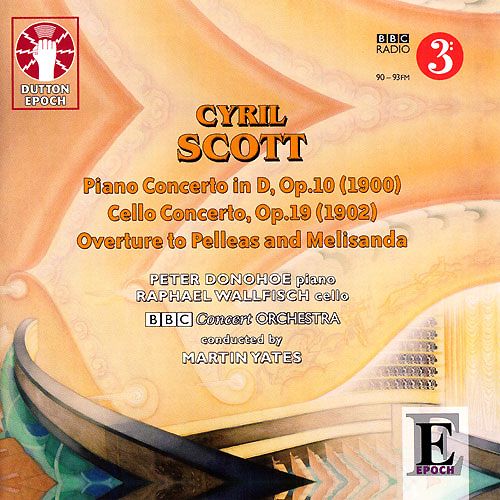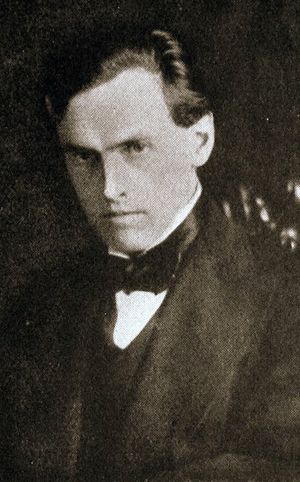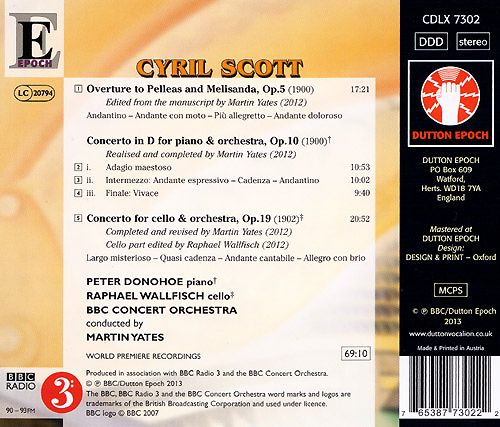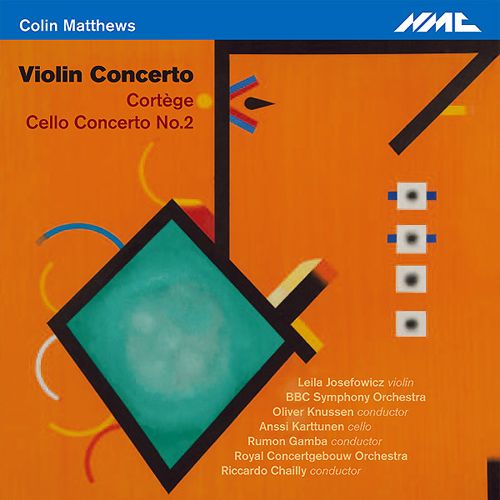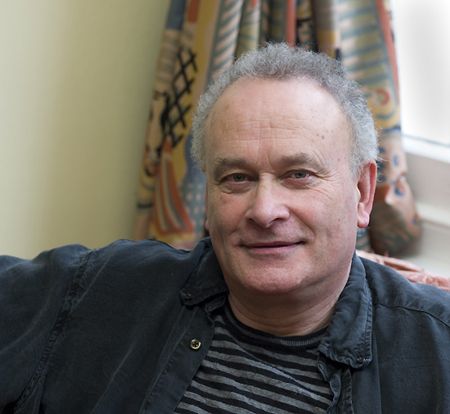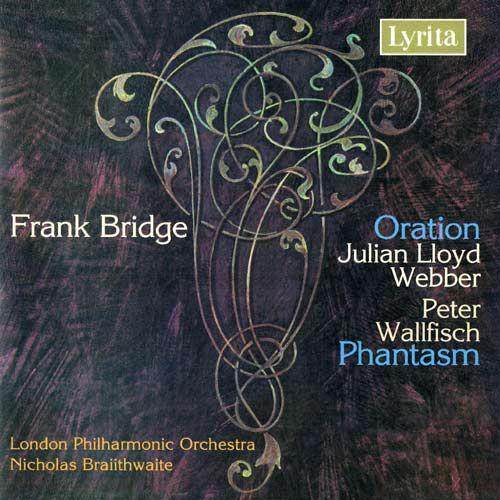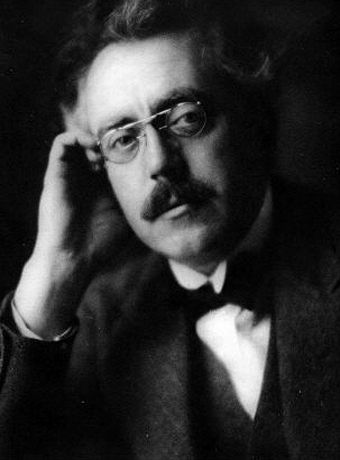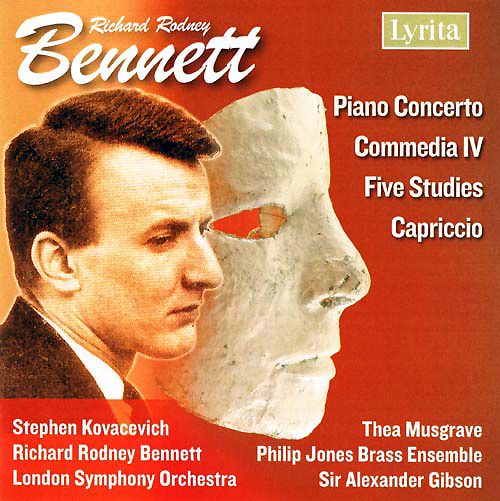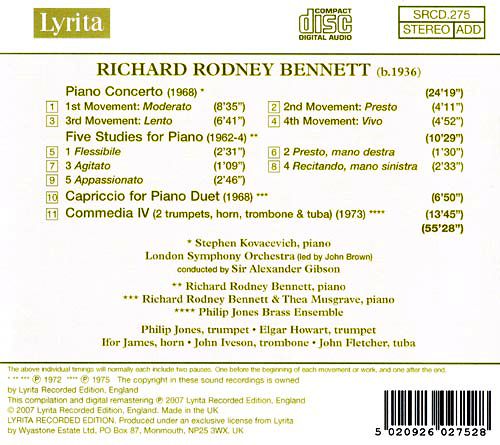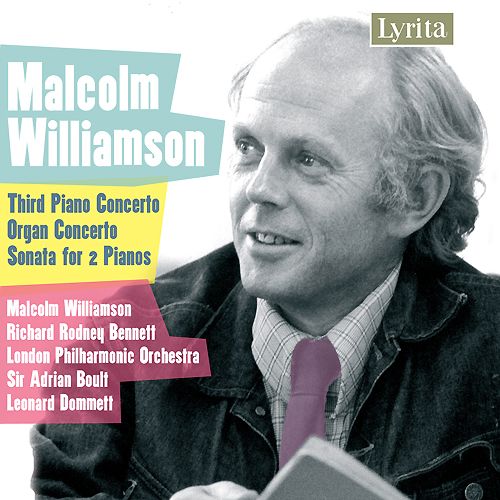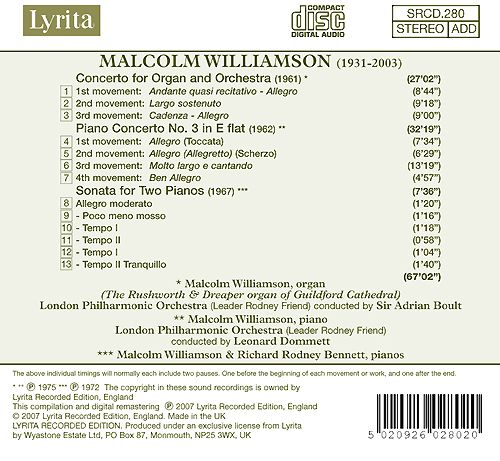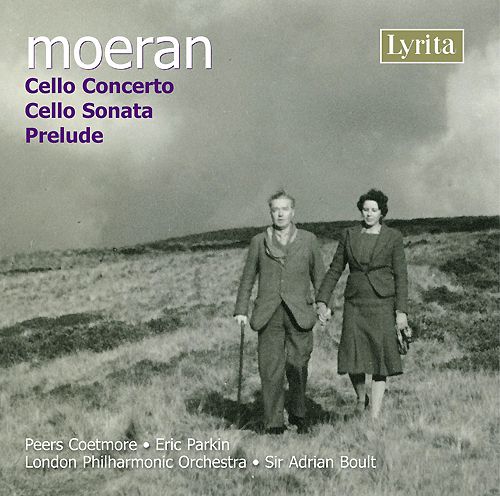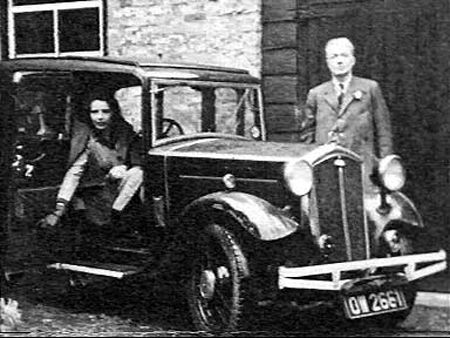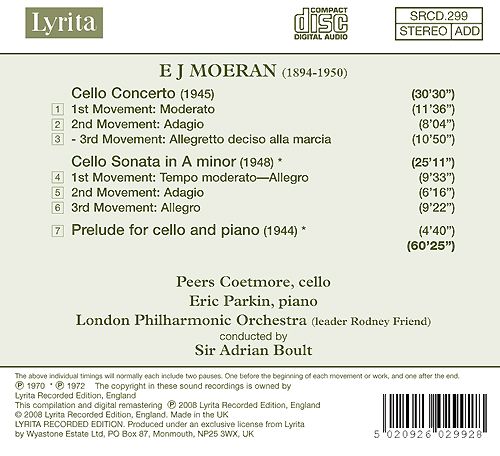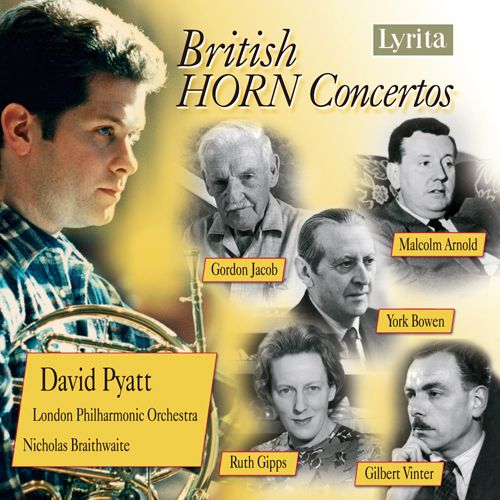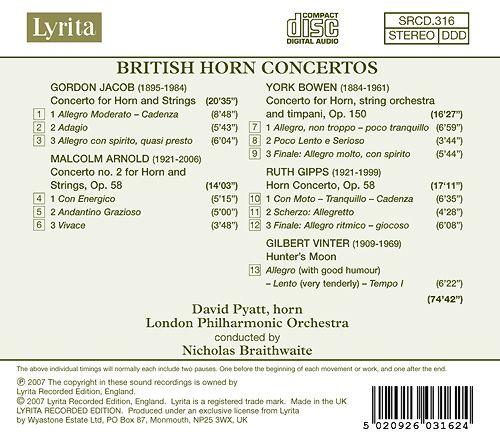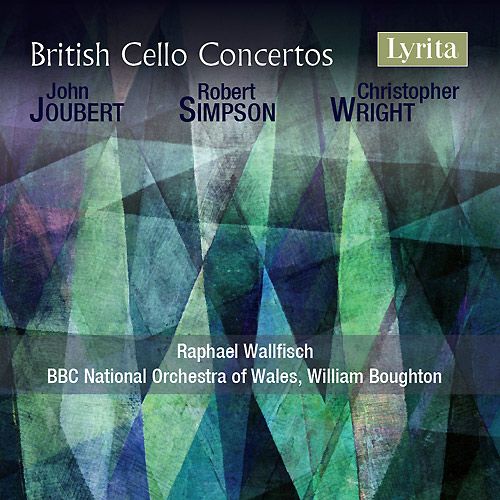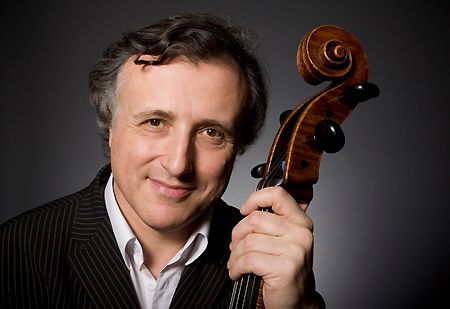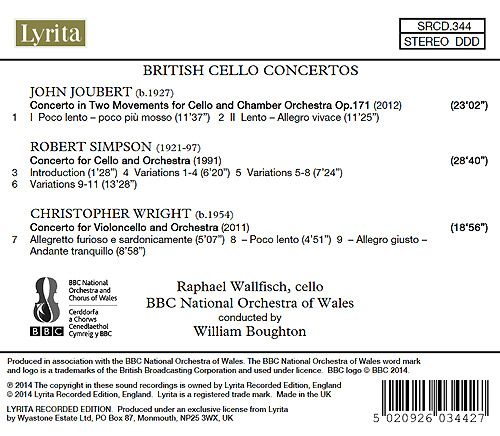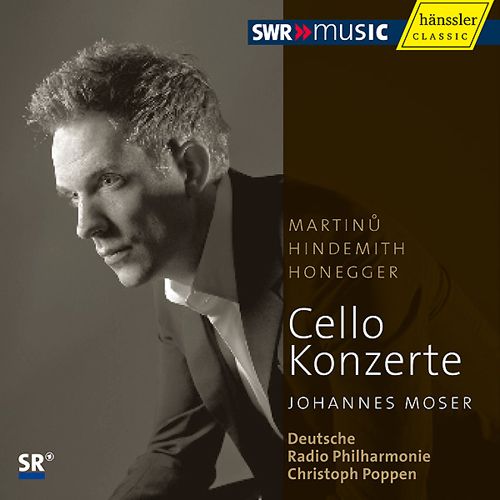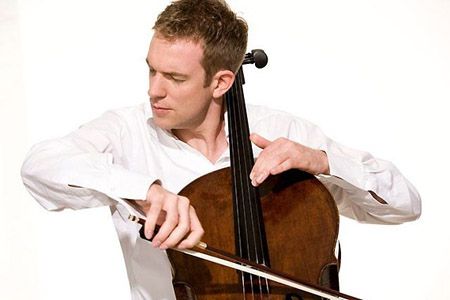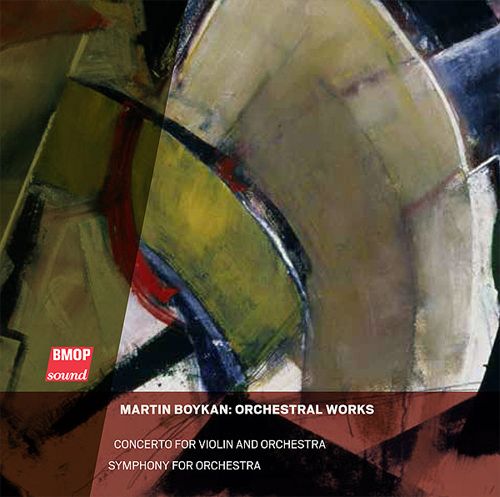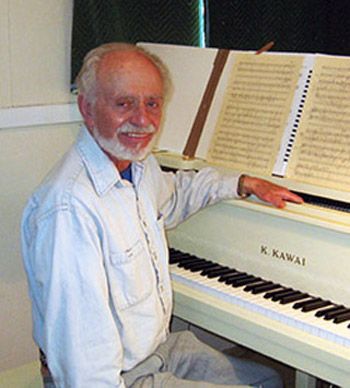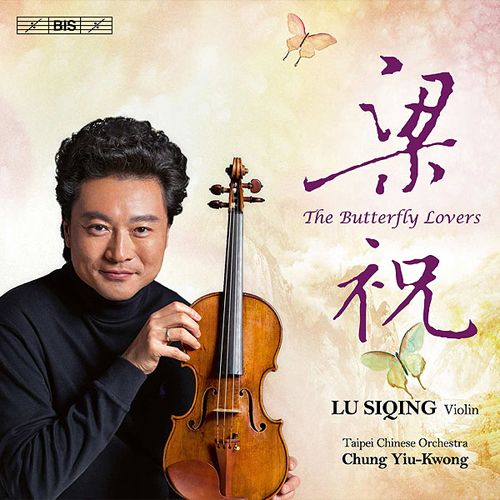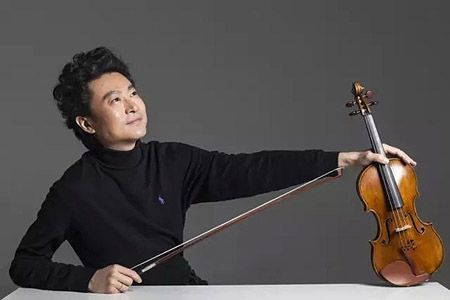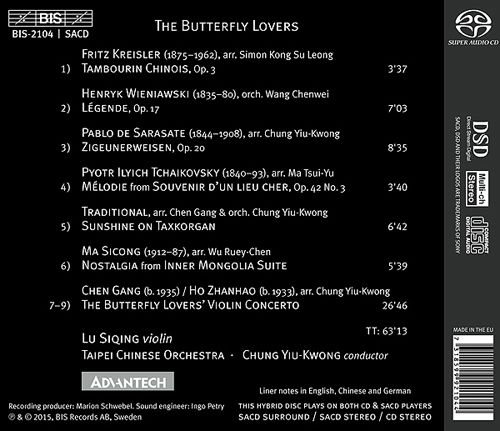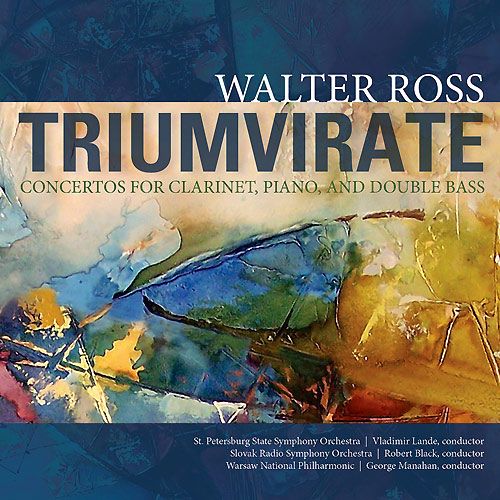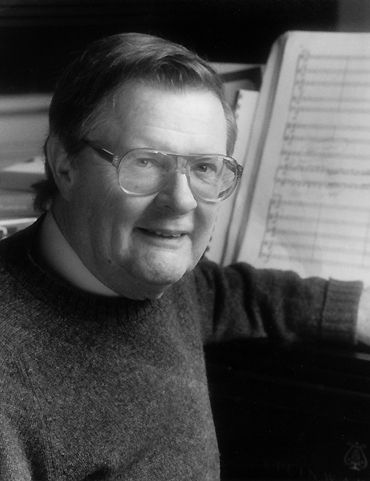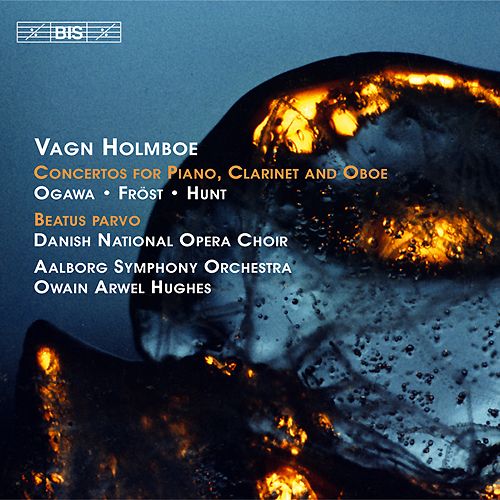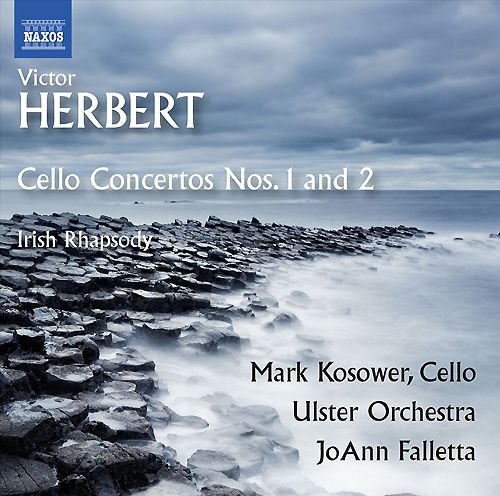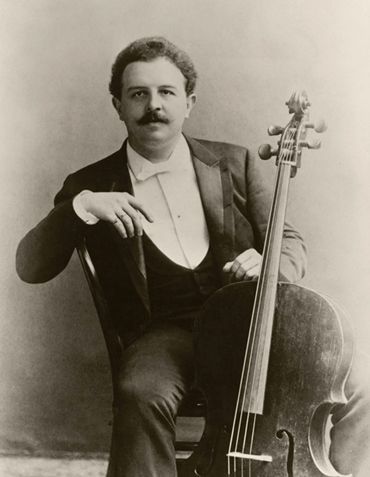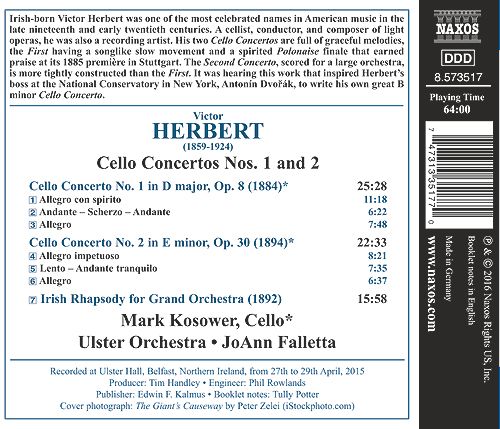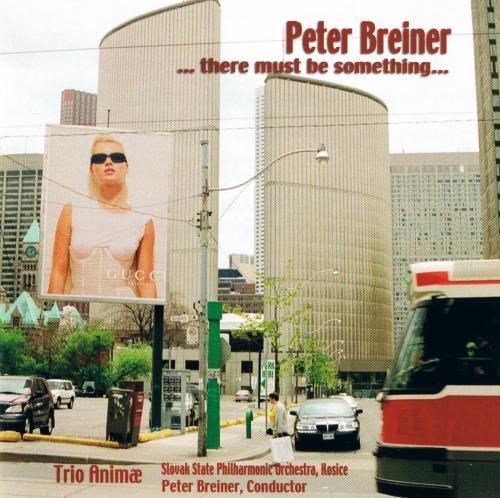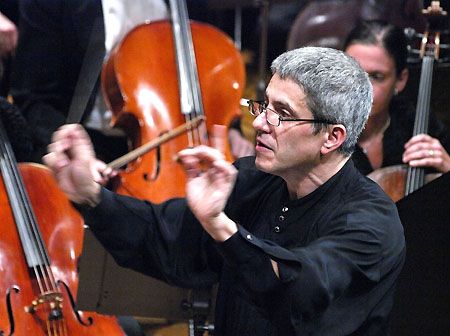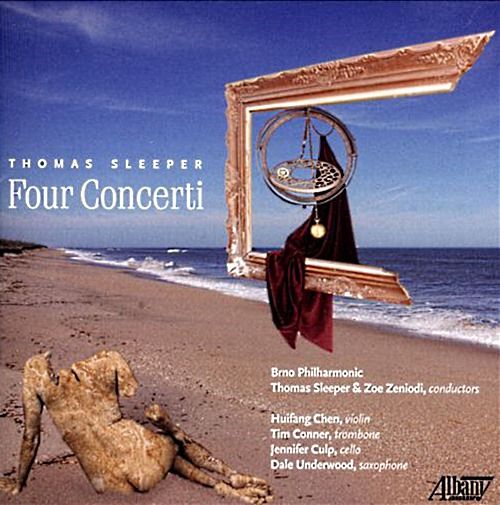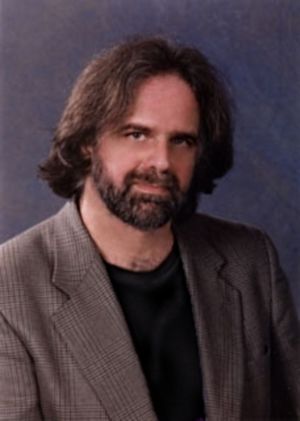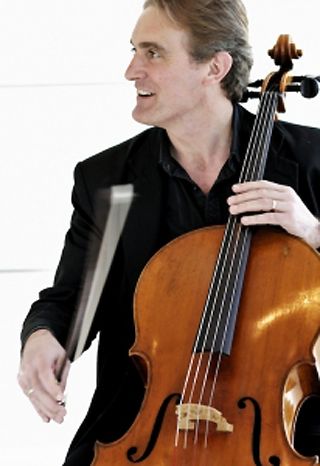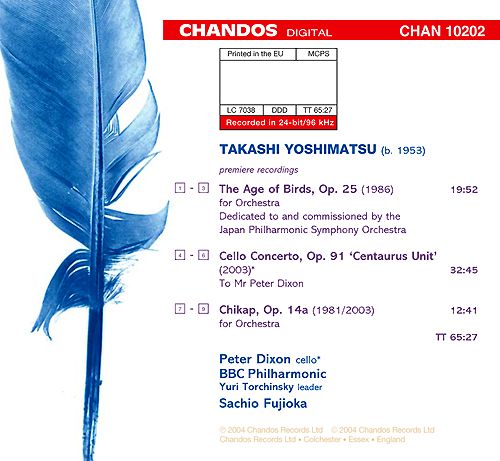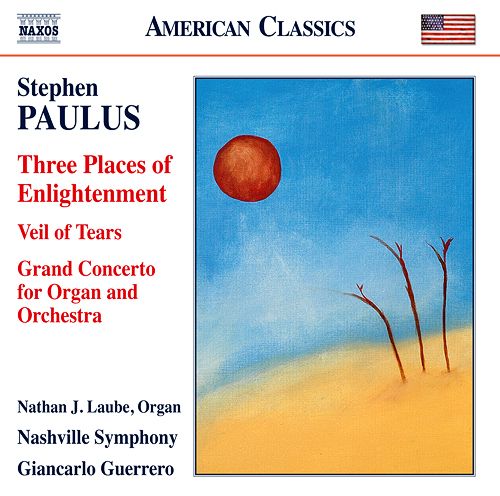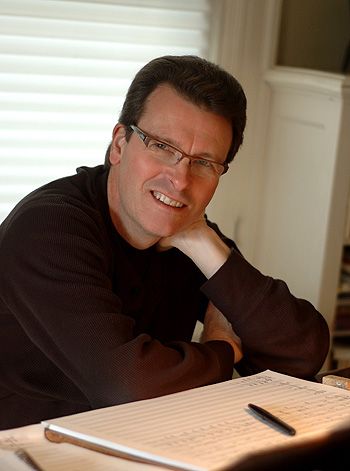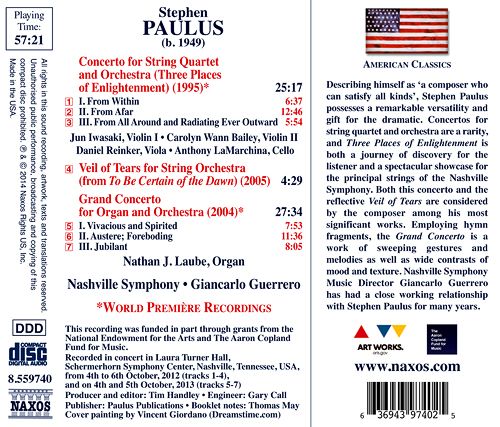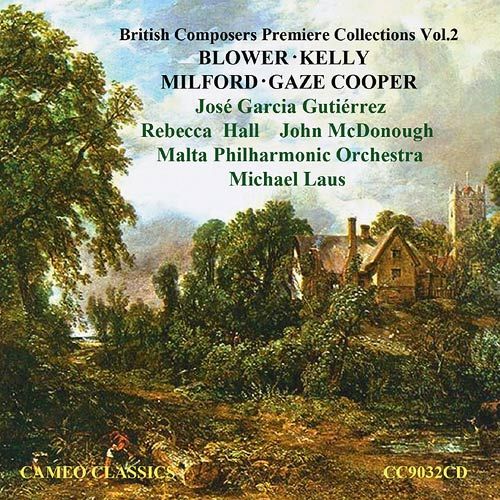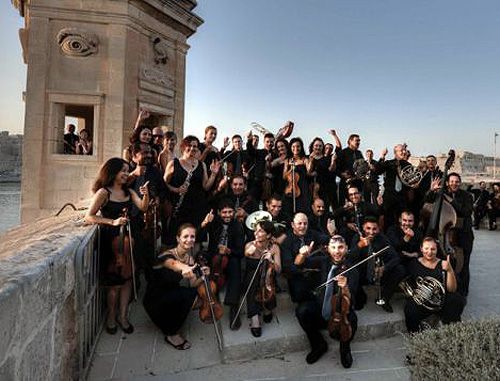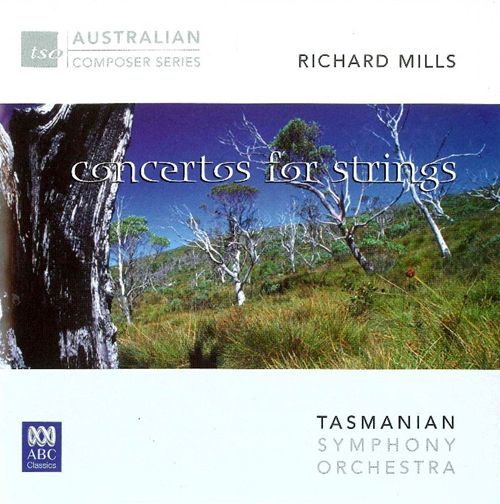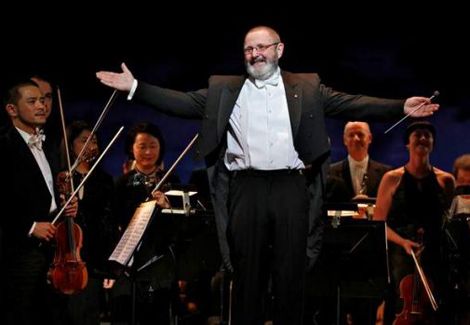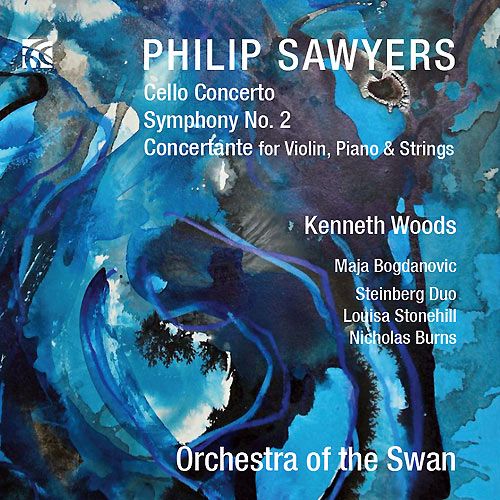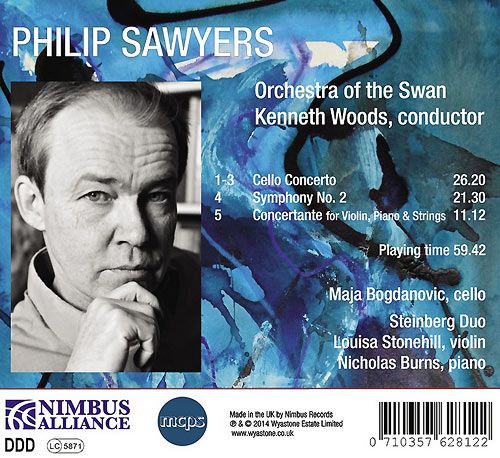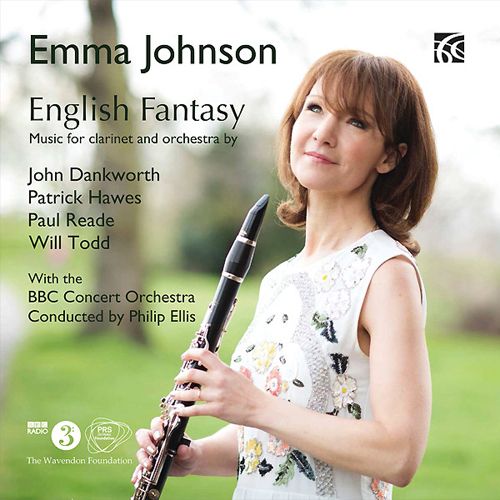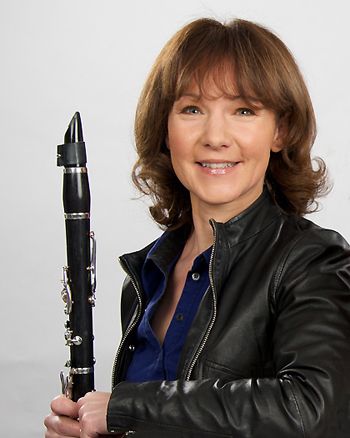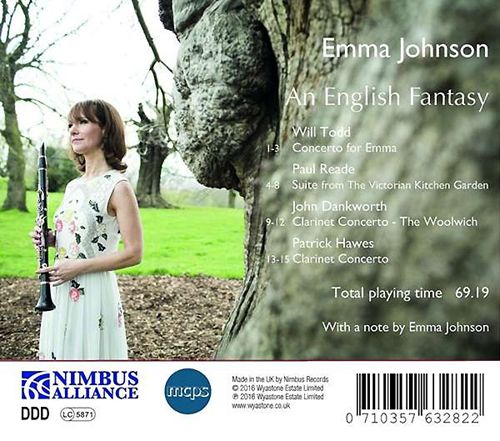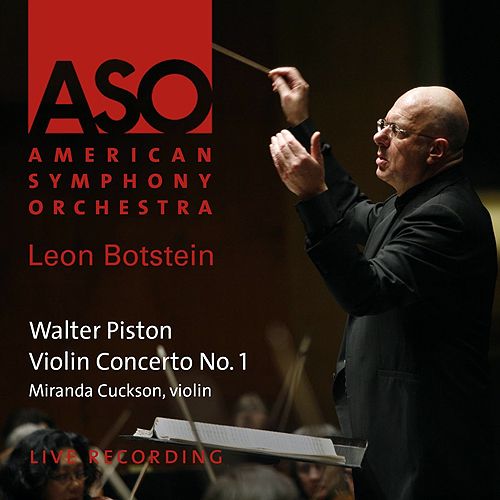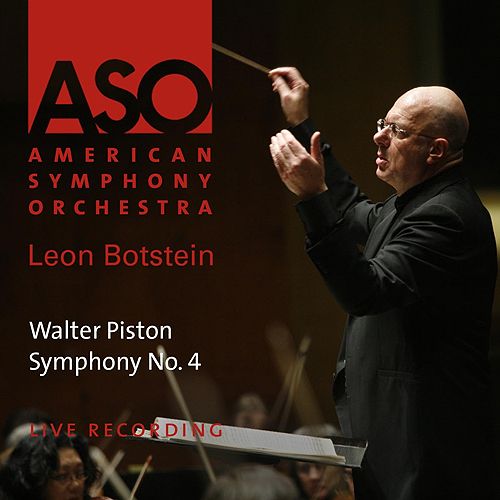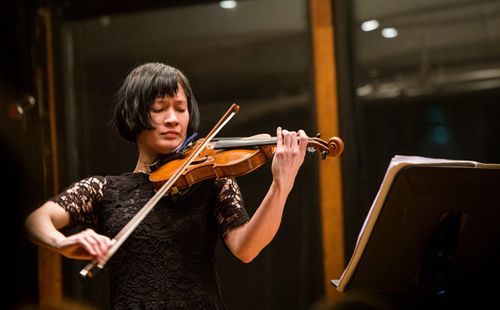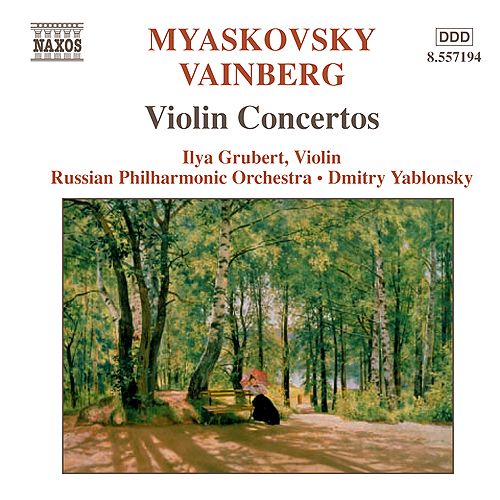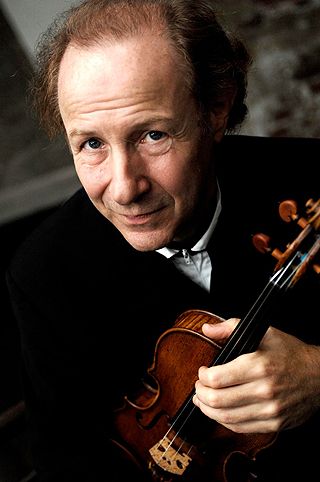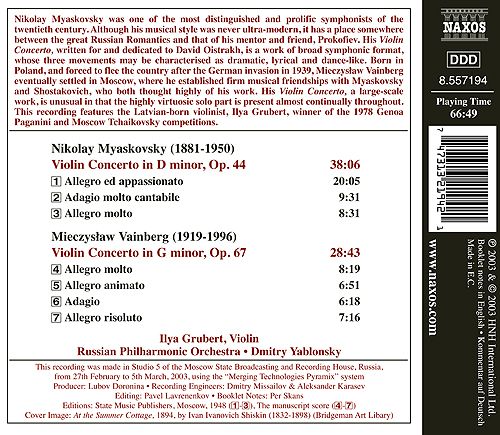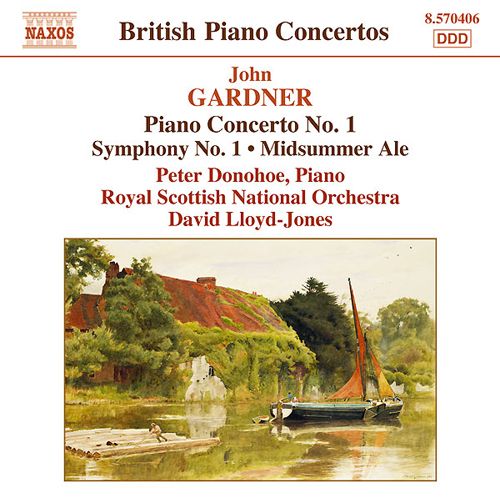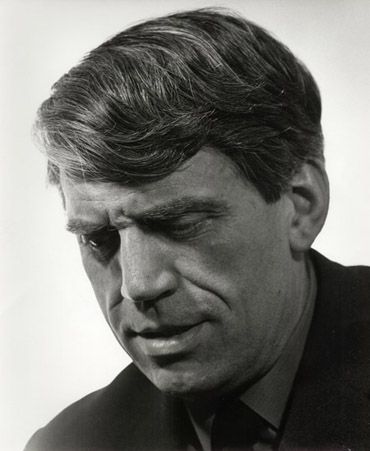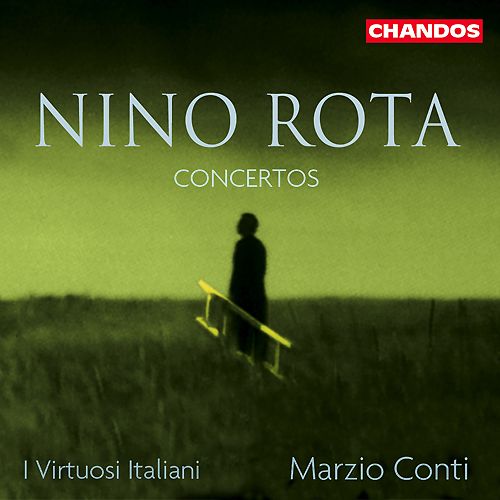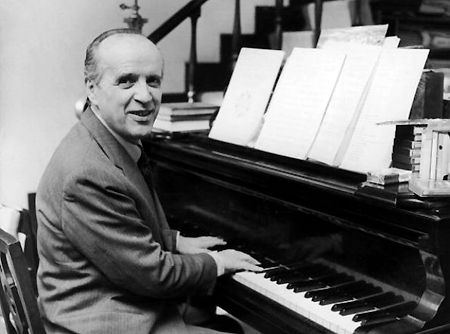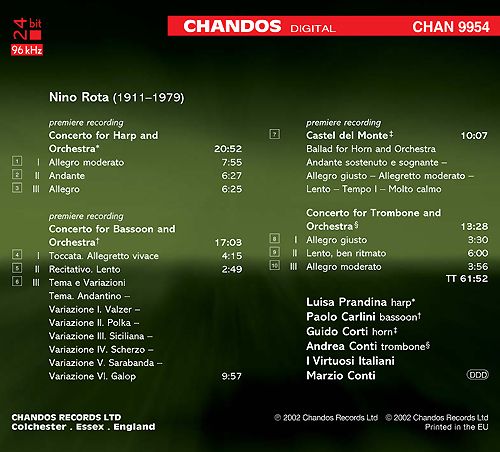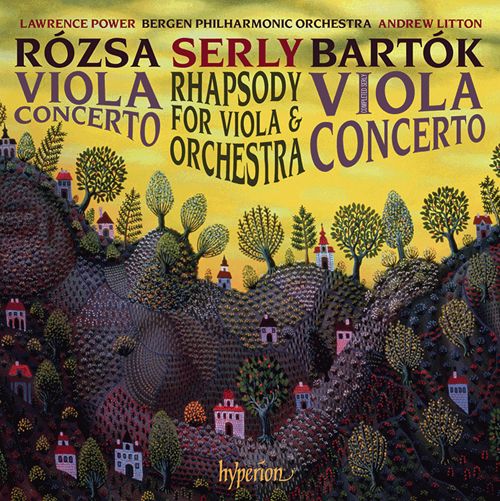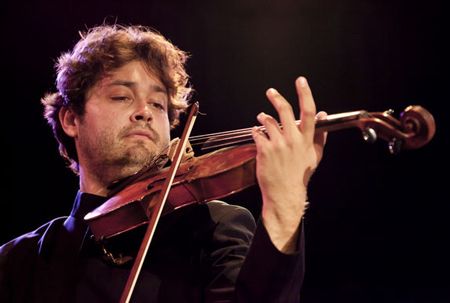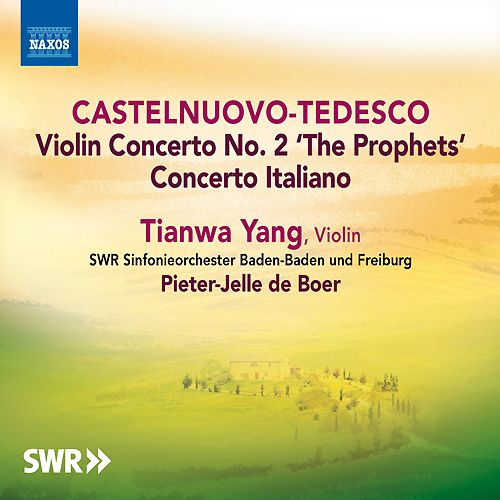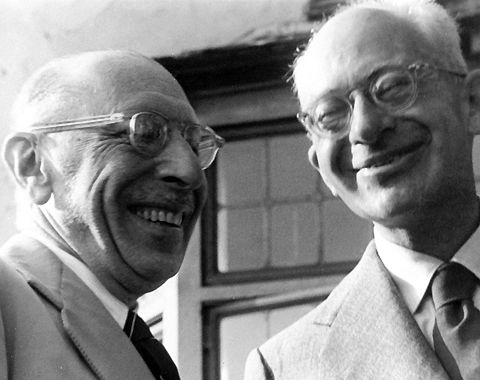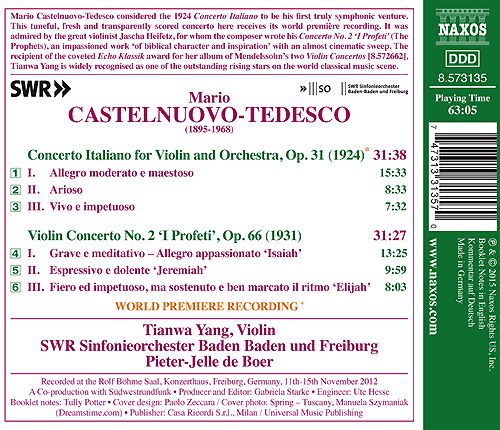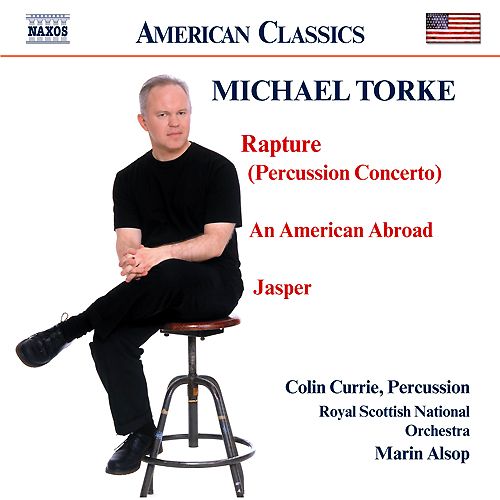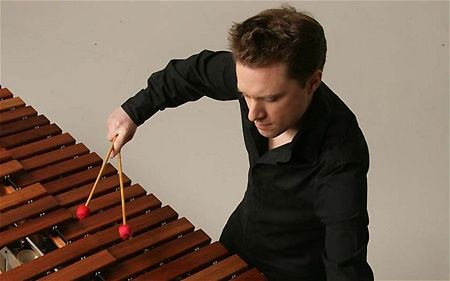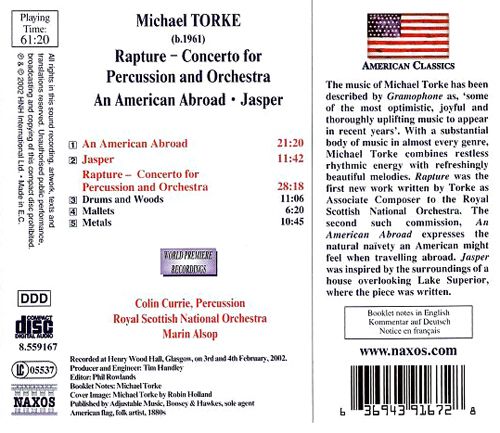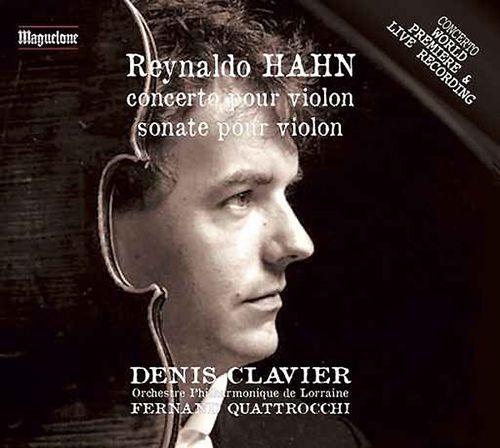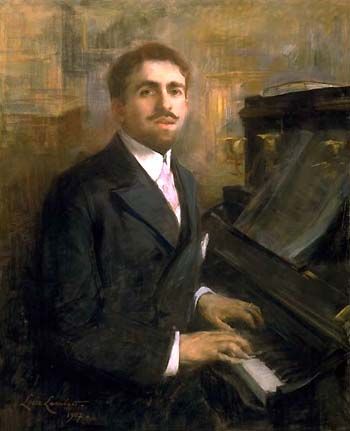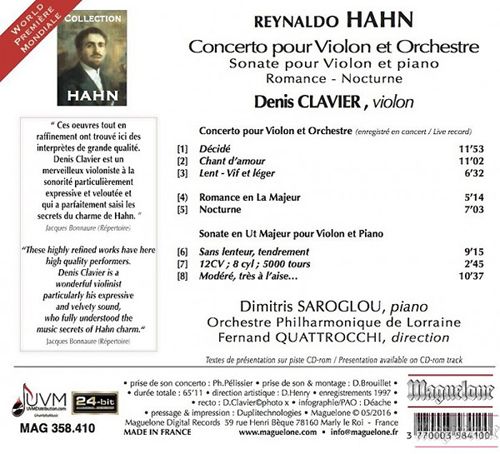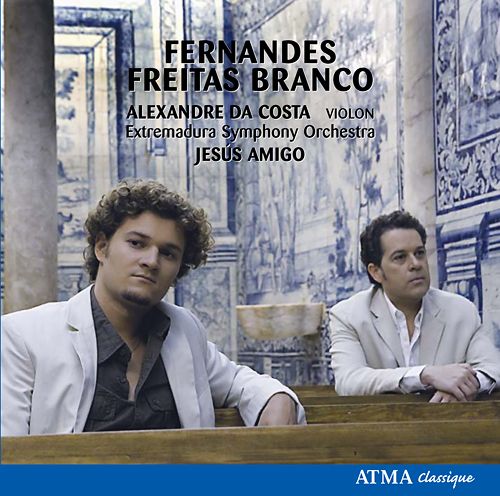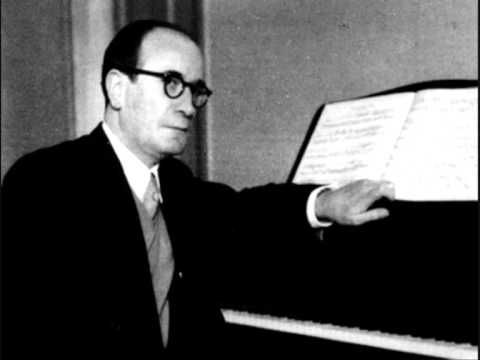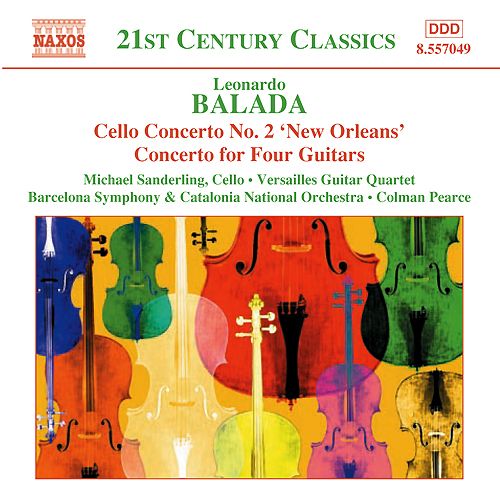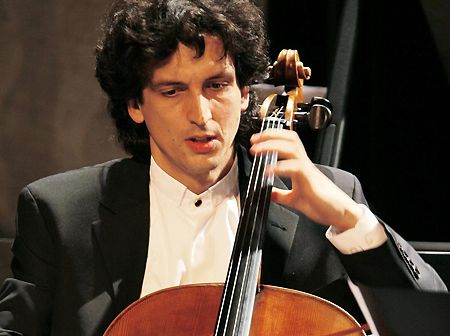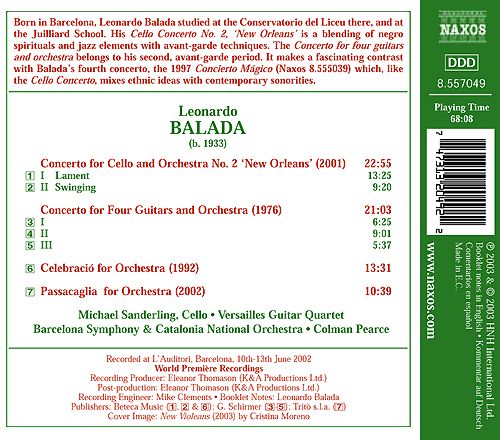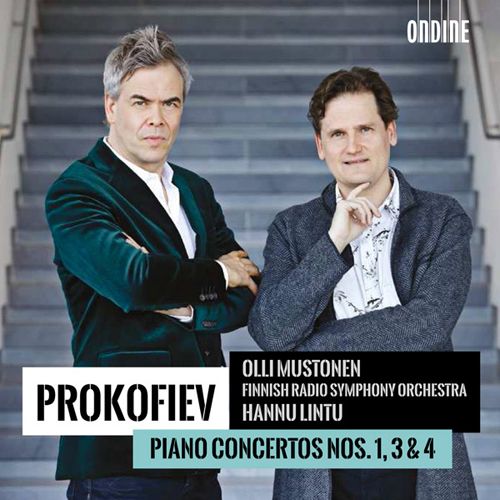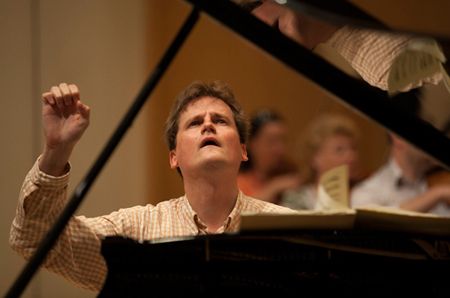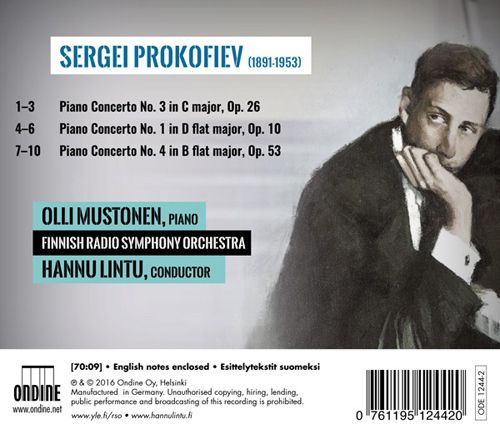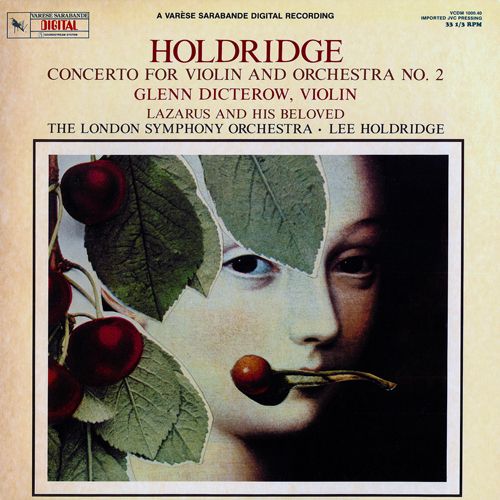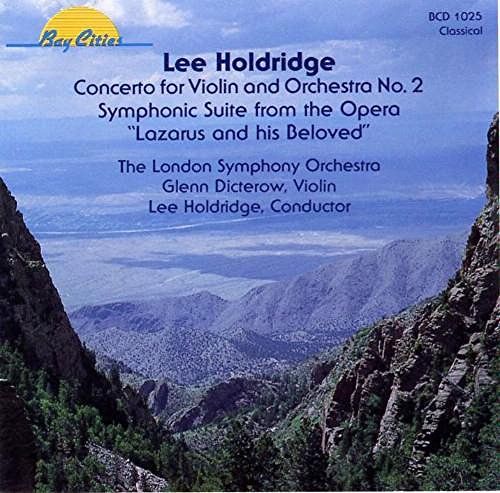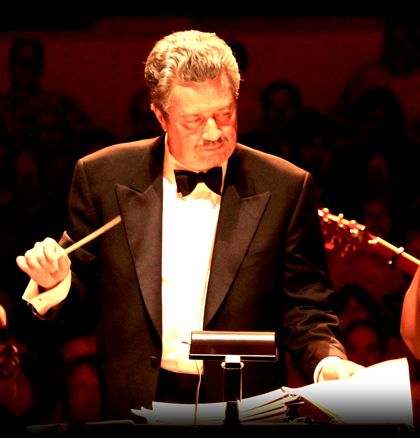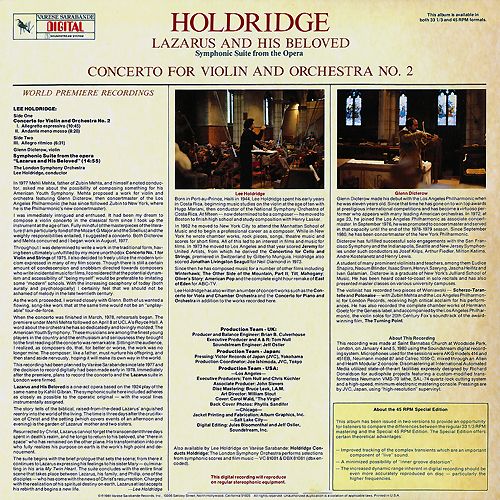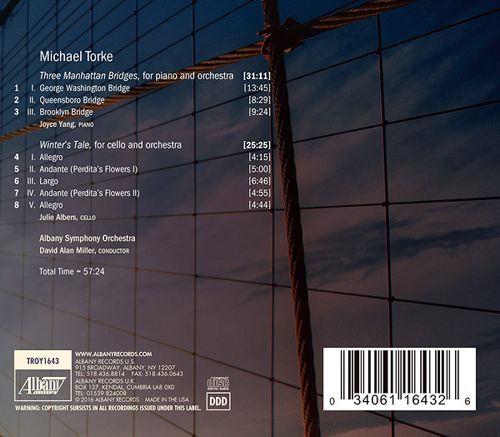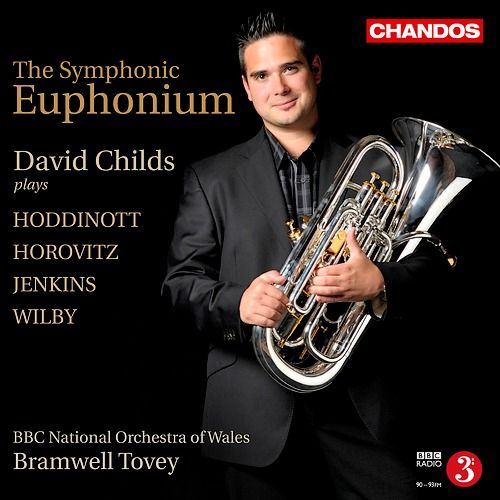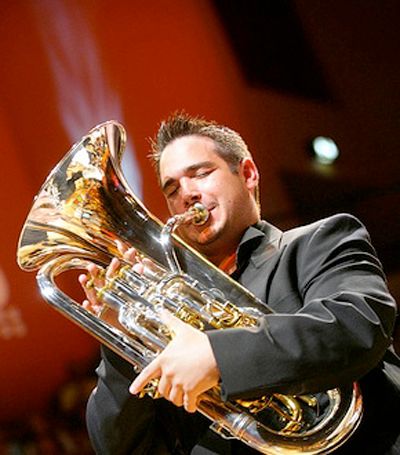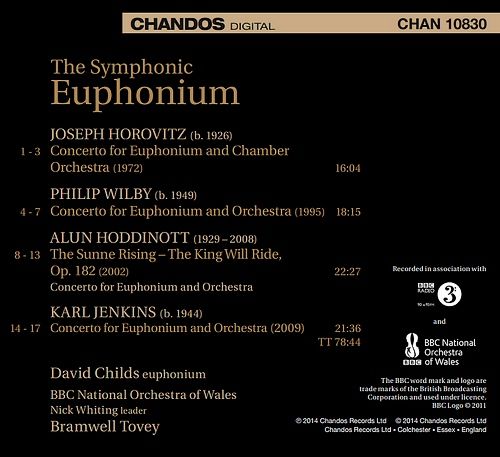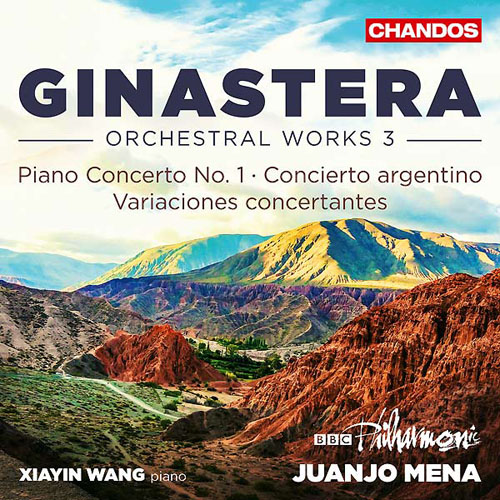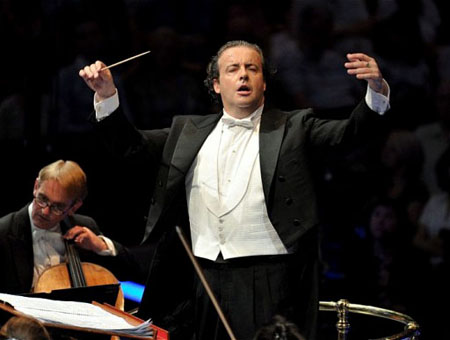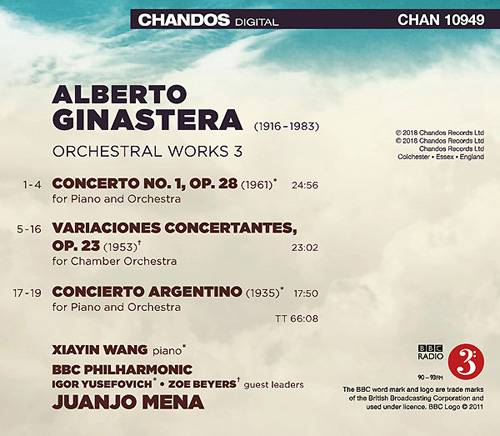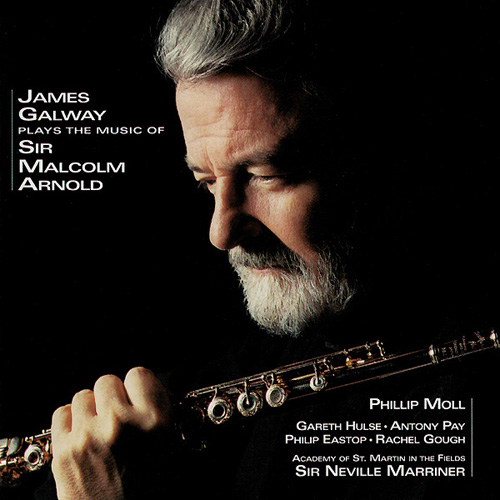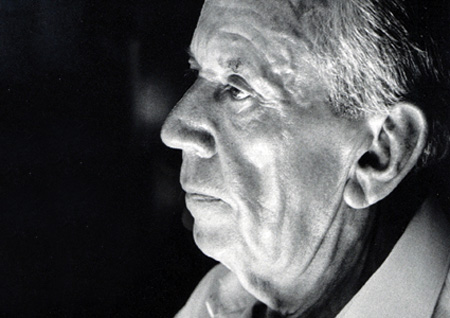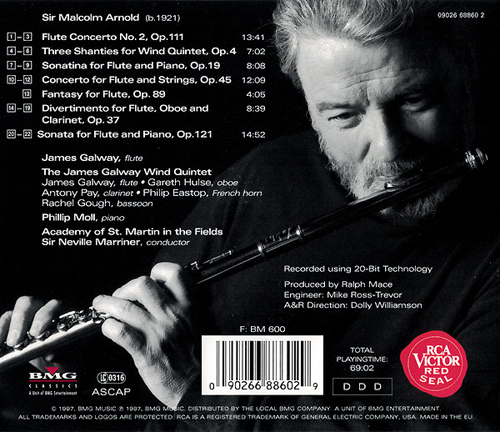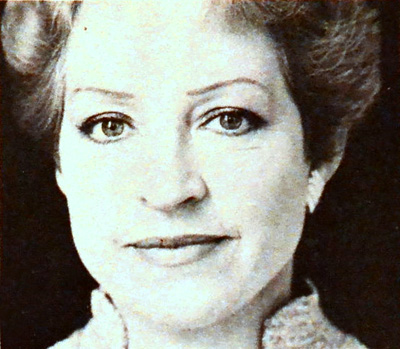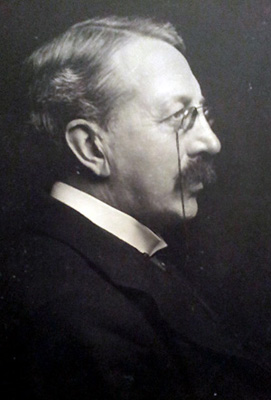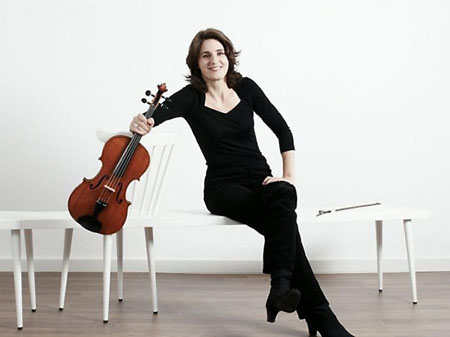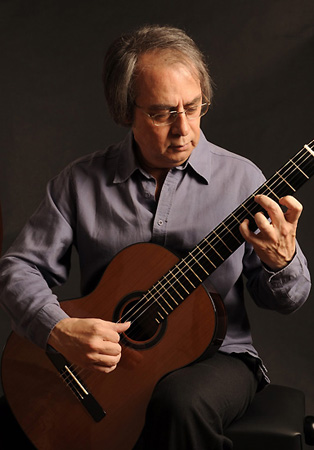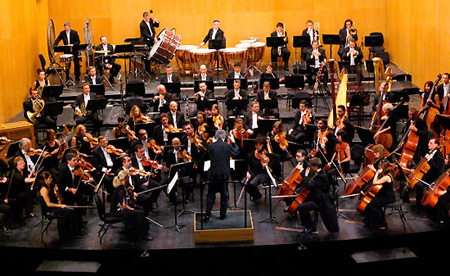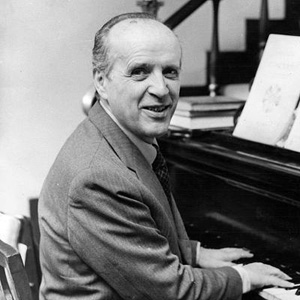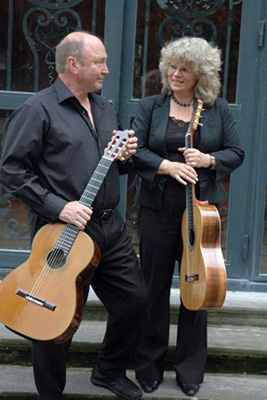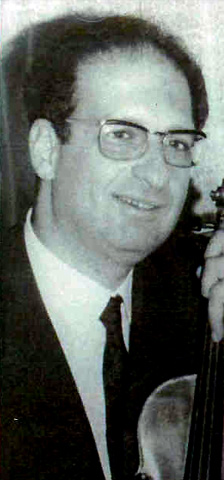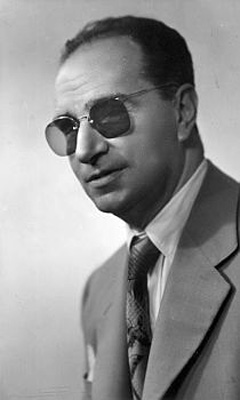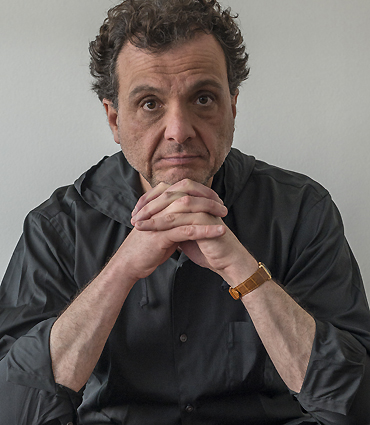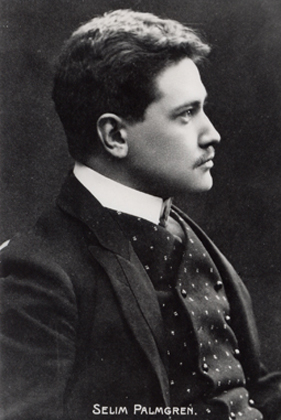
Online Casino South Africa

Online Casino New Zealand

Online Casino India

Online Casino Australia

Online Casino UK

Online Casino Canada

Online Casinos
Note: New uploads will be made "along the way",
so you’ll have to browse through the thread to pick up all the releases.
Suggestions for other discs/works or requests are are welcome as PM’s. Enjoy!
Note: The later uploads are also available in FLAC(lossless), but only
by PM request and only for a limited time. Those marked with "FLAC Link expired" are still availble
in mp3, but requests for those in FLAC will not get a reply!
If you can’t see covers/photos, then it will be because you guys exhausted the bandwidth
with my free image server.
A word about the upload server: Everybody can use MEGA. Preferred browsers are Firefox 22+
with a plugin the site asks you to install when you first open it), or CHROME 28.0+.
Also, reportedly, a software called jdownloader works flawlessy with MEGA links!
Beginning with upload No.28, I’ve also been posting mp3 versions of each album. Predictably, the depositfiles links
went down quickly, so I switched to MEGA for those, too.
If you experience any problems with MEGA in Firefox (which sometimes occur after an update of the browser), try and
(re-)install the MEGA plugin for Firefox: https://addons.mozilla.org/de/firefox/addon/meganz/ – It always does the trick for me! 🙂
Have fun – and please click on "LIKE" if you downloaded
and enjoyed a release.
Last October I started a thread on classical "program music", which you can find here:
Thread 121898
I did this for a number of reasons. First off, this is primarily a film music board, and film music is an extension, if you will,
or continuation, of 19th century program music (Franz Liszt, Richard Wagner, Richard Strauss – the lot). There are differences,
e.g. that a Liszt tone poem didn’t have to conform to a specific scene or to a very specific duration (say, like 2 minutes 46 seconds),
or that a musical score may be drowned out by dialogue, or a myriad of noises and special effects – but these differences are minor –
at least musically, as countless examples provided by outstanding film composers over the decades have shown. Jerry Goldsmith,
one of the great 20th century film composers, said: "The fact that certain composers have been able to create first-class music
within the medium of film proves that film music can be as good as the composer is gifted." He was right. And Goldsmith, as well
as Bernard Herrmann and a few others, will no doubt be recognized by future generations of more open-minded classical scholars
as having been among the most important composers of the 20th century. The vast majority of film composers though will be
recognized for what they always were: hacks.
Also, 95% of all film music composed over the past 110 years are total crap, whereas even weaker examples of "autonomous"
classical music are at least listenable. Most film music was never meant to be heard independently, a convenient truth that
helped mask the total lack of talent or craftsmanship of many a film composer. Composing music is a craft(!), which has to be
studied, and even a man with few or no original ideas will be able to create, a sufficiently acceptable piece of music once
he has learned, again, the craft. This is true of both classical and film composers. Unfortunately, film music history is littered
with inferior people who never bothered to learn the craft, and have no original ideas either. Or, which IMHO is worse, may
have the craft but dumb it down to please stupid film producers, as well as stupid, or musically uneducated, audiences.
Film music has its roots in classical music. There may have been trends and fashions over the years that have
blurred that tradition, but time and again, background film music has returned to its roots. And it always will.
This is why I think it’s important for any fan of film music to know the heritage, and the continuing tradition of fine concert
music that exists today. Hans Zimmer’s simplistic, Rock-based orchestral/synthetic drones may be "state of the (non)art"
today, but they won’t last. You can fool all the people some of the time, and you may even fool some people all of the time,
but you can’t fool all the people all of the time. Lincoln said that, AFAIR. John Carpenter’s "scores" for his 1970s/80s horror
films are another example of non-music that works in the films, but is an embarrassment of sorts when listened to outside
of the movies. A certain pedal-point may tingle your midriff (if that’s the term) – that doesn’t make it good music. To be
brutally honest, it doesn’t even make it music.
In this thread, I’m going to post a selection of recordings of classical "concertante works"
– which means, pieces composed for a solo instrument (or couple of instruments) and
symphony orchestra.
Please note:
I have started a "Desert Island Discs" thread for everyone who loves classical music to post/upload their 5 favorite albums:
Formats can be lossy (192kHz or better) or lossless. I’m hoping for a healthy response …
No.1
The first release features Aaron Copland’s Violin Concerto. Wait a minute! Aaron Copland
did not compose a violin concerto. That’s right. It’s an arrangement of this composer’s
Violin Sonata, with orchestra, provided by other hands. Coupled here with actual
violin concertos by Samuel Barber and David Stock.
Music by Samuel Barber, David Stock and Aaron Copland
Played by the Sinfonia Varsovia and Sinfonia da Camera
With Andr???s Card???nes (violin)
Conducted by Ian Hobson
"After a successful and well-regarded recording of the Brahms and Mendelssohn violin concertos,
violinist Andr???s C???rdenes returns, this time on the Albany Records label, for a selection of American
compositions for violin and orchestra. C???rdenes brings the same synthesis of detailed, precision
playing and robust, warm musical interpretation to this album. The Sinfonia Varsovia is again
C???rdenes’ orchestra of choice, again led by conductor Ian Hobson, and this time delivers an
even more solid, vigorous performance than before. Gorgeous solos from the woodwinds in
the Barber concerto and strong, percussive rhythmicity in the David Stock concerto prove
that Sinfonia Varsovia can indeed hold its own. Also on the program is the Copland violin
sonata, arranged and published for violin and chamber orchestra by Gerald Elias during
Copland’s lifetime; this composition is accompanied by the Sinfonia de Camera. C???rdenes’
playing is impressive throughout for its beauty of tone in both lyrical and rhythmic sections
of the concertos. His vibrato, particularly in the slow movements of the Barber and Copland,
is completely satisfying and almost comforting. The only possible let down is C???rdenes’ tempo
selection in the "perpetual motion" movements of both the Barber and Stock concertos. With
such an abundant technique from which to draw, these movements are surprisingly slow and
safe, and the orchestra seems to only be tentatively keeping up with Barber’s Presto even at
the slower tempo. Still, C???rdenes playing is so enjoyable, clean, and well-thought-out that
this album is still sure to be enjoyed."
All Music
Source: Albany Records (my rip!)
Format: FLAC, DDD Stereo
File Size: 294 MB
Download Link (re-up): https://mega.nz/#!rRY2CSDA!jforGwLnOk9AaqpUmrI_JJ0UP8OGQ9-avX3lqjw79TM
/>
Enjoy! Don’t share! Buy the original! 🙂
*Ahem*
Definitely looking forward to this thread, thank you very much!
Looking forward to your future posts!
No.2
Alfredo Casella (1883-1947) was an outstanding if uneven composer who led several of his
contemporaries — Respighi, Malipiero, Pizzetti, and others — in a struggle to modernize Italian music.
His interests as a composer and as an author of articles on music were highly cosmopolitan, as may
be gathered from his early enthusiasms for Debussy, the Russian nationalists, Strauss, Bart???k, and
Schoenberg. Yet Casella was also intensely inspired by Italian culture, both its folkways and its
Futurism movement. The early works, particularly his first two symphonies (1905 and 1909), were
extremely modernistic for their time; that is, they were influenced by Richard Strauss and Gustav
Mahler (Casella even transcribed the latter’s Seventh Symphony for piano, four hands). But Casella
eventually settled into an energetic, spiky neo-Classicism owing much to Stravinsky and something
to Ravel. This more personal style became evident with his 1924 ballet La Giara. Ironically, Casella
is now remembered less for his original works than for a couple of brilliant pastiches of earlier
composers’ pieces: Scarlattiana for piano and orchestra, and the vibrant Paganiniana for orchestra.
Extremely prolific, highly uneven, and tremendously influential, Gian Francesco Malipiero (1882-1973)
came to be regarded — even by other Italian composers — as the most original musical mind of his day and
place. His music fused modern techniques with the stylistic qualities of early Italian music. Malipiero initially
produced works that, although often harmonically dense and oddly structured, reflect the spirit of
seventeenth and eighteenth century Venetian music. His compositions are characteristically contrapuntal,
with some dissonance resulting from the counterpoint. What is usually judged to be his best music bases
its tonality on free use of diatonic material, although Malipiero employed chromaticism more aggressively
in his old age.
Music by Alfredo Casella & Gian Francesco Malipiero
Played by the Prague Symphony Orchestra
With Andr??? Gertler (violin)
Conducted by Vaclav Smetacek
"What a lovely bit of buried treasure this disc turns out to be! It???s always nice to hear Andr??? Gertler, a fine
violinist with a distinguished discography, and the uniqueness of the repertoire makes this first-time-on-
CD reissue doubly welcome. Malipiero???s concerto is a Stravinskian, neo-classical essay whose propulsive
rhythms and sometimes spiky harmonies always seem ready to blossom into lyricism. The finale, with its
quiet ending, is particularly poetic. Casella???s concerto is a bigger work, more obviously indebted to the
Romantic virtuoso tradition, with a higher level of obvious passion and color. Why it???s so neglected, like
virtually everything by this excellent composer, is a mystery, but at least we have this excellent
performance to keep the flame alive until the rest of the world catches on. Gertler???s estimable musicianship
receives reliable and sympathetic support from Smet???cek and the orchestra, and Supraphon???s sonics
fall gratefully on the ear. A very pleasant surprise."
David Hurwitz, Classics Today
Source: Supraphon CD (my rip!)
Format: FLAC, ADD Stereo
File Size: 252 MB
Download Link: https://mega.co.nz/#!lYZSiR4J!Vhq9iFaoTqEslRkxJP5okX91a_ZS3bLzADU_8CD iNnM
Enjoy! Don’t share! Buy the original! 🙂
American composer Robert Kyr (*1952) has written twelve symphonies (so far),
three chamber symphonies, three violin concerti, and numerous works for vocal ensemble
of all types, both unaccompanied and accompanied, including many large-scale works
for which he wrote or co-wrote the text.
This recording presents a trilogy of violin concerti with titles beginning, "On the Nature of…".
The concerti explore the archetypal themes of Love (No.1), Harmony (No.2), and
Peace (No.3). "In each work, the violin soloist is an adventurer who sets out on a journey of
discovery that is filled with challenges and surprises. The music of each concerto is a spiritual landscape
that encompasses an array of thoughts and feelings ranging from the lyricism of the reflective music
in the first concerto, to the boisterous energy of the finale of the second, to the balance of musical
elements at the end of the third." So speaketh the composer.
Of the three neo-romantic concertos, the middle one, cast for violin, Balinese gamelan ensemble and
symphony orchestra, is probably the most intriguing.
Music Composed by Robert Kyr
Played by the Third Angle New Music Ensemble & Pacific Rim Gamelan
With Denise Huizenga & Ron Blessinger (violin)
Conducted by Robert Kyr & Jeffrey Peyton
"Oregon composer Robert Kyr is a new name to me, but this group of three violin concertos,
written with a canny combination of virtuoso display and genial accessibility, left me impressed, excited
and often touched. Kyr’s harmonic language is largely tonal, and he is often concerned with setting up
musical conflicts that get ironed out; the results could easily sound namby-pamby if the rhythmic profile
were not so sharp, or his instrumental palette so varied. Instead, Kyr weaves together appealing melodic
strands with avuncular ease, and he keeps the soloist nimbly at the fore. Each concerto has its own
distinctive flavor — one is a series of variations on a Southern hymn tune, one a pan-Asian celebration
with a Balinese gamelan and one a schematic but dramatic treatise on conflict resolution.
The soloists, Denise Huizenga and Ron Blessinger, are simply first-rate."
San Francisco Chronicle
Source: New Albion CD (my rip!)
Format: FLAC, DDD Stereo
File Size: 328 MB
Download Link: https://mega.co.nz/#!SwB1lAwZ!Xl2wCx86ByWy_0Vw47OP-RFp2ettVp4knPuKrZWtg54
Enjoy! Don’t share! Buy the original! 🙂
Israeli composer Boris Pigovat (b.1953, Odessa, USSR) studied at the Gnessin Music Institute (Academia of Music)
in Moscow. Between 1978 and 1990 he lived in Tadjikistan. In 1988 he won the special distinction diploma at
the International Composers Competition in Budapest for his composition "Musica dolorosa No.2". Pigovat immigrated
to Israel in 1990. In 1995 he got the Prize of ACUM (Israeli ASCAP) for his composition Requiem "The Holocaust",
which, in spite of its title, is actually a Viola Concerto. In 2000 he got the prize of Prime Minister of State of Israel.
Many of his works have been performed throughout the world. His composition "Massada" was performed at ISCM
"World music days 2000" festival in Luxembourg and at WASBE 2003 CONFERENCE in Jonkoping (Sweden).
The world premiere of Requiem "The Holocaust" for Viola & Symphony Orchestra took place at the Memorial
evening dedicated to the Babi Yar tragedy (Kiev, 2.10.2001, soloist – Rainer Moog).
Music Composed by Boris Pigovat
Played by the Vector Wellington Orchestra
With Donald Maurice (viola)
Conducted by Marc Taddei
"The music is harrowing and tense, and very Russian in sound. Echoes of contemporary composers such
as Denisov, Kanchelli and Gubaidulina can be heard, as well as the inexorable thread of Shostakovich in the Dies Irae,
but the voice of the composer remains highly individual. Balancing the violence, anger and tension is the conciliatory
beauty of the Lux Eterna that rounds out a work of deeply felt power."
The Dominion Post
Source: Atoll CD (my rip!)
Format: FLAC, DDD Stereo
File Size: 274 MB (incl. cover, booklet)
Download Link: https://mega.co.nz/#!DxIFjRzR!M9BcrBhX2COvB5AVcPQPD1lf7DsuAKUG6ZSodkt 6mPY
Enjoy! Don’t share! Buy the original! 🙂
Charles Camilleri (7 September 1931 ??? 3 January 2009) is acknowledged as having been
one of Malta’s most important composers. Camilleri was born in Ħamrun and, as a teenager, had
already composed a number of works based on folk music and legends of his native Malta. At the age
of eighteen, he abandoned a career in law for that of music. He had already, at only fourteen,
experienced the fact that some of his marches played at local feasts. In 1948 he went to London
for a Promenade concert at the Royal Albert Hall. Two years later, in Australia he realised his
ambition of being totally devoted to music, first as a student and later as a teacher. He
subsequently visited Japan, Hong Kong and Korea.
He moved from his early influences by Maltese folk music to a musical form "in which nothing is
fixed and his compositions evolve from themselves with a sense of fluency and inevitability".
He composed over 100 works for orchestra, chamber ensemble, voice and solo instruments.
The three Piano Concertos featured here provide ample evidence of his stylistic
development, from the romantic Concerto No.1 to the spikier, modernistic third (and final).
Music Composed by Charles Camilleri
Played by the Bournemouth Symphony Orchestra
With Andr??? de Groote (piano)
Conducted by Michael Laus
"The Maltese composer Charles Camilleri was at first drawn to improvisation and nationalism. There
was for example a Malta Suite in 1946. It was a visit to London in 1951 that began a pilgrimage
through music which has taken him around the world.
The folksy tonal joyous first movement of the First Concerto includes a recurring tarantella which
is to return in the flighty tambourine-punctuated finale. There is a brooding nobility about the
crystalline second movement with its mildly oriental flavour. The whole effect can perhaps be
compared with the Malcolm Williamson Piano Concertos 2 and 3. Fifteen years later and the single
movement Second Concerto has taken on an angular serious Bart???kian edge mixed with voices
from North Africa. The accents now are forthright, uncompromising and modernistic whether
in pugnacious mode or querulous and thoughtful. The single movement Third Piano Concerto was
written at the request of Tikhon Krennikhov. The result is provocative, again angular and
sometimes truculently dissonant. The engaging accessible manner of the first concerto has been
left far behind. It is perhaps a good match for Camilleri’s concern to portray the terror of man’s
downfall in the face of his own misdeeds and an awareness of the need for redemptive meditative
concentration. In this work the composer shows a clear influence from Olivier Messiaen (5:43,
17:38) in both flight and repose.
Three stimulating piano concertos the last two of which are as dissonant as the
first is melodic-tonal."
Musicweb International
Source: Unicorn Kanchana CD (my rip!)
Format: FLAC, DDD Stereo
File Size: 237 MB
Download Link: https://mega.co.nz/#!upg00YqB!EXjiW2X3sMxEs5L–7GS3FklWfVpifp7VOeiXvJXptI
Enjoy! Don’t share! Buy the original! 🙂
Three "Spanish-tinged" guitar concertos on a well-filled CD (indeed: 80:21min),
two of which are among the most popular: Joaqu???n Rodrigo’s inevitable Concierto
de Aranjuez and Manuel Ponce’s Concierto del Sur – the latter being possibly
the best concerto with orchestra ever written for this problematic solo instrument.
Ant???n Garcia Abril nicely shaded is a conservative contemporary composer
in Madrid whose classical works (he also wrote a lot of film and television music, like
Monsignor Quixote, a suite of which I uploaded before) are all in a safe, neo-Romantic
idiom with folk elements – conventional, but polished and well-crafted melodically. Such is
certainly the case with his Concierto Aguediano, and the fans of either (or both)
of the other two works on the disc should lap it up.
Music by Joaqu???n Rodrigo, Manuel Ponce & Ant???n Garcia Abril
Played by the ORT (Orchestra della Toscana)
With Edoardo Catemario (guitar)
Conducted by Enrique B???tiz
"Guitarist Edoardo Catemario offers absolutely lovely tone at all dynamic levels,
and that makes the opening crescendo of the Concierto de Aranjuez, or the harp-like
strumming in the same work???s famous Adagio, remarkably sensual. He???s also very well balanced
against the orchestra, sounding neither too forward nor artificially placed in his own acoustic.
There are many excellent versions of both the Rodrigo and Ponce???s Concierto del Sur, these
among them, but the Concierto Aguediano by Anton Garcia Abril is both the largest work here
(31 minutes) and a real find that no lover of Spanish guitar music can afford to miss???certainly
worth the price of the disc. Clearly written in the spirit of Rodrigo, the piece is at once more
ambitious and more colorful, and Catemario obviously has a terrific time with it. Enrique B???tiz
conducts with his customary energy and the orchestra responds accordingly. This fine
collection deserves very serious consideration."
David Hurwitz, Classics Today
Source: Arts CD (my rip!)
Format: FLAC, DDD Stereo
File Size: 316 MB
Download Link: https://mega.co.nz/#!Tl4SFahK!B2lZnEigFHJN6nY93R-GC1BkEh1T6S99RZXj_8K7BLc
Enjoy! Don’t share! Buy the original! 🙂
A trio of American works for flute and orchestra, two of them world premieres at the time.
Ellen Taaffe Zwilich has been one of the most successful US composers, male or female, of the past few decades.
Her Concerto for Flute and Orchestra of 1989 is a predominantly lyrical work, and typical of her style on the
brink between tonality and atonality.
Walter Piston’s neo-classical Flute Concerto was composed in 1971, towards the end of this distinguished
composer’s career. It is lively and clean-cut, and doesn’t feel old-fashioned in the least.
Halil (1981) is a 15-minute concertante work of Leonard Bernstein’s that belongs to his Jewish-themed pieces.
Flutist Doriot Anthony Dwyer worked with Bernstein in the course of her career, so she would know how
it has to go. Typically solid support from James Sedares and the LSO.
Dwyer was a pioneer – the first female flutist to hold a chair with one of America’s big-5 orchestras. You can even
find a monograph thesis on her career online, entitled "First Flute", here:
http://etd.lsu.edu/docs/available/etd-11132007-163128/unrestricted/Kean_dis.pdf (PDF).
Music by Ellen Taaffe Zwilich, Walter Piston & Leonard Bernstein
Played by the London Symphony Orchestra
With Doriot Anthony Dwyer (flute)
Conducted by James Sedares
"Each of these American works for flute and orchestra is distinguished by an ease of communication
and a sense of immediate accessibility. This is not to suggest that the pieces are either patronizing
or unrelated to contemporary esthetic/compositional issues. On the contrary, these concertos are all
definitely of this century, but linked to the experiences and expectations of many listeners. In addition,
one must note that each of the concertos has been associated with the name of Doriot Anthony Dwyer,
the distinguished former principal flutist of the Boston Symphony Orchestra, who performs them on this CD.
Ellen Taaffe Zwilich has received many honors and distinctions. Two of these are frequently mentioned:
that she was the first woman to receive the doctorate in composition from Juilliard, and that she was the
first woman to win the Pulitzer Prize in Music. (Interestingly, Doriot Anthony Dwyer has a similar singular
honor–the distinction of being the first woman to hold a principal chair in a major American orchestra.)
Zwilich’s 1989 flute concerto is the most recent of the three works on this disc; appropriately, it sounds
the most up-to-date, with its inventive wash of shifting textures, its suspension of tonality for extended
stretches, and the biting articulation of brass and formidable percussion. It is worth noting that there is
no flute in Zwilich’s orchestra; her focus, rather, is on warm colors in the middle registers, with special
emphasis given to oboes and English horn, trombones, and harp. This scoring touch allows the solo flute
to speak and project in all its registers, from high, penetrating tones to low, quiet breathy ones. The
concerto is cast in the traditional three movements: a slow introduction leading to a driving allegro,
followed by a lyric, contemplative middle movement of great warmth, and then a rousing, lively finale.
Walter Piston’s flute concerto, like Zwilich’s, was composed specifically for Dwyer and the Boston
Symphony Orchestra. Piston, originally from Maine, studied in France with Nadia Boulanger during the
1920s and then carried her Stravinskian approach back to New England. During his over three decades
of teaching at Harvard (from 1926 to 1960), Piston made the greater Boston area a major neoclassic
stronghold, and created an impressive body of work (mostly instrumental music in the larger absolute
genres). Although this 1971 concerto is notated as a single uninterrupted movement, one can still
hear a traditional three-part subdivision within that framework. The final allegro, rhythmically
angular and timbrally bright, is especially commanding.
The third composer represented on this disc, Leonard Bernstein, had equally strong ties not only to
Harvard–where, as an undergraduate, he worked with Piston–but, like Piston, to the Boston Symphony
as well. (Serge Koussevitzky, music director of the BSO, was one of Bernstein’s important early mentors.)
And again like Piston, he made a great impact as a "teacher," and through media that stretched beyond
the classroom. Where Piston was universally known for his many textbooks on a variety of subjects,
Bernstein reached out to an even larger audience through his Young People’s Concerts and television
lecture-demo programs.
Bernstein’s Halil is scored for solo flute, string orchestra, and percussion. The composer has referred
to it as a "nocturne," and it does project a strongly meditative, ruminating quality–entirely appropriate
for a work conceived as a memorial to a young Israeli flutist who had died during military action at the
Sinai–and premiered in Israel under Bernstein’s direction. (Its later American premiere took place with
the BSO and Ms. Dwyer as soloist.)
During the course of its single extended movement, Halil traverses a wide range of tempo and mood swings.
Bernstein’s program notes emphasize the choice of pitch material, and the slow progression from a
twelve-tone opening to a diatonic conclusion. In fact, though, an odd tonal ambiguity pervades the
entire fabric: whether avowedly serial or tonal, the language is always triadic, sharply dissonant, and
largely nonfunctional.
Dwyer, Sedares, and the LSO are, happily, quite sensitive to such issues of stylistic difference.
As a result, these three recorded pieces–incorporating modernist gestures within a familiar inviting
context, but each in a different way–create a very attractive balance."
Elliott Schwartz, American Music
Source: Koch International CD (my rip!)
Format: FLAC, DDD Stereo
File Size: 189 MB (incl. covers, booklet, EAC LOG)
Download Link: https://mega.co.nz/#!2lwiUSCD!ZKOdgDpfYhtyxYUPtZfVzEsB7vUkjyJzK6dy_v6 Gerc
Enjoy! Don’t share! Buy the original! 🙂
This is a colorful collection of 20th century works for marimba or vibraphone
solo or with orchestra, written by composers as diverse as Darius Milhaud, Paul Creston,
Iannis Xenakis, Siegfried Fink, David Maslanka and others. Peter Sadlo
is the outstanding percussionist in these fine, diverting pieces.
Music by Darius Milhaud, Paul Creston, Iannis Xenakis,
Siegfried Fink & David Maslanka
Played by the Bamberger Symphoniker & HR Radio Orchestra
With Peter Sadlo (percussion)
Conducted by Wolfgang R???gner & Hans Peter Frank
"A hit with the public and critics alike, Peter Sadlo???s extraordinary musical intuition and
virtuosity have made him an internationally sought after artist. Peter Sadlo studied at the
Konservatorium in Nuremberg and at the Musikhochschule in Wurzburg with Siegfried Fink.
He has won numerous first prizes throughout his career including the first-ever percussion
awards at both the Concours International Gen???ve (1982) and at the Internationaler
Musikwettbewerb der ARD in Munich (1985). At age 20, Peter Sadlo became solo timpanist at the
Munich Philharmonic, a position he held for 15 years and during which time his style was
greatly influenced by his collaboration with Sergiu Celibidache. Starting in 1998 he began to
concentrate exclusively on his career as a soloist and ensemble leader. Additionally, Peter Sadlo
is Professor of Percussion at the Hochschule f???r Musik und Theater in Munich and at the
University ???Mozarteum??? in Salzburg. He holds a Doctorate in Musicology from the University of
Bucharest and an Honorary Doctorate from the Staatliche Musikakademie in Sofia.
Composers such as Luciano Berio, Minas Borboudakis, Ferran Cruixent, Moritz Eggert, Harald
Genzmer, Sofia Gubaidulina, Hans Werner Henze oder Bertold Hummel have collaborated with
Peter Sadlo or have written pieces for him."
Source: Koch Schwann CD (my rip!)
Format: FLAC, DDD Stereo
File Size: 265 MB
Download Link: https://mega.co.nz/#!X5Y2jBgK!BtOUy3tq2zwNWCa_Q1SlmXqBzzQYmI2fUQ0yww6 SMMY
Enjoy! Don’t share! Buy the original! 🙂
The composition date given in the headnote is slightly misleading: yes, B???la Bart???k produced
the Concerto for Two Pianos, Percussion and Orchestra effort in 1940, but it is an arrangement
of the 1937 Sonata for Two Pianos and Percussion. While for some time the chamber version may
have been the preferred one, especially among critics, the orchestral rendition eventually became the
more popular choice in concert halls and the recording studio.
The concerto is cast in three movements, the first lasting around 13 or 14 minutes, about the length
of the other two combined. The first movement opens mysteriously (Assai lento), the pianos introducing
the cryptic, terse main theme, or motif. As the music builds via intervallic accumulation, there are
explosions from the percussion, and after an imaginative march-like episode on the pianos the tempo
changes to Allegro molto. The colors brighten here and a brilliant, rhythmic theme, growing from the
opening motif, is given by the pianos, later to be played colorfully by the xylophone. A second theme
of less-aggressive character appears, and there follows an imaginative and complex development section.
In the latter part of the first movement a brilliant fugue is given, wherein the piano writing is quite
virtuosic, hands going in opposite directions on the keyboards, notes filling the air with tension and
momentum. A dramatic coda, itself roiling in tension, closes the movement with emphatic resolution.
The second movement is an elegy whose mesmerizing music, marked Lento ma non troppo, recalls the
middle movement of the composer’s Piano Concerto No. 1 (1926), also a percussion-laden affair. The
middle section here breaks from the elegiac mood of the opening and closing with agitated music, offering
fine contrast to the nostalgic main theme.
The third movement is a rondo, marked Allegro non troppo, that features two quite memorable themes.
The first has an arched contour, rising and descending jovially on the keyboard, while the next one is
presented emphatically by the xylophone, sounding humorous and intentionally stiff in its march-like
manner. There is a brilliant but terse development of the main theme in a fugato episode, and the work
ends with a subdued coda. This concerto has attained a measure of popularity, but still remains largely
on the fringes of the repertory, owing in part to the two-piano scoring. Relatively few virtuosos from
any period devote their time to such works.
Music Composed by B???la Bart???k
Played by the City of Birmingham Symphony Orchestra
With Katia & Marielle Lab???que (pianos)
And Sylvio Gualda & Jean-Pierre Drouet (percussion)
Conducted by Simon Rattle
"The French pianists, Katia & Marielle Lab???que, are daughters of Ada Cecchi, a
former student of Marguerite Long. They spent a childhood filled with music. Both
of them studied with their mother and at the Paris Conservatoire.
These non-conformist pianists boast a repertory from the eclectic to the unexpected.
From the onset, they dedicated themselves to the contemporary scene, including
the work of composers such as Pierre Boulez, Luciano Berio, Ligeti and Messiaen.
Their repertoire includes a broad range of seemingly contradictory material, in which
they move comfortably from J.S. Bach, Johannes Brahms, Franz Liszt, Mozart, Igor
Stravinsky, Gershwin, Leonard Bernstein, Takemitsu, and Lutoslawsky to the young
contemporary composers.
Their first recording for Philips, of Gershwin???s Rhapsody in Blue, received a Gold Disc
immediately after its release. Since then Katia & Marielle Lab???que have made numerous
recordings for Philips, Sony and EMI. The aspiration to build a bridge crossing all aspects
of contemporary creation has led them to form their own label, KML Recordings, and
they are forming a creative alliance with newly launched Onyx classics label through
which their records will be distributed. Transgressing conventions and boundaries, KML
Recordings brings together the unexpected in meaningful and artistic ways, constantly
associating sounds and images. Their vision goes beyond classical music to look at new
territories where rock, electronic, contemporary, improvisation and video have their say.
The first releases in 2007 comprise an all-Ravel programme , including a new version of
Bolero (from the composer himself) with added Basque percussion, a CD of I. Stravinsky
and Debussy with a DVD directed by Tal Rosner, and a recording of Mozart and Schubert."
Source: EMI CD (my rip!)
Format: FLAC, DDD Stereo
File Size: 167 MB (incl. covers, booklet)
Download Link: https://mega.co.nz/#!bk4WXKKI!TP3DWBvQSanvgO4HWkC8UUP59yx5Op1km_DKHxS xxzI
Enjoy! Don’t share! Buy the original! 🙂
This is a lively collection of Chinese concertos for recorder and orchestra,
played by the leading international soloist, Michala Petri. The album features
works by composers who are well known in the West (like Bright Sheng and
Chen Yi, who both live and work in the US) as well as two relative unknowns,
Tang Jian-Ping and Ma Shui-Long.
Music by Tang Jian-Ping, Bright Sheng, Ma Shui-Long & Chen Yi
Played by the Copenhagen Philharmonic Orchestra
With Michala Petri (recorder)
Conducted by Lan Shui
"The contents of this album are less unusual than the proclaimed Chinese recorder
concertos concept. Only one of the four works, Chen Yi’s The Ancient Chinese Beauty,
is originally written for recorders; the others are arranged from music for Chinese flutes
(or, in the case of Bright Sheng’s Flute Moon, Western piccolo). Sheng and Chen Yi are
partly Western-trained, and their pieces arose in an American context. This said, veteran
recorder virtuosa Michala Petri, recording in her home country of Denmark with the
Copenhagen Philharmonic under Chinese-Singaporean conductor Lan Shui, delivers a bravura
performance here. Chen Yi writes difficult registral jumps for Petri, but elsewhere, as in the
low oscillations of the finale of Tang Jianping’s Fei Ge (Flying Song), one gets the feeling
that Petri has pushed the recorder into new tonguings as she imitates the Chinese dizi
bamboo flute. The presence of the Tang Jianping work points to another of the album’s
strengths: its diverse program. There is a work in the Chinese style familiar to listeners
of the Mao Zedong era; Bang di concerto composer Ma Shui-Long is Taiwanese, but as
the excellent booklet notes (in English and Chinese, but not Danish) indicate, the official
Taiwanese style of that time, intended to provide a counterweight to the Yellow River
Concerto being promoted by the mainland government, ended up being similar to it in
many ways, because official styles are official styles. This concerto, originally written
for the bang di small membrane flute, marked the beginnings of his move away from
this style. The biggest find is the Tang Jianping piece, an eventful, kaleidoscopic piece
drawing on a variety of Chinese folk traditions and expertly handling the Western
orchestra (it was originally composed for a Chinese ensemble but arranged by the
composer). The program is truly a "Chinese fugue in four voices," as the booklet
proclaims, and mention should be made of the unusually elaborate and nicely edited
booklet, complete with Chinese seals. A strong outing from Denmark’s new
OUR Recordings label."
All Music
Source: Our Recordings CD (my rip!)
Format: FLAC, DDD Stereo
File Size: 370 MB (incl. covers, booklet, EAC LOG)
Download Link: https://mega.co.nz/#!ehgAASga!Bn1kVzSOQZYrVvngghMxx3onBCYJgE6CaEbdqMc z1ic
Enjoy! Don’t share! Buy the original! 🙂
Don Gillis (1912-1978) was a mid-century American composer whose work
was steeped in a populist vein and shot through with the inspiration of his beloved,
native land of Texas. Naturally, Gillis’ unabashed populism did not endear him to the
academic community, who viewed him as a throwback to the days of radio; a style of
composition considered fundamentally dead by 1970, the date of the Rhapsody for
Trumpet and Orchestra included on this fine Albany disc, Don Gillis: Encore Concerto.
It features the Sinfonia Varsovia conducted by Ian Hobson, who also appears as
the soloist in the title work, which served as Gillis’ first piano concerto of two. Overall, this collection
embodies some of the finest elements in Gillis’ orchestral output; its centerpiece, Short Overture to
an Unwritten Opera (1945) is certainly one of his finest creations; bright, addicting, and even
featuring a surprise quotation from Ary Barroso’s pop tune "Brasil."
The three concerted works are all strong showings for Gillis and solid contributions to the repertoire
of their respective instruments. The Encore Concerto (1956), played winningly and in a
slightly tongue-in-cheek fashion by Hobson, is sort of like a "Concerto in F-lite" with jazzy syncopations,
a middle movement blues, and a dash of humor, playing out against an orchestral backdrop that represents
a sort of tug of war between the cosmopolitan and Texas. Some connection to Gershwin’s Rhapsody in Blue
can also be detected in Gillis’ Rhapsody for Trumpet and Orchestra (1970), which is a really nice piece
for the trumpet and filled with jazz licks. However, the Rhapsody for Harp and Orchestra (1953)
represents a change of pace; it is diaphanous, atmospheric, and while Gillis’ Texas roots are still cutting
in on the background, that element never completely takes over.
Music Composed by Don Gillis
Played by the Sinfonia Varsovia
With Anna Sikorsek-Olek (harp), Krysztof Bednarczyk (trumpet)
Conducted by Ian Hobson
"Here is yet another winning collection of orchestral music by Don Gillis, courtesy of Albany,
Ian Hobson, and the Sinfonia Varsovia. The outstanding discoveries here are the two rhapsodies
for harp and for trumpet. The former mingles French influences (one of its main themes sounds
amazingly like Poulenc) with pure, Copland-esque Americana. The mixture is striking, to say the
least, kind of like hot dogs with truffles, but once you get used to it you realize that what we
have here is a major addition to the slender repertoire for harp and orchestra. The Trumpet
Rhapsody was written for Doc Severinsen, no less, though alas he never played it on The Tonight
Show. Both the instrument and the setting are tailor-made for Gillis’ patented brand of symphonic
pop/jazz, and both rhapsodies receive outstanding performances by Anna Sikorzak-Olek,
Krzysztof Bednarczyk, and the Sinfonia Varsovia.
Twinkletoes originally was to be part of a larger ballet project, but Gillis abandoned it and
parceled out the music already written. Like the Short Overture it’s a zippy chip off the
master’s workbench. The Encore Concerto–so-called because of its brevity, but at 18 minutes
it’s not really that short–already has been recorded by Albany. Hobson’s playing is fluid and
elegant, while the orchestra (as usual) offers warm and easy-going accompaniments."
Classics Today
Source: Albany CD (my rip!)
Format: FLAC, DDD Stereo
File Size: 314 MB (incl. covers, booklet)
Download Link: https://mega.co.nz/#!CkhWGRyY!T980jiGRB01aPT071-5zAmyvr4FKMFhDD4TIbK2vCqI
Enjoy! Don’t share! Buy the original! 🙂
Marius Constant was born Feb. 7, 1925, in Bucharest, and traveled to Paris in the mid-1940s,
where he studied composition with Nadia Boulanger, Olivier Messiaen and Arthur Honegger, and
conducting with Jean Fournet. His first significant symphonic work, 24 Preludes for Orchestra, was
premiered by Leonard Bernstein and the French National Orchestra in 1959. He wrote a series of ballets,
including Cyrano de Bergerac (1960), Paradise Lost (1967, which Rudolf Nureyev danced in London)
and Candide (1970, with mime Marcel Marceau in Hamburg, Germany).
Constant composed "Etrange No. 3," the now-familiar series of repeated four-note phrases on electric
guitar, and "Milieu No. 2," the odd pattern of guitar notes, bongo drums, brass and flutes, that together
became the Twilight Zone theme. They were originally part of a series of offbeat, unusually orchestrated
pieces that CBS music director Lud Gluskin had commissioned from the Paris composer in the late 1950s for the
network’s music library.
The present album features four instrumental concertos, one of them for barrel organ. The style
is typical of post-1950 avantgarde, with many interesting, original orchestral colours.
Music Composed by Marius Constant
Played by the Orchestre Symphonique et Lyrique de Nancy
With Jean-Jacques Justafre (horn), Pierre Charial (barrel organ)
And Claude Delangle (saxophone) & Michel Becquet (trombone)
Conducted by J???r???me Kaltenbach
Source: Erato CD (my rip!)
Format: FLAC, DDD Stereo
File Size: 283 MB
Download Link: https://mega.co.nz/#!np5jQIzb!NOPlgEGIB3PE38zyBmXNDzjwxVE40DY4jG8GAgK vwZs
Enjoy! Don’t share! Buy the original! 🙂
As a composer, George Dyson (1883-1964) was almost too talented for his own good. He was sufficiently
gifted to write music in a unique style that was also accessible, uplifting, and memorable; but he was also a
teacher and administrator, an author, and he devoted much of his time to those activities. Dyson was born in
Halifax in 1883 to a working-class family.
During his Army service in WWI, Dyson authored a manual on the use of the hand grenade (!) that became standard
issue. He was appointed a professor at the Royal College of Music in 1921 and began teaching at Winchester
College three years later. It was during this period that Dyson separated himself from the mainstream of English
music; a passionate believer in the notion that music had to move forward, he felt that the Brahms-influenced
music of Sir Edward Elgar, the folk song-inspired works of Ralph Vaughan Williams, and the Celtic romanticism of
Sir Arnold Bax were all remnants of an era that had passed.
In 1938, Dyson assumed the job of director of the Royal College of Music; a knighthood followed in 1942 and
he remained at the RCM for another decade. He continued composing new music in that curious style,
modern yet tonal and melodic – of which the three concertos featured here (Concerto Leggiero,
Concerto da Camera, Concerto da Chiesa) are characteristic examples.
Music Composed by George Dyson
Played by the City of London Sinfonia
With Eric Parkin (piano)
Conducted by Richard Hickox
"The English pianist, Eric Parkin, studied at Trinity College of Music in London, firstly as an Opera Scholar,
and was then awarded a Degree Scholarship. His teachers were the distinguished Anglo-French pianist
Frank Laffitte and Professor George Oldroyd. Two other distinguished teachers were also to cross his
path at this period. Charles Kennedy Scott, the conductor of the legendary Oriana Madrigal Society,
and Henry Ceehl with whom he studied composition for a year.
Eric Parkin made his debut in London in 1948. A turning point was the start of a long career in radio
followed shortly afterwards by his meeting with composer John Ireland. A Prom debut with Malcolm
Sargent and the BBC Symphony Orchestra in J. Ireland’s Piano Concerto brought him before a wider
audience. Over the years he has appeared with many of the leading British orchestras, building a
repertoire of over 70 works.
Eric Parkin’s musical sympathies are wide, ranging from J.S. Bach through the Classical and Romantic
repertoire to much 20th century repertoire. He has a great affection for French and American music
and is increasingly recording this. A number of English composers have either written for him or asked
for first performances, including Geoffrey Bush, Peter Dickinson, David Gow, Kenneth Leighton
and Richard Stoker.
Eric Parkin taught piano at the Bulmershe College (now part of the the University of Reading,
Berkshire). Margaret Willis, who was his pupil there for 3 years (1971-1974), said: “I recall him
as being my Personal Tutor at College in Reading. He was kind and sensitive to others needs
greatly appreciated by us all.”
Eric Parkin has recorded many albums for Chandos, including 4 volumes of Arnold Bax’s piano
music, the complete piano works of Samuel Barber, 3 volumes of piano music of Billy Mayerl,
3 volumes of John Ireland’s piano music as well as his Piano Concerto with the London
Philharmonic Orchestra and Bryden Thomson, a double album of solo piano works by J. Ireland,
his friends and pupils, 3 volumes of piano music of Francis Poulenc, piano music of Albert
Roussel, and many more."
Source: Chandos CD (my rip!)
Format: FLAC, DDD Stereo
File Size: 306 MB (incl. cover, booklet)
Download Link: https://mega.co.nz/#!jw5D1KpJ!ELKajmk-ETKOL84XJKk3KWVZgL1G67jw7FTdqT_kF1k
Enjoy! Don’t share! Buy the original! 🙂
James Wilson (1922-2005) was born in London and came to live in Ireland in the late 1940s.
He was professor of composition in the Royal Irish Academy of Music and was also for many years
a course director of the Ennis/IMRO Composition Summer School. His extensive output has been
performed and broadcast throughout Ireland, the UK and Scandinavia and includes seven operas,
twelve concertos as well as numerous vocal, chamber and instrumental works.
Says James Wilson: "Music is the nearest thing that we know to magic: its powers have still to
be understood. In my own work, I seek for clarity and economy and, above all, for the
quality of lyricism." All these qualities are evident in the two fine concertos recorded here,
the violin concerto Pearl and Unicorn and the viola concerto Menorah.
Music Composed by James Wilson
Played by the RT??? National Symphony Orchestra of Ireland
With Constantin Zanidache (viola) & Alan Smale (violin)
Conducted by Colman Pearce
"In this age of ecumenism, it is not surprising to find a composition titled Menorah by a
musician named James Wilson in a series devoted to Irish composers… .like Max Bruch’s Kol Nidrei,
[Menorah] pays homage to the Jewish spirit.
"Menorah is the composer’s tribute to the children who perished in the Holocaust. It is a deeply
moving, heartfelt, even heartbreaking composition. Strong and stirring, it pits the viola’s elegiac
voice against deep and dark orchestral forces. The solo instrument, superbly handled by Constantin
Zanidache, in turn pleads, laments , reflects, and despairs; the orchestra rarely heeds. The
tension between the two forces is often gripping. This is indeed music that is deeply felt and
moving and finally heroic.
"Concertino runs for a little over 13 minutes and is neatly sandwiched between the viola and
violin concertos. Composed in only one movement, it uses the orchestra mainly in groupings and
sections rather than en masse. Lighter in substance than the preceding work and not as
romantically inclined as the one that follows, it grows progressively lighter in sound and substance
as it goes, and conveys its feelings and its message with a minimum of melody and by relying
on various orchestral timbers.
"Actually, the last work, the violin concerto, is the most melodic and the most charming. The longest
in time (just under 27 minutes) and quite romantic in content, it was written for and dedicated
to the soloist who performs it here. The title comes from a poem by George Peele and is used by
the composer as a spring-board for a fanciful, intricate display of color and humor, with smaller
forces than in the two preceding works. Alan Smale is the leader of the National Symphony of
Ireland. Both he and conductor Colman Pearce do a superb job. The orchestra plays splendidly,
and the recorded sound is rich as well as crystal-clear. Let’s hope we will hear more of James
Wilson’s music in the near future."
American Record Guide
Source: Marco Polo CD (my rip!)
Format: FLAC, DDD Stereo
File Size: 232 MB (incl. cover, booklet)
Download Link: https://mega.co.nz/#!2sIzRZQT!eHsAxQ7qgiCrbbMcC6e6ZxUwWnFL7DZx0Uqd51e 5LQs
Enjoy! Don’t share! Buy the original! 🙂
Luis Enr???quez Bacalov was born in Buenos Aires on March 30, 1933. He his best known as an Argentine composer
of film scores for Spaghetti Western films, most notably Django. In his life time he has recieved two Academy Award
nominations, and he the award in 1996 for the "Original Score" to the movie Il Postino (the theme of which is included
here, too). Some believe his best work was created during the years he collaborated with Italian progressive rock bands
New Trolls, Osanna and Il Rovescio della Medaglia. Many know his work through the soundtrack Summertime Killer and
the song Motorcycle Circus which was used in Kill Bill Vol.1.
Bacalov’s Triple Concerto is scored for the unusual combination of piano, soprano, bandon???on and orchestra,
the presence of the latter instrument is probably the reason it is coupled here with Astor Piazzolla’s Tres Movimientos
and Oblivion. The style is a mix of neo-classical elements, Bart???k-ian percussiveness and some latin inflection.
Music Composed by Luis Enr???quez Bacalov & Astor Piazzolla
Played by the Santa Barbara Symphony Orchestra
With Luis Enr???quez Bacalov (piano), Junajo Mosalini (bandone???n) & Virginia Tola (soprano)
Conducted by Gis???le Ben-Dor
"This CD is the record of a memorable event in Santa Barbara, California, that makes the disc
stand out from the steady flow of tango-based albums. It features two world premiere recordings
of the pair of major works here. In 2004 the music director of the Santa Barbara Symphony, Gisele
Ben-Dor, organized the Tango and Malambo Festival, a ten-day celebration which included early
and recent Latin American music, dance, films and other events.
Luis Bacalov is known for his film scores for both South American and European films. His Triple
Concerto combines Piazzolla’s bandoneon and Bacalov’s piano plus a soprano who sings in the
second and fourth movements of the work. The second movement text honors the greatest
tango singer, Carlos Gardel, while the fourth speaks of nostalgia for the Buenos Aires of old.
The Three Movements was the only work for bandoneon and large orchestra composed by the
young Piazzolla. Igor Markevitch conducted the premiere performance of the symphonic movements
in 1953. It is a purely abstract symphonic work. Although some of the audience didn’t like the
low-class bandoneons in it, there was hearty applause as well. It was on the strength of this
performance and the body of “classical” work Piazzolla had done thus far that he traveled to
Paris to study with Nadia Boulanger, who set him on his way creating the Nuevo Tango style.
The album is rounded out with one of the most striking and popular melodies from each
composer: Piazzolla’s Oblivion and Bacalov’s theme from the Italian film Il Postino."
Audaud Com
Source: Delos CD (my rip!)
Format: FLAC, DDD Stereo
File Size: 244 MB (incl. cover, booklet)
Download Link: https://mega.co.nz/#!rtIH0JiB!DX7vawkZiP4-Y8N1geCD_yMphs5b44XwJAr4lYJJmeo
Enjoy! Don’t share! Buy the original! 🙂
David Heath ("D.C. Heath") began writing music in 1975, basing his music harmonically
and rhythmically on the music of John Coltrane and Miles Davis.
He is now regarded as one of Britains most controversial musical figures, referred to by the Glasgow Herald
as "the UK’s most outrageous yet accessible contemporary composer" whilst the Gramophone recently wrote
"Heath has developed a voice and style…………that has developed into a genre of its own" .
Heath’s early pieces written between 1975 and 1982 "Out of the Cool" "Rumania" "Fight the Lion" and ‘Coltrane"
are all modern jazz based, and have been played and recorded worldwide.In the 1980’s he began to incorporate
rock and studio techniques into his compositions, and by the 1990’s after settling in Scotland, his music had
become influenced by Celtic and natural sound.
From 1993 – 1996 Heath was Composer in Residence with the BT Scottish Ensemble and was profiled by
BBC2 TV during 1994 in a programme entitled Inspiration. His orchestral works within that period were
The Four Elements, The Celtic, The Connemara and The Rage, the latter being premiered in Scotland
during the Spring of 1996. His violin concerto The Celtic was recorded by Clio Gould as
was The Four Elements with percussionist Kirk Richardson. In 1997, Heath arranged,
orchestrated and conducted The Scottish Chamber Orchestra with Aly Bain and Karen Mathieson in
Phil Cunningham’s Celtic Orchestral extravaganza The Highlands And Islands Suite, a performance
which opened the Glasgow Celtic Connection Festival.
Music Composed by Dave Heath
Played by the BT Scottish Ensemble
With Clio Gould (violin), Kirk Richardson (percussion) & Dave Heath (flute)
Conducted by Clio Gould
"I recently reviewed a related Dave Heath anthology on Black Box. The Violin Concerto
is the only overlap between the two discs. Otherwise the repertoire coverage is complementary.
The Concerto goes with even more visceral ???lan in the hands of the English Chamber Orchestra
(Black Box, Ittai Shapira) but by contrast the sound is less transparent in the hands of Black Bo
x than on this Linn disc. The Linn also has the advantage of being performed by its dedicatee,
Clio Gould. It is nice in the ???Cooper??? finale to hear the ecstatic delirium of music surely reminiscing
around the bell-like finale of Ravel’s Ma M???re l’Oye.
Taking impressions in broad swathes I would say that the Black Box disc presents the instantly
approachable Heath. The Linn takes him in more uncompromising mode; not that Heath is ever
prickly in any 1970s avant-garde sense.
After much listening to the two discs you can identify various traits that together help make a
Heath score as personal as one by Vaughan Williams or Martinů. His music is always clear speaking.
He does not hide in dense thickets of texture. He embraces sentiment but always steers away from
the brink of sentimentality. He is sympathetic to Celtic culture (witness his enthusiasms for
Capercaillie and Aly Bain). He has a liking for the continuous slip-sliding oscillation of violins as found
in Penderecki’s Threnody for the Victims of Hiroshima and in Alan Hovhaness’s overture Fra Angelico.
He holds memory up to the light of emotion and distils nostalgia from it. There is sorrow in the wings
of his music as well as a rhythmic impetus. Sorrow is in the ascendant.
His Celtic Air was written in memory of family friend and fellow flautist Catharine Russell who died
of leukaemia in 1993 while the extraordinary and unsettling Requiem on Black Box relates to the
death of five year old Paul Medrington in a tragic accident. His string writing taps into the same
purity we find in The Lark Ascending. His melodic invention, and sometimes his rhythmic patterns,
take sustenance from Bart???k.
He takes risks as we hear in the wind-chime noises at the end of The Celtic Air and the fire
engine sirens (UK style) at the start of the Fire movement of The Four Elements.
Thanks are due to Glasgow City Council who grant aided this recording. Let us hope that the
City Fathers are far-sighted enough to support other revivals. Have they heard of Eric Chisholm’s
turbulent pair of 1930s symphonies (Chisholm did so much to place Glasgow on the international
cultural map during the 1920s and 1930s). They could also profitably turn their funding support
towards Ronald Stevenson’s music – commissioning the completion of the great Ben Dorain epic
and recording the violin concerto and the cello concerto.
The Linn and Black Box discs complement each other perfectly. Once you have caught the
Heath ‘bug’ (not difficult) you will have to have both. The Linn is certainly most beautifully
recorded and executed."
Musicweb
Source: Linn CD (my rip!)
Format: FLAC, DDD Stereo
File Size: 290 MB
Download Link – https://mega.co.nz/#!hM42gQ4I!KwpXWhqaFQnns2x72H87tiLESwtyMbvv8DjyJK-_9oA
Enjoy! Don’t share! Buy the original! 🙂
Thanks!
A highly individual composer, Ernest Bloch (1880-1959) did not pioneer any new style in music
but spoke with a distinctive voice into which he could assimilate folk influences, 12-tone technique, and
even coloristic quarter tones. In a stylistically atomized century his interests were universal, and his
music was both beloved by the public and inspirational for a younger and more academically oriented generation.
His father was the quintessential Swiss, a well-off manufacturer of watches and clocks, including cuckoo clocks.
Ernest had a diverse musical training that included advanced violin training, study of eurhythmics with
???mile Jacques-Dalcroze; he traveled from Switzerland to Belgium, Munich, and Paris in due course. Bloch
wrote prolifically in his student years but did not publish any of his works. He is not related to his contemporary
Ernest Bloch (1885-1977), a German philosopher interested in musical issues.
In 1916 he traveled to the U.S. as conductor for the Maud Allan dance company. The outfit went broke,
stranding him in Ohio. The composer was thus forced to remain in America, but he soon found success as a
composer, conductor, and music school administrator and teacher. In 1924 he took American citizenship. He
became director of the San Francisco Conservatory in 1925 and in 1927 won first prize in a contest sponsored
by Musical America with his composition America, an Epic Rhapsody.
He returned to Switzerland in 1930, and mostly lived there for the next decade. He composed and traveled
widely in Europe to conduct his works. The rise of Nazism in Germany and a desire to retain his U.S.
citizenship prompted a return to that country before World War II broke out. He settled at scenic Agate
Beach, OR, and was appointed a professor at the University of California in Berkeley, teaching summer
courses until he retired in 1952.
His rarely played, large-scale Violin Concerto is an impressive, impassioned work from his
"Herbrew-style" phase. The more popular, but much less ambitious, Ba’al Shem makes a perfect
coupling, and this very fine recording (probably the best available – there aren’t that many around,
and I think I got all of them) throws in two works by the conductor, Jos??? Sererbrier,
at no extra charge.
Music by Ernest Bloch & Jos??? Serebrier
Played by the Royal Philharmonic Orchestra
With Michael Guttman (violin)
Conducted by Jos??? Serebrier
"Michael Guttman is an eminent violin soloist, conductor and music director of festivals around the
world. At age ten, he became the youngest student ever to be admitted into the Brussels Royal
Conservatory of Music. Encouraged by his late mentor Isaac Stern, Guttman studied at the Juilliard
School in New York with Dorothy Delay, the Juilliard Quartet and Felix Galimir. Guttman has earned
critical acclaim from the New York Times for his ???incredible wealth of tone colors and his sound of
melting beauty???, and was described by the Jerusalem Post as the ???Chagall of violinists???. He has
performed in halls such as London???s Barbican Centre, New York???s Avery Fisher Hall, Paris???s Salle
Pleyel, Amsterdam???s Concertgebouw and Tokyo???s Bunko Kaikan. He collaborated with the late
conductor and composer Lukas Foss at the Music Festival of the Hamptons, a relationship which
initiated his conducting career."
Source: ASV CD (my rip!)
Format: FLAC, DDD Stereo
File Size: 278 MB
Download Link: https://mega.co.nz/#!jwR2nIZY!IxPARVS1Nz1E1NiXNPoMSj4XhqlVUQTSTuMRVHO qmBs
Enjoy! Don’t share! Buy the original! 🙂
Everybody complains about this or that provider. One man’s gift is another man’s poison.
Richard Harvey is a graduate of the Royal College of Music whose passion for musical instruments from all
around the world, old and new, has led him to work on an extraordinary range of composing projects – from
Hollywood movies to TV dramas and documentaries. As a performer, he was a founder of the ‘mediaeval rock’
band Gryphon and has been a long-time collaborator with John Williams, besides playing as a session man on
recordings for Paul McCartney, Kate Bush, Gerry Rafferty, Richard Thompson and many others.
Richard’s skills as multi-instrumentalist and conductor are often called upon for feature films, including
Disney’s The Lion King and several of the Harry Potter films. He was commissioned to write his first guitar
concerto, Concerto Antico (1995), for guitar virtuoso John Williams, and an ambitious cathedral
work and eco-musical, Plague and the Moonflower (1989), with artist and writer Ralph Steadman.
Steve Gray (1944-2008) was a pianist, composer, and arranger. Gray was born in Middlesbrough, England.
At ten, he began teaching himself to play the piano. He joined the Middlesbrough Junior Orchestra, at
first playing the bassoon, but later switching to the saxophone. The orchestra was directed by Ron
Aspery, who would go on to create the fusion group Back Door.
Gray joined John Williams’ band Sky in 1981, replacing Francis Monkman on keyboards. Following Sky’s
retirement in 1995, Steve Gray continued his career as a respected composer (which he had been
carrying out in parallel to his work with Sky). His compositions include two operas, a requiem mass
for jazz big band and choir, a guitar concerto and a piano concerto written for French jazz
pianist Martial Solal.
Music by Richard Harvey & Steve Gray
Played by the London Symphony Orchestra
With John Williams (guitar)
Conducted by Paul Daniel
"These 2 fairly new guitar concertos by Harvey and Gray were both composed especially for John Williams.
The Harvey Concerto Antico for guitar and small Orchestra is absolutely the best guitar concerto I’ve
have heard since Rodrigo’s "Fantasia para un gentilhombre". His style of composing renaissance elements
reminds me of a combination of Vaughan Williams, Copland and Stravinsky. He composed this concerto to
be as difficult as possible for John Williams and he plays up to the challenge with his amazing technique.
The last movement spans the entire range of the guitar and is truly breathtaking. Harvey’s concerto is a
wonderfully attractive piece that I played twice in a row which almost never happens. It is truly a dialog
between guitar and orchestra with much guitar presence. The Gray concerto is much different. It has
many jazz elements and rather boring solos for guitar and the orchestra plays most of the time. However
the writing for orchestra is very good, but one forgets that this is a guitar concerto. I did find the final
movement called "Jokes" to be interesting especially the last minute of the piece in which John Williams
plays a very interesting technique on the guitar that I have never heard before."
Amazon Reviewer
Source: Sony CD (my rip!)
Format: FLAC, DDD Stereo
File Size: 242 MB
Download Link: https://mega.co.nz/#!qoYVCKqA!J_3eyTG9C2OyvnrzxJX1zgMO0QBAaoMGxr4WrPl qHyI
Enjoy! Don’t share! Buy the original! 🙂
a very underrated composer.
In recent years, Roberto Sierra’s colorful and rhythmic music has attracted a growing audience
both in North America and Europe. Acclaimed as one of Latin America’s most active contemporary
composers, Sierra came to prominence in 1987 when his first major orchestral composition, J???bilo,
premiered at Carnegie Hall with the Milwaukee Symphony Orchestra.
Born in Puerto Rico, Sierra studied at the Conservatory of Music and the University of Puerto Rico.
Upon graduation, he travelled to Europe to further his training, first at the Royal College of Music and
the University of London, and later at the Institute for Sonology in Utrecht. Between 1979 and 1982,
he completed advanced work in composition at the Hochschule f???r Musik in Hamburg under the
renowned Gy???rgy Ligeti. In 1982, Sierra returned to Puerto Rico to occupy administrative posts as a
Director of the Cultural Activities Department at the University of Puerto Rico and as Chancellor of
the Puerto Rico Conservatory of Music.
Commissions include Concierto Caribe, commissioned by flutist Carol Wincenc and premiered
with the Rockford Symphony Orchestra (IL), and Im???genes, premiered by violinist Frank Peter
Zimmermann, guitarist Manuel Barrueco, and the Saarl???ndischer Rundfunk, Germany. We’ve Got
Rhythm, an orchestral piece for children’s concerts, has been programmed by the Chicago,
Pittsburgh, St. Louis, Milwaukee, and Fox Valley (WI) Symphonies. In December 1994, violinist
Andr???s C???rdenes and the Pittsburgh Symphony Orchestra under the direction of James DePriest
premiered Evocaciones — a violin concerto commissioned by a consortium including the
Pittsburgh and West Virginia Symphony Orchestras and the Utah Symphony.
The present album features three of his concertante works: the Flute Concerto Concierto Caribe,
Of Discoveries for 2 guitars and orchestra, and the Concierto Evocativo for horn. They
are in a modern but approachable idiom.
Music Composed by Roberto Sierra
Played by the St. Stephen’s Chamber Orchestra of Lithuania
With Bonita Boyd (flute) & Eric Ruske (horn)
And Joanne Castellani & Michael Andriaccio (guitars)
Conducted by Arie Lipsky
"…Concierto Evocativo…shows great imagination and artistry….Without relying on the
colors and textures of percussion, wind, or brass instruments and featuring a solo
instrument not usually counted among the ‘evocative,’ Sierra fashions music that is packed
with energy and interesting innovation….What is remarkable is the way he played the
texture of the horn and the strings against each other."
Milwaukee Journal
Source: Fleur de Son CD (my rip!)
Format: FLAC, DDD Stereo
File Size: 227 MB
Download Link: https://mega.co.nz/#!wYZESLZT!WqvspDB1VqCh7fMfrT9NFmuJz38N-mTR0rZ6y-9MSCg
Enjoy! Don’t share! Buy the original! 🙂
This recording brings together some wonderful concertos for orchestra and unusual instruments,
most of which are first recordings. The solo part of Jan Bach’s Steelpan Concerto was written
for soprano pan, a steel instrument that usually plays the primary part in the Caribbean steel bands.
The work was composed in 1994 for Liam Teague, a young musician from Trinidad whose musicianship
inspired the work. Morton Gould’s Concerto for Tap Dancer and Orchestra, written in 1952, brings
together Gould’s flare for Americana and his passion for dance. Inspired by the percussive quality of
the tap medium, Gould’s concerto is typically inventive in mixing musical tradition with modern American
culture. Leone’s Harp Concerto* was commissioned and premiered in 1994 by Concertante di Chicago
with Elizabeth Cifani as soloist. Like all his music, it is influenced by the popular music of Latin America
where he grew up. Ricardo Lorenz was born in Maracaibo, Venezuela in 1961 and is considered one
of the most prominent Venezuelan composers of his generation. Playing the maracas in Venezuela
has developed into a highly virtuosic art form that is considered by connoisseurs as one of the world’s
most sophisticated vernacular percussion techniques. One of these connoisseurs is Chicago’s Lyric
Opera percussionist Ed Harrison, for whom the concerto was composed. Harrison learned to play
the maracas in the typical Venezuelan style during his tenure as percussionist of the Orquesta
Filarmonica de Caracas.
*Not that the harp is such an "exotic" instrument, but this text is actually Albany Records’
marketing blurb. 😉
Music by Jan Bach, Morton Gould, Gustavo Leone and Ricardo Lorenz
Played by the Czech National Symphony Orchestra
With Liam Teague (steelpan), Jana Bouskova (harp), Ed Harrison (maracas)
And with Lane Alexander (tap dancer)
Conducted by Paul Freeman
"Capping a life full of achievements in all facets of music are Morton Gould’s 1995 Pulitzer
Prize for Stringmusic, commissioned by the National Symphony for the final season of
music director Mstislav Rostropovich, and his 1994 Kennedy Center Honor in recognition
of lifetime contributions to American culture. In 2005, Gould was posthumously awarded
a Grammy Lifetime Achievement Award.
Born in Richmond Hill, New York, on 10 December 1913, Gould was recognized early on
as a child prodigy with the ability to improvise and compose. At the age of six he had
his first composition published. He studied at the Institute of Musical Art (now the
Juilliard School), but his most important teachers were Abby Whiteside (piano) and
Vincent Jones (composition). During the Depression, Gould (still a teenager) found work
in New York’s vaudeville and movie theaters. When Radio City Music Hall opened, the
young Gould was its staff pianist. By the age of 21 he was conducting and arranging
a series of orchestral programs for WOR Mutual Radio. Gould attained national
prominence through his work in radio, as he appealed to a wide-ranging audience
with his combination of classical and popular programming. During the 1940s Gould
appeared on the "Cresta Blanca Carnival" program and "The Chrysler Hour" (CBS),
reaching an audience of millions.
Gould composed Broadway scores (Billion Dollar Baby, Arms and the Girl), film music
(Delightfully Dangerous, Cinerama Holiday, Windjammer), music for television
(Holocaust, the CBS documentary World War I), and ballet scores (Interplay, Fall River
Legend, and I’m Old Fashioned). Gould’s Audubon — unfinished when choreographer
George Balanchine died — became the orchestral Apple Waltzes.
His music was commissioned by symphony orchestras throughout the United States,
the Library of Congress, the Chamber Music Society of Lincoln Center, the American
Ballet Theatre, and the New York City Ballet. Gould integrated jazz, blues, gospel,
country-and-western, and folk elements into compositions which bear Gould’s
unequalled mastery of orchestration and imaginative formal structures. These
instantly recognizable American sounds led to Gould’s receiving three commissions
for the US Bicentennial (including American Ballads, Symphony of Spirituals,
and Something to Do). "
G.Schirmer
Source: Albany Records CD (my rip!)
Format: FLAC, DDD Stereo
File Size: 351 MB (incl. cover, booklet)
Download Link: https://mega.co.nz/#!n0BixKQC!HzLU7GagBMVhZIWUhPVjVHy0iv8mQhzkc8JKfOl OukA
Enjoy! Don’t share! Buy the original! 🙂
That goes for me too :-), thanks wimpel69
Also, will you be including outstanding concertos from the Could-be-film-music thread? I once endeavored to find them myself, but 500 responses is a lot to thumb through, XD
Composed in 1919, Edward Elgar’s Cello Concerto has an elegiac quality as if the composer
is weeping for the late Victorian and Edwardian world, now swept away for ever – the time
when he was happy and successful. He chose the slow-fast-slow-fast Baroque sonata di chiesa
form and lavished all his skill on the music. The result is one of his most succinct creations, packing
a lifetime of experience into half an hour.
It was also Elgar’s last truly significant work. The death of his wife in 1920 broke his creative back, and
in the final decade and a half of his life he made more significant strides as a conductor. Lionel Tertis,
the leading violist of his time, had always wanted Elgar to compose a big, romantic concerto for him –
but when he realized that the composer was no longer able to produce anything on a larger scale, he
instead made his own viola arrangement of the Cello Concerto with Elgar’s consent. The "new"
Viola Concerto was premiered in 1930 in London. Five months before his death, Elgar himself
conducted Tertis in the work at the 1933 Three Choirs Festival.
Unlike the celo version, which has become of Elgar’s most beloved works, the Viola Concerto never quite
established itself in the repertoire, and this is only its second or third professional recording.
Another great violist, the Russian Yuri Bashmet, inspired Alfred Schnittke’s work: he met the composer at
a 1977 recording session and, Tertis-like, asked for a concerto. Schnittke agreed but did not complete it
until 1985. Ten days later he had a major stroke which left him partly paralysed, and he saw the Viola Concerto
as the end of his previous life, as if it had led up to his illness. For the concerto, he used a slow-fast-slow sequence
which Prokofiev had evolved in his First Violin Concerto, placing much of the weight on
the final slow movement. Walton had taken it for his Viola Concerto and Shostakovich for his Violin Sonata
and Viola Sonata – a particular influence on Schnittke’s concerto. In his scoring, Schnittke took a leaf out of
Hindemith’s book, omitting violins but compensating with batteries of woodwind, brass, and percussion,
including piano and harpsichord. This orchestra is used sparingly, making its full impact felt at only a few points.
Music by Edward Elgar (arr. Tertis) & Alfred Schnittke
Played by the Philharmonia Orchestra
With David Aaron Carpenter (viola)
Conducted by Christoph Eschenbach
"Why would you want to listen to a performance of Elgar’s Cello Concerto arranged for the viola?!
Ultimately, only you can answer that question, and I started this journey with a mixture of curiosity
and suspicion, only to be disarmed by a remarkable debut.
The arrangement first: it’s by the great British viola player Lionel Tertis, and Elgar approved, even
conducting Tertis’s performance. But I should say it’s based on Tertis’s version, as the soloist here,
23 year-old New Yorker David Aaron Carpenter has made a number of changes of his own: “More
attuned to what Elgar actually wrote,” he says.
I wasn’t expecting the breadth of the concerto’s opening to be as successfully captured, not just
in Carpenter’s plangent, vocal sound, but with the intimate warmth of the Philharmonia, and
Christoph Eschenbach’s effortless accompaniment. It doesn’t really feel as though it’s been stolen
and adapted from the bigger instrument, and even the pizzicato chords have a surprising resonance;
there are just one or two changes of register that are still startling, no matter how well Carpenter
and Tertis combine to avoid them.
So I made it, with pleasure, to the end of the Elgar, and if I hadn’t I might not have heard what
follows: an extraordinarily moving and self-assured account of the Viola Concerto by Alfred Schnittke.
Carpenter’s teacher, the Russian viola player Yuri Bashmet, commissioned it, and Schnittke finished in
1985 before succumbing just days later to the incapacitating stroke that was to paralyse his creativity
in his final years. The Viola Concerto builds on the Soviet legacies of Prokofiev and Shostakovich’s
concertos, while following Hindemith’s example in leaving the violins out of the orchestra, helping the
solo viola cut through the sometimes dense textures with its mixture of strength, sweetness, wistful
melancholy, bitter regret and violent anger.
If you’re unmoved by the hopeless beauty of the ending, then back to the Elgar with you, but it’s
the stunning conviction and searing performance of the Schnittke that’s going to keep me returning
to this one, a recording whose intimate focus on the soloist enhances his impact here. What a debut."
BBC Music
Source: Ondine CD (my rip!)
Format: FLAC, DDD Stereo
File Size: 274 MB (incl. cover, booklet)
Download Link: https://mega.co.nz/#!wdIV1LTD!U6hmJgOift3DILQiq1W2uG2CjSdPcWcTq5xRIay hW14
Enjoy! Don’t share! Buy the original! 🙂
What is an Electronic Valve Instrument? The Electronic Valve Instrument is an electronic
musical wind instrument that is played similarly to a trumpet. Invented by Nyle Steiner in 1971,
it was designed to give the musician control of musical dynamics from breath pressure and the
ability to make a natural humanly generated vibrato, much like any wind instrument can do.
The EVI has played many featured musical lines in major movie soundtracks and in TV shows
such as No Way Out, Apocalypse Now, Dead Poets Society, Witness, Fatal Attraction, Gorillas in the Mist –
so, mostly Maurice Jarre scores. It shouldn’t be surprising then that this composer also
wrote a full-scale (20 minute) Concerto for EVI, which he premiered as part of a live BBC concert
that included selections from some of his classic film scores, such as Lawrence of Arabia, Witness,
Is Paris Burning?, Grand Prix, The Man Who Would Be King, The Tin Drum and The Year of Living
Dangerously. Like his film music, the concerto is often very percussive – a reminder that Jarre
himself was a trained percussionist before he became a composer.
Music Composed and Conducted by Maurice Jarre
Played by the BBC Concert Orchestra
With Nyle Steiner (elctronic valve instrument)
"Nyle originally conceived of the concept of a brass-style electronic synthesizer in the 1960s.
He began prototyping the concept in the early 1970s and in 1975 Nyle completed his first
playable electric valve instrument- the ‘Steiner Horn’. A woodwind version was developed
soon after.
"I developed my own transducer using whatever- I tried a lot of things out. A lot of the main
parts I had to build myself. The first one was just a switch. You blew and it turned on and
off – just like pressing a key. Later I built a proportional transducer."
His early instruments were individually hand made by Nyle Steiner himself. In the mid 1970s,
Nyle set up a small Salt Lake City Utah based synthesizer company named Steiner-Parker
with Dick Parker and a third partner. The company produced various analog synths as well
as the original Steiner EVI from approximately 1975 to 1980. In 1980, Nyle won the Linz
prize for his EVI. In designing the original EVI, Nyle comments "I found it was best to
design my own synthesizer. With MIDI and some of the more advanced designs, there are
some synthesizers that work pretty well with it without having to modify them, but it used
to be that I had to modify the synthesizers so much that I just gave up and designed my own."
Nyle Steiner EWI4000s PatchmanIn 1979 Steiner-Parker dissolved but Steiner continued on
making electronic music products and continuing to develop the EVI and EWI. The "solo"
Steiner company hooked up with Crumar at the end of the 1970s and Crumar marketed the
EVI for a while. Around this time, Nyle’s career was beginning to take some new turns. In
1979 he worked on the movie Apocalypse Now while commuting from Salt Lake City. He
demonstrated the EVI for the producers and they really liked the sound. Nyle soon after
moved to California and began to make a career for himself playing in the studios.
"Most of the film composers use EVI in one way or another – it’s really good as an
expressive melody instrument; the vibrato flexibility, the bending – it’s really easy to play that
way." Steiner’s EVI and EWI instruments have been used by world-class musicians including
Michael Brecker, Bob Mintzer, Jeff Kashiwa, Judd Miller, Joel Peskin, and many others."
Source: Milan CD (my rip!)
Format: FLAC, DDD Stereo
File Size: 323 MB
Download Link: https://mega.co.nz/#!NVhjDQYD!MzAiHxoOaXosBBMT_y0_i3cLdTReHZF-aLcvyoa2yl8
Enjoy! Don’t share! Buy the original! 🙂
Musical compartments mean nothing to David Amram (*1930), whose compositions and
activities have crossed fearlessly back and forth between the classical and jazz worlds, as well
as those of Latin jazz, folk, television, and film music. In addition to his rare (to jazz) specialty,
the French horn, Amram has also recorded on piano, recorder, Spanish guitar, and various
percussion instruments.
His long association with Latin music began in 1951 in D.C. when he played horn and percussion
in the Buddy Rowell Latin band while also serving as a classical horn player in the National Symphony
Orchestra. Stationed with the Seventh Army in Europe, Amram recorded with Lionel Hampton in
Paris in 1955, and then returned to New York later that year to join Charles Mingus’ Jazz Workshop,
performing with Mingus and Oscar Pettiford. Amram led a quartet with tenor saxophonist George
Barrow that made an album for Decca in 1957 and later played regularly at New York’s Five Spot
in 1963-1965. However, Amram’s career gravitated mostly over to the classical side after the 1950s,
producing orchestral and instrumental pieces.
This album features three of his concertante works: The Violin Concerto has a blues-y character, but
also has strong roots in Copland’s Americana. Honor Song for Sitting Bull is a cello concerto in five
sharply contrasting sections that make vivid use of Native American folk elements. In the concluding Bassoon
Concerto the jazz overtones are even closer to the surface.
Music Composed by David Amram
Played by the Manhattan Chamber Orchestra
With Charles Castleman (violin), Nathaniel Rosen (cello)
And Kenneth Pasmanick (bassoon)
Conducted by Richard Auldon Clark
"If you are at all familiar with David Amram, it will be with his contemporary classical
music from the 1960s and 70s. This compilation of works by Amram works very well,
and the pieces chosen for this recording compliment eachother nicely. Amram was
composer-in-residence for the New York Philharmonic in 1966-67 and he has continued
to impress and amaze audiences with his continual assimilation of musical cultures of
various countries and styles. He actively incorporate jazz and folk techniques in his
compositions and always creates a memorable piece.
This album, performed by the Manhattan Chamber Orchestra under the direction of
Richard Auldon Clark, showcases the violin, cello, and bassoon in concertos. Each soloist
plays with emotion and is backed up by an excellent sounding orchestra. The violin
concerto begins traditionally with an Allegro moderato, but uses Blues as the basis
for the second movement, and ends with a rousing Celtic Rondo, which is lively
and entertaining.
The Honor Song for Sitting Bull ranges from soft, delicate variations to loud and
energetic ones. Once again, soloist and ensemble are in top form and this piece
comes across as an emotional tribute to Sitting Bull. The concerto for bassoon is
some of the most inventive writing I have ever heard for the instrument. Each
movement portrays a different mood, the first being a conversation between
soloist and orchestra. The second movement is peaceful and meditative, and
the last is a faster and more spirited.
If you are looking for some contemporary classical music and have not heard
of David Amram, you should give this a listen."
Amazon Reviewer
Source: Newport CD (my rip!)
Format: FLAC, DDD Stereo
File Size: 219 MB
Download Link: https://mega.co.nz/#!pIw0GSxT!IQRxyWoeUt-oxh3XmTK8NH6rV-wvJo1ViLwZRsJyTh4
Enjoy! Don’t share! Buy the original! 🙂
Benjamin Frankel was born in 1906 and came to music following a year’s apprenticeship
to a London watchmaker. He studied with Victor Benham, an American pianist, in England and
Germany. He embarked on his career in 1923 playing violin and arranging for various bands
on London’s burgeoning jazz scene, all the while continuing his formal education at the
Guildhall School of Music. He later joined the BBC Dance Orchestra and became the assistant
to its leader, Henry Hall. He later became a musical arranger for the stage productions of No???l
Coward and Charles B. Cochrane and joined the British film industry as a conductor and arranger
in 1934. During World War II, he began writing for the concert hall, including chamber works
(Sonata for solo violin No. 1, Trio for clarinet, cello, and piano), a song cycle (The Aftermath),
and the overture May Day. Frankel principally functioned as a conductor in movies until the
mid-’40s, when he began composing regularly for the screen. Sometimes credited as Ben
Frankel, he started getting higher quality movies to score in the later ’40s.
The Violin Concerto, subtitled "In Memory of the Six Million", was composed in 1950-51 and
premiered by its dedicatee, Max Rostal, at the 1951 Festival of Britain. As the subtitle inidcates,
the concerto is dedicated to the Holocaust victims of WWII. The Viola Concerto of 1967 does not
have a programmatic connotation or dedication.
Music Composed by Benjamin Frankel
Played by the Queensland Symphony Orchestra
With Ulf Hoelscher (violin), Brett Dean (viola)
Conducted by Werner Andreas Albert
"CPO has already nailed its colours to the mast by embarking upon a cycle of Benjamin Frankel???s
symphonies, and the release of the Violin Concerto provides an important appendix to that project.
Commissioned for the Festival of Britain in 1951, it predates the First Symphony by seven years, and
also Frankel???s adoption of a personal form of 12-note technique. Long melodic lines, sung by the violin,
generate the dialectic of the concerto; its dedication to the victims of the Holocaust gives an
elegiac cast to the whole work, and the hint of Alban Berg???s own Violin Concerto that filters through
the last movement only sharpens its sense of loss and retrospection, which the soloist Ulf Hoelscher
crystallises exactly. Neither the Viola Concerto from 1967 nor the single-movement Serenata concertante
of seven years earlier has the same substance or stature, though both are beautifully wrought pieces,
and the effortless way in which Frankel elides the episodes of the Serenata shows how assured his
technique and his sense of musical proportioning were."
Andrew Clements
Source: CPO CD (my rip!)
Format: FLAC, DDD Stereo
File Size: 301 MB (incl. cover, booklet)
Download Link: https://mega.co.nz/#!Wgp13Dpb!fmGQRCscC_NrQH5jirWxxhSS1bgRK8IxFkfHtPj Vans
Enjoy! Don’t share! Buy the original! 🙂
Minoru Miki (三木 稔 Miki Minoru) (1930??? 2011) was a Japanese composer and artistic director, particularly
known for his promotional activities in favor of Japanese (as well as Chinese and Korean) traditional
instruments and some of their performers. His vast catalogue, where aforementioned traditional instruments
figure profusely either solo or in various types of ensemble with or without Western instruments, demonstrates
large stylistic and formal diversity. It includes operas and several types of stage music as well as orchestral,
concerto, chamber and solo music, and music for films. Miki was probably the second best known Japanese
composer overseas after Tōru Takemitsu. He was a pioneer in the composition of contemporary classical music
for large ensembles of traditional Japanese musical instruments. In 1964 he founded the Nihon Ongaku Shūdan
(Pro Musica Nipponia ensemble), also known as Ensemble Nipponia, for which he has composed extensively.
This album features one of the world’s top pipa players, Yang Jing, in Miki’s Pipa Concerto, a work written
for her in 1998, and in additional works for pipa and chamber combinations, Heian Music-Scope (2002-2003) and
East Arc (2001). It is a little surprising that it took seven years for Miki’s Pipa Concerto to get on disc, as it
is widely known already in the concert halls of the Pacific Rim. Jing has continued to play this concerto in her
personal appearances since this live recording was made in Tokyo at the premiere of Miki’s "Western Orchestra
Version"; there’s also an earlier version with traditional Asian instruments making up the accompaniment.
Miki’s scoring for Western orchestra is hardy, serious-minded, and concentrated in a manner that is reminiscent
of Hindemith or Copland, completely avoiding clich???s of "exoticism." The liner notes quote Chinese critic Duan
Wen as saying "this piece represents the highest music level of the pipa concerto genre."
Music Composed by Minoru Miki
Played by the Tokyo Metropolitan Symphony Orchestra
And the Yui Ensemble
With Yang Jing (pipa)
Conducted by Naoto Otomo
"Yang Jing has developed her distinctive musical character based on studies of the ancient
pieces of an ancient culture and the most contemporary music of the world. Her versatility
and virtuosity allow her to go beyond the limits of a traditional musician to perform many
different styles with different formations.
Ms. Yang studied pipa and composition at the Shanghai Conservatory of Music under pipa
professor Ye Xuran; Composition professor Hu Dengdiao and Chinese music theory professor
Lin Youren and pipa professor Lin Shicheng and under pipa professor Wang Fandi in Beijing.
Her studies with the Japanese composer Mr. Minoru Miki for several years inspired her
interpretation of contemporary music further.
On her concert tours throughout Asia, Europe and North America she performed in venues
like the Suntory Hall in Tokyo, the Carnegie Hall in New York, the Barbican Centre in London,
the Golden Hall in Vienna and the St. Louis Opera Theatre. Her pipa solo concert tours "Along
the Old Silk Road" contain various repertory has been continued hundreds times around the
world. 2000 Cities in Japan take her as a "honored citizen" and 1998 Village Concert Hall in
the UK named after her. "
Source: Camerata CD (my rip!)
Format: FLAC, DDD Stereo
File Size: 347 MB
Download Link: https://mega.co.nz/#!hYQDVDDD!WTfKniKzQ9ptLqOLA39Do3jgW-w-Q1-GfW7fMVb2p-w
Enjoy! Don’t share! Buy the original! 🙂
A composer whose gift for music ran in the family, Doreen Mary Carwithen began playing the
piano and violin at the delicate age of four before moving on to score 35 films. Born to a music-
teacher mother in Haddenham, Buckinghamshire, England, in 1922, the young prodigy utilized her
gift to bring happiness to a war-torn England before composing her own works at age 16 and
studying harmony at the Royal Academy. It was there that Carwithen would meet her future
husband and compose the enduring 1945 overture ODTAA (aka One Damn Thing After Another).
Two years later, the young female composer would be honored with a film music apprenticeship with
J. Arthur Rank, and in the following 15 years she made a lucrative living scoring movies. Increasingly
frustrated at the music industry’s lack of interest in female composers, the talented musician sadly
retired, and became Mary Alwyn, only coming back to her musical roots after the death of
her longtime husband, William Alwyn, in 1985. A severe stroke 14 years later rendered Carwithen
paralyzed, and in January of 2003, she died in Forncett St. Peter, Norfolk, England, at the age of 80.
The works on this album are characteristic of Carwithen’s youtful output, neo-classical and neo-romantic,
with transparent textures and attractive melodies. The Suffolk Suite is a delightful piece of British
Light Music.
Music Composed by Doreen Carwithen (Mary Alwyn)
Played by the London Symphony Orchestra
With Howard Shelley (piano)
Conducted by Richard Hickox
"Bursting from a cocoon of silence after as much as 50 years, the music of Doreen Carwithen spreads
its wings like a beautiful butterfly on this Chandos release. Like many women composers, her music was
ignored, by and large, at least in the concert world and Carwithen made her living writing music for over thirty
films before taking on, in the early 1960s, the job of amanuensis, secretary and, ultimately, wife of film
composer William Alwyn, whose concert music has also begun to have a life of its own. Known by her married
name, Mary Alwyn, she has spent much of her energy since his death in 1985 spreading the word about
her husband’s music and until this recording her own music has been kept very much in the background.
With lifelike sound which is a credit to Chandos and performances that have the breath of life in them
thanks to Hickox and the LSO, this recording contains the first piece of Carwithen’s ever to be played
in a major concert; it was premiered by Sir Adrian Boult and the London Philharmonic in 1947. The
bounding opening measures of the overture, ODTAA (‘One Damn Thing After Another’), inspired by
John Masefield’s novel, use a brash and breezy Waltonesque sound to bring us directly into the novel’s
sense of adventure. Later there is a quiet middle section that suggests the romance of the novel.
The overture ends with an orchestral fanfare that remoulds the opening motif.
The neoclassic piano concerto, the longest work at 29 minutes, is in three movements. The opening
Allegro assai opens with spirited virtuosic writing for both piano and orchestra and after an extended
cadenza broadens to a romantic treatment of both opening themes. The pensive second movement,
Lento, opens with a long lyrical theme played by solo violin which then becomes an extended duet
between violin and piano, over muted strings. At times the mood is rather like that of RVW’s
‘Lark Ascending’. The finale, Moderato e deciso ma con moto, has a striding opening theme that
then contrasts with the chittering moto perpetuo writing for the solo piano. It ends with a fugato
section that evolves into broadly chordal and incisively rhythmic writing that brings the concerto
to a rousing finish. Howard Shelley, as would be expected, acquits himself brilliantly in the difficult
piano part.
The overture, Bishop Rock, attempts to picture the lighthouse and surrounding sea, stormy or
gently lapping, of Bishop Rock, that furthest west of the Scilly Isles. The language is craggier,
as befits the subject, and may represent some change in Carwithen’s language some five
years on from the previous two pieces.
The Suffolk Suite, commissioned for the school orchestra at Framlingham College, uses tunes
from an earlier film about East Anglia. It was written with the capabilities of the boys involved.
One does not sense any ‘writing down’ here. The music is, however, somewhat more
conventionally organized and harmonized than the preceding music. There are four sections:
Prelude, Orford Ness, Suffolk Morris, and Framlingham Castle. Lovely tunes abound and the
morris dance is particularly infectious.
The disc, arranged in order of the music’s dates of composition, is also cleverly arranged so
that there is an extrovert beginning and ending, with rather craggier. reflective and astringent
inner ‘movements’, the Concerto and Bishop Rock.
It is certainly too brief an acquaintance for me to make any claims for Carwithen’s aspirations
to greatness, but she certainly has the goods. This is well-made, attractive, solid, engaging
music and I’m eager to hear more.
Bravo to those folks at Chandos for expanding our horizons."
Scott Morrison
Source: Chandos CD (my rip!)
Format: FLAC, DDD Stereo
File Size: 235 MB (incl. cover, booklet)
Download Link: https://mega.co.nz/#!21x0XT6B!flib0WSWm1jBAAiOiuyeKFO5CU0UQyOG9_BmMNT CsK4
Enjoy! Don’t share! Buy the original! 🙂
Lou Harrison (1917-2003) was one of the most inventive and individual of American composers.
His music is noted for its pervasive integration of Native American and Asian musical influences and its
emphasis on melody and rhythm, often avoiding harmony altogether. He studied jazz piano, Gregorian
chant, and conducting while in high school. He took Henry Cowell’s course on "Music of the World’s Peoples,"
further studying counterpoint and composition with Cowell. He and John Cage both wrote percussion-
dominated music and found new percussion instruments in automobile junkyards and import shops; one
of their discoveries was the wonderful pitched ringing sound produced by brake drums. Harrison eventually
went to the University of California at Los Angeles to work with its dance department.
While there, he was a composition pupil of Arnold Schoenberg.
Harrison returned to the West coast in after a spell in N.Y. and a 1947 nervous breakdown in 1951 to
settle for life in Aptos, California and continued to write music sounding primarily "Pan-Pacific" in style,
often for unusual combinations of instruments. He first visited Asia in 1961 at a world music symposium,
afterward, he became interested in establishing gamelan orchestras in North America, and devised
an "American gamelan" made by his partner William Colvig from readily obtainable materials. He went
on to write hundreds of compositions, and his works are often recorded. Harrison developed a system
of musical organization based around melodic shapes he calls "melodicles" and analogous rhythmic
patterns ("rhythmicals") and durations ("icti controls"). Lou Harrison died in 2003 en route to an
Ohio festival dedicated to performances of his works.
The works presented here, conducted by the late, great Paul Sacher, are entirely
characteristic of Harrison’s mature style. Concerto in Slendro (1961), one of the composer’s
most often performed works, may seem like it was Vietnamese or Indonesian folk music.
The Concerto is scored for violin, two tack pianos (a predecessor of the prepared piano), celesta,
and two percussionists who play an array of "junkyard percussion," including brake drums and
metal washtubs. The influence of the Balinese gamelan is explicit here: Harrison’s recreation
of a traditional gamelan ensemble is uncanny. The music is both exotic and comfortingly familiar,
as if these were melodies played to us when we were in out "ur-wombs," if you will.
Music Composed by Lou Harrison
Played by the Basel Percussion Ensemble
With Antonio Nunez (violin)
Conducted by Paul Sacher
"Paul Sacher studied musicology at the University of Basle with Karl Nef and Jacques Handschin
and conducting with Felix Weingartner. He formed the Basle Chamber Orchestra in 1926, to which
was added the Basle Chamber Choir in 1928; the purpose of both was to perform music from the
pre-Classical and modern epochs. In 1933 he became the director of the Schola Cantorum Basiliensis,
a teaching and research institute for early music which he founded in Basle. As a result of his
marriage the following year to Maja Hoffmann-Stehlin, a member of the Hoffmann-La Roche
pharmaceutical family, from this time on Sacher had access to funds which he used with great
wisdom to further the cause of contemporary music, frequently commissioning new works from
leading composers.
During World War II Sacher extended his activities with the founding in 1941 of the Collegium Musicum
Z???rich, which gave the first performance of Honegger???s Symphony No. 2 in 1942. He was elected
president of the Swiss Association of Musicians in 1946, and in 1954 the Schola Cantorum Basiliensis
merged with the Conservatory and the School of Music to form the Basle Academy of Music, which
Sacher led until his resignation in 1969. Here in 1960 he established a master-class in composition,
headed by Pierre Boulez. In 1973 he created the Paul Sacher Foundation, to preserve his unique
collection of scores of twentieth-century music. The Foundation acquired the complete archive of
Stravinsky in 1983, and has since become a centre for international research. As old age approached
Sacher scaled back his activities; the final concerts of the Basle Chamber Orchestra and Choir took
place in 1987 and of the Collegium Musicum Z???rich in 1992.
Sacher was an efficient if slightly reserved conductor, whose readings were nonetheless always
stylish. As a guest conductor he appeared at the Aix-en-Provence, Edinburgh, Glyndebourne and
Lucerne Festivals. His understanding of contemporary music was second to none, and the composers
from whom he commissioned new works included virtually all of the major names of his lifetime,
including Bart???k, Berio, Britten, Carter, Dutilleux, Henze, Hindemith, Krenek, Lutosławski, Martin,
Richard Strauss, Stravinsky and Tippett. His discography was not large and reflected his antipathy
to nineteenth-century music, concentrating instead on the music of eighteenth- and twentieth-
century composers."
http://i1084.photobucket.com/albums/j415/wimpel69/harrison_zps9f67b414.gif
Source: PAN Classics CD (my rip!)
Format: FLAC, DDD Stereo
File Size: 254 MB (incl. artwork, booklet)
Download Link, re-up: https://mega.nz/#!GqwwQSLB!RaILGkUdI82KizyOBPyWfxWTUJHKocqTdW5Vytjwb2U
Enjoy! Don’t share! Buy the original! 🙂
Sven Einar Englund was born at Ljugarn in Gotland, Sweden, on June 17, 1916; he
died June 27, 1999 in Visby, Sweden. He married twice: in 1941 to Meri Mirjam Gyllenb???gel
who died 1956 (they had one son and two daughters including the ballerina and choreographer
Sorella Englund) and in 1958 he married Maynie Sir???n – a singer – with whom he had one son.
Perhaps the most important Finnish symphonist since Jean Sibelius, Englund was a native
Swedish speaker who often felt that his career was sidelined from the mainstream of
Finnish music. He was 17 when he began studies at the Sibelius Academy in Helsinki in 1933.
Already a considerable pianist, he continued his studies with Martti Paavola and Ernst Linko,
while studying composition with Bengt Carlson and Selim Palmgren.
In 1949 Englund was awarded a grant to study in the United States with Aaron Copland,
and also played jazz with Leonard Bernstein. It has been suggested that Englund’s study
with the American master consisted of discussions about music and composition, Copland
having realised that there was little he could teach the younger man.
Throughout the 1950s he produced a series of large-scale works including Sinuhe, a ballet
(1953) originally for piano though later orchestrated, and Odysseus (1959), written for
the Swedish dancer and choreographer Brigit Cullberg, a Cello Concerto (1954) and the
First Piano Concerto (1955), as well as film scores and incidental music. His score
for Erik Blomberg’s Valkoinen peura (The White Reindeer) which won a Jussi Award (the Finnish
Oscar), and his score for Max Frisch’s play The Great Wall of China (which you can find in
my program music thread) are particularly notable. The Second Piano Concerto was composed
in 1974.
Music Composed by Einar Englund
Played by the Tampere Philharmonic Orchestra
With Matti Raekkalio (piano)
Conducted by Eri Klas
"Matti Raekallio (born in Helsinki, 1954) is a Finnish pianist.
He has performed in Europe, the U.S. and Asia, having debuted at the Carnegie Recital Hall in 1980.
A professor at the Swedish Royal College of Music (1994-1995), Hochschule f???r Musik, Theater
und Medien Hannover (2005-2010) and the Sibelius Academy (1998-2008 ), Raekallio trained
Antti Siirala and Gergely Boganyi at the latter. He is a scholar on piano playing technique and
a former member of the Research Committee on Culture and Society of the Finnish Academy
of Science and Letters. He teaches at the Juilliard School since 2007, while giving master
classes in many countries.
Raekallio has recorded about 20 CDs, including Sergey Prokofiev’s complete Piano Sonatas
and Aarre Merikanto’s, Anton Rubinstein’s and Einar Englund’s Piano Concertos for Ondine."
http://i1084.photobucket.com/albums/j415/wimpel69/englund_zpsb6f097f3.gif
Source: Ondine CD (my rip!)
Formats: FLAC, DDD Stereo & mp3(320)
File Sizes: 226 MB / 122 MB
Download Link: https://mega.co.nz/#!S44R2LCY!A8WvNlZsI14bcYFCvFr0iG1AOb07ICyUQZR4GPz zyGI
mp3 version – dead, no re-up
Enjoy! Don’t share! Buy the original! 🙂
Please note: From now on I’m going to upload an mp3 version of the posting to depositfiles, as some people
seem to be experiencing difficulties with MEGA (for me it works flawlessly, with different providers, too, and within different browsers!).
Since depositfiles has been deleting files much more quickly lately, let me emphasize that when the mp3 versions are gone, they’re
gone for good as far as I’m concerned.
Mostly known for his richly descriptive symphonic poems Fontane di Roma
(The Fountains of Rome) and Pini di Roma (The Pines of Rome), Ottorino Respighi was
a versatile composer who translated into music powerful visual experiences and feelings
of deep attachment to cherished places. Respighi’s symphonic works are praised primarily
for their exquisite orchestration, but these compositions also possess a charm which
transcends the merely picturesque. This charm is particularly evident in works inspired
by Medieval and Renaissance music, such as Ancient Airs and Dances for orchestra.
The Concerto Gregoriano featured in this upload is actually Respighi’s third concerto for
violin and orchestra, and it is a characteristic example of his love for Gregorian music. According
to the composer’s wife his fascination with this particular period style manifested itself in
almost all of his post-1920 works. The concerto boasts attractive and unusal themes, as
well as subtle and nicely shaded orchestral colors. Respighi was one of the finest orchestators
in late romantic/neo classical music. The Poema Autunnale is a shorter but no less supple
and attractive work, and has actually been much more popular in performances and recordings
than the Concerto Gregoriano.
Pierre Amoyal is one of the finest French violinists of the latter half of the 20th century,
and his reading of the Respighi concerto is the most satisfying in terms of sheer beauty and
flexibility of tone of the rather few available versions (the others, in decreasing order of merit,
are by Andrea Cappelletti, Lydia Mordkovitch, Jos??? Miguel Cueto and Takako Nishizaki).
Music Composed by Ottorino Respighi & Camille Saint-Saens
Played by the Orchestre National de France
With Pierre Amoyal (violin)
Conducted by Charles Dutoit
"The Gregorian theme was developed with Pierre Amoyal’s impressive playing of the lovely Concerto
Gregoriano’s last movement, ‘Allelujah’, with the French National Orchestra under Charles Dutoit.
I have always thought Dutoit’s conducting of Respighi among the very best, and this feeling
was reinforced by a quite stupendous performance of the Feste Romane with the excellent
Montreal Symphony Orchestra. Elsa suggested that the reason the Concerto Gregoriano was
coolly received at its first performance, in 1922, was that the soloist Mario Corti did not
understand the music, nor did the audience. Respighi himself thought it one of his best works."
Musicweb
Source: Decca CD (my rip!)
Format: FLAC, DDD Stereo – mp3(320)
File Sizes: 316 MB / 156 MB
Download Link: https://mega.co.nz/#!e5ZGFSRJ!Yk94_gh3JSgJMlNhC459Anppai9aiz-dRWMx-RIhevM
mp3 version – dead, no re-up
Enjoy! Don’t share! Buy the original! 🙂
Geoffrey Burgon (1941-2010) was an English composer best known for his television scores, in
particular Tinker, Tailor, Soldier, Spy and Brideshead Revisited, and for several film scores,
including The Dogs of War and Robin Hood. He also achieved success for his stage, orchestral
and vocal works. Presented here are two late concertante works, the Viola (2008) and the Cello
Concerto (2007), as well as the orchestral song-cycle Merciless Beauty of 1997.
Burgon was born in the English village of Hambledon on July 15, 1941. In his teens, he taught himself to
play the trumpet, not least to satisfy his fascination with jazz. At 19 he enrolled at the Guildhall School
of Music in London. There he studied trumpet with Bernard Brown, but also took instruction in
composition from Peter Wishart. He learned the essentials of composing quickly: a Concerto for String
Orchestra dates to 1963 and his first large work, the ballet The Golden Fish, followed in 1964.
Gradually, he focused more attention on composition and began studying with composer Lennox Berkeley.
Burgon produced a large number of vocal works during this period, including Short Mass for chorus
(1965), Farewell Earth’s Bliss (1966), and 5 Sonnets of John Donne for vocal soloists and
chamber ensemble (1967), which earned him a Prince Pierre of Monaco Award in 1968.
Burgon forsook his trumpet career in 1971 and over the next several years turned out a spate of works
in various genres. His major breakthrough came, however, with a pair of vocal/choral works: Requiem
(1976) and The Fall of Lucifer (1977). His first major film scores, Monty Python’s Life of Brian and
Testament of Youth, as well as the hit television score Tinker, Tailor, Soldier, Spy, came in 1979.
Thereafter Burgon was in demand in both the television and motion picture industries. But he hardly
abandoned concert and stage music, writing numerous compositions, including Little Missenden Variations
for wind quartet (1984), the ballet The Trial of Prometheus (1988), and perhaps his most ambitious work,
the 1991 opera Hard Times. He extended the parameters of his already versatile style when he produced
the percussion concerto City Adventures in 1994 for Evelyn Glennie and the Piano Concerto in
1997 for Joanna MacGregor.
In the new century Burgon continued to produce music scores at a prolific pace, especially in the vocal
realm. Three Mysteries (2003), for soloists, chorus, and chamber orchestra and
Of flowers and emeralds sheen (2004), for a cappella chorus, have garnered further
laurels for the busy composer.
Music Composed by Geoffrey Burgon
Played by the City of London Sinfonia
With Philip Dukes (viola), Josephine Knight (cello)
And Sarah Connolly (mezzo-soprano)
Conducted by Rumon Gamba
"I suppose that it’s not surprising that a man best known by ‘Joe public’ as the composer
of television scores should be inspired by ‘film noir’ movies in the writing of a Cello
Concerto. As I listened images were, in an almost childlike way, easily conjured up.
That was before I read the revealing booklet notes by Anthony Burton. The first
movement has the cellist in a film “being hunted and pursued through the dark forest
on a rainy winter night” to quote the composer and Burton goes on to talk about the
“running semi-quavers”. In the second movement Burgon says the strings and harp
“provide a threatening forest”. Later the “hero” (the cellist) is joined by the “heroine”,
a solo violin, and “the pursued is finally released and enters into a lush ‘Hollywood’
heaven”. I hope however that this does not put you off. Despite all said above this is
not film music but a coherent symphonic score, magically orchestrated and logical.
Josephine Knight who advised the composer on some of the cello writing plays with
conviction and a wonderful tone and it’s hard to imagine a better rendition.
Geoffrey Burgon was a student at the ‘Guildhall School of Music’ first as a trumpeter
but also as a composer under Peter Wishart who died too young. Sadly, Wishart is
now a little known figure but he was a fine composer whom I remember myself being
a benign and yet strong influence at the RCM in the 1970s. Wishart stressed
compositional logic and integrity and allowed the pupil to discover his or her own
voice without inhibition.
Composers who enjoy writing concertos must have within them a sense of theatre
and drama and a good visual awareness. The Viola Concerto subtitled ‘Ghosts of
the Dance’ has just those traits. From the moment it starts you feel a strong
sense of early jazz. The booklet notes tell us that the composer thought that
the “caramel sound” of the viola “suggested an affinity with smooth American
dance music of the 1930s and ’40s.” To make this even clearer Burgon adds
pizzicato basses throughout, an alto saxophone and asks the trumpets to use
the multifarious jazz mutes available. The movements consist of three dances;
a picture is again painted of “a small-town dance hall in the depression” with a
“marathon dance competition in which the winners are the last couple standing”.
I was reminded of the dance scene in the 1970s film ‘Grease’ or even the ‘Dance
at the Gym’ from ‘West Side Story – not only the scene but the music also,
especially, the big-band sounds in the third movement. Sometimes there is even
a touch of a Stravinskian Russian ballet about the sound-world. The middle
movement the composer thinks of as a ‘Tango’. I don’t feel quite so positive
about its form and mood as for the outer ones. The work was written for Philip
Dukes and first played in the summer of 2009. What a fine player he is and what
a mellow and ‘caramel’ sound he produces. He blends with whatever the
orchestration throws at him.
Burgon has apparently made the writing of song-cycles quite a speciality although,
I am ashamed to say, this is the first time I have come across one. Again this
is obviously reflects an element of the dramatic and pictorial which obviously
appeals to the composer’s psyche. So as a bridge between the concertos
comes Merciless Beauty for mezzo-soprano and orchestra. Originally written
for counter-tenor, Burgon was apparently very pleased to have the clear and
delectable Sarah Connolly to contrast with James Bowman as the cycle’s first
performer. The orchestration is quite magical at times and Burgon adds a
soprano saxophone which is especially noticeable at times."
Musicweb International
Source: Chandos CD (my rip!)
Formats: FLAC, DDD Stereo, mp3(320)
File Sizes: 255 MB / 155 MB (incl. cover, booklet)
Download Link: https://mega.co.nz/#!zoBgUayB!RuAHGQupnEuc7B-euCxchnRttQJ63taTnp_G58TR57g
mp3 version: link dead, no re-up
Enjoy! Don’t share! Buy the original! 🙂
Berthold Goldschmidt (1903-1993) was one of the many composers designated "degenerate" (entartet) by the
Nazi regime in Germany. Even if he had not been a Jew, it would certainly be difficult to find a composer
more different from their ideal, ultra-Romantic in sound as well as subject matter. Goldschmidt’s two famous
operas, Der Gewaltige Hahnrei (The Magnificent Cuckold) and Beatrice Cenci, are merciless in
their exposure of human frailty and cruelty, and his Marche militaire is an equally pitiless parody of military glory.
While often using discord, his works remain largely traditional in structure and style, usually featuring a vivid
energy of expression. During the Nazi terror, Goldschmidt had to flee Germany and settled in England permanently,
where he worked mainly as a conductor and teacher.
After the 1950s, he fell more or less out of public attention as a composer, largely due to the rise of atonality,
and he wrote relatively few pieces, concerti, and vocal works. In the 1980s, however, he came back to the
limelight, composing many new pieces, including the Third and Fourth string quartets, and witnessing revivals
of his stage works, including Beatrice Cenci in a 1988 concert performance. He was not a particularly prolific
composer and much of his early work was lost: He had left it with a friend in Germany for safe-keeping, but
the friend’s house was destroyed during the war.
Music Composed by Berthold Goldschmidt
Played by the Orchestre Symphonique de Montr???al, The Philharmonia Orchestra
And the Orchester der Komischen Oper Berlin
With Yo-Yo Ma (cello), Sabine Meyer (clarinet) & Chantal Juillet (violin)
Conducted by Charles Dutoit, Yakov Kreizberg & Berthold Goldschmidt
"All three of Goldschmidt’s concertos are collected here in this latest Entartete Musik offering.
Though the works themselves, composed in the Fifties but making some use of earlier ideas, came
long after he was banned by the Nazis, they fit very well in this survey of suppressed composers
and their music. Indeed, the Cello and Clarinet concertos inhabit a pastoral world far removed from
Goldschmidt’s earlier style, and show how he was struggling to be accepted by the British musical
establishment. The more objective language of his German period is still heard in the Violin Concerto,
which he had begun sketching before going into exile. It’s very good to have the Clarinet and Violin
concertos on record for the first time, especially since they are perhaps better than the cello work.
Still, Yo-Yo Ma is an expressive soloist in the Cello Concerto, and finds deep melancholy in the second
movement, something Goldschmidt surely composed looking backwards. Sabine Meyer plays dazzlingly
in the Clarinet Concerto and the Violin Concerto receives a loving performance from Chantal Juillet,
who has done much to champion it. With three orchestras and three conductors, including the late
composer himself, this disc is full of discoveries."
John Allison
Source: Decca CD (my rip!)
Formats: FLAC, DDD Stereo, mp3(320)
File Sizes: 306 MB / 155 MB
Download Link: https://mega.co.nz/#!jx5zmB7D!dAk1PBIzgymjkae3roq46ypRTeQKJ8u18z1BV_E tpcg
mp3 version – dead, no re-up
Enjoy! Don’t share! Buy the original! 🙂
Aram Khachaturian’s Piano Concerto was composed in 1936. It was his first work to bring him
recognition in the West, and it immediately entered the repertoire of many notable pianists.
The Piano Concerto was the first of three concertos Khachaturian wrote for the individual members of
a renowned Soviet piano trio that performed together from 1941 until 1963. The others were:
the Violin Concerto for David Oistrakh (1940); and the Cello Concerto for Sviatoslav Knushevitsky (1946).
The Piano Concerto was written for Lev Oborin, who premiered it in Moscow on 12 July 1937, with the
Moscow Philharmonic Orchestra under L. Shteinberg. The British premiere was on 13 April 1940, at the Queen’s Hall,
London, with pianist Moura Lympany (who was approached after Clifford Curzon had declined), conducted
by Alan Bush. It received its American debut on 14 March 1942, by Maro Ajemian at the Juilliard School
in New York, conducted by Albert Stoessel.[5]
The piece is in three movements: the first movement, Allegro ma non troppo e maestoso, makes extensive
use of the three-note theme of F, B-double-flat, and A-flat. The second movement, Andante con anima, is
one of the few major classical pieces to make use of a flexatone. The third movement, Allegro brillante,
caps the piece in an exciting manner.
The concerto was first recorded in 1946, by William Kapell with the Boston Symphony Orchestra under
Serge Koussevitzky. The recording became a jukebox favourite, and Kapell was so associated with the
work that he was often called "Khachaturian Kapell".
The Dance Suite for symphony orchestra was first performed in 1933. Fellow composer Dmitry Kabalevsky
wrote: "The first performance of this composition, which emitted sunlight, joy of life and spiritual power, was a
great success to the young composer, still a student, and he was immediately ranked among the top positions
of Soviet composers”. It was the first time the young composer showed his outstanding orchestral skills and
affinity for symphonic thinking. In the festive and elegant score of the Dance Suite the contours of bright
individual orchestral style of Khachaturian stood out clearly.
Music Composed by Aram Khachaturian
Played by the Armenian Philharmonic Orchestra
With Dora Serviarian-Kuhn (piano)
Conducted by Loris Tjeknavorian
"Dora Serviarian-Kuhn (born Beirut, Lebanon) is regarded as a leading interpreter of the
Khachaturian Piano Concerto, having played it throughout the world more than any other
living pianist. Serviarian-Kuhn has appeared with orchestras in the United States,
Asia, and Latin America.
Serviarian-Kuhn received her B.A. in Performance from the Eastman School of Music and
her M.A. in Piano from the University of Southern California. She created and is executive
producer of Khachaturian, a feature-length documentary film on the life and music of
Aram Khachaturian, which won the Best Documentary award at the 2003
Hollywood Film Festival.
Dora Serviarian-Kuhn’s performances include the National Philharmonic of Russia at
the Khachaturian Centennial Celebration at Carnegie Hall in New York City, the
Shanghai Symphony Orchestra, the China Philharmonic Orchestra in Beijing’s
Forbidden City Concert Hall, and the Boston Pops Orchestra.
She is married to Robert Lawrence Kuhn, a banker and the creator and host of the
PBS television series Closer to Truth."
Source: ASV CD (my rip!)
Format: FLAC, DDD Stereo, mp3(320)
File Sizes: 247 MB / 135 MB
Download Link: https://mega.co.nz/#!m9hh3CpQ!CGyrIF7IYIACA3eZQKvSsWpn43hWV_OjCL_OUCt fjB4
mp3 version – dead, no re-up
Enjoy! Don’t share! Buy the original! 🙂
American composer David Maslanka was born in New Bedford, Massachusetts in 1943.
He attended the Oberlin College Conservatory where he studied composition with Joseph Wood.
He spent a year at the Mozarteum in Salzburg, Austria, and did masters and doctoral study
in composition at Michigan State University where his principal teacher was H. Owen Reed.
Maslanka’s music for winds has become especially well known. Among his 40-plus works for wind
ensemble and band are Symphonies 2, 3, 4, 5, 7, 8, and 9, 12 concertos, a Mass, and many concert
pieces. His wind chamber music includes four wind quintets, two saxophone quartets, and many
works for solo instrument and piano. In addition, he has written a variety of orchestral and
choral pieces.
The Concerto for Alto Saxophone and the Marimba Concerto are typical of his output for
wind ensemble/concert band. He is one of the few contemporary composer in the US whose
works very often get recorded more than once within just a few years (sometimes as often as three or
even four times, which is highly unusual), a testament to his strong and continued success with
audiences and musicians. He writes in a modern yet tonal, accessible idiom.
Music Composed by David Maslanka
Played by the University of Arizona Wind Ensemble
With Joseph Ludloff (alto sax) & Drew Lang (marimba)
Conducted by Gregg Hanson
"David Maslanka writes about his Saxophone Concerto: "This concerto turned out to be a
good deal longer than I would reasonably want. As I got into the composing, the ideas became
insistent: none of them would be left out!" About his Marimba Concerto, here is what
Mr. Maslanka has to say: "This concerto could easily be subtitled ‘rhapsody’ or ‘fantasy’
because of its meditative or free-flowing quality. It is easy to describe the overall shape ???
an extended slow to moderate opening section, an explosive fast section, a quiet closing section ???
but less easy to describe the internal working of the piece." Here the listener will have to use
his or her imagination. David Maslanka was born in New Bedford, MA. He attended the Oberlin
Conservatory, and studied for a year at the Mozarteum in Salzburg, Austria. He did master’s
and doctoral work in composition at Michigan State University with H. Owen Reed. He is now
a free-lance composer and lives in Missoula, Montana."
Source: Albany CD (my rip!)
Format: FLAC, DDD Stereo, mp3(320)
File Sizes: 230 MB / 141 MB
Download Link: https://mega.co.nz/#!a1hAGLZb!FZv2MRPBoLfYxp6lhmsC01GZsC17zuVZ69UKP7a mU5M
mp3 version – dead, no re-up
Enjoy! Don’t share! Buy the original! 🙂
Nino Rota, best known for his scores for the Godfather films as well as Italian classics
by Federico Fellini and other directors, also composed a good deal of abstract music. It’s never
less than well wrought, and the end of modernist tyranny has brought a substantial resurgence
of interest in it. Rota composed four piano concertos, and especially the two heard here grow
on you with repeated hearings and have been increasingly frequently performed and recorded.
The casual Rota fan would be justified in asking whether his concert music resembles his film
scores; the answer is: sometimes, and increasingly often as his career proceeded. The Piano
Concerto in E minor recorded here, composed in 1978, is subtitled "Piccolo mondo antico," but
many of its melodies could have come straight from one of Rota’s film scores. To be sure, these
were often written for films that depicted some kind of vanishing worlds, and his melodic genius
was tinged with nostalgia. But the appeal of the work lies not merely in its collection of melodies,
but also in Rota’s skill at fusing his brand of melodicism with concerto form. The space allotted
to the prime Godfather-type melody is the second subject of the two outer movements, which
fall into a loose sonata form; the opening bars of the slow movement are also very cinematic.
But in each case the material is artfully batted back and forth between piano and orchestra,
resulting in a texture that feels less like a traditional concerto than like an episodic film score,
yet balances piano and orchestra in consistently unexpected ways. The Piano Concerto in
C major, from 1960, has less of Rota’s characteristic voice, but it is likewise an entertaining
work. The derivation of the first movement from an artless, transparent melody at the beginning,
as well as the brassy tritone-based finale, both suggest the influence of Shostakovich.
Music Composed by Nino Rota
Played by the Tampere Philharmonic Orchestra
With Janne Mertanen (piano)
Conducted by Hannu Lintu
"The music of Nino Rota has been undergoing something of a resurgence in recent years, and
Rota’s compositions for the concert hall are now receiving as much attention as his many
wonderful film scores written for some of the most eminent directors of his time. These include,
most notably, Frederico Fellini, Luchino Visconti, Franco Zeffirelli and Francis Ford Coppola.
From an early age Rota began to write music in many and varied genres, and his prolific output
includes 10 operas, 23 stage works and ballets, 3 symphonies, 3 cello concertos, chamber music,
choral works and 4 piano concertos, two of which appear on this disc.
The ‘Piano Concerto in E minor’ subtitled ‘Piccolo mondo antico’ was written in 1978 in the
penultimate year of the composer’s life. It is a grandly romantic work brim full of soaring melodies
and though unquestionably nostalgic in style it never tips over into maudlin sentimentality.
Lovers of the concertos of Rachmaninov will surely be captivated by this piece, especially when
performed as brilliantly as here by Janne Mertanen ably supported by the Tampere Philharmonic
Orchestra under Hanno Lintu. Mertanen ensures that the grand gestures of the opening ‘Allegro
tranquillo’ are given their full weight, but the more reflective parts of this movement are also
quite magical, thanks to the lovely solo wind and horn playing from the orchestra. The slow
movement has a yearning, melancholic quality similar to that found in Scriabin’s Piano Concerto
while the predominantly energetic and cheerful finale brings this most attractive work to a
rousing conclusion.
Rota composed his C major Piano Concerto in 1959-60 and dedicated it to his friend the
pianist Arturo Benedetti Michelangeli who, as far as I am aware, never recorded it. Poulenc,
Ravel and Shostakovich are just three of the composers immediately brought to mind by this
delightful work which perfectly exemplifies the range of Rota’s fluent compositional talent.
This concerto opens with a theme of almost Mozartian simplicity and grace before it races
off with irrepressible energy and wit. The slow movement is a beguiling set of variations
while the almost unstoppable energy of the whimsical finale is crowned with a cadenza of
Lisztian brilliance. Once again Janne Mertanen gives an absolutely captivating performance
of this piece with dazzling playing throughout. The enthusiastic accompaniment of the
Tampere Philharmonic Orchestra is a match for the pianist’s breathtaking virtuosity.
Both these concertos deserve much wider exposure and, hopefully, this excellent
SACD should help this to be achieved. Highly recommended."
SACD NET
Source: Alba Classics CD (my rip!)
Formats: FLAC, DDD Stereo, mp3(320)
File Sizes: 216 MB / 134 MB
Download Link: https://mega.co.nz/#!6lh2hJTD!RwcZ4QSrpchXcRQXFHloTGUCyb0EduMiZg-tBGL1VlU
mp3 version – dead, no re-up
Enjoy! Don’t share! Buy the original! 🙂
Thanks a million!
It was only 60 years after his death in the W???lzburg concentration camp that Czech composer
Erwin Schulhoff began to be recognized. One of many composers whose works the Nazi
regime labeled as "Entartete Musik" (degenerate music), he was effectively silenced by the stark
political and social workings of fascism in the 1930s and 1940s. Schulhoff was indeed possessed
of radical ideas, both political and musical, and was a founding member of the Dresden-based
Werkstatt der Zeit (Workshop of the Time), but he is now known to be a composer of
remarkable variety and invention whose works spanned the aesthetic void between the late
romanticism of Max Reger and Scriabin and the experimental modernism of John Cage.
By 1923 Schulhoff had moved into a creative phase that was partly inspired by his exposure
(in Dresden via recordings) to American jazz. This new influence was incorporated into a
maturing synthesis of European trends, combined with a renewed interest in the music of
his native Czechoslovakia. During this time many of his works took on a straightforward,
almost Neo-classical sound that left the complexity of serialism behind.
The Piano Concerto uses far more Debussy (by way of Stravinsky’s Firebird) than jazz,
even the European dance-band music that passed for jazz just after the First World War.
The work inhabits dark emotional territory, with queasy, disturbing harmonies only occasionally
breaking out into a full singing. However, the latter never lasts long. The piano soloist plays
alone I would say most of the time, without ever quite heading into pure cadenza. Unlike its
role in the traditional concerto, the orchestra exists mainly to support the soloist or to
reinforce points the soloist has already made.
No reservations whatsoever about the Double Concerto – to me one of the composer’s
artistically vigorous and psychologically most integrated works. Schulhoff wrote it for himself
and the great French flutist Ren??? Le Roy as soloists. One gets from the work a great feeling
of Paris in the Twenties (although Schulhoff didn’t write it there exclusively) and of what
the French imply by the word mesure – a sense of proportion, balance, elegance, and
restraint. At the time, Paris, of course, had diverse strands and a wide expressive range
of music, most of which derived from either Stravinsky or Debussy. From the fripperies of
Les Six’s Les Mari???s de la Tour Eiffel to the granitic Oedipus Rex by Stravinsky, you could
hear just about anything in Paris, probably the great music capital of Jazz-Age Europe.
According to the liner notes, the latest work here, the Concerto for String Quartet, comes
from Schulhoff’s experience as a radio and recording-studio musician, and the composer wrote it
with contemporary electric-mike techniques and capabilities in mind. Schulhoff emphasizes the
contrast in sound between winds and brass (a 15-piece wind ensemble comprises the orchestra)
and the string quartet. The soloists and tutti very rarely blend. The solo wind writing is mainly
harsh and in-your-face, despite a downright lovely opening to the second movement. What
delicacy we encounter comes from its accompaniment to the string quartet – often just one A
or two instruments, so as not to drown out the strings – although the string writing itself is
hardly gentle in idiom.
Music Composed by Erwin Schulhoff
Played by the Deutsche Kamerphilharmonie Neuss
With Aleksander Madzar (piano), Bettina Wild (flute)
And with The Hawthorne String Quartet
Conducted by Andreas Delfs
"Degenerate music (German: Entartete Musik) was a label applied in the 1930s by the Nazi
government in Germany to certain forms of music that it considered to be harmful or decadent.
The Nazi government’s concern for degenerate music was a part of its larger and more well-known
campaign against degenerate art (‘Entartete Kunst’). In both cases, the government attempted
to isolate, discredit, discourage, or ban the works.
The Nazi government considered several types of music to be degenerate, for several different
reasons. Any music that was opposed to the Nazi regime by virtue of its content or the political
views of its composers and performers was considered degenerate. This included works by
Jewish and Jewish-origin composers (such as Felix Mendelssohn, Arnold Schoenberg, Franz
Schreker, Walter Braunfels, Erich Wolfgang Korngold, Kurt Weill, Gustav Mahler, David
Nowakowsky and Berthold Goldschmidt); works that featured Jewish or African characters
(such as those by Ernst Krenek); or works by composers of Marxist persuasion (e.g., Hanns Eisler).
It also applied to artists that had shown sympathy for opponents of the Nazi Regime (such as
Anton Webern, who had maintained a friendship with Schoenberg during his exile from Germany).
Modernist music, such as works by Paul Hindemith, Alban Berg, Schoenberg, and Webern, was
also considered degenerate. Modernist music was judged to be inferior to previous classical music,
and it therefore offended the Nazis’ sense of progress and civilization in general — and in particular
their loyalty to Germany’s many great classical composers. In addition, one might speculate that
Modernist music’s abandonment of structure and form presented a threat, albeit immaterial, to
the culture of order and control that fascist regimes such as the Nazi party both developed and
relied on. Finally, jazz music was considered degenerate because of its roots in and association
with the African-American culture.
From the Nazi seizure of power onward, these composers found it increasingly difficult, and
often impossible, to get work or have their music performed. Many went into exile (e.g.,
Schoenberg, Weill, Hindemith, Goldschmidt); or retreated into ‘internal exile’ (e.g., Karl Amadeus
Hartmann, Boris Blacher); or ended up in the concentration camps (e.g., Viktor Ullmann, or
Erwin Schulhoff).
Some works which were later enthusiastically adopted by the Nazi regime, such as the
hugely popular Carmina Burana by Carl Orff (1937), were initially described as degenerate
by local music critics.
Like degenerate art, examples of degenerate music were displayed in public exhibits in
Germany beginning in 1938. One of the first of these was organized in D???sseldorf by Hans Severus
Ziegler, at the time superintendent of the Weimar National Theatre, who explained in an opening
speech that the decay of music was "due to the influence of Judaism and capitalism". Ziegler’s
exhibit was organized into seven sections, devoted to (1) the influence of Judaism, (2) Schoenberg,
(3) Kurt Weill and Ernst Krenek, (4) "Minor Bolsheviks" (Schreker, Berg, Ernst Toch, etc.), (5)
Leo Kestenberg, director of musical education before 1933, (6) Hindemith’s operas and oratorios,
and (7) Igor Stravinsky (anon. 1938, 629).
From the mid-1990s the Decca Record Company released a series of recordings under the title
‘Entartete Musik: Music Suppressed by the Third Reich’, covering lesser-known works by
several of the above-named composers."
Source: Decca CD (my rip!)
Formats: FLAC, DDD Stereo, mp3(320)
File Sizes: 333 MB / 183 MB
Download Link: https://mega.co.nz/#!EEIikIpY!Ef9t6zjS4mRlr0RfWDzkIAMOC0kyMQ1IdafCEhg pMR0
mp3 version – dead, no re-up
Enjoy! Don’t share! Buy the original! 🙂
Thanks, wimpel!
No.36
Takashi Yoshimatsu (*1953) is one of the most prolific and popular of contemporary Japanese
composers. Born in 1953 in Tokyo, his earliest inspiration to pursue music came as he watched his younger
sister practicing the piano at home. He entered Keio University as an engineering student, but turned to
music, teaching himself composition and studying with Teizo Matsumara. Yoshimatsu was exposed to a
multitude of musical idioms growing up in Japan, and performed with jazz and rock bands in his 20s
before turning to serious concert music.
As a composer of concert music, Yoshimatsu’s preference is for "new lyricism," and an avoidance of
the unmusical characteristics (and, especially, the atonalism) of much modern concert music. His work has
utilized Japanese instruments such as the koto in a chamber music context, but has also embraced
such traditional European forms as the symphony and the piano concerto. Yoshimatsu draws from a vast
range of musical influences, including rock and jazz; his cultural influences include his native Japan —
his Symphony No.1 "Kamui-Chikap" takes its name from the Ainu word for "God Bird;" and his
Concerto for Guitar "Pegasus Effect" takes part of its name from Japanese mythology, though
it also owes a musical debt to American jazz and rock.
This album features the premiere recording of Yoshimatsu’s Saxophone Concerto "Albireo Mode", along
with some established classics like Jacques Ibert’s Concertino da Camera and Lars-Erik Larsson’s
Saxophone Concerto, along with another premiere by a Japanese composer, Toshiyuki Honda (himself
a saxophone player).
Music by Takashi Yoshimatsu, Toshiyuki Honda, Jacques Ibert & Lars-Erik Larsson
Played by the BBC Philharmonic Orchestra
With Nobuya Sugawa (saxophone)
Conducted by Yutaka Sado
"The first work on this superb new disc of saxophone concertos is Takashi Yoshimatsu’s Albireo Mode (2004-5).
Written for Nobuya Sugawa, the featured artist on this release, it is a stylistically diverse composition that
takes in references to everything from free jazz, to Japanese traditional music, to minimalism, to Hollywood
soundtracks; yet it never strays away from its insistence on a kind of static, contemplative calm.
Written in two movements, Yoshimatsu’s work is an almost entirely effective statement of the essential enigma of
sound. With the exception of the excessive use of the bell-tree, the composer displays a fine ear for shimmering
orchestral colour creatively spread across piano, metallic percussion and of course the soloist’s soprano saxophone,
and the conductor, Yutaka Sado, produces a delicate and timbrally responsive performance. With the exception of
some minor mistakes (for example the wrong note given on the celesta in its intimate and exposed exchange with
the piano at the end of the first movement), the players of the BBC Philharmonic are on impressive form. The
generally elegiac second movement is particularly moving, and the impression I was left with whilst listening of a
more adventurous, more eclectic and more vital Sketches of Spain (with added Albert Ayler-esque squawks in
the cadenza) speaks of the high accomplishments of all involved. Sugawa’s performance is revelatory- his
utterly flexible technique means he moves from the unstable, sliding pitches required at times in the first movement,
to the post-bop stylings that pop-up in the second (for example) with extraordinary ease. Albireo Mode is
hardly original, but it certainly beguiles.
The second item on the disc is Toshiyuki Honda’s Concerto du vent, another work written recently and for the
present soloist. It has, however, a very different character to its predecessor. Instead of Eastern postmodernism,
the work is a rather straightforward homage to the kind of jazz-infused orchestral writing found in pieces like
Gershwin’s An American in Paris, in various Golden Age musicals (and beyond), and on numerous film soundtracks
from the forties or fifties onwards. Like Gershwin, Honda possesses a great melodic ability, and his very sweet
palette means the work comes across as humbly and quite beautifully lyrical.
In lesser hands perhaps things could appear glib, but the performers on this recording stay comfortably on the
right side of the sensibility. Their interpretations are always fluid, delicate, sensitive to the idiom, and expressive.
The two outer movements are performed with great alacrity, especially the first, which comes across as
something Stravinsky might have written in the twenties had he been much less severe. The frequent detours
into swooning expressiveness in the otherwise restive finale make for an impressive contrast and Sugawa, now
on alto, produces playing of broad poignancy in the slow movement (with phrases that often suggest the
repeated motif of Herrmann’s score to Taxi Driver). The conductor ensures likewise that a striking suppleness
enters the performance in that section, along with indulgent, but effective, degrees of vibrato and rubato. The
soloist is forthright and capable elsewhere, and his interactions with the orchestra are always productive.
Sugawa’s cadenza towards the end of the work is impressive insofar as it is technically dense and skilfully given,
but with the exception of the precipitous slide into the final tutti chord, it makes for a tonally incongruous
conclusion.
The final two works on the disc are much more familiar, and as such provide more of a chance for the
performers to cut loose and revel in the exuberant scores that confront them. Jacques Ibert’s Concertino da
camera (1935) is an enjoyable piece that has plenty of opportunity for the soloist and ensemble to trot along
rowdily, without much consequence. The work does contain a slow movement with all the tender depth of
Ravel’s Piano Concerto in G-major, and the performance of it is affecting and warm. The attaca move into
the finale is somewhat gauche though, but the sheer joy with which each of the 12 instrumentalists take
part in that finale’s effusive conversation more than makes up for any previous lapses; every performer
infuses the short closing movement with an exciting momentum that almost succeeds in overcoming the
slightness of the material.
Lars-Erik Larsson’s Concerto for Saxophone and String Orchestra (1934) is more limited in scope than the
other works on the disc, it being more homogenous in ensemble and more rigidly neoclassical in idea and
form, but the economy of its material and the invention of the execution mean that it is a notable work
still. The quite expansive first movement is given a rigorous and intelligent reading in which the syntactical
punctuation is always proper and prevailing, and Sado brings a real sense of frothy substance to the finale.
Sugawa, as ever, is on persuasive form, with his intricate altissimo in the first movement providing a
highpoint of the disc. On the whole then very much a release of two distinct halves, each of which
in their own way provide plenty to consider and enjoy."
Musical Criticism Com
Source: Chandos CD (my rip!)
Formats: FLAC, DDD Stereo, mp3(320)
File Sizes: 301 MB / 178 MB (incl. cover, booklet)
Download Link:https://mega.co.nz/#!70wTFKzb!ZFKqx3Aqbn0raYCmNIHlzn-n6hoffQM-cTSW-w_rhvA
mp3 version – dead, no re-up
Enjoy! Don’t share! Buy the original! 🙂
In the years immediately following the end of the Second World War, Poland’s musicians and film-makers suddenly
blossomed in a remarkable resurgence of artistic independence. But the Communist regime demanded music that
was ‘accessible’ and folkloristic, requirements that many Polish composers, Witold Lutoslawski prominent among
them, found restrictive, though they managed to conform without compromising their principles. The Dance Preludes
are a product of that difficult period and they remain one of Lutoslawski’s most popular works. Originally written in 1954
for clarinet and piano, Lutoslawski subsequently made two orchestral versions. One closely adheres to the original with
the clarinet as soloist; the other, made in 1959 for a larger group, breaks up the solo line and shares it between several
instruments. The earlier of these two orchestral versions, the one recorded here, dates from 1955.
M???ty???s Seiber was one of that distinguished group of European composers (others were Roberto Gerhard and
Egon Wellesz) who sought refuge in Britain from Nazi tyranny. Seiber, a pupil of Kod???ly in Budapest, brought with him
his Hungarian heritage and a love of jazz as well as an awareness of the music of his most distinguished
contemporaries, Bart???k and Hindemith – and, to a lesser degree, Schoenberg. All these influences eventually
became distilled into a personal style whose further development was cruelly cut short on 24 September 1960 by
a fatal car crash in the Kruger National Park during a visit to South Africa. The Concertino was sketched during a
train journey from Frankfurt to Budapest in 1926. The work began life as a quintet titled Divertimento for
clarinet and string quartet. Its composition occupied Seiber on and off until 1928 and was his only major
composition during that period. The present version for clarinet and string orchestra dates from 1951.
Howard Blake was born in London in 1938, but grew up in Brighton. At eighteen he won a scholarship
to the Royal Academy of Music in London where he studied piano with Harold Craxton and composition with
Howard Ferguson. Then, during the next ten years, he proved himself a highly versatile, all-round musician,
working in London as a pianist, conductor and orchestrator, but especially as a composer. In 1971 he left
London to live in a watermill in Sussex, and started to forge a personal style of composition – rhythmic,
contrapuntal, and above all melodic. Since then there has been a steady stream of works in many
different forms. The Clarinet Concerto was commissioned by Thea King and first performed by
her at the Queen Elizabeth Hall in London in June 1985, with the English Chamber Orchestra
conducted by the composer.
Music by Witold Lutoslawski, M???ty???s Seiber & Howard Blake
Played by the English Chamber Orchestra
With Thea King (clarinet)
Conducted by Andrew Litton & Howard Blake
"Lutoslawski’s Dance Preludes for clarinet and piano were composed in 1954 and the orchestral
version for small orchestra recorded here was made by the composer in 1955. This well-known
and popular piece is a typical product of Lutoslawski’s attitude during the painful Stalinist years
in Poland. He chose to compose folk-inspired music rather than comply with the Socialist Realism’s
dictates. The peak of his output of that period is the magnificent Concerto for Orchestra of 1954.
In any version, Dance Preludes is a delightful, folksy piece that has since become highly popular,
and quite deservedly so.
The music of Seiber is still too little-known nowadays although some of his late major works
were recorded by Decca many years ago during the LP era (some of these recordings have been
re-issued on Continuum). The Concertino for Clarinet and String Orchestra is the only one so
far that has been recorded more than once. (Another recording was issued by RCA in 1977.)
Originally written as a clarinet quintet in 1928, it was arranged for string orchestra in 1951. It
is also a folk-inspired piece that brings Kodaly or Lajtha rather than Bart???k to mind. It is a hugely
enjoyable piece, and it is good to have this fine performance available again.
Howard Blake is a versatile composer who may be better known for his marvellous film scores
The Snowman and Granpa in which his gifts for colourful orchestration and memorable tunes
are clearly evident. He nevertheless also composed a good deal of concert works including the
superb choral-orchestral Benedictus and several concertos. Though the intent is overtly more
serious, the music of the Clarinet Concerto of 1984 is still memorably tuneful, superbly scored
and quite attractive. The Clarinet Concerto is in every respect a fine work that deserves wider
currency, and Thea King’s advocacy should earn this fine piece many new friends, hopefully
among clarinettists.
An attractive programme, superbly performed and recorded. If you did not get it when it was
first released, you now have no reason to ignore it, especially at the customer-friendly
bargain price of the Helios re-issues."
Musicweb International
Source: Hyperion CD (my rip!)
Formats: FLAC, DDD Stereo, mp3(320)
File Sizes: 219 MB / 107 MB (incl. liner notes)
Download Link: https://mega.co.nz/#!nkBHWBDT!SwVY5lEzJEqRKOjkSkebzmEkC1d9w_k9yPtBBzI hUwM
mp3 version: link dead, no re-up
Enjoy! Don’t share! Buy the original! 🙂
You can get large artwork for your CD here: CD Minoru Miki – Selected Works VII – Pipa Concerto (1999) – 320kbps & ISO-Image (http://www.hdvietnam.com/diendan/120-noi-dung-cho-phuc-hoi-link/105138-cd-minoru-miki-selected-works-vii.html)
Many thanks
James MacMillan (*1959) has produced a spate of works in various genres — symphonic,
concerto, opera, theater, sacred, choral, and much else. He has achieved great success with a
number of them, placing him easily among the leading Scottish composers from the late twentieth
and early twenty first centuries. 1990 was a watershed time for MacMillan: that year his theatrical
piece B???squeda (1988) was introduced at the Edinburgh International Festival, and his
orchestral work The Confession of Isobel Gowdie was premiered at a Proms concert, both events
catapulting him to national as well as international notice. MacMillan’s style incorporates some
modernist characteristics (leftovers from his youth), but on the whole his music, with its use of
Scottish folk music; his quite approachable melodic and rhythmic invention; and his
gift for imaginative and colorful scoring place his style well within the accessible range.
The composer on Veni, Veni, Emmanuel: "It’s a concerto for percussion and orchestra in
one continuous movement and lasts about 25 minutes. Dedicated to my parents, it is based on the
Advent plainsong of the same name and was started on the 1st Sunday of Advent 1991 and
completed on Easter Sunday 1992. These two liturgical dates are important as will be explained later.
The piece can be discussed in two ways. On one level it is a purely abstract work in which all the
musical material is drawn from the 15th century French Advent plainchant. On another level it is
a musical exploration of the theology behind the Advent message.
Soloist and orchestra converse throughout as two equal partners and a wide range of percussion
instruments are used, covering tuned, untuned, skin, metal and wood sounds. Much of the music
is fast and, although seamless, can be divided into a five-sectioned arch."
Music Composed by James MacMillan
Played by the Ulster Orchestra
With Colin Currie (percussion)
Conducted by Takuo Yuasa
With Colin Currie, the young prize winning percussionist, matching his compatriot predecessor, Evelyn Glennie,
in flair and panache, the Naxos version of the brilliant and dramatic percussion concerto, Veni, Veni, Emmanuel,
cannot be recommended too highly. Takuo Yuasa is a strong and persuasive conductor, not just in Veni, veni,
Emmanuel, but in the earlier work, Tryst, an extended and colourful fantasy in five sections built on a setting
of a Scottish song. Recorded in the helpful acoustic of the Ulster Hall, Belfast, the sound is exceptionally full
and vivid, matching the excellent playing of the orchestra.
Penguin Classical Guide (****)
Source: Naxos CD (my rip!)
Formats: FLAC, DDD Stereo, mp3(320)
File Sizes: 259 MB / 126 MB (incl. booklet)
Download Link: https://mega.co.nz/#!K0g1VZDQ!Gpwmamz4LqTlsJ8kWe5v5DVw06cASp1N_EbU5H6 PtHs
mp3 version – dead, no re-up
Enjoy! Don’t share! Buy the original! 🙂
Edit: As I can’t resolve the issues with the Berserking recording at the moment, I’ve opted to post the
same composer’s percussion concerto Veni, Veni Emmanuel instead. It’s uploading in FLAC right now and should be
available within one hour.
Edit: As I can’t resolve the issues with the Berserking recording at the moment, I’ve opted to post the
same composer’s percussion concerto Veni, Veni Emmanuel instead. It’s uploading in FLAC right now and should be
available within one hour.
Well that’s a darned shame, I was really looking forward to that one. Oh well, MacMillan deserves something on this list, might as well be one of his most famous works. A continued thanks for this gem of a thread!
Born in Brooklyn, New York, where she still makes her home, Deborah Drattell (*1956) trained as a violinist
before turning to composition at age nineteen. She quickly made up for this relatively late start. ‘It became a passion,’
Drattell said of her early experience of writing music. ‘Once I started, I couldn’t stop.’
Early in her career, Drattell concentrated on instrumental music. Her orchestral compositions have been performed
by the New York Philharmonic, the Orchestra of St Luke’s, the Seattle Symphony and other major American orchestras.
Since the turn of the millennium, the composer has devoted herself principally to opera, creating several well-regarded
works for the theatre. These include Nicholas and Alexandra—written expressly for Pl???cido Domingo, who performed
the title r???le in its premi???re production—and two collaborations with the lauded American playwright Wendy
Wasserstein as librettist.
The music of Deborah Drattell is saturated in vivid colour and neo-Romantic vitality, and this selection reflects
both its warmth and also its dynamism. In Sorrow is not Melancholy gentleness co-exists with pervasive melancholy
and tenser sonorities, whereas the Clarinet Concerto is a very different work, embracing dance patterns that pulsate
with excitement. Both Lilith and The Fire Within share Middle Eastern influences. The first is a sensual, sinuous
evocation of ‘the female demon’ whilst the latter is imbued with drones, drums and tambourine, all exotically
spiced. Syzygy brilliantly explores nature in all its elemental power.
Music Composed by Deborah Drattell
Played by the Seattle Symphony
With David Shifrin (clarinet) & Scott Goff (flute)
Conducted by Gerard Schwarz
"Sorrow is Not Melancholy…is an eloquent threnody for strings, packing a great deal
of mournful emotion into its 11 minutes before its final sigh. A piquant contrast is Fire Dances
…full of haunting Eastern colors…Drattell wrote this one-movement work…for David Shifrin, who
plays it here with uninhibited passion. The orchestra has a great deal to say as well, and the
Seattle Symphony under Gerard Schwarz…comes through splendidly…
A more sinister note is struck in both Lilith, a two-movement portrait of the mythical vampire
seductress, and The Fire Within, a concertante piece for flute and orchestra played with
intensity by Scott Goff…the lyrical sections have an Eastern sensuousness…This is raw,
compelling music…"
American Music Guide
Source: Delos CD (my rip!)
Formats: FLAC, DDD Stereo, mp3(320)
File Sizes: 248 MB / 142 MB (incl. booklet of the Naxos re-release!)
Download Link: https://mega.co.nz/#!LwpCBLAC!F1-ehEIcx98VFiggpfb4RVGkmIlvpN8-QzenCey3XEI
mp3 version – dead, no re-up
Enjoy! Don’t share! Buy the original! 🙂
Best known for his "Mission: Impossible" theme song, Lalo Schifrin is an Argentinean-born composer,
arranger, pianist, and conductor, whose jazz and classical training earned him tremendous success as a
soundtrack composer. Born Boris Claudio Schifrin in Buenos Aires on June 21, 1932, his father was a
symphonic violinist, and he began playing piano at age six. He enrolled in the Paris Conservatoire in 1952,
hitting the jazz scene by night. After returning to Buenos Aires, Schifrin formed a 16-piece jazz orchestra,
which helped him meet Dizzy Gillespie in 1956. Schifrin offered to write Gillespie an extended suite,
completing the five-movement Gillespiana in 1958; the same year, he became an arranger for Xavier Cugat.
In 1960, he moved to New York City and joined Gillespie’s quintet, which recorded "Gillespiana" to much
general acclaim. Schifrin became Gillespie’s musical director until 1962, contributing another suite in
"The New Continent"; he subsequently departed to concentrate on his writing. He also recorded as
a leader, most often in Latin jazz and bossa nova settings, and accepted his first film-scoring assignment
in 1963 (for Rhino!). Schifrin moved to Hollywood late that year, scoring major successes with his
indelible themes to Mission: Impossible and Mannix. Over the next decade, Schifrin would score films
like The Cincinnati Kid, Bullitt, Cool Hand Luke, Dirty Harry, and Enter the Dragon. As a jazzer, he
wrote the well-received "Jazz Mass" suite in 1965, and delved into stylish jazz-funk with 1975’s CTI
album Black Widow. Schifrin continued his film work all the way through the ’90s; during that decade,
he recorded a series of orchestral jazz albums called Jazz Meets the Symphony, and became the
principal arranger for the Three Tenors, which complemented his now-dominant interest in composing
classical music.
The Guitar Concerto, composed for leading virtuoso Angel Romero, uses some of the music
Schifrin wrote for the Richard Lester swashbuckler The Four Musketeers (sequel to the superior
The Three Musketeers, which was scored by Michel Legrand). Like the Concierto Caribeno for
flute and orchestra, it is neo-romantic in style, while the short suite Tr???picos is more modern.
Music Composed and Conducted by Lalo Schifrin
Played by the London Symphony Orchestra
With Juan Carlos Laguna (guitar), Marisa Canales (flute)
"Lalo Schifrin, when presented with the action scenes & blank spaces in the Mission:Impossible
dialogue said, "I have some ideas…" Here are a few more ideas, and they are worth listening
to. A profile for someone who should purchase this album: If you liked listening to Andres
Segovia perform not just solo but with an orchestra, or you enjoy any of the "less accessible"
of Aaron Copland’s works, or you listened to all the "other music" (i.e. not just the main theme)
in the Mission:Impossible (TV) soundtrack, then you must listen to this album. The confluence
of latin, jazz, a tiny bit of twelve-tone, and concerto form is just great. I often fall asleep
during the usual concerti for piano and orchestra; this held my attention. Maybe I’m just a
philistine who can’t appreciate "real" classical music, and need it "John-Williams’ed-up". On
a scale from "profound" to Claude Bolling [LOL!], this is somewhere in the middle: definitely
worthwhile, and far more interesting than just "something to play while the credits roll."
Amazon Reviewer
Source: Auvidis CD (my rip!)
Formats: FLAC, DDD Stereo, mp3(320)
File Sizes: 207 MB / 146 MB
Download Link: https://mega.co.nz/#!qhQ1HSxZ!Z7FRZQADEkUNQlnnSatrfwHkfPtWxuNlT94qNmo tUeg
mp3 version – dead, no re-up
Enjoy! Don’t share! Buy the original! 🙂
BTW: I would be very happy if someone could post
the original recording of the guitar concerto!
Ukranian-born Sergey Zhukov’s (*1951) profound and powerful music is here
revealed in the premiere recordings of two works for piano trio and orchestra.
Concerto Mystery was commissioned by The Bekova Sisters, the performers requiring a work which
could share a programme with Beethoven’s Triple Concerto. Immediately after this, and again at
the Bekovas’ request, he wrote his Concerto Grosso for a trio of soloists and orchestra, employing
material from his own Partita for unaccompanied violin.
The concept of the mystery-play accounts for the original forces required to play Concerto Mystery:
besides the main (principale) trio of soloists, there is an alternative (contra) trio whose players are seated
at the edges and at the back of the platform. This plan physically suggests the coming together within
the mystery-play of the participants with their doubles, the latter reflecting the dark aspects of each
individual’s nature.
The chief purport of the action is the victory over the negative aspects of one’s soul. Whilst the
composer stresses that this is’pure’ music which develops according to its own internal laws, one can
detect certain points of significance: the appearance of a theme by Beethoven in C major early on, the
octave descent of the solo instruments into the dark, rumbling orchestral depths, the recurrent
interruption of an important chorale theme by the chaotic sounds of Death and Darkness and, finally,
the breaking away from the principale solo instruments at the ecstatic climax to the work, as the
contra soloists are literally forced out of their respective registers.
In Concerto Grosso, the initials of the soloists (E, A and B) acquire musical significance. Here,
there is no unified trio of soloists but, rather, a piano and string duet which are set in opposition
to one another.
Music Composed by Sergey Zhukov
Played by the Residentie Orchestra The Hague
With the Bekova Sisters
Conducted by George Pehlivanian
"The stimulus to write the Concerto Mystery came in the form of a commission from the Bekova Sisters.
The performers wanted to fill out their repertoire with a work which could share a concert program
with Beethoven’s Triple Concerto, and which, being thematically linked to it, could be interpreted
as the second part of a unique diptych. Zhukov reacted enthusiastically to this idea, since the
technique of immersing a classical theme in a stylistically different context seemed to him to
be analogous to the ritual of a mystery-play in which someone undergoes a series of trials in order
to become spiritually stronger and to be resurrected to a new life. This accounts for the original
forces required to play the work: besides the main (principale) trio of soloists, there is also an
alternative trio {contra), whose players are seated at the edges and at the back of the platform.
Setting the players against one another in this way symbolizes the coming together of the
participants of the mystery-play with their doubles who personify the dark aspects of our nature.
Victory over one’s double, in effect, over oneself, over the negative aspects of one’s own soul, is
the chief purport of the action. At the same time, the composer stresses that, whilst taking this
programmatic idea as his starting point in the overall plan, he wrote the work just as his
spontaneous musical feelings dictated. This is ‘pure’ music which develops according to its own
internal laws, and is not the illustration of a mystery-play."
Source: Chandos CD (my rip!)
Formats: FLAC, DDD Stereo, mp3(320)
File Sizes: 248 MB / 153 MB (incl. cover, booklet)
Download Link: https://mega.co.nz/#!vhgjgawa!QHxI4xR60J8SQx8UgAxIzh4pM0Fq8bhKBPPITph wwCw
mp3 version: link dead, no re-up
Enjoy! Don’t share! Buy the original! 🙂
This is a colorful and varied collection of British music for recorder and (small) orchestra
Franz Reizenstein’s Partita Op.13b was originally written for recorder and piano;
but the composer arranged it later for string trio. However, it seems that he envisaged a version
for string orchestra, since there exist parts for second violin and double bass as well as a copy
of the score with hand-written annotations to adapt the accompaniment for full string orchestra.
This short Neo-classical work clearly bears the imprint of Reizenstein’s teacher, Hindemith, and
none the worse for that, for this is a delightful work of great charm.
There was a time when Gordon Crosse’s music was well served in terms of commercial
recordings, some of which are now available again on Lyrita. Then, very little of him was heard
for many years, although an odd piece might pop-up again from time to time. Watermusic,
dedicated to John Turner as are many of the other works in this selection, was also originally
written for recorder and piano and arranged later for strings. It is in three short movements
(Prelude, Barcarolle and Hornpipe) that never outstay their welcome.
It is always good to be able to hear some recent piece by Arthur Butterworth whose
beautifully crafted music is still unjustly overlooked. A recording of all six of his symphonies is
a priority. His short R???verie Op.113a is based on the tune "Farewell Manchester", a
popular ballad at the time of Bonnie Prince Charlie’s brief sojourn in Manchester. Originally
written for recorder and piano, this very fine miniature was later scored for recorder,
harp and strings.
Antony Hopkins’ (not the actor) delightful Suite has also been recorded by
Ross Winters and Andrew Ball. John Turner suggested an orchestration of the work
for strings and harp; but the composer did not feel able to prepare the full score that
was actually notated by John Turner under the composer’s supervision.
Francis Jackson may be primarily known as an organist and a composer of finely crafted
choral works; but here is Moonrise, a short impression for recorder and piano, composed in
1999 and arranged for string orchestra some time later. A beautifully atmospheric miniature.
Another pupil of Hindemith, the late Arnold Cooke enjoyed a long and prolific creative life.
His huge and varied output includes works in almost every genre. Though indebted to Hindemith,
Cooke’s music nevertheless managed to be individual, as the lovely Divertimento for recorder
and strings heard here clearly shows. This lovely work is in three short and neatly contrasted
movements, the whole displaying Cooke’s lighter vein in a most convincing way.
Michael Hurd’s Three-Piece Suite turned out to be his final work, completed in
2004. It is another charming set of three lighthearted miniatures.
Anthony Hedges is a versatile composer equally at ease with ‘serious’ concert music as
well as with ‘lighter’ music, both displaying this composer’s remarkable craftsmanship. As many
of the other works here, Three Miniatures were composed for recorder and piano.
The composer was reluctant to transcribe it for string orchestra, but eventually took up
the challenge. The result is another delightful piece in three colourful and neatly
characterised movements.
The last work here – and the most substantial – is Elis Pehkonen’s Concerto
“Over the Water”. The composer describes it as “a programmatic piece with Jacobite
overtones”, because it “traces the history of the 45 from Bonnie Prince Charlie’s arrival at
Moidart to the catastrophic battle of Culloden”. It is thus coincidentally linked to Butterworth’s
R???verie. The music does not set out to be descriptive ??? la Richard Strauss, but has
many fine moments of atmospheric writing. The very opening of the first movement "Gathering"
is a case in point. It reminded me of the first time I drove through Glencoe on a wet and misty
day! The second movement "Advance/Retreat" is more overtly descriptive, whereas the final
movement "Over the Water" is an epilogue based on Bonnie Prince Charlie’s tune, on which
much of the music is actually founded in one way or another. It is a most welcome find.
Music by Franz Reizenstein, Gordon Crosse, Arthur Butterworth, Antony Hopkins
And Francis Jackson, Michael Hurd, Anthony Hedges, Arnold Cooke & Elis Pehkonen
Played by the Manchester Camerata
With John Turner (recorder)
Conducted by Philip Mackenzie
"John Turner was Senior Scholar in Law at Fitzwilliam College, Cambridge before pursuing
a legal career, acting for many distinguished musicians and musical organisations, alongside
his many musical activities. These included numerous appearances with David Munrow’s pioneering
Early Music Consort of London. He now devotes his time to playing, writing, reviewing, publishing,
composing and "generally energising". He has played and broadcast as recorder soloist with the
Academy of St. Martin-in-the-Fields, the Academy of Ancient Music, the English Chamber Orchestra
and the English Baroque Soloists, amongst other leading chamber orchestras. His recordings include
no less that five sets of the Brandenburg Concertos, but lately he has concentrated on contemporary
music – recent CDs include music of Alan Rawsthorne, Richard Arnell, David Lumsdaine, Anthony
Gilbert and George Nicholson.
In the last years of the 20th century he played in Germany, Switzerland, Poland, France, New Zealand
and the USA, and given several recitals on BBC Radio 3 with pianist Peter Lawson. In all he has
given first performances of some 300 works for the recorder, many of which have now entered
the standard repertoire. His own recorder compositions are regularly set for festivals
and examinations."
Source: Dutton Epoch CD (my rip!)
Formats: FLAC, DDD Stereo, mp3(320)
File Sizes: 362 MB / 177 MB
Download Link: https://mega.co.nz/#!SpIRhZbL!W0fwBQLVm4D16qoCq6if31k060svpv2hw4uyvby c9oI
mp3 version – dead, no re-up
Enjoy! Don’t share! Buy the original! 🙂
American composer, conductor, and educator Lukas Foss (1922-2009) contributed profoundly to the
circulation and appreciation of music of the twentieth century. He began his musical studies in
Berlin, where he studied piano and theory with Julius Goldstein. Goldstein introduced Foss to
the music of Bach, Mozart, and Beethoven, which had a profound effect on Foss’s musical
development. In 1933, Foss went to Paris where he studied piano with Lazare L???vy as well
as composition with No???l Gallon, orchestration with Felix Wolfes, and flute with Louis Moyse.
Foss remained in Paris until 1937, when he moved with his family to the United States, continuing
his musical instruction at the Curtis Institute of Music in Philadelphia. In addition, Foss studied
conducting with Koussevitzky during the summers from 1939 to 1943 at the Berkshire Music
Center. He also studied composition with Paul Hindemith as a special student at Yale from 1939 to 1940.
The compositions of Lukas Foss illustrate two main periods in his artistic development, separated by
a middle, avant-garde phase. The works of his first period are predominantly neo-classic in style,
and reflect his love of Bach and Stravinsky. In the transitional period he fused elements of controlled
improvisation and chance operations with 12-tone, and serialist techniques.
The two Piano Concertos recorded here pose no big challenges, them being a mix of Prokofiev,
Stravinsky, Bart???k – with more than a dash of Americana thrown into the mix. Also, there are
two recordings of Foss’ moving Elegy for Anne Frank (one with narration, one without).
Music Composed by Lukas Foss
Played by the Pacific Symphony Orchestra
With Jon Nakamatsu & Jakov Kasman (piano)
And Eliza Foss (narrator)
Conducted by Carl St. Clair
"This collection of Lukas Foss’ piano music is singular not only for its two world premiers —
"Elegy for Anne Frank," with Foss himself performing on piano with a recitation by his
daughter Eliza, and his first "Concerto for Piano and Orchestra" from 1943 — but also for
the radical reinterpretations of the "Elegy" without narration and Yakov Kasman’s virtuoso
performance of the second concerto. Foss is, among Americans, the great link between
Aaron Copland, traditional classical music, and the findings of the New York avant-garde in
the ’50s and ’60s. As displayed here, the two concertos, written six years apart, reflect Foss’
study with Paul Hindemith. Originally composed at the age of 17 for clarinet and orchestra
(a few measures of it remain untouched in the second movement), the first concerto
creates a new use for Hindemith’s chromatic tonality by elongating its meter and overturning
its rhythmic considerations to deepen colors and textures. The harmonic equations are,
nearly 60 years later, staggering. The first movement, with its sprightly tempo, is followed
with a deeply romantic one (where the clarinet makes its precisely stated yet brief appearance
as a soo instrument). And the third movement is one of Hungarian folk song. In all three
movements, however, it is Jon Nakamatsu’s piano that guides an orchestral flow through
timbral nuance and polytonal transformation. "Concerto No. 2," which was began in 1949
and later revised in 1952, recalls both Beethoven and Stravinsky’s orchestral considerations,
particularly in the first movement, and becomes in its pianistic efforts completely virtuosi
in its second and third movements. It’s a very grandiose piece and has always been performed
as such. Here, though, conductor St. Clair loosens his control and allows for the subtle
anarchy in the counterpoint between piano and orchestra to make its presence felt. Of the
two versions of "Elegy for Anne Frank," it’s Foss’ own performance that raises the curtain
here on his feeling for his compositional method. In particular, it is highlighted by his use of
staggered arpeggios. The elegant, nuanced reading of the text by his daughter deepens
the emotional value of the work. As she reads from the diary — the unexpurgated one —
she becomes not only the character but also Foss’ muse. The manner in which he was
moved comes through first in a melancholy lilt by violins that give way to a childlike
nursery rhyme on a piano, plucked out nostalgically as if in memory of what was. As the
piano plays, its tonality deepens and moves modally toward the ominous until the
drumbeats come, signifying the end of childhood, and then the Nazi marching hymn
brings with it all the terror of that apocalypse. And just as the march itself becomes
unbearable, there is a sudden, very pronounced silence. When the childlike piano
melody returns, we know what has taken place, whose life has passed into history.
This is one of the most successful Foss volumes to date, not only because of the
selection of its material, its wonderful crystalline sound, or even of its tremendous
performances, but for the manner in which they fit together to give a portrait of
the composer’s humanity and musical evolution."
All Music
Source: Harmonia Mundi CD (my rip!)
Formats: FLAC, DDD Stereo, mp3(320)
File Sizes: 283 MB / 179 MB
Download Link: https://mega.co.nz/#!X1xXzLTZ!JSVB6DsuMl1lYstJ1aAIPgOQxloX8cpgABhuaab A9Rk
mp3 version – dead, no re-up
Enjoy! Don’t share! Buy the original! 🙂
Thank you so much for introducing me to new composers
British-Australian composer Arthur Benjamin (1893-1960) studied at the RCM and after serving in the infantry
and the air force in WWI, joined the staff of the RCM in 1926. His early compositions were influenced by Gershwin,
although such an influence is difficult to find upon hearing his work. An accomplished pianist, his ability on the
instrument also played an important role in his work. A later and more productive influence was that of Latin
American music. One of his most popular pieces and the one that gained him international recognition is the
Jamaican Rumba (1938). The majority of his work is light and jovial in character. Benjamin also wrote a
number of film scores, the most significant of which is The Man Who Knew Too Much (1934), which
incorporated the miniature cantata "The Storm Clouds", which was used again (but not re-orchestrated, as is
often claimed) by Bernard Herrmann in his work for the 1956 remake. Other Benjamin scores include
An Ideal Husband (1947) and Fire Down Below (1958).
Remembered mostly for his light music, Arthur Benjamin did write a number of "serious" concert works, of
which the quasi-double concerto for violin and viola, the Romantic Fantasy, is certainly the best-known
and most often recorded (including a version with Jascha Heifetz). It features memorable melodies, skillfully
developed and set with orchestra. Almost no attention has so far been lavished on the rather more ambitious
Violin Concerto and his Elegy, Waltz and Toccata – a Viola Concerto in all but the name.
Music Composed by Arthur Benjamin
Played by the Royal Scottish National Orchestra
With Lorraine McAslan (violin) & Sarah-Jane Bradley (viola)
Conducted by John Gibbons
"British composer Arthur Benjamin is best known for a light piece called Jamaican Rhumba that
became a hit for Canadian-American orchestra leader Percy Faith, among others. Some of
his full-scale orchestral music, notably the Romantic Fantasy for violin, viola, and orchestra heard
here, is performed from time to time in Britain. But the other two works here receive their first
recordings. The basic vocabulary is close to that of Arnold Bax, but there is no extramusical content.
There doesn’t seem to be a strong thread connecting the violin concerto, the Romantic Fantasy,
and the Elegy, Waltz, and Toccata for viola and orchestra, other than their three-movement structure
and basic concerto configuration. The Violin Concerto is almost overflowing with motivic details in its
first-movement Rhapsody, and it poses large technical challenges that are surmounted by violinist
Lorraine McAslan. The Romantic Fantasy is a more melodic, less dissonant piece throughout, and
the Elegy, Waltz, and Toccata is a dark work inspired by not only the World War II period when
it was written, but by the composer’s own experiences in the previous world war. Perhaps this
lack of an overarching vision is what has caused Benjamin’s neglect, but the ambition and
seriousness of purpose in the two premieres here is noteworthy, and each piece deserves to
be heard more often. McAslan, violist Sarah-Jane Bradley, and the Royal Scottish National Orchestra
under John Gibbons achieve impressive results in music for which they had very few models to
follow. Recommended for lovers of British music of the 20th century."
All Music
Source: Dutton Epoch CD (my rip!)
Formats: FLAC, DDD Stereo, mp3(320)
File Sizes: 290 MB / 155 MB
Download Link: https://mega.co.nz/#!hYg3EKBZ!AsdFRjnRXu13VWGkkDbzNEfPxBQf3worKtTME5_ u9bE
mp3 version – dead, no re-up
Enjoy! Don’t share! Buy the original! 🙂
Fr???d???ric Devreese was born on 2 June 1929 in Amsterdam to a very music family. His mother
played the violin, as did his father Godfried, who was also a well-known composer and conductor.
Devreese took his first lessons in harmony from his father at the conservatory in Mechelen. He later
studied at the Brussels conservatory with Marcel Poot (composition) and Ren??? Defossez (orchestral
conducting). In 1949 he won the composition prize at the international piano competition in Oostende
with his first piano concerto, which as a result became the compulsory work in that competition.
This led to national attention and grants to study in Rome (composition with Ildebrando Pizzetti and
conducting with Previtali) and Vienna (conducting with Hans Swarowski). Devreese rounded off
these studies in 1956, returning to Belgium. In 1958 he made television programmes for the then
BRT (state broadcaster), where he would later become a director and producer. He also worked for
three years at the BRT producing soundtracks, ideal training for his later work as a composer
of film music.
Fr???d???ric Devreese has always taken great interest in young musicians, whom he has sought to
stimulate and promote though such initiatives as Tenuto (Belgian national competition for talented
musicians under 25), Jong Tenuto (for musicians under 17) and Procemus (centre for promotion
and production of young talent). He was also the chief conductor of the Belgian Youth Orchestra
and director of the music academy in Overijse. Devreese has won a number of prizes with his work,
including the Prix Italia (1963) for his opera Willem van Saefthinghe written for the BRT, the
Georges Delerue Award (1994) for La Partie d’Echecs, and the Joseph Plateau Prize (1988 and 1990)
for the film music to L’Oeuvre au Noir and Het Sacrement respectively.
Music Composed and Conducted by Fr???d???ric Devreese
Played by the Belgian Radio and Television Philharmonic Orchestra
With Daniel Blumenthal (piano)
"Until recently, I had never even heard of this Belgian composer (1929- ), probably because
of his nationality. Belgium is not a high-profile international stop like the U.S., England, France,
Italy, Germany, or Austria. I consider him a major discovery, although I’ve found only two disks
of his music – one of film scores, the other these piano concerti. He obviously has a much
larger catalogue, which I can’t wait to hear.
The idiom mixes several influences – Bart???k, Rachmaninoff, even jazz – and comes up with
something individual. Devreese has abstracted all these influences into something his own. Despite
the distinctly 20th-century language, the music is solidly in the great Romantic tradition. If you
like the Rachmaninoff concerti, you will probably like Devreese.
The Gershwin concerto – particularly the lyric sections – lurks in the background of the second
piano concerto, without making us feel we’ve gotten a knock-off. The first movement begins with
a Bart???kian ostinato. Percussive sections alternate with Romantic singing. The second movement
sings a highly abstract blues or slow gospel. Here, the feeling comes close to Gershwin or even
Ellington. The third movement has all the energy of a jam session, without literal quotation.
The third concerto’s first movement plays sophisticated, allusive games with the "blue" third and
seventh of jazz. Again, this is not a jazz concerto. Devreese has taken the jazz element into an
idiom that reminds slightly of Honegger and Jolivet. His music, however, is much more focused and
direct than that of either of the latter. The second movement sings intently and rises to great
Romantic climaxes. The third movement, with its rat-a-tat repeated notes, shows off jazz most
prominently and calls to mind the finale to the Gershwin concerto, though Devreese’s language
is distinctly his own.
"Bart???k meets jazz" describes the fourth concerto pretty well, as does "From tiny acorns, mighty
oaks." The work grows out of one cell, which Devreese treats to continuous variation throughout
most of the piece. The last movement ends in a fiery ball of imitative counterpoint, but, overall,
the concerto’s a reticent work. Blumenthal manages to make a powerful impression nonetheless,
all the while putting his considerable technique and moxie at the service of the composer.
Daniel Blumenthal – like the great Leon Fleisher, a winner of the Queen Elizabeth of the Belgians
Competition – has the finest technique of any of the younger pianists (and quite a few of the
older ones), as well as the brains and vitality to negotiate the work’s considerable interpretive
demands. He arrests our attention from the opening bars. His playing rings in the percussive
sections and flows powerfully in the lyric ones. By God, he swings. The orchestra catches his
enthusiasm. In the bad old days, one used to find obscure work like this terribly recorded. On
the one hand, such treatment focused attention on the work itself wonderfully well. On the other,
one found oneself wondering how a first-class treatment would sound. Probably like this. I haven’t
gotten this excited about a pianist since I heard the young Van Cliburn. They both share a bright,
ringing tone and great lyric feeling. However, to me Blumenthal has, even at this early stage,
much greater assurance than Cliburn at a comparable point. Conductor and orchestra cut
through the works’ knots like Alexander’s sword. The recorded sound is thoroughly professional,
if not positively exciting in its own right."
Classical Net
Source: Marco Polo CD (my rip!)
Formats: FLAC, DDD Stereo, mp3(320)
File Sizes: 282 MB / 145 MB (incl. booklet)
Download Link: https://mega.co.nz/#!BFJhVSRb!Gd4XQFLvKf0_hYzw3JV5_n7uCAghvHdKbomezui jUY0
mp3 version: link dead, no re-up
Enjoy! Don’t share! Buy the original! 🙂
I’ve enjoyed his film music but wasn’t acquainted with his classical side.
Born on October 28th 1938, English composer Howard Blake grew up in Sussex, from the age of
11 singing lead roles as a boy soprano and at 18 winning the Hastings Festival Scholarship to The Royal
Academy of Music where he studied piano with Harold Craxton and composition with Howard Ferguson.
Over an intensely active career he has written numerous film scores, including ‘The Duellists’ with
Ridley Scott which gained the Special Jury Award at the Cannes Festival, ‘A Month in the Country’ with
Kenneth Branagh and Colin Firth which gained him the British Film Institute Anthony Asquith Award for
musical excellence, and ‘The Snowman’, which was nominated for an Oscar after its first screening and
has won many other prizes internationally. His famous song ‘Walking in the Air’, for which he also wrote
the lyrics, was the chart success that launched Aled Jones in 1985, whilst the concert version for
narrator and orchestra is performed world-wide as is the full-length ballet, with 15 consecutive seasons
for Sadler’s Wells. Howard has composed many concert works, including a Piano Concerto commissioned
by The Philharmonia Orchestra for the 30th birthday of Princess Diana in which he also featured as
soloist: a Violin Concerto to celebrate the centenary of the City of Leeds; a cantata to celebrate
the 50th Anniversary of the United Nations Organization, performed in the presence of the
Royal Family; and the large-scale choral/orchestral work ‘Benedictus’, first championed by
Sir David Willcocks, Robert Tear and the Bach Choir, given its London premiere in Westminster
Cathedral with Cardinal Hume as narrator and widely performed since.
Also included here are two less ambitious but not less polished works, the Diversions for
Cello and Orchestra, and the Toccata for Orchestra.
Music Composed by Howard Blake
With The Philharmonia Orchestra
With Howard Blake (piano) & Robert Cohen (cello)
Conducted by Sir David Willcocks & Howard Blake
"For a composer with such an impressive body of work as Howard Blake it is scandalous that he
should be known by only a few pieces – the most famous being his score for the animated film The
Snowman. His music is readily approachable, quite often has a smile on its face (a characteristic of the
composer himself), and his catalogue is frighteningly diverse, ranging from music for The Avengers ("A
glass of champagne, Mrs Peel?") to scores for some 60 films, including Ridley Scott’s The Duellists (available
on Airstrip One AOD HB 002), and far too much concert music to begin listing here. This year he turns 70
and shows no signs of slowing down, having recently completed a stunning String Quartet, named
Spieltrieb, and started work on his 1st Symphony!
This is a timely re–issue, to coincide with his birthday on 28 October, featuring three concertos, one
each for piano, cello and orchestra. The Piano Concerto was commissioned by the Philharmonia Orchestra
to celebrate the 30th birthday of Princess Diana, who was the orchestra’s patron. Blake was promised
a pianist of the calibre of Kissin as soloist so he wrote a true virtuoso work only to be told, as he reached
the end of the composition that, as no–one was available, he would have to play it himself. He rose to
the challenge, despite having never played a Piano Concerto in his life, and gave the premi???re in the
Royal Festival Hall, in London, shortly after making this recording.
In the usual three movements, and, as with his Violin Concerto (available on ASV CDDCA 905), the first
movement takes up the bulk of the playing time, it is a joyous piece, starting with the simplest and
most innocent of ideas – and what an idea it is, pregnant with possibilities – which returns in the finale
and is transformed at first into a musical box idea, then a fugue and finally a rhumba! These two fast
movements – Blake is a master at writing sustained fast music, which is none too easy and is seldom
encountered in so much music of today – enclose a tender slow movement which truly has an heart of
gold. The piano writing is of the most virtuoso kind, the orchestration is colourful and always interesting –
just listen to the wonderful writing for brass – especially the horns – at the beginning of the recapitulation
of the first movement. It sends shivers down my spine every time I hear it – which is often. Nobody
can afford to miss this, one of the truly memorable Piano Concertos of the last century for it is fine stuff
indeed. I will stick my neck out and say that, for me, it is the most sheerly joyous Piano Concerto since
Ravel’s in G.
Blake talked quite extensively about the genesis of the work when I interviewed him recently.
The Diversions is a more serious and complicated work. Originally written for cello and piano, in 1973, it
was a meeting with the great French cellist Maurice Gendron, eleven years later, which brought about
a full scale concerto piece and the orchestration was completed in 1985. In eight movements, some
very short, the work shows the cello off to great advantage in richly romantic music, the soloist quite
often singing its heart out in wide ranging melodies or showing off its agility with rapid passage work.
There’s an extended Aria (movement 5), a wonderfully Gallic Serenade (movement 6) and the work ends
with a riotous finale. The cello repertoire still isn’t as big as it should be, given the amount of fine players
around, and this is a valuable addition to the catalogue. Cohen is one of this country’s best players and
he is grossly under represented on disk so it’s good to have this example of his work. He plays with
total conviction, as if he’s been playing the work all his life, and it’s a thrilling performance, brilliantly
accompanied by the Philharmonia.
To end, the orchestra itself comes under the spotlight. First the woodwind, with gloriously gamboling
bassoons, entertain us, soon joined by the horns. Gradually all the various instruments join in until the
full orchestra has entered the game. This, however, is no display piece in the manner of Young Person’s
Guide or the Bart???k Concerto for Orchestra. The tempo is fairly relaxed, there’s much humour – Blake is a
very funny man and I can hear him now doing impressions or telling stories of the people he has known
and worked with – and, in a way, it’s as much a portrait of the composer as it is a work celebrating
the orchestra.
This disk must not be missed on any account for it contains music by a much under-rated composer
whose voice is clear and well focused, who can communicate with his audience, can write fluently and
with great confidence for the full orchestra and, best of all, knows how to entertain. The performances
are magnificent, the sound gloriously full and rich and the notes from the original (1991) issue by the
much missed Christopher Palmer, who also produced the disk, although out of date in some respects,
are a lesson in how to write clearly and without fuss about music.
Beg, steal or borrow the money to buy this disk, for, once heard, you’ll not want to be without this
marvellous music."
Musicweb
Source: CBS CD (my rip!)
Formats: FLAC, DDD Stereo, mp3(320)
File Sizes: 278 MB / 157 MB
Download Link: https://mega.co.nz/#!SswxFa7J!AHpdXyHQ7b_m3fVHFGtragFVQrV6PKf-q0RK7BZQmvE
mp3 version – dead, no re-up
Enjoy! Don’t share! Buy the original! 🙂
Contemporary classical Chinese composition often employs the form of a suite of
character pieces to illustrate a certain subject or historical incident/character – thus,
the Suona Concerto "Lady Hua Mulan" is in fact a medley of traditional Henan
opera tunes, re-arranged as a character study of the "lady general" (in Chinese mythology,
Mulan is not a perky little prankster but a great general). The peculiar sonorities of the
suona, a kind of squaking Chinese trumpet, are set against an orchestra made up
entirely of traditional instruments.
The remaining works are shorter, picturesque pieces which again show the vitality of
contemporary classical composition in the Chinese manner. Kwan Nai-Chung of
Taiwan is not only a very prolific composer in that genre, but also a busy conductor of
Chinese orchestras in Mainland China, Taiwan and Hong Kong.
Music by Kwan Nai-Chung, Cheng Ning-Chi & Lee Dong-Heng
Played by the Kaohsiung City Chinese Orchestra
With Kwok Chin-Chye (suona)
Conducted by Kwan Nai-Chung
"SUONA (Chinese trumpet or oboe) – The instrument often popular called laba (trumpet), firstly appeared in
the Wei and Jin period (200-420). Yet it has found great favor ever since the Zhengde period (1506-1520)
of the Ming dynasty. Owing to its large volume and strident, penetrating tine quality, the suona is most
appropriate for the ardent and lively style, especially for the imitation of the singing of hundreds of birds.
Experienced Players can control their breath with double lips to produce the characteristic soft tone (called
the tone of xiao) for plaintive or sentimental effect. A smaller high-pitched variety known as haidi (sea flute)
is a fourth higher in range than the common type. In the modern Chinese orchestra the suona has its revised
alto and bass varies with added keys.
The instrument is commonly used in the accompaniment to local theaters or singing and dancing, and also for
solos or ensembles on such occasions as weddings, funerals or other ceremonies and celebrations.
Range: a1-b3 (D key suona)"
Source: Hugo Classics CD (my rip!)
Formats: FLAC, DDD Stereo, mp3(320)
File Sizes: 350 MB / 142 MB
Download link: https://mega.co.nz/#!v5xDiY6S!EwoAPVcJSbx6Ki–O3EqWWNQxpEEynXRZrvIRHaF3Ks
mp3 version – dead, no re-up
Enjoy! Don’t share! Buy the original! 🙂
Petrus Leonardus Leopoldus Benoit was born in Harelbeke, Flanders in 1834. He was taught music at an
early age by his father and the village organist. In 1851 Benoit entered the Brussels Conservatoire, where
he remained till 1855, studying primarily with FJ F???tis. During this period he composed music to many
melodramas, and to the opera Le Village dans les montagnes for the Park Theatre, of which in 1856 he
became the resident conductor. In 1857 he won the Belgian Prix de Rome for his cantata Le Meurtre d’Abel.
The accompanying money grant enabled him to travel through Germany. In the course of his journings he
found time to write a considerable amount of music, as well as an essay called "L’???cole de musique
flamande et son avenir".
F???tis loudly praised his Messe solennelle, which Benoit composed in Brussels on his return from Germany.
In 1861 he visited Paris for the production of his opera Le Roi des Aulnes ("The Erl King"), which, though
accepted by the Th??????tre Lyrique, was never performed. (He also composed a work for piano and orchestra
called Le Roi des Aulnes.) While there he conducted at the Th??????tre des Bouffes Parisiens. Again returning
home, he astonished the musical community with the production in Antwerp of a sacred tetralogy, consisting
of his Cantate de No???l, the above-mentioned Mass, a Te Deum and a Requiem, in which were
embodied to a large extent his theories about Flemish music.
The Piano and Flute Concertos featured here are thematically related and programmatic in nature. Benoit
himself called them "Two Symphonic Tales", although they adhere to the classical three-movement structure
with a first movement in sonata form. The Flute Concerto is particularly lovely.
Music Composed by Peter Benoit
Played by the Royal Flanders Philharmonic Orchestra
With Luc Devos (piano) & Gaby van Riet (flute)
Conducted by Fr???d???ric Devreese
"The performances are good. The sound is also good. This is an excellent introduction to a
little-known but highly worthy Romantic composer."
Fanfare
Source: Marco Polo CD (my rip!)
Formats: FLAC, DDD Stereo, mp3(320)
File Sizes: 232 MB / 132 MB (incl. booklet)
Download Link: https://mega.co.nz/#!XlZH0TiJ!Tqu2w2maa21wb2IJfeE2uGSu0jtZ_WiaHukhlGN 4XGI
mp3 version – dead, no re-up
Enjoy! Don’t share! Buy the original! 🙂
Paul Ben-Haim (1897-1984), born Paul Frankenburger in Munich, was an eminent German-born Israeli
composer and teacher, leader of the Eastern Mediterranean school, synthesized Eastern and Western approaches
to music in compositions of exceptionally fine craftsmanship. He studied composition with Friedrich Klose and Walter
Courvoisier and conducting and piano with Berthold Kellermann at the Munich Academy of Arts from 1915 to 1920.
When the Nazis came to power in 1933, the composer emigrated to Palestine and there changed his surname
from Frankenburger to Ben-Haim. He accompanied and arranged music for folk singers, an experience which
brought the influence of Middle Eastern music to bear upon his compositional style. In 1937 he wrote a string
quartet which synthesizes European and Eastern Mediterranean music, and in 1939 he wrote his Variations on
a Palestinian Tune for chamber trio. Although considered neo-classical by some critics and late Romantic
by others, there is no disagreement about the high professional standards of Paul Ben-Haim’s work.
Noam Sheriff (*1935 in Tel Aviv) is an Israeli composer, conductor and arranger. Sheriff is one of I
srael’s most versatile and world renowned musicians. He studied composition in Tel Aviv with Paul Ben-Haim
and in Berlin with Boris Blacher, conducting in Salzburg with Igor Markevitch, and philosophy at the Hebrew
University, Jerusalem. In Noam Sheriff’s music one finds an original solution to the fusion of East and West,
of musical elements from ancient Mediterranean cultures and from the West. Among his most significant
works are the three scale vocal compositions that form a trilogy. Mechaye Hamethim (Revival of the Dead)
which was premiered in Amsterdam by the IPO in 1987, based on the Jewish East-European traditional
music as well as on the ancient oriental Jewish themes of the Samaritans. I upped this work in my "programe
music thread".
Oded Zehavi was born in Jerusalem in 1961. He is well versed in a wide variety of musical styles (pop/rock
arrangements, soundtracks, electronic, chamber and orchestral music) and is renowned for his vocal scores
and textual affinity for classics of Hebrew literature. He obtained a Bachelor’s degree in music from the Jerusalem
Rubin Academy of Music and Dance under composers Andre Hajdu and Marc Kopytman and moved to the United
States in 1986 to begin graduate studies with American composer George Crumb at the University of Pennsylvania.
He also studied with Noam Sheriff. In 1992 Zehavi returned to Israel and served as a senior lecturer at a number
of academic institutions before accepting the position of Associate Professor of Music at Haifa University,
where he founded the Department of Music. He resides in Tel Aviv with his wife and two children.
Music by Paul Ben-Haim, Noam Sheriff & Oded Zehavi
Played by the London Philharmonic Orchestra
With Michael Guttman (violin)
Conducted by David Shallon
"An enterprising triptych, spanning three generations. Born Paul Frankenburger in Munich, Paul Ben Haim
(1895-1984) was an assistant to both Knappertsbusch and Walter before the rise of the Nazis forced him
to relocate to Palestine in 1933. His Violin Concerto (written for Zvi Zeitlin in 1960) is a consummately
crafted, richly communicative outpouring, whose lively, rather Hindemithian outer movements frame a
central Andante affettuoso of rapt beauty. Anyone who has ever responded to Bloch’s masterly Violin
Concerto or Sche/omo should certainly lend it an ear, especially in as committed and sensitive a rendering
as the present one. True, Michael Guttman may not quite match Itzhak Perlman in terms of absolute
technical security, but EMI’s live 1990 Mann auditorium taping now sounds uncomfortably pinched and
lacking in bloom next to Tony Faulkner’s glowingly natural sound picture for ASV.
A pupil of Ben Haim and Boris Blacher, Noam Sheriff (b. 1935) is one of Israel’s most distinguished
pedagogues and composers. Begun in 1983, his Violin Concerto was completed in 1986 and premiered that
same year by dedicatee Michael Guttman. ASV’s excellent annotator Malcolm Miller writes of Sheriff’s
"Modernist synthesis of East and West, in which the rich blend of oriental and Eastern-European Jewish
features combine with the harmonic richness of Berg, Strauss and Stravinsky", a description which
certainly applies to this particular piece. Though it draws strongly on cantorial influences (the finale’s main
idea is, Miller tells us, taken from "a traditional oriental Sephardi setting of the ‘Kol Nidre’ prayer of the
‘Day of Atonement"), the concerto also displays a line sense of proportion and exquisite craft, while
Sheriff’s richly textured, yet luminous scoring offers plenty to beguile the ear. Certainly, the LPO sound
as though they enjoyed the experience.
That just leaves the Violin Concerto by Oded Zehavi (b.1961), commissioned earlier this year by Guttman.
Zehavi studied with George Crumb in the United States and has also served as composerin-residence
to both the Haifa SO and Israel CO. Even more than Sheriff, Zehavi delights in stylistic unpredictability.
So we find that, after the tolling Angst of the opening Andante ma non tanto, the second movement
"Lullaby" acts as a perfect foil, the soloist’s memorably tender and serene A minor cantilena penned
immediately following the birth of Zehavi’s daughter. The work concludes succinctly with a colourful
snapshot of "an oriental wedding with visitors from central Europe" (to quote the composer). Another
terrific performance rounds off an impressive issue."
Gramophone
Source: ASV CD (my rip!)
Formats: FLAC, DDD Stereo, mp3(320)
File Sizes: 272 MB / 149 MB
Download Link: https://mega.co.nz/#!4BpVkYbL!drMJWzm8GV-TSIYMcYKISXWPDNl_c0Vo6MpF5xJaQro
mp3 version – dead, no re-up
Enjoy! Don’t share! Buy the original! 🙂
This is a colorful collection of French works for saxophone and orchestra,
most of which are not that well known:
Claude Debussy: Rapsodie pour orchestre et saxophone solo
Florent Schmitt: L???gende
Henri Tomasi: Saxophone Concerto
Vincent d’Indy: Choral Vari???
Paule Maurice: Tableaux de Provence
Paule Charlotte Marie Jeanne Maurice (29 September 1910 – 18 August 1967) was a French composer.
Maurice was born in Paris to Raoul Auguste Alexandre Maurice and Marguerite Jeanne Lebrun. Registration lists
at the Conservatoire National Sup???rieur de Musique de Paris report that her father was an office worker and state
only that the two were married.
Her most famous composition is Tableaux de Provence pour saxophone et orchestre written between
1948 and 1955 dedicated to saxophone virtuoso, Marcel Mule. It is most often heard as a piano reduction.
It was premiered on 9 December 1958 by Jean-Marie Londeix with the Orchestre Symphonique Brestois
directed by Maurice’s husband, and fellow composer, Pierre Lantier.
Music by Claude Debussy, Florent Schmitt, Henri Tomasi
And by Vincent d’Indy & Paule Maurice
Played by the London Symphony Orchestra
With Theodore Kerkezos (saxophones)
Conducted by Yuri Simonov
"The saxophone really came into its own with the advent of jazz, although Berlioz
admired it as early as the 1840s. If it has remained somewhat on the periphery of the
classical sphere, the saxophone’s potential for expression and bravura has been exploited
when there have been soloists of virtuosity and persuasive persistence around to help
composers see the advantages of writing for it.
On Theodore Kerkezos’s imaginative CD, all five pieces have connections either with the
French saxophonist Marcel Mule or with the American Elise Boyer Hall – or, in the case of
Florent Schmitt’s L???gende of 1918, both of them: Hall commissioned it but Mule gave the
premiere of the original saxophone version in 1938. Kerkezos is one of the most astounding
players of the day. His artistry inspires contemporary composers to take the saxophone
seriously just as the ones on this disc were motivated in the past. His tone is mellifluous
and rich.
There is a wonderful opalescent, fluid quality to the way he observes both drama and
subtleties of colouring, whether in Debussy’s Rapsodie, Schmitt’s L???gende or Vincent d’Indy’s
Choral vari???. Curiously enough, all three pieces last about 11 minutes, but there is nothing
samey about the music or the performances. Kerkezos, discerningly partnered by the LSO
and Simonov, is haunting, seductive and dazzling in Henri Tomasi’s Concerto of 1949, a work
that betrays distinct sympathies with Ravel, and he brings evocative atmosphere and zest
to the charming musical snapshots in Paule Maurice’s Tableaux de Provence."
Gramophone
Source: Onyx CD (my rip!)
Formats: FLAC, DDD Stereo, mp3(320)
File Sizes: 247 MB / 157 MB (incl. cover, booklet)
Download Link: https://mega.co.nz/#!AYgxFSqK!V1c-M0BEGAeXlWxx72SljDAbFpMYYT_qq11eUaLnHC4
mp3 version: link dead, no re-up
Enjoy! Don’t share! Buy the original! 🙂
Pianist and composer Michel Camilo was born in Santo Domingo, Dominican Republic, in 1954.
Fascinated with music since childhood, he composed his first song at the age of five, then studied for 13
years at the National Conservatory. At 16, he became a member of the National Symphony Orchestra.
Seeking to expand his musical horizons, he moved in 1979 to New York, where he continued his studies
at Mannes and Juilliard School of Music. His composition Why Not? was recorded by Paquito D’Rivera as
the title tune for one of his albums, and The Manhattan Transfer won a Grammy Award for their vocal
version in 1983. His first two albums were titled Why Not? and Suntan/In Trio.
Camilo made his Carnegie Hall debut with his trio in 1985. Since then, he has become a prominent figure
performing regularly in the United States, the Caribbean, Japan and Europe. December 1987 marked
his debut as a classical conductor. Camilo’s list of compositions, recordings and other achievements
throughout the ’90s is vast. His composition Caribe was recorded by pianists Katia and Marielle
Labeque, and by the legendary Dizzy Gillespie, in 1991. His Rhapsody for Two Pianos and Orchestra,
commissioned by the Philharmonia Orchestra, premiered a year later at the Royal Festival Hall. In 1993,
Gavin and Billboard magazines picked his Rendezvous as one of the top jazz albums of the year.
If you’re into symphonic jazz you will be having a whale of a time with Michel Camilo’s
Caribbean-inflected compositions, played here by himself.
Music Composed by Michel Camilo
Played by the BBC Symphony Orchestra
With Michel Camino (piano)
Conducted by Leonard Slatkin
"Any fan of Gershwin – especially his Piano Concerto and Cuban Overture – who relishes the colour
and vibrancy of South American music, be it Villa-Lobos or something more ’popular’, should find
themselves well served here. So too anyone who admires virtuoso piano-playing of a high order.
If you need an intro to Camilo go to the last track – Caribe is his signature tune; this one-and-
only-take is ’hot’! Michel Camilo, born in Santo Domingo, begins his three-movement, 30-minute
concerto with a suggestion of the great outdoors; the atmosphere is uniquely American, the
space suggested is rocks, mountains and dusty trails (despite the composer’s marking of
’Religiosamente’). Soloistic concerns are met by elaborate cadenzas, the jazz side of Camilo’s
musical life is established though within a ’classical’ definition of structure. More lyrical expression
belongs touchingly to the American sense of nostalgia. Harmonies and rhythms are individual
and unpredictable, the strains of a laconic nightclub pianist are intimated; it’s all tightly considered.
Wild West belongings are emphasised with the generous melody that blossoms at 7’10”, something
not too far from a ’Western’ film-score; I promise you it’ll float around your mind for hours.
The blaze of pianistic display from 9’19”, which starts the high-energy final sequence, is well
suggested by the orange cover; there’s plenty for the orchestra too. OK, that’s the first
movement! The following ’Andante’ begins with a simple, rather Ravelian tune (think G major
Concerto, slow movement) with some ’blues’, solo decoration and full-throated ’symphony’
statement; muted trumpets add a distinctive voice. The ’Allegro’ finale resides in New York –
punchy, fleet, dynamic – Mr Gershwin’s in town! For the jazz-inspired suite, Camilo exchanges
traditional Italian directions for … ’Tropical Jam’, ’Tango for Ten’, ’In Love’, and ’Journey’. After
the bright and breezy opener – a winner on its own terms with some fabulous playing from
Camilo – comes a tango-allusive set-piece, inventively cross-referenced and contrasted (and
originally written for ten pianos!). ’In Love’ is misty-eyed reflection in the early hours – its
’mood’ derivation instantly recognisable but Camilo personalises it; the last movement’s
excursion is multi-faceted and consistently inventive – again Gershwin looks in, maybe
quoted, (well, he had rhythm too!). I hesitate to say these are definitive performances –
no doubt Camilo will play all this stuff differently next time; it’s a definitive recording
though; in such scores, there’s nobody better than Slatkin to get just the right orchestral
response. I think the best closing word is … enjoy!"
Classicalsource.Com
Source: Decca CD (my rip!)
Formats: FLAC, DDD Stereo, mp3(320)
File Sizes: 234 MB / 137 MB
Download Link: https://mega.co.nz/#!QUIWXIoR!ZWAWVgY8CdwtXCXjkMX1Xi6_5XguiYxDRFQsorl 8fXw
mp3 version: https://mega.co.nz/#!4VAHiAwI!QL2NMx9LBHP_WMnZ73-HzzUGDCtx96LcyT_M3exIHI8
Enjoy! Don’t share! Buy the original! 🙂
Violists need not complain that there’s not enough music for their instrument: Two large-scale,
substantial concertos are featured on this album, one from the British composer Stanley Bate,
the other by William Henry Bell, who – despite being born in Britain – later emigrated
to South Africa. Both are cast in an attractive late/neo-romantic idiom and are a pleasure to
listen to. Neither has been heard since its premiere.
Stanley Bate (1911-1959), the liner notes tell us, was a pupil of Vaughan Williams’. They needn’t
have told us, since from the very first bars of the 1946 Concerto for Viola and Orchestra it
is overwhelmingly obvious whose style Bate is adopting. That’s not entirely a bad thing, since the
piece itself is beautifully crafted and every lover of the older British composer (or Walton) should
lap it up. It’s a wonderful piece – it just doesn’t have RVW’s name-tag on it. Bate’s career stalled
in the 1950s, which eventually drove him to suicide by the end of the decade.
Thirty years earlier, in 1916, William Henry Bell’s Rosa Mystica (Concerto for Viola and Orchestra)
was premiered in Cape Town. It, too, is infused with the spirit of English music, if a bit more
conservative than Bate’s piece. Lyrical and tumultuous episodes alternate, and the concerto is really
very entertaining and beautifully orchestrated. Both works receive splendid performances by
Roger Chase and the BBC Concert Orchestra under Stephen Bell (no relation).
Music by Stanley Bate, William Henry Bell & Ralph Vaughan Williams
Played by the BBC Concert Orchestra
With Roger Chase (viola)
Conducted by Stephen Bell
"Dutton has done it again! With this totally unexpected disc, they have unearthed and, one hopes, revived
the visibility of one of the most shamefully neglected 20th-century English composers, Stanley Bate (1911–1958).
And, with his Viola Concerto, written in the closing years of World War II (1944–46), they are representing
him at the peak of his powers. This writer never thought he would live to see the day when Bate’s music
would be making its recording debut. I heard a BBC air-check of Bate’s Third of his four symphonies in a
wonderful reading conducted by Adrian Boult, and its scale and sweep make it equally worthy of revival.
There are also several concertos for piano and violin; it is amazing how much valuable music Bate was able
to produce within his tragically short life.
This wide-spanned, four-movement Concerto, clocking in at just under 40 minutes, comes close to being a
sinfonia concertante, though the soloist is seldom out of the spotlight. Bate received impeccable training,
first with his beloved master Vaughan Williams, followed by stints with Boulanger in Paris and Hindemith in
Berlin; and, as the result of his peripatetic life style (Australia in the 1930s, New York during the war years,
then back to England for his final decade), his essentially very British idiom was stimulated and invigorated
by an international neo-Classicism nurturing a hardy romantic spirit.
Although the principal note struck by this concerto, premiered by Emmauel Vardi with the NBC Symphony,
is one of grieving lyricism, this elegiac content (except for a very brief Scherzo which seems to belong in
another piece) is enclosed in an almost triumphantly epic framework. From the opening measure as the
viola outlines its deeply expressive and modality-flavored motto theme, we sense we are embarking on a
musical journey of great warmth and weight. The solo instrument, with the orchestra’s steady underlying
support and emphasis, practically never ceases to unspool its sad soliloquy. Perhaps the war’s toll played
a part in Bate’s creative impetus. This is a viola concerto that can stand comparison with the great Walton
and Rubbra counterparts.
Sharing this program with the Bate is an impressive viola concerto by another forgotten Englishman of an
earlier generation, William Henry Bell (1873–1946). In 1912, when he seemed to be on the verge of
reaping the rewards of a growing reputation in his own country, Bell made the fateful decision to
accept a post as director of a college of music in South Africa. Like Edgar Bainton and Eric Chisholm,
after this self-removal from the central currents of English music, Bell was quickly eclipsed. But it was
in this far-flung place that he became well known for establishing a native musical tradition as
conductor, composer, and educator.
This concerto, enigmatically subtitled “Rosa mistica,” and thus bearing an indeterminate spiritual
or even autobiographical significance, was one of Bell’s first compositions completed in his new home.
But, contrary to the opinion expressed in the annotation by the estimable Lewis Foreman, I found
the work intelligent and agreeable enough but lacking in any real individuality. A better example of
Bell’s maturity can be heard on an early marco polo CD of his “South African” Symphony of the 1920s
(one of five), where his gifts as an evocative orchestrator are much more prominent. Otherwise,
this concerto is a rather typical product of its time and place—turn-of-the-century, post-Elgarian
British music of a conservative bent, similar to but not as inspired as early John Ireland or Frank Bridge.
Also on this disc is a brief, unpublished, but lovely little Vaughan Williams piece, a Romance of uncertain
date, but probably written in the 1920s or 1930s as an encore for the great violist Lionel Tertis.
Soloist Roger Chase has carefully orchestrated it in a deft and delicate manner.
Chase and Stephen Bell, conducting the thoroughly experienced BBC Concert Orchestra, present all
three works with a sense of impassioned advocacy. But it is the Bate Concerto that makes this an
extraordinary and unmissable release."
Fanfare
Source: Dutton Epoch CD (my rip!)
Formats: FLAC, DDD Stereo, mp3(320)
File Sizes: 308 MB / 170 MB
Download Link: https://mega.co.nz/#!LloVUDAI!JWjN5xbrCq6jenO7tVFpzHvzILBOnFYdtvJsmLb e5Eo
mp3 version – https://mega.co.nz/#!Wx5nnTgJ!dIMPUGj2JZufWS5Ywgg9Kl6a62wPOmbp1C02oJf sA8M
Enjoy! Don’t share! Buy the original! 🙂
Christopher Gunning (born 5 August 1944, in Cheltenham, Gloucestershire, England) is a British composer
of concert works and music for films and television. He studied at the Guildhall School of Music and Drama where
his tutors included Edmund Rubbra and Richard Rodney Bennett.
Gunning’s film and TV compositions have received many awards, including the 2007 BAFTA Award for Best
Film Music for La Vie en Rose, as well as three additional awards for Agatha Christie’s Poirot, Middlemarch,
and Porterhouse Blue. He also has won and three Ivor Novello Awards, for Rebecca, Under Suspicion, and Firelight.
In the 1970s and 1980s Gunning collaborated with rock musician Colin Blunstone and was responsible for the distinctive
string arrangement on Blunstone’s 1972 hit "Say You Don’t Mind". Gunning’s scores for The Big Battalions, Wild Africa,
Cold Lazarus and When the Whales Came also received nominations for BAFTA and Ivor Novello Awards, and his
music for the Martini advertising campaign, heard around the world for thirty years, won three Clio Awards.
The composer writes: "I had wanted to write a piano concerto for several years before finally getting to grips with
it in 2001. So much contemporary piano music seems to ignore that which I like best – the instrument’s ability
to sing – and I was interested in doing something which explores the lyrical as well as the percussive qualities of
the piano. Storm composed early in 2003 has slow outer sections; apart from those it is pretty noisy and dramatic.
It is scored for a large symphony orchestra, and I wrote it shortly after spending some time at the seaside and
feeling totally exhilarated by the wind and waves of a violent storm. Symphony No.1, composed in 2002, continues
a process begun a few years previously with my Saxophone Concerto, which was my first concert piece following
many years of working in films and TV. It was then that I discovered a penchant for single movement forms which
move through many changing emotional moods; I think of them as novels or journeys."
Music Composed and Conducted by Christopher Gunning
Played by the Slovak Radio Symphony Orchestra
With Olga Dudnik (piano)
"Having listened to this disc, it came as no surprise to this reviewer to learn from the composer/
conductor???s biography in the booklet notes, that Christopher Gunning is primarily a composer of
music for film and television. The music is well crafted and the scoring clean-cut.
The central section of the dramatically vivid Storm colourfully reflects the title of the work (even
it???s hard to banish thoughts of Britten???s Peter Grimes when listening to it). The musical language
may be a little unvaried in places, so that there are times when it all veers dangerously toward
the monotonous, but on the other hand there are exciting aural experiences to be had. Stravinsky
occasionally comes to mind when the writing is at its most rhythmically vibrant (particularly in the
piano concerto), but there is also no doubt that the music of his mentor Edmund Rubbra lies at the
core of his approachable tonal idiom and its eloquent harmonic language. The symphony is in one
through-composed movement, a loose-fitting garment in terms of its structure but nevertheless
one which concentrates the mind for the most part.
Olga Dudnik gives an impressively energetic and commanding account of the piano concerto,
while Gunning himself guides the Slovak Radio Orchestra through his music to produce
committed performances of all three works. An exhilarating disc, and one which
will not disappoint."
Christopher Fifield
Source: Albany CD
Format: mp3(320), DDD Stereo
File Size: 155 MB
Download Link (mp3 only!): https://mega.co.nz/#!EQQBUBiR!Txt6hHK3aXIDO_XXCf58RgE6KA8YW8CsLfXyDB2 x2Ak
Enjoy! Don’t share! Buy the original! 🙂
———- Post added at 11:41 AM ———- Previous post was at 11:02 AM ———-
Just checked the depositfiles mp3 links (No.28-No.50), five are already dead. As you probably noticed, I switched the mp3 versions to MEGA, too.
Born in Detroit, Paul Schoenfield (*1947) began piano lessons at the age of six and
composed his first piece the next year. Following studies at Converse College, in Spartanburg,
South Carolina, and Carnegie Mellon University, in Pittsburgh, he earned a D.M.A. degree at the
University of Arizona. His principal teachers included Rudolf Serkin, Julius Chajes, Ozan Marsh,
and Robert Muczynski. After holding a teaching post in Toledo, Ohio, he lived on a kibbutz in
Israel, where he taught mathematics, one of his great loves, to high school students in the
evenings. Later he spent a number of years in the Minneapolis–St. Paul area as a freelance
composer and pianist, and throughout the 1990s he lived in the Israeli city of Migdal Ha’emek
(near Haifa), which he still considers his secondary residence after moving back
to the United States.
Schoenfield has been compared with Gershwin, and one writer has asserted that his works
“do for Hassidic music what Astor Piazzolla did for the Argentine tango.” Although he has
stated, “I don’t deserve the credit for writing music—only God deserves the credit, and I would
say this even if I weren’t religious,” his inspiration has been ascribed to a wide range of musical
experience: popular styles both American and foreign, vernacular and folk traditions, and
the “normal” historical traditions of cultivated music making, often treated with sly twists.
The Viola Concerto of 1998 is emblematic of Schoenfield’s celebrated eclecticism,
especially of his ingenious fusion of Western art forms with Israeli and eastern European Jewish
popular, folk, and liturgical elements—all within a classical framework. As in much, if not most,
of his music, authentic folk motifs are extended and varied, but they are never obscured by
his judicious use of such 20th-century idioms as harmonic dissonances, disjunct intervals,
and rhythmic complexities. Never superficially superimposed, these techniques are
organically employed to give the genuine folk melos freshness and heightened interest.
Music Composed by Paul Schoenfield
Played by the Rundfunk-Sinfonieorchester Berlin
With Robert Vernon (viola)
And members of the University of Michigan Opera
Conducted by Yoel Levi & Kenneth Kiesler
"Schoenfield’s music has often been noted for its Hassidic aspects though the melancholic
elements that co-exist have perhaps been downplayed. In his recent Viola Concerto we can
certainly hear an aesthetic which we can impute to the influence of Bloch, with a patchwork
of melodic strands and some bold rhythmic dance gestures in both solo and especially orchestral
lines. To that we can add light but elegantly precise scoring with an especially delightful
moment in the central, slow movement where the oboe winds behind the musing viola’s solo
– it has an expressive, communing quality that impresses. Schoenfield isn’t afraid to take his
soloist up high over the reflective, supporting orchestral tissue. This is warmly romantic, purely
tonal and carried off in this performance with considerable aplomb. In the finale there are hints
of Shostakovich, and the Hebraic elements are more artfully, less effusively presented than
in a contemporary work such as Isaac Schwartz’s Yellow Stars. There’s increasing drama,
especially in the Dance of David, with dance patterns renewed and some Klezmer smear
as well.
The Viola Concerto is the major work here but the Four Motets make an individual mark
with their reflections on High Renaissance practice, the chromaticism adding to an effect
of newly minted traditionalism. The harmonies are at their richest in the second of the
– all are short – and the sense of displaced time, or a sense of time as a continuum, is
maybe at its most effective in the last. There are also three excerpts from Act II of The
Merchant and The Pauper, his 1999 two-act opera. This was based on mystic ideas
enshrined in the writings of Reb Nahman of Bratslav (1772-1811), a charismatic leader
of his community. The most substantial is the twelve-minute excerpt from Scene 1 –
strong romantic lines and sonorous narration, whilst there’s vibrant dance music in the
fifth scene. Extensive though the notes are – they always are with the Milken Archive
discs – it’s invariably only a partial view of the opera.
All the performances are committed and the trio of recording locations fortunately
doesn’t jar the ear. I found the Concerto the most impressive of the works here –
full of Bloch and Shostakovich lineage and attractive. All are premiere recordings."
Jonathan Woolf, MusicWeb
Source: Naxos "Milken Archive" CD (my rip!)
Formats: FLAC, DDD Stereo, mp3(320)
File Sizes: 259 MB / 133 MB (incl. booklet)
Download Link: https://mega.co.nz/#!qtJmQRAb!FJhfrWKSofJxiNKdnEnXOC7xPGRYQGEdfhb5tul 0rPY
mp3 version: https://mega.co.nz/#!j9YFATxD!Xg1vlgDq1_vFRU6ATkhFghQX1ZtL28gLoQXXWgz 8m3I
Enjoy! Don’t share! Buy the original! 🙂
Thanks!
After the era of Heitor Villa-Lobos, Wolfgang Amadeus Mozart Camargo Guarnieri (yep, that’s right!) became the best
known Brazilian composer. His music is as imbued with the same quality of "Brazilianness" (Brasilidad) as that of his
predecessor, and it is not as polyphonically complex. Camargo Guarnieri is particularly noted for his art songs and dance
pieces, many of which have also been successful as popular songs.
Camargo Guarnieri’s father was a Sicilian immigrant who gave each of his children a name honoring a great composer. At age
ten, Camargo Guarnieri began to fulfill the implied promise of his name by beginning musical studies. In 1923, the family
moved to S???o Paolo, where he took piano lessons; to help support the family and to pay for further musical studies he
played in silent theater orchestras and in caf??? bands. He also took classes at the S???o Paolo Musical and Theater Conservatory,
studying composition and conducting.
Camargo Guarnieri’s work in the popular music field and his contact with the nationalist Brazilian ethnomusicologist Mario
de Andrade influenced him to adopt Brazilian popular and folk influences in much of his music. By the time he was 21 he
had written his Brazilian Dance and his Can??????o Sertaneja, highly popular pieces (the dance is his best-known work outside
of Brazil) that put him on the road to renown. In 1927, he was appointed to teach piano at the Conservatory. His reputation
was bolstered by the appearance of the early installments in his body of songs, one of the most important by any Latin
American composer.
Most of his music included a variety Brazilian national elements. One of the main differences between Camargo Guarnieri’s
outlook and that of Villa-Lobos is that Camargo Guarnieri avoids the sense of the mysterious or exotic that is a frequently
a trait of his older compatriot’s works. His Symphony No. 3 (1952) was dedicated to the 400th anniversary of the
founding of S???o Paolo. Some critics consider his Symphony No. 6 his finest achievement in the form. Aside from opera
and other stage genres, Camargo Guarnieri wrote in virtually every genre of classical music. His violin sonatas are particularly
well respected among chamber music players, but the crown jewel of his oeuvre is his series of over 200 songs. These
adroitly reflect the main currents of Brazilian music: Portuguese, Afro-Brazilian, and Amerindian. Many of them have been
adapted by Brazilian popular musicians.
Music Composed by "Mozart" Camargo Guarnieri
Played by the Warsaw Philharmonic Orchestra
With Max Barros (piano)
Conducted by Thomas Conlin
"This is a most encouraging issue. In the wake of BIS’s continuing series of Mozart
Camargo Guarnieri’s symphonies, Naxos – knowing a good thing when they hear it –
have collected his three piano concertos onto a single disc, the First being a premiere recording
with neither of the others otherwise available. Indeed, there is little enough of Guarnieri’s
bright and attractive music in the catalogue at all. Recording the appealing First Concerto
highlighted some major textual issues with the score, as James Melo succinctly summarizes
in the booklet. The manuscript being missing, the present recording was made from a
reconstruction sourcing instrumental parts, two piano reductions (each with different endings!),
a private recording conducted by the composer and revisions to the piano part from the 1960s.
The result is completely convincing, however, a relatively compact, exciting concerto full of
good tunes deftly orchestrated. Guarnieri’s personal style is already clearly audible (he was just
24 when he wrote it) though there are inevitable traces of influences: Villa-Lobos, Prokofiev,
Bartok. The central Saudosamente even has a touch of Gershwin about it.
The Second (1946) and Third (1964) are more cosmopolitan in idiom but still decidedly Latin
American through and through. In the former one can detect that Guarnieri’s frame of reference
had widened to include Stravinsky and North and South American composers such as Copland
(who described Guarnieri as “the most authentic composer on the continent”) and Ginastera;
but whatever the stylistic mix he remained his own man. I doubt whether the Warsaw Philharmonic
had played much of his music beforehand, but they respond with gusto and evident enjoyment
to all three works, expertly directed by Thomas Conlin. Max Barros – brought up in Brazil –
sounds completely comfortable and confident in the solo parts. Had this been released a few
months earlier, it might have made the Editor’s Top 100 Budget CDs."
Guy Rickards
Source: Naxos CD (my rip!)
Formats: FLAC, DDD Stereo, mp3(320)
File Sizes: 332 MB / 163 MB (incl. cover, booklet)
Download Link: https://mega.co.nz/#!hMBDhI4A!EJgBvx4kTdqmNKpAgg_yXmRu0EEUSdL2kWO-w5s-tAk
mp3 version: https://mega.co.nz/#!dcZQEDjY!dTIROG6BgIQilp-6SusI0whJvFV86ybrR66fMjGGqpI
Enjoy! Don’t share! Buy the original! 🙂
John Corigliano’s Clarinet Concerto, full to bursting with antiphony and visual spectacle, might best survive
the transition to CD in a live recording. And what better communal ritual than the Proms? The RAH acoustic seems
to minimise aural spotlighting, so Michael Collins can assume a role within the orchestra as needed. The BBC
engineers give even the biggest orchestral onslaughts a nice transparency and bloom, and Leonard Slatkin
and Collins unearth musical and timbral details unnoticed by either Richard Stoltzman (RCA) or Stanley Drucker
with Mehta (New World, 5/88R). In Slatkin and Collins’s hands, the Elegy??? Corigliano writing simply for perhaps
the last time? ??? has a poise and sense of shape that fairly take the breath away.
Going from the American composer to Zhou Long’s quite short and fairly severe The Immortal (2004),
the sharpened sense of musical concentration can be startling. Kaia Saariaho’s Orion (2002) is more
elemental but never over-scored. Some might find this music stand-offish but Saariaho’s second movement, with
its pedal tones and delicate, slowly shifting sonorities, gives that rare sense of a composer knowing exactly where
she wants to go and how to get there.
Andrew Achenbach, Gramophone
Music by John Corigliano, Zhou Long & Kaija Saariaho
Played by the BBC Symphony Orchestra
With Michael Collins (clarinet)
Conducted by Leonard Slatkin & Jukka-Pekka Saraste
"Michael Collins is among the most prominent British clarinetists of his generation. He has
appeared in concert as principal clarinetist with the Philharmonia Orchestra and London
Sinfonietta, as a member of the Nash Ensemble, and as a freelance soloist and chamber player.
He has made more than 30 recordings for the Hyperion label since 1984, mostly in chamber
music fare. He has also recorded for DG, Chandos, and EMI. His repertory is broad, taking
in much British music, however, including works by Elgar, Vaughan Williams, Britten, Walton,
Arnold, Bax, and Bliss. He has also performed and recorded large chunks from the output of
disparate European composers like Mozart, Brahms, Spohr, Poulenc, Bart???k, Richard
Strauss, and Suk. In addition, Collins has premiered important works by contemporary
composers, including Richard Rodney Bennett and John Adams.
Collins was born in Isleworth (west London), England. He enrolled at the Royal College of
Music in London in his early teens. His chief teachers there were David Hamilton and Thea
King. By age 16 he attained virtuoso status, winning the woodwind prize at the 1978 BBC
Young Musician of the Year Competition.
The year 1981 was a watershed one for the young Collins: he joined both the London
Sinfonietta and Nash Ensemble. He debuted at Carnegie Hall in 1982, and the following
year made his first recording as a member of the Nash Ensemble — A Centenary Tribute
(chamber music of Lennox Berkeley). In 1984 he recorded three volumes of chamber music
by Arnold with the Nash Ensemble and also debuted at the Promenade Concerts as soloist
in an acclaimed performance of Musgrave’s Clarinet Concerto.
In 1985 Collins began teaching at the Royal College of Music and two years later accepted
the post of principal clarinetist for the Philharmonia Orchestra. Collins founded the
chamber ensemble London Winds in 1988, a group he has toured with throughout Europe,
the U.S., and Canada.
Collins left his posts at the Philhamonia and RCM in 1995 to concentrate on freelance work.
In the latter 20th and early 21st centuries, he has been appearing as soloist and as
chamber music partner to many of the leading musicians of the day, including Martha Argerich,
Mikhail Pletnev, Joshua Bell, and Yuri Bashmet. He has also increasingly turned to conducting,
and in 2010 became principal conductor for the City of London Sinfonia. Yet he still performs
as a soloist, playing such works as John Adams’ Gnarly Buttons in 2009 with the
composer conducting."
Source: BBC CD (my rip!)
Formats: FLAC, DDD Stereo, mp3(320)
File Sizes: 271 MB / 149 MB
Download Link – https://mega.co.nz/#!EUJwiDCA!JaYUW0JF0Ox_znlrjLJ7AAPF-5xltB6hTtQMc4VJPkk
mp3 version: https://mega.co.nz/#!kVRyiTIB!CHv7GGWkGfoPhtOZHTpd92f4y4ZerZVxEdwj70T 2TmQ
Replacement for corrupted Zhou Long work (FLAC) – https://mega.co.nz/#!2w5nBAjS!KJje1sbc4rOgOPRTwpsUdR6JCPc9Pv9woaOc9qK 3jBw
Enjoy! Don’t share! Buy the original! 🙂
Edit: As I can’t resolve the issues with the Berserking recording at the moment, I’ve opted to post the
same composer’s percussion concerto Veni, Veni Emmanuel instead. It’s uploading in FLAC right now and should be
available within one hour.
Thank you so much for interesting new selections
BTW were you able to fix Gunning recording?
Also can you recommend anything more like
Respighi – Concerto Gregoriano?
That was awesome
Respighi – Concerto Gregoriano?
That was awesome
Respighi – Concerto in Modo Misolido
The man was a master at making something amazingly modernly beautiful out of musical relics.
Also, obligatory this-thread-is-still-awesome seal of approval from me, 😛
Mario Castelnuovo-Tedesco’s Violin Concerto No.2, "The Prophets" might be an even better fit (and was indeed
coupled with the Gregoriano on another disc which I already upped in the program music thread). So I’m presenting
it here again, but with the Ben-Haim Violin Concerto available in a different recording further above in this thread.
Fans of Goldsmith’s Masada should also be delighted by the Castelnuovo-Tedesco.
No.57
Please refer to earlier notes on these composers and works.
Music by Mario Castelnuovo-Tedesco & Paul Ben-Haim
Played by the Israel Philharmonic Orchestra
With Itzhak Perlman (violin)
Conducted by Zubin Mehta
"Two composers from axis countries who left those countries in the face of
fascism: Castelnuovo-Tedesco from Italy to the USA and Ben-Haim from Munich to
Palestine. They are represented here by two fairly brief three-movement violin
concertos in a tonal-melodic idiom.
In the Castelnuovo-Tedesco we experience the flaming eloquence of the ancient prophets.
The composer shows a singing heart at 3.34 and 10.45 in movement I but also there
are moments that are jaunty and swashbuckling. A slight sense of glitzy Hollywood overlay
and echoes of Rozsa, Bloch and Respighi do nothing to dilute the attractions of this
highly coloured music. In The Lament Of Jeremiah second movement there is a memorable
quick yearning recurring motif. The finale is a tone poem representing Elijah seemingly a
blithe soul by this account and one inclined to carnival and the full gamut of virtuoso display
including a few I did not recalling hearing before. After this I would like to hear the first
concerto. Has it ever been performed in modern times, I wonder. I’d be fascinated to hear it.
I have not been able to compare this version with the famous Heifetz (BMG-RCA) but
this sounds good and with no audience noise except in the well merited explosion of
applause at the end.
The Ben-Haim concerto is a compact three movement work written for Zvi Zeitlin in 1960.
It’s also in an approachable romantic style though less succulently fruity than the technicolor
pleasures of the Castelnuovo-Tedesco. The two works do however share a sinuous Middle-
Eastern sway and bejewelled orchestration. The Ben-Haim shows more restraint but there are
some lovely moments as in the harp and soloist interlude in the first movement. There’s a
beguiling smiling coolness and honeyed oriental ululation in the andante affetuoso – all in all
a very beautiful movement; a sort of oasis Lark Ascending. Treasure indeed. For the finale
there’s an indomitable acceleration towards a wild conflagration of flaming virtuosity. This
carries echoes of Bartok and Enescu, a bluesy haze and the scorch and skirl of the folk fiddle.
Someone should also look over Castelnuovo-Tedesco’s two piano concertos, the second of
which the composer played with Barbirolli and the NYPO in 1939."
Musicweb International
Source: EMI CD (my rip!)
Formats: FLAC, DDD Stereo, mp3(320)
File Sizes: 254 MB / 115 MB
Download Link: https://mega.co.nz/#!pU53hLYK!HwAMlB8pTbk0YYM7JN6ZCUer7kZEjX2ZM2MqnEa I1xw
mp3 version: https://mega.co.nz/#!JY4nABqJ!D64PfDugYiVoIkggSpnzoj2zc08U8ZFoaSOfbz6 yYy4
Enjoy! Don’t share! Buy the original! 🙂
One of the many Russian musicians who fled their homeland after the dual ravages of the first World War
and the 1917 Revolution, composer and pianist Nikolai Lopatnikoff ended life in 1976 a U.S. citizen
and a respected part of American musical academia. Lopatnikoff was born in Estonia in 1903 and trained
at the St. Petersburg Conservatory as a teenager. In 1918, not yet 16 years old, he left St. Petersburg
– which, like the whole region, was embroiled in civil war — for Helsinki. He studied at the Helsinki Conservatory
for two years and took some private lessons from composer Ernst Toch. In 1945, one year after becoming
a naturalized U.S. citizen, Lopatnikoff joined the music faculty of Carnegie-Mellon University in Pittsburgh;
he retired in 1969. He was twice awarded a Guggenheim Fellowship, was elected to the National Institute
of Arts and Letters in 1963, and in 1951 married the well-known poet Sara Henderson Hay. Lopatnikoff’s music
has been described as a blend of late nineteenth-century Russian nationalism and the leaner twentieth-century
neo-Classical sounds of Hindemith and Stravinsky: rhythmically pointed but melodically voluptuous. His output
includes the opera Danton (1932), a pair of piano concertos (both premiered by Lopatnikoff),
four symphonies, and a great deal of chamber and piano music.
Alexandre Tansman is called both a French composer of Polish birth and a Polish composer who emigrated
to France. However, he likely considered France his adopted homeland; except for the war years he lived in
Paris from 1919 until his death in 1986, and he chose the French spelling of his given name, Aleksander. His
career as pianist and composer remained quite successful throughout the 1930s and in 1938, he was given
French citizenship. But trouble was on the horizon with the growing menace of Adolf Hitler in Germany. Shortly
after the occupation of France in 1941, Tansman fled with his French wife, pianist Collete Cras, and two
daughters. Helped by a fund established by Charlie Chaplin, they settled in Los Angeles that same year,
where Tansman met other Jewish exiles, including Arnold Schoenberg and Mario Castelnuovo-Tedesco.
Tansman returned to Paris in 1946, but soon found his career would never be the same. He remained
true to his largely neo-Classical style, which was quickly going out of fashion in favor of serial music
and other avant-garde styles. While he continued to write much music, including operas, such as
Georges Dandin (1973-1974) and ballets, such as R???surrection (1961-1962), as well as
orchestral and instrumental works, his reputation gradually faded.
Extremely prolific, highly uneven, and tremendously influential, Gian Francesco Malipiero (1882-1973)
came to be regarded – even by other Italian composers – as the most original musical mind of his day and
place. His music fused modern techniques with the stylistic qualities of early Italian music. Malipiero initially
produced works that, although often harmonically dense and oddly structured, reflect the spirit of
seventeenth and eighteenth century Venetian music. His compositions are characteristically contrapuntal,
with some dissonance resulting from the counterpoint. What is usually judged to be his best music bases
its tonality on free use of diatonic material, although Malipiero employed chromaticism more aggressively
in his old age.
Music by Nikolai Lopatnikoff, Alexandre Tansman & Gian Francesco Malipiero
Played by the Slovak State Philharmonic Orchestra
With Joshua Pierce & Dorothy Jonas (pianos)
Conducted by David Amos
"Centaur have always had an enterprising catalogue. Collections of this type are not
exactly common and it is to Centaur’s credit that this exists at all.
The Lopatnikoff is brittle and acidic but not without romantic pith. This is a combination
recalling Walton with a Stravinskian twist. Melodic vigour abounds in this slightly tart confection.
Lightly spiced note clashes draw in memories of Finzi’s Grand Fantasia and Toccata. The music
is ruminative in the andante second movement but howls in the finale showering off piano
shrapnel like welding torch sparks. This music has certain overlaps with Walton and Shostakovich
but lacks Walton’s humanity. The Oldham composer’s convulsive pulse and nervy accents are
certainly evident.
The Tansman has the accent of a Gershwin but this is crossbred with gritty dissonance and
neo-classicism. Along the way we encounter a tune of simple nobility tastily served up, a Tom
and Jerry scherzo joyously uncorked, a chaotically Graingerian medley and a Bachian fugue.
These are world premiere recordings set down in up-front style (a touch of mild congestion
sometimes)."
Musicweb
Source: Centaur CD (my rip!)
Formats: FLAC, DDD Stereo, mp3(320)
File Sizes: 214 MB / 119 MB
Download Link: https://mega.co.nz/#!30R1ib7Y!RVRqTC1jGzgLAHvcAtu8D3EB0eI4b4ZpWBlp7DH mcVs
mp3 version: https://mega.co.nz/#!K04RTICB!D04JJWHQr83TsduzswqdEDIhxkEsL14-8VNQZbZLcxE
Enjoy! Don’t share! Buy the original! 🙂
French composer Pierre-Max Dubois (1930-1995) had his first radio commission as a composer while
still at the Paris Conservatoire. A prolific composer, he shows in his music the influence of Prokofiev and
affinity with other French composers of his own or a slightly earlier generation. Dubois made considerable
additions to the repertoire of the saxophone, providing the instrument with two solo concertos, sonatas,
concert pieces and a Concertino for four saxophones.
Roy Harris (1898–1979), who grew up in the San Gabriel Valley in California, began composing at
the University of California at Berkeley, after which he studied privately in Los Angeles with American
composer Arthur Farwell (1872–1952), an enthusiast for American Indian culture who attempted to
emancipate modern American music from the strictures as he perceived them of the European tradition.
Farwell also introduced Harris to the poetry of Walt Whitman, which Harris embraced and later set many
times in various genressolo songs, choral pieces, and orchestral works. But his studies in Paris with the
legendary Nadia Boulanger generated his first significant works: a piano concerto, a piano sonata, and
a clarinet and string quartet. The single-movement Third Symphony (1937) became Harriss most
popular and frequently performed work. Harris wrote fifteen symphonies, sometimes calling for a
variety of instrumental forces beyond the standard symphonic instrumentatio nsuch as West Point
Symphony (1952), which includes a band.
Arthur Benjamin was born in Sydney, Australia, on 18 September 1893 and received his earliest
education in Brisbane. Even as a boy, he was determined to pursue his musical training in London, and
in 1911 he achieved his aim, studying composition with Sir Charles Villiers Stanford and piano with
Frederick Cliffe. At the outbreak of war in 1914 Benjamin joined the army, later transferring to the RAF.
His wartime service was curtailed when his plane was shot down and he was captured. Demobilised on
the return of peace, he travelled home to Australia, where he began to compose in earnest. But he
soon found the atmosphere too restrictive, and in 1921 returned to England. Among Benjamin’s notable
scores are a symphony, first performed at the Cheltenham Festival in 1948 and recently recorded on the
Marco Polo label; Elegy, Waltz and Toccata for viola and orchestra, also a Cheltenham premiere
(in 1949), a Concerto quasi una Fantasia for piano and orchestra (1950, recorded by Benjamin’s
piano student, Lamar Crowson), a Romantic Fantasy for violin, viola and orchestra (premiered
by Jascha Heifetz and William Primrose in 1938) and a harmonica concerto for Larry Adler (first performed
in 1953). Another work that brought considerable success was the oboe concerto, arranged in
1942 from keyboard sonatas of Domenico Cimarosa, which has succeeded in maintaining a place in the repertoire.
A belated sequel to Pierce & Jonas’s earlier Koch album of concertos for two pianos and orchestra, the main
attraction here is the Harris, which is entirely characteristic of the old man’s fondness for big rethorical
gestures and wholesome Americana. The Concerto Italien by Dubois is a rather hyperactive piece,
with plenty of virtuoso writing for the two pianists, while Benjamin’s North American Square Dance Suite
is colorful and entertaining, but not quite as "light" as the title may suggest.
Music by Pierre-Max Dubois, Roy Harris & Arthur Benjamin
Played by the Slovak Radio Symphony Orchestra
With Joshua Pierce & Dorothy Jonas (pianos)
Conducted by Kirk Trevor
"I had enjoyed the previous Pierce and Jonas disc devoted to compositions for two pianos
and orchestra by Walter Piston, Quincy Porter and Morton Gould (American Music for Two Pianos and
Orchestra), and I am very much into the music of Roy Harris these days, so this was the obvious next
step. As it turns out the duet of indefatigable discoverers, have scored a new winner, at least with
Dubois and Harris.
Pierre Max Dubois (1930-1995), though a prolific composer, is an obscure figure of the 20th Century
music world, even in his native country France. When, after the war, composers of his generations launched
themselves with a vengeance in the explorations of new music paths, he was content to remain in a
tonal idiom, true to his master Milhaud. To him music was first and foremost entertainment. Within those
limits his Two-Piano Concerto is a highly enjoyable work and a fine discovery. The outer movements
have the dynamic boisterousness of Poulenc and rich and dynamic interplay between both solo instruments,
and there is a touching wistfulness and simplicity in the second movement.
The music of Roy Harris is a fairly recent discovery to me (see my reviews of Barber: Capricorn Concerto;
Copland: Saga of the Prairies; Harris: Symphony No. 6 "Gettysburg", Roy Harris: Symphony 1933;
Concerto for Violin and Orchestra; Symphony No. 5 and Roy Harris: Concerto for Piano & Strings), and I
love it. I recognize the formulas – the dynamic exuberance of the outer movements, the triumphant
perorations, the simple harmonic progressions, the quasi-chorales of scorching lyrical intensity, the
solemn dialogues of strings and brass: take a Harris Symphony, add two pianos, and you have the
Two Piano Concerto from 1946 – but that’s what they call "a style" with other composers, so why
not with Harris, as long as the style is as appealing and as uniquely personal as Harris’? The
Two-Piano Concerto is a great work."
Amazon Reviewer
Source: Kleos Classics CD (my rip!)
Formats: FLAC, DDD Stereo, mp3(320)
File Sizes: 224 MB / 125 MB
Download Link: https://mega.co.nz/#!qgQRVICY!CHZ23T6li6bT7BvMJit05k3pLSRPaxzMgaNWKh_ AdsQ
mp3 version: https://mega.co.nz/#!yspxRQ4Q!WkGjFVt4W3CO8oKlSh9Z_Ce1T2I3P7uozY_9WzQ yJWQ
Enjoy! Don’t share! Buy the original! 🙂
A collection of American works for two pianos – with and without orchestral accompaniment.
Walter Piston’s particular brand of "Americana neo-classicism"is evident in his Concerto for
Two Pianos and Orchestra, while Morton Gould once again displays his great talent for
fusing popular and classical elements in his Dance Variations (also with orchestra). The remaining
works, for piano duo only, are Copland’s El Salon Mexico (in an arrangement by Leonard Bernstein),
the Danz???n Cubana and two pieces from Rodeo. You will find additional information on these
composers in either one of my two classical "mega threads".
Music by Morton Gould, Walter Piston & Aaron Copland
Played by the Royal Philharmonic Orchestra
With Joshua Pierce & Dorothy Jonas (pianos)
Conducted by David Amos
"One of his finest scores, Walter Piston’s concerto comes from the late part of his career (1959),
when his star as one of America’s best symphonists had dimmed in the glare of new suns. A jewel of the
Harvard faculty and the teacher of a host of A-list composers himself, Piston became respected but old-hat
in serious circles while the then-avant-garde – Carter (a Piston pupil), Berio, Stockhausen, Cage, Boulez,
and Babbitt, for example – took center stage. The same thing happened to just about every other American
composer of Piston’s generation and neoclassic style. Many really good scores fell into oblivion, if anybody
performed them at all. At any rate, Piston’s concerto premi???red in New Hampshire, of all places, and
deserves a wider hearing. It has the young energy of Piston’s music in the Thirties and Forties, especially
of the Violin Concerto #1 and of the Symphony #2. The first movement, a sonata, plays with two main
ideas: the first, an athletic one based on fourths and fifths; the second, quicker and more chromatic.
Piston fully uses his resources in an ensemble strategy that recalls the concerto grosso. The orchestra
(ripieno) and the soloists (concertato) reinforce, call and respond, sing alone, and intermingle. The
solemn slow movement begins with the two soloists gracefully handing a long-breathed melody off to
one another. The orchestra briefly takes over, and the soloists continue with an insistent rhythmic idea
which continues alongside the expansive theme. The rest of the movement works out the juxtaposition
of these two gestures. The finale rounds the concerto off with an opening theme evoking
boulevardier insouciance.
Written for Whittimore and Lowe, Morton Gould’s Dance Variations comes from 1953. Gould’s humor
and quick-wittedness step to the fore, but one shouldn’t mistake this as a slight work simply because
it doesn’t pull a long face and tries to please. One discovers here much original thinking and what seem
"basic finds" – like Liszt’s diminished chord, Vaughan Williams’s use of the flatted seventh and the
pentatonic scale, or Stravinsky’s freeing of rhythm. Here, much of the musical play derives from the title.
For example, the first movement is a jazzy chaconne with a six-note bass – that is, a dance in triple
time, probably originating in Spain, on a repeating bass with variations above that foundation. The second
movement reverses the emphasis: here, Gould takes a theme and rhythmically varies it through a mini-
suite of dance forms – gavotte, pavane, polka, quadrille, minuet, waltz, and can-can. The third movement,
entitled "Pas de deux (Tango)," is a slow, sultry tango that often moves in five-beat phrases, rather
than the usual four, while the finale, a tarantella, like the mythical red shoes, aims to dance the
metaphorical feet off the listener. Gould plays all sorts of games with a "Dies irae" bit written like a
playground chant, canon, stretto, the theme sounding against itself played half and then a third as
fast. The orchestra blazes in a Stravinskian P???trouchka way, but with an agility and lightness missing
from that earlier score. As Gould once joked, "That Stravinsky. He’s always stealing from me." But with
Gould one hears an American expansiveness, rather than the stamp of a peasant’s boots."
Classical Net
http://i1084.photobucket.com/albums/j415/wimpel69/pampj_zpse652ad75.gif
Source: Koch CD (my rip!)
Formats: FLAC, DDD Stereo, mp3(320)
File Sizes: 223 MB / 149 MB
Download Link: https://mega.co.nz/#!jhIggQwZ!ciqvt0KLQkWFb9Yzr1QB7juAKvIIgY7lmawBVrG 3xzM
mp3 version: https://mega.co.nz/#!OwgBjDAb!BoRxX0kF2oxmZg-bUVLBSn1ceXsxYtDMbNjJE2PspVU
Enjoy! Don’t share! Buy the original! 🙂
This agreeable and varied collection of works for alto/soprano saxophone was a labor of love for its
virtuoso protagonist, saxophonist Greg Banaszak. Only in that respect does the title "Romances"
make any sense. It features two fully-fledged concertos (by Americans David Morgan and Alan Hovhaness),
along with several, mostly slow, vignettes by various international composers.
Music by Joanna Bruzdovic, David Morgan, Subaram Raman, Wojiech Kilar, Heitor Villa-Lobos
And by Alan Hovhaness, James Leatherbarrow & Eugene Bozza
Played by the Beethoven Academy Orchestra
With Greg Banaszak (alto/soprano saxophones)
Conducted by Piotr Borkowski
"Bruzdowicz, a pupil of Messiaen with a gift for Gallic-accented melody, launches this
collection with her Largo. It’s from her film music for Jacquot de Nantes (1991) – Rachmaninov’s
Vocalise out of Faur??? and with a decidedly sombre curve. Away from the soprano saxophone
to the alto with Raman’s gentle Aria which was inspired by the Bozza Aria. Raman was a pupil
of Paul Chihara – who himself wrote a saxophone concerto (1981) which was premiered by
Harvey Pittel in Boston. Raman’s Aria moves in dove-gentle tones between Barber and Vaughan
Williams. Kilar’s Vocalise, with solo parts for harpsichord and piano, unfolds at unhurried leisure.
It has the mien and plaintive droop of the quieter parts of Nyman’s Where the Bee Dances. The
Villa-Lobos is well enough known from the soprano original – a pity we do not get the whole thing.
Leatherbarrow was born in England but is how studying in the USA. His Don Quixote in Love is
an offshoot from a work-in-progress, tone-poem The Last Dream of Don Quixote for soprano
saxophone and full orchestra. The work heard here is tender and melodic with a Delian susurration
over which the saxophone slowly glides and courses. Gleaming strings melt their way from phrase
to phrase. The sound recalls an intensely romantic take on the ???seagull music??? from Watership
Down. Bozza’s equable and feminine Aria is the oldest piece here. It was dedicated to Marcel Mule.
The apt orchestration is by Hunter Ewen. While Bozza cannot quite match his likely models, the
Ravel and Faur??? Pavanes, this is certainly an agreeable and moodily pleasing piece.
David Morgan (not the same David Morgan whose Contrasts recently featured on Lyrita), based
at Youngstown University, writes for both the jazz and classical worlds. The triptych that is the
Three Vignettes was written specially for Greg Banaszak. The first vignette is The Secret of the
Golden Flower and moves without effort between Vaughan Williams and an Oriental sway: fast,
punchy and meditative. Consolation has the contours of a primitive church hymn moving through
a mist of melancholy. The final First Light makes play with Latin-American dance. Elements of
rumba and tango are married to 1950s-style commercial sophisticated light music. Morgan’s
writing is delicate and luminously orchestrated. An undemanding delight.
The Hovhaness concerto was written for the New England Conservatory, then performed once
by the Chatauqua Symphony and forgotten. The composer’s widow assures us that like many
works of its vintage the solo line was written with her high coloratura voice in mind. This seems
completely plausible and by all means listen to the later Poseidon CDs for further proof. The three
movement concerto pleases with its high sinuous solo line and breathing string figuration.
The second movement is a surprise: its instrumental solo melody suggests sentimental British
music-hall rather than Eastern esoterica. The composer also draws here on a dashing Mozartian
effervescence which only once reconnects with Hovhaness’s core lingua franca. The finale carries
the archetypical title Let the Living and the Celestial Sing. It returns us to the composer’s
‘campground’ with delicate pizzicati, great wheeling yet grounded angelic paeans and sinuous
foregrounded solos. These are lent airy movement by surprising interactions with the warm
string choir. Intriguingly, even in this last movement, Hovhaness admits elements of
sentimentality to interact with the devotional.
A pleasingly consistent collection for those wanting melodic tonal music for saxophone and orchestra."
Rob Barnett, MusicWeb
Source: Centaur CDs (my rip!)
Formats: FLAC, DDD Stereo, mp3(320)
File Sizes: 210+172 MB / 197 MB
Download Links (FLAC) – CD1 – https://mega.co.nz/#!AN52FKgD!SHaZSl_c9RK8-RftU4QG9z-9YzVGQgVdg5EQh2Sl5fg
CD2 – https://mega.co.nz/#!4FYj3Swa!DwzVUGBi9f7-pyAwqHSKGRfedJNfsQq86Jo_uJGQwUE
mp3 version – https://mega.co.nz/#!xEgnEbyY!KGmqyVeJ2HK5nxd1Fdfs0gR_cjhk85_f5vTi_kt oNts
Enjoy! Don’t share! Buy the original! 🙂
Akio Yashiro was born in Tokyo on 10th September, 1929. Brought up in the artistic environment
provided by his parents, Yashiro began his piano lessons at the age of five, and, soon turning to composition,
became a pupil of Saburo Moroi when he was ten. Moroi had studied in Berlin, and was composing works of
absolute music in the form of symphonies, concertos, sonatas, and similar established forms. A great admirer
of Beethoven, Moroi believed that the organic and strict development of a motif was all in all in music.
From 1943 on Yashiro studied under Qunihico Hashimoto. The modernist Hashimoto introduced his young
pupil to Debussy, Ravel and Stravinsky. On the other hand, at Gyosei High School, run by French Catholic
monks, where Yashiro had his secondary education, he was trained in the French language.
Yashiro’s Piano Concerto was commissioned by NHK, Nippon Hoso Kyokai, the Japan Broadcasting Corporation,
and was composed between 1964 and 1967. It was first heard in a broadcast performance on 5th November, 1967,
with Hiroko Nakamura as the soloist and the NHK Symphony Orchestra under the baton of Hiroshi Wakasugi, and
was awarded the Odaka Award of the Year. Instituted in commemoration of the composer Hisatada Odaka, the
award is the most important prize in Japan given to orchestral works. This work has ever since enjoyed particular
favour in Japan among works written by Japanese composers, and has been played several times in the West.
Among those who have conducted the concerto are Jean Martinon, Jean Fournet, and Michael Gielen.
The Piano Concerto consists of three movements, and there one can recognize the influence of Bart???k,
Prokofiev, Jolivet and others, as well as that of a Japanese composer who also studied in France and whom
Yashiro regarded as his rival, Akira Miyoshi, notably his Piano Concerto of 1962 and Concerto for Orchestra
written two years later.
Yashiro’s Symphony was commissioned by the Japan Philharmonic Symphony Orchestra and was written
between January and May, 1958. It was first performed in June of the same year by this orchestra, under the direction of
Akeo Watanabe. In 1963, it was given its European premi???re by the Orchestre National de l’O.R.T.F., under the
baton of Charles Br???ck. The Symphony consists of four movements, which are organically co-ordinated into a
close-knit unit, more so than his Piano Concerto, by several recurrent motifs.
Music Composed by Akio Yashiro
Played by the Ulster Orchestra
With Hiroki Okada (piano)
Conducted by Takuo Yuasa
"Japanese composer Akio Yashiro (1929-76) studied in Paris with both Nadia Boulanger and
Olivier Messiaen and writes in a style reminiscent of a cross between Ravel and Dutilleux. Original
he ain’t, but there’s nothing wrong with that. Indeed, his considerable craftsmanship and polish
reflect the best in the French tradition, and anyone who loves the modern French school will
feel very comfortable with these atmospheric and appealing works.
The Piano Concerto begins like some dreamy offspring of Messiaen and adds a touch of Bart???k
to the mix as well. Its marvelous central slow movement obviously owes its inspiration to Ravel’s
“Le Gibet” from Gaspard de la nuit, with its creepy persistent repeated notes and aura of Gothic
horror. Hiromi Okada plays a pretty mean piano, as poetic in the music’s softly impressionistic
moments as in its more virtuosic passages. While hardly conventionally melodic, this brilliantly
written piece offers no difficulties to any listener with a reasonably open mind and an ear for
adventure.
The Symphony makes just as favorable an impression. It opens with sounds that could have
come from some lost late tone poem of Sibelius. The vivacious scherzo shares the same
“perpetual ostinato” technique as the comparable movement from Debussy’s string quartet.
It all culminates in a lengthy and melancholy Lento, featuring some lovely wind solos and long,
lyrical phrases that carry the melodies effortlessly over the bar lines. The finale owes a lot to
Messiaen: it begins with a few characteristic bird-like “whoops” and then takes off like a rocket.
The ending paraphrases the climactic chorale and frantic dash to the finish line of the
Turangalila-symphonie, complete with extravagant cymbal and tam-tam crashes.
It would be easy to dismiss this music as excessively derivative, but it works so well and sounds
so confidently written that in the end it winds up striking you more as a friend you believe you
might have met in a previous life than some sort of cheap imitation of a beloved master. Takuo
Yuasa leads the Ulster Orchestra in exciting, flamboyant, very well recorded performances of
both works, reminding us that in the arts what matters is not so much who does something
first, but who does it best. Yashiro was, without question, one of the best."
Classics Today (9/9)
Source: Naxos CD (my rip!)
Formats: FLAC, DDD Stereo, mp3(320)
File Sizes: 218 MB / 138 MB (incl. booklet)
Download Link – https://mega.co.nz/#!XpQGmTyQ!IkzXNGGk8uLtrsTAQQeHlUbWaT5SL1bf1mDXlzT wZOA
mp3 version – https://mega.co.nz/#!C5ACHQKS!YD9LQEzhG3g3F26HNhleuTNDOQRsMMpcW8f_TkY 5F-k
Enjoy! Don’t share! Buy the original! 🙂
Henri Collet was a French critic and a composer, born in Paris on the 5th of November 1885.
He showed brilliant ability in literature from early of his life such that he finished his bachelor
when he was 14 and a half years old, under the dispensation of the president of French republic.
In that period, he also studied piano under Joseph Thibaud (brother of a famous violinist
Jacques Thibaud). His enthusiasm for Spain (through novels and music) let him to go there
in 1990, three years after his graduation. He settled in Zurbar???n and travelled through Castilla
region to collect folklore. He was appointed professor at the Institute of Spanish Culture called
Casa Velasquez. He then devoited himself to composition. On 16th and 23th of January 1920
in two issues of the famous magazine Comoedia, he identified Milhaud, Honegger,
Durey, Tailefferre, Poulenc, and Auric (they are members of a jean Cocteau’s circle and initially
named themselves a fifferent name) as a group of composers and named the Les Six. It is
for "labelling" this group that he is best remembered today. He was also awarded the French
National Literature Award for his novel L’???le de Barataria in 1929. He died in Paris on the
23th of November, 1951.
Although Collet composed a substantial number of works, none of them stayed in the repertoire,
and very few have been recorded. His two Flamenco Concertos, one for violin, and one for piano,
are very colorful and brilliantly orchestrated, written in a late romantic, folkloristic idiom.
Music Composed by Henri Collet
Played by the Real Orquesta Sinf???nica de Sevilla
With Regis Pasquier (violin) & Ricardo Riquejo (piano)
Conducted by Gary Brain
"Collet’s orchestral works are sumptuously sampled on the second volume. It will be clear from the
timing and apparent from the brevity of the songs that Collet is not prone to meandering. These are
compact three movement concertos neither of which runs more than 25 minutes. The symphony
is in four movements. Every one of the movements carries a Spanish title descriptive of
dance (e.g. Fandango – the last movement of the piano concerto) or place (Calles de Sebiya – first
movement of the violin concerto).
While the melodic line of the violin concerto apes Bruch and maybe Saint-S???ens’ Caprice Andalou the
setting is all shimmer with searing Iberian trumpets. Havanaise meets the Elgar in the broad El Desgraciado.
The Sevillana finale is a blast of spiccato and Paganinian double-stopping accelerating into feria style
bombast. The castanets, also used in the first movement, return at the end. The high calorie symphony
has four movements against the three for the two concertos. The hyper-coloured music has the modern
sensibility of travelogue film music. The Piano Concerto offers the listener scorching trumpet lines,
castanets and ripe Mediterranean hallmarks. It would go well, as would all three orchestral works, in a
concert with a Spanish theme. These are not profound works. Rather we are in the world of distinctive
light music like Ron Goodwin’s Beatles Concerto or any one of the cadre of works that also includes
Malcolm Arnold’s Concerto for Phyllis and Cyril.These recordings have been languishing largely unattended
since 1995 and 1998. I have been pleased to make the acquaintance of this finely performed music.
Here is another splendid example of the French feeling for Iberian culture in music. Collet is more than
the music critic who in 1920 (Comoedia 16 and 23 Jan 1929) dubbed a group of Parisian based
composers ‘Les Six’."
Musicweb
Source: Claves CD (my rip!)
Formats: FLAC, DDD Stereo, mp3(320)
File Sizes: 310 MB / 154 MB
Download Link – https://mega.co.nz/#!wRxTFSAZ!LH83OFKXo04biMXQl4aJGUSpWq4vB0T-cchZvviaD1c
mp3 version – https://mega.co.nz/#!cBojyZoB!DTx4pg7E2Bzuu-x9rj9wJ28f6aAy_L8d7lOeCOR3N20
Enjoy! Don’t share! Buy the original!
No.64
"When James Galway approached me in 1978 with the idea of writing a flute concerto for him, my initial
reaction was, "Oh no, not another wind concerto!" I had already written two (oboe, clarinet) and had
planned that my next work would explore quite different territory. I was in a quandary. While I postponed
committing myself on the idea of a flute concerto, I decided to put what I knew of the proposed event
together to see if anything interesting and special would result. So I looked further-particularly into the
specialized techniques of the soloist, who also plays the tin whistle. This primitive form of the recorder
(a close relative of the flute) is one of the many varieties of "pipes" that are found around the world,
and I decided to investigate some of the legends surrounding them. Almost instantly, the tale of
the Pied Piper of Hamelin came to mind.
Galway as the Piper seemed the most natural thing in the world, for to many, myself included, he is a
kind of Pied Piper ("…to blow the pipe his lips he wrinkled, and green and blue his sharp eyes twinkled"-
Robert Browning). Here, the mating of personality and instrument could hardly be better. But what was even
more exciting was that this could offer me a new way of writing a wind concerto. The idea of a programmatic
fantasy-concerto based on the Pied Piper legend became a fascinating structural challenge. I contacted
Galway with the proposal of writing a Pied Piper Fantasy and, with his approval, started planning the work.
Robert Browning’s poem The Pied Piper of Hamelin is the best known telling of the legend, so I reread it and
began to consider how the story could generate the architecture of a flute concerto. The biggest problem
was that the legend per se had no elements of virtuosity in it; the Pied Piper played his song to charm the
rats and lead them to destruction and piped a march to lead the children away from Hamelin, but there
were no actual confrontations or tensions that could lead me to write virtuosically for the soloist. So I had
to modify the story a bit, and I included battle scenes between the Piper and the rats and other elements
that could set the soloist’s fingers racing.
In restructuring the legend I had to provide a logical continuity for this story, but I also had to produce a
satisfying purely musical structure so that the piece worked as a concerto for flute and orchestra too.
Inherent in my concept was the idea that the soloist would switch from flute to tin whistle for The Children’s
March. I also wanted the march to include other flutes and drums played by children and led by the soloist.
I used the jaunty march against an independent orchestral background that evoked the sense of loss generated
by the departure of the Piper and children. A technical problem-the fact that two groups of performers each
playing music extremely divergent in tempo ideally requires two conductors-thus provoked a theatrical
solution: the separation and exit of one of the groups."
John Corigliano
Music Composed by John Corigliano
Played by the Eastman Philharmonia
With James Galway (flute)
Conducted by David Effron
"At the time James Galway contacted John Corigliano to commission a flute concerto, the composer
had recently finished the Clarinet Concerto (1977), preceded by the Oboe Concerto (1975). Yearning
to write for instruments other than woodwinds, Corigliano was less than enthusiastic. However,
knowing that he would be writing for Galway and the Los Angeles Philharmonic convinced him.
When Corigliano thought of the tale of The Pied Piper of Hamelin, he felt that "Galway as the Piper
seemed the most natural thing in the world…But what was even more exciting was that this could
offer me a new way of writing a wind concerto. The idea of a programmatic fantasy-concerto based
on the Pied Piper legend became a fascinating structural challenge." Galway approved of the plan and
the composer set to work. For flute, orchestra, and 100 children, the Pied Piper Fantasy is Corigliano’s
first instrumental work with a programmatic scenario.
Robert Browning’s poem The Pied Piper of Hamelin provides the basis for the story. Corigliano, however,
found that it lacked the conflict necessary to justify passages that would make full use of Galway’s
technique and provide structurally important contrast. The Piper simply leads the rats to their death
and marches the children away from Hamelin. Corigliano’s most drastic alteration was the insertion of
a battle between the Piper and the rats. He also has the soloist change from flute to tin whistle for
the final section, The Children’s March, in which the children play instruments. Galway gave the first
performance of the work, with the Los Angeles Philharmonic under the direction of Myung-Whun
Chung, at the Hollywood Bowl on February 4, 1982.
The Pied Piper Fantasy consists of seven continuous sections: "Sunrise and the Piper’s Song,"
"The Rats," "Battle with the Rats," "War Cadenza," "The Piper’s Victory," "The Burgher’s Chorale,"
and "The Children’s March." The orchestra assumes numerous roles and interacts with the soloist.
Corigliano achieves colorful tone-painting effects as he moves through different styles of
composition, from simple diatonicism to strident dissonance. Rhythm plays an important part in the
piece, beginning with the ephemeral "Sunrise." Quietly at first, individual instruments enter and play
non-rhythmically with unusual effects. A colorful crescendo ensues, abruptly breaking off and leaving
the strings alone to depict the sun. Out of this grows the "Piper’s Song." At night the rats come
out, represented by eerie music filed with squeaks and thumps created by the highest possible
notes on various orchestral instruments, trills, and tapping on the bodies of instruments. Two
"rat motives" emerge from the sound. In the "Battle with the Rats," the Piper chases the rodents
through various pitch registers and frightens them with outbursts. In "War Cadenza," the Piper
stands alone, victorious.
Most impressive is "The Children’s March," during which children from the audience, playing
flutes and drums, join the Piper and follow him through the auditorium and out the doors.
The orchestra plaintively performs the villagers’ lament at the loss of their children, in music
completely unrelated to the still-sounding march."
John Palmer, Rovi
Source: RCA Red Seal CD (my rip!)
Formats: FLAC, DDD Stereo, mp3(320)
File Sizes: 184 MB / 105 MB
Download Link – https://mega.co.nz/#!qxoEVQKI!MWsbjm1SzluB-EZh5wlVhy3wAu5GW_gCyRh-RZM7K7M
mp3 version – https://mega.co.nz/#!e8wyFaCC!EUyP8zBtoLJh74Og_EgY1HRmZFMcGMtHXb2QRb7 oq0Q
Enjoy! Don’t share! Buy the original! 🙂
Armenian-born composer Aram Khachaturian is renowned for composing in bright colours with bold and
frequently memorable melodies. Infused with folk music the scores often contain picturesque and exotic textures.
The three movement Flute Concerto is a transcription of Khachaturian’s Violin Concerto of 1940 made
by the eminent flautist Jean-Pierre Rampal, revised for this recording by Patrick Gallois.
In contrast, Joaqu???n Rodrigo’s Concierto Pastoral was indeed conceived as a flute concerto,
and it’s representative of the composer’s neo-classical, folklore-inflected style.
Music by Aram Khachaturian & Joaqu???n Rodrigo
Played by the Philharmonia Orchestra
With Patrick Gallois (flute)
Conducted by Ion Marin
"One of the most prominent solo flutists in the post-Rampal era, Patrick Gallois studied with Jean-Pierre
Rampal and Maxence Larrieu at the Paris Conservatory, where at age 19 he won first prize. He
immediately became principal flutist in the orchestra of Lille, the major city nearest his hometown,
and in 1977 he moved to the principal position in the French National Orchestra, where he remained
until 1984. After that, he pursued an increasingly successful career as a soloist, although he also
founded his own chamber orchestra, the Acad???me de Paris, in 1990, and since then has served as a
guest conductor with orchestras around Europe. In 2003 he became music director of Finland’s
Jyv???skyl??? Sinfonia. He has also frequently performed chamber music in an ensemble that includes
his companion, Canadian cellist Shauna Rolston."
All Music
Source: Deutsche Grammophon CD (my rip!)
Formats: FLAC, DDD Stereo, mp3(320)
File Sizes: 254 MB / 139 MB
Download Link – https://mega.co.nz/#!ylAiXKxb!eumoWgylng86zhd9QMqDjjUnKCIpz45ddBDS8Tn 1OPw
mp3 version – https://mega.co.nz/#!Xhgw0bhQ!WBLIp3FO-Rf_p-JZHbuDdwS3j8RSX28MwAPGUhrsbTA
Enjoy! Don’t share! Buy the original! 🙂
Thanks for all the recent ups
Thanks for providing informations regarding to the bio, artists, etc. Please do continue posting like that. I think many of us will read, if not reading everything, at least some parts.
David Chesky (*1956) is a perfect example of a professional musician who spent much
of his time helping to run a record company. The New York resident, who grew up in Miami,
co-owns the independent Chesky Records with his younger brother Norman Chesky; and
because the Manhattan-based company has taken up a lot of his time, David Chesky’s own
catalog isn’t as large as it could be. Nonetheless, he’s a talented pianist, keyboardist,
producer, and composer who is capable of playing jazz as well as European classical and
different types of Latin music (including Afro-Cuban, Brazilian, and tango).
The early to mid-’80s found Chesky doing a lot of classical composing; his pieces were performed
by the London Symphony Orchestra, the Chicago Symphony Orchestra, and others. By 1987,
David Chesky and his brother were running Chesky Records, an audiophile-friendly company
that has concentrated on jazz, European classical, and Latin music.
Music Composed by David Chesky
Played by Area 31
With Tom Chiu (violin), Jeffrey Khaner (flute)
And Kim Wonjung (soprano)
Conducted by Anthony Aibel
"David Chesky comes of age as a "classical" composer with these two concertos, in which his personal
brand of Latin jazz finds itself in the company of ideas that lend themselves to large-scale forms,
and a colorful orchestral idiom that consistently engages the ear and makes for rewarding repeated
listening. The Violin Concerto employs a spiky and pungent quasi-tonal language, with clear-cut,
memorable thematic material and a vibrant rhythmic impetus (much flamenco-style hand-clapping,
in all three works). Chesky’s writing for woodwinds, bassoons especially, may bring to mind Ginastera
or Villa-Lobos, but with greater transparency in the orchestration, which features lots of tuned
percussion and some lovely passages for harp. The solo part is busy but never lacks lyricism, and
it’s particularly gratifying to hear how Chesky seems to have really thought about how to characterize
the solo role–I’m thinking here of the evocative soft interlude about five minutes into the first
movement–while the neo-Baroque, triple-time finale sounds particularly splendid.
Violinist Tom Chiu plays with the necessary gusto and with the kind of personality the music invites,
observations that also are true of Jeffrey Khaner’s contribution to the Flute Concerto, which is
very similar in style to the Violin Concerto but a bit more jovial in outlook. Again, Chesky has taken
care to imagine the music as a vehicle for the flute, and the result is a charming work that really
does seem created for this particular combination rather than generic music coincidentally scored
as a flute concerto. It’s especially good to learn that Chesky can "write classical" and not entirely
abandon his sense of humor too.
The Girl from Guatemala is a short concert aria that sets an English translation of Poem No. 9 by
Cuban poet Jose Marti, about a girl who dies of love after being abandoned by her boyfriend. Here,
I have to say, Chesky has written an instrumental concerto movement and given it to the voice.
The vocal line is nearly unsingable, the words largely incomprehensible despite the fearless efforts
of soprano Wonjung Kim. It’s not a bad piece–the delicate opening is lovely–but it’s not on the
level of the two concertos.
Aria 31, a modern-music ensemble led by Anthony Aibel, plays all of this music with real enthusiasm,
and they clap with bravura. I’m not joking: the rhythmic element is really important here, and it
needs commitment as well as accuracy so as not to sound self-conscious or gimmicky. I
particularly like their willingness to let the music swing a bit–and get rowdy at the chaotic
climaxes that punctuate both concerto finales. As with most Chesky productions, the sound
is state-of-the-art, whether in stereo or multichannel format. There’s real substance here, and
a dynamic, creative personality at work. I’m very interested to hear how Chesky will follow this
achievement, and I hope that the wait won’t be too long."
Classics Today
Source: Chesky Records CD (Duh! – my rip)
Formats: FLAC, DDD Stereo, mp3(320)
File Sizes: 264 MB / 129 MB
Download Link – https://mega.co.nz/#!yhwglD7L!D17liBhzjtI80NWqDpjn81WfKrhwUfoWbL0qJA-4hA4
mp3 version – https://mega.co.nz/#!H1YCmSgI!BLm8wGuraxQ7OyVZn72f9wO9_2s-6azOO_MQfoU8rE0
Enjoy! Don’t share! Buy the original! 🙂
Please note:
I have started a "Desert Island Discs" thread for everyone who loves classical music to post/upload their 5 favorite albums:
Formats can be lossy (192kHz or better) or lossless. I’m hoping for a healthy response …
I have started a "Desert Island Discs" thread for everyone who loves classical music to post/upload their 5 favorite albums:
Formats can be lossy (192kHz or better) or lossless. I’m hoping for a healthy response …
192khz? I know high fidelity audio is all the rage nowadays, but that seems a tad excessive. 192 kbps on the other hand… XD
Also, I’d love to post there if I could narrow the list down… or if I could even find any CD’s (digital downloader, born ‘n raised, I’m afraid) Perhaps 5 favorite pieces, or best 500 MB of music, considering it’ll all get downloaded anyways, (definitely gives an unfair edge to lossy, though, :P)
lol it figures….hehe. Great thread, W. A lot of new stuff here, thanks.
M
No.67
Two Norwegian concertos that make much more creative and satisfying use of
the hardanger fiddle than Howard Shore did in his Lord of the Rings scores! 😉
The Hardanger fiddle has a dominant position among native Norwegian instruments. In
construction it follows the principles used by early Italian violins, but in shape and in the
way it is tuned the Hardanger fiddle differs from the common European violin. The
bridge and the fingerboard are much lower. The strings, which are specially made for the instrument,
are thinner than violin strings. The neck is shorter, as is the free length of the strings. The
body of the instrument is narrower and the sound holes are longer and the edges thicker. In
addition to the ‘upper’ strings the Hardanger fiddle is also fitted with up to four lower strings.
The lower strings are not played by the bow and their tuning is normally fixed at A, F sharp, E
and D, counting downwards. The upper strings are usually tuned E, A, D and A (as in Concerto
No. 2) or E, A, D and G (as in Concerto No.1), though there are many other ways of tuning the
fiddle with at least twenty standard modes. Particular dances require special tunings.
The ‘Gigja’ and ‘fidla’ are instruments that are referred to in the old Norse sagas. It is claimed
that there has been a continual tradition of stringed instruments in Norway since the middle
ages. Scholars seem to be in agreement that the most important characteristic of the Hardanger
fiddle, the sympathetic strings, represent a technical development inspired by the viola d’amore
of the late Baroque.
Tveitt’s Concerto No.1 for Hardanger Fiddle was written in the course of a month before
Christmas of 1955. The unusually exciting first performance took place in May of 1956.
The rhythms and characteristic timbre of Norwegian folk music are apparent right from the
start. One perceives the fiddle being tuned before it begins to play. The harp’s presentation of the
intervals of the sympathetic strings is a striking idea. The notable main theme is announced and
developed and then recurs in constantly differing versions with the Hardanger fiddle’s marked
rhythmical flow against the orchestra’s sonorities. The second movement, Andante, is a striking
mood painting, a sad and tender song, almost a plaint characterized by a strange sonic timbre.
This is a splendid piece of music, one of the most attractive of Tveitt’s stylish and introverted
concerto movements. In the opening of the third movement the low woodwinds provide a dark
sonorous background for the striking principal theme which is repeated in a richly shifting, at
times ostinato, orchestral passage. The solo part is filled with lively and burlesque ideas and it
draws with it the entire orchestra in a wild tornado of a finale.
A decade later the European Broadcasting Union decided to commission a work
from a Norwegian composer to be performed at the 1965 Nordzee Festival in Ostende and left it
up to the Norwegian Broadcasting Corporation (NRK) to choose the composer. NRK placed the
commission with Geirr Tveitt who wanted to write another concerto for the instrument.
It was the fjords of Vestland that Geirr Tveitt wanted to honour with his Concerto No.2 for
Hardanger Fiddle and Orchestra with the name Three Fjords: Hardanger fjord, Sogne fjord and
Nord fjord. The first movement opens with two orchestral chords, whereupon the Hardanger
fiddle leaps in – like the play of light with its incomparable glitter above the Folgefonn glacier,
before the composer changes his point of view and lets his gaze glide over a range of proud
peaks before it again descends towards the fjord that lies there, calm and peaceful.
The opening bars of the second movement, Sognefjord, form a theme of eight notes to be
played without vibrato. The delicate tones of the solo instrument are interrupted by chords for
full orchestra. Is it the contrast between the tiny species man and the overwhelming wildness of
nature that the composer wants to express? With the third movement the journey reaches Nordfjord.
This is an energetic movement that reflects the mood of the people of the district, and perhaps
particularly the genial Alfred Maurstad. The concerto is dedicated to this great actor, who
was also proficient on the Hardanger fiddle. Osa asked Tveitt how loud he should play in this
movement but Tveitt replied that ‘here you should just rejoice’. The concerto thus attains a
festive climax with a captivating finale.
Music Composed by Geirr Tveitt
Played by the Stavanger Symphony Orchestra
With Arve Moen Bergset (hardanger fiddle)
Conducted by Ole Kristian Ruud
"The Hardanger fiddle resembles its ancestor the viola d’amore in that it has a course of
resonating strings under the fingerboard, and this gives the otherwise thin-toned instrument
a certain huskiness that sounds oddly compelling. Of course, it helps that Geirr Tveitt
composed two terrific concertos for this folk fiddle. The first, dating from 1955, is quite a
substantial piece (nearly half an hour long), and as might be expected the music takes
traditional Norwegian melodies as its starting point–but like Bart???k Tveitt integrates the
idiom into a contemporary musical language. It’s a lovely work, one that consistently
engages the ear and skillfully contrasts solo episodes with evocative and powerful
passages for full orchestra. The second concerto, from a decade later, has three
movements named for three famous fjords. Tveitt marks the slow movement "Danza
determinata e lenta", and "determined" is the quality that comes most readily to
mind in this compact (less than 20 minutes), tuneful, and purposeful piece. Soloist
Arve Moen Bergset plays both concertos with the necessary verve and gutsy
enthusiasm, and Ole Ruud supports him confidently.
Nykken, subtitled a "symphonic painting for orchestra", tells the story of a
mischievous water sprite who takes the form of a white horse, lures a young
man onto its back, and then takes him on a wild ride that culminates in a deadly
plunge back into its native pond. The music is extremely colorful and quite
graphic, making the story easy to follow and one heck of a good time too.
There’s an excellent earlier recording of this piece on Simax, but the differences
between the two aren’t really significant. Anyone who has recently been
turned on to Tveitt as a result of the wealth of attention he has been getting
from Naxos and BIS needs no further urging from me. This is marvelous music,
marvelously played and recorded."
Classics Today http://i1084.photobucket.com/albums/j415/wimpel69/p10s10_zps455b1f8d.gif
Source: BIS CD (my rip!)
Formats: FLAC, DDD Stereo, mp3(320)
File Sizes: 281 MB / 159 MB (incl. cover, booklet)
Download Link – https://mega.co.nz/#!5AoQGCYJ!e-LiPgD7HnLYZlC9DIdLGV4-jOIkEo97xTG7tyE5lOk
mp3 version – https://mega.co.nz/#!oRoWwRaQ!VuX0JUj0hkpF3hGscYF3MnzVYIM1Ud1nMD2VxkS iPnA
Enjoy! Don’t share! Buy the original! 🙂
Arthur De Greef (1862-1940) composed his Piano Concerto No.1 in C minor
in 1914 and dedicated it to Camille Saint-Saens, who was not only honoured by this gesture
but also predicted that the concerto’s fame would equal that of Edward Grieg’s.
The prediction never came true and Saint-Saens’ valued opinion shows how unjust
history can sometimes be. Like his second concerto, this concerto is in C minor. One
cannot really call this a virtuoso work, even though one needs to be a virtuoso to be
able to perform it. De Greef’s great piano moments are not there to overwhelm,
but were simply created and written to awaken feelings and dynamism.
De Greef finished his piano Concerto No.2 in B flat minor, dedicated to his pupil
and friend Ren DeIporte, in 1930 at the Villa Caeciliain at the charming Belgian seaside
resort of Middelkerke, lying half in the sand dunes and half in the polders, an oasis
for meditation. The concerto has three movements, each of which has a poetical name,
namely Fear (Angoisse), Separation and Sursum Corda (Let us lift up our hearts),
the thoughts one has as one nears the age of seventy. The orchestral introduction of
the first movement, Agitato, is rather long and ends with a dynamic climax that slowly
fades. The piano then enters. The development of the lilting theme is simple
romanticism, even in the more dramatic moments with octave leaps. The finest
moments are the meditative conversations of the piano. The second movement,
Separation, marked Assez lent, sounds like a prayer, a spiritual. In the 1930s courage
was needed to compose in this way, but the music remains beautiful to hear. The work
as a whole is rather mournful, with here and there glimmers of hope. The finale is
played by two quartets. First a chorale line from the horns, followed by a downward
flattened seventh of the piano, sotto vocce, as a restful sigh, and ends ppp in an
amazing chorale from the violins. The third movement, Sursum Corda, Mouvemente
et energique, is totally different in character. Orchestra and soloist encourage each
other. The one keeps the other going, which sometimes leads to passionate repartee
between piano and orchestra.
Music Composed by Arthur de Greef
Played by the Moscow Symphony Orchestra
With Andr??? de Groote (piano)
Conducted by Fr???d???ric Devreese
"Arthur de Greef studied piano at the Brussels Conservatory with Louis Brassin,
winning first prize in 1879. He also studied composition with Fran???ois Auguste
Gevaert, and it may have been one of these teachers who suggested that the
young de Greef continue his studies in Weimar with Franz Liszt. It is not absolutely
certain how long he studied with Liszt: an authority, Donald Manildi, states that he
was fifteen when they met and that he studied for ‘about two years’ which implies
the years 1877–1879; however, he may not have begun tuition until 1879. Following
his period of study with Liszt, de Greef spent some time in Paris where he received
tuition from Saint-Sa???ns. In 1889 Grieg visited Belgium and conducted performances
of his piano Concerto in A minor Op. 16 with de Greef as soloist. The performances
were a great success, and Grieg asked de Greef to play the concerto in Paris the
following year. The two musicians became friends, a relationship that lasted until
the composer’s death in 1907. Grieg wrote in a letter to violinist Ole Bull, ‘de Greef
is the best interpreter of my music I have met with. It is surprising how he understands
my meaning. Whether I roam over the mountains or through the valleys, whether
I am refined or vigorous, he follows me with a wonderful instinct. I feel happy and
honoured by his sympathy for my art. He is a real Master; that I see more and
more, just one of those whom you may look for with a lantern all around the
musical world.’
In 1885 de Greef returned to Brussels to take up a post as teacher of piano at the
Conservatory, and in December 1887 was created Professeur Sup???rior de piano by
royal command. He first visited London in 1890, and in 1892 took the rare step
of playing a piano concerto by Mozart in a performance conducted by Hans Richter.
George Bernard Shaw who reviewed the concert stated, ‘I have to congratulate M.
de Greef on having come triumphantly through the ordeal of taking Mozart’s own
place at the pianoforte in the C minor Concerto.’ In the same year de Greef gave
a series of recitals in Paris devoted to the history of piano music, and for the next
forty years he combined a teaching career at the Conservatory with that of performing.
He also composed, leaving amongst his works a symphony, three symphonic poems
and two piano concertos.
De Greef’s style is somewhat like that of Emil von Sauer. His playing is clear and lucid,
free from indulgence and rhetoric. An interesting feature of some of his recordings
is his alteration of the text. Most important are the recordings of works by Grieg,
Saint-Sa???ns and Liszt where it can be assumed that the alterations and additions
were sanctioned by the composers themselves. Grieg evidently approved, as Percy
Grainger, who also studied the work with its composer, makes changes to the text
in his performances of Grieg’s piano Concerto, and later published an edition for
Schirmer detailing these changes.
De Greef recorded for HMV from 1918, and because he made many discs in the
early 1920s by the acoustic process, he made them again after 1925 when this
process was superseded by electrical recording. His most important recording is
that of the Grieg piano Concerto, which he recorded acoustically in an abridged
version in 1921, and electrically in 1927. The same thing happened with Liszt’s
Hungarian Fantasy, and also Saint-Sa???ns’s piano Concerto No. 2 in G minor Op. 22
which he recorded in 1921 and 1928. Unfortunately he did not re-record Liszt’s
piano Concerto No. 1 in E flat, so this only exists in an acoustic version, but in 1930
he recorded the piano Concerto No 2. de Greef also made recordings with violinist
Isolde Menges (1893–1976) of Beethoven’s ‘Kreutzer’ Sonata and Schubert’s
Sonatina D. 408.
Of the solo discs the best are Liszt’s Hungarian Rhapsody No. 12, the Polonaise
No. 2 in E major and some solos by Grieg. de Greef’s Chopin is rather uninspired,
although in 1925 he made the first electrical recording of Chopin’s piano Sonata
in B flat minor Op. 35."
Source: Marco Polo CD (my rip!)
Formats: FLAC, DDD Stereo, mp3(320)
File Sizes: 208 MB / 133 MB (incl. booklet)
Download Link – https://mega.co.nz/#!utgTiJZR!SuQ_-3zZ4uffp4_WV3zpnFigeydAQF9t7_PimBWXvdY
mp3 version – https://mega.co.nz/#!D1RlnDBa!JADA-xZV_WOwZxrZAw2XWDhShz0dOFYdy_liWXz_M4I
Enjoy! Don’t share! Buy the original! 🙂
Two Norwegian concertos that make much more creative and satisfying use of
the hardanger fiddle than Howard Shore did in his Lord of the Rings scores! 😉
There is very little Tveitt music available in the world due to 90% of his compositions going up in flame when his house was struck by lightening. I favor the second concerto as being the most lyrical and full of life. The tone poem is delightful and exciting.
None of Tveitt’s work sounds like Bartok. He studied in France, did incorporate Norwedian folk sound in some of his work but in general his music is beautifully unique.
Howard Shore did a wonderful job with the Hardanger fiddle using it to establish a whole culture of Rohan. For many it was the first introduction to this instrument and the use was distinct and VERY satisfying.
Seek out his piano concertos- what few there are. I was lucky to land his concerto for harp. Musicologists continue to piece together his work virtually from the ashes and old acetate recordings.
I don’t see why you find the Bartok comparison so appalling, perhaps the similarities aren’t in the music, but the same reverence for their culture can be found in the music of both. I’d say the Fiddle concertos have a kindred spirit in Bartok’s Rhapsodies, but maybe that’s just me.
Also, if you don’t hear just the tiniest bit of Bartok in the opening of Tveitt’s 5th Piano Concerto, you need to listen to more Bartok, XD
Exactly.
What makes you thinking I found the erroneous reference APPALLING?
Just a clarification.
Liner notes on the 5th piano concerto:
Tveitt’s modality is much less uncompromising than Bartok or Vaughan Williams. His theories may posit a primitive sound-world, reinventing music almost from the first principles like his Icelandic contemporary Jon Leifs, inspired by the barbaric grandeur of NORDIC NATURE.
"The work has a compact, arch-like structure, suggesting the influence of Bart???k."
– Review of PC#1 on Classical Music Review
"Tveitt, 1908-1981, was a Norwegian composer and cultural figure, who studied at the famous conservatory in Leipzig and then in Paris with Honegger and Villa-Lobos, and with—here comes the big name—Nadia Boulanger. So there’s every reason to say, as most commentators do, that his music bears influences of Stravinsky and Bart???k."
Comment on Tveitt’s Life and Career
"Geirr Tveitt is one of Scandinavia’s most distinctive composers. Strong …. It is possible to trace influences from other composers, especially Bartok."
Classical MP3, from liner notes to Tveitt’s piano music, Marco Polo.
"Taking up, in a way, where Edvard Grieg left off, Geirr Tveitt was devoted to the sounds of Norwegian folk music: the bracing brightness of the Hardanger fiddle, the national folk instrument, and its typically tart harmonic language. Bart???k makes a still better comparison"
eMusic Review
" It was Bela Bart???k, however, who demonstrated how deeply an ethnic musicality could be assimilated to serious concert music. In Norway, although Grieg had shown the way, Geirr Tveitt, Harald Saeverud, and Eyvind Groven took up the challenge."
The Orthosphere
"Geirr Tveitt. A composer with perhaps the most immediate stylistic rightness when compared to his international contemporaries. His music has something of the folkoristic aspect of Bart???k similarly filtered through a prism of accessable modernism"
Good Music Guide Forum
"Geirr Tveitt (1928-1981), one of the most talented and prolific Norwegian composers … Tveitt might best be classed as Norway’s answer to Bela Bart???k"
Classics Today
" Naxos is proud to present this exciting premi???re recording of the Piano Concertos Nos. 1 and 5. Folk music forms the basis for these stimulating works, though the influence of Grieg, Sibelius, Ravel and Bart???k is also present."
Naxos advertising
"Geirr Tveitt and B???la Bart???k: Sons of Grieg and Brothers in Spirit."
Studia Musicologica Norvegica. ISSN 0332-5024. 25, s 348- 364
Igor Raykhelson was born in St Petersburg – then still called Leningrad – on 24 April 1961.
He was admitted to the Leningrad-Rimsky-Korsakov Conservatory in 1976 where he studied both
classical and jazz piano. Early in his career he formed a jazz quartet, The Emerging Stars,
which toured extensively throughout the former Soviet Union.
In 1979 Raykhelson moved to New York and began his piano studies with Alexander Edelman,
going on to tour with such eminent jazzmen as Eddie Gomez, Joe Lock and Russia’s leading
saxophonist, Igor Butman. Raykhelson continued his study of classical piano, performing chamber
music and appearing as orchestral soloist and recitalist. It was in 1998 that Raykhelson first
met the violist Yuri Bashmet, whose brilliance has inspired several pieces of music.
The Viola Concerto, completed in 2005, is dedicated Bashmet, who commissioned
the work and premiered it in Yaroslavl in 2009. In addition to being a viola virtuoso, Bashmet
is also a skilful pianist, and it was his suggestion that the piano should be given a prominent part
in the work. Raykhelson remarks that this composition is different from everything else that he has
written to date. His goal was to write a grand, majestic concerto, in which he could bring out the
ability of the viola to sing against a backdrop of rich harmonies and orchestral colours. The style is
eclectic – classical and jazz influences from Schubert to swing exist side by side with echoes of
Raykhelson’s Russian and Soviet counterparts, Rachmaninov, Prokofiev and Shchedrin.
The Violin Concerto, cyclic in construction, was written in 2007, when Raykhelson
met his second wife, to whom it is dedicated. He says that this work, the most overtly romantic
piece he has yet written, is about love: its lyrical and soulful music is a direct response to the
emotions he was feeling at the time. Perhaps this is why the melodies – some emotional, some
dramatic, some intensely lyrical – are the building blocks of this concerto, the most prominent
and significant elements of the work.
Music Composed by Igor Raykhelson
Played by Novaya Rossiya Orchestra
With Yuri Bashmet (viola) & Nikolay Sachenko (violin)
Conducted by Claudio Vandelli & Alexander Slatkovsky
"The Modernist era wasn’t too kind to the violin concerto, so it’s easy to understand
why Igor Raykhelson takes the last generation of Romantics as a starting point for his
work in the genre. Raykhelson’s career to date has been divided between Russia and
America. It has also been divided between jazz and classical, with the emphasis
shifting decisively toward the classical in recent years.
Both dichotomies are played out in these concertos. Rachmaninoff is a clear model
(to the point of quotation in the Viola Concerto), with Raykhelson drawing on his
predecessor’s success in bridging Russian and American tastes. But the Romanticism
is up against competition from Raykhelson’s jazz side, with swung rhythms and jazzy
chords appearing in the finales of both works. In fact, these concertos, which date
from 2007 and 2005, respectively, mark an endpoint in the composer’s journey from
jazz pianist to classical composer, so the jazz only has a nominal presence in what is
otherwise a predominantly late-Romantic aesthetic. It integrates well enough, but it
always feels constrained, with the soloists only occasionally breaking into jazz
rhythms and never even contemplating improvisation.
The concertos are well served by both soloists, and violinist Nikolay Sachenko
has nothing to fear from comparison with his more esteemed viola-playing colleague.
Both give engaged and precise accounts, and both are able to dominate the orchestra
without their tone ever sounding forced. They are both able to switch straight into the
jazz when required, and Yuri Bashmet’s louche hotel lobby sound is a particular treat
in the finale of the Viola Concerto.
The Novaya Rossiya Orchestra presumably draws on years of experience performing
Rachmaninoff to give these beautifully flowing and expressive performances. There are
a few moments of poor ensemble from the strings in the first movement of the Violin Concerto,
but otherwise the playing is ideal. The Violin Concerto is a studio recording while the
Viola Concerto is taken from a live concert. The difference is only apparent in the acoustic,
with the dry studio sound no match for the more conducive resonance of the concert hall.
This disc should provide an excellent introduction for anybody seeking to explore the
sound world of Igor Raykhelson. It’s a world of unreconstructed and unapologetic
Romanticism. Adorno would turn in his grave at the thought of it, but those with a
taste for expressive melodic writing may be more sympathetic."
Fanfare
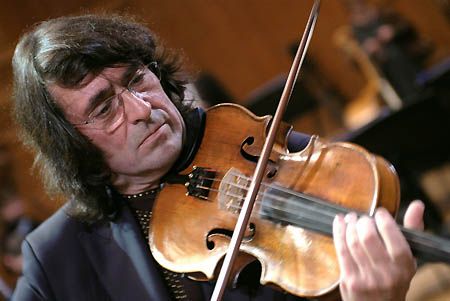
The world’s greatest living violist.
Source: Toccata Classics CD (my rip!)
Formats: FLAC, DDD Stereo, mp3(320)
File Sizes: 263 MB / 209 MB (incl. cover, booklet)
Download Link – https://mega.co.nz/#!WoITUaBA!AHJu41FhLkbCJwM21mrXqx2P5-c2Z42XrWk6VKYoMOk
mp3 version – https://mega.co.nz/#!ulgUlTDD!cMGJ1EOLLix2xuvJUGdL43CDoJIAr43ZC9puU1_ zmuA
Enjoy! Don’t share! Buy the original! 🙂
A wonderful discovery!
Many thanks, wimpel!
Perhaps best known for his collaborations with author Gertrude Stein, American composer and music critic
Virgil Thomson (1896-1989) was born in Kansas City. He began playing piano at the age of five and
began taking lessons with local teachers at age 12. He studied organ from 1909 until 1917, and again in 1919.
In the fall of 1919, Thomson enrolled at Harvard University, where he met three individuals who would come
to have a profound influence on the young musician. The first of these was Edward Burlingame Hill, with whom
Thomson studied orchestration and modern French music. Archibald T. Davison was the conductor of the
Harvard Glee Club, a group with which Thomson spent three years as assistant and accompanist. Thomson
also came into contact with S. Foster Damon, a Blake Scholar who introduced him to the music of Satie and
the writings of Gertrude Stein. Thomson began to compose in 1920, while still a student at Harvard.
From 1925 to 1940, aside from occasional visits to the U.S., Thomson resided in Paris. It was there, in 1926,
that he met Stein. The two began to plan an opera, the result of which is Four Saints in Three Acts, perhaps
Thomson’s most famous work. For a period of approximately seven years after the composition of Four
Saints in Three Acts, Thomson explored the problems of "pure" music as he worked on expanding his
technical facility as a composer, especially in regards to writing for string instruments. During the late 1930s,
Thomson returned to a more nationalistic vein with the scores to two films, The Plow That Broke the Plain
and The River, and a ballet, Filling Station (see my other mega-thread).
The Cello Concerto "Rider on the Plains", as the title strongly suggests, is one of Thomson’s most obviously
"American" works, a mellifluous and appealing piece that does not deserve its present neglect.
Music by Virgil Thomson & Charles Fussell
Played by the Nashville Chamber Orchestra & New England String Ensemble
With Emmanuel Feldman (cello) & Joy Cline Phinney (piano)
Conducted by Paul Gambill & Susan Davenny Wyner
"Virgil Thomson’s Cello Concerto “Rider on the Plains” is wholly marvelous, a bright,
breezy, beautifully crafted piece that really deserves to enter the repertoire. I suppose
its comparative brevity (20 minutes) counts against it, but the Saint-Sa???ns First
Concerto isn’t any longer and it gets played all the time. The thematic material is recognizably
“American”, and the formal treatment is clear, unfussy, and natural sounding. Charles
Fussell’s Right River variations for cello and strings is similarly straightforward and expertly
laid out, if a touch more self-consciously “modern”. It too would make a lovely addition to a
chamber orchestra concert featuring ensemble principals (it only lasts about 11 minutes).
After the two larger works, cellist Emmanuel Feldman includes a selection of short pieces
for violin and piano–five works from Thomson’s large series of musical “portraits”, and
Two Ballades by Fussell, less interesting and appealing music than Right River. Indeed,
if I have any quibble with this release, it is that the mixture of orchestral and chamber works,
though coherent in theory, makes for a much less interesting second half of the program.
Certainly this isn’t the fault of the performers, all of whom do very well. Feldman in particular
plays with real panache and a warm, singing tone in the outer movements of Thomson’s
concerto. He’s a joy, the sonics are terrific in all formats (SACD and normal stereo),
and for the two orchestral pieces alone I can recommend this disc without reservation."
Classics Today (9/9)
Source. Albany CD (my rip!)
Formats: FLAC, DDD Stereo, mp3(320)
File Sizes: 215 MB / 127 MB (incl. booklet)
Download Link – https://mega.co.nz/#!y0JU3RCb!RBmBKhnkrUj1di5FSMZbnhPv1Jh_58m22DwGrVj yC8E
mp3 version – https://mega.co.nz/#!2xh0Wa4Z!abD6unjR0z96kOg93FzM9UIeAPcSgjMyQ9KDD-EJ-D4
Enjoy! Don’t share! Buy the original! 🙂
Three mid-20th century violin concertos by British composers: Peter Racine
Fricker, David Morgan and Don Banks (the latter known to film music
enthusiasts for his Hammer Films scores, like e.g. The Reptile).
Music by Peter Racine Fricker, David Morgan & Don Banks
Played by the Royal Philharmonic Orchestra
With Yfrah Neaman (violin) & Erich Gruenberg (violin)
Conducted by Norman Del Mar & Vernon Handley
"Lyrita’s breathless reissue programme here produces a coupling which resolves a few challenges.
We have the Fricker and Banks issued in the 1970s. Together they are too short for a CD. Then
again Morgan’s Contrasts was added to a Lyrita anthology on SRCD.318 which left the Morgan Violin
Concerto orphaned and looking for a home which it did not need when it was cosied up to Contrasts
on Lyrita LP SRCS97. The result is a trio of three very different concertos from the 1950s and 1960s
unified in these world premiere recordings by the RPO.
Fricker was hardly ever a star. He emerged in the 1950s and had his measure of premieres but there
was to be no major enduring public coup. His reputation remains something of an unglamorous
quantity; perhaps not helped by his decamping to a Californian University from 1964. He died
in Santa Barbara. Not that geography should have made any difference to his critical reception.
The Concerto heard here comes from a copiously productive period between the First and Second
Symphonies – both recorded (RCA (not reissued on CD), EMI) – the Viola Concerto, the Piano Concerto
and the First Violin Sonata. In 1958 came his choral-orchestral piece, A Vision of Judgement,
premiered at the Leeds Festival under Groves. Of the little I know of his music this ‘oratorio’ has
the mark of something special. A mesmerising melodic fragment from that work endures with me
to this day.
The Fricker Violin Concerto is the first of two. The second, the unrecorded Rapsodia Concertante,
is from 1954. It has its moments both intimate and dramatic. There are touches here of the sultry
Walton in the middle movement. The outer two movements have the bark and grit of Bartok and
the melodic contours of the first Rawsthorne concerto but with the angularity chamfered somewhat.
Morgan was an even more peripheral figure. His only finger-hold – and that a narrow one – on public
knowledge derives from the Lyrita LP which made little impression when first issued in the 1970s.
His Contrasts has only been well received on its unshackled reissue a couple of months ago as
part of a multi-composer Lyrita odds-and-sods collection [review RECORDING OF THE MONTH].
His three movement Violin Concerto is more approachable than the Fricker. Its roots are struck
deep into the mulch of Walton, Vaughan Williams and Szymanowski. There is a devilish and
skittering air to the work in the middle movement. Its layout is familiar: two slow movements
framing a Presto. Its mien is such that one can easily imagine it having been taken up by
Heifetz in another life and another time. The finale has its episodes of military determination
mixed with a smilingly contented quasi-Bergian dreamland (6:34) swept asunder by a stomped
out and bongo-goaded gale.
After studies in Melbourne with Dorian Le Gallienne, Don Banks founded the Australian Musical
Association in London. This he did with Margaret Sutherland. Banks had been studying in the
UK with Matyas Seiber. Both Seiber and Banks had a strong interest in the shadowlands between
Jazz and Classical. Seiber co-wrote the Jazz Improvisations for jazz ensemble and orchestra
with Johnny Dankworth in the 1950s. Banks wrote a number of works in which those two
worlds collide. He studied with Dallapiccola, Nono and Babbitt and embraced serialism. The
Violin Concerto while tensely atmospheric is the most ‘extreme’ of the three concertos. Even
if you find the first movement difficult to take Banks immerses the listener in a fascinating
iridescent Bergian web in the Andante Cantabile. However fragmented this music is – and it
is typically explosive, hesitant and dysjunct – its sounds are always expertly crafted;
always in focus.
The liner-notes and audio production values are typically excellent. There are no crashed
gears between the British Council-derived tapes (Banks, Fricker) and the Lyrita original (Morgan).
The performances reflect a committed and expert advocacy. A sometimes challenging,
sometimes smiling collection of concertos otherwise lost to us in a beckoning vinyl Gehenna."
Rob Barnett, MusicWeb
Source: Lyrita CD (my rip!)
Formats: FLAC, ADD Stereo, mp3(320)
File Sizes: 325 MB / 174 MB
Download Link – https://mega.co.nz/#!6oRykCQa!NlebvhdKSVy01z8-9mEFQzD2l9YKQvz88YWgWu9fx3s
mp3 version – https://mega.co.nz/#!C5xFEDJC!KTG9IgtNH5lgSNuFsdRWXAm_f4wrt-UBYqHUiMWVnvE
Enjoy! Don’t share! Buy the original! 🙂
"In 1991 I composed and recorded a ‘cantata’ overnight as a challenge for
the BBC TV programme ‘Challenge Anneka’. It was done for a good cause, to help
promote ‘The Paralympics’ and a large crowd of participants and fundraisers joined
us at ITV in London to watch the first broadcast of it at 11.15pm that night April 17th.
I found myself talking to Bernard Atha who ran the Arts in Leeds. He was amazed
by it and wondered, since I could write a cantata overnight, whether I could compose
a full-scale violin concerto for Nigel Kennedy in time for the centenary of Leeds
in early 1993. I said that I had always longed to write such a work and would be
delighted. Arrangements began but although I knew Nigel I couldn’t get any response
from either him or his agent at that time. Years later his manager wrote and said
that when he moved offices he found my letter behind the radiator! That September
I was visiting a music festival in a castle near Steyr in Austria and heard some
terrific violin practise coming from the next room. I was so excited by the sound that
I sat down and sketched out the opening theme of the concerto, taking it to the
terrace where the violinist Christiana Edinger was having coffee. She said ‘Let’s try it’
and our host Ilona von Ronay suggested that we go to Bruckner’s house in the village
where there was a good piano. On playing it Christiane declared she would love to
give the premiere. I began work and finished the orchestration the following July.
Christiane then began rehearsing it, giving the first performance in February 1993.
My inner, personal motivation for composing the concerto was quite different.
My mother, who had played and taught me the violin, had died in 1990 to my
most heartfelt grief. On the title page of the concerto I placed a dedication
‘To the memory of a most true and saintly soul’."
Howard Blake
Music Composed by Howard Blake
Played by the English Northern Philharmonia
With Christiane Edinger (violin)
Conducted by Paul Daniel
"This is a fine example of the way Classical music should be heading in the 21st
Century. Lyrical, lush and romantic, the concerto uses the full range of the violin’s
expression without resorting to mal-treatment and noise. The orchestration is at
times sparse (a single flute at one point), at times mindblowingly broad, such as
at the climax of the second movement. The thematic tightness of the whole piece
makes it reward repeated listening. A wonderful work."
Amazon Reviewer
Source: ASV CD (my rip!)
Formats: FLAC, DDD Stereo, mp3(320)
File Sizes: 231 MB / 144 MB
Download Link – https://mega.co.nz/#!Wwp3EKLS!IiSTPSmWlMqnUgaa2yvnDkh7KcEDgYXqwd0F8pc 6PGU
mp3 version – https://mega.co.nz/#!64Z01KBQ!GBLO2gHcNIGReaptmVf1vTht3goevMjKniCZBol WI1k
Enjoy! Don’t share! Buy the originals! 🙂
Frank Martin was born in Geneva, Switzerland, on 15 September 1890. He was the tenth and
youngest child of a clergyman’s family. He attended classical languages high school and, to please
his parents, went on to study mathematics and physics at the University of Geneva for two years.
Simultaneously he started studying piano and composition with Joseph Lauber, who initiated him
in the "craft", especially in instrumentation. Between 1918 and 1926 Frank Martin lived in Zurich,
Rome and Paris.
In 1932 he became interested in the 12-tone technique of Arnold Sch???nberg. He incorporated
certain elements into his own musical language, creating a synthesis of the chromatic and twelve-tone
techniques, without however abandoning the sense of tone – that is, the hierarchical relations between
notes. Le Vin Herb??? (1941) was the first important work in which he completely mastered this
very personal idiom. Together with the Petite Symphonie Concertante (1944-45) it established
his international reputation.
Over the course of his career Frank Martin produced a series of pieces he called Ballades, all
one-movement works featuring a solo instrumental part, accompanied by symphony orchestra.
Music Composed by Frank Martin
Played by the London Philharmonic Orchestra
Conducted by Matthias Bamert
"The collection of Ballades is, for me, the ‘Prince’ among these five Chandos discs. Substantial single
movement essays provide an ideal medium for Martin’s Lutheran-tempered (if not subdued) voice. When
he uses voices (especially solo singers) he can tend towards an unvariegated recitative as the story is told.
This can infer monotony. The Piano Ballade is typically subtle with overtones of Ravel and a dramatic
smash and swing to its finale. The Trombone accentuates the chansonnier rather than the buffoon in
its short and lyrical episode.
Do not look for an unbridled ecstasy in Martin. His religious convictions (manifest in the music) do not
permit the sort of religious exaltation that crosses the divide into fleshly joys. Martin might thus be
compared to Herbert Howells but a Howells with a sombre Gallic accent and purged of the Delian abandon
that shakes the rafters and galleries in Missa Sabrinensis and Hymnus Paradisi.
The Cello Ballade could easily partner Edmund Rubbra’s Soliloquy and Nicolas Flagello’s Capriccio (1962)
both for cello and orchestra. It is given a rhythmic jolt by an ostinato that Martin may have encountered
in Sibelius’s Nightride and Sunrise. The shades are Dutch Master ochres and are perfectly matched to the
natural tones of the cello and its inclination to profundity and wonder.
The tightly bunched French tone of the solo in the Saxophone Ballade is contrasted with string writing
taking us to the chillier passages in Shostakovich’s Eighth Symphony. The Viola Ballade’s accents are
oriental with a dash of Stravinsky along the way – perhaps a linkage with Pribaoutki and the Japanese
Songs. The neatly chiselled Flute Ballade adopts a Ravel-like approach and mixes it with the engaging
chatter of Nielsen’s Flute Concerto.
Decca have recorded some of the Ballades before. Those for Piano, Trombone, Saxophone and Flute are
coupled with the Concerto for Seven Wind Instruments, Timpani, Percussion and Strings on Decca
444 455-2DH. The Royal Concertgebouw are conducted by Riccardo Chailly. The solo team includes some
of the most celebrated virtuosos of the age including John Harle and Christian Lindberg as well as
Roland Brautigam.
The fact is however that Chandos have the most natural and generous of couplings and this and the
inherent musical values of the music and its performance make this a preferred choice."
MusicWeb
Source: Chandos CD (my rip!)
Formats: FLAC, DDD Stereo, mp3(320)
File Sizes: 283 MB / 182 MB (incl. cover, booklet)
Download Link – https://mega.co.nz/#!K1okHS6B!dI_MLy1xDtUIKnuGNSVjcS_8fR0yMzGbOiQj7WW tmWE
mp3 version – https://mega.co.nz/#!ipQhTIJT!Z_oFSiXcdR4cjIX5Gx3CMRom50Ik72_FFIixGDw OIbA
Enjoy! Don’t share! Buy the original! 🙂
The Double Concerto for Bandone???n and Guitar is a relatively lyrical and tender work
by the Argentine master of Tango nuevo, who is often known for infusing his modern style of tango
with a sense of bitterness and loss. Astor Piazzolla (1921-1992) was of Italian descent, born
in a fishing village near Buenos Aires but often traveling to the United States to stay for extended
periods of time, including part of his school years. By the time he wrote this concerto he had
been gaining a sudden international popularity for a few years, and was even winning over
many in his homeland who had resisted his stylistic experiments with their beloved national dance.
He wrote this concerto for the Fifth International Guitar Festival, which was held in Li???ge, Belgium,
in 1985. Piazzolla wrote the work for guitarist Cacho Tirao and for bandone???n and played that
instrument at its premiere with Tirao and the Li???ge Philharmonic, conducted by Leo Brouwer
(himself a master composer for guitar). The opening movement is marked Introduction Lentamente.
This section is for the two solo instruments only. It is a piece clearly about loneliness and longing.
The absence of the orchestra facilitates the piece being written in a free, seemingly unmeasured
rhythm, allowing the soloists to create the impression of an improvised movement.
The central movement is marked Milonga. This is a song form with essentially the same rhythm
as the tango, but it is less accented, being a vocal work rather than dance accompaniment.
Moreover, a traditional milonga is likely to be lighthearted or romantic in mood.
The finale is a work of pure Tango nuevo. The choppy adaptation of tango rhythm, a surging
feeling at the end of phrases, adventurous harmonies, and other stylistic traits Piazzolla found
in North American popular music and in classical music are all hallmarks of this style and present
in the concerto. Piazzolla creates percussion effects by calling on the soloists to slap their instruments.
The remaining shorter works in this album are all Piazzolla favorites, especially Adi???s Nonino, a tribute
to the composer’s late father, and Milonga del ???ngel; also, Tres Movimientos Tangu???sticos Porte???os,
a work I already uploaded earlier (together with Luis Enrique Bacalov’s Triple Concerto).
Music Composed by Astor Piazzolla
Played by the Orchestre Symphonique de Montr???al
With Daniel Binelli (bandone???n) & Eduardo Isaac (guitar)
Conducted by Charles Dutoit
"Still the Piazzolla bandoneon keeps rolling. After celebrity excursions from Yo Yo Ma, Barenboim and Kremer,
not to mention innumerable arrangements and reinterpretations, comes this sumptuous and beautifully
recorded programme from Montreal. The notes speak of tango nuevo as a compound of chromaticism,
dissonance and jazz elements though you will be hard pressed to extrapolate much jazz from the fabric of
the scores – unless you count some innocuous sounding runs from solo instruments. In fact chromaticism
and dissonance are not the first things to spring to mind either; I would cite a filmic imagination, textured
sonorities, a quixotic structural sense, an occasionally inspired lyrical gift and some rather stale romantic
rhetoric.
That said the music begins unforgettably with Piazzolla’s most widely known and triumphant piece, Adios
Nonino, a tribute to his father. The 1981 orchestration opens with some all-purpose abrasion, percussive
clatter, staccato piano (much employed in the orchestral texture here and elsewhere) before opening
out into a tune of decisive beauty and tranquillity. Milonga del angel is evocative but essentially filmic.
The move from a winsome introduction to a more harmonically animated and austere middle section
is certainly welcome but the Francophile leanings of the composer are always present (the fact that
he studied, briefly I believe, with Boulanger is probably irrelevant here) inasmuch as the lyric impulse
is towards the status of a glorified chanson. The three movement Double Concerto was premiered by
the composer himself in 1985. The fusion of bandoneon – the mid nineteenth century German square
button accordion – and guitar is effective; the first movement is withdrawn, the second rather frisky
and the finale has a nice passage for solo violin with momentum increasing to the conclusion but the
thematic material itself is threadbare and the whole piece lacks any kind of direction or distinction.
Oblivion derives from a film score and features a winding oboe figure and bandoneon
quasi-extemporisation – attractive in its way but slight. The Tres movimientos tanguisticos
portenos are of a more rewarding stamp. There is some surprisingly fluent writing here from
woodwind, excellently taken runs from the Montreal players, intriguingly apposite textures (brass,
tambourine, percussive piano writing) and jaunty rhythms. The central movement however
bursts into what sounds like some Turkish belly dancing music, an exoticism too far for me,
in the context. Nevertheless there is some heady and surging music in the piece, and the focus
of the disc as regards sheer compositional craft as well as being of itself evocative both in texture
and in mood. Danza criolla is propulsive and colourful and replete with drum splashes, brass
interjections and piano outbursts. Tangazo, premiered in 1970 and sans bandoneon, is a
fourteen-minute single movement piece that embraces a range of moods and rhythms;
I can’t say I found it structurally convincing but it is certainly colourful."
Jonathan Woolf, MusicWeb
Source: Decca CD (my rip!)
Formats: FLAC (RAR), DDD Stereo, mp3(320)
File Sizes: 323 / 185 MB (incl. artwork & booklet)
Download Link – https://mega.co.nz/#!cIoDjT7K!C5DaNzVBMua-M13lU7SlTgyKDdksG5c15qzNPDcl6Ts
mp3 version – https://mega.co.nz/#!AURQhBCa!EtWBPWtnW5XND8frlCc1bndL4lwPjrR-ljn-MPxGFBE
Enjoy! Don’t share! Buy the original! 🙂
And a word of thanks or a "Like" click never hurt a downloader! 😉
A pacifist who believed that creative artists were the prime representatives of a civilization,
Gerald Finzi (1901-1956) is perhaps best known as a composer of songs. He believed that all
texts of artistic merit can be set by composers who wish to work with their artistic substance; none are
either too fine or too familiar. Many of his songs are set in an aria-like style. His accompaniments, designed
to complement and support the material of the singer, are often reminiscent of the treatment given
his short orchestral works. Finzi was influenced in his melodic and harmonic vocabulary by the music
of Elgar and Vaughan Williams.In 1933, Finzi married artist Joyce Black. In 1935, the couple moved
to Aldbourne in Wiltshire. Then, in 1937 they built a house, designed for them to work in, on a 16-acre
site on the Hampshire hills at Ashmansworth. From this base of operations, Finzi composed, assembled
a music library, and tended an orchard of rare apple trees. He also traveled, taking whatever adjudication,
examination, or committee work was offered him.
In 1951, Finzi learned that he suffered from a form of leukemia. He was told that he had, at the most,
ten more years to live. He kept this news within his family, simply continuing to work between his
treatments. In 1955, he gave the Crees lectures at the Royal College of Music; providing a somewhat
provocative survey of the history and aesthetics of English song during which he presented his principles
of text setting. He died of a severe case of shingles, exacerbated by his leukemia, in 1956.
This is a neat collection which brings together three of Finzi’s finest works in very good interpretations
from Canada (there are even more distinguished readings, but not in the same coupling). The song cycle/
"cantata" Dies Natalis is possibly his greatest achievement, recorded here with a soprano (most versions
use a tenor), and almost as fine is the later cycle Let Us Garlands Bring. The disc concludes with
his most popular work, the infectious and sharply defined Clarinet Concerto.
Music Composed by Gerald Finzi
Played by the Manitoba Chamber Orchestra
With Valdine Anderson (soprano), Russell Braun (baritone)
And James Campbell (clarinet)
Conducted by Simon Streatfeild
"Acclaimed by the Toronto Star as “Canada’s pre-eminent clarinetist and wind soloist”,
James Campbell has performed solo and chamber music concerts in 25 countries,
has been soloist with over sixty orchestras, including the Boston Pops, the London
Symphony, the Russian Philharmonic, and the Montreal Symphony and has performed
Copland’s Clarinet Concerto five times with Aaron Copland conducting. He has appeared
with over thirty string quartets, including the famous Amadeus Quartet when he
replaced an ailing Benny Goodman for a tour of California.
He has made over forty recordings, including the Debussy Rhapsody with Glenn Gould,
the Philharmonia Orchestra of London, and the premi???re recording of the Berio arrangement
of Brahms’s F minor Sonata with the London Symphony. His recording of Brahms’s
Clarinet Quintet was chosen by the BBC and The Times in London as the best available.
He has been awarded a Juno (Canada’s Grammy), Canada’s Artist of the Year, the
Queen’s Jubilee Medal, and Canada’s highest honour, the Order of Canada. James
Campbell has been Professor of Music at Indiana University since 1988 and Artistic
Director of the Festival of the Sound since 1985."
Source: CBC CD (my rip!)
Formats: FLAC (RAR), DDD Stereo, mp3(320)
File Sizes: 352 MB / 189 MB (incl. cover, booklet)
Download Link – https://mega.co.nz/#!5Rhh2STT!VywTpBkn1yli9q3vljEj_AoZaD0DWb6SBPWYEPI Sh2s
mp3 version – https://mega.co.nz/#!YFJBkbQb!JxUuSDRmvuEv6Z7rgt28fA3-pa9FgsoRHVCK6pXNQPM
Enjoy! Don’t share! Buy the original! 🙂
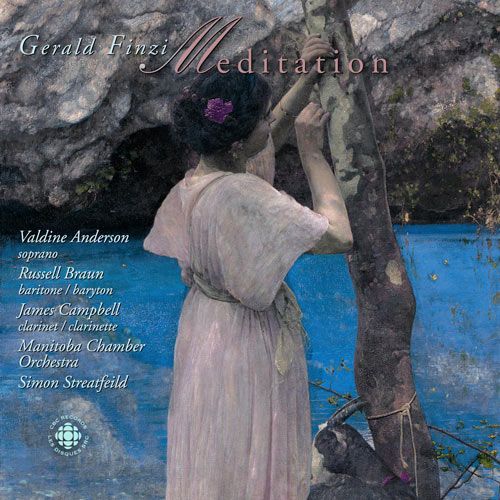
Music Composed by Gerald Finzi
Played by the Manitoba Chamber Orchestra
With Valdine Anderson (soprano), Russell Braun (baritone)
And James Campbell (clarinet)
Conducted by Simon Streatfeild
Fascinating to see this disc as the Finzi entry here, would have imagined the Cello/Clarinet Concerto pairing with John Denman and Yo-Yo- Ma getting uploaded here, although I like this choice as it gives me some new works to listen to. Thanks for your continued support of this thread, glad to see it’s still going strong! 😀
I got a number of versions of the Cello & Clarinet Concertos, including the Handley/Lyrita disc, and I was pondering to upload that, but the two vocal works here are really among Finzi’s very best, and because of the selection this album is beautifully balanced. 🙂
Lossless version of the Finzi is now up.
This collection of miscellaneous premiere recordings and/or commissions was released under the
banner "British Modern", which seems a tad dated when you look at the names of the
composers and the styles of the individual works. Even in 1957, when Louisville commissioned
Arthur Bliss’s Discourse for Orchestra, it is unlikely that it would have been perceived
as "modern" at the time. Admittedly, there are better works by this composer, too. The primary attraction
of this disc is the Trumpet Concerto by John Addison, a composer who came to notice for
his work in film music, for which he received one Academy Award (for Tom Jones) and where he
worked on many prestigious projects. He is today probably best remembered for the main title theme
for Murder, She Wrote. The Concerto is an attractive neo-classical work. The Arnold
and the Rubbra are both superior works, too.
Music by Arthur Bliss, Edmund Rubbra, Malcolm Arnold & John Addison
Played by The Louisville Orchestra
With Sidney Harth, Peter McHugh & Paul Kling (violins)
And Leon Napier (trumpet)
Conducted by Jorge Mester & Robert Whitney
"In the Fifties and Sixties, the Louisville Orchestra, under the guidance of its director
Robert Whitney and with the support of the Ford Foundation, embarked on one of the
most enterprising commissioning and recording series of its time. Whitney had wide-ranging
interests. Although he concentrated on American composers, he did not confine himself to
them. Like most talented commissioners, he seemed to know whom to ask for work.
Louisville premi???red live performances or recordings of scores by Martinů, Milhaud,
Hindemith, Bloch, Ibert, Foss, Hovhaness, Chou Wen-Chung, Riegger, Sessions, Mennin,
and Piston, among many others.
First Editions has repackaged many of the original recordings, and, thank goodness, in
a rational way. Here we have a selection of work by British composers. The Bliss and the
Rubbra were Louisville commissions. All four recordings were premi???res. The Louisville
First Edition series constituted an important part of my musical education ‘way back
when – an easy, mostly painless introduction to 20th-century music. Whitney, a
Britisher himself, knew the English scene quite well and could dig a bit deeper
to find more than the usual suspects.
Sir Arthur Bliss made his biggest splash in the Twenties and Thirties as an aggressive
British Modernist, aligning himself with Stravinsky and the younger French.
His Modernism, however, turned out mostly superficial – a matter of concept, really –
and his links to Elgar and late Romanticism soon became apparent. In the Thirties,
he was eclipsed by Vaughan Williams and Walton, in the Fifties by Britten. However,
he succeeded Bax as Master of the Queen’s Music, and his postwar music, with the
exception of his oratorio Morning Heroes (a work that comes out of his experience
of the First World War), remains the period of his work that interests me most.
Discourse belongs to this period. Despite his Romantic language, I find a strongly
objective, "illustrative" quality to his music. The music may build powerful climaxes,
but this does not usually indicate any sort of personal catharsis. It’s as if he observes
emotions at a remove, rather than feels them himself. I don’t condemn, I merely
describe the peculiar atmosphere of his music. For this reason, I think, some of his
most successful work he wrote for ballets and film scores. Usually, these genres
attract composers weak in structure, but that’s certainly not the case with Bliss.
Indeed, most of his music shows a strong architectural interest, and even playfulness.
One sees this in the Discourse, which combines features of a variation set with a
symphonic movement. Bliss later revised the score, not necessarily for the better
(he cut out my favorite section), and this is the original version. It’s a score of
great color and energy, but not necessarily of great depth.
Edmund Rubbra has an artistic personality almost the exact opposite of Bliss’ –
sober, serious, and introspective. Rubbra studied with Holst and through him
became enamored of the counterpoint of the Tudor composers, which he has
applied to modern classical forms. He’s a terrific symphonist, not all that interested
in theater, and his music characteristically meditates, rather than sings or dances
in the usual way, although it has both beauty and rhythmic interest. Much of the
time it unfolds like an Elizabethan fantasia. The Improvisation for violin and
orchestra, one of his finest scores, typifies his output. It proceeds in long, lyrical
lines – although the composer may not have conceived it that way. For the lines
consist of little bits of ideas, which Rubbra combines and recombines into new long
melodies. Unlike many other composers who work in this fashion, Rubbra never
leaves you in doubt as to where you are. Indeed, the effect of the score is that of
a long melody played under different moods. The effect, in a good performance,
is one of spontaneous inspiration. The score, however, shows the amount of work
that went into achieving that effect.
Malcolm Arnold began his career as an orchestral trumpet player and virtuoso.
His scores brim with the kind of practical, professional knowledge that players love.
However, this quality sometimes got in the way of critics, who used to attack him
as slick. His considerable income as a film composer didn’t help. Musically, Arnold
belongs to the Walton wing of British music. Unlike Walton, however, he feels the
influence of Mahler, especially drawn to the inclusion of "low" elements in serious
contexts. Early on, critics and audiences alike felt disoriented and put off, just as
their counterparts had with Mahler. This also contributed to the low level of Arnold’s
stock and the undervaluing of many of his scores. With the appearance, however,
of the seventh symphony, this assessment has been revised upwards.
Arnold has written at least twenty concerti, many of them for his friends or for
players he admired. The concerto for two violins, commissioned by Menuhin, stands
as one of his best. Although it lacks the composer’s characteristic vulgarity and raucous
humor, it compensates by a beautifully tight argument, contrapuntally advanced.
Arnold wrote it in memory of his two brothers, which accounts for its sober (though
neither stolid nor pompous) tone. It’s so well-written that it brings to mind the Bach
d-minor for two violins. The violins weave in and out in quasi-fugato and stretto. The
accompanying strings provide lean, muscular support. The slow movement crowns the
work: an intense, long-lined aria based on two related ideas, so that it becomes nearly
monothematic. One point of interest: the finale is a rhythmic rewrite of the opening
movement.
Like Malcolm Arnold, John Addison studied with Gordon Jacob at the Royal College of
Music. After making a splash in the early Fifties with such scores as his ballet Carte Blanche,
he became increasingly involved with theater and film. He scored John Osborne’s Luther
and The Entertainer and won the Academy Award for his music for Tom Jones. In the
Seventies, he disappeared into movie and TV work in Los Angeles, coming up with the
main title for, among other things, Murder, She Wrote. I wouldn’t hold it against him.
All the concert work by Addison I’ve heard has run on the light side, not excepting the
trumpet concerto. He reminds me more of a French composer like Ibert or Fran???aix, full
of blithe spirits, than the Modern British. The concerto, a masterpiece of light music,
allows the trumpet to saunter down the boulevards, like Charles Trenet.
It’s more important than profound: it’s loveable.
Paul Kling and Peter McHugh give a stirring performance of the Arnold, while Harth sings
with warmth and intelligence in the Rubbra. Trumpeter Leon Rapier is appropriately
cheeky in Addison’s concerto. The Louisville never was a first-rank orchestra, but it
worked heroically on behalf of, by definition, unfamiliar scores. The sound isn’t super-
swell, but it is acceptable."
Classical Net
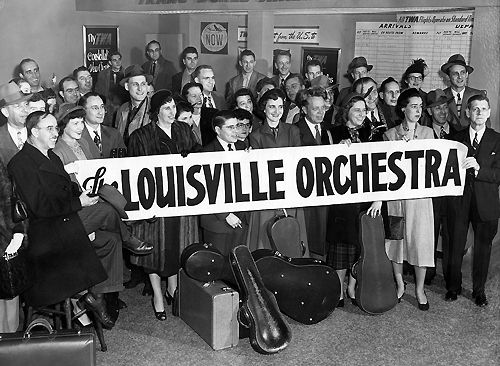
The Louisville Orchestra back in the day.
Source: Louisville "First Edition" CD (through Albany) (my rip!)
Formats: FLAC (RAR), ADD Mono/Stereo, mp3(320)
File Sizes: 360 MB / 156 MB
Download Link – https://mega.co.nz/#!5IRg1ZqC!RiKOj1RAOxyERbvk9ea9DHYUGFFbUr27vh1g4bz 5vdE
mp3 version – https://mega.co.nz/#!sYJDhSQB!JaQoCzXamwBaZ3KX_y73QiZyHRUu5W5pMVtdCKc dmVo
Enjoy! Don’t share! Buy the original! 🙂
And a word of thanks or a "Like" click never hurt a downloader! 😉
This album features premiere recordings of piano concertos by Georgy Catoire (1861-1926)
and Percy Sherwood (1866-1939), two worthwhile but neglected contemporaries who came to
musical maturity in the closing years of the nineteenth century. The Russian Catoire ??? who came into the
circle of Tchaikovsky, Arensky and Lyadov ??? wrote in that glorious musical time in Russia before the dissolution
of the Revolution, and it is remarkable that his heart-warming, lyrical Concerto of 1909 has been
unrecorded until now. To all intents and purposes, the German-born Percy Sherwood was a late romantic
composer, who made a significant career as both pianist and composer in Germany until 1914, but he died
in London in June 1939. His output derives from the late-nineteenth century romantic tradition, a character
particularly apparent in the gorgeous slow movement of his Second Piano Concerto (1932-33).
These are two delightful additions to the piano concerto repertoire.
Music by Georgy Catoire & Percy Sherwood
Played by the Royal Scottish National Orchestra
With Hiroaki Takenouchi (piano)
Conducted by Martin Yates
"These two concerti share almost no similarities except the slightly confused nationalities
of their composers. Georgy Catoire (1861???1926) was born and died in Moscow, but as you
can guess from his name, his family was French, prominent in Moscow business circles. Percy
Sherwood (1866???1939) was born in Dresden of an English father and a German mother. On the
eve of World War I he emigrated to England, living in Hampstead until his death on the
eve of the Second World War.
Sherwood was certainly the less lucky of the two. He studied at the Dresden Conservatorium
with Felix Draeseke and garnered attention as both a composer and pianist. He wrote five
symphonies and as many concerti for various instruments, as well as six string quartets and
other chamber music. In 1911 he was named professor of piano at his alma mater. Then it all
came crashing down. With the start of World War I, all things English became anathema in
Germany, including a native son with an English name. When Sherwood and his family relocated to
London, he found that his name didn???t ingratiate him with the British either. His conservative,
echt-German Romantic style was out of step with musical trends in England, and for the rest of
his life he had to make his way as a piano teacher though he didn???t stop composing; his
Second Piano Concerto dates from 1933.
Gregory Catoire also studied in Germany, in Berlin, and caught the Wagner bug while he was
there. Returned to Russia from his studies, he gravitated to the circle of Tchaikovsky and
Arensky, apparently more comfortable with these Western-influenced composers than with
the Mighty Handful. He became a professor of music at the Moscow Conservatory, numbering
Kabalevsky among his pupils. Unlike Sherwood, his catalog is relatively brief???a symphony
(which Martin Yates and his Scottish band have recently recorded for Dutton), some chamber
and solo piano music, and of course the Piano Concerto, Op. 21, completed in 1909.
However, unlike the unlucky Sherwood, Catoire???s music has been recorded more often.
The Concerto has an unusual structure, the long (nineteen minutes) first movement being
a set of six variations following an extended introduction, by turns lyrical and dramatic,
capped by a cadenza. So it sounds as if Catoire is putting the musical cart before the horse
in this movement, but it???s attractive all the same. The opening music has a kind of cinematic
sweep to it; in fact, it???s a bit like one of those phony concerti that film composers wrote into
their scores back in the 40s (you know, the Spellbound Concerto and Warsaw Concerto).
But the variations are very businesslike???interesting and accomplished???making for an
impressive opening, all in all.
The slow movement taps into a vein of melancholy dreaminess ??? la Russe, though its
central section is more restless and agitated, ending with a glittery splash of piano chords,
trills, and runs before a return to the tranquility of the opening. The finale starts bombastically,
recalling Scriabin in one of his more rhetorical poses. Again, I can???t help thinking this is movie
music before its time, but it???s all very pretty, especially for those who can???t get enough of
heart-on-sleeve Romanticism.
The Sherwood Concerto, then, makes a good foil because it???s Romanticism of the old school,
Germanic to the core. ???This is music that in 1933 was fifty or sixty years out of date??? quips
note-writer Lewis Foreman. In fact, Brahms???s Second Piano Concerto sounds modern by
comparison! But as with the Catoire piece, the music is likable, well crafted and with good tunes."
Audiophile Audition
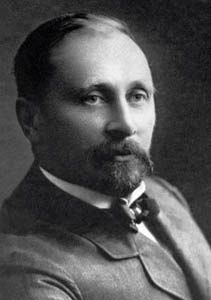
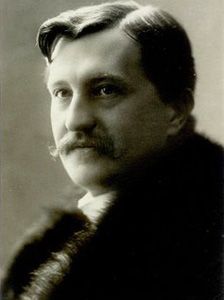
Georgy Catoire, Percy Sherwood
Source: Dutton Epoch CD (my rip!)
Formats: FLAC (RAR), DDD Stereo, mp3(320)
File Sizes: 280 MB / 213 MB (incl. cover, booklet)
Download Link – https://mega.co.nz/#!tYA2gRBC!Dxxu3jI4aYJYwOO07RfKLGkwN39_HtgrL38JM9b 6cag
mp3 version – https://mega.co.nz/#!AV4U2bZS!O_kyhF8_KBku7qN54LDD2SccpmlWySaNIdYImpT 7qCM
Enjoy! Don’t share! Buy the original! 🙂
I am looking for a long time, the trumpet concerto by malcolm arnold.
I only have an old cd emi with john wallace…. is there a good newer one in your collection?
You can post it, so the other followers can listen to that great music.
V.Kosma (or Cosma?) concertos and romantic flemish horn concertos.
Arthur Meulemans (1884-1964) was born in Aarschot; a town in the north of the
Flemish province of Brabant on 19 May 1884. When he was sixteen he enrolled at the
Lemmens Institute in Mechelen, where he studied organ with Oscar Depuydt, and was
taught counterpoint, fugue and composition by the Institute’s director Edgard Tinel. It was,
however, his teacher of harmony, Aloys Desmet, who opened his eyes and ears to the latest
scores of Richard Strauss, Gustav Mahler and especially those of Claude Debussy. The
startling harmonic audacity of the latter and his revolutionary orchestration technique would
leave their marks on Meulemans’ future composition.With more than 350 works to his credit,
Arthur Meulemans belongs not only qualitatively, but also quantitatively among the most
important Flemish composers from the first half of the twentieth century. roughly one third
of his list of works are orchestral pieces, including no less than fifteen symphonies, more
than forty concertante works for piano, organ and nearly every instrument in the orchestra,
except the double bass and the tuba, and a wealth of symphonic poems, suites, concertos,
overtures, variations, and so on. an incredible amount of this orchestral work was written
between 1930 and 1942, when Meulemans was conductor of the large symphonic orchestra
of the Institut National de Radiodiffusion, the then National Radio Orchestra of Belgium.
Marinus de Jong (1891 – 1984) was born in Oosterhout, The Netherlands. His teachers
at the Royal Flemisch Conservatory of Antwerp include Emile Bosquet (piano) and Lodewijk
Mortelmans (fugue). De Jong was a virtuoso pianist, who toured the USA in 1920, giving recitals
in New York and other large cities. In spite of his many concerts and his busy teaching career,
de Jong was a prolific composer, with works in all genres. One of his masterpieces is the oratorio
Hiawatha’s Lied op. 37 (1933 – 1947), set to the (Dutch) translation of Longfellow’s "The Song
of Hiawatha" by the Flemish poet Guido Gezelle.
Robert Herberigs (1886-1974) was a Flemish composer, painter and writer. He was born
in the East Flemish capital as the son of an emigrated Dutch Limburg Joseph Herberigs and
Charlotte van Beveren from Drongen. The least you can say about Robert Herberigs is that he is
versatile and very active. To our knowledge, he gained respect in his artistic activity in all three
branches of art; however, it became most known in the music world. He studied at the Conservatory
of Ghent, and in 1909 won the Prix de Rome. From 1951 to 1953 he was director of the Royal
Flemish Opera in Antwerp. In 1963 he received the Lifetime Achievement Award known as the
Peter Benoit prize; however, after 1966 he devoted himself entirely to painting. Herberigs wrote
two operas, orchestral works (including symphonic poems Cyrano de Bergerac for horn and
orchestra (1912), Antony and Cleopatra (1949) and Romeo and Juliet (1966)), spiritual choral
works (including masses), two piano concertos, 20 piano sonatas, chamber music, songs, and
among other compositions including the texts of Guido Gezelle and film music. In addition, he
published a number of regional novels, including The Pasterke Candeels and Wolvenhof. From
the Dutch Wikipedia site "The centipede could not resist even apricots to grow in the Ard???che,
on the estate Ch???teau Rochecolombe where his descendants now builds wine."
Music by Robert Herberigs, Arthur Meulemans, Marinus de Jong & Prosper van Eechaute
Played by the Belgian Radio and Television Philharmonic Orchestra
With Andr??? van Driessche (french horn)
Conducted by Alexander Rhabari
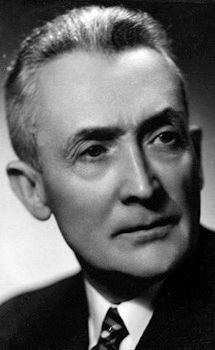
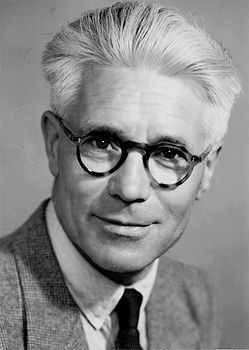
Arthur Meulemans, Marinus de Jong.
Source: Discover International CD (my rip!)
Formats: FLAC(RAR), DDD Stereo, mp3(320)
File Sizes: 307 MB / 191 MB (incl. covers, booklet)
Download Link – https://mega.co.nz/#!dAgTGAqA!Izk5-lP7mdp2zn3_D5yKlTvC_Ss-0VjQdV1vWTtPUxw
mp3 version – https://mega.co.nz/#!5ZBlVJiI!b3EsA0ca-qeYxneaOv-IfUvqUmVX2-8q_y8XaCxShWE
Enjoy! Don’t share! Buy the original! 🙂
And don’t forget your friendly uploader! 😉
Mikl???s R???zsa’s Violin Concerto of 1953 follows a conventional general path: an argument-bearing
first movement, a singing second, and a rapid-fire finale. The finale, fine in itself, seems a bit disconnected
from the other two movements, simply because they emphasize song and the finale emphasizes rhythm.
The concerto throws off plenty of drama, especially in the first movement where a flowing 3/4 theme contrasts
with one in a slightly hectic 6/8. After the cadenza, placed almost midway through the development, the
themes switch rhythmic milieus. The theme in 3/4 acquires the character of the 6/8 and vice versa. The
emotional wallop and the free, unforced singing quality of the concerto probably strikes most listeners first,
but R???zsa has put in plenty of headwork as well. The entire first movement grows out of the opening strain,
and gestures from it occur into the slow second movement as well, much in the manner of Tchaikovsky’s inter-
movement variants. One doesn’t find inexorable Beethovenian logic but rather a bunch of half-familiar
reminiscences. You’re not, in Roland Wiley’s phrase, quite sure whether you’ve "heard that song before."
In the same way, some of the slow-movement ideas find their way into the virtuosic finale, this time ginned
up and dancing wildly. This score brilliantly meets expectations of what a concerto "should" be.
The Concerto for String Orchestra dates from the 1940s. It is modeled after a Baroque concerto
grosso, although the material (while tonal) is modern. The Hungarian influence is particularly strong in
the third movement. There is a slight hint of Shostakovich in the last movement, not surprising given the
time of writing. No doubt R???zsa had heard the famous wartime recordings of the Leningrad Symphony
or at least seen the score of this or other Russian works perhaps the sixth symphony. R???zsa achieved
early success in Europe with his orchestral Theme, Variations, and Finale (Op. 13) of 1933,
which he composed before he emigrated to England. The driven, vigorously Hungarian piece was
also on the radio program that night in 1943 when a young Leonard Bernstein, without even having
had a rehearsal with the orchestra, replaced an ailing Bruno Walter in a New York Philharmonic concert
that catapulted him to stardom.
Music Composed by Mikl???s R???zsa
Played by the BBC Philharmonic Orchestra
With Jennifer Pike (violin)
Conducted by Rumon Gamba
"Hungarian Mikl???s R???sza (1907-1995) was a very interesting composer whose career somewhat
resembles that of Erich Korngold. Both composers became much better known and decidedly better
paid for their film scores back when movie scores were big orchestral works that required a composer
familiar with that “sound”. For example, R???zsa is probably best known to American audiences for
his score to the epic Ben Hur starring Charlton Heston. However, many might be familiar with his
music to the Hitchcock Spellbound. R???zsa wrote over fifty film scores; some massive, some a little
smaller scale but – none the less – this is the genre he became known for, which is why this third
volume in the Chandos set of his orchestral works is a great place to get to know his concert hall side.
The Violin Concerto, from 1953, is reason enough to own this disc. This is a wonderful very Bartok-
like work (R???zsa being a contemporary of his countryman) with a pulsing, modal opening and a simply
beautiful folk-like central movement and a driving finale that will again remind the listener of some
Bartok (I felt there are echoes of the Concerto for Orchestra). This is a very “orchestral work”
wherein the solo violin has plenty to do but, in several places, the orchestration is the show where
the solo line sounds more like a solo violin within the larger framework. I really enjoyed this work
and soloist Jennifer Pike is a terrific player.
The Concerto for String Orchestra, dating from 1943, offers similar pleasures. There is a fairly ominous
opening featuring a bit of interplay between the low voice and the upper strings. The tone of this
work is fairly dark throughout and it is said that R???zsa was undoubtedly affected by the war that
was ravaging his homeland at the time. There are some truly dramatic outbursts, balanced by
some very poignant and lovely solo lines for the violas and violins. Stylistically, this very fine
work is also reminiscent of Bartok and – interestingly – it was actually premiered by the Los Angeles
Philharmonic under his direction, while he was in the midst of his film scoring career. (R???zsa died
in LA and is buried there in fact).
This collection concludes with the Theme, Variations and Finale, a work from 1933 (later revised).
Structurally this is just what the title implies: a very nice set of variations for full orchestra based
on a theme which is first presented by the oboe. This work was written just at the time when
R???zsa was leaving his family to settle in Paris; an event that offered very mixed feelings for
the young composer. The variations within are cleverly scored and show a masterful use of
orchestral color including some beautiful and esoteric use of percussion, harp and celesta in
places. I found this a wonderful work that I compare most favorably to one of my other very
favorite – and quite “Hungarian” – theme and variations compositions, the “Peacock”
Variations of Kodaly.
I admit I am a sucker for the gypsy-infused sounds and modal melodies of the great twentieth
century Hungarian composers: Bartok, Kodaly, Dohn???nyi and one should include Mikl???s R???zsa.
I am anxious to track down the other volumes in this collection. This is very enjoyable music
and big compliments go to the amazing conductor Rumon Gamba, too. I am very familiar
with the terrific recordings put out by Gamba and his Iceland Symphony (which must be
heard to be believed) but this disc confirms that this conductor should become better known
in America as well. He is a major talent and this music is a major pleasant surprise!"
The Audiophile Audition
Source: Chandos CD (my rip!)
Formats: FLAC(RAR), DDD Stereo, mp3/320k
File Sizes: 343 MB / 194 MB (incl. cover, booklet)
Download Link – https://mega.co.nz/#!oRIijDSL!d_bgzmamMKtqtRkFU8rxxCp3RbJWG4ZuIpESiEG Dq7g
mp3 version – https://mega.co.nz/#!ZFoFBJKD!EGW8Wlvt8IfaQhrh9ql-wi2QoSABfKqLvYrHGK4akes
Enjoy! Don’t share! Buy the original! 🙂
And don’t forget your friendly uploader! 😉
Thank you very much for Mikl???s R???zsa.
Joseph Horovitz was born in Vienna in 1926 and emigrated to England in 1938. He studied
music at New College, Oxford, with Gordon Jacob at the Royal College of Music where he won the Farrar
Prize, and for a further year with Nadia Boulanger in Paris. The Festival of Britain in 1951 brought
him to London as conductor of ballet and concerts at the Festival Amphitheatre. He then held positions
as conductor to the Ballet Russes, associate director of the Intimate Opera Company, on the music
staff at Glyndebourne, and as guest composer at the Tanglewood Festival, USA.
His compositions number sixteen ballets, nine concertos, two one-act operas, chamber music, works for
brass band, television and radio, and a number of choral cantatas – most famously Captain Noah and
His Floating Zoo. Since 1961 he has taught at the Royal College of Music, where he is now a Fellow.
He has also won two Ivor Novello Awards, and in 1996 he was awarded the Gold Order of Merit of the
City of Vienna. The Worshipful Company of Musicians awarded him the Cobbett Medal in 2008 for
services to chamber music.
Included in this upload are four concertos, the first three of which are in a neo-tonal/romantic style
and could considered "British light music", the fourth is an infectious Jazz Concerto for piano, strings
and percussion. You will find further details about the works in the review quoted below.
Music Composed and Conducted by Joseph Horovitz
Played by the Royal Ballet Sinfonia
With Fiona Cross (clarinet) & Stephen Mead (euphonium)
And Andrew Haveron (violin) & David Owen Norris (piano)
"The Viennese-born ???migr??? composer Joseph Horovitz made his home in England and absorbed its
essence through his pores. He was a student of Gordon Jacob at the RCM and of Nadia Boulanger
in Paris. His music demonstrates more in common with Jacob than with Boulanger. Theatre, ballet,
opera and broadcast conducting posts made for a rewarding apprenticeship. There are sixteen ballets
including Alice in Wonderland for Festival Ballet (1953), nine concertos (oboe, trumpet, clarinet,
bassoon, euphonium, tuba, violin, percussion, jazz harpsichord/piano), various orchestral works, five
string quartets, a clarinet Sonatina, the Horrortorio (1959), a Hoffnung commission (familiar from the
EMI Hoffnung set) but let’s not forget the other Hoffnung special, the cantata Bournevita, Captain
Noah and His Floating Zoo (1970), and Summer Sunday (1975), an ecological cantata and an oratorio
Samson. Most recently there has been an opera Ninotchka.
No symphonies from this adopted Briton. That fits with the profile of his teachers Jacob and Boulanger.
Jacob wrote several but he was much more attuned to concertos, suites and chamber pieces. These
concertos present Horovitz as something of a chameleon, such is their variety. The Clarinet Concerto
is lyrical, lucid and makes free with the accustomed woodnotes amid the capering maenads and satyrs.
It’s from the same year as the Finzi and has that communing luminous impulse in common although
Finzi would not have infused the sauntering finale with such jazzy informality. The Euphonium
Concerto is grippingly determined yet exploits the considerable singing heart of the instrument.
There’s no buffoonery here especially not in the Lento whose long-spun melody has the lineaments
of a modest yet sweetly intoned carol. The finale has something of the quality of Frankel’s Carriage
and Pair, carefree and slightly showy yet not undignified in the manner of a slightly whimsical 1950s
British film score. The Violin Concerto (1949) is said by the composer – who should know – to be
strongly influenced by the neo-classicism of Les Six. I am not convinced. It seems to me to be pretty
romantic – even very redolent of the Barber at times. The Adagio bears something of the hand of
Bach (1:49) but there is a dignified voluptuousness about both the orchestral skein and the solo
line. The humming tension of the start of the folksy capering and skipping finale shows off the
excellent work done by the Dutton engineers. The Jazz Concerto exists in versions for piano and
for harpsichord. The title prepares you for the most overtly jazzy of the four concertos here.
The keyboard, bass and drums rhythm trio are active prominently in the two outer movements
which have the mien of the Jacques Loussier Bach of the 1950s and 1960s. The central movement
is a harmonically wayward Slow Blues with something of the sultriness of Gershwin’s Summertime
and the commercialism of Moon River. Sultry, yes, but this also a cooling episode.
We should not forget Horovitz’s entertaining Captain Noah And His Floating Zoo (1970) to words
by Michael Flanders Chorus with piano, bass and percussion. This was first issued on Argo LP
ZDA 149 in 1972 and has now been reissued on Dutton CDLF8120. Discover Horovitz the craftsman
whose touching cantilena is as accomplished as his jazzy lightness of being. Let’s now hear the
other concertos, please."
Musicweb
Source: Dutton Epoch CD (my rip!)
Formats: FLAC(RAR), DDD Stereo, mp3(320)
File Sizes: 347 MB / 195 MB (incl. covers, booklet)
Download Link – https://mega.co.nz/#!4YYyEZ4Q!F-h-22dp1xE_fL8QTSd6pxou1K80vw2iPcRCeF7gnZE
mp3 version – https://mega.co.nz/#!0UJQkL4b!Dm_XnE_qBV4-vLBoV2fgkUtpZetQWqCFY4Z0zm3k7Ds
Enjoy! Don’t share! Buy the original! 🙂
And don’t forget your friendly uploader! 😉
This is an upload following a request for Peter Schickele’s Pentangle (Five Songs for French Horn and Orchestra).
Schickele, of course, is best known for his music parody shenanigans as "P.D.Q. Bach" (Oedipus Tex, 1712 Overture,
Concerto for Vacuum Cleaner and Orchestra, etc), but he composed quite a lot of "serious" concert music as well,
and of course the popular film score Silent Running. In Pentangle, Schickele can’t help himself but to
include a little twist, or joke, which I won’t be giving away.
The other two pieces are more straight-faced, or serious, if you will – Norman Dello Joio’s Homage to Haydn and
Vincent Persichetti’s Symphony No.8, the latter being the even more weighty. Both could be considered
"neo-classical", although not truly of the same ilk.
Music by Norman Dello Joio, Peter Schickele & Vincent Persichetti
Played by The Louisville Orchestra
With Kenneth Albrecht (French horn)
Conducted by Leonard Slatkin & Jorge Mester
"The Haydn work is the most attractive piece of Dello Joio I have heard. Across its three movements
(beautifully recorded – as are all the tracks here) it includes Haydn-Beethoven pastiche with a rebellious American
jolt, a restfully sustained Baxian glow (adagio) and an uproariously flickering Waltonian allegro.
Peter Schickele (‘onlie begetter’ of P.D.Q. Bach) is much more than the periwigged Clown Prince who has
haunted record catalogues since the 1960s. Schickele, the Iowan, arranges his five movements under
sub-title ‘Pentangle’ intending to create a resonance with enchantment. The music’s five named movements
and its character are all easy on the air without being facile. The composer intended the five movements to
approximate to the effect of a single side of a folk-rock LP album of the 1970s from the likes of Fairport
Convention or Pentangle. The movements are songful, in the case of Tom on the Town, grittily confrontational
between soloist and the orchestra’s own horn section, humorously ‘Cowboy’ (Copland rattles the dust from
the rafters) and a surprise. Overall this music stands confidently between Copland folk-style and music
theatre. This is extremely attractive music if hardly profound – but then who needs profound all the time?
Persichetti, who has often had his premieres in his home city of Philadelphia, has been jostled into the
shade by Mennin, Piston, Hanson and Schuman. The Eighth Symphony is easy to appreciate, pliably responsive
and lyrical with the lightest dusting of atonality, sometimes ruffled by Beethovenian protest, and rippling
restive rhythmic material, welcoming of Schuman-style adagio writing for the strings, accessibly chugging
and chuckling, spitting and venomously triumphant in the finale. Ultimately that finale reeks of a formula
(Schuman again) for closure rather than ringing with the conviction of symphonic consummation; some
very fine music along the way though. Naxos should really give us the complete cycle."
Musicweb
Source: Louisville First Edition (via Albany Records) (my rip!)
Formats: FLAC(RAR), ADD Stereo, mp3(320)
File Sizes: 344 MB / 165 MB
Download Link – https://mega.co.nz/#!sEohGJiS!NFIvph1WB8kiLNSGMBotSQrFMqZyOvlkdiakICI 73to
mp3 version – https://mega.co.nz/#!UFoxASyb!LOWwgAVTpxR9Y_8Q2j2alSvDn2cWmrlXTofT89t 8Lg4
Enjoy! Don’t share! Buy the original! 🙂
As a follow-up to her first CD of original theremin works, "Music from the Ether", Lydia Kavina returns with
first recordings of major works for theremin and ensemble. The album features the first recording of
Mikl???s R???sza’s chamber version of music from the Hitchcock film Spellbound, a suite from
Howard Shore’s Ed Wood, compiled especially for Kavina, who had performed on the original movie
soundtrack as well. Leading Austrian composer Olga Neuwirth created a suite from her opera
Bahl???ams Fest. In it, the theremin is treated as an ensemble member, aptly combining it with
strings, electric guitar, soprano saxophones and water-filled glass to reveal hitherto unsuspected possibilities
for the instrument’s stereotypically eerie voice. Again, Kavina performed in the opera’s premiere.
Christian Wolff wrote Exercise 58 especially for this project. Shore and Wolff supervised the
recording and rehearsal of their works. There are also three short pieces by the always adventurous
Australian composer Percy Grainger, scored for theremin(s) alone.
This same program was premiered at the 2000 Lincoln Center
Summer Festival to a sold-out audience and received rave reviews.
Music by Howard Shore, Percy Grainger, Olga Neuwirth, Christian Wolff & Mikl???s R???zsa
Played by the Ensemble Sospeso
With Lydia Kavina (theremin)
Conducted by Charles Peltz
"Leon Theremin’s grand-niece, Lydia Kavina was born in Moscow and began studying the
theremin under the direction of Theremin himself when she was nine years old. Five years
later she was ready to give her first theremin concert, which marked the beginning of a
musical career that has so far led to more than a thousand concerts and theater, radio and
television performances worldwide. She has appeared as a solo performer at such prestigious
venues as the Grand Hall of the Moscow Conservatory, the Moscow International Performing
Arts Center (with the National Philharmonic of Russia, under Vladimir Spivakov) and the
Palace Bellevue in Berlin (the residence of the German president) and has been a guest
artist at leading music festivals around the world, including Caramoor (with the Orchestra
of St. Luke’s), the Lincoln Center Festival, the Holland Music Festival, the Martinu Festival
and the Bourges International Electronic Music Festival.
Together with the London Philharmonic Orchestra, she performed in Howard Shore’s
soundtrack of the Oscar-winning film Ed Wood, as well as in eXistenZ (also by Shore)
and The Machinist (music by Roque Banos). She has also been featured in stage productions,
including Alice and The Black Rider (both conceived and directed by Robert Wilson, with
music by Tom Waits) in Hamburg’s Thalia Theater, and in collaboration with the Russian
experimental surf band Messer Chups. She also performed in The Little Mermaid, a ballet
by Lera Auerbach, choreographed by John Neumeier, in Copenhagen’s New Opera
House and in the Hamburger Staatsoper.
As both a composer and a performer, Kavina has significantly enlarged the theremin
repertory. Her concerto The Seasons of the Year was premiered by the Boston Modern
Orchestra Project, directed by Gil Rose. Works written for her include Lydia for theremin
and string quartet by Jon Appleton, Mixolydia for theremin and tape by Jorge Antunes
and Glissandi for 3-6 theremins by Jorge Campos. In collaboration with Barbara Buchholz
and the Kammerensemble Neue Musik Berlin, Lydia Kavina created the performance
and recording project Touch! Don’t Touch! (Wergo, 2006) in which eight Russian and
German composers were commissioned to write pieces for two theremins and
chamber ensemble.
Kavina is a highly sought-after teacher and recording artist. She created a video
tutorial Mastering the Theremin for Moog Music and has given private lessons and master
classes in Western Europe, Russia and the United States. She holds a degree in
composition from the Moscow Conservatory, where she also completed a postgraduate
program. Her solo recordings include Music from the Ether (mode 76, 1999;
remastered 2005), Lydia Kavina: Concerto per Theremin; Live in Italy (Teleura, 2000)."
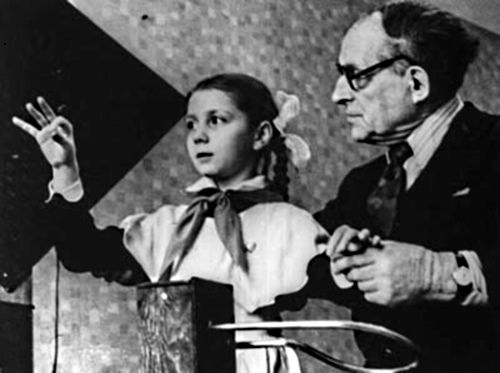
Lydia Kavina at age 9, with Leon Theremin
Source: Mode Records (my rip!)
Formats: FLAC(RAR), DDD Stereo, mp3(320)
File Sizes: 251 MB / 143 MB
Download Link – https://mega.co.nz/#!ZNIETAwY!Qzkomy4uQlXRRh1DBPotcULI544r6fUOjEXVH2V wS7A
mp3 version – https://mega.co.nz/#!0RRBjB5L!O2_Dnl1f1Sgil-cfhctEV0NsCjkX4YFnE1KZUsgnSCA
Enjoy! Don’t share! Buy the original! 🙂
And don’t forget your friendly uploader! 😉
Eric Ewazen is an important American composer active in the latter twentieth and
early twenty first centuries. He has demonstrated considerable versatility in his output,
producing orchestral, piano, vocal, chamber, and various other works. He has favored
brass and wind instruments in many of his compositions, however, and exhibits a unique
style often tinged with the spirit of Copland, Creston, and other iconic American composers,
and a melodic facility one critic compared to Prokofiev’s, not that there is anything
particularly Russian about his music.
Ewazen was born in Cleveland on March 1, 1954. He enrolled at the Eastman School of
Music in 1972 and after graduating went on to Juilliard, where he earned a doctorate degree.
Among his teachers were Milton Babbitt, Joseph Schwantner, Samuel Adler, and Gunther
Schuller. He was active in composition even in his student years, turning out such works
as Dagon for 5 cellos (1973), Psalm 90 for baritone, horn and piano (1977),
and Kronos for brass quintet and tympani (1979). After receiving a BMI Award for
Dagon, Ewazen continued with a string of composition prizes, his harvest including a
Louis Lane Prize (1974) and Howard Hanson Prize (1976).
Ewazen joined the faculty at Juilliard in 1980 and serves as professor of composition there.
He remained active in composition with highly successful works like the Colchester Fantasy
for brass quintet and Ballade for clarinet, harp, and strings, both from 1987, and
the American Indian-inspired 1996 work Shadowcatcher for brass quintet and orchestra,
regarded by many critics as one of his finest compositions. From the 1980s onward Ewazen
extended his ties to education and to actively promoting serious music in general by accepting
numerous invitations to appear at universities in the United States and abroad
The three works featured on this album are all cast in an attractive neo-tonal idiom, which
is popular among contemporary American composers (ending the phase of avantgarde
alienation from the audience that had been prevalent in the 1960s to 1980s).
Music Composed by Eric Ewazen
Played by the International Sejong Soloists
With Adele Anthony (violin) & Linda Strommen (oboe)
Conducted by Hyo Kang
"Ewazen’s violin concerto was premiered in 2000 by the St. Luke’s Chamber Ensemble.
He was composer-in-residence there at the time, and the work for oboe and strings,
Down a River of Time, comes from 1999, but both these and the Sinfonia could easily have
been written 60 years earlier. Ewazen’s language is traditional and conservative. These are the strings
of Bliss (but without Bliss’s acidic edge), Frank Bridge, even Elgar. In the Oboe Concerto, we’re
in the same ballpark as Roy Harris: just sample the open, easy-going Americana of the third movement.
So is that a plus or a minus? It really depends on what you are looking for. Nowadays many composers
have reclaimed traditional form and tonality, which concert audiences never abandoned, but they manage
to use these elements in a new and individual way.
The violin concerto sets off at a cracking pace in a movement described by the composer in his
CD notes as "rhapsodic," although that might imply a tendency to ramble, which is definitely not the
case here. Some of the figuration, and the contrapuntal uses to which it is put, could be described
as neo-Classical. The style is akin to Roussel in its forward-moving momentum (a quality contemporary
music conspicuously lacked for decades). Anthony throws herself into the solo part with panache,
caressing the soaring solo lines of the second movement’s variations with a sure touch.
Down a River of Time was written in memory of the composer’s father who died at Christmas 1997,
and commissioned by the present soloist in honor of her own late father, so there is a good deal of
personal feeling invested in the piece. The second movement (Ewazen is very much a three-movement man)
allows us to drift through a series of memories, as one might drift down a "river of time," recalling
and savoring various moments in nostalgic reflection. Oboe and string orchestra are the perfect vehicles
for this. It is a particularly lovely movement and, while episodic, it never falls into all-purpose mood
painting; at each point, the composer retains a sharp focus. The outer movements are more sprightly
but still exhibit the memorial flavor in which the work was conceived. Linda Strommen plays with skill
and feeling, producing a beguiling tone."
Fanfare
Source: Albany Records CD (my rip!)
Formats: FLAC(RAR), DDD Stereo, mp3(320)
File Sizes: 308 MB / 149 MB (incl. cover & booklet)
Download Link – https://mega.co.nz/#!Bx0UyZxT!As69oxuzF5PuOpLVAPobhHY_yI1PpZKBqO8tylt HrK0
mp3 version – https://mega.co.nz/#!ANgFSIAK!e5F2dDuJu9cjDCBbjglwlF8l9eYrjQTkdkuT0oD 4uT0
Enjoy! Don’t share! Buy the original! 🙂
And don’t forget your friendly uploader! 😉
American composer George Antheil (1900-1959) clearly took some kind of pride in being
labeled "the bad boy of music" — he used the phrase as the title of his 1945 autobiography. In the
1920s he was notorious as the composer of Ballet Mechanique, written for an experimental film but
creating outrage during concert performances, thanks in part to a roaring airplane propeller in its
percussion section. He was also known for being one of those young Americans in Paris in the ‘20s,
hanging out in literary/musical circles and fusing jazz to modern classical music.
The great influence on the First Piano Concerto (1922) is not jazz, however. The CD booklet article
calls the piece "a quite unmistakable tribute to Igor Stravinsky," but the word "plagiarism" might occur to
the unkind, considering the strong echoes in particular of Petrouchka, which is more or less quoted
in a number of places. But the concerto, in one 22-minute movement with an unpredictable structure, has
attractive qualities of its own: a sprightliness and breeziness, more French than Russian; colorful percussive
writing for the piano; fresh, playful orchestration, dominated by woodwinds and brass; and quieter passages
that contrast the predominantly perky mood.
The Second Piano Concerto, dating from 1926, is about the same length as the First, but is divided
into three movements connected without a break: a longer Moderato followed by a Largo and an Allegro.
Again winds dominate the chamber-orchestra texture, but there are few moments that could be called brash,
and this concerto’s Stravinskian echoes are neoclassical and rather less conspicuous. It’s a difficult piece
to characterize beyond saying that it has neo-baroque elements, especially in the piano writing; recurring
themes, though it’s full of unpredictable turns; and a cool rather than hyper-emotional demeanor, with a
quiet, tossed-off ending. If a piece of music can be genial and aloof at the same time, this is such a piece,
as vernal as the First Concerto but less "boyish," more calmly confident.
Antheil’s Jazz Symphony, the most familiar work on this CD program, is an 8-minute piece written
in 1925 for the same Paul Whiteman concert that premiered Gershwin’s Rhapsody in Blue. Unfinished in time,
it had to wait two years for its own premiere, with the W.C. Handy jazz orchestra, only to be overshadowed
by the scandal of Ballet Mechanique on the same program.
Music Composed by George Antheil
Played by the Radio-Philharmonie Hannover des NDR
With Markus Bender (piano)
Conducted by Eiji Oue
"Aside from his legendary Ballet m???canique, which still gets played as a kind of souvenir
of the madcap 1920s, George Antheil’s concert music has mostly fallen into obscurity. In
spite of his reputation as an enfant terrible who hobnobbed with the leading lights of the
avant-garde, his works attract less attention than the details of his life. Yet this state of affairs
might be reversed if this delightful release from CPO gets proper distribution, for the pieces
presented here are worth hearing in their own right, in addition to whatever biographical interest
they may hold. The Piano Concerto No. 1 (1922) has a few obvious touches of Bart???k and
Debussy, and more than a little borrowing from Stravinsky’s Petrouchka, but in spite of these
derivative aspects, it is an imaginative composition with lively repartee between the pianist
and the orchestra and quicksilver changes of mood. Somewhat more independently developed,
consistent in material, and mature in style, the Piano Concerto No. 2 (1949-1950) is almost as
entertaining as its predecessor, though it is tinged with a melancholy not found in Antheil’s brash,
youthful works. A Jazz Symphony (1925, rev. 1955) smacks of Ballet m???canique’s chaos and
irreverence, and its surrealistic jumble of dance tunes and rapid metrical changes may suggest
to some ears a nightmarish montage by a Gershwin or a Milhaud. The 2004 performances
by pianist Markus Becker and the NDR Orchestra, conducted by Eiji Oue, are bright and vibrantly
colorful, and the program is enhanced with five short encores for piano solo, which Becker
delivers with charm and wit."
All Music
Source: CPO CD (my rip!)
Formats: FLAC(RAR), DDD Stereo, mp3(320)
File Sizes: 221 MB / 166 MB
Download Link – https://mega.co.nz/#!ZUAyiboK!MrGe3jA07CKkgQcBEL92hXwdiG1V_ZxOizhDyi4 D_lE
mp3 version – https://mega.co.nz/#!MZYnSQpb!EBCHvgtoZFHU6MYxCEhexxtV7HdtT2VAjss6Xgj jijQ
Enjoy! Don’t share! Buy the original! 🙂
The Turtle Island String Quartet has prided itself with stretching musical boundaries that record
labels, radio, the press, record stores, and even their own fans are not sure if there’s one predominate
style of music in which they can be categorized. Following the departure of one of the group’s founders,
David Balakrishnan (who still wrote for the group and eventually returned), the quartet widened their
musical horizons even more. They are featured in excerpts from several 1994 concerts with the
Detroit Symphony Orchestra, conducted by Neeme Jarvi, on this CD for the English labe
l Chandos. Balakrishnan’s occasionally eerie two-part suite Spider Dreams opens the disc. The opening
movement, "Introductions," of Jeff Beal’s four-part suite Interchange is reminiscent of the
symphonic works of Frank Zappa and is fully composed, while the remaining sections gradually add
improvisational elements. Dizzy Gillespie’s A Night in Tunisia was one of the stunning
tracks of the Turtle Island String Quartet’s debut recording; this version with orchestra was co-arranged
by Balakrishnan and Vince Mendoza.
Music by David Balakrishnan, Jeff Beal, Dizzy Gillespie, Miles Davis & Johann Sebastian Bach
Played by the Detroit Symphony Orchestra
With The Turtle Island String Quartet
Conducted by Neeme J???rvi
"Its name derived from creation mythology found in Native American Folklore, the
Turtle Island Quartet, since its inception in 1985, has been a singular force in the creation of
bold, new trends in chamber music for strings. Winner of the 2006 and most recently, the 2008
Grammy Award for Best Classical Crossover Album, Turtle Island fuses the classical quartet
esthetic with contemporary American musical styles, and by devising a performance practice
that honors both, the state of the art has inevitably been redefined. Cellist nonpareil Yo-Yo Ma
has proclaimed TIQ to be “a unified voice that truly breaks new ground – authentic and passionate
– a reflection of some of the most creative music-making today.”
The Quartet’s birth was the result of violinist David Balakrishnan’s brainstorming explorations
and compositional vision while completing his master’s degree program at Antioch University
West. The journey has taken Turtle Island through forays into folk, bluegrass, swing, be-bop,
funk, R&B, new age, rock, hip-hop, as well as music of Latin America and India …a repertoire
consisting of hundreds of ingenious arrangements and originals.
Another unique element of Turtle Island is their revival of venerable improvisational and
compositional chamber traditions that have not been explored by string players for nearly
200 years. At the time of Haydn’s apocryphal creation of the string quartet form, musicians
were more akin to today’s saxophonists and keyboard masters of the jazz and pop world,
i.e., improvisers, composers, and arrangers. Each Turtle Island member is accomplished in
these areas of expertise as well as having extensive conservatory training as instrumentalists."
Source: Chandos CD (my rip!)
Formats: FLAC(RAR), DDD Stereo, mp3(320)
File Sizes: 290 MB / 141 MB (incl. cover & booklet)
Download Link – https://mega.co.nz/#!xRRx2BBL!DcBP7kZd377NO2uTYYA53Qq2AZcwWc2St1AWUWY pyZg
mp3 version – https://mega.co.nz/#!lUwknQ4K!TNBn0yPr9eT6ByPZ7DrxHSjepoMjBq4GvYJOVoJ oVcY
Enjoy! Don’t share! Buy the original! 🙂
Thank you for The Turtle Island String Quartet!
No.86
John Corigliano on his Concerto for Violin and Orchestra, "The Red Violin": "My third
film score (The Red Violin) gave me an opportunity to visit my own past, for my father, John
Corigliano (I was a “jr.”) was a great solo violinist and the concertmaster of the New York Philharmonic
for more than a quarter of a century. My childhood years were punctuated by snatches of the great
concertos being practiced by my father, as well as scales and technical exercises he used to keep in
shape. Every year, he played a concerto with the Philharmonic (as well as in other venues), and I
vividly remember the solo preparation, violin and piano rehearsals, orchestral rehearsals and the
final tension-filled concerts (where I would sit backstage in the Carnegie Hall green room, listening
to my father over a small speaker breathlessly playing the work in my head and listening to make
sure everything came out all right.)
It is no wonder that the concerto form, and the violin concerto in particular, has a deep place in my
heart. I have written a half-dozen concerti, but this is my first one for my first love, the violin. It is
an “in the great tradition” kind of concerto, because I wrote it in an attempt to write the piece my
father would love to play. Because he inspired it, it is dedicated to his memory.
The event that galvanized my energies into composing this concerto was, of course, the scoring
of the film The Red Violin, directed by Fran???ois Girard, and featuring the sublime young virtuoso,
Joshua Bell as the voice of the violin. Josh’s playing resembles that of my father; he is an artist
in the grand tradition. No cold, clinical dissection of a work would flow from his bow. The story of
The Red Violin is perfect for a lover of the repertoire and the instrument. It spans three centuries
in the life of a magnificent but haunted violin in its travels through time and space. A story this
episodic needed to be tied together with a single musical idea. For this purpose I used the Baroque
device of a chaconne: a repeated pattern of chords upon which the music is built. Against the
chaconne chords I juxtaposed Anna’s theme, a lyrical yet intense melody representing the violin
builder’s doomed wife. Then, from those elements, I wove a series of virtuosic etudes for the
solo violin, which followed the instrument from country to county, century to century. I composed
these elements before the actual filming, because the actors needed to mime to a recording of
these works since their hand motions playing the violin would have to synchronize with the music.
Then, during the summer of 1997 while the film was being shot all over the world, I remained at
home and composed the seventeen-minute The Red Violin: Chaconne for Violin and Orchestra.
And, like Schumann, I decided to add some movements to the existing chaconne (he to his piano
and orchestra fantasy) and make it a full-length concerto. In my case, that meant composing
another three movements to balance the large first one. The other movements are connected to
the first (and the film) in different ways: the first is a fleet Pianissimo Scherzo in which the dynamics
are soft, but the action wild and colorful. I wanted to break the romantic mood of the first movement
with sonoric and timbral effects that create a sparkling, effervescent energy. A central trio is
distantly related to Anna’s theme, but here heard in knuckle-breaking double harmonics by the
soloist—high, ethereal, and dance like. The third movement (Andante Flautando) starts with an
intense recitativo that is more closely related to the film’s main theme, but soon gives way to a
gentle, rocking melody played by the soloist in an unusual manner that results in his sound
changing to that of a flute (flautando.) He and the alto flute pair up as a complementary duo in
this theme. The final movement (Accelerando Finale), as the title suggests, is a rollicking race
in which the opposed forces of soloist and orchestra vie with each other."
Jaakko Kuusisto (b. 1974) is one of Finland’s most versatile musicians, with a busy schedule
as violinist, conductor and composer. Having won prizes at several international violin competitions,
he is a frequent guest artist with Finnish orchestras and festivals. His performances often include
a combination of playing and conducting, and he is known for a wide variety of repertoire, also
including music outside the classical genre. His compositions include three operas, several
chamber music works, and music for motion pictures.
Kuusisto studied composition with Eero H???meenniemi at the Sibelius Academy and David Dzubay
at Indiana University. His most recent work is a Violin Concerto dedicated to Elina V???h???l???,
premiered with the Lahti Symphony in 2012.
Music by Jaakko Kuusisto & John Corigliano
Played by the Lahti Symphony Orchestra
With Elina V???h???l??? (violin)
Conducted by Jaakko Kuusisto
"The novelty in this Swedish release lies not necessarily with the performances by American-Finnish
violinist Elina V???h???l???, which have little to object to, but with the program. For all the success of John
Corigliano’s score to The Red Violin and its subsequent rearrangement and expansion into a violin
concerto, success that has been international in its dimensions, the work has rarely been taken
out of American surroundings. It’s highly enjoyable to have it bump up against some contemporary
Scandinavian music, in this case a violin concerto and a short symphonic poem, Leika, Op. 24, by
the Finnish composer and conductor Jaakko Kuusisto. The latter two works will be new to most
Finnish listeners as well as those in the English-speaking world. They fall into the large group of
works that extend the Sibelius ethos into the modern compositional realm, with brilliant orchestral
effects, an imposing sound, and traditional forms and tonal languages greatly extended rather
than completely discarded. Sample the momentum of the concerto’s finale (track 4), which holds
up well in comparison to its models. The parallels with Corigliano, an American extended romantic,
emerge as the album unfolds and bespeak the development of a new stylistic consensus, or at
least reference point, in an age of diversity. Highly enjoyable from start to finish, and aided by
impressive SACD engineering work at the Sibelius Hall, Lahti, Finland."
All Music
Source: BIS SACD (my rip!)
Formats: FLAC(RAR), DDD Stereo, mp3(320)
File Sizes: 295 MB / 178 MB
Download Link – https://mega.co.nz/#!sBxnVYzC!OeZjXQkoVAnCx1l2F40dqlaJ-GBNza_RtT1XfCxdKls
mp3 version – https://mega.co.nz/#!1AAChBRT!bktuYWauYLTe5U_C38i7Xl4dPA0NW4MdmNikGrZ AjY8
Enjoy! Don’t share! Buy the original! 🙂
I was waiting for the Flac link and I almost missed it.
Thank you very much, Wimpel.
John Foulds’s Cello Concerto: This is a beautiful, romantic programme. In his booklet notes,
Malcolm MacDonald describes Foulds Cello Concerto as “a youthful essay in a melodious late-Romantic
idiom … a succession of memorable tunes in superb orchestration.” He goes on to find the coupling –
the Cello Concerto by Lionel Sainsbury – as “unabashedly tonal and opulent melodic language, recalling
the neo-romantic idiom of great 20th century composers such as William Walton and Samuel Barber.”
Long requested by Foulds enthusiasts after Raphael Wallfisch had revived it in a broadcast over twenty
years ago, Dutton Epoch is delighted to make it available following the success of their two-volume
survey of Foulds’ shorter orchestral works. Raphael Wallfisch is now joined by Martin Yates and the
Bournemouth Symphony Orchestra to make this world premiere recording. For Lionel Sainsbury’s equally
delightful Concerto, the Dutton Epoch team journeyed to Glasgow where the Royal Scottish National
Orchestra relished Sainsbury’s memorable invention, recorded in the presence of the composer.
Music by Lionel Sainsbury & John Foulds
Played by the Royal Scottish National & Bournemouth Symphony Orchestras
With Raphael Wallfisch (cello)
Conducted by Martin Yates
"This disc of two relatively unknown cello concertos offers us a chance to compare similar styles
that were composed almost a century apart. Both are unabashedly tonal and neo-romantic in style,
but Foulds wrote his in 1909 and Sainsbury’s concerto was penned in 1999. Lionel Sainsbury (b. 1958)
played piano and composed at an early age. At 21, he was awarded the prestigious Mendelssohn
Scholarship, allowing him to travel and study with Edmund Rubbra, John McCabe and Henri Dutilleux.
It was William Walton that provided a style that he admired: “He has this feeling of tension and
resolution …and that passionate intensity which is incredibly exhilarating,” commented Stainsbury.
There is a brief whiff of the orient in the theme of the first movement, which the cello plays on the
high tenor register. Rhythmic and motivic development alternates with the cello’s cry for fulfillment
and the brass answers fervently. Resolution arrives in the quietly intense adagio, whose beauty
and sadness rivals that of Mahler. The folk-like, dramatic, and brilliantly orchestrated allegro changes
the mood, but the adagio stays in the memory. Raphael Wallfisch is a passionate soloist and
Martin Yates and the Royal Scottish National Orchestra accompany superbly. Anyone who loves
the music of Samuel Barber or William Walton will love this wonderful concerto, a real discovery
for this music lover.
The eclectic English composer John Foulds (1880-1939) became a cellist in the Halle Orchestra,
after apprenticing in theater and promenade orchestras. He became a popular composer of
British light music and theater scores, and later in life, lived in Paris and India, and wrote a large
variety of music—much of it inspired by Indian folk music and the more radical music of the
twentieth century. The great conductor Hans Richter, in his final subscription concert with the
Halle Orchestra, let Foulds conduct his early Cello Concerto (1909) with the German cellist Carl
Fuchs as the soloist. It was forgotten until Raphael Wallfisch revived it in the 1980s. It lacks
the sophisticated melodic and orchestral invention of its discmate, but, it is an early work of a
composer who blossomed later in his musical life. For a more interesting work, try Foulds’
Dynamic Triptych for Piano and Orchestra. The performances and sound of this disc is of the
highest order. Don’t miss the Sainsbury Cello Concerto, which will appear on my ‘Best of 2012 List.’"
The Audiophile Audition
Source: Dutton Epoch CD (my rip!)
Formats: FLAC(RAR), DDD Stereo, mp3(320)
File Sizes: 300 MB / 202 MB (incl. cover, booklet)
Download Link – https://mega.co.nz/#!VcQQ0RLA!LWHkfE6DlL4O-HZYEbCsM0CRalNN43yEDXzZVQmaHfQ
mp3 version – https://mega.co.nz/#!FYRkWLhD!JK9mIxLGAfp98jWeJOsWDjpQ8y08HqOoE2FtjnW KLxU
Enjoy! Don’t share! Buy the original! 🙂
You have to give us some time to respond, I only get to check this thread for new stuff twice a day, 😛
Anyhow, the Kuusitso is a fascinating piece, reminds me a bit of Rantala’s piano concerto in its eclecticism (and its orchestration, but that’s to be expected considering they’re by the same person, XD). It always seems to be shifting in genre, keeping my interest, yet not in tone, thus not jolting me out. The third movement in particular jumped from film score to Adams-esque ostinato with delightful efficiency. That being said, I’m dissapointed by its lack of personality, and the violin line just doesn’t feel very distinct to me. Kuusitso is an amazing orchestrator though, I’d love to hear more concertos from him for the Jazz greats who can’t do it themselves.
As for the Corigliano, Bell’s is still the best, but people should keep trying. It deserves as many interpretations as it can get.
Kuusisto is not a full time composer (yet), he’s primarily a violinist and conductor. Thus it’s not surprising he’s picking up the pieces of earlier music where he finds them (not surprisingly in Sibelius, Korngold and Barber – three composers who themselves wrote great violin concertos). He would make a great film composer, especially given his already polished orchestration.
The Sainsbury and Foulds Cello Concertos are now up in FLAC.
kuusisto work; its a very colorful work but it dont shake me to the ground,
in german we say its: ‘geschw???tzig’ means to much notes, kuusisto is overdoing…klingklangglockenspiel, yeah its spielmusik… dont know a word in english for it ;O)
but the corigliano concerto is much more better in my opinion, it speaks to my heart. thats it.
Thanks wimpel 🙂
John J. Becker (1886-1961), "The Musical Crusader of Saint Paul," was a figure among
the group of early modernists making up the so-called "American Five," along with Charles Ives,
Carl Ruggles, Wallingford Riegger, and Henry Cowell. A 1905 graduate of the Cincinnati Conservatory
of Music, Becker studied with Carl Busch and Wilhelm Middelschulte and taught at an obscure
Conservatory in North Texas until the outbreak of World War I. Afterward Becker continued his
education and, in 1923, achieved a doctorate in Music from Wisconsin University and taught music
at a number of Catholic universities in the American Midwest. Becker’s early compositions are
Romantic in style and gradually absorbed the influence of Debussy, but after meeting Henry Cowell
in 1928, Becker became a tireless advocate of new music and active in the Pan-American Association
of Composers; his music became more acrid, dissonant, and contrapuntal, as well.
Becker’s most remarkable cycles of works included some pieces, widely divergent in terms of scoring,
entitled Sound Pieces (Nos. 1 & 5 on this album) and a number of Stageworks, the
latter including the all-percussion ballet Abongo (1933) and A Marriage with Space (1935),
said to be the first multimedia work in American history. Altogether Becker composed seven symphonies,
five concertos — including two for violin and the Concerto Arabesque (1929) and other works, and
while he conducted the Midwestern premieres of some of the music written by his contemporaries in the
Pan-American Association, Becker’s own music remains little known and, for the most part, unheard.
Becker is best remembered for his work assisting his friend Charles Ives in preparing the vocal-
orchestral score of the song General William Booth Enters Into Heaven and in creating a clear
copy of Ives’ Symphony No.4.
Music Composed by John J. Becker
Played by the Monadnock Music Festival Orchestra
With Anthony de Mare (piano) & Susan Narucki (soprano)
Conducted by James Bolle
"This album is the only classical record completely devoted to the music of John J. Becker, a
highly original and seriously overlooked modernist. No small factor in his neglect was his
Minnesota location, a sad reminder that American composers have a much harder time
working outside of New York and Boston than they should have. Another sad fact is that
with this recording the number of recorded works by Becker can still be counted on two
hands. I would love to see recordings of the Violin Concerto, Horn Concerto, Four Modern
Dances, Two Songs of Departure, Soundpieces 2, 3, 4, 6, 7, and A Marriage of Space (a large
multimedia opera work). Becker’s particular focuses were clangorous, stacked chords, the
line between smooth and percussive playing, and the point when music becomes noise.
The performances on this CD range are quite good (I know there’s another recording of
Concerto Arabesque, but I haven’t heard it), and considering how cheaply you can get
this CD I think it’s worth the money, especially if you’re a fan of early American modernist
composers like Ives, Ruggles, Crawford Seeger, Cowell, etc."
Amazon Reviewer
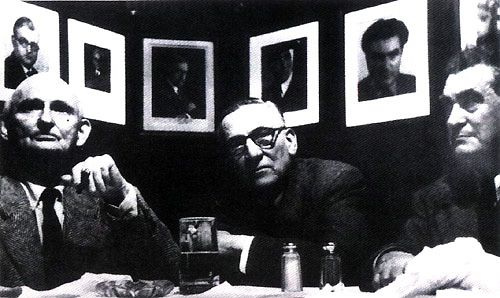
Left to right: Carl Ruggles, John J. Becker, Edgar Var???se.
Source: Koch International CD (my rip!)
Formats: FLAC(RAR), DDD Stereo, mp3(320)
File Sizes: 141 MB / 96 MB
Download Link – https://mega.co.nz/#!t9MXmR4C!AwOS-jQ1tleszBUzr2M-5id-rKU2QXS6oGOthtw6cKo
mp3 version – https://mega.co.nz/#!URph0AiA!ZKXEgB7Gg56O9-jRhzsdvS0zPVs_A8YFquhjxJCXLXk
Enjoy! Don’t share! Buy the original! 🙂
In 1946, Swiss-American composer Ernest Bloch began a major score for piano and orchestra – the
Concerto Symphonique – which occupied him for a full two years. The premiere, under
the composer’s direction, took place on 3 September 1949 at the Edinburgh
International Festival, with the Scottish Orchestra and the pianist Corinne Lacombl??? as
soloist. This is a ‘symphonic’ concerto in several senses of the word – not simply because of its
large scale and seriousness, but because Bloch’s thematic material does not, on the
whole, consist of long melodies but of complex subject-groups made up of several
short motifs which are always being developed and extended on each appearance. The work is
more concerned with organic growth than fixed statements. Moreover, the piano, though
obviously the focus of much of the argument, is often not treated as a soloist so much as an
obbligato instrument functioning as part of the orchestra in articulating the musical argument.
That argument is a troubled and deeply serious one. Whereas the Violin Concerto, written
before the outbreak of war, had ended on a note of hope, the Concerto symphonique wins
through at best to a sense of fierce triumph, of having survived a titanic and costly struggle.
Corinne Lacombl???, soloist in the first performances of the Concerto symphonique,
was the joint dedicatee, with her husband, of the Scherzo fantasque for piano and
orchestra, which Bloch composed in late 1948, as soon as the Concerto was
completed. It is almost as if the latter work had not exhausted the basic, urgent
expressive impulse, nor the interest in piano and orchestra: the Scherzo fantasque is in very
much the same wild, untrammelled spirit, though kept within a shorter and simpler form.
Music Composed by Ernest Bloch
Played by the SWR Rundfunkorchester Kaiserslautern
With Jenny Lin (piano)
Conducted by Jir??? St???rek
"Swiss composer Ernest Bloch is largely known for his ambitious works inspired by Hebraic themes
such as the cello rhapsody Schelomo, his Sacred Service, and Suite Hebra???que for viola and
orchestra. Far less well known are his concerted works for piano and orchestra, and on H???nssler
Classic’s Ernest Bloch: Works for Piano and Orchestra, piano virtuoso Jenny Lin takes them on
with help from the SWR Rundfunkorchester Kaiserslauten under the direction of J???r??? St???rek.
This is the first time that all of Bloch’s work in this genre have been brought under the same
umbrella on CD. The Concerto Symphonique (1949) is certainly underrated; one of the longest
piano concertos in the twentieth century, Bloch’s sense of imagination, originality, and grasp
of form are firing on all cylinders in this work. Although it gets off to a tentative start, once
warmed up the SWR Rundfunkorchester Kaiserslauten dives fully into this mesmerizing score,
and pianist Jenny Lin pulls out all of the dramatic stops — she has been touring with the
work and her sense of familiarity with it shows here. Although Bloch is often called
"neo-classic," the Concerto Symphonique is closer to the idiom of Mikl???s R???zsa [sic!],
big-boned and romantic in expression with a touch of the cinematic, yet clearly conceived
with the concert hall in mind and specifically for keyboard artists with the strength, stamina,
and power of Jenny Lin.
The Concerto Grosso No. 1 has been recorded more often than the Concerto Symphonique;
dating from 1925, it too is often referred to as "neo-classic" yet the designation seems no
more meaningful here than it would be for the Concerto Symphonique. In contrast to the
standard sonata-allegro scheme, its four movements grow progressively longer rather
than shorter. The Scherzo fantasque (1948) is similar to the Concerto Symphonique,
although much shorter — it seems almost like a sketch for the larger work, although
it is easily appealing on its own and the Scherzo fantasque’s formal concision is admirable.
Lin brings an equal amount of ardor and discipline to every movement of this recording,
yet reserves a lovely and sweet tone for the languid beauty of the "Pastorale and Rustic
Dances" of the Concerto Grosso. Sometimes one is impatient for the SWR
Rundfunkorchester Kaiserslauten to pick up the pace a little, but overall H???nssler
Classic’s Ernest Bloch: Works for Piano and Orchestra is a highly satisfying effort that
makes one want to hear more of Bloch, an aspect that recordings of his better known
works does not always tend to inspire."
Source: H???nssler Klassik CD (my rip!)
Formats: FLAC(RAR), DDD Stereo, mp3(320)
File Sizes: 378 MB / 177 MB (incl. cover)
Download Link – https://mega.co.nz/#!kY43mYga!FNkUPyb1QFsqdW3sDX731DbKHoNZBBRJOfxunFg RkJM
mp3 version – https://mega.co.nz/#!xVZWxZYD!ahn3kTmsrS2Np3xIFRBRKFC9X9cVHwXtrn0SJ1R eyhc
Enjoy! Don’t share! Buy the original!
The Belgian violinist Godfried Devreese (1893-1972) was a pupil of Ysa???e and
C???sar Thomson. He led the Kurhaus Orchestra in The Hague and was a member of the
Concertgebouw Orchestra in Amsterdam, also working as a conductor in Antwerp and
Brussels. He spent some 29 years as director of the Malines Conservatory, establishing
the city as an important musical centre. The compositions of Devreese, romantic in
general style, include concertos, symphonies and a wide variety of works. His
reputation as a composer has remained largely limited to his own country.
Music Composed by Godfried Devreese
Played by the Belgian Radio and Television Philharmonic Orchestra
With Guido De Neve (violin) & Viviane Spanoche (cello)
Conducted by Fr???d???ric Devreese
"It is played simply and with atmosphere…This is a very attractive disc."
American Record Guide
"With rich burnished tone and expressive, nuanced playing, cellist Viviane Spanoghe
is outstanding…the sound is very fine. Strongly recommended."
Fanfare
Source: Marco Polo (my rip!)
Formats: FLAC(RAR), DDD Stereo, mp3(320)
File Sizes: 304 MB / 156 MB (incl. booklet)
Download Link – https://mega.co.nz/#!JAZmjDLK!F_ISfEuuxJzBaHI44ikQ3VaBPVs1woFFpwlpj7H Qk-M
mp3 version – https://mega.co.nz/#!dAIzBZzQ!BBZxzQFgkGdXeLmYzRrqcjYZOmUXR6F5BanE7-4yA14
Enjoy! Don’t share! Buy the original! 🙂
———- Post added at 05:01 AM ———- Previous post was at 04:50 AM ———-
thanks for bloch he has so much great music composed, this cd is stunning! have it in my collection and Concerto Symphonique is my reference recording. 1. concerto grosso i love the old mercury hanson recording.
Kai Nieminen???s Flute Concerto "Palomar, In the Enchanted Garden" introduces enchanting melodies
woven into a modern idiom. The timbral ambience is lyrically impressionistic, but the work also has darker,
mysterious hues. The flute is a highly adaptable soloist, at times a whispering breath on a starry sky, at others an
arctic bird soaring above a winter landscape, taking startled flight on spotting a human figure.
The structure of the one-movement concerto relies on a recurring motif that, in undergoing transformation,
generates new musical moods. The texture is transparent, crystal-clear and sparkling
throughout, and more in the nature of intimate chamber music, for the orchestration allows the various
instruments to express their intrinsic characteristics and timbres. Nieminen in fact regards the concerto more as a
symphony of character types and himself as a tone painter of fantasies from the life around him.
The Clarinet Concerto "Through Shadows I Can Hear Ancient Voices???" immerses the listener in the
dream-like world of Nieminen???s musical legends. From the very first bars the soloist is like a snake-charmer
hypnotising all around. Again the inspiration for this work lies in literature: the novel Indian Nocturne by the
Italian Antonio Tabucchi, the narrative of which wavers between real life and an imaginary world to create
moods that cannot be logically interpreted. The book alludes to flashbacks to a previous life and, inspired by
Tabucchi, Nieminen plays with musical d???j???-vu experiences: a motif heard earlier in the work may, even
in transformation, still be recognisable. Nieminen???s first work for orchestra, Vicoli in ombra (Alleys in Twilight),
looks ahead to the world of Palomar and was likewise born in Rome. The orchestral writing is
again limpid and airy and the music exudes a sense of serenity, calm and enjoyment of the mood of the
moment. Nieminen has a gift for building with fantasy, yet his works always have a clear musical structure.
Vicoli in ombra is like a journey into the shady labyrinth of the mind, as symbolised by the Trastevere alleys in
Rome.
Music Composed by Kai Nieminen
Played by the Sinfonia Finlandia Jyv???skyl???
With Patrick Gallois (flute) & Mikko Raasakka (clarinet)
Conducted by Patrick Gallois
"Kai Nieminen calls himself a ???painter in music??? and this triptych of works goes a long way to proving the point.
Palomar is his Flute Concerto, written in 2001, and its pellucid impressions suggest a language of subtle
hues and colouration. It???s full of flute and harp exchanges but also sports some traditional sounding, grounding
horn harmonies. The orchestration is light and subtle, glittering with the concentration of a sextet in places,
and revelling in firefly and crepuscular distinction. It???s a two movement work, the finale of which is called La
Notte (Night, Old People and Birds)???which is both charming in itself and an indication of his pluralistic
inclinations in general. Here we find loquacious voicings, incessant birdsong in which all nature seems soprano-
like to be teeming, luscious and avidly vibrating. Then an achingly beautiful and warmly hued string melody
courses romantically through the undergrowth, lovely as a Rota song, before the birdsong, though now less
agitated resumes. It???s a fine work, impressionistic, less reliant on Messiaen than you may think from my
description???and charming.
The Clarinet Concerto was written the following year, 2002. It???s titled Through Shadows I Can Hear Ancient
Voices. The writing here is fuller than in the Flute Concerto. Echoing phrases abound as do moments of stasis
and, once again???and this is a repeated feature of his writing???rarefied chamber sized clarity. The second
movement, The Toilers of the Sea, is in effect an Andante, lyrically spun and irradiated by percussive colour.
Lines thin to single voices, before a frantic clarinet outburst erupts, pitch twisting and accompanied by torrid
percussion. This is a finely judged work, theatrical but surely shaped, and never off-putting in its vigour.
Finally there is the oldest work, written in 1995: Vicoli in ombra (Alleys in Twilight). A stalking, walking bass
motif starts this one and orchestral colours vary from burnished windy strings to more locally vocalised
persistent wind writing. There is a real sense of narrative development here, something of which Nieminen
is an august exponent. Though the mood darkens somewhat and the work ends quietly it???s not pessimistic."
Musicweb
Source: Naxos CD (my rip!)
Formats: FLAC(RAR), DDD Stereo, mp3(320)
File Sizes: 236 MB / 136 MB (incl. cover & booklet)
Download Link – https://mega.co.nz/#!tAgFGQgR!OPBUO3A7p_mz61bkhdNSQT4P19x0OOjossM5ePT 4VXM
mp3 version – https://mega.co.nz/#!wRRj3BaL!cC02jC1A-_DKZ4wUtf0dol2srJ8cSRWOoeegbp3stF0
Enjoy! Don’t share! Buy the original! 🙂
Thanks for sharing!
Peggy Glanville-Hicks (1912-1990) was an Australian composer. At age 15 she began
studying composition with Fritz Hart in Melbourne. She also studied the piano under Waldemar
Seidel. She spent the years from 1931 to 1936 as a student at the Royal College of Music in
London, where she studied piano with Arthur Benjamin, conducting with Constant Lambert and
Malcolm Sargent, and composition with Ralph Vaughan Williams. (She later asserted that the
idea that opens Vaughan Williams’ 4th Symphony was taken from her). She was married
to British composer Stanley Bate, who was gay, from 1938 to 1949. Bate was a fellow student
of Vaughan Williams’s who later killed himself (see his bio and listen to his Symphony No.3
in my other ffshrine thread, here (http://forums.ffshrine.org/f92/wimpel69s-could-film-music-classical-corner-work-121898/20.html#post2283178)).
From 1949 to 1958 she served as a critic for the New York Herald Tribune and took U.S.
citizenship. After leaving America, she lived in Greece from 1957 to 1976. In the United States
she asked George Antheil to revise his Ballet M???canique for a modern percussion ensemble
for a concert she helped to organize before returning to Australia in the late 1970s.
Major works in her output include the Sinfonia da Pacifica, Etruscan Concerto,
Concerto romantico, and her Harp Sonata which was premiered by Nicanor Zabaleta
in 1953 as well as several operas. Her best known operas are The Transposed Heads and
Nausicaa. The Transposed Heads is in six scenes with a libretto by the composer after
Thomas Mann and premiered in Louisville, Kentucky on 27 March 1954.
The Etruscan Concerto of 1954 shows the influences on Peggy Glanville-Hicks’ music of
both the British pastoral composers who had taught her and of American contemporaries such as
Copland and Virgil Thomson (to whom her Thomsoniana of 1949 is dedicated). But it also shows
her music emerging from those influences. The direct rhythmic energy of her writing, the strong
hues of the orchestration, and the antique echoes suggested by her subject (the remains of the
ancient Etruscan civilisation) and coloured by her growing interest in Indian classical and Greek
demotic musics, all contribute to a musical voice that was becoming increasingly distinctive.
The three movements of the Etruscan Concerto are each composed in response to specific
quotes (given in the score) from D.H. Lawrence’s ‘Etruscan Places’ (a collection of travel writings).
Music Composed by Peggy Glanville-Hicks
Played by the Tasmanian Symphony Orchestra
With Caroline Almonte (piano)
And Deborah Riedel (soprano) & Gerald English (tenor)
Conducted by Richard Mills & Anthony Walker
"The Etruscan Concerto is a souvenir of her Mediterranean years and of D.H. Lawrence’s
Etruscan Places (1933). Its foot-stamping first movement is flavoured with the carefree
dances of Skalkottas and of The Isles of Greece by Donald Swann. As with her other
concerto pieces there is just a suggestion of prolixity but there is much else to compensate.
The central movement with its laggardly winding melodies and incense swirling slowness
picks up on the ancient mysteries of the Etruscan civilisation ??? a Mediterranean connection
also touched on in her Gymnopedies. The finale has much in common with the first
movement but with a hint of Hovhaness and RVW. It seems that this concerto has also
been recorded by Keith Jarrett but, sadly, I have not heard it.
Glanville-Hicks delved into opera more than once. Her Sappho (1963) succeeded the
opera Nausicaa (1961). Sappho was written with Callas in mind and to a commission by
San Francisco Opera who then refused to perform it seemingly because of the predominance
of modal tonality (Kurt Adler). This is the first substantial extract of Sappho to be recorded
in the original scoring. I would like to hear the whole work. This is a pleasing if low-key
soliloquy. It has a touch of Barber’s Antony and Cleopatra but without that work???s flaming
fervour. Deborah Riedel keeps the embers glowing and flaring.
Tragic Celebration began life as the ballet score Jephtha’s Daughter in which a rash oath
results in Jephtha having to slay his own daughter. This orchestral piece has the redolence
of Barber’s Cave of the Heart with crackling violence and some tenderness. The piece
ends touchingly with a silvery tintinnabulatory gleam.
Letters from Morocco were borne out of composer, Paul Bowles’ letters to Glanville-Hicks.
These were part of a forty year correspondence. Islamic muezzin ululation and spoken
words are meshed and interleaved. The setting style is free-ranging and while tonal is
intrepidly engaged with Brittenesque techniques and wildnesses we may associate with
Our Hunting Fathers. These are wonderfully fragrant yet not fragile settings. They variously
celebrate the remorseless Sahara, music heard on the warm nights, a hashish almond
candy bar, orange blossom, evening drums and the oasis. The hashish bar song has a
wandering oriental contour redolent of Hovhaness and Cowell. The seventh of the songs
is simply spoken ??? there is no music. It???s a brave and successful close and a valorous
tribute to the words of Paul Bowles. "
Musicweb
Source: ABC Classics CD (my rip!)
Formats: FLAC(RAR), DDD Stereo, mp3(320)
File Sizes: 203 MB / 123 MB
Download Link – https://mega.co.nz/#!dYgWjZYS!J5Y3niUZx_BAKK-4-hfrwwpEW7QSzVbON8WTT-8N4X8
mp3 version – https://mega.co.nz/#!ZcpFAaDD!S-Hxc006kr1AJ9v6dPgdTjw80_MLFEvBaQnJ4TPsds0
Enjoy! Don’t share! Buy the original! 🙂
The Persian composer Reza Vali (*1952) began his music studies at the Teheran
Conservatory of Music, finally settling in the United States. His compositions include
pieces for orchestra, string quartet, piano and voice, and chamber ensemble. Vali’s
Flute Concerto, commissioned by the Boston Modern Orchestra Project, is influenced
by Persian classical and folk-music. The flautist uses a technique involving simultaneous playing
and singing in order to imitate the sound of the Persian bamboo flute, the ney. Folk Songs
(Set No. 10), is the tenth set of an ongoing cycle of compositions based on Persian folkmusic.
In Deyl???m???n (the name of a region in northwestern Iran), two Persian instruments, the ney
and the b???rb???t (oud) are added to the Western symphony orchestra as the music moves between
Persian modes, short quotations from Beethoven, Bruckner, Mahler and Wagner, African
folk-song and Peruvian folk-song.
Music Composed by Reza Vali
Played by the Boston Modern Orchestra Project
With Alberto Almarza (flute)
And Jana Baty (soprano) & George Mgrdichian (Oud)
Conducted by Gil Rose
"I am very impressed by this CD. By mating Western classical music with the musical traditions
of his homeland – both popular and classical – Vali has been the foster-father to a beautiful hybrid,
a rara avis. The exotic atmospheres of Persia suffuse this music, which nonetheless retains its
classical form and control. The one composer who kept coming to mind as I heard this CD was
Khachaturian, but without the agitprop. … Sumptuously played and recorded, Reza Vali’s music
is a tremendous treat. This CD will continue to find a place in my changer for months to come,
and it probably will be counted among 2004’s best new releases."
Classical.Net
Source: Naxos CD (my rip!)
Formats: FLAC(RAR), DDD Stereo, mp3(320)
File Sizes: 251 MB / 152 MB (incl. cover & booklet)
Download Link – https://mega.co.nz/#!8N5AHDSS!PScBzRjeB9Cv8M_QxG-wiU7I71gkA9x4v9eoEvOby5Y
mp3 version – https://mega.co.nz/#!5c5hXR7K!Wju9FxzPKWSUSmEWqEO51FdNktYr0BSk0Tzxbsn QskM
Enjoy! Don’t share! Buy the original!
Mikl???s R???zsa’s Piano Concerto, written in 1966 for Leonard Pennario (who plays the work on this recording,
made more than decade later) is cast in three movements: the first is the dark and dangerous ‘Allegro Energico’
with dissonant piano that is as intense as anything you are likely to find in his film work. Actually, this is similar
to the Spellbound film score and concerto as it also evokes a sense of some troubled inner conflict.
The ‘Adagio’ features oboe and piano working together to bring to life a gentler theme, although there is still a
sense of unrest with strings taking a firmer hold mid way through, before the piano is finally given its head in
strident, incisive manner. This then subsides, fading out with genteel simplicity. The tempo quickens with ‘Vigoroso’,
the percussive and xylophone backing used to good effect. A number of different instruments take brief centre stage
to create a mosaic of sound and although there are some respites, the tempo becomes steadily more manic,
galloping on towards an almost frenzied conclusion.
The Cello Concerto, was composed in R???zsa’s Italian retreat of Santa Margherita Ligure. It was the third of
R???zsa’s four concertos for solo instrument and orchestra with an opus number. The work came about as
a result of meeting the Hungarian-American cellist J???nos Starker after the latter had given a performance in
New York of the Cello Concerto, Op. 52 by the French conductor and composer Jean Martinon. Starker, to whom
the work is dedicated, asked R???zsa there and then to write him a cello concerto and this immediately ignited
R???zsa’s inspiration. Given that R???zsa was not a cellist (he played the viola at Leipzig College, Starker’s advice was
sought and several technical changes were made to the score; once these had been incorporated the composer
set to work on the orchestration which was completed during the winter months. The Concerto, cast in three
movements also, is a dark, savage and often quite brutal work and is certainly the most austere of all his concerti.
Music Composed by Mikl???s R???zsa
Played by the Munich Philharmonic & Bavarian Radio Symphony Orchestras
With Leonard Pennario (piano) & Jan???s Starker (cello)
Conducted by Moshe Atzmon & Wilfried B???ttcher
Source: Pantheon CD (my rip!)
Formats: FLAC(RAR), AAD Stereo, mp3(320)
File Sizes: 265 MB / 128 MB
Download Link – https://mega.co.nz/#!85EWBKrK!ei7H6CoGlqX-5Eo–OrD_j3JR849Is1TzjO4q8msPfc
mp3 version – https://mega.co.nz/#!kh9yBRRR!ND5MDk5jaPlq09QTPCLuhB0XB0wRym1SM97dMUQ d5Q4
Enjoy! Don’t share! Buy the original! 🙂
Also, Marius Constant’s concertos have grown on me like a delightfully persistent carbuncle, as have Devreese’s jazzy piano concertos, and even Vali’s fascinating flute cadenza. All told, it’s a pretty good sign when seeing an unheard of name invites excitement instead of skeptical dread, and you’ve got that tone going here to a T. Keep ’em coming!
FLAC link for the R???zsa concertos added.
Thank you very much.
Roumi Petrova: Enchanted Rhythma
Sir Malcolm Arnold
Arnold: Guitar Concerto
Julian Bream, guitar
Melos Ensemble
Malcolm Arnold, conductor
RCA 09026-61598
Many thanks to any that oblige me.
of this forum. I do have that recording (re-coupled, with other Arnold works). I can upload it later.
No.95
English composer Stanley Myers (1933-1993) is best known for his many film and television scores. From 1958 to 1993 Myers
wrote music for 130 film and television projects, among them The Deer Hunter (1978), The Border (1979), and six
episodes in 1964 from the popular English TV series Doctor Who. Without doubt, the most famous music Myers ever wrote
was his Cavatina for guitar (1970), which appeared in several guises, most memorably as the title theme in The Deer Hunter.
He had studied at Oxford University and by the early ???50s was active as a songwriter and music director for musicals. His first work
in films was a collaborative effort with Reg Owen on the 1958 English movie Murder Reported.
Stan Getz (1927-90) was an American jazz saxophonist probably best remembered for his 1950s recordings with Dizzy Gillespie
and Oscar Peterson. But his musical interests were evidently not confined to jazz and, during a rehearsal with the Boston Pops
Orchestra, he remarked that it was a pity he had no concerto to add to the concert arrangements of Gershwin tunes they were
programmed to play. The suggestion that he should (like Benny Goodman before him) consider commissioning one came form the
conductor of that particular concert, John Williams, as did the name of the composer most likely to relish the challenge of writing
a ‘classical’ concerto for a jazz performer. For although first and foremost a composer of concert music, Richard Rodney Bennett
(1936-2012) was famed for the unusually broad scope of his musical interests; he is moreover a gifted performer, and his own
keyboard repertoire shows him equally at ease with all twentieth-century musical styles – from jazz to the avant-garde.
So the match seemed ideal: Getz had found a composer whose stylistic sympathies appeared perfectly in tune with his own,
and Bennett was offered the services of a performer eager to adapt to the demands of a ‘crossover’ undertaking of this kind.
Indeed, Bennett’s enthusiasm for the project was such that he began work as soon as the idea was mooted – long before any
mention of a performance date, or even a fee for the commission. In the event there was neither, for Getz’s illness meant that
practical decisions were deferred, while the progress of the concerto continued unabated. Despite the sadness occasioned by
the death of its dedicatee, Concerto for Stan Getz is a thoroughly celebratory tribute to the possibilities of using jazz
harmonies in conjunction with the composer’s own free-flowing serial technique.
Michael Torke, born in Milwaukee in 1961, has emerged as a contemporary composer whose music has been received
with uncharacteristic warmth by traditional classical audiences and newcomers to "serious" music alike. Torke’s music
is characterized by a fusion of styles that range from lush Romanticism to pop- and jazz-influenced idioms. Typically,
the composer makes use of colorful timbres, minimalism-influenced repetition, and dance rhythms. A number of his
works have proven especially adaptable as dance scores; a number were specifically commissioned by dance ensembles.
Torke’s Javelin (1994), commissioned by the 1994 Olympic Commission to commemorate the fiftieth anniversary#
of the Atlanta Symphony Orchestra, has proven to be one of the composer’s most popular works.
Music by Stanley Myers, Richard Rodney Bennett & Michael Torke
Played by the Albany Symphony, Argo Syphomy and BBC Concert Orchestras
With John Harle (saxophones)
Conducted by David Alan Miller, James Judd & Barry Wordsworth
"By the time John Harle became established as a composer, he had already a ten-year reputation
as the leading saxophonist of his generation. Since the mid-1990s he has had three commissions
for the BBC Proms, and has released two albums on the Argo label. With his supreme lyrical gift,
he is much in demand as a composer for television, having written scores for over forty
productions for the BBC and Channel 4, notably Simon Schama’s acclaimed History of Britain
series, and four series of Silent Witness."
Source: Decca Argo CD (my rip!)
Formats: FLAC(RAR), DDD Stereo, mp3(320)
File Sizes: 300 MB / 140 MB
Download Link – https://mega.co.nz/#!0doiiTBQ!YKgRR1QemdsFrqlrAa39ey8T6mILT6N_duk5QhQ ZZyI
mp3 version – https://mega.co.nz/#!5IYTXaoS!S0Hh5lARRZxgkZi27acs_VcRMZlPBeOdO8hIpOe RkyE
Enjoy! Don’t share! Buy the original! 🙂
You’ll find the Bream at the bottom of this post.
No.96
"If there were anybody who still holds the belief that to write well for the guitar a Spanish surname
is the sine qua non, they would probably consider Malcolm Arnold’s Guitar Concerto to be an anomaly.
As it is, the Concerto is a triumphant demonstration of the versatility of the guitar, and it is not surprising
that many guitarists (including myself) consider it to be one of the finest concertos in the repertoire. Very few
composers, if any, have exploited the guitar’s chameleon-like characteristics and facility for allusion with such
skill – its ability to go from lyricism to drama, from light-hearted joke to serious comment, the fluid personality
that allows it to assume innumerable masks.
Instead of drawing from the usual Spanish well (and fishing out the usual trite clich???s) Arnold chooses to take
jazz as a source (at the very least, an equally valid idiom for the instrument). In fact the second movement
could well be titled ‘Blue Scherzo in memorium Django Reinhardt’: seldom has the guitar been given such a
wealth of emotion as in the slow sections, and the way in which it is made to hold its own against the brass
instruments is a minor prodigy of orchestral mastery. The swift break into an impish and wildly virtuosic
scherzo is nothing short of breath-taking. The slow movement looms largest in the memory, as it does in
length – taking up about half of the entire work – but there is also much to be found in the other two
movements. Arnold uses Greek models as the basis for his harmony and melody; in the first movement,
a sonata form, the two main themes are each in a different mode. The mode chosen for the second theme
(probably the catchiest tune in a work full of them) is the familiar major scale; rhythmic verve and lyricism
here strike a perfect balance. The third movement, a rondo, begins with the main theme presented by the
solo guitar; the canonic writing for the instrument is bold indeed. The guitar retains a leading role throughout
all the episodes, bringing the concerto to a close with an astonishing glissando."
Eduardo Fern???ndez
Music Composed by Malcolm Arnold
Played by various orchestras and ensembles
With Eduardo Fern???ndez (guitar)
Conducted by (various)
"Collaborations between composers and performers have often produced fine works,
as with this Concerto, first played in 1959 by Arnold’s friend Julian Bream to whom it is
dedicated. The problems of writing for an instrument with few avante garde credentials are
solved by a neo-classical style into which the composer introduces modern harmonies and
progressions. The first-movement themes are graceful, and the dialogue between solo
instrument and chamber orchestra intimate are brilliant by turns. The slow movement,
inspired by the guitar playing of Django Reinhardt (1920-1953), has an emotional intensity
distant from the clich???-ridden Spanish and Latin-American mannerisms of the popular
guitar. A long bluesy theme (though not based on blues harmony) takes the Concerto into
deep waters, high guitar harmonics casting an eerie, chromatic sheen over a gently-rocking
orchestral accompaniment. The third movement, an eccentric Minuet in Rondo form in
6/8 time, restores the genial balance until a muted horn and clarinet together recall the
second-movement theme. The Concerto ends with tragic overtones, guitar and ‘cellos fading
into silence on repeated low Es. Both Arnold and Bream were wary of the directions in
which contemporary music was heading in the 50s, and remained faithful to diatonic
tonality and more contemporary influences, such as jazz and popular music, though no
trace of the latter appears in the Concerto. The composer’s biographer, Piers Burton-Page,
calls it "One of Arnold’s most outstanding inventions. … Once heard, never forgotten"
("Philharmonic Concerto", Methuen, 1994). It has rarely been out of the recorded music
catalogs."
All Music
Source: Decca CD (my rip!)
Formats: FLAC(RAR), ADD/DDD Stereo, mp3(320)
File Sizes: 305 MB / 170 MB
Download Link – https://mega.co.nz/#!ZYph2YbL!fpdUuxcJ2JNIR5OTouQTgkmpKd1MbKJnITs1O_H myRc
mp3 version – https://mega.co.nz/#!wZQyUZrb!AkgAqmtK0jFxtLXlMtbmKH1qEuo9yWdVS3huYwT IAxI
Enjoy! Don’t share! Buy the original! 🙂
P.S.: Now, this is the Bream/Melos Ensemble/Arnold recording of 1960 (not my rip, Arnold concerto only, mp3(320) only!) –
https://mega.co.nz/#!5pU2iS5S!RoC6BVTSMuID0y7stckM4nS0K6s8XP1DS3drguy Z5HM
Joly Braga Santos (1924-1988) was one of the most significant and prolific Portuguese composers of
the twentieth-century. Santos began his studies at the Lisbon Conservatory in 1934, starting out primarily as
a violinist; in time he would devote increasing attention to composition. Santos left the Lisbon Conservatory
in 1943 just shy of earning his certificate, and instead entered into two years of private study with the most
prominent Portuguese composer of the day, Lu???s de Freitas Branco. Branco imparted to Santos a great deal
of his personal approach to orchestration, which was vivid and colorful in the manner of Respighi.
"The Concerto for Cello and Orchestra is a work in three movements (Moderato – Allegro – Andante)
without interruptions. Again, each movement being divided into different sections and movements, it is not
easy to distinguish its three movements. It would be an exhausting exercise to examine each section and
it would hardly help the listener. Therefore I would rather emphasize that this is more like an orchestral work
with a cellist who, here and there, appears as a soloist, than a cello concerto in the traditional sense, where
the soloist exchanges musical ideas with the orchestra, as two partners would do when discussing a mutually
interesting subject. Braga Santos was certainly keen on keeping the listener attentive, therefore never
indulging in any kind of clearly defined melodies or rhythms. The music develops like a symphonic poem
where vaguely defined images and feelings are followed in what seems to lack focus, but then, after a second
or third hearing, becomes clear as an extraordinarily coherent single statement. It is the kind of work where
the music speaks for itself, and trying to write about it I feel completely lost." (???lvaro Cassuto)
Music Composed by Joly Braga Santos
Played by the Algarve Orchestra
With Jan Bastiaan Neven (cello)
Conducted by ???lvaro Cassuto
"Joly Braga Santos (1924-1988) was Portugal’s best-known composer of the twentieth century. His work
displayed little national flavor; it incorporated various foreign influences and changed according to prevailing
trends, yet displayed a consistent melodic inclination and rhythmic verve that are recognizable across stylistic
lines. His six symphonies are his best-known works, but the Naxos label’s Marco Polo imprint, dedicated to
the exploration of unfamiliar repertories, has issued a series of discs devoted to other music by Braga Santos
in recent years. This set of orchestral pieces spans his entire career, from the 20-year-old composer’s
Nocturno for strings to the Concerto for cello and orchestra and Staccato brilhante, written in the last year
of his life.
The Nocturno is a quiet, romantic work that will be enjoyed by anyone with an ear for Samuel Barber or the
music of the English pastoralists, while the late Divertimento No. 2 and the dark, deliberate, more dissonant
cello concerto suggest the influence of Shostakovich, a major model for any composer who resisted the
peer pressure of atonalists in the 1960s and 1970s. Yet cataloguing the influences that appear in Braga
Santos’ music fails to convey its full flavor. It is artfully wrought throughout, with a tendency toward sheer
melodic beauty. The Divertimento No. 1 uses snare drums and other percussion effectively, and the
composer expertly uses a variety of devices to control the music’s temperature: he varies rhythmic intensity,
piles on dissonant counterpoint, lets the texture dissolve into spacious pianissimos. The regional and mostly
youthful Algarve Orchestra of Portugal handles the quiet string passages very well (listen to the end of the
Nocturno), and you might easily take them for one of the major European orchestras. Though this music
is obscure, anyone who enjoys Copland, Vaughan Williams, or more recent orchestral works will find it well
worth its budget price."
All Music
Source: Marco Polo CD (my rip!)
Formats: FLAC(RAR), DDD Stereo, mp3(320)
File Sizes: 287 MB / 168 MB (incl. cover & booklet)
Download Link – https://mega.co.nz/#!R9FXgSAI!dPZGZmWgu7kxKS77vyFElg7WQi8WcqWKD47EGcM X_Po
mp3 version – https://mega.co.nz/#!lx93WaKA!A4jnyXM-8Y1hcGjqJNzXzAcp05AN4Rs8eFdPziWfouU
Enjoy! Don’t share! Buy the original! 🙂
These recordings were made at a concert on occasion of the 3rd Jacinto & Inocencio Guerrero Foundation Prize,
extended to Anton Garcia Abril. It was held on December 10, 1994 and included three orchestral works
(one, a concertante), drawn from different periods, clearly highlighted both the inner essence of Garcia Abril’s
art as well as the variations in approach adopted during the course of his long and fruitful career.
The Three Sonatas for Orchestra (1984) come from a ballet, Danza y tronio (Dance and Swagger), first
performed in Zaragoza in the same year by the Spanish National Ballet. In this ballet, Garcia Abril recreated the
Madrid of the second half of the eighteenth century, using works by Boccherini and Father Soler interlaced with his
own compositions. Some episodes were subsequently hived off from the ballet and now lead independent lives.
Hemeroscopium, the following work on the programme, and Concerto for Piano and Orchestra confront
composer and audience alike with an approach that is different, though not radically so, from that adopted above:
in both instances, the works involve reflection on earlier pieces, yet in this particular case the earlier work happens
to be the composer’s own. This is something many a composer has done over the years, whether in order to take
the decision to maintain the original intact with slight reworkings (as is the case of Hemeroscopium, a work
which, though written between 1969 and 1972, has been published by Bolamar only now in 1995), or whether in
order to carry out a thorough, in-depth revision (as is the case of the 1966 Piano Concerto, first performed
by Esteban Sanchez with Garcia Asensio and the selfsame orchestra in 1967).
Not only is Hemeroscopium Garcia Abril’s first grand orchestral work, it is also something akin to a personal
manifesto. A devotee in his youth of pronouncedly reformist groups (1958, Grupo Nueva Musica de Madrid, along
with Barce, Cristobal Halffter and Luis de Pablo among others) and, thanks to a Juan March Foundation Scholarship,
a student in Rome able to delve into the inner workings of new music, ranging from dodecaphonism right across
to electro-acoustics, Garcia Abril absorbed all he felt to be of use and proceeded to craft a work-cum-resume clearly
in sympathy with neo-tonal movements (???figurative??? would be the word if one were talking of a painter), thereby
breaking free of all manner of prejudice.
The Piano Concerto, a big-boned, virtuoso work was influenced by Garcia Abril’s own career as a concert
pianist and underwent several revisions. In particular, the revision affects the orchestration, now wiser and more
imaginative, and the role of the soloist, entrusted with new cadences and passages affording enhanced potential
for bravura. The dialogue traced by Garcia Abrilover the underlay of his youth has resulted in a work that is new
and yet infused with that erstwhile freshness which time has gradually mellowed.
Music Composed by Anton Garcia Abril
Played by the Madrid Symphony Orchestra
With Guillermo Gonzal???z (piano)
Conducted by Enrique Garc???a Asensio
"For those listeners who love to immerse themselves in waves of lush, sensual sonorities,
this…is quite a substantial discovery for the rest of us too….one of Marco Polo’s most dazzling
(recordings)…Highly recommended to all fans of postimpressionism."
Fanfare
Source: Marco Polo CD (my rip!)
Formats: FLAC(RAR), DDD Stereo, mp3(320)
File Sizes: 288 MB / 157 MB (incl. cover & booklet)
Download Link – https://mega.co.nz/#!t1k1RLCK!FG29V0r7X4Mm5L1zBqPVN2CGf9YN8PrSeR4HUQW KqyA
mp3 version – https://mega.co.nz/#!wwFkmASD!U_03xhuYNpErtTG9p1tC41TAHI5XwmTuEDKpDLF Y0aM
Enjoy! Don’t share! Buy the original! 🙂
Polish composer Alexandre Tansman wrote his Cinq pi???ces in 1930 for Joseph Szigeti in two versions:
for violin and piano and for violin with small orchestra. If the first movement, ???Toccata,??? sounds motoric and spiky,
the second, ???Chanson et bo???te ??? musique,??? strikes a richer, more sultry vein. The third movement, a chatty, bustling
perpetual motion, somewhat in the manner of Heifetz???s famous transcriptions of Poulenc???s pieces in the genre, gives
way to a throbbing ???Aria??? and a concluding jazzy ???Basso ostinato.???
The weight of the violin pieces here lies in the longer, more highly developed Violin Concerto from 1937, a
four-movement virtuosic showpiece in which, the notes relate, Heifetz had taken an interest. In fact, the first
movement???s soaring passages seem as reminiscent of Heifetz???s style as do similar ones in works dedicated to him,
such as Korngold???s (or Gruenberg???s) Violin Concerto. But the writing for the solo instrument sounds more
violinistic in the technical passages than do the corresponding moments in Korngold???s work. The second movement
begins ruminatively and introduces cadenza-like passages in which the solo instrument engages in spectral effects???
but, as did the preceding movement, this one ends with colorful rapid passagework, in which the solo violin vies
with winds and even percussion. The third movement spreads a lush harmonic (and textural) backdrop behind
the violin???s cantabile – the generally tonal, accessible style, in fact, never seems to invite such waywardness.
The finale alla zingaresca introduces contrapuntal passages in the woodwinds after a cadenza, and that
complexity, no matter how high-spirited, serves as a foil to the Gypsy passages with which Tansman has
peppered the movement.
Music Composed by Alexandre Tansman
Played by the Symphony Orchestra of the Podlasie Opera and Philharmonic
With Bartosz Cajler (violin)
Conducted by Marcin Nale???z-Niesiolowski
"This Polish composer was a tireless advocate of the neo-classic; he adopted the style in
the 1920s, became an expert practitioner within it and stuck with it all the way up until his death
in 1986. That the outbreak of World War II annihilated interest in the style among other
"serious" composers, and that serialism and various kinds of formalized music took center
stage during most of the years left to him meant nothing at all to Tansman; he plugged right
on ahead with what he felt he did best. Although this plan of action may have cost Tansman
his relevance to chroniclers and critics — and later in life, in the concert hall — his music
sounds uncommonly fresh, congenial, and technically satisfying in the way that Bohuslav
Martinu’s does — it’s modern, but it isn’t in your face. This Dux disc devoted to violin and
orchestra music of Tansman is an excellent introduction to his music in general, and
furthermore features the wonderful playing of young Polish virtuoso Bartosz Cajler.
Featured is Tansman’s very fine, nearly cinematic Violin Concerto (1937), quite different
from, but also similar to, the much better known violin concerti of Korngold and R???zsa.
The Cinq Pi???ces (1930), however, is the most striking track on the disc; it’s lively and
exciting in faster movements and lyric and heartfelt in the slower ones. The Suite Baroque
(1958) for chamber orchestra is a little reminiscent of Stravinsky’s Dumbarton Oaks
Concerto, but it is also good. Dux’ recording is present, clear, and full-bodied, and the
extraordinarily long-named Symphony Orchestra of the Podlasie Opera and Philharmonic
in Bialystok under Marcin Nalecz-Niesiolowski plays with precision and dedication.
Unless one’s tastes only run to "Gloomy Gus" classical music or the extremes of the
avant-garde, this fine Dux disc cannot fail to satisfy."
All Music
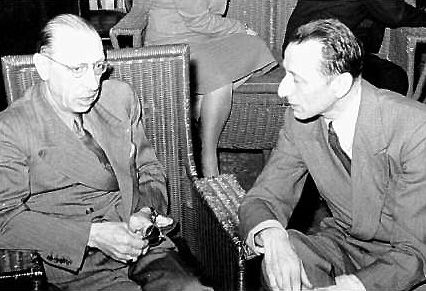
Best buds: Alexandre Tansman and Igor Stravinsky.
Source: Dux CD (my rip!)
Formats: FLAC(RAR), DDD Stereo, mp3(320)
File Sizes: 248 MB / 115 MB
Download Link – https://mega.co.nz/#!FpNCGZiK!NhUKHjienfTfsVfubMdwFymMwd1wTph15P3Ivgo ggiE
mp3 version – https://mega.co.nz/#!41cHnZjb!V2ZlAmev4H0Z2_7osOFSpj2XkCUXrs0Fcx_aEZZ 2JrI
Enjoy! Don’t share! Buy the original! 🙂
———- Post added at 11:07 AM ———- Previous post was at 10:23 AM ———-
No.100
Samuil Yevgenyevich Feinberg (1890-1962) was a Russian and Soviet composer and pianist. Raised in Moscow,
he entered the Moscow Conservatory and studied under Alexander Goldenweiser. He is most remembered today for
his complete recording of Bach’s The Well-Tempered Clavier and many transcriptions. Feinberg was awarded the
Stalin Prize in 1946. He also composed a dozen piano sonatas as well as fantasias and other works for the instrument,
and 3 Piano Concertos which have been for the most part neglected in the standard repertoire.
Many listener who compare Ernest Bloch’s generalize that mature Bloch’s inspiration ran dry compared to his
earlier masterpieces like e.g. Schelomo. However, this magnificent Symphony for Trombone and Orchestra
gives the lie to such generalization. Written in 1954, when the composer was already suffering from his terminal illness,
the work is back to the world of Schelomo, its language, its intensity and poignancy that talks of open spaces and
stars. It is also one of the best pieces for trombone ever written. There are three movements. The first, Maestoso,
opens with a passionate orchestral statement. The trombone makes a relaxed entrance. The contemplative mood
prevails for most of the movement. The second, Agitato, begins with a propulsive rhythm and fanfares of distant
trumpets. The agitation grows to a powerful climax. After it subsides, the mood becomes somewhat pensive. But
the intensity begins to mount again culminating in a second climax. The trombone is left alone in meditative mood
with a melancholic background of strings, bringing the movement to a quiet close. The third movement, Allegro
deciso, starts with loud calls of the wind instruments. The strings reply, the trombone joins the dialogue. Then
the intensity diminishes. Muted trumpets and oboe bring back the opening theme. The trombone meditates briefly
and the music dies out quietly in the distance.
Music by Ernest Bloch & Samuel Feinberg
Played by USSR and Ostankino Symphony Orchestras
With Grigory Khersonsky (trombone) & Victor(!) Bunin (piano)
Conducted by Vladimir Kozhukhar & Gennadi Cherkasov
"Victor Bunin was born in Voroniezh March 2,1936. His first musical impressions were connected with his
father, famous composer Vladimir Vasilievich Bunin. After graduation from Musical College of the Tchaikovsky
Conservatory under the instruction of Olga Feodorovna Mukhortova,then Mirra Yakovlevna Sever,he studied
at the Moskow Tchaikovsky Conservatory under professor Samuil Evgenievich Feinberg /in 1956-1962/, and
then took up a post-graduate course with professor Victor Karpovich Merzhanov.
In 1961,Victor Bunin appeared in All-Russian piano competition and won the First prize.The pianist agenda
is well-packed with recitals and tours round Russia and abroad. Since 1963 Vuctor Bunin has been teaching
piano performance techniques at the Tchaikovsky Conservatory, the Central Music School and the Academic
Musical College /both under Moscow Conservarory. From 1993-2003 he also taught at the Syrian National
Conservatory and the Lebanese National Superior Conservatory in Beyrouth. Many of his students became
prize-winners of different international piano contests."
Source: Consonance CD (My rip!)
Formats: FLAC(RAR), ADD Stereo, mp3(320)
File Sizes: 276 MB / 163 MB (incl. artwork & booklet)
Download Link – https://mega.co.nz/#!tkEjwbja!MhyWtE3X9wSX25EpBNfD9yFfzdRyxia46IFTYnj DU6E
mp3 version – https://mega.co.nz/#!54FQFRbA!WHffY0iQ5zp8f9yTi6h86w0iKFZ2OTcwbEi5l4O i8Sc
Enjoy! Don’t share! Buy the original! 🙂
I think I love you. :awsm:
EDIT: This Tansman disc is EXCELLENT! Just the kind of orchestral texture I have been looking for nowadays. Now only if this Feinberg Mega link would start up…
Thanks again!!!
David Ward-Steinman (*1936) is an American composer and music professor. He studied at
Florida State University and the University of Illinois, where he received the Kinley Memorial
Fellowship for foreign study. After receiving his doctorate, he was a fellow at Princeton University
from 1970. His teachers included John Boda, Burrill Phillips, Darius Milhaud (at Aspen, Colorado),
Milton Babbitt (at Tanglewood) and Nadia Boulanger.
Music Composed by David Ward-Steinman
Played by the Moravian Philharmonic Orchestra
With Howard Colf (cello) & Karen Elaine Bakunin (viola)
Conducted by David Amos
"American composer David Ward-Steinman draws considerable inspiration from a great many British
composers of the last 50 years. In his music you can hear the dashing spirit of Malcolm Arnold, the quirky
pacing of Havergal Brian, and Arnold Bax’s staunch romanticism (without any of his moroseness). These
elements are particularly evident in Ward-Steinman’s Cello Concerto (1964-66), an effervescent affair
that takes the cello through several eminently delightful transformations. Howard Colf’s performance
is both adroit and sympathetic, but in this piece, the overall sonics are very strange. The concerto is
bright and cheerful throughout, but here and there the sound of the cello fades, leaving in its wake a
very peculiar echo. In the third movement (at 3:48, to be precise), the miking on the cello is dead-on,
then suddenly (and inexplicably) the echo appears. This only lasts a few bars, then everything returns
to normal. I can’t imagine how it was done or whether it was done intentionally. Still, for all that, the
Cello Concerto is a beautiful work and has much to recommend it.
The echoing effect is not present in the Cinnabar Concerto for viola and chamber orchestra (1991-93).
Karen Elaine Bakunin is the soloist and she delivers a confident and stylish performance that’s quite
captivating even though this work is not as perky as the Cello Concerto. The last piece is the very
dynamic Chroma Concerto (1985) for multiple keyboards, percussion, and chamber orchestra. It’s a
wild ride of prepared piano sounds and computer effects. Through it all Ward-Steinman keeps it
alive with a blithe romantic spirit. All the performances here are quite good, particularly those of the
Moravian Philharmonic Orchestra, an ensemble that demonstrates a natural feel for these pieces.
I can recommend this disc for the sheer pleasure of the music, despite the slightly distracting
resonant echo in the Cello Concerto."
Classics Today
Source: Fleur de Son CD (my rip!)
Formats: FLAC(RAR), DDD Stereo, mp3(320)
File Sizes: 235 MB / 154 MB
Download Link – https://mega.co.nz/#!dlURhLjR!S7todWWkNWMw-QW8M-3veQc78z0cSJ9o4bcVKAVVAyU
mp3 version – https://mega.co.nz/#!8x8HVRRS!fKk3RPm–7N2RXYeelI4QZ2PnyyHS8hmv4BPSvKKGeM
Enjoy! Don’t share! Buy the original! 🙂
Brian Boydell (1917-2000) was born in Dublin and educated at Cambridge University, the University of Heidelberg, the Royal
College of Music and the Royal Irish Academy of Music. He was awarded the MusD degree of Dublin University in 1959
and was Professor of Music at Trinity College from 1962 to 1982. For more than twenty years he was conductor of the
Dublin Orchestral Players and frequently a guest conductor with the RTE Symphony Orchestra.
Brian Boydell’s Violin Concerto is undoubtedly the most important work by an Irish composer to make its
appearance during 1954. It was a worthy winner of the Carolan Prize, and received its first performance on October
1st in the Phoenix Hall, with Jaroslav Vanecek, to whom the work is dedicated, as soloist, and the Radio Eireann
Symphony Orchestra conducted by Milan Horvat. However, since the first performance Boydell has undertaken
considerable revision until it assumed its final shape. This further revision has nearly all been in the direction of
compression and concision, and chiefly affects the last movement. It was felt by some, that the work, although
indubitably a composition of power and force, could do with a little pulling together, here and there, and it speaks
well for the composer’s integrity and sincerity of purpose that he should have undertaken this difficult task so soon,
for it is never an easy thing to sacrifice the children of one’s own invention. While the composer has not specified
any particular key for his Concerto, he does tell us that “tonality is related to the note ‘E’”. He has written a
solo part of really remarkable virtuosity and skill, and his music is always close-knit, rising more than once to
moments of great excitement, both mental, and emotional.
Mahatma Gandhi was assassinated at the end of January 1948. Deeply moved by the death of one whom many
consider to have been the greatest figure of our age, Brian Boydell immediately began the composition of this
In Memoriam, which was completed that year at the end of June. Since its first performance, shortly after
it was completed, it has become the most widely performed of the composer’s works. Formally, the work consists
of a Prelude and Funeral March, with a Coda based on the ideas contained in the former. The Prelude sounds a
note of human tragedy, and after the Funeral March builds up to a big climax, the final section transforms the
mood into one of unearthly peace.
The composer on Masai Mara: "There was once a marvellous innocence in the spirit of life on earth.
It may have been a harsh innocence, with seemingly cruel moments, but it appears to have conformed to a
positive plan, so that life could gradually adapt to changing conditions, and negative or destructive forces were
ecologically balanced, resulting in changes that were beneficial to continuity. A deep concern about the
increasing erosion of this natural balance brought about by human greed and misguided ideas of ‘progress’
has always occupied my mind. These ideas were brought to the surface as something which I had a strong
urge to communicate in music by the marvellous experience of being a guest of the animals in their land in
the great game park in Kenya known as Masai Mara. There, in a landscape that had changed so little from
the time it was the cradle of the human race, I could feel what it might have been like to live in harmony
with the natural world."
On Megalithic Ritual Dances: "At various places in Ireland, circles of immense stones remind us of the
strange religious rituals which took place before the arrival of St. Patrick. The fascination of these rituals, with
their dark hints of human sacrifice, suggested the title of these orchestral dances. Although the music does
not follow any strict ‘programme’, the imagination of the listener may well suggest many details; the
slower dances in 2/2, for instance, could obviously be connected with the part played by the maidens
in these rituals, or even with the virgin who might have been the victim of human sacrifice."
Music Composed by Brian Boydell
Played by the RT??? National Symphony Orchestra of Ireland
With Maighread McCrann (violin)
Conducted by Colman Pearce
"Dublin-born Brian Boydell (b. 1917) was one of the first composers in his land to cast off the narrow
features of national Irish aesthetics and adopt certain influences of international modern music. But he
did not in any way become an avant-garde composer, a serialist, or anything like it. In fact, though he
was "the naughty boy of modern Irish music" in the 1940s and 1950s, as he said in a recently published
interview, he admits now to being rather "old-fashioned" and to feeling "lost with very contemporary
music."
For the 80th birthday last year of this self-proclaimed "old fogey," Marco Polo has issued this
retrospective CD of four of Boydell’s orchestral works. If you know his orchestral music at all, it is probably
the Megalithic Ritual Dances, once available on a Decca LP. But some lucky readers may have the New Irish
LP of Boydell’s grand, picturesque Symphonic Inscapes of 1968. But if you know neither work, then this
CD is your way to get to know Boydell.
ln Memoriam Mahatma Gandhi was written and premiered within six months of the great man’s death in
January of 1948. The music builds slowly to a climax in the Funeral March middle section before subsiding
to everlasting calm. The work’s deeply felt, tragic character becomes something else to remember about
the piece. (This is one of the surprisingly few pieces written in Gandhi’s memory. In fact, the only
other such work I know of is Lukas Foss’s 1948 orchestral Recordare.)
The Violin Concerto of 1953-54 is quite beautiful. Rhapsodic but strongly argued, the concerto is
reminiscent of Bloch; the Lento middle movement has a particularly passionate lyricism that aches over
some unidentified loss or regret. The Rondo finale has rhythmic and harmonic elements of late Bart???k
that challenge the soloist’s precision and intonation, a challenge that Ms. McCrann conquers dead on.
Masai Mara (1988) was named for a game park in Kenya where the composer felt that he could nearly
coexist in harmony with the dawn of humanity. Frankly programmatic, Masai Mara opens by depicting
a limitless, wide-open plain populated by mysterious bird sounds re-created on a tenor recorder.
Eventually a threatening mood ensues, and the bird sounds become cries, though, as Boydell says,
"they should not be interpreted too literally." This powerfully angular, driving middle section achieves
the contrast that sets up the final, prayerlike conclusion.
The Megalithic Ritual Dances (1956) were inspired by the circle of huge stones found in various
places in Ireland—a vestige of some long-ago religious practices occurring before the arrival of
St. Patrick in the fifth century A.D. It was the stones’ "dark hints of human sacrifice" that attracted
Boydell. He will admit to pictorial elements in the music to the point of acknowledging that the slow
dances could "obviously" be connected to the possible offering up of virgins. So these are not
Malcolm Arnold-like, high-energy folk dances; based on mock-folk melodies, the music is heavier
and more ceremonial, without rambunctiousness but with all the variety of orchestration and
rhythm that makes such cycles rich listening. The work’s Final Dance is driven on by cascading
timpani, to end this fine CD quite emphatically."
Fanfare[/B]
Source: Marco Polo CD (my rip!)
Formats: FLAC(RAR), DDD Stereo, mp3(320)
File Sizes: 274 MB / 168 MB (incl. cover & booklet)
Download Link – https://mega.co.nz/#!gsNBDZ7S!g8602LFH5Z61Nih4L1Uvokm_4sjmlESfowHp9hW uHw4
mp3 version – https://mega.co.nz/#!EwMyyb7a!M7yWjMXLsjHyIMTaYYzVOvUTvC61vWCw1Amjd1C hyS8
Enjoy! Don’t share! Buy the original! 🙂
This trio of Soviet works for trumpet or flugelhorn and orchestra was compiled to showcase the extraordinary
virtuosity of the young Sergei Nakariakov. The Gli???re concerto, arranged from the composer’s
popular Horn Concerto, is a premiere of sorts, because it was arranged to be played on a B-flat flugelhorn
for the first time. Both his and Arutiunian’s works are conservative (they were highly decorated composers
of the Soviet state), while Weinberg’s (Vainberg) is a little more adventurous.
Music by Alexander Arutiunian, Mieczyslav Weinberg & Reinhold Gli???re
Played by the Jenaer Philharmonie
With Sergei Nakariakov (trumpet/flugelhorn)
Conducted by Andrei Boreyko
"The colourful trumpet concertos by Moisey Weinberg (1919-96) and Alexander Arutiunian (b1920)
have inspired Sergei Nakariakov to achieve his most accomplished recording to date. Not only are
they musically secure performances of some panache, but they also demonstrate his acquisition of
an even tone over the range of the instrument and its dynamic spectrum. Weinberg’s rather derivative
work – it is indebted to Shostakovich, Prokofiev and Mahler – is given a persuasive account by
Nakariakov and conductor Andrei Boreyko. The frenetic character established by a hurried tempo
and emphasised by incisive and dramatic playing is carried through to the last movement, though
the opportunity is therefore lost to point up the sinister distortions that the fantastic quotations
from Stravinsky’s Petrushka and Rimsky-Korsakov’s The Golden Cockerel suggest. Nakariakov
seems far more comfortable with the music of his native land than he is with the two main sources
of the trumpet’s repertoire: Baroque and contemporary music. It is perhaps for this reason that
his father Mikhail Nakariakov attempted a transcription for the flugelhorn of the Horn Concerto by Gli???re."
Classical Music
Source: Teldec CD (my rip!)
Formats: FLAC(RAR), DDD Stereo, mp3(320)
File Sizes: 300 MB / 151 MB (incl. covers & booklet)
Download Link – https://mega.co.nz/#!498QWZxD!U4Da0ZAWey2KQa8eFkY2Hs8d21GJlkDPoWRzXmq sZq8
mp3 version – https://mega.co.nz/#!s5NgVSZC!s-xJe_vc_6Yy4j4QifXid-S7w1k8d0Og66UitqJ9ABc
Enjoy! Don’t share! Buy the original! 🙂
And please click on "Like" if you downloaded this release! 😉
A beautiful collection of mostly elegiac British music for viola and orchestra. Gustav Holst’s
Invocation (one of his best works outside of The Planets) and William Alwyn’s Pastoral Fantasia
have had several recordings already, but David Matthews’ Winter Remembered, John McCabe’s
one-movement Concerto Fun???bre and Elizabeth Maconchy’s Romance are relative rarities on disc.
Because the tone is somber/lyrical throughout I’d recommend not to listen to all the pieces in one sitting.
Sarah-Jane Walker is one of the most promising young violist in England today, you can hear her
on several other Dutton releases, including the Viola Concerto by Arthur Butterworth. The Orchestra Nova
are a smaller-sized ensemble, which adds to the lucidity of these very clear, contoured recordings.
Music by (see above)
Played by the Orchestra Nova of London
With Sarah-Jane Bradley (viola)
Conducted by George Vass
"While the list of great British concerted works for violin and orchestra is long and distinguished — Elgar, Walton,
and Britten’s concertos along with Vaughan Williams’ one-movement "The Lark Ascending" — the list of great
British concerted works for viola and orchestra is nearly as long and nearly as distinguished. In addition to the
concertos by Walton and Rubbra, there are the five one-movement works on this disc appropriately called British
Viola Music. Played with passionate commitment by violist Sarah-Jane Bradley accompanied with ardent dedication
by the Orchestra Nova under George Vass, this disc includes Gustav Holst’s serene "Lyric Movement" from 1933,
William Alwyn’s tranquil "Pastoral Fantasia" from 1939, John McCabe’s harrowing "Concerto Funebre" from 1962
(but virtually unknown until this recording), Elizabeth Maconchy’s atmospheric "Romance" from 1979, and
David Matthews’ haunting "Winter Remembered" from 2002. Known to international audiences from her
recordings with the Leopold String Trio on Hyperion and the Sorrel Quartet on Chandos, Bradley makes her
recorded debut as a soloist with this disc — and scores a hit. Her husky tone, sweet intonation, and unswerving
devotion make each work as persuasive as possible and supported with strength and sensitivity by Vass and
the Orchestra Nova, this disc will no doubt advance her career as it will no doubt advance the standing of these
excellent but lesser known works. Dutton’s 2006 digital sound is lush, deep, and detailed.
All Music
Source: Dutton Epoch CD (my rip!)
Formats: FLAC(RAR), DDD Stereo, mp3(320)
File Sizes: 276 MB / 151 MB
Download Link – https://mega.co.nz/#!ZgdEkTZT!Xj_a7g3lKG7ZAOQKUzB0Miik7s9gmxSi-BlK-12TS1I
mp3 version – https://mega.co.nz/#!Jl0FTQDC!d7O81fDNW5n9fsETeuVL07HJqF81djKyUB9DLSB efUw
Enjoy! Don’t share! Buy the original! 🙂
And please click on "Like" if you downloaded this release! 😉
Darius Milhaud’s three violin concertos here couldn???t be more contrasted. The First Violin Concerto lasts a
bit less than 10 minutes, but features in its central slow movement one of Milhaud???s most evocative music-hall or cabaret-
style songs (subtitled ???Romance???), and Steinbacher sings it beautifully through her violin.
Concertino de printemps (Spring Concertino) is the first in what eventually became Milhaud???s ???Four Seasons???,
each composed for a different ensemble: viola and nine instruments (summer), two pianos and eight instruments (autumn),
and trombone with string orchestra (winter).
The Second Violin Concerto is a very major work, one of the great unknown violin concertos of the last century.
It???s a big piece, about 25 minutes long in three movements, and fully symphonic in scope. Its emotional depth, supposedly
inspired by reflection on the just-ended Second World War, belies the composer???s reputation for polished superficiality. The
opening movement is a stern march with lyrical interludes that ends threateningly; the slow movement, marked ???slow
and somber???, is an absolutely gorgeous elegy that really lets Steinbacher display her warm tone to excellent effect. The
finale begins in an optimistic mood, but the ending is agitated and quite exciting.
Music Composed by Darius Milhaud
Played by the Munich Radio Orchestra
With Arabella Steinbacher (violin)
Conducted by Pinchas Steinberg
"Magnificently played, the soloist literally tossing off the fearful difficulties of the piece seemingly
without a care in the world – the characterization is superb. The violin and orchestra version of
Le boeuf sur le toit received the best performance it has had on disc."
International Record Review
Source: Orfeo CD (my rip!)
Formats: FLAC(RAR), DDD Stereo, mp3(320)
File Sizes: 289 MB / 139 MB
Download Link – https://mega.co.nz/#!5lsgCKZQ!Ehb-4zGH8E9-9pTVRBPREE8jbSBpDWEqND1E10sQ5XQ
mp3 version – https://mega.co.nz/#!tl8WSCQZ!J2yjMikOmth7StYhdSE6dFeurUpDTqPZatXXshf faQ0
Enjoy! Don’t share! Buy the original! 🙂
Please click on "Like" if you downloaded and enjoyed this release. 😉
The music of Dinos Constantinides (*1929) has been performed throughout the world. He is the recipient
of many grants, commissions, and awards. Dinos has written over 230 compositions, most of them published,
for all mediums including his opera Intimations winner of two Awards, his opera Antigone and six symphonies of
which the 2nd Symphony earned him the Artist of the Year Award of Louisiana. He was educated in Greece
at the Ioannina, Greek, and Athens Conservatories and in the USA at the universities of Indiana, Michigan State
and the Juilliard School. His teachers included Tony Schultze, Marios Varvoglis, Yannis Papaioannou, Leda
Kouroukli, Olga Menjou, George Lykoudis, Ivan Galamian, Dorothy DeLay and Josef Gingold.
Music Composed and Conducted by Dinos Constantinides
Played by the Louisiana Sinfonietta
With Simos Papanas (violin), Athanasios Zervas (alto sax)
And Iwona Glinka (piccolo) & Yannis Samprovalakis (clarinet)
Source: Centaur CD (my rip!)
Formats: FLAC(RAR), DDD Stereo, mp3(320)
File Sizes: 293 MB / 185 MB (incl. cover & booklet)
Download Link – https://mega.co.nz/#!VgUCnYxK!PLonQnBgZXxeDIzHZlX9GYlle6RB0MYtJ_9Uys5 e4v8
mp3 version – https://mega.co.nz/#!40tE2YhJ!EURUbThPp94L4VTjXdKP3PexLzAIUTyOFuLmavB AyaY
Enjoy! Don’t share! Buy the original! 🙂
Please click on "Like" if you downloaded and enjoyed this release. 😉
I don’t so much find as purchase it. With very(!) few exceptions, the albums uploaded here are ones that I bought and ripped.
Flac version of the Constantinides added.
The 1930s was an incredibly rich decade for the violin concerto, thriving on
what was the uncertainty of the age. Over 30 violin concertos materialized
across the decade, with well over a dozen – from Stravinsky and Berg???s through
to Barber???s and Britten???s concertos – all commanding iconic status within
the violinist???s repertory.
Gil Shaham is the leading violinist of his generation. He was awarded an Avery
Fisher Career Grant in 1990, and in 2008 he received the coveted Avery Fisher Prize. In
2012, Gil was named ‘Instrumentalist of the Year’ by Musical America, citing his ???special
kind of humanism???. Combine this ???humanism??? with a flawless technique and his generosity
of spirit, and the musical results are nothing short of inspired.
Gil???s recording of the Barber Violin Concerto displays his trademark rich soulfulness
as well as the sounds of urban America when called for – skyscrapers and sirens clearly manifest
themselves in the last movement. The weeping, if not lamenting, solo violin in the Berg concerto,
harmonized with very poignant 12-tone chords, reveals emotionally charged heart on sleeve
mourning in this recording.
For Hartmann???s Concerto funebre, Gil is reunited with acclaimed Sejong Soloists, with whom
he has recorded Mendelssohn???s octet and Haydn concerti (CC08), the New York Times observing from
a concert performance of the Hartmann that Shaham ???perfectly characterized the work???s anguished
and occasionally angry spirit???.
Stravinsky???s Violin Concerto is a concerto with which Gil and conductor David Robertson
have performed together countless times. The result is an interpretation which is luminous, light
and dancing, The Times noting from this performance that ???Shaham???s interpretation was
exceptionally spirited and fresh, always at one with the incisive accompaniment from Robertson???s
orchestra???.
Benjamin Britten???s concerto is arguably the most challenging to play on this collection
and the most sobering work here, and shows another side of Shaham???s musical personality. A work
with a martial-like drama, and for the most part a forceful, bordering on violent, execution of
the work unfolds, interspersed – where called for – by an ethereal sound world bordering on the
surreal. The tonal ambiguity at the end of the third movement is positively haunting. In concert,
the Chicago Classical Review noted ???This is music that fits Gil Shaham like a well-tailored glove.???
Music by (see above)
Played by the New York Philharmonic, BBC Symphony Orchestras
And the Staatskapelle Dresden, Chicago Symphony & Sejong Soloists
With Gil Shaham (violin)
Conducted by David Robertson & Juan-Jos??? Mena
"I???ve always been a huge admirer of Gil Shaham???s warm and rich playing, and
this music really suits him perfectly. He is an immensely passionate player, although
always careful not to over-indulge…there is a real sense of occasion about
these recordings, yet they still sound technically virtually faultless and the
balance and general recorded sound is superb."
Presto Classical
Source: Canary Classics (my rip!)
Format: FLAC, DDD Stereo, Level: -5 (no mp3!)
File Size: 562 MB (incl. cover & booklet)
Download Link – [Available upon request by PM only! – Requests in this thread will be ignored]
Enjoy! Don’t share! Buy the orginal! 🙂
And please click on "Like" if you downloaded and enjoyed this release! 😉
PM sent!
alava-07.rar (124,07 MB) – uploaded.net (http://ul.to/llxvzeaq)
The Amazing Keystone Big Band (Artiste, Interpr???te), Prokofiev Serge (Compositeur)
Pierre et le Loup r???inventent le jazz ! Denis Podalyd???s et Leslie Menu vous invitent ??? une dr???le d?aventure : l?adaptation big band du c???l???bre conte de Prokofiev. C?est irr???sistible ! Les instruments du jazz ont remplac??? l?orchestre classique pour le plus grand bonheur des enfants et de leurs parents. En compl???ment de programme, une suite de jazz sur les th???mes du conte prolongera le plaisir en faisant la part belle aux improvisations des virtuoses de The Amazing Keystone Big Band . Toute l?histoire du jazz et de ses diff???rents styles est convoqu???e dans ce disque malicieusement illustr??? par Martin Jarrie.
Cassandra Records presents the world-premiere recording of two symphonic works by
German composer Kurt Hessenberg (1908-1994) that had been at one time enthusiastically
promoted by an impressive roster of legendary maestri of the 20th Century. Wilhelm Furtw???ngler
premiered the Second Symphony in Dec. 1944, with (alas, the unfulfilled) intention of performing
it ???everywhere I have an opportunity of doing so.??? Furtw???ngler conducted the earlier Concerto for
Orchestra as well and brought it on tour with the Berlin Philharmonic. Other conductors, including
Rosbaud, Kabasta, Elmendorff, Weisbach and Konwitschny, also took up the Concerto in their repertoire.
Yet, these works have never been performed in the U.S., and the Second Symphony may not have
been heard anywhere since 1947. Although Furtw???ngler???s critically hailed premiere performance of the
work was recorded for broadcast, the tapes have never surfaced over the decades. Thus, the Hessenberg
Second Symphony lived-on only in the memories and written accounts of those who were fortunate
enough to have heard it over half a century ago – until this release.
Sadly, "Cassandra Records" seemed to have overrated the drawing power of a disc of forgotten
works by a largely unknown German composer who enjoyed his first successes during WWII.
The label folded after this, its first and only release.
Music Composed by Kurt Hessenberg
Played by the Slovak Radio Symphony Orchestra
Conducted by Leland Sun
"This is a fine CD. Two works by a forgotten composer who well deserves to be rediscovered.
It is not too much of an exaggeration to say that Kurt Hessenberg was probably a genius. A
must for all lovers of the best in ‘neo-classicism.’
To use the word genius is always dangerous. I would not wish to ascribe the epithet to anyone,
especially after hearing only a couple of pieces. However the sleeve notes propose the question
‘Pantheon of Greatness or a Footnote.’ Now the unfortunate truth is that he has become a
‘footnote’ by default. It is time he was studied and listened to and raised to the stature he deserves.
A truly great composer with two fine works. They should be on the shelves of all who enjoy
symphonies in the lineage of Brahms and Bruckner. I hope that Cassandra Records will
continue to produce more works from Hessenberg’s catalogue."
Musicweb
Source: Cassandra Records CD (my rip!)
Formats: FLAC(RAR), DDD Stereo, mp3(320)
File Sizes: 345 MB / 205 MB (incl. cover & booklet)
Download Link – https://mega.co.nz/#!M48ziRSL!Wpnv_jQoFgiQZlw4KTFG01HIAEwnWeZd4SB3mHf Pkso
mp3 version – https://mega.co.nz/#!I1smUYTL!JgxEAAkF5kl1LqAq0elt-WmD1q4wyxq_PCK-Kbl-GMw
Enjoy! Don’t share! Buy the original! 🙂
Please click on "Like" if you downloaded and enjoyed this release. 😉
Why? What happened?
I was wondering if there has ever been any other label in the annals of classical music that released only one recording and then went under…
I do have some other Irish Composer Series albums, like symphonies by Seoirse Bodley, or Stanford’s Requiem. But they don’t fit in either of my two classical threads.
thank you so much for your interesting selection as always
Alberto Ginastera’s (1916-1983) choice of concerto instruments was mainly conventional; he wrote one
concerto for violin and two each for piano and cello. Yet the fact that he also produced a concerto for harp
shouldn’t seem uncharacteristic; it can convincingly be considered a close relative of the guitar, and the guitar
was essential to the Argentine folk music that so fascinated Ginastera. He wrote his Harp Concerto during a
period when he was consolidating folk influences into a more rugged contemporary language; earlier, he had
used folklore more directly, and later he would give it all up in favor of serialism and other advanced techniques.
The Harp Concerto’s first movement opens percussively and along with the third movement, are both
inspired by the Argentine malambo, a 6/8 dance contest for gauchos that involves much stamping of heels.
The slow second movement, "Molto moderato," keeps the harp in the foreground and employs the orchestra
mainly for discrete support. The numinous, nocturnal ambience evokes Bart???k, particularly with its use of
celesta and a brief canonic passage for strings. A long solo cadenza (Liberamente capriccioso) opens the final
movement. It surges and hesitates, incorporating special effects with pedals, fingernails, and harmonics without
ever falling in line with the avant-garde (unlike Ginastera’s Violin Concerto of the following decade). The inevitable
harp glissandi are interrupted by a slap from the orchestra, which brings on another malambo (Vivace).
The rhythmic pressure never lets up.
Heitor Villa-Lobos’ Harp Concerto was written in 1953 on commission from harpist Nicanor Zabaleta.
This work hasn’t received much attention over the years, perhaps it has been overshadowed by Ginastera’s very
strong concerto, which helped to make the Argentine composer’s reputation. Zabaleta premiered the work with the
Philadelphia Orchestra on January 14, 1955. It hasn’t been very popular since but it’s starting to show up in concert
programs more in the past couple of decades.
Music by Alberto Ginastera & Heitor Villa-Lobos
Played by the Nouvel Orchestre Philharmonique de Radio France
With Susanna Mildonian (harp)
Conducted by Eduardo Mata
"Susanna Mildonian was born in Venice, Italy – daughter of Armenian parents.
She studied harp with Margerita Cicognari at Benedetto Marcello Conservatory in Venice and
later on in the Conservatory of Paris where she became the favourite student of Pierre Jamais,
the head professor of the harp course. Susanna Mildonian is the only harpist to have ever won
first prize in all three major International Competitions: First prize in the First International Harp
Contest in Israel, unanimous First Prize at the International Music Competition in Geneva and
First Prize in the Marcel Tournier International Competition in Paris. She has also been awarded
the prestigious Grand Prix du Disque in Paris.
At present Susanna Mildonian is Professor of Harp at the Royal Conservatory of Music in Brussels,
Belgium and of the International Summer course in "Accademia Musicale Chigiana" in Sienna and
of the International Course "Centro di Cultura Musicale Superiore" for Perfection in Venice, Italy.
Professor Susanna Mildonian is frequently invited to give master classes and concerts all over the world.
She is also regularly participating in the World Harp Congresses, as on the final concert of the 8th
World Harp Congress in Geneva, Switzerland, 28 July, 2002."
Source: PG Records CD (my rip!)
Formats: FLAC(RAR), ADD Stereo, mp3(320)
File Sizes: 223 MB / 114 MB
Download Link – https://mega.co.nz/#!os91yLRD!QTRjrxS2Oy7aj-99UZKFnUO46idO5x71scbTvGcQ1cw
mp3 version – https://mega.co.nz/#!ksNF3baK!XymBVTfa90Pdx2aQe9AanH8pmcoxkeZIvfeJuCo jWEM
Enjoy! Don’t share! Buy the original! 🙂
Please click on "Like" if you downloaded and enjoyed this release. 😉
I look forward to this one…
Thank you.
I look forward to this one…
You’ve done a great job and put in a lot of time and hard work into sharing these interesting and sometimes unusual pieces with us.
I think it has enhanced the music experience for all of us that want to keep expanding our music horizons. Thanks again!
Then you will probably like this next one:
No.110
Bohuslav Martinů jumped on the theremin bandwagon before it fizzled out.
The Fantasie for Theremin, Oboe, String Quartet and Piano, composed in 1944 while
Martinů was living in Connecticut, was written for his neighbor, Lucie Bigelow Rosen, who was
largely responsible for the theremin’s rise to popularity, however brief. The theremin part is
insanely difficult, to the point that Martinů had to allow it to be played on the much easier
keyed electronic instrument, the ondes martenot [as in this recording!].
In an interview, Rosen explained playing theremin as “singing with your fingers.” Martinů
truly harnessed the instrument’s vocal quality in his Fantasie, surrounding the theremin
with other instruments capable of producing an umana voce sound — resonant strings,
poetic piano, singing oboe. The ensemble has the potential to sound like a choir, or an
orchestra, or both at once — a fact which Martinů expertly manipulates.
Music Composed by Bohuslav Martinů
Played by Val???rie Hartmann-Claverie (ondes martenot)
With Lajos Lencses (oboe), Helena Such???rov??? (piano)
And the Stamitz Quartet
"It’s not as if there were a lot of great repertoire for the theremin. Indeed, aside from the
"Turangal???la" Symphony by Messiaen and "Good Vibrations" by the Beach Boys, most listeners
would be hard pressed to name any pieces written for the electronic instrument once pithily
described as "that woo-woo machine." But one of the best pieces of chamber music for
the instrument is surely Bohuslav Martinu’s Phantasie for Theremin, oboe, string quartet,
and piano. Written by the expatriot Czech composer in 1944 for renowned theremin
virtuoso Lucie Bigelow Rosen, Martinu’s Phantasie expertly integrates the instrument
into a classical ensemble by using the plangent tone of the oboe as the glue to hold the
work together. In this amazingly soulful performance of theremin [sic!] player Val???rie
Hartmann-Claverie with the Stamitz-Quartett, oboist Lajos Lencs???s, and pianist Helena
Such???rov???, the Phantasie sounds at once unearthly and wholly human, with Martinu’s
long-limbed melodies, graceful harmonies, and flowing rhythms wonderfully blending
the electronic and the acoustic. Appropriately coupled with lovely performances by the
same players of Martinu’s Mazurka-Nocturno for oboe, two violins, and cello, his Quartet
for oboe, violin, cello, and piano, plus his duets for violin and viola and violin and
cello, this disc will appeal to listeners who love Martinu’s music as well as listeners
looking for proof that the theremin was more than a woo-woo machine. Bayer’s sound
is a bit rough and a tad close, but very atmospheric."
All Music
Source: Bayer Records CD (my rip!)
Formats: FLAC(RAR), DDD Stereo, mp3(320)
File Sizes: 378 MB / 198 MB (incl. covers & booklet)
Download Link – https://mega.co.nz/#!Z4MCnSIT!YnwI3jEvLjD7Nou2NPnz1xb8O750QswctmNSlgq SpBU
mp3 version – https://mega.co.nz/#!h4EXnBLQ!Mrj52zE5ZP2ryTzuJI8JRwF1dEl9DgcFmsSpAWK nm28
Enjoy! Don’t share! Buy the original! 🙂
Please click on "Like" if you downloaded and enjoyed this release. 😉
Thanks for Martinu chamber music CD! Do you have Works inspired by jazz and sport?
Maltese composer and conductor Joseph Vella (*1942) is generally considered to be Malta’s leading
contemporary composer. Internationally, he is by far the most widely played. He studied with his father,
was admitted a Fellow of the London College of Music in 1967, but graduated in music from the University of
Durham, UK, then continued his studies with Franco Donadoni in Composition and Franco Ferrara in Conducting
in Siena, Italy. In 1958 he composed an orchestral suite Three Mood Pieces (played at the Manoel
Theatre, Valletta) which introduced him to the public as a composer. In his works he has touched on a
considerable diversity of styles, all ingrained in a personal idiom stemming mainly from the 20th Century
neo-classical movement. As a consequence his music is never consciously ???nationalistic???, although the
Mediterranean influence does emerge in some of his works.
Music Composed and Conducted by Joseph Vella
Played by the Sofia Symphony Orchestra
With Marcello Canci (violin) & Natasha Chirkop (piano)
Source: Gega New CD (my rip!)
Formats: FLAC(RAR), DDD Stereo, mp3(320)
File Sizes: 181 MB / 116 MB (incl. covers & booklet)
Download Link – https://mega.co.nz/#!MtcF2JwQ!bb06-CGTn8rvJYOECfpDlEvBnYwqusmO9shzMloEog8
mp3 version – https://mega.co.nz/#!oksUGRzI!R9lNDi8_q2tdbjOf-O1LNB1qbKp6SfZVJGBl6MMr7M0
Enjoy! Don’t share! Buy the original! 🙂
Please click on "Like" if you downloaded and enjoyed this release. 😉
i think legoru means this cd:

Martinu: Works Inspired by Jazz and Sport – Various Artists | Songs, Reviews, Credits, Awards | AllMusic (http://www.allmusic.com/album/martinu-works-inspired-by-jazz-and-sport-mw0001387792)
Please, if you request a certain album and/or work, please do so by sending me a PM!
I’ve already posted several sports-"inspired" works in my program music thread, like Shosty’s The Golden Age, or Honegger’s Rugby. I don’t think there are too many such pieces.
Guilloteclub, you really need to READ before you post.
http://forums.ffshrine.org/f92/wimpel69s-could-film-music-classical-corner-work-121898/#post2184131
PS
I have this Cd with 2 great ballets by Martinu from his the jazz-inspired period

flac+covers. Enjoy! For all!
Thread 170791
Concerning that other Suprahon Martinu CD (Thunderbolt P-47 etc), of course I got it in lossless, since I own the CD (like 98% of all discs I’m posting). But I’ve shared in excess of 700 CDs here, and I would not have been able to do that, much less to re-up hundreds in the program music thread, if I’d post the majority in lossless. If someone likes an album particularly, there’s always an opportunity to get it in lossless …
No.112
After a brief period as an elementary and high school music teacher, Ahmed Adnan Saygun (1907-1991)
won a contest sponsored by the Ministry of Education which enabled him to go to Paris to study music in
1928. He returned to Turkey in 1931 and resumed teaching. He was forced to resign from a post as conductor
of the Ankara Presidential SO because of hearing failure. A position as an inspector of Halkevis or cultural
institutions led to his research into Turkish folk music, collaborating with B???la Bart???k. This earned him a
reputation as a leading authority on folklore. He is known as a notable figure in the Turkish Five and enjoys
a rich creative life in addition to his accomplishments in research. His compositions are a combination
of Romantic and Impressionist styles, with later works that employ more recent techniques.
Music Composed by Ahmed Adnan Saygun
Played by the Bilkent Symphony Orchestra
With G???lsin Onay (piano)
Conducted by Howard Griffiths
"If you can imagine the combination of Bart???k’s alternately nocturnal and percussive keyboard writing
(and scoring) married to the chromatic luxuriance of Szymanowski or Scriabin, then you have a good
sense of what to expect from these two marvelous concertos. Saygun was without question a major
composer, one of the last of the great ethnic nationalists. The influences of Turkish folk music have been
fully absorbed into an evocative, personal idiom that has enough ties to Western tradition that aficionados
of the great Romantic concertos won’t lose their bearings while still savoring the many new, colorful,
and atmospheric sounds that Saygun evokes.
The First Concerto dates from the 1950s, the Second (composed for the splendid soloist on this recording)
from the 1980s. There’s perhaps a touch more refinement to the scoring of the Second Concerto, but
both are full of ear-catching ideas and offer plenty of virtuoso opportunities to the pianist. We probably
won’t get any more recordings of these pieces anytime soon, so it’s a good thing that the performances
here sound wholly fresh, idiomatic, and full of fire. I’ve been pushing Saygun’s distinctive, masterful
body of work for years, but if you haven’t taken the plunge then this excellently engineered disc makes
a great place to start."
Classics Today http://i1084.photobucket.com/albums/j415/wimpel69/p10s10.gif
Source: CPO CD (my rip!)
Formats: FLAC(RAR), DDD Stereo, mp3(320)
File Sizes: 215 MB / 131 MB (incl. cover & booklet)
Download Link – https://mega.co.nz/#!5slzXTRa!fPaOT4LoMBOAcYONxfJZRKbctFzKSFXS13Dwm0l iJdo
mp3 version – https://mega.co.nz/#!0kFU1L6I!niSRdNf6CWlVRRmVyya5coh1SJbUG2tjAOk58MU 6npk
Enjoy! Don’t share! Buy the original! 🙂
Please click on "Like" if you downloaded and enjoyed this release. 😉
Sports et Divertissrments is a piece for solo piano. None of that has anything to do with this thread. I was referring to "few" as the number of available sports-related orchestral works, of course there’s a copious amount of jazzy pieces (and I shared several of those, like Antheil and Ellington).
Guilloteclub, you really need to READ before you post.
A typically obnoxious answer from "guillotecliub" (who himself has contributed NOTHING to this forum). Look at his few comments … Please just get lost!
Ahhh, everybody’s life has some rain in it. 😉
And, for those who aren’t "guilloteclub", the FLAC version of the Saygun is up.
A typically obnoxious answer from "guillotecliub" (who himself has contributed NOTHING to this forum). Look at his few comments … Please just get lost!
Ahhh, everybody’s life has some rain in it. 😉
And, for those who aren’t "guilloteclub", the FLAC version of the Saygun is up.
isn’t a COMPLETE waste of everybody else`s time? 😉
No.113
Erich Wolfgang Korngold’s Violin Concerto is an unashamedly romantic work, with a
vibrantly cinematic character, begging the lie that no "hack" celluloid composer could write a work
that not only ranked as one of the best concertos of its time, but also retained the populist feel of a
Hollywood movie in the unforgettable contouring of its thematic material. The concerto comprises
three movements. In the first (Moderato mobile), the soloist enters almost at once, with a lush,
broadly stated melody that is quintessential Korngold. The music moves steadily forward into a faster-
moving episode, with constant reminders of the opening ideas, and making searching demands on
the soloist as a result of its highly rhapsodic style. The movement also includes a virtuoso cadenza
and a final coda of arresting power. The central movement (Romanze) brings the required contrast,
in a delicately scored piece in which the soloist reflects at length on material of a touchingly
nostalgic coloration. A powerfully assertive mood prevails once again with the arrival of the finale
(Allegro assai vivace), whose angular, strongly motoric rhythms serve as reminder that Korngold
came from the same creative stable as Schoenberg and Zemlinsky.
The frenzied earnestness of German musical life between the end of the Great War and Hitler’s
rise to power — the Jazz Age — looms as at once fantastic and touching. The intense rivalries
and jealous watchfulness, manifestoes and critical infighting, performance politics and machinations –
– satirically reflected in the gamey knockabout of Berlin cabaret. In this atmosphere, Kurt Weill
composed the Concerto for Violin and Wind Instruments in April-May 1924, with its "objective"
coolness, its formal concision, its nod to his mentor Busoni’s Italianit???; it is Weill’s first masterpiece,
whose curious musical Esperanto becomes a living language. Composed for Joseph Szigeti –
– who eventually performed it all over Europe — the Concerto was given its premiere in Paris
on June 11, 1925, by Marcel Darrieux with Walther Straram conducting the Straram Orchestra.
The first movement occupies a surreal sound world in which ghostly tranquillo episodes alternate
with distant alarums and excursions coming closer and fading away in pseudo-Baroque business.
The succeeding Notturno — with its prominent xylophone, conjures a spectrally brittle pantomime;
this is interrupted by a pleading, protesting central Cadenza, again awakening martial fanfares.
The piquant and eerie Serenata’s Allegretto can only be the love song of Pierrot to Columbine.
The final agitato tarantella passes like a haunted dreamscape impassively observed.
Alma Modie is the dedicatee of Ernst Krenek’s Violin Concerto No.1, according to the score
and UE’s website. Thanks to composer Bertold Goldschmidt’s recollections of the concerto’s world
premiere and the interview afterward with Modie in the green room (recorded in 1995), we know
that this youthful composition harbours a portrait of the violinist and her relationship with Krenek,
who was 24 at the time. Thus the piece is a very personal one in which the composer symbolises
himself with first the clarinet and later the trumpet.
Music by Erich Wolfgang Korngold, Kurt Weill & Ernst Krenek
Played by the Rundfunk-Sinfonieorchester Berlin
With Chantal Juilliet (violin)
Conducted by John Mauceri
"Kurt Weill (1900-1950) composed his Schoenberg-flavored violin concerto in 1924. I don’t mean
to suggest it’s a twelve-tone product: Schoenberg himself was still composing his 5 Piano Pieces
(Op. 23) at the time, the first work where he fully employed his new technique. Still, Weill’s
orchestration and harmonies suggest the Second Vienna School; but where Schoenberg is generally
dead-serious, Weill is here humorous and morose, often mixing the two together as if they were
indistinguishable. When a theme appears in the first movement at 2:25 (track 4) that sounds
like a close cousin of the dies irae, one wonders if it’s parodistic or serious. I’ll vote for parody,
or at least for humor. The second movement presciently invokes early Shostakovich, whose first
serious composition, the Symphony No. 1, hadn’t yet been composed. Here the humor and fun
are obvious. The finale is a kind of hodgepodge: muscular and dry at the outset, swooning
and nearly songful in the middle, and rambunctiously spirited at the close. Chantal Juillet turns
on the acid a bit and adroitly captures Weill’s darkness and dark humor. If she can so sweetly
deliver the Korngold, then turn grim and deliciously sour in the Weill, her interpretive range is
imposingly wide, indeed.
The concerto by Ernst Krenek (1900-1991) is the most dour-sounding work by far here. It
is, however, not without its moments of peaceful, even beautiful, repose: the middle section
of the opening movement is rather tender and soaring, if a bit tense harmonically. This 1924
work is slightly more compact than its disc mates, lasting just over twenty minutes. Again,
the influence here is Schoenberg, but, as with Weill, it is not a dominating factor throughout
the piece. The first movement is fraught with tension, but counterbalanced by a feeling of
hope. The following Adagio is dark and mysterious, and offers a cadenza of considerable
virtuosity and expressive depth. The finale begins eerily and quickly becomes intense and
driven, but, in its quiet, puzzling ending, does not offer a resolution to the grim issues the
work raises. Again Juillet is right on target in this great piece. It must be said that John
Mauceri abets her with consistently insightful accompaniment and must take equal credit
for these excellent performances. In sum, this is a fascinating issue."
Source: Decca CD (my rip!)
Formats: FLAC(RAR), DDD Stereo, mp3(320)
File Sizes: 346 MB / 178 MB
Download Link – https://mega.co.nz/#!MldSVSga!d7T0ylFtWvM7qPYbuMYkuCyOgMRoW_3eBkIl8Kf WAHU
mp3 version – https://mega.co.nz/#!Y8UHTLbJ!Z-JwxW1U8KHdnmzhOcIPf3vJlrcXMohL90sJQC7kYho
Enjoy! Don’t share! Buy the original! 🙂
Please click on "Like" if you downloaded and enjoyed this release. 😉
again the same angry and popinjay mood,yuo???re a little man.it???s your nature
Geirr Tveitt (1908-1981) stated that he completed a piano concerto before he was twenty.
At that time he had not acquired a formal, theoretical basis for his work as a composer. Everything he
wrote at the time – including a discarded opera – was the result of his own study of music.
lf the Piano Concerto No.1 that we have here is the same work that he took with him to Leipzig
as a student in 1928, we can count on its having been subjected to major revisions by an attentive
student under the influence ofhis very capable teachers. Whatever the truth, this piano concerto is a fine
first crop from a very fertile artistic meadow. The concerto has a youthful, innocent character
with the opening theme beautifully presented by the piano without an orchestral
introduction. The middle movement brings several contrasts at a rapid tempo and leads
into the third movement, Lento. The concerto ends just as cautiously as it began.
Geirr Tveitt had a good knowledge of world literature and he was inspired, for
instance, by John Steinbeck’s The Grapes of Wrath. The third chapter contains a description
of a turtle. With sharply humorous eyes, and grasping an ear of wild oats with one
front leg, it moves itself optimistically over the concrete road with its high-domed shell.
Miraculously the tortoise avoids the lethal car wheels, makes it over to the other side of
the highway and sows its wild oats in new earth before crawling off on its yellow claws. A
living individual in a barren world. And the humorous eyes look steadily ahead.
The Turtle is a text from a modern context. It differs strongly from the Old Norse
sources to which Tveitt was often attracted. When, for once, he addressed himself to a
contemporary American text, this must have meant something very special to him. We
witness an existential drama in the narrative about the turtle that slowly crawls across the
highway.
Since time immemorial man has been bewitched by the northem lights, aurora borealis –
indeed, the northem lights are mentioned already in ancient Greek texts. The Norse prose
epic Kongespeilet (The King’s Mirrort ca.l220-3O) states that the northern lights are remarkable
in that they glow more brightly the darker the night is. Geirr Tveitt was particularly preoccupied
with the universe, and his interest in space found expression in several ways. lnthe Piano
Concerto No.4, with which he had been struggling in the late winter
months, one might long for the luscious tunes that Tveitt normally conjured up so readily.
With the orchestra in full bloom and the piano part adding its dense chords, arabesques
and nuances, however, this brightly lit drama, full of wondrously beautiful passages, appears
in all its glory. Geirr Tveitt never visited the far north of Norway where the northem lights
can be seen much more regularly than in the south of the country, but in Hardanger there
can be spectacular displays now and then on clear winter nights.
found expression in several ways.
Music Composed by Geirr Tveitt
Played by the Stavanger Symphony Orchestra
With Sveilund Bjelland & Hakon Austb??? (piano)
And Ingebj???rg Kosmo (mezzo-soprano)
Conducted by Ole Kristian Ruud
"Piano Concerto No. 4, subtitled “Northern Lights”, is a masterpiece that stands in relation
to Tveitt’s other works somewhat as does Martinu’s equally evocative Fourth Piano Concerto
(subtitled “Incantations”). Both employ a more modern idiom to create a mysterious,
otherworldly universe of sounds, one that pianist Hakon Austbo inhabits with a remarkable
degree of sympathy and virtuosity. This really marvelous piece belongs in the collection of
anyone who enjoys good modern piano concertos, and frankly you should have both this
and the Naxos recording, for there’s more to this music than any single version can
completely reveal.
The Turtle is an amazing solo cantata with an English text very surprisingly taken from
John Steinbeck’s The Grapes of Wrath. What is less surprising is the fact that Tveitt’s sensitivity
to nature translates so well from the mountains and fjords of Norway to the deserts of the
American West. Now I have to confess that I loathe Steinbeck, particularly in passages
such as this one, which describes a turtle crossing a road and almost getting squashed
by a truck, surviving to drop some grass seed stuck in its shell in the dirt on the other
side. But I also have to admit that taken out of context this makes for a terrific musical
setting, similar in conception to works such as Barber’s Knoxville: Summer of 1915. It’s
colorful and utterly mesmerizing, and Ingebjorg Kosmo sings it beautifully.
If you’ve been captivated by Tveitt’s music, then you certainly will want this disc even
if it involves some duplication of repertoire."
Classics Today http://i1084.photobucket.com/albums/j415/wimpel69/p10s10.gif
Source: BIS CD (my rip!)
Formats: FLAC(RAR), DDD Stereo, mp3(320)
File Sizes: 301 MB / 200 MB (incl. cover & booklet)
Download Link – THE FLAC LINK HAS EXPIRED. NO MORE REQUESTS, PLEASE
mp3 version – https://mega.co.nz/#!sldGkZhQ!HiDYvk4K-4rLXCFFeCaY2kXChlANgEkW1C7yY2Nt7lA
Enjoy! Don’t share! Buy the original! 🙂
Please click on "Like" if you downloaded and enjoyed this release. 😉
guilloteclub is exactly the kind of board riffraff we can do without.
John Corigliano on his Piano Concerto: "The work is scored for solo piano and large
orchestra with a particularly large percussion section. It is in four movements: Molto Allegro,
Scherzo (Vivace), Appassionato (Andante), and Allegro. The last two movements are linked together.
While the work is basically tonal (centered in B flat), there are many atonal sections, and, in the trio
of the second movement, a section of strict twelve-tone writing. The rhythms throughout the work
are highly irregular and meters change often.
The first movement (Molto Allegro), the largest in scope, uses Sonata-Allegro form in an original
way. After a few bars of introduction by the brass section, the solo piano enters with an extended
cadenza accompanied by percussion and harp, introducing the first theme – a savage three-note
motto. This highly energetic section reaches a peak climaxed by a piano run which concludes on
the orchestra’s opening note – E. A sudden pianissimo for the full orchestra introduces a change
of tempo and mood. The following long, lyrical orchestral tutti introduces and expands the
movement’s second theme – a cantabile melody first heard in the solo horn – and shortly builds
to a large orchestral climax. A sudden change of tempo begins the development section, in
which two opposed metamorphoses take place: each theme is separately developed,
transforming the aggressive three-note motto into a lyrical theme, and the lyrical theme into
a savage motto. In other words, each one becomes the other. The cadenza in the recapitulation
leads to the second theme in its original lyrical form, followed this time by a diabolic coda
which brings the movement to an end.
The second movement is a short scherzo which spells the emotional tension generated in
the first movement and to be continued in the third. Three short repeated chords form the
scherzo’s motto, which is based on the superimposition of major and minor thirds. This
interval of a third forms the building block of the movement. The trio is based on a twelve-
tone row derived from the piano figures in the beginning of the movement. This tone row,
however, is not an atonal one, being strongly centered on E. The recapitulation of the
original material leads to a whispered conclusion of the movement.
In the third movement (Appassionato), all the themes are based on six notes. The form
is arch shaped, building to a peak and diminishing to a quiet pizzicato strings and a
hushed single-note piano melody which leads directly into the final movement.
The final movement (Allegro) is a rondo. Its major theme – a fugato – utilizes orchestral
and piano tone-clusters as an integral part of its structure. The three subsections of the
movement incorporate the major themes from the earlier three movements. The first
subsection reiterates the slow third-movement theme (now played at a fast tempo); the
second subsection (a buildup of the coda) recalls the scherzo’s material; and the final
section at the end of the coda brings back the original three-note motto of the first
movement, joining to end the concerto in a burst of virtuosic energy and color."
Music Composed by John Corigliano
Played by the Saint Louis Symphony Orchestra
With Barry Douglas (piano)
Conducted by Leonard Slatkin
"…Corigliano’s Piano Concerto [is] a powerful and ambitious work in four sharply
contrasted movements. Dating from 1968, long before his AIDS-inspired Symphony
No. 1 and the brilliantly successful Met opera, The Ghosts of Versailles, it communicates
with similar immediacy. The substantial opening Allegro, much the longest movement,
is in modified sonata form, with a jazzy first subject prompting heavyweight virtuoso
writing for the soloist, quickly leading to a broadly lyrical, meditative second theme.
If Corigliano unashamedly uses a freely eclectic style, his writing is consistently positive
and energetic, never merely conventional, both in that first movement and the compact
scherzo, the lyrical Andante appassionato slow movement and the Rondo finale which follow.
Having an all-Corigliano coupling has the merit of setting the work in context. The Elegy
and the show-piece, Tournaments Overture, both date from even earlier and are his
first full orchestral works— the one developed from the love scene in incidental music
Corigliano wrote for a play about Helen of Troy, the other a virtuoso piece, substantially
monothematic, that tests the orchestra to the limit in its three clearly defined sections,
fast-slow-fast. Unlike most composers Corigliano is consistently helpful and direct in
his comments on each work. One would never have realized that the Fantasia on an
Ostinato was adapted from a solo piano piece, so fluent and brilliant is the orchestral
writing. The argument is built on the main theme of the Allegretto second movement
of Beethoven’s Seventh Symphony, which eventually emerges gently and slowly at
the very end, with the final chord taken direct from the symphony. As Corigliano
puts it, "I have attempted to combine what I felt were the attractive aspects of
minimalism with convincing architecture and emotional expression".
Slatkin draws outstanding playing from the St Louis orchestra, and Barry Douglas
proves a powerful advocate, using a daringly wide dynamic range and tonal palate."
Gramophone
Source: RCA-BMG CD (my rip!)
Formats: FLAC(RAR), DDD Stereo, mp3(320)
File Sizes: 289 MB / 153 MB (FLAC incl. cover & booklet)
Download Link – THE FLAC LINK HAS EXPIRED. NO MORE REQUESTS, PLEASE
mp3 version – https://mega.co.nz/#!d1swgZxI!KwCwHzchdffAdVj2Ru5fxRFRL4hx5Ti-16n2YBPHcIo
Enjoy! Don’t share! Buy the original! 🙂
Please click on "Like" if you downloaded and enjoyed this release. 😉
Present from me
J.A.Carpenter – Krazy Kat, Henry Gilbert – Dance in Place Congo, A.Weiss – American Life, J.Powell – Rhapsodie Negre (New World Records, 1991) – American classical music with black folk materials or purported jazz—usually ragtime and Jazz Age—materials
York Bowen’s (1884-1961) Piano Concerto No.2 is grandiloquent from the outset and
the Colosseum provides an awesomely chasmal acoustic yet not such as to cloud the detail. Bowen
writes in a saturated grand romantic style which echoes with references from Tchaikovsky, Grieg
and Rachmaninov. He was very much a child of the Frederick Corder DNA strand at the RAM rather
than the more buttoned up Stanford/Parry RCM blood-line. There’s a dreamy lento with a solo viola
duetting with the piano but Bowen cannot resist the heart-on-sleeve Russian-style climax for long
and so it comes at 2:20 before the music winds down to the more intimate communion of the
movement’s opening. The lento is surprisingly short – I suspect Bowen wanted to get back to the
triumph and the thunder. The finale is playful and flighty in the manner of the Scriabin Piano
Concerto, Tchaikovsky 2 and Rachmaninov 1. It’s deeply enjoyable.
The Piano Concerto No.3 follows a similar schema and style although this time one is
reminded of the very fine Arensky Piano Concerto. Certainly Mr Dussek is kept glitteringly busy
in a broadly and sometimes specifically (I 5:20) Tchaikovskian idiom. There’s a rather lovely
sentimental melody in the – once again – short andante grazioso middle movement. Bowen,
true to form, cannot resist the magnetic pull of a major climax in the middle of the movement.
Once again the Russophile in Bowen is on full view in the finale Allegro con fuoco. However as
with the finale of the Second Concerto there is some byplay, this time in an almost
pretty Oriental style.
Music Composed by York Bowen
Played by the BBC Concert Orchestra
With Michael Dussek (piano)
Conducted by Vernon Handley
"The indefatigable champion of British music, Vernon Handley, here presents a strong case
for one of the 20th century’s semi-forgotten figures, enhanced by the pianistic panache of
Michael Dussek."
"Its [the music on this disc’s] combination of succulence, brilliance and strong melodic
threads, coupled with the sensitivity and spirit of these performances, ought to win new
admirers for two imaginative concertos and a Symphonic Fantasia of Straussian lyricism
and verve."
The Daily Telegraph
Source: Dutton Epoch CD(my rip!)
Formats: FLAC(RAR), DDD Stereo, mp3(320)
File Sizes: 359 MB / 171 MB (FLAC includes artwork & booklet)
Download Link – THE FLAC LINK HAS EXPIRED. NO MORE REQUESTS, PLEASE – No "Send me all the links" PM’s – they will be ignored! 😉
mp3 version – https://mega.co.nz/#!owkBjboa!Nb8CjiXfVWsMZz7E78ee-F2kDalYHrlnNlakdd_5OZM
Enjoy! Don’t share! Buy the original!
———- Post added at 04:47 PM ———- Previous post was at 04:46 PM ———-
As an addendum, please don’t send me "Send me all the links" PM’s. Please request each album individually, because otherwise I can’t keep track of which requests I’ve answered. Thank you.
"Leading American composer John Corigliano had reservations about writing a percussion concerto, but the challenge fascinated him. The result is Conjurer, a concerto for percussion like no other, in which ‘wood, metal and skin’ are utilised in such a way that the soloist, Dame Evelyn Glennie – the world’s greatest percussion virtuoso – ‘conjures’ the musical material from these three choirs, and the orchestra then shares and develops the themes. Vocalise employs electronics in a way that serves to heighten the expressive beauty of the writing, gradually leading the listener from a purely acoustic experience to one that becomes suffused by amplification and electronics."
https://mega.co.nz/#!zgBxxQrb!0S5VYh54ZT_paizjbKZrnZ3McTmvX_y9XauRCGI _k9I
No.117
Paul Hindemith wrote his ballet The Four Temperaments for piano and orchestra for
choreographer George Balanchine in 1940. As a ballet, the work had to wait six years for its
premiere and has since left the stage. As a concert work, however, The Four Temperaments
premiered the same year it was written and has maintained its place in the concert hall as
a type of piano concerto ever since. Based on the medieval notion that each person is
dominated by a particular humor or bodily fluid — black bile for the melancholic, blood
for the sanguine, phlegm for the phlegmatic, and yellow bile for the choleric — Hindemith’s
work treats each of these personality types as variations on a theme. Thus, the work is in
five movements: "Theme," "Melancholy," "Sanguine," "Phlegmatic," and "Choleric."
The Cello Concerto is among the first works Hindemith completed after immigrating to the
United States in 1940. He had been teaching in Turkey for some years, and occasionally visited the
U.S. Upon arriving to stay he was fortunate enough to go first to Tanglewood, where he would have
a summer position teaching the cream of the crop of young American musicians. In the week
before the session opened, he wrote his wife, had ample opportunity to see the area’s beautiful
mountains and forests, to make considerable progress on his new cello concerto, and in general
develop positive feelings towards his future life in America.
The first movement begins with an arresting march figure and is forceful throughout, with
assertive sections for cello, scored lightly and colorfully in an acutely well-judged understanding
of the balances that are possible for the cello and orchestra. The second movement begins in
contemplative mood, with a lyrical theme (later used by William Walton in his Variations on a
Theme by Hindemith). Perhaps remembering the weak tarantella with which he had ended his
student cello concerto, Hindemith then gives the cello a tarantella theme in a fast middle section.
After it, the tempo slows again, the orchestra returns to the opening material, but the cello keeps
going with the tarantella at the previous speed. The second draft of third movement, based on
a theme supposedly by Princess Anna Amalia of Prussia, sees the cello also seeming to try to
stand apart from the orchestra. The orchestra keeps breaking into a march, which the cello
resists. At the end, however, the cello seems to agree to conform to the orchestra’s tempo and
rhythm, adopts a jaunty repeating phrase, and seems to march away.
Music Composed by Paul Hindemith
Played by the BBC Philharmonic Orchestra
With Howard Shelley (piano) & Raphael Wallfisch (cello)
Conducted by Yan-Pascal Tortelier
"The BBC Philharmonic’s first recordings with its new principal conductor augur well
for its series dedicated to that most unfashionable of composers, Paul Hindemith. His
three-movement suite from the ballet Nobilissima visione, a Diaghilev commission first
staged in London in 1938, is perhaps the best-known piece here. Like its subject,
St Francis of Assisi, the music is ascetic and spiritual, and culminates in a huge passacaglia
in praise of the sun. Tortelier produces a fine performance, though the playing is not
quite as warm as in Klemperer’s affectionate 1954 recording. The Symphony in E flat
dates from 1940, soon after Hindemith had left Germany for the USA. It combines the
neo-classical optimism of Stravinsky’s contemporaneous Symphony in C and Symphony
in Three Movements, with block scoring reminiscent of Shostakovich. The performance
is purposeful and committed. Theme and Variations: The Four Temperaments is another
work which began life as a ballet score, and is scored for strings with solo piano. The
four variations (Melancholy, Sanguine, Phlegmatic and Choleric) aim to demonstrate
different aspects of the three part theme, though the absence of strong contrasts of
mood has given rise to unkind references to ‘The Four Equal Temperaments’. Here,
though, the BBC strings play with real passion, and Howard Shelley is a commanding
soloist. Even better is Raphael Wallfisch’s engaging performance of the Cello Concerto
(also from 1940). It is an exhilarating work which calls to mind both Walton and Ravel,
yet retains Hindemith’s own whimsical sense of fun. The recordings demonstrate an
impressive dynamic range and warm sound."
Classical-Music.Com
Source: Chandos Records CD (my rip!)
Formats: FLAC(RAR), DDD Stereo, mp3(320)
File Sizes: 215 MB / 127 MB (incl. cover & booklet)
Download Link – THE FLAC LINK HAS EXPIRED. NO MORE REQUESTS, PLEASE
mp3 version – https://mega.co.nz/#!l5kwlQIb!D4ro8hVUvMgM17dJkED6hAodmql1ubH8ZlEF08B Cg5I
Enjoy! Don’t share! Buy the original! 🙂
Although he started out as a highly promising concert pianist in a grand style,
George Walker (*1922) was writing substantial music from his mid-twenties. By the
time he was 40, he had solidly established himself as a flexible, fully contemporary composer
and it is on his large catalog of works produced from the early ’50s to about 1990 that
his reputation will rest. He studied piano through childhood, going on to obtain degrees
in performance from Oberlin (bachelor of music, 1941) and the Eastman School of Music
(doctor of musical arts, 1957). He also studied at the Curtis Institute and with Nadia
Boulanger at the American Conservatory, Fontainbleau.
"I believe that music is above race," Walker once said, and his own music does not strongly
position him as an African American composer. His mature style grafts serialism onto neo-
Classical forms, binding the two with complex rhythms, Hindemithian counterpoint, strong
timbral contrasts, and occasional evocations of black folk music through reference to blues,
spirituals, and jazz. He won the Pulitzer Prize (the first living black composer to do so) in
1996 for Lilacs, a work for soprano or tenor and orchestra, commissioned by the
Boston Symphony.
Icarus in Orbit of 2004 encapsulates the principal aspects of the myth of Icarus.
An introduction creates the ominous atmosphere of the initial phase of the myth of Icarus. The
succeeding string passages suggest the flight from the island of Crete. Sustained high pitched notes
in the wind instruments relate the glare of intense heat from the sun. Panic ensues as the wax melts
from the feathered wings of Icarus. A brief flute cadenza signals the plummet to the sea below and
the tragic end to this ambitious journey.
The Piano Concerto was composed in 1975 for the late Natalie Hinderas, a brilliantly gifted pianist.
The concerto was commissioned at the suggestion of Robert Shaw, conductor of the Atlanta Symphony.
The first movement begins with an orchestral introduction that is followed by the entry of the
piano and a piano cadenza. The orchestra re-enters using the intervallic content from the piano.
The principal motive, recurring sometimes in inversion, replaces a conventional theme. A transitional
solo passage in the piano leads to a contrasting theme. After an orchestral tutti, the piano and the
orchestra alternate in a dynamic dialog and an elaboration of the intervallic content introduced by the
piano at the beginning of the movement. A piano cadenza utilizes the contrasting thematic material
that was heard earlier.
The second movement begins with a Duke Ellington song stated in augmentation. After a piano
cadenza, constituting the B section of an ABA form, the song is restated as a retrograde of the original.
The orchestral introduction in the third movement is followed by a syncopated subject of a three
part fugue. The answer appears when the solo piano enters. A violently rhythmic section follows and
ensues in a modified form before and after a cadenza. The fugue subject returns in the orchestra.
There is no known use of this formal device in the final movement of any piano concerto.
The Dialogus for Cello and Orchestra was commissioned by Lorin Maazel and the Cleveland Orchestra
for the Bicentennial of 1976. The three initial chords that begin the concerto recur as pillars, marking
sections of the work as well as its conclusion. The melodic statement by the cello at its entrance returns
with embellishing figures in the orchestra. These fragments suggest the natural environment of birds
and chirping insects surrounding the studio in which the work was conceived.
Da Camera is a work in one movement composed in 2009. The title is a contraction of Musica da
Camera. The music incorporates an infusion of disparate voices. Quotes from a Broadway musical,
a spiritual and two jazz standards appear in the parts for the piano trio. The second jazz tune is
restated by the string orchestra. The piano trio is used primarily in a soloistic configuration.
Music Composed by George Walker
Played by the Sinfonia Varsovia & Sinfonia da Camera
With Rochelle Sennet (piano) & Dmitry Kouzov (cello)
Conducted by Ian Hobson
"This is the first CD by Walker that I have had the opportunity to review since 2007. Walker is
a serious composer: thoughtful, intellectual, probing, and often quite difficult to understand.
On the other hand, some pieces are direct and uninhibited in a manner that speaks quite
directly to the listener. He is hard to pigeonhole, and while I wouldn’t consider him as a multi-
stylistic composer I do think that his music breathes the moment according to how he feels it.
If raw unchecked tonality meets that need then he writes it; if more complex structures are
called for he doesn’t hesitate. His gestures are usually concise and very controlled, with few
extraneous notes needed, not unlike that of Samuel Barber, with whom he studied, though
you won’t confuse the two of them. Walker’s early conservatory studies at Oberlin and Curtis,
with piano highlighted by Rudolf Serkin, and chamber music with William Primrose and Gregor
Piatigorsky, culminated in a doctoral degree from the Eastman School of Music. He is the first
African American composer, unbelievably, to receive the Pulitzer for his work Lilacs in 1996.
It is amazing it took so long.
Perhaps the key to understanding him is the quote taken from an interview with Bruce Duffie:
“I’m not really concerned with pleasing the public. I can’t please the public because I don’t
know what the public wants. Even if I know what the public wants, I don’t know that I could
give it to them. I try to write something I’m going to be able to live with and hope that
others will begin to find some of the things that I feel have given certain strength to the
music. I don’t really believe in creating something that doesn’t have any strength.”
“Strength” is an operative word in Walker’s music. Those interested in being spoon-fed should
look elsewhere. Take the tightly-constructed Dialogus for cello and orchestra, the only work
nominated for the Pulitzer Prize finals in 1977. Its effervescent concentration and spindle-
woven melodic content are a joy to hear even though the demanding cello part not only
beckons but demands your attention in ways that few works do. I can’t believe this is the
first performance since its premiere. And the almost French madcap antics of the Da Camera
for piano trio, harp, celeste, string orchestra, and percussion takes us back to the world of
Les Six while disguising its Broadway, spirituals, and jazz quotes.
Every piece here is worthwhile listening, the third album of “Great American Orchestral Works”
by the composer on Albany. My only exception might be Abu for narrators and chamber
orchestra, but only because I have a general allergy to pieces with narration. Walker is prolific
enough to present us with a vast canvass that is not always even in quality, and I have
found some of his music impenetrable. But this disc contains music that shows a master
composer at work, at the top of his game, and is a pleasure to recommend. All the
performances are top notch, and the Albany engineers give him splendid sound."
Audaud
Source: Albany Records (my rip!)
Formats: FLAC(RAR), DDD Stereo, mp3(320)
File Sizes: 238 MB / 145 MB (incl. cover & booklet)
Download Link – THE FLAC LINK HAS EXPIRED. NO MORE REQUESTS, PLEASE
mp3 version – https://mega.co.nz/#!Ag0n1DqB!YKtNfm97M98_v2T9CcHehFVufx0m86yRPoyDFDI 2Nlo
Enjoy! Don’t share! Buy the original!
Einojuhani Rautavaara was born in Helsinki on 9th October, 1928. Graduating from Helsinki University
in 1952, he studied at the Sibelius Academy with Aarre Merikanto and, after winning a Koussevitzky
Foundation fellowship in 1955, with Vincent Persichetti at the Juilliard School, and with Aaron Copland
and Roger Sessions at Tanglewood. He furthered his studies in Ascona with Vladimir Vogel and in Cologne
with Rudolf Petzold. Rautavaara’s early pieces, typified by the prize-winning A Requiem in Our Time (1953),
drew on the Nordic classicism of Sibelius and Nielsen, as well as the influences of Bart???k, Shostakovich and folk-
music. His Fourth Symphony (1962) was among the first Finnish works to employ serial techniques, while
the subsequent widening of his stylistic range gave rise, in 1972, to two of his most enduring works: Vigilia,
drawing on Orthodox liturgical chant, and Cantus Arcticus, employing taped birdsong alongside modal and
aleatoric (chance-derived) elements. Greater tonal orientation is evident in his more recent music.
Composed in 1995 for the orchestra of Espoo Music Institute, Isle of Bliss was inspired by Home of the Birds,
a poem of Aleksis Kivi (1834-72) depicting the mythical concept of the island paradise. Rautavaara’s piece broadly
follows the overall form of the poem: a lively opening, passing into a reflective section, marked by contributions
from numerous solo wind instruments, which evokes time standing still; at length, the emergence of an expressive
string threnody denoting the arrival of dawn, then a recall of the opening pages which precedes the music’s
swift passing into silence.
The Second Piano Concerto, written at the request of Ralf Gothoni, finds an intriguing accommodation
between traditional and more radical elements. Serial technique is employed, but the re-orderings of a twelve-
note row do not determine the substance of the composition as mediate between the diatonic and chromatic
facets of the melodic and harmonic writing. There are three movements, played without a break, with the
duration of the outer two together equalling that of the inner one. In Viaggio opens with rippling piano figuration
against fragmentary orchestral writing, a passionate melody moving upwards through the strings before the
soloist comes fully into its own. Percussive interjections heighten tension, as the strings drive the movement
to a dramatic conclusion. The plaintive piano writing which begins Sognando e libero is echoed by strings and
woodwind in tranquil repose. Towards mid-point the music unexpectedly gathers pace in a lively toccata, soloist
and orchestra chasing each other up to a brutal climax, which ricochets into silence. The initial ideas are recalled,
transformed in a way that suggests innocence lost and irrecoverable. Piano and percussion begin the finale,
Uccelli sulle passioni, in uncertainty, strings and brass entering to swell the music dynamically and expressively.
As in the first movement, strings soar upward, now against washes of ‘bird sound’ from the piano and the rest
of the orchestra. The work does not so much end as recede out of earshot, as its very opening is
fleetingly recalled.
Rautavaara composed his Third Piano Concerto, subtitled ‘Gift of Dreams’, for Vladimir Ashkenazy, who
played and directed the premi???re with the Helsinki Philharmonic in 1999. Again there are three movements,
though the opening movement almost equals the length of its successor. Gently expressive string writing is
complemented by that for the soloist, then the latter moves the discourse onto a higher emotional plateau.
Brass and bells imperiously sound out the basic melodic motif, before the close in a mood of distanced calm.
The second movement, marked Adagio assai, opens with ruminative piano writing, the orchestra providing
an expressive backdrop. Piano, strings and timpani engage in a more rhetorical discourse, brass injecting an
ominous note, then the piano continues in a tranquil dialogue with solo wind. The initial mood is at length
regained, leading to an ending of rapt inwardness. The finale, Energico, opens brusquely, proceeding, by
way of several alternately lively and reflective episodes, to a heightened apotheosis in which ideas from
earlier in the work are recalled and transformed.
Music Composed by Einojuhani Rautavaara
Played by the Netherlands Radio Symphony Orchestra
With Laura Mikkola (piano)
Conducted by Eri Klas
"This new release makes a distinguished follow-up to Laura Mikkola’s Naxos recording of
Rautavaara’s First Piano Concerto. When works are new, as these are, it’s always fascinating
to listen to previous recordings and compare. The Third Piano Concerto, composed for Ashkenazy
and recorded by him for Ondine, benefits from having a conductor independent of the pianist.
Eri Klas leads a performance more flexible in tempo than Ashkenazy’s, though I find him to be
marginally the finer pianist, especially in the Adagio assai central movement, where his playing
reveals a finer touch, just as the Helsinki Philharmonic is marginally the superior orchestra
despite the fact that this newcomer offers more clarity of orchestral detail. Similarly, in the
Second Piano Concerto Ralf Gothoni’s ever-so-slightly more impulsive way with the music strikes
me as preferable to Mikkola’s otherwise quite admirable effort, while Klas provides her a finer
accompaniment than does Jukka-Pekka Saraste and the Bavarian Radio band for Gothoni
(while still being very good). Isle of Bliss is beautifully done, though it does not sing quite
as well as Segerstam’s Helsinki rendition for Ondine.
Because of the ease of comparison, all of this may sound as if Klas and Mikkola’s efforts
amount to “second best” performances, but that really isn’t true. The differences between
them and the only available competition are very small, and very much a matter of personal
preference. By any standard, these newcomers do full justice to this lovely music. Furthermore,
Mikkola is a first-class artist with a fine sense of the music’s flow and a terrific technique to
boot: listen to the admirable independence of right and left hands in the Third Concerto’s finale,
for example, a couple of minutes into the movement.
She’s also very well recorded. As suggested above, the orchestral textures have greater
transparency here than they do on the Ondine recordings, if perhaps not as much warmth and
tonal richness. In the final analysis, I can recommend this disc without reservation, even
while acknowledging the fact (not always true, of course) that the premiere recordings of the
two concertos by the artists for whom they were originally composed still convey a certain
special authority. But if those performances establish the works as worthy additions to the
Rautavaara canon, then these attest to their ongoing viability as repertoire items, and that’s
every bit as important."
Classics Today
Source: Naxos (my rip!)
Formats: FLAC(RAR), DDD Stereo, mp3(320)
File Sizes: 229 MB / 147 MB (incl. cover & booklet)
Download Link – THE FLAC LINK HAS EXPIRED. NO MORE REQUESTS, PLEASE
mp3 version – https://mega.co.nz/#!M5slmI5K!S7j3TndkJf9JX4JetaoFSkJ66jIA5yXSd_Of1cm xKD0
Enjoy! Don’t share! Buy the original!
many thanks wimpel69.
Colin McPhee is today best remembered for his studies on Balinese folk music (the gamelan), which kicked
off a development that lead to minimalism, and his own "Toccata on Balinese folk themes", Tabuh-Tabuhan.
Although he did not write a lot of music, he composed enough for this attractive all-McPhee album consisting of the
Symphony No.2, Piano Concerto, a Nocturne for Chamber Orchestra and the Balinese
Ceremonial Music (for two pianos, of which there is a recording withn McPhee himself and Benjamin Britten!).
The Symphony is in much the same style as the famous toccata, it too uses Asian motifs and repetitive,
rhythmically charged patterns. There is some Bart???k in the Piano Concerto and the Nocturne.
Music Composed by Colin McPhee
Played by the Brooklyn Philharmonic Orchestra
With Stephen Drury & Yukiko Takagi (piano)
Conducted by Dennis Russell Davies
"Colin McPhee (1900-64) is one of those names that crop up regularly in histories of 20th-century
American music, yet he remains virtually unknown in the concert hall on this side of the Atlantic. To
British listeners his connections with Benjamin Britten give him a bit more resonance – Britten
met him while living in the USA in the early years of the Second World War, and was introduced
to his transcriptions of Balinese gamelan music, even recording some of them with the composer, an
experience that bore fruit more than 15 years later in his ballet The Prince of the Pagodas and later
still in Death in Venice. Of McPhee’s own use of this Balinese material, though, we’ve heard relatively
little, but this compilation by the Brooklyn Philharmonic, following on from Decca’s recording of his
Tabuh-Tabuhan a few months ago, fills in part of the picture. The disc contains the Balinese Ceremonial
Music for two pianos from 1940, which Britten recorded, as well as the 1928 Piano Concerto which
reveals the typical neo-classical influences Stravinsky, especially, exerted on young American composers
of that times. But it is the works of the Fifties, the Second Symphony and the Nocturne, that are more
intriguing. The exoticism is integrated here, with the gamelan patterns used texturally to produce
washes of instrumental colour on a framework that remains basically neo-classical. It’s gentle,
unprepossessing music, neatly crafted, but still with a flavour that is never quite like anyone else."
The Guardian
Source: Music Masters CD (my rip!)
Formats: FLAC(RAR), DDD Stereo, mp3(320)
File Sizes: 195 MB / 115 MB (FLAC version incl. artwork & booklet)
Download Link – THE FLAC LINK HAS EXPIRED. NO MORE REQUESTS, PLEASE
mp3 version – https://mega.co.nz/#!3AtTXT7D!0lnWYWj8I3OdOyjqu_N9X8xZHR0MkCdaT_NukKb _XJs
Enjoy! Don’t share! Buy the original! 🙂
Florent Schmitt (1870-1958) was a prolific composer for all his long life — notching 138 opus numbers,
including every genre except for opera — but the works he is remembered for were written in his youth. He was
difficult to pigeonhole, and has been called everything from conservative to neo-Romantic to revolutionary. His music,
characterized by rhythmic energy, refined orchestration, and tonal harmony, combines his admiration for
impressionism and the beginning of the reaction against it. It contains from echoes of Franck to anticipations of
Stravinsky. Dutilleux wrote that Schmitt "gave back to the French school certain notions of grandeur."
Schmitt only got interested in music during his teenage years, and studied in Nancy and later in Paris with
Massenet and Faur???. He won the Prix de Rome in his fifth attempt, aged 30. From Rome he sent his first masterpiece,
the choral-orchestral Psalm 47 (1904). Three years later he wrote a ballet, later rearranged as symphonic poem,
La trag???die de Salom???, whose violence was uncommon in French music and which became his most famous
piece. He was a member of the Societ??? Musicale Ind???pendante in 1908, director of the Conservatoire de Lyon (1922-
1924), and music critic for Le Temps (1929-1939). In 1932, he appeared as soloist in his
Symphonie Concertante for piano and orchestra in Boston. In 1938 he was appointed President of the Societ???
Nationale de Musique. Other important works were his Piano Quintet (1908), a string quartet, the Sonata Libre en
deux parts enchain???es for violin and piano, and two symphonies, the last of which was premiered only two
months before his death.
Music Composed by Florent Schmitt
Played by the Orchestre Philharmonique de Monte-Carlo
With Huseyin Sermet (piano)
Conducted by David Robertson
"Turkish pianist Huseyin Sermet has a worldwide career that takes him to major concert halls and
international festivals. He is particularly well-known in France and the Middle East. His recordings
include Ludus Tonalis by Hindemith and music of Maurice Ravel."
All Music
Source: Valois CD (my rip!)
Formats: FLAC(RAR), DDD Stereo, mp3(320)
File Sizes: 337 MB / 170 MB
Download Link – THE FLAC LINK HAS EXPIRED. NO MORE REQUESTS, PLEASE
mp3 version – https://mega.co.nz/#!GZFBzQKJ!rH-YOssejG8NReokXmAS5cXebr1rLKVC1WUQHhLxCc4
Enjoy! Don’t share! Buy the original! 🙂
Although he was renowned for his choral music and his eleven symphonies, Edmund Rubbra
composed a small number of concertante pieces and concertos notable for their eloquent musicality
rather than mere virtuosity. At the heart of the very fine 1959 Violin Concerto, which unfolds
characteristically in large, seamless spans, is the deeply reflective slow movement, a musical ‘poem’
of rapt meditation and yearning.
Rubbra’s Viola Concerto became the first in a triptych (the third was for piano), written at a crucial
time, the 1950s. He had just converted to Roman Catholicism and become a lecturer and tutor at Oxford
University, but his quarter-century of marriage was entering a stormy period, and powerful underlying
emotions affect the concertos in fascinatingly different ways. The leading viola virtuoso William Primrose
commissioned works for his instrument from Rubbra. At the start, its first movement also anticipates
two symphonic openings from later in Rubbra’s life: a harp note and deep tremolando C look to the
Seventh Symphony (1957), while its deep solo stringed instrument over an even lower bass is
reproduced another seventeen years later at the start of the Tenth Symphony. As so often with him,
a livelier section begins about two minutes in—one can be no more exact, for one of his characteristics,
sensed more clearly in the concerto’s finale, is the overlapping of sections like the links in a
chain or necklace. Rubbra’s scherzo sets out in a Lemmink???inen mood, with the soloist first joining in
the heavyweight dance, then wending his own quieter way like Berlioz’s viola-playing Harold shunning
the Orgy of Brigands: as well he might, given some quite outlandish goings-on in the background, where
sinister birds seem to be rehearsing for an appearance in a Hitchcock film (in the sixth symphony they
reappear, now totally happy!). Though Rubbra always uses the percussion instruments with great
economy, here he lets the side-drum gear itself up for its big moments in the seventh symphony.
Near the end we meet someone he called his ‘far-distant Spanish ancestor’.
Rubbra said his finale, a ‘collana musicale’ or musical necklace, was based entirely on material from
the viola’s first thirteen bars, making up ‘nine interrelated meditations … without a central theme,
but linked together in spirit’. The boundaries of these ‘meditations’ are often blurred by his overlapping
of sections, and one may then perceive rather a gradually changing flux, within an atmosphere of
intense concentration.
Music Composed by Edmund Rubbra
Played by the Royal Philharmonic Orchestra
With Tasmin Little (violin) & Rivka Golani (viola)
Conducted by Vernon Handley
"Though it has its loyal adherents, the music of Edmund Rubbra (1901-86) has so far failed to win
widespread popularity, even in Britain. Perhaps it is because it is impossible to pigeonhole. He was
not given to pastoralism, nor was he open to modernist influences from the continent – at least
in any obvious way. Yet as these works show, his was a distinctive voice, not immediately
ingratiating, but sure in what he was trying to express. The Viola Concerto, written for William
Primrose in 1952, has an undemonstrative, ruminative quality combined with depth of feeling
and integrity of idea. Some of the spareness of Elgar’s Cello Concerto defines the relationship
between the solo instrument (here played with virtuoso skill by Rivka Golani) and orchestra.
Loveliest of all is the rapt quality of the variation-like ‘Collana musicale’ (musical necklace) that
forms the finale. Tasmin Little’s performance goes to the heart of the even finer Violin Concerto
(1959), a dense and often tense work, sturdy and individual in style, and of irresistible cogency.
The veiled lyricism of the ‘Poema’ slow movement is superbly suggested by the soloist. Conductor
Vernon Handley again proves a principled, unshowy interpreter of the music. In readings of this
quality, Rubbra commands attention."
George Hall, BBC Music Magazine
Source: Conifer CD (my rip!)
Formats: FLAC(RAR), DDD Stereo, mp3(320)
File Sizes: 261 MB / 122 MB (FLAC version incl. booklet)
Download Link – THE FLAC LINK HAS EXPIRED. NO MORE REQUESTS, PLEASE
mp3 version – https://mega.co.nz/#!2VslACrB!YmWHZeXkseUISkAQpSvtfd39J10Q68GggRQaert pLOw
Enjoy! Don’t share! Buy the original! 🙂
Please send me the link, Thanks!
Henri Dutilleux’s (1916-2013) small but important output demonstrates a remarkable originality
of form and technique. Completed in 1985, Dutilleux’s Violin Concerto "L’arbre des songes" ("The Tree of
Dreams") is the culmination of his experiments in unifying large-scale works. The process of unification is
present on two interrelated levels: form and thematic development. In his notes to this composition,
Dutilleux explains that the convention of dividing a work into movements separated by pauses often has
the effect of impairing the power of enchantement. In his Cello Concerto "Tout un monde lointain" (1970),
Dutilleux subtly delimited the five connected movements by brief moments of repose. In L’arbre des songes,
the three parenthetical sections – explicitly identified in the score as "interludes" — are given far greater
importance as demarcation points of the four actual "movements."
Dutilleux was fascinated with the organic equilibrium, in music, attained when a set of variations follows a
theme and then returns to it. It should be pointed out that the second statement of the theme is not (superficial
impressions notwithstanding) a literal replication of the initial idea. The difference between the theme and
its re-statement is defined by the intervening transformations. This insight influenced Dutilleux’s manner of
presenting and developing thematic material. Rarely does he present a fixed initial idea which is subsequently
developed. Instead, he intentionally blurs the distinction between a theme and its transformations, so that one
can only identify the contours of an idea as it gradually emerges throughout the a work. The effect is analagous
to the experience of hearing a set of variations without first having heard the initial statement of the theme.
Dutilleux explained that this process of continual growth and renewal is at the heart of L’arbe.
Although it is one of the most significant concertante works for cello and orchestra to have appeared during
the second part of the twentieth century, the words cello concerto do not appear anywhere on the score
of "Tout un Monde Lointain" (A Whole Remote World). Dutilleux took this title from Baudelaire’s poem
"La chevelure," from which the individual titles of the five movements are also taken. The opening movement
sets out a basic dialogue between solo cello and orchestra, wide-ranging in tempo and registral effects, but
with no sense of resolution between the protagonists. The music is cast as a set of variations on the 12-note
theme heard at the outset and cross-referenced in each of the successive movements. The second and fourth
sections are slow moving, while the third has the function of a scherzo, with solo writing of enormous technical
difficulty. The final movement ("Hymn") is in the form of a vibrant Allegro, though the enigmatic overall feel
of the work is still evident here.
Music Composed by Henri Dutilleux
Played by the Orchestre National de France
With Pierre Amoyal (violin) & Lynn Harrell (cello)
Conducted by Charles Dutoit
"Dutilleux is an expert dreamer: his deepest debts are to that strain in Debussy which envisaged music
as ‘continuous arabesque’. He composes nocturnal mysteries, carrying impressionism into new realms of
refinement. In his two string concertos the underlying structures, often elegantly patterned or symmetrical,
conceal themselves beneath a ceaseless play of glinting colour and filigree ornamentation, the textures
deliquescent and phantasmagorical. The solo parts seek greater stability and definition only so that, like
exotic birds in a teeming forest, they can fly faster, perform more prodigious leaps and swoops than the
other instruments. The Cello Concerto has been memorably recorded by its dedicatee, Rostropovich, for
EMI: Lynn Harrell’s basic stance is slightly more matter-of-fact, his virtuosity less phosphorescent, but
it’s a fine account of this elusive work and if anything Dutoit and Decca bring out the orchestral palette
more vibrantly. In the more recent Violin Concerto Dutilleux’s concern with timbre leads him to create a
tinkling continuo of tuned percussion which stands in direct contrast to Amoyal’s warm and passionate
tone. The work was written for Isaac Stern, whose Sony recording I don’t know, but this new version is
certainly impressive, and I can’t imagine any admirer of this lifelong, utterly French individualist being
dissatisfied."
BBC Music Magazine
Source: Decca CD (my rip!)
Formats: FLAC(RAR), DDD Stereo, mp3(320)
File Sizes: 209 MB / 117 MB (FLAC version incl. artwork etc.)
Download Link – THE FLAC LINK HAS EXPIRED. NO MORE REQUESTS, PLEASE
mp3 version – https://mega.co.nz/#!yVsyUSzD!K62KXTjhic7UeDgImL4rnBKw31JKsMckQx9qzGK lEzs
Enjoy! Don’t share! Buy the original! 🙂
Joachim Raff (1822-1882) wrote the first of his two Cello Concertos in Wiesbaden in 1874 during
one of his most creative periods. With its three movements being played without a break, its structure is
similar to the first concerto of Raff’s friend Saint-Sa???ns which was written a couple of year’s earlier. The fist
movement Allegro leads into a deeply felt Larghetto before the brilliant Finale, vivace brings this concise and
satisfying work to a close.
The second Cello Concerto was written in Autumn 1876 at a time when Raff’s administrative workload
was curtailing his compositional activities as he prepared to head the Hoch Conservatory in Frankfurt.
Consequently, he left this lovely work unpublished and without an opus number at his death. Written on a
rather larger scale than its predecessor and in three distinct movements – Allegro, Andante and Allegro
vivace – the work is further evidence of Raff’s skill in writing for the cello.
Music Composed by Joachim Raff
Played by the Bamberg Symphony Orchestra
With Daniel M???ller-Schott (cello)
Conducted by Hans Stadlmair
"This is an important issue, filling a major hole in the recorded repertoire. Although the Cello Concerto No.1 has
been available on disk for some time, it can prove very difficult to track down a copy. The other works are
receiving their recording premiere on this CD. Cellist Daniel M???ller-Schott has established an enviable reputation
as a virtuoso for one so young, whilst the partnership of Hans Stadlmair and the Bamberg Symphony has shown
time and again that they really have Raff under their skin, producing idiomatic and convincing performances
of his orchestral scores.
All in all, this CD promises much, and it doesn’t disappoint. From the opening seconds of the 1st. Concerto
it is clear that M???ller-Schott is going to deliver a passionate and technically masterful performance. That long,
almost Elgarian, first subject spins out purposefully and then M???ller-Schott plays the second subject with such
tender lyricism that one knows that this fine piece is in safe hands. Although the soloist is recorded rather too
far forward for a true concert hall ambience, none of the Bamberg Symphony’s fine playing is lost. Stadlmair
directs them with his usual attention to detail, delivering typically Raffian momentum throughout the first
movement. M???ller-Schott’s playing in his cadenza is a joy – his virtuosity and mellow tone matching Raff’s
inspiration perfectly. The meltingly beautiful Larghetto is delivered with appropriate simplicity, allowing the
gorgeous melodies to speak for themselves. M???ller-Schott’s sensitivity to mood is apparent throughout –
there’s a wonderful nostalgic warmth to this interpretation. The mood is broken by the fanfares which
usher in the skittish finale, presenting him with an opportunity to demonstrate his ability to pull out the
stops. He delivers, needless to say, but always with a wink and a sly smile (try the passage about 3
minutes in, for example); we shouldn’t take all this bravura flummery too seriously. For all its merits,
Thomas Blees’ performance for RBM is completely eclipsed by this newcomer.
The 2nd Cello Concerto is a rather more conventional piece, which went unplayed in Raff’s lifetime.
It has an altogether more reflective, almost nostalgic, feel to it. The opening movement isn’t short
of fireworks, but the orchestra play a bigger part than in the earlier piece and here the obvious
interpretive rapport between Stadlmair and M???ller-Schott pays dividends – the precision of the
woodwind and then string accompaniments to the cello line in the middle of the movement being
cases in point. The Andante is, as so often with Raff, the work’s emotional centre. M???ller-Schott’s
warm playing of this soulful and rather dark movement is deeply impressive. There are strong feelings
here and his careful phrasing keeps them to the fore, despite the surface loveliness of Raff’s melodic
material. The relentlessly bubbly finale can risk outstaying its welcome, but Stadlmair’s energetic
way with the orchestra and M???ller-Schott’s apparently effortless virtuosity (especially in the
extensive cadenza) carry the day.
Both concertos are significant works in the Raff canon and it is difficult to imagine them being
performed any more persuasively than they are here. Sandwiched between them are two of the
handful of works that the master wrote for cello and piano. Here M???ller-Schott is joined by Robert
Kulek, who is no mere accompanist. His playing matches the cellist’s in authority and skill."
Raff Org
Source: Tudor CD (my rip!)
Formats: FLAC(RAR), DDD Stereo, mp3(320)
File Sizes: 331 MB / 174 MB
Download Link – THE FLAC LINK HAS EXPIRED. NO MORE REQUESTS, PLEASE
mp3 version – https://mega.co.nz/#!E59WUZgZ!ZytOLCoUW-Qe53JQdrG1wTEc8PshgEnQcGuO2hEkjoI
Enjoy! Don’t share! Buy the original! 🙂
———- Post added at 03:01 PM ———- Previous post was at 03:00 PM ———-
No.125
B???la Bart???k’s (1881-1945) Violin Concerto No.2, BB 117 (written 1937–38), is a violin concerto
in the "verbunkos" style. It was dedicated to the Hungarian violin virtuoso Zolt???n Sz???kely, after he requested
the composition in 1936. Bart???k composed the concerto in a difficult stage of his life, when he was filled
with serious concerns about the growing strength of fascism. He was of firm anti-fascist opinions, and
therefore became the target of various attacks in pre-war Hungary. Bart???k initially planned to write a
single-movement concerto set of variations, but Sz???kely wanted a standard three-movement concerto.
In the end, Sz???kely received his three movements, while Bart???k received his variations (the second
movement being possibly the most formal set of variations Bart???k wrote in his career, and the third
movement being a variation on material from the first). Though not employing twelve-tone technique
the piece contains twelve-tone themes, such as in the first and third movements. The work was premiered
at the Concertgebouw, Amsterdam on March 23, 1939 with Zolt???n Sz???kely on violin and Willem Mengelberg
conducting the Concertgebouw Orchestra.
This recording also includes the alternative version of the finale of Violin Concerto No.2.
The Bart???k Viola Concerto, Sz. 120, BB 128 (see also Concerto for Viola and Orchestra), was one of
the last pieces written by B???la Bart???k of Hungary. He began composing the work while living in Saranac
Lake, New York, in July 1945. The piece was commissioned by William Primrose, a respected violist of the
20th Century. Primrose requested this concerto because he knew that Bart???k could provide a challenging
piece for him to perform, stating that Bart???k should not “feel in any way proscribed by the apparent
technical limitations of the instrument.” Unfortunately Bart???k was suffering from the terminal stages of
leukemia when he began writing the viola concerto and he left only sketches at the time of his death.
The concerto was finished by Bart???k’s colleague and friend Tibor Serly. The concerto has three movements,
and Bart???k states in a letter dated August 5, 1945 that the general concept is, “a serious Allegro, a Scherzo,
a (rather short) slow movement, and a finale beginning Allegretto and developing the tempo to an Allegro
molto. Each movement, or at least 3 of them will preceded by a (short) recurring introduction (mostly
solo for the viola), a kind of ritornello.”
[B]Music Composed by B???la Bart???k
Played by the Saint Louis Symphony Orchestra
With Pinchas Zukerman (violin & viola)
Conducted by Leonard Slatkin
"This is the first recording that I know of the original ending of the Bartok Violin Concerto No.2.
As a public service, Zuckerman and Slatkin also recorded the revised version of the last movement.
So you can program your CD player accordingly. This recording is even finer, in my estimation, than
the Mullova/Salonen (which is my first choice, being in print) and the valiant efforts of Tetzlaff/Gielen
(Virgin Classics) and Kaplan/Foster (Koch). These are all valid realizations of this marvelous concerto,
which I appreciate much more now that I am older. Zuckerman takes up the viola for the other
concerto, and the same qualities in the violin concerto ring true here also. The sound quality
is awesome and the playing is beyond reproach. And that original ending to the Bartok!!
Highly recommended-if you can find it! (Bring it back, BMG!!!)"
Amazon Reviewer
Source: RCA/BMG CD (my rip!)
Formats: FLAC(RAR), DDD Stereo, mp3(320)
File Sizes: 312 MB / 167 MB (FLAC version incl. complete artwork)
Download Link – THE FLAC LINK HAS EXPIRED. NO MORE REQUESTS, PLEASE
mp3 version – https://mega.co.nz/#!0o1nTaSa!OXfs6BppJLTmLqcHuyoZVhaRq3oFAcd_jC5Qesw gicY
Enjoy! Don’t share! Buy the original!
for bartok i prefer alternative versions; Chung/Solti or Szeryng/Haitink and Kashkashian/E???tv???s, for example.
but if you kindly sent me the Bartok link i can compare and change my mind…
Many thanks in advance.
Bohuslav Martinu’s (1890-1959) exceptional Triple Concerto was utterly lost and forgotten for
30 years when its posthumous premiere revealed it as a missing masterpiece by one of the most individual
and important composers of the twentieth century. Its style is the spicy, polytonal modernism of Paris in the
’20s and ’30s, along with a full measure of neo-Baroque elements. It blends all the elements that had mixed
in his music during that decade. The music is securely tonal; it would be years before Paris embraced the
atonal and serial experiments of the Viennese composers of the day. Martinu quickly wrote this concerto
once he received a commission for a concerto from the Hungarian Trio.
He completed the full score on time, but was unable to find the manuscript to deliver it as agreed. The
Hungarian Trio accepted his request to let him write a work to substitute. the Concertino for Piano Trio.
Martinu wrote it in just 11 days. It was in the same key and the same basic four-movement layout as the
concerto. These facts led some researchers to believe that when Martinu wrote of his "concertino" and his
"concerto," he was referring to the same work. The concertino’s score eventually made its way to the Martinu
archives in his hometown of Policka.
Music Composed by Bohuslav Martinu
Played by the G???rzenich-Orchester Cologne Philharmonic
With the Wanderer Trio & Tabea Zimmermann (viola)
Conducted by James Conlon
"Bohuslav Martinu (1890-1959) is a composer who might qualify as the
Czech Stravinsky, having a kind of eclectic neo-classical style derived
from Josef Suk’s master class and Albert Roussel’s lean Gallic syntax,
as well as having imbued the influences of Debussy, Ravel, Bartok, and
obviously, Stravinsky. Martinu’s studies in Paris involved his looking
hard at the twelve-tone technique of Schoenberg and Berg, which along
with own penchant for Czech liturgy and harmony, later fused with
baroque forms, to create a distinctive sound whose elements likewise
bond with compositions by Frank Martin and Ernest Bloch. Several of
Martinu’s works (like the Concertino) were commissioned by Paul Sacher,
the indefatigable champion of neo-classical music. Terse and
musically laconic, the Concertino (1933) does have an airy pomp to it,
although the middle Adagio becomes anguished and strident in a manner
reminiscent of Stravinsky’s D Major Violin Concerto.
The compilation opens with the mordant Memorial for Lidice, the Czech
village destroyed by the Nazis on 10 June 1942 as a reprisal for the
assassination of Reinhard “The Hangman” Heydrich. The brooding and
dissonant concerto-grosso texture reaches a powerful climax which
quotes Beethoven’s fate-motif from the Fifth Symphony. The ensuing
Concertino (1936) makes for a striking contrast in emotional tone. In
the Capriccio’s surround sound, the outer movements snap and crackle
with angular pungent interplay from piano, violin, and cello, with
Jean-Marc Phillips-Varjabedian’s violin’s rasping and singing in
effective counterpoint with his Wanderer Trio partners. The
Rhapsody-Concerto is a fantasia composed in America in 1952, a
concerto-grosso whose sweetness and open lyricism may remind listener
of similar kinds of writing by Aram Khachaturian. In two hefty sectons,
the Rhapsody permit’s the solo viola a healthy range of expression, the
melodic kernels worthy of compatriot Dvorak. The Molto Adagio becomes
emotional and agitated, the violas soaring in transcendent reflection,
a bold answer to Dvorak’s Silent Woods. Tabea Zimermann’s viola tone is
richly vibrant, and she communicates great sympathy for this work. Her
plangent cadenza takes us into the Poco Allegro section which features
bravura technique from all principals.
The Concerto for Piano Trio and String Orchestra (1933) is a Paris-born
composition previously lost and only rediscovered in 1962, to be given
its debut in Lucerne 31 August 1963 under the direction of Rudolf
Baumgartner. Clearly indebted to Bloch and concerto-grosso medium, the
four movement work exhibits a fanciful combination of aerial writing
for the piano trio combined with contrapuntal devices in neo-classic
style, close to Stravinsky’s Pulcinella and Apollo scores. The heart of
the work is an exuberant, ravishing Andante of uncommon power,
introduced by the solo piano (sounding like Berg’s Piano Sonata) and
then joined 20 bars later by cello and violin. Some of the harmonies
anticipate Bernstein’s Chichester Psalms. The last two movements,
Scherzo and Moderato, urge the piece to a close with some deft piano
antics from Vincent Coq. Kudos to conductor James Conlon for some
courageous programming of Martinu works which surely deserve to become
more staple elements of the active, concert and radio repertory."
Audiophile Edition http://i893.photobucket.com/albums/ac139/soundtrack67/AudAud_BestOfYear_zpse0ff85f6.gif
Source: Capriccio CD/SACD (my rip!)
Formats: FLAC(RAR), DDD Stereo, mp3(320)
File Sizes: 336 MB / 163 MB (EAC-FLAC version incl. complete artwork)
Download Link – THE FLAC LINK HAS EXPIRED. NO MORE REQUESTS, PLEASE
mp3 version – https://mega.co.nz/#!MktlkaiZ!czkHTClzl9-BOz2tE70VlGlV_bc_LMWWtW3CAFQEmog
Enjoy! Don’t share! Buy the original!
Many thanks wimpel69 for sharing to the people here.
Thomas Brendan Wilson was born in the USA in 1927 of British parents. Shortly thereafter the family
returned to the UK, and settled in the Glasgow area. Apart from three years spent in France, Wilson was based
in Scotland throughout a distinguished and productive life. Wilson consistently played an active part in the
musical life of the UK, holding executive and advisory positions in such organisations such as the Arts Council,
The New Music Group of Scotland, The Society for the Promotion of New Music, The Composers’ Guild of Great
Britain (Chairman 1986-89), and The Scottish Society of Composers (of which he was a founder member).
Thomas Wilson’s works have been played all over the world and embrace all forms – orchestral, choral-
orchestral, chamber-orchestral, opera, ballet, brass band, vocal music of different kinds, and works for
a wide variety of chamber ensembles and solo instruments. The Piano Concerto was commissioned
by conductor Bryden Thomas for the pianist David Wilde and written in 1984. It is partly
based on the composer’s earlier song-cycle The Willow Branches and Incunabula, a piece for solo piano
which was composed shortly before the concerto. The work is in four identifiable sections but played without
a pause – as a whole it is a set of variations on the solo piano chords that open the concerto. It is a reflective
work interrupted by sudden outbursts, with jarring contrasts between the piano and the orchestra that are
only resolved towards the end.
Introit for orchestra was commissioned by the BBC in 1982. The subtitle is "Towards the Light",
but this is not program music. The piece consists of five sections, again played without a break, in
which the "entry" material is slowly and steadily developed towards "a final plane wiich is wholly
inuitive," as composer Wilson says.
Music Composed by Thomas Wilson
Played by the Royal Scottish National Orchestra
With David Wilde (piano)
Conducted by Bryden Thomson
"Both the works show his compositional style to be far from unapproachable, and the Piano Concerto
especially may be heard to be a tightly constructed absorbing piece, worthy of inclusion in anybody’s
CD collection. A most rewarding issue."
Hi-fi News and Record Review
"The (concerto’s) opening reflective solo and the powerful tutti it provokes convince both in their
claims on the listener’s attention and in their function as the first stages of an extended structure.
The work as a whole keeps energy and expressiveness in efficient balance. The result is well argued
not merely well made."
Gramophone
Source: Chandos Records CD (my rip!)
Formats: FLAC(RAR), DDD Stereo, mp3(320)
File Sizes: 164 MB / 120 MB (FLAC version incl. booklet)
Download Link – THE FLAC LINK HAS EXPIRED. NO MORE REQUESTS, PLEASE
mp3 version – https://mega.co.nz/#!j1pH1Q6Q!K4pj8Hqqyejs1YfG77w3qRnXAcY3_EiRo5cAlPv Dd8E
Enjoy! Don’t share! Buy the original!
Steven R. Gerber was born in 1948 in Washington, D.C. and now lives in New York City. He received
degrees from Haverford College and from Princeton University, where he received a 4-year fellowship.
His composition teachers included Robert Parris, J. K. Randall, Earl Kim, and Milton Babbitt.
After the American premiere of his Violin Concerto at the Concert Hall of the John F. Kennedy
Center for the Performing Arts in 1995 by Kurt Nikkanen and the National Chamber Orchestra
under Piotr Gajewski, the Washington Post called it "a major addition to the contemporary violin
repertoire: lyrical, passionate, beautifully tailored to the instrument’s character and capabilities…Gerber
has revived the spirit of romanticism in this work, with a strong sense of tonal melody and of the dramatic
effects and surprises still possible in traditional forms…one of the year’s most memorable events." And when
Carter Brey premiered his Cello Concerto with the same orchestra and conductor in 1996, the
Washington Post said, "Gerber’s concerto seems to have what it takes to establish a foothold…. The music is
composed with a fine sense of instrumental color…. Gerber has given his soloist some fine, expressive melodies."
Music Composed by Steven Gerber
Played by the National Chamber Orchestra of Washington D.C.
With Kurt Nikkanen (violin) & Carter Brey (cello)
Conducted by Piotr Gajewski
"Steven Gerber is another outstanding composer of the new American school…The beautiful Violin Concerto
is a superb example. In the first movement he uses hauntingly memorable material from his college years
and writes unashamedly tonally and in sonata form…The Cello Concerto opens equally atmospherically
and the soloist ruminates evocatively. The scoring is economical and very telling….These are splendid
works and both soloists are fully worthy of them, and completely inside this consistently memorable music.
The String Serenade…is hardly less memorable and individual…"
Penguin Classical CD Guide
Source: Koch International CD (my rip!)
Formats: FLAC(RAR), DDD Stereo, mp3(320)
File Sizes: 264 MB / 165 MB
Download Link – THE FLAC LINK HAS EXPIRED. NO MORE REQUESTS, PLEASE
mp3 version – https://mega.co.nz/#!igIGBaiT!Ekm14yLMTYsuwzKLYsUfMi_Hihl7zHyiHxHTOAd 0_no
Enjoy! Don’t share! Buy the original!
Tobias Picker on Keys to the City (Piano Concerto): "In September of 1982 I received a phone call
from The Brooklyn Bridge Centennial Commission, an organization established by the City of New York,
Edward I. Koch, Mayor. Hearing the word "commission" I immediately thought I was about to receive
one. I was wrong. What I did receive was an invitation to submit a previously composed work for a
contest to be judged "blind" — or more accurately, "deaf". The winner would then be commissioned
to compose a celebratory work in honor of the upcoming hundredth anniversary of the opening of
the Brooklyn Bridge, a structure which itself had been fourteen years in the making, during which
many men lost their lives. After a few weeks, another phone call. I had won the contest. I would be given
full artistic freedom in selecting a medium for the piece. The glamour and elegance of Rhapsody in Blue
and the evocation of New York’s great composer, George Gershwin, impelled me toward the decision to
compose another piano concerto. Besides, playing it myself would assure me a ring-side seat at the
fantastic celebration, which promised to draw two million people to both shores of the East River, not
to mention countless others watching on television. I felt pride in having been selected to associate
my music with the Brooklyn Bridge — to say nothing of having finally won a contest.
Keys to the City is in one continuous, eighteen-minute movement. The intervallic structure of the
piece is derived from the form of the bridge itself — a series of interlocking twelve-tone rows based on the
bridge’s arches and curves. A collection of interrelated and connected episodes, which suggest to me the
bridge in its various moods from dusk to dawn, bind everything together. The piece opens with an orchestral
tutti in the key-region of B, what I think of as the key of darkness. The opening theme (the notes B, C#,
E, C#, Eb, D) returns later as a ground bass, giving rise to a boogie-woogie cadenza in the piano which
then infects the entire orchestra. After a series of subsiding sections, followed by a number of explosive
bursts, the piece, having passed through every other key, arrives at Bb, the key of light."
And Suddenly It’s Evening (1994) was commissioned by a consortium of youth
orchestras from San Francisco, Boston, Chicago, Cleveland and Saint Louis. The title is
taken from a brief poem by Salvatore Quasimodo on the evanescence of youth.
Picker’s Concerto for Cello and Orchestra was reworked from an earlier suite for cello
and piano, though two of the movements began life as songs. The concerto was
commissioned by the BBC, and first performed at a London Proms concert in August 2001
by cellist Paul Watkins, with David Robertson conducting the BBC Symphony Orchestra.
Music Composed by Tobias Picker
Played by the Russian Philharmonic Orchestra
With Jeremy Denk (piano) & Paul Watkins (cello)
Conducted by Thomas Sanderling
"Those already familiar with Tobias Picker’s Keys to the City (his second piano concerto) should
hear this disc. That brash, Gershwinesque, very public work, completed in 1983 to commemorate
the centenary of the Brooklyn Bridge, here receives a second recording (in more alluring sound) to
set beside the composer’s own authoritative account (CRI). This disc’s primary attraction, though,
is its inclusion of two newer, more reflective works which here receive their recording premieres.
And Suddenly It’s Evening (1994), which takes its title from a poem by Salvatore Quasimodo,
attempts to convey the fleeting nature of youth by combining a rich textural web of rhythmic
activity and a sober lyricism resembling the tone of, say, Stravinsky’s Symphony of Psalms.
The Cello Concerto (1999), commissioned by the Proms and premiered there in 2001, has an
eloquent champion in soloist Paul Watkins, who gave its premiere. Although some British
listeners have heard Elgarian wistfulness in this music, its juxtaposition with And Suddenly
It’s Evening will prompt recognition that Picker’s recent music displays a distinctively soulful
style that is one of the glories of the current musical scene. Thomas Sanderling and the
Russian Philharmonic perform with expressive comprehension and technical mastery."
BBC Music Magazine
Source: Chandos Records CD (my rip!)
Formats: FLAC(RAR), DDD Stereo, mp3(320)
File Sizes: 253 MB / 153 MB (FLAC version incl. booklet)
Download Link – THE FLAC LINK HAS EXPIRED. NO MORE REQUESTS, PLEASE
mp3 version – https://mega.co.nz/#!epAwRAjR!XecvL-LsNu8-i9-nFG-0lZNHatajkpaV3enlF2o8XBc
Enjoy! Don’t share! Buy the original! 🙂
Tobias Picker on Keys to the City (Piano Concerto)…
Oh how tragic, that the liner notes say so little about the cello concerto, as it sings the works of Cummings and Mervin with only the muted voice of the soloist, something notable in how it gives the cello such a singing quality, a song without words, if you will. And also, it annoys me that "Keys to the City" is in one movement, as it has so many entertaining sections, but 18 minutes overall does not lend well to repeated listening. Personally, I split it up right before the explosive boogie 2/3’s of the way through, but I digress. A marvelous upload, as usual.
The Strathclyde Concertos are a series of ten orchestral works by the English composer
Sir Peter Maxwell Davies (*1934). Commissioned by Strathclyde Regional Council, each work
features an instrumental soloist and small orchestra. The first concerto, for oboe and orchestra,
appeared in 1986, with the tenth and last work, for full orchestra in 1996, the year Strathclyde Regional
Council was abolished. Funding was also supplied by the Scottish Arts Council. The plan was that each
concerto was to be used as a teaching tool. As each concerto was finished, a young composer chosen by
the Council would visit the schools in a particular region of Strathclyde and would address the students
concerning the concerto and the process of its composition. Then, the students would be asked to create
compositions of their own. Also, the soloist for each concerto would visit the schools in the region and
discuss the concerto from the performer’s point of view.
Davies spotlights the soloists in some of the concertos by eliminating the instrument’s counterparts
in the orchestra. In the First Strathclyde Concerto for Oboe (1986), the orchestra does not include
any oboes or bassoons. After Brandenburg, Strathclyde. The circumstances dictated a work that is showy
by means of speed and brilliance rather than special effects, and where the soloist shines within a context
of agility. There is a cadenza in the first movement, which is followed by an Adagio and a finale whose
Scotch snaps are another tribute to the commissioning authorities.
If Davies’s Cello Concerto has already evoked comparisons with Elgar’s, that is perhaps an indication not
only of its wealth of solo melody (there is hardly a page where the cello is not singing, or if not that, then
dancing), and of its predominantly slow tempos, but also of its musical stature. Even more than the Strathclyde
Concerto No. 1, this second is a virtuoso piece for the entire ensemble, which is used almost throughout as
a clutch of soloists rather than as a tutti block. The general tone is one of passionate but interior dialogue,
especially in the opening Moderato and the slow movement; and though the finale is more extrovert, the
work ends back in quietness and rumination.
Music Composed and Conducted by Sir Peter Maxwell Davies
Played by the Scottish Chamber Orchestra
With Robin Miller (oboe) & William Conway (cello)
"Over the course of his career, Maxwell Davies’s status has changed from enfant terrible to leading
cultural figure at the heart of the British establishment. His appointment in 2004 as Master of the
Queen’s Music is a tribute to the revolutionary influence he has had on the British contemporary music
scene and the public’s perception of it. From his radical works of the 1960s, he has developed a more
conventional, but no less startlingly original, idiom often drawing on the music and landscape of the
Orkney Islands where he has lived since 1971."
Source: Unicorn Kanchana CD (my rip!)
Formats: FLAC(RAR), DDD Stereo, mp3(320)
File Sizes: 222 MB / 141 MB
Download Link – THE FLAC LINK HAS EXPIRED! No more requests, please!
mp3 version – https://mega.co.nz/#!v9pjAaLQ!_cUPcNQaqUiHc1S1wG0_HKZPlTOO07D4-eGFH490PNo
Enjoy! Don’t share! Buy the original! 🙂
One of Australia’s best known composers, Ross Edwards (*1943) has created a unique sound world which
seeks to reconnect music with elemental forces and restore its traditional association with ritual and dance.
Intensely aware of his vocation since childhood, he studied in Australia and Europe, holds doctorates from the
universities of Sydney and Adelaide and among many other awards has received the Order Of Australia for
services to composition. His music, universal in that it is concerned with age-old mysteries surrounding humanity,
is at the same time deeply connected to its roots in Australia, whose cultural diversity it celebrates, and from
whose natural environment it draws inspiration, especially birdsong and the mysterious patterns and drones
of insects.
Whether bearing the title or not, the idea of the maninya permeates many of Ross Edwards’ orchestral pieces.
The three movements of the Concerto for Guitar and Strings, for instance, consist of a lyrical and expressive
adagio framed by two pulsating maninyas, in which references to a variety of musical cultures are woven into a
fabric of insect rhythms and drones. This particular work also has origins in the visual arts. “As I composed the
Guitar Concerto, I always had before me Ian Morris’ photograph of a gloriously flowering Red Bud Mallee against
a deep blue sky,” Edwards says, noting that he would like to think that the quintessentially Australian image
is somehow captured within the music itself. The two-movement Enyato I (Chorale and Ecstatic Dance), composed
in 1993 for string quartet and subsequently arranged for string orchestra, also derives from the maninya style.
Mountain Village in a Clearing Mist is a ‘very calm and deliberately understated piece in which sounds and
silences are counterpoised,’ says the composer. ‘It has no apparent direction, nor any sense of climax or resolution:
the concept of music as psychological drama – as structured time – is quite foreign to its aesthetic, and it ends
as inexplicably as it began.’
The string octet Veni Creator Spiritus (Come, O Creator Spirit) brings together the intense inward focus of
Mountain Village in a Clearing Mist and the optimistic, extroverted music of his maninya pieces. Such Latin titles,
echoes of Palestrina and Asian influence that figures to prominently in Veni Creator Spiritus and other works are
balanced by the composer’s highly developed sense of Australian culture. White Ghost Dancing, for instance,
which has become a repertoire staple of Australian orchestras, derives explicitly from his homeland. "There are recorded
instances of Aboriginal people mistaking early Europeans in Australia for the ghosts of their ancestors,” says Edwards,
“since ghosts were believed to be light-coloured. I believe that music, which has enormous therapeutic properties
and, for me, a close relationship with ritual, and especially dance, is destined to make an important contribution
to transformation and healing.”
Music Composed by Ross Edwards
Played by the Tasmanian Symphony Orchestra
With Karin Schaupp (guitar)
Conducted by Richard Mills
"The varied musical styles on this disc reflect composer Ross Edwards’ eclectic musical interests.
Opening with the jaunty and syncopated White Ghost Dancing (inspired by Aboriginal rhythms but
sounding a bit like Stravinsky), the program moves to a neo-baroque Veni Creator Spiritus for
string octet. The Concerto for Guitar and Strings displays evocative guitar writing (masterfully
performed by Karin Schaupp) as well as Edwards’ predilection for uneven meters–an attribute
that’s prominent throughout this collection.
Given the predominantly melodic nature of the preceding works, Mountain Village in a Clearing
Mist is surprisingly modernist, with eerie dissonances and shadowy orchestral timbres that suggest
a scene from a suspense film. Finally, the two-movement string quartet Enyato I brings together
the archaic (Chorale) and the rhythmic (Ecstatic Dance) elements of Edwards’ style into one
intriguing work. Conductor Richard Mills and the Tasmanian Symphony Orchestra offer
persuasive performances of all Edwards’ works, no matter the style, and ABC Classics provides
clear, spacious sound for large and small ensembles alike."
Classics Today
Source: ABC Classics CD (my rip!)
Formats: FLAC(RAR), DDD Stereo, mp3(320)
File Sizes: 219 MB / 162 MB
Download Link – THE FLAC LINK HAS EXPIRED! No more requests, please!
mp3 version – https://mega.co.nz/#!ahhTEATA!TOLA7Xmh8CGizdPf0mXPglXFgQh9QGgX2i0JruC qfDI
Enjoy! Don’t share! Buy the original! 🙂
Folk and popular music blend seamlessly with the classics in the appealing and festive music
of Manitoba-born composer Sid Robinovitch (*1942). Given his background and tastes,
marrying these styles is a perfectly natural thing to do. “I have a feel for popular music, and I have
a feel for classical,” the affable composer says. “The common ground is their beauty, spontaneity,
sincerity and directness. It really doesn’t matter where these qualities come from, and I don’t
differentiate.” Robinovitch received his Doctorate in Communications from the University of
Illinois and taught social sciences at York University in Toronto. Since 1977 he has devoted himself to
musical composition, studying at Indiana University and at the Royal Conservatory in Toronto.
He presently lives in Winnipeg, Canada where he works as a composer and teacher.
Robinovitch knew Winnipeg-born violinist Victor Schultz through Schultz’s inclusion of a piece
of his on a CD called Jet???. The disc was nominated for two Juno awards, including one for
Robinovitch’s composition. When the members of Finjan, the Winnipeg klezmer band in
which Schultz plays, approached Robinovitch about composing a piece that would bring them together
with an orchestra, he thought it was “a very unusual concept, a real challenge,” he says. Although he
had written several pieces on Jewish themes, Robinovitch knew very little about klezmer music.
He was determined that the orchestra would play an integral role, not just back up the band.
“I’ve heard folk-oriented music with symphony where the orchestra isn’t doing a heck of a lot,”
he says. “In the Klezmer Suite, I used it as it would be in an ordinary concerto. There
are passages, for example in the third movement, where the orchestra takes off on its
own and does things that only it could do.” The premiere took place in 1990.
Camptown (Concerto for Banjo and Orchestra)came about through Daniel Koulack, who
as a member of Finjan had played the Klezmer Suite. He approached Robinovitch and said, “What about
a piece for banjo and orchestra?” “I guess I was getting a reputation for bringing together unusual
instruments with orchestra,” the composer recalls. “I agreed to his request. We talked to Glenn Buhr, the
WSO’s composer-in-residence, and he was interested.” The first performance took place at the 1996
Winnipeg New Music Festival, with Bramwell Tovey conducting. In the programme notes, Camptown
was described as “an attempt to salvage a good old-fashioned banjo tune from the ravages of
postmodern ‘doo-da-ism’.” He had always liked Camptown Races, Stephen Foster’s familiar 1850
tune. It may even have been in his mind as a possible subject prior to Koulack’s commission, and
not necessarily for a piece involving the banjo. It uses the pentatonic scale that’s common to
Oriental music. “In fact,” Robinovitch says, “the violin plays a passage, in duet with the banjo,
that sounds vaguely Chinese.”
Robinovitch plays in a “New Age” band called Terra Nova, which includes a saxophone. He had
already written saxophone pieces too, so he was familiar with the instrument’s character and
capabilities, when he got a call from Shane Nestruck of the quartet Saxology Canada. Nestruck
was interviewing prospective composers regarding a Saxophone Quartet Concerto, which
had been commissioned for the group by the Saskatoon Symphony. “When I first got together
with Shane and Sasha Boychouk from the band, I asked what kind of piece they had in mind,”
says Robinovitch. “Sasha said, ‘Something that covers the periods in the saxophone’s history.’
I wasn’t sure I could do that specifically, but I said I would try to take it into account. In some
ways, it came out in the concerto. The first movement has a classical, European feel, reflecting
the saxophone’s origin in France during the 1840s; the second has more of a North American
jazz flavour; and the third is sort of in the ‘new music’ area.” As with the Klezmer Suite,
Robinovitch sought to make the orchestra a full partner, not just a background element.
Music Composed by Sid Robinovitch
Played by the Winnipeg Symphony Orchestra
With Finjan Klezmer Band & Canada Saxology
And Daniel Koulack (banjo)
Conducted by Bramwell Tovey
"Klezmer placed in a more classical environment is the gist of Robinovitch’s Suite for Klezmer
Band and Orchestra. The five-movement work is written out, but with a few sections for
the band to improvise their festive music. One movement is a tango and another is titled
Tzigane. Another tango movement appears as the center one in the unusual Concerto for Sax
Quartet and Orchestra. This work attempts to give a picture of periods in the history of the
saxophone. So the first movement is in a French classical style reflected the instrument’s
origin in that country in the 1840s, the second movement has a smoky nightclub American
jazz flavor, and the last movement gets into the New Music area. Camptown Concerto is a
shorter work, a fantasy on the famous Stephen Foster tune."
Audiophile Audition
Source: CBC Records CD (my rip!)
Formats: FLAC(RAR), DDD Stereo, mp3(320)
File Sizes: 261 MB / 132 MB (FLAC incl. cover & booklet)
Download Link – THE FLAC LINK HAS EXPIRED! No more requests, please!
mp3 version – https://mega.co.nz/#!WlAn2DDB!S5RuM2xftFCg2ZFbMjaYplmRapUu7iE-j5FJR2JrH80
Enjoy! Don’t share! Buy the original! 🙂
Austrian composer Joseph Marx, born in 1882, was from his childhood days, inclined towards a musical
career. His mother spotted his great talent very early on and enrolled him in a renowned music school in Graz.
Marx kept studying in secret due to his father’s opposition and he soon acquired fame as an excellent pianist.
From 1905, the composer started to make a name for himself as a writer of fine piano songs and between that
year and 1912 he composed around 150 such pieces. During his four decades as professor of theory and composition
in Vienna and Graz, he became one of the most admired and active teachers, winning international fame not only
for his ability to impart his knowledge with simplicity, but also for his many orchestral compositions, including
the two concertos on this disc.
The Romantic Piano Concerto is a huge work, written mainly in the late-Romantic style, although the piano
part definitely belongs to the 20th century. Great demands of virtuosity and stamina make this inspiring concerto
very difficult to bring off, but David Lively gives an emotionally charged performance, full of dexterity and passionate
involvement, that one hardly notices that the work lasts for more than 40 minutes.
The Castelli Romani is named after the legendary ruins on the forested Roman hills. Marx’s grandmother was
Italian and his lasting fascination with the Italian grand scenery might have been the main inspirations for this colourful
and perfumed work. Full of magic, mystery and that unique allure of the Mediterranean, this piece is as captivatingly
fresh as anything written by Ravel and Respighi. Its suggestive charm leaves the listener entranced in a world of
idyllic beauty. Lively captures all these nuances with ease and panache giving an interpretation that is sensitively
balanced and painstakingly detailed.
Music Composed by Joseph Marx
Played by the Bochumer Symphoniker
With David Lively (piano)
Conducted by Steven Sloane
"Marx’s Romantic Piano Concerto was written between 1919 and 1920 and is a generously warm-hearted
work that sports a fecund optimism. It opens in surging Straussian mid-stream style and pitches the soloist
into battle from the start. The see-saw between gorgeous extrovert Romanticism and moments of fugitive
introspective lyricism is best exemplified between the orchestral writing, which can sound very Straussian,
and the piano writing, which hews closer to Rachmaninov. The plasticity of those melody lines however is
unarguably lissom and attractive and there’s also a distinctly Delian patina to some of the writing as well –
all these three influences, if such they were, proving heady but not at all incompatible.
When Marx really fires his engine the ebullient romanticism-cum-impressionistic touches fuse with bravura
technical demands to coruscating effect. These are the immediate impressions of the first movement; the
second is altogether a more backward and nostalgic affair, a Pastorale with nevertheless plenty of pianistic
finery to titillate the ear and some plush, firm, romantic chording. Some of the writing for piano filigree
and supple wind tracery is exquisite and the strings, subdued and warm, add to the feeling of cool
ravishment.
Later in his life, especially in his Second War Serenade, Sinfonia and Partita, Marx’s nostalgia became
decidedly parochial but here nothing could be less like that. The opening of the finale cannily mirrors the
opening of the first movement and Marx bedecks it with a loping wind theme, and some puckish orchestral
material. He doesn’t stint the noble-heroic cantilever though and the brief undercutting of the piano’s
vaunting bravura is another pleasing sign of his control over cause and effect.
Coupled with the Concerto is Castelli Romani in its first commercial recording. It was written a decade
after the Romantic. Slimmed down from the bumptiously orchestrated earlier work this can sound rather
too Respighi-like for its own good but it’s nevertheless a fascinating listen. The "Roman" motifs have an
MGM shiver to them and the piano writing veers from incipient heroism to impressionist musing to a
refined late nineteenth century salon style; try the strange, almost absent minded salon interlude towards
the end of the first movement. All the while the colours are heady and in the central panel we have
some RVW-like string and wind writing and yet more of Rachmaninov’s influence; when the strings
scintillate however the piano dapples. There’s some trace of Iberia in the finale and a really free-spirited
dance. You’ll find a popular Neapolitan song, as well – the sort that Gigli could have spun – as well as
a mandolin, solo violin and all sorts of local colour and incident, topped by a heady conclusion.
The performances are warm and technically fine, drawing great richness from the orchestral writing
and with Lively living up to his name in the decorative skittishness that co-exists with the virtuoso-
pianistics elsewhere. With fine notes on board, this is a wild-card entry for lovers of rich brew and
ebullient musical cross-pollination."
Musicweb
Source: ASV Records CD (my rip!)
Formats: FLAC(RAR), DDD Stereo, mp3(320)
File Sizes: 297 MB / 166 MB
Download Link – THE FLAC LINK HAS EXPIRED! No more requests, please!
mp3 version – https://mega.co.nz/#!LkA3CQoI!HCxTabW28Ohd8LEMfpJm_bM5PBndwFS9RyP1K7i wCHQ
Enjoy! Don’t share! Buy the original! 🙂
No.132
Folk and popular music blend seamlessly with the classics in the appealing and festive music
of Manitoba-born composer Sid Robinovitch (*1942). Given his background and tastes,
marrying these styles is a perfectly natural thing to do. “I have a feel for popular music, and I have
a feel for classical,” the affable composer says. “The common ground is their beauty, spontaneity,
sincerity and directness. It really doesn’t matter where these qualities come from, and I don’t
differentiate.” Robinovitch received his Doctorate in Communications from the University of
Illinois and taught social sciences at York University in Toronto. Since 1977 he has devoted himself to
musical composition, studying at Indiana University and at the Royal Conservatory in Toronto.
He presently lives in Winnipeg, Canada where he works as a composer and teacher.
Robinovitch knew Winnipeg-born violinist Victor Schultz through Schultz’s inclusion of a piece
of his on a CD called Jet???. The disc was nominated for two Juno awards, including one for
Robinovitch’s composition. When the members of Finjan, the Winnipeg klezmer band in
which Schultz plays, approached Robinovitch about composing a piece that would bring them together
with an orchestra, he thought it was “a very unusual concept, a real challenge,” he says. Although he
had written several pieces on Jewish themes, Robinovitch knew very little about klezmer music.
He was determined that the orchestra would play an integral role, not just back up the band.
“I’ve heard folk-oriented music with symphony where the orchestra isn’t doing a heck of a lot,”
he says. “In the Klezmer Suite, I used it as it would be in an ordinary concerto. There
are passages, for example in the third movement, where the orchestra takes off on its
own and does things that only it could do.” The premiere took place in 1990.
Camptown (Concerto for Banjo and Orchestra)came about through Daniel Koulack, who
as a member of Finjan had played the Klezmer Suite. He approached Robinovitch and said, “What about
a piece for banjo and orchestra?” “I guess I was getting a reputation for bringing together unusual
instruments with orchestra,” the composer recalls. “I agreed to his request. We talked to Glenn Buhr, the
WSO’s composer-in-residence, and he was interested.” The first performance took place at the 1996
Winnipeg New Music Festival, with Bramwell Tovey conducting. In the programme notes, Camptown
was described as “an attempt to salvage a good old-fashioned banjo tune from the ravages of
postmodern ‘doo-da-ism’.” He had always liked Camptown Races, Stephen Foster’s familiar 1850
tune. It may even have been in his mind as a possible subject prior to Koulack’s commission, and
not necessarily for a piece involving the banjo. It uses the pentatonic scale that’s common to
Oriental music. “In fact,” Robinovitch says, “the violin plays a passage, in duet with the banjo,
that sounds vaguely Chinese.”
Robinovitch plays in a “New Age” band called Terra Nova, which includes a saxophone. He had
already written saxophone pieces too, so he was familiar with the instrument’s character and
capabilities, when he got a call from Shane Nestruck of the quartet Saxology Canada. Nestruck
was interviewing prospective composers regarding a Saxophone Quartet Concerto, which
had been commissioned for the group by the Saskatoon Symphony. “When I first got together
with Shane and Sasha Boychouk from the band, I asked what kind of piece they had in mind,”
says Robinovitch. “Sasha said, ‘Something that covers the periods in the saxophone’s history.’
I wasn’t sure I could do that specifically, but I said I would try to take it into account. In some
ways, it came out in the concerto. The first movement has a classical, European feel, reflecting
the saxophone’s origin in France during the 1840s; the second has more of a North American
jazz flavour; and the third is sort of in the ‘new music’ area.” As with the Klezmer Suite,
Robinovitch sought to make the orchestra a full partner, not just a background element.
Music Composed by Sid Robinovitch
Played by the Winnipeg Symphony Orchestra
With Finjan Klezmer Band & Canada Saxology
And Daniel Koulack (banjo)
Conducted by Bramwell Tovey
"Klezmer placed in a more classical environment is the gist of Robinovitch’s Suite for Klezmer
Band and Orchestra. The five-movement work is written out, but with a few sections for
the band to improvise their festive music. One movement is a tango and another is titled
Tzigane. Another tango movement appears as the center one in the unusual Concerto for Sax
Quartet and Orchestra. This work attempts to give a picture of periods in the history of the
saxophone. So the first movement is in a French classical style reflected the instrument’s
origin in that country in the 1840s, the second movement has a smoky nightclub American
jazz flavor, and the last movement gets into the New Music area. Camptown Concerto is a
shorter work, a fantasy on the famous Stephen Foster tune."
Audiophile Audition
Source: CBC Records CD (my rip!)
Formats: FLAC(RAR), DDD Stereo, mp3(320)
File Sizes: 261 MB / 132 MB (FLAC incl. cover & booklet)
Download Link – [Please request FLAC link by PM!] – Request each album individually!
mp3 version – https://mega.co.nz/#!WlAn2DDB!S5RuM2xftFCg2ZFbMjaYplmRapUu7iE-j5FJR2JrH80
Enjoy! Don’t share! Buy the original! 🙂
Jeff Manookian (born November 24, 1953) is an American pianist, composer and conductor.
Manookian was born in Salt Lake City, Utah, and began his musical training at age four. At age 12
Manookian wrote a piano concerto, by 14 he had won his first piano competition and by age 15 had
written a violin concerto and a symphony. At age 16, his early flute concerto was premiered with
him as conductor. A recipient of numerous commissions, Manookian has been awarded prizes in
international composition competitions, such as the Frederick Delius, Composers Guild and the
Barlow Endowment.
The Concerto for Piccolo and Orchestra engages the soloist and a large orchestra in a quasi
chamber ensemble-like fashion. Despite this balancing act, there are many moments when the full
forces of the symphonic constituency are brought voluminously to fore during the composition’s
traversal. Its three movements are played without pause — giving the assimilation of a single-
movement presentation. Amid each movement’s respective melodic content, a recurring four-note
motive (an enigmatic aphorism) appears throughout the composition — that of D, A, G-sharp and
E. Of course, this motive is amply transposed and developed. The opening notes of the tune of
the hauntingly nocturnal second movement are a derivation of this motto. Here, the notes are
rearranged as A, G, E, D. The outer movements are replete with charismatic energy, virtuosic
rhythms amid continual time-signature changes. Technical challenges to the soloist are extreme.
Manookian’s Concerto for Two Pianos and Orchestra, composed in the summer of 2002,
received its world premiere in Yerevan, Armenia on November 29, 2002. Pianists Areg Simonian
and Anna Ghazarian gave this opus its debut with the Armenian Philharmonic Orchestra conducted
by the composer. An unabashed programmatic tone-poem, the concerto’s inaugural, and most
lengthy, movement casts the pianists into the guise of two lovers in intimate dialogue — with
all the associated exhilarations of unfeigned and insinuated romantic venerations. The orchestral
fabric waxes as a poetic regard of the beloveds’ contemplations and innermost sentiments.
Albeit the “slow” movement of the concerto, this segment, despite its apparent rhapsodic
nature, assimilates sonata-allegro form. The extended duo-cadenza at the movement’s midpoint,
is integral to the overall architecture of the music’s traversal rather than being a gratuitous
moment of affected exhibition. Exhilaration of love’s joy is reflected in the perpetual motion
of the succinct middle movement. The two pianists’ roles are perfectly synchronized with the
orchestra providing a backdrop of decisive effervescence. Raw energy earmarks the concerto’s
finale. Its driving rhythms and virtuosic demands veritably roll over each other. Briefly
interrupted by a recapitulation of the opening motive of the first movement, the pianos reclaim
the stage with a fast fugato. The orchestra joins in the frivolity and things seem to wind down
— only to surrender to a final, foritssimo, exclamation point.
A Khachkar is an ornately carved stone cross. These icons are found in abundance
throughout the countryside and mountainous terrains of Armenia. Armenia is the oldest of
Christian nations on earth, accepting Christianity as its national religion in the year 301 AD.
Khachkar, an instrumental prayer, is based on two borrowed religious tunes. The first is,
Havoun, havoun (“About the Bird” — an ancient allegory in which Jesus is portrayed as a
bird speaking to the people of the world) and the second, Chinar es (“You Are a Chinar Tree”
— a stalwart tree that grows throughout the Caucasus region).
Music Composed and Conducted by Jeff Manookian
Played by the Armenian Philharmonic Orchestra
With Susan Duehlmeier & Bonnie Gritton (pianos)
And Laurel Ann Maurer (piccolo & alto flutes) & John Pickford Richards (viola)
"Flutist Laurel Ann Maurer has been lauded by The New York Times as ". . . a secure technician
and an assured, communicative interpreter." Fanfare Magazine stated that ". . . she is technically
superb in every way. Her tone is consistently attractive even in the most treacherous passages,
and she plays with great rhythmic drive and impeccable phrasing." American Record Guide
said that ". . . Maurer has a strong, colorful, full sound and a sure technique. . ."
Ms. Maurer began her musical studies in Seattle, Washington under the direction of Dorothy
Bjarnason, where she was a member of the Seattle Youth Symphony and a recipient of awards
from the Seattle Young Artists Festival. She continued her musical education in New York City,
studying with Julius Baker, Jeanne Baxtresser and Samuel Baron. Her principal teacher, Mr.
Baker, has stated that she is "One of our outstanding and gifted flutists."
At the forefront of Ms. Maurer’s career is her dedication to contemporary music. She has
commissioned numerous works for the flute, compelling many fine composers to comment on
her performance of their works. Otto Luening wrote, "She projects composers’ ideas with authority
and elegance." Joan Tower has written, "Thanks so much for doing such an outstanding job. . .
this performance [was] one of the best I’ve received." Augusta Read Thomas said, "Bravo!
We composers need you." And Meyer Kupferman has called her playing "Truly sensational."
Laurel Ann Maurer has recorded for Albany Records, CRI, Soundspells and 4-Tay Records.
Ms. Maurer performs exclusively on Miyazawa Flutes and is a Miyazawa Artist."
Source: Albany Records CD (my rip!)
Formats: FLAC(RAR), DDD Stereo, mp3(320)
File Sizes: 293 MB / 175 MB (FLAC incl. liner notes)
Download Link – THE FLAC LINK HAS EXPIRED! No more requests, please!
mp3 version – https://mega.co.nz/#!u1wTlIgQ!I52bzS3tfivK7dWk0rQjYNQdro3fLyDDDO4-wQuIq8o
Enjoy! Don’t share! Buy the original! 🙂
Michael Dalmau Colina (born November 16, 1948) is a GRAMMY-winning
American musician, composer, producer and engineer. He has written music for television
, film, theatre, dance and live performances on concert stages throughout the United
States, Europe and Japan. Colina is best known as producer and writer on recordings
for musicians Bob James, David Sanborn, Michael Brecker, Marcus Miller, Bill Evans
and Michael Franks. He has won three gold albums, has received four Grammy Award
nominations, and won three Grammy Awards for Best Contemporary Jazz Album.
In 2006, Colina dramatically shifted his music career to focus on writing classical,
jazz and latin music compositions—distinctive mashups that reflect his deep musical
roots in his father’s homeland of Cuba. For Colina, music and composition is about more
than performances, premieres and awards. "To me, composing is like breathing- I cannot
live without it. I write the music I want to hear, the music I love, the music of solace
and the music of depravity."
This album features the world premieres of three important new works: the violin concerto
“Three Cabinets of Wonder”; the guitar concerto “Goyescana” written for the
distinguished guitarist Michael Andriaccio; and an important new orchestral work “Los
Caprichos,” inspired by the sketches of Francisco Goya by that name. The two-movement
work—with the violinist accompanied solely by piano for this performance–is based on
well-known Slavic folk tales.
Music Composed by Michael Colina
Played by the London Symphony Orchestra
With Anastasia Khitruk (violin) & Michael Andriaccio (guitar)
Conducted by Ira Levin
"The orchestral suite "Los Caprichos," composed mostly in response to the atrocities of Abu Ghraib,
is a riot of colors, rhythms, sounds, and moods that reflects his background in classical, jazz, soul,
and Latin music. I can’t decide whether I like it or not.
The guitar concerto is lyrical and pleasantly flavored with Hispanic rhythms and styles, and very
much in the spirit of post-Romantic Hispanic guitar concertos such as those by Rodrigo, Moreno-
Torroba, Ponce, Castelnuovo-Tedesco, and Villa-Lobos. Definitely a winner – I enjoyed listening to it.
The violin concerto is very modern sounding, markedly less lyrical than the guitar concerto, although
[to my ears] tonal, and it contains some interesting chords. The first movement is "spiky" [an
adjective I usually reserve for early Prokofiev]; the second opens mysteriously and evolves successively
into a somber melody, a jazzy violin passage, more violin meanderings with passionate accompaniment,
and a mysterious close; the finale ranges from passages that sound like a soul in torment to rhapsodic
ecstasy. I’m sure the composer is utterly sincere, but it’s too modern for me; however that should
not deter those who like post-Romantic music."
Amazon Reviewer
Source: Fleur de Son CD (my rip!)
Formats: FLAC(RAR), DDD Stereo, mp3(320)
File Sizes: 351 MB / 173 MB
Download Link – THE FLAC LINK HAS EXPIRED! No more requests, please!
mp3 version – https://mega.co.nz/#!2tpkhSTS!KIaW0-smVb0jABV-z4GM733p85LhGGZWaclf-cPldPI
Enjoy! Don’t share! Buy the original! 🙂
Dutton Epoch is delighted to present this ear-opening, pioneering traversal of Gordon Jacob’s
complete music for viola and orchestra – all world premiere recordings – that covers over fifty years
of the composer’s life. Here we have the two numbered concertos and the tuneful Concert Piece
(essentially a third concerto) with Graham Parlett’s orchestration of the Three Pieces from 1930.
All are played with fine style and characteristic tone by viola soloist Helen Callus accompanied by the
BBC Concert Orchestra conducted by Stephen Bell. At the RCM Jacob was a composition pupil
of both Stanford and Vaughan Williams, and the glorious First Concerto of 1925 was inspired by the
playing of Lionel Tertis. Jacob explores the dual nature of the viola, alternating between music headed ‘rugged
and virile’ and a plangent ‘gentle and singing’ style particularly appropriate to the viola. All lovers of British
orchestral music of this period will surely take the First Concerto to their hearts; the modal slow
section theme is fully worthy of his teacher Vaughan Williams in its wide-spanning lyricism and atmospheric
orchestration. This is a remarkable work of its time; at the recording sessions, no one could understand
why it is not regularly heard.
Music Composed by Gordon Jacob
Played by the BBC Concert Orchestra
With Helen Callus (viola)
Conducted by Stephen Bell
"Both as a composer and educator (42 years at his alma mater, the Royal Academy of Music), Gordon Jacob
was a substantial and influential presence in his country’s musical life. A student of Stanford and Vaughan
Williams, Jacob was a key figure in amalgamating the earlier nationalistically pastoral idiom of Vaughan
Williams, Holst, and Scott with the later more urbane and cosmopolitan manner of Walton and Bliss. All
four of these concertante works are typically very accessible and well crafted.
The gorgeous First Viola Concerto of 1925—the earliest piece here—has digested, in its rhapsodically
rich single-movement sweep, many elements absorbed from Vaughan Williams (whose own viola
masterpiece, Flos Campi, was a product of the same year, one of several works inspired by the legendary
violist Lionel Tertis) into a more self-consciously refined yet malleable neoclassicism. With the cadenza
embedded between two outer, somewhat epic movements, this work inhabits the same elevated level
of subtlety and inspiration of the later Walton concerto for this often underappreciated instrument.
More than a half-century later (1979), Jacob was commissioned to write a second viola concerto as a
test piece for the Lionel Tertis International Viola Competition. With only string accompaniment, this
is a lyrically more subdued work in a slow-fast-slow-fast format. Though the writing for the soloist
has a deliberately virtuosic character, the music as a whole partakes of the somewhat more detached
and impersonal manner that overtook Jacob’s work in his later years.
Just two years before, in 1977, Jacob had written a concerto-like work for the brilliant John White,
but because of its mercurially episodic nature the composer chose to call it a Concert Piece for viola
and orchestra. A kind of modified theme-and-variations, this quite varied, even dramatic piece is
more gripping and enthralling than the later second concerto. Also included here is an adept
orchestration by Graham Parlett of a 1930 chamber work, Three Pieces for viola and piano, intended
for the same Tertis pupil, Bernard Shore, who had premiered the first viola concerto a few years
before. Two mournfully songful movements (Elegy and Ostinato)—Jacob was never at a loss for a
good tune—are followed by a delightfully spiky and energetic Scherzo
In all four works Helen Callus shows herself to be one of the foremost violists of her generation.
Her effortlessly expressive playing is ably abetted by the versatile BBC Concert Orchestra under
Stephen Bell. Closing the program is one of Jacob’s many incidental orchestral (or band) works,
a brash and lively Passacaglia Stereophonica of 1960, written to order in this case to highlight
the BBC’s early experiments with stereo broadcasts. Among other Jacob concertos still awaiting
first recordings are two for piano, one each for violin and cello, and the second of the two
oboe concertos. There are also two unnumbered symphonies—a Sinfonia Breve and a Symphony
for Strings—plus a gaggle of suites and divertimentos. Meanwhile, no one with the least bit
of interested in English music can afford to pass up this disc."
Fanfare
Source: Dutton Epoch CD (my rip!)
Formats: FLAC(RAR), DDD Stereo, mp3(320)
File Sizes: 284 MB / 169 MB
Download Link – THE FLAC LINK HAS EXPIRED! No more requests, please!
mp3 version – https://mega.co.nz/#!fwJBFIqA!6e-fRV9ONoRM7xOkD7UlexhvZ-ZsEUYq19N_yYLfU0o
Enjoy! Don’t share! Buy the original! 🙂
I believe it’s included in the first part of the Penderecki thread’s downloads: Thread 88747
In May 1984, one of Giya Kancheli’s (*1935) best friends, the Georgian music critic Givi Ordzhonikidze,
died. Four months later, Dr. Ulrich Eckhardt, the director of the West Berlin Festival, commissioned for
performance at the festival a work from Kancheli to be dedicated to Ordzhonikidze’s memory. The result, the
four-movement liturgy Mourned by the Wind (Vom Winde beweint), was not completed until the autumn
of 1988; its first performance had to wait yet another two years, until September 9, 1990, when violist Yuri
Bashmet and the Orchestra of the Leningrad Kirov Theatre under Valery Gergiev played the work in West Berlin.
Kancheli wrote of Mourned by the Wind: "Probably a page, a blank page containing a faint trace of dried
tears could tell us everything or almost everything about the contents of the Liturgy…" The work was one of
Kancheli’s quietest, most melancholic and static compositions to date. It begins with a loud dissonant chord
in the piano, which opens the Molto largo first movement. The viola enters, rocking sadly between two notes,
accompanied by spacious chords from the orchestra. The tone is overall one of resignation, with an occasional
more intense outburst. Martial sounds from the brass and percussion, long tones from the viola, and a big
Shostakovich-like climax mark the second movement, Allegro moderato. The third movement, Larghetto,
returns to a mournful tone, with delicate harpsichord and tuned percussion decorating long, sustained
tones from the soloist and orchestra. In the final movement, Andante maestoso, the dark voice of the
viola contrasts with a forceful idea in the orchestra that recurs several times. More diatonic material
seems to offer some solace, but the pervading gloom remains, only somewhat dispelled by a peaceful coda.
1985 was a watershed year in Alfred Schnittke’s (1934-1998) life, in good ways and bad. It was a
tremendously prolific year, seeing the composition of some of Schnittke’s most famous, personality-defining
works-his String Trio, his Third Concerto Grosso, the first two movements of his First Cello
Concerto, and his Viola Concerto. However, these works seem to have come at a cost: soon after
the completion of the Trio, Schnittke suffered his first serious strokes. This catastrophic turn would have
immense effect: just as Schnittke’s work was entering a kind of "archetype" stage, it would shift radically.
Everything after that fateful year, as Schnittke remarked in 1988, would now be different.
The Viola Concerto revisits many of Schnittke’s standard concerto formulae. There is its three-part
form, the role of its three movements-a slow, loose introductory movement, presenting the work’s main
materials, a second movement which hurls violently toward fatality through an array of styles, and a
lugubrious lament-finale, which assembles the previous shards into a painful farewell-plaint.
Music by Giya Kancheli & Alfred Schnittke
Played by the Bonn Beethoven & Saarbr???cken Radio Symphony Orchestras
With Kim Kashkashian (viola)
Conducted by Dennis Russell Davies
"This powerful record brings together two of the most seminal works
for viola and orchestra of the twentieth century. Although these pieces are
as different as they are similar, together they form a distinct balance of
sentiment and execution."
Source: ECM CD (my rip!)
Formats: FLAC(RAR), DDD Stereo, mp3(320)
File Sizes: 262 MB / 153 MB
Download Link – THE FLAC LINK HAS EXPIRED! No more requests, please!
mp3 version – https://mega.co.nz/#!jtYCgB7J!NfPMXVcryUI7af1K7OfjaQlMt5BI5MRobHPS3ps Tba4
Enjoy! Don’t share! Buy the original! 🙂
No.138
Selim Palmgren (1878-1951), Finnish composer and pianist, was born in Pori in 1878. At age 20 he
travelled to Berlin to study with Conrad Ansorge (a pupil of Liszt) and to Weimar where he took a masterclass
with Ferrucio Busoni. he premiere of Palmgren’s First Piano Concerto in 1904, with the composer as soloist,
was a huge success which secured his successful career. Generally during his lifetime, his compositions and
performances were met with acclaim, which was partly due to his being married to, and performing with, the
internationally renowned soprano Maikki J???rnefelt. When his wife died in 1929 he married the soprano Minna
Talwik. During a concert tour of the USA in 1919 he was offered a professorship in composition at the Eastman
School of Music in Rochester, NY. Palmgren held this post (which had been offered earlier to Sibelius, who
had declined) from 1921 to 1926. From 1939 until his death in 1951, Palmgren was Professor of
Composition at the Sibelius Academy in Helsinki.
As a composer, Palmgren was rooted firmly in the late Romantic tradition, his piano works taking their clue
from Schumann and Chopin, but he was also the first Finnish composer to make use of Impressionist
elements. In a time where the Finnish music scene was heavily dominated by Jean Sibelius, who was only
13 years older than Palmgren, he was often dubbed Sibelius’ "crown prince" and "heir apparent". On
account of his splendid pianism, he was also sometimes called the "Chopin of the North". Palmgren’s oeuvre
consists mainly of piano works (character pieces, Etudes, Preludes, and a Sonata), chamber music and
songs. Quite possibly daunted by the symphonic output of Sibelius, he composed no symphonies or any
other significant works for orchestra. His five piano concertos, which used to be quite popular
during his lifetime, are big-boned romantic works in the style of Liszt and Rachmaninov.
Music Composed by Selim Palmgren
Played by the Turku Philharmonic Orchestra
With Raija Kerppo, Juhani Lagerspetz, Matti Raekallio & Eero Heinonen (piano)
Conducted by Jacques Mercier
"These two discs of the five piano concertos and the orchestral suite, Pictures from Finland,
are a lavish reminder of Selim Palmgren’s slender but appealing talent. A composer of the old school,
Palmgren (1878-1951) revelled unashamedly in lush if insufficiently memorable melody, tirelessly
entwining figuration and touches of homespun folk idiom. To describe him as ‘the Chopin of the
North’ is unduly flattering and it is significant that despite his cosmopolitan lifestyle – his sojourns
in Germany, Italy and America – he remained addicted to romantic cliche and oddly unaffected
by changes of scenery or stimulus. All five piano concertos bear a close family likeness and are,
indeed, largely interchangeable and you will need an exceptionally sweet tooth and an ability to
put intellectual expectations on hold if you are to obtain maximum pleasure from their effusive
flow of ideas. It is also no less significant that Palmgren’s lack of individuality so often makes
one think of other roughly contemporary, more distinctive voices. Piano concertos by Pierne,
Delius and MacDowell come to mind at altogether too many points. Still, Ignaz Friedman
thought sufficiently highly of the Second Concerto to include it in his repertoire, and Sibelius
waxed lyrical about the Fifth saying, “Never have you been so outstanding as you are in
this concerto of yours” (a remark that can be taken two ways).
More generally, Palmgren is at his most piquant when brief and unambitious. Pictures from
Finland includes a burgeoning sense of life in “Spring reveries”, a pleasing sense of archaism
in “Minuet in folk style”, and a waltz at 4’01” in “Dance of the falling leaves” that is hard to resist;
music of ‘twilight charm’ indeed. The recordings are adequate if unduly recessed so that the
hard-working soloists (Palmgren’s may be an amateur voice but his busy piano writing is strictly
for professionals) lack projection and character. Jacques Mercier and the Turku Philharmonic
play with skill and affection though Otto Makila’s painting, They can see what we can’t seems
an odd choice for the second disc’s cover. A judicious selection from Palmgren’s 300 or so
piano miniatures could help us further access Finland’s second musical son.’"
Gramophone
Source: Finlandia CDs (my rip!)
Formats: FLAC(RAR), DDD Stereo, mp3(320)
File Sizes: 563 MB / 339 MB
Download Link – THE FLAC LINK HAS EXPIRED! No more requests, please!
mp3 version – https://mega.co.nz/#!LwZAHZ7Z!yJDxssDNEeScSx9E8Ht49uRRhTKqEzgmjgpg9yT o3J8
Enjoy! Don’t share! Buy the original! 🙂
Three American guitar concertos composed for and performed by Sharon Isbin:
Troubadours by John Corigliano (*1938), From Afar by Joseph Schwantner (*1943)
and the three-movement American Landscapes by Lukas Foss (1922-2009). The
latter concerto is in an Americana style, with several folk songs woven into
the tapestry.
Music by John Corigliano, Joseph Schwantner & Lukas Foss
Played by The Saint Paul Chamber Orchestra
With Sharon Isbin (guitar)
Conducted by Hugh Wolff
"Sharon Isbin has commissioned and premiered more guitar concerti than any
other guitarist. Indeed, she commissioned the three works on this world premiere
recording in response to the challenge posed by the surprising fact (quoted in the
booklet notes) that though ‘the guitar is the most commonly owned instrument in
America today… it continues to battle for proper respectability on the classical
concert stage’.
John Corigliano’s deliciously atmospheric Troubadours is a series of free variations
in three parts, conjuring images from the 12th-century tradition of courtly love.
In this piece, Isbin’s fluent virtuosity, sympathetically supported by the St Paul
Chamber Orchestra, vividly evokes both the soft, eerie textures of the outer
sections, and the brighter colours of the central section’s exuberant portrayal
of a medieval fair. However, the most striking feature of all the works here is
the astonishing transcription of the guitar’s qualities of ‘incisive articulation,
unique sonorous tonal coloration and haunting melodic voice’ (in the words of
Joseph Schwantner) for the orchestra’s broader instrumental palette. Witness
Isbin’s and the St Paul’s sensuous delight in Schwantner’s From Afar…, or
their contrast of gentle, pastoral moods and breath taking vitality in Lukas Foss’s
American Landscapes, with its fragrant echoes of Copland and Ives. This
superbly recorded programme will leave you wanting more."
BBC Music Magazine
Source: EMI Classics CD (my rip!)
Formats: FLAC(RAR), DDD Stereo, mp3(320)
File Sizes: 268 MB / 153 MB (EAC-FLAC version includes artwork & booklet)
Download Link – THE FLAC LINK HAS EXPIRED! No more requests, please!
mp3 version – https://mega.co.nz/#!3hxzmYab!_cGZWGtXiYGANi2tQqrNeg5umvYNB_hdwb9CypU HRng
Enjoy! Don’t share! Buy the original! 🙂
As a student of the Antwerp composer and conductor Karel Candael – himself a student of Lodewijk Mortelmans
and Jan Blockx, who in their turn studied under Peter Benoit – Jef Maes (1905-1996) can be regarded as
an ‘artistic great-grandchild’ of the pioneer of the Flemish Romantic movement. In this sense he is also a direct
heir of the renowned Antwerp School, started by Peter Benoit. On a technical-compositional level he also follows
the same course of Romanticism, not so much in the choice of genres, not with large scale cantatas on
historical or poplar themes in his works but more in the twentieth century. He was certainly open to the new
styles that were springing up everywhere. When asked to describe his style, he likes to call himself a ‘modern
Romantic’, a nineteenth century poet in the body of a twentieth century orchestrator.
As a solo viola-player he worked with the most important chamber music ensembles and symphony orchestras
from his home town, and in this privileged position, he enhanced, being self-taught, his knowledge of
orchestration. From the forties he gradually abandoned orchestral work in order to spend more time teaching
and – amongst other things he was chamber music teacher at the Conservatory of Antwerp -and on composing.
It is not really surprising that Jef Maes would write as his first introduction to the concertante style of writing a
work for his own instrument, the viola. The Concerto for Alto violin and Orchestra dates from the end of
the thirties, but the first performance, by the national broadcasting company orchestra featuring Rik
Langewouters as soloist, through force of circumstances, was only performed at the end of 1956. The romantic-
expressive lines of the viola, in imitation of the big romantic concertos, are kept in restraint by the sturdy
straight-jacket of a classical structure. Although the orchestral refinement that pervades Maes’ later works
is only present in embryonic form, this work is also beguiling.
The more than twenty years separating the concerto and the Arabesque and Scherzo for Flute and Orchestra
and the unavoidable evolution which the composer underwent in that period, can be heard immediately in the
first bars of the "Arabesque". The chromatic, swaying melodies of the flute and the colourful orchestral accompaniment
point to a more than superficial flirtation with impressionism. The whimsical, "Arabesque" poetry flows hardly
noticeably with a trill in the flute into the Scherzo, which takes its strength from the pulsating rhythm
and the fast tempo.
It was the Royal Flanders Philharmonic, on 17th October 1966, that first performed Jef Maes’ Symphony No.2,
conducted by the then chief conductor Eduard Flipse. The music had been completed the year before and was
dedicated by the composer to his childhood friend and fel1ow student Andre Cluytens. In comparison with its
predecessor, this symphony sounds, certainly in the first two parts, especial1y sombre, melancholy and sometimes
even explicitly threatening. The work revolves around the number 3: not only is the work in three parts, but
each movement is itself built up around three themes or motifs. In many cases the themes grow away from
each other organically, which improves the unity of the score considerably.
Music Composed by Jef Maes
Played by the Royal Flanders Philharmonic Orchestra
With Leo de Neve (viola) & Franck Vanhove (flute)
Conducted by Gerard Oskamp
"All performances are lusty and enthusiastic; the recordings are excellent,
and the documentation informative. Recommended to all post-romantics
who confess a musically sweet tooth."
Gramophone
Source: Marco Polo CD (my rip!)
Formats: FLAC(RAR), DDD Stereo, mp3(320)
File Sizes: 230 MB / 135 MB (FLAC version includes cover & booklet)
Download Link – THE FLAC LINK HAS EXPIRED! No more requests, please!
mp3 version – https://mega.co.nz/#!b9JjFLRC!v9z-hljCv1RESOw5kCUw2hclihd7WLnds6kGYXrITJo
Enjoy! Don’t share! Buy the original! 🙂
Born in Los Angeles in 1932, John Biggs received his Master’s Degree in composition from the
University of California at Los Angeles, doing further study at the University of Southern California and
the Royal Flemish Conservatory in Antwerp, Belgium. His teachers include Roy Harris, Lukas Foss,
Ingolf Dahl, Flor Peeters, and Halsey Stevens. He has received a number of “Meet the Composer”
grants from diverse parts of the United States. Biggs has written a large body of compositions for
orchestra, chamber ensembles and the operatic stage.
Biggs comments on his three concerti: "The most recently written of the three concertos on this
recording is the Cello Concerto. It was commissioned by the New West Symphony (Ventura County,
California) in memory of Carmel Maitland, a strong supporter of the orchestra. I chose Virginia Kron as
soloist and the piece was premiered in January 1997 with Boris Brott conducting. The stipulations in the
commission were that it be somehow compatible with the rest of the music on the program, which included
Bach, Handel, Telemann, and Mozart, and that it be scored for strings, two horns, and two oboes. I
convinced them to add two bassoons which I thought would be essential. This was a good decision, as
it allowed me to pair-off the cello in trios with the oboes, horns and bassoons in the slow movement,
with good effect. In honor of the spirit of the earlier composers I kept the textures transparent and
used a more “classical” approach to melody and formal outline.
This Viola Concerto was written in 1966 with no commission and no prospects for a performance.
Cast in one movement, the work is based on three themes, which make their appearance in order, played
by the soloist shortly after his brief dramatic entrance. The first, “cantando,” is accompanied by flutes. The
second, “calmo,” is accompanied by bassoons. And, the third, “serioso,” is accompanied by clarinets.
Although quite somber in its opening and closing sections, and serious in the central fugual section, the
piece does manage to let a little sunlight in from time to time.
When I was a student at UCLA, conductor Walter Hendl performed in Los Angeles with his orchestra
from the Eastman School of Music. They played a memorable performance of Paul Hindemith’s Symphonia
Serena. I was moved by the stature and content of the work, and its formal outline stayed in my head for
many, many years —28 years to be exact. At that time I received a commission from the Ventura County
Symphony (Frank Salazar, conductor) to write a concerto. I called upon my memory of the Hindemith piece
which had four movements, using the full ensemble in the outer two movements with winds for the second
and strings for the third. What remained in my mind the most was the string movement, in which Hindemith
had set a very difficult task for himself. He put forth a slow, sustained section, with strings playing with
their bows. This was followed by a section of equal length, but now fast and with strings playing pizzicato.
Then the surprise: both sections return, played simultaneously! So the Concerto for Orchestra, although
in one continuous movement, owes its formal outline to Paul Hindemith: opening with full orchestra, then
a quick march for the winds, then the “double music” for the strings, and ending with the full orchestra for
the close."
Music Composed by John Biggs
Played by the Czech National Symphony Orchestra
With Virginia Kron (cello) & Paul Silverthorne (viola)
Conducted by Paul Freeman
"My cello and I traveled to Prague to record John Biggs’ cello concerto, written for me. The LA Times
said it "proceeds with a restless heart and a sense of idiom" and Gramophone said it was "nicely
played". I’m proud to go down in history with this dynamic piece."
Virginia Kron
"I was introduced to the music of John Biggs through his Concerto for Orchestra. When he told
me he had also written concertos for solo instruments I immediately asked him if he would consider
doing an all-Biggs CD consisting of three of his concertos. I was particularly struck by the similarity
of approach between Biggs and that of the Baroque era. His feel for tone color, orchestration,
counterpoint and compositional form in general is indeed very strong.
The unusually cheerful brightness of the cello concerto is a good contrast to the more austere and
penetrating viola concerto. Not only was it fun to record the orchestral concerto but refreshing to
collaborate with Virginia Kron and Paul Silverthorne because of the insight which they brought to
John Biggs’ music. We are delighted to include an all-Biggs CD in our Albany series and happy to
make our listeners aware of the outstanding talent of this California-based composer."
Paul Freeman
Source: Albany Records CD (my rip!)
Formats: FLAC(RAR), DDD Stereo, mp3(320)
File Sizes: 284 MB / 149 MB (EAC-FLAC version includes cover & liner notes)
Download Link – THE FLAC LINK HAS EXPIRED! No more requests, please!
mp3 version – https://mega.co.nz/#!m4hEELBJ!_AVNN1LCZmteLVXKYtpOuDRcAkY97Gh-ku1KbtDPSn8
Enjoy! Don’t share! Buy the original! 🙂
Raymond Deane was born in Co Galway, on the west coast of Ireland, on 27 January 1953. He was
brought up on Achill Island, Co Mayo. From 1963 he lived in Dublin, where he studied at University College
Dublin, graduating in 1974. He was a founding member of the Association of Young Irish Composers, and
won numerous awards as a pianist.
He subsequently studied in Basle with Gerald Bennett, in Cologne with Karlheinz Stockhausen (although
he doesn’t consider himself "a Stockhausen pupil"), and in Berlin with Isang Yun. He was featured composer
in the 1991 Accents Festival (with Kurtag) and the 1999 Sligo New Music Festival (with Roger Doyle).
He was artistic director of the first two RT??? Living Music Festivals (Dublin 2002/2004), showcasing the
music of Luciano Berio and contemporary French music respectively. In 1992 he published Death of a
Medium, a novel (Odell & Adair), and he continues to publish essays and articles on culture and politics.
Raymond Deane is based in Dublin, Paris, and F???rth (Bavaria).
On Krespel’s Concerto (Violin Concerto): "In 1983 RT??? (Irish Radio and Television) commissioned
"Krespel", a kind of radiophonic opera for speakers, vocal soloists, chorus and orcfhestra with a text taken
primarily from Jules Barbier’s libretto for Offenbach’s "Les contes d’Hoffmann". In 1990 I recomposed the
work for violin and large orchestra, subtitling it "Fatasia after E.T.A. Hoffmann". This version was given its
premi???re at Dublin’s National Concert Hall in April 1997. Hoffmann’s "Rat Krespel" (1819) tells of the
eponymous half-mad violin-maker, his prima donna wife Angela who dies of consumption, their daughter
Antonia and her lover, the composer and pianist B… Krespel separates the lovers lest the composer
induces her to sing, thus triggering the consumption that Krespel fears she may have inherited from
her mother. A Cremona violin, played with magical intensity by Krespel, takes the place of her voice.
The first movement, "Dramatis personae", portrays Krespel and Antonia in particular, the latter represented
by a literal quotation of her aria "Elle a fui, la tourterelle" from Offenbach’s opera. Indeed the whole work
might be seen as a set of variations on this melody, the intertwining perfect fifths of which I associate
with the open strings of the violin. The second movement, "Burial Scene", depicts Antonia’s funeral and
Krespel’s outburst of grief-stricken madness. The third movement, "Carnivals", contrasts the frivolity of
Venice and the vulgarity of Germany, combing the two in a collage through which Antonia’s melody
shines in the trumpet. The fourth movement, "Liebestod", evokes Krespel’s mysterious vision of his
daughter singing."
On Quaternion: "A ‘quaternion’ is a set or group of four elements; in mathematics it is an
operation transforming one vector into another, associated with the 19th century Irish mathematician
William Hamilton. The four movements of my Quaternion (1988) explore different modes of encounter
between soloist and small orchestra that emphasise the disparity between the two. In the first movement,
they alternate without overlapping. In the second, the piano disappears and is replaced only late in the
day by celesta (the interplay of celesta and tuned percussion, and the prevalence of a hexatonic scale,
gives this section a faintly ‘oriental’ aura). In the third, the orchestra disappears and the piano plays a
lowest range and orchestra in its highest then move towards one another until at point of contact
(which doesn’t occur in the middle!) they sustain a concerto-like 6/4 chord of F major. Finally they
drift apart again and disappear in opposite directions."
On the Oboe Concerto: "My Oboe Concerto was commissioned by RT??? (Ireland’s national
broadcasting corporation) for Matthew Manning, who at the time was lead oboist of the National Symphony
Orchestra of Ireland. The work was begun in 1993 after my return from a trip to the Middle East where I
had seen many of the camps housing Palestinian refugees, and had passed through Sabra and Shatila,
where in 1982 Lebanese fascist militias had massacred thousands of Palestinians under the watchful
eye of Ariel Sharon and his Israeli soldiers. These sights and the reflections occasioned by them influenced
the shape of the work. The soloist never plays the role of strutting hero typical of the romantic conerto,
but is treated like an exile from the orchestra, the role of which is often oppressive. A soprano saxophone
mimics the soiloist from the orchestra, as if it had usurped its place."
Music Composed by Raymond Deane
Played by the RT??? National Symphony Orchestra of Ireland
With Alan Smale (violin) & Matthew Manning (oboe)
And Anthony Byrne (piano)
Conducted by Colman Pearce
"This intriguing disc in Marco Polo’s burgeoning Irish composers series will cheer unreconstructed
Modernists as well as appeal to closet Romantics. Raymond Deane (b. 1953) has emerged as an
influential figure on the Irish contemporary music scene. He studied with, among others, Karlheinz
Stockhausen in Germany. A range of 20th-century European influences leaven his style, not least
in the vividly colouristic orchestral works an offer here.
"Krespel’s Concerto for violin and orchestra is a work that from it tragic cadenza introduction carries
with it an attractive baggage of 1920s and 60s parody. It’s an initially desolate, yet for that very
reason gorgeously appealing concerto, arranged in four titled movements. E.T.A. Hoffmann’s story
about the half-mad violin maker Rat Krespel, a source for Offenbach’s unfinished extravaganza
The Tales of Hoffmann, crops up as a kind of atmospheric psychological underlay.
"Soloist Alan Smale, who is also leader of the National Symphony Orchestra of Ireland, catches
the nervy, fretful and yearning atmosphere of the piece perfectly. It’s like Bartok on edge, a
technically challenging and emotionally charged piece that well repays the listening. The other two
pieces are worthwhile (especially Deane’s knotty, violently Modernist oboe concerto) and the Marco
Polo recording, made in Dublin’s concert hall, is first-rate."
Strad Magazine
Source: Marco Polo CD (my rip!)
Formats: FLAC(RAR), DDD Stereo, mp3(320)
File Sizes: 225 MB / 145 MB (FLAC version includes the booklet)
Download Link – THE FLAC LINK HAS EXPIRED! No more requests, please!
mp3 version – https://mega.co.nz/#!etIwzKjb!1ob9YCBRO-60DgSO-O4yavFDS8Z4-lWnPShQendG3QE
Enjoy! Don’t share! Buy the original! 🙂
This album features an arrangement of Sergei Prokofiev’s Flute Sonata as a Clarinet Concerto,
provided by American composer Kent Kennan. Also included are two of Prokofiev’s less often
recorded works, the suite Summer’s Day and the Sinfonietta, op.5/48.
Music Composed by Sergei Prokofiev
Played by The Chicago Chamber Orchestra
With John Bruce Yeh (clarinet)
Conducted by Dieter Kober
"The first Asian musician ever appointed to the Chicago Symphony Orchestra, as well as the longest-
serving clarinetist in CSO history, John Bruce Yeh joined the CSO in June of 1977, having been appointed
solo bass clarinet of the Orchestra at the age of 19 by Sir Georg Solti. Two years later, he was named
assistant principal and solo E-flat clarinet. He served as acting principal clarinet of the CSO from 2008–
2011. Recently he has also performed as guest principal clarinet of the Philadelphia Orchestra as well
as of the Seoul Philharmonic in Korea.
Yeh has performed concertos with the CSO on several occasions, including the 1998 American premiere
of Elliott Carter’s Clarinet Concerto with Pierre Boulez conducting and the 1993 performance of Carl
Nielsen’s Clarinet Concerto with Neeme J???rvi. A concert recording of the Nielsen was released on the
CSO CD set Soloists of the Orchestra II: From the Archives, vol. 15. In 2004, Yeh was featured in
Leonard Bernstein’s Prelude, Fugue and Riffs in collaboration with the Hubbard Street Dance Company
and the CSO conducted by David Robertson. An enthusiastic champion of new music, John Bruce
Yeh is the dedicatee of new works for clarinet by numerous composers, ranging from Ralph Shapey
to John Williams.
A prize winner at both the 1982 Munich International Music Competition and the 1985 Naumburg
Clarinet Competition in New York, Yeh continues to solo with orchestras around the globe. His more
than a dozen solo and chamber music recordings have earned worldwide critical acclaim. He recently
released a disc titled Synergy, of single and double concertos with clarinet and symphonic wind
ensemble featuring his wife, Teresa, his daughter, Molly, and the Columbus State University Wind
Ensemble conducted by Robert Rumbelow.
Yeh is director of Chicago Pro Musica, which received the Grammy Award in 1986 for Best New
Classical Artist. He frequently appears at festivals and on chamber music series worldwide. Yeh
has performed several times with Music from Marlboro; the Guarneri, Ying, Colorado, Pacifica,
Calder and Avalon string quartets; as well as the Chamber Music Society of Lincoln Center.
With his wife, clarinetist Teresa Reilly, erhu virtuoso Wang Guowei and pipa virtuoso Yang Wei,
Yeh recently formed Birds and Phoenix an innovative quartet dedicated to musical exploration by
bridging Eastern and Western musical cultures. In their debut performance in September 2006,
the group performed works by Victoria Bond, Pamela Chen, Lu Pei and Bright Sheng, all
commissioned for them by Fontana Chamber Arts in Kalamazoo, Michigan.
Passionately committed to music education, Yeh served for 26 years on the faculty of DePaul
University’s School of Music, and he joined the faculty at Roosevelt University’s Chicago College
for the Performing Arts in 2004. He has taught master classes at many universities and
conservatories including the Juilliard, Eastman and Manhattan Schools of Music, the Cleveland
Institute of Music, Northwestern University and University of Michigan. In addition, he is on
the faculty of Midwest Young Artists in Fort Sheridan, Illinois.
Born in Washington, D.C., and raised in Los Angeles, John Bruce Yeh pursued premedical
studies at UCLA, where he also won the Frank Sinatra Musical Performance Award. He entered
the Juilliard School in 1975 and attended music schools in Aspen, Marlboro and Tanglewood.
He cites Gary Gray, Michele Zukovsky, Harold Wright, Ray Still, Marcel Moyse, Allan Dennis
and Mehli Mehta as influential mentors."
Source: Centaur CD (my rip!)
Formats: FLAC(RAR), DDD Stereo, mp3(320)
File Sizes: 312 MB / 142 MB (EAC-FLAC version includes complete artwork)
Download Link – THE FLAC LINK HAS EXPIRED! No more requests, please!
mp3 version – https://mega.co.nz/#!P1YTAbaR!DWmid0TPxAmVvECv6xMkg__tocc6KF06MblCesT 1-Jg
Enjoy! Don’t share! Buy the original! 🙂
This CD brings together Francis Poulenc’s ever-popular Organ Concerto, Anton Arensky’s luscious
Variations on a Theme of Tschaikovsky (written in memory of the composer just after his death) and a new Organ
Concerto by Swiss composer Carl R???tti (*1949). R???tti’s concerto offers ample proof why he is one of Switzerland’s
most popular classical composers today, with its rhythmic drive, melodic invention and skilful orchestration. His ‘Blackbird
Scherzino’ movement showcases R???tti’s love of birdsong, here brilliantly depicted by the organ together with two solo
violins, temple blocks and cymbals.
Music by Carl R???tti, Anton Arensky & Francis Poulenc
Played by the State Philharmonic Chamber Orchestra of Novosibirsk
With Martin Heini (organ)
Conducted by Rainer Held
"When I first saw the cover of this, I wasn’t sure what to make of it. Then I listened to it and found
that it contains one of my favourite things: exciting, powerful music that’s exceptionally well played.
It turned out to be one of my favorites in this batch of discs.
The orchestra comes from Russia, but the recording was made in Switzerland last year at St Catherine’s
Church in Horw, which houses the fairly new (1996) organ Mr Heini plays. The recorded sound is
spectacular and certainly helps make this production so enjoyable. One oddity is that while the short
Arensky piece gets a separate track for each variation, the entire Poulenc work is on one unbroken
24-minute track. While it may not be broken into separate movements, it’s still handy to be able
to access one’s favorite sections directly.
Carl Rutti, born in 1949, is a Swiss organist and composer who also writes a good deal of choral
music. The organ concerto presented here is actually his second. It opens up with a driving, urgent
Allegro and some positively wild solo work for the organ—all very exciting and cogent. The Adagio
starts out restful but returns briefly to the agitation of I before settling back to a quiet ending. III
is a brief Scherzo, and IV is a theme-and-variations on a carol tune that builds to a satisfying
climax, with plenty of percussion and organ. This is impressive, a newly written piece of music
that audiences really will enjoy. As you’ve probably guessed, this is its very first recording.
Tongues of Fire is a work for solo organ that lives up to its name, alternating between flickering
mischievousness, thunderous declamation, and quiet introspection in its brief seven minutes.
The Arensky does get a sweet, nostalgic, lyrical performance that’s almost as expressive as the
classic Barbirolli recording. Although at first glance it may seem out of place on the program,
it gives the orchestra a chance to shine, and after the powerful Rutti pieces, it cleanses the
listener’s aural “palate” before diving into the Poulenc.
The Poulenc concerto should be performed more often than it is, and the playing here both
from the soloist and the orchestra is first rate. My only slight quibble—very slight—is that I’d
like to hear a bit more urgency in the closing Allegro molto agitato section."
Classical Music Review
Source: Guild CD (my rip!)
Formats: FLAC(RAR), DDD Stereo, mp3(320)
File Sizes: 303 MB / 189 MB (EAC-FLAC version includes cover & booklet)
The FLAC link has now expired. No more requests for this, please!
mp3 version – https://mega.co.nz/#!y1ACmaqZ!6mkIzipWXwdvzC_ErRG-3uve6P_BPu45wZkYvfVV9xQ
Enjoy! Don’t share! Buy the original! 🙂
———- Post added at 09:48 AM ———- Previous post was at 09:14 AM ———-
No.145
Philip Martin’s (*1947) career as a Composer goes parallel with his life as a celebrated and acclaimed
concert pianist. As such, he is part of a select, but dying breed of musician. His creative output has resulted
in numerous major works across a wide variety of genre. These include Three piano concertos, several shorter
works for piano and orchestra, a Harp Concerto, a symphony, some 300 songs and many chamber and
choral works. Besides writing for his own instrument, two piano pieces have recently been chosen by the #
ABRSM for inclusion for Grades 3 and 8, his many commissions include the Harp Concerto which has been
represented in two World Harp Congresses and appears on the Marco Polo label in the Irish Composers’
series played by Andreja Malir. Philip’s music has received hundreds of performances worldwide.
Music Composed by Philip Martin
Played by the RT??? National Symphony Orchestra of Ireland
With Philip Martin (piano) & Andreja Malir (harp)
Conducted by Kasper De Roo
"Martin’s 2nd piano concerto is infectiously entertaining…’ and in his Harp Concerto,
there is a warmth of serious but not sober-faced musical purpose, bringing an aesthetic
of classically rooted tonal music to his work desk."
Fanfare
Source: Marco Polo CD (my rip!)
Formats: FLAC(RAR), DDD Stereo, mp3(320)
File Sizes: 200 MB / 143 MB (FLAC version includes cover & booklet)
The FLAC link has now expired. No more requests for this, please!
mp3 version – https://mega.co.nz/#!igQR1LaR!5rQ3Rtw7-iTBKpbkfJFkBU2EmxPbMA4D7iBpMFtNf2s
Enjoy! Don’t share! Buy the original! 🙂
Bohuslav Martinů composed Les fresques de Piero della Francesca (1955) in tribute to the
luminous frescoes of the Italian master in the church of San Francesco in Arezzo and responded with a
score of impressionist colour and intensity, its sound world utterly different from the Sixth Symphony,
Fantaisies symphoniques, that preceded it by only a couple of years.
The two piano concertos (Nos. 2 & 4) are marvelous works—certainly two of the finest 20th-
century compositions for piano and orchestra. No.2 combines memorably lyrical thematic material
with a real opposition of personalities between piano (chromatic, full of wit) and orchestra (sweetly
diatonic). No.4 ("Incantation") is a remarkable piece, almost athematic but full of arresting sounds
and textures, written in two formally fluid movements. It’s a mesmerizing work.
Music Composed by Bohuslav Martinů
Played by the Sinfonieorchester Basel
With Robert Kolinsky (piano)
Conducted by Vladimir Ashkenazy
"Vladimir Ashkenazy can conduct anything from Beethoven to Stravinsky, with stops
along the way for Brahms, Dvor???k, Debussy, and Berg, as well as such relatively
unfamiliar composers like Josef Suk. Here, Ashkenazy has gathered four infrequently
heard works by Bohuslav Martinu — his orchestral Overture from 1934, Les Fresques
de Piera della Francesca from 1956, and two of his piano concertos, the Second from
1934, and Fourth from 1956 — and given each work the deluxe treatment with the
aid of the expert Sinfonieorchester Basel. Although Martinu’s unique combination
of piquant colors, opulent sonorities, lyrical melodies, and vigorous rhythms has
defeated many other conductors’ interpretive efforts, Ashkenazy does a superlative
job of realizing all these elements in exactly the right proportions. Most importantly,
he brings Martinu’s music to vital life, from the Overture’s ebullient excitement to
Les Fresques’ luminous ecstasy. Joined by virtuoso Swiss pianist Robert Kolinsky
in the concertos, Ashkenazy has delivered a Martinu recording that every fan of the
composer will want to hear again and again, particularly in Ondine’s crisp, clean
but highly evocative digital sound."
Allmusic
Source: Ondine CD (my rip!)
Formats: FLAC(RAR), DDD Stereo, mp3(320)
File Sizes: 405 MB / 179 MB (EAC-FLAC version includes artwork & booklet)
The FLAC link has now expired. No more requests for this, please!
mp3 version – https://mega.co.nz/#!alx2RQKI!BC0kBcYZNfL20gR1H8pRTY4518_3Jeucdh9tUjL LxsA
Enjoy! Don’t share! Buy the original! 🙂
Admirer’s of Chen Gang’s & He Zhan-Hao’s popular The Butterfly Lovers Violin Concerto should appreciate
these more recent, lesser known neo-romantic concertante works from China: the Violin Concerto "Legend
of the Deer’s Turn-About" by Zong Jiang & He Dong and the Cello Concerto "Gada Meilin" by Wang Qiang.
Both are program works cast in a single movement with contrasting sections. Also included are two shorter
tone poems, Festival of the Li Nationality, again by Zong Jiang & He Dong – and Sunshine on Tashkuergan,
by the Butterfly Lovers VC co-composer Chen Gang.
Music by (see above)
Played by the Hong Kong Sinfonietta
With Leung Kin-Fung (violin) & Timothy Landauer (cello)
Conducted by Tsung Yeh
"Pacific Symphony Principal Cellist Timothy Landauer was hailed "a cellist of extraordinary gifts"
by the New York Times when he won the coveted Concert Artists Guild International Award
in 1983 in New York. Landauer is the winner of numerous prestigious prizes and awards,
among them the Young Musicians Foundation’s National Gregor Piatigorsky Memorial Cello
Award, the Samuel Applebaum Grand Prize of the National Solo Competition of the American
String Teacher’s Association and the 1984 Hammer-Rostropovich Scholarship Award.
Landauer’s extensive engagements include his highly acclaimed recitals at Carnegie Recital
Hall, the Ambassador Auditorium in Los Angeles, the Orford Arts Center in Montreal, the City
Hall Theater in Hong Kong and in Hanover, Germany. He has performed as a soloist with
orchestras across three continents. They include the Russian Philharmonic Orchestra, the
Gulbenkian Orchestra in Lisbon, the Hong Kong Philharmonic, the Taiwan National
Symphony, the Beijing Symphony and the Shanghai Symphony Orchestra. In the United
States, he has appeared with the Maryland Symphony and the Grand Teton Festival Orchestra.
Landauer was born in Shanghai, the son of musician parents. He first studied with his
father and later attended the Shanghai Conservatory Middle School, a pupil of Ying-Rong
Lin. He continued his studies in the United States with Eleonore Schoenfeld at the
University of Southern California where he, upon receiving his master’s degree, was
immediately invited to join the faculty as a lecturer and assistant to Piatigorsky Chair
Professor Lynn Harrell;. Landauer was the recipient of "The Outstanding Individual
Artist Award 2004" presented by Arts Orange County."
Source: Hugo Classics CD (my rip!)
Formats: FLAC(RAR), DDD Stereo, mp3(320)
File Sizes: 329 MB / 138 MB
The FLAC link has now expired. No more requests for this, please!
mp3 version – https://mega.co.nz/#!fgghnaiS!vWyuWNCR4jUiOgnk-palaCvsh_zKi7vu9UySK6zuzsU
Enjoy! Don’t share! Buy the original! 🙂
French-Canadian composer Jacques H???tu, one of his country’s most prominent musicians
and a teacher of considerable note, was born in Trois-Rivi???res, Quebec, on the eighth
day of the eighth month in 1938. He learned piano as a youth and then, in 1955, went to
study music for one year at the University of Ottawa. The next five years were spent at
the more prestigious Montreal Conservatory, where he took the school’s premier prix in
composition in 1961 and during which time he also went down for summer study at
Tanglewood (then still called the Berkshire Music Center) with American composer
Lukas Foss. After graduating from the Conservatory, H???tu was awarded a Canadian government
scholarship to study in Paris; he took lessons from Henri Dutilleux and Olivier Messiaen
and earned a diploma from the ???cole Normale de Musique in 1963.
Upon his return to Quebec in 1963, H???tu was immediately asked to join the faculty of
Laval University; he taught composition there for 14 years (1963 – 1977). He has also
taught at Montreal University and, all throughout the 1980s and 1990s, at the University
of Quebec at Montreal. H???tu was prized throughout Quebec as perhaps its most gifted
and thoroughly trained academic composer, and, as the above resum??? clearly shows, his
teaching was always in demand. H???tu was for the most part a traditionalist-oriented
musician. The usual orchestral, chamber, and vocal genres were his preferred playing
field and he shunned electronic music altogether. There are three symphonies with his
name on them (1959, 1961, 1971), and also an important series of concertos for various
solo instruments including piano, bassoon, trumpet, violin, flute, and clarinet. His
vocal music naturally makes use of French texts and has a lyrical quality that sometimes
disguises the dissonances in his music.
Music Composed by Jacques H???tu
Played by the CBC Radio Symphony Orchestra
With Andr??? Laplante (piano), Christopher Millard (bassoon)
And Joaqu???n Valdepenas (clarinet) & Robert Cram (flute)
Conducted by Mario Bernardi
"Andr???’s performance of Jacques H???tu’s Piano Concerto No. 2 with Mario Bernardi
and the CBC Radio Orchestra (CBC Records) won a Juno award in 2004 for best
orchestral recordings. The CD, which includes H???tu’s concertos for flute (Robert Cram),
bassoon (Christopher Millard), and clarinet (Joaquin Valdepenas), also won the
Western Canadian Music Award."
andrelaplante.com
Source: CBC Records CD (my rip!)
Formats: FLAC(RAR), DDD Stereo, mp3(320)
File Sizes: 318 MB / 174 MB (FLAC version incl. cover & booklet)
The FLAC link has now expired. No more requests for this, please!
mp3 version – https://mega.co.nz/#!W9AViTLJ!CXRkVQ-w8dSx8slqCQYEXX5p4vcFINsO6ZK_gkrSJZM
Enjoy! Don’t share! Buy the original! 🙂
———- Post added at 03:32 PM ———- Previous post was at 03:29 PM ———-
I would like the FLAC download to Zong Jiang & He Dong’s concertos. It would be very much appreciated…
———- Post added at 03:37 PM ———- Previous post was at 03:32 PM ———-
I would really appreciate the FLAC download to Dutton’s release of Jacobs viola music. Thanks very much…
———- Post added at 03:44 PM ———- Previous post was at 03:37 PM ———-
It would be great if you could send me the FLAC download of Koch’s CD of Gerber’s violin and cello concerto. Thanks in advance…
Again, I’m on Holiday.
Composed in 1951 during a period of almost frenzied activity, the Concerto for Piano Duet and
Strings is one of Malcolm Arnold’s finest concertos, full of technical display, melody, contrast
and colour. The Concerto for Two Pianos (Three Hands) and Orchestra was written for the legendary
three-handed husband and wife team of Phyllis Sellick and Cyril Smith. Unashamedly popular in style, the
Concerto contrasts dark tragedy with meltingly romantic melodies, and closes with a brilliantly witty
and uplifting rumba.
Music Composed by Malcolm Arnold
Played by the Ulster Orchestra
With Phillip Dyson & Kevin Sargent (pianos)
Conducted by Esa Heikkila
"The works of Sir Malcolm Arnold regularly reflect in a moving way the strong vein of
popular inspiration and—in complete contrast—the vein of total darkness which reflects
Arnold’s deeply depressive side and which at times had him consigned to psychiatric
hospitals. The longest of the concertante works is the Fantasy on a theme of one of
John Field’s Nocturnes. This is in effect a set of variations, which for the most part are dark;
but, as a totally contrasted conclusion, the piece ends with a Rachmaninov-like passages
of lyricism. The Concerto for Piano Duet and Strings brings busy and brilliant passagework
for the soloists in the first movement, a still and intense Passacaglia slow movement and
a relentlessly high-spirited finale. The Concerto for Two Pianos (3 hands) portrays a
generally lighter side of the composer, ending with a delightful rumba, full of cross-
rhythms. Phillip Dyson and Kevin Sargent are brilliant and alert piano soloists, with
the young Finnish conductor Esa Heikkil??? drawing dazzling playing from the Ulster
Orchestra, vividly recorded, not least in Beckus."
Penguin Classical Guide (****)
Source: Naxos CD (my rip!)
Formats: FLAC(RAR), DDD Stereo, mp3(320)
File Sizes: 248 MB / 156 MB (FLAC version incl. cover & booklet)
The FLAC link has now expired. No more requests for this, please!
mp3 version – https://mega.co.nz/#!n0xnwDgY!YtEYKTRArvhdvdlfn8XhEK–nDzJN_CNmfUpehSricg
Enjoy! Don’t share! Buy the original! 🙂
Mario Castelnuovo-Tedescoʼs Piano Concerto No.2 is a distinctly different work from its
predecessor written a decade earlier. The first movement, Vivace e brillante, begins with an orchestral
statement of great directness and purpose before the pianoʼs entrance in brilliant passages against the
orchestra, followed by a short cadenza. The integration of the concerto elements is more controlled
here with the orchestral writing being tighter and more dramatic against the enhanced virtuosity of
the piano.
The unity between the First and Second Piano Concertos is perhaps implicit in that the second
movement is in both instances alla romanza. In Concerto No.2 the movement is indicated as Romanza,
tranquillo e meditativo, and in this instance the tranquil meditation inevitably takes a more serious and
elongated tone. The Romanza begins with a wind passage highlighting the French horn, setting the
mood before a contrasting passage from the strings. The piano enters quite unobtrusively with arpeggios
before taking centre stage with a sensitive and (in this context) surprising cadenza of great beauty.
The music proceeds with the piano and orchestra in close accord, a poignant reunion of a gentle
nature. In full-blooded romantic vein, the movement continues with plaintive melodies and intriguing
harmonies until once more the piano is allowed to sing its own ornamented song. When the other
instruments join in, a kind of lullaby ensues till yet again the piano is left on its own. This sensitive
episode, as with the previous Concerto, leads straight to the third movement, Vivo e impetuoso,
a passionate dance of immense charm, vitality and virtuosity. Before its dramatic conclusion this
movement also advances into bleak moods of sombre agitation suggesting deeper currents
beneath the general atmosphere of the entire Concerto.
Music Composed by Mario Castelnuovo-Tedesco
Played by the Berliner Symphoniker
With Pietro Massa (piano)
Conducted by Alessandro Crudele
"Mario Castelnuovo-Tedesco was a prolific and eclectic composer, but he is best known for his
music for guitar, beginning with works written for Andr???s Segovia. After emigrating to America
in 1939, he joined the group of European Jewish composers, escapees from the Nazis, who had
settled in Hollywood to make music for the movies. He lived out a quiet and successful career
there, also teaching at the Los Angeles Conservatory of Music, where his star pupils included
Henry Mancini, Jerry Goldsmith, and John Williams. He died in 1968.
This delightful new release showcases a side of Castelnuovo-Tedesco’s output that is less well
known. In fact, there are three world premieres here, including, amazingly, this lovely piano
concerto. All of this music is from the prewar period, when Castelnuovo-Tedesco was living
and working in his home town of Florence. The Piano Concerto No. 2 was written latest,
completed in 1937 shortly before the composer was forced to leave Italy with his family.
Perhaps as an antidote to the deeply disturbing circumstances of his life at the time, this
is an extraordinarily sunny work, bursting with bright color and energy. It has the structure
and scale of a Mozart concerto, and seems inspired by the master’s supreme lucidity of
texture. The music is not without repose or even hints of sadness, but is devoid of angst.
It is a sweet, perhaps old-fashioned concoction, but beautifully put together, and well
deserving of a wider audience.
Castelnuovo-Tedesco’s solo piano music shares the elegance and clarity of the concerto,
as well as a completely unpretentious manner of expression. The music ranges from
the 1919 Alghe , a work inspired by the composer’s impressions of a number of sensual
encounters, including the scent of drying algae (alghe, in Italian). It marks a basically
impressionistic style that is echoed in the balance of the program, as well as a Chopin-
like neoclassicism in the waltzes and studies.
The performances here are spirited and affectionate, if a bit rough around the edges,
as evidenced by a smudged run here and there in what sounds like rather challenging
piano writing, and an occasionally wooly ensemble by Berlin’s other orchestra. But this
release is highly welcomed as a revelation, really, that Castelnuovo-Tedesco was not
merely a composer of guitar recital staples."
Fanfare
Source: Capriccio CD (my rip!)
Formats: FLAC(RAR), DDD Stereo, mp3(320)
File Sizes: 217 MB / 147 MB
The FLAC link has now expired. No more requests for this, please!
mp3 version – https://mega.co.nz/#!u8JQQYbI!uTkeBoJWL3bwZSQtCWDrvLGDrOaNYKmKrtYxAvP KCcM
Enjoy! Don’t share! Buy the original! 🙂
A collection of clarinet "concertos" by British composers.
Ralph Vaughan Williams, of course, never composed a concerto for the clarinet (only the oboe),
and even this arrangement of Six Studies in English Folk Song, originally scored for a solo
instrument (clarinet, cello, viola, oboe – anything works) and piano, hardly qualifies as
a "proper" concerto. But it is a lithe, charming suite of folk songs, very cleverly arranged
and harmonized. The string orchestra version was prepared by Arnold Foster in 1957.
John Carmichael’s Fetes Champetres is a short, entertaining suite based on old dance forms,
expressing the Australian composer’s love for France. Leighton Lucas was a film composer
in the 1940s and 50s (including a score for Alfred Hitchcock’s Stage Fright), his substantial
Clarinet Concerto of 1957 is one of several concert works he wrote "on the side".
The most valuable of these pieces is probably the Clarinet Concerto by Humphrey Procter-Gregg,
Peter Maxwell Davies’s very conservative composition teacher. Procter-Gregg wrote quite a lot of
music in a "well-behaved", safely neo romantic idiom, but the concerto is well-crafted and passes
the time agreeably.
Music by (see above)
Played by the Royal Ballet Sinfonia
With Ian Scott (clarinet)
Conducted by Barry Wordsworth
“Agile solo work from Ian Scott and diligent support from Barry Wordsworth and the Royal Ballet Sinfonia
make this an issue worth exploring. Truthful sound and balance, too.”
Andrew Achenbach, The Gramophone
“This very welcome Dutton CD concentrates upon music for clarinet and orchestra….
The repertoire has been cleverly chosen.”
Robert Matthew-Walker, International Record Review
Source: Dutton Vocalion CD (my rip!)
Formats: FLAC(RAR), DDD Stereo, mp3(320)
File Sizes: 298 MB / 150 MB
The FLAC link has now expired. No more requests for this, please!
mp3 version – https://mega.co.nz/#!SspCzJLK!eNXCqGkyCDHy1MKD_Fs680Gg33–DxV_G-8M1xprFAI
Enjoy! Don’t share! Buy the original! 🙂
———- Post added at 11:26 AM ———- Previous post was at 11:15 AM ———-
As you may have noticed, older request-only FLAC links will now be expiring after a number of weeks (up to No.130 so far). This is to avoid people sending me 15 or so requests at the same time after they’ve come back from holidays or just stayed away from the board for an extended period. So to make sure you get the FLAC version(s) you want you should request them not too long after I’ve posted the album. The mp3 links and the earlier flack links will be available indefinitely, or at least until Kim Dotcom gets busted again.
This album features a trio of strikingly contrasting violin concertos by German masters of the
19th and 20th centuries. Due to the plethora of recordings of Max Bruch’s Violin Concerto No.1,
the importance of this release obviously lies in the lesser-known concertos by Fortner and Pfitzner.
Wolfgang Fortner (1907-1987) was a classmate of Mikl???s R???zsa’s at the Leipzig Conservatory,
where they both studied under (and later assisted) Hermann Grabner. His Violin Concerto presents
a cross between the savagery of Schoenberg matched with Berg’s lyric vein but is also quite strikingly
original. There are tumultuous as well as serene passages, the music is very powerful and edgy indeed.
Hans Pfitzner’s (1869-1949) Violin Concerto couldn’t be more different. The composer
belonged to an earlier generation, one still strongly influenced by German late romanticism. Pfitzner
is a controversial figure whose later career flourished under the Nazi regime, and a quote of his,
"jazz is vulgarity, atonality is madness" once famously headlined the regime’s "Entartete Musik"
(Degenerated Music) exhibition. He remained a staunch romantic until his death. In general, Pfitzner’s
music is melodically beautiful and he uses a large orchestra sparingly, with particularly effective
use of the woodwinds and, on occasion, solo trumpet and horn. The Violin Concerto is a big-boned
work that’s by turns lively and energetic (intensely lyrical rather than dramatic) and haunting and
atmospheric. Stylistic influences include Wagner and Mahler.
These are well-preserved historical recordings made by Gerhard Taschner, a leading German
violinist of the 1950s and 60s.
Music by Hans Pfitzner, Wolfgang Fortner & Max Bruch
Played by the SWR Stuttgart, SWR Baden-Baden and RIAS Symphony Orchestras
With Gerhard Taschner (violin)
Conducted by Hans M???ller-Kray, Rudolf Kempe & Hans Rosbaud
"Taschner’s star is in the ascendant. I’ve written about him quite extensively here and he’s been
eloquently served by Tahra (see reviews of discs 350/51, 342 and 461), as well as by the German
branch of EMI. But perhaps the most relevant recent release is MDG’s own previous issue of the
Beethoven and Fortner concertos (see review) conducted by Solti and Furtw???ngler respectively,
because it now offers us two views of the Fortner concerto, a work Taschner made very much his
own. In addition we have a sizeable bonus in the equally seldom performed Pfitzner concerto,
and the addition of the Bruch G minor.
This Fortner with Rosbaud was given about ten months after the Furtw???ngler performance. It’s
tighter all round, most especially in the slow movement, and one senses Rosbaud’s far greater
familiarity and experience with the idiom. Furtw???ngler sees things in a more massive and marmoreal
way and the gloomier recording quality serves even more to exaggerate that conception. Whereas
Rosbaud, one of the great unsung accompanists, evokes the Stravinskian elements with greater
precision and athleticism. The martial and threnodic elements are, however, rather more deeply
etched in the older performance. But again, to counterbalance these positive and negative
qualities, with Rosbaud rhythms are altogether more sharply pointed and the neo-classicism
is more pronounced. The music ambles rather than lurches, which it does have occasion to
do in the earlier performance, fine though that was on its own terms. As for Taschner he is
more obviously expressive with Furtw???ngler, whose concertmaster he had been in Berlin,
but plays with tremendous panache and silvery intensity in both performances.
The Pfitzner is an odd one. For years the only recording was that by Susanne Lautenbacher
with the Philharmonia Hungarica under Gunther Wich – though that’s now changed as Saschko
Gawriloff has recorded it for CPO. It’s an energetic but four square late Romantic effusion. Some
of the writing is very low and dark though there are also moments for the pirouetting soloist. Some
Tristan elements add gravity to the slow section though it remains stubbornly unmemorable
thematically, despite the best attentions of no less than Kempe at the helm. The more lightly
swinging patterns in the final section are genuinely attractive though some empty passagework
spoils things – unusually because this isn’t a bombastic work. Taschner plays excellently; he’s
faster and more virtuosic than Lautenbacher (I’ve not heard the Gawriloff recording)."
Musicweb
Source: Dabringhaus & Grimm MD+G CD (my rip!)
Formats: FLAC(RAR), ADD Mono, mp3(320)
File Sizes: 220 MB / 172 MB
The FLAC link has now expired. No more requests for this, please!
mp3 version – https://mega.co.nz/#!z1RCXArQ!9H5DIHZ-CU5L3ZTwGmxi5GycWxKSC-g_hBAYNTOJxbM
Enjoy! Don’t share! Buy the original! And please click on "Like" if you downloaded this album! 🙂
The link is for Strauss Tone Poems which may better fit into your COULD-BE-FILM-MUSIC "CLASSICAL CORNER" but I visit the concerto collection more often.
This is some of the best Strauss I’ve heard recently, this recording is outstanding IMO. I hope you like it. I suggest to anyone who likes this recording to getting it on SACD for the best sound quality.
Tone Poems / Don Juan / Death & Transfiguration ALAC file. Pittsburgh Symphony Orchestra, Manfred Honeck (Conductor)
https://mega.co.nz/#!vwAEDAgT!PON-djsu-sNyLMjBfanaw_ru_pj3G4QEMOW4QlLhkVs
In Till Eulenspiegel I still favor the old recording by Henry Lewis that I posted here:
The orchestra is less polished, but there’s an extra bit of energy and sarcasm in that performance.
It is not often that a truly unique artist comes along to rivet the attention
of the world music axis in his country. Now it is time for another pacesetter.
Already an established artist in his native China, Liu Xing delivers a
brilliant range of emotions and energies. Born in 1962, he started to learn Yueqin
(moon guitar) at the age of 12. In 1978, he was admitted to the Shanghai Music
Conservatory and majored in Yueqin. After he composed Desert Night for solo
Zhongruan, he transferred to the composition department. However, he was expelled
for failing the examinations in harmony, counterpoint and form. Returning to the
instrumental department, he graduated in 1982. He was appointed to work in the
Opera House of Heilongian in 1984 where his Second Symphony for Chinese Orchestra
had its premier. In 1985 he became the keyboard player of the Dongfang Music and
Dance Troupe and performed throughout the world. Since then, he has become a
freelance musician. Anchored by a solid grounding in Chinese and western
classical music, Liu Xing has composed many orchestral works.
Music Composed by Liu Xing
Played by the Voronezh State Symphony Orchestra
With Liu Xing (zhongruan)
Conducted by Mak Ka-Lok
"The composer Liu Xing is a famous instrumentalist on the ruan, also known as the Chinese
guitar. He wrote the concerto in the mid-1980s, getting the inspiration for the work from a
friend’s description of a trip to Yunnan. The piece Reminiscences of Yunnan helped him to
establish himself in Chinese music circles, and he later married the girl who provided him
with the inspiration for the piece. Let’s take a moment to enjoy Reminiscences of Yunnan.
This is an excerpt from the third movement, which many music critics think perfectly
displays the charm of ruan,, a traditional Chinese plucked instrument.
Born in 1962, Liu Xing entered the Traditional Chinese Music Department of Shanghai
Music Conservatory in 1978. During his study at the conservatory and after his graduation,
he composed many small orchestral works, including the Animal Suites and various pieces
for plucked-strings instruments.
When talking about Liu Xing and his music, you can’t ignore the plucked musical instrument,
the ruan. The instrument plays a major role in most of the musician’s works. It is said that
the ruan developed from the pipa, another traditional Chinese plucked musical instrument,
during the Western Han Dynasty, more than 2,000 years ago. Zhongruan refers to the
middle-sized instrument, which has a peaceful and mild sound with great poetic flavor.
When Liu Xing composed the zhongruan concerto, Reminiscences of Yunnan, in the middle
of 1980s, the plucked instrument didn’t have the high profile that it enjoys today. But
today, the ruan is playing a significant role in the composition of both traditional and
modern Chinese music.
Wanting to introduce the ruan to the world, Liu Xing didn’t want to confine himself only
to traditional Chinese instruments. Rather, he wanted to write for the instruments of
orchestras that are found universally throughout the world. In 1998, Liu Xing played
zhongruan with a Russian symphony orchestra to display his music, realizing his dream
to combine the traditional Chinese music instrument with the western orchestra. Let’s
enjoy one of the pieces with their combined efforts, named Free Clouds and Lonely Crane."
Source: Hugo Classics CD (my rip!)
Formats: FLAC(RAR), DDD Stereo, mp3(320)
File Sizes: 343 MB / 178 MB (FLAC version incl. complete artwork & booklet)
The FLAC link has now expired. No more requests for this, please!
mp3 version – https://mega.co.nz/#!21YngRqZ!QM0bHEhNFq0ImJ3D-zuH2x3tUS8Tmo7y1hQaY766K_Y
Enjoy! Don’t share! Buy the original! 🙂
Aaron Avshalomoff (1895-1964) spent nearly thirty years in China, lured there by the sounds of its
street music, its ancient opera, costumes and legends, all encountered as a child in the Chinese
quarter of Nikola???evsk, his Siberian birthplace. At the outbreak of the Russian Revolution in
1917 he escaped, travelling through North China en route to the USA where he met and married
Esther Magidson in San Francisco. Finding life there hard, however, and with the sounds of
China still in his head, he decided to return to China in 1918. Between then and 1947 he
worked to evolve a synthesis of Chinese musical elements with Western techniques of composing
for symphony orchestra and theatre.
The Piano Concerto was inspired by the gifted young pianist and composer, Gregory Singer.
It was composed in 1935 during a six week stay at Hangchow – the famous resort about which the
Chinese say, "above there is heaven, below there are Suchow and Hangchow". The introduction starts
with a grinding orchestral gnash, followed by a declamation by the piano. The first movement then settles
into a bi-thematic exposition. The first theme is perky, the solo piano playing antiphonally against the
orchestra. The second is broad and lyrical. Following the development, the piano embarks on a stupendous
cadenza – wide-ranging in its swings of moods and its technical demands. The second movement is based
on an ancient Chinese melody given out by the solo flute and then taken up by the piano. With an
enchanting orchestral setting, together they produce a serene meditation. The Rondo Finale is a romp,
a fusillade of repeated notes, at first single and then in fifths. This movement also has a cadenza –
alarmingly accompanied by percussion – after which the repeated notes return to drive to a climactic
chord almost as grinding as the very opening one.
"Although the Symphony No.2 had been brewing in my mind for a long time," wrote Avshalomoff,
"I actually began to put it into shape after a stimulating visit from the conductor Thor Johnson" (June 1949).
Before long, the Koussevitzky Foundation was encouraged by Leonard Bernstein to commission the
Symphony, and Johnson led the premi???re in Cincinnati on New Year’s Eve of that same year. The score
calls for a large Western orchestra, with a percussion section augmented by a battery of ethnic Chinese
cymbals, gongs, drums and wood-blocks. The motif which unifies the entire Symphony is from an
ancient Chinese melody – a turn on three notes, then a drop of a fourth.
Music by Aaron Avshalomov
Played by the Moscow Symphony Orchestra
With Larissa Shilovskaya (piano)
Conducted by Jacob & David Avshalomov
"As anyone following Marco Polo’s enterprising discs of Aaron Avshalomoff’s orchestral
music knows, his style combines the colorful nationalism of the Russian school of Rimsky-
Korsakov with the folk music of his adopted country, China. He’s at his absolute best in slow
movements, where cool pentatonic melodies float on a bed of quiet strings and mysterious
percussion. Both the Piano Concerto and the Second Symphony contain classical examples
of this lovely sound world. The quicker movements, while more formally conventional,
contain plenty of good tunes adroitly arranged, though the finale of the symphony may
strike some listeners as too much of a good thing despite its outrageously vivid
orchestration. Nevertheless, the Piano Concerto is at least as appealing as, say,
Khachaturian’s, and the Symphony has more than enough appealing invention to
sustain its modest half hour length. The composer’s son and grandson do yeoman work on
behalf of their more famous progenitor, and David Avshalomov’s Elegy is a highly
attractive and sensitive work in its own right. Do investigate this very rewarding and
delightful series of recordings."
Dave Hurwitz, Classics Today
Source: Marco Polo CD (my rip!)
Formats: FLAC(RAR), DDD Stereo, mp3(320)
File Sizes: 300 MB / 171 MB (FLAC version incl. complete artwork & booklet)
The FLAC link has now expired. No more requests for this, please!
mp3 version – https://mega.co.nz/#!C55DXYgD!ifr6KVU1ep164Wthj61wMJfV5KGrRUo7YTIoYDR FsTk
Enjoy! Don’t share! Buy the original! 🙂
Do you have or have you heard Little Sisters of the Grassland (Pipa Concerto by Tsu Chiang). I have this on vinyl with Ozawa and the Peoples Republic of China Orchestra. Not the best grouping of music on one album but the Chiang is worth it.
No.155
Raymond Murray Schafer (born 18 July 1933) is a Canadian composer, writer, music educator and
environmentalist perhaps best known for his World Soundscape Project, concern for acoustic ecology,
and his book "The Tuning of the World" (1977). Born in Sarnia, Ontario, he studied at the Royal Schools of
Music in London, the Royal Conservatory of Music, and the University of Toronto. At the latter institution he
was a pupil of Richard Johnston. His music education theories are followed around the world. He started
soundscape studies at Simon Fraser University in the 1960s. He has received six honorary doctorates from
universities in Argentina, Canada and France.
Schafer’s music, beginning in the late 1960s and into the 1970s, revealed an ever-widening stylistic and
linguistic boundary along with a tendency in some works towards mysticism and a kind of oriental quietism.
The sources are of a rich and unorthodox diversity, many revealing Schafer’s interest in Eastern thought
and religion. Although Schafer prefers to compose works that employ text, he continued to receive
commissions for instrumental compositions. In the 1980s he wrote concertos for flute, harp,
and guitar, three string quartets, and various other chamber and orchestral works. Purely absolute music,
however, is rare in the Schafer canon, as most of his instrumental works – even the string quartets –
contain extra-musical references.
Music Composed by R. Murray Schafer
Played by the CBC Vancouver & Toronto Symphony Orchestras
With Robert Aitken (flute) & Judy Loman (harp)
Conducted by Kazuyoshi Akiyama, Sir Andrew Davis & G???nther Herbig
"It is hard to believe that these pieces are not better known; Schafer is a wonderful orchestrator
& knows how to get exciting sonic effects. Give your Stravinsky & Prokofiev a rest & try these
pieces.They are as good as you can get once you enter into their spirit. & superbly performed!
The Darkly Suspended Earth:The Lonely Traveller is very inspiring, equal to any modern Violin
Concerto you could name!"
Amazon Reviewer
Source: CBC Records CD (my rip!)
Formats: FLAC(RAR), DDD Stereo, mp3(320)
File Sizes: 267 MB / 173 MB
The FLAC link has now expired. No more requests for this, please!
mp3 version – https://mega.co.nz/#!OgwDSJJQ!7DiGiT9DS1Nok0JuFWf1wVa5PKrD0HPQir9-hVF1zrA
Enjoy! Don’t share! Buy the original! 🙂
The public response to Dutton Epoch’s exploration of the orchestral music of Stanley Bate has been
very positive, and there will surely be new enthusiasts for this fourth volume, which features the Second Piano
Concerto and the First Sinfonietta, coupled with another Dutton Epoch discovery, the music of Franz
Reizenstein (best remembered for his evocative score for Hammer’s The Mummy) whose Second Piano
Concerto is grippingly played by Victor Sangiorgio. Here Dutton Epoch celebrates the centenary of the birth of
both composers: Bate born in Plymouth, Reizenstein in Nuremberg (and coming to the UK in 1934). Stanley Bate’s
scores date from 1938 and 1940, and his Concerto is characterised by its relentless energy and onward drive.
Bate was a man who readily absorbed what was new, and if we sense the occasional flavour of Hindemith and the
Shostakovich First Piano Concerto (complete with obbligato trumpet in the finale) in the fast music, and the
lyricism of Poulenc in the slow movement, we also quickly recognise the ebullient voice of Bate himself in two
scores that just precede his celebrated Third Symphony.
Franz Reizenstein was one of the many composers and musicians who were forced to leave Germany when the
Nazis came to power. Reizenstein wrote in all forms, with much piano music and chamber music. The Second
Piano Concerto, perhaps briefly his most popular orchestral work, was first performed by the composer at a
BBC broadcast concert from Maida Vale on 7 June 1961. Published in 1962, it was seen as an approachable modern
work, and indeed pianist Victor Sangiorgio brings a romantic sweep to his performance, which is surely
what the composer intended.
Music by Stanley Bate & Franz Reizenstein
Played by the Royal Scottish National Orchestra
With Victor Sangiorgio (piano)
Conducted by Martin Yates
"Yet another irreplaceable number in Dutton’s endlessly fascinating series of premiere recordings pairs
second piano concertos by two relatively short-lived and underappreciated composers born in the same
year—Stanley Bate (1911–59) and Franz Reizenstein (1911–68).
After focusing on several of Bate’s most important postwar works (the Third and Fourth symphonies
and the great Viola Concerto), Dutton now delves back into his promisingly active youthful 1930s with
first recordings of one of his three piano concertos and the first of his two sinfoniettas. Though neither
work is as complex in drama and design as the products of his maturity, the second concerto of 1940
is a very substantial and collaborative piece that does quite well by both the soloist (Bate introduced
the work himself under Beecham) and its accompanying forces. As usual in Bate’s music, it is full of
arresting ideas treated in unexpectedly inventive ways, reflecting his studies with another talented
composer-pianist, Arthur Benjamin.
Though adhering more or less to classical models, Bate was always able to incorporate what he learned
from two of the century’s greatest teachers (Hindemith and Boulanger) into the essentially British
perspective he had inherited from his early studies with Vaughan Williams. This rich synthesis makes
for a highly attractive Waltonian blend of interacting color and cogency, of the nationalistic and the
cosmopolitan, comparable to those of members of an older generation such as Bliss and Goossens.
The Sinfonietta, written two years earlier and consisting of two pairs of presto/andante movements,
is an absolute romp, moving along at a breakneck pace and resembling many characteristics of a
divertimento. It makes us eager to sample some of the ballet music Bate was turning out during
these formative but productive years.
Also a gifted pianist, Franz Reizenstein was forced to leave his native Germany for the usual
reasons and to emigrate to England as early as 1934. His first teacher had been Hindemith, but
after further studies in England with Vaughan Williams, Constant Lambert, and the celebrated
pianist Solomon, during the following three decades he amassed an impressive collection of
orchestra, chamber, even choral music in many forms while making a living as a teacher and
composer-for-hire, primarily for horror films.
The Second Piano Concerto of 1961 is written in his busily propulsive and forthrightly self-
assured neoclassical style whose Hindemithian origins had absorbed a wide range of idioms,
including a more populist bent. Like the Bate Second, it is quite approachable and
communicative and makes for a fine virtuosic vehicle for both soloist and orchestra. Both
Victor Sangiorgio and Martin Yates are full up to the demands made upon them and
deliver smashing readings."
Fanfare

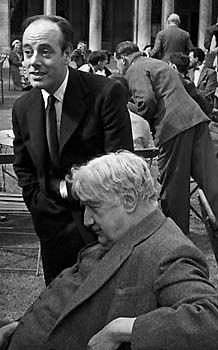
Reizenstein, Bate (back, with his teacher Vaughan Williams).
Source: Dutton Epoch CD (my rip!)
Formats: FLAC(RAR), DDD Stereo, mp3(320)
File Sizes: 294 MB / 159 MB
The FLAC link has now expired. No more requests for this, please!
mp3 version – https://mega.co.nz/#!f0owVDja!hjopJdNqah022qKSfazYl5EiL8_QjLgLVGkeLV-dNqw
Enjoy! Don’t share! Buy the original! 🙂
Lowell Liebermann (*1961) is one of America’s most frequently performed and commissioned
composers. Described by the New York Times as "as much of a traditionalist as an innovator," Mr. Liebermann’s
music is known for its technical command and audience appeal. Multiple recordings of many of his works
attest to the enthusiasm shared by performers and listeners for his music: the Sonata for Flute and Piano
has been recorded sixteen times to date; the Gargoyles for piano eleven times; and the Concerto for
Flute and Orchestra is available on four different releases. James Galway has commissioned three
works from Mr. Liebermann: the Concerto for Flute and Orchestra, the Concerto for Flute, Harp and
Orchestra, and Trio No. 1 for Flute, Cello and Piano. Mr. Galway premiered the Flute Concerto in
1992 with the St. Louis Symphony and the double concerto with the Minnesota Orchestra in 1995. Mr. Galway
recorded both works, along with Mr. Liebermann’s Concerto for Piccolo and Orchestra, for BMG, with
Mr. Liebermann conducting. [This album].
Music Composed and Conducted by Lowell Liebermann
Played by the London Mozart Players
With James Galway (flute) & Hyun-Sun Na (harp)
"If you stopped paying attention to new classical music after Britten and Shostakovich died,
it’s time to tune in again. The famous flutist has put his weight behind one of America’s most
gifted "new tonalist" composers, with electrifying results. Liebermann’s three concertos are
custom-made for listeners who find 12-tone music ugly and minimalism simple-minded.
The harmonies are savory, the scoring luminous – and, yes, you can hum the tunes."
Time Magazine
Source: RCA-BMG CD (my rip!)
Formats: FLAC(RAR), DDD Stereo, mp3(320)
File Sizes: 288 MB / 159 MB
The FLAC link has now expired. No more requests for this, please!
mp3 version – https://mega.co.nz/#!bwgVhAwI!TH_K5A8TQ-iR6aQSLkKvezZ_TrgCKHNOAdcJo2I1Dns
Enjoy! Don’t share! Buy the original! 🙂
Alfredo Campoli was born in Rome in 1906, both his parents being professional musicians.
In 1911 the family moved to London, where Campoli was taught by his father, and by the time of
his Wigmore Hall d???but in 1923, he was already secure in 11 major concertos. Although he
subsequently toured with Melba and Clara Butt, Campoli turned his attention to light music,
and during the 1930s became a household name for his many recordings and broadcasts,
especially with his Salon Orchestra. Usually billed only under his surname, he also maintained a
concert career, and played Paganini’s Concerto in D (arranged by Kreisler) at a Promenade
Concert in 1937. After the Second World War he returned to the “serious” classics, and soon
established an international reputation. He made his American d???but at Carnegie Hall in 1953
and visited Russia twice in 1956, on the second occasion with the LPO. Campoli’s large repertoire,
and included the major Classical and Romantic works as well as works by Moeran, Ireland, Bax
and Walton; in 1955 he gave the first performance of Bliss’s Violin Concerto, which was
written for him. His extraordinary beauty of tone and phrasing, often likened to bel canto
singing, was combined with an impeccable technique and an eloquently expressive approach
to interpretation.
Possibly one of the rarest recordings of all time: the Violin Concerto by Douglas Coates
(better known for choral and organ music) was broadcast in 1951, after which the BBC destroyed or
re-used the tape as was their custom. Coates, a writer in romantic style, like Bax, Delius and
Moeran, was so angry with the "modernist" attitudes at the BBC that he tore up the score and parts.
The work was believed completely lost until we came across the off-air recording which Coates
had made, of which only two original copies exist. We are delighted to have "re-discovered"
this music. E.J. Moeran’s Violin Concerto dating from a few years later has also
been relatively neglected. This performance again comes from a BBC broadcast. A larger-than-life
figure, keen on tennis and bridge and usually sporting a large cigar, Campoli recorded for Decca
for over 40 years. He died in 1991 at his home in Berkshire, England.
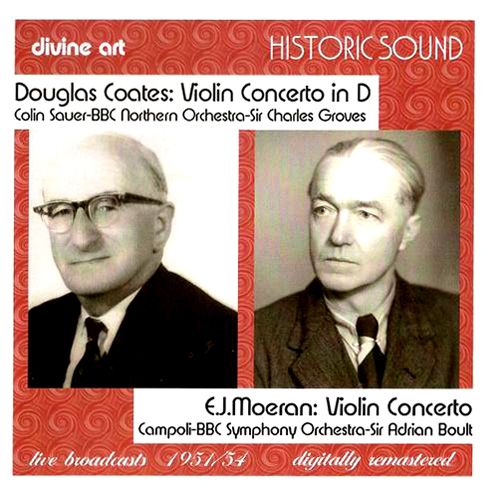
Music by E.J. Moeran & Douglas Coates
Played by the BBC Symphony & BBC Northern Orchestras
With Alfredo Campoli (violin) & Colin Sauer (violin)
Conducted by Sir Adrian Boult & Sir Charles Groves
"It continues to baffle me why performances and recordings of Moeran’s gorgeous Violin Concerto
are so thin on the ground. This is only the fourth version of this entrancingly tuneful and touching
creation to have come my way, and while it was exciting to encounter Albert Sammons’s 1946
broadcast with Sir Adrian Boult and the BBC SO (Symposium, 5/99), I had no idea the same
distinguished orchestral partnership had performed the work with Alfredo Campoli at the Royal
Festival Hall. Don’t let the crumbly sound put you off: the musicmaking is of exemplary commitment,
songful rapture and sizzling passion (a high old time is had in the Bacchic central rondo). Campoli
plays with virtuosity and golden tone, and Boult’s typically watchful accompaniment fits him
like a glove. Buried treasure indeed.
Douglas Coates (1898-1974) was a new name to me. Born in Yorkshire and selftaught, his
compositions include a substantial body of choral music, works for organ, piano, military and brass
band, and a handful of orchestral offerings. His approachable (if not terribly distinctive) Violin
Concerto in D dates from 1934 and this 1951 broadcast appears to have been its only performance.
A fine one it is, too, even though it seems conductor Charles Groves was particularly critical
of the work’s curious proportions, the 1 5-and-a-halfminute opening movement tending to
dwarf the two remaining movements (neither exceeds five minutes).
It’s sad to learn that the composer found the whole experience traumatic. He promptly branded
the concerto ‘a failure’ and may well have destroyed the manuscript (it has never been located).
The sound here (taken from a set of acetate 78s) is more palatable than in the Moeran, but
in both instances restorer Andrew Rose has worked wonders with what was evidently some
intractable source material. Detailed notes complement what is a brave and instructive coupling."
Andrew Achenbach, Gramophone
Source: Divine Art CD (my rip!)
Formats: FLAC(RAR), AAD Mono, mp3(320)
File Sizes: 283 MB / 137 MB
The FLAC link has now expired. No more requests for this, please!
mp3 version – https://mega.co.nz/#!n8YH0bgD!FEXaYBBGd0j7JIzaV8xJJXgfyNmsi0_QfbfDXTF ss58
Enjoy! Don’t share! Buy the original! 🙂
Luis de Pablo (born 28 January 1930) is a Spanish composer. Pablo was born in Bilbao, but
after losing his father in the Spanish Civil War, he went with his mother and siblings to live in Madrid
from age six. Although he started to compose at the age of 12, his circumstances made it impossible
to consider an artistic career, and so he studied law at the Universidad Complutense. For a short
time after graduating in 1952, he was employed as legal advisor to Iberia Airlines, but soon resigned
this post in order to pursue a career in music. Although he received composition lessons from
Maurice Ohana and Max Deutsch, he was essentially an autodidact in composition.
Danzas Secretas was commissioned by the Basque National Orchestra in celebration
of its 25th anniversary. The premiere was performed with soloist Fred???rique Cambreling (the
composition is dedicated to Giovanna Reitano) under the direction of Arturo Tamayo at the
Palacio Euskalduna in Bilbao on 31 March 2008. Formally the composition is a symphony with solo
harp; the opening movement serving as the exposition; the second movement lento; the third
movement a type of scherzo and the closing movement a sort of recapitulation. Composed for
mid-sized orchestra; the texture is rarely dense; leading to wonderful clarity in the play of timbres.
This composition as well as de Pablo’s Frondoso Misterio are the works featured on this; the
eleventh volume in the Basque Music Collection.
Music Composed by Luis de Pablo
Played by the Basque National Orchestra
With Fr???d???rique Cambreling (harp) & Asier Polo (cello)
Conducted by Arturo Tamayo
"As if to confirm the dramatic variety of Basque music here is this disc of two concertos by
Luis de Pablo. A prolific composer he has written three symphonies (though not labelled as
such), five choral symphonic dramas, five operas, lots of chamber music and concertos for
piano (3), violin, guitar, saxophone and flute. He founded the first Spanish centre for electronic
music and has held distinguished academic posts in Spain, Italy, France and Canada. He has
championed new music and has put his shoulder and commitment to the music of
Stuckenschmidt and Webern.
His Danzas Secretas is in four movements and is not designated a concerto. It is performed
here by the harpist who introduced it to the world in Bilbao on 31 March 2008. It is scored
with pellucid transparency – no smear, no haze, everything etched with a fine blade. The
orchestra is used with minimalist craftsmanship as one might expect from an advocate of
Webern. It is a work in which the two protagonists are in thoughtful competition in allowing
the other to suggest ideas and limbs of discovery. After a hovering thoughtful Escondida
comes a slow dissonant sunrise of an Inmovil. The lucid, biting and ruthless Oscura third
movement is followed by the makes dreamy play of the harp’s liquid arpeggiation.
Dissonantly impressionistic stuff.
The Cello Concerto Frondoso Misterio has more about it that is mobile and forwardly
projected. The title relates to a metaphor for death. It is a commission by the Madrid
Symphony Orchestra and arose at the instigation of Asier Polo – the soloist here – for the
orchestra’s centennial. It is in seven shortish movements. The furious Deciso is succeeded
by a pitter-pat irritable little Lesto and a dreamy chilly Bergian Intermezzo. The Elegia has
the cello playing its most soulful character to the hilt which becomes grim and blacker in
mood in the Ostinato with its dank orchestral piano and brass contributions. The splenetic
Riassunto is followed by a singingly soulful Commiato in which the soloist reaches out
yearningly to the listener.
Let me again put in a plea for a further recording of Guridi’s Sinfonia Pirenaica. I do
hope that this work when issued will be coupled with other Basque symphonies.
Two authoritative and indeed brilliant recordings of recent works by one of Spain’s
most gifted exponents of dissonance."
Musicweb
Source: Claves Records CD (my rip!)
Formats: FLAC(RAR), DDD Stereo, mp3(320)
File Sizes: 204MB / 128 MB
The FLAC link has now expired. No more requests for this, please!
mp3 version – https://mega.co.nz/#!mgxnXIAI!6H99kPYtoU9UAmmM76aC7xNnOmuIaQBnQpYshUO _2rg
Enjoy! Don’t share! Buy the original! 🙂
Quincy Porter (1897-1966) was among the more important American composers of his time
and best known for his chamber works, particularly for his nine string quartets. Some of his larger
compositions, in fact, have an almost chamber music quality, like the Ukrainian Suite (1925), for
string orchestra, and Music for Strings (1941). Porter was a musical conservative, his early works
having a highly accessible character, hardly in advance of the expressive language of arch-conservative
Howard Hanson. Porter’s later compositions, his Symphony No. 2 for example, had a tougher veneer,
with more dissonance and at times a sense of austerity. Still, his music is always approachable.
Porter had one great hit, the Pulitzer Prize-winning Concerto Concertante (1954), originally
called the Concerto for two pianos and orchestra. It is largely forgotten today, as is most of
Porter’s music, but performances and recordings of his works have generated a significant following
since the 1990s.
Porter was a violist himself, so it’s hardly surprising that some of the best concertante and
chamber music he wrote was for his own instrument. The 1948 Concerto for Viola and Orchestra
enjoyed only one "modern" recording before this. It is a four-movement piece full of idyllic and dramatic
writing that epitomises Porter’s accessible art. The style is lyrical Americana.
Music Composed by Quincy Porter
Played by the Northwest Sinfonia Seattle
With Eliesha Nelson (viola) & John McLaughlin Williams (piano)
Conducted by John McLaughlin Williams
"‘Why don’t you play my Viola Concerto more often?’ Quincy Porter once asked William Primrose.
Well, replied the canny Scotsman (according to his memoirs), if you don’t run off with an heiress or
jump off a building you’re not likely to get many performances these days. The difficulties for violists
playing concertos were not confined either to Primrose or to Porter. Resident section leaders would
routinely snaffle jobs in certain orchestras—there was at least one leading American orchestra with
which Primrose, the greatest virtuoso of the age on his instrument, never gave a solo engagement
for precisely this reason. In any case it didn’t avail Porter, of whose concerto Primrose was a strong
admirer.
Porter must have known some of this, as he was a violist himself. His Concerto was composed in
1948 in four concise movements. Its opening is lazy, meandering, a recitative interlaced with burbling
winds and noble brass with the viola sticking to its mid-range and espousing lyric verities. It has a
similar ease as the Walton but lacks its Mediterranean languor and sensual appeal. Melancholy is a
component too in an intimate way, but Porter unleashes his down-home self in the finale which is
a barn dance of great dynamism, with witty wind writing above the strutting figures.
As this is an all-viola disc Eliesha Nelson is centre-stage. She plays the Speed Etude—written in the
same year as the concerto – with just the right moto perpetuo decisiveness. The piano’s widely spaced
writing allows the viola the middle ground once again and its figuration is thereby perfectly audible.
The Duo for viola and harp or harpsichord is heard in both versions. It sports a long line, speeds up
for a jazz-rich central panel and ends tenderly. The harp version sounds the more ‘playable’ but
there’s a certain tangy quality about the harpsichord version that I like too.
If you were a Porter fan back in 1950 you’d have surveyed the discography with interest. The composer
had set down his own version of the Solo Suite for Musicraft back in 1939. The Gordon Quartet had
taken a punt on the Third Quartet (composed in 1930) for Columbia whilst a strictly anonymous group
had set down the Sixth for the small Yaddo label, a company that had also issued the Quintet for flute
and strings and some incidental music. You can now find Louis Kaufman and Artur Balsam’s recording
of the Second Violin Sonata on Music & Arts CD638. These early recordings point to the fact that Porter
did enjoy a certain degree of interest on disc. Of late there has been increasing interest on CD, not
least in his chamber music. It would certainly be good to hear that Musicraft disc, which preserves his
own playing. But certainly one would hardly find much fault with Nelson’s playing of this tightly
constructed and taut work. Its baroque cadences are strikingly explicit and it’s most personalised in
the free-wheeling barn dance flavours of the finale, ones that remind us of the Concerto, still nearly
twenty years into the future.
He touches on Blues most obviously in Blues Lontains for Viola and Piano, the earliest work here,
dating from 1928—it’s alternately rugged and keening. But he’s at his most exploratory in the Duo
for violin and viola of 1954, where he uses dissonance creatively and malleably. The see-sawing
violin figures of the central Lento contrast with the viola’s richer freedoms, and both conjoin in an
ebullient and engaging dialogue in the finale. Porter had no problems with finales. He gave them a
stomping good time.
Nelson is a fine guide, judging Porter’s temper and tone with real sensitivity and skill. She has
the multi-faceted John McLaughlin Williams with her—playing piano, violin, harpsichord and
conducting in the Concerto. The only thing he doesn’t do is play the harp. For shame!
Warmly recorded, the engineers have ensured that Porter’s discreet aural promotion of the viola
is securely projected. If you enjoy Robert Russell Bennett, and like the kind of Americana that
Louis Kaufman liked—Piston, Barber et al—then you will find Porter very much to your liking."
Musicweb
Source: Dorian Recordings CD (my rip!)
Formats: FLAC(RAR), DDD Stereo, mp3(320)
File Sizes: 407 MB / 170 MB (FLAC version includes complete artwork & booklet)
The FLAC link has now expired. No more requests for this, please!
mp3 version – https://mega.co.nz/#!D8hmhZSR!g02GfadKIMqvvjJAD7uUe-vg44Q2s32DZO-Vmd7BC7k
Enjoy! Don’t share! Buy the original! 🙂
Salvador Brotons (*1959) was born in Barcelona into a family of musicians. He studied
flute with his father and continued his studies at the Barcelona Conservatory of Music, obtaining
qualifications in flute, composition and orchestral conducting. His professors included, among
others, Antoni Ros-Marb??? (conducting), Xavier Montsalvatge (composition) and Manuel Oltra
(instrumentation). Brotons has been the conductor and music director of the Vancouver
Symphony Orchestra (WA) since 1991. He has also been the conductor and music director
of the Vall???s Symphony Orchestra (1997–2002) in his native Barcelona and the Balearic
Islands Symphony Orchestra in Palma de Mallorca (1998–2001; 2009–).
The Guitar Concerto, subtitled "Mare Nostrum", is a creature of Iberian shadows and
confiding Gothic whispers, jagged drama, sweet touching deliquescence (II) not far removed
from Rodrigo’s Aranjuez and Ponce’s Concierto del Sur. There’s even the wooden
clatter of castanets in the finale. It was written in Barcelona, the Costa Brava and the Balearics.
A major change of gear comes with the two movement Sonata-Concertino – a work
originally written as a sonata for trombone and piano. The oppressive string writing in the
"Adagio funebre" reeks of Shostakovich with the mood consistently profound; even tragic.
In the pounce and plunge of the Cadenza the music is more brilliant, Waltonian and with
the sort of emotional depth you find in the Oldham composer’s Troilus and Cressida.
The Flute Concerto is in four movements: dreamy-poetic, flightily buzzing and
capricious, sombre and funereal rather like the adagio of the Sonata-Concertino and
concluding with sparkling-eyed Waltonian brilliance. Parts of this suggested a debt to
Nino Rota while in others the concertos of Malcolm Arnold come to mind.
Music Composed and Conducted by Salvador Brotons
Played by the Barcelona National Symphony Orchestra of Catalonia
With ???lex Garrob??? (guitar), Magdalena Mart???nez (flute) & Ricardo Casero (trombone)
"The professional career of ???lex Garrobe developes regularly in more than thirty
countries in Europe, Asia, Africa, South America and the USA. Among the prestigious
international halls in which he uses to play are the Concertgebouw in Amsterdam,
Radio France Auditorium in Paris, Auditorio Nacional (Madrid), Palau de la M???sica
Catalana (Barcelona), Lutowslasky Auditorium (Warsaw) or the XXI Century
Auditorium (Beijing).
Born in Barcelona into a family of musical tradition, ???lex Garrob??? graduated
with First Class Honours from Alicante Conservatory in 1988. In 1990 he was
awarded the Alexander von Humboldt Foundation Scholarship to broaden his
studies at the Musikhochschule in Cologne with Hubert K???ppel. Some of the most
important influences for him were his teachers Jos??? Tom???s, William Watters,
Manel Gonz???lez and Josep Pons.
He was the winner of the 1988 National Spanish JJMM Competition and the
1989 Infanta Cristina International Guitar Competition being also prize-winner
at the Andr???s Segovia International Competitions of Almu???ecar (1989) and
Palma de Mallorca (1987)."
Source: Harmonia Mundi CD (my rip!)
Formats: FLAC(RAR), DDD Stereo, mp3(320)
File Sizes: 372 MB / 169 MB (FLAC version includes artwork & booklet)
The FLAC link has now expired. No more requests for this, please!
mp3 version – https://mega.co.nz/#!H5pHTCyJ!5l3a9zeU3HhwxithCeorGcX77bqSFgYSG9q-kQtsSBk
Enjoy! Don’t share! Buy the original! 🙂
The outstanding English composer and poet, Arnold Bax (1883-1953), was born into a Victorian
upper-middle-class family, of Dutch descent. He grew up in Ivy Back, a mansion on top of Haverstock Hill,
Hampstead. Because of the family affluence, Bax never had to take a paid position, and was free to
pursue most of his interests; a sharp contrast to the life of too many Britons, who suffered abject poverty
in the infamous slums. Bax was taught at home, but received his first formal musical education at age 16
from Cecil Sharp and others at the Hampstead Conservatory. Bax was accepted to the Royal Academy of
Music in 1900 where he remained until 1905. At the Academy, Bax was taught composition by Frederick
Corder, the Piano by Tobias Matthay , and the Clarinet by Egerton.
Arnold Bax had a sensitive and searching soul and drew inspiration from a wide range of sources.
He was a voracious reader of literature, and in this way he happened upon William Butler Yeats’s "The Wanderings
of Oisin and Other Poems" in 1902 . Bax proved highly receptive to the soft, melancholy moods of the Irish
Literary Revival, and found in Yeats a powerful muse, from which he derived a life-time of inspiration. He
developed an infatuation with Ireland, and began travelling extensively there. Bax visited the most isolated
and secluded places, eventually discovering the little Donegal village Glencolumbkille, to which he returned
annually for almost 30 years. Here, Bax drew inspiration from the landscape and the sea, and from the
culture and life of the local Irish peasants – many of whom Bax regarded as close friends. Bax’s encounter
with the poetry of Yeats and the landscapes of Ireland, resulted in many new works both musical and literary.
The Violin Concerto is a very rarely performed work even among Bax’s, and this version remains
its only modern recording (there is a historic recording with Eda Kersey, the violinist who premiered
the piece, on Dutton). Bax’s own, mysterious remark that it "sounds rather like Raff" makes little or
no sense, in fact it is typical of the composer’s mature output, a powerful late Romantic work that
reflects Bax’s obsession with orchestral color. The tone poem A Legend is a late work, in a genre in
which the composer excelled (The Garden of Fand, Tintagel, Northern Ballads). Bax also wrote the
music for his brother Clifford’s play Golden Eagle, and again this is its only recording.
Music Composed by Arnold Bax
Played by the London Philharmonic Orchestra
With Lydia Mordkovitch (violin)
Conducted by Bryden Thomson
"I consider Bax’s music well worth reviving: an interesting mix of late Romantic and Modern,
superb handling of the orchestra, and a uniquely complex counterpoint resulting from his
orchestral sonorities. Bax intended his 1937 violin concerto for Heifetz. Heifetz rejected it, for
some reason. No one ever accused Heifetz of perfect taste, especially in modern music, but,
really, he spat on a masterpiece and what’s more, one perfectly suited to his musical point of
view – big, Romantic, heroic. The concerto exhibits unusual architectural features. The first
movement, subtitled "Overture, Ballad, and Scherzo," comes across as a three-movement violin
concerto in miniature, with each section based on the same general idea. The idiom, vigorous
and athletic, shows Bax’s participation in British Modernism. As for those used to Bax’s music
of the Celtic Twilight, this movement especially will surprise them.
Critics have tended to treat Bax’s music after the Sixth Symphony (1934) as inferior. I find
no falling-off myself, although the inspiration differs. The later work, like the violin concerto,
still sings passionately, but more efficiently and with less Sturm und Drang. I look on it as
having fewer but more telling notes. One marks less of the emotional excess than in a score
like the Second Symphony (1926). I have no way of really knowing, but I suspect the
following. Bax’s musical inspiration was usually tied to his physical surroundings. He
responded to landscape. Most of the work seen as characteristic evoked his stays in the
west of Ireland. As he grew older, he went to Ireland less and less and finally moved to
Sussex. For me, the slow movement broods less than Bax’s usual and instead glows with
a rare serenity. In A-B-A song form, it begins with an ecstatic climbing theme, a cross
between Delius and Vaughan Williams’ Lark Ascending, and moves to a middle section
which, as Lewis Foreman’s liner notes keenly point out, foretells the Forties "Mozartean"
works of Richard Strauss. The sonata-rondo finale treats mainly two ideas – one light
and fleet, and the other a lush waltz, slightly reminiscent of a theme from the Sibelius
violin concerto. This movement brilliantly glitters and entertains, obviously designed
to please the crowd."
Classical Net
Source: Chandos Records CD (my rip!)
Formats: FLAC(RAR), DDD Stereo, mp3(320)
File Sizes: 325 MB / 180 MB (FLAC version includes cover & booklet)
The FLAC link has now expired. No more requests for this, please!
mp3 version – https://mega.co.nz/#!r1BA2DgK!BRSt1AUMxY-sk7BJi03QBLQSt0UWtClNnSC3OtX36YI
Enjoy! Don’t share! Buy the original! 🙂
William Mathias was born in Carmarthenshire in 1934, and from 1970 until his death in 1992 was
Professor and Head of Music at the University College of North Wales, Bangor. The Harp Concerto was
commissioned for the Llandaff Festival in 1970, and is scored for a modest orchestra of single woodwind, horn,
trumpet, tympani, percussion, celeste and strings. The first movement is largely concerned with the
relationship between the opening lyrical ideas (woodwind, strings and solo harp) and a second more
strident group (woodwind, percussion, trumpet and xylophone). Whilst in no sense programmatic, the
music has a certain affinity with the land and seascapes of South West Wales, where it was written,
particularly the central slow movement. The great elegies of early Welsh poetry also contribute to the
atmosphere of this movement, with their combination of heroic rhetoric and elegaic feeling. The music
has considerable textural variety but with the solo harp always the central figure. In contrast, the finale
is entirely joyful and rhythmic, offering abundant opportunities for display to both orchestra and soloist alike.
The Clarinet Concerto was premiered by the BBC Welsh Symphony Orchestra under David Atherton
in September 1975. The clarinet part in the first movement (Allegro vivo) is pithy and gestural, but always playful.
There are jazz-tinged rhythms in the first movement , and the sparkling nature of the orchestration (the
percussion includes glockenspiel, vibraphone and suspended cymbal for colour)is just wonderful. If the Lento
espressivo is in the final analysis a little less inspired (although colouristically it is very beautiful), the
dancing finale provides all the joie de vivre one could wish.
The Third Piano Concerto was ritten for the composer himself to perform, its influences include
Bart???k (the dancing rhythms of the first and last movements and the evocative Welsh Night-Music of
the Second), Messiaen (orchestral colour), Stravinsky and (clearly at one point in the first movement)
Gershwin.
Music Composed by William Mathias
Played by the New Philharmonia & London Symphony Orchestras
With Gervase de Peyer (clarinet), Ossian Ellis (harp) & Peter Katin (piano)
Conducted by David Atherton
"There is no finer work in the medium than William Mathias’ Harp Concerto, a
stunning combination of characterful melody and magical handling of texture.
The finale in particular must be counted as one of the most successful concerto
movements in the 20th-century literature for any instrument, and this performance
featuring the work’s dedicatee Osian Ellis is just about perfect in every way. Why
this piece isn’t a concert staple remains a mystery. The other two works in their
individual ways are also very satisfying and well worth hearing, if perhaps not
quite as remarkable as the Harp Concerto.
Gervase de Peyer gives a fearless account of the Clarinet Concerto, a piece that
vacillates between mellow lyricism and strident outbursts. The thematic materia
here isn’t quite as memorable (to me at least) as that in the Harp and Third
Piano Concertos. This latter lives squarely in the school of Bart???k and Prokofiev,
with a “night music” central movement and a finale that sounds like an amalgam
of Bart???k’s Second, Barber, and Ginastera, albeit with a Welsh musical accent.
Peter Katin is the excellent soloist, David Atherton conducts splendidly, and
the recording is of the very highest quality. Outstanding and essential for
anyone who enjoys really good 20th-century concertos."
Dave Hurwitz, Classics Today
Source: Lyrita Records CD (my rip!)
Formats: FLAC(RAR), ADD Stereo, mp3(320)
File Sizes: 322 MB / 163 MB
The FLAC link has now expired. No more requests for this, please!
mp3 version – https://mega.co.nz/#!6honiQzQ!1sju2AdfA9HkxUOKuqZX8WdtEw05r4HHlEhC24j v_Q8
Enjoy! Don’t share! Buy the original! 🙂
Volkmar Andreae (1879–1962) was a Swiss conductor and composer. Andreae was born in Bern.
He received piano instruction as a child and his first lessons in composition with Karl Munzinger. From 1897
to 1900, he studied at the Cologne Conservatory and was a student of Fritz Brun, Franz W???llner, Isidor
Seiss and Friedrich Wilhelm Franke. In 1900 he was a soloist tutor at the Munich Hofoper. In 1902 he took
over the leadership of the Mixed Choir of Z???rich (Gemischten Chores Z???rich), where he remained until
1949, also leading the Stadts???ngerverein Winterthur from 1902 to 1914 and the M???nnerchores Z???rich
from 1904 to 1914. From 1906 to 1949 he led the Tonhalle Orchestra Zurich (Tonhalle-Orchester) and
from 1914 to 1939 the Conservatory of Z???rich. Later he worked as freelance composer in Vienna and
worked internationally as a conductor (especially with the works of Anton Bruckner). He composed
opera, symphony and chamber music, piano, violin, and oboe concerto, piano music, as well as choir
music and songs. He died in Z???rich.
Mention of Andreae’s prowess as a concert pianist should cause us to consider that in 1897 or 1898 he
played Beethoven’s Emperor concerto as a soloist in Cologne (K???ln) with the G???rzenich Orchestra, and it
was in the same city with the same orchestra that he was the soloist in the premiere of his slightly earlier
Piano Concerto in D, on July 7, 1898. This work is in three movements, played virtually attacca. It is
scored for a somewhat similar orchestra to the Konzertst???ck, but without trombones, and is dedicated to
another of his professors at the Cologne Conservatoire, Victor Staub. Although we know the date of that
first performance, we are uncertain as to which version of the first movement was actually played on
that occasion, for the orchestral parts have an additional 209 bars, which are absent from the full score,
which suggest that following the premiere (described as being ‘in one movement’ – although the attacca
indications might have been misleading here) the first movement was revised. In whatever form the
Concerto was first given, it remains a remarkable achievement for the teenaged
Andreae; Brahmsian, certainly, in language and general demeanour, it offers none of the meretricious
elements which tend to disfigure ‘virtuoso’ piano concertos of the period, and impresses us by the sheer
depth of musical interest it menifestly possesses; the ‘running together’ of the three movements is a
particularly notable feature, carried off with considerable assurance and convincing artistry.
The Violin Concerto by Volkmar Andreae is probably the most significant of his concertos and
concertante works. It was written in 1935, the score being completed on August 8th of that year in the
village of Ober???geri, in the canton of Zug, where his countryside house was situated. The work had
been intended from the start as a Concerto for Busch, who had left Germany following the rise of Hitler
and had settled in Switzerland, just over the border with Germany. Busch frequently gave concerts with
Andreae and the Tonhalle Orchestra, and they gave the premiere of the Concerto in Z???rich on January
27th, 1936. Busch repeated the work in February 1937 with the Orchestra dell’Accademia di St Cecilia at
the Teatro Adriano in Rome under Mario Rossi.
The Concerto is scored for a relatively modest orchestra (2,2,2,2-3,2,0,0-timp+1percussion-strings),
and, although essentially in two movements, rather like the Piano Concerto of almost 40 years earlier
it falls into a number of movements played attacca. Andreae exhibits his mature mastery of various
compositional techniques in the work, perhaps most notably the fugato which opens the (nominal)
second movment, but the Concerto is full of the most fascinating juxtapositions of metre, of broad
expressive melodic lines (especially the duet between solo violin and horn in the Adagio) and intriguing
rhythmic pulses (the closing pages). It is a really fine composition whose neglect – like almost all of
Andreae’s music – is wholly inexplicable.
Music Composed by Volkmar Andreae
Played by the Bournemouth Symphony Orchestra
With Fali Pavri (piano) & Christian Altenburger (violin)
Conducted by Marc Andreae
"… All the pieces recieve performances worthy of them. Pianist Fali Pavri … proves himself to be an
excellent soloit in every way, both technically and interpretively … conductor Marc Andreae, the
composer’s grandson, leads ideal performances, and the Bournemouth Symphony plays splendily.
The recorded sound is excellent … this release is enthusiastically recommended."
Fanfare
"Guild’s attention to the music of the Swiss composer and conductor Volkmar Andreae is most
welcome; earlier issues of his chamber and orchestral music are complemented this new issue,
recorded by the Bournemouth Symphony Orchestra and conducted by the composer’s grandson,
Marc Andreae. The four works are all concertos or concertante compositions, and are given the
best possible advocacy, though the violin concerto is comfortably the most distinguished and
individual piece on the disc."
Classical CD Choice
http://i1084.photobucket.com/albums/j415/wimpel69/andreae_zps3b985639.gif
Source: Guild Classics CD (my rip!)
Formats: FLAC(RAR), DDD Stereo, mp3(320)
File Sizes: 302 MB / 176 MB (FLAC version incl. cover & booklet)
The FLAC link has now expired. No more requests for this, please!
mp3 version – https://mega.co.nz/#!e4gCmQyb!3UNGjC84b-oILfw8_NOuf4w5QIYf_OHv2LMnOHeY58s
Enjoy! Don’t share! Buy the original! 🙂
Julius Engelbert R???ntgen (1855-1932) was a German-Dutch composer. His first piano teacher
was Carl Reinecke, the director of the Gewandhaus orchestra, while his early compositions were
influenced by Reinecke, but also by Robert Schumann, Franz Liszt and Johannes Brahms. In 1870,
at the age of 14, Julius R???ntgen visited Franz Liszt in Weimar; after playing piano for him he was
invited to a soiree at Liszt’s house. In Leipzig, he and his parents were part of the musical circle
around Heinrich von Herzogenberg, and it was at their house that he first met Brahms. Later
R???ntgen moved to Munich, where he studied piano under Franz Lachner, a friend of Franz Schubert.
In 1877, Julius R???ntgen moved to Holland. He accepted a position as a piano teacher in Amsterdam,
and became the conductor of the zangvereniging Excelsior (Excelsior Choral Society), of the
Amsterdam branch of the Maatschappij tot Bevordering der Toonkunst (Association for the
Enhancement of Music) and of the Felix Meritis concerts.
Julius R???ntgen was a prolific composer. His vast body of work (around 650 compositions) covers
all classical music genres. His music shows very strong affinity with J. Brahms’, but R???ntgen’s
admiration for Max Reger can also be heard in it.
One of Hungary’s most significant musical figures at the end of the nineteenth century and
beginning of the twentieth, Jen??? Hubay (1858-1937) was a celebrated violin virtuoso, thought
to be the heir to Henri Vieuxtemps; he was also a prolific composer, especially for his own instrument.
Trained by the legendary Joseph Joachim, Hubay was a prolific concert soloists but somehow
found time to write no less than 200 compositions for violin.
Music by Julius R???ntgen, Jen??? Hubay & Ernest Chausson
Played by the Dvor???k & Slovak Radio Symphony Orchestras
With Ragin Wenk-Wolff (violin)
Conducted by Dennis Burkh & Stanislav Bogunia
"Julius R???ntgen (18551932), friend of Brahms and Grieg and greatly admired by Tovey,
is little known today. This premiere recording reveals a large-scale work in traditional
form. For me, the most attractive and memorable music comes in the finale, with its
colourful rhythms and harmonies. The preceding Lento has a pleasant, dreamy quality;
its elaborately decorated violin lines a la Spohr benefit from the sweet tone of Ragin
WenkWolff’s Strad.
In the Chausson, the playing is persuasively expressive, though other violinists have
given the first entry a more inward, mysterious air, and built up more powerfully and
decisively to the climax. Wenk-Wolff’s account of the Hubay makes a fascinating
contrast to Hagai Shaham’s. She doesn’t have the fluency that allows him to toss off
easily the triplet passage with chords in the first movement, and her account of the
Scherzo lacks the Mendelssohnian grace of Shaham’s. But her slower speeds in the
outer movements allow her to dig more deeply into the expressive character of
what can seem rather superficial music. The finale’s second theme sings with real
passion, rather than just floating above the woodwind figuration. And in the Slovak
orchestra’s playing we’re keenly aware of the proximity of the Hungarian border."
Gramophone
Source: Centaur Classics CD (my rip!)
Formats: FLAC(RAR), DDD Stereo, mp3(320)
File Sizes: 397 MB / 180 MB
The FLAC link has now expired. No more requests for this, please!
mp3 version – https://mega.co.nz/#!mgx3DaDK!THUyFYEpP2yXvFV-xVa2W4GDL4qXodRfS-tbVYQXzDw
Enjoy! Don’t share! Buy the original! 🙂
Perhaps the title choice for this album/series was an unfortunate one: Modern Masters I seems to
suggest a collection of works in an advanced contemporary idiom – but not so. "Conservative Master Composers
of the 20th Centrury" would have been a more appropriate monicker.
Of much interest are the three opening works by superior composers: Mikl???s R???zsa’s Tripartita
for Orchestra was his final orchestral work (not counting the concertante Viola Concerto), and it’s a
powerful, rhythmically charged piece in a Bart???kian language. Perhaps Werner Andreas Albert’s CPO
version is even more explosive and driven, but this premiere recording, by David Amos and the
London Symphony, is certainly thoroughly satisfying. The Folk Suite is a highly characteristic work
by Morton Gould, mixing classical and popular elements into a deftly entertaining Americana suite.
Gian-Carlo Menotti is best-known as one of the US’s most successful operatic composers (The Consul,
The Telephone) wrote his lovely Triplo Concerto a Tre (so called because each of its three movements
features groups of three solo instruments each, set against the orchestra) in 1970 – but you would never
have guessed it from the work’s neo-Puccini roots. It’s a lively, hugely entertaining piece nonetheless.
The album closes with a patriotic Israeli piece, Marc Lavry’s symphonic dance Emek.
Music by Mikl???s R???zsa, Morton Gould, Gian Carlo Menotti & Marc Lavry
Played by the London Symphony Orchestra
Conducted by David Amos
"Mikl???s R???zsa’s’s Tripartita for Orchestra dates from 1972, and is composed in a style immediately
recognisable by anyone familiar with his film work. Consisting of an ‘Intrada’, ‘Intermezzo Arioso’ and
‘Finale’, here is 21-minutes of concentrated musical fury, an explosive eruption of colour which offers
little let-up and no real promise of resolution. With pulsating motor rhythms familiar from the great
film noirs / thrillers R???zsa made with producer Mark Hellinger (The Killers, Brute Force, The Naked
City,) the music races from one biting climax to the next, only relaxing the tension in the intermezzo
to paint a darkly haunted landscape with roots in the folk music of the composer’s beloved homeland,
Hungary. There is some fine violin playing from Ashley Arbuckle.
The booklet notes would have one believe Morton Gould was born in 1939, but wrote his
Folk Suite the previous year. In-fact the composer was 25 when he composed the piece
– an ‘Overture’, ‘Blues’ and a final ‘Jig’ – created at much the same time Aaron Copland
was ‘inventing’ the sound of modern Americana, a sound which would influence untold
Westerns. Like Copland’s famous ballets Billy the Kid and Rodeo, Gould’s suite is written
in a variety of folk-idioms, yet unlike Copland, his work consists entirely of original tunes.
Alongside the music Virgil Thomson was writing for such films as The Plough that Broke
the Plains (1936), Gould’s work proves that Copland alone didn’t create our aural image
of the West. His central ‘Blues’ may evoke Gershwin, while the finale is a ‘Jig’ of
exhilarating proportions. Gould would eventually go on to write for the screen,
composing some of the music for Cinerama Holiday (1955), and much later scoring
Holocaust (1978), one of the first significant American mini-series.
Gian Carlo Menotti can hardly be considered a film composer, though his television opera
Amahl and the Night Visitors, has been produced at least three times, in 1951, 1963
and 1978. Menotti’s early life had much in common with that of the great film composer
Nino Rota. Both were Italians born in 1911 and were remarkable prodigies, Rota composing
his oratorio The Childhood of John the Baptist at the age of 11, Menotti having two
operas to his name by the age of 13. Both then studied in Milan and both wrote works
influenced by the music of the Renaissance. Menotti’s delightful Triplo Concerto a Tre,
commissioned by Stokowsky in 1970 is one such piece. Offering lyrical solo writing for
woodwinds against string trio and piano, this is music which will give much pleasure to
anyone who enjoyed the two recent collections of Nino Rota’s chamber music. That by
the Ensemble Nino Rota and that by the Ex Novo Ensemble In short, Triplo Concerto a
Tre is a lyrical gem."
Gary S. Dalkin
Source: Harmonia Mundi CD (my rip!)
Formats: FLAC(RAR), DDD Stereo, mp3(320)
File Sizes: 277 MB / 167 MB
The FLAC link has now expired. No more requests for this, please!
mp3 version – https://mega.co.nz/#!a0xmHKTC!hjP0OXAWSv-AJSB4eN4VsbXbayC2jnBWHXXmDs0tges
Enjoy! Don’t share! Buy the original! 🙂
The Russian-born composer Vernon Duke (Vladimir Dukelsky, 1903-1969) produced a distinguished
body of concert music. His Piano Concerto was written for Arthur Rubinstein, who had requested a ‘one-
movement piano concerto, pianistically grateful and not too cerebral’, but it was never orchestrated by
the composer and therefore never performed in his lifetime. The American conductor and painist Scott
Dunn completed the work and gave its premi???re at Carnegie Hall on 1999 to great accalim. Duke’s Cello
Concerto is a mature, overtly romantic work in which the influences of Prokofiev, Stravinsky and
Shostakovich can be heard. Dating from the same period, his Homage to Boston suite is dedicated
‘to the members of the Boston Symphony’, and portrays various people and places in Boston familiar
to the composer.
Music Composed by Vernon Duke
Played by the Russian Philharmonic Orchestra
With Scott Dunn (piano) & Sam Magill (cello)
Conducted by Dmitry Yablonsky
"American composer Vernon Duke was also publicly known by his given name as Vladimir Dukelsky,
particularly in connection with his concert music and poetry. It is more common for posterity to refer
to the composer as "Vernon Duke" whether in writing classical music or popular; the standards he
wrote for musicals, such as "April in Paris" and "Autumn in New York" have such a strong jazz feel
some have even developed the impression that Duke had to be an African-American! Actually, Duke
was Russian-born, and in a purely cultural sense, this student of Gli???re and close friend to Prokofiev
never got very far from his Russian roots in his concert music, though there, too, a trace of the
telltale influence of Tin Pan Alley can be detected. Not very many of Duke’s classical works have
been circulated before the release of Naxos American Classics’ Vernon Duke: Piano Concerto, which
includes two major pieces and a charming piano suite, Homage to Boston (1945), none of which
have ever appeared on recordings before. The neo-classic Concerto in C minor (1923) has at least
one good reason why not, as for some reason Duke never orchestrated the work and here it is
presented in an orchestration by Scott Dunn, who also performs the solo piano part and is heard
in the suite. He clearly has an affinity for Duke’s piano idiom, which seems to fall right into the
middle of Duke’s two favorite composers, Gershwin and Prokofiev. The Cello Concerto (1945) was
written for Gregor Piatigorsky and listeners familiar with the kinds of gestures Piatigorsky favored –
– for example, those in Lukas Foss’ Capriccio for Cello and Piano — will find some commonality
with that approach, not to mention a nod to Stravinsky here and there. Cellist Sam Magill once
studied with Piatigorsky’s pupil Lawrence Lesser, and he understands Piatigorsky’s sweeping,
lurching, leaping, and frequent use of pizzicato; in this recording, Magill almost seems to resurrect
the ghost of the great man himself. Dmitry Yablonsky’s handling of the Russian Philharmonic is
somewhat independent minded and brassy in both concerti, but for that matter so are Duke’s
scores, in which the ripieno tends not to support the soloists so much as run a kind of interference
against them.
Naxos’ recording was made in a studio at KULTURA, formerly belonging to Soviet TV and radio;
it is a very loud space, which works great for the concerti, but is a little distant for the solo piano
music. Nevertheless, these works represent Duke’s efforts in classical music at its peak and are
well performed to boot. For anyone interested in the concert side of Vernon Duke, Naxos American
Classics’ Vernon Duke: Piano Concerto should prove better than sufficient and for those new to
his concert music — which would be most listeners — it may well be revelatory."
All Music
Source: Naxos CD (my rip!)
Formats: FLAC(RAR), DDD Stereo, mp3(320)
File Sizes: 256 MB / 132 MB (FLAC version incl. liner notes)
The FLAC link has now expired. No more requests for this, please!
mp3 version – https://mega.co.nz/#!OkIDVBwQ!9Z6XgtuIE_X4mOAjsf83PDlIr3L85gR5FhP2uZk 1fLs
Enjoy! Don’t share! Buy the original! 🙂
exorbitant shares, endless thanks.
Imogen Clare Holst CBE (1907-1984) was an English composer, arranger, conductor, teacher
and festival administrator. The only child of the composer Gustav Holst, she is particularly known for
her educational work at Dartington Hall in the 1940s, and for her 20 years as joint artistic director
of the Aldeburgh Festival. She was also a prolific writer on music, producing composer biographies,
much educational material, and several books on the life and works of her father.
In the early 1950s Imogen became Benjamin Britten’s musical assistant, moved to Aldeburgh, and
began helping with the organisation of the annual Aldeburgh Festival. In 1956 she became joint
artistic director of the festival, and during the following 20 years helped it to a position of pre-
eminence in British musical life. In 1964 she gave up her work as Britten’s assistant, to resume
her own compositional career and to concentrate on the preservation of her father’s musical legacy.
Imogen’s own music is not widely known and has received little critical attention; much of it is
unpublished and unperformed.
Music Composed by Gustav Holst
Played by the English Chamber Orchestra
With William Bennett (flute), Peter Graham (oboe) & Cecil Aronowitz (viola)
Conducted by Imogen Holst
"Another splendid trawl through the treasurable Lyrita back-catalogue. Here’s an uncommonly
wide-ranging and generous selection of Holstian delights, encompassing music as stylistically
diverse as the folk-song bumptiousness of the early Two songs without words (a VW dedication
from 1906) to the "tender austerity" (to use the composer’s own phrase) of the Lyric Movement
for viola and chamber orchestra—a most haunting creation from his penultimate year. Elsewhere,
we are offered such rarities as the colourful Golden Goose ballet music and Capriccio (both
expertly reworked by Hoist’s daughter, imogen), the gritty Double Concerto of 1929, as well
as the composer’s own string orchestra transcription of the tender "Nocturne" from A Moorside
Suite—a marvellous work, scored originally for brass band (I do wish Decc.a would restore their
superb Grimethorpe Colliery Band version to currency). The enchanting Brook Green Suite is
here, too, but the outstanding account of the popular St Paul’s Suite which came with it on
that 1967 LP anthology will have to wait a little longer for its silver-disc debut.
Performances throughout possess unfailing insight, and the present remasterings are superb.
An essential companion disc to Lyrita’s classic l-lolstiBoult compilation from last year."
Gramophone
Source: Lyrita CD (my rip!)
Formats: FLAC(RAR), ADD Stereo, mp3(320)
File Sizes: 330 MB / 170 MB
The FLAC link has now expired. No more requests for this, please!
mp3 version – https://mega.co.nz/#!v1RRQC7B!gZ0DLdNo8PFmJZe4HTf0Gam94WDhHxaf8eIhCRK Q_Fo
Enjoy! Don’t share! Buy the original! 🙂
Anatol Vieru (1926 – 1998) was a music theoretician, influential pedagogue, and a leading
Romanian composer of the 20th century. A pupil of Aram Khachaturian, he composed seven
symphonies, eight string quartets, numerous concertos, and much chamber music. Vieru’s music
occupies an unusual middle ground between the age-old and the ultra-new: his initial musical
impulses were born of the Romanian folksong he heard around him as he grew up, though he
soon evolved towards the mainstream of European modernism. Teaching was another thread
that ran through his life: he taught at the Bucharest Conservatoire for 35 years, from 1950.
Guest lecturing took him abroad, too: he spoke at the Sarah Lawrence College, in the Bronx,
and the Juilliard School (1968), in West Berlin (1972-73), in Israel (1982- 83) and in the
high temple of modernism, Darmstadt (1992-93).
Vieru’s musical language is colourful and, occasionally, as in the Double Concerto on this album,
fierce and aggressively modern. It is this Concerto for Violin and Cello that impresses with
many striking ideas and compelling passages, never easing the tension throughout its 25 minutes.
And with these two soloists, we can be assured that it got the best reading possible.
Music Composed by Anatol Vieru
Played by the Romanian Radio Symphony Orchestra
With Oleg Kagan (violin) & Natalia Gutman (cello)
And the Romanian Radio Chorus
Conducted by Anatol Vieru & Ludovic Baci
"The Double Concerto was composed in 1979 and premiered in June 1980 by no less than Oleg Kagan and
Natalia Gutman under the composer’s baton, and this is the recording of this very performance.
The first movement goes through various sections (difficult to grasp if there is an underlying cogent
architecture or if the piece is just sectional) and even a variety of styles, starting in a doggedly vehement
and angry mood, with rarefied orchestration consisting of timpani ostinato and military/menacing
brass interjections (in the recording violin and cello pack the sonic space) and ending with a dance
movement that seems almost to be drawn from Stravinsky’s Soldier’s Tale (track 1 at 7:19). One of
Vieru’s nice touches is his usually rarefied orchestration, timpani ostinato and other coloring by
percussion, hushed and mysterious violin tremolos, lots of interplay with solo brass. The atmosphere
is dramatic with moments of mysterious lyricism, the language is modern without being avant-garde:
somewhere in between the Penderecki from the 1960s and the Penderecki from the 1980s –
not a bad stylistic middle point where to stand. The slow movement is very and hauntingly
beautiful, with its sparse orchestration and long-breathed, longing melodies for cello and violin
rising to intense lyricism, at times skidding on to a "dirtier" tonal production, in a quasi ghostly
manner (there is only one track for the whole concerto and it is clearly not enough; the 2nd
movement starts at 8:47). At 15:44 comes a bridge passage in which the orchestral proceedings
become more agitated, with ghostly woodwind work and what is either a wind machine and/or
a tape of rolling sea (notes do not explain this), but rapidly the finale develops as a distorted,
romping Bartokian country dance (Shostakovich’s famous dance theme in his 8th String Quartet,
also used in his Piano trio, also came to mind) – not the composer’s most interesting inspiration
in my opinion, although one that is deeply rooted in the musical culture of the composers from
the Eastern countries, and Vieru keeps it wild enough to avoid the impression of just tritely
following the tradition. The coda recapitulates some of the earlier themes and moods, with
great intensity. I wouldn’t count the Double Concerto among the truly major and outstanding
contemporary works in the genre, but it is enjoyable, at times impressive even, and certainly
worth a listen."
Amazon Reviewer
Source: Olympia CD (my rip!)
Formats: FLAC(RAR), AAD Stereo, mp3(320)
File Sizes: 360 MB / 159 MB
The FLAC link has now expired. No more requests for this, please!
mp3 version – https://mega.co.nz/#!usp2GTqY!5CSb89HSARklm5riMupo-9upjHpofhHCKGiCNMVblNo
Enjoy! Don’t share! Buy the original! 🙂
English composer Matthew Curtis (*1959) was born in Cumbria and read Classics
at Worcester College, Oxford before embarking on a business career in London. He has
recorded four albums of his highly melodic and colourfully orchestrated music, which
is a testament to the ongoing popularity and vitality of "British light music".
Music Composed by Matthew Curtis
Playede by the Royal Ballet Sinfonia
With Jennifer Stinton (flute) & Verity Butler (clarinet)
Conducted by Gavin Sutherland
"A musicians’ favorite, Curtis proves once again a great tunesmith
Ivan March and Andrew Achenbach reviewed two previous Campion CDs of music by
Matthew Curtis (3/03; 5/05). That this third follows so closely is, we are told, because
of the availability of performers willing to record his flute and clarinet concertos. Of the
other music on the CD, the Five Dances for string orchestra were written specially for
the recording.
Curtis was born in Cumbria in 1959, and the Gramophone summary of the first Campion
CD rightly described him as a composer unafraid to write tunes. This is immediately
apparent here in the frisky opening movement On the Move, as also in the beautifully
lyrical Adagio cantabile of the Flute Concerto, the swinging opening waltz of the Five
Dances, and the Allegro finale of the Clarinet Concerto. I can imagine that Flute Concerto
movement especially gaining popularity separated from the remainder of the work. In
its interplay between flute soloist and solo violin, it also demonstrates Curtis’s particular
skills as an orchestrator – remarkable for one apparently self-taught in that respect.
Apart from the final Partita, everything in the collection is scored for reduced orchestral
forces, emphasising the overall impression of music that fits well into the tradition of
Elgar’s lighter works. Even if the music’s ready accessibility means also that it perhaps
leaves no deep lasting effect, the expertise and affection of Gavin Sutherland and the
Royal Ballet Sinfonia ensure that the CD will not disappoint any who have enjoyed the
first two Curtis volumes."
Andrew Lamb, Gramophone
Source: Campion Cameo CD (my rip!)
Formats: FLAC(RAR), AAD Stereo, mp3(320)
File Sizes: 365 MB / 166 MB (FLAC version incl. cover & booklet)
The FLAC link has now expired. No more requests for this, please!
mp3 version – https://mega.co.nz/#!rlQwCRAI!EKPgGJRqtDF5bzVTxTIB8eC5t0nDIaVsVXZQefy wsP4
Enjoy! Don’t share! Buy the original! 🙂
Robert Beaser (*1954) is often classed as a member of the new tonalists, a group whose membership
includes Lowell Liebermann, Daniel Asia, Paul Moravec, and other major America composers born at
mid-twentieth century. Beaser, like his colleagues, embraces more traditional methods of composition,
including tonality and an expressive directness. He possesses a great melodic gift and is unabashed in his
use of it. Moreover, he is versatile in writing in a variety of genres, from opera and orchestral works to
chamber pieces and songs and solo works for piano and guitar.
Beaser earned degrees in political philosophy and literature at Yale College, and then went on to Yale School
of Music for a doctorate in music, studying under Jacob Druckman, Toru Takemitsu, Earle Brown, and other
notables. He studied conducting with William Steinberg and Arthur Weisberg. Beaser’s first great
compositional success came with his Mountain Songs (1984), for flute and guitar, which was nominated
for a Grammy in 1986.
Music Composed by Robert Beaser
Played by the American Composers Orchestra
With Pamela Mia Paul (piano) & Jan Opalach (baritone)
Conducted by Dennis Russell Davies
"That Beaser is an eclectic can be taken as read. Lucky for us, his most recent composition—
the Chorale Variations—opens this CD, and rings him in with a fighting chance. It’s a terrific
piece, dazzlingly colourful, fearless of gesture and visited by countless identifiable influences.
And the guest-list is surprisingly varied: Copland (opening), Berg (1’47"), Mahler (443"),
Tchaikovsky (739"), Janhcek (1709′) and with Stravinsky, Vaughan Williams, Steve Reich
and John Adams, arriving together (1200)—speculative recognition on my part, of course,
but notable elements in a beautifully fashioned and ingeniously constructed composition.
The Seven Deadly Sins are as many masterly settings of Anthony Hecht’s abstruse but
haunting poetry: "The Mercy by which each of us is tried", he writes, and a drum-roll
reflects the ‘trial’. Most movements are tailed by what I might term the reverberation of
conscience, where Beaser lets his closing chord die to an implied question. Some vices
occasionally appear to reflect each other— "Wrath" and "Avarice" seem like half-brothers—
while Beaser extends Hecht’s "Dies Irae" idea, wrapping it in deep purple. For "Lust", he
has his imaginary protagonist edge off the scene as if fazed either by shame or by calm
acceptance. Bernstein is a probable influence, Adams too; but it’s an excellent piece
and would make a fine programme companion for, say, Bernstein’s Songfest.
So far, so good: 42 minutes, and all of them eminently worth repeating. However, come
the 34-minute Piano Concerto, which annotator Steven Ledbetter sees as "a genuine
recreation of the grand virtuosic Romantic concerto for our time", and I was beginning
to have doubts. True, there are original touches (such as the Beethovenian references
in the second movement) and Pamela Mia Paul is a highly accomplished soloist, but the
work is too long by half and the virtuoso element (Tchaikovsky, Litolff, Bartok, ci a!)
rings rather shallow. My own view—for what it’s worth—is that a 15-20 minute
condensation would work wonders, but then there may well be pianists among you
who are desperate for a modern, bigscale ‘virtuoso’ concerto—and, if so, then I’d
certainly recommend you give Beaser’s a try."
Gramophone
Source: Decca Argo CD (my rip!)
Formats: FLAC(RAR), DDD Stereo, mp3(320)
File Sizes: 376 MB / 177 MB (FLAC version includes artwork & booklet)
The FLAC link has now expired. No more requests for this, please!
mp3 version – https://mega.co.nz/#!f5InVBCQ!le5d-JhkU_T4wDMaYjYJQ6Y9tOEbD_cc9clZ2XGcxm0
Enjoy! Don’t share! Buy the original! 🙂
In a century when most British composers were the product of a solid middleclass background,
Kenneth Leighton (1929-1988) was a notable exception. Born into a humble family in
Wakefield, Yorkshire. Leighton composed three piano concertos. The first, in D minor, op.11,
was written in the year he graduated from Oxford, is a lively piece, full of youthful vigour.
Ruth Gipps (1921-1999) was born in Bexhill-on-Sea in 1921 and as a child prodigy she
has performed her first composition by the age of eight. At the age of thirty three however, an old
injury to her right hand put paid to her career as a pianist and she decided to focus her energies
on conducting and composition. She was a pioneering women conductor and became one of the
most prolific female British composers whose works challenged the prevailing trends in avant-garde
music such as serialism and twelve-tone music. Her musical philosophy was often at odds with
mainstream thinking, and her early career was affected strongly by the discrimination against
women in the male-dominated ranks of music and particularly in composition.
Music by Kenneth Leighton & Ruth Gipps
Played by the Malta Philharmonic Orchestra
With Angela Brownridge (piano)
Conducted by Michael Laus
"More gaps in the catalogue valiantly plugged by Cameo Classics. Angela Brownridge has
already proved an assiduous champion of her teacher Kenneth Leighton (1929 88) with
a magnificent three-disc survey of his solo piano output for Delphian. She brings to the
first of Leighton’s three concertos for the instrument (composed in 1951) both heart-warming
conviction and swaggering verve. An accomplished, strongly communicative discovery it
comprises, too, whose youthfully ebullient outer movements are counterbalanced by the
bittersweet tread of its cloud-hung centrepiece.
The remainder of the disc is devoted to Ruth Gipps (1921 99), who enjoyed early success
as both a pianist and composer (she later took up the baton, as well as founding the
London Repertoire Orchestra in 1955). Her Piano Concerto dates from 1948 and leaves
an engaging impression – dashingly romantic, consistently songful and agreeably good-
humoured, with a captivatingly fragrant slow movement to commend it. Suffice to say,
Brownridge is again on sterling form. Both the solo items are also worth getting to know,
particularly the serene and enviably concentrated Theme and Variations. Admirable sound
here, too. This remains a courageous and valuable issue."
Gramophone
Source: Cameo CD (my rip!)
Formats: FLAC(RAR), DDD Stereo, mp3(320)
File Sizes: 242 MB / 135 MB (FLAC version includes artwork & booklet)
The FLAC link has now expired. No more requests for this, please!
mp3 version – https://mega.co.nz/#!rkgCEAJC!BLSfO3ErmA4JK4bJDO41sLuv83kLUkel8GJG8Ab 6niU
Enjoy! Don’t share! Buy the original! 🙂
Siegfried Wagner (1869-1930) had the best musical pedigree that a composer could conceivably have:
the son of Richard Wagner and the grandson of Franz Liszt (through Liszt’s daughter Cosima). His ancestry
proved to be a decidedly mixed blessing, however, as the younger Wagner — despite working in a different
musical era — was never fully able to step outside of the long shadow cast by his father, even as he
engendered the jealousy of musical rivals. Despite his interest in music and his early training, Siegfried
Wagner chose architecture as a field of study for two years, touring the world as far as India in the course
of his training and exposure to design. Finally, in 1892, he turned back to music, beginning four years of
work at Bayreuth, working under his mother and conductor Hans Richter with the intention that he would
ultimately become Bayreuth’s director.
Between his father’s direct impact on his life and Siegfried’s subsequent study with Engelbert Humperdinck, it
would be extraordinary if the younger Wagner’s music were devoid of any resemblance to that of his father.
One can perceive the elder Wagner’s influence manifesting in the scoring of lengthy orchestral passages of
Der B???renhauter, as well as parts of the vocal writing, although thematically this and his other stage
works were far removed from his father’s work.
Music Composed by Siegfried Wagner
Played by the Staatsphilharmonie Rheinland-Pfalz
With Ulf Hoelscher (violin) & Andrea Lieberknecht (flute)
And Dietrich Henschel (baritone)
Conducted by Werner Andreas Albert
"This compact disc is a good introduction to Siegfried Wagner. It shows his best
qualities in adundance: his humor, his outstanding orchestration, his thematic
inventiveness, his technical mastery."
Fanfare
Source: CPO Classics CD (my rip!)
Formats: FLAC(RAR), DDD Stereo, mp3(320)
File Sizes: 227 MB / 117 MB
The FLAC link has now expired. No more requests for this, please!
mp3 version – https://mega.co.nz/#!KgYVECiI!_KqY9ko3T53cM-TfXKRYDLrwgDc-8Z5X0ChbKrldFPU
Enjoy! Don’t share! Buy the original! 🙂
In an earlier Dutton Epoch recording of York Bowen’s Violin Concerto, one critic compared
Lorraine McAslan’s playing with that of Heifetz, and here in three little-known violin concertos she
again presents performances of such eloquence that one immediately wonders why the pieces have not
been performed. Dutton Epoch’s revelatory Arnell series continues with McAslan’s gripping reading
of Arnell’s substantial Concerto in One Movement, Op.9, music preceding Samuel Barber’s Concerto
by two years but clearly celebrating the same world. Guirne Creith’s lyrical and engaging Violin Concerto
was played by Albert Sammons in the 1930s, but the music has long been lost and its discovery by her family
has given us the opportunity to hear it again. Manchester-born Thomas Pitfield wrote his tuneful
Concerto Lirico when it was not OK to be so heart-on-sleeve. A remarkable group strongly
conducted by Martin Yates.
Music by Guirne Creith, Thomas Pitfield & Richard Arnell
Played by the Royal Scottish National Orchestra
With Lorraine McAslan (violin)
Conducted by Martin Yates
"Surely no country produced as many composers per capita as did England during the
twentieth century. Indeed, one passes many George Lloyds and Havergal Brians on the
way to Richard Arnell, Guirne Creith, and Thomas Pitfield, the composers highlighted
here. Yet as the enterprising English label Dutton has amply demonstrated, Arnell,
Creith, and Pitfield are perhaps more worthy of attention than the magniloquent Lloyd
or the malevolent Brian. Following premiere recordings of Arnell stirring symphonies,
Dutton here releases a disc including his Violin Concerto along with similar works by
the even less well-known composers Creith and Pitfield. All three works are written in
a romantic style and a conservative harmonic idiom, but all three are convincing
works imbued with the character of their composers. Pitfield’s 1958 Concerto Lirico
is modally inflected, while Creith’s 1934 Concerto in G minor is lush and sensuous.
Arnell’s Violin Concerto in One Movement from 1948 is sweet, original, and possibly
as fine a work in the form as anything by an English composer since Elgar. Soloist
Lorraine McAslan sounds wholly under the skin of the music, and with the committed
support of the Royal Scottish National Orchestra under the redoubtable Martin Yates,
she turns in persuasive accounts of all three works. Captured in rich, clear digital
sound, these performances deserve to be heard by anyone who likes twentieth
century English music."
Allmusic
Source: Dutton Epoch CD (my rip!)
Formats: FLAC(RAR), DDD Stereo, mp3(320)
File Sizes: 259 MB / 145 MB
The FLAC link has now expired. No more requests for this, please!
mp3 version – https://mega.co.nz/#!PpwyEYSQ!vR6sqpu8UkW_e5xpvalpuWHAtDSIvSckPk6Xz6A q9Ag
Enjoy! Don’t share! Buy the original! 🙂
The Suite de Concert is Sergei Taneyev’s (1865-1915) first work for solo violin and orchestra.
It was given its very successful premi???re on 22 October 1909 in the Great Hall of the Nobility, with Boris
Sibor as soloist. The musicians played from hand-written copies of the work, which had not yet been published.
Sibor, who was Taneyev’s friend, complained about the poverty of Russian large-scale violin repertoire and asked
Taneyev to write something in the genre of a suite or fantasia with the inclusion of dance forms. The suite
genre had flourished in the times of Taneyev’s favourite composers J.S. Bach, Handel, and Mozart, and
Sibor’s request appealed to the composer, who was always drawn to early music. During the composition of
the Suite Taneyev discussed the limitations and possibilities of the violin with Sibor, who played through
the music with the composer and made comments based on his experience and knowledge of the instrument.
Taneyev’s former pupil Dmitri Engel reviewed the work in Russkie vedomosti (Russian News) on 24 October
1909, No. 244. He proudly wrote about ‘our own, Moscow composer’ Sergey Taneyev and his deceptively
simple suite. He marvelled at Taneyev’s status of ‘one of a kind contrapuntal master’, whose composition
was written with so much mastery and contained so many intricacies it required multiple hearings for
deeper understanding.
Music Composed by Sergei Taneyev
Played by the Helsinki Philharmonic Orchestra
With Pekko Kuusisto (violin)
Conducted by Vladimir Ashkenazy
"Sergei Taneyev (1856-1915) composed his last orchestral work, the Concert Suite for
Violin and Orchestra, in 1909. Though modeled on the Baroque-era suite, it nonetheless
has the feel of a big, Romantic violin concerto, even if it’s not particularly distinctive
melodically (especially considering he was a pupil of that great tunesmith Tchaikovsky).
The work begins with a prelude featuring Bach-like violin recitatives, and then moves on
to a charming Gavotte followed by a beautiful and deeply felt interlude titled Fairy Tale.
The main movement is the big theme and variations, notable both for its brilliant invention
and for its many challenging twists and turns for the violin soloist. Pekka Kuusisto is more
than up to the challenge, providing a technically and musically stunning performance of
the entire piece. A spirited Tarantella, its cheery frenzy reminiscent of the finale of of
Rimsky-Korsakov’s Scheherezade, makes for a flashy ending.
Taneyev’s opera Oresteya was premiered by the Maryinsky Theatre in 1895, but was
soon dropped for reasons that have nothing to do with its musical quality. The lush and
exotic thematic material of the two excerpts presented here make you wish for the
entire opera. The Temple of Apollo at Delphi entr’acte begins in a misty Mussorgskian
atmosphere, but later boasts Wagnerian fanfares. The Oresteya overture is not from
the opera, but rather is a separate composition utilizing some of its material. (Strangely
enough, part of it sounds a lot like the Fate motif from Bizet’s Carmen.) Elsewhere,
Taneyev’s study with Tchaikovsky is clearly evident in the overall shape of the piece,
as well as its ear-catching orchestration (though thematically the clear influence is
Rimsky-Korsakov). Vladimir Ashkenazy’s idiomatic way with Russian music is fully
in evidence here, and he has the highly impressive Helsinki Philharmonic playing with
razor-sharp precision and more than ample power. Ondine’s recording is sumptuously
full-bodied, with plenty of impact."
Victor Carr, Classics Today http://i8.photobucket.com/albums/a29/wombat65/p10s10_zps562c8f95.gif
Source: Ondine CD (my rip!)
Formats: FLAC(RAR), DDD Stereo, mp3(320)
File Sizes: 342 MB / 148 MB (FLAC version incl. complete artwork & booklet)
The FLAC link has now expired. No more requests for this, please!
mp3 version – https://mega.co.nz/#!O9gBFKCB!UEnnmjuk3mDoILSO3pBiYEj6wxdaGXHaIA2seXU VKSw
Enjoy! Don’t share! Buy the original! 🙂
P.S.: "Your account has reached the free 10GB bandwidth limit." – You have again exhausted my bandwidth.
So you’ll probably see no images for a number of days. I switched for this new one.
This album contains five significant works from avant-garde Polish composer Tadeusz Baird’s (1928-1981)
late period. Baird was a leader in the second wave of twentieth-century Polish composers prior to World War II.
After private studies during World War II, which Baird continued at the State Higher School in Warsaw along
with piano instruction and three years of musicology. The last of his "conformist" works in 1956 were Four Love
Sonnets from Shakespeare, and Cassazione per orchestra. That same year, he and Sikorski founded
Warsaw Autumn, a festival of contemporary music that quickly became one of Europe’s most daring and enduring.
With it, Baird turned to serialism.
Arguably his best-known composition, the Psychodrama (1972) opens with traumatic stabs and whipcracks,
followed by small anxious interior drones and tremolos that gradually develop into larger complexes of on-rushing
sound. Hesitant tone clusters turn into aggressive, accented brass passages. Although there is no explicit
programme to the work, this vast contrast of dynamic extremes draws a definite emotional picture. The
Oboe Concerto (1973) is a one-movement work divided into 4 sections, parts of which are recapitulated
as interludes: a mysterious drama of isolated fragments and occasional blasts against an extremely sudbued
drone all of which gradually crescendos as the soloist nervously comments, a wild scherzo filled with more stabs
and flighty passages, a lyric Adagio with compelling melodic gestures from the soloist and horns, and an angular,
playful finale still filled with tension that bursts forth from just beneath the surface leading into an ending which
fades into nothingness. The programme of the Scenes for Violoncello, Harp and Orchestra (1978) is perfectly
described by its subtitle, which is "Dialogue, Dispute and Conciliation". The composer’s subtle use of string cluster
sustains, percussive highlighting, and, especially, emotional nuance reveal a matured style and a feeling of hope
through communication even when a disputatious mode arises. The Canzona for Orchestra (1979/80) is built
on a simple scale-like motif that generates clusters, quickly running passages, and moments of tender lyricism.
The brilliant instrumental requiem Concerto Lugubre for Viola and Orchestra (1976) opens with a simple
pizzicato on a single pitch and proceeds to draw out powerful emotions of sadness, anger and resignation
eventually fading into a "quasi niente" silence.
Music Composed by Tadeusz Baird
Played by Staatsphilharmonie Rheinland-Pfalz & Philharmonie de Lorraine
With Anne Leek (oboe), Rainer Schmidt (viola), Helga Storck (harp) & Klaus Storck (cello)
Conducted by Peter G???lke & Jacques Houtmann
"Tadeusz Baird (1928-81) was one of the outstanding composers of the Polish school, which includes
Witold Lutoslawski and Krzysztof Penderecki. He charted his own musical course, only partially
embracing the serial method and rejecting the aleatoric techniques championed by Lutoslawski.
Instead, he created a style that was as personal as it was uncompromising. It’s interesting to note
that all of the works on this disc begin in extreme quiet, so much so that at times I wondered if
my CD player had cued up correctly.
Pyschodrama for Orchestra contains some well-constructed flourishes, while Canzona for
Orchestra’s dramatic central section is especially gripping (in an angry sort of way). Baird is
quite fond of the concerto form, and employs the solo instrument as a protagonist against the
swirling chaos and bleak desolation surrounding it. This occasionally has the effect of adding a
welcome humanizing element to Baird’s otherwise rather alienated sound world. Rainer
Schmidt contributes a strongly characterized reading of the viola part in Concerto lugubre.
No less convincing are Anne Leek in the Oboe Concerto and Helga and Klaus Storck in the
Scenes for Cello, Harp, and Orchestra. Both orchestras–the Staatsphilharmonie Rheinland-
Pfalz, conducted by Peter G???lke (in Pyschodrama and the Oboe Concerto), and the
Philharmonie de Lorraine, under Jacques Houtmann in the remaining works–have been
scrupulously prepared and deliver performances that match the music’s needs."
Classics Today
Source: Koch Schwann CD (my rip!)
Formats: FLAC(RAR), DDD Stereo, mp3(320)
File Sizes: 212 MB / 166 MB
The FLAC link has now expired. No more requests for this, please!
mp3 version – https://mega.co.nz/#!utIWGLQC!NQqewm6_dep8ONri0QwLhmAKMpU4alDUJ0vfqmm p-lI
Enjoy! Don’t share! Buy the original! And please click on "Like" if you downloaded this CD. 🙂
Born in 1947, Paul Patterson entered the Royal Academy of Music in 1964 initially as a trombone
player before turning to composition. A pupil of Richard Stoker, Elisabeth Lutyens and Richard Rodney
Bennett, his career in the British compositional scene burgeoned rapidly. He has retained strong links
with the Royal Academy ever since, first as its Head of Composition and Contemporary Music (1987-97)
and currently as the Manson Professor of Composition. Amidst a large and varied output, his contribution
to the choral repertoire stands out, and his flair in producing works which are both challenging and
accessible for both performers and listeners has resulted in a series of highly regarded large-scale
choral works. Throughout his career, his reputation worldwide has been held aloft by a number of
works which have traveled around the globe. Time Piece (1972), written for the King’s Singers,
is one such. Other widely-traveled works include Cracowian Counterpoints (1977), which was
toured worldwide by the London Sinfonietta, his Violin Concerto (1992), with performances in
the U.S.A., France, Turkey and Venezuela, and the phenomenally successful Little Red Riding Hood
(1992), which has blazed a trail of performances since its premiere which shows no sign of abating.
Music Composed by Paul Patterson
Played by the Orchestra Nova
With T???mas Andr???s (violin) & Sarah-Jane Bradley (viola)
And Alice Neary (cello)
Conducted by George Vass
"The Englishman Paul Patterson (b.1947) has always been a difficult composer to get a handle on.
This is in part due to the fact that, up until about 1980, he had blazed a reputation as a flamboyant
avant-gardist but with some measure of subterranean populist tendencies. In fact, at times there
seemed to be an echo of Malcolm Arnold’s defiant obstreperousness but without the easygoing
tunefulness. Somewhat like his teacher Richard Rodney Bennett (who is only 11 years his senior),
around 1980 Patterson abruptly veered away from his youthful self-indulgent ???pater le bourgeois
stance toward a more conventionally communicative manner. Perhaps this had something to do
with his becoming a prominent figure at the Royal Academy of Music, but in any case the large
and enormously diversified catalog of works he has compiled over the past three decades contains
a number of outstandingly well-crafted scores, including these three concertos.
Among other examples: an invigoratingly flashy Sinfonia for Strings (once available on a Royal
Philharmonic recording); a smashingly energetic Concerto for Orchestra (once on an EMI vinyl
release); the as-yet-unrecorded Fiesta Sinfonica (all of these combine the best features of his
early and later styles); plus several unusual choral works ( Mass of the Sea, Missa Brevis,
Stabat Mater—the first two also once available on disc), where he brilliantly applies his
bravura instrumental techniques to vocal writing.
With these three concertos, however (written over the course of almost three decades—for violin
in 1992, for cello in 2002, for viola in 2009), we encounter a very chastened and stylistically
transformed Patterson. These works are conceived in a much less subversive context and
function on a much more elevated and traditionally oriented plane. The lyricism that was often
lurking beneath the jackanapes surface of his early incarnations has come to the fore. But to
these ears there is some suspicion that, in the course of becoming more subdued and
“serious,” Patterson has jettisoned a good deal of his appealingly prankish personality and
has become—dare we say it?—just a little bit dull, if only intermittently so. There are
numerous lovely aspects and passages in all three of these concertos, which call for an
accompaniment of strings only, making for a smattering of aural sameness throughout the
program. In this connection, one wishes that Dutton had avoided duplicating the dedicatee
Rudolf Wallfisch’s perfectly adequate Nimbus recording of the Cello Concerto from a few
years back and had instead perhaps substituted the recent Oboe Concerto or an earlier,
studiously provocative Clarinet Concerto; there is also a rather neat Horn Concerto of
recent vintage.
All of the three concertos here have a similar yet unorthodox form: Each opens with an
extended and recitative-like cadenza section whose material gradually evolves into
rather complex structures. Much of the central portions of all three remain rooted in a
deeply ruminative frame of mind, although each work finally erupts in a rondo-like finale,
offering much-needed relief from the prevailingly, even suffocatingly, static reflectiveness
of what has gone before. The considerably longer finale of the Violin Concerto is
enlivened by an otherwise uncharacteristic element of English folk song.
All three soloists offer totally committed readings (Sarah-Jane Bradley premiered the
Viola Concerto), and George Vass elicits comparable contributions from his own
Orchestra Nova. The sonics are up to Dutton’s usual high standards. Anyone already
familiar with Patterson will want to catch up on what he has been up to in recent years,
while newcomers will make a welcome new acquaintance, though they should keep
in mind that he was not always this steady and staid."
Fanfare
Source: Dutton Epoch CD (my rip!)
Formats: FLAC(RAR), DDD Stereo, mp3(320)
File Sizes: 253 MB / 164 MB
The FLAC link has now expired. No more requests for this, please!
mp3 version – https://mega.co.nz/#!OlQQRBAK!utEBla-W9LFeoB5iwzcpkHgwaH30k9evV8jQ6YFyj5o
Enjoy! Don’t share! Buy the original! And please click on "Like" if you downloaded this CD. 🙂
The flute takes center stage on this CD of orchestral works by five American composers of the twentieth century,
including the world-premiere recording of a 1996 piece by Chicago’s Lita Grier, an award-winning composer
who recently began writing music again after a long absence. Born in New York City, Grier studied composition at
Juilliard with Peter Mennin. At age 16, she won first prize in the New York Philharmonic Young Composer’s Contest.
Renascence is a sophisticated work combining vibrant syncopation with jazz and folk elements. It’s an
adaptation of her earlier Sonata for Flute and Piano, dedicated to former Chicago Symphony and New
York Philharmonic principal flutist Julius Baker. Renascence’s final movement was inspired by a passage from
Joyce’s A Portrait of the Artist as a Young Man.
Charles Tomlinson Griffes’ Poem melds Native American influences with impressionistic sonorities and an
air of mystery. The most "familiar" work on the CD, Poem is a cornerstone of American flute and orchestra repertoire.
This is the first CD version of Virgil Thomson’s inventive, enigmatic Flute Concerto. The first
movement is a reflective cadenza for unaccompanied solo flute. In the second movement, the flute rises above
a lush web of conflicting string harmonies. In the finale, pizzicato string rise and fall in counterpoint to the
flute; the celesta and other percussion add color and rhythmic animation. The piece was conceived as a
musical portrait of painter Roger Baker.
Elie Siegmeister’s highly charged Flute Concerto, with its sultry blues moods and offbeat themes,
receives its first digital recording – and its first new recording in three decades. The American Institute of
Arts and Letters described Siegmeister’s body of work as "highly charged, admirably crafted, and deeply
rooted in the life of the people as well as in his profound emotional experience."
Music by (see above) & Kent Kennan
Played by the Czech National Symphony Orchestra
With Mary Stolper (flute)
Conducted by Paul Freeman
"This thoroughly satisfying disc offers some of the best flute music this country has to offer.
In this repertoire all of these composers have been under-represented on recordings and, with
the exception of the works by Kennan and Griffes, these pieces are virtually unknown by the
majority of flutists. It is wonderful, therefore, that we have such passionate advocates in
Chicago-based Mary Stolper and Paul Freeman (conducting, of all orchestras, the Czech
National Symphony). In every work, Stolper gives a master class in flute playing,
demonstrating at once rock-solid technique, a limpid vibrato, and how to play a real
pianissimo in the more difficult upper registers. These concertos are all immensely difficult
for the flute, rivaling some of the technically challenging staples by Nielsen and Ibert.
Thus the achievement here is all the more startling and confirms my frequent observation
that the overall level of flute playing these days is probably at it highest level ever.
The common thread through these individual works is the creative melodic lines that make
the most of the flute’s strengths. You hear this especially in the wistful Andante section of
Grier’s Renascence, the opening pages of Griffes’ Poem, the Lento of Thomson’s Concerto,
and the entirety of Kennan’s other-wordly Night Soliloquy. By the same token,
quintessentially American jazz elements and punchy syncopation infiltrate the pieces
(listen to the last movements of the Grier and Siegmeister). Taken as a whole, this hour-
long program is highly coherent and yet each piece is unique enough that tedium
never sets in.
Freeman and his Czech musicians back Stolper with idiomatic, even enthusiastic
accompaniments, making you wonder whether a U.S.-based orchestra (under, say,
a Slatkin or Thomas) could do much better. Adding to the virtues of this disc is
Cedille’s engineering, which places the flute naturally within the orchestra, producing
a realistic balance rarely found in concerto recordings. A must."
Classics Today http://i8.photobucket.com/albums/a29/wombat65/p10s10_zps562c8f95.gif
Source: Cedille Records CD (my rip!)
Formats: FLAC(RAR), DDD Stereo, mp3(320)
File Sizes: 220 MB / 137 MB (FLAC version includes booklet)
The FLAC link has now expired. No more requests for this, please!
mp3 version – https://mega.co.nz/#!LwQHRCRT!TSLEFTwA9TKtwOvlTZYvPeLT0US-T0F2pLAsUevO62U
Enjoy! Don’t share! Buy the original! And please click on "Like" if you downloaded this CD. 🙂
Nathaniel Shilkret (1889-1982) was an American composer, conductor, clarinetist, pianist, business executive,
and music director born in New York City, New York to an Austrian immigrant family. Shilkret was a child prodigy,
touring the country with the New York Boys’ Orchestra from the ages of seven to thirteen as their clarinet soloist.
From his late teens to mid-twenties he was a clarinetist in the best New York music organizations, including the
New York Philharmonic Society. He joined the Foreign Department of the Victor Talking Machine Company (later
RCA Victor) around 1915, and soon was made manager of the department. In 1926 he became "director of light
music" for Victor. He made thousands of recordings, possibly more than anyone in recording history. His composition
Concerto for Trombone was premiered in 1945 by Tommy Dorsey, playing with the New York Symphony Orchestra,
under the direction of Leopold Stokowski. The piece was unavailable to the public from the mid-1950s until Scottish
trombonist Bryan Free rescued it from anonymity in the beginning of this century. It was re-premiered at Carnegie
Hall by the New York Pops, under the direction of Skitch Henderson, with Jim Pugh as soloist. Since its revival,
the Concerto for Trombone has been performed about sixty times (with more performances scheduled) in the
United States, Canada and several European countries.
James Edward Pugh (*1950) is a trombonist, composer, and educator. He is noted as the lead trombonist with
Woody Herman’s Thundering Herd (1972–1976) and Chick Corea’s Return to Forever Band (1977–1978). For 25 years,
he worked as a freelance trombonist in New York City. In recent years, he toured and recorded with the rock group
Steely Dan. Pugh’s original music and arrangements has been on National Public Radio, in film scores, on "jingles",
and on record. Pugh wrote the theme music for Performance Today, the daily classical music program on public radio.
Pugh premiered his Concerto for Trombone and Orchestra in May 1992 with the Williamsport Symphony.
It received its New York premier in March 2000 with Joseph Alessi as soloist and Leonard Slatkin conducting the
New York Philharmonic.
Jeff Tyzik (born Jeff Tkazyik, 1951) is an American conductor, arranger, and trumpeter from Rochester,
New York, working primarily with orchestral and jazz styles. While studying trumpet at Eastman, Tyzik met
Rochesterian Chuck Mangione, who was teaching at the school at the time. Tyzik worked with Mangione between
1973 and 1980, both as lead trumpeter in Mangione’s band and as co-producer of four albums. His arrangements
of popular and jazz tunes for full orchestra have been widely performed. Publisher G. Schirmer commissioned Tyzik
to arrange some of Duke Ellington’s jazz suites for orchestra, including Black, Brown and Beige and The
Nutcracker Suite. The Royal Philharmonic, the Cincinnati Pops Orchestra, and the Summit Brass have all recorded
music arranged or composed by Tyzik. Tyzik has recently begun branching out into more traditional orchestral
styles, conducting a few RPO concerts outside of the Pops series. At one such concert, he premiered his own
Concerto for Trombone and Orchestra, and later premiered his wind ensemble orchestration of the same
piece with the Eastman Wind Ensemble at Carnegie Hall.
Music by (see above)
Played by the Colorado Symphony Orchestra
With James Pugh (trombone)
Conducted by Jeff Tyzik
"In X Over Trombone, Jim Pugh presents three wildly diverse but equally important trombone concerti.
It is remarkable to think that for many decades the Concerto for Trombone by Nathaniel Shilkret lay
virtually unknown. Composed in 1942 for Tommy Dorsey, it was premiered by the New York City Symphony
in 1945 with Dorsey as soloist, conducted by Leopold Stokowski. A subsequent performance in the same
year with Hoyt Bohannan as soloist at the Hollywood Bowl was the last time the piece was heard in
public (a 1947 recording with Will Bradley was never released) until Pugh gave a performance in 2003
with Skitch Henderson and the New York Pops in Carnegie Hall. The history of those "quiet years"
when the piece lay dormant is a fascinating tale, told by Bryan Free in the International Trombone
Association Journal (Volume 29, Issue 1, Winter/January 2001). The story need not be repeated here,
but suffice to say that Free’s considerable effort was responsible, with the blessing of Shilkret’s family,
for reconstructing the piece from the live broadcast of Dorsey’s performance and a box of orchestral
parts (no score or solo part survived). At long last this important Concerto has come back to us after
nearly 60 years of silence. This new recording of Shikret’s Concerto is important for three reasons. First
is the piece itself. It is a 22 minute romp, a "period piece" to be sure, with all of the best (and a few of
the worst) elements of 1940s pseudo-pop-semi-classical music. At times you feel you are transported to
the Land of Oz, with the finest of 1930s and 40s Hollywood soundtrack writing blowing at its back.
The second movement is so evocative that you can practically see (and even smell) the smoke-filled
room in which the trombone aches with memories. And one has to smile when hearing Shilkret’s
direct quotation of "I’m Getting Sentimental Over You," surely no accidental tribute to Dorsey. And
what to make of Shilkret’s stunning first movement cadenza, with its lengthy passage of multiphonics
(which Dorsey did not play in his performance)? Genre shattering? You bet.
The rest of the CD is devoted to two newer works. Jeff Tyzik’s Concerto for Trombone was written
for and premiered by Mark Kellogg with the Rochester Philharmonic in 2003. It is an appealing post-
modern work in every sense, flirting with many styles (especially Afro-Cuban and Latin influences)
while still maintaining a coherent message and concept. The second movement, "Lament," is Tyzik’s
musical expression in response to the 9/11 attacks; Pugh plays it with palpable intensity and beauty.
Friends since their days at Eastman, Tyzik and Pugh clearly have a simpatico relationship that is
evident in the fact that, once again, Pugh plays as if the performance is a true collaboration, not
simply a layer of trombone playing added on top of an accompaniment.
Pugh’s own Concerto for Trombone has been around since 1992; when I first heard it I was struck
by its overwhelming "American" feel and flavor. It bustles with energy and optimism. If I mention
the names John Williams, Aaron Copland, Leonard Bernstein, Christopher Brubeck and Eric Ewazen
in the same sentence when talking about Pugh’s compositional style, I do so to pay a high
compliment. The second movement is crushing in its beauty and simplicity. No instrument but the
trombone could communicate its tender message of hope and love. Each listener will imprint his
own story on the Concerto but I found myself reaching a deep emotional moment when it seemed
as if Pugh had read my mind and knew my own journey. And any composer who writes a non-
gratuitous, long-held high f sharp as the final note for the soloist and then has to actually play it
himself is telling you something. Having known Jim’s Concerto for many years, it is nice to finally
have a recording of it which is as definitive as one could hope for."
Online Trombone Journal
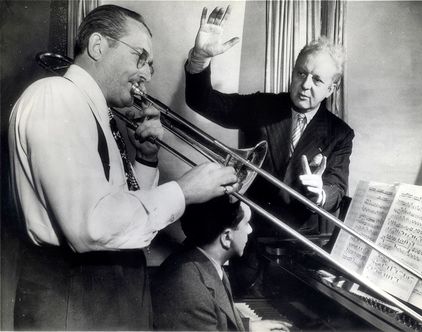
Tommy Dorsey, rehearsing under Leopold Stokowski.
Source: Albany Records CD (my rip!)
Formats: FLAC(RAR), DDD Stereo, mp3(320)
File Sizes: 266 MB / 143 MB (FLAC version includes cover & booklet)
The FLAC link has now expired. No more requests for this, please!
mp3 version – https://mega.co.nz/#!aswmDK4b!_utW7aJmLSMPFZMZ88MdEQ9Jst6kQ8oVU1Tdy9m VQvU
Enjoy! Don’t share! Buy the original! And please click on "Like" if you downloaded this CD. 🙂
Folk music and the very conscious application of aspects of folk music – tunes, gestures, sonorities — to serious
concert music, was all the rage during the early twentieth century. Hungary had its B???la Bart???k, the US their
Charlie Ives – and Norway had Geirr Tveitt (1908-1981): A composer, pianist, teacher, and folk music collector
who never earned anything like the fame awarded those other "folkish" composers but who has, in the years since
his death in 1981, been investigated by Norse music lovers and scholars with ever-increasing interest. Efforts to
paint a clear and accurate picture of the man’s life and work have proven difficult, however: A fire ravaged his
home in 1970, making ash of most of his compositions and folk music collections.
From 1932 to 1935 Tveitt took private lessons from Villa-Lobos and Honegger, he returned to Norway and
supported himself writing criticism in Oslo and teaching privately. In 1941, he was awarded a Norwegian
state pension and in 1942, he took up residence in the Tveitt family farm in Hardanger, devoting himself
mainly to composition and to the collection and transcription of the region’s folk music. Tveitt’s personal musical
style draws heavily on the folk music with which he was so familiar, as much or more so even than does Bart???k’s.
In 1937, he authored a theoretical treatise, Tonalit???tstheorie des parallelen teittonsystems (Theory of parallel
modal systems), seeking to support his own personal conclusion that the modal scale system (the so-called
church modes) employed to various degrees and in various ways throughout the history of Western music
are actually based on ancient Norwegian folk scales.
Music Composed by Geirr Tveitt
Played by the Royal Philharmonic Orchestra
With Turid Kniejski (harp)
Conducted by Per Dreier
Source: Simax CD (my rip!)
Formats: FLAC(RAR), DDD Stereo, mp3(320)
File Sizes: 274 MB / 171 MB (FLAC version includes covers)
The FLAC link has now expired. No more requests for this, please!
mp3 version – https://mega.co.nz/#!StRA0b6Z!HKfBNRUeERDOiJqz0BtyB1VoHp2OA0jabW3U–0Dezo
Enjoy! Don’t share! Buy the original! And please click on "Like" if you downloaded this CD. 🙂
Thanks for this contribution!
William Alwyn’s (1905-1985) concerto for harp and string orchestra, Lyra Angelica, comes from 1954.
Literature also provided the initial inspiration – in this case, the Metaphysical poetry of Giles Fletcher. As in the Fifh
Symphony, quotations head each movement, but in the concerto they seem more necessary, mainly because most
of the music itself is so low-key. The passionate mysticism of the Metaphysicals informs the work. This isn’t the
dramatic mysticism of Donne, but the inwardness of Herbert and Marvell. In four movements, the music is, in
Vaughan Williams’ phrase, "mostly slow." The scoring of solo harp against strings brings up affinities with the
English Pastoralism of thirty and even forty years before. A work like this needs a master rhetorician to hold a
listener’s interest, and Alwyn delivers. The music never bogs down. Alwyn knows how to keep things moving.
It is one of the most distinguished and most well-crafted works for harp and orchestra – in music history.
When asked shortly before he died which was his most beautiful composition, Alwyn replied without hesitation
"My Harp Concerto!".
Music Composed by William Alwyn
Played by the London Symphony Orchestra
With Rachel Masters (harp) & Nicholas Daniel (cor anglais)
Conducted by Richard Hickox
"Richard Hickox‘Autumn Legend (1954) is a highly atmospheric tone-poem, very Sibelian in feeling.
So too is the Pastoral Fantasia, yet the piece has its own developing individuality. A fine performance,
with Stephen Tees highly sympathetic to the music’s fluid poetic line. The Tragic Interlude is a powerful
lament for the dead of wars past. But the highlight of the disc is the Lyra Angelica. A radiantly beautiful,
extended piece (just over half an hour in length) inspired by the metaphysical poet Giles Fletcher’s
Christ’s victorie and triumph. The performance here is very moving, and the recording has great
richness of string tone and a delicately balanced harp texture. Rachel Masters’s contribution is
distinguished. This is the record to start with for those beginning to explore the music of this
highly rewarding composer.’"
Penguin Classical Guide
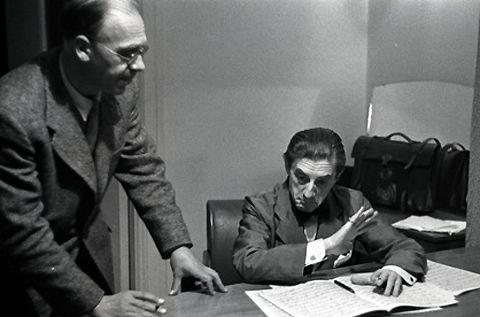
William Alwyn (left), with Sir John Barbirolli.
Source: Chandos Records CD (my rip!)
Formats: FLAC(RAR), DDD Stereo, mp3(320)
File Sizes: 264 MB / 147 MB (FLAC version includes cover & booklet)
The FLAC link has now expired. No more requests for this, please!
mp3 version – https://mega.co.nz/#!3sQn2BqR!PoP3aS1boY6jj1BBYEH05bPMCC5wIk_28knfiYV aJ0A
Enjoy! Don’t share! Buy the original! And please click on "Like" if you downloaded this CD. 🙂
Remembered today as the composer of the once enormously popular cantata Hiawatha’s Wedding Feast, the career
and music of Samuel Coleridge-Taylor (1875-1912, not to be confused with the Romantic poet Samuel Taylor-Coleridge!) are –
more, even, than Elgar’s — emblematic of the Edwardian era in its opulence and its squalor. The son of a Negro doctor from
Sierra Leone and an Englishwoman, he rose above the constrictions of class and race to become one of the most acclaimed
composers of his time. Musically precocious, Coleridge-Taylor’s talent was recognized early and supported by a series of
patrons who saw him through composition studies with Sir Charles Villiers Stanford at the Royal College of Music.
His first break came when Elgar suggested Coleridge-Taylor for a commission from the prestigious Three Choirs Festival
to be held at Gloucester in 1898. The performance there of his attractive orchestral Ballade in A minor proved a decisive hit
(you can find that work in my other thread, >here< (http://forums.ffshrine.org/f92/wimpel69s-could-film-music-classical-corner-work-121898/10.html#post2219369)). After the triumph of Hiawatha’s Wedding Feast, commissions and
invitations to conduct poured in, though small fees and the composer’s carelessness with money kept financial security
an elusive goal. In the final years of Coleridge-Taylor’s brief life, the spontaneity of his early music returned with a new
deftness in handling – an impassioned blitheness rife with happy invention. Samuel Coleridge-Taylor died of pneumonia,
exacerbated by chronic overwork.
Educated at Cambridge, Berlin’s Hochschule f???r Musik, and the Royal College of Music, Arthur Somervell (1863-1937) took
a teaching position at the RCM in 1894. He was later appointed inspector of music to the Board of Education, a position that was
to occupy much of his time and energy and perhaps detracted from his compositional career. In this capacity he worked to
establish music as a genuine subject in schools of all levels. Somervell never stopped composing, however, and wrote pieces
in almost every genre. He is most remembered for his choral compositions that were more accessible to average voices. His
Passion of Christ, a short oratorio, is an example of this type of writing. His most important work is to be found in
his five song cycles that set the work of Tennyson, Housman, and Browning, of which "Maud," a setting of poems by
Tennyson, is perhaps his masterpiece. Although his music was not adventurous, he was a fine craftsman of powerful works.
Music by Samuel Coleridge-Taylor & Arthur Somervell
Played by the BBC Scottish Symphony Orchestra
With Anthony Marwood (violin)
Conducted by Martyn Brabbins
"This fifth volume in Hyperion’s Romantic Violin Concerto series – already a distinctive and valuable
adornment to the catalogue – sits well with those that precede it: the works may not be of the front
rank, but the performances are persuasive enough to convince you that they might be, and merit a
place in the regular repertoire. Would that Hyperion’s crusading spirit were reflected by concert programmers.
Coleridge-Taylor’s concerto was the composer’s last major work and dedicated to the American Maud
Powell (she gave its first performance in 1912). It opens with a large-scale sonata movement, thematically
the weakest of the three and relying on rhetorical gestures and workaday ideas. By contrast, the slow
movement is one of the most lyrically beautiful of its kind, heralded by writing that hints at Ravel –
or rather Ravel as distilled by the George Melachrino Strings – and presages the gorgeous slow
movement of the Korngold Concerto. Towards its close, the catchy rondo finale makes reference
to both movements.
Arthur Somervell, best remembered for his setting of Housman’s A Shropshire Lad, wrote his concerto
(like Coleridge Taylor’s, in G major) in 1930 for Adila Fachira, the sister of violinist Jelly d’Aranyi
(both grand-nieces of Joachim). This is its first recording. Though, as Lewis Foreman’s excellent
booklet-notes observe, Somervell was ‘a product of a German musical aesthetic’, the concerto is
unmistakably English. Already, I am hugely fond of it, with its Elgarian-pastoral first movement
(the second subject reminiscent of Borowski’s once-famous violin piece Adoration), its central Adagio
which rivals Coleridge-Taylor’s in its expressive vision, and the heart-warming, open air bucolic
dance of the rondo finale.
If Andrew Marwood, Martyn Brabbins and the Scottish players learnt the works specially for this
recording, then they’ve utterly fooled me. Totally at one with the idiom, Marwood’s unflashy,
sweet-toned playing lends just the right note of enchantment and authenticity to these forgotten
scores. In short, this is Hyperion at its best."
Gramophone
Source: Hyperion Records CD (my rip!)
Formats: FLAC(RAR), DDD Stereo, mp3(320)
File Sizes: 301 MB / 149 MB (FLAC version includes cover & booklet)
The FLAC link has now expired. No more requests for this, please!
mp3 version – https://mega.co.nz/#!L8Zw2KqB!xKfc_oaeZHU-xBWN25vV-OUSm1_cPD0ph9y5_f97cNs
Enjoy! Don’t share! Buy the original! And please click on "Like" if you downloaded this CD. 🙂
Thanks!
In the title work of this album of recorder concertos commissioned by the eminent Danish virtuoso Michala Petri,
Moonchild’s Dream, by Thomas Koppel, the soloist both brings to life in pastel tone-shades the narrative portrait
of Koppel’s music. This is not a concerto in the classical vein of soloist-ensemble cut-and-thrust, but rather more similar
to a continuous Brittenesque soundscape. Performed as a single movement without any breaks to the flow of narrative,
there are no simple sections for the solo instrument – three of them (alto, soprano and sopranino recorder), to be precise.
Ms Petri, for example, makes the complicated phrases of flutter-tonguing much easier than it sounds, or engages in scalar
arpeggios and runs that are rarely heard on this instrument.
Vagn Holmboe’s Concerto for Recorder, String Orchestra, Celeste and Vibraphone is a more atheletic work.
Thoroughly modern and abstract, this is a three-movement work, each part of equal length. The lark-like figures of
the recorder in the last movement are sheer delight – there is even a passage where the soloist vocalizes through the
instrument. An artistic novelty, to be sure, but one that brings out the smiles.
Gary Kuelsha’s Concerto for Recorder continues in the same idiom, also in three parts. The first movement is
full of disquiet and remains unresolved, leading into the second movement which has a four-note motif sounding much
like a minor-key version of Rodgers’s "Some Enchanted Evening" (from South Pacific). Petri renders this thematic
material in the various figurations with a fittingly fretful character, against an empathic canvas of strings. Over
throbbing strings, the finale is a hectic resolution of sopranino with marimba (hitherto uncredited as well).
The Dance Suite for Soprano Recorder and Strings by Asger Lund Christiansen is the only work in
which the soloist is confined to a single instrument, a collection of five miniatures based on Danish folk tunes and
incorporating modern idioms. There are clearly touches of neo-baroque juxtaposed with dissonant harmonies
in this melting-pot of the old and the new. Petri is given the role of the eponymous dancer, with whirling rhythms
and energetic figures throughout the work.
Malcolm Arnold’s Recorder Concerto is the final and shortest work on this album, three movements lasting
a total of ten minutes. Of the five composers in this anthology, Arnold is also the most classically-inclined: there is
a clear differentiation of style from the four preceeding Danish composers. Experienced listeners will immediately
recognize Arnold’s unmistakable ebullient style; newcomers will get more than a hint of what it’s like. In the
musical dialogue – monologue, really, with the soloist chattering and the orchestra only providing the occasional
hemming and hawing – of the Lento, there are touches of musical wit and poetry. The arpeggios of the last
movement positively fizzle with Petri’s virtuosity.
Music by (see above)
Played by the English Chamber Orchestra
With Michala Petri (recorder)
Conducted by Okko Kamu
"Michala Petri commissioned all five of these concertante works, and she firmly plants her flag on new
territory with these recordings. Fellow Dane Vagn Holmboe wrote his concerto for Petri in 1974, when she
was still in her teens, Arnold’s concerto was completed in 1988, and the remaining three works were
written in the current decade. Everyone who deplores the state of contemporary classical composition
needs to hear this disc – he or she will be in for a change of heart.
"Heart" is something that this music has in abundance; there’s nothing cold or scientific about it. This is
due, in part, to the qualities of Miss Petri’s instrument itself: it twitters and chirps like a sparrow that
is hoarding a kernel of sadness within its breast. A sparrow is robust enough to ride the strongest breezes,
yet fragile enough to crush in one human hand, and that paradox is what makes Petri’s playing as
attractive as the sparrow’s flight. Thomas Koppel’s Moonchild’s Dream continues that paradox. The
composer imagined a waif-like girl in the slums of Copenhagen being turned, at least for a night, into
a fairy princess through her imagination. The music captures both the harshness of her reality and
the magic and fantasy of her transcendence. A friend of mine supplied a Dickensian image: butterflies
fluttering over and lighting on the bodies of dead soldiers.
The other works on this disc are less rhapsodic but no less enjoyable. The cool colors of the celesta
and the vibraphone take Holmboe’s concerto into a similarly nocturnal world, albeit one with more
exotic or even tropical tints. Holmboe is regarded as one of this century’s most excellent symphonists –
his Seventh Symphony is a gem – and this sixteen-minute concerto is equally worthwhile. Gary
Kulesha’s concerto also traffics in exotica; here, the inspiration was the Japanese shakuhachi flute
and the idiosyncratic performance techniques which it requires. Both Kulesha’s and Holmboe’s
concertos ask Petri to sing one melody into her instrument as her fingers play another one – quite a
feat, I imagine, and a beautiful effect. Asger Lund Christiansen’s Dance Suite is a charming collection
of miniatures – courtly thoughts inhabiting comptemporary bodies – and any concerto by Malcolm
Arnold comes with a guarantee that it will be winsome and witty and not one note longer than
it needs to be. The closing Vivace seems to ask the musical question, "What if Vivaldi had
written an Irish jig?" Diverting stuff.
Petri’s performances are definitive, and Okko Kamu, an under-rated conductor, leads the English
Chamber Orchestra in colorfaccompaniments. Sound quality is fine and has the flavor of the
studio rather than that of the concert hall. Don’t let bad memories of playing the recorder in
elementary school keep you away from this disc – it’s a beauty."
Classical Net
Source: RCA/BMG Red Seal CD (my rip!)
Formats: FLAC(RAR), DDD Stereo, mp3(320)
File Sizes: 306 MB / 177 MB
The FLAC link has now expired. No more requests for this, please!
mp3 version – https://mega.co.nz/#!qgoXUQ6S!MFhkKxeyRHCo_qdDgk3E8fZ7qjtTzHTsGr4yATF LQRc
Enjoy! Don’t share! Buy the original! And please click on "Like" if you downloaded this CD. 🙂
One of the greatest American symphonists, William Schuman established an orchestral
sound unmistakably his own. A master orchestrator, he could turn a simple tune (When Jesus
Wept from New England Triptych) into a symphonic statement of universal appeal. His
witty and imaginative orchestration of an early organ piece by Charles Ives, Variations on
America, is included in this collection in order to emphasize Schuman’s great gifts for orchestral
color. The ink in the score was not yet dry when Schuman attended my performances of it with
Stokowski’s American Symphony Orchestra at Carnegie Hall. I had great fun conducting it
then (I programmed it dozens of times at Stokowski’s Teenage Concert series, in the early
sixties), and enjoyed it even more recording it for the first time, with the Bournemouth
Symphony Orchestra. The Violin Concerto is a powerful work of great drama and intensity
that makes great demands on the soloist.
Music Composed by William Schuman
Played by the Bournemouth Symphony Orchestra
With Philippe Quint (violin)
Conducted by Jos??? Serebrier
"Schuman’s concerto is exceptionally well played by Philippe Quint. Jose Serebrier
leads the Bournemouth Symphony in crisply effective performances.
Jose Serebrier has been active as a conductor for many years, turning out
dozens of recordings. His accomplishments here, aided by the superb playing of
the Bournemouth Symphony, are extraordinary. Not only does his interpretive
conception of the Concerto reveal a masterful grasp of this challenging work,
but he lends to the Triptych and the Variations a rhythmic elasticity and other
nuances of style that add richness and flair to music that is often simply
driven hard and fast. In conclusion, therefore, I assure those who might
be moved to invest in this CD that these performances real surpass the
competition. Perhaps this factor, along with the budget price, will persuade
listeners to make an exception here."
Fanfare
Source: Naxos CD (my rip!)
Formats: FLAC(RAR), DDD Stereo, mp3(320)
File Sizes: 224 MB / 122 MB (incl. cover & booklet)
The FLAC link has now expired. No more requests for this, please!
mp3 version – https://mega.co.nz/#!bpxiCBob!8EgOhYmacplpIzpCr0lVwZWW6-8rKAraMgclVPLhbik
Enjoy! Don’t share! Buy the original! And please click on "Like" if you downloaded this CD. 🙂
Donald Tovey (1875–1940) has long been known as one of the finest writers on music in English –
but he saw himself primarily as a composer. His Cello Concerto – written for his friend Pablo Casals in 1932–33
– may be the longest in history; indeed, as he worked on the score he wrote to a friend that the first movement
would be a ‘record-breaker’ and ‘much the juiciest’ music he had yet produced. The work sits mid-way between
Brahms and Elgar, but has a lyrical and dignified voice that is uniquely Tovey’s. The contrasting tone of the dark,
heroic Elegiac Variations was inspired by the death of Robert Hausmann, cellist of the Joachim Quartet and
a cherished chamber-music partner of Tovey’s. And the charming Air for Strings reveals his delight in a
well-turned Classical theme.
Music Composed by Sir Donald Tovey
Played by the Ulster Orchestra
With Alice Neary (cello)
And Gretel Dowdeswell (piano)
Conducted by George Vass
"Let’s now turn to this fine new recording of the Tovey Cello Concerto. The 25 minute Allegro moderato
first movement features much fond and affectionately rounded writing. In the broadest terms this is redolent
of Brahms in the Third Symphony and the Double Concerto. There are other transient echoes as well.
These include Elgar and in the kindly contours of the solo part the luminous First Cello Concerto of Hans
Pfitzner; I do wish that Rohan de Saram’s 1970s studio broadcast of the Pfitzner could be issued
commercially. This is heart-warming writing with craggily defiant heroics to match at 7:45 and 11:20.
The Andante Maestoso is an anxiety-racked testament which at 4:02 recalls the Brahms Fourth Symphony.
The invocation if not the achievement of peace of mind returns with the Intermezzo third movement the
character of which harks back to the amiable opening of the work. Then comes the allegro giocoso finale.
In its mood this can be seen as a precursor to the Finzi Cello Concerto which across its three movements
has a similar character layout to Tovey’s four; not that the language is related! It is however playful
in a rustic manner as at 5:30. The Ulster horns play it large, as they say, and have many moments of
magnificence. The last few bars make for an inventive and unconventional end with a satisfying mixed
stutter of legato, pizzicato, quiet and loud. All in all this struck me as the sort of work that Furtw???ngler
would have loved if only he had discovered it. The warm recording is cogently balanced with space
to render many subtle, quiet and soloistic passages.
The brief Air for string is arranged by Peter Shore and recalls the opening bars of the concerto. The
stormily Brahmsian rhetoric of the Elegiac Variations is memorable. The work was written in memory
of the cellist Robert Hausmann of the Joachim Quartet. It had been Hausmann who with Joachim had
premiered Brahms Double Concerto. Hausmann played alongside Tovey on many occasions and the
two artists had a glowing and affectionate respect for each other.
Alice Neary makes every note tell in both cello works and each is played as if it urgently mattered –
which it does. She clearly relishes the scattering of pizzicato passages throughout the first
movement and the engineering team is with her."
Musicweb [Recording fo the Month]
Source: Toccata Classics CD (my rip!)
Formats: FLAC(RAR), DDD Stereo, mp3(320)
File Sizes: 271 MB / 164 MB (FLAC version incl. cover & booklet)
The FLAC link has now expired. No more requests for this, please!
mp3 version – https://mega.co.nz/#!GkA1QKSK!ah727MMkRzSvoKwRYCaKuQwJixyCl5vEYGpcfA-7ES4
Enjoy! Don’t share! Buy the original! And please click on "Like" if you downloaded this CD. 🙂
———- Post added at 11:39 AM ———- Previous post was at 11:01 AM ———-
FLAC links for Nos. 150-161 have now EXPIRED. Requests for those links will no longer get an answer.
Please use the mp3 links instead.
The erhu is by far the most popular of the traditional Chinese "bowed" string instruments,
and there are lots and lots of arrangements of folk songs and other "ancient" music for this
"Chinese violin" (although it’s played like a cello and sounds like an emotionally wounded viola).
Also, many contemporary composers have been contributing larger-scale concertante works
in recent years. Zhou Cheng-Long’s "Legend of the Kelaxin Grassland" and
Zhang Xiao-Feng’s "Parting of the Newly Weds" (co-composed
by Zhu Xiao-Gu) are two such, more elaborate works. Also featured on this album
are four arrangements of pre-existing material, including two Beijing opera tunes arranged
for solo erhu and Chinese orchestra.
Music by Zhang Xiao-Feng & Zhu Xiao-Gu
Played by the Shanghai Chinese Orchestra
With Min Hui-Fen (erhu)
Conducted by Xia Fei-Yun
"Min Huifen is a famous Chinese Erhu performing artist. She began learning Erhu from her
father at the age of 8. After graduating from Shanghai Conservatory of Music in 1969, Min
Huifen joined China National Art Troupe and later Shanghai Art Troupe as a solo Erhu performer.
She has been with Shanghai Chinese Music Orchestra since 1978. Min Huifen won the First
Prize at the National Erhu Playing Competition in 1963, the Shanghai Literature and Art Award
in 1988 and the first National Gold Record Award in 1989. Min Huifen performs extensively
both in China and abroad. Min Huifen has released 15 albums featuring her Erhu performance.
Min Huifen is known for her exuberant performance. Her performance features a unique blend
of many genres of traditional Chinese music, such as Beijing Opera, Shaoxing Opera, and
Chaozhou music. Min Huifen is also a prolific composer. She has written many hit singles,
like "Yangguan Pass Melody – Three Variations," and Wishes of the People of Honghu Lake."
Source: Hugo Records CD (my rip!)
Formats: FLAC(RAR), DDD Stereo, mp3(320)
File Sizes: 353 MB / 149 MB (FLAC version incl. artwork & booklet)
The FLAC link has now expired. No more requests for this, please!
mp3 version – https://mega.co.nz/#!D9gj1IBJ!oo42d7RZu48fSGOCgKmrdzLQiLI-Bk5ol1w85-65lX4
Enjoy! Don’t share! Buy the original! And please click on "Like" if you downloaded this CD. 🙂
———- Post added at 01:05 PM ———- Previous post was at 12:56 PM ———-
Thank you… Hope Cameo records Kenneth Leighton’s other concertos as well
A quartet of works for string orchestra by a trio of composers best known for their film scores. Franz Waxman adds a solo timpani
part to his orchestra of strings for the Sinfonietta. On his trip back across the Atlantic from scoring the biblical epic Quo Vadis?,
Mikl???s R???zsa felt compelled to write music that was much more intimate – out of that grew his String Quartet No.1 – an on the
present disc we can hear an arrangement for of the slow movement for strings, prepared exclusively for this recording. Of course, the
real point-of-interest is his Concerto for String Orchestra, one of R???zsa’s most powerful works. Before Bernard Herrmann opted
for a career in Hollywood, he was entangled in a cycle around Aaron Copland of contemporary American composers. During that time he
wrote the Sinfonietta for Strings, parts of which came in handy when he scored Hitchcock’s Psycho 25 years later.
Music by Bernard Herrmann, Mikl???s R???zsa & Franz Waxman
Played by the Berliner Sinfonie-Orchester
Conducted by Isaiah Jackson
"I’m not sure how much I would like Bernard Herrmann’s Sinfonietta for String Orchestra, composed in 1936 and
revised in 1975, were I not such a fan of his film music in general and his Hitchcock scores in particular. But
substantial portions of Herrmann’s strings-only music for Hitchcock’s 1960 Psycho turn up in his 1936
Sinfonietta for Strings, not only in the “Interlude“ (the fourth of this strange work’s five movements), which
was lifted all but wholesale for the “Swamp“ cue in Psycho, but at various points in most of the work’s other
movements as well. One can only wonder, then, what sorts of eerie things were going on in the composer’s
soul in 1936 while also marveling at how music composed with no apparent dramatic reference could have
merged to such perfection with the affective demands of a movie made twenty-four years later. Relentlessly
non-tonal, with some obvious obeisances to Schoenberg and perhaps, in the Theme and Variations finale, even
to Webern, the Sinfonietta stands quite apart from almost everything else Herrmann ever wrote, film music
and otherwise, and it forms a fascinating facet of the composer’s overall vision. Indeed, the musical stasis
that pervades most of the sinfonietta works to this work’s advantage, which is not the case with the composer’s
opera, Wuthering Heights (see review this issue). Those who are concerned that the version of the sinfonietta
offered here is the 1975 revision need not fret unduly. The first three movements remain virtually identical
to the original, while the fourth has been altered to conform with the cue from Psycho, which is not all that
different. And to the finale, Herrmann added a dozen or so bars, which heighten that movement’s dramatic
impact. Personally, I would have preferred the original version as published by the New Music Orchestra
Series. But this is nonetheless a major find.
I have always been a sucker for Mikl???s R???zsa’s concert music, and his 1943 Concerto for String Orchestra
remains one of my favorite manifestations of this facet of the composer’s “double life.“ Dark and moody,
and written during a period when R???zsa penned many of his film noir film scores, the Concerto for String
Orchestra could certainly be classified as “musique noire.“ But, unlike Herrmann, for instance, R???zsa is
able to expand the more compactly expressed drama of his film scores into the broader fabric of concert
works by incorporating that drama into musically sophisticated, often neo-classical forms and styles.
The concerto is richly contrapuntal, and it features, in the last of its three movements, an exceptionally
well-developed and exciting fugue in which the opening theme from the first movement ultimately
joins contrapuntally with the fugue theme. R???zsa’s autobiography lists a revision, dating from 1957,
of the Concerto for String Orchestra. Having not had access to the score, I am not sure which version
is offered here. The Andante for String Orchestra is a reworking, done by Christopher Palmer under
the composer’s supervision, of the first movement of his string quartet. A more placid work somewhat
in the vein of the second movement of R???zsa’s piano sonata, the Andante lacks the noir intensity
of the concerto.
Franz Waxman’s 1955 Sinfonietta for String Orchestra and Timpani opens with a deceptively cheerful
theme that belies the serioso nature of much of this work’s writing. Indeed, with its obsessive timpani
beat dominating most of the music, the second movement very much evokes the composer’s
celebrated film score for The Bride of Frankenstein. Like R???zsa’s, Waxman’s concert writing shows
a sophisticated transition from the needs of film music to the demands of the concert hall. Where
R???zsa moves more in the orbit of Hindemith and Bart???k, Waxman traces a parallel line with Dmitri
Shostakovich. While his sinfonietta does not reveal the immediately recognizable style one hears in
the R???zsa work, and while it does not offer the kinds of insights into a major film score that one
finds in the Herrmann sinfonietta, its moods, craftsmanship, and energy prove quite infectious."
Royal S. Brown, Fanfare
Source: Koch International CD (my rip!)
Formats: FLAC(RAR), DDD Stereo, mp3(320)
File Sizes: 296 MB / 148 MB (FLAC version incl. covers & booklet)
The FLAC link has now expired. No more requests for this, please!
mp3 version – https://mega.co.nz/#!yppCjIqT!Fi2iBbMmtoCws8HrHhmEI-WTHHTJF0ij3PoLqYenVzc
Enjoy! Don’t share! Buy the original! And please click on "Like" if you downloaded this CD. 🙂
No.52
Violists need not complain that there’s not enough music for their instrument: Two large-scale,
substantial concertos are featured on this album, one from the British composer Stanley Bate,
the other by William Henry Bell, who – despite being born in Britain – later emigrated
to South Africa. Both are cast in an attractive late/neo-romantic idiom and are a pleasure to
listen to. Neither has been heard since its premiere.
Stanley Bate (1911-1959), the liner notes tell us, was a pupil of Vaughan Williams’. They needn’t
have told us, since from the very first bars of the 1946 Concerto for Viola and Orchestra it
is overwhelmingly obvious whose style Bate is adopting. That’s not entirely a bad thing, since the
piece itself is beautifully crafted and every lover of the older British composer (or Walton) should
lap it up. It’s a wonderful piece – it just doesn’t have RVW’s name-tag on it. Bate’s career stalled
in the 1950s, which eventually drove him to suicide by the end of the decade.
Thirty years earlier, in 1916, William Henry Bell’s Rosa Mystica (Concerto for Viola and Orchestra)
was premiered in Cape Town. It, too, is infused with the spirit of English music, if a bit more
conservative than Bate’s piece. Lyrical and tumultuous episodes alternate, and the concerto is really
very entertaining and beautifully orchestrated. Both works receive splendid performances by
Roger Chase and the BBC Concert Orchestra under Stephen Bell (no relation).
Music by Stanley Bate, William Henry Bell & Ralph Vaughan Williams
Played by the BBC Concert Orchestra
With Roger Chase (viola)
Conducted by Stephen Bell
"Dutton has done it again! With this totally unexpected disc, they have unearthed and, one hopes, revived
the visibility of one of the most shamefully neglected 20th-century English composers, Stanley Bate (1911???1958).
And, with his Viola Concerto, written in the closing years of World War II (1944???46), they are representing
him at the peak of his powers. This writer never thought he would live to see the day when Bate???s music
would be making its recording debut. I heard a BBC air-check of Bate???s Third of his four symphonies in a
wonderful reading conducted by Adrian Boult, and its scale and sweep make it equally worthy of revival.
There are also several concertos for piano and violin; it is amazing how much valuable music Bate was able
to produce within his tragically short life.
This wide-spanned, four-movement Concerto, clocking in at just under 40 minutes, comes close to being a
sinfonia concertante, though the soloist is seldom out of the spotlight. Bate received impeccable training,
first with his beloved master Vaughan Williams, followed by stints with Boulanger in Paris and Hindemith in
Berlin; and, as the result of his peripatetic life style (Australia in the 1930s, New York during the war years,
then back to England for his final decade), his essentially very British idiom was stimulated and invigorated
by an international neo-Classicism nurturing a hardy romantic spirit.
Although the principal note struck by this concerto, premiered by Emmauel Vardi with the NBC Symphony,
is one of grieving lyricism, this elegiac content (except for a very brief Scherzo which seems to belong in
another piece) is enclosed in an almost triumphantly epic framework. From the opening measure as the
viola outlines its deeply expressive and modality-flavored motto theme, we sense we are embarking on a
musical journey of great warmth and weight. The solo instrument, with the orchestra???s steady underlying
support and emphasis, practically never ceases to unspool its sad soliloquy. Perhaps the war???s toll played
a part in Bate???s creative impetus. This is a viola concerto that can stand comparison with the great Walton
and Rubbra counterparts.
Sharing this program with the Bate is an impressive viola concerto by another forgotten Englishman of an
earlier generation, William Henry Bell (1873???1946). In 1912, when he seemed to be on the verge of
reaping the rewards of a growing reputation in his own country, Bell made the fateful decision to
accept a post as director of a college of music in South Africa. Like Edgar Bainton and Eric Chisholm,
after this self-removal from the central currents of English music, Bell was quickly eclipsed. But it was
in this far-flung place that he became well known for establishing a native musical tradition as
conductor, composer, and educator.
This concerto, enigmatically subtitled ???Rosa mistica,??? and thus bearing an indeterminate spiritual
or even autobiographical significance, was one of Bell???s first compositions completed in his new home.
But, contrary to the opinion expressed in the annotation by the estimable Lewis Foreman, I found
the work intelligent and agreeable enough but lacking in any real individuality. A better example of
Bell???s maturity can be heard on an early marco polo CD of his ???South African??? Symphony of the 1920s
(one of five), where his gifts as an evocative orchestrator are much more prominent. Otherwise,
this concerto is a rather typical product of its time and place???turn-of-the-century, post-Elgarian
British music of a conservative bent, similar to but not as inspired as early John Ireland or Frank Bridge.
Also on this disc is a brief, unpublished, but lovely little Vaughan Williams piece, a Romance of uncertain
date, but probably written in the 1920s or 1930s as an encore for the great violist Lionel Tertis.
Soloist Roger Chase has carefully orchestrated it in a deft and delicate manner.
Chase and Stephen Bell, conducting the thoroughly experienced BBC Concert Orchestra, present all
three works with a sense of impassioned advocacy. But it is the Bate Concerto that makes this an
extraordinary and unmissable release."
Fanfare
Source: Dutton Epoch CD (my rip!)
Formats: FLAC, DDD Stereo, mp3(320)
File Sizes: 308 MB / 170 MB
Download Link: https://mega.co.nz/#!LloVUDAI!JWjN5xbrCq6jenO7tVFpzHvzILBOnFYdtvJsmLb e5Eo
mp3 version – https://mega.co.nz/#!Wx5nnTgJ!dIMPUGj2JZufWS5Ywgg9Kl6a62wPOmbp1C02oJf sA8M
Enjoy! Don’t share! Buy the original! 🙂
Vivian Fung was born in Edmonton, Canada, in 1975 and received her doctorate from The Juilliard School.
Fung has developed a unique compositional voice, often merging Western forms with non-Western influences.
She has received commissions from Fulcrum Point New Music Project, the Shanghai Quartet, Seattle Symphony,
Music From China, the San Jos??? Chamber Orchestra, and the Suwon Chorale, and her music has been performed
by ensembles throughout the US, Canada, Europe, and Asia. She is the recipient of a 2012 Guggenheim Fellowship.
She lives in New York City.
Fung’s work is influenced by Asian sources such as Balinese gamelan music. Violin Concerto soloist
Kristin Lee’s shared experience of Bali with the composer resulted in an intensely lyrical and virtuoso work
in which West and East collide to create music of remarkably fresh sophistication. Fung draws on John Cage’s
‘prepared’ piano techniques to create often eerie and otherworldly effects in Glimpses, ideas from which
expand into the Piano Concerto. Subtitled ‘Dreamscapes’, this work explores contrasts ranging from hauntingly
sustained calm to moments of brutal power.
Music Composed by Vivian Fung
Played by the Metropolis Ensemble
With Kristin Lee (violin) & Conor Hanick (piano)
Conducted by Andrew Cyr
"The Violin Concerto is particularly striking. There is an exotic, wispy and ephemeral quality to the writing
in between some propulsive moments that I found quite appealing. It is a very nice piece, existing in a
single movement, and soloist Kristin Lee plays quite well indeed. Fung’s work for prepared piano,
Glimpses, is…another very interesting work…a good one! The Piano Concerto, “Dreamscapes” is…
the strongest work in this collection and completely fascinating. Soloist Conor Hanick in both the
Concerto and Glimpses does a great job!
The Metropolis Ensemble of New York and conductor Andrew Cyr are important up and coming
contributors to the new music scene. I had never heard of Vivian Fung before but I am anxious to
hear more. The fact that she is…a very creative and skilled composer is all I need to recommend
this without hesitation."
The Audiophile Audition
Source: Naxos CD (my rip!)
Formats: FLAC, DDD Stereo, mp3(320)
File Sizes: 221 MB / 130 MB (FLAC version includes covers & booklet)
The FLAC link has now expired. No more requests for this, please!
mp3 version – https://mega.co.nz/#!awBzGAjQ!1UtfKO3j09Yq0PaW1Hb2Q47Wp5EQhO7j8EjZxL6 xkR8
Enjoy! Don’t share! Buy the original! 🙂
Dexter Morrill (*1938) was born in North Adams, Massachusetts. At the age of eight he began
trumpet lessons with Peter Fogg and later studied with Irwin Shainman at Williams College. He entered
Colgate University in 1956 and studied composition with William Skelton, and attended the first Lenox
School of Jazz in 1957, having trumpet lessons with Dizzy Gillespie and arranging with William Russo.
In 1960 Morrill began graduate studies at Stanford University and studied composition with Leonard
Ratner and orchestration with Leland Smith. During 1962–4 he was a Ford Foundation Young Composer
Fellow in University City, Missouri, and later taught at St John’s University in New York, which
commissioned his Three Lyric Pieces for Violin, premi???red by Ruggiero Ricci at Lincoln Center
in 1969. Morrill studied composition with Robert Palmer in the late 1960s at Cornell, and wrote his
dissertation on Darius Milhaud’s early polytonal music. He has received several composition grants
from the New York State Arts Council and the National Endowment for the Arts. He has also worked
on special jazz projects for Stan Getz and Wynton Marsalis, and is the author of "A Guide to the
Big Band Recordings of Woody Herman", published by the Greenwood Press.
Music Composed by Dexter Morrill
Played by the Northern Illinois Philharmonic Orchestra
With Steve Duke (saxophone) & John Mindeman (trombone)
And Mark Ponzo (cornet)
Conducted by Steve Squires & Brian Groner
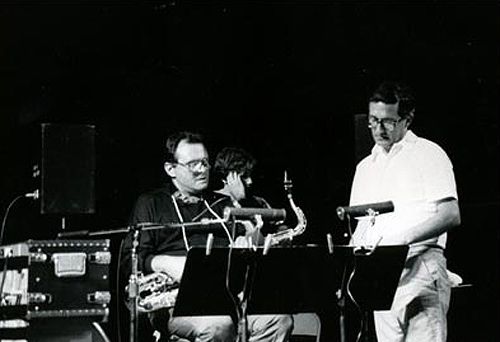
Dexter Morrill (right) with Stan Getz.
Source: Centaur Records CD (my rip!)
Formats: FLAC, DDD Stereo, mp3(320)
File Sizes: 232 MB / 149 MB
The FLAC link has now expired. No more requests for this, please!
mp3 version – https://mega.co.nz/#!a9Z2CayR!Lh7R4hrk7kAXxQpUzmO4DQNktVw6sdZSmo9794x p4Qs
Enjoy! Don’t share! Buy the original! And please click on "Like" if you enjoyed this upload! 🙂
Though less well known than his contemporaries Ravel and Debussy, Albert Roussel (1869-1937) is nevertheless
regarded as one of the most important figures in early twentieth century French music. Roussel’s music reflects his efforts
to explore new possibilities of expression while remaining faithful to traditional musical ideas; evident in his chamber
music and works for the stage, this tension between traditionalism and experimentation is particularly successful in
his symphonies. During the 1920s, Roussel struggled to balance an increasing structural complexity with emotional
expressiveness in his works. His Second Symphony, completed in 1921, exemplifies this tension; in Roussel’s
subsequent works, the listener can also detect elements of neo-Classicism.
In 1922, Roussel settled in Vasterival, in the coast of Normandy. Despite increasingly frail health, he devoted much
of his energy to composing; he completed the Piano Concerto in 1927. His increasing public esteem is
evidenced by a festival entirely devoted to his works in Paris (1927) as well as a commission from the Boston
Symphony Orchestra for that organization’s 50th anniversary (Third Symphony, 1930); Roussel traveled to the
United States for the performance.
Music Composed by Albert Roussel
Played by the Orchestre de Paris
With Danielle Laval (piano) & Albert T???tard (cello)
Conducted by Jean-Pierre Jacquillat
"Danielle Laval is a French concert pianist. She has performed the concertos of Saint-Sa???ns,
Beethoven, Mozart, Mendelssohn, Liszt, and Chopin, also the rarer opus of Grieg and
Rachmaninov. Her repertoire is eclectic and she has made records of film composers
such as Miklos Rozsa, Nino Rota, Andr??? Hossein, Bernard Hermann and Michel Legrand…"
"Jean-Pierre Jacquillat (13 July 1935 – 6 August 1986) was a French conductor. Jacquillat
was born in Versailles in 1935. He was named assistant to Charles Munch at the Orchestre
de Paris in 1967. He was chief conductor of the Icelandic Symphony Orchestra. He made a
number of recordings, with that orchestra, the Orchestre de Paris, and others. His career
was cut short when he died in a car accident in 1986, aged 51."
Source: EMI France CD (my rip!)
Formats: FLAC, ADD Stereo, mp3(320)
File Sizes: 255 MB / 127 MB
The FLAC link has now expired. No more requests for this, please!
mp3 version – https://mega.co.nz/#!vx5GnKjR!PugwQsSRPmAmXOByIc19eK4dPkfpeHBLpw_LUjr GM-4
Enjoy! Don’t share! Buy the original! And please click on "Like" if you enjoyed this upload! 🙂
———- Post added at 03:03 PM ———- Previous post was at 03:00 PM ———-
In the countdown to upload No.200 of this thread, I am going to focus on ten cornerstones
of the concerto repertoire, so called "warhorses". For each work I will be posting what I consider a particulary
interesting or "benchmark" recording – or a couple of recordings that illuminate different approaches
to / aspects of said well-known concerto.
I. Samuel Barber: Violin Concerto (1939)
No.191
The work:
Given the lush, lyrical, Romantic propensities of Samuel Barber’s music, it should come as no
surprise that the composer achieved great success in that most Romantic of genres, the solo instrumental
concerto. Indeed, Barber wrote a concerto for each of the "Big Three" concerto instruments: piano, violin,
and cello, producing a trio of works that have earned a secure place in the standard repertoire. With an
extensive timbral palette and the opportunity for virtuosic display at his disposal, Barber made full use
of the concerto’s possibilities, from exquisitely colored, tender lyricism to splashy, breathless pyrotechnics.
Excepting a now-lost piano concerto the composer wrote at the age of 20, the Violin Concerto was
Barber’s first essay in the genre. The story of its creation — including meddling and outright rejection by
those involved in the commissioning — and its delayed premiere was misrepresented for decades after the
publication of Nathan Broder’s biography of Barber in 1954. Soap tycoon Samuel Fels offered a substantial
fee to Barber to write a work for the young Russian-born violinist Iso Briselli. What happened after
Barber delivered the first two movements to Briselli was clarified in the early 21st century when letters
from all parties were compared together. After seeing those movements, Briselli hoped for something
a little more substantial for the finale. Barber complied, producing a brief moto perpetuo of under four
minutes’ duration, less than half as long as either of the other movements. The violinist felt the movement
simply did not fit with the other two, not that it was too difficult or unplayable as the story had been told.
There were never any hard feelings between the men. Briselli relinquished his rights to premiere the work,
and Fels allowed Barber to keep the portion of the commission he had already been paid. The work was
successfully premiered on February 7, 1941, by Albert Spalding and the Philadelphia Orchestra
conducted by Eugene Ormandy.
Although the concerto’s Allegro is marked by a predominantly lyrical, even vernal, quality, the movement
is hardly free of the conflict and high drama typifying the concerto tradition. The flowing, organic
material that opens the movement is contrasted by a short, distinctive iambic rhythmic figure that
recurs in various guises throughout. The characteristically lyrical Andante, which, like so many of
Barber’s slow movements, possesses a melancholic, elegiac quality, is tinged with a certain mercurial
moodiness. The final perpetual-motion Presto is a breathless, nonstop whirlwind that races by in a
steady, virtually uninterrupted rhythmic flow illuminated by brilliant flashes of color.
The recordings:
Barber’s Violin Concerto has already been featured several times throughout this thread, in recordings
by Andr???s Card???nes (the opening post!), Louis Kaufman and even Gil Shaham. Although these
are all very distinguished performances, I do not consider them benchmarks in this oft-recorded piece.
There were other reasons to post those recordings: The only existing arrangement of Copland’s Violin
Sonata into a concerto (Card???nes), the lesser-known concertos of Larsson and Vaughan Williams
(Kaufman) and the tremendous collection of 1930s violin concertos in the Shaham upload. What then
differentiates the earlier Gil Shaham version (with the London Symphony under Andr??? Previn)
of 1994 from the 2012 recording uploaded as part of the 1930s concertos collection? In the years between
Shaham’s first and second takes on Barber’s concerto, his tone has become leaner, more sinewy, his
interpretation less supple and opulent. It is that opulence of tone and the smoothness of the execution
that distinguishes Shaham’s 1994 effort. Of all the Barber VC versions this is the most luxuriant, the
most silken, the most Cinemascope-ish, if you will. It has remained my favorite over the years.
It goes without saying that Shaham is equally superb in the Korngold Violin Concerto, which itself
is fast becoming a mainstay of all famous violinists’ repertoire.
In sharp contrast, Hilary Hahn delivers a reading that is intimate, almost meditative. It is
not lacking in energy, but its lucid, chamber-like "feingeist" and the equally lean, translucent colors
of the orchestral accompaniment (Hugh Wolff and the Saint Paul Chamber Orchestra)
radically differ from Shaham/Pervin’s version. Both are equally worthy.
Music Composed by
Samuel Barber
Gil Shaham (violin)
The London Symphony Orchestra
Andr??? Previn (conductor)
Hilary Hahn (violin)
The Saint Paul Chamber Orchestra
Hugh Wolff (conductor)
Sources: Deutsche Grammophon & Sony Classical CDs (my rips!)
Formats: FLAC, DDD Stereo, mp3(320)
The FLAC link has now expired. No more requests for this, please!
mp3 version (Shaham) – https://mega.co.nz/#!nghBVCgR!5sp_xONjajDLfqVm8sOIeVlGDiVq__OCMkEjf8C bSyM
mp3 version (Hahn) – https://mega.co.nz/#!f1BFxQKI!6Nx2kjwTtUNWtezED85eqEEnkqAwPnz2A5ltZno dIdo
Enjoy! Don’t share! Buy the original! And please click on "Like" if you enjoyed this upload! 🙂
Oh dear, trotting out the old warhorses, when there’s so many spry little colts to be found? Just remember, every umpteenth recording of Beethoven’s VC is an orchestra that could have just as easily played Garry Schyman’s thus far unplayed viola concerto, or any other deserving contemporary piece. There’s room for both, of course, but hopefully you won’t neglect the relatively unknown composers you’ve so effectively managed to introduce in this thread.
II. Dmitri Shostakovich: Piano Concerto No.1 (1933)
No.192
The work:
Shostakovich himself was the soloist at the premiere of this concerto, also known as Concerto for Piano,
Trumpet and Strings because of the prominent part for the trumpet. At the premiere, Shostakovich had the
trumpet player sit next to the piano instead of with the rest of the orchestra, which is usually done in modern
performances too. The concerto was premiered in 1933, before Shostakovich’s first official government censure.
The concerto is in 4 movements:
I.Allegretto – The piano and orchestra toss out the themes in this movement while the trumpet comments
on them. The mood of the movement changes quickly. This is some of Shostakovich’s most sarcastic, witty
and pithy music and it is reminiscent of the spontaneity of the first symphony. The movement ends with
a dialogue with piano and trumpet.
II.Lento – This movement opens with a slow waltz-like melody. The piano enters, and expands the waltz
into a passionate outburst from the piano and orchestra. After the climax fades, the strings re-enter
gently, with the trumpet playing the waltz theme (with none of the sarcasm of the first movement) over
the accompaniment of the orchestra. The piano and orchestra combine for a heart-felt, gentle close
to the movement.
III.Moderato – This movement is less than 2 minutes long, and is generally thought to act as an
introduction to the final movement. It is played with weight and depth of tone by the strings, but
the piano shines through the quasi-seriousness and the music segues into the finale…
IV.Allegro con brio – The tempo increases, the piano chatters away. In this movement the trumpet
becomes more prominent, almost on a par with the piano. The music becomes manic in tempo and
intensity. Shostakovich was fond of quoting motifs from his and other composers music. This
movement makes reference to Haydn, Mahler, a Jewish folk song, and others. The cadenza for solo
piano is derived from Beethoven’s Rage Over A Lost Penny for piano solo. The music gets more and
more animated, until the trumpet plays a repeated figure while the piano and orchestra pound out
chords. The entire ensemble joins together to bring the music to a rousing finish.
Shostakovich was in his late 20’s when he wrote this concerto. His music was everywhere, his
fame and popularity assured. In this period of relative freedom to do what he pleased, he
composed a concerto that wavers from giddy to serious, music that toys with the listener. After
the fiasco instigated by his opera of 1936 Lady Macbeth of the Mtsensk District, Shostakovich’s
life would change, along with his music to a certain degree. But all that was to come. For the
moment, Shostakovich wrote a concerto that thumbed its nose at tradition.
The recordings:
Interpretations of this light-hearted, often sarcastic concerto do not differ as wildly as those
of other well-established concertante works, a testament to the composer’s control over the
modes of expression and emotions in this piece. The two "modern" recordings uploaded here
are highly regarded and differ only in that Marc-Andr??? Hamelin’s version is a bit more elegant,
while Ronald Br???utigam’s reading offers more in dry wit and sarcasm – which works
particularly well in connection with the other pieces on this "Jazz" album conducted by
Riccardo Chailly. It is highly debatable whether Shostakovich in fact ever wrote any
Jazz music, the term "Suites for Theatre Orchestra" seems much more appropriate for the
salon music items offered here. Like Hamelin, Dmitri Shostakovich couples the Concerto No.1
with its successor, written year’s later for his son Maxim. The latter work doesn’t have the same
level of sharpness and wit, but it’s a delightful, easy-going piece nonetheless. Shostakovich recorded
his version at a time when he no longer commanded the same piano technique that he had done
in his younger years, so there are a few small gaffes in his playing. But he was a professional
pianist, and a composer’s own version is always, to some extent, "definitive".
Music Composed by
Dmitri Shostakovich
Ronald Br???utigam (piano)
Royal Concertgebouw Orchestra
Riccardo Chailly (conductor)
Marc-Andr??? Hamelin (piano)
BBC Scottish Symphony Orchestra
Andrew Litton (conductor)
Dmitri Shostakovich (piano)
Orchestre National de l’O.R.T.F.
Andr??? Cluytens (conductor)
Sources: Decca, Hyperion & EMI CDs (my rips!)
Formats: FLAC, DDD Stereo & ADD Mono, mp3(320)
The FLAC link has now expired. No more requests for this, please!
mp3 version (Br???utigam) – https://mega.co.nz/#!GgB3zZLJ!6ljxfDeFTurH33FH-pJVkAKfBE1QOrUBp_ZstoK7BrU
mp3 version (Hamelin) – https://mega.co.nz/#!TlpWzLbb!3DCkZbcY4uWqz1f-Cl1fUa1KXYuquuymp12ZP1wbyaU
mp3 version (Shostakovich) – https://mega.co.nz/#!PgQnmbrY!bdtSLWum0zbwa-9KmZsLkh3txP1yW581YszaCuqc2wE
Enjoy! Don’t share! Buy the original! And please click on "Like" if you enjoyed this upload! 🙂
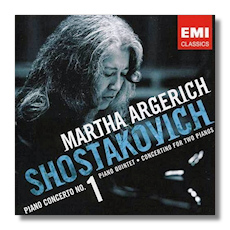 , my first CD with both concertos was on EMI
, my first CD with both concertos was on EMI , Hamelin is a phenomenon, great for both concertos. Composers own recordings i knew only on LP, mono is not my cup of tea…
, Hamelin is a phenomenon, great for both concertos. Composers own recordings i knew only on LP, mono is not my cup of tea…She came to our town, played very badly (Schumann PC), didn’t give an encore and demonstrably behaved like she didn’t give a shit (she came only because Dennis Russell Davies was our conductor and had the necessary connections). Evidently she thought that neither our orchestra nor the audience deserved a better performance.
Bitch! 😉
Argerich is not everyone’ cup of tea but her reputation as a speed freak is overblown. Majority of her recording is played at regular or slightly faster tempi – just not without her quirks. She’s an definitely an older breed of individualistic pianists before massive amount of new talents came to the scene. I somewhat agree with her being overrated but so is almost every old guard IMO. Now, there are SO MANY great pianists out there whose techniques and faithfulness to the scores would put Horowitz, Argerich, Rubinstein, etc. to shame. I personally lost count of number of female virtuosi who are just flat out fantastic (Hewitt, Wang, Lettberg, de la Salle, Borbei, etc, etc….). As a piano music enthusiast, it’s awesome to see so many good musicians and quality music making!
III. Edward Elgar: Cello Concerto, op.85 (1919)
No.193
The work:
Edward Elgar’s Concerto for cello and orchestra in E minor, from the year 1919, is the last major work
the composer penned (a Third Symphony remained in draft form at his death in 1934). While the instrumental
forces remain basically equivalent to those used in the Violin Concerto, Elgar has amplified the tender,
searching intimacy of that earlier work to such a degree that one might call the Cello Concerto not just
introspective but searing and almost ascetic. It is an exceedingly complex but immediately touching work
that makes a fitting epilogue to Elgar’s lifetime in music.
The concerto is poured into a four-movement mold, yet still takes only about half an hour to perform — far
less than any of Elgar’s other large instrumental works. This restraint is mirrored by remarkably transparent
orchestration. The work begins with four bars of solo cello recitative that firmly outline the home key of E
minor. The subsequent Moderato entrance of the orchestra offers little immediate support for that key,
really winding down to the tonic only after six bars of restless 9/8 melody built on a single rhythmic cell.
During the 12/8 middle section Elgar makes good use of the contrast between E minor and E major. A
recapitulation of the opening is made, but soon enough the movement has dissolved into a handful of
uncertain pizzicati.
Elgar brings back the opening recitative, much altered (and buoyantly beginning where the first
movement’s pizzicati left off), to begin the following Scherzo. After twice pleading with the orchestra
to join its cause, the cello finally rouses the group into an eighth note driven perpetual motion (Allegro
molto). Elgar paints a miniature portrait of his own very characteristic lyric style in the relatively brief
E flat major second theme.
A wonderful melody in B flat major is sung by the soloist throughout the Adagio third movement.
Here Elgar’s indebtedness to Schumann, the slow movement of whose own cello concerto also employs
this song without words approach, is clearly evident. The life span of this one melodic strand is a
bare 60 bars, yet it conveys deeper passion than do five times that many bars of the composer’s
earlier music. The movement ends on the dominant, paving the way for an attacca opening of
the Finale.
After initially falling in with the B flat major of the Adagio, the Finale makes an eight-bar move
back to its rightful E minor tonal center. The main idea of the movement (marked, like so many
of the composer’s favorite thoughts, "nobilmente") is given out first by the soloist in half-recitative
and then, after a rude tutti interruption and a brief pause, by the entire ensemble, Allegro non
troppo. A second theme recalls both the G major tonality and the impish sentiment of the Scherzo
movement. As the Finale draws near its finish, Elgar undertakes an extended and very moving
reminiscence: first on the melody of the Adagio movement and then reaching back to the
recitative that began the entire half-hour journey. Two terse chords re-energize the movement’s
fast-twitch muscle fiber, and 16 bars later the curtain comes down.
The recordings:
Obviously, Elgar’s own recording with the cellist he composed the concerto for, Beatrice Harrison, must
be mentioned in this context. Harrison’s is a magisterial account which comes off remarkably well – even
considering the 1928 sound; there’s a believable presence for the cello and some chirpy details from
the orchestra. Of course, there are so many "modern" alternatives that people who want to get to know this
fabulous concerto won’t be hard-pressed to seek out the Dutton disc. The English temselves will forever
treasure Jacqueline du Pr???’s introspective, occasionally neurotic reading – partly, no doubt, because
the cellist was crippled by MS early in life – which is something the English will never stop wallowing in.
Remember Kathleen Ferrier? Anyway, it’s not a favorite of mine, though of course well done and expertly
accompanied by Sir John Barbirolli. I include it here as it’s a perennial favourite, but mostly
because this particular edition is coupled with my very favorite Elgar piece, the song-cycle Sea Pictures,
in what must count as its most famous version with Dame Janet Baker. Of the very many modern
accounts of the Cello Concerto that I own I have chosen my personal favourite, Daniel M???ller-Schott’s
Oslo recording under Andr??? Previn, coupled with an equally fine Walton Cello Concerto. M???ller-
Schott’s reading is marvelously fluent, unforced, lyrical yet dynamic, everything is perfectly judged. I did
consider adding Dutch cellist Pieter Wispelwey’s much-admired version, but decided not to due to
the rather booming sound and second-rate orchestral performance.
Music Composed by
Edward Elgar
Beatrice Harrison (cello)
The New Symphony Orchestra
Edward Elgar (conductor)
Jacqueline du Pr??? (cello)
London Symphony Orchestra
Sir John Barbirolli (conductor)
Daniel M???ller-Schott (cello)
Oslo Philharmonic Orchestra
Andr??? Previn (conductor)
Sources: Dutton, EMI & Orfeo CDs (my rips!)
Formats: FLAC, DDD/ADD Stereo & ADD Mono, mp3(320)
The FLAC link has now expired. No more requests for this, please!
mp3 version (Harrison) – https://mega.co.nz/#!PxgV1AhT!i0F4n6ebUFmWb3LZpgDpPz4TGLKCkiSz5t-HoBcP8Q0
mp3 version (du Pr???) – https://mega.co.nz/#!zwIRFLRT!_w2NVFUwcs0SM5i7dBiS4g6BGs-XIQTViTKUsZxd8E4
mp3 version (M???ller-Schott) – https://mega.co.nz/#!q1oD2IKR!O6xzFEeWzCBlT6VK6S5nXhyHiz8eRvagaXg20yR RTk4
Enjoy! Don’t share! Buy the original! And please click on "Like" if you enjoyed this upload! 🙂
(Hopefully Ms. Igoshina never disappoints you in concert, wimpel69!)
IV. Igor Stravinsky – Violin Concerto in D (1931)
No.194
The work:
Igor Stravinsky composed the Violin Concerto (1931) at the instigation of his friend Willy Strecker,
head of the music publishing house of Schotts S???hne in Mainz. Strecker and the young Russian-American violinist
Samuel Dushkin approached the composer about the possibility of writing a concerto for Dushkin. Stravinsky,
himself a pianist, hesitated, realizing that although he had featured the violin prominently in works like L’histoire
du soldat (1918), it was an altogether different matter to write an extended solo work for the instrument.
Stravinsky consulted Paul Hindemith, whom he knew to be a superb string player, and asked him if he thought
his lack of knowledge of violin technique would be obvious in the work. Stravinsky later noted: "Not only did
he allay my doubts, but he went further and told me that it would be a very good thing, as it would make me
avoid a routine technique, and would give rise to ideas which would not be suggested by the familiar
movement of the fingers." Additionally, "Willy Strecker allayed my doubts by assuring me that Dushkin
would place himself entirely at my disposal in order to furnish any technical details which I might require.
Under such conditions the plan was very alluring."
Stravinsky then began a close collaboration with Dushkin on the solo part. Dushkin’s memoirs reveal
that he was quite an active partner in this endeavor. When asked about working with the young virtuoso,
Stravinsky said: "When I show Sam a new passage, he is deeply moved, very excited — then a few
days later he asks me to make changes." Of course, the ultimate creative decisions rested with the
composer. For example, when Dushkin argued for the retention of a particularly virtuosic passage,
Stravinsky said: "You remind me of a salesman at the Galeries Lafayette. You say, ‘Isn’t this brilliant,
isn’t this exquisite, look at the beautiful colours, everybody’s wearing it.’ I say, ‘Yes, it is brilliant,
it is beautiful, everyone is wearing it — I don’t want it.’"
Dushkin recalled the genesis of the sonority — a wide-spanning D – E – A chord — which begins
each movement of the concerto: "During the winter [1930-1931], I saw Stravinsky in Paris quite
often. One day when we were lunching in a restaurant, Stravinsky took out a piece of paper and
wrote down this chord and asked me if it could be played. I had never seen a chord with such
an enormous stretch, from the E to the top A, and I said ‘No’. Stravinsky said sadly ‘What a
pity.’ After I got home, I tried it, and, to my astonishment, I found that in that register, the
stretch of the 11th was relatively easy to play, and the sound fascinated me. I telephoned
Stravinsky at once to tell him that it could be done. When the concerto was finished, more
than six months later, I understood his disappointment when I first said ‘No’. This chord, in
a different dress, begins each of the four movements. Stravinsky himself calls it his
‘passport’ to that concerto."
Although Stravinsky insisted that his Violin Concerto was not modeled after those of Mozart,
Beethoven, or Brahms, he did acknowledge that "the subtitles of my concerto — Toccata, Aria,
Capriccio — may suggest Bach, and so, in a superficial way, might the musical substance. I am
very fond of the Bach Concerto for Two Violins, as the duet of the soloist with a violin from the
orchestra in the last movement of my own concerto may show." The premiere of the concerto
took place on October 23, 1931, in Berlin, with Dushkin as soloist and Stravinsky conducting
the Berlin Rundfunk Orchestra.
The recordings:
Stravinsky’s own version of the Violin Concerto was made as part of the composer’s series of
recordings for Columbia Records, with the celebrated Isaac Stern as soloist. It is a strong,
characterful, purposeful account, as one would expect from such a gifted violinist. Alas, the orchestral
background isn’t nearly as distinguished, but the album couples the Violin Concerto with the less
frequently performed Concerto for Piano and Wind Instruments and the Capriccio for Piano
and Orchestra, both played splendidly by Charles Rosen. The two modern recordings
posted here reflect the different personalities of their soloists: Anne-Sofie Mutter’s account is more
lyrical, perhaps a shade less playful, warmer, while Viktoria Mullova – nicknamed "ice block" by her
fellow musicians, provides the ultimate in stirring vituosity and steely resolve. Her reading of Bart???k’s
famous Violin Concerto No.2 on the same album is predictably superb, too. Mutter couples the
Stravinsky with Chain II, a piece composed for her by Witold Lutoslawski.
Music Composed by
Igor Stravinsky
Issac Stern (violin)
Charles Rosen (piano)
Columbia Symphony Orchestra
Igor Stravinsky (conductor)
Anne-Sofie Mutter (violin)
The Philharmonia Orchestra
Paul Sacher (conductor)
Viktoria Mullova (violin)
Los Angeles Philharmonic Orchestra
Esa-Pekka Salonen (conductor)
Sources: Sony Classical, Deutsche Grammophon & Phillips CDs (my rips!)
Formats: FLAC, DDD/ADD Stereo, mp3(320)
The FLAC link has now expired. No more requests for this, please!
mp3 version (Stern) – https://mega.co.nz/#!eoZ1HCCZ!aKkC-x5ARUaPfQzxpqEXqfEj-j-7DP-c-O38DVWCpqk
mp3 version (Mutter) – https://mega.co.nz/#!O4BgUaIT!k1QejKXFCIBnTi9J5hzR7IHZ53kfNIXZjqjron4 cMk4
mp3 version (Mullova) – https://mega.co.nz/#!L8R3CIqA!aP8ZY9yu3_vx8bbuVAR4PeezOd1EttYVEoOB3Eo gvlQ
Enjoy! Don’t share! Buy the original! And please click on "Like" if you enjoyed this upload! 🙂
V. Alban Berg – Violin Concerto, "To the Memory of an Angel" (1935)
No.195
The work:
When Alban Berg received a commission for a concerto from the violinist Louis Krasner in January 1935,
he was busy working on Lulu and set the commission aside. On April 22 of that year, the beloved daughter of
his friend Alma Mahler, Manon Gropius, died at the age of 18, and Berg ceased work on the opera to compose
his Violin Concerto as a memorial. Working at an unusually fast pace, Berg completed the score by
August 11, though did not live to hear its premiere in April 1936. Some commentators have lamented the
fact that work on the Violin Concerto prevented Berg from completing Lulu, which many view as his most
important work. Yet the Violin Concerto has become Berg’s single most popular and regularly programmed
work. Beyond the firmly tonal works of his youth, the Violin Concerto is also Berg’s most accessible score
in its compelling combination of both tonal and atonal idioms.
As with many of Berg’s pieces, the concerto follows a program governed by a strict formal design. The four
movements are may be grouped into two parts of two movements each, with only a short break between
movements two and three. The first two movements are structured like a Classical sonata-allegro and dance
movement, respectively, and together form a musical portrait of the girl. The second part reverses the
typical pattern of the Classical symphony, placing an Allegro, in this case an intense and elaborate cadenza-
like movement first, followed by an Adagio, a set of variations after the Bach chorale It Is Enough. These
movements represent the catastrophe of death and, ultimately, the sublimity of transfiguration.
Berg’s use of tonality in the Violin Concerto is unique. The tone row upon which the work is constructed
begins on a string of thirds that alternately outline minor and major triads, lending a distictive tonal
element to passages that are apparently otherwise atonal. The work’s tonal aspect is futher embodied
in Berg’s incorporation of a Carinthian folk song in the second movement and the aforementioned use of
Bach’s chorale, with Bach’s own harmonization, in the third. (The last four notes of Berg’s row, in fact,
"coincide" — certainly by design — with the first four of Bach’s chorale. Throughout, Berg’s juxtaposition
of tonal and atonal elements, as well as the alternation of richly lyrical, even Romantic passages with
more formalized, deterministic sections, create a musical analogy for the more general theme of lost youth.
The recordings:
Kyung Wha Chung’s blend of sweetness and strength in the concerto is ideal, more vivid in both
reflection and action than e.g. Menuhin. The performance as a whole is shaped and balanced by
Georg Solti as well as the music itself permits. Her Berg is deeply felt, technically first clas
s and excellently recorded. One of the most recent recordings of the Violin Concerto features
the outstanding German violinist Arabella Steinbacher and the WDR Sinfonieorchester K???ln
under Andris Nelsons. Steinbacher’s supple and elegant technique guides listeners to focus not
on the challenges of the music in front of her, but the deep musical messages each imparts.
Interpretively, Steinbacher’s Berg is intense, dark, and engaging.
Music Composed by
Alban Berg
Kyung Wha Chung (violin)
Chicago Symphony Orchestra
Sir Georg Solti (conductor)
Arabella Steinbacher (violin)
WDR Sinfonieorchester
Andris Nelsons (conductor)
Sources: Decca, Orfeo CDs (my rips!)
Formats: FLAC, DDD/ADD Stereo, mp3(320)
The FLAC link has now expired. No more requests for this, please!
mp3 version (Chung) – https://mega.co.nz/#!P5o1AR4I!HvnWqZ-wsHvUpaf1vqgiEVrwhLDVCgTbonxmxj6Piz0
mp3 version (Steinbacher) – https://mega.co.nz/#!W9RRAC6B!5otmOlGzzUzJtO2IC0em5QErbqeVAssCfwRMduD B7qM
Enjoy! Don’t share! Buy the original! And please click on "Like" if you enjoyed this upload! 🙂
VI. Jean Sibelius – Violin Concerto, op.47 (1904)
No.196
The work:
The Violin Concerto is not the only work Finland’s Jean Sibelius wrote for solo violin with orchestra;
he wrote a variety of excellent, shorter works including Two Serenades (1913) and Six Humoresques (1917).
But the concerto is certainly the most ambitious of all these works. Despite the early enthusiasm of a few violinists –
notably Maud Powell, who was the soloist in the American premiere with the New York Philharmonic in 1906 and
repeated the work several times on a transcontinental tour — the concerto was slow to catch on with audiences.
Not until Jascha Heifetz took up the work and recorded it in the 1930s did the concerto become what it is today,
one of the most popular of the national Romantic concerto repertory.
Sibelius was himself a fine violinist. He took up studying the instrument at 15 with his hometown’s military
bandmaster, and shortly thereafter was taking part in chamber music performances and playing in his school’s
orchestra. He felt he had taken up the violin too late in life to become a true virtuoso, but he brought his
intimate knowledge of the instrument to bear on this, his only concerto, which he completed in 1903. The
soloist at the first performance was to be the composer’s friend Willy Burmeister. But when scheduling
difficulties intervened, Viktor Novacek was given the honor of premiering the work in Helsinki on
February 8, 1904, with Sibelius himself conducting. After this indifferently received performance,
Sibelius withdrew the work for revision. Ultimately, the work was shortened, including the excision
of one solo cadenza, and featured a brighter orchestral sound. The first performance of the revised
score took place on October 19, 1905 in Berlin, with Richard Strauss conducting and Karl Halir, a
member of Joseph Joachim’s quartet, as soloist.
Sibelius had a less than high regard for virtuoso violinists or for many of the works written for them.
In his concerto, he manages to strike an ideal balance between instrumental brilliance and the more
purely musical, structural, and emotional values. At one point he gave a pupil some advice about
writing concertos, saying that one should be aware of the audience’s patience (and the stupidity
of many soloists!) and avoid long, purely orchestral passages. He certainly took his own advice,
as the violinist takes up the expressive main theme of the first movement in the fourth bar, and
rarely relinquishes center stage for the remainder of the concerto’s half-hour duration.
The opening movement, cast in first-movement sonata form, contrasts passages of restraint and
melancholy with passages of great force and intensity. One unusual feature is the mid-movement
cadenza for the soloist, which shares some qualities with like passages in the great virtuoso
concertos of the nineteenth century, but is more substantial and more fully integrated into the
overall form of the piece. Wind duets start the slow second movement, after which the soloist
takes up the lush, almost Tchaikovskian main melody. Later in the movement the violinist is
called on to play a fiendish two-part counterpoint. This is but one of the numerous technical
hurdles the soloist must conquer in this work; many more arise in the brilliant, dance-like third
movement, with its insistent rhythm and the folk-like cast of its melodies. The excitement and
momentum carry through to the very end of the work.
The recordings:
Jascha Heifetz, without a doubt the most famous violinist of his day, recorded the Sibelius
concerto several times. The 1959 version under Walter Hendl from the celebrated RCA Living Stereo
series is probably the most popular. Here, Heifetz displays his customary combination of dazzling
virtuosity and sharp attack. He wasn’t the most "sensitive" of violinists perhaps, but his pyrotechnics
and power of playing never fail to impress. Along with the Sibelius we also get excellent accounts
of two other Romantic violin concertos, by Alexander Glazunov and Sergei Prokofiev.
Sensitivity is a quality that is certainly present in abundance in our two "modern" versions of the
Sibelius: Leonidas Kavakos delivers a technically brilliant and superbly detailed, finely
shaded account – he was also privileged to be allowed to record the original version of the concerto
that Sibelius withdrew and revised after the premiere. The Sibelius Society only allowed a single
recording of this original, this one! The comparison is fascinating in that the earlier version is
more expansive, more demanding, but also less focused than the final one. Japanese violinist
Akiko Suwanai had a great early career in the late 1990s and early 2000s, but has since dis-
appeared from the radar. Which is a shame, since she also possesses flawless technique and
interpretive intelligence. Her account of the Sibelius may not be the most expressive emotionally,
but it scores with vivid details, close observation of even minute dynamics, and splended recorded
sound. The attractiveness of her album is also increased by one of the best versions of William Walton’s
wonderful Violin Concerto, which the English composer originally wrote for Heifetz.
Music Composed by
Jean Sibelius
Jascha Heifetz (violin)
Chicago Symphony Orchestra
Walter Hendl (conductor)
Leonidas Kavakos (violin)
Lahti Symphony Orchestra
Osmo V???nsk??? (conductor)
Akiko Suwanai (violin)
City of Birmingham Symphony Orchestra
Sakari Oramo (conductor)
Sources: RCA/BMG, BIS & Phillips CDs (my rips!)
Formats: FLAC, DDD/ADD Stereo, mp3(320)
The FLAC link has now expired. No more requests for this, please!
mp3 version (Heifetz) – https://mega.co.nz/#!KwIXAAhZ!1KvSfU1MUPo8_N_-Oaamd0pn5UjvVf933m8usqyh-WU
mp3 version (Kavakos) – https://mega.co.nz/#!jgBHASaQ!PHxHShW_g-arJw_RT1oYdG6iXXpnHowFNb4AKn2KCt4
mp3 version (Suwanai) – https://mega.co.nz/#!i14mURyI!IzSFiBczWl6alEVhJYl3z9lVecXwVO17jO0MpUt YoX8
Enjoy! Don’t share! Buy the original! And please click on "Like" if you enjoyed this upload! 🙂
VII. Sergei Rachmaninov – Piano Concerto No.2, op.18 (1900)
No.197
The work:
Sergei Rachmaninov composed this work in 1900, and played the first complete performance on November 9,
1901, with Alexandre Siloti conducting the Moscow Philharmonic Society. He suffered a shattering career crisis in
the 1897 massacre of his First Symphony in St. Petersburg, by its first conductor, Glazunov, who was reportedly
disablingly drunk — a fiasco the critics en masse, led by C???sar Cui, laid at the composer’s feet like an animal
carcass. The audience — ever mindful that Rachmaninov had been expelled in 1885 from the local temple of musical
instruction — listened stonily, glad for the failure of a young lion schooled elsewhere (in Moscow, he completed the
Conservatory course in 1891, and graduated a year later with highest possible grades). Because of the failure of
the Symphony No. 1, Rachmaninov began to drink immoderately. Believing himself unfit to compose, he
tried concentrating on parallel courses as a concert soloist and opera conductor, but embroiled himself in a love
affair that ended very badly. By the end of 1899, he was an alcoholic whose hands shook, imperiling his keyboard
career. Between January and April 1900, Sergey Vassilyevich saw Dr. Dahl, a Moscow specialist in "neuropsychotherapy,"
daily, and was urged under hypnosis to compose the new piano concerto that a London impresario was asking for.
Trance therapy roused the composer from his lethargy; indeed, he worked with great facility on an excellent new
concerto — the Second, in C minor, Op. 18 — dedicated to Dr. Dahl in gratitude. Never again in the remaining
four decades of his life was Rachmaninov immobilized by depression, despite several convulsive changes of fortune.
The opening, C minor, movement in sonata form was composed last; structurally it is the most conventional.
Ten bars of unaccompanied keyboard chords lead directly to a palpitant principal theme for violins, violas, and
clarinets — motivic rather than tuneful, despite a melismatic extension for cellos. An episode links this to the
second theme, in E flat, one of Rachmaninov’s most celebrated melodies, introduced by the piano. Following
the development and a maestoso alla marcia reprise, there’s a brilliant coda — but no solo cadenza, yet.
In the E major, Adagio sostenuto movement, after four bars of Tchaikovskian string chords, piano arpeggios
introduce a two-part principal theme, played first by the solo flute, then by the solo clarinet. Piano and
orchestra develop both parts before a Tchaikovsky-like theme for bassoons nudges the tempo a bit. Further
development goes even quicker, culminating in a solo cadenza that’s been teasingly postponed, after which
the original material returns, soulfully.
The finale is an Allegro scherzando in C major. The strings play a rhythmic figure that builds to a staccato
climax. The piano enters with a flourish, setting up the principal subject — again, as before in I, motivic
rather than tuneful, but admirably constructed for developing. This is followed by another of Rachmaninov’s
signature melodies, lushly undulant, sung by the solo oboe and strings. (In the postwar 1940s, this was
garnished with words and performed unrelentingly by big-band vandals as Full Moon and Empty Arms).
A fugato brings back the principal subject, followed by a Maestoso statement of "The Tune." Accelerating
fistfuls of piano chords set up a crowd-rousing conclusion.
The recordings:
Of the many recordings of Rachmaninov’s Piano Concerto No.2, the composer’s own with
Leopold Stokowski and the Philadelphia Orchestra is particularly important, recorded in
April 1929. Rachmaninov’s superlative solo work projects an exquisite feeling of spontaneity, and his elastic
phrasing and rhythmic freedom suggest an inspired improvisation, made all the more wondrous by the
superb balance and close interplay with the orchestra, which leans into the music without ever wholly
succumbing. Of course, the sound, even though good for 1929, is constricted and full of surface noise.
One of the classic "analogue stereo" versions is certainly that of American pianist Van Cliburn,
who takes a "monumental" approach to what has become known as Rachmaninov’s "elephant concerto",
so named because of the composer’s own, huge hands for which he had originally written the piece.
Cliburn easily meets the technical challenges, and his is a dynamic, full-blown and clearly articulated,
straightforward reading. It’s coupled with a fine account of Beethoven’s Emperor Concerto.
In sharp contrast, Sviastolav Richter goes for brooding intensity, his tempi by far the slowest of the
lot. Stanislaw Wislocki’s accompaniment with the Warsaw Philharmonic is similarly dark and grave.
Tempi are much fleeter in Zoltan Kocsis’s digital recording with the San Francisco Symphony
under Edo de Waart.
Music Composed by
Sergei Rachmaninov
Sergei Rachmaninov (piano)
The Philadelphia Orchestra
Leopold Stokowski (conductor)
Van Cliburn (piano)
Chicago Symphony Orchestra
Fritz Reiner (conductor)
Sviatoslav Richter (piano)
Warsaw Philharmonic Orchestra
Stanislaw Wislocki (conductor)
Zoltan Kocsis (piano)
San Francisco Symphony Orchestra
Edo de Waart (conductor)
Sources: Naxos Historical, RCA/BMG, Deutsche Grammophon & Phillips CDs (my rips!)
Formats: FLAC, DDD/ADD Stereo, AAD Mono, mp3(320)
The FLAC link has now expired. No more requests for this, please!
mp3 version (Rachmaninov) – https://mega.co.nz/#!itQ3EJRT!0uubhj_3Z6wGG-os5dRlxbxWIK4NR7ukYjGPBMYfgAE
mp3 version (Cliburn) – https://mega.co.nz/#!fhZQXT6Y!kwTlnWPcMQySuN4GUonv3VtyR6_mlOtnx4Qs0Qr PNao
mp3 version (Richter) – https://mega.co.nz/#!2pJWFZBS!2TBb60aIsGsl9-4bHC4tOFiZZVnfAfJUm8DN20PvEpw
mp3 version (Kocsis) – https://mega.co.nz/#!vooAmYKQ!4RMXvTjvsGsip3faaAEzMG1nfgIO1BITJ53U192 EiMY
Enjoy! Don’t share! Buy the original! And please click on "Like" if you enjoyed this upload! 🙂
VIII. B???la Bart???k – Piano Concerto No.3, Sz 119 (1945)
No.198
The work:
B???la Bart???k (1881-1945) composed the Piano Concerto No.3 in the United States. It differs radically from his
first two piano concertos in its lack of overt virtuosity, its lack of conspicuous modernism, and its greater adherence to
traditional models and forms. Even the Hungarian melodic and rhythmic elements, while still present, are not as pronounced
as in his earlier concertos. The Third is a warmer and more melodic work with a more popular appeal that does not in
any way compromise its musical integrity. Bart???k wrote the concerto for his wife, Ditta Pasztory. He completed all but
the final 17 bars, which were left in his musical shorthand. His friend Tibor Serly finished the work and it was premiered
on February 8, 1946, by Gy???rgy S???ndor with Eugene Ormandy conducting the Philadelphia Orchestra.
The Third is in three movements: Allegretto, Andante religioso, and Allegro vivace. The Allegretto is in sonata form
with two subjects: a rhythmic opening theme and a lyrical second melody. These are developed and recapitulated in
a more or less conventional fashion and the movement is rounded off with an elegiac coda of quiet beauty. The
Andante religioso is one of Bart???k’s most heartfelt and heartwarming pieces, a three-part movement with the outer
sections being a chorale for piano and orchestra with almost Bachian counterpoint and a central section of gloriously
expansive Bart???kian night music with bird calls and insect noises. The Allegro vivace that follows attaca is a much
more boisterous movement in the form of a rondo with two contrasting episodes and an extended coda. With its
angular themes, its spiky rhythms, its contrapuntal developments, its aggressive orchestration with a large part
for percussion, and its bravura piano writing, the Allegro vivace is by far the most Bart???kian movement of the Third.
The recordings:
Both albums featured here include all three of Bart???k’s concertos, enabling you to focus on the many differences
between these works: from the grimly percussive Piano Concerto No.1 to the much more accessible Third.
Both recordings, by G???za Anda and by Stephen Bishop Kovacevich, are considered benchmarks in a crowded
field. Anda’s variations of touch and range of sound are still extraordinary, and he is equally at home in the brilliant
and demanding percussive writing in the first two concertos and the hushed lyricism of the third. He is aided and
abetted throughout by the knowing partnership of Ferenc Fricsay, always an admirable Bart???k exponent, and the alert
(West) Berlin Radio Symphony Orchestra. The sound remains bright and natural after all these years.
Kovacevich was already celebrated as a virtuoso when he made these Bart???k recordings in the late 1960s, but nothing could
have prepared listeners for the sheer force of his playing here. There’s nothing in these immensely difficult works
Kovacevich can’t toss off with panache, and he tears into them with undisguised gusto. His flair for bravura playing is
offset by equal soulfulness in the central movements. With the BBC Symphony in No.2 and the London Symphony
Orchestra in Nos.1 and 3, the orchestral playing here is consistently first-rate, too.
Music Composed by
B???la Bart???k
G???za Anda (piano)
Radio-Sinfonie-Orchester Berlin
Ferenc Fricsay (conductor)
Stephen Bishop Kovacevich (piano)
London Symphony Orchestra
BBC Symphony Orchestra
Sir Colin Davis (conductor)
Sources: Deutsche Grammophon & Phillips CDs (my rips!)
Formats: FLAC, ADD Stereo/Mono, mp3(320)
The FLAC link has now expired. No more requests for this, please!
mp3 version (G???za Anda) – https://mega.co.nz/#!TlpT0TJJ!Fz5TqmUwiCrVcwgc_Av0dmC76oZfQB3XhjPyx6V vmpE
mp3 version (Stephen Kovacevich) – https://mega.co.nz/#!WxgFyIRS!IBKKRGRb_P_l3z8NEA7a5KgjnmJOkd4t4XM40Bn 9lN0
Enjoy! Don’t share! Buy the original! And please click on "Like" if you enjoyed this upload! 🙂
IX. Joaqu???n Rodrigo – Concierto de Aranjuez (1939)
No.199
The work:
The Concierto de Aranjuez was Joaqu???n Rodrigo’s first attempt in the concerto genre; it quickly
became, and has subsequently remained, the most popular and recognizable of his works. Written for solo guitar
and orchestra, it reveals the composer’s great affinity for those two mediums, as well as his reverence for the
long-standing traditions of Spanish Classical music. It was composed after Rodrigo’s return to Madrid from
France (he fled the turmoil of the Spanish Civil War) in 1939, and premiered there to great success in 1940.
Aside from its overt references to Spanish folk music and straightforward lyrical disposition, the Concierto
de Aranjuez is notable for the way in which Rodrigo managed to wed the relatively small voice of the solo guitar
to that of the full orchestra. His writing is extremely idiomatic for both guitar and orchestra, and one leaves a
hearing of the work with the impression that writing for the two together is quite natural; the guitar never seems
overmatched or out of its element. Rodrigo’s orchestration is simple, clear, and yet interesting: at times he
creates a dialog between soloist and ensemble, and at others he manages to turn them together into one
giant guitar — an extremely imaginative and successful effect. Rodrigo also creates distinctive colors by
combining the guitar with other solo instruments, such as the bassoon.
The opening movement (Allegro con Spirito) is primarily constructed from a single rhythmic motive,
introduced at the outset by the solo guitar. This is later combined with a number of more lyrical themes,
all of which are reminiscent of Spanish folk song. The mood turns melancholy in the second movement
(Adagio), as the soloist accompanies a solo English horn with simple chords. The guitar eventually takes
up this theme against an urgent orchestral background. As with the opening movement, the soloist
introduces the main idea of the finale — a rather swaying and gentle melody; this theme becomes the
basis for a long "conversation" involving many different solo instruments
The recordings:
There are countless recordings of Rodrigo’s highly accessible Concierto de Aranjuez, including many
classics (Bream, Romero, etc), so it comes down to personal preference, really. Narciso Yepes delivers
a wonderfully atmospheric, sensitive account in his 1963 recording with the Spanish Radio and Television
Symphony Orchestra under Od???n Alonso. While the recorded sound is perfectly OK, it doesn’t
quite reach modern standards of transparency. My "modern" version is the one with Yang Yue-Fei,
recorded in Barcelona under Eiji Oue. She shares many of Yepes’s qualities, and adds Stephen Goss’s
arrangement of several of Isaac Alb???niz’s piano works to form The Alb???niz Concerto. Famed
flamenco guitarist Pablo de Luc???a is in a class of his own with an account in which he often freely
improvises on Rodrigo’s guitar part, with the elderly composer sitting next to him during the live recording.
Finally, Rodrigo’s own arrangement for harp and orchestra is featured in a wonderful version with
Isabelle Moretti, under the direction of Edmon Colomer, who also conducted de Luc???a’s account.
Music Composed by
Joaqu???n Rodrigo
Narciso Yepes (guitar)
Orquesta Sinf???nica R.T.V. Espanola
Od???n Alonso (conductor)
Pablo de Luc???a (guitar)
Orquesta de Cadaques
Edmon Colomer (conductor)
Yang Xue-Fei (guitar)
Orquestra Simf???nica de Barcelona
Eiji Oue (conductor)
Isabelle Moretti (harp)
Real Orquesta Sinf???nica de Sevilla
Edmon Colomer (conductor)
Sources: Deutsche Grammophon, Verve, EMI & Naive CDs (my rips!)
Formats: FLAC, DDD/ADD Stereo, mp3(320)
The FLAC link has now expired. No more requests for this, please!
mp3 version (Yepes) – https://mega.co.nz/#!W4QFwTSZ!ZT9HPwo27iicORDH0XJUT_aO1kuAvD6DcxYRXDe tacI
mp3 version (de Luc???a) – https://mega.co.nz/#!G1JSkY5b!XIb8Th3xlLWjX_zyvQZaspUI60HAkIcItVk-tH6okOE
mp3 version (Yang) – https://mega.co.nz/#!bo4y0I5Y!EFxxItWFRnIR8aCT0CEC7WWrr_JD-NVbayS77DdLjqM
mp3 version (Moretti) – https://mega.co.nz/#!H1BWlAQS!ozha_GtSKuHtAzwjYXqvemq-7DK0W0jTsDnydufigzk
Enjoy! Don’t share! Buy the original! And please click on "Like" if you enjoyed this upload! 🙂
X. Pyotr I. Tchaikosvky – Piano Concerto No.1, op.23 (1874)
Violin Concerto, op.35 (1878)
No.200
The works:
Although Pyotr Tchaikovsky was already an accomplished composer (having already produced his
first two symphonies, a string quartet, and two notable tone poems, all of these successful and enduring
works), he still sought the approval of mentors such as Balakirev and Nicolas Rubinstein. On Christmas
Eve 1874 he played the Piano Concerto for Rubinstein (its intended soloist) in an empty classroom. Rubinstein
responded with a torrent of castigation, made famous by Tchaikovsky’s own recollection. Tchaikovsky
slunk off in despair. Later Rubinstein called him back and detailed a list of changes that must be made
by a certain date if Rubinstein were to perform it. Tchaikovsky wrote that he responded, "I shall not
change a single note, and I shall publish the concerto as it is now." He continued in his reminiscence,
"And this, indeed, I did." Well, not entirely. Although there are no really substantial changes, he did
subject the concerto to some minor revision before it was printed, as happens with most compositions.
The premiere fell to Hans von B???low, who played it first in Boston, October 15, 1875. The audience
was enraptured and demanded a repeat of the entire final movement. Von B???low took the concerto
back to Europe, where it was quickly added to the repertoire of other leading pianists; even
Rubinstein started playing it in 1878. It has been a giant success, virtually the epitome of the
romantic piano concerto, ever since.
The form of the concerto is lopsided: possessing a notably large scale introduction, the broad
melodies of the first movement run its length out to nearly 25 minutes, more than the length
of the two remaining movements combined. Its arresting opening horn call, with bold orchestral
chords interrupting, leads immediately to one of the most recognizable and beloved of classical
melodies, played by strings with rich harmonic support from the piano solo. Tchaikovsky
initiates a great formal surprise by going straightway into a full-fledged cadenza for the piano
solo, a powerful treatment of the theme. The strings then reassert the melody in its original
form — and all this is only the introduction to the first movement proper. A lengthy introduction
to be sure (106 measures), but once it ends, that’s the last time in the concerto this music
is used in any way. The movement proper is a full-scale sonata-allegro treatment of two
themes, one reputedly a Ukrainian folk theme, the other a gentle romantic theme. There is
great drama and passion in its working out; when it is all over one realizes that there is also
a minimum (for Tchaikovsky) of angst and pathos.
The second movement is tender, beginning with pizzicato chords so quiet as to be almost
whispers. A flute melody of young adolescent tenderness is the main theme of the movement.
There is a central section with a delicate waltz.
The finale opens with a rushing string figure and a powerful drum stroke. The main theme is
an arresting, galloping dance made up of many short phrases. Yet another romantic theme
provides contrast.
Tchaikovsky composed the Violin Concerto in 1878. At Clarens, near Geneva, following both
his mistake of a marriage and his suicide attempt, Tchaikovsky completed both Onegin and the
Fourth Symphony early in 1878. After a round trip to Moscow in February for the symphony’s
premiere, he was visited at Clarens by the violinist Yosif Kotek. Tchaikovsky, in fondness for
Kotek, sketched out a violin concerto in just 11 days and had finished scoring it two weeks
later, including a new slow movement in place of one that both Kotek and Tchaikovsky’s
younger brother, Modest, considered to be weak.
Pyotr Il’yich dedicated the new concerto to Leopold Auer, the fabled Hungarian ???migr??? who
would teach two generations of Russian virtuosi. However, just as Nikolai Rubinstein had
vilified the B flat minor Piano Concerto four years earlier, Auer declared this new one
"unplayable" (though he too recanted, and became one of the work’s champions). It was,
therefore, a Viennese audience that heard the first performance with Adolf Brodsky and
conductor Hans Richter on December 4, 1881. It was an insufficiently rehearsed and
poorly accompanied performance, about which Eduard Hanslick wrote, "It brings to us
the revolting thought that there may be music that ‘stinks in the ear.’" Yet he also wrote
in same review that "the concerto has proportion, is musical, and is not without genius."
In addition to its structural soundness, the concerto fairly teems with melodies, in
such abundance that the orchestra’s gorgeous opening tune never returns! Thereafter
the soloist gets first crack at the rest of them, beginning with the "very moderate"
principal theme. The second one is marked molto espressivo, after which the main
theme returns, before the development section that ends in a showy solo cadenza,
followed by the reprise and coda.
The andante Canzonetta ("little song") in 3/4 time with ABA form features a G minor
main theme (additionally marked molto espressivo) and a contrastingly quicker, Chopinesque
second theme in E flat major. Without pause the next movement lifts off like an SST from the
tarmac. It is a Trepak in rondo form, with two extroverted themes of folkloric character,
capped by an extended coda that concludes the piece dervishly. No Russian composer
before or since Tchaikovsky has ended a concerto with greater finesse or panache, not
even Rachmaninov (who learned wherefrom to take his cue early on, with Tchaikovsky’s
blessing).
Music Composed by
Pyotr I. Tchaikovsky
Van Cliburn (piano)
Chicago Symphony Orchestra
Fritz Reiner (conductor)
Ivo Pogorelich (piano)
London Symphony Orchestra
Claudio Abbado (conductor)
Nikolai Tokarev (piano)
National Philharmonic Orchestra of Russia
Vladimir Spivakov (conductor)
Jascha Heifetz (violin)
Chicago Symphony Orchestra
Fritz Reiner (conductor)
Zino Francescatti (violin)
New York Philharmonic
Thomas Schippers (conductor)
Joshua Bell (violin)
Berliner Philharmoniker
Michael Tilson Thomas (conductor)
Sources: RCA/BMG, Deutsche Grammophon & Sony CDs (my rips!)
Formats: FLAC, DDD/ADD Stereo, mp3(320)
The FLAC link has now expired. No more requests for this, please!
mp3 version (Cliburn) – https://mega.co.nz/#!OwoTWSia!ly7-zbJMLMnuNoQQ29dmfTG0I1k3r39cCRfT-ugeMKM
mp3 version (Pogorelich) – https://mega.co.nz/#!35xBFbbD!lZuC7xWPVglMq_cxKPN6aVA8AKdq_7owiQSrkPL Daa0
mp3 version (Tokarev) – https://mega.co.nz/#!X9oTiRDK!YjZuy7_1tDO2jaUrrUDBMPeVXLKX4ndFRV_qYV6 PgzY
mp3 version (Heifetz) – https://mega.co.nz/#!HpI0FQ7C!BGJTxuwiWKUwkXclgz9xYvT5_05swZf6hZ0F9y5 fWLM
mp3 version (Francescatti) – https://mega.co.nz/#!e5p2RD7L!tP-TvHtXBh4fHQtQSq1LNpbtSYYeyegkZZNc5j109xE
mp3 version (Bell) – https://mega.co.nz/#!q05wjCQQ!BPqDNNfql4FU89JG-Vm8qjHSBkK0n2_oQfNL_YKfbkQ
Enjoy! Don’t share! Buy the original! And please click on "Like" if you enjoyed this upload! 🙂
Paul Schoenfield’s Klezmer Rondos, written for flutist Carol Wincenc in 1989 on commission from the
National Endowment Consortium Commission Grant, was originally conceived for a small accompanying
ensemble in order to portray some of the typical eastern European klezmer band idioms in the context of a
cultivated concert work in the Western classical mold. The piece was revised and expanded in 1995 for its
New York Philharmonic premiere and became a concerto for flute, tenor, and symphony orchestra. The new
orchestration calls for a contemporary incarnation of an eastern European klezmer band, with some
historically emblematic instruments along with other, atypical ones.
K’li zemer by Robert Starer was commissioned by the celebrated clarinetist and neo-klezmer exponent
Giora Feidman, but premiered in 1988 by Peter Alexander, with the Hudson Valley Philharmonic, conducted by
Leon Botstein. The term k’li zemer is translated literally from the Hebrew as “instrument of song.” But the
contraction of the two words centuries ago became the Yiddish klezmer although it came to connote wedding
band and street band players rather than classical concert performers. Discussing this concerto, Starer
explained, “While all the thematic ideas in K’li zemer are my own, they do lean toward the melodies of eastern
European Jewish music, with which I have been familiar since my childhood in Vienna and my youth in
Jerusalem; the music played at weddings and similar occasions [among eastern European Jews] by small
groups of musicians, whose favorite instruments were [often] the violin and clarinet.”
Abraham Ellstein’s Hassidic Dance is but one of many examples of American Jewry’s general attraction
to the cultural and aesthetic parameters of Hassidism and Hassidic folklore, not necessarily related to
theological considerations or commitments. That there are numerous pieces of precisely the same title by
various American composers is itself evidence of the cultural and aesthetic impact of Hassidism upon the
American Jewish imagination. The principal melody, inflected with perceived eastern European folk style,
gives Jewish credibility to the piece, but its various modern orchestral gestures and moments of classical
development (augmentation, permutation, etc.) raise it to a higher artistic level.
Music by (see above) & Osvaldo Golijov
Played by the Seattle, Berlin Radio & Barcelona Symphony Orchestras
With David Krakauer (clarinet) & Scott Goff (flute)
Conducted by Gerard Schwarz
"A disc featuring jazz clarinettist David Krakauer in "Klezmer Concertos and Encores" makes an
explicit link between vocal and instrumental traditions. Klezmer literally means "instrument of song"
and Krakauer’s visceral, shrill clarinet*playing elevates already characterful scores by Robert Starer
and Osvaldo Golijov; Klezmer Rounds by Paul Schoenfield for flute, tenor and orchestra is an
effervescent reimagining of Hassidic party music."
Gramophone
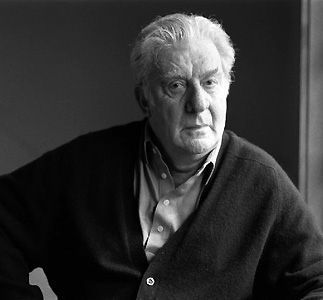
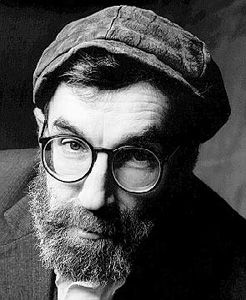
Robert Starer, Paul Schoenfield.
Source: Naxos "Milken Archive" CD (my rip!)
Formats: FLAC, DDD Stereo, mp3(320)
File Sizes: 305 MB / 154 MB (FLAC version incl. booklet)
The FLAC link has now expired. No more requests for this, please!
mp3 version – https://mega.co.nz/#!61ImERTI!5aRQ6P7e0UoHAVmQujnHVBMRrHKqrsxX1qfAART ibp8
Enjoy! Don’t share! Buy the original! And please click on "Like" if you enjoyed this upload! 🙂
American composer and conductor James Yannatos was born in New York City in 1929, attending
the High School of Music and Art and the Manhattan School of Music. Subsequent studies with Nadia Boulanger,
Luigi Dallapiccola, Darius Milhaud, Paul Hindemith, and Philip Bezanson in composition, William Steinberg and
Leonard Bernstein in conducting, and Hugo Kortschak and Ivan Galamian on violin took Yannatos to Yale University
(B.M., M.M.), the University of Iowa (Ph.D.), Aspen, Tanglewood, and Paris. As a young violinist, he performed
in various professional ensembles including a piano trio, string quartet, early music groups with Hindemith and
Boulanger, and in the Casals Festival.
In 1964, he was appointed music director of the Harvard-Radcliffe Orchestra, and has led that group on tours
to Europe, Russia, South America, and Asia. He continued to lead the orchestra through 2009. Works in which
he appeared as composer-conductor include his Piano Concerto, premiered with the Florida West Coast
Symphony (William Doppmann, piano), Concerto for Double Bass and Orchestra with the Cleveland Chamber
Orchestra, Symphony No.3: Prisms with the American Symphony Chamber Orchestra, Symphony No.2:
Earth, Fire, Air and Water, Symphony No.4: Tiananmen Square, and Symphony No.5: Son et Lumi???re.
His Violin Concerto was premiered by Joseph Lin and the Harvard-Radcliffe Orchestra, celebrating the
40th anniversary of Yannatos at Harvard University. He died of cancer in 2011.
Music Composed and Conducted by James Yannatos
Played by the Harvard-Radcliffe Orchestra & Collage Ensemble
With Joseph Lin (violin) & Edwin Barker (double bass)
"We’ve been proud over the past several years to offer the chamber and orchestral music of James
Yannatos on Albany Records, and this newest release offers an excellent sampling of his talents. Born
and educated in New York City, he studied with Philip Bezanson, Nadia Boulanger, Luigi Dallapiccola,
Darius Milhaud and Paul Hindemith. He also studied conducting with William Steinberg and Leonard
Bernstein, and has been music director of the Harvard-Radcliffe Orchestra since 1964. The Violin
Concerto was commissioned by the Pierian Foundation in honor of his 40th year at Harvard. The
Symphony, loosely based on a twelve-tone theme, was influenced, as Yannatos says, “by the ragged,
edgy rhythms of jazz filtered through the ears of a classical composer.” The Contrabass Concerto
is described as “a cross between the classical solo concerto, with its typical virtuoso technique,
and the alternating ‘ritornello’ style of the Baroque solo concerto.” Yannatos’ music is exciting
and colorful with a particularly “transparent” sound to the orchestration."
Source: Albany Records CD (my rip!)
Formats: FLAC, DDD Stereo, mp3(320)
File Sizes: 390 MB / 187 MB (FLAC version incl. cover & booklet)
The FLAC link has now expired. No more requests for this, please!
mp3 version – https://mega.co.nz/#!ekgXQbIB!UJ1S0VdIiHHf_4xkEMosehiRSGXGcYUaxYfGXBx BjYQ
Enjoy! Don’t share! Buy the original! And please click on "Like" if you enjoyed this upload! 🙂
The British composer Peter Dickinson was born at Lytham St. Annes, Lancashire in 1934. His sister, Meriel Dickinson,
is the mezzo-soprano with whom he had a long performing partnership. He has also been a long time contributor
to The Gramophone Magazine. His reviews are signed PD. He went to The Leys School, Cambridge, was Organ
Scholar of Queen’s College, Cambridge, and then spent three formative years at Juilliard, where he was a pupil of
Bernard Wagenaar and a contemporary of Philip Glass and Peter Schickele. During this period he was a critic on
the Musical Courier and the Musical Times; taught at Fairleigh Dickinson University in New Jersey and became
interested in American music of all kinds. He returned to England in 1961 where he held various teaching jobs.
In 1974 he became the first professor of music at Keele University, Staffordshire, where he set up the new department
along with its Center for American Music. Today he is head of music at the Institute of United States Studies,
University of London. He has also written books on the composer Sir Lennox Berkeley, with whom he studied
and the British novelty pianist, composer and educator, Billy Mayerl.
The Piano Concerto grabs you right away with hammered, rising chords – setting up the listener for a late-
Romantic adventure. But nothing of the sort ensues. The Organ Concerto is an earlier but similar work.
Music Composed by Peter Dickinson
Played by the BBC Symphony & City of London Sinfonia
With Howard Shelley (piano) & Jennifer Bate (organ)
And Meriel Dickinson (mezzo-soprano)
Conducted by David Atherton & Nicholas Cleobury
"Two ofthe main preoccupations ofPeter Dickinson’s ingenious and entertaining Piano Concerto are the
co-existence of ‘popular’ and ‘serious’ musics and the idea of simultaneity, of more than one thing happening
at once. At one point, for example (it can be heard as the work’s ‘development section’), a rapid toccata for
the soloist and two drummers proceeds quite independently of a slow, quiet, chorale-like blues in the strings.
The confrontation is further dramatized when a second, upright piano is heard playing a rather demure rag.
Neither soloist nor orchestra knows quite what to make of this for a moment or two, but gradually both of
them ‘accept’ the intrusion and the material proffered by the second pianist, commenting upon it and
reacting to it, but by no means resolving the disparity of styles. A tense, growling cadenza is the result
of this frustration, but in the long final section of the Concerto the conflicts are demonstrated to be more
apparent than real: both toccata and blues are so closely related to the ragtime melody as to be contained
within it. Dickinson’s ingenuity lies in the audibility of this demonstration—it is not one of those points
that only the analyst at his desk would spot—and in the fact that his simultaneous strands can so clearly
be heard and distinguished. The sense of perspective, of seeing one music through another (almost
literally at one moment, when a brief ‘window’ of D major, the home key of the blues, opens in the
midst of another toccata) is very striking, and draws one back for further hearings, for the pleasure
of watching this finely crafted orrery of a concerto go through its intricate but lucid rotations.
The Organ Concerto is a simpler piece, both in its form and its thematic material; what is ingenious
here is the exploitation of a variety of relationships between soloist and orchestra other than the
expected one. The organ never confronts the orchestra with its ‘anything you can do I can do better’
persona, while the orchestra itself is often used soloistically. Thus, the organ can duet on equal
terms with a celeste at one moment (over hushed strings that Ives would have termed ‘druidical’),
and can act as detached bystander to a battle between two timpanists at another (in a later section
the percussion has its revenge, momentarily snuffing out the organ entirely). Yet the variety of
incident here is again unified by perfectly audible logic: the derivation of all this from no more
than three chords and an appealing (again blues-ish) melody does not have to be taken on trust,
and it gives a satisfying finality to the wistful end of the work (the soloist having returned to
the gradually curdling major chord that set the work going, there is nothing left for its erstwhile
companion the celeste to do but to wander off in search of some other partner).
Both performances are excellent, as the composer gratefully acknowledges in his sleeve-
note; so are both recordings, though I could have done with a slightly closer perspective
on the organ in its concerto."
M.E.O., Gramophone
Source: Albany Records CD (my rip!)
Formats: FLAC, DDD Stereo, mp3(320)
File Sizes: 305 MB / 179 MB (FLAC version incl. covers & booklet)
The FLAC link has now expired. No more requests for this, please!
mp3 version – https://mega.co.nz/#!rgBCBQCT!53DT4m0-uY_QKC95HujFGUTZSqYqWcZj2UFCQHnSC3o
Enjoy! Don’t share! Buy the original! And please click on "Like" if you enjoyed this upload! 🙂
Thanks!
John Ireland’s radiant Piano Concerto was written for his prot???g???e Helen Perkin, and is infused
with her sense of vitality. The result is a brilliant work of high spirits and expressive longing. Perkin also
premi???red Legend, a dark, brooding evocation of the ancient landscape of Harrow Hill on the Sussex
Downs. Of the solo piano works, the First Rhapsody is earlier, virtuosic, and in the Lisztian tradition,
whereas Indian Summer is a rural postcard of beguiling simplicity.
Music Composed by John Ireland
Played by the Royal Liverpool Philharmonic Orchestra
With John Lenehan (piano)
Conducted by John Wilson
"John Ireland was an exceptional composer for the piano, as was his contemporary York Bowen.
He may not have been a “major” composer in a conventional sense, but his work deserves to
bebetter known, especially outside of England. His Piano Concerto is a masterpiece. Sure, the
influence of Prokofiev is obvious, but Ireland embraces it and makes it his own. Written in 1930,
it offers a combination of romantic glamor, saucy wit, and lyrical expressiveness that’s quite
personal and memorable. John Lenehan plays it as well as anybody has to date, with a very
winning combination of fluidity in passagework and an easy rhythmic precision in the finale
that sounds just right.
Legend, a tone poem for piano and orchestra, lives up to its name. It’s a brooding, dramatic
work that, like so many short pieces for piano and orchestra, never will be heard in concert
because of its brevity. Why doesn’t some pianist put together a program of tone poems
for piano and orchestra and turn them into a “mini” concerto? Anyway, what makes this
program so attractive is the inclusion of the solo piano works. Lenehan already has produced
several fine discs of Ireland’s piano music, and there’s no question that he understands the
idiom. The pieces on offer here really show Ireland’s range, from the passionate First
Rhapsody to the poetic Sea Idyll and colorful Three Dances. Excellent sonics too."
Classics Today http://i8.photobucket.com/albums/a29/wombat65/p10s10_zps337f418b.gif
Source: Naxos CD (my rip!)
Formats: FLAC, DDD Stereo, mp3(320)
File Sizes: 271 MB / 177 MB (FLAC version incl. cover & booklet)
The FLAC link has now expired. No more requests for this, please!
mp3 version – https://mega.co.nz/#!a8IQFTyL!5MY_f-CfNzcDf4iOA7fm3IW4RJuImVkSEHlRd6UWEzg
Enjoy! Don’t share! Buy the original! And please click on "Like" if you enjoyed this upload! 🙂
German composer Walter Braunfels built a considerable reputation before
the 1930s as composer, pianist and teacher. Since his death in 1954 his operas
have been heard again, and Dutton Epoch now presents world premiere
recordings of two remarkable concertos, for piano and viola. These are considerable
discoveries: the Piano Concerto, Op.21, first performed in 1911, is notable
for its sweeping cantilenas, vivid expression and orchestral colour. Victor
Sangiorgio is authoritative in the demanding solo part. Over twenty years later
came the Schottische Phantasie for Viola & Orchestra, Op.47, a large-scale
viola concerto eloquently played by Sarah-Jane Bradley. The programme is completed
by the Shakespeare-inspired miniature tone poem Ariels Gesang, Op.18.
Music Composed by Walter Braunfels
Played by the BBC Concert Orchestra
With Victor Sangiorgio (piano) & Sarah-Jane Bradley (viola)
Conducted by Johannes Wildner
"German composer Walter Braunfels built a considerable reputation before the 1930s
as composer, pianist and teacher. Since his death in 1954, his operas have been revived,
and Dutton now presents world premi???re recordings of two remarkable concertos for
piano and viola. These are considerable discoveries. The Piano Concerto, first performed
in 1911, is notable for its sweeping cantilenas, vivid expression and orchestral color.
Victor Sangiorgio is authoritative in the demanding solo part. Over twenty years later
came the Schottische Phantasie for Viola & Orchestra, a large-scale viola concerto
eloquently played here by Sarah-Jane Bradley. The program is completed by the
Shakespeare-inspired miniature tone poem Ariels Gesang."
Source: Dutton Epoch CD (my rip!)
Formats: FLAC, DDD Stereo, mp3(320)
File Sizes: 345 MB / 199 MB (FLAC version incl. cover & booklet)
The FLAC link has now expired. No more requests for this, please!
mp3 version – https://mega.co.nz/#!axQU3Lza!m7VscXVlEFjP5osNYixPMH-Wi7AkWRB1rZYY0NZB2_g
Enjoy! Don’t share! Buy the original! And please click on "Like" if you enjoyed this upload! 🙂
Tikhon Khrennnikov (1913-2007) is a controversial figure in the history of Soviet music. As the
chairman of the Soviet Composers’ Association he wielded a lot of power and publicly denounced "formalist
tendencies" in his colleagues, notably Dmitri Shostakovich.
It is the latter, who – albeit through Solomon Volkov’s questionable book Testimony – has shaped today’s image of
Khrennikov as a lackey who kowtowed to Stalin and once famously peed in his pants when his master gave him the evil
look. Well, trust me: Had I been in this position and got Stalin’s evil glance, I would have peed every which way.
On the other hand, the reprisals against composers in Soviet Russia were far less severe than those against writers
or other creative artists. Some claim that Khrennikov actually had a moderating influence on those reprisals,
protecting the composers against any real form of witch hunt.
Be that as it may, it is interesting to hear his own music! Although all four concertos here are in the key of C Major(!),
they aren’t nearly as regressive as one would think of the USSR’s premier state composer. Instead, they are often
reminiscent of Shostakovich or Prokofiev – the very composers who allegedly wrote "un-Soviet" music.
This is a live recording from 1988, a kind of birthday present to the composer. On this occasion, some of the
most promising young performers of the USSR played Khrennikov’s works.
Music Composed by Tikhon Khrennikov
Played by the USSR TV and Radio Large Symphony Orchestra
With Evgeny Kissin (piano) & Tikhon Khrennikov (piano)
And Maxim Vengerov (violin) & Vadim Repin (violin)
Conducted by Vladimir Fedoseyev
"What a line-up; Repin, Kissin, Vengerov! Khrennikov certainly commanded celebrity status
and was able to call on these stars at the very start of their careers. No doubt Khrennikov’s
cultural supremo status helped. He was appointed by Stalin as permanent director of the
Composers’ Union of the USSR – a position he held for 43 years. That very status and his role
in connection with the denunciation of Prokofiev, Shostakovich and others has played its part
in the neglect of his music. As if politics, even of the most extreme persuasion, had anything
to do with musical merit.
In this disc of four Khrennikov concertos we are granted the privilege of making up our own
minds. Each is in three movements. Each is compact – no more than twenty minutes long
and as short as just over fifteen minutes. Each is in C major.
The First Violin Concerto is flashy and brash in the outer movements rather like the Kabalevsky
Violin Concerto. Sparks fly and lightning flashes at breakneck speed with memories of the
Khachaturyan’s concerto slipping in. The andante espressivo picks up on the oriental
enchantment that distinguishes so much Russian music stretching from the late 19th
century onwards.
The Second Piano Concerto starts audaciously with a long introduction for the piano
unaccompanied – the orchestra, silent until about 2.56 when the strings enter – sounding
rather tortured it has to be said. The second movement sonata is a thunderous neo-Lisztian
cauldron with Soviet style motor rhythms criss-crossing the landscape. Kissin relishes all
of this as much as the glittering light-hearted rondo giocoso which is transformed into a
far from bombastic thoughtful andantino which ends the concerto quietly.
The Second Violin Concerto begins in the usual access of virtuosic activity this time
recalling Rawsthorne in the triumphal outer movements. The big Moderato second
movement emerges after the allegro con fuoco ends self-effacingly. It has the feeling
of an extended love song (tr.8 2.12) with the violin as the suitor. The theme is taken
over by the orchestra and rises to a bombastic blare but even as this falls away the
romantic theme returns in self possessed splendour. Vengerov is on fine form and even
draws a bravo from the otherwise reticent Moscow audience.
The composer himself is soloist in the Third Piano Concerto. It carries the latest opus
number in this selection. Like the Second Concerto it starts with the piano unaccompanied
establishing itself as the Alpha male before the orchestra puts in an appearance. The
orchestra enter with a pompous march theme with the soloist acting as raucous hortator
rather than combatant. The music rises to a Technicolor climax with the unblushing
use of crashing cymbals (tr.10 6.10). It ends in a sort of eerie postlude with the wraithlike
violins ‘rattling their chains’ as the piano says a long farewell. Rather good. Another
Moderato follows, in which the piano deliberately picks out a highly romantic theme
with a musing Rachmaninovian character but edgily stony. As in the first movement
so here; the music rises this time to a bruising brass orated climax (3.02) then falls
away into silence ushered by the piano seemingly exhausted by the brazen climax.
The finale’s modest dissonance does little to dilute the effect of some excitably
assertive music."
Musicweb
Source: Relief CD (my rip!)
Formats: FLAC, DDD Stereo, mp3(320)
File Sizes: 355 MB / 161 MB
The FLAC link has now expired. No more requests for this, please!
mp3 version – https://mega.co.nz/#!HoQ0TAqJ!HNf3JBpRgSGV3auQm8QE0h4hWDtGVvcn_PjJ7c0 n00A
Enjoy! Don’t share! Buy the original! And please click on "Like" if you enjoyed this upload! 🙂
One of my favorite CDs for this year, wonderful music. Billion thanks wimpel69!
John Metcalf was born in Swansea, Wales in 1946. A joint UK/Canadian citizen, he is one of the
foremost composers working in Wales today. His composing career has already embraced a large variety
of work including six operas, two to commission from Welsh National Opera. Since the early 1990’s a
definitive series of orchestral and chamber works have helped to enhance his reputation nationally
and internationally. These include Paradise Haunts, Dances from Forgotten Places and Mapping Wales.
The BBC marked Metcalf’s anniversary year with the commissioning of In Time of Daffodils given
its world premiere in St. Davids Hall, Cardiff by the BBC National Orchestra of Wales with Jeremy Huw
Williams (baritone) and Radio 3’s Hear and Now programme broadcast two major works as part of a
"John Metcalf at 60" celebration.
In 1999 he composed a short work for solo piano which he called Endless Song. On
first hearing the instantly memorable ‘song’ seemed to cry out for elaboration and a year later it indeed
formed the basis of an extended work entitled Mapping Wales for harp and string quartet.
One strand of the work’s inspiration came from a series of paintings by Catrin Webster (with whom the
composer was already collaborating on another project) in which the artist journeyed through
Wales and captured her response to its varied landscapes in essentially abstract forms – but drawing
on both emotional and spiritual resonance. Mapping Wales is therefore a musical journey,
but through a landscape of the soul as opposed to any physical location. Heard on this album is
the composer’s later elaboration for harp and string orchestra.
As with Mapping Walesthe genesis of the Cello Symphony can be found at the
performance of another Metcalf work in 1999. The first performance of the orchestral version
of the violin work Paradise Haunts was given in Llandaf Cathedral, Cardiff, as part of the Vale
of Glamorgan Festival by Thomas Bowes and the BBC National Orchestra of Wales. The cellist
Raphael Wallfisch was also taking part in the concert and he was so moved by Metcalf’s
work that he asked him on the spot to compose a work for cello and orchestra. After many trials
and tribulations – which turned out positively to provide an extended gestation period – the new
Cello Symphony was premiered virtually five years to the day in the same venue. This is
the performance captured live for inclusion on this disc. One feature which becomes quickly
apparent as the music opens ‘in the depths’ is that we are embarking on a long voyage.
Music Composed by John Metcalf
Played by the Bulgarian Chamber & English Symphony Orchestras
With Catrin Finch (harp) & Raphael Wallfisch (cello)
And the Cardiff Ardwyn Singers
Conducted by Raicho Christov & William Boughton
"The most striking characteristic shared by these three fairly recent works is the prominence
of melody. Moreover, as in much of Metcalf’s recent output, there is a great emphasis on
clarity and simplicity, although the latter may often be quite deceptive. The music is built
on so-called "white-note" harmony, thus eschewing chromatic tones. This may be heard in
some earlier works such as Paradise Haunts … for violin and piano or orchestra and in the
orchestral song-cycle In Time of Daffodils as well as in the three works here, all composed
between 2000 and 2004.
The earliest is Mapping Wales for harp and strings, originally scored for harp and string
quartet. The music is based on a slightly earlier piano piece Endless Song (1999) and the
work as a whole may again be experienced as a theme and variations, or – as suggested
by Geraint Lewis in his informed insert notes – as ‘variations in search of a theme". The
scoring for harp and strings certainly calls RVW’s Five Variants on "Dives and Lazarus" in
manner rather than in actual musical style. The variations are lyrical, meditative and lively,
thus providing welcome contrast. A delightful work be any reckoning that should appeal
to harpists willing to enlarge their repertoire as a change from the ubiquitous, though
beautiful Danses sacr???e et profane of Debussy or the Introduction et Allegro of Ravel.
The Cello Symphony is by far the most substantial and ambitious work here. It is scored
for a fairly large orchestra including organ – or so it sounds to me – and wordless male
voices. The score is prefaced with a quotation from Sassoon’s poem Everyone Sang: "The
song was wordless – the singing will never be done", perfectly suggesting the overall mood
of the work. The first movement opens in the depths of the orchestra and the impact is not
that different from the opening of Gorecki’s Third Symphony, although Metcalf’s work does
not possess the cumulative repetitiveness of the Polish composer’s piece."
Musicweb
Source: Nimbus Records CD (my rip!)
Formats: FLAC, DDD Stereo, mp3(320)
File Sizes: 274 MB / 159 MB (FLAC version incl. cover & booklet)
The FLAC link has now expired. No more requests for this, please!
mp3 version – https://mega.co.nz/#!zwI3iR6C!6PJglXNdg8uaV3QvJECd5M0D91wTOPV4xgvQN_N wNG4
Enjoy! Don’t share! Buy the original! And please click on "Like" if you enjoyed this upload! 🙂
Marie Luise Neunecker (born 17 July 1955) is a German hornplayer and a professor of French horn.
She completed her French horn studies with Erich Penzel at the Hochschule f???r Musik K???ln. In 1978 she
started her career at the Opern- und Schauspielhaus Frankfurt as second hornplayer. In 1979 she was
appointed principal hornplayer with the Bamberg Symphony, and from 1981 to 1989 she held the same
position with the hr-Sinfonieorchester. She has appeared as a soloist with various orchestras worldwide,
and is also active as a chamber music player. In 1986 she won first prize at the Concert Artists Guild
international competition in New York. In 1988 she was appointed professor at the Frankfurt Academy
of Music and Performing Arts, and in 2004 she was appointed professor of French horn at the Hochschule
f???r Musik "Hanns Eisler".
This album features Reinhold Gli???re’s very romantic Horn Concerto, a Concertino by Soviet
composer Vissarion Shebalin and three short pieces by Alexander Glazunov.
Music by Reinhold Gli???re, Alexander Glazunov & Vissarion Shebalin
Played by the Bamberg Symphony Orchestra
With Marie Luise Neunecker (horn) & Paul Rivinius (piano)
Conducted by Werner Andreas Albert
"Neunecker has, with minimal publicity, gradually tackled much of the neglected 20th century
repertoire for French Horn. Not all that long ago she recorded the Schoeck and Ethel Smyth
concertos for Koch.
The Gliere was, in the 1950s, made famous within the USSR by an LP of the composer directing
the Bolshoi orchestra accompanying the dedicatee, Valery Polekh. The Concerto radiates old-fashioned
sun-warmed Germanic romanticism courtesy of Schumann and adds to the ‘soup’ a measure of
Tchaikovskian delirium. The ‘Hollywood’ sentimentality of the strings at 3.55 in the andante is as
close as you can get to Korngold without being Erich Wolfgang. The cadenza in the long Allegro (I)
is a conflation of Neunecker and Polekh. The ‘troika’ allegro of the finale is straight out of Prince
Igor. It is pleasantly poetic rather than outright compelling although there are some commanding
moments (5.30) in the finale. Pleasant poetry also sums up the neatly rounded little pieces for
horn and piano. Rivinius’s pianism is extremely sophisticated in its moment by moment
responsiveness to the horn. The music is in style with the Rachmaninov preludes.
Glazunov’s three pieces are most lovingly done. These are fragile, musically speaking, and only
the most sympathetic culture will allow them to speak as they do here. The Reverie must surely
have taken the famous horn solo from Tchaikovsky’s Fifth as its point of departure in much the
same way as the Serenade relates to the second movement of the Fourth. The Idyll is a seven
minute andante. There are no abrasive edges to Neunecker’s playing and she is ideally partnered.
Shebalin is rather well represented on the excellent Olympia label where one collection includes
this Concertino alongside a number of other substantial works. This is much better recorded
and an antidote to romantic noodling. Although it certainly has its share of ‘waldlied’ it is also
lively and even pungently vehement (cf Walton’s Scapino). Shebalin was condemned for
formalism in the late 1940s and stripped of his academic posts. The silver-threaded lyricism
of this music implies a sort of Soviet John Ireland although the finale is closer to de Falla
and Shostakovich.
This is a first class collection which is obscure only because its virtues have not been
‘trumpeted’. Koch seem to get precious little attention in the media. Neunecker is a musician
of outstanding musicality and technical brilliance. Snap it up while it is still available."
Rob Barnett, Musicweb
Source: Koch Schwann CD (my rip!)
Formats: FLAC, DDD Stereo, mp3(320)
File Sizes: 337 MB / 149 MB (FLAC version incl. artwork & booklet)
The FLAC link has now expired. No more requests for this, please!
mp3 version – https://mega.co.nz/#!ClRwQKrS!mkKwzWoTj5Ad-ESJeb24Buhv035O3e54GuE_UcmCSQk
Enjoy! Don’t share! Buy the original! And please click on "Like" if you enjoyed this upload! 🙂
———- Post added at 04:17 PM ———- Previous post was at 04:10 PM ———-
Flac links for Nos. 162-180 have now expired. Requests for those will not get an answer.
Music Composed by Franz Waxman, Bernard Herrmann & Alex North
Played by the New Zealand Symphony Orchestra
With Sara Davis (n???e David) Buechner
Conducted by James Sedares
"To quote Silva Screen this album is "Re-issued due to demand from Soundtrack fans." It is the
"World Premiere Digital Recording of music from The War Lord • The Adventures Of Huckleberry
Finn The Sharkfighters • The Mountain Road • Rachel Rachel Five Finger Exercise • Wagon Rain
and a 20-minute suite from The Valley Of Gwangi. Deluxe CD Booklet. Over 75 Minutes of Music.
Acclaimed Performance and Recordings with the City of Prague Philharmonic Orchestra conducted
by Paul Bateman." The disc is therefore a forerunner of Silva’s 2CD set of music by the same
composer, conductor and orchestra, The Cardinal, which contained music from The Jayhawkers,
Seven Wonders of the World, Close-up, The Captive City, The Proud Rebel and The Cardinal, and
was reviewed here on FMOTW. It also makes an interesting comparison with, and companion to,
Film Score Monthly’s complete issue of the soundtrack to The Adventures of Huckleberry Finn,
coincidentally issued this month and also reviewed here this month.
While the FSM disc is wonderful for serious Moross devotees and completists, the 14 minute
suite here encapsulates the essence of The Adventures of Huckleberry Finn well for more general
fans seeking a wider survey of the composer’s music. The full score is enjoyable, but it is also
somewhat repetitive, Bateman here portraying Moross’ lyrical Americana with considerably more
economy and with far better sound. Which is not to say the 1960 stereo sound of the FSM disc
is not excellent in its own right, only that it needs to be taken in consideration with the limitations
of recording technology of its day. Here Bateman has the advantage of modern digital recording,
and the disc has been remastered in Dolby Surround and is HDCD compatible for those with
the appropriate decoding technology.
More inward looking but in the same tradition is the "Americana Miniature" derived from the
composer’s score for Paul Newman’s low-key directorial debut, Rachel, Rachel. The suite combines
four cues into six minutes of tellingly lovely yet melancholy music which makes for an interesting
comparison to the sort of small scale Americana scores Jerry Goldsmith (A Patch of Blue, Lilies of
the Field, The Flim-Flam Man) was writing in the same mid-‘60’s period. Moross’ work may be
less dependent on ingeniously off-beat sounds, but it is all the more lovely for it. "Romanza"
meanwhile is a yearning romantic piece derived from the composer’s score for The Five Finger
Exercise, as reworked for his concert suite Music For The Flicks. As the excellent and very detailed
booklet notes by the composer’s daughter Susanna Moross Tarjan suggest, the tune is in the
tradition of "Laura" and Unchained Melody", and to these ears points the way to the later 1940’s
detective nostalgia of David Shire’s Farewell My Lovely. It is worth the price of the disc alone.
The theme from the once hugely popular Wagon Train is more prime Western Americana, while
The War Lord finds Moross accompanying Charlton Heston through one of his less successful
historical adventures, his score being necessarily robust yet tender. The "Prelude and Main Title"
has a regal grandeur introducing a central theme with the elegance and formality of Georges
Delerue at his eloquent best. "What of the Future?" is delicately introspective, setting the scene
for the balletic yet pungent "Vengeance and Death" and the elegiac "finale".
The Sharkfighters is very different fare, a Latin flavoured score filled with the appropriate
percussion for a routine Victor Mature adventure set in Cuba. Again the music is intensely
balletic in character, filled with strong melodies and imaginative touches of orchestration.
The Mountain Road is equally macho – the film was a war drama starring James Stewart –
yet has a magisterial quality which combines Moross’ very personal form of Americana with
a hint of the mountain landscapes of Alan Hovhanness.
The Valley of Gwangi is one of the lesser Ray Harryhausen stop-motion adventures, an odd
mix of Western and dinosaur adventure, about which the best thing is Moross’ gloriously
bold and robust score. Here is 18 minutes of prime monster music in a nine part suite presented
over three tracks. The string writing is urgent and intense, the brass combative and pungent,
the whole driven along by pulsating rhythms and tersely constructed back and forth motifs
which sometimes sound as if Bernard Herrmann had taken a trip out West. Really a brass
showcase, The Valley of Gwangi is a sterling example of a truly first-rate score gracing a
really rather forgettable film. Happily this enthusiastic and taut performance brings the
music to life where it can really soar, free from the constraints of the original cinematic
images. A fitting finale to a fine and very generously filled disc.
If there is a flaw, its only that for this reissue the fuzzily printed text in the booklet really
should have been reset; its far from easy on the eye. Oddly the stills and posters appear
about as crisp and sharp as can be, so why not the words? For the general film music fan
this is the disc to go for. Moross fanatics will already have it and should seek out the
FSM Huckleberry Finn album asap."
Gary Dalkin
Source: Koch International CD (my rip!)
Formats: FLAC, DDD Stereo, mp3(320)
File Sizes: 229 MB / 117 MB (FLAC version incl. artwork & booklet)
The FLAC link has now expired. No more requests for this, please!
mp3 version – https://mega.co.nz/#!ioJm1LZa!_gE69aX8-L6LKl8TaFgJH4ZGW7Nxu5A4x0B0X2GepX8
Enjoy! Don’t share! Buy the original! And please click on "Like" if you enjoyed this upload! 🙂
No.210
A virtuoso pianist and renowned conductor in his day, Wilhelm Stenhammar achieved early
success with his magnificently wide-ranging and Brahmsian Piano Concerto No.1. After many
years of mixed fortunes as a composer he found his personal voice in the remarkable Piano Concerto No.2.
Conceived as a single span, this vividly affirmative romantic masterpiece was the wellspring for his
Serenade and Symphony No.2 (8.553888). Award-winning soloist Niklas Sivel???v
has also recorded Stenhammar’s solo piano works.
Music Composed by Wilhelm Stenhammar
Played by the Malm??? Symphony Orchestra
With Niklas Sivel???v (piano)
Conducted by Mario Venzago
"These wonderful recordings of Stenhammar’s piano concertos make a superb introduction
to his music, too much of which is unfamiliar outside his native Sweden. The Second Concerto
(1908) is a masterpiece; the First (1894) isn’t quite. Both try to negotiate between the perceived
polarities of Liszt’s and Wagner’s experimental chromaticism on the one hand and Brahms’s
tempered romanticism on the other. While Stenhammar’s colossal First Concerto expands on
Brahms’s symphonic technique, the tense, if extraordinarily beautiful Second uses Lisztian cyclic
structures to constrain its complex material within a single musical span. Stenhammar specialist
Niklas Sivel???v plays them in a no-holds-barred, high Romantic way, while the Malm??? Symphony
under Mario Venzago is tremendous. Some might prefer the harder edge and comparative
detachment of Seta Tanyel with the Helsingborg Symphony and Andrew Manze on Hyperion.
But it’s hard not to be swept away by the Naxos disc, and the performance of the First
Concerto is the finest I know."
The Guardian
Source: Naxos CD (my rip!)
Formats: FLAC, DDD Stereo, mp3(320)
File Sizes: 276 MB / 155 MB (FLAC version incl. artwork & booklet)
The FLAC link has now expired. No more requests for this, please!
mp3 version – https://mega.co.nz/#!S4pWiCDD!spK42zQoL-NbrB299TfJTws6V4CYJ0lIXvHrBgtth1Q
Enjoy! Don’t share! Buy the original! And please click on "Like" if you enjoyed this upload! 🙂
Franz Berwald (1796-1868) is regarded as the most gifted musician of the nineteenth century in Sweden
and yet his work was little understood by his contemporaries. This was partly because symphonies, the genre
in which he excelled, were little appreciated. Of the four he wrote in the 1840s, the Symphonie s???rieuse was
the only one to be performed – once, badly rehearsed and with a reduced orchestra. Thus the only opportunity
for audiences to hear his mastery was lost. The Violin Concerto is one of Berwald’s youthful works, written
when he was 24 He had been playing the instrument since childhood, taught by his father who played in the
Royal Opera Orchestra in Stockhohn. The Violin Concerto is exceptional in several ways. Its key of C minor
is unusual and not especially practical for the soloist and several technical difficulties are uncharacteristic of
Swedish music of the time. These were allegedly written by Berwald for his boastful cousin Johan Fredrik, who
claimed that he could master anything. However it was Berwald’s brother August who gave the work its first
performance in 1821.
Wilhelm Stenhammar too ranks as one of the leading figures in Swedish music, with a small but
particularly fine body of work. His mature works can be characterized as aristocratically measured, sometimes
wilful, rich in feeling but without unbridled sentimentality or play for effect. Among his sources of inspiration
were Bruckner and even Sibelius. Stenhammar’s contribution to the genre of violin rhapsodies dates from
1910. Although he was only able to devote himself to his own music during the summer, this was a highly creative
period. The Romances were first performed in 1911. Marked sentimental, this has nothing to do with
the current meaning of the word, being used in those days to mean simply "with feeling".
Tor Aulin (1866-1914) was another who played a leading part in Swedish music life at the turn of the
century. He led the Royal Opera Orchestra in Stockholm and was also first violinist in the string quartet he
founded in 1887 and led for over 25 years. It was the first established ensemble of its kind in Sweden, and
it played an important role in exposing many to performances of a very high standard. Through the many
long tours, often with Stenhammar at the piano, the ensemble became known throughout the country. When
he was younger Aulin appeared from time to time as a soloist, but he later concentrated on conducting.
Aulin wrote three violin concertos, of which the last has come to be regarded as one of Sweden’s finest. The
Violin Concerto No.3 was first performed in 1896 and dedicated to Henri Marteau. Stylistically it is
European in character, rather than specifically Scandinavian. Influences of Schumann, Brahms and even
Bruch can be heard, and Brahms’s famous Piano Concerto No.1 seems to have been the model for the
introductory dialogue between soloist and orchestra, as well as later passages.
Music by Franz Berwald, Wilhelm Stenhammar & Tor Aulin
Played by the Swedish Chamber Orchestra
With Tobias Ringborg (violin)
Conducted by Niklas Will???n
"Berwald’s Concerto is an early work, whose ideas are fluent and attractive, very much in the
Spohr mould. There’s excellent playing from Tobias Ringborg, though the first movement
sounds undervitalised when put beside Tellefsen (EMI). The two Stenhammar pieces are
rarities and sound persuasive in his hands. Apart from Christian Bergqvist’s disc on Musica
Sveciae, this newcomer is the only current version of Tor Aulin’s well-crafted C minor concerto.
A decent performance and good, well-balanced recorded sound."
BBC Music Magazine
Source: Naxos CD (my rip!)
Formats: FLAC, DDD Stereo, mp3(320)
File Sizes: 276 MB / 155 MB
The FLAC link has now expired. No more requests for this, please!
mp3 version – https://mega.co.nz/#!7VFwWCZD!l-CCjnfk3gFFtOp5R2CP30X6H3H_WnoT3JzWq3psRAI
Enjoy! Don’t share! Buy the original! And please click on "Like" if you enjoyed this upload! 🙂
Though entitled Volume 3 of the "Complete Works for Piano and Orchestra" of British composer
Richard Rodney Bennett (1936-2012), only two of the four works here actually require a pianist at
all. The most important is, of course, the 1968 Piano Concerto, which is one of the most flamboyant
yet concentrated of his dozen or so concertante efforts. This piece offers a thunderously flashy display of
the full range of stylistic options that Bennett has commandeered and amalgamated. The quasi-serial
accents are grounded in a highly decorative, tonally oriented idiom that is remarkable for its dramatic flair,
its communicative drive, and its sheer professionalism. The four-movement, 25-minute duration allows
for a development of almost continuous and propulsive symphonic scope.
With the two quarter-hour works – Dream Dancing and Reflections on a Theme of William Walton
(both products of the mid 1980s) – we encounter a more private and inward dimension of Bennett’s versatility.
The former is scored for a varied ensemble of 13 players, and its two contrasting movements are directly
inspired by the composer’s fascination with Debussy, specifically the mesmerizing piece for solo flute, Syrinx.
The Walton-derived work, scored for a chamber complement of strings, is also a deeply receptive response to
another composer’s sound world: in this case, a 12-note theme from the Second Symphony.
Martin Jones returns for the exuberant Party Piece of 1970, demonstrating that, even in his earlier
years, Bennett (who had already been actively composing film music) felt close affinities with the world of pop
and jazz, a field he was to embrace more wholeheartedly in his later years, though without ever breaking
his ties to concert music.
Music Composed by Richard Rodney Bennett
Played by the RT??? National Symphony Orchestra of Ireland
With Martin Jones (piano)
Conducted by David Angus
"Richard Rodney Bennett has always been a wonderful pianist and when he composes for his
instrument he does so fluently and idiomatically. It is, therefore, a pleasure to be able to hear
two of his works for piano and orchestra on this CD. In between them come two of the composer’s
most enjoyable works for large chamber ensemble. On this disc, the pianist is Martin Jones and
his is a committed soloist, handling the limpid piano writing of the first movement with great
delicacy. All in all, this is a superb disc which confirms my belief that the music of Richard
Rodney Bennett has a quality that will make it stand the test of time."
International Record Review
Source: Metronome CD (my rip!)
Formats: FLAC, DDD Stereo, mp3(320)
File Sizes: 253 MB / 150 MB
The FLAC link has now expired. No more requests for this, please!
mp3 version – https://mega.co.nz/#!T0Q0kBYC!Fa93LzR05zD-RLCHTVQcT4SGuk9181muap2yKQIGRnM
Enjoy! Don’t share! Buy the original! And please click on "Like" if you enjoyed this upload! 🙂
The fifth instalment in Dutton Epoch’s ongoing series focusing on British light music features
sumptuous works by Paul Carr and conductor Gavin Sutherland, along with the suite from
Richard Addinsell’s incidental music for Jean Anouilh’s play Ring Round the Moon and orchestral
delights by film music legend Roy Budd (Tricolour Overture) and Francis Chagrin
(Aquarelles). The focus however lies on the Clarinet Concertos by Gavin Sutherland as well as
Paul Carr’s Oboe Concerto; both are real finds. Sutherland writes essentially in a lighter vein, taking
a melodic route through a variety of idioms including the ballad style of the exquisite second movement
"Song without Words". Carr’s Oboe Concerto, played by its dedicatee Nicholas Daniel, highlights
the increasing reputation of this composer; here the sorrowing threnody encapsulated in the stillness of
the second movement’s evocation of snow is particularly striking, while Carr’s Air for Strings is uniquely
compelling, an orchestral love song that bids fair to supplant Barber’s celebrated Adagio for Strings.
Music by (see above)
Played by the Royal Ballet Sinfonia
With Verity Butler (clarinet) & Nicholas Daniel (oboe)
Conducted by Gavin Sutherland & Barry Wordsworth
"British Light Music Premieres, Vol. 5, delivers exactly what it promises; all the music is by
British composers, all (except for two pieces) are recorded here for the first time, and all of
it is emphatically, indefatigably, and inexhaustibly light in nature. There is nothing wrong with
light music, which may not be as popular as it once was in the United States but is clearly still
huge in Britain. Of the composers here, most are either poorly represented on disc — Richard
Addinsell and Gavin Sutherland — or very poorly represented on disc — Francis Chagrin and
Paul Carr — and this release will likely be the first introduction to their music for many
listeners. No one need fear this music; everything here is tonal, melodic, comprehensible,
and, for the most part, utterly charming, though, it must be said, with no more depth than
a piece of paper. Still, few would deny that each piece is expertly constructed, superbly
recorded, and brilliantly played by the Royal Ballet Sinfonia under either Barry Wordsworth
or Gavin Sutherland, or the BBC Concert Orchestra under Roderick Dunk. If none of the
pieces here touch the infinite, well, there’s always Vaughan Williams’ Thomas Tallis Fantasia."
Allmusic
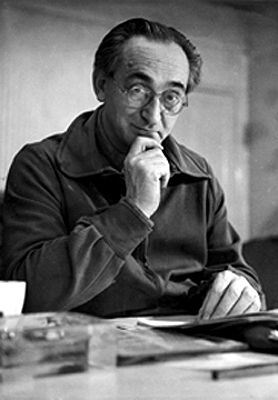
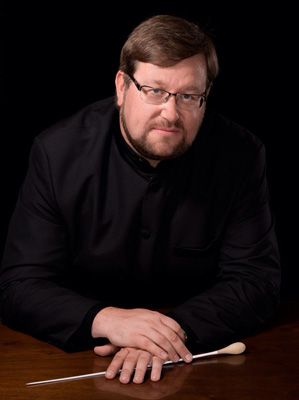

Francis Chagrin, Gavin Sutherland, Paul Carr.
Source: Dutton Epoch CD (my rip!)
Formats: FLAC, DDD Stereo, mp3(320)
File Sizes: 364 MB / 182 MB
The FLAC link has now expired. No more requests for this, please!
mp3 version – https://mega.co.nz/#!6xhSCSxD!oL_n1QxjapEel5qJfL7zHeQ96D9zyBdUvHEjIPA SUIc
Enjoy! Don’t share! Buy the original! And please click on "Like" if you enjoyed this upload! 🙂
You are a rockstar, wimpel. Thank you.
John Corigliano (*1938) is one of the most conspicuously eclectic composers ofthe present day. His scores
often contain numerous disparate elements, which can run a gamut from conventional chords, simple,
tonal part-writing, and regular metrics to polytonal and tone-cluster structures, twelve-tone rows,
violent offbeat accents, and dissonant avant-garde color effects. The Clarinet Concerto was composed
in the summer and fall of 1977, one of a series of works forsolo orchestral instruments commissioned by the
New York Philharmonic for its principal players with a gift from Francis Goelet.
Aaron Copland’s Clarinet Concerto was written between 1947 and 1949, although a first version was
already available in 1948. This composition is also sometimes referred to as the Concerto for Clarinet,
Strings and Harp. Copland incorporated many jazz elements into his concerto. The piece is written in a
very unusual form. The two movements are played back-to-back, linked by a clarinet cadenza. The first
movement is written in A-B-A form and is slow and expressive, full of bittersweet lyricism. The cadenza not
only gives the soloist an opportunity to display his virtuosity, but also introduces many of the melodic
Latin American jazz themes that dominate the second movement.The overall form of the final movement
is a free rondo with several developing side issues that resolve in the end with an elaborate coda in C major.
Prelude, Fugue and Riffs is a "written-out" jazz-in-concert hall composition written by Leonard Bernstein
for a jazz ensemble, which features a solo clarinet. The title points to the union of classical music and jazz:
"Prelude" (first movement) and "Fugue" (second movement) —both baroque forms— are followed immediately
without a pause by a series of “riffs” (third movement), which is a jazz idiom for a repeated and short melodic
Completed in 1949 for Woody Herman’s big band as part of a series of commissioned works —that already
included Stravinsky’s Ebony Concerto— it was never performed by Herman, possibly because his orchestra
had disbanded at that time. Instead, it received its premiere as part of Bernstein’s Omnibus television show,
"The World of Jazz" on October 16, 1955, with Benny Goodman.
Music by John Corigliano, Aaron Copland & Leonard Bernstein
Played by the London Symphony Orchestra
With Richard Stoltzman (clarinet)
Conducted by Lawrence Leighton Smith
"How curious that a contemporary clarinet concerto should receive two recordings in such
quick succession. Does John Corigliano’s 30-minute work deserve the honour? Well, I heard
it at the 1987 Huddersfield Contemporary Music Festival, where it was the only work in an
LSO concert of American Music not to be heckled (the others were decried as absurdly
derivative). It certainly deserved its respectful reception, even though the superficial and
opportunistic finale seemed to me then unworthy of the cadenzas and elegy which preceded
it. Looking at MEO’s review of the Drucker/Mehta recording (on New World/Conifer) I see
that’s more or less how it struck him, too.
It helps a little to know that the finale was designed as ”a kind of festival for all the players”.
And it helps that Stoltzman launches into it with even more daring and panache than Drucker
(the concerto’s dedicatee and a fine exponent). Stoltzman and Leighton Smith also stretch
the slow movement a lot further than do Drucker and Mehta, and it says something for the
expressive quality of the music that it can take this treatment. The confidence and relish
with which Corigliano flings sounds around the orchestra in the opening movement also
compels admiration. As for lasting quality, however, it cannot be claimed that the concerto
has the substance of Nielsen’s, the memorability of Copland’s or a strong enough alternative
identity of its own to persuade one to rank it anywhere near those works.
In the early stages of the Copland Stoltzman is rather less atmospheric than Janet Hilton
(on Chandos), whose floating sound and tender legato make for a very special kind of
poetry; later on her sense of fun and her feeling for the jazz idiom are also delightful.
But the more the music swings, the more Stoltzman’s alley-cat instincts come into their
own. The LSO strings surpass their Scottish counterparts in their poise at tempo changes
and in certain exposed passages later on.
The Bernstein also goes well, although Rattle on his EMI ”Jazz Collection” manages to
make it sound even more vulgar. RCA’s recording quality is first rate, and for anyone
drawn to this particular coupling, or to exceptional clarinet virtuosity, this is an issue
not to be missed."
Gramophone
Source: RCA/BMG CD (my rip!)
Formats: FLAC, DDD Stereo, mp3(320)
File Sizes: 243 MB / 128 MB (FLAC version incl. artwork & booklet)
The FLAC link has now expired. No more requests for this, please!
mp3 version – https://mega.co.nz/#!7wZQVTqA!NwL_MaEFlgiFtJv2ociM-k1tRmLIPpgK51L_Ih2eymA
Enjoy! Don’t share! Buy the original! And please click on "Like" if you enjoyed this upload! 🙂
Angelo Gilardino’s (*1941) compositions are all inspired by literary creations
or paintings, although there is nothing deliberately programmatic about these
works, which seek rather to convey in broad-brush strokes the associated atmospheres
or connotations of their titles. Here’s a chance to devour three such pieces by
this leading contemporary composer, beginning with Hykkara — whose prevailing
atmosphere is that of a distant past (the title refers to an ancient city of Sicily,
then known as Magna Graecia). The concerto’s orchestration — which for Gilardino
is always an integral part of the aesthetics of the music — establishes the fate
of the solo instrument, whereas in the ensuing work, Concertino del falco, it is
the solo guitar that leads the poetic discourse, evoking dark, troubled images.
Falco was composed in memory of the German writer Ernst Wiechert, who was imprisoned
by the Nazis and whose experiences led him to seek a return to pure nature and
salvation in God. The freedom of the falcon can be seen as an attempt at getting closer
to the divine, away from troubled humankind, and the wind play a particularly important
role in this work, creating a m???lange of constantly changing colours that recall an earlier
age by way of a mysterious, poetic dream world.
The Concerto di Oliena completes the line-up, a work in which Gilardino focuses on
the characteristic sense of distance evoked by this Sardinian village, favouring the
development of parallel timbres in the orchestra over compactness and density of sound.
The piece was dedicated by the composer to its performer, Cristian Porqueddu, who is
joined by two other leading Italian guitarists on this recording.
Music Composed by Angelo Gilardino
Played by the Winds of the Orchestra da Camera Siciliana & Orchestra del Teatro Olimpico
And the Symfonica-Orchestre de Chambre de la Vall???e d’Aoste
With Angelo Marchese (guitar) & Alberto Mesirca (guitar)
Conducted by Giuseppe Crapisi, Gianpaolo Maria Bisanti & Luciano Condina
"Here in handsome recompense to composer and listeners are three guitar concertos by this
composer from northern Italy. They are atmospheric, romantic, steely, delicate and unsentimental.
The composer strikes a skilful balance between the need for the guitar to be heard and the
compulsion to intensify and enhance the ideas through the orchestra. Gilardino’s writing,
especially for woodwind, often reminds me of the mysterious earlier panels in The Rite of Spring.
The Concertino di Hykkara is a spikily romantic guitar concerto in three movements seemingly
inspired by the ancient Sicilian world. Its overall dissonant ‘signature’ lies with the orchestra.
This is often soloistic, surreal in nature and open in texture. It is never congested. The composer
resorts to chamber, micro-clockwork textures while the guitar inhabits a romantic role amid
the orchestra’s sinister activity. The middle movement muses darkly before the dry and motoric
insistence of the finale. The guitar part is virtuoso but is not called on to produce outlandish
effects at odds with the instrument’s nature.
The Concertino del falco like the Hykkara is warm and Mediterranean in nature. It too is a
stranger to big gestures. The music is redolent of the fine lacy complexity of Henze; even
more so than in the Hykkara. Persistent motivic cells dominate the texture and are traded
between the soloist and the orchestral principals and sections. It was written in memory of
anti-Nazi writer Ernst Weichert who was imprisoned at the Buchenwald concentration camp.
The ‘falco’ of the title is a reference to the free-ranging falcon. Something of the horror of the
writer’s experience is picked up by the gaunt ‘fanfares’ of the final bars. I would not have
blinked had Gilardino called these two works Concerto rather than Concertino. The only
difference appears to be duration.
For the last guitar concertante work here we come to the Concerto di Oliena – also in the
three movements and this time approaching 30 minutes duration. Again engaging
rhythmic chatter and insistent note-cells characterise the outer movements. The central
Adagio – a marking common to all three works – is slow-pulsed, mesmeric and dreamy
and not in a comfortable way. We hear the same soloist as appeared ‘with’ the
electronically synthesised orchestra on the 2011 release.
All three guitarists appear more than equal to Gilardino’s technical and emotional
demands and the recordings strike an equable balance between the soloist and orchestra.
The notes are better than decent and are in English only. This is a treat for adventurous
pursuers of the guitar concerto on the look-out for refreshing and distinctive contemporary
additions to the repertoire."
Musicweb
Source: Brilliant Classics CD (my rip!)
Formats: FLAC, DDD Stereo, mp3(320)
File Sizes: 288 MB / 163 MB (FLAC version incl. artwork & booklet)
The FLAC link has now expired. No more requests for this, please!
mp3 version – https://mega.co.nz/#!PoQikSKT!gTLUg1Pj0iGfhtV_nu-lq29-ULUqqeBye2A29dlUPZ4
Enjoy! Don’t share! Buy the original! And please click on "Like" if you enjoyed this upload! 🙂
jewels of composers, who wimpel69 was digging out for us…
Leonardo Balada comments on the works on this album: "My Concerto for Piano and Orchestra, No.3,
of 1999, is an example of a symbiosis between the past and the future which I have been practicing
for three decades. One can see textural writing, blunt contrast of ideas and dynamics, juxtaposition of
clustered and traditional harmonies, canon-like mechanistic passages in layers of "staccato" writing,
rhythmic constancy, and a compelling sense of direction and drama, blended with Spanish ethnic ideas.
In the first movement the music is based on the rhythm and character of a pasodoble, an Andalusian
march performed at a bull-fight. The orchestra recreates the sound of an organillo, a metallic folk organ-
grinder, with all its earthy characteristics. In the second movement the mysteries of medieval Andalus???
music of Southern Spain and North Africa are exploited with textures that embrace beauty and mystery.
In the third movement is the jota, a dance from Aragon, the principal idea presented in a primitive sound
concept at first, but developed into a modernistic experience as the work unfolds.
Concierto M???gico, for guitar and orchestra and written in 1997, represents a new direction in my
catalogue of works for the guitar. Here strong ethnic colours and moods dominate, as opposed to the more
abstract approach of my previous guitar works. The sources here are directly from the Andalusian
gypsies of Granada, with their modal lines, their rhythms and atmosphere, their exoticism and drama.
Although I hardly know how to hold a guitar, I managed to compose a substantial number of works for
this instrument. I think my interest in the guitar arose in the summer of 1960 while taking a course in
composition in Santiago de Compostela, that historical old city in the Northwest of Spain. There I was
in touch with the grand master of the instrument, Andr???s Segovia, and met two phenomenal young
players, Narciso Yepes and John Williams. Both asked me to compose works for the guitar. My
compositions for the guitar include three earlier concertos for the instrument– one of them for four
guitars– as well as a number of compositions for solo or chamber works.
Music for Flute and Orchestra (in Two Movements), written in 2000, uses one Catalan folk melody
in each movement as the basis for an almost surrealistic usage of these melodies. The first movement
is a slow, meditative work in which the orchestra acts as the underlying shadow of the solo flute,
imitating its gestures. This occurs indirectly in a clustered and texturally thick manner, generally with
the strings. After a brief introduction, the flute presents the folk melody which will be exploited all
through the work in a simple, repetitious, almost obsessive way, challenged and complemented by the
soft, rich sonorities of the orchestra. The second movement is a virtuoso display for the flute. The
dance-like rhythm of the orchestra is underlined by harmonies that are sometimes traditional and at
other times far out. On some occasions the orchestra tries to recreate the instrumental sonorities of
folk instruments from Catalonia."
Music Composed by Leonardo Balada
Played by the Barcelona Symphony and Catalonia National Orchestra
With Rosa Torres-Prada (piano) & Eliot Fisk (guitar)
And Magdalena Martinez (flute)
Conducted by Jos??? Serebrier
"This is an exceptional disc all round. Composer Leonardo Balada (b.1933) pioneered a fusion
between ethnic Catalan and Moorish idioms and the most progressive avant-garde techniques, and
even listeners with a professed modernist aversion will find his works easily and enjoyably
accessible. Importantly, the music benefits from outstanding performances from three able
soloists and the Barcelona Symphony under Jos??? Serebrier as well as from demonstration-quality
engineering. The disc’s budget price doesn’t hurt, either.
Several of Balada’s compositions already appear in the CD catalog, the best known being his
“Steel” Symphony of 1972 on a New World Records disc with Lorin Maazel and the Pittsburgh
Symphony. The pieces featured here have not been recorded before, and all were written since
1997. Pianist Rosa Torres-Pardo delivers a thrilling and powerful rendition of Balada’s Piano
Concerto No. 3, and the piece, with its remarkable pasadoble and organillo (barrel organ) effects,
makes for a fascinating listening experience. Concierto M???gico is the fourth of Balada’s guitar
concertos, premiered by Angel Romero in Cincinnati in 1998. Here it’s played by Eliot Fisk, who
exploits its intriguing mix of classical and flamenco elements with assured technique and
countless imaginative coloristic touches. The exotic slow movement, with many unexpected
orchestral effects, brings the only respite from obsessive rhythmic bite and roller-coaster-like
confrontational onslaughts between orchestra and soloist. The Barcelona Symphony’s own
principal flute Magdalena Mart???nez gives a vivacious and engaging account of Balada’s Music for
Flute and Orchestra, written in 2000. Again, the juxtaposition between urgent ostinato
passages and episodes of unearthly stasis provides the background for another easily
listenable work, especially in this strongly idiomatic performance."
Classics Today http://i8.photobucket.com/albums/a29/wombat65/p10s10_zpsb95f0b31.gif
Source: Naxos CD (my rip!)
Formats: FLAC, DDD Stereo, mp3(320)
File Sizes: 294 MB / 161 MB (FLAC version incl. artwork & booklet)
The FLAC link has now expired. No more requests for this, please!
mp3 version – https://mega.co.nz/#!G8oRCTTa!kgIGq7pi5ejpR1wGfaC-J_fRQu2kpRgZJo0dY6YWsmQ
Enjoy! Don’t share! Buy the original! And please click on "Like" if you enjoyed this upload! 🙂
The words "Memo Flora" were written by the poet Kenji Miyazawa on the cover of a notebook
that contained diagrams for the placement of flowers (melody) in a flowerbed (score).
The Piano Concerto: Memo Flora is in three movements, "Flower", "Petals" and "Bloom."
It was written in 1997 and first performed in 1998 under Sachio Fujioka, and played by its
dedicatee, Kyoko Tabe. And Birds Are Still … was written as a short elegy for string
ensemble. This piece came from an image of birds gathered around a dead comrade. While an
Angel Falls into a Doze… is a homage to a dark hymn heard in a clear silence. Six players,
consisting of string quartet, double bass player and pianist, are flanked on either side by five
string soloists like the wings of an angel.
Dream Colored Mobile I is a work for saxophone, harp and string quartet. In the winter
of 1997 it was rearranged for a soloist (oboe, violin or cello) harp and strings, hence Dream
Colored Mobile II. White Landscapes consists of three short pieces which describe the
Japanese countryside blanketed by snow. Originally for flute, harp and bassoon, they were
rearranged for flute, harp, cello and string ensemble.
Music Composed by Takashi Yoshimatsu
Played by the Manchester Camerata
With Kyoko Tabe (piano)
Conducted by Sachio Fujioka
"Manchester Camerata make their debut on the Chandos label with an interesting set
of works by a living Japanese composer … the real discovery is Yoshimatsu’s While An
Angel Falls Into A Doze. Written this year, it’s a remarkable peice and reveals the
Camerata at their best."
Manchester Evening News
Source: Chandos Records CD (my rip!)
Formats: FLAC, DDD Stereo, mp3(320)
File Sizes: 285 MB / 173 MB (FLAC version incl. cover & booklet)
The FLAC link has now expired. No more requests for this, please!
mp3 version – https://mega.co.nz/#!m0hDHT6Q!Vkm3hHsIDxYAOqPj-nAury4BT2uOpgCipE_uWPJIMcY
Enjoy! Don’t share! Buy the original! And please click on "Like" if you enjoyed this upload! 🙂
In demand as both a performer and a composer, Edgar Meyer (*1960) has formed a role in the
music world unlike any other. Hailed by the New Yorker as “…the most remarkable virtuoso in the
relatively unchronicled history of his instrument”, Mr. Meyer’s unparalleled technique and musicianship
in combination with his gift for composition have brought him to the fore, where he is appreciated by
a vast, varied audience. His uniqueness in the field was recognized by a MacArthur Award in 2002.
As a solo classical bassist, Mr. Meyer has released a concerto album with the St. Paul Chamber
Orchestra featuring Bottesini’s Gran Duo with Joshua Bell, Meyer’s Double Concerto for Bass and
Cello with Yo-Yo Ma, Bottesini’s Bass Concerto No.2, and Meyer’s Concerto in D for Bass.
Mr. Meyer began studying bass at the age of five under the instruction of his father and continued
further to study with Stuart Sankey. In 1994 he received the Avery Fisher Career Grant and in 2000
became the only bassist to receive the Avery Fisher Prize. Currently, he is Visiting Professor of Double
Bass at the Royal Academy of Music and at the Curtis Institute of Music in Philadelphia.
Music by Edgar Meyer & Giovanni Bottesini
Played by The Saint Paul Chamber Orchestra
With Edgar Meyer (double bass)
And Joshua Bell (violin) & Yo-Yo Ma (cello)
Conducted by Hugh Wolff
"Composer and double bass virtuoso Edgar Meyer managed to greatly distress several critics
at the venerable Gramophone with his violin concerto written for Hilary Hahn, which she coupled
with the Barber concerto (which was sniffed at itself, not all that long ago, before its elevation to
international masterpiece). I can only imagine what the present release will do for their tender
sensibilities, but I loved it. His Double Concerto for Cello and Double Bass is a marvelous work.
Although the specific antecedent for the piece is Mozart’s Sinfonia concertante for violin and viola,
the music has much more in common with the famous double concerto of Brahms. Indeed the
striding main theme of the first movement is almost as if it were by Brahms after he had
encountered some pretty virtuoso blue-grass fiddling. The second movement is essentially a
rondo, deploying the soloists in a series of duets, some slow and some quicker, interspersed
with a rushing, frantic scherzo refrain for the full orchestra. The third is explicitly modeled
structurally on the rondo of the Mozart work. The sense that all the melodies remember when
they were folk tunes pervades the entire work. I liked it immensely the first time I listened
to the disc and subsequent hearings have only increased my affection for it.
David K. Nelson, writing about the Violin Concerto, commented that Meyer’s music always
sounds American without pandering to any of his popular influences from jazz to bluegrass.
The different musics of the Double Bass Concerto in D are perhaps less integrated than in
the Double Concerto but it is a lovely work. There is a quality to Meyer’s writing for strings
that recalls (without, as Nelson said, actually quoting) American fiddle music that is
immensely appealing. Meyer is also extremely good at keeping his low-voiced solo
instruments front and center within a very colorful orchestral framework."
Fanfare
Source: Sony Classical CD (my rip!)
Formats: FLAC, DDD Stereo, mp3(320)
File Sizes: 310 MB / 154 MB (FLAC version incl. artwork & booklet)
The FLAC link has now expired. No more requests for this, please!
mp3 version – https://mega.co.nz/#!iw5yTDZZ!aLKkY-FAMP8oXeDyodTILW9DZry9MZQBSqBhvPYurrw
Enjoy! Don’t share! Buy the original! And please click on "Like" if you enjoyed this upload! 🙂
The music starts at 6:49 – Felidae (1994, English) – Part 1 – YouTube (http://www.youtube.com/watch?v=_dqZwCxk_vk)
PS. Also thank you for sharing this amazing collection 🙂
Sorry to spam in your threads wimpel, but everyone should give it a listen!
(and buy)
Eclectic but distinctively original, John Harbison’s (*1938) Viola Concerto
reflects an artist of deep sensibility and training. Harbison, born in Orange, New Jersey,
on December 20, 1938, is a recipient of the 1987 Pulitzer Prize and has received
commissions from numerous ensembles and foundations, including the Boston and San
Francisco symphonies and the Koussevitzky Foundation. The brittleness sometimes
found in Harbison’s harmonic language bears the imprint of Roger Sessions, with whom
he studied at Princeton; yet the lyricism of Harbison’s melodic line is very much his own,
a quality strikingly apparent in this concerto. The first movement opens with complex
chords in the orchestra, establishing a haunting mood that is re-evoked by the imposition
of the same material at strategic points throughout the piece. Writing about the concerto,
Harbison describes this transparency as the result of his own experience as a performer
on the viola, an instrument with "a somewhat veiled, slightly melancholic quality" that is
"always in the middle of things” in an orchestra—”a good vantage point for a composer."
Born in Brooklyn on June 29, 1924, Ezra Laderman studied with Stefan Wolpe, Otto
Luening, and Douglas Moore. His Concerto forDouble Orchestra is the creation of a prolific
composer. The Concerto for Double Orchestra is "double" in more ways than one.
It is actually two works joined together for two different ensembles: the three inner movements
are for chamber orchestra and may be performed separately; the outer movements are scored for
large orchestra. This method of composition by accretion, which has precedents in the works of
composers ranging from Handel to Pierre Boulez has here produced an epic work in which the
richly scored outer movements echo and parallel each other while the "chamber concerto"
within offers a more intimate discourse.
Music by John Harbison & Ezra Laderman
Played by the New Jersey Symphony Orchestra
With Jaime Laredo (viola)
Conducted by Hugh Wolff
"Even if Laredo’s recording of this concerto were not the only one in existance, I would still
buy it. His interpretation is artful and his musicality is unrivalled. When I began work on this
concerto as a violist, I couldn’t make very much sense of it musically. Jaime Laredo helped
me to find my own interpretation, different than his, but sensible, in a concerto very hard
to make sense out of. The concerto is not easy listening, but rather an academic recording.
It’s hard to let the stirring melodies (or anti-melodies) sit in the back of your mind. The concerto
shows a fairly wide variety of the viola’s talents, and who better to show them than the mature
voice of Mr. Laredo."
Amazon Reviewer
Source: New World Records CD (my rip!)
Formats: FLAC, DDD Stereo, mp3(320)
File Sizes: 216 MB / 143 MB (FLAC version incl. cover & liner notes)
The FLAC link has now expired. No more requests for this, please!
mp3 version – https://mega.co.nz/#!vlg2wQ5Y!jMqEj5NwIWJqPyrHIYb1K5fAd7oC9lh-nocrQ8MYi6Q
Enjoy! Don’t share! Buy the original! And please click on "Like" if you enjoyed this upload! 🙂
———- Post added at 01:26 PM ———- Previous post was at 01:18 PM ———-
No.220
It can be argued with some certitude that Hans Huber (1852-1921) was the most prominent and
important Swiss composer of the nineteenth century. He did not limit himself to one genre of music, such
as music for an all male chorus or piano, like his contemporaries, but extended himself to all genres. He
was an active composer who had studied at Leipzig Conservatory and settled in Basle. Because of his
temperance and friendly qualities, Huber was commissioned to compose a number of works. His
Symphony No.1, "William Tell", was clearly well-received as was his choral work Pandora.
Consistently Huber would perform piano recitals and he was energetically accompanying recitals until
1915. Huber can definitively be categorized as a Romantic composer having been influenced by Schumann,
Liszt, Brahms and Richard Strauss – which is certainly true of the two piano concertos featured here.
Music Composed by Hans Huber
Played by the Stuttgart Philharmonic Orchestra
With Dan Franklin Smith (piano)
Conducted by Mikhail Jurowski
"Anyone following Sterling’s excellent series of the complete Huber symphonies will know what to
expect here: conservative, tuneful, well crafted music that falls gratefully on the ear and lacks
neither feeling nor color. Both concertos date from before 1900, and so belong to the composer’s
less adventuresome period–but they’re interesting all the same. Each has four movements, with
the scherzo in either second (Concerto No. 1) or third (Concerto No. 3) position, lasting in total
about half an hour. The Third Concerto’s first movement continues the line of formal experimentation
that we noticed in some of the symphonies: it’s a passacaglia on the bass of the principal theme
of the finale. Not that you’d notice of course, but Huber does at least have the courtesy to tell us.
Dan Franklin Smith displays an admirable level of proficiency and sympathy with both works
and certainly never sounds as though he’s making time or is bored with the assignment. Michail
Jurowski and the Stuttgart Philharmonic are old friends in the unusual repertoire department,
and they almost always can be relied upon to deliver sympathetic and good quality results. Top
it all off with very warm, well balanced sonics and the result is further testimony in favor of a
composer whose neglect is surely undeserved. Collectors of Huber’s music so far will need no
further urging from me, but if you’ve been following such worthy projects as Hyperion’s
Romantic Piano Concerto series, then you’ll definitely want to hear this as well."
Classics Today
Source: Sterling Classics CD (my rip!)
Formats: FLAC, DDD Stereo, mp3(320)
File Sizes: 225 MB / 142 MB
The FLAC link has now expired. No more requests for this, please!
mp3 version – https://mega.co.nz/#!e8BATBTA!G72XCGQuDJmtllzhQZNnj4mpDHff5Ee2WRIGHnE rzpU
Enjoy! Don’t share! Buy the original! And please click on "Like" if you enjoyed this upload! 🙂
Alexander Arutiunian (1920-2012) is ranked among the most important Armenian composers in
the generation after Aram Khachaturian. His style is quite approachable, and like Khachaturian’s, often
exotically colorful, exhibiting folk-like Armenian traits, and catchy melodies. But he also employed neo-
Classical elements in his works, especially from the 1960s onward. Arutiunian exhibited musical talent at
an early age on the piano and entered Yerevan’s Komitas Conservatory while still in his teens. There, he
studied piano with O. Babashian and composition with Barkhoudarian and Varkes Talian, graduating in 1941.
The war disrupted further education for Arutiunian until 1946, when he enrolled at the Moscow Conservatory
and studied composition with Ilya Litinsky, Nikolai Ivanovich Peyko, and Viktor Zuckermann. He left in
1948, offering as his graduation piece a patriotic work, Cantata on the Homeland, an effort for which
he received a U.S.S.R. State Prize.
Arutiunian composed two of his most successful works in the coming years, the Trumpet Concerto (1950)
[which you can find >here< (http://forums.ffshrine.org/f92/wimpel69-concerto-collection-flac-work-progress-130729/9.html#post2608083)], written for virtuoso Soviet trumpet player Timofei Dokshitser, and the Concertino
for Piano and Orchestra (1951). In 1954, Arutiunian was appointed artistic director of the Armenian
Philharmonic Orchestra, a post he held until he reached age 70 (1990). Arutiunian managed to avoid falling
into disfavor with Soviet cultural bosses in the post-Stalin era — a not necessarily easy task — composing
unadventurous though well-crafted works. Arutiunian remained active in composition in the 1980s and early
’90s, producing a fairly substantial body of work.
Music Composed by Alexander Arutiunian
Played by the Moscow Chamber Orchestra
With Ilya Grubert (violin)
And Narine Arutiunian (piano)
Conducted by Constantine Orbelian
"Arutiunian, whose justifiably well-known trumpet concerto is the only work of his I have
known till now, is probably the most important Armenian composer of the twentieth century.
[The Violin Concerto] is considered by many to be his masterpiece. Written in response to the
devastating Spitak earthquake on 7th December 1988, it is a hauntingly wonderful piece of introspection,
which, if Steven Spielberg had heard it, would have inspired at least one blockbuster of a movie.
From the very first movement of the spirited Andante sostenuto to the aria-like quality of the
main theme in the Adagio recitativo, all four movements have the capacity to grab the listener
by the raw end of his or her emotions – and twist them. It is the sort of music one cannot
listen to without a visceral reaction – love it or hate it; you’ll never forget it! I’m not as
familiar as I would like to be with the idiom of Armenian art music. I suspect there is a lot
of folk influence in this piece, which gives me a thirst to find out more. The concerto is a
balanced mix of influences, from the Baroque through the Classical to the Romantic, all
trapped in an Arutiunian-manufactured aural amber."
Musicweb
Source: Chandos Records CD (my rip!)
Formats: FLAC, DDD Stereo, mp3(320)
File Sizes: 221 MB / 125 MB (FLAC version incl. cover & booklet)
The FLAC link has now expired. No more requests for this, please!
mp3 version – https://mega.co.nz/#!q9RVnL5T!duZzlQPOW5Bx9VAUKNU8CrN7HAA-x14d7TcOoJt8G5k
Enjoy! Don’t share! Buy the original! And please click on "Like" if you enjoyed this upload! 🙂
Alexander Goehr (*1932) is a central figure of the post-war Manchester School of composers with
Birtwistle and Maxwell Davies. His work is recognised today for its assimilation of intellectual rigour with
transparent expressiveness and richly haunting sonorities. This programme ranges from the Gabrieli-inspired
virtuoso brass of Pastorals and the labyrinthine structures of Marching to Carcassonne, to When
Adam Fell, with its extraordinary descending intervals discovered in Bach. Alexander Goehr’s close
association with Oliver Knussen and the musicians on this recording make these performances uniquely
authoritative.
Marching to Carcassonne opens with a March composed for the Mozartean combination of two horns and
string quartet and this March reappears as the fifth and eighth movements and six times in the course of the
ninth movement. At each appearance it is precisely half as long as it had been in its previous version. The second
movement introduces the piano and leads to an Invention, at first for piano alone and later for piano with
instruments. The fourth movement is a Chaconne and the sixth a free Passacaglia called Night, based on
the harmonic progression of Schoenberg’s piece of the same name in Pierrot Lunaire. The seventh movement
is a Burlesque. The ninth and final movement, more or less the length of the previous eight, is entitled
…marching to Carcassonne, Labyrinth. Interspersed by the March it is made up of five separate pieces
(of parts of them), each with its own contrasted character and tempo. At first each breaks off after five steps
in a particular direction, as if meeting a block. But gradually the fragments of several of the pieces (one of
which is Two notes only for Ollie, which I wrote for a birthday concert in 2002) are lengthened.
Music Composed by Alexander Goehr
Played by the BBC Symphony Orchestra & London Sinfonietta
With Peter Serkin
Conducted by Oliver Knussen
"In the 1950s five remarkable musicians came together as students at the Royal Manchester
College of Music (now the Royal Northern College of Music). These were the composer Harrison
Birtwistle, the conductor and composer, Elgar Howarth, the great pianist and composer, John
Ogdon, the composer, Peter Maxwell Davies and the composer, Alexander Goehr. They came to
be known as New Music Manchester group.
Goehr came to England in 1933 and studied with Richard Hall at the Royal Manchester College
of Music. He later studied with Olivier Messiaen and Yvonne Loriod in Paris. In the early 1960’s
he worked for the BBC and formed the Music Theatre Ensemble. From the late 1960’s onwards
he taught at the New England Conservatory Boston, as well as at Yale University and Leeds.
In 1975 he was appointed to the chair of the University of Cambridge, where he remains
Emeritus Professor. He has also taught in China and has twice been Composer-in-residence
at Tanglewood.
Although, in the early sixties, Goehr was considered a leader of the avant-garde, Paul Driver
has rightly said that he is ‘…unburdened by ideology and technical schemata, Goehr’s works
fly free of their conceptualisation with the energy of pure artistic discovery.’ Goehr has written
music in many genres including opera (five to date), vocal works, orchestral works,
chamber works and piano works.
Naxos has just issued a new release of recording of Goehr’s orchestral music in fine
performances by the BBC Symphony Orchestra www.bbc.co.uk/orchestras/symphony
orchestra and London Sinfonietta London Sinfonietta (http://www.londonsinfonietta.org.uk) conducted by Oliver
Knussen. These are BBC Radio 3 live and studio recordings made in 2003 and 2012."
The Classical Archives
Source: Naxos CD (my rip!)
Formats: FLAC, DDD Stereo, mp3(320)
File Sizes: 247 MB / 146 MB (FLAC version incl. cover & booklet)
The FLAC link has now expired. No more requests for this, please!
mp3 version – https://mega.co.nz/#!G0p0hIAK!SIMzRZ4pmTAf7Tj9Emauhmvv05A23HNi5KWo9Nn kX3Y
Enjoy! Don’t share! Buy the original! And please click on "Like" if you enjoyed this upload! 🙂
The album booklet substantiates the connection between the three works recorded here with two quotations
from Alexandre Tansman’s unpublished memoirs: one describing his first meeting with an admiring
George Gershwin after the premiere by the composer himself of this very piano concerto, and the other
offering a tribute to his friend Nadia Boulanger’s seminal influence as a teacher on the recent course of
postwar music. And it seems Gershwin, upon being introduced to the already venerable instructress, asked her
for composition lessons, which she politely turned down by asserting it would spoil a "musical personality already
fully formed." And finally there is included a photo reproduction of an autographed note from Gershwin, thanking
Tansman for his "hospitality".
All this historical background adds weight and significance to this first recording of one of Tansman’ three
concertante works for his brilliantly handled instrument (there is a concertino as well as the earlier concerto).
By his 30th year, in 1927 Tansman had, during his past eight years residing in the French capital, absorbed all
the fertilizing elements he needed to fashion his own already very distinctively unmistakable manner. The
utterly fetching and disarmingly cheerful score of the Piano Concerto No.2 – which he later brought
triumphantly to Koussevitzky’s Boston Symphony – constitutes a cosmopolitan cocktail combining everything
from his roots in Polish folklore, i.e., the tender child-like Lento, to the accents deriving from American jazz
and typified by Gershwin. And all of this melodious blend is bathed in Tansman’s characteristically radiant
harmonic modulations.
With this unexpected recording of Nadia Boulanger’s ambitious and rock-solid Fantasy for Piano and Orchestra
of 1912, commissioned and premiered by the famous Raoul Pugno, we are given a rare glimpse into the then-25-
year-old’s esthetic and aspirations as a creator in her own right years before she became the legendary facilitator
of others’ creativity. This 20-minute work grows directly out of the traditions of the Schola Cantorum, but there
are indications of a struggle to transcend these limitations, especially in the thrilling midway transformation of
the main theme into a vaulting hymnlike tune that recalls Franck’s The Accursed Horseman.
Music by Alexandre Tansman, Nadia Boulanger & George Gershwin
Played by the Orcheste Philharmonique de Radio France
With David Greilsammer (piano)
Conducted by Steven Sloane
"This intriguing album offers a fascinating insight into the relationship between George Gershwin
and two of his less well-known European contemporaries, Nadia Boulanger and Alexandre Tansman.
The latter’s Piano Concerto No 2, from 1927, is little short of a lost masterpiece of elegant, urbane
Modernism. Following a performance of it, Tansman was accosted in his dressing-room by Gershwin,
excitedly acclaiming him "a genius!", and no wonder: the echoes of his own "Rhapsody in Blue"
(1924) are all too evident in this close context, while Boulanger’s "Fantaisie pour Piano et Orchestre"
fom 1912 offers a significant seed for both men’s subsequent achievements."
Andy Gill, The Independent
Source: Naive CD (my rip!)
Formats: FLAC, DDD Stereo, mp3(320)
File Sizes: 232 MB / 148 MB
The FLAC link has now expired. No more requests for this, please!
mp3 version – https://mega.co.nz/#!3kZCFbaJ!t10LjjZCnSi6ocxVY-SBRg4_roEKUYL0DDqQK-vRmZ8
Enjoy! Don’t share! Buy the original! And please click on "Like" if you enjoyed this upload! 🙂
The Symphonic Prayer and Magna Mater both contrast gentle chorale textures with inventive
writing for brass and percussion, and come off sounding somewhat like a harmonically kinder, gentler, but n
o less energetic Honegger. Prokofiev serves as the model for the nose-thumbing but inventive Second Piano
Concerto, whose obstinately catchy principal motif gets repeated what sounds like several thousand times –
but always with such wit and point that it never becomes annoying (unless of course you have no sense of
humor and dislike musical jokes). Its flashy 17 minutes breezes by in (subjectively speaking) a fraction of
the time. Then, of course, there’s the remarkable Fourth Piano Concerto, a sequence of three tone
poems for piano and orchestra on Chinese subjects, respectively titled Eastern Chamber Dream, Yan Kuei
Fei’s Love Sacrifice, and Road to Yunnan. As you listen you may well wonder where this colorful and
deliciously kitschy music has been, and why it doesn’t enjoy greater popularity. Colorfully scored,
breezily "Chinese" in idiom (meaning plenty of pentatonic tunes), and compulsively listenable, it would bring
the house down in a concert.
Music Composed by Alexander Tcherepnin
Played by the Singapore Symphony Orchestra
With Noriko Ogawa (piano)
Conducted by Lan Shui
"A passionate admirer of things Far Eastern, Alexander Tcherepnin – not to be confused with
father Nikolai, Diaghilev’s first house composer – would have been proud to have his works performed
by the high-calibre Singapore Symphony Orchestra and its Chinese music director Lan Shui. They
make a disciplined, cleanly profiled and brilliantly recorded case for the two short orchestral rituals
on this disc – hardly easy music to love, but effectively paced towards very different percussive
climaxes. Nothing like the same can be said for the two concertos featured here. If Magna mater
is a belated specimen of the style m???canique which swept Twenties Paris, the Second Piano
Concerto starts with the brittle musiquette expected at the start of the decade. It sits uneasily
alongside the young Tcherepnin’s Russian Romantic hangover, but Noriko Ogawa treats both
aspects with likeable candour, even if her tone sometimes needs anchoring. Her scintillating way
with Chinese pentatonics in the Fourth Concerto of 1947 can do little to hold us through the
endless first-movement struggle between mythical hero Woo Sung and a marauding tiger. The
finale’s brief, bright ‘Road to Yunnan’ belongs to another, less prolix world; but it comes much
too late for comfort in a work which exposes Tcherepnin as a big softy at heart."
David Nice, BBC Music Magazine
Source: BIS Records CD (my rip!)
Formats: FLAC, DDD Stereo, mp3(320)
File Sizes: 253 MB / 151 MB (FLAC version incl. cover & booklet)
The FLAC link has now expired. No more requests for this, please!
mp3 version – https://mega.co.nz/#!qhpy1aTI!4L2sLGZNK9TUooSwuQDIXUnyWjlfgNpi3PkqFjv hC6M
Enjoy! Don’t share! Buy the original! And please click on "Like" if you enjoyed this upload! 🙂
The extraordinary career of Dennis Brain, the first horn player to achieve superstardom (within the classical
music world), inspired some of the finest horn repertoire of the mid-twentieth century, including Britten’s Serenade
and Canticle III, Hindemith’s Horn Concerto, and Humphrey Searle’s Aubade, which is recorded here.
The number of works for horn that composers wrote even after his death is a testimony to the high level of awareness
he brought to the instrument. This CD gathers three of these later works with the Searle in performances featuring
Barry Tuckwell, and in one piece, Alan Civil and Ian Harper.
The solo part in Alun Hoddinott’s Horn Concerto is so punishingly high it even taxes Tuckwell’s virtuosity. Searle’s
ravishing Aubade is written more idiomatically for the instrument and Tuckwell sounds fabulous. Don Banks’
single-movement Horn Concerto is a powerful modernist piece that gives Tuckwell plenty of opportunity to shine.
Civil and Harper play with warmth and high energy in Nicholas Maw’s Sonata for Strings and Two Horns, a piece
written in a similar idiom, in a performance that has the fullest and truest sound on the CD. The release is most likely
to appeal to fans of the horn and of British music from the middle of the twentieth century, but Searle’s Aubade
deserves broad exposure.
Music by Alun Hoddinott, Don Banks, Humphrey Searle & Nicholas Maw
Played by the New Philharmonia, Royal Philharmonic & English Chamber Orchestras
With Barry Tuckwell, Alan Civil & Ian Harper (horn)
Conducted by Norman Del Mar & Andrew Davis
"Both Hoddinott and Searle were born symphonists yet we seldom hear these works. All
five of Searle’s Symphonies are available in fine performances directed by Alun Francis on CPO,
and six of Hoddinott’s can be found on Lyrita reissues and Chandos. Likewise we seldom hear
these concertos. But there are reasons, excuses really, Hoddinott’s work is dramatic and bold,
requiring a soloist of great virtuosity and stamina, whilst Searle was a 12 note composer at a
time when that wasn’t acceptable in the UK.
Their works, however, can be heard in all their glory here. Tuckwell is a magnificent soloist,
making light of all the fearsome difficulties of the music. Hoddinott’s Concerto is in three concise
movements, a darkly brooding Romanza, a scary chase of a scherzo and a solo cadenza which
reintroduces the orchestra at the very end. It’s lyrical throughout – even the scherzo – and
the orchestration is full of Hoddinott’s beloved bells and percussion. There is a wonderful
forward momentum to the music, and, despite its brevity, makes a most satisfactory piece.
My only wonder is why the composer chose not to exploit the lower ranges of the instrument,
remaining firmly in the lyrical middle and higher registers, but this does make for a very
lyrical and passionate statement.
Humphrey Searle, Webern’s only English pupil, adopted the serial technique and used it
throughout his life, making it work for him and his music. The short Aubade is as romantic a
work as you could imagine. The language is 12 note, to be sure, but Searle’s innate lyricism
lies at the heart of the work. A very short piece with a fast middle section, Searle never wastes
a note and creates a beautifully textured piece, like the Hoddinott, lyrical and passionate.
Don Banks was born in Australia but spent much of his adult life in the UK returning to Australia
in 1973 to become chairman of the music board of the Australia Council for the Arts. Banks’s
Concerto is also dark and brooding, with a long breathed lyricism, which takes its time to tell
you its story. This is time well spent, for Banks was a fine composer who really had something
to say. In eight sections, playing continuously, and exploiting the whole range of the
instrument, we are taken on a journey, the very large orchestra accompanying us with a
dazzling array of sonorities. The fast sixth section offers no respite, merely a continuation of
the, I almost wrote ‘nightmare’ but that is wrong, the dream-world created for us. Much as I
love the other works on this disk this is the most rewarding piece for it offers so much and
delivers an emotional punch which is most unexpected.
It’s a shame that Maw’s erotically romantic Sonata for two horns and strings had to follow
such passion but where else could it go? Maw has always been an unashamed romantic:
I am thinking of the glorious Scenes and Arias for three female voices and orchestra –
one of his first successes, written for the 1962 Proms – it seems incredible that it was 45
years ago! – not to mention the six Personae for solo piano, the astonishing Odyssey (96
uninterrupted minutes for full orchestra) and my favourite amongst his works, the orchestral
nocturne The World in the Evening. He has written much vocal music, songs and operas, and
his special strain of almost vocal lyricism fills his instrumental works. Sonata is not a sonata
in a structural sense but a work combining three different musics – slow, fast and very fast –
which alternate and develop. It’s one of Maw’s most cogent scores.
All the performances are totally committed, the sound excellent."
Musicweb
Source: Lyrita CD (my rip!)
Formats: FLAC, ADD Stereo, mp3(320)
File Sizes: 274 MB / 142 MB (FLAC version incl. artwork & booklet)
The FLAC link has now expired. No more requests for this, please!
mp3 version – https://mega.co.nz/#!i9YymJrQ!QaZpozlPl8cZa0zfZBjLuwzJO11kN7_BfsRKFDT-KCg
Enjoy! Don’t share! Buy the original! And please click on "Like" if you enjoyed this upload! 🙂
The present disc pairs violin concertos written some 50 years apart by two versatile American musicians,
each internationally renowned as conductor, composer and pianist, and each celebrated for his contributions
to orchestral and chamber music, jazz, film music and music for the Broadway stage.
Andr??? Previn wrote his Violin Concerto No.1 on commission from the Boston Symphony
Orchestra, composing it for Anne-Sophie Mutter over the course of four months, completing it in October
2001, and conducting the premiere with Mutter and the BSO on 14 March 2002. In November 1999, while
travelling by rail in Germany, Previn phoned his New York-based friend, the artist manager Ronald Wilford,
waking him with a birthday greeting. The appreciative Wilford continued to think about the call for days,
then suggested to Previn that his new piece should reflect that train journey through the country where
Previn was born and spent his early childhood. It was Previn’s suggestion that the commissioned work be
a violin concerto and that he compose it for Anne-Sophie Mutter, whose playing he admired greatly. He
decided to incorporate a German children’s song into the third movement, one suggested by Mutter that
he himself had known as a child, “Wenn ich ein V???glein w???r’ und auch zwei Fl???gel h???tt’, fl???g’ ich zu dir…”
(“If I were a bird and had two wings, I’d fly to you…”). This movement – headed “from a train in Germany”
– became a set of variations on the children’s song, the autobiographical connection being further reinforced
in the score by an inscription from T. S. Eliot’s Four Quartets: “We shall not cease from exploration. /
And the end of all our exploring / will be to arrive where we started / and know the place for the first time.”
A concerto in all but name, Leonard Bernstein’s Serenade after Plato’s ”Symposium” for solo violin,
strings, harp and percussion was completed on 7 August 1954, on a commission from the Koussevitzky
Music Foundation that also provided him the opportunity to fulfill a request for a concerto from Isaac
Stern. Serge Koussevitzky, music director of the Boston Symphony from 1924 to 1949, was Bernstein’s
mentor. The commission for what became the Serenade was extended in June 1951, several weeks after
the legendary conductor’s death. Dedicated “to the beloved memory of Serge and Natalie Koussevitzky,”
the work was premiered on 12 September 1954 at La Fenice in Venice under Bernstein’s baton, with
Stern and the Israel Philharmonic Orchestra. Bernstein had been reading Plato’s Symposium while
honeymooning with Felicia Montealeagre after their September 1951 marriage. When he began his new
work two years later, he had a concerto in mind, but just when Plato came to figure in his plan is uncertain.
Bernstein’s own program note, printed in the score, initially tells us that “There is no literal program for
this Serenade,” the music being, like Plato’s dialogue, “a series of related statements in praise of love.”
Music by Andr??? Previn & Leonard Bernstein
Played by the Boston & London Symphony Orchestras
With Anne-Sophie Mutter (violin)
Conducted by Andr??? Previn
"August 2002 witnessed a celebrity marriage not forecast in the crystal ball of any tabloid columnist;
that of youthful, 40-ish violinist Anne-Sophie Mutter to 72-year-old pianist/conductor/composer Andr???
Previn. While their union may have set gossips’ tongues to wag, in purely musical terms it is a winning
combination for the most part. The Violin Concerto "Anne-Sophie" is an Andr??? Previn work completed
in March 2001 and intended for Mutter. Previn understands her musicianship well and plays to Mutter’s
strengths; the opening of the second movement where Mutter plays alone is a notable highlight of the
concerto as a whole. Stylistically, the work moves between Hollywood-type scoring and a somewhat
thornier aspect, the overall effect being strongly reminiscent of the music of Alban Berg. The Leonard
Bernstein Serenade is presented here in what is likely the finest recording it has ever had. Mutter really
puts her best foot forward in this under-appreciated work, and Previn’s handling of the small-scale
tutti required is nothing short of admirable. If you like Bernstein and can get past the kind of "cap,
gown, and diploma" milieu in which the Serenade is conceived, this will be a real delight for you. In
sum, this disc is not the greatest thing since sliced bread, but on its own terms it may hold real appeal,
especially for those who are predisposed to the content and/or the performers."
All Music
Source: Deutsche Grammophon CD (my rip!)
Formats: FLAC, DDD Stereo, mp3(320)
File Sizes: 297MB / 162 MB (FLAC version incl. liner notes)
The FLAC link has now expired. No more requests for this, please!
mp3 version – https://mega.co.nz/#!C4ogXahA!zZT23SEbBkzfs9Ugw9EG3jVI2KhVS2Tsdxdqco_ imaA
Enjoy! Don’t share! Buy the original! And please click on "Like" if you enjoyed this upload! 🙂
"I was born Charles Andrew Rudin on April 10, 1939 in Newgulf, Texas, a small town south of Houston
inhabited solely by employees of Texas Gulf Sulphur Company. The town was founded in the late 1920’s,
and dismantled in 1993, when mining and processing of sulphur finally ceased and the town was closed.
Grandparents on both sides of my family were immigrants from Sweden, settling in central Texas around
Austin. "roo-DEEN" is the Swedish pronunciation." (Andrew Rudin)
Rudin’s reputation was established in the 1960’s through his association with Robert Moog and a
pioneering series of synthesized compositions, most notably his Nonesuch album, Tragoedia. Throughout
the 1970’s many of his compositions were theatrical in nature, involving collaborations with ballet and
modern dance, film, television, and incidental music for the stage. His one-act opera, The Innocent was
produced in Philadelphia in 1972 by Tito Capobianco. A number of these works blended electronically
synthesized sound with traditional instruments and voices. Particularly of note among these works is
the inclusion of his music in the soundtrack of the film "Fellini: Satyricon". He taught in the graduate
division of the Juilliard School from 1981-1984. Since his retirement in 200l he has worked as a
broadcaster for WWFM, The Classical Network from Mercer County Community College.
Music Composed by Andrew Rudin
Played by the Orchestra 2001
With Marcantonio Barone (piano) & Brett Deubner (viola)
Conducted by James Freeman
"The present CD provides us with a good portrait of the acoustic music of Andrew Rudin (pronounced Roo-DEEN),
which, judging by the dates of these works (2007–09), seems to be the thrust of his recent activity, compositionally
speaking. Each of the three works presented here must be described as a major work, not only in terms of length
but in significance to the literature to the instruments involved. The Piano Concerto received its premiere at the
National Gallery of Art in Washington, D.C., by the soloist heard in this recording. It is cast in the traditional
three movements in the usual fast-slow-fast ordering. The opening movement is declamatory and episodic,
drawing from a rich palette of effects and colors. Movement 2 is said to pay homage to the slow movement of
Ravel’s G-Major Piano Concerto, but is much less jazz-influenced than is that movement. I hear the influence
of Berg (in his quieter moments) in this movement as much as anyone, although the outer movements owe
more to the astringent writing of Rochberg (in his 12-tone period) and Sessions. The third movement is based
upon ostinati generated by incessantly repeated sonorities, over and under which the Piano and orchestra
contribute melodic lines and figuration. It all works very well, and the piece makes a considerable impact,
aided by the stellar playing of Marcantonio Barone and his colleagues.
Rudin’s Viola Concerto begins with a movement that is a finely focused study rife with neo-Bart???kian
overtones, and full of rhythmic drive and energy. Its lyrical second theme is a cousin to that in the Second
Violin Concerto of the Hungarian master, to whom Rudin readily gives credit for inspiration in his works
(even to the point of briefly quoting his Second Piano Concerto in his own Piano Concerto). Rudin uses far
more pointillism in his writing than Bart???k does, and quite different harmonic language and orchestration
techniques. The resemblances in their music may be familial, but it is no closer than cousins. The gorgeous
second movement of this concerto is probably my favorite on the CD. The pointillism here in the lines of
the orchestral accompaniment is ethereal and otherworldly, setting a most effective backdrop for the
plaintive line in the solo viola. The viola part is unquestionably demanding, but Brett Deubner meets
every musical and technical challenge most admirably. The concerto is an important addition to the
none-too-large repertoire for this instrument (although it is larger than you think).
The name of Bart???k will also certainly come to mind when one encounters a work for two pianos
and percussion, although Rudin uses only one percussionist, rather than the two that Bart???k used
in his sonata. Celebrations was written in tribute to two musicians who were influential to Rudin’s
career. The first movement, rather solemn in its effect, pays homage to George Crumb on his 80th
birthday. The more exuberant second movement is dedicated to James Freeman, the founder and
conductor of Orchestra 2001 (the orchestra was actually founded in 1988). Freeman joins colleague
Barone as one of the pianists in the work, which, in conjunction with percussionist Anthony
Orlando, they perform in most exemplary fashion.
This is a wonderful CD on every level, and I can highly recommend it to every enthusiast of
contemporary music. Don’t let this one go out of print on you before you get your copy!"
David DeBoor Canfield, Fanfare
Source: Centaur CD (my rip!)
Formats: FLAC, DDD Stereo, mp3(320)
File Sizes: 281 MB / 179 MB (FLAC version incl. cover & booklet)
The FLAC link has now expired. No more requests for this, please!
mp3 version – https://mega.co.nz/#!mgJg2Sza!oJNkr2C_OA2YzTCoLyuWdV1-87pSAMKP8CqymcY-XMw
Enjoy! Don’t share! Buy the original! And please click on "Like" if you enjoyed this upload! 🙂
From 1927 onwards, Arnold Bax (1883-1953) spent many winters in Morar in Scotland where he could compos
e in peace and quiet. It was here that Winter Legends was composed in the autumn of 1929, although the
orchestration was not completed until April the following year. In September Bax had written to Cohen saying that
he wanted ‘to write a northern nature piece full of sea and pine forests and dark legends’. This reflects a shift in Bax’s
inspiration at this time from the Celtic west to the north, and it also reflects his admiration for Sibelius, who was to
have been the dedicatee, although the inscription was later changed to Cohen with the Fifth Symphony being
dedicated to the Finnish master. The premi???re took place in London on 10 February 1932, with the BBC Symphony
Orchestra, conducted by Adrian Boult. In his programme note for the premi???re Bax commented that although
the piece did not have any communicable programme, the music had a programmatic quality: "The listener may
associate what he hears with any heroic tale or tales of the North—of the far North, be it said. Some of these
happenings may have taken place within the Arctic circle."
In 1933 Cohen wanted a short new work to play during her forthcoming American tour. Bax responded to her
request by orchestrating his one movement Piano Quartet of 1922 for small orchestral forces (piano solo,
trumpet, percussion and strings), under the title Saga Fragment. It was dedicated to Cohen, who gave the
first performance on 21 October 1933, with Constant Lambert conducting. Cohen described it in her autobiography
"A Bundle of Time" as ‘a savage little work much admired by Bart???k’, which is indeed appropriate given the overall
character of this brittle, dark piece with its martial overtones.
Music Composed by Arnold Bax
Played by the London Philharmonic Orchestra
With Margaret Fingerhut (piano)
Conducted by Bryden Thomson
"Almost any 90-second fragment of Bax’s Winter Legends, heard at random, will persuade you that it
must be one of his most striking and effective works. The assault of drums and the driving Prokofievian
piano toccata at the outset, the rather bardic declamatory piano solo that occurs a few minutes later,
the curiously Petrushka-like dance that heralds the triumphant conclusion, the imaginative alternation
at the beginning of the next movement of a beautiful but shadowed idea for the bassoon and
delicately clashing figures for the soloist, the lovely horn solo that begins this movement’s dreaming
central section, the mysterious tuba melody (accompanied, octaves above, by piano filigree) that
introduces the finale—all these are strong and potentially fruitful ideas, and there are many more
of them in this 45 – minute, three-movement quasi-concerto. But does Bax do anything more
with them than lay them end to end, abandoning each and moving on to another as the fancy
takes him?
After two or three hearings a few unifying ideas do reveal themselves: a recurring rhythmic figure
in the opening movement, an occasional cross-reference from one part of the work to another.
But Bax’s description of the first movement (”the form is free”—the reason he gave for not calling
the piece a symphony) still seems something of an understatement for the work as a whole: why
does the first movement end triumphantly? Precious little thematic or tonal conflict has been
established—let alone resolved—to justify it (contrast, yes, in abundance, but that is not quite
the same thing). Why does the predominantly unquiet, often turbulent central Lento end with a
progression from darkness to light? Bax hinted at a programme for the work but did not reveal it,
so the listener must do his best to provide one, as a reason for the movements (or even their
various constituent parts) being played in this order rather than some other. The parts are
splendid, however, representing most of Bax’s moods from the barbaric to the melting, from
sumptuous saturated colour to the craggiest of brutal rhythms, and in a performance as
assured as this (Margaret Fingerhut copes admirably with Bax’s demands for a languishing
Rachmaninovian manner at one moment, a pounding Bartokian percussiveness the next)
there are plenty of inducements to continue attempting to solve the enigma.
And perhaps the Saga Fragment (Bax’s own arrangement, for piano and chamber orchestra,
of a one-movement piano quartet) is a clue. It is as schizoid in its contrasts of mood as
Winter Legends, but because it is shorter (about 11 minutes) and there are fewer ideas to
cope with, its ‘plot’ is more easily perceived: the archetypally Baxian lyricism of its second
paragraph does not so much vanquish the spiky forcefulness of the opening matter as
channel it, first into Sibelian gravity (oh, yes: there are distinct overtones of Sibelius’s
similarly unspecified En saga), then into optimism. It, too, is finely played, and in both
works Bryden Thomson deploys Bax’s juxtapositions of violent and shaded colour with
great precision. Excellent orchestral playing and a first-rate recording, the pianist in a
much more natural perspective than is customary these days.’"
Gramophone
Source: Chandos Records CD CD (my rip!)
Formats: FLAC, DDD Stereo, mp3(320)
File Sizes: 230 MB / 126 MB (FLAC version incl. cover & booklet)
The FLAC link has now expired. No more requests for this, please!
mp3 version – https://mega.co.nz/#!DkwB2LRA!9_xOEPkRWeTdrNUtiaihZY-suRiZnL-EdYjIeyJ4p9o
Enjoy! Don’t share! Buy the original! And please click on "Like" if you enjoyed this upload! 🙂
Arthur Vincent Louri??? (1892-1966) was born to a Jewish family which, centuries before, had been
expelled from medieval Spain. Louri??? was completely self-taught as a musician. His earliest known works
dating from 1908, are late Romantic in style; however, within a year or two Louri??? had absorbed full knowledge
of the most advanced music of his day, in particular the work of Scriabin. By 1910, he had composed a
String Quartet in microtones, and a distinctly French element, derived from Debussy, began to
displace the Scriabinian influence around 1912. Louri???’s most radical departure from established genres
occurs in Formes en l’air (Forms in the Air, dedicated to Picasso, 1914) where the score itself is
broken up into fragmented, non-linear aggregates. While the music itself is so styled that it could’ve
been organized on conventional staves, the graphic element is clearly designed to "open up" the music,
so that it appears "suspended." It was on a 1922 trip to visit Busoni in Berlin that Louri??? elected not
to return to Russia. This would prove fatal to his reputation among the Soviets, who aggressively sought
to expunge Louri??? from memory through their declaration of him as an "un-person." Afterwards, Louri???
settled in Paris and enjoyed the 1920s cultural scene. Louri???’s personality was well suited to such an
environment; he was nattily dressed, aristocratic, cynical, and perpetually bored. His musical style
settled into a primarily modal, neo-classical vein reminiscent of Stravinsky’s.
Music Composed by Arthur Louri???
Played by the Deutsche Kammerphilharmonie
With Gidon Kremer (violin)
"The main work on the disc is the large-scale Concerto da Camera in six movements,
which display Lourie’s personal style to the full. Composed in 1947 it is at turns playful and
passionate, gloomy and laughing – sometimes cynically, sometimes not. Traces of world music
and dance rhythms sometimes suggest Piazzolla or Golijov, and the elements of aching
wistfulness are punctuated by dissonance and memories of serialism. At the time of
composition it cannot have sounded like anything else any audience had encountered
before. I admit that I have yet to make up my mind myself, but I cannot deny that it is a
deeply fascinating score. Gideon Kremer’s performance of the violin solo part is in any
case marvelous; brilliant, glittering, razor-sharp and full of wit, but also full of color and
passion and energy. Similar praise extends to the other soloists of the Deutsche
Kammerphilharmonie – the work is constructed so that the violin engages in dialogues
with various other solo string instruments of the orchestra.
"A Little Gidding", four songs to texts by T.S. Eliot is also a strange work. It is, I suppose,
basically neo-classical in character, occasionally playful, but nervous and prone to dark
and ominous mood-swings, with the music designed to serve the texts. Despite its
originality and ideas, I have to admit that I found the results curiously inconsequential.
The opening track, "A little chamber music", is darkly jocular ("uh-oh funny" rather than
"ha-ha funny"), but I am, once again, not entirely sure what to say. I guess, in the end,
that this disc took me somewhat aback – it wasn’t at all what I expected – and I am
still not sure what to think. The Concerto da Camera strikes me as a major work, but
the couplings are less compelling. The performances are excellent, however, and the
sound and presentation are good, so I think I believe that those interested in the
developments of music in the 20th century will need to investigate."
Amazon Reviewer
Source: Deutsche Grammophon CD (my rip!)
Formats: FLAC, DDD Stereo, mp3(320)
File Sizes: 230 MB / 125 MB
The FLAC link has now expired. No more requests for this, please!
mp3 version – https://mega.co.nz/#!XR4WDa4Y!rScn95T43B_eE3ItTb3EPLdCVrXb7zkTzmbbnXQ Pm_8
Enjoy! Don’t share! Buy the original! And please click on "Like" if you enjoyed this upload! 🙂
———- Post added at 07:41 PM ———- Previous post was at 07:30 PM ———-
Thanks a lot!
———- Post added at 08:05 PM ———- Previous post was at 07:41 PM ———-
Thank you very much!
Both Alfredo Casella and Giorgio Federico Ghedini are featured in ongoing
Naxos series of orchestral works, but this is the first release to couple the two of
them. The pieces have much in common — not least, both are concertos using the rare
combination of piano trio and orchestra, pioneered by Beethoven — but they are also
beautifully contrasted. Casella wrote his Triple Concerto for his own Trio
Italiano, who performed it five hundred times on three continents in less than a decade.
Ghedini’s Concerto dell’albatro adds the voice of a narrator to the piano trio
and orchestra, evoking, in words from Herman Melville’s sea story Moby-Dick, a
remarkable encounter with an Antarctic albatross.
Music Composed by Alfredo Casella & Giorgio Ghedini
Played by the Orchestra I Pomeriggi Musicali
With Emanuela Piemonti (piano) & Paolo Ghidoni (violin)
And Pietro Bosna (cello) & Carlo Doglioni Majer (speaker)
Conducted by Damian Torio
"Born ten years apart towards the end of the 19th century Alfredo Casella was to
map out a style of composition in Italy that included the music of Giorgio Ghedini.
Though an outstanding performing musician, Casella devoted much of his life to
composition. Ghedini, on the other hand, was never able to make up his mind whether
he wanted to be a pianist, composer or conductor, his name now residing in history
as the mentor of composition pupils, including Berio, and his conducting students,
Cantelli and Abbado. Musically educated in Paris with Faure as his tutor, Casella
remained in the city for fifteen years, his music becoming influenced by Ravel,
Debussy and the young Stravinsky. Maybe you will also hear Honegger in the spiky
brilliance of the outer movements of his Triple Concerto, the cheeky finale a
particular pleasure…it is a work well worth hearing…To the same forces Ghedini
adds a speaker for the Concerto dell’albatro (Concerto of the Albatross), and in
style we move forward from Casella’s pure tonality to the edge of the atonal world.
Though modern it is still readily attractive, the Italian performers…are very
assured…we must be grateful for the opportunity of hearing the music."
David’s Review Corner
Source: Naxos CD (my rip!)
Formats: FLAC, DDD Stereo, mp3(320)
File Sizes: 272 MB / 155 MB (FLAC version incl. cover & booklet)
The FLAC link has now expired. No more requests for this, please!
mp3 version – https://mega.co.nz/#!PdIhCbLT!7dIZlxGP7sFA-SFJe1UtqYmFiBQkJC3kp9UBw44oi4U
Enjoy! Don’t share! Buy the original! And please click on "Like" if you enjoyed this upload! 🙂
John Veale (1922-2006) was born in Kent and was a student at Oxford during the early years of
the war. He studied music with Egon Wellesz at much the same time, later returning to him
after wartime army service. During the latter period he wrote incidental music for the
Oxford University Dramatic Society, including Anthony Besch’s 1947 production of
Love’s Labour’s Lost featuring fellow students Kenneth Tynan and Lindsay Anderson. Veale
reports that he got on very well with Wellesz on a personal level but was completely out of
sympathy with him as a composer. Perhaps more important in Veale’s early days was
William Walton’s enthusiastic encouragement: ‘I did not study with Walton,’ underlined the
composer, ‘I don’t think he had any students, but he was very helpful’. However, like many
another young British composer working in a tonal idiom at that time, Veale became
persona non grata almost overnight as a consequence of the avant-garde revolution
engendered by William Glock’s appointment as Director of Music at the BBC.
The Violin Concerto is romantic in aspiration and effect, the composer making no
bones about its autobiographical inspiration (see below). After a brief portentous
orchestral flourish, a motif which is expanded later, the solo violin rises from its low G sharp,
as if to remind us that it is the soloist whose story is to be told. The orchestra returns, at
first threatening, and introduces the first theme which is given an epic character by
fanfaring trumpets. It is soon followed by a contrastingly romantic theme for the strings
which is launched with an upward portamento, as if to underline its expressive intent, and
includes a chromatically descending triplet which recurs at moments of passion. The
soloist’s constant romantic ascending portamenti – written in the score – and the
chromatic movements and ambiguities of the singing line create a personal and lyrical
outpouring very much in the manner of Veale’s favourites, William Walton and Samuel
Barber.
Composed in 1939, Benjamin Britten’s Violin Concerto was written at the close of a
magical decade for violinists in which more great concertos for their instrument appeared than
any other time (Stravinsky, Bart???k, Bloch, Hindemith, Berg, Prokofiev, Khachaturian, Sessions,
Walton). It has never really been absent from the repertoire, but violinists who are seeking
to add a concerto of this era to their repertoires generally choose the Stravinsky, Berg, or
Prokofiev in preference to it. It is one of the first works Britten wrote after resettling in the
United States. Britten uses a novel procedure in his sonata allegro (here, actually marked
"moderato con moto") first movement: the gentle and tender opening theme (which is
initially announced over a soft timpani figure) vies in the development with the aggressive
second subject and wins by absorbing all the elements of the second theme into itself;
when the recapitulation comes, the second subject is entirely absent. The middle movement
is a scherzo which has aspects of the first, including the opening drum pattern. For the
finale, the largest movement of the score, Britten provided the first of his notable line
of magnificent passacaglias. Britten devised a theme of a sort that would return in
important works: a patterned set of notes that moves itself around the circle of 12
available tones. He uses it to reach a conclusion that, rarely for violin concertos
(a genre that usually ends with a flourish), concludes in territory unsettled as to
whether it is major or minor.
Music Composed by Benjamin Britten & John Veale
Played by the BBC Symphony Orchestra
With Lydia Mordkovitch (violin)
Conducted by Richard Hickox
"Here’s a real discovery. British composer John Veale (b. 1922) enjoyed a successful career as
a composer of concert and film music broadly in the tradition of William Walton and other
basically tonal but thoroughly modern colleagues. Then he all but gave up composing as a
result of the English serial mafia’s take over of the BBC in the 1960s (which essentially
curtailed or even ended the careers of composers who did not tow the party line). It has
been our loss, but like his colleagues George Lloyd and Berthold Goldschmidt, Veale now
has found a reason to go on composing, and if this concerto offers any indication, continued
interest in his music will be well worth the trouble.
Cast in the traditional three movements, the work reveals superb orchestral craftsmanship
married to a confident and free command of form. The first movement alternates a lengthy
moderato with a couple of allegro outbursts. The structural parallel to some symphonic and
concerto first movements of Prokofiev and Shostakovich is obvious, though the music
sounds more like Walton crossed with Lloyd. Still, it’s wonderful hearing such an emotionally
appealing but never cheap or obvious piece of writing. The second movement “Lament”
expresses sadness without wearing its heart on its sleeve, while the finale alternates
brilliant burlesque episodes with abruptly contrasted moments of tender reflection."
Classics Today
Source: Chandos Records CD (my rip!)
Formats: FLAC, DDD Stereo, mp3(320)
File Sizes: 323 MB / 163 MB (FLAC version incl. cover & booklet)
The FLAC link has now expired. No more requests for this, please!
mp3 version – https://mega.co.nz/#!DIwB2RwD!QWbpcSfggZyK3gwzj8ex8xw7M8MVUcGwmEllZkM hZyg
Enjoy! Don’t share! Buy the original! And please click on "Like" if you enjoyed this upload! 🙂
Boris Ivanovich Tishchenko (1939–2010) was a Russian and Soviet composer and pianist.
He often considered the direct heir to the legacy of Shostakovich, Tishchenko was born in Leningrad. He
studied at the Leningrad Musical College from 1954 to 1957. There he learnt composition under Galina
Ustvolskaya and piano under Mikhelis. Then from 1957 to 1963 he studied composition with Vadim
Salmanov, Victor Voloshinov and Orest Evlakhov, and piano with L. Logovinski at the Leningrad
Conservatory. He took a postgraduate course with the composer Dmitri Shostakovich from 1962
to 1965. He taught at the Leningrad Conservatory from 1965, and became a professor there in 1986.
Tishchenko was an outstanding representative of the generation which appeared during the 1960s and
which invigorated Russian musical life. His industriousness has rewarded him with a leading place
in Russian music. As distinct from many of his colleagues, Tishchenko has remained in Russia and
with a striking determination remains loyal to the principles which he once adopted, regardless of
changes in political regimes and artistic trends.
With a list of some 130 works to his credit, Tishchenko is a prolific composer who has contributed
to all the major genres. Folk and ethnic music have both played their part in his thinking, together
with composers as diverse as Monteverdi and Mahler, in an idiom whose undogmatic approach
to tonal thinking won him the approval of Shostakovich early in his career. This is particularly
evident in the Third of his eleven symphonic works (1966), which the older composer singled
out for the “richness of its emotions, its clarity of thought and its structural logic”, and the
First Cello Concerto (aka Concerto for Cello, 17 Wind Instruments, Percussion and Organ –
the version recorded here), written for Rostropovich in 1963 and re-orchestrated by Shostakovich
for more conventional forces in 1969. Such an empathy reached its apogee in the Fourth and
Fifth Symphonies, composed before and after Shostakovich’s death in 1975, where an
avowedly public symphonism is pursued in impressively large-scale terms.
The Concerto Ballata (in ballad style) is the least well-known of Alexander Glazunov’s
concertos. It was written for Pablo Casals after Glazunov had permanently settled in the West and
again combines the three standard concerto movements into one. Here Schumann seems to be the
presiding influence rather than Tchaikovsky.
Music by Boris Tishchenko & Alexander Glazunov
Played by the Symphonie-Orchester des Bayerischen Rundfunks
With Boris Pergamenshikov (cello)
Conducted by David Shallon
"In my enthusiasm for Tishchenko’s Second Violin Concerto (Olympia/Conifer CD OCD123,
12/88) I ventured to say that by comparison his First Cello Concerto paled into insignificance.
That doesn’t mean that the latter is not a fine piece, however, merely that as the work of a
composer in his early twenties it is understandably a little less finished and a little less bold.
The Cello Concerto dates from the time of Tishchenko’s postgraduate studies with Shostakovich,
and it won a first prize at the Prague Spring of 1966. Shostakovich was so taken with it that
he made his own orchestration—"I don’t think he was terribly pleased, but the work gave
me nothing but benefit and pleasure" as we read in Testimony. Tishchenko’s admiration for
his teacher is much in evidence, whether in the long opening monologue for the solo cello,
or in the insistent repeated figures which burn themselves into the listener’s brain later on,
or, especially, in the brooding, splintering, or mask-like passages which provide points of
structural punctuation in the 25-minute single movement. But the similarities represent
genuine spiritual kinship, rather than imitation or dependence; at least the strong
profile and implicative force of Tishchenko’s themes point towards that conclusion.
The orchestra consists of 17 wind, percussion and organ (which sounds more like a
harmonium to my ears); in his orchestration Shostakovich eliminated the brass and
added strings, perhaps gaining one or two textural ideas for the Fourteenth Symphony
he worked on immediately afterwards. This undoubtedly benefited the final pages,
where the long held chords are uncomfortable as originally scored for wind, and one
or two lyrical lines for the brass were certainly improved on, but otherwise
Tishchenko’s scoring is perfectly convincing (unorthodox ensembles seem to appeal
to him—the Second Cello Concerto is accompanied by 48 cellos, 12 double-basses
and percussion). Both versions have been recorded, the original by Rostropovich
on Melodiya CM011805/6 (which I have not heard), Shostakovich’s orchestration
on Melodiya CIO 22267 009. On the new Schwann recording of the original,
Boris Pergamenshikov is a passionate and commanding soloist, sympathetic to all
the varying moods of the music, and the orchestral support is more than adequate.
Glazunov’s Concerto ballata is a product of his final years in Parisian exile, when the
creative spark had long since vanished but the craftsmanship remained undiminished.
Its pale melancholy is rather touching, and there is more than a whiff of Elgar in
some of the ideas. The "Melodic" and "Serenade espagnole" slip easily in one ear
and out the other, making few demands on the interjacent faculties. But bravo to
Schwann for devising such an interesting and unhackneyed coupling; I feel more
and more that Tishchenko is a composer we should hear much more of in the
West—his Akhmatova Requiem, another favourite of Shostakovich’s and,
according to the Schwann sleevenote, recently released from official cold
storage, is a particularly intriguing prospect."
Gramophone
Source: Koch Schwann CD (my rip!)
Formats: FLAC, DDD Stereo, mp3(320)
File Sizes: 222 MB / 139 MB (FLAC version incl. artwork & booklet)
The FLAC link has now expired. No more requests for this, please!
mp3 version – https://mega.co.nz/#!nAIVlaAJ!k2oSl43PncO5EvngGzt4TWCVdS59NX-peXjgq1qfgKY
Enjoy! Don’t share! Buy the original! And please click on "Like" if you enjoyed this upload! 🙂
This album of works by Australian composer Bruce Cale (*1939) showcases three pieces, his
Cello Concerto, op. 65; Valleys & Mountains Suite. op. 64; and Violin Concerto, op.43.
Cale’s writing is tonal and romantic, drawing, I suspect, from influences (particularly early 20th Century)
such as Barber, Bloch, Delius, Stravinsky, Debussy and perhaps even film music. Generally lush, with
beautiful scoring, he employs some very appealing pairings of instruments, particularly woodwinds.
The Cello Concerto (which also features voice!) is a good representation of his scoring. He creates
wonderful textures, for example in the first movement, at times there is a space or openness – bright like
a house with a lot of windows – and the cello, voice and orchestra all have long, soaring melodic lines.
The first movement of the Violin Concerto has phrases tumbling out, unfolding one after the other,
and changing moods like rapidly shifting weather patterns, but always with his gorgeous scoring.
Both concerti are enjoyahle to listen to, with equal interest in the solo and ensemble passages.
Cale was primarily a jazz bassist and band leader until at least 1987 and only began to compose in
the mid 1970s, so although he is of the generation of Sculthorpe, Meale and Butterley his output is
not at all comparable.
Music Composed by Bruce Cale
Played by Queensland & Tasmanian Symphony Orchestras
With David Perreira (cello) & Leonard Dommett (violin)
And Helen Donaldson (soprano)
Conducted by Max McBride, Franks Dobbs & Patrick Thomas
"Bruce Ca!e returned to Australia in the 1970s to concentrate on composing, after a
career as a jazz bassist in the UK and USA. Like many jazz composers who write for
orchestra, Cale’s music emphasises rhythm and orchestral colour. The Violin Concerto
is the earliest work on the CD. Here the violinist leads the musical direction rather than
being a solo protagonist. Dommett plays with a full and lyrical tone. The cello concerto
is written with more assurance. with many more demanding solos. Perera’s ability to
tell a story without over-romanticising and his impressive virtuosity confirm him as
one of Australia’s best cellists. The Suite is a very effective piece, easy to listen to
but also texturally interesting (Why is it not performed more often?) All credit to
the engineers who remastered the CD from the composer’s personal reel-to-reel
tapes. The CDs and sheet music are available from the Australian Music Centre."
Stringendo
Source: Tall Poppies CD (my rip!)
Formats: FLAC, DDD Stereo, mp3(320)
File Sizes: 385 MB / 152 MB (FLAC version incl. artwork & booklet)
The FLAC link has now expired. No more requests for this, please!
mp3 version – https://mega.co.nz/#!SJRBXCQa!rsz45jQVXO_zy4k66n5djqJJH0lp43EbV5RMo4D W6lI
Enjoy! Don’t share! Buy the original! And please click on "Like" if you enjoyed this upload! 🙂
Rarely heard in concert or on disc, 20th-century Mexican composer Carlos Ch???vez’s spectacular
Piano Concerto, completed in 1940, receives an insightful and compelling performance from
Mexican-born pianist Jorge Federico Osorio, with his native country’s flagship orchestra, the
Orquestra Sinf???nica Nacional de Mexico and its music director, the dynamic young conductor
Carlos Miguel Prieto. For performers and audiences alike, it is a thrill ride of surprising tempo
changes amid a whirlwind of styles. Legendary pianist Eugene List, who gave its world premiere in
New York in 1942, marveled at its “immense rhythmic complexity, great technical difficulty and
unrelenting thrust and pressure.” Reviewing the premiere, The New York Times called the work
“imaginatively scored” and praised its “elemental strength and the originality of its orchestral coloring.”
In addition to Ch???vez’s epic concerto, Osorio plays three works for solo piano on the new CD:
Ch???vez’s early Meditaci???n; Mexican nationalist composer Jos??? Pablo Moncayo’s Muros
Verdes (Green Walls), from 1951; and contemporary Mexican-born American composer
Samuel Zyman’s Variations on an Original Theme (2010).
Music by Carlos Ch???vez, Jos??? Pablo Moncayo & Samuel Zyman
Played by the Orquestra Sinf???nica Nacional de M???xico
With Jorge Federico Osorio (piano)
Conducted by Carlos Miguel Prieto
"To anyone even somewhat familiar with Mexican pianist Jorge Federico Osorio’s previous
recorded output, the new CD from Cedille Records, his fifth, will come as a bit of a shock.
To begin with, all of the releases up to now have been solo piano recordings. Secondly,
Osorio has a tendency to select compositions that come out of more delicate traditions:
Debussy, Liszt, Ponce, Albeniz, Soler. Last year’s terrific Sal???n Mexicano presented 20
elegantly played musical gems: waltzes and mazurkas, the kind of music suitable for
quiet gatherings of friends.
The music of Carlos Ch???vez is another thing altogether. Considered the father of the
nationalist movement in Mexican classical music, mentor to Jos??? Pablo Moncayo, Silvestre
Revueltes, Blas Galindo and others, Ch???vez’ music was born out of the revolution and an
emerging Mexican arts identity. It’s aggressively modern, a Mexican analogue to
Stravinsky, Bartok or Copland. His Piano Concerto premiered to critical acclaim in
1940, but has not been played or recorded much in the last several decades.
For this new recording, Osorio is joined by the Orquesta Sinfonica Nacional de
M???xico (which Ch???vez founded in 1928 and led for 21 years) conducted by Carlos
Miguel Prieto. Osorio navigates the dynamically structured and rhythmically
complex work with intensity and aplomb. In the first movement, a stately
and dramatic opening suddenly explodes into rapid piano runs and interspersed
with massive chords. The second slowly builds in intensity from a quiet opening,
but maintains a measured pace. The final movement comes roaring out of
the gate, then finds several moments of reflection before finishing with a
dramatic flourish.
The concerto is complemented on this recording by solo piano pieces from
Ch???vez and Moncayo plus a third from what might be considered the new
generation of Mexican composers, Samuel Zyman. His 2007 work Variations
on an Original Theme starts and ends quietly but goes through several
shifts of tempo and intensity in between, clearly owing a second generation
debt to Ch???vez as it recalls some of the passages from his concerto."
Chicago Music
Source: Cedille Records CD (my rip!)
Formats: FLAC, DDD Stereo, mp3(320)
File Sizes: 228 MB / 164 MB
The FLAC link has now expired. No more requests for this, please!
mp3 version – https://mega.co.nz/#!WdIgiI4D!qAQUtJ8fFbCia-iopLSZ10RbXin8ep4bvyiYeawk2qY
Enjoy! Don’t share! Buy the original! And please click on "Like" if you enjoyed this upload! 🙂
Benjamin Louis Paul Godard (1849–1895) was a French violinist and Romantic-era composer
of Jewish extraction. Godard has composed six operas, five symphonies, a piano and two
violin concertos, string quartets, sonatas for violin and piano, piano pieces and etudes, and
more than a hundred songs. He died at the age of 45 in Cannes (Alpes-Maritimes) with
tuberculosis and was buried in the family tomb in Taverny in the French department of Val-d’Oise.
The Piano Concerto No.2 in G minor, Op.148 (1893) begins with a lugubrious version of the
first movement’s main subject, heard over the hushed semiquavers of the piano’s opening gestures.
This theme returns at the beginning of the last movement and rounds off the whole work. In its folk-
like innocence it resembles the second subject of the A minor Concerto’s finale, especially when sung
plaintively for the first time by the piano in G major, at 1’35 (track 5), where it also sounds like a
distant Gallic relative of the theme from the last movement of Balakirev’s Piano Sonata. After its
restatement by the orchestra, Godard moves back to the tonic minor for an Allegro passage in
triplets using fragments of the folk-like theme. This leads to an enchanting dialogue between oboe
and flute beneath the piano’s demisemiquavers (32nd notes), but it is not long before the principal
theme reappears, forcefully restated in the best tradition of the Romantic concerto, and bringing
the movement to an end.
The lovely theme of the second movement (in B flat major) most certainly does, however, and
most touching it is too. Godard, incidentally, liked to use the full range of the keyboard, and
here occasionally takes his soloist down to the very bottom B flat. A central section in five flats
threatens to obliterate the serenity of proceedings but calm soon returns, a quiet series of
arpeggios taking us, attacca, into the Scherzo, in F minor. Here, in this delightful and all-too-
brief movement of Mendelssohnian gossamer, are hints of the famous scherzos from Litolff’s
Concerto symphonique No.4 and Saint-Sa???ns’s G minor Piano Concerto No.2.
The Andante maestoso opening of the last movement announces the return of the very first
theme of the concerto. After a lengthy cadenza-like episode, the finale proper begins—
and what an extraordinary finale it is: a moto perpetuo of sextuplets (three groups to a bar),
often in unison an octave apart, punctuated by a sprightly second subject given to the flute.
Soon this breathless—but never frenetic—toccata gives way with satisfying inevitability to
the grandiose statement of the concerto’s main theme, after which the soloist hurtles
towards the close in a blaze of interlocking chromatic octaves.
Music Composed by Benjamin Godard
Played by the Royal Scottish National Orchestra
With Victor Sangiorgio (piano)
Conducted by Martin Yates
"As on the earlier Dutton disc of Godard’s music (11/11), none of these world premiere recordings
are of forgotten masterpieces but they consistently show the hand of an assured craftsman, a
fecund melodist full of arresting ideas albeit in a harmonically conservative idiom. The curtain-
raiser is a case in point: the Overture to Godard’s second opera, Les Guelfes, completed in 1882
but not premiered until 1902, seven years after the composer’s early death. The funeral-march
opening is contrasted with a spirited and gripping central section that vividly represents the
composer’s flair for dramatically contrasted passages in colourful orchestral garb. The RSNO’s
suave strings and brass respond magnificently.
Godard’s four-movement Piano Concerto No 2, while perhaps not quite as alluring as No 1,
shares with its predecessor grand Lisztian flourishes, sparkling Mendelssohnian figurations
and a nod to Saint-Sa???ns, including in the Scherzo a brief imitation of the galumphing waltz
subject from his concerto in the same key. Victor Sangiorgio is at one with the idiom, able
to charm and barnstorm with the best of them, sound engineer Dexter Newman capturing
the full-bodied bass of the piano in a warm, spacious soundscape. The Fantaisie persane
for piano and orchestra (1884) is another attractive rarity, a companion to Godard’s other
excursion into then fashionable orientalism, the Symphonie orientale heard on Vol 1. The
two suites from Jocelyn include, of course, Godard’s big hit, the Berceuse, played with
understated eloquence by cellist Aleksei Kiseliov. Full marks to Martin Yates and Dutton
for another delightful voyage of discovery."
Gramophone
Source: Dutton Epoch CD (my rip!)
Formats: FLAC, DDD Stereo, mp3(320)
File Sizes: 327 MB / 181 MB (FLAC version incl. cover & booklet)
The FLAC link has now expired. No more requests for this, please!
mp3 version – https://mega.co.nz/#!OBBHSCSA!6k4AGahACZhvU_CSYrg_Lt5zGGhTVXm9P1EmElc uoJk
Enjoy! Don’t share! Buy the original! And please click on "Like" if you enjoyed this upload! 🙂
You are saying to yourself: Self! Why a disc with two short orchestral pieces and two major
new piano concertos? The answer is simple. Each concerto is preceded by a short overture – a
curtain raiser, if you will, to prepare the listener for what is to come. Andrew Bishop is a
young American composer who studied in Michigan with William Albright, William Bolcom and
Michael Daugherty. He is also an active saxophonist who has worked with Ray Charles, The
Manhattan Transfer, and the Nelson Riddle Orchestra. "Crooning is a love song without
words. Its inspiration is the Golden Age of American popular songs brought to life by Ella Fitzgerald,
Sarah Vaughan, Billie Holiday and Frank Sinatra." Allen Shawn studied music with Leon Kirchner
and Earl Kim at Harvard, in Paris with Nadia Boulanger and at Columbia with Jack Beeson. Since 1985 he
has been on the faculty of Bennington College where he teaches composition. He wrote his
Piano Concerto for Ursula Oppens who premiered it with the Albany Symphony
on March 18, 2000 in the Troy Savings Bank Music Hall. The great American composer Benjamin Lees
wrote his Piano Concerto No.2 for the Boston Symphony Orchestra who premiered it in Boston on
March 15, 1968. It is great to see more and more of Lees’ music showing up on disc. About the delightful
Paul Creston Dance Overture, suffice it to say that here this infectious piece finally receives a
performance that is worthy of its title.
Music by Allen Shawn, Benjamin Lees, Andrew Bishop & Paul Creston
Played by the Albany Symphony Orchestra
With Ursula Oppens & Ian Hobson (piano)
Conducted by David Alan Miller
"This recent release offers a rewarding sample of diverse American works—light and diverting
as well as serious and ambitious—whose dates of composition span nearly halfa century. A four-
movement piano concerto represents my first exposure to the music of Allen Shawn, a composer
in his early fifties who studied with Leon Kirchner and Earl Kim at Harvard, and with Nadia
Boulanger in Paris. Evidently he has concentrated on solo-piano and chamber works, although
he has also written two operas to librettos by his brother, the actor and playwright Wallace
Shawn. The Piano Concerto, composed during the years 1997-99, is a work of serious weight and
import, largely atonal in harmonic structure though quite traditional in gesture, formal articulation,
and overall rhetoric.
A natural comparison is afforded by the Piano Concerto No. 2 of Benjamin Lees. Composed
some 30 years earlier, it is a work of similar scope and ambition. More significantly, though
Lees’s language is somewhat more strongly rooted in tonality, the tone and character of
the two works share a great deal in common. Listening to them in succession highlights
rather pointedly the shortcomings of the later work, as Lees’s concerto displays the
meticulous craftsmanship—unwavering focus, clarity of texture, and streamlined sense
of purpose—missing from Shawn’s effort. Though the work inhabits the same driving,
aggressive post-Bart???kian/post-Prokofievian stylistic realm as most of Lees’s music
from the 1960s, it is powerful and convincing in its own right, despite a certain
narrowness of expressive range. Those who enjoy Lees’s fourth piano sonata will
not be disappointed with this concerto. Ian Hobson, whose brilliant pianism and
remarkable affinity for Lees’s music can be heard on a CD (Albany TROY227; see
Fanfare 21:3) devoted to his solo works, here offers a stupendous performance of
the Concerto No. 2. Furthermore, for whatever reason, the Albany Symphony
acquits itself with far more confidence in this work than in the Shawn.
The two short, diverting pieces on the program also comprise an older and a newer
work. Paul Creston’s Dance Overture was written in 1954, when the composer was
at the height of his popularity, and it became one of his most frequently performed
pieces. It displays the infectious rhythmic vitality and festive exuberance that
came to typify much of his output. Although some collectors may favor Guido
Cantelli’s stunning 1956 performance with the New York Philharmonic, which has
been available on ASdisc AS-515, David Alan Miller leads the Albany group in a
brisk, vigorous, clean-textured performance that successfully offsets the work’s
slightly excessive density of sonority.
Surely the strangest work on the disc is Crooning, composed in 1998 by Andrew
Bishop, a versatile figure who studied with William Albright and William Bolcom
at the University of Michigan, and has been active in the jazz and pop music
fields, as well as the world of concert music. Heard apart from any background
information, the piece impresses as an imaginative, abstract nine-minute orchestral
rhapsody in a vaguely contemporary tonal vein, in which wisps of melodic material
slightly tinged with a vernacular flavor are refracted through distorting lenses. The
piece follows an unpredictable course marked by metrical irregularity and rather
astringent harmony, until it arrives at an unexpectedly whimsical conclusion.
However, Bishop’s program notes describe the piece as a "love song without words"
inspired by Ella Fitzgerald, Frank Sinatra, and others from "the golden age of
American popular songs," intended "for shower soloists, the radio serenaders, and
the crooner in each of us." This description created expectations—in this listener,
at any rate—that confused and interfered with the actual listening experience,
which is pleasing enough on its own."
Fanfare
Source: Albany Records CD (my rip!)
Formats: FLAC, DDD Stereo, mp3(320)
File Sizes: 251 MB / 169 MB
The FLAC link has now expired. No more requests for this, please!
mp3 version – https://mega.co.nz/#!mZpRmZqC!rlfs_vck7elM0dSbZmt97DQAKQnuSRKHYuiUT9g z9QQ
Enjoy! Don’t share! Buy the original! And please click on "Like" if you enjoyed this upload!
Some artists’ work is inseparable from their personality; this is certainly true of Aubert Lemeland,
if one is to believe his declaration of faith : ???music, for me, is firstly life. The notes come afterwards.
Anything which was not written or produced based on this fundamental principle (…) is often little
more than an exercise in style or ???art for art’s sake???. Which does not interest me.??? This does not
mean to say that he condemns perfection in writing : the whole of his production provides evidence
of this, all the more eloquent as the scholarly skill which it reveals was earned at the price of a
solitary labour, pursued outside the schoolroom.
His work was spread out over the years like a great tree, its branches bearing a new harvest each
season, ever richer in technical achievement and profound humanism. His independence of spirit
has kept him away from the inner circles and salons in which careers are forged : witness his total
refusal of any allegiance to the serialism which ruled musical life in Paris for several decades.
The success brought by the recording of his works, the audiences they have found abroad (in
Switzerland and Germany particularly) and several instances of official recognition, demonstrate
that his absolute refusal to compromise in any way with the establishment is bearing fruit :
more and more music lovers are now coming to his work, which is finding enthusiastic supporters
among the ranks of prestigious artists such as the soprano Carole Farley, the actress Pamela
Hunter and Michel Plasson.
Aubert Lemeland is now garnering the recognition and admiration which were bound to be the
eventual reward of his belief in himself and in an ideal of generosity and openness to the world,
which often exacts a high price. A closer look at his background provides the key to a work
born from life itself.
Music Composed by Aubert Lemeland
Played by the Orchestre de Chambre National de Toulouse
With Marie-Annick Nicolas (violin)
Conducted by Emmanuel Plasson
"The French violinist, Marie-Annick Nicolas, began her career when she won the 1st
prize at the Conservatoire National Sup???rieur de Musique et de Danse in de Paris
(CNSMDP) at the age of 13. She then became, between 17 and 23 years old, she
was one of the youngest winners of the most prestigious international competitions,
such as: Grand Prix Long-Thibaud, Grand Prix Szeryng, Grand Prix Tcha???kowsky,
Prix Reine Elisabeth de Belgique, and Prix International de Montr???al. Noticed by
David Oistrakh, she studied for one year (1975-1976) at the Tchaikovsky
Conservatory in Moscow, with Boris Bielinki.
Then, Marie-Annick Nicolas was invited by Franco Gulli to the USA, in order to
become assistant Professor at the famous "Bloomington School of Music"
(Indiana University). Between 1980 and 1986 she was "Super-Soloist" with
the Orchestre Philharmonique de Radio-France.
Marie-Annick Nicolas is now recognized by leading musicians, is universally
hailed by the press as well as the public and is constantly in search of rich
sound and aesthetic. Professor at the Music Conservatory of Geneva since
1993, she divides his time between teaching art and international stages.
Marie-Annick Nicolas plays an Andrea Guarneri, Cremona 1673."
Source: Skarbo CD (my rip!)
Formats: FLAC, DDD Stereo, mp3(320)
File Sizes: 292 MB / 119 MB (FLAC version incl. cover & booklet)
The FLAC link has now expired. No more requests for this, please!
mp3 version – https://mega.co.nz/#!Xcgi1L5S!z_dE6YsUWwrNLaY99xZ0KSOY15s5P9Gf-FEtUg3HQPk
Enjoy! Don’t share! Buy the original! And please click on "Like" if you enjoyed this upload! 🙂
You’se doin’ God’s work, Wimpel, don’t you evuh foget. 😀
Anton Grigoryevich Rubinstein (1829-1894) was a Russian composer and one of the greatest pianists
of the 19th century. He gave his first public recital in Moscow in 1839, and the following year Villoing took
him abroad for a three-year concert tour. He appeared in Paris, London, the Netherlands, Germany, and
Sweden, attracting the attention of Chopin and Liszt. From 1844 to 1846 he and his brother studied music
theory in Berlin. Anton spent two more years abroad alone, mainly in Vienna, studying the piano and
composition. Studies in Germany and Austria left their mark on the young composer: He was condemned
by the "Mighty Five" as a Europeanizing composer who ignored Russian folk music. His five piano concertos,
some of which have stayed in the repertoire, are surely typically debonair, cosmopolitan examples of the
"virtuoso concerto" so popular at the time.
The charge of an "un-Russian" work might stick in the Cello Concerto No.1, too – but there are
obvious traces of folk music in the slow movment and finale of the Second Cello Concerto. Both
works are well-crafted and, as always with Rubinstein, polished and technically demanding. These two
works certainly do not deserve the neglect they have fallen into.
Music Composed by Anton Rubinstein
Played by the Bamberger Symphoniker
With Werner Thomas (cello)
Conducted by Yuri Ahronovitch
Source: Koch Schwann CD (my rip!)
Formats: FLAC, DDD Stereo, mp3(320)
File Sizes: 277 MB / 145 MB (FLAC version incl. cover & booklet)
The FLAC link has now expired. No more requests for this, please!
mp3 version – https://mega.co.nz/#!WYYyjKwR!W36C1_0fZsrfHWwnV-z3wb-P7KeINkbgXuHhrSEowrI
Enjoy! Don’t share! Buy the original! And please click on "Like" if you enjoyed this upload! 🙂
This fifth Naxos release of the music of the Franco-Lebanese composer Bechara El-Khoury features
three concertos two of which, for wind instruments, are inspired by specific associations with the natural world
of the composer’s native Lebanon. The First Violin Concerto contains allusions to Alban Berg, its outer
movements divided by a virtuoso cadenza for the soloist. The composer describes his powerful Horn Concerto
as ‘mountains at night… reaching up into the sky and melting into mist and space’, and the Clarinet Concerto
as ‘impressions and recollections in which poetic colours link together and disappear, like an autumnal cloud’.
Music Composed by Bechara El Khoury
Played by the Orchestre de Chambre de Paris & Orchestre National de France
With Sarah Nemtanu (violin), David Guerrier (horn) & Patrick Messina (clarinet)
Conducted by Jean-Claude Casadesus, Olari Elts & Kurt Masur
"The Violin Concerto No 1 exemplifies El-Khoury’s style perfectly. Formally it is unusual if not unique.
Taken as a whole however there is a distinct French quality to the concerto but also a total individuality.
Sarah Nemtanu clearly relishes the challenge and the orchestra are on the best of form.
The Horn Concerto subtitled The Dark Mountain falls into three movements with an exhilarating
cadenza appearing at the end of the first. David Guerrier is foot perfect in the considerable demands
made by the composer and captures every mood and drama required.
El-Khoury is a fine and careful and honest orchestrator. The sounds that he makes are exactly
what he wants…This comes across most strongly in the Clarinet Concerto.
Patrick Messina has the ability to capture the long, legato lines in a poetic and highly sensitive
manner. He also has the flexibility to make the faster sections and the two cadenzas tidy and
clear. The orchestra is beautifully balanced and the Estonian conductor Olari Elts coaxes them
into a wonderfully warm and sensitive performance.
This is mostly tonal music but quite distinctly of our time. Quite clearly Bechara El-Khoury
continues to develop his personal musical voice regardless of fashion. His music would,
I’m sure, generate a great deal of interest."
Musicweb
Source: Naxos CD (my rip!)
Formats: FLAC, DDD Stereo, mp3(320)
File Sizes: 329 MB / 176 MB (FLAC version incl. cover & booklet)
The FLAC link has now expired. No more requests for this, please!
mp3 version – https://mega.co.nz/#!zEYh2YhS!MspxhKy0oNtah2WWvSeN3U4GzDpJzMIANKgLVrg ADuA
Enjoy! Don’t share! Buy the original! And please click on "Like" if you enjoyed this upload! 🙂
Bernard (George) Stevens (1916–1983) was a British composer. Born in London, Stevens studied
English and Music at the University of Cambridge with E. J. Dent, then at the Royal College of Music with
R.O. Morris and Gordon Jacob from 1937 to 1940. His op.l, a violin sonata, attracted the attention of
Max Rostal, who commissioned a Violin Concerto, which Stevens wrote while on army service. In 1946
his First Symphony, entitled Symphony of Liberation, won first prize in a competition sponsored by the
Daily Express newspaper for a ‘Victory Symphony’ to celebrate the end of the war with a premiere at
the Royal Albert Hall. In 1948 Stevens was appointed Professor of Composition at the Royal College of
Music, a post he combined from 1967 with a professorship at the University of London. As an examiner
he traveled widely, especially in Eastern Europe. Although he resigned his membership of the
Communist Party in protest at the Soviet suppression of the 1956 Hungarian uprising, Stevens was
intellectually and emotionally committed to the left and associated with other socialist artists and writers,
such as his friends Alan Bush, Randall Swingler and Montagu Slater, and was active in the
Workers’ Musical Association.
Music Composed by Bernard Stevens
Played by the RT??? National Symphony Orchestra of Ireland
With Martin Roscoe (piano)
Conducted by Adrian Leaper
"Bernard Stevens (1916-83) wrote his Dance Suite in 1957. Its title invites comparison with
Bartok’s well-known suite, but despite some common ground (the use of axial tonality, for
example) the two compositions are very different. The Stevens has a more conventional,
`sinfonietta’ layout and greater internal cogency, which ultimately place it closer in spirit
to Hindemith’s fine set of Symphonic Dances than to the Bartok.
Previous releases of Stevens’s orchestral music (Meridian, 3/87 and 4/90) coupled one of
the concertos each with one of his (two) symphonies. Marco Polo have echoed that
layout by juxtaposing the Piano Concerto of 1955 with what amounts to a third symphony,
the Variations (1964). Stevens made two versions of the concerto, the second (1981)
a two-movement reduction designed to make the then-unplayed work more attractive
to programme planners. He need not have worried, for the three-movement original
(here performed for the first time) is light and airy, full of good things and a worthy
companion to his other concertos. The Variations are quite simply a masterpiece.
In them Stevens concluded his personalized synthesis of serialism within tonal
structures to invigorating effect, the music closely argued and tellingly orchestrated.
Adrian Leaper has the measure of these works and the performances are very decent
throughout, although "the unbridled physical energy" of the Dance Suite’s finale is
not really reflected in the playing. Martin Roscoe is flawless in the concerto and this
very recommendable issue is complemented further by Chris Craker’s excellent
production and unusually fulsome and informative notes from Malcolm MacDonald."
Gramophone
Source: Marco Polo CD (my rip!)
Formats: FLAC, DDD Stereo, mp3(320)
File Sizes: 244 MB / 143 MB (FLAC version incl. cover & booklet)
The FLAC link has now expired. No more requests for this, please!
mp3 version – https://mega.co.nz/#!PFgGCCrD!GE8yW4T-XEfgoQQ8Cixd3SuDny9SJ52mygCYCMsZt-g
Enjoy! Don’t share! Buy the original! And please click on "Like" if you enjoyed this upload! 🙂
Three compact works for piano and orchestra, two of them rarely recorded and
not part of the repertoire – and all of them written for the left hand only. The one
repertoire piece here is Sergei Prokofiev’s Piano Concerto No.4, written for
Austrian pianist Paul Wittgenstein; it has remained the black sheep of his set of five
piano concertos since it was the only one still unperformed at the composer’s death
in 1953. Wittgenstein, who lost his right arm to World War I combat, is better
appreciated today for the works he commissioned, like the Ravel Concerto for
the left hand, than for his keyboard artistry. He rejected Prokofiev’s concerto and,
curiously, the composer made no effort to introduce the work himself or offer it to
another pianist or recast it for two hands. Today, the work is occasionally performed.
No such thing can be claimed for either Bohuslav Martinu’s sprightly, compact
Concertino for Piano nor Dieter Nowka’s turbulent, percussive Piano
Concerto. Nowka (1924-1998) was an East-German composer, born in Cottbus,
Like Miklos R???zsa, Nowka studied composition with Hermann Grabner; he worked
as a staff conductor for much of his early career. His concerto is an attractive,
colourful work that should not have fallen into obscurity.
Music by Bohuslav Martinu, Sergei Prokofiev & Dieter Nowka
Played by the LOH Orchester Sondershausen & Dresdner Philharmonie
With Siegfried Rapp (piano)
Conducted by Gerhart Wiesenh???tter & Kurt Masur
Source: Berlin Classics/Edel (my rip!)
Formats: FLAC, ADD Stereo, mp3(320)
File Sizes: 296 MB / 157 MB
The FLAC link has now expired. No more requests for this, please!
mp3 version – https://mega.co.nz/#!LIID2RaS!ZQkZ5xcwVp14ctPodIXsLarRqFqEsSTms7n4ZbX zXCE
Enjoy! Don’t share! Buy the original! And please click on "Like" if you enjoyed this upload! 🙂
This is a disc of four English oboe concertos that span the twentieth and twenty-first century.
Cecil Armstrong Gibbs (1889-1960), as a teacher in a British preparatory school, wrote music
for children’s plays, notably Crossings. The conductor was a young Sir Adrian Boult, and he was
so impressed that he paid for Gibb’s tuition fees at the Royal College of Music. Gibbs’ Concerto for Oboe
and Orchestra (1923) was performed a couple of times and then forgotten. It’s an almost 16-minute
work for full orchestra – unusual at the time – that allows the oboe lots of solo time without being drowned
out by the brass. The beautiful slow movement – using a string quartet – is good reason to make
acquaintance with this rarely heard work.
Cyril Scott (1879-1970) studied in Germany with Percy Grainger and other British composers
and became a well-publicized virtuosic pianist who championed the avant-garde. His best known works
are his Piano Concertos, but he wrote many other concertos, including the Concerto for Oboe and
String Orchestra (1946) on this disc. It’s a pensive pastoral work in the first two movements, relying
more on diaphanous textures rather than melody, punctuated by the oboe’s piercing sounds. A lively
Rondo breaks the impressionist spell. Here, although the oboe is spotlighted, the string sound is
captured in all its sensual detail.
We enter the 21st century with Christopher Wright’s Concerto for Oboe and String Orchestra, written
in 2009. As the composer notes, it explores the “diversity (including elements of jazz) of this rather
remarkable instrument. It’s primarily tonal, with strong dissonant and chromatic presence.” The diversity
of moods in this work is typical of contemporary compositions: restlessly angular, pleasingly melodic,
pensive and contemplative with a jazzy finale.
Music by (see above) & Elis Pehkonen
Played by the Royal Liverpool Philharmonic Orchestra
With Jonathan Small (oboe)
Conducted by Martin Yates
"Allowing for several Hyperion collections ASV inaugurated the trend towards collections
of English concertos organised by this instrument or that: trumpet, cello, bassoon and oboe.
As ASV expired so Dutton took up the baton. This is their most recent entry with two
composers of the English musical renaissance and two living composers with a more than
a little sympathy with the lyrical. We start with that water colour pastelist Armstrong Gibbs.
Dutton have already revived his wonderful Odysseus Symphony (Epoch CDLX 7201 (2008))
and Marco Polo years ago issued a CD of his First and Third Symphonies (8.223553 (1994)).
Hyperion have a disc of his lighter pastoral effusions. There are more and I hope much
more to come. The 1923 Oboe Concerto shimmers with motes of grain and the heat haze
of an English summer among the spinneys and stooks. It could hardly be more pastoral.
Surprise, surprise, the dedicatee is L???on Goossens. It had a brief flowering but no bloom
endured and after a false start with an enthusiastic Evelyn Rothwell it fell into the pit and
was forgotten. Now rescued, this largely pastoral work with full orchestra only kicks the
countryside character with the triumphantly happy finale. Wonderful stuff.
Liverpudlian mystic Cyril Scott’s Oboe Concerto is with string orchestra. It’s another
Goossens work and dates from 1946. The composer’s programme note reads rather
antiseptically for a work that is typically rhapsodic and waywardly troubadourish. It’s all
rather haunting and lonely, plangent and eerie. Only in the finale is there something
approaching jollity but even that is comparative. It’s a lovely work and will pair
contrastingly with the Arnold concerto – a lifetime favourite of mine. Chandos have
done so much for the orchestral Scott. I do hope that the big choral orchestral piece
The Hymn of Unity will be recorded. For now do get to hear this idiosyncratic Oboe
Concerto by one of England’s modern mystics.
Christopher Wright has already had a Dutton disc dedicated to his music and these
have been praised by MusicWeb International. He wrote his Oboe Concerto in 2009
and like most of his other works it was written without the adventitious inducement
of a commission. It’s an exciting work, white hot with lyrical impulse and with echoes
cutting quietly and at times bullishly across in currents from Tippett and Finzi. Wright
was a pupil of Richard Arnell another composer whose late sunrise has been owed
overwhelmingly to Michael J Dutton and the Dutton team.
Pehkonen has a handful of discs already devoted to his work and again these on
Corinium have been reviewed here with evident pleasure. His works include two
string quartets and four concertos. His Amor Vincit Omnia is for oboe d’amore and
strings. The title is from Chaucer’s Prioress’s Tale. The piece runs to a compact 8:28.
It’s very introspective – a soliloquy in the glow of love without jagged contours and
with the gentlest of melodic undulation. This is a work to hear and hear again.
It grows in stature with each repetition and at its close that confiding decrescendo
fascinates as it curves into a mesmerising niente."
Musicweb
Source: Dutton Epoch CD (my rip!)
Formats: FLAC, DDD Stereo, mp3(320)
File Sizes: 327 MB / 152 MB (FLAC version incl. artwork & booklet)
The FLAC link has now expired. No more requests for this, please!
mp3 version – https://mega.co.nz/#!bNwlyKKI!27tP3tq0KVx6iVsR1NEE5y1ChYd6TyaumddYedu GvMI
Enjoy! Don’t share! Buy the original! And please click on "Like" if you enjoyed this upload! 🙂
At its premiere, the Charles Wuorinen’s Piano Concerto No.3 was hailed as "the most original
for the piano since Bart???k". "The work is like a huge piano piece in which the orchestra supplies an
extension of the instrument’s timbres and dynamics. It’s energetic, packed with ideas, exhilarating.
There’s a vigorous first movement; a highly developed slow movement with beautiful sonorities
(the orchestra has a more nearly independent role), eloquent lines, and powerful harmonies; and
a trenchant finale." – Andrew Porter, The New Yorker
"The Golden Dance has what it takes to lead and excite active minds and willing spirits … It draws
in the listener, with sensuous sonorities, both rich and bright." – San Francisco Chronicle –
"The San Franciscans opened the evening with THE GOLDEN DANCE, a substantial new score by
Charles Wuorinen … It is an exuberant two-part piece full of tingling sounds and powerful rhetoric
backed by Wuorinen’s typically tough-minded thinking and careful workmanship." – Peter G. Davis,
New York Magazine "THE GOLDEN DANCE, a two-movement tone poem, drifts from dreamy
but restless hints of tumult to clashing outbursts of street-struts." – Leighton Kerner, Village Voice
Music Composed by Charles Wuorinen
Played by the San Francisco Symphony Orchestra
With Garrick Ohlsson (piano)
Conducted by Herbert Blomstedt
"Charles Wuorinen (b. 1938) fits neatly but not complacently into the present-day
American mainstream. His music can hint at Carter-like complexity or ‘big-country’
neo-romanticism, but at its heart there’s a full-blooded rethinking of late-Stravinskian
abrasiveness, crossed with a brawny relish for bright colours, lively rhythms and
tongue-in-cheek figuration that takes you to the periphery of Bernstein’s West Side.
These works from the 1980s are well calculated so as not to scare off a mainstream
orchestra, or their regular subscribers. Cynics might scoff that the concerto is too
anxious to please, especially its uncomplicatedly dazzling final pages. As a whole
nevertheless, the piece is far from trivial, the second of its three movements
particularly notable for some tough thinking and an imaginative ending. I was
less persuaded by The Golden Dance, whose long first movement seems to fall
between aspirations to a traditional kind of linear flow and a more modernist,
fragmented sculpting of musical space. The material hasn’t stayed with me,
although the second, final movement easily grabs the aural attention as
another extrovert dance piece, throwing out the first movement’s dialectic
in favour of more accessible thrills that prepare an almost Ivesian ending.
It is good to hear Herbert Blomstedt tackling new works with his excellent
San Francisco players. The recording doesn’t flatter the piano in the concerto:
nor, thankfully, does it further brighten up the effect of Wuorinen’s already
glowing orchestral palette.’"
Gramophone
Source: New World CD (my rip!)
Formats: FLAC, DDD Stereo, mp3(320)
File Sizes: 229 MB / 121 MB
The FLAC link has now expired. No more requests for this, please!
mp3 version – https://mega.co.nz/#!zQQ20QhR!LFIr8iQbSFjmGi7F-f2-ab6JcI8piLeE6i-K_r8wZ28
Enjoy! Don’t share! Buy the original! And please click on "Like" if you enjoyed this upload! 🙂
———- Post added at 03:30 PM ———- Previous post was at 03:25 PM ———-
FLAC links for releases Nos. 211-225 have now expired. No more requests for these, please!
Born in La Grange, Illinois, the young composer Carter Pann (*1972) has received many accolades for
his music over the years. His Piano Concerto, which distills the composer’s influences through a suite
of independent movements, won the K. Scrocki International Competition. Deux s???jours and Two Portraits of
Barcelona are, by contrast, highly descriptive pieces written in reaction to visits to France and Spain.
These earlier works represent a time when Pann’s compositional methods were becoming intensely personal.
Music Composed by Carter Pann
Played by the Brno State Philharmonic Orchestra
With Barry Snyder (piano)
Conducted by Jos??? Serebrier
"Carter Pann is just 28 years old, but already he has won several prestigious awards
and generally grabbed the attention of the music world with his amiable compositions.
His music is quite eclectic and he is prone to shamelessly quote from the works of
others to make a point. The last movement of the Piano Concerto is titled “Concert”,
and it contains a bit of the third movement of Tchaikovsky’s Sixth Symphony to
enhance the idea of a melee and a grand, grand ending. The Dance Partita makes
a direct quote from Ravel’s La Valse and even throws in Beethoven’s “Emperor”
concerto while making allusions to different dance styles, including Copland’s
Americana works. The Deux s???jours sound like newly discovered Gymnop???dies
by Satie and are the most beautiful music on the CD, their melodies hovering
like morning mist or evening shadow over gently swaying accompaniments.
All of Pann’s works are good-natured and his musical jokes do work in a larger
context rather then merely calling attention to themselves. The composer’s
piano teacher at Eastman, Barry Snyder, plays the concerto with exuberance,
poetry, and authority, and the orchestra plays with flair and accuracy for
composer/conductor Jos??? Serebrier. The recorded sound is excellent, and, in
sum, this is a recording of contemporary music that can be enjoyed by
any listener."
Classics Today
Source: Naxos CD (my rip!)
Formats: FLAC, DDD Stereo, mp3(320)
File Sizes: 259 MB / 153 MB (FLAC version incl. cover & booklet)
The FLAC link has now expired. No more requests for this, please!
mp3 version – https://mega.co.nz/#!GJ5mFaTK!hE7BHB0fNYTRgJVOCRHzXS_EdevSF6UmGuE8k9q _mUs
Enjoy! Don’t share! Buy the original! And please click on "Like" if you enjoyed this upload! 🙂
Coupling Dmitri Shostakovich’s very late Violin Sonata and nearly posthumous Viola Sonata
has been done many times before, but coupling arrangements that transcribe the piano part for string orchestra
and percussion is wholly new…and very challenging. Even those who already know and love the works
will be forced to consider the music anew when confronted by it in quasi-concerto form. Of course, the performers
make it easy. Gidon Kremer is one of the most fiery, brilliant, and intense violinists of his generation and his
performance of the Violin Sonata is extraordinary in its emotional impact. Likewise, Yuri Bashmet is one
of the most generous, powerful, and virtuosic Russian violists of his generation and his performance of the
Viola Sonata is nearly fatal in its passionate pessimism.Although not for the faint of heart or those who
think classical music ended with Tchaikovsky, this disc will amaze, thrill, and move anyone who knows and
loves the music of Shostakovich.
Music Composed by Dmitri Shostakovich
Played by the Kremerata Baltica
With Gidon Kremer (violin) & Yuri Bashmet (viola)
Conducted by Gidon Kremer
"This world premiere recording of this orchestrated Violin Sonata announces itself with
one of Shostakovich’s most open and sparing musical statements. With the piano
substituted for strings one has to get used to the difference – the lack of attack,
however gentle, which gives the piano that wandering, searching quality against the
solo violin. Zinman’s strings are given some sostenuto flexibility, imitating the
sustaining pedal on a piano. I miss the contrast between the sustained solo line
and independently meandering piano, but with the ear adjusting we are soon
permitted some variety, with subtle touches of the triangle, and some gentle
rhythmic emphasis through pizzicato in the lower strings. It didn’t take long:
about halfway and I was already forgetting my mental A/B comparisons of the
different versions. There will always be a moment where recognition and
expectation becomes transplanted, and in the end the only danger is losing
sight of the origins of such a work.
Gidon Kremer is of course a master in this music, defining the material in
narrative terms, moving us with chilling tears or urging us into action with
passionate passagework or rhythmic grit. The orchestra is a fairly sizeable
7.6.5.4.2. line-up, but never sounds unwieldy in this piece. The second
Allegretto movement has some superb touches in the orchestration, with
repeated pizzicato chords highlighted by a tuned woodblock, and other
important moments similarly emphasised. There is no over-egging of the
pudding however, and the percussion is always servant to the music.
We are told that the original arrangement of the Violin Sonata was made by
violinist Michail Zinman for his own use in 2005, with the percussion parts
being added later by Andrei Pushkarev. The Viola Sonata arrangement by
Rumanian-born violinist-composer Vladimir Mendelssohn was completed in
1991. The logic of pairing these two arrangements is clear, and indeed
makes for a fascinating and worthwhile coupling. The Violin Sonata
arrangement is the star discovery for me however, creating entirely
new perspectives on an already mighty masterpiece."
Musicweb
Source: Deutsche Grammophon CD(my rip!)
Formats: FLAC, DDD Stereo, mp3(320)
File Sizes: 310 MB / 157 MB (FLAC version incl. liner notes)
The FLAC link has now expired. No more requests for this, please!
mp3 version – https://mega.co.nz/#!7Y5T1S6K!bQnBUQVo7-z36qqfuNVyh6Vt5FddKZwtLArCIA2YLgM
Enjoy! Don’t share! Buy the original! And please click on "Like" if you enjoyed this upload! 🙂
Dmitry Kabalevsky’s Piano Concerto No.2, originally written in 1935 (just a few years
after he joined the faculty of the Moscow Conservatory) and then revised a bit in 1973, is considered
in some quarters to be the composer’s masterpiece. It has all the characteristics by which we
recognize Kabalevsky: sharp, bouncy rhythms and concise thematic building blocks, a well-spun,
clever lyricism when the music turns from activity to melody, a clear-cut tonal scheme that
nevertheless has room for more surprises and dramatic turns than one might at first suspect,
and of course utterly idiomatic keyboard writing. The work demands a player with formidable
technique.
The Piano Concerto No.3 (subtitled "Youth") is one of three concertos (the others are
for violin and cello) written for and dedicated to young performers within the Soviet Union
in 1952, and is sometimes performed as a student’s first piano concerto. This sunny and
tuneful piece manages to combine effective apparent pianistic pyrotechnics whilst keeping
it within the range of ability of a keen student.
In 1938, Kabalevsky provided incidental music for a play produced by the Central Children’s
Theater in Moscow, entitled "Inventor and Comedian". The score is light and witty and its
expressive language quite direct, as was expected in Stalin’s Soviet Union at that time.
But here Kabalevsky was aiming at young audiences and had good reason to write tuneful,
rather simple music. The play’s plot deals with a traveling group of entertainers who are
more clowns than comedians. Rwo years later Kabalevsky extracted ten numbers from the
score for his suite The Comedians, which would become his most popular work, with
only the overture to his opera Colas Breugnon even remotely rivaling it. His effort was
quite successful in distilling the work’s best moments into a 15-minute suite, which he scored
for small orchestra.
Music Composed by Dmitri Kabalevsky
Played by the BBC Philharmonic Orchestra
With Kathryn Stott (piano)
Conducted by Vasily Sinaisky
"Kabalevsky’s piano concertos present easy targets for critical demolition, such is their ease
of assimilation. And uncritical hyperbole is not a helpful corrective; reviewing the listed
comparison on Olympia, Bryce Morrison was rightly peeved by the over-sell of the booklet
note. Still, that disc, for all the commanding pianism on display, is sonically challenged,
and no one, surely, would begrudge Kabalevsky’s modest but genuine talents the fine
playing and luxurious recording lavished on them in this new Chandos issue.
In the Second Concerto – a close contemporary of Khachaturian’s sole Piano Concerto
from the mid-1930s, but a good deal less inflated – Kathryn Stott takes a far gentler
approach than Nikolai Petrov, and the recorded balance sets her in a more realistic
perspective. This is all to the good, because it enables her to tease out subtleties of
character that the imperious Russian rather glosses over, and it also helps to disguise
somewhat Kabalevsky’s huge debt to Prokofiev. Rather than steam-rollering on, Stott
allows space for wit and gracious lyricism to register, and where necessary her
accompanying textures are mellow and fine-graded.
She brings similar virtues to the Third Concerto, which, however, can hardly help but
sound rather small beer by comparison. This ‘Youth’ Concerto is brilliantly designed for
aspiring pianists whose fingers are perhaps more highly developed than their
musicianship; as Eric Roseberry’s excellent notes remind us, it was actually premi???red
by the 17-year-old Ashkenazy. Like Shostakovich’s Second Concerto, which it
predates by four years, there are some splendid in-jokes, such as the Emperor-style
passagework in the finale, followed by a comically inflated ‘big tune’ (at least I hope
it wasn’t intended seriously).
The catchy Overture to Colas Breugnon – in an honourable line from Glinka’s Ruslan
to Shostakovich’s Festive Overture – opens the disc with a swing, and the two
concertos are separated by the pleasantly brainless Suite from The Comedians:
high-class light music from the same stable as Shostakovich’s ballet-scores.
Kabalevsky was always happy to graze where others had planted. But such is the
class of the BBC Philharmonic’s playing for their principal guest conductor that
by the end of the disc I felt that I had at least been shown facets of his art that
I had never before appreciated."
Gramophone
Source: Chandos Records CD(my rip!)
Formats: FLAC, DDD Stereo, mp3(320)
File Sizes: 243 MB / 143 MB (FLAC version incl. cover & booklet)
The FLAC link has now expired. No more requests for this, please!
mp3 version – https://mega.co.nz/#!OZwDWZaY!fdvz-1f6eAPS5LN8a5oBRiejiEVx3n_U4nW9cU2RdSs
Enjoy! Don’t share! Buy the original! And please click on "Like" if you enjoyed this upload! 🙂
Charles Koechlin (1867-1950) must have been one of the most widely knowledgeable, deeply learned,
and formidably equipped musicians of all time — a composer who, in the monumental Offrande musicale
sur le nom de BACH, could make Western music’s entire past seem contemporary — yet an artist who
drew strength from and evokes an intuitive, pre-rational, childlike, art nouveau dimension. In an age
in which Faustian Sturm und Drang heroics turned to slick Sturm und Dreck fustian, an age dominated
by aesthetic clutter and such rule-of-thumb gambits as neo-Classicism, dodecaphonicism,
Gebrauchsmusik, or expressionism, an age that originated "crossover" by importing jazz, cabaret, Latin
American rhythms, or oddments from Bali into "highbrow," music, Koechlin in his most characteristic
work is so au fond different that to call him an "original" may be misleading. Nor will "eccentric" or
"a natural" do, either. He is, for instance, a master melodist whose lines range from the sensuous
and subtly sinuous to the athletically supple while seldom becoming, in the foursquare and viscerally
compelling manner of such inspired tunesmiths as Verdi or Gershwin, surefire. His rhythms are
often innovative — never the relentless tomtoming touted as "daring" but a teasingly divided beat —
while his polytonal, polymodal harmony (further defying commonplace expectations) opens on vast
demesne of unique fantasy over which dreamlike constellations float and harlequin-esque apparitions
flit. He was generous in supplying music for neglected instruments — not the usual etude-like
yardage goods but pieces imbued with unique character, such as the Virgilian elegy Au loin for
cor anglais or the 18 numbers of Les Confidences d’un jouer de clarinette, proposed as a film
score. For the bassoon he left three pieces with piano accompaniment, which would not be out of
place beside Faur???’s occasional pieces, and the pithy Sonata for bassoon and piano. The
dozen brief Silhouettes de com???die for bassoon and orchestra, sketch characters from
commedia dell’arte or French literature — some familiar from Moli???re or Gautier, others unlikely
to be known even to the well read. The melodic character of Koechlin’s inspiration is revealed by
the genesis of the Silhouettes — the melodies composed between January and June 1942,
harmonized over August/September 1943, and orchestrated over October/November. For well
over half an hour, the acrobatic bassoon has hardly a moment’s rest, set off by orchestral
underlining ranging from the exquisite to the riotous, occasionally recalling the Faur??? of Masques
et bergamasques. Curiously, this vibrant music, joyous and moving by turns, remained not only
unpublished but unperformed until its preparation for recording in 1995 [this one].
Music Composed by Charles Koechlin
Played by the SWF Rundfunkorchester
With Eckart H???bner (bassoon) & Inge-Susann R???mhild (piano)
Conducted by Roland Bader
"There is so much of Charles Koechlin’s output to explore – some 225 opus numbers – with
so little of it recorded, that every new issue is enormously welcome. In the scheme of
Koechlin’s achievement these works for solo bassoon (two with piano, the Silhouettes de
com???die with full orchestra) are relatively modest in their scope. Harmonically these works
show none of the more radical tendencies (the use of polytonality especially) that
characterise his finest achievements, such as the series of symphonic poems based upon
Kipling’s Jungle Book, and instead their modal language betrays Koechlin’s kinship with
Faur??? and Debussy. But like all of Koechlin’s works I’ve heard, the craftsmanship is
impeccable. The Silhouettes are a series of 12 utterly charming, effortlessly fluent
cameos depicting characters from Moli???re and the commedia dell’arte, with scoring
that has a feather-light touch, and bassoon writing of wit and lyric grace; while both
the early Three Pieces and the Sonata have a beguiling melodic purity. The performances
have all the necessary elegance, and Eckart H???bner makes light of the considerable
technical challenges insinuated into the bassoon parts; an endlessly enjoyable disc."
BBC Music Magazine
Source: CPO Records CD(my rip!)
Formats: FLAC, DDD Stereo, mp3(320)
File Sizes: 197 MB / 134 MB (FLAC version incl. booklet)
The FLAC link has now expired. No more requests for this, please!
mp3 version – https://mega.co.nz/#!iEAiyZ4J!_f-Ymxbkc0y8AUbJ0ZunBqvjn29JkRqPkbFWUhNLFyY
Enjoy! Don’t share! Buy the original! And please click on "Like" if you enjoyed this upload! 🙂
Charles-Marie Widor’s Piano Concerto No.1 was completed in 1876, making it contemporary with
works like Saint-Sa???ns’s Concerto No.4 (1875), the original version of Tchaikovsky’s Piano Concerto
No.1 (1875) and Dvor???k’s Piano Concerto (1876). The first performance was given at the Concerts
du Ch???telet on 19 November 1876, announced in Le M???nestrel. The Allegro con fuoco opens with sonorous
piano chords supported by the orchestra, followed by a more reflective accompanied cadenza. After another
forceful orchestral intervention a Schumannesque second idea is introduced and developed. A tranquil,
freer recollection of the opening by the soloist leads back to a full-throated tutti in which both the
principal ideas are recalled and developed. The rest of the movement derives all its material from
further exploration of these ideas, in a nicely balanced dialogue between soloist and orchestra that
sometimes has the pianist taking a subordinate role to instrumental lines that reveal Widor’s gift for
orchestration. At the start of the Andante religioso a rather austere theme is announced by the
woodwind, contrasting with a simple but noble series of piano chords that contain the germ of a second
theme. After a passage in which the piano develops the initial orchestral idea, the chords return,
now arpeggiated and marked quasi arpa. If the ghosts of Schumann and Liszt seem to hover over
some of what follows, Widor’s music remains individual and the movement draws to a beautiful
close with a serene recollection of the chordal theme. The scherzo-like finale is dominated by the
genial, slightly galumphing theme heard at the start, with echoes of Saint-Sa???ns. Near the end of
the movement, a cadenza makes fleeting reference to music heard earlier, and in the subsequent
coda Widor turns finally towards F major for the concerto’s jubilant conclusion.
Widor’s Piano Concerto No.2 was composed in 1905 and is dedicated to Francis Plant???. He had
performed Widor’s Fantaisie with the composer at a concert in Bordeaux in which Plant??? and Widor
also appeared as soloists in a Bach concerto. Plant???, however, did not give the premiere of the
Concerto Widor dedicated to him: once again, that honour fell to Isidore Philipp, at the Concerts
Colonne on 26 February 1905. Writing about it in Le M???nestrel a week later, Jules Jemain was
full of admiration.
Music Composed by Charles-Marie Widor
Played by the BBC Concert Orchestra
With Martin Roscoe (piano)
Conducted by Martin Yates
"All three works are far more than vapid virtuoso showpieces, though all contain their share of
thundering octaves and brilliant virtuoso display. The First Concerto, completed in 1876, the
most conventional of the three, has many arresting, individual touches and themes. Like the
Second (1905), it is resourcefully orchestrated with a host of original ideas, such as the
accompanied violin solo just before the finale. The jewel here is the Fantaisie (1889), lasting
over 22 minutes, with many unusual episodes, glimpses of Saint‑Sa???ns, Franck, Brahms
and Liszt, but still uniquely Widor.
As far as the soloists, orchestras and conductors are concerned, I am going to sit on the fence –
not the most helpful advice for you the prospective customer – but the fact is that, once the
pros and cons have been weighed, there is little to choose between them. Overall tempi
are remarkably similar on both discs (the timing of one Fantaisie is within seconds of the
other); Becker and Fischer take a slightly brisker view of the concertos’ outer movements
in which, however, Roscoe and Yates are marginally more flamboyant. Roscoe has more
fun with the music-hall character of the First Concerto’s last movement and is the more
imaginative of the two in passages such as that in the Second Concerto’s second movement
marked agitato (piano solo, librement), leading to another marked tr???s ???gal, sonorit???
d’Harmonica (3’07"); and compare the way the brass round off this movement in Dutton’s
warmer acoustic with Fischer’s more restrained attack. Hyperion, on the other hand, opts
for a more transparent sound picture and slightly clearer woodwind and brass detail,
matched by Becker’s lighter, sparkling touch; they have the better booklet (Nigel Simeone) –
and, of course, if you are collecting their Romantic Piano Concerto series it will be
de facto the first choice."
Gramophone
Source: Dutton Epoch CD(my rip!)
Formats: FLAC, DDD Stereo, mp3(320)
File Sizes: 319 MB / 168 MB (FLAC version incl. artwork & booklet)
The FLAC link has now expired. No more requests for this, please!
mp3 version – https://mega.co.nz/#!KZ5RUJrD!WjhphGmU7zYR_caP3BReoiYWyZG530uUcI5jpk2–jM
Enjoy! Don’t share! Buy the original! And please click on "Like" if you enjoyed this upload! 🙂
P.S.: If you happen to find an album in this or my other thread that I posted TWICE, please email
me about it and I’ll replace the newer post. I’m not sure Google can find 100% of my rips due
to Copyright search restrictions. I am trying to keep track of my own uploads in my mind, but with well over 900
releases in these two threads (some posts contain more than 1 album), it’s perhaps understandable that I’m not
always 100% sure I’m uploading new content – especially with advancing age and increasing abuse of
alcohol.
Young Clara Wieck-Schumann’s Piano Concerto, like that of her future husband Robert Schumann,
is in A minor, but that’s the only detail the two compositions share. Clara’s concerto is the work of an
independent-minded young piano virtuoso who, although she was only 13 when she began writing it,
was fully aware of the most progressive tendencies of German music in the 1830s. It’s true that
Robert did have his fingers in this piece; the two were already showing their works in progress to
each other and in fact, Robert orchestrated what would in two years become the finale of Clara’s
three-movement concerto. But it’s more Chopin-esque than Schumann-esque. Originally, the Schumann-
orchestrated movement stood alone under the titles Concert-Rondo and Concertsatz. The first movement,
Allegro maestoso (Clara orchestrated this and the slow movement herself), begins with a serious,
almost march-like orchestral introduction interrupted by a brief piano flourish; another orchestral
statement follows, then an impressive keyboard cascade that surely later inspired the opening
measures of Grieg’s Concerto in A minor (Clara’s concerto, though the work of a teenager, was
quite popular through the nineteenth century). The piano takes over the thematic material with
minimal orchestral support; the music has a lightness, a bittersweet flavor, and a digital complexity
that suggest the influence of early Chopin and, to a lesser extent, her older Leipzig colleague
Felix Mendelssohn. The piano retires, allowing the orchestra to lead the movement out of its
development section, but just as it seems the piano is about to launch the traditional cadenza,
it instead eases directly into the slow movement, called "Romanze." This introduces a simple,
graceful theme, moving upward in the manner of the main melodies of the outer movements.
The piano occasionally offers a few bars of intricate filigree, and eventually it is joined by a
solo cello singing the unadorned melodic line while the piano offers a more active, inventive
accompaniment. (This anticipates the slow movement of Tchaikovsky’s Piano Concerto No.2,
which is largely a trio for piano, cello, and violin.) Again, a few solo piano gestures lead directly
into the final movement, the first to be composed. This is the most outgoing music so far,
but it’s still rather stern. It also has something of the polonaise about it, again calling
Chopin to mind. (The most obvious model, though, Chopin’s Grand Polonaise Brillante,
wasn’t published in its orchestral form until 1835.) This movement is almost as long as the
first two combined. It’s cast as a rondo, although the episodes are poorly enough
differentiated (and so unified by the polonaise rhythm) that the movement could as
easily be regarded as a set of grimly glittering variations.
Felix Mendelssohn’s relationship with Johann Wolfgang von Goethe was both complex
and problematical. An approximate contemporary of Mozart, Goethe revered that composer’s
work to the extent he understood it but found no favor in the Romantic thrashings of
Beethoven, for example, even though he himself was a linchpin in the evolution of Romanticism.
Having most likely never heard of the 12-year-old Mendelssohn in 1821, Goethe was persuaded
to meet him by a mutual friend, Carl Friedrich Zelter, who was also Mendelssohn’s musical advisor.
Zelter, a composer of modest gifts, had himself attempted to set Goethe’s Die erste Walpurgisnacht
(The First Witches’ Night) to music as early as 1799, but had given up, realizing that the task was
beyond him. Upon discovering the young Mendelssohn, Zelter believed he had found someone with the
talent to finish the job. Believing also that Mendelssohn’s early emulation of Mozart’s style would endear
him to Goethe, he urged the project forward. It would be an exaggeration to say the two collaborated;
Mendelssohn’s view of the poem was shallow in the extreme and his music, brilliant nonetheless, reflects
only the theater of it, ignoring Goethe’s underlying meaning. That Goethe’s profundities might be beyond
a 12-year-old apparently occurred only to Mendelssohn himself, and the work was not finished in any
version until 11 years later, in 1832, the year Goethe died. It was not performed until 1842, after extensive
revision and rethinking. Goethe, it is presumed, would not have approved. In any event, the music itself
is brilliant. Nearly 36 minutes in length, the work is in effect a set of nine seamlessly connected songs
based upon the text of the poem. Scattered among alto, tenor, baritone, bass, and choir, these are
preceded by a feverish ten-minute overture.
Music by Clara Schumann & Felix Mendelssohn
Played by the Frankfurter Opern- und Museumsorchester
With Susanne Gr???tzmann (piano)
And Margit Neubauer (mezzo-soprano) & Hans-J???rgen Lazar (tenor)
And Detlef Roth (baritone) & the Frankfurter Kantorei & Singakademie
Conducted by Sylvain Cambreling
"Susanne Gr???tzmann was born in Leipzig in 1964 and studied with Dieter Zechlin in Berlin.
She won prizes at the Robert Schumann Competition in Zwickau in 1981, the Concurso
Vianna da Motta in Lisbon in 1983, the Bach Competition in Leipzig in 1984 and other
international competitions. Winning first prize at the prestigious ARD Competition in
Munich in 1989 confirmed her reputation and she is today regarded as one of the best
German pianists.
The major orchestras with which Susanne Gr???tzmann has performed include the Leipzig
Gewandhaus Orchestra, the Bavarian State Orchestra in Munich, the Bavarian Radio
Symphony Orchestra, the German Symphony Orchestra of Berlin, the Berlin Symphony
Orchestra, the Radio Symphony Orchestra of Stuttgart, the S???dwestfunk Symphony
Orchestra of Baden-Baden, the Dresden Philharmonic, the Frankfurt Museum Orchestra,
the Netherlands Philharmonic and the Arcos Orchestra New York.
The conductors with whom Susanne Gr???tzmann has performed include Wolfgang
Sawallisch, Kurt Masur, Sylvain Cambreling, Hartmut Haenchen and Hans Zender.
Susanne Gr???tzmann has given numerous solo recitals at major venues in Germany
and abroad, notably the Herkulessaal in Munich, the Semperoper in Dresden and the
Liederhalle in Stuttgart, at the Konzerthaus in Berlin, and performed at the Alte Oper
in Frankfurt, at the Laeiszhalle in Hambourg, at the Cologne Philharmonie and the
Beethoven House in Bonn.
She has performed in concerts at the Concertgebouw in Amsterdam, the large
Festival Theatre in Baden-Baden and the Berlin Festival. She has performed the
complete cycle of Beethoven’s piano concertos many times with the W???rttemberg
Chamber Orchestra of Heilbronn. In 2008 she was invited to tour China.
Her chamber music partners are the String Trio Berlin, the Ma’alot Quintet and
the Albert Schweitzer Quintet.
Susanne Gr???tzmann has recorded Chopin’s Preludes op. 28 and Schumann’s
Symphonic Studies op. 13 for Teldec. For Edition G???nter H???nssler she recorded
Schumann’s Abegg-Variations, Papillons and Davidsb???ndlert???nze as well as
Clara Schumann’s entire oeuvre for solo piano (Editor’s Choice of Gramophone).
This year a CD with works by Robert Schumann has been released."
Source: Frankfurter Museumsgesellschaft CD(my rip!)
Formats: FLAC, DDD Stereo, mp3(320)
File Sizes: 252 MB / 124 MB
The FLAC link has now expired. No more requests for this, please!
mp3 version – https://mega.co.nz/#!6MIUXAyB!5935tll70VYJKx_LlLA_dYgc2DPvqhH8lLXkT2t oZ38
Enjoy! Don’t share! Buy the original! And please click on "Like" if you enjoyed this upload! 🙂
When Eugen d’Albert appeared in 1881 at one of Hans Richter’s concerts in London he played his
own Piano Concerto in A[/iB], but the work was never published and has not survived. However, from a
review in The Musical Times of November 1881 we can reasonably deduce that the Concerto had the
traditional three movements. The reviewer stated that it was ‘uncompromising in its pretensions to rank
with the chief of its kind; largely developed, ambitious in style and character, and rigidly observant of
classical form, while redundant in matter’.
This criticism remains a common one to be directed at composers so young, and is hardly surprising
given the stubborn confidence we know d’Albert had in his work. However, limited note does seem to
have been taken since three years elapsed before the appearance of the official Piano Concerto No.1.
It was dedicated to Liszt and the title page of the score indicates the work to be in einem Satz (in one
movement). It still betrays an excessive desire to display the pianistic virtuosity of which d’Albert was
so justly proud, but this becomes fused with considerable imaginative and creative ability. Despite being
slightly over-indulgent on occasions, especially in the piano writing, the melodic content is sufficiently
strong to sustain the listener’s interest and attention over a span longer in duration than that of many
a concerto with the usual three movements. Although broadly working around an extended A-B-A form,
d’Albert adds a substantial and innovative fugal cadenza before moving on to a short scherzo section
where he reworks the main opening theme of the Concerto in 6/8 time. The work concludes in
typically grandiose style. The B minor Concerto is a young composer’s tour de force and a reminder
that at heart d’Albert remained a pianist rather than a composer.
The Piano Concerto No.2, lasting for just under half the duration of the ‘First’ Concerto, provides
something of a contrast. It dates from 1893, by which time time d’Albert had reached maturity as a
composer. This Concerto is also in one movement and cyclic in form, but consists of four basic
contrasting sections flowing into each other. D’Albert uses his thematic material quite sparingly,
but it is well developed in its various guises throughout the Concerto’s more coherent structure.
In the same year d’Albert staged Der Rubin, the first of his twenty or so operas. He met with
little success in this venture, but never returned to serious composition for the instrument
he so loved.
[I]Music Composed by Eugen d’Albert
Played by the Barcelona Symphony Orchestra
With Karl-Andreas Kolly (piano)
Conducted by Ronald Zollman
"The Swiss pianist, Karl-Andreas Kolly, studied with Hans Schicker at Musikakademie
Z???rich and in the master-class of Professor Karl Engel in Berne (1991 Eduard-Tschumi
prize for the best soloist diploma of the year), and master-classes with Mieczyslaw
Horszowski in Luzern. He participated successfully in various competitions.
Karl-Andreas Kolly has performed in numerous concerts as a soloist and chamber
musicians all over Europe, in Japan, Korea, Australia, in the USA and in various
festivals. He appeared as a soloist with such orchestras as the Tonhalle-Orchester
Z???rich, Sinfonieorchester Basel and Berner Sinfonieorchester, Slovakischen
Radio-Sinfonieorchester and Orquestra Sinfonica de Barcelona. He co-operates
frequently with the Z???rcher Kammerorchester and the Musikkollegium
Winterthur. As a chamber musician he played with Trio Novanta all the piano
trios of Johannes Brahms and C???sar Franck (Tudor).
In 1992 appeared Karl-Andreas Kolly’s first CD on Pan Classics, dedicated to
works by Robert Schumann. Since that time over 40 albums on various
labels have appeared, including Felix Mendelssohn program (with D. Ashkenazy,
clarinet), works of Alexander Skriabin (with the Basler Sinfonie-Orchester
under Armin Jordan), rare piano works of A. Glasunow, Eugen d’Albert or
Franz Schmidt; in addition, solo works of Chopin and J.S. Bach (Goldberg
Variations). Karl Andreas Kolly is a Professor at the Hochschule f???r
Musik und Theater Z???rich."
Source: Pan Classics CD(my rip!)
Formats: FLAC, DDD Stereo, mp3(320)
File Sizes: 328 MB / 156 MB (FLAC version incl. cover & booklet)
The FLAC link has now expired. No more requests for this, please!
mp3 version – https://mega.co.nz/#!eAQCyCqD!abFUEK89HM7n5623TycyqnDBHKG533TFOyUrkTK uTvk
Enjoy! Don’t share! Buy the original! And please click on "Like" if you enjoyed this upload! 🙂
Every composer knows the bitter irony of the “world premiere” that turns out to be the last performance.
This is probably no more common than in the 18th century, yet every so often someone in the scene frets
publicly about how much recent music will “last,” as if posterity were the only judge of what should matter
to us now. William Bolcom’s Concerto in D for Violin and Orchestra is still finding new audiences 25
years after its premiere. Like much of Bolcom’s music, the concerto is a big-tent piece that offers something
to satisfy just about anyone’s criteria for what a concerto should be. There’s some meaty bravura stuff for
the soloist (and an endless adagio melody too), lots of drama and dashes of humour. But Bolcom isn’t
writing to order: He expresses his own interests fully. Just when you think you know what he’s doing,
he changes the rules, slips into a different manner, finds a new way to surprise you.
The colorful Symphony No.5 ranges in style from chorales to the foxtrot; each movement is
successfully evocative of its title. The Fantasia Concertante is a set of variations on a theme of
Mozart – it was commissioned by the Salzburg Mozarteum.
Music Composed by William Bolcom
Played by the American Composers Orchestra
With Sergiu Luca (violin)
Conducted by Dennis Russell Davies
"Bolcom’s music is laid out with wonderful aural clarity – a delight to the ear. The ideas draw
on popular music in much the same way as Piston (Symphony 2 and Incredible Flautist) and
Barber (Souvenirs). As we know from his Songs of Innocence and of Experience (Naxos –
see review) he has no aversion towards hybridising all branches of modern culture with
‘high art’. This can also be heard in the wonderfully saturated sentimental smoochiness of
much of the Violin Concerto where Sergiu Luca’s style recalls that of Joe Venuti and St???phane
Grappelli. Despite this ham-fisted description much of the music evokes an ethereal ballet –
Ravel’s La Valse drifts into focus several times before falling away. The ear-tickling Fantasia
Concertante is a drier piece with gusts, gentler asides and rhythmic ebullience reminiscent of
Beethoven; it was after all premiered in Vienna in 1986. The Fifth Symphony was first
performed by Dennis Russell Davies and the Philadelphia Orchestra in 1990. Across four
movements this is a work that breasts dissonant storms, does a groaningly spectral Fr???re
Jacques with Here Comes the Bride, continues the macabre strain with a bleakly haunted
Hymne ??? l’Amour and in its finale Machine rises to a thuddingly propulsive ruthlessness
that recalls both Mussorgsky and Panufnik. It is a superb work."
Musicweb
Source: Decca "Argo" CD(my rip!)
Formats: FLAC, DDD Stereo, mp3(320)
File Sizes: 271 MB / 143 MB (FLAC version incl. booklet)
The FLAC link has now expired. No more requests for this, please!
mp3 version – https://mega.co.nz/#!LR4mmRRR!VWk6uxOTgQzwcBO3bsgbIpjSUfHvRjY08xtypwh hr3o
Enjoy! Don’t share! Buy the original! And please click on "Like" if you enjoyed this upload! 🙂
While Charles Villiers Stanford’s (1852-1924) reputation as teacher of such important composers
as Ralph Vaughan Williams, Gustav Holst, John Ireland, and Frank Bridge has kept his name alive, his
own music fell out of fashion in the decades after his death; he is most remembered for his sacred works,
including a Stabat Mater, music for Anglican services, and the popular Easter anthem, Ye Choirs
of New Jerusalem. Yet a small revival of his secular music began in the 1980s and brought his
orchestral works much needed attention, particularly the six Irish Rhapsodies, the seven symphonies,
the Clarinet Concerto, and the Piano Concerto No.2. Less familiar are the youthful Cello Concerto
in D minor and the late Piano Concerto No.3 in E flat major; this 2007 release from Lyrita goes
far in reviving these obscure works, and reveals Stanford to be a lot more interesting than his status as an
academic or church composer might suggest. The Cello Concerto is quite reminiscent of Dvor???k and
flows with an arching lyricism that is comparable to Brahms, an overwhelming influence on Stanford in the
1880s. The Piano Concerto No.3 (orchestrated by Geoffrey Bush from an extant two-piano score) is a
mature work from 1919 that has much of Stanford’s characteristic optimism and even bombast, but it is
tinged with passages of yearning and melancholy that evoke Chopin and the Romanticism of an age long past.
Music Composed by Sir Charles Villiers Stanford
Played by the Royal Philharmonic Orchestra
With Alexander Baillie (cello) & Malcolm Binns (piano)
Conducted by Nicolas Braithwaite
"The present Third Piano Concerto is a great work. To me it is not quite as successful as the Second,
but it is only fair to point out that I have known the latter work for twenty years: the former I have
listened to twice. The Third Concerto is full of good tunes. The balance of ‘first’ and ‘second’ subjects
in the opening movement is absolutely perfect. There is a surprising depth in the enigmatic middle
movement and a splendid closing ‘allegro’. There are moments in this work that bring tears to the
eyes: much of the piano’s musings can only be described as ‘heart-easing.’ This is a lovers’
concerto as well as a flamboyant display of technical virtuosity.
We have to thank the late and great Geoffrey Bush for realising this work for the present generation.
The original existed only in a two-piano version. Bush brought his skill as a composer and as an
enthusiast for the music of Stanford to bear on this concerto. It is a huge success and has been
100% worthwhile.
The Cello Concerto in D minor is quite a different work to the Piano Concerto of 1919. The former
work was written when the composer was 28 years old and nods to Dvoř???k. Lewis Foreman in
his excellent programme notes writes that “Stanford (at that time) was to all intents and purposes
a pan-German composer with regional accent, though that accent was not yet Irish.”
Stanford has an excellent understanding of the relationship between the soloist and the orchestra.
At no time in this work does it threaten to overpower the cellist. In fact it acts much more as an
accompanist than as a competitor. The most obvious thing about this composition is the seeming
cornucopia of tunes. The cello part just keeps unfolding and expanding before our ears. The first
movement is in sonata form, but there is no sense of the inevitable or the obvious. Each
statement of each theme is perfectly balanced and timed. I believe that this first movement is
the true heart of the work. The second movement is perhaps a ‘ballad:’ it is written as ‘molto
adagio.’ This is beautiful music. I cannot care a jot that critics will play ‘hunt the allusion’. It is
a truly wonderful exploration of slow and reflective material. Just accept that there is little in
the way of ‘Celtic’ twilight here – it is more Lough Neagh or the Wicklow Hills or some ancient
Irish legend seen through the eyes of a German!"
Musicweb
Source: Lyrita Records CD(my rip!)
Formats: FLAC, DDD Stereo, mp3(320)
File Sizes: 290 MB / 149 MB (FLAC version incl. artwork & booklet)
The FLAC link has now expired. No more requests for this, please!
mp3 version – https://mega.co.nz/#!LdQCnTSZ!AdTQGRJUcHemQhDzM15NWGAVMJgdBpWyyxBlUZI vO0c
Enjoy! Don’t share! Buy the original! And please click on "Like" if you enjoyed this upload! 🙂
Constant Lambert (1905-1951) was born the son of painter George Washington Thomas Lambert in
London. Isolated in infirmaries for long spells as a child due to poor health, Lambert used this time to read
voraciously and intensively study music. In 1922, Lambert won a scholarship to the Royal College of Music
in London, where he studied composition with Ralph Vaughan Williams (whom Lambert admired but did not
emulate) and George Dyson (whom Lambert loathed). Early on, Lambert made friends with composers
William Walton and Philip Heseltine (aka Peter Warlock), and made some arrangements from Walton’s Fa???ade.
The influence of Walton’s approach can be seen in very early Lambert works such as the children’s fable
Mr. Bear Squash-you-all-flat (1924). However, it was the music of Liszt and Duke Ellington that made the
deepest impact on Lambert. Jazz inflections can be found in many of the pieces Lambert wrote before 1931,
including the Piano Concerto (1924), Concerto for PIano and Nine Players (1931), Piano Sonata
(1928), and the short Elegiac Blues (1927) Lambert wrote in memory of the ill-fated vaudeville diva Florence
Mills. Russian motifs and the example of Stravinsky also had a great impact on Lambert, and his ballet
Romeo & Juliet (1927) was the first work by a British composer to be staged by the Ballets Russes.
Lambert’s infatuation with Chinese-American silent movie queen Anna May Wong led to the composition of
his delicate Eight Poems of Li-Po (1927). In 1928, Lambert composed The Rio Grande, scored for
chorus, piano, brass, strings, and percussion. This work proved a huge success, but helped establish the
image of Lambert as a composer of entertaining yet insubstantial music.
After his more serious subsequent efforts failed to gain a foothold with the public, Lambert turned to
music criticism and wrote Music Ho!: A Study of Music in Decline (1934), a pessimistic and vitriolic tome
that foretold a bleak future for twentieth century concert music. This book is still seen as a most vital
and valuable tool for study in the art music of the 1920s and 1930s. By the late 1930s, Lambert was
building a reputation as a conductor, and from then on his output as a composer slackened. He was
strongly associated with ballet and co-founded the Vic Wells Company with Ninette de Valois. Lambert
conducted at the Royal Ballet, Covent Garden, at the Promenade Concerts and at ISCM concerts in England.
By the 1940s, he was one of the most prominent conductors in England and well known internationally
through recordings and his popular ballet Horoscope (1937). However, this work even more firmly
established Lambert as a neo-Classical triviality in the minds of his peers and among critics who knew
nothing of Lambert’s 1920s compositions. Lambert finally returned to serious composition in 1951
with the scandalous three-act ballet Tiresias, which was so "hot" that its premiere was censored.
Lambert’s publisher, Oxford University Press, rejected it. This came as a final, sour blow to the pessimistic
composer, who promptly died two days short of his 46th birthday, the result of an undiagnosed diabetic
condition aggravated by years of hard drinking. Lambert came from the same generation of
British musicians that produced Walton, Tippett, Warlock, and Spike Hughes; however, his music is
stylistically nothing like these composers. In Lambert’s jazz works he can be seen as a predecessor
of the serious, large-form pieces written by jazz composers such as Keith Jarrett and Chick Corea
starting in the 1970s. His other music is likewise inspired, original, and well worth rediscovering.
Music Composed by Constant Lambert
Played by the BBC Concert Orchestra
With David Owen Norris (piano)
Conducted by Barry Wordsworth
"More gaps in the Lam bertdiscography are enterprisingly plugged by these sensitive and shapely performances,
which consistently display most agreeable dash and commitment. The Piano Concerto recorded here is not that
unnervingly bleak 1930-31 creation for soloist and nine players but an earlier teenage effort from 1924 that
remained in short score, never to be heard in the composer’s lifetime. Now, thanks to the indefatigable
musicological and editorial skills of Giles Easterbrook and the late Edward Shipley, we can at last savour yet
another astonishingly mature and skilful product of Lambert’s youth. Not only is the concerto brimful of striking
invention and tightly organised (its four interlinked movements strongly resembling the `Fantasy’ form
espoused by W W Cobbett in his chamber music competitions), it also plumbs remarkable expressive depths,
not least in the Andante slow movement which contains music as achingly poignant as any Lambert ever
penned. David Owen Norris does full justice to the glittering solo part (his soft tone is ravishing in its pearly
opalescence), and he receives splendid support from Barry Wordsworth and the BBC Concert Orchestra.
Prize-Fight (Lambert’s first ballet score) is earlier still, begun in 1923, completed the following year and
overhauled one last time in 1927. Lasting just under nine minutes, it’s a veritable romp, pungently scored
in the manner of Satie and Milhaud, and with something of the anarchic spirit of Georges Auric’s deliciously
daft contributions to those glorious Ealing Comedies. In point of fact, Lambert had long been a connoisseur
of the silver screen before he finally embarked on his first film score in 1940, for a flag-waving documentary
entitled Merchant Sean/en. Two years later, he compiled the present five-movement suite, and a decidedly
superior specimen it is too ???€” aptly stirring in the Horoscopelike opening ‘Fanfare’ and concluding ‘March’,
yet powerfully moody when required. Pomona, of course, we’ve had before, from both Norman Del Mar
(still awaiting reissue on Lyrita, 1/80 ???€” nla) and, altogether more recently, David LloydJones. By the
side of the latter’s exemplary ENP account, Wordsworth’s more spacious realisation occasionally lacks
something in sheer effervescence and dry wit (the Allegro deciso `Corante’ is too heavy-of-foot for
my tastes). Slower numbers, however, are invested with a stately gravitas that works well enough,
save for the Passacaglia’, which in Wordsworth’s hands is inclined to drag. Vivid, truthfully balanced
recording, though on two copies I tried there was a curious patch of what sounded like faint interference
beginning at 236" into track 4 ???€” hardly enough, I should add, to take the shine off wha
t is a most enjoyable and valuable compilation."
Andrew Achenbach, Gramophone
Source: ASV CD(my rip!)
Formats: FLAC, DDD Stereo, mp3(320)
File Sizes: 260 MB / 154 MB
The FLAC link has now expired. No more requests for this, please!
mp3 version – https://mega.co.nz/#!TNYwxL5L!Hn9D-zvdUJHItbwEKjC5ZXK78mOhid1l2nhqlRdau6A
Enjoy! Don’t share! Buy the original! And please click on "Like" if you enjoyed this upload! 🙂
In the third volume of the orchestral works of Cyril Scott, we are taken further on the journey of this unique
composer’s musical landscape. Although an English composer, Scott studied composition in Frankfurt at the Hochsches
Konservatorium, and became part of the ‘Frankfurt Gang’, which included Percy Grainger and Roger Quilter. Scott, however,
eventually went his own way having absorbed a Germanic view of musical culture during these impressionable years.
Far ahead of his time in many ways Scott was one of the more remarkable men of his generation. As John Ireland his
friend and contemporary wrote to Scott ‘You were the first British composer to write music which was non-academic,
free and individual in style and of primary significance.’
Scott was enormously active in his late teens and his twenties, and many works conceived then were revised over a
lifetime, not achieving their final form until much later. Three of these are featured on our programme. These include the
broodingly dark Violin Concerto, strongly influenced by Stravinsky and Bart???k, performed by Olivier Charlier
who brilliantly spins the expressive rhapsodic line and burgeoning melody. This is coupled with the exquisitely atmospheric
tone poem Festival Overture for which Scott won the Daily Telegraph orchestral competition in 1933, and
Three Symphonic Dances, Op. 22. Scott’s earlier works have tended to be eclipsed by his later works; and
at the expense of his large orchestral scores – but these great works now receive the attention they deserve.
Music Composed by Cyril Scott
Played by the BBC Philharmonic Orchestra
With Olivier Charlier (violin)
Conducted by Martyn Brabbins
"More Cyril Scott from Chandos (see 6/04; 7/06), following Lyrita reissues as well (5/07) – and
I understand the revival on CD isn’t stopping here. Scott’s Violin Concerto (c1925) inhabits some
of the same territory as the Delius a decade earlier. Delius wrote his concerto for Albert Sammons:
Scott sent Sammons an inscribed copy but he didn’t play it – May Harrison did. Both composers
employ a rhapsodic continuity based on melodic arabesque coloured by luscious chords. Not many
violin concertos open with a bassoon solo; then the soloist creeps in and there’s a lot of slow music.
For all his apparent waywardness, Delius was better at melodic relevance. But Scott sprawls
languorously in his seductive orchestral textures.
The purely orchestral works stem initially from the first few years of the 20th century, when Scott’s
reputation was growing, but they reveal insecurities in their various revisions. The Festival
Overture started as an overture to a play by Maeterlinck – Lewis Foreman (again providing
informative notes) finds the work still saturated by symbolism – but then Scott added a chorus
and organ and it ended up as Festival Overture. The Three Symphonic Dances started life as
a second symphony given at the Proms in 1903; then it was dismembered and performed
piecemeal at various stages including a two-piano arrangement by Grainger. Finally it became
this brilliant orchestral triptych where the ecstatic Straussian sostenuto of the second dance
is effortlessly sustained throughout. Scott’s command of the orchestra still sounds astonishing –
no wonder film composers such as Bernard Herrmann admired him decades later.
These are again fine performances and recordings."
Gramophone
Source: Chandos Records CD(my rip!)
Formats: FLAC, DDD Stereo, mp3(320)
File Sizes: 260 MB / 141 MB (FLAC version incl. cover & booklet)
The FLAC link has now expired. No more requests for this, please!
mp3 version – https://mega.co.nz/#!uVRXAQyB!pkoUyD74ScBEHqtIz4pDRlpM5kdUl-pECG39KTX_Wgo
Enjoy! Don’t share! Buy the original! And please click on "Like" if you enjoyed this upload! 🙂
Darius Milhaud’s 1934 Cello Concerto No.1 has an interesting progression of moods, each
of which is reflected in the tempo markings at the beginning of its three movements: (1) Nonchalant; (2)
Grave; (3) Joyeux. It was first played by Maurice Marchal in 1935. It is a substantial addition to the cello’s
concerto repertoire. As the tempo mark suggests, the first movement is not bothered by much in the
way of passion; it rather placidly goes on with attractive music from both the cello (which opens the
concerto, solo) and the orchestra; even though the tempo does increase, the generally feeling of
lazy contentment continues. The second movement, on the other hand, is unusually somber for
Milhaud, both in the scoring with an emphasis on muted brass and in the gloomy character of the
cello’s main melody. Milhaud’s most familiar mood, joyous and dancing, asserts itself in the happy
finale. Very satisfying listening.
Of the three concertante works that Arthur Honegger composed, the Cello Concerto is the
only one without a diminutive in the title. Ironically, it is one of Honegger’s most light-hearted, even
amusing scores. Considering that it is written in Honegger’s most ‘popular’ style, its’ neglect is incomprehensible.
It is tuneful and rhythmically vital.The soloist is given dramatic moments and showy displays. He croons some
lovely melodies, sings a swinging little ditty, declaims passionately, but always maintains dignity. Honegger’s
writing for string instruments tended to be rather conservative. There is hardly a harmonic sounded nor a
pizzicato plucked. The orchestration is transparent yet full blooded. The use of muted brass emphasizes
the frequent hints of jazz sonorities. The balance between soloist and orchestra, always a problem in the
Cello Concerto, is achieved by means of having more dialogue than argument between the participants.
This also increases the geniality of the music, which does not wrestle with larger philosophical questions
as is often the case in Honegger’s music. In places like the jazzy middle section of the work, Honegger
gives the cello a stately melody while the orchestra interjects comments of an almost comical nature.
Composed in 1929, it was premiered by, and dedicated to Maurice Marechal. Serge Koussevitzky led the
Boston Symphony Orchestra.
Music by Darius Milhaud, Arthur Honegger & Alun Hoddinott
Played by the London Symphony Orchestra
With Mstislav Rostropovich (cello)
Conducted by Kent Nagano
"In 1989 the LSO and Shell UK combined to give Alun Hoddinott a magnificent sixtieth birthday present,
commissioning a work for Rostropovich and the orchestra. The result, nevertheless, is no jubilant
celebration, but rather an acknowledgement of the inexorable passing of time, its title quoting the
words in which Marlowe’s Dr Faustus seeks to prolong the night and postpone the day of judgement.
Hoddinott underlines this seriousness by sub-titling Noctis Equi ”poem for cello and orchestra”, rather
than concerto. The solo part is not exactly simple, and the soloist plays almost constantly through
the 21-minute composition, yet the intention is evidently to create an appropriate and memorable
atmosphere, not to dazzle by means of display.
Noctis Equi is cast in one of Hoddinott’s characteristically substantial single movements, a five-part
structure alternating cantilenas and scherzos. There are some striking textural details, like the brief
duet for pizzicato cello and a pair of horns in the second scherzo, but the tollings and chimings of the
orchestral music are fairly muted in this recording. Fortunately, recording and performance do the
music fullest justice during its best moments, the eloquent concluding Adagio, where Rostropovich
brings his most magical feeling for phrasing and tone colour to bear on a melody which ascends
to the heights while the orchestra sketches a tonal resolution.
Balancing the Hoddinott with two French concertos from the inter-war years certainly ensures an
element of healthy contrast. The Milhaud is so light-weight that not even Rostropovich can pin
it down for long enough to linger in the memory. The Honegger is far more worthwhile. The form
of the first movement is too loose to carry much conviction, but the ideas are attractive and the
two remaining movements, the finale hinting at the kind of robust neo-classicism Stravinsky
would realize to perfection in his Violin Concerto a couple of years later, have much to commend
them."
Gramophone
Source: Erato CD (my rip!)
Formats: FLAC, DDD Stereo, mp3(320)
File Sizes: 178 MB / 117 MB
The FLAC link has now expired. No more requests for this, please!
mp3 version – https://mega.co.nz/#!bRwTHboL!P8HXVatpbVUK5hUutt7vD5a_GA0pZD-qkWeprxX7iEg
Enjoy! Don’t share! Buy the original! And please click on "Like" if you enjoyed this upload! 🙂
The Alphorn is phenomenal in its size and in its very limited musical range. The instrument is one of
great antiquity, a shepherd’s trumpet, made of wood, and is found in the Alps, the Carpathians, Lithuania,
the Pyrenees and in Scandinavia. Traditionally a signal instrument, with considerable carrying power, it
has undergone various changes in construction, and is now most familiar in the form with an upturned bell
at the end of a hollowed wooden pipe some eleven or twelve feet long. Since the early nineteenth century
the alphorn has also been made in different keys, to allow a certain amount of ensemble playing between
performers on the instrument. In recent years Swiss composers have brought the alphorn into
the concert hall.
Music by Jean Daetwyler, Ferenc Farkas & Leopold Mozart
Played by the Slovak Philharmonic & Capella Istrapolitana
With Joszef Molnar (alphorn)
Conducted by Urs Schneider
"Originally issued by Marco Polo in 1988, this is a damn endearing little CD.
The alphorn is that ungainly (some would say "ungodly") instrument used in the Alps
(and in other European mountains) to relay messages, before cellular phones
became all the rage. It is a rare visitor to the concert hall. Its timbre is horn-like,
but it has a restricted range – as few as five notes – and its notes aren’t even of
equal quality, so composers need to dance around its limitations with deftness.
Leopold Mozart, when he wasn’t raising his son Wolfgang, wrote several concert
works for unusual instruments, including the bagpipes and the hurdy-gurdy.
The Sinfonia Pastorella was scored for "corno pastorito," which can be translated
as "shepherd’s horn." We don’t know if he had the alphorn in mind, but it is well
suited to the solo part. Less than eleven minutes long, the Sinfonia is typical of
its composer: upbeat, tuneful, and perfectly proportioned.
The other three works, while also diatonic, sit firmly in the most recent century.
Ferenc Farkas (1905-2000) spent much of his young adulthood traveling
throughout Europe before returning to his native Hungary in 1936. There are
few large mountains in Hungary, and no Alps at all, so one wonders why Farkas
thought of the alphorn in his three-movement Concertino Rustico. The work is
flavored with paprika and other surprises; the lopsided rhythmic games in the
Finale are delightful, for example. This music will stick in your ear.
Jean Daetwyler’s two contributions are hardly less intriguing. He was a Swiss
composer, born in 1907, and also long-lived: he died in 1994. The Dialogue
avec la nature takes a page from Vincent d’Indy’s Symphony on a French
Mountain Air, and it comes as no surprise to learn that Daetwyler was d’Indy’s
pupil at the Paris Conservatoire in the early 1930s. The birds twitter, the horn
calls back, the mountain folk dance a droll measure, and all’s right with the
Alpine world. This is pure picture postcard music, and none the worse for that.
The Concerto for Alphorn and Orchestra is somewhat more ambitious, but in a
similar vein. It ends with a Totentanz (Dance of Death) because "men who
live close to the land know by instinct that life can only come from death."
Molnar was the premi???re performer of Daetwyler’s Concerto. A hornist by
training, he nevertheless has specialized in the alphorn, and in expanding its
repertoire and exposure. He accomplishes miracles on this CD, producing a
sound of rough-hewn beauty. Schneider and his orchestras are polished and
clearly enjoying themselves. You will too. Good engineering, 1987 vintage."
Classical Net
Source: Naxos CD (my rip!)
Formats: FLAC, DDD Stereo, mp3(320)
File Sizes: 307 MB / 141 MB (FLAC version incl. artwork & booklet)
The FLAC link has now expired. No more requests for this, please!
mp3 version – https://mega.co.nz/#!vVJjGBxQ!dhCgcEUOd4n8NnOCMHKSb3VyTI8_YDr-gW_VSm872vY
Enjoy! Don’t share! Buy the original! And please click on "Like" if you enjoyed this upload! 🙂
David Matthews was born in London in 1943 and started composing at the age of sixteen.
He read Classics at the University of Nottingham – which also made him an Honorary Doctor of Music –
and afterwards studied composition privately with Anthony Milner. He was also much helped by the
advice and encouragement of Nicholas Maw. He spent three years as an assistant to Benjamin
Britten at Aldeburgh in the late 1960’s. He has largely avoided teaching, but to support his
composing career has done editorial work – he collaborated with Deryck Cooke on the performing
version of Mahler’s Tenth Symphony – and orchestrations of film music.
His musical language on the one hand grew out of his English background and his special concern
for the music of Tippett, Britten and Maw; but it is also strongly connected to the central European
tradition, back through Mahler and ultimately to Beethoven. Matthews has been much concerned
with working in the great inherited forms of the past – symphony, string quartet, lately oratorio –
and finding new ways of renewing them.
Music Composed by David Matthews
Played by the Bournemouth Symphony Orchestra and Orchestra Nova
With Philippe Graffin (violin) & Nicholas Daniel (oboe)
Conducted by George Vass
"Matthews first violin concerto dates from the early 1980s and was inspired by
#Robert Bresson’s film Four Nights of a Dreamer, which is in turn based on the novella
by Dostoevsky, White Nights. Events in the composer’s own life are also translated
into the work, which uses violin, flute, clarinet and baritone saxophone programmatically.
This technique can be hard to pull off; and it’s probably not essential to this composition’s
success. But successful it is; there are some delightful melodies and textures and the
overall mood of the concerto is melancholy with hints of resentment, anger even
(surely that’s what Matthews is expressing in the middle of the (vivacissimo) second
movement [tr.2]), which was added later. What keeps the piece from drifting is the
intensity of the thematic development; this works in tandem with, rather than
independently of, density of orchestral texture. When this is coupled with the
variety, the ebbs and flows of tempo and attack, the concerto becomes a nicely
haunting work.
The Oboe Concerto was written ten years later to a commission for the London
Schools Symphony Orchestra and Nicholas Daniel; that highly accomplished soloist
performs it here too. In order to preserve the delicacy of the oboe’s tone against
a full orchestra, for which Matthews had been ased to write, he divided the
instruments across different scorings in each of the five instruments; no oboe
in the orchestra itself, only a cor anglais. The movements themselves are contrasting.
You may or may not feel that this approach, and the variety of styles ensuing,
carry off the concerto form and feeling. Or they may seem somewhat too
fragmented. The fourth ("blues") movement, in particular, seems out of place.
In either case, you’re likely to admire Daniel’s technique and interpretative sure-
footedness; his is a remarkable performance. It never oversteps the writing
provided for it, never dominates. Nor yet does it shrink.
In the Second Violin Concerto, begun 15 years after the first was eventually
completed, Philippe Graffin plays with as much conviction and penetration as in
the first. It was conceived while Matthews was travelling, and mirrors the idea
of a (soloist’s) journey. Its four movements last 20 minutes and play continuously.
Like the other two concerti, the music is not "straightforward"; by that is meant
that it’s full of interest, incident and invention. Not that it’s aggressively
experimental or tonally eccentric. But it, too, retains your interest at every
point. That the CD presents the works in the order in which they were written
is useful; it allows us to see the development of David Matthews and at the
same time identify those characteristics (inventiveness, gentle but never
maudlin attachment to melody, suppressed lyricism, expert and exciting
scoring) which delight."
Classical Net
Source: Dutton Epoch CD (my rip!)
Formats: FLAC, DDD Stereo, mp3(320)
File Sizes: 389 MB / 176 MB (FLAC version incl. artwork & booklet)
The FLAC link has now expired. No more requests for this, please!
mp3 version – https://mega.co.nz/#!6MIBBS7J!MdlkZvCzE3Q4n5OBZfFVH7lqWNdDGAcj4GjAMBl iZng
Enjoy! Don’t share! Buy the original! And please click on "Like" if you enjoyed this upload! 🙂
David Nathaniel Baker, Jr. was born December 21, 1931 in Indianapolis, Indiana. He is Distinguished
Professor of Music and Chairman of the Jazz Department at the Indiana University School of Music in
Bloomington, Indiana, as well as conductor and artistic director of the Smithsonian Jazz Masterworks
Orchestra (visit: David Baker’s Oral History – Smithsonian Jazz). A virtuoso performer on multiple
instruments and top in his field in several disciplines, Mr. Baker has taught and performed throughout
the USA, Canada, Europe, Scandinavia, Australia, New Zealand and Japan. He is also the conductor
and musical & artistic director of the Smithsonian Jazz Masterworks Orchestra. Mr. Baker received both
bachelor’s and master’s degrees in music education from Indiana University and has studied with
a wide range of master teachers, performers and composers including J.J. Johnson, Bobby
Brookmeyer, Janos Starker, George Russell, William Russo, Bernard Heiden, and Gunther Schuller,
among others.
The Concert Piece for Viola and Orchestra was commissioned by violist Karen Elaine (Bakunin).
She premiered the work on February 25, 1991 at Indiana University with Robert Porco conducting
the Indiana University Symphony Orchestra. Says Baker: "Of the 20 concerti I have written, this
one is arguably the most ambitious. It is one of the most virtuosic, involves the largest orchestra,
is the grandest in terms of emotional sweep, and is very much in the tradition of the major string
concerti of the Romantic Era. Unlike most of my works, this concerto shows virtually no
hint of a conscious jazz influence; my references are more obviously Bartok, Tchaikovsky, and
Shostakovich. It is very much reminiscent of the tune-filled works of an earlier time."
The Concerto for Cello and Chamber Orchestra was written in the spring of 1975
and was premiered in March of that year by Janos Starker for whom the work
was written and to whom it is dedicated. The concerto has three movements,
configured in the traditional format: Fast – Slow – Fast. The instrumentation is
somewhat unusual in that there are no cellos in the orchestral accompaniment.
The work is coloristic and dramatic. The first movement is lyrical in nature,
featuring the cello in a somewhat transparent environment, ending with
harmonics. The second movement opens with an extended solo cello recitative
in which all of the principal thematic material of this movement is presented.
The first theme is reminiscent of the material from the first movement; and
special effects, including glissandi in the upper strings and the use of exotic
percussion, create an impressionistic atmosphere. The third movement is jazz influenced.
Tennessee composer William Neil comments on his Rhapsody for Violin and Orchestra:
"In ancient Greece a “rhapsod” was a singer of epic poems and bits and pieces of
tales strung together making a collage of entertainment. I have, in a like manner,
allowed a simple line of melody, first introduced by the violin, to speak a
musical tale. The violin, full of exuberance and the energy of youth, threads
through the story’s themes and shadow themes, weaving a mosaic of sound
through each episode. Shadow themes are melodies that are acoustically derived
from one another like shadows. At first these themes perform supportive roles,
but as the story moves forward, they gain in dominance of pitch and dynamic.
Sometimes running ahead of a passage, making aggressive commentary, and
sometimes aligning with the emotional expression of the phrase, the violin shifts
between a mere exercise of notes to a noble exploration of broadening lyricism."
Music by David N. Baker & William Neil
Played by the Czech National Symphony Orchestra
With Milos Jahoda (cello), Paul Silverthorne (viola)
And Sharon Polifrone (violin)
Conducted by Paul Freeman
"Of the three concerti on the program, I liked William Neil’s Rhapsody best. I’ve never
heard anything by Neil before, but this piece makes me want to hear more. The composer has
misnamed the work somewhat. Although it aims to convey the improvisatory singing of a
Greek rhapsody, most evident in the opening, it is nevertheless tightly-written. Its best
moments I find in the quicker portions, and they seem to derive from Benjamin Britten,
with an extremely characteristic harmonic world. They make an intense, brilliant effect,
reminiscent somewhat of Young Apollo. Nevertheless, it does go on for about twenty-five
minutes, not all of it gold. The slower, "non-metered" portions strike me as predictable.
I keep waiting for something else to happen and thus give thanks when the composer
gives the music a pulse again.
Most listeners know David Baker as a composer who incorporates jazz elements into his
concert work. The viola "concert piece" and cello concerto stand as exceptions to the
general picture. Baker has built up a huge catalogue over the years (somewhere around
twenty concerti alone). Baker builds a symphonic argument—- impressively, across
movements
The Cello Concerto runs two-thirds of the concert-piece’s length and is all the better
for the concision. Some jazzy bits make their way into the finale, but overall this
concerto, well-made and interesting as it is, doesn’t really stand out from dozens of
other cello concerti. One feels as though one looks at an expensive, solidly-built,
but not aesthetically distinctive house."
Classical CD Review
Source: Albany Records CD (my rip!)
Formats: FLAC, DDD Stereo, mp3(320)
File Sizes: 352 MB / 172 MB (FLAC version incl. cover & liner notes)
The FLAC link has now expired. No more requests for this, please!
Download Link – https://mega.co.nz/#!3N5VBBrT!vrhsz1hiuSQFaPXj1d-NFVjjK4wIjkEz1XPiHs4WvbM
Enjoy! Don’t share! Buy the original! And please click on "Like" if you enjoyed this upload! 🙂
———- Post added at 12:31 PM ———- Previous post was at 11:59 AM ———-
No.259
Trained at the Cleveland Institute, Kent State University, the University of Illinois and
Warsaw Conservatory, the American composer Dennis Eberhard (*1943) has established
himself as one of the leading American composers of his generation. The recipient of a number
of grants and awards, including the American Rome Prize, he is now on the faculty of
Kent State University. Eberhard’s Shadow of the Swan, a piano concerto originally conceived
for the Russian pianist Halida Dinova, became, under the influence of a poem by Yevtushenko,
a reaction to the disaster of the Russian submarine Kursk. His Prometheus Wept began as a
commemoration of the victims of Hiroshima and Nagasaki and incorporates the Russian liturgical
chant of a passage from the Book of Revelations, extending the human references of the work
into a still wider context.
Music Composed by Dennis Eberhard
Played by the St. Petersburg Capella Symphony Orchestra
With Halida Dinova (piano)
Conducted by Alexander Tchernoushenko
"Catastrophes provide the theme for this new release in Naxos’ "American
Classics" series. The piano concerto gets its subtitle from a short poem by
Yevtushenko, in which he compares the explosion of the Challenger in 1986 to
a "great white swan of death made from the last breath of seven evaporated
souls." The direct inspiration for this concerto, however, was the sinking of the
Russian submarine Kursk in the Barents Sea with all hands lost.
The 41-minute piano concerto is in three connected sections: "The Fall,"
"Requiem," and "Quickening." The first section reminds me of a Messiaen/
Lutosławski hybrid – the music is at once tough and appropriately watery.
Eberhard’s scoring is very colorful, but his seriousness dominates any superficial
prettiness, and this movement conveys both the beauty of the sea, and the
terror that lurks beneath. Elegiac string writing plays an important role in the
middle movement, but again, there are numerous references to the glittering but
grim sound-world of the previous movement. At length, peace, even transcendence,
are achieved. The final movement seems to be a sort of spiritual resurrection.
It opens with and maintains a very John Adams-ish blend of Minimalism and
Neo-Romanticism. In the first movement, melodic lines tended downwards;
here, the opposite is true. Although it is possible to hear many influences in
Eberhard’s music, he is more than just an imitator, and "Shadow of the Swan"
is a humane, musically viable, and forward-looking interpretation of a
disturbing contemporary news item. Dinova plays her difficult part sensitively;
Eberhard gives her few opportunities to show off in the traditional manner.
Prometheus Wept is an allusion, of course, to the Greek hero who championed
mankind in defiance of Zeus, giving them the gift of fire. With the bombing of
Nagasaki and Hiroshima in 1945, mankind showed it had the capacity to
misuse Prometheus’s gift – thus Prometheus’s tears. This 14-minute work
begins with a bass chanting (for more than four minutes) doom-filled verses
from Revelations, substituting the name "Chernobyl" for the name of the star
("Wormwood") that falls from the sky. Again, Eberhard’s use of glissandos,
clusters, and hollow-sounding harmonies suggests composers as disparate
as Shostakovich, Penderecki, and Ligeti, but the composer’s sincerity is not
in doubt. Even though neither of these works advances the frontiers of
new music, Eberhard is a skilled composer who knows how to open a direct
line of communication with the listener without insulting his intelligence,
even if the message he wants to share is not necessarily a pleasant one."
Classical Net
Source: Naxos CD (my rip!)
Formats: FLAC, DDD Stereo, mp3(320)
File Sizes: 196 MB / 129 MB (FLAC version incl. cover & booklet)
The FLAC link has now expired. No more requests for this, please!
mp3 version – https://mega.co.nz/#!vZwhgZKL!JmAlLGfqnBcvC_qEFLhu3XjFShM9-oRkw0JC0_MQL58
Enjoy! Don’t share! Buy the original! And please click on "Like" if you enjoyed this upload! 🙂
Derek Bourgeois was born in Kingston on Thames in 1941. He graduated from Cambridge
University with a first class honours degree in music, and a subsequent Doctorate. He spent two
years at the Royal College of Music where he studied composition with Herbert Howells and
conducting with Sir Adrian Boult. He has composed ninety-eight symphonies, sixteen concertos,
several other extended orchestral works, seven major works for chorus and orchestra, two operas
and a musical. As well as a considerable quantity of chamber, vocal and instrumental music,
he has composed fourteen extended works for Brass Band and seven symphonies for Symphonic
Wind Orchestra. He has also written a considerable amount of music for television productions.
Bourgeois’ Trombone Concerto (Concerto for Trombone and Wind Ensemble, op.114b)
is a substantial twenty-minute piece in three movements, "Allegro," "Adagio," and "Presto." Because
trombonists from the worlds of pop and jazz would attend the premiere as well as classical artists,
Bourgeois decided to make his new concerto musically ecumenical, and it was deliberately tailored
to have an appeal wider than the usual classical audience. The third movement, in particular,
was a great hit. The rest of the album includes British band music favorite Gustav Holst’s
A Moorside Suite, and John Ireland’s lesser-known A Comedy Overture.
Music by [see above] & Joseph Horovitz
Played by the City of London Wind Ensemble
With Christian Lindberg (trombone)
Conducted by Geoffrey Brand
"In order to make the point I have, admittedly, exaggerated the resulting imbalance
on this particular occasion; nevertheless, it is there. Also there, to be enjoyed, is a
very high standard of playing on the part of every individual concerned. This allows,
well, pretty full enjoyment of an exceedingly interesting programme. The John Ireland
you may know without realizing it: his Comedy Overture (originally for brass) was in
the event slightly extended and rescored for orchestra to become the better-known
London Overture (in which the bus-conductor’s cry cannot have been, as is usually
suggested, "Piccadilly, Piccadilly!"; if you listen to the music, it must have been
" ‘Dilly, Piccadilly!"). Also rescored (like the Ireland) from brass to military band,
was Hoist’s A Moorside Suite, coming up very well in the process. Horovitz’s
Paganini Variations are lively and effective; scored for just a brass quartet they
provide excellent contrast to the ear (and are marvellously played).
This leaves the Derek Bourgeois, a new piece exploiting the relationship of solo
trombone and wind band, as Rimsky-Korsakov and Gordon Jacob have done
before him. On this occasion the exploration is notably assisted by the most
skilled playing of the solo instrument imaginable: Christian Lindberg is a soloist
of absolutely splendid style and fluency. The latter quality, in particular, is
demonstrated to a near-unbelievable degree (for a slide trombone) in the concerto’s
finale, a fast tarantella which is also probably the concerto’s most musically
successful single movement. The first perhaps carries a little less conviction,
rather too indebted to Elgar to ring wholly true. There are, however, many
worse creditors than Elgar about.
Lindberg, however, lists as one of his own main creditors Jack Teagarden;
and there are also many worse creditors about in that field than Big T! What
Teagarden would have made of this record as a whole I can only speculate;
but that many listeners today will enjoy it greatly I am very sure."
Gramophone
Source: Albany Records CD (my rip!)
Formats: FLAC, DDD Stereo, mp3(320)
File Sizes: 227 MB / 141 MB
The FLAC link has now expired. No more requests for this, please!
mp3 version – https://mega.co.nz/#!OJoC0SLY!FIc0Y1zKSDYyp_ykp2Uth49FqAs34BHPD-j55Et2DFI
Enjoy! Don’t share! Buy the original! And please click on "Like" if you enjoyed this upload! 🙂
Doina Rotaru (b. 14 September 1951) is a Romanian composer best known for
orchestral and chamber works. Marilena Doinița Rotaru was born in Bucharest and studied
with Tiberiu Olah at the Bucharest Conservatory in Bucharest from 1970-1975. In 1991,
she continued her studies with Theo Loevendie in Amsterdam. In 1991 she also took a
position as a professor at the National University of Music, and has served several times
as a guest lecturer in Darmstadt and the Gaudeamus Composers Workshop in Amsterdam.
Her music has been commissioned and performed internationally in Europe, Asia and
the Americas. She is a member of the Romanian Composers Union.
Music Composed by Doina Rotaru
Played by the Huddersfield University Symphony Orchestra
With Pierre-Yves Artaud (flute) & Emil Sein (saxophones)
Conducted by Barrie Web
"A rare collection of Rotaru’s large-scale work. Her extraordinary music employs
sound and timbre patterns recalling primary Romanian and far Eastern folk sources
together with structural principles determined by symbolic value and function,
incorporating sacred numbers, circular and spiral shapes."
Source: MPS Music and Video CD (my rip!)
Formats: FLAC, DDD Stereo, mp3(320)
File Sizes: 232 MB / 127 MB
The FLAC link has now expired. No more requests for this, please!
mp3 version – https://mega.co.nz/#!HFI0XJAJ!1EPaeL7YvUcLCUe5roS9Yep-HZ6fsy02Dqp_75yYdRQ
Enjoy! Don’t share! Buy the original! And please click on "Like" if you enjoyed this upload! 🙂
I have a problem with the Baker/Neil (#258) – while other mega files download without problem, this failed three times in a row (at 99% it stops, and states decryption error).
———- Post added at 01:34 PM ———- Previous post was at 01:25 PM ———-
I’m now getting that same error on older files, too. It must be an internal MEGA issue, let’s hope it’s temporary.
I even created a new account under mega, re-upped the same files – downloaded. "Decryption error".
EDIT: just now I tried again, 259 downloaded again without problems, 258 decryption error.
Don Ray (1926-2005) was born, reared and educated in Southern California, where he took his
B.A. at U.C.L.A. and his M.A. from California State University. He joined the CBS-TV Music Staff in 1956
and remained there as Music Supervisor until retirement in 1986. While there, he composed scores
for G.E. Theater, Gunsmoke, Twilight Zone, CBS Movie-of-the-Week, and Hawaii Five-O, the
latter bringing an Emmy nomination for best dramatic score. On leaving CBS, he turned to writing
concert music. He has also been active in teaching film scoring techniques. His Piano Concerto is in
four movements, employs the standard symphony orchestra and lasts about 40 minutes. It was begun
in Dublin in 2000 and completed in Los Angeles in 2001. Family Portrait, Suite No. 2 contains a
series of character studies and events in the family of the composer’s grandparents who homesteaded
a farm in the American Northwest around 1900. This suite is drawn from the original work which has
thirteen movements.
As a teacher, Don emphasized the practical aspects of film scoring to his students. ???Don???t turn
composer problems into musician problems!??? he warned, when a student wrote something unplayable
or presented the excellent studio musicians that came to play what the class wrote with a chart that
was hard to read or contained errors. Don was all about composers taking responsibility and being
practical about writing film music.
Music Composed by Don Ray
Played by the Dublin Philharmonic Orchestra
With Conor Linehan (piano)
Conducted by Derek Gleeson
Source: Albany Records CD (my paid-for download!)
Format: mp3(320) – File Size: 150 MB
mp3 version (no FLAC for this album!) – https://mega.co.nz/#!7Qo3QCBK!w3Oqxij3Yx1G9GgeRognv6we-awpkDA6SL7yLA0-g4c
Enjoy! Don’t share! Buy the original! And please click on "Like" if you enjoyed this upload! 🙂
A pupil of Ernest Bloch, Schoenberg and Sessions, the American composer Earl Kim (1920-1998),
a musician of Korean ancestry, taught at Princeton and then for some 30 years at Harvard. A composer
of great originality, he drew on his own knowledge of Western music and on the oriental (including Korea
folksong, Javanese gamelan and Whirling Dervishes). He compared his method of composition to a
Japanese garden in which multiplicity is reflected in unity. Kim’s orchestral music includes a Violin Concerto,
written in 1979 for Perlman, with the 1959 Dialogues for piano and orchestra characteristically
juxtaposing contrasting elements. His many vocal settings include a version of Rilke’s Cornet for narrator
and orchestra, a change from his earlier preoccupation with Samuel Beckett. Earl Kim died of lung cancer
at his home in Cambridge, Massachusetts, on Thursday, 19th November, 1998, at the age of 78.
Music Composed by Earl Kim
Played by the RT??? National Symphony Orchestra of Ireland
With Cecylia Arzewski (violin) & Robert Kim (narrator)
And William Wolfram (piano)
Conducted by Scott Yoo
"Cecylia Arzewski played in the 1979 world premiere of Earl Kim’s Violin Concerto,
as a Boston Symphony section violinist. The soloist was Itzhak Perlman, who
commissioned and later recorded it (on EMI). As ASO concertmaster, Arzewski
stepped into the solo part in Symphony Hall in 2001, and now she’s cut her own
recording with an Irish orchestra — and it’s more convincing than Perlman’s.
Kim (1920-1988) was a gentle modernist and an eclectic. The concerto brushes
musical impressionism, Indonesian gamelan and gutsy, high-powered violin playing.
Where Perlman’s buttery tone and dominating ego jarred with the accompaniment’s
spare, shimmering textures, Arzewski’s bright, lean sound fits within the orchestral
tapestry. With solid accompaniment from Dublin’s RTE National Symphony
Orchestra, she plays it almost like a Baroque concerto grosso, where the solo
voice steps in and out of the larger group."
The Atlanta Journal
Source: Naxos CD CD (my rip!)
Formats: FLAC, DDD Stereo, mp3(320)
File Sizes: 227 MB / 132 MB (FLAC version incl. artwork & booklet)
The FLAC link has now expired. No more requests for this, please!
mp3 version – https://mega.co.nz/#!3AwSiS4b!CNA1GFhQeNhNKzNdlkerAdPTw6hc2MHG-3KNUK-8Npk
Enjoy! Don’t share! Buy the original! And please click on "Like" if you enjoyed this upload! 🙂
Larry Sitsky (*1934) is an Australian composer of major distinction and is honored
here with three outstanding works performed by, and dedicated to, a fellow Australian of
international renown, Jan Sedivka. Sitsky has always had a life-long interest in
extramusical pursuits and has sought to infuse mystical and visionary themes in his works.
But in contrast to other like-minded contemporaries (such as P???rt and G???recki), Sitsky’s music
is far more rugged and demanding (for both listener and performer alike). Utilizing a wide
compositional palette that evokes an amalgam of twelve-tone techniques with the splashy
brass and percussion of Var???se and late Stravinsky, the First Violin Concerto is an incredibly
detailed work of shifting meters and colors and one with an intensely difficult part for the soloist.
The Third Violin Concerto has similar existential aims. Although Sitsky has not sought
to emulate Chinese music in this piece influenced by "I Ching" philosophy, traces of Chinese
music, particularly the use of Chinese portamento (slide) are effectively utilized throughout
the piece. These are serious works in committed performances by Sedivka who, because
of the demands made by the composer, evinces a wide-ranging talent.
Music Composed by Larry Sitsky
Played by the Tasmanian Symphony Orchestra
With Jan Sedivka (violin)
And the Female Voices of Tasmanian Opera
Conducted by Vanco Cavdarski & Omri Hadari
And Christopher Lyndon-Gee
"Larry Sitsky has dedicated his Violin Concertos Nos. 1, 2, 3 and 4 to Jan Sedivka, a good friend.
The first in 1972 takes Kepler’s Mysterium Cosmographicum as its sub-title and poetic force.
The musical material is derived from Busoni’s Faust – taking chordal progressions and other
material – and is cast in five movements lasting thirty-six minutes. Doubtless Sitsky’s immersion
in Busoni’s music, which does lend an impressionistic tint to it, in part derives from his studies
with Busoni’s great pupil and propagandist, Egon Petri. The Concerto opens with an elusively
complex violin cadenza, which forms the introduction. Sitsky’s scoring should be noted, as the
violins and violas don’t make their appearance until towards the end of the work. Sitsky
employs a battery of percussion at climactic moments and some driving lower string writing;
the texture can also be eruptive and violent but there is also real lyrical expression here,
albeit one with a keen edge to it. The central movement is slow and glinting (Harmonicus is
the title Sitsky gives to it) with shafts of light flecking the score. In the final panel the chorus
sings the titles of each movement before a return to the opening material via the agency
of the soloist.
The second concerto bears the subtitle of its inspiration – the mystic and occultist Gurdjieff,
whose interest in Central Asian music is an enthusiasm shared by the composer. It’s cast
in seven movements, all short, the whole concerto lasting just under twenty-three minutes.
It’s lightly but colourfully scored with the composer utilising varieties of percussion for
telling effect. The violin is the orator, debater and reflective interlocutor, now assertive, now
passive. The most intense sense of mystic concentration comes with the Dolce opening.
Later on the violin scurries over percussion and high wind and later still a remarkable
Allegretto sees a noble brass melody unfold with stately Asiatic steadiness, the violin joining
with its obbligato and deferential commentary. Sitsky is also clear in his evocation of
antique-sounding melodies that have a sense of timelessness.
The Third Concerto (1987) is much more gently scored than the First and was inspired
by the I Ching. Thus the work is divided into eight sections – Water, Wind, Mountain and
so on – and all are quite short, unified by the all-embracing theme. Sitsky, who was
born in China but left when he was sixteen, attempts here to evoke the sound of Chinese
music but not to replicate it; his approach is mystical and spiritual. Technically he
makes use of the so-called Chinese string portamento with accompanying percussive
support. Rhythmically there is plenty of dance material – as in the second movement
Wind, a dance that is skittish and accompanied by a truly impressive Chinese brass
section. There is an eternal horizon feel to Mountain and a brassy enveloping in the
nocturnal Mist – that picks up the brass motif from Wind. Sitsky evokes these elements
of Chinese music with great sensitivity and timbral and rhythmic intricacy. I particularly
enjoyed the propulsively percussive writing in Heaven, a moto perpetuo, and the
contemplative and elliptical Fire. Fittingly Earth explores the registral depth of the
bass and the height of the flute in its encompassing wholeness.
Throughout, Sedivka is a protagonist and interweaver of distinction; he mediates
between Sitsky’s elevated vision and the violin’s technical realities with perfect
judgement. The recordings sound very well indeed and the notes are not too florid;
just right, in fact."
Musicweb
Source: ABC Records CD (my rip!)
Formats: FLAC, ADD/DDD Stereo, mp3(320)
File Sizes: 480 MB / 221 MB (FLAC version incl. cover & booklet)
The FLAC link has now expired. No more requests for this, please!
mp3 version – https://mega.co.nz/#!aYxRXaJb!qdC3BIk6S5Xa_6Unqx8LUEnuHuX2JCDc_bwpnd2 eyUc
Enjoy! Don’t share! Buy the original! And please click on "Like" if you enjoyed this upload! 🙂
Edward Joseph Collins (1886-1951) was born in Joliet, Illinois and was the youngest of
nine children all of whom were musical. He studied first in Chicago with Rudolf Ganz and then
in Berlin with Max Bruch and Engelbert Humperdinck, among others. He returned to the
United States in the fall of 1912 and began to concertize. During 1913/14, he was appointed
assistant conductor of the Century Opera Company in New York. In 1914, he traveled once
again to Europe where he was engaged as an assistant conductor at the Bayreuth Festival,
where his duties also included playing the timpani. In August 1914, the outbreak of hostilities
in Europe necessitated his return to America. When the U.S. entered the War, he began as an
infantry private, but soon rose to the rank of Lieutenant. When Collins returned to Chicago,
he resumed his performing career and married a young voice student named Frieda Mayer
whose father was Oscar Mayer, the owner of the Chicago Meat Packing Company that bears
his name. Erik Eriksson, Collins’ biographer has written: "The music of Edward Joseph Collins
deserves closer attention and more frequent performance. Collins was highly original in
his organization and employment of ideas, in the flow with which they were assembled,
and in the unforced introduction of American idioms to works that were conceived with
great seriousness of purpose. With strength of character and courage that must be
admired, Collins composed music that also exhibits an endearing capacity to convey
genuine and enduring emotion."
Music Composed by Edward Joseph Collins
Played by the Royal Scottish National Orchestra
With William Wolfram (piano)
Conducted by Marin Alsop
"Edward Collins (1886-1951) evidently was a composer of no mean distinction.
His music is excellently crafted and highly individual. This is the third release in Albany’s
ongoing series of recordings dedicated to his orchestral music, and it contains two
very interesting and memorable works. Piano Concerto No. 3’s four movements include
a charming Pi???ce Eccentrique with a gently persistent rhythmic kink, and a dynamic
Tarentella finale. The soloist plays almost from first bar to last, but the orchestral
accompaniment remains very finely judged and colorfully detailed. Stylistically Collins
sounds something like a late-model Frenchman of the Franck/d’Indy school. While
highly chromatic, his melodic ideas aren’t at all difficult to recognize, and while they
aren’t exactly the sort of thing you’ll go home whistling, the piece as a whole has a
curiously compelling memorability.
The same observations hold true for Collins’ only symphony, a 35-minute work that
packs a lot of interesting music into its very reasonable length. Again the tunes are
less important than what the composer makes of them–but make of them he
certainly does! The very opening paragraph, beginning in the strings and gradually
adding instruments in a grand arch of sound, gives eloquent evidence of the sure
hand of a true symphonist. The notes to this recording mention Delius as a possible
stylistic analogue, not without reason given the music’s fluidity and avoidance of
literal recapitulations–but Collins has more muscle, and however rhapsodic he
becomes you never get the sense that he’s meandering in a Delian, stream-of-
consciousness sort of way. It’s the rich harmonic palette that legitimizes the
comparison.
The performances here sound very assured and sympathetic. In the concerto,
William Wolfram makes some ravishing sounds, particularly in the lovely third-
movement Nocturne, though I think a bit more abandon in the finale would
have been a good thing. As with Brahms, this music is almost anti-virtuosic
in conception however busy the soloist gets, and it needs as much drive and
energy as the performers can bring to bear. Still, it’s an eloquent performance
that gives a fine sense of the music’s quality, and the performance of the
symphony strikes me as better still, with Marin Alsop and the Scottish players
giving a thoroughly committed and professional account of music that sounds
quite challenging regarding details of balance and dynamics. Fine sonics add
the finishing touch to a very rewarding release."
Classics Today
Source: Albany Records CD (my paid-for download!)
Format: mp3(320) – File Size: 184 MB (incl. booklet)
mp3 version (no FLAC for this album!) – https://mega.co.nz/#!WE5UGBCB!MA_9gB7JpOtwvs-t4_710UQm8zOhiQik3LyzIbxL0Qw
Enjoy! Don’t share! Buy the original! And please click on "Like" if you enjoyed this upload! 🙂
Egon Wellesz, born in Vienna in 1885, is among the group of composers of “degenerate art”
who survived the Nazi era physically, but not artistically. Like Braunfels, Zeisl, Mittler, or to a
lesser degree Hartmann, his music died twice: once when the Nazis declared it “degenerate”
and forced him into emigration, then again when the heavily subsidized postwar arts scene
thought him not “degenerate” enough—too tonal, too beholden to music rather than organized
sound. Even the many, many honors he received in the 50s, 60s, and 70s—in that sense he
was luckier than many a colleague with a similar fate—smacked of guilt and placation,
not genuine interest in his œuvre.
Music Composed by Egon Wellesz
Played by the Rundfunk Sinfonie-Orchester Berlin
With Margarete Babinsky (piano) & David Fr???hwirth (violin)
Conducted by Roger Epple
"The Viennese medieval scholar adulated Gustav Mahler and wrote the first biography
of Arnold Schoenberg. He fled to England in 1938, becoming professor of music at Oxford.
His compositions seldom grip from start to finish but there is plenty in them to occupy
the mind, in a style that is modern but never disagreeable. The 1933 piano concerto is
vivacious, the 1961 violin concerto meditative. Margarete Babinsky and David Fr???hwirth
are excellent soloists with the Berlin radio orchestra."
Norman Lebrecht
Source: Capriccio Records (my rip!)
Formats: FLAC, ADD/DDD Stereo, mp3(320)
File Sizes: 224MB / 123 MB (FLAC version incl. cover & booklet)
The FLAC link has now expired. No more requests for this, please!
mp3 version – https://mega.co.nz/#!mEoX1AaI!h0Z5GCYL2yHq2gebQYyMc1ZbG7mIAoIwyVHpjlx fQsQ
Enjoy! Don’t share! Buy the original! And please click on "Like" if you enjoyed this upload! 🙂
No.267
Einar Englund’s (1916-1999) Violin Concerto might be described as innocently lyrical. It is in
three movements. The first, Allegro moderato, sounds a challenge, a combination of five notes, which
constitutes the motto of the work, and to this the violin replies. After an interlude from the orchestra, the
violin plays the main theme of the movement and this leads on to the widely spaced intervals of the central
section. These in turn provide the ingredients of the final part of the movement. Of the second and third
movements the composer writes: “The slow movement (Moderato) is in three parts. After a powerful
introduction the music becomes hushed and the solo violin weaves a pattern of long melodic curves. The
rondo-like finale (Allegro molto) might perhaps be compared to a Mozart allegro, advancing from
beginning to end in the same tempo with the lightness of a feather. Only the cadenza offers the
necessary contrast.”
Englund’s musical language was, in his own words, based on sweeping terms and great symphonic
lines. He built his works on themes, clear harmonies and polyphonic thinking. As a composer he was
a neo-classicist, whose music based on tonality and included long, compact and even romantic
melodic lines side by side with spicy dissonances, energetic rhythm and vigorous orchestration.
Music Composed by Einar Englund
Played by the Finnish Radio Symphony Orchestra
With Kaija Saarikettu (violin), Mikael Helasuvo (flute) & Kullervo Kojo (clarinet)
Conducted by Ulf S???derblom, Leif Segerstam & Jukka-Pekka Saraste
Source: Finlandia Records CD (My rip!)
Formats: FLAC(RAR), DDD Stereo, mp3(320)
File Sizes: 306 MB / 165 MB
The FLAC link has now expired. No more requests for this, please!
mp3 version – https://mega.co.nz/#!PJIzFZKA!o8w_xbtL2OEBkyugMX8AkhhFGY0K675C29pDImP RjBM
Enjoy! Don’t share! Buy the original! And please click on "Like" if you enjoyed this upload! 🙂
Edmund Rubbra’s Piano Concerto not a heroic work in the Rachmaninov or Tchaikovsky vein.
The piano part is big and wide ranging, but the instrument is more the equal of the orchestra than its
competitor. The first movement opens in sombre mood, and in the minor key, despite the work’s major
key designation. The music gradually opens out – in line with its botanical title: “Corymbus” – to
imposing effect, and rising to a remarkably passionate climax. The second movement is entitled
“Dialogue”, but it is not at all an intense affair along the lines of the slow movement of Beethoven’s
Fourth, but calm and very beautiful. The finale opens with a dancing figure, and its rondo structure
is easily discerned even on a first hearing. There are references to earlier themes, in particular to
the opening of the concerto, before the brief flourish that ends the work. There is a certain ebullience
here that may surprise those who know the composer only from his symphonies and choral works.
During the first decade of Benjamin Britten’s professional career, he seemed devoted more to
instrumental and orchestral music than to vocal works; although he had written some fine pieces for
voice, there is nothing resembling the emphasis on the voice that would emerge later. Composed for
himself to premiere in 1938 (Britten was a superb pianist and conductor), the Piano Concerto is
his first large-scale work in sonata form; its opening Toccata is one of the most imposing of his rare
sonata-allegro movements.
As the title indicates, this first movement is a virtuosic display of keyboard technique, stressing fast
repeated notes and a rather lean texture. In place of a scherzo this four-movement work has a waltz
for its second movement, possessing traces of bitter irony. The third movement was originally a
"Recitative and Aria." Britten seems to have accepted criticism from Aaron Copland and others that
it was not up to the standards of the rest of the concerto, for in 1943 he replaced it with an "Impromptu."
The discarded movement has been recorded as a separate piece. The replacement movement is a
work of genius, the high point of the score as it finally stands. It is a passacaglia based on an
unsettled, yearning theme that paces systematically through the circle of fifths to include all twelve
notes. As such it is a close cousin to the main theme of the opera The Turn of the Screw composed
a decade later. It is a theme pregnant with variation possibilities and the series of variations Britten
composed in this passacaglia is nothing short of magnificent. The theme’s variation possibilities
continued to be proven when Sir William Walton used it as the basis for his own magnificent
Improvisations on an Impromptu by Benjamin Britten for orchestra. The conclusion is a dazzling
march, a dashing if noisy piece that exploits the percussive qualities of the piano. This concerto
is a fine piece that deserves a wider place in the repertoire.
Music by Edmund Rubbra & Benjamin Britten
Played by the BBC Symphony, Philharmonia & Royal Philharmonic Orchestras
With Denis Matthews & Jacques Abram (piano)
Conducted by Malcolm Sargent, Herbert Menges & Norman Del Mar
"The present disc commands the attention by making freshly available the first commercial
recordings of these works: two piano concertos framing a Prelude and Fugue for strings.
It is especially pleasing to see these two concertos return to the catalogue. The last time I
recall them breaking the surface was in a 4LP box of British piano concertos issued by EMI
in 1977 as part of the Silver Jubilee celebrations.
The Rubbra concerto was commissioned by the BBC and the present performers also gave
the world premiere. The dedicatee was the Pakistani musician, Ali Akbar Khan. Do not
expect, however, a work woven from Indian material. Perhaps its contemplative inwardness
is a reflection of that connection although subtlety and spirituality are Rubbra hallmarks in
any event. Influences are present as you wopuld expect. I caught myself thinking of Sibelius
and of Vaughan Williams’ Sinfonia Antartica once or twice. The age of these recordings
shows in the razory tone taken by the strings at climactic moments. Matthews and Sargent
are excellent and Rubbra must surely have been pleased with the results. The competition,
in the shape of a BBC Radio Classics disc, is worth finding despite the opacity of the studio
sound. The LSO are conducted, in that case, by Vernon Handley. The pianist in the Rubbra
Concerto is Malcolm Binns. These tapes come from a 1970s BBC concert. Incidentally in the
1956 recording I noticed a little cough at 00.06 on track 2. Interesting to note that
Raymond Leppard was the producer for the Rubbra.
The Prelude and Fugue is in Britten’s oblique rather than populist manner. Del Mar and his
accustomed orchestra invests the work with scorching life looking back to the virtuosity
and display of the Bridge Variations. The work was written for Boyd Neel and his orchestra.
What a fine conductor Del Mar was. This is a stereo recording. The ???lan and drive Abram
brings to the Britten concerto does not disappoint. Menges (best known as a conductor
in concertos) collaborates with ardour. This is a work requiring alertness and split second
attention. Its brilliance is undeniable but its heart is elusive."
Musicweb

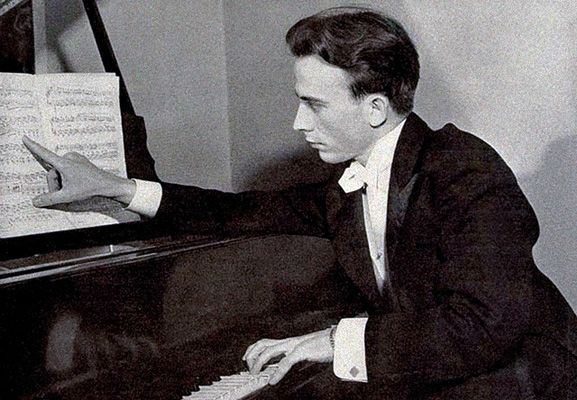
Denis Matthews, Jacques Abram.
Source: EMI Classics CD (My rip!)
Formats: FLAC(RAR), ADD Mono/Stereo, mp3(320)
File Sizes: 311 MB / 156 MB
The FLAC link has now expired. No more requests for this, please!
mp3 version – https://mega.co.nz/#!7AIiWQKB!M1fthftTV3dRUjRMS2KJHwt2_DGt4gyw9UlZgfE aT0I
Enjoy! Don’t share! Buy the original! And please click on "Like" if you enjoyed this upload! 🙂
Merry Christmas, wimpel69! Bless you for all wonderful gifts you’ve bestowed upon us all.
———- Post added at 02:47 PM ———- Previous post was at 02:29 PM ———-
No.269
Today, French late romantic composer Edouard Lalo (1823-1892) is best remembered for the
Symphonie Espagnole, for violin obbligato and orchestra (and, maybe, the Cello Concerto).
He did, however, also compose two very fine "regular" violin concertos, the Concerto en fa, op.20
and the Concerto Russe, op.29. They lay dormant for many, many years, until Jean-Pierre
Wallez revived them for this album by the PG label. At the time, these were the premiere
recordings for both pieces; unfortunately, the liner notes fail to specify exactly at which time. This recording
received a Grand Prix de l’Acad???mie du Disc Francais.
The Violin Concerto in F is engagingly songful and ought to be better known, but the real find
is the Concerto Russe, in essence a sister work to the Symphonie espagnole, but with Slavic
rather than sultry Spanish inspiration. The "Intermezzo" has witty offbeat comments from the timpani
and there is a sparkling finale introducing two more striking ideas.
Music Composed by Eduard Lalo
Played by the Orchestre Philharmonique de Radio France
With Jean-Pierre Wallez (violin)
Conducted by Kazuhiro Koizumi
"Jean-Pierrre Wallez (born March 18, 1939) is a French violinist and conductor.
He was the first solo-violin of the Orchestre de Paris from 1975 to 1977. At the same time, from
1968 to 1983, he was the leader of the Ensemble Instrumental de France, touring extensively.
While doing this, he continued his career as a soloist; he played with the Royal Concertgebouw
Orchestra, Bernard Haitink, the Orchestre de Paris, Daniel Barenboim and Zubin Mehta, the
Sydney Symphony Orchestra, the Helsinki Philharmonic Orchestra, the New Japan Philharmonic,
and the NHK Symphony Orchestra in Tokyo. He also played with Arturo Benedetti Michelangeli,
Isaac Stern, Henryk Szeryng, Jean-Pierre Rampal, Mstislav Rostropovich, Galina Vishnevskaya,
Aldo Ciccolini, Paul Badura-Skoda, and Pierre Barbizet.
Wallez studied conducting with Pierre Dervaux and then with Sergiu Celibidache. He was
the artistic director of the Festival de Musique d’Albi from its creation in 1974 to its end in
1990. Most of the productions were recorded and broadcast on television. In 1978, Wallez
created the chamber orchestra Ensemble orchestral de Paris which toured Europe, South
America, and Japan. The concerts included Bach, contemporary composers, symphonic works,
chamber music, and a work with Pierre Boulez and the Ensemble InterContemporain.
In 1986, Wallez left the Ensemble Orchestral de Paris. He became the first guest conductor of
the Orchestre Royal de Chambre de Wallonie in Belgium from 1987 to 1990, and of the
S???nderjyllands Symfoniorkester in Denmark from 1990 to 1993. He was the musical director
of the ???rebro Chamber Orchestra in Sweden from 1992 to 1995. From 1994 to the end of 2000,
he was the principal guest conductor of the Orchestra Ensemble Kanazawa in Japan. In 1996,
he was also the first guest conductor of the Pasdeloup Orchestra in Paris. His repertoire
includes operas by Mozart, Rossini, Bizet, Berlioz, Gounod, Britten, Offenbach.
Wallez recorded for Decca, EMI, CBS, Erato, Forlane, Ades and received awards for them,
including the Grand Prix du Disque for the violin concertos by Jean-Marie Leclair, the Russian
Concerto and the Concerto in F by ???douard Lalo, and a Gold Record for the Vivaldi Four Seasons
with the Ensemble orchestral de Paris."
Source: P&G Records CD (My rip!)
Formats: FLAC(RAR), ADD Stereo, mp3(320)
File Sizes: 264 MB / 134 MB
The FLAC link has now expired. No more requests for this, please!
mp3 version – https://mega.co.nz/#!GIB30QTZ!1SRH4vL_aRkhtN3FSksQEXycPGSQz5aPVQHDDyV p564
Enjoy! Don’t share! Buy the original! And please click on "Like" if you enjoyed this upload! 🙂
Emil Tabakov (*1947) graduated from the Bulgarian State Music Academy in conducting and
double-bass in 1974 and received his diploma in composition in 1978. He worked as conductor
of the Ruse Philharmonic between the years 1976 and 1979. From 1979 to 1987 he was
the music director and conductor of the Sofia Soloists Chamber Orchestra. He was appointed
conductor of the Sofia Philharmonic in 1985 where he continued until 2000 first as principal
conductor then as music director and conductor. During the same period Tabakov worked as
the music director and conductor of the Belgrade Philharmonic. Starting in 1999, he was the
artistic director of the New Year’s Music Festival in Sofia for six years. Tabakov served as
Minister of Culture for Bulgaria in 1997. Emil Tabakov was music director of the Bilkent
Symphony Orchestra between 2002 and 2008. Tabakov successfully combines the roles
of conductor and composer.
His Concerto for Two Flutes and Orchestra, written in 2000 at the request of the French flautist
Patrick Gallois, to whom it is dedicated, has been performed with great success in Turkey, Russia,
Mexico and Bulgaria. Its exotic scoring includes maracas, tambourine and the tamburo bulgaro. The
creation of the Concerto for Piano and Orchestra was prompted by the Rotary Club of Adana in
Turkey to celebrate the anniversary of the Turkish army, founded in 209 B.C. A virtuosic work in the
traditional three-movement sequence of the classical concerto, the Concerto is scored for a large
symphony orchestra and has already attracted several eminent pianists.
Music Composed and Conducted by Emil Tabakov
Played by the Bilkent Symphony Orchestra
With Patrick Gallois (flute) & Philippe Bernod (flute)
And Jean-Philippe Collard (piano)
"The Concerto for Two Flutes (2000) is in two lengthy movements. The first contrasts two
languorous themes: a sad chromatic melody over a sustained, quiet tall-chord harmony and
a simple, rising diatonic figure given in canon. Both alternate repeatedly for 15 minutes. The
finale is a lively Eastern dance with bumptious maracas, tambourines, and a tamburo bulgaro.
It’s simplistic and repetitious, and general audiences will find it a lot of fun. The stretto ending
should have the crowd going wild.
The Piano Concerto (2003) was written to celebrate the anniversary of the Turkish army
(founded 209 BC), which accounts for the fanfare motive that opens the piece. The mildly
exotic and jovially splashy atmosphere is reminiscent of Khachaturian, with some Bulgarian
Bizet thrown in for good measure. The sleepy slow movement extends the exotica idea into
ritualistic gongs, pipes, reeds, harps, chant, and birdies. The virtuoso finale hits the repeated
note button, makes a pass at Rimsky, and flies to the requisite standing-ovation climax.
"The music speaks in a contemporary language without startling the listener or making
him feel unprepared", as the notes put it. Well, I wasn’t startled, and I didn’t feel unprepared.
If that’s what you’re looking for, go for it. Soloists are excellent."
American Record Guide
Source: Naxos CD (My rip!)
Formats: FLAC(RAR), DDD Stereo, mp3(320)
File Sizes: 225 MB / 140 MB (FLAC version incl. cover & booklet)
The FLAC link has now expired. No more requests for this, please!
mp3 version – https://mega.co.nz/#!KAoR1KLJ!EoNwBS8Rb4r4EwM0flqxuTsIMFHjHAPnNmwnp1F CGW4
Enjoy! Don’t share! Buy the original! And please click on "Like" if you enjoyed this upload! 🙂
Ermanno Wolf-Ferrari, born on 12 January 1876, the son of a German painter and his Italian wife,
was throughout his life divided between the two cultures, uniting in himself the deep-felt seriousness of
the German and the cheerful calmness of the Italian, bel canto and counterpoint, philosophy and grace.
He spent his life between Munich and Venice, in Germany longing for Italy and vice versa. This geographical
division was also the foundation of his creative existence. It was very early in his life that Wolf-Ferrari
enjoyed great cultural success, winning international fame with his choral work La vita nuova and the
opera Le donne curiose. Already at the age of nineteen he was appointed choral director in Milan
and at 27 he became, for his life-time, director of the Liceo Benedetto Marcello in Venice. After six years
he ended his contract to settle in Munich, where he lived and worked for the next 35 years, in complete
seclusion, seldom yielding to the light of publicity. The first World War brought about a great crisis in his
life, resulting in a creative break of several years. After that came a new impulse to compose and Wolf-
Ferrari produced one masterpiece after another. In 1939 he accepted appointment to the Salzburg
Mozarteum. His last years were clouded by the second World War and its consequences. Suffering
from heart disease, he dedicated himself strongly again to his old love, chamber music. He died of
a heart attack in Venice on 21 January 1948.
The Violin Concerto’s opening rustling accompanying strings remind one of the opening of the
Sibelius Concerto and the almost immediate entry of the soloist solidifies the impression. Thereafter
there is one lovely and richly argued melodic statement after another, with structural points marked by
classical rigour. There are strong hints of Bruch in the broken passagework and the melodic generosity.
The Romanza probably began as a 16-minute homage to Mozart but Wolf-Ferrari sensibly halved its
length and imbued it with a charming rococo feel and a pensive minor section, even a Richard Strauss
moment of two – not inappropriate really as Wolf-Ferrari spent so much of his life in Munich.
The third movement is a virtuosic Improvviso, reminiscent of stormy late-nineteenth century violin
virtuosity. The finale is full of high spirits, and its quasi-operatic, almost buffo quality is strongly
audible. Tchaikovsky is certainly recalled, Hubay and his confreres too – indeed Rossinian high
jinx are never far away.
The 1894 Serenade is an attractive early work, very light-hearted and genially warm.
Mendelssohn and Rheinberger are the models – the latter especially in the fugal finale. Wolf-Ferrari’s
care over oppositional string writing is charmingly evident.
Music Composed by Ermanno Wolf-Ferrari
Played by the HR Sinfonieorchester
With Ulf Hoelscher (violin)
Conducted by Alun Francis
"The Violin Concerto was written for the Wisconsin-born American violinist Guila Bustab???
"con ammirazione". The excellent notes by Herbert Rosendorfer suggest that the composer
was in love with Bustab??? but details seem sketchy.
The first movement opens in hushed magic with the violin quietly intoning a Hungarian-
inflected tune over whisper-rustling strings. The second movement has (Richard) Straussian
moments. The final Beethovenian movement is the longest of the four at 13 minutes.
This is a most attractive, fresh and rounded work. Ulf Hoelscher is excellent, his playing
full of fantasy, brilliance and poetry."
Classical Music on the Web
Source: CPO Classics CD (My rip!)
Formats: FLAC(RAR), DDD Stereo, mp3(320)
File Sizes: 284 MB / 141 MB
The FLAC link has now expired. No more requests for this, please!
mp3 version – https://mega.co.nz/#!qBgEzZ4J!KftW7xBJgV3L4oK6qeY4ENgtTdw3Wy8nGU0nhw9 Azzs
Enjoy! Don’t share! Buy the original! And please click on "Like" if you enjoyed this upload! 🙂
The Royal Liverpool Philharmonic Orchestra’s series on AVIE marks its eighth release with this
new recording of works derived from the Jewish tradition. The young principal cello of the orchestra, Jonathan
Aasgaard gives fine performances of two seminal works from this genre – Bloch’s Hebraic Rhapsody "Schelomo"
and Bruch’s Kol Nidrei. David Diamond’s Kaddish has been eagerly taken up by many cellists including
Janos Starker. The CD is completed by two premiere recordings: Gerard Schwarz’ In Memoriam and
Jonathan Aasgaard’s own arrangement for cello and strings of Bloch’s Prayer from the suite From Jewish Life.
Music composed by (see above)
Played by the Royal Liverpool Philharmonic Orchestra
With Jonathan Aasgaard (cello)
Conducted by Gerard Schwarz
"Although titled “From Jewish Life” this beautifully played programme does, I fear, give a
rather one-sided picture of what Jewish life is about. The elegiac element predominates save
for the ornately gilded rage that from time to time erupts in the pages of Schelomo. Jonathan
Aasgaard is principal cellist of the Royal Liverpool Philharmonic and focuses the inwardly musing
aspect of Schelomo’s narrative virtually to perfection. His warm, velvety tone is nicely
complemented by an assertive but never hysterical account of the orchestral score under
Gerard Schwarz.
But it’s Schwarz’s own moving In memoriam (which honours the memory of the Russian-born
cellist David Tonkonogui) that finds Aasgaard plumbing the depths, a touching piece superbly
performed: Aasgaard’s tone and phrasing really speak to you. Schwarz has always flown a flag
for the music of David Diamond; his records of the Diamond symphonies were among the crowns
of the Delos catalogue (most are now happily available on Naxos) and his handling of Diamond’s
inwardly contrasting Kaddish – a wordless setting of the ancient Hebrew prayer for the dead –
reaffirms his understanding of Diamond’s idiom.
Aasgaard again bows a rich and fluid line, as he does in Bruch’s Kol Nidrei. Listening to the
work’s opening bars, like a curtain slowly rising, reminded me of how utterly lovely this piece is,
certainly in the hands of someone who appreciates its simplicity and beauty. Bloch’s ruminative
“Prayer” is an added bonus. Excellent sound, and an enthusiastic recommendation, but I would
advise listening to just one or two pieces at time. That way each work retains its full quota
of expressive power."
Gramophone
Source: AVIE Records CD (My rip!)
Formats: FLAC(RAR), DDD Stereo, mp3(320)
File Sizes: 196 MB / 135 MB
The FLAC link has now expired. No more requests for this, please!
mp3 version – https://mega.co.nz/#!2dZg2brb!6nvcAut9JesZ6x_EFlSzjLDjl9YDEJXwpPlKmuA Dx3Q
Enjoy! Don’t share! Buy the original! And please click on "Like" if you enjoyed this upload! 🙂
Ellen Taaffe Zwilich (*1939), who is represented here by two widely divergent compositions, has
earned an international reputation for producing music that is at the same time recognisable, yet different.
Like the great masters of bygone times, she creates works “with fingerprints”, pieces that are peculiarly
American and that combine craft and inspiration in reflecting the composer’s optimistic and humanistic
spirit. Encyclopedia entries do not often make judgements or assessments, but the Eighth Edition of
Nicolas Slonimisky’s Baker’s Biographical Dictionary of Musicians effectively describes Zwilich’s position
among contemporary composers: “There are not many composers in the modern world who possess
the lucky combination of writing music of substance and at the same time exercising an immediate
appeal to mixed audiences. Ravel was one, and so in a quite different way, were Bart???k and Prokofiev.
Zwilich offers this happy combination of purely technical excellence and a distinct power of communication,
while a poetic element pervades the melody, harmony, and counterpoint of her creations.”
About the Violin Concerto, Zwilich writes in a programme note: “For me, the soul of the violin
shines through in the repertoire it has inspired, revealing a nature both sensuous and intellectual.
While the tremendous athleticism of the violin can sometimes overshadow its deeper nature, the
violin has shown itself capable of expressing the most profound aspects of music. And this is what
drew me, as a young composer, to play the violin.” For Zwilich, it is “important that the orchestra
play a crucial r???le in the dialogue, but I also want the violin to be free to be expressive in its mezzo
piano range. So, achieving good balances in a rich musical setting is a major challenge in writing
a violin concerto.”
Rituals is in four movements, each issuing from a ritual associated with percussion, but
with the orchestral interaction providing an essential element in the musical form. I. Invocation
alludes to the traditions of invoking the spirit of the instruments, or the gods, or the ancestors
before performing. II. Ambulation moves from a processional through march and dance to fantasy
based on all three. III. Remembrances alludes to traditions of memorializing. IV. Contests
progresses from friendly competition — games, contests — to a suggestion of a battle of
“big band” drummers, to warlike exchanges.
Music Compsoed by Ellen Taaffe Zwilich
Played by the Saarbr???cken Radio Symphony & Nexus/Iris Chamber Orchestras
With Pamela Frank (violin)
Conducted by Michael Stern
"Ellen Taaffe Zwilich’s 1998 Violin Concerto is a marvelous work that communicates immediately
to the heart, yet at the same time stimulates the intellect. It begins with an excited shimmer in
the orchestra’s high register, introducing the violin’s arching, wide-interval theme. The serene,
ecstatic character of the violin writing is reminiscent of Szymanowski, though throughout the score
there also are hints of Prokofiev and Bart???k. That said, this is undeniably Zwilich’s music, and the
fact that this work is a product of our neo-romantic, post-minimalist era is evident in the two
shattering orchestral crescendos that frame the first movement. The second movement is based
on Bach’s Chaconne in D minor, here expanded and augmented by modern harmonies and
jazzy ornamentations. Jazz also figures strongly in the finale where, like Bernstein before her,
Zwilich seamlessly incorporates its stylistic elements into the orchestral fabric. None of this
poses any problem for Pamela Frank, who gives a masterful and passionate performance of
the entire work, handsomely accompanied by Michael Stern and the Saarbr???cken Radio
Symphony Orchestra.
Rituals (2002) is a celebration of percussion as used in various world cultures, and is so
different a work from the violin concerto that it hardly sounds from the pen of the same
composer. Nevertheless, it’s a total delight, from the opening Invocations, with its stunning
pageantry of bells, gongs, and cymbals, to the dancing Ambulation, to the electrifying
Contests, where groups of percussionists engage in a thrilling musical combat, set against
an orchestral backdrop of increasingly alarming freight-train chords. Under Michael
Stern’s leadership, NEXUS/IRIS Chamber Orchestra members play magnificently as they
build to a frenzied, exhilarating conclusion. Naxos’ recording reproduces all of this with
satisfying presence and impact, although the Concerto, which was taped live for
broadcast, has noticeably less warmth and depth. The bottom line: This is one highly
enjoyable disc, enthusiastically recommended!."
Classics Today
Source: Naxos CD (My rip!)
Formats: FLAC(RAR), DDD Stereo, mp3(320)
File Sizes: 255 MB / 120 MB (FLAC version incl. cover & booklet)
The FLAC link has now expired. No more requests for this, please!
mp3 version – https://mega.co.nz/#!jUR0iLSK!KhrOgo495xaVpoSaazops6f7GDCOZBzouNSBOJF hvXo
Enjoy! Don’t share! Buy the original! And please click on "Like" if you enjoyed this upload! 🙂
Written in 1951, Othmar Schoeck’s (1886-1957) Horn Concerto reflects the increasing transparency of
scoring that the composer adopted though there was no diminishment in his lyricism and sense of fun.
The model is broadly Straussian, virtuosic and challenging, but lyrical. There are many opportunities
for lyricism and display. The second movement in particularly effective – colour and vibrancy to the fore
and a real romanticism as well, topped by a lighthearted hunting Rondo finale.
Ethel Smyth (1858-1944) was a woman of formidable character. Whatever she did, whether composing
music, writing books, falling in love or allying herself with the suffragette movement, she did with unstoppable
passion, but her colourful life and reputation have tended to overshadow the thing she cared about most –
her music. Smyth had been sent to jail after lobbing a rock through the window of the Secretary of State for
the Colonies, Lewis Harcourt, who had made a condescending remark about women. Smyth had earnestly
embraced the Votes for Women cause. She was a friend of Mrs Pankhurst, and wrote the March of the Women,
which became the suffragettes’ rallying cry. The Concerto for Violin, Horn and Orchestra is one of
her major orchestral works, rooted firmly in the Romantic tradition.
Charles Koechlin arranged his 1925 Horn Sonata as his Po???me for Horn and Orchestra in 1927,
in which guise it was heard at a Straram Concert, conducted by Walther Straram, with the horn part taken by
???douard Vuillermoz, on March 24, 1927. This version has remained unpublished. Koechlin noted that while
"not a descriptive composition…the first two movements were set in the atmosphere of the Romantic forest
of Weber or…Heine," and that the final movement possessed a "certain ambiance marine." Despite its long
gestation and cunning composition, the Po???me is one of Koechlin’s most spontaneously attractive works –
the melodic material (derived from the pastoral opening phrase) is engagingly fresh and never
loses its magic.
Music by Othmar Schoeck, Ethel Smyth & Charles Koechlin
Played by the Radio-Philharmonie Hannover des NDR
With Marie-Luise Neunecker (horn)
And Saschko Gawriloff (violin)
Conducted by Uri Mayer
"The established horn concerto repertoire is not that large, so this disc probably
doubles it. These three very different but intriguing rarities make for rewarding
listening, not least because of the mellifluous tone that Neunecker draws from
her instrument."
BBC Music Magazine
Source: Koch Schwann CD (My rip!)
Formats: FLAC(RAR), DDD Stereo, mp3(320)
File Sizes: 229 MB / 133 MB
The FLAC link has now expired. No more requests for this, please!
mp3 version – https://mega.co.nz/#!PI50GCxK!P1DCj9u-wgg8tJ6QN35QyojjwATDC6zDwUYsQ0e-lBA
Enjoy! Don’t share! Buy the original! And please click on "Like" if you enjoyed this upload! 🙂
Alexina Louie (*1949) is one of the brightest and most exciting composing talents to come out of Canada
the late 20th century. Her music is full of the sounds of her Chinese heritage. She was born of second
generation Canadians of Chinese descent, and she uses a full, rich and colourful palette in her works.
Her language is modern, but one which speaks readily to an audience. The Piano Concerto is a big
virtuoso work, the piano taking the lead and the orchestra supplying a varied tapestry of sound to highlight
the piano’s thoughts. There’s a lot going on in this work and it’s one of those pieces which really repay
repeated hearings. The lyricism of the work might not be immediately apparent but it is full of tunes,
and Louie works them out with a skill and grace which are typical of her music.
Violet Archer’s (1913-2000) Piano Concerto No.1 comes as a shock after the hothouse of Louie’s work for
here is very much a divertissement of a piece, the outer movements being sparkling and vivacious
surrounding a rather more severe and serious slow movement. The ending is pure farce with big
gestures, ??? la virtuoso vehicle being mocked and over-done.
Larysa Kuzumenko’s (*1956) Piano Concerto begins in a very uncompromising manner with
dissonance and a bravura cadenza for the soloist. That done, it turns into a neo-classical romp which,
oddly, is reminiscent of Arthur Bliss’s Piano Concerto. The central movement changes style into a frozen
northern landscape such as one which we have heard from Vagn Holmboe. The finale is a fast race
and reminds one of Alan Rawsthorne.
Music by (see above)
Played by the National Arts Centre, CBC Vancouver & Toronto Symphony Orchestras
With Christina Petrowska Quilico (piano)
Conducted by Alex Pauk, John Eliot Gardiner & Jukka-Pekka Saraste
"I review another of Quilico’s Centrediscs releases in this issue (Ann Southam’s Pond Life), and
what I wrote there about her attention to tonal color also applies here. These three concertos
also allow her to show off her pianistic muscles, however, and she has plenty to show off. Her
playing is as tough and assertive as the repertoire). This is a fine addition to her discography, and
I hope we will continue to hear much more from this pianist-in both familiar and unfamiliar
repertoire-in coming years. Recommended!"
Fanfare
Source: Centredisques CD (My rip!)
Formats: FLAC(RAR), DDD Stereo, mp3(320)
File Sizes: 339 MB / 179 MB (FLAC version incl. artwork & pianist bio)
The FLAC link has now expired. No more requests for this, please!
mp3 version – https://mega.co.nz/#!SZAniDBD!pyXDvIgmUuaieum4jny7zeO5krKUlDU6x0uNJZ-HY7A
Enjoy! Don’t share! Buy the original! And please click on "Like" if you enjoyed this upload! 🙂
Federico Ibarra Groth was born in Mexico City in 1946. He completed a degree in Composition at the
Escuela Nacional de M???sica at UNAM. In 1971, Radio Universidad and Radio Televisi???n Francesa awarded him
with a scholarship to continue his studies in Paris, and to attend a course in composition in Santiago de
Compostela, Spain, which he did in 1975. In March, 2006, he received his doctorate from the Universidad
Complutense of Madrid. His work as a composer includes works in many genres: operas, ballets, symphonies,
three concertos: for piano, for cello and for violin, sonatas for solo piano, for violin and for cello, cantatas,
songs, other works written for various instrumental combinations, and lyrics and music for theatre.
A native of Mexico City, Samuel Zyman (*1956) attended the National Autonomous University of
Mexico, where he earned an M.D., and Juilliard, where he earned both master’s and doctoral degrees in
composition. He studied with Stanley Wolfe, Roger Sessions, and David Diamond. He is currently a member
of the Juilliard faculty. Zyman draws upon both his Jewish heritage and his own Mexican nationality.
However, most of his music pursues an international, classically-oriented neo-romanticism, characterized
by a driving rhythmic vitality, as well by as a haunting lyricism. Mr. Zyman’s music is characterized by
intense and vigorous rhythmic energy, expressive lyricism, and the frequent use of near-jazzy imitative
counterpoint.
Music by Federico Ibarra, Samuel Zyman & Astor Piazzolla
Played by The National Symphony Orchestra of Mexico
With Carlos Prieto (cello)
Conducted by Enrique Arturo Diemecke
"This recording was recorded over 22 years ago yet remains relevant today. The compositions
are exceptional. Starting with Concerto for Cello and Orchestra by Federico Ibarra, and
"Concerto for Cello and Orchestra" by Samuel Zyman. Both works are modern. Brilliant is
the only word that come to mind. The "Grand Tango" for cello and Piano by Astor Piazolla.
The "Grand Tango," piece serves as an appetizer to the main course from Maestro Prieto’s
cello. Maestro Prieto articulates the Grand Tango, note to note. Pausing, sustaining his bow
as he shifts his bow in dramatic precision of a tango dancer. His bow delivers. Each note
arches in tango rhythms. Le "Grand Tango" is a masterful piece of music, with a equally
masterful performance from Maestro Prieto and Edison Quintana at the piano!
We need to hear more of the writings of Federico Ibarra, Samuel Zyman and Astor Piazolla.
Ibarra and Zyman’s orchestrations are particularly dense, modern, and deliberate.
Reminiscence of Stravinsky, or Shoenberg’s explosive expressive tonal approaches.
The orchestrations are particularly appealing. Such density is equal to that of Tchaikovsky
or Elgar. Both composers use of rhythm, and modern harmony make for brilliant duets
between Maestro Prieto and the National Symphony Orchestra of Mexico under the
direction of Enrique Diemecke on Samuel Zyman’s "Concerto for Cello and Orchestra".
Amazon Reviewer

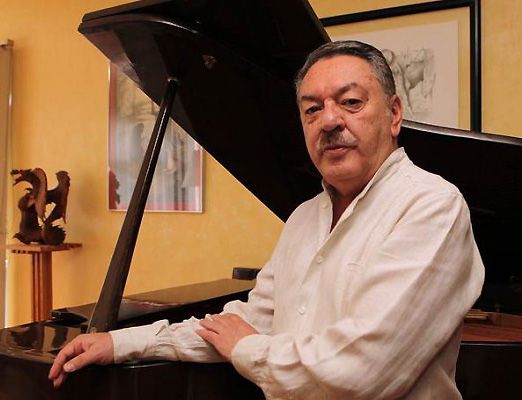
Samuel Zyman, Federico Ibarra.
Source: IMP Classics/Pickwick CD (My rip!)
Formats: FLAC(RAR), DDD Stereo, mp3(320)
File Sizes: 232 MB / 143 MB
The FLAC link has now expired. No more requests for this, please!
mp3 version – https://mega.co.nz/#!vM4XwLwK!AP2035jsHGsoT3XfxvFO1GqcqZnxxYLxH_ik1Fy azRE
Enjoy! Don’t share! Buy the original! And please click on "Like" if you enjoyed this upload! 🙂
Fernando Lopes Gra???a (1906-1994), or Lopes-Gra???a as he himself used to write, to preserve
his two family names, was one of the most prolific Portuguese composers of the twentieth century,
with compositions encompassing a wide range of genres. The most relevant aspect of his musical style
is, however, his endeavour to use Portuguese folk-music as a medium to forge his personal style, very
much like B???la Bart???k, although some of his works are very cosmopolitan in style and approach. As a
pianist Lopes-Gra???a regularly accompanied singers in performances of his own works for voice and
piano, and as a conductor he dedicated a great deal of his time to conducting the chorus from the
Academia de Amadores de M???sica in Lisbon, for which he arranged a great deal of Portuguese
folk-songs. All his works are characterized by a high degree of technical perfection.
These influences are potent in the Piano Concerto No.1 of 1940, a highly personal, atmospheric
and superbly orchestrated work imbued with bittersweet romanticism. Though the Iberian Baroque
permeates its finale, the Piano Concerto No.2 is a much darker and more ambivalent work,
marking a new milestone in his development.
Music Composed by Fernando Lopes-Gra???a
Played by the Orquestra Sinf???nica do Porto – Casa da M???sica
With Eldar Nebolsin (piano)
Conducted by Matthias Bamert
"The influence of folk music is fairly clearly heard in the First Piano Concerto completed in 1940
and dedicated to Jos??? Vianna da Motta with whom Lopes-Gra???a studied in Lisbon. His other
teacher then was Luis de Freitas Branco. Later Lopes-Gra???a travelled to Paris and studied a while
with Charles Koechlin. The outer movements of this fairly substantial work are clearly Iberian in
tone with echoes of de Falla in the first movement, for example. At times there’s some added
dissonance inherited from Milhaud, but the composer’s voice is personal enough to obliterate
such passing influences. The real gem of the piece is the beautifully atmospheric second
movement which – to my mind – may be one of the most poetic pieces of music that Lopes-
Gra???a ever penned. It’s still full of tension as the quiet, nocturnal mood of the opening is
progressively disturbed by some unsettling dissonance and a stringency that is eventually
released in the conclusion of the movement, a varied restatement of the opening.
The Second Piano Concerto was completed in 1950, revised in 1952 although there seems
to be some discrepancy about the time the second version was written: 1952 or 1954. It
was revised again in 1971 which is the version heard here. From the very beginning the mood
is at once sombre and dramatic. Again Bart???k might have been a model although Lopes-Gra???a
still remains his own man throughout. The music of the first movement is more percussive
while relying on ostinatos and repeated notes. It’s obviously less exuberant than the First
Piano Concerto while retaining some Iberian flavour, albeit in a less obvious way than in the
earlier work. The slow movement subtitled Evoca??????o de Ravel pays sincere homage to the
French composer. The long unaccompanied theme heard at the outset of the movement is
clearly reminiscent of the slow movement of Ravel’s Concerto in G though this is neither
parody nor plagiarism. The orchestra progressively joins in with increasing tension but the
movement eventually ends with what Ivan Moody describes as “a strange evocative ghost
of a waltz for the piano”. The concluding movement is a rather heavy-threading Toccata
with some darker episodes and it ends rather abruptly.
This disc is the second one entirely devoted to Lopes-Gra???a’s music released by Naxos
(see review). Both give cause for reassessment of Lopes-Gra???a’s achievement which
should definitely not be overlooked. Other substantial works still cry out to be recorded
anew or simply recorded. It is to be hoped that this Naxos CD will encourage further
recordings of this never indifferent music."
Musicweb
Source: Naxos CD (My rip!)
Formats: FLAC(RAR), DDD Stereo, mp3(320)
File Sizes: 245 MB / 126 MB (FLAC version incl. cover & liner notes)
The FLAC link has now expired. No more requests for this, please!
mp3 version – https://mega.co.nz/#!7ARiQaIY!iUvXIujobCeROWfmL4xDWEbXMfrUR19-JcF4xOX7oM4
Enjoy! Don’t share! Buy the original! And please click on "Like" if you enjoyed this upload! 🙂
Baron Fr???d???ric Alfred d’Erlanger (29 May 1868 in Paris – 23 April 1943 in London) was an Anglo-French composer,
banker and patron of the arts. His father, Baron Frederic Emile d’Erlanger, was a German, while his mother, Mathilde
was an American. One of four sons, his father was the head of a French banking house. He began his musical studies
in Paris under Anselm Ehmant, his only teacher. His first work, a book of songs, was published when d’Erlanger was
20 years of age. Shortly afterwards, in 1886, he moved to London with his elder brother, Emile d’Erlanger, to work as
a banker, for the private banking firm that his father owned. Both d’Erlanger and his brother became naturalised
Englishmen. His compositions include works of all kinds, notably the operas, Jehan de Saintr???, In???s Menso, Tess,
and No???l, produced at the Paris Op???ra-Comique on 28 December 1910.
D’Erlanger’s romantic Piano Concerto, "Concerto Symphonique", dates from 1921. Brilliantly played by
Victor Sangiorgio – all flashing pianism and sumptuous orchestration – it will appeal to lovers of the romantic
concerto. It is coupled with two delectable shorter works for cello and orchestra: the Ballade (1926) and the
Andante Symphonique (1903). Beautifully projected by cellist Guy Johnston, one immediately wonders why
we had not heard them before. Similarly romantic is d’Erlanger’s comparatively small output of orchestral music,
which is well represented here by Sursum Corda! (1919) and the Pr???lude Romantique (1934). This is a
gorgeous survey of a deserving romantic composer.
Music Composed by Fr???d???ric d’Erlanger
Played by the BBC Concert Orchestra
With Victor Sangiorgio (piano) & Guy Johnston (cello)
Conducted by Johannes Wildner
"German father, American mother, born in Paris, naturalised British (he lived most of his life
in London), Baron Fr???d???ric d’Erlanger (1868-1943) combined the professions of banker and
composer. An intriguing character – and, at a stroke, this disc more than quadruples all extant
recordings of his music. Fritz Kreisler gave the British premiere of his Violin Concerto; Benno
Moiseiwitsch championed the Piano Concerto heard here. D’Erlanger, as Lewis Foreman
observes in his excellent booklet, clearly established a considerable musical presence in his
lifetime.
The works here date from 1903 (Andante symphonique) to 1934 (Pr???lude romantique) but
could have come from any time in the previous half-century. But if his harmonic language
is conservative, d’Erlanger emerges as an extremely accomplished, agreeably undemanding
composer whose orchestral pieces hover somewhere between high-class Ket???lbey and
low-grade Elgar. The two cello pieces (Guy Johnston the eloquent soloist) are well worth
reviving.
The Piano Concerto is the meatiest offering here with the admirable Victor Sangiorgio,
increasingly the Michael Ponti of Dutton, doing the honours in splendid style. He has
more than his fair share of work during the four movements. The first of these is like a
mountain trek with a series of false summits, a succession of surging climaxes reminding
one of Marx’s Romantic Concerto, with a pretty secondary subject that threatens to
break into Liszt’s Liebestraum No 3. The Scherzo ??? la Litolff would have fitted on to one
side of a 10in 78, while the melodic movement flows easily into the arresting finale. A
superb recording (Watford Colosseum) with Johannes Wildner conducting the BBC
Concert Orchestra in the kind of music they do best."
Gramophone
Source: Dutton Epoch CD (My rip!)
Formats: FLAC(RAR), DDD Stereo, mp3(320)
File Sizes: 361 MB / 208 MB (FLAC version incl. covers & booklet)
The FLAC link has now expired. No more requests for this, please!
mp3 version – https://mega.co.nz/#!OFYTTRoJ!IYKPqjw89WkNcrF4fLb9Lfpo4hSqfyhkNmNGMxa gwIY
Enjoy! Don’t share! Buy the original! And please click on "Like" if you enjoyed this upload! 🙂
Frederick Delius wrote his Double Concerto while living at Grez-sur-Loing, during the fruitful
pre-World War I period many consider to be the pinnacle of his career as a composer. A number of works
written during this time were clearly influenced by his riverside home and its surroundings, as suggested
by the titles of such orchestral pieces as Summer Night on the River and In a Summer Garden. Widely
renowned as a pianist, Delius conceived most of his material while improvising at the keyboard, with little
advance planning of structure and harmonic direction. With that in mind, it is remarkable that he chose
to write a concerto for two instruments so difficult to orchestrate clearly against the tutti and each other;
previously, only Brahms had successfully written a concerto for both cello and violin. The concerto is
performed without a break, though it can be roughly divided into three sections. In spite of the opening
tranquillo passage that recurs at the close of the piece, the concerto is not bound to a strict form in the
classical sense. Instead, it is an expressive, impressionistic flow of ideas that are introduced and explored
in a more linear, chronological sense, with little purely harmonic development of earlier passages.
Much of the contrast in both the opening and closing sections of the concerto stems from varying
degrees of emotional tension, from the passionate melodies to the more restrained, repetitive
developmental passages.
In Delius’ larger orchestral works, of which the Cello Concerto is exemplary, this is no more than
an ABA design. Delius composed the concerto between March and May 1921, spurred by the interest
of cellist Beatrice Harrison, though the premiere was given in Frankfurt by Russian cellist Alexander
Barjansky on January 30, 1921. As Fenby noted, "…Delius was drawn in later years to the problem
of developing lyrical line in terms of extended melody" — whose triumphs and pitfalls render the
Cello Concerto, at length, equivocal.
Delius lived in Paris from 1880 almost up to the end of the century, and was an active member
of the community of artists, musicians and writers living on the West Bank of the Seine. The work,
described by his friend Philip Hestletine as "a corner of his own soul, a chapter of memories", was
written at the composer’s house in the French countryside. To remind himself of the moods the city
Delius made rough notes on his first sketches — "mysterious city … city of pleasures … of music
and dancing". Paris, The Song of a Great City, is scored for large orchesta, used to opulent
effect. The slow opening depicting dusk enfolding the city is followed by more urban sounds —
street cries and (perhaps to the puzzlement of todays Parisians!) the piping of a goat-herd.
After dark the scene livens as night-life starts, quieter passages suggesting the whispered
conversations of lovers. The music of cafes and music-halls is heard. As dawn breaks the voice
of the city is gradually stilled.
Music Composed by Frederick Delius
Played by the Royal Liverpool Philharmonic Orchestra
With Tasmin Little (violin) & Raphael Wallfisch (cello)
Conducted by Sir Charles Mackerras
"Even though ‘Paris’ is an early Delius work we hear all his trademark musical qualities.
This is a subtle impressionist tone picture, generally contemplative with atmospheric
tranquillity interspersed with exciting episodes of bold emotions. Sir Charles Mackerras
on this CFP re-release seems to bring out Delius’s early Straussian influences particularly
in the forte passages, turning the impressionist atmosphere on and off throughout the
work. The sound quality is more than acceptable with a wide dynamic range.
Delius was inspired to write the double concerto after hearing a 1914 performance of
the Brahms concerto for violin and cello played by the young virtuoso sisters May
and Beatrice Harrison, to whom Delius dedicated the work and consulted on its
composition. This is one of Delius’s four concertos and they have all been described
more as rhapsodies owing to their concise duration and continuous single movement
structure. The double concerto displays much of the composer’s individuality,
comprising many differing melodic ideas presented in a rather agitated manner,
yet the work has an appealing robustness and remains one of my favourite Delius
works. The CFP soloists Tasmin Little and Raphael Wallfisch give a warm and
thoroughly professional performance with just the correct amount of emotional
sensitivity without any temptation to wallow in the lush passages. Sir Charles
Mackerras is a passionate Delian and directs the RLPO with just a shade more
urgency than Meredith Davies and his RPO.
The Cello Concerto is a predominantly pastoral and dreamy work, not lacking
however in invention, although some critics have commented on the rather
meandering nature of the work. Sir Charles Mackerras the conductor and the
soloist have followed Delius’s intention by not playing the independent final
section as slow as it is frequently performed, thus providing the necessary contrast
to the other movements. Cellist Raphael Wallfisch is very much at one with
this work and provides the appropriate empathy in a beautiful and rather
pleasing performance."
Musicweb
Source: EMI Classics for Pleasure CD (My rip!)
Formats: FLAC(RAR), DDD Stereo, mp3(320)
File Sizes: 247 MB / 146 MB
The FLAC link has now expired. No more requests for this, please!
mp3 version – https://mega.co.nz/#!2AJ0zSAI!uIICVDGD8UAMkNUktnMhY3JWYMY8iUrmiBOpfeJ-uUo
Enjoy! Don’t share! Buy the original! And please click on "Like" if you enjoyed this upload! 🙂
Goffredo Petrassi’s long creative life was marked by ceaseless absorption of
ideas and by constant invention. His Flute Concerto is notable for its boldness
of design and the surprise of its unorthodox sound world, where instruments rotate in
block form. The Piano Concerto is more overtly virtuosic, even showing some
influence from Prokofiev. The orchestral suite drawn from the ballet La follia di
Orlando (The Madness of Orlando) is often clothed in Petrassi’s experimental
orchestral sonorities.
Music Composed by Goffredo Petrassi
Played by the Rome Symphony Orchestra
With Mario Ancilotti (flute) & Bruno Camino (piano)
Conducted by Francesco La Vecchia
"‘I consider the score a complete failure.’ Thus Goffredo Petrassi on his sole Piano Concerto,
begun in 1936 and premiered three years later in Rome by Walter Gieseking. The great
pianist would, one imagines, have revelled in the distinctly Gallic flavour of the extended
central ‘Arietta con variazioni’ – that sublime melody from the slow movement of Ravel’s
G major Concerto clearly left its mark – but the predominant influences here are Bart???k,
Hindemith, Prokofiev, Shostakovich and, above all, Stravinsky. (Closer to home, I was
even reminded of the piano concertos of both Vaughan Williams and Kenneth Leighton,
the latter a distinguished pupil of the Italian master.) For all that it comprises an intriguing,
colourful and action-packed canvas, there’s no denying the far greater individuality of
Petrassi’s 1942 43 ballet La follia di Orlando (based on episodes from Ariosto’s epic poem
of 1516, Orlando furioso). Naxos gives us the Symphonic Suite that was first heard in
December 1945, fully 17 months before the ballet was finally staged at La Scala, Milan,
and consistently rewarding listening it makes, too, full of superior invention, and always
displaying a refined harmonic sensibility and felicitous understanding of the orchestra.
Entirely different again is the Flute Concerto that Petrassi composed in 1960 for Severino
Gazzelloni, a single-movement canvas both innovative in form and scored with fastidious,
ear-pricking subtlety (the unusual instrumentation eschews violins, violas, flutes and
oboes, and incorporates a very large percussion section as well as harp and guitar).
Petrassi employs his own brand of serialism in this absorbing 20-minute work, which
is by no means as forbidding as you might think. First-rate contributions from both
soloists and energetic playing from Francesco La Vecchia’s Rome band. The sound may
not be of the most glamorous but this remains a laudably enterprising release."
Gramophone
Source: Naxos CD (My rip!)
Formats: FLAC(RAR), DDD Stereo, mp3(320)
File Sizes: 306 MB / 171 MB (FLAC version incl. cover & booklet)
The FLAC link has now expired. No more requests for this, please!
mp3 version – https://mega.co.nz/#!3VYC0DDS!K9BzQJco5VOEsNGWyKjsPjzQxm-WZ30Jd1R8vmhpntc
Enjoy! Don’t share! Buy the original! And please click on "Like" if you enjoyed this upload! 🙂
Australian composer Gordon Kerry (*1961) lives on a hill in north-eastern Victoria where he
composes and writes about music. In 2008 he was composer in residence with the Australian National
Academy of Music in Melbourne. In 2007 he composed Elegy for the Sartory String Quartet, who
performed it extensively in the Victorian north-east, the NSW Riverina and Melbourne during October
and November 2007 as part of a partnership between the Australian Youth Orchestra and Murray
Conservatorium. Kerry’s orchestral music, including several symphonic pieces and concertos for cello,
viola, clarinet and trumpet have been commissioned and performed by most Australian symphony
orchestras through the Symphony Australia network. He has composed numerous chamber works,
many for Musica Viva Australia, such as the Sonata da camera for the Australia Ensemble and
Harmonie for the Canberra Wind Soloists. His opera Medea, to a libretto by Justin Macdonnell,
has been produced by Chamber Made Opera in Melbourne, Sydney, Canberra and Washington,
and by the Berliner Kammeroper in Berlin, Beeskow and D???sseldorf. Gordon Kerry studied
composition with Barry Conyngham at the University of Melbourne.
Music Composed by Gordon Kerry
Played by the Tasmanian Symphony Orchestra
With Sue-Ellen Paulsen (cello) & Geoffrey Payne (trumpet)
Conducted by David Porcelijn
"This disc showcases the orchestral works of Gordon Kerry (picture), whose heart-on-
sleeve writing is at the same time sensual and spiritual. David Porcelijn, who completed
a notable Beethoven cycle in 2002 with the Tasmanian Symphony Orchestra, is a
more than worthy advocate for such music, and one will find meticulous workmanship
in these pieces, from both composer and performers. Take for instance, the opening
work on the album, the classically-titled Nocturne, written for a pair of chamber-sized
groups each comprising string octet and wind quartet, joined by a piano obbligato.
Obviously, a CD cannot fully capture the horizontal stereophonic effects of the intricate
musical dialogue possible from a live performance, yet one cannot fail to appreciate
the quality of focus which the players bring to Kerry’s writing.
Or how about the Concerto for cello, strings and percussion, originally written for
Norwegian cellist Truls Mrk, but performed here by TSO Principal Cello, Sue-Ellen
Paulsen. She delivers a persuasive reading, reacting with some dexterity and
puissance to Kerry’s wickedly virtuosic demands. What emerges from this material
is full of roiling polyphonic gestures, accentuated by percussive bursts, an intriguing
interweaving of soli parts tossed back and forth between soloist, strings and percussion.
The other three works on the disc take their titles from poetry, and indeed, in another
time and place, might have been described as “tone poems” (less the Romanticized
connotations.) From Gerard Hopkins’s That Nature is an Heraclitean Fire, and of the
Comfort of the Resurrection comes Heart’s-Clarion, a sideways reference to its
instrumentation for trumpet solo and strings. The soloist Geoffrey Payne gives a
remarkable account, playing with imagination and intelligence, alternating between
moments of disquiet and quietitude, underlined by energetic string playing which
Porcelijn does not allow to descend into banality.
Bright Meniscus is borrowed from a line in JR Rowland’s April in Canberra…, with
Kerry’s musical soundscape abstracted (in both meanings of the word) after
Rowland’s poetic landscapes. One also cannot fail to appreciate the apposite use
of “meniscus” to describe a form of surface tension under which an intricate
interaction of forces are at work. On its veneer, Bright Meniscus is not a million
miles removed from the generous Straussian brand of Romanticism – even if there
are also deeper undercurrents of tortuous chromaticisms. Under Porcelijn’s
revealing advocacy, this piece has genuine celebratory moments, especially in
the final third of the work, and a joy it is to savour the music as it evolves and
advances from start to end.
The title work of this album harvesting the solstice thunders was taken from a
maritime-inspired Voyages cycle by Hart Crane, a constellated heterophony which,
in the composer’s own words, “(finds) a satisfying abstract form.” Undeniably,
Kerry has a certain penchant for coups de thtre, which the performers seize
upon with much relish. Behind this stream of music-making, one can perhaps
sense the wellspring of a liberated, boundless music with a desire and
consciousness of its own, or what the German composer Wolfgang Rihm
describes as Triebleben der Klnge: the “life force of sounds”. These works
were written in the relatively short interval between 1993 and 1998, giving
a certain window of insight into Kerry’s artisanship. One can recognize the
common denominators of his musical language through these works;
nevertheless, like the way that man-made diamond, cubic zirconium, is
created in a crucible of its own material because no other substance is
robust enough to withstand the forge, these formidable pieces do not
necessarily present easy pleasures, but richly rewarding ones."
Flying Inkpot
Source: ABC Classics CD (My rip!)
Formats: FLAC(RAR), DDD Stereo, mp3(320)
File Sizes: 255 MB / 140 MB (FLAC version incl. cover & booklet)
The FLAC link has now expired. No more requests for this, please!
mp3 version – https://mega.co.nz/#!HF5mTYrY!r78Yu5zKh2xt8DT-HAwLKwpJiI5ULa7U2mxs5i-PCMs
Enjoy! Don’t share! Buy the original! And please click on "Like" if you enjoyed this upload! 🙂
George Dyson’s Violin Concerto dates from the Second World War and was completed in 1941.
Albert Sammons championed the new work and recommended it to Sir Adrian Boult in
September 1941. Dyson remarked that he ‘had expected to put it in a drawer till better days’;
but Boult accepted the concerto and Sammons gave its first performance with the BBC
Symphony Orchestra conducted by Sir Adrian on 16 February 1942.
A modern concerto in four movements is comparatively unusual, and gives the music a quasi
symphonic scale. The concerto was written too early in the war to be celebrating optimistic hopes
for world events and it is perhaps more a personal celebration. Between the wars there were few
British violin concertos, though many for the piano. During the war, however, Walton’s and
Bax’s concertos were first heard in the UK and Moeran produced a notably atmospheric
essay in the medium. So, Dyson was in good company, a company which he surely shares
as an equal.
Dating from long before this activity is his four movement suite for small orchestra —
Children’s Suite after Walter de la Mare. In evoking a nursery atmosphere, possibly
Elgar’s wartime incidental music for Algernon Blackwood’s A Prisoner in Fairyland may have
also coloured the atmosphere of the time. Dyson’s suite dates from 1920, and two
movements were given at the RCM in a Patron’s Fund concert in 1924.
It was performed complete at a Promenade Concert on 24 September 1925 conducted by
Dyson himself and was very cordially received by the press. Eric Blom, writing in the
Manchester Guardian said: ‘Dr Dyson’s music does suggest something of the fireside and
candlelight atmosphere, the spirit of nursery rhymes, fairy tales, drollery and fantasy, that
went into the making of the Songs of Childhood and Peacock Pie’; and The Sunday Times:
‘This is a charming work, and, all in all, the best novelty we have had this season’. The work
did not stay in the repertoire, even of light music, and it was forgotten, although in 1948 it
was revised as a suite after Walter de la Mare.
Music Composed by George Dyson
Played by the City of London Sinfonia
With Lydia Mordkovitch (violin)
Conducted by Richard Hickox
"Thinking of four-movement violin concertos, the other one that comes to mind is
Shostakovich’s, also a work of the 1940s, but Dyson’s molto moderato (i) is a world
away from DS’s uneasy nocturne. No oppressive polticial status quo, Dyson’s is a
prolonged reverie, Odysseus weeping as he passes within earshot of the Sirens’ song.
Or think of Bartok’s love for the violinist Stefie Geyer; who was Dyson dreaming of?
We’re back on dry land for the urgent Elgarian vivace (ii), five minutes following
twenty (again, makes me think of Shostakovich). The poco andante which follows
carries a mood of love fulfilled, of a balmy night on and off the veranda. Is it ever
enough? Perhaps not, because a fourth movement is on the way. Even Odysseus
after twenty years away had to go out one last time."
Amazon Reviewer
Source: Chandos Records CD (My rip!)
Formats: FLAC(RAR), DDD Stereo, mp3(320)
File Sizes: 261 MB / 144 MB (FLAC version incl. cover & booklet)
The FLAC link has now expired. No more requests for this, please!
mp3 version – https://mega.co.nz/#!7E4xWS6C!mSLs9tkpKfKjlkgg3ZAMyeyUXHiDuwDQQQxMjWn HJbY
Enjoy! Don’t share! Buy the original! And please click on "Like" if you enjoyed this upload! 🙂
As a performer, George Enescu was endowed with phenomenal gifts, including that of versatility.
He was a violinist of international reputation, a pianist of concert level, and a first-rate conductor, not
only of his own music. And at the age of about twelve, while studying at the Vienna Conservatoire, he
also learned the cello. He must have reached a good standard: in his biography of Enescu, Noel
Malcolm relates that, on one of his many tours of the U.S.A., he took part in a string quartet
evening in a private house by playing each part in turn.
The Symphonie Concertante for Cello and Orchestra is Enescu’s only concertante work for a solo
instrument and orchestra. It was composed in Paris in 1901, at around the same time as his two
most enduringly popular pieces, the two Romanian Rhapsodies. It met with considerably less
success than the Rhapsodies – because of its modern harmonic language and apparently meandering
structure, it was greeted with catcalls and boos by the audience. The piece seems originally to have
been called simply “Cello Concerto,” but Enescu decided instead to revive the title of Symphonie
Concertante, which had been given in the classical period to a multiple concerto. This title does
not signify, as it did later in the hands of Walton and Szymanowski, a work in which the soloist
plays a kind of obbligato role, sharing material equally with the orchestra: on the contrary, the
cello takes the melodic lead almost throughout, mostly in its singing upper register, pausing only
rarely for orchestral tuttis. What Enescu must have wanted to indicate is that this is a work of
extended, quasi-symphonic thematic development, rather than a lightweight virtuoso concerto in
the French tradition of Lalo and Saint-Sa???ns.
The Chamber Symphony for 12 instruments, Op. 33 of 1954 is a mature work, very
densely scored. Flute, oboe, cor anglais, clarinet, bassoon, horn, trumpet, violin, viola, cello,
double bass and piano are used with great finesse in textures which look black on paper. Although
played consecutively, there are four clear sections to the work, helpfully given separate tracks on
the disc. A fresh, verdant and relaxed Molto moderato features flute and strings in an
impressionistic manner which are reminiscences of Enescu’s studentship at the Paris
Conservertoire. Even though some atonal techniques are used, the music could almost have
been written by Debussy, with dreams and fantasy swirling though the composer’s imagination.
The following Allegretto is a scherzo, although not in triple time; droll, sardonic woodwinds
confer seemingly by improvisation, leading to brassy climaxes.
Music Composed by George Enescu
Played by the "George Enescu" Bucharest Philharmonic Orchestra
With Marin Cazacu (cello) & Florin Diaconescu (tenor)
Conducted by Cristian Mandeal
"The Concertante Symphony op.8 can well stand on equal footing with the most celebrated
works for cello and orchestra in the literature. Here it is performed by an accomplished
Romanian cellist (Marin Cazacu) who proves able to handle the finest nuance of his
instrument and exploit the consistency of each phrase, of each inner line of the score.
The same unimpeachable impression is made by the seven songs on Clement Marot
verses op. 15 sung by a leading Romanian tenor (Florin Diaconescu) with care for
relating the expression to the content. When it comes to Chamber Symphony op.33,
one senses immediately the complexity of a late work, tributary to its time – the
midcentury dominated by the dodecafonic current. Yet, it could be fully integrated
into no trend. The proceedings of this recording are rounded off by a supreme master
in Enescu’s music, the conductor Cristian Mandeal leading the Bucharest
Philharmonic orchestra. Superb achievement! Five stars!"
Amazon Reviewer
Source: Arte Nova CD (My rip!)
Formats: FLAC(RAR), DDD Stereo, mp3(320)
File Sizes: 214 MB / 127 MB
The FLAC link has now expired. No more requests for this, please!
mp3 version – https://mega.co.nz/#!uA5nCChb!VYPDLVuhptdRTEMKiIQRtiXTASERPvxTQA2drOi 8TUk
Enjoy! Don’t share! Buy the original! And please click on "Like" if you enjoyed this upload! 🙂
Composer George Walker (*1922) reflects on the music on this album:
The Concerto for Violin and Orchestra, completed in 2008, received its first performance on
December 10th, 2009. Dr. James Undercofler, CEO of the Philadelphia Orchestra, was the
magnanimous supporter who contracted the performances on the subscription series of the
orchestra. The Violin Concerto was composed for my son, Gregory Walker, who is the soloist in
this revelatory performance. The first of the three movements of this work begins with a brief orchestral introduction.
The entrance of the solo violin, enmeshed in the texture of the orchestra as a sustained octave,
emerges with a phrase that is suspended briefly before continuing in a long line marked by dotted
rhythms. After passages for the solo violin and the orchestra, a powerful interlude for brass,
strings and percussion initiating a four note motive is introduced. It reappears with modification
throughout the movement. Following a recurrence of the introductory material, a lyrical theme is
stated by the violin and reappears later in the orchestra. The latter part of the first movement is
characterized by energetic, rhythmic fragments in the solo part and the orchestra.
The second movement begins with several grace notes attached to four sustained notes,
C-C sharp-E-B flat played by the solo violin. These intervals restated on different pitch levels are
the basic pillars from which spiraling flourishes emanate in the solo part and in the orchestra.
There is a brief cadenza for the solo violin that is projected over a sustained dissonance in the
violas, celli and contra basses. The four note intervals heard at the beginning in the solo violin
part are repeated by the orchestra to conclude the movement.
At the beginning of the third movement a three note motive is played first by woodwinds
and horns and repeated twice by trumpets and brass with percussion. After two entrances of the
solo violin, a fugue subject is introduced—three sixteenths punctuated by a rest before their
repetition. They are played “martellato” (hammered) in the solo violin part. (The incorporation
of a fugue in the final movement may be the first example of its kind to be employed in a violin
concerto.) The fugue subject recurs modified in its entirety or in part six times in various instrumental
combinations. A lyrical section of florid lines played by the soloist follows. An orchestral
transition seques into a rhythmic projection of four notes in the violin part. The character of the
movement changes with the playful reappearance of the fugue subject. Reiteration of the three
notes of the motive heard at the beginning of the movement darkens the content of the music
again before the dazzling ascent of the solo violin leads to an affirmative conclusion."
Music Composed by George Walker
Played by the Sinfonia Varsovia
With Gregory Walker (violin) & Andrzej Krzyzanowski (flute)
Conducted by Ian Hobson
"George Walker, more often than not referred to as the dean of African-American
composers, is increasingly noteworthy in another sphere, as well; all the music on this
release was first performed after he turned 70, and the most recent work, the quite
ambitious Concerto for violin and orchestra, was first performed in December 2009,
when he was 87. Kudos to the Albany label, by the way, for having this recording in
circulation by March 2010; it’s timely and exciting.
The violin part of the concerto is played by the composer’s son, Gregory Walker, on
a fine 1718 Stradivarius instrument, and it’s a dense, gnarly essay in which the
violin seems by sheer virtuoso force to wrench itself free from close, dissonant
orchestral textures. All of the music on the album has a serious but somehow
ceremonial quality, with vigorous brass writing handled well by Poland’s Sinfonia
Varsovia under conductor Ian Hobson.
Perhaps the piece of most interest here for general symphonic orchestra is the
10-minute Foils for orchestra, subtitled "Homage ??? Saint George." The work stands
up to its triple referents: swordplay, the story of St. George, and the dragon, and
Walker’s illustrious predecessor among composers of African descent, the
Guadeloupean-French violinist Joseph Boulogne, the Chevalier de Saint-Georges,
a noted fencer himself. The final Pageant and Proclamation, written for the 1997
opening of the New Jersey Performing Arts Center, demonstrates Walker’s
approach to the use of distinctively African-American content: he quotes "When
the Saints Go Marching In" and "We Shall Overcome" rather than inflecting
his basic idiom in the direction of African content. The notes, copyrighted 2009,
are by Walker himself, who is delightfully photographed on the cover holding
a big red rose. Recommended, especially for those interested in the phenomenon
of late-life creativity."
All Music
Source: Albany Records CD (My rip!)
Formats: FLAC(RAR), DDD Stereo, mp3(320)
File Sizes: 294 MB / 132 MB (FLAC version incl. covers & booklet)
The FLAC link has now expired. No more requests for this, please!
mp3 version – https://mega.co.nz/#!rF5GzYCI!xoCUem1HajkCSqRSumxlDy-UXuPbWxHNLGK9vpALA58
Enjoy! Don’t share! Buy the original! And please click on "Like" if you enjoyed this upload! 🙂
How mount of hate have us in your souls!! Angry words to a magnificent pianist.Be nice please
Best known internationally for his operas, Gian-Carlo Menotti (1911-2007) maintained throughout his
career a distinctively individual melodic style, tonal in orientation. The style features flowing and lyrical
melodies which mark him as a true successor to the mainstream of Italian opera, and faster music with
something of the sauciness and harmonic trickery of Prokofiev. Although instrumental music came to
dominate Menotti’s output later, the Violin Concerto came at the height of his fame as a composer for the
musical stage, and marked one of his few forays out of that field at the time.
It was commissioned by Efrem Zimbalist Sr., one of the most famous violinists of the day. (His son,
Efrem Jr. was also a violinist and composer, though these were sidelines to a noted acting career.) Zimbalist
gave the premiere with the Philadelphia Orchestra, with Eugene Ormandy conducting. Although Menotti was
pleased with the work, he did not write another purely orchestral composition until 1970.
At the beginning he violin presents a motto idea, obviously destined to be the source of much that is to
follow. This is immediately confirmed by a statement of the main theme of the first movement, clearly
based on the motto. The main mood of the piece is alert though lyrical, with alternating passages
stressing brilliant passagework for the soloist. The second movement is melodic and romantic throughout
. It flows into a rhythmically incisive cadenza. The finale is lively, with a very neat balance between
rhythmic and melodic interest. In form it is a rondo, but the interrupting episodes are treatments of
ideas from the first movement.
Music Composed by Gian-Carlo Menotti
Played by the Russian Philharmonic Orchestra
With Ittai Shapira (violin)
And Gillian Tingay (harp) & the RT??? Vanbrugh Quartet
And Christine Brewer (soprano) & Roger Vignoles (piano)
Conducted by Thomas Sanderling
"Known internationally as an operatic composer, Gian Carlo Menotti is less frequently recognized
for his numerous orchestral, chamber, and vocal works, which are generously sampled on this
2005 release from ASV. Even though Menotti displays an impressive technical acumen in his
Concerto for violin and orchestra in A minor (1952) and elegant form in his Cantilena e Scherzo
for harp and string quartet (1977), it is apparent that his lyrical gifts dominate everything he
writes, and that he is more in his element in Five Songs (1983) and Canti della lontananza
(1961). The violin concerto is energetically played by violinist Ittai Shapira and the Russian
Philharmonic Orchestra under Thomas Sanderling, and harpist Gillian Tingay and the Vanbrugh
Quartet are exquisite in the Cantilena e Scherzo; but because these pieces are so strongly
oriented toward song in their long, luscious lines, the listener may be tempted to skip ahead
to hear the real thing. Soprano Christine Brewer and pianist Roger Vignoles fully grasp
Menotti’s intentions in these inventive songs, and communicate their varied emotions
through natural, unaffected singing and understated but lucid accompaniment. Taken a
s a whole, this album is a fairly representative introduction to Menotti, but most inviting to
fans of vocal music. The sound quality is fine in the first two works, but a little remote
in the song cycles."
All Music
Source: ASV Records CD (My rip!)
Formats: FLAC(RAR), DDD Stereo, mp3(320)
File Sizes: 296MB / 164 MB (FLAC version incl. artwork & booklet)
The FLAC link has now expired. No more requests for this, please!
mp3 version – https://mega.co.nz/#!mMZDHSRR!6kKk303xYbxEZwL9PZtLEW0afq2WKticcxRn8pG rEUg
Enjoy! Don’t share! Buy the original! And please click on "Like" if you enjoyed this upload! 🙂
The year 2009 marked the 100th anniversary of the birth of Grazyna Bacewicz. She was regarded by
Witold Lutoslawski as ‘a distinguished Polish composer of the twentieth century and one of the foremost
women composers of all time’. Bridging the gap between the neo-romanticism of Karol Szymanowski and
the modernism of Witold Lutoslawski, she certainly deserves much wider recognition than she has received
to date outside of her native country of Poland.
The Polish-born violinist Joanna Kurkowicz has previously made a rare recording of Bacewicz’s works
for violin and piano on Chandos; which was enthusiastically received. ‘This is music which demand
disciplined virtuosity, such as Joanna Kurkowicz has in spades”, wrote Gramophone, while American Record
Guide commented, ‘Lovers of fiddle music really can’t have too much of Grazyna Bacewicz’.
Joanna Kurkowicz writes on the current project: "For me personally, this recording project is a celebration
of a supremely talented composer… My sincere hope is that generations of violinists, teachers and critics
will be attracted to Grazyna Bacewicz’s œuvre – especially the violin concertos – and that the quality and
originality of Bacewicz’s works will secure them the acclaim they so richly deserve, and their rightful place
among the masterpieces of the repertoire.’ About the repertoire on this disc she says: ‘The idea of the
present recording, of bringing together Violin Concertos Nos 1, 3 and 7, came to me after the simple
realisation that these fabulous works for violin belong among the masterpieces of the violin repertoire…
Written by a violinist who knew the technical challenges of the instrument, these works are indeed
difficult. But at the same time they seem natural and convey musical ideas with absolute clarity…
choices of sonorities, articulations, tempos – even fingerings – in the musical text
suggest a deep understanding of the instrument, which draws me even closer to [the] music."
[B]Music Composed by Grażyna Bacewicz
Played by the Polish National Radio Symphony Orchestra
With Joanna Kurkowicz (violin)
Conducted by Lukasz Borowicz
"All performances on this cd are excellent and inspired. The soloist was evidently very much
engaged in this project (also clear from her very interesting notes in the booklet), and the
fact that Chandos took nine(!) days to record it makes clear that they also did everything to
make it a success!. The Polish engineers made a beautiful, clear and transparant recording.
I would very much like to hear Joanna Kurkowicz in the already mentioned Szymanowski
concerts: on this cd she convinces with an impeccable technique, beautiful tone, an
enormous variety in tone-colours and a performance that forces you to listen! And that is
an extraordinary achievement in these very difficult works. This cd is a winner in all
respects: wonderful, unknown repertoire in sublime performances, beautifully recorded
with interesting notes in the booklet. Just go and buy it!"
Opusklassiek
Source: Chandos Records CD (My rip!)
Formats: FLAC(RAR), DDD Stereo, mp3(320)
File Sizes: 291 MB / 150 MB (FLAC version incl. cover & booklet)
The FLAC link has now expired. No more requests for this, please!
mp3 version – https://mega.co.nz/#!jMx10RQY!DU1F4KXVefU-Bs3Xk2XhZ5eWJUBmMyE5WlurHRn1Nqk
Enjoy! Don’t share! Buy the original! And please click on "Like" if you enjoyed this upload! 🙂
A romantic piano concerto, lost for more than half a century, is brought to life in this world premiere
recording! Jacob Weinberg’s dazzling virtuoso Piano Concerto No.2, inspired by the dream
of a Jewish national home in the Land of Israel, incorporates familiar synagogue tunes as well as a
stirring folk melody made famous by the early Zionist pioneers. This is a wonderful and immediately
appealing addition to the piano concerto repertoire. Further showcasing Weinberg’s mastery are
premiere recordings of his String Quartet op.55 and Shabbat Ba’aretz (Sabbath in the
Holy Land). Rediscover the music of this most engaging romantic composer.
Jacob Weinberg (1879-1956) was a Russian-born Jewish composer and pianist who composed
over 135 works for piano and other instruments. He was one of the founders of the Jewish National
Conservatory in Jerusalem before immigrating to the U.S. where he became "an influential voice
in the promotion of American Jewish music" from the 1940s until his death.
Music Composed by Jacob Weinberg
Played by the Barcelona Symphony Orchestra
With Jorge Federico Osorio (piano) & Patrick Mason (baritone)
And the BBC Singers and the Bingham String Quartet
Conducted by Karl-Anton Rickenbacher & Kenneth Kiesler
"Jacob Weinberg, a native of the Ukraine, was brought up in a musically congenial
and encouraging family. He studied at Moscow conservatory and later with Theodore
Leschetizky in Vienna. He was a member of Moscow section of the Society for Jewish
Folk Music – a pioneering organisation of Jewish composers, performers, folklorists,
and other intellectuals who nurtured a new, authentic Jewish national art music in
the early decades of the 20th century.
From 1921 to 1926 he spent time in Palestine where oriental, Jewish and Arabic
musical idioms crossed his field of vision as did a burning Zionist conviction centred
on aspirations for a new Jewish homeland. Weinberg went to the United States in
1926 where he was associated with prominent Jewish musicians. There he taught
at Hunter College and the New York College of Music. Although his music includes
a substantial amount of specifically Jewish pieces he also wrote various
American flag-wavers.
Weinberg’s Piano Concerto No. 2 in C Major is a flamboyant late-romantic piano
concerto. It follows the tracks of the Rachmaninov concertos and a contemporary
work, Moeran’s Rhapsody No. 3. The Jewish ethnic influence is there but it is a
gentle inflection – as at 8.39. The first movement ends in Technicolor brilliance
while the second includes a fanciful and delicate little dance. In that sense it is
not unlike Nights in the Gardens of Spain but with a Sephardic accent. The finale
returns to Rachmaninov territory. The performance is completely committed and
the only downside is that the strings sound a little undernourished. This will
certainly appeal to followers of Hyperion’s Romantic Piano Concerto series.
Weinberg’s String Quartet has a middle movement of considerable inwardness
and two outer movements that are not merely ripely romantic but bursting with
ardent intensity. The last movement has an abruptly declamatory tone which
reminded me of Shostakovich.
The Shabbat Ba’aretz will appeal to anyone who enjoys the choral works of
George Dyson. I could not take to the cantorial voice of Patrick Mason which
wobbles alarmingly. On the other hand Mason infuses every word with
conviction. As a spiritual experience I don’t doubt the intensity but in any
other capacity a more securely-toned voice would have helped. The choral
singing is unbridled and in tr10 L’kha adonai Weinberg seems to draw on
the traditions of Walton and Hadley."
Musicweb
Source: Naxos "Milken Archive" CD (My rip!)
Formats: FLAC(RAR), DDD Stereo, mp3(320)
File Sizes: 258 MB / 135 MB (FLAC version incl. cover & booklet)
The FLAC link has now expired. No more requests for this, please!
mp3 version – https://mega.co.nz/#!6V5E1LgD!FeyyNMW3-sS2kUu-1H7_7KE_3qLXLAfKpN8qNOX4r2Y
Enjoy! Don’t share! Buy the original! And please click on "Like" if you enjoyed this upload! 🙂
“Dionysian imbalanced exaltation… from restless, mysterious meditation of strongly
religious character to dizzying Dervish-like ecstasy” was how one newspaper critic
described the 1927 premiere of Joseph Achron’s Violin Concerto No.1. In fact,
Achron filled his concerto with biblical cantillation melodies that have roots in Jewish
antiquity. Mysterious legends of the past and biblical stories also inspired him to create
exotic orchestral tone poems based on The Golem of Prague and Belshazzar’s Feast.
All of these works are recorded here for the first time.
Music Composed by Joseph Achron
Played by the Berlin Radio, Czech Philharmonic and Barcelona Symphony Orchestras
With Elmar Oliveira (violin)
Conducted by Joseph Silverstein & Gerard Schwarz
"Prior to this Naxos American Classics disc in the Milken Archive of American Jewish
Music Series, all that could be reasonably heard on record of Russian-American composer
Joseph Achron’s music were his short pieces for violin and piano and recordings of these
pieces stretch back to 1917. Achron’s chamber and orchestral music is what the composer
himself regarded as his life’s work, yet no trace of it was to be found on record. Conductor
Gerard Schwarz should be commended for bringing to listeners this first disc of Achron
in extended forms, Joseph Achron: Violin Concerto No. 1; The Golem, it is a splendid
example of Achron’s capabilities in this realm and leaves the listener hungry for more.
Joseph Achron’s music is like no other in the pantheon of early twentieth century
composers: tonally it’s a little like Hindemith and Stravinsky, but stylistically not like
them at all. Achron’s scores his orchestrations lightly over a large group of instruments,
like some Schoenberg or Liszt, but again, ultimately there is no comparison. Achron’s
early violin music, such as the famous Hebrew Melody, Op. 33, is specifically centered
in the Jewish Folk Art Society style, practically defining the genre itself. But while his
mature music still bears strong ties to Jewish themes and folklore, it has a more universal
sort of appeal. The Violin Concerto No. 1, Op. 60, played brilliantly here by veteran
virtuoso Elmar Oliveira, was a smash success when first heard at the Hollywood Bowl
in the 1930s; likewise The Golem Suite was one of the main attractions of the 1932
ISCM Festival, the last to be held in Germany before the rise of Hitler. Do not be scared
off by the lack of familiarity of the composer’s name or the Judeo-specific nature of
the packaging — this is music for every American, as mom and apple pie as Copland,
but made with Kosher salt. Seek out Joseph Achron: Violin Concerto No. 1; The Golem
and you, too, will wonder why these wonderful, colorful musical works went absent
for more than six decades."
All Music
Source: Naxos "Milken Archive" CD (My rip!)
Formats: FLAC(RAR), DDD Stereo, mp3(320)
File Sizes: 312 MB / 164 MB (FLAC version incl. cover & booklet)
The FLAC link has now expired. No more requests for this, please!
mp3 version – https://mega.co.nz/#!jcAGwQAQ!iG0oALiezxF9zjWTy_go8YjcDuVr7TLrzvmF9Vr qoYo
Enjoy! Don’t share! Buy the original! And please click on "Like" if you enjoyed this upload! 🙂
Hans G???l (1890-1987) was a prolific composer, teacher and scholar throughout his long life.
At the height of his powers and his popularity, he was forced to leave Germany and Austria, never
again able to achieve the cultural significance he had enjoyed during the years of the Weimar
Republic. G???l arrived in England just before the war, and his assimilation was postponed when
he, like many other Jewish refugees, was imprisoned in several internment camps for enemy
aliens. After the war he became a revered figure in Edinburgh’s musical life and continued
composing well into his nineties. From his earliest compositions G???l’s compositions evince a
kind of double unity. Not only are they beautifully constructed (G???l wrote himself about
intuitive organicism) but they relate to each other in a kind of graceful tracing.
G???l’s music does not feature a continuous supply of bracing dissonance nor did the
composer believe that only ugliness can reveal great truth. While G???l’s use of harmony
is inventive and refreshing, he rarely ranges into the world of conventional modernism.
In works such as his 1932 Violin Concerto, the Act III duet from Die heilige Ente,
the Canzona from the String Quartet No.2, or even in the lilting seventh variation of
the Improvisation, Variations and Finale on a Theme, the composer creates a kind of
exquisite and transcendent sound as transparent as it is powerful.
Music Composed by Hans G???l
Played by the Northern Sinfonia of England
With Annette-Barbara Vogel (violin)
Conducted by Kenneth Woods
"Hard on the heels of Gil’s violin sonatas and Suite (8/10) comes this superb new disc
featuring the pre-war Concerto and Concertino, separated by the invigorating late
Triptych (1970) written in his 80th year. Annette-Barbara Vogel is once again the
nimble-fingered and sweet-toned soloist, ably supported throughout by the Northern
Sinfonia and Kenneth Woods.
Vogel’s knowledge of and sympathy for G???l’s music is manifest from her first entry
in the Concerto (1931-32) following the exposition of the lovely opening theme
(given to the oboe). The Concerto, scored throughout with chamber-musical clarity,
is lyrical from first bar to last but no mere parade of tunes: G???l’s succession of
Fantasia, Arioso and Rondo are tightly organised, no matter how relaxed or light-
hearted they sound. The same attributes can be heard in the Concertino (1939),
written after G???l’s protracted flight from the Nazi menace to Britain via Vienna.
Scored for violin and string orchestra, its lightness of texture is a model of balance
and its sense of inner calm in extreme contrast to the uncertainty of his personal
circumstances at the time of its composition. While the Triptych is audibly the
product of the same mind as the concertos, it does have the feel of a late work.
Its spontaneity of invention was matched by its speed of composition: five weeks
from sketch to full score in January-February 1970. The energetic outer
movements (the concluding Comedy is a particular delight) frame a more sober
central Lament in the form of a pavane and stylistically seems closer to Franz
Schmidt than the Concerto. Woods directs a highly polished account but the
orchestral playing throughout is most assured. Avie’s sound is excellent but
it is the music that compels attention. Strongly recommended."
Gramophone
Source: Avie Records CD (My rip!)
Formats: FLAC(RAR), DDD Stereo, mp3(320)
File Sizes: 347 MB / 161 MB (FLAC version incl. cover & booklet)
The FLAC link has now expired. No more requests for this, please!
mp3 version – https://mega.co.nz/#!KpAX3ChI!SALMmrEHP36EANSsA1dBdykj_zeUeu1gS5dUeDv Fc9Y
Enjoy! Don’t share! Buy the original! And please click on "Like" if you enjoyed this upload! 🙂
After the completion of his Symphony No.4, Das Siegeslied, English composer Havergal Brian (1876-1972) embarked
on the composition of a similarly large-scale Violin Concerto. He himself had learned the violin as a child, and all four
of the symphonies he had written up to that point feature important episodes for solo violin, so a concerto was certainly a
logical project for him to tackle. He began to sketch it in the spring of 1934, and completed a draft of the entire work in short
score on 7 June. The following day his endemic bad luck scored its latest victory .As usual, Brian travelled to work as
Assistant Editor of the journal Musical Opinion by train from South London to Victoria Station; on arrival, he found that
his case, containing the entire existing material of his new Concerto, was missing – either lost or stolen. Though he
advertised in three national newspapers for the return of his property, the Concerto was never recovered. Nothing
daunted, Brian set to work again almost immediately: not, it seems, to reconstruct the lost Concerto, but to write a
second one using the themes he remembered from the first. This is entirely plausible given the highly memorable
nature of so much of the thematic material of the existing Concerto, whose short score was finished in November
1934. Brian completed the full score on 8 June 1935 – a year to the day since the work’s predecessor had disappeared.
At first he called this new composition "Violin Concerto No. 2", and gave it a title – The Heroic. Later, however, he
dropped both numeral and epithet; history knows only a single Havergal Brian Violin Concerto, in C major.
Like most of Brian’s important scores, the Violin Concerto had to wait a long time for its first performance,
but it found a champion at last in the late Ralph Holmes, who was the soloist in a BBC studio premi???re broadcast
on 20 June 1969, with the New Philharmonia Orchestra conducted by Stanley Pope. Holmes also recorded a later
performance for the BBC and played the Concerto in public at St. John’s Smith Square, London in 1979.
Music Composed by Havergal Brian
Played by the Royal Scottish National Orchestra
With Lorraine McAslan (violin)
Conducted by Martyn Brabbins
"Havergal Brian’s First English Suite (1905-06, here receiving its first professional recording)
was his first great public success, its six movements as notable for their quirky individualism
as for any debts to Elgar or Strauss. There are real gems here, such as ‘Interlude’, ‘a
shimmering, glistening essay in sonic impressionism’, to quote Malcolm MacDonald, depicting
the Shropshire countryside or the riotous, concluding ‘Carnival’. The Fourth, Kindergarten
(c1921), is markedly different, its nine tiny movements (only the final pair exceed 90
seconds’ duration) partly an orchestrational study for the Gothic, the full orchestra
used only in the final ‘Ashanti Battle Song’.
Marat Bisengaliev and Lionel Friend recorded the Violin Concerto (1934-35) over 20 years
ago, mightily impressing Michael Oliver on one of my favourite Brian discs with The Jolly
Miller and Symphony No. 18. Dutton’s new version is a strong rival, McAslan as virtuoso
and searching an executant, more Romantic in expression, with a beguiling delicacy of touch.
Listen to the unearthly, muted lento episode in the finale to hear the difference between
McAslan’s filigree and Bisengaliev’s steel. Dutton’s sound has more depth, warmer and
much less clinical than Naxos’s.
Brian’s reputation rests on his symphonies and these discs premiere three and restore
to the catalogue the shortest of them all, No 22. After excellent accounts of two of Brian’s
finest single-span symphonies, Nos 10 and 30 (8/11), Brabbins compels again in one of
the toughest and most elusive, No 13 (1959-60), its 16 epic minutes traversing a dark
landscape taking in the tragic and the exuberant, alternating barely accompanied solos
with the grandeur of a massive orchestra with quadruple woodwind. A score that
repays familiarity, Brabbins reveals its lyricism and polyphonic subtlety.
In a way, the triptych of Symphonies Nos 22-24 (1964-65) is easier to assimilate for
the collectively larger scale and motivic inter-relationships. No 22, the nine-minute
Symphonia brevis (the least unfamiliar, having been recorded previously), sets the
ground for the combative No 23, an altogether larger work, and the single-span No 24,
which attains first victory, then celebration and finally serenity. Brian really did do
single-movement symphonies very well.
Naxos’s sound is clear and precise, the playing of the New Russia State Symphony
Orchestra remarkably idiomatic if understandably tentative occasionally. Their
account of English Suite No 1 is unquestionably superior to the City of Hull Youth
Symphony Orchestra’s and much better recorded. Both are highly recommended
to anyone wishing to understand this still much-misunderstood composer."
Gramophone
Source: Dutton Epoch CD (My rip!)
Formats: FLAC(RAR), DDD Stereo, mp3(320)
File Sizes: 342 MB / 195 MB (FLAC version incl. cover & booklet)
The FLAC link has now expired. No more requests for this, please!
mp3 version – https://mega.co.nz/#!vp5yHChD!l0QFR7EAXdryuw7V3BSE0ooEOSfRVk2si6UyARb 0Juw
Enjoy! Don’t share! Buy the original! And please click on "Like" if you enjoyed this upload! 🙂
———- Post added at 01:08 PM ———- Previous post was at 01:02 PM ———-
The FLAC links for uploads Nos. 251 to 270 have now expired. No more requests for these, please!
The eventful career of Mieczysław Weinberg is mirrored by confusion over his proper name.
For years, he was commonly known as Moisei Vainberg. This is because he left his native
Poland at the start of World War Two and came to the Soviet Union. (His family remained in
Poland and eventually was killed in a German-run concentration camp.) There he had some
success as a composer – and a collegial relationship with Shostakovich – but his Jewish faith
made him a target for Soviet scrutiny. In fact, he was arrested in 1953, and survived in
part due to Shostakovich’s intervention, and in part because Stalin himself died not long after.
Weinberg then enjoyed greater security and stature in the Soviet Union, and he amassed an
impressive catalog of works until his death in 1996.
Many of Weinberg’s works were recorded by the Russian Melodiya label, but two of these
concertos – the Clarinet Concerto and the Second Flute Concerto – are receiving
their first recordings here. The almost ascetic Clarinet Concerto (1970) is remarkable for
how much it sounds like the work of Carl Nielsen, of all people. The composer’s emotions are
kept reined in here, but one senses a great deal of tension just below the surface. The Second
Flute Concerto (1987) is a more engaging work, and its last movement includes famous
snippets from the flute repertory, including bits of the "Badinerie" from Bach’s Second
Orchestral Suite, and Gluck’s "Dance of the Blessed Spirits" from Orfeo ed Euridice.
The two other concertos are stronger, though, and one can understand why they have
been recorded previously. The Cello Fantasia (1951-53) is in an arch-like single movement,
with the arch defined by terraced increases and decreases in tempo. Many of the melodies
suggest Jewish folk origins, although they could as easily be original to the composer. The
First Flute Concerto (1961) boasts a short yet tremendous, dark, and very Shostakovich-
like slow movement.
Music Composed by Mieczysław Weinberg (Moisei Vainberg)
Played by the Gothenburg Symphony Orchestra
With Claes Gunnarsson (cello) & Urban Claesson (clarinet)
And Anders Jonhall (flute)
Conducted by Thord Svedlund
"Nothing but praise of the highest order for this wonderful new disc of some of the
concertante works from Weinberg, including two premiere recordings …All in all a
great disc, full of first class interpretations, all masterfully conducted by Thord Svedlund …
The Chandos recording always captures the perfect balance between the soloists and the
orchestra, making the whole listening experience a pleasure. The Concerto is considered
by some to be the best form or type of composition, because of it’s contrasts between
soloist and full orchestra, and it’s demands on the instrumentalist. This recording meets
those requirements very well and displays Weinberg’s genius to boot!"
Classical Music Sentinel
Source: Chandos Records CD (My rip!)
Formats: FLAC(RAR), DDD Stereo, mp3(320)
File Sizes: 376 MB / 182 MB (FLAC version incl. cover & booklet)
The FLAC link has now expired. No more requests for this, please!
mp3 version – https://mega.co.nz/#!W8h3wQja!5Lj_1yxAPba79RaiD7daOcOZbovo0ZuzMY0PJsI 8_Uo
Enjoy! Don’t share! Buy the original! And please click on "Like" if you enjoyed this upload! 🙂
Charles-Marie Widor, best known for his organ music, composed prolifically in all forms.
After the success of Dutton Epoch’s recording of Widor’s piano concertos (posted earlier),
this second volume now explores his Second Symphony (1882) and Cello Concerto (1878).
Swedish cellist Torleif Thed???en is the soloist in this major addition to the nineteenth century
cello repertoire. Widor’s unfamiliar Second Symphony is notable for its vivid orchestral
colouring and memorable invention, whilst three atmospheric preludes to his opera Les P???cheurs
de Saint-Jean (1905) complete this cherishable collection of French orchestral discoveries.
World premiere recordings.
Music Composed by Charles-Marie Widor
Played by the Royal Scottish National Orchestra
With Torleif Thed???en (cello)
Conducted by Martin Yates
"Hats off to the RSNO and Martin Yates for resurrecting these three
substantial orchestral works by Charles-Marie Widor, the composer
who has led many a couple of newlyweds back down the aisle with
the Toccata from his Fifth Organ Symphony. His output was sizeable
and extended way beyond the organ loft of Saint-Sulpice. We have
here his Cello Concerto (1878), the Second Symphony (1882) and –
best of the lot – three preludes from his opera Les p???cheurs de
Saint-Jean (1905), all of them apparently recorded for the first time.
Shades of various composers flit in and out of this music – Wagner,
Saint-Sa???ns, Schumann and C???sar Franck. But it’s one of those
intriguing discs that make you want to hear more of a composer
now renowned only for one part of one organ work. The joints of
the Cello Concerto do creak a bit but the French folk-like material
is charming. Torleif Thed???en is a tasteful exponent of it, opening
out passionately when given the chance. Contrary to accepted
practice, the finale’s coda ends tranquilly. Although George Bernard
Shaw said of Widor’s Second Symphony that ‘Berlioz himself, in
his most uninspired moments, could not have been more elaborately
and intelligently dull’, it has strong ideas and a sure impulse, while
the operatic orchestral preludes exude genuine dramatic colour.
Well worth exploring."
Gramophone
Source: Dutton Epoch CD (My rip!)
Formats: FLAC(RAR), DDD Stereo, mp3(320)
File Sizes: 372 MB / 214 MB (FLAC version incl. cover & booklet)
The FLAC link has now expired. No more requests for this, please!
mp3 version – https://mega.co.nz/#!GoJ3Vb4D!7TzDIAqMpdrOav4NFdgchVk7QxpM792tH8zwIlr es-s
Enjoy! Don’t share! Buy the original! And please click on "Like" if you enjoyed this upload! 🙂
Heitor Villa-Lobos had already written several works for concertante piano and orchestra
(notably No. 11 of the Choros and No. 3 of the Bachianas Brasileiras) before deciding,
at the age of 58, to compose a piano concerto proper. ‘Proper’ is, of course, a relative term in speaking
of so uninhibited and unpredictable a composer; and anyone looking for an orthodox concerto type will
be barking up the wrong tree. True, he kept to the same overall pattern in all five of his piano concertos—
four movements, with the solo cadenza (and enormously long that often is, particularly in No. 1) in the
third; but though there are occasional attempts at unification by the reprise of themes, his structural
procedures are essentially episodic, with constant abrupt, sometimes bewildering, changes of mood,
character, rhythm and sonority, and with climaxes that burst out as unexpectedly as volcanic eruptions.
This kaleidoscopic construction is colourful, often fascinating, and the sheer prodigality of his
invention and his colossal energy, with extravagant textures and instrumentation, are extremely
striking.
Music Composed by Heitor Villa-Lobos
Played by the Royal Philharmonic Orchestra
With Cristina Ortiz (piano)
Conducted by Miguel G???mez-Mart???nez
"Cristina Ortiz throws herself with zest into the hair-raising difficulties
and cascades of notes of his piano writing and carries everything off with
the right kind of imperious swagger, and the RPO respond manfully to the
scores’ often exorbitant technical demands (how obviously they enjoy the
shattering ending of No. 2!). A set that can be warmly recommended to
those with strong constitutions."
Gramophone
Source: Decca CDs (My rip!)
Formats: FLAC(RAR), DDD Stereo, mp3(320)
File Sizes: 554 MB / 318 MB
The FLAC link has now expired. No more requests for this, please!
mp3 version – https://mega.co.nz/#!DhQQDIqR!bxKFtr78PCeUnBLapPf-875AnzGbJmnCtt2CHU1zsxQ
Enjoy! Don’t share! Buy the original! And please click on "Like" if you enjoyed this upload! 🙂
Currently one of America’s finest composers (and one of the most popular in the Albany
Records catalog), Eric Ewazen is on the faculty of Juilliard. About the music on this CD,
Ewazen writes: "In 1992, James Houlik came over to my Manhattan apartment to show me what
he could do on the tenor saxophone. His spectacular playing caused unbelievable comment from
my neighbors and I was hooked on his beautiful, intense tone. His abilities at playing the most
exciting and virtuosic repertoire and his total command of all ranges and means of expression inspired
me to write a work showcasing his amazing talents. My Ballade was composed for my friend
Jean Kopperud in 1986, who presented the work at Merkin Hall in New York City. It was written while I
was guest composer at the Tidewater Music Festival in Southern Maryland. Outside my guest cottage was
the beautiful Chesapeake Bay. In the balmy summer weather, with the water gently lapping the shore,
I wanted to describe this unbelievably pastoral scene with music. This was the birth of the Ballade.
My Flute Concerto was written in 1988 for Julius Baker, the legendary flute player of the New York
Philharmonic. He premiered the work in 1989 in Merkin Hall in New York City. My Chamber Symphony
was composed in 1985 for the Fairfield Chamber Orchestra, conducted by Thomas Crawford, who
commissioned the work. The wonderful pianist Margaret Mills, first played the prominent piano part
(played by the composer on this CD). The piano takes the role of the harpsichord in Baroque
orchestral music."
Music Composed by Eric Ewazen
Played by the Czech Philharmonic Chamber Orchestra
With James Houlik (saxophone) & Marya Martin (flute)
Conducted by Paul Polivnick
"The Classical Concerto, written for Houlik, opens with vigorous rhythms and harmonies
that leap miles very quickly, all within a strong tonal context. The concerto asks for an
heroic soloist with a singing tone, and Houlik fills the role superbly. The slow movement
sings beautifully, if a bit eclectically, with a strong modal flavor that reminds me a bit
of Hovhaness, R???zsa, and Vaughan Williams now and again. The finale, with its composite
rhythms against a large backbeat, recalled Creston, but probably only because I’d been
recently listening intensively to Creston. If the influences occasionally peek out,
nevertheless, the mix is both original and effective. The concerto itself has a strong
profile, much stronger than, for instance, Ward’s concerto for Houlik.
Ewazen has also written a Ballade for Trombone, Harp, and Strings. It may turn out,
as with the Swiss composer Frank Martin, a series. The Ballade for Clarinet, however,
seems to have been inspired by a particular landscape: the rural shores of the
Chesapeake Bay, where Ewazen lived as guest composer of Maryland’s Tidewater
Music Festival. Again, the music, at least the opening and closing, dreams a bit like
R???zsa, particularly the Notturno Ungherese, while the orchestration calls to mind
Hanson’s Serenade and Pastorale. This music sandwiches an exceedingly quick and
lively near-moto perpetuo for the clarinet. The quick and the dreamy combine,
before the dreamy wins out. The pattern repeats without sinking into dullness.
A beautiful work, beautifully played by Neidich, who gives his clarinet the singing
quality and gorgeous, heartfelt tone we normally associate with the oboe.
The Chamber Symphony counts as my favorite work on the program. I hope
Ewazen can build on it, because modesty is all very well, but it tends to wear
after a while, if that’s all you do. I compare Ewazen with someone like Arnold
Rosner, who uses many of the same tricks and manages to produce a much
wider emotional range: from charm to epic. Unfortunately, this isn’t really
something an artist can will. The empty epic is ponderous, even ludicrous.
The best advice any artist can take is the old chestnut, "To thine own self be
true." You express what matters to you in the way that suits you best. If Ewazen
is truly an American Fran???aix, rather than a Poulenc, so be it, but he won’t
know until he takes the chance."
Classical Music Review
Source: Albany Records CD (My rip!)
Formats: FLAC(RAR), DDD Stereo, mp3(320)
File Sizes: 329 MB / 172 MB (FLAC version incl. cover & liner notes)
The FLAC link has now expired. No more requests for this, please!
mp3 version – https://mega.co.nz/#!ul50zJxK!hWwsIepjKJY623OeeZaztpCTfk9E4wfv1i_wgo0 hY0k
Enjoy! Don’t share! Buy the original! And please click on "Like" if you enjoyed this upload! 🙂
Hans Pfitzner’s early Cello Concerto in A minor, Op posth., was scorned by his teachers (although
liked by the composer himself) and the manuscript disappeared during his lifetime. It was first performed in
public on 18 February 1977 and published the following year. His Cello Concerto in G major, Op 42, was
written almost half a century later. Completed in 1935, this richly melodic single span was composed for the
cellist Gaspar Cassad??? (1897–1966), one of the finest cellists of his generation. This beautifully constructed
concerto derives its material from the lyrical cello solo (heard over a quiet timpani roll) at the very start of
the work. The orchestration is deft and often delicate, never submerging the solo instrument, but full of
attractive surprises, not least the tumbling trumpet fanfares that introduce the first of the faster sections.
The Cello Concerto in A minor, Op 52, is dedicated to Ludwig Hoelscher (1907–1996), a pupil of two
giants of German cello-playing: Hugo Becker and Julius Klengel. It was completed in 1943 and published
in 1944. Also included is a Duo for violin, cello and small orchestra.
Music Composed by Hans Pfitzner
Played by the Bamberger Symphoniker
With David Geringas (cello)
Conducted by Werner Andreas Albert
"Hans Pfitzner’s later music suggests that he identified closely with the imprisoned soldier
in a poem by C. F. Meyer which he set in 1923, and to which he alludes in his Op. 52 Cello
Concerto of 1943. The soldier praises the dungeon which confines him, and Pfitzner likewise
seems to rejoice in the constraints of an anti-modernist romanticism which excludes any
associations with a manner much more progressive than that of Schumann.
The technical strengths of Pfitzner’s early style are clear in the concerto of 1888
(rediscovered in 1975), written when the composer was only 19. Although it is saddled
with an unconvincing major-key ending, the work brims with confidence and potential,
displaying a sense of steadily-evolving purpose that is by no means so consistently
evident in Pfitzner’s more mature works. Nearly half a century later, in the single-
movement G major Concerto of 1935, Pfitzner’s capacity for shunning the exploration
of overt psychological conflict, especially in faster episodes, is securely in place.
Somehow, nevertheless, this carefully restricted emotional territory still makes for
a distinctive musical experience, enhanced by the relative concision of the
concerto’s design.
The Op. 52 Concerto balances an expansive first movement, with a striking
cadenza for cello and clarinet, against three shorter character pieces, which
regress into songlike or playful regions of experience well-suited to keeping the
complexities of the real world at bay. These performances, efficiently recorded,
manage to find that core of personality that prevents the music from lapsing into
passive introversion. David Geringas is a cellist of distinction, and Werner Andreas
Albert and the Bamberg orchestra provide committed support."
Gramophone
Source: CPO Records CD (My rip!)
Formats: FLAC(RAR), DDD Stereo, mp3(320)
File Sizes: 238 MB / 137 MB
The FLAC link has now expired. No more requests for this, please!
mp3 version – https://mega.co.nz/#!mgpnzC5K!2-kmdlzQztLqYWV95SM5725MlqoS00aLJPBhakl2GJ0
Enjoy! Don’t share! Buy the original! And please click on "Like" if you enjoyed this upload! 🙂
Witold Lutoslawski as ‘a distinguished Polish composer of the twentieth century and one of the foremost
women composers of all time’. Bridging the gap between the neo-romanticism of Karol Szymanowski and
the modernism of Witold Lutoslawski, she certainly deserves much wider recognition than she has received
to date outside of her native country of Poland.
Thank you for exposing me to Grazyna Bacewicz’s music. It’s inspired me to seek out more from the composer!
Following the success of the previous three volumes in Naxos’s Giuseppe Martucci
Orchestral Edition, the fourth presents the Italian composer’s Piano Concerto No.2,
a spaciously Romantic work whose sweeping opening movement reaches a dramatic climax,
setting the scene for a poignant Larghetto and a highly virtuosic finale. The best known of
Martucci’s later works, it made a considerable impression internationally when conducted
by Anton Rubinstein, Toscanini, Weingartner and Mahler, often with the pianist-composer
as soloist.
Music Composed by Giuseppe Martucci
Played by the Rome Symphony Orchestra
With Gesualdo Coggi (piano)
Conducted by Francesco La Vecchia
"The big 41-minute Piano Concerto 2 was written for his own brilliant pianistic
abilities; and he performed the work under the batons of such notable conductors as
Toscanini, Mahler, Weingartner, and Anton Rubinstein. I found both the work and
the performance here quite captivating. Since there are many similarities between
Martucci and Rachmaninoff, I was often reminded of the Russian as I listened to
the Italian…Naxos continues to find lesser-known conductors, soloists, and
orchestras that have a level of skill equal to the best-known names and often,
as in this case, a commitment to rare music that fully deserves to be discovered.
The concerto begins with a truly heroic first movement, replete with a huge
cadenza. Memorable and beautiful melodies characterize [movement] II. I must
give special mention to the clarinetist for some gorgeous playing and flawless,
intimate ensemble work with the pianist. The writing here is quite flexible in
tempo, with much rubato, and the artists play as if they were a long-standing
duo. It is not too unusual to find a 23-year-old pianist with all of the technique
and brilliance I enjoy here from Coggi. It is unusual to hear this kind of
sensitive ensemble work from a relative youngster. The ability usually comes
from years of work with singers and instrumentalists.
The rambunctious allegro con brio final movement is all that you might hope
for. The filler pieces are all piano pieces arranged for orchestra by the composer
and show off the high quality of the orchestra under La Vecchia’s direction.
For anyone who enjoys the romantic piano concerto repertoire as much as I
do, this is an essential acquisition."
American Record Guide
Source: Naxos CD (My rip!)
Formats: FLAC(RAR), DDD Stereo, mp3(320)
File Sizes: 279 MB / 156 MB (FLAC version incl. covers & booklet)
The FLAC link has now expired. No more requests for this, please!
mp3 version – https://mega.co.nz/#!60ZEVSDC!kFSIHbEm-OjBDxOLD_KRwqnbNKk_xkYx1V-YmPng1lg
Enjoy! Don’t share! Buy the original! And please click on "Like" if you enjoyed this upload! 🙂
Originally a horn player in the Osaka Philharmonic Orchestra, Hiroshi Ohguri (1918-1982) was
the leading composer of Osaka, a city with its own special culture and spoken language (Osaka-ben) very
different in character from that of Tokyo. Much of Ohguri’s music reflects the sounds of Osaka-ben,
the folk songs and nursery rhymes of the Osaka area, Buddhist and Shintoist music and other
traditional sounds of Japanese music. The exciting, brilliantly orchestrated Violin Concerto uses
many of these traditional elements in a way that is suggestive of Bart???k, Kod???ly and Khachaturian.
Music Composed by Hiroshi Ohguri
Played by the Osaka Philharmonic Orchestra
With Kazuhiro Takagi (violin)
Conducted by Tatsuya Shimono
"Just as London is untypical of England, Tokyo does not epitomise Japan. Osakans, it seems,
are more informal, outgoing and loquacious. Osaka-born Ohguri (1918-82) discovered Western
music at 13, learned the French horn at high school, then moved to Tokyo and eventually
took the principal’s chair in what is now the NHK Symphony. Within three years he resigned
to return home. In 1950 he joined the Kansai Symphony (now the Osaka SO) where he
stayed until 1966.
The Concerto, written in 1963, has a number of fine lyrical passages, especially in the
first two movements, but is dominated by some ferocious writing, realised with commendable
punch and brio by soloist and orchestra. The first movement is in conventional sonata form
but, as the composer declared, it’s more about rhythm than the development of the
subjects. The slow movement comprises variations on a nursery rhyme, itself derived
from a Buddhist chant, and demonstrates that Ohguri could conjure with melody as
skillfully as with rhythm. The Fantasy, heard here in its 1970 revision, was a great
success when premi???red in 1956. Ohguri again draws on traditional material from
religious rituals, both Buddhist and Shinto.
The other two works date from the 1970s. Legend is a vigorous programmatic work,
describing how the sun god became a hermit, plunging the earth into darkness.
Ohguri maps out the action clearly while avoiding pedestrian literalism. The Rhapsody
brilliantly juggles lullabies, nursery rhymes and game-songs in a kind of virtuoso
quodlibet. All these pieces bustle with vivid instrumental colours, muscular melodies
and incisive rhythms, and the performances, energetic and sharply focused, bring
them excitingly to life."
Gramophone
Source: Naxos CD (My rip!)
Formats: FLAC(RAR), DDD Stereo, mp3(320)
File Sizes: 299 MB / 157 MB (FLAC version incl. covers & booklet)
The FLAC link has now expired. No more requests for this, please!
mp3 version – https://mega.co.nz/#!HhhEjLbR!7Qh7pqmCqeHOoyAXr9JpGApmKZDhmcKRKSC57y-9wTo
Enjoy! Don’t share! Buy the original! And please click on "Like" if you enjoyed this upload! 🙂
Felix Draeseke (1835–1913) was one of the more interesting also-rans of Romantic music. Although
He was even touted as a serious rival to Brahms as a symphonist, and boldly emulated Wagner with
an astonishingly ambitious sacred counterpart to the Ring cycle—a collection of choral works entitled
Christus: A Mystery in three Oratorios with a Prelude. But it was initially Draeseke’s orchestral
and instrumental music that was most admired.
Draeseke’s three-movement Piano Concerto in E flat major, op.36 was composed in 1885– 6,
and clearly demonstrates the more traditional elements creeping stealthily into the music of this
erstwhile lion of the avantgarde. The "Adagio" slow movement, a fairly straightforward set of
variations on a hymn-like theme initially presented by the piano, harks virtually back to Beethoven. It is,
indeed, rather obviously indebted to the similar slow movement of Beethoven’s ‘Emperor’ Concerto (in the
same key as Draeseke’s), without, alas, reaching the rapt intensity of the earlier master’s music. The first variation,
characterized by alternating figures in sixths, further reminds us that the later nineteenth century was also the
era of Brahms, and those listeners who know the slow movement of Brahms’s F minor Piano Sonata will notice
some striking echoes here. But this remains the only Brahmsian allusion in the Concerto, for both the first
movement, with its vigorously assertive principal theme, and the last movement, a rambunctious scherzo-finale
in 6/8 time, confirm that Draeseke’s model was certainly Beethoven. The quasi improvisatory dialogue between
soloist and orchestra that so assertively opens the work once again has origins in the initial flourish of the
‘Emperor’, and Beethoven’s finale is also a rollicking movement in 6/8. Yet Draeseke’s Concerto is hardly
a slavish copy of his great predecessor’s. The piano writing, with its plethora of alternating octaves
and cascading chords, is very much in the late-Romantic style, and shows that Draeseke’s years with
Liszt in Weimar were not entirely wasted.
Music Composed by Felix Draeseke
Played by the Sinfonieorchester Wuppertal
With Claudius Tanski (piano)
Conducted by George Hanson
"This is a symphony of high romance but not at all in the Raff or Mendelssohn camps.
Draeseke’s stormy models are Beethoven and Brahms whose Egmont music and Second
Symphony respectively are denizens of the first movement. Did I detect a hint of
Tchaikovskian passion also? The bipartite first movement (ominous adagio and dark
allegro) ends in a ‘st???rm and drang’ sunset which takes us into terra Sibeliana.
The flighty scherzo has no Beethovenian or Brahmsian ponderousness. The precise
ensemble and complementary masculine clarity of recording and sound-picture are
wonderfully expressive. A good demonstration track. You need have no fears about
an orchestra that some may thoughtlessly dismiss as ‘bush-league’. This is a very
polished eloquent ensemble and perceptively directed in an event that is anything
but a run-through.
The core adagio runs just over a quarter of an hour. at first rather ‘stop-start’ then
achieving continuity. Time does, sometimes, hang heavy here but it ends and
starts well.
Mendelssohn’s Italian and Elgar’s Black Knight are presences in the final allegro
con brio. The work ends with conventional classical flourishes.
The piano concerto’s Allegro Moderato is heaved and thundered in best romantic
tradition with the piano striking upwards from the lowest registers. It is touched
with the passion of Schumann and the technique of Liszt. A cloying thickness in
the sound makes this less approachable than it could be. The second movement’s
Elysian concentration will recall the ‘still small voice’ (4.20) at the heart of Brahms’
Second Piano Concerto and a playful delight which carries over into the allegro
molto vivace with an infusion of dance energy from Beethoven 7. Lovers of the
Saint-Sa???ns and Palmgren concertos your search is at an end … for now!
The pertinent notes are by Matthias Sch???fer. Rare repertoire here does not
mean short playing time. Two meaty rewarding works with highlights aplenty."
Musicweb
Source: Dabringhaus & Grimm CD (My rip!)
Formats: FLAC(RAR), DDD Stereo, mp3(320)
File Sizes: 305 MB / 161 MB (FLAC version incl. covers & booklet)
The FLAC link has now expired. No more requests for this, please!
mp3 version – https://mega.co.nz/#!W45jkbYZ!kQsj-rV1I5pnthnVcjo7IrYzpd2phd_se8hcxRWq7Zw
Enjoy! Don’t share! Buy the original! And please click on "Like" if you enjoyed this upload! 🙂
This disc demonstrates the richness and variety of 20th century Norwegian music when it responds to the
powerful stimulus of folk music. Klaus Egge’s breakthrough work, his First Piano Sonata, was inspired
by Draumkv???det (The Dream Ballad), a would-be medieval saga sung to traditional melodies. Egge’s
Second Piano Concerto is similarly based around a traditional folk-tune, the haunting Solfager og
Ormekongen (Sun-Fair and the Snake-King), also heard here in an arrangement by Grieg. Egge’s
Halling Fantasy, Sverre Bergh’s Norwegian Dance No. 2 and Alf Hurum’s Miniature all draw
on the tradition of folk-fiddling, and the disc ends with the premi???re recording of Brudlaups-Klokkor
(Wedding-Bells), a newly-discovered piece by Geirr Tveitt.
Music by [see above]
Played by The Trondheim Soloists
With H???vard Gimse (piano)
Conducted by Oyvind Gimse
"Folk heritage has been either a blessing or a curse to composers down the years, whether
of national "epics" such as the Norse sagas or the Kalevala, or the treasury of folk music
that all cultures possess. One composer for whom it has been an occasional blessing is the
Norwegian Klaus Egge. A new Naxos release of Norwegian piano music performed by Havard
Gimse features three folk*inspired works, including his First Sonata (1935) and Second Concerto
(1944). The latter is subtitled "Symphonic Variations and Fugue on a Norwegian Folktune" and
a fine set it makes. Scored for piano and strings, it is based on Solfager og Ormkangen ("Sun-Fair
and the Snake King"), which Grieg based the 12th of his 25 Norwegian Folksongs and Folktunes,
Op 17 (it opens Gimse’s programme). Telemarkian fiddle-playing is evoked in Egge’s brief and
enjoyable Halling Fantasy (1939) but the most enthralling item is his First Sonata, Draumkvaedet,
inspired by the great Norwegian poem (a kind of cross between The Divine Comedy and the
Kalevala) telling of a young man’s visions of Heaven and Hell, Armageddon and the Last
Judgement. The structure of the sonata is musically based but its four movements derive
both their atmosphere and material from the poem and several of the traditional tunes that
accompanied its recitation. Gimse’s splendid recital is completed by three folk-inspired
miniatures by Sverre Bergh, Alf Hurum and Geirr Tveitt."
Gramophone
Source: Naxos CD (My rip!)
Formats: FLAC(RAR), DDD Stereo, mp3(320)
File Sizes: 206 MB / 131 MB (FLAC version incl. covers & booklet)
The FLAC link has now expired. No more requests for this, please!
mp3 version – https://mega.co.nz/#!ekBVDAiT!BQH7_VA7rcErnUbh5Tm7hzqitcMcLxcppNHXBSY w0hE
Enjoy! Don’t share! Buy the original! And please click on "Like" if you enjoyed this upload! 🙂
(i discovered last days his so amazing Ghotic Symph.)
Here is a disc that makes a fine introduction to the music of an American composer whose
name is most likely unfamiliar to you. Fisher Tull is as American as apple pie. He was born
in Waco, Texas and died in Huntsville, Texas. After a brief sojourn with a traveling dance band,
he entered the University of North Texas and earned three degrees; B. Mus. In music education,
M. Mus. In music theory and a Ph.D. in composition having studied with Samuel Adler. He joined
the music faculty at Sam Houston State University in 1957 and was appointed Chair of the
Department in 1965, a position he held for 17 years. Most of his music is generally conservative
and fairly traditional by contemporary standards, maintaining a clear tonal center spiced by
carefully controlled dissonances. His Symphonic Treatise for Orchestra was conceived
as a celebration for the 100-year alliance between the City of Waco and Baylor University and the
silver anniversary of the Waco Symphony Orchestra. The Overture for a Legacy was
commissioned by the Houston Symphony Orchestra and first performed on the Stokowski Legacy
Series of concerts. The Capriccio was commissioned by the Houston Chamber Symphony and
was first heard during the 1966-67 season. The Trumpet Concerto No.1 received its first
complete performance with James Austin, trumpet and Lawrence Foster conducting the Houston
Symphony. "Doc" Severinsen later commissioned a Second Trumpet Concerto from Fisher
Tull in 1974. This disc will be enjoyed by anyone who finds mainstream American music
appealing.
Music Composed by Fisher Tull
Played by the N???rnberger Symphoniker
With Willie Strieder (trumpet)
Conducted by Charles Johnson
"Fisher Tull (1934-1994) was an American composer who earned degrees from the
University of North Texas and taught at Sam Houston State University, serving as
Chair of the Music Department from 1965-82.These are traditional, tonal, melodic,
cheerful, and colorful works, the music often punctuated by percussion.Tull may not
be in Baker or Grove, but he is now in my memory bank and on my CD shelf. If it
does not matter to the reader that this music does not have a strong personal profile,
then get this disc of Americana. You will hear tonal melodies, a fine sense of form,
imaginative scoring, and fine performances and sonics. Tull wrote more than 80
works – perhaps we can hear more?"
American Record Guide
Source: Albany Records CD (My rip!)
Formats: FLAC(RAR), DDD Stereo, mp3(320)
File Sizes: 252 MB / 134 MB (FLAC version incl. cover & liner notes)
The FLAC link has now expired. No more requests for this, please!
mp3 version – https://mega.co.nz/#!Os4VHApL!2cl-rqVNid0FW_B0HE3gbh1SOkpZgi-ay9q1xkTfB3k
Enjoy! Don’t share! Buy the original! And please click on "Like" if you enjoyed this upload! 🙂
Christos Hatzis is recognised as ‘one of the most important composers writing today’.
His music bears a number of influences—Christian spirituality, Byzantine music, as well as
more popular idioms—and is marked by a strong identification with his source material. Two
of his most prominent interpreters join forces on this recording to present two Flute
Concertos. Departures is a memorial piece written at a time of personal loss and
the 2011 tsunami at Fukushima, Japan and its aftermath. Its appeal is driven by the composer’s
unique and eclectic style, which brings in elements of traditional Japanese folk music, blues
and burlesque music. Overscript is a commentary on Bach’s Concerto in G minor for Flute,
which is ingeniously quoted in full, but in fragmented form, within Hatzis’s own composition.
Music Composed by Christos Hatzis
Played by the Thessaloniki State Symphony Orchestra
With Patrick Gallois (flute)
Conducted by Alexandre Myrat
"Two flute concertos written in the 21st century by Canadian-born Christos Hatzis,
the disc describing him as ‘one of the most important composers writing today’. Forming
a bridge with the past, it is stylistically in the highly fashionable North America
school of modern tonality, Departures written in the wake of the massive 2011 tsunami
that struck the east coast of Japan…Hollywood style sentimentality in the second movement
will gain the work many admirers, while the highly commercial finale has a jazzy Blues
rhythm as its main characteristic. Overscript is part of another vogue sweeping across
the American continent that uses a masterwork from the past to create a ‘new’ work.
As for the performances, the renowned French flautist, Patrick Gallois, is a very
persuasive advocate of Hatzis, his technical brilliance and agility placed at the
service of both works, while the Thessaloniki State Symphony Orchestra, prove
once again that they are an ensemble of outstanding quality. Excellent sound."
David’s Review Corner
Source: Naxos CD (My rip!)
Formats: FLAC(RAR), DDD Stereo, mp3(320)
File Sizes: 357 MB / 165 MB (FLAC version incl. covers & booklet)
The FLAC link has now expired. No more requests for this, please!
mp3 version – https://mega.co.nz/#!GsRDABSI!1LtcgHFHRfsfR5OH0HiAuy_TxW-tpGtHb7-3Wj8lg9k
Enjoy! Don’t share! Buy the original! And please click on "Like" if you enjoyed this upload! 🙂
Jazzarium – Guillaume Saint-James Sextet et l’Orchestre Symphonique de Bretagne Download album please
The world-famous creator of the Christmas standard Sleigh Ride, Leroy Anderson was the
eclectic assimilator of many diverse styles. He is best known as a composer of painstakingly crafted,
to-the-point, irrepressibly tuneful original orchestral compositions. Yet a quick glance through his
catalogue also reveals an extensive listing of arrangements, as well as some revisions or alternate
versions of his own works. He etched out his own unique place in American music – a composer
rigorously trained in the classical tradition whose records could top the pop charts, a reclusive
personality whose compositions became household words, and a meticulous craftsman who could
pull one marvelous tune after another out of his hat almost at will. Here, in the first complete cycle
of Anderson’s orchestral music, the Anderson family has made available several pieces that the
composer did not release, with some first recordings scattered among the familiar and not-so-
familiar titles. Volume One closes with Anderson’s Piano Concerto which, since its revival in
1989, has been receiving an increasing number of performances.
Anderson’s sole extended original orchestral work, a three-movement Piano Concerto in C which
the composer labored over in the first half of 1953. With Eugene List playing the solo part, Anderson
conducted the first performance in Chicago’s Grant Park on 18 July 1953, and repeated it in
Cleveland the following July. Stung by the mixed reviews in the press and dissatisfied with the
first movement, Anderson withdrew the piece, even omitting mention of it in his 1970 list of
compositions. Toward the end of his life, however, he warmed to the concerto again and talked
of revising it, but never got around to the task. Eventually, Anderson’s widow Eleanor decided
to release the concerto as he left it.
Music Composed by Leroy Anderson
Played by the BBC Concert Orchestra
With Jeffrey Biegel (piano)
Conducted by Leonard Slatkin
"The Piano Concerto dates from 1953 and is a thoroughly tuneful and entertaining work,
not much more ‘serious’ than the pieces which make up the rest of this CD. Beginning
with the vivacious Bugler’s Holiday, this collection includes many of his popular hits, such
as Blue Tango, as well as some lesser-known pieces, like the nostalgic The Golden Years.
The Classical Jukebox simulates a ‘stuck groove’ in the middle of the piece, which raises
a smile. The performances are excellent, as is the sound…"
Penguin Classical Guide
Source: Naxos CD (My rip!)
Formats: FLAC(RAR), DDD Stereo, mp3(320)
File Sizes: 266 MB / 141 MB (FLAC version incl. liner notes)
The FLAC link has now expired. No more requests for this, please!
mp3 version – https://mega.co.nz/#!K1YWhbTZ!RhTD7WbwlEtNLhhh1HDjlRd6mw8ecqbiWS86c0b qe-k
Enjoy! Don’t share! Buy the original! And please click on "Like" if you enjoyed this upload! 🙂
Well known in his native Japan as a composer of over 100 film scores, including the The Seven Samurai,
and acknowledged by Takemitsu as one of his most formative influences, Humiwo Hayasaka (1914-55) sought to
combine common elements of Western gregorian chant and Oriental, Gagaku-like melodies. His 1948
Piano Concerto is written in a romantic style suggestive of Chopin and Rachmaninov. The first movement
is a requiem for his brother and an elegy for the victims of World War II. By way of contrast, the second
movement is light-hearted and played staccato almost throughout. Ancient Dances on the Left and on
the Right takes its inspiration from ancient Japanese courtly dance music, Bugaku, while the Overture in
D moves forward relentlessly to a furioso conclusion that recalls the music of Stravinsky and of Hayasaka’s
friend and fellow composer Akira Ifukube.
Music Composed by Humiwo Hayasaka
Played by the Russian Philharmonic Orchestra
With Hiromi Okada (piano)
Conducted by Dmitry Yablonsky
"If you’re a film buff, you’ve probably heard music composed by Humiwo Hayasaka (1914-55)
even if the name is unfamiliar; among his many soundtracks are those to director Akira Kurosawa’s
The Seven Samurai and Rashomon. According to program annotator Morihide Katayama, Hayasaka
served as organist in a Catholic church in Sapporo when he was 21, and thus his formative studies
in Western classical music focused on Gregorian chant – in which he found similarities to traditional
Japanese melodies and modes – as well as Satie, Stravinsky, and, naturally, Debussy. Throughout
his life he was active in societies and organizations that promoted new music, collaborating with
composers like Akira Ifukube, Yoritsume Matsudaira, and even the young Toru Takemitsu, and by
the 1950s he adapted into his music elements of atonality alongside traditional Japanese
influences. His death at age 41 was the result of a long battle with tuberculosis.
Hayasaka’s unconventional approach to blending Eastern and Western sources energize these
three scores. The Overture, entered into a competition celebrating the Japanese Imperial Year
2600 (1940), is part-bolero and part-march, constructed from pseudo-Japanese motifs (avoiding
actual pentatonic modes and folk quotations) and building to a rousing conclusion – very much
like something from a John Williams film score, decades before the fact. Ancient Dances (1941),
on the other hand, is a lyrical fantasy based upon the juxtaposition of "right" and "left" symbols
drawn from Nature, dance, society, and music, alternating between traditional and classically
derived phrases.
Most curious, however, is Hayasaka’s two-movement Piano Concerto (1948). Beginning with
a slow, somber, Brucknerian introduction of brass and winds intoning over droning strings,
the first movement proceeds through a series of dark, morose episodes that inspire a dour,
Rachmaninoff-like piano commentary. (Annotator Katayama reveals this movement is a
requiem for the composer’s brother and other victims of war.) By way of shocking contrast,
the fanfare that opens the second movement kicks off a brisk, playful romp with more
than a few echoes of Gershwin (there’s a rhythmic figure right out of An American in Paris)
and Shostakovich in his lighter moments, fueled by crisp, lilting piano filigree, deftly
whipping several traditional Japanese modes into a cosmopolitan froth. Yin and Yang
indeed.
Naxos’s yeoman conductor Yablonsky and his orchestra provide convincing performances,
and pianist Okada smoothly negotiates the challenging, if incongruous, moods that the
concerto tosses his way. If you’re curious about mid-century Japanese composers,
especially the various ways they reconcile traditional and European resources,
Hayasaka offers something out of the ordinary."
Fanfare
Source: Naxos CD (My rip!)
Formats: FLAC(RAR), DDD Stereo, mp3(320)
File Sizes: 263 MB / 121 MB (FLAC version incl. covers & booklet)
The FLAC link has now expired. No more requests for this, please!
mp3 version – https://mega.co.nz/#!L9A3EKiR!Iiss0r3VDwPBC24qJkLarNxLm5WFhu_GH0xpTNI MCIE
Enjoy! Don’t share! Buy the original! And please click on "Like" if you enjoyed this upload! 🙂
Mark Bebbington, whose dedicated exploration of music by British composers for SOMM has
received widespread acclaim, is the soloist in this important new release featuring three works
for piano and string orchestra, including the world premi???re recording of Gordon Jacob’s Concerto
No. 1 for Piano & Strings. He is partnered by the Innovation Chamber Ensemble, founded in 2002
by the principal string players of the City of Birmingham Symphony Orchestra, and the conductor and
cellist Richard Jenkinson, whose recent performances have included the chamber versions of
Bruckner’s Seventh Symphony and Mahler’s Fourth.
Music by Gordon Jacob, Doreeen Carwithen & Malcolm Williamson
Played by the Innovation Chamber Ensemble
Conducted by Richard Jenksinon
"The cover of this CD claims the recording of the Gordon Jacob First Piano Concerto
to be a premi???re recording; the booklet by Graham Parlett, slightly more circumspectly,
refers to it as the “first commercial recording”. There has indeed been available for
some time on the internet a broadcast transcription dating from the 1950s featuring
the pianist Iris Loveridge, for whom the concerto was written. It has however to be
observed that the old recording suffers from fairly abysmal sound even for its era.
Although as always it is of interest to hear the view of the work taken by its creator
this new reading in modern sound is much the better way to encounter the work.
Malcolm Williamson’s Second Piano Concerto was recorded in the 1970s by Gwenneth
Pryor with the English Chamber Orchestra under Yuval Zaliouk for EMI (EMD 5520)
in the 1970s but this version seems never to have made the transition from LP to CD;
at any rate it is no longer listed on Archiv. I do however note that Hyperion have a
complete recording of all of the Williamson piano concertos performed by Piers Lane.
Doreen Carwithen’s concerto was recorded in modern sound back in 2006 as part of
a complete Carwithen CD conducted by Richard Hickox for Chandos with Howard
Shelley as the pianist. Even so the combination of these three concertos for piano
and strings is most welcome, since all three scores well repay investigation and
all have been neglected on disc over many years.
It is particularly gratifying to hear the Jacob concerto is modern sound, since it is
a most attractive work. At first the busy neo-classical style could be regarded as
superficial, but by 2.01 in the first movement we encounter some beautifully lyrical
writing. Jacob is most remembered nowadays for his work with Vaughan Williams —
he orchestrated the latter’s Folksong Suite — and his short book on orchestral
technique. This concerto predates his activities in this field and makes the listener
aware that he had already established his own style and voice. The slow movement
is particularly emotionally charged, with its use of solo strings almost sounding
like chamber music.
The Malcolm Williamson concerto, despite its jazzy outer movements, is
distinguished also by a heartfelt slow movement and it is amazing to realise that
the whole work was composed in a mere eight days. This was the period when
Williamson was at his most productive, and although the composer disclaimed
any pretensions to profundity in the writing the melody of the slow movement
has a haunting quality that will linger in the ear of the listener. It is a great pity
that many of the major works from this period, in particular his spellbinding
operatic setting of Oscar Wilde’s The Happy Prince, have never made the transition
from LP to CD. In these days when Williamson’s music seems to be finding new
audiences I hope that their reissue will not be long delayed. Be that as it may,
we should be grateful to have this revival of the concerto to enjoy.
The Carwithen concerto is one of the composer’s major works. After her marriage
in 1961 to her former teacher William Alwyn she more or less gave up writing
music of her own during her husband’s lifetime. Like the Jacob concerto, it is
largely neo-classical in style but with a Ravelian delicacy in the string writing.
This is the only concerto on this disc to encounter modern competition. It has
to be said that Hickox obtains a richer sonority from his LSO strings at passages
such as the big tune in the first movement (track 7, 4.59) than the players here
can contrive. Then again, the listener may wonder whether Carwithen really
wanted the music here to sound quite as Rachmaninov-like as Hickox makes it.
The smoothly emotional performance here has an equal validity, although
Graham Parlett’s notes point out that Maurice Johnstone noted the parallels
with Rachmaninov at the time of the first performance in 1951. The work
was subsequently given at a Prom in 1952, again with the indefatigable Iris
Loveridge as soloist. The chamber-music like delicacy of the slow movement
is particularly beautifully realised here, and the forthright finale brings the
disc to a rousing conclusion.
Mark Bebbington, a marvellously adventurous pianist, is every bit as good in
these performances as we might expect. The orchestra, drawn from players
of the City of Birmingham Symphony Orchestra, is admittedly small in scale –
the big romantic tunes in the Williamson could also be richer – but their
performance has poise and accuracy and is superbly well recorded. Those
looking for a more overtly romantic and full-bodied approach may wish to
consider the alternatives although only that of the Carwithen is readily
available at present. Even so this disc should have a claim on their attention.
Those unfamiliar with these works will find much satisfaction here. The release
comes with an eight-page booklet note by Graham Parlett which is a mine
of useful information."
Paul Corfield Godfrey, Musicweb
Source: Somm Recordings CD (My rip!)
Formats: FLAC(RAR), DDD Stereo, mp3(320)
File Sizes: 322 MB / 169 MB (FLAC version incl. cover & liner notes)
The FLAC link has now expired. No more requests for this, please!
mp3 version – https://mega.co.nz/#!egxgxLJA!-TPLGck5pAqzNU8EvE-lSWPap-96ApcPfmi_obT4-fg
Enjoy! Don’t share! Buy the original! And please click on "Like" if you enjoyed this upload! 🙂
The FLAC links for uploads Nos. 271 to 290 have now expired. No more requests for these, please!
Russian composer Reinhold Gliere’s Cello Concerto was written for Mstislav Rostropovich and is dedicated
to him, so it is surprising that there seems to have been no recording of it by its dedicatee. Listening to this gorgeous
work it is hard to believe it was written in 1944 the same year as Shostakovich completed his third quartet. The music,
unashamedly romantic and full of nostalgia, sounds as if it could easily have been composed 100 years earlier. It is a
substantial three-movement piece, lasting some 45 minutes in which the two lively outer movements frame a
particularly memorable "Andante" with its echoes of Borodin, Tchaikovsky and Rachmaninov and even hints of Elgar.
With the addition of valves in the early part of the nineteenth century, the French horn suddenly evolved from the
cumbersome, bugle-like accompanist it had been to a fully capable, full range solo instrument. And while many
composers were taken with its range and unique tone, Reinhold Gli???re captured its full power and virtuosity in the
concerto format. Written for Valeri Polekh, the solo horn player at the Bolshoi, his Horn Concerto in B flat is
unprecedented in both length and difficulty. Long at nearly 24 minutes and constructed without regard for the
natural conveniences of the horn itself, it was inspired by and modeled after the barbarically difficult Tchaikovsky
Violin Concerto. The result is a stirring piece in three movements, full of the sort of epic sweep and
orchestral grandeur which Gli???re at his best could bring off as well as any Russian.
Music Composed by Reinhold Gliere
Played by the Royal Flemish Philharmonic Orchestra
With Quirine Viersen (cello) & Eliz Erkalp (horn)
Conducted by Marc Soustrot
"This is the kind of disc that makes collecting records worthwhile, because while there
have been many fine recordings of Reinhold Gli???re’s superb Concerto for horn and
orchestra over the years, there were no digital recordings of his equally fine Concerto
for cello and orchestra before this one. A bigger piece than the 25-minute, three-
movement Horn Concerto, the 40-minute, three-movement Cello Concerto is a robustly
romantic work with big themes, lush textures, warm-hued colors, and powerful
developments written in an attractive and readily accessible tonal language. Thankfully,
the performance here is thoroughly persuasive. Cellist Quirine Viersen is totally on
top of the work technically. Despite its astounding difficulties, there’s nothing in the
dashing outer movements Viersen can’t play brilliantly. And she’s completely
beneath the skin of the music emotionally. Her interpretation of the central Andante
is as movingly nostalgic a performance of the piece as is imaginable. Sympathetically
supported by the Royal Flemish Philharmonic under Marc Soustrot and coupled with
Eliz Erkalp’s winning performance of the Horn Concerto, this disc will thrill listeners
looking for great Russian late romantic orchestral music they don’t already know.
Talent’s digital sound is a bit distant but full, detailed, and colorful."
All Music
Source: Talent Records CD (My rip!)
Formats: FLAC(RAR), DDD Stereo, mp3(320)
File Sizes: 284 MB / 149 MB
The FLAC link has now expired. No more requests for this, please!
mp3 version – https://mega.co.nz/#!ihhmTbrY!w9lYpvplKcigGNtt36p14Pm2t6rwmfJxEGdKGUp gBO4
Enjoy! Don’t share! Buy the original! And please click on "Like" if you enjoyed this upload! 🙂
The unique Concerto Gregoriano for Violin and Orchestra by Ottorino Respighi gets its name
because it is written in some of the old church modes and because its melodies were inspired by the
Gregorian chants. In addition, it has a religious mood over and above these usages. It has been written
that the soloist plays the role of a church cantor and the orchestra that of a choir of believers.
The opening measures of the first movement have a strong churchly character, with a more vigorous
faster main section. Its cadenza flows into the second movement, which is the most Gregorian part of
the concerto. The composer called the finale an "Allelujah." For the most part the work avoids the
virtuoso quality of a standard concerto. It was composed in 1921.
Luigi Dallapiccola was spurred to write his Tartiniana Seconda, for violin accompanied by
either piano or orchestra, by violinist Sandro Materassi; hoping for a sequel to Dallapiccola’s well-
received first Tartiniana, Materassi came to him with numerous photocopies of Giuseppe Tartini’s
works to use as source material. In the earlier venture, Dallapiccola had manipulated Tartini’s diatonic
themes as a serial composer would manipulate tone rows, while managing to preserve both emotional
character and instrumental color. Tartiniana seconda was written according to the same plan and
achieved a similar level of popular success after it appeared in 1956.
Goffredo Petrassi’s Elogio per Un’ombra is dedicated to the memory of composer
Alfredo Casella; amidst its shadowy veils the concept of elegy becomes deliciously enigmatic.
Music by Ottorino Respighi, Goffredo Petrassi & Luigi Dallapiccola
Played by the Filarmonica Arturo Toscanini
With Domenico Nordio (violin)
Conducted by Muhai Tang
"Domenico Nordio is one of acclaimed musicians of our time. He has performed in the world’s
prestigious halls (Carnegie Hall in New York, Salle Pleyel in Paris, Teatro alla Scala in Milan,
Barbican Center in London and Suntory Hall in Tokyo), with leading orchestras, including
London Symphony, National de France, Accademia di Santa Cecilia in Rome, Orchestra
Nazionale della RAI, Orchestre de la Suisse Romande, Istanbul Borusan Philharmonic
Orchestra, Enescu Philharmonic Orchestra, SWR Sinfonieorchester Stuttgart, Moscow
State Symphony and with conductors such as Flor, Steinberg, Casadesus, Luisi, Lazarev,
Aykal. Recent seasons included concerts at St.Petersburg Philharmonic Great Hall,
Bucharest Enescu Philharmonic Hall, Rio de Janeiro Teatro Municipal, Buenos Aires
Teatro Col???n, Moscow Tchaikovsky Great Hall and Istanbul Zorlu Center.
Pupil of Corrado Romano and Mich???le Auclair, born in Venice in 1971, former child
prodigy (he gave his first recital at age of ten), at age of sixteen Nordio won the
Viotti International Competition in Vercelli with the legendary Yehudi Menuhin as
President of the Jury. After the achievements at Paris Thibaud Competition, Vi???a
del Mar Sigall Competition and Marseille Francescatti Competition, the Eurovision
Grand Prix obtained in 1988 launched him to the international career: Nordio is
the only Italian prizewinner in the history."
Source: Sony Classical CD (My rip!)
Formats: FLAC(RAR), DDD Stereo, mp3(320)
File Sizes: 277 / 150 MB (FLAC version incl. cover & booklet)
The FLAC link has now expired. No more requests for this, please!
mp3 version – https://mega.co.nz/#!X4BnXaYQ!nw4u_ezSFkuFbaVdcA2Veqt1Lp17YrP3BQicR4l 5ego
Enjoy! Don’t share! Buy the original! And please click on "Like" if you enjoyed this upload! 🙂
Sir Hamilton Harty’s Violin Concerto in D minor was composed in 1908 for Joseph Szigeti.
Many of Harty’s works have a strong Irish flavour through the use of Irish tunes (as in
An Irish Symphony) or the idioms of folk music, or through the use of a ‘programme’ based on
historical or legendary events (as in the tone poems). But this Irish influence is much less
evident in the Violin Concerto, and it would seem that the challenge of writing a work for
an international artist to play on concert tours brought him closer to the main stream of the
European musical tradition, with Dvor???k and Brahms as the dominant influences.
The Variations on a Dublin Air were composed in 1912 and first performed in February
1913. Although the work certainly makes considerable technical demands on the soloist
it is very far from being a mere display piece, and is distinguished by the imaginative way in
which Harty characterises each variation. Another outstanding feature is Harty’s
orchestration, an aspect of composition in which he had unerring skill.
Music Composed by Sir Hamilton Harty
Played by the Ulster Orchestra
With Ralph Holmes (violin)
Conducted by Bryden Thomson
Source: Chandos Records CD (My rip!)
Formats: FLAC(RAR), DDD Stereo, mp3(320)
File Sizes: 218 / 114 MB (FLAC version incl. cover & booklet)
The FLAC link has now expired. No more requests for this, please!
mp3 version – https://mega.co.nz/#!Ggh0gTba!aerpJpFIoD8J-98n0iPmLcfDWRiKb67pv9cE0nT8S6E
Enjoy! Don’t share! Buy the original! And please click on "Like" if you enjoyed this upload! 🙂
Nino Rota’s Concerto for Harp and Orchestra was written in 1947 for the harpist Clelia
Gatti Aldrovandi, who gave its first performance four years later in the concert hall of the
Italian radio (RAI) in Turin, conducted by Carlo Maria Giulini. It is a work of the utmost
refinement, revealing Rota’s complete mastery of all the instrument’s expressive resources,
and mines the same neo-modal vein which the composer had been working with great
concentration in his youth. The slow movement is especially interesting: melancholy and
intensely melodic, it displays Rota’s gifts as an outstandingly subtle orchestrator.
The Concerto for Trombone and Orchestra, written in 1966 and first performed in
public at the Great Hall of the Milan Conservatory on 6 May 1969 with Bruno Ferrari,
the work’s dedicatee, as soloist and the Orchestra dei Pomeriggi Musicali di
Milano conducted by Franco Caracciolo. Cast in the customary three movements and scored for
an orchestra of reduced size (strings, six woodwinds and two horns), the concerto opens
with a very short Allegro giusto dominated by the terse theme given out by the solo
trombone. The second movement, Lento, ben ritmato, is the longest. It introduces a troubled,
tension-ridden atmosphere from which the solo instrument gradually emerges with ever greater
authority until, in the central section, it assumes the leading role in an impressive accumulation
of intensity. The work ends with a festive Allegro moderato simply bursting with a sense
of joie de vivre almost unique in twentieth century European music.
By the time he penned the score for La Strada, Rota had a handful of operas under
his belt, as well as a number of film scores (including music for Fellini’s 1952 work Lo
Sceicco Bianco) and thus had already established himself as a composer of dramatic music.
So successful was the music for the film that later in 1966, he resurrected some of its more
poignant moments as a ballet suite for La Scala that would continue to receive regular
performances throughout the remainder of the twentieth century. Just as Fellini’s films
from the period tended toward a kind of neo-realism, Rota’s approach to composition
has a certain emotional pragmatism; that is, he doesn’t unduly concern himself with
formalistic complexities of technique or the psychological indulgence of expressionist
exaggeration.
Music Composed by Nino Rota
Played by the Orchestre M???tropolitain du Grand Montr???al
With Jennifer Swartz (harp) & Alain Trudel (trombone)
Conducted by Yannick N???zet-S???guin
"Well, there’s certainly more than one fine orchestra in Montreal! All of this music was
recently issued by Chandos, and very well done too, but conductor Yannick N???zet-S???guin
and his Orchestre M???tropolitain du Grand Montr???al take the palm in these delightful pieces.
It’s so gratifying to see Nino Rota’s "serious" music finally getting the attention that it
deserves. A confirmed neo-classicist, he might best be described as a sort of Italian Poulenc,
offering concert works of wit, scrupulous craftsmanship, instantly memorable tunefulness,
and immaculate polish–and these qualities also describe the performances on offer here
particularly well.
La Strada takes its subject from Fellini’s 1954 film that also featured a score by Rota;
but for the ballet of several years later Rota borrowed tunes from both that film and
others. It’s brilliant, effervescent music and this 30-minute symphonic suite belongs
in the active repertoire of orchestras everywhere. N???zet-S???guin leads a dynamic and
extremely colorful account of the piece, particularly effective in the tongue-in-cheek
Rumba at the end of the second movement, and especially in the Romantic, lyrical
episodes toward the end. The musicians of the orchestra seem to be having a terrific
time, and the entire half-hour passes by in a flash. I wouldn’t be a bit surprised if
you immediately play the whole thing over from the beginning.
The harp Concerto also deserves more frequent exposure. Heaven knows there aren’t
that many good ones around, and Rota’s certainly stands among the best. Soloist
Jennifer Swartz plays magnificently, and this performance, a bit slower in tempo but
substantially more characterful and texturally sensitive than the competition on
Chandos, effectively savors the work’s many luscious moments. The Trombone
Concerto is the least substantial music here (but then that’s probably to be expected
given the solo instrument), and Rota seems to be writing with his tongue aptly in
his cheek. Alain Trudel similarly handles his solo part with the right jocose lightness.
Atma’s sonics are uncompromisingly state-of-the-art. Wholly natural, ideally balanced
in the concertos (the harp Concerto is particularly marvelous), and ample in dynamic
range, the music effortlessly fills your listening room with its euphonious charms.
If you haven’t had a chance to enjoy Rota beyond a few foreign films, make this disc
your first encounter. And if you already know this music from previous outings,
don’t let that stop you from giving this disc a listen. These works are true classics,
benefiting from different interpretive views. And even if this weren’t the case, you
would be hard pressed to find any versions finer than these."
Classics Today
Source: Atma Classique CD (My rip!)
Formats: FLAC(RAR), DDD Stereo, mp3(320)
File Sizes: 260 / 160 MB (FLAC version incl. cover & booklet)
The FLAC link has now expired. No more requests for this, please!
mp3 version – https://mega.co.nz/#!rxwAwAxB!mmL53-D4hYVyvHoqkpYdEqa0vv_gVYXtEdsygWDDMn4
Enjoy! Don’t share! Buy the original! And please click on "Like" if you enjoyed this upload! 🙂
Also, please note that, to make room for new posts, I am now deleting the "expired"
requested FLAC uploads more quickly than before (approx. after 1 month). So if you
have requested FLAC versions, download them soon!
The orchestral work Furioso was first performed on 27th July 1947 at Darmstadt, conducted
by Hermann Scherchen, Rolf Liebermann’s friend and patron, and still remains among the best
known of Liebermann’s compositions. The work, which brings together twelve-tone technique with
a refined musical feeling, is in the three-part form of an Italian overture.
In the middle ages in Basel, music for drum and pipe was heard on various festive occasions,
among them the famous Fasnacht. This starts at four o’clock in the morning after the first Sunday
in Lent: to the sound of drums and pipes, different groups go through the streets of the city with
lanterns. The particular method of performance of the Basel drummer inspired many composers,
yet it was Liebermann who first gave the instrument a solo part in a symphonic work, the Geigy
Festival Concerto. The occasion was a commission from the Basel chemical firm J. R. Geigy
AG to celebrate the bicentenary of their establishment. In the four movements of the work
the Fasnacht events are depicted; Liebermann uses for the purpose different Basel melodies.
Medea, the daughter of the King of Colchis, fell in love with the Argonaut Jason and helped
him steal the golden fleece. She followed him to Corinth, but there, when Jason wanted to
take another woman to be his wife, Medea killed the children she had born to Jason.
In 1984 Ursula Haas published her novel "Freispruch f???r Medea" (Acquittal for Medea), which
served as the model for Rolf Liebermann’s 1995 opera of the same name. This was preceded
by the 1989 cantata Medea-Monolog, first performed on 26th August 1990 in Hamburg,
with a text by Ursula Haas. Medea’s solo scene is a gripping dramatic monologue, to which
the chorus of women of Corinth provide a background. In her song is depicted distance from,
but also sympathy with the ‘foreigner’, while Medea expresses her feelings of love, longing,
disappointment and hatred with the emotional variety of a great heroine of romantic opera.
‘Why should it not be permissible to arrange, in the form of the Italian concerto grosso, in
which a group of soloists is set against a full orchestra, a work that contrasts and combines
jazz soloists and a symphony orchestra?’ Rolf Liebermann asked himself, when, in a
commission for South West Radio Baden-Baden, he wrote his work for the radio symphony
orchestra and Kurt Edelhagen’s jazz ensemble, the Concerto for Jazz Band and Symphony
Orchestra, first performed on 17th October 1954 at Donaueschingen. ‘My concerto
must be an attempt to include an element of actual contemporary dance in art music’ –
the problem of how to be able to combine the two musical groups was amusingly solved
by Liebermann: ‘The jazz orchestra will be used as the equivalent of the preclassical
concertino, while the symphony orchestra takes on the function of accompanying and
providing intervening episodes’. The concerto is in eight movements, played in alternation
by the orchestra and the jazz band, brought together by the use of a twelve-note row.
Music Composed by Rolf Liebermann
Played by the Bremen Philharmonic Orchestra
With the North German Radio Big Band
And Rachael Tovey (soprano) & Alfons Grieder (percussion)
Conducted by G???nter Neuhold
"Naxos is again to be thanked for its commitment to unfamiliar 20th-century
music. This CD provides a fascinating cross-section of Liebermann’s work,
demonstrating his skill at putting to work ‘exotica’ like jazz, the 12-tone system
and the rhythmic patterns of machinery (Les Eschanges) to enrich his music
rather than constrict it with strict methodology."
Gramophone
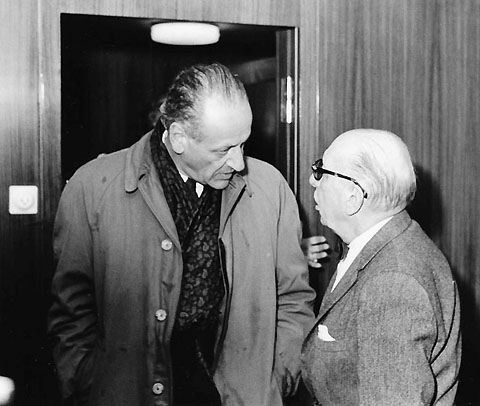
Rolf Liebermann with Igor Stravinsky.
Source: Naxos CD (My rip!)
Formats: FLAC(RAR), DDD Stereo, mp3(320)
File Sizes: 297 MB / 156 MB (FLAC version incl. cover & booklet)
The FLAC link has now expired. No more requests for this, please!
mp3 version – https://mega.co.nz/#!qEckTJqI!jsktZwepHNxpnvWpvG0Vk4nGLQKex-52E1NbHRO9U-Y
Enjoy! Don’t share! Buy the original! And please click on "Like" if you enjoyed this upload! 🙂
Kurt Atterberg must have seemed almost irresistibly efficient in everything he undertook
during the 1910s. But not everything proceeded as smoothly. Two major works caused him considerable
difficulties. His fifth symphony, which was to be called Sinfonia funebre, and his Concerto for
Cello and Orchestra were both started about 1917 but work on these two compositions was
remarkably slow. Following a frantic spurt he finally completed the symphony on 21st July 1922, at
half past two in the morning according to the manuscript score. The same autumn saw the completion
of the Cello Concerto and he started ‘frenzied’ practice of the solo part ‘so that I can play it myself’.
The Cello Concerto reflected rather less of these circumstances than the symphony but the
composition of a concertante work for his very own instrument clearly had a special significance
for the composer.
Music Composed by Kurt Atterberg
Played by the Rundfunk Sinfonieorchester Berlin
With Werner Thomas-Mifune (cello)
And Carmen Piazzini (piano)
Conducted by Karl Anton Rickenbacher
"Mifune adventurous soloist – witness his recorded repertoire which includes
the Grechaninov suite, the Rubinstein concertos and the Khachaturyan concerto.
In the present recording (I have not heard the others!) there is no suspicion of
time-serving. On the contrary the impression left is of an artist at the service
of the music.
The sonata which is quite volcanic is clearly the work of a very fine and affecting
tunesmith. It begins with a first movement that has a long romantic tune spun
with infinite care and resource. This rises to a climax when the soloist’s
instrument almost howls in passion. The middle of the movement invokes
blue and placid waters. Mifune draws on both delicacy and strength from
both parts. This sonata has both piano and cello truly interacting. There is
little of submissive accompaniment from the piano though singer is the cello.
It is a work of sentiment without sentimentality; try the middle movement
adagio molto. The finale is one of romance and Medtnerian aristocratic filigree.
The piano part eggs on the cello in triumphant virtuosity. A grand plunging
and surging romantic tune rounds off the proceeding, is given an Hispanic
twist and then trails satisfyingly to the closing bars of surprising calm. The
sonata joins the lists which already include the rachmaninov and Foulds cello
sonatas: very affecting; a real discovery
The Concerto’s andante cantabile first movement is an audacious introduction
where an awed vibrato from the high violins provides a bed of sound over
which the solo cello sings. The cello part projects music shaken wretched
and shivering with dark and compelling emotion. A gloomy and cataclysmic
tone winds in and out of the work leavened by the soloist’s impassioned song.
This is truly a work of late romantic fervour. Going by the sound of several
passages Atterberg seems to have been deeply impressed by Sibelius whose
second symphony and Humoresques (violin and orchestra) were clearly an
influence. Add to that many pages where Atterberg seems dead set on
becoming the Swedish Korngold and you have a work to reckon with. Lissom
tunes, golden taste, regret and Elgarian bite summarise this major discovery.
If there were any justice the work would have become a repertory standard
years ago."
Musicweb
Source: Koch Schwann CD (My rip!)
Formats: FLAC(RAR), DDD Stereo, mp3(320)
File Sizes: 269 MB / 144 MB (FLAC version incl. covers & booklet)
The FLAC link has now expired. No more requests for this, please!
mp3 version – https://mega.co.nz/#!vAFlVILT!kRYpEEhlIJujR4QWVeTsvuXq5L03Q0NFdLuIKaI lIUw
Enjoy! Don’t share! Buy the original! And please click on "Like" if you enjoyed this upload! 🙂
Ferruccio Busoni’s Violin Concerto in D Major, Op. 35a is the composer’s first real masterpiece,
written while his international touring career as the greatest piano virtuoso of his day was at its height.
The Violin Concerto explores the same Romantic territory covered at greater length by Busoni’s
gargantuan Piano Concerto of 1904, but without the intellectual and aesthetic problems posed by
the later work’s literary allusions and concluding male chorus; and, at about twenty-five minutes (versus
the Piano Concerto’s seventy minute length), the Violin Concerto is a much more manageable
enterprise for the listener. Throughout Busoni’s work, it’s evident that although the highest degree of
virtuosity is required of the soloist, the real virtuoso at work is Busoni himself, who here wrote a
thoroughly accomplished and preternaturally modern masterwork that still has the power to surprise
latter-day audiences.
Richard Strauss’ Violin Concerto in D minor, Op. 8 (1881-1882), the only essay in the
genre the composer ever attempted, is an interesting example of Strauss’ early music. The works
of this period (the Sonata for Cello and Piano also comes to mind) are full of warmth and melodic
sentimentality: the realization of "Gem???tlichkeit" carried to the extreme. Yet, at a deeper musical level,
the Concerto is not entirely successful. Although Strauss, who began composing this work at the
age of 17, was an extraordinarily accomplished young man, he still lacked the sort of maturity and
practical experience evident in works composed just a few years hence. Still, it isn’t fair to dismiss
the Concerto out of hand as uninteresting juvenilia. The work’s youthful sincerity, breadth of lyrical
expression, and virtuoso fireworks retain a great deal of appeal for concertgoers, and the work
does not deserve to be reduced to a mere historical curiosity.
While violinist Joseph Joachim had a hand in fine-tuning Max Bruch’s first violin concerto,
Pablo Sarasate was the direct inspiration for Bruch’s Violin Concerto No.2. This is unfortunate,
for Bruch provided the Spanish soloist a virtuoso vehicle lacking the balance and direct expression
that made his first concerto so popular. This concerto begins with a long Adagio non troppo, which
Johannes Brahms found altogether troppo: "Normal people cannot endure it," he wrote.
The movement is in sonata form, the violin singing out a first theme tailored specifically to
what Bruch called Sarasate’s "soulful" style. This is the concerto’s strongest movement, with
highly expressive writing for the soloist over unobtrusive, but effective, ominous support from
the orchestra. Throughout, the music does ease off from time to time, but these more relaxed
episodes still require ardent playing from the soloist, and the rip-roaring final measures are
clearly designed to bring an audience to its feet.
Music by Max Bruch, Ferruccio Busoni & Richard Strauss
Played by the Bamberger Symphoniker
With Ingolf Turban (violin)
Conducted by Lior Shambadal
"This disc is a generous 80 minutes’ worth (despite its indigestible diet of D tonality
throughout) of rare violin concertos that you are unlikely to hear in the concert hall.
All three works (written in the last quarter of the 19th century) are retrospective
glances at a Romantic genre which began with Mendelssohn and peaked with Brahms.
They are given committed performances by Ingolf Turban, a young talent not short
of either lyrical tone or dazzling virtuosity. Busoni’s concerto is really the most
interesting piece with its occasional parody of Beethoven and Brahms, its fiendishly
difficult finale and some wonderful orchestral solos managed masterfully by the
Bamberg Symphony Orchestra. The Bruch gets the sweet-toned and lyrical
treatment it needs, the orchestra lushly supportive throughout. With its innovative
form and explorative recitativo style, this is not a work to be dismissed lightly.
Strauss’s concerto was literally written at school. Though conventional in outlook
it nevertheless shows signs of the later Strauss in both melodic line and orchestration,
with some felicitous touches for French horn (no doubt his horn-player father’s
influence at work) and divided lower strings. This is a most enjoyable recording
by a young soloist with a promising future."
BBC Music Magazine (*****/*****)
Source: Claves CD (My rip!)
Formats: FLAC(RAR), DDD Stereo, mp3(320)
File Sizes: 351 MB / 181 MB
The FLAC link has now expired. No more requests for this, please!
mp3 version – https://mega.co.nz/#!fVlGgL5A!q7bITD2IAh1GDnQgFa34VxLyy8r4Umc4M5hL_Y2 HhsQ
Enjoy! Don’t share! Buy the original! And please click on "Like" if you enjoyed this upload! 🙂
Vincent d’Indy (1851–1931) was born into a French aristocratic family – royalist, Catholic,
nationalist, and traditionalist – and took his heritage seriously. In a French art scene
which had become irrevocably politicised, conservatism in music was one means of
defending his other beliefs. The Concerto for Piano, Flute, Cello, with Strings was his
last orchestral work, written at the age of seventy-five. It is not uncommon for
composers near the end of their working lives to go for simpler forms and smaller
forces. However, there may also have been a political subtext for d’Indy’s choice of the
concerto grosso style. It was a device then being explored by the French neoclassicists
as one of the means of ‘re-nationalising’ French music, an idea to which d’Indy responded strongly.
The concerto comes from the middle of his ‘Agay’ period – the years between 1924
and 1929 when d’Indy had just married his second, much younger wife and moved to
the C???te d’Azur – and, though it is without a programme, it might be said to reflect his mood.
Arthur Honegger wrote his score for the spectacle (part dance, play, mime, and opera)
The Story of the World at Play (Le Dit des Jeux du Monde) for a chamber ensemble consisting
of flute/piccolo, trumpet, strings, and percussion. It’s an early work, close in sound to the tone
poem Le Chant de Nigamon, and it already provides clear evidence of that instant ability to
conjure up a particular atmosphere that served the composer so well in his numerous film scores.
The music is often very dissonant, but at the same time melodically conceived and passionately,
indeed expressionistically communicative.
Dynam-Victor Fumet (4 May 1867 – 2 June 1949) was a French composer and organist.
Born in Toulouse in 1867, he began his musical studies at the municipal Conservatory where his
exceptional talents were very quickly recognized, and where he received all the possible prizes.
At the age of 16, he entered the Paris National Conservatory, where he studied organ with
C???sar Franck and composition with Ernest Guiraud. For a while, Fumet was the orchestra
conductor at the "Chat Noir", but he soon quit and left the post to his friend, Erik Satie.
It was shortly after this period that he became interested in spiritism and became a well-
known medium. After a suicide attempt, from which he miraculously survived, he regained
his faith in God, and under the influence of L???on Bloy regained his faith in Christianity.
Music by Vincent d’Indy, Arthur Honegger & Dynam-Victor Fumet
Played by the Orchestre de Chambre Jean-Jacques Wiederker
With Patrick Dechorgnat (piano) & Jean Ferrandis (flute)
Conducted by Fr???d???rick Bouaniche
Source: Koch Schwann CD (My rip!)
Formats: FLAC(RAR), DDD Stereo, mp3(320)
File Sizes: 214 MB / 132 MB (FLAC version incl. covers & booklet)
The FLAC link has now expired. No more requests for this, please!
mp3 version – https://mega.co.nz/#!XRtnQJYb!HP2VJ_Y6E42gzWqPsuM5jVEqhGtv1l23Pcf3CWQ kGn4
Enjoy! Don’t share! Buy the original! And please click on "Like" if you enjoyed this upload! 🙂
A colorful collection of works for saxophone and orchestra or sax solo.
Gerard McChrystal comes from Derry, N.Ireland. Initially self-taught he studied
at the RNCM, Manchester, Guildhall School, London and Northwestern University, Chicago.
His career has largely been project driven, which has led to collaborations and performances
with Philip Glass, The Soweto String Quartet, tenorist Tommy Smith, guitarist Craig Ogden,
The Smith Quartet, Rambert Dance Co., Ensemble Bash, economist Charles Handy, poet
Cathal O Searcaigh, The Quad Saxophone Quartet and vocal groups Anuna and Codetta in
countries including USA, South Africa, Ireland and Portugal.
Gerard has made concerto CDs with BBC NOW, Ulster Orchestra and London Musici.
He has performed in 30 countries and venues include San Francisco Opera House, Baku
Opera House, Azerbaijan and the Royal Albert Hall, London.
As well as teaching saxophone at RWCMD, Gerard is professor of saxophone at Trinity
Laban, London and is an ambassador for Derry-Londonderry UK City of Culture 2013.
He served on the jury of the 2010 Royal Overseas Competition, London and the 5th
Adolphe Sax International Saxophone Competition, Dinant. He is sponsored by RICO.
Music by Dave Heath, Michael Torke & Michael Nyman
And Michael McGlynn & Ian Wilson
Played by the London Musici
With Gerard McChrystal (saxophones)
Conducted by Mark Stephenson
"McChrystal has an enviably full and warm soprano saxophone tone, and his intonation
is as secure as his gift for melodic phrasing is unfailing. This is of inestimable advantage
in a work such as Heath’s Concerto, where the solo instrument is entirely dominant (and
perhaps a little too prominently balanced here). Heath stresses melody and atmosphere,
and this seems to suit McChrystal, even where the folk element is occasionally represented
a little too literally. The solo piece by Ian Wilson finds McChrystal on alto saxophone, and
here his tone is pellucid, while his control of alternating fingering is precise and affecting.
The music itself is cryptic and melancholy. McGlynn’s solo effort (also for alto sax) is a
good deal more conventional, closer to its folk music source, and is accordingly
somewhat less striking.
The two major works here are the Nyman and Torke concertos. Nyman’s typical rhythmic
and melodic patterns are to be found in abundance in Where the Bee Dances, but there
is also a more discernible willingness to allow the music sequential development and
several chances to pause and reflect than one normally associates with this composer.
The listener benefits accordingly from the more considered pacing. The gem in this
collection, however, is the Torke, a three-movement concerto revelling in constantly
transmuting thematic shards, unravelling orchestral colours and timbres, and genuinely
engaging rhythmic complexities, often hinting at Far-Eastern influences. The outer
movements are full of brilliant light, generated by the predominantly percussive scoring,
supported by woodwinds and strings. The slow second movement is that modern rarity –
a warm and moving construction with a ravishing theme which avoids any hint of
sentimentality. It is also brilliantly scored. Unfortunately, this is the least well executed
piece on the entire disc, with the London Musici woodwinds falling short of the
high standards set elsewhere."
Gramophone
Source: Silva Classics CD (My rip!)
Formats: FLAC(RAR), DDD Stereo, mp3(320)
File Sizes: 274 MB / 126 MB (FLAC version incl. covers & booklet)
The FLAC link has now expired. No more requests for this, please!
mp3 version – https://mega.co.nz/#!WFN2xTbI!NFCmKpUXnzBN-CFIxvRmo08bFOaHmASnUBGiOD0SxfM
Enjoy! Don’t share! Buy the original! And please click on "Like" if you enjoyed this upload! 🙂
Herbert Howells, a raw country boy with his untamed Gloucestershire accent, full of doubts,
nerves and insecurities, with no money in his pocket faced with the style and swagger of London, was
armed with nothing but a fragile belief in his abilities. He quickly became one of the prized students
of the Royal College of Music and the First Piano Concerto was his first major orchestral work.
It was written for his pianist-friend and fellow student Arthur Benjamin and the 1914 premiere was
conducted by his tutor, Stanford. One of the most arresting facets of the work is its assimilation of
influences and the extraordinary fluency and confidence of the writing, not least in the colour and
brilliance of his orchestration. The solo piano part is extremely demanding.
The Second Piano Concerto was commissioned by the Royal Philharmonic Society and first
performed in 1925. Howells’s reputation was established by this time and the new work was widely
anticipated. It was poorly received, not helped by a lacklustre performance, and Howells withdrew
it from publication straight away. He described the work as having ‘deliberate tunes all the way’,
being ‘jolly in feeling, and attempting to get to the point as quickly as maybe’. The modernity of
the music must not be underestimated. It is a huge advance, stylistically, on the earlier concerto
and is a remarkable tour de force quite unlike any other work of the period.
Penguinski was written for a visit made by the Prince of Wales to the Royal College of
Music in 1933. It takes an affectionately sideways glance at Stravinsky’s Petrushka and is full
of all those orchestral mannerisms (including an important piano part) which, together with a
healthy sense of humour, make what must been a tiny ballet of great amusement and delight.
Music Composed by Herbert Howells
Played by the BBC Symphony Orchestra
With Howard Shelley (piano)
Conducted by Richard Hickox
"These are absolutely superb performances and make it evident that the
performers have much empathy and enthusiasm for this neglected but
captivating music. The recorded sound is as laudable as the performances."
American Record Guide
"…Howard Shelley as soloists is clearly passionate and committed, and
Richard Hickox obtains playing from the BBC Symphony Orchestra that sounds
wholly secure… A great start to 2001 for lovers of British music…"
International Record Review
Source: Chandos Records CD (My rip!)
Formats: FLAC(RAR), DDD Stereo, mp3(320)
File Sizes: 306 MB / 169 MB (FLAC version incl. cover & booklet)
The FLAC link has now expired. No more requests for this, please!
mp3 version – https://mega.co.nz/#!SNtFBJxY!oAYDYCc9vXtoLZm8wZYlr2Wu3n4dmbffCdDIkHp VdS4
Enjoy! Don’t share! Buy the original! And please click on "Like" if you enjoyed this upload! 🙂
No one could accuse the London Sinfonietta of neglecting younger composers, so a few years ago they
commissioned six works by a selection of younger, up-coming composers (all born between 1971 and 1977),
offering a tantalising perspective on creative talents still in the making. This discs features three of the
resulting works for small orchestra and various solo instruments.
Dark Room (2003) has Morgan Hayes pit clarinet against ensemble in a controlled decrescendo
of activity, the musical ideas gradually being elaborated as textural contrasts become more fluid and
amorphous – a gripping piece that recalls an earlier era of British Modernism. Jonny Greenwood’s
Smear (2004), however, inevitably exudes a French influence through the use of ondes martenot
as the timbral and harmonic basis for its progress through predominantly relaxed but never somnolent
material…welcome repose before the onslaught of Dai Fujikura’s Fifth Station (2003), its
dispersal of instruments around the auditorium aiding the impulsive, almost tangible dialogue of cello
and ensemble, with the inconclusive close just one aspect of the piece’s impressive handling of
musical time.
Music by Morgan Hayes, Jonny Greenwood & Daj Fujikura
Played by the London Sinfonietta
With Mark van de Wiel (clarinet) & Bruno Perrault (ondes martenot)
And Louise Hopkins (cello)
Conducted by Martyn Brabbins
"Radiohead scion Jonny Greenwood celebrates the ondes martenot in Smear (twice over
since there are two of them entwining and deftly avoiding any clich???s associated with
Martenot’s other-wordly apparatus). Morgan Hayes’ Dark Room, meanwhile, is a mini
clarinet concerto undertaking an ear-arresting journey from translucence to opacity
and back – breathtakingly played by Mark van de Wiel. And similarly incisively
conducted by Martyn Brabbins is Dai Fujikura’s remarkably assured cello concerto
for Louise Hopkins, Fifth Station – music that knows what it wants to do, and
how to do it."
BBC Music Magazine
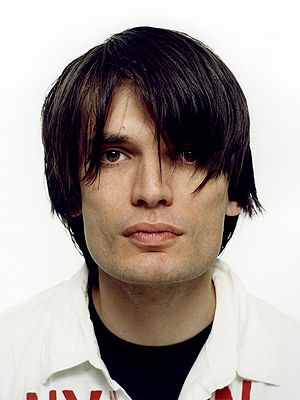
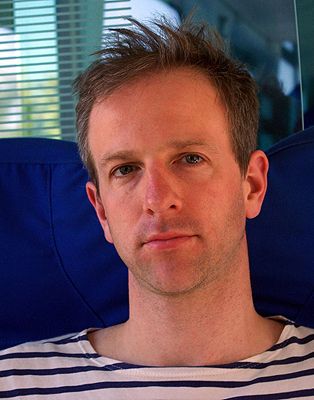
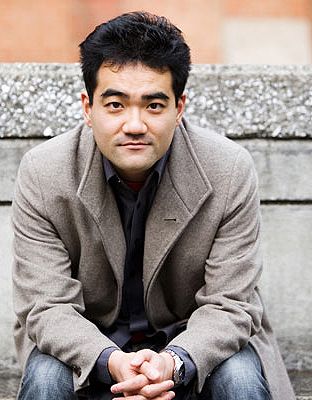
Jonny Greenwood, Morgan Hayes, Daj Fujikura.
Source: London Sinfonietta CD (My rip!)
Formats: FLAC(RAR), DDD Stereo, mp3(320)
File Sizes: 158 MB / 86 MB
The FLAC link has now expired. No more requests for this, please!
mp3 version – https://mega.co.nz/#!6IE1lYYB!Evg9BnVj_OZUs9YMwLeK8vnhUkn4dRepDRNNVR7 TTZc
Enjoy! Don’t share! Buy the original! And please click on "Like" if you enjoyed this upload! 🙂
Both Montague Phillips and Victor Hely-Hutchinson are best known for their
light music. Hely-Hutchinson, whose A Carol Symphony is still popular, barely composed
anything else (though not for lack of craftsmanship), and his The Young Idea is a
typically charming rhapsody for piano and orchestra, with the composer keepings things
bright with syncopated rhythms.
Montague Phillips on the other composed a number of "regular" concert works, among
them the two Piano Concertos recorded here. Listening to these big-boned, romantic
pieces it seems strange that a company like Hyperion didn’t pick them up for their series on
"Romantic Piano Concertos". In fact, the Piano Concerto No.1 of 1907 hadn’t been
played between 1912 and the sessions for this recording. The second concerto of 1919
was more popular, getting occasional performances until well after World War II.
Both works are cast in the usual three movements, and are full-scale 30 minute
concertos. The style is Russian rather than British, and in the first work in particular,
comparison with Tchaikovsky’s Piano Concerto No.1 are perhaps unavoidable.
If you are a fan of the Hyperion series (and I know there are many), you should seriously
consider giving these works a try. Especially since the performances by the
enterprising David Owen Norris are excellent and far beyond the call of duty.
Music by Montague Phillips & Victor Hely-Hutchinson
Played by the BBC Concert Orchestra
With David Owen Norris (piano)
Conducted by Gavin Sutherland
"Phillips is known in the field of British light music but rather like Haydn Wood
he had occasional excursions into the concert hall. Here are two of them.
The Second Piano Concerto has been broadcast by the BBC in various studio
performances; not that there have been many of these. The First Piano Concerto
is a total unknown.
The two concertos would not have been out of place in Hyperion’s ‘Romantic Piano
Concertos’ series. Neither for that matter would Dutton’s recordings of the
Bowen piano concertos and as if to prove the point Hyperion’s recordings of
the second Bowen and his monumental third piano concerto will be released
later in 2008. Roll on a project to record the allegedly Rachmaninovian piano
concertos of Roger Sacheverell Coke. There are six to choose from. At one
stage in the 1930s and 1940s they were getting regional concert exposure
and broadcasts. After that someone needs to look over Gaze Cooper’s
piano concertos.
As for the present works for piano and orchestra, Phillips’ First Piano Concerto
would sit comfortably alongside the Tchaikovsky First and Concert Fantasy,
the First Rachmaninov and the two Glazunovs. The outer movements are
agreeably rhetorical-heroic with the central movement being touchingly
reflective and delicately pointed. The finale carries the grand manner high
with a dash of pomp.
The Second Concerto, from twelve years and a world war later, is more
original and with a slightly more tangy harmonic edge. The music is still
high on rhetoric with good ideas not in short supply. Some stock romantic
gestures will be recognised but there is plenty to engage the attention and
the heart. Phillips’ writing in this work sometimes recalls the Bliss Piano
Concerto. The second movement is more relaxed but still has a lean
energetic charge (2:43 onwards). The finale has a mariner’s swagger
and something of Elgar’s sweeping nobilmente but with more of
a surrender to sentimentality (1:33) and a redolence of Harty’s Piano
Concerto."
Musicweb
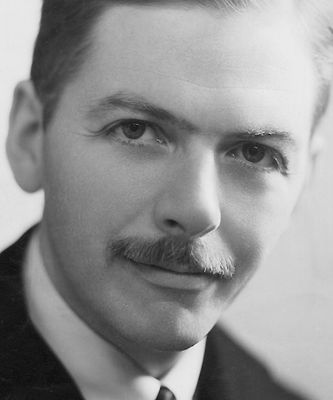

Victor Hely-Hutchinson, Montague Phillips.
Source: Dutton Epoch CD (My rip!)
Formats: FLAC(RAR), DDD Stereo, mp3(320)
File Sizes: 316 MB / 159 MB (FLAC version incl. artwork & booklet)
The FLAC link has now expired. No more requests for this, please!
mp3 version – https://mega.co.nz/#!CIVmlSTT!BILd_doUeKPUcKwbbuTNqT-HFXmWMXl5SYj4HpTT5Ok
Enjoy! Don’t share! Buy the original! And please click on "Like" if you enjoyed this upload! 🙂
Of Anglo-Irish descent, Ernest John Moeran was brought up in Norfolk and the scenery and folk-music
of Ireland and Norfolk were a lasting influence on him. Studies at the Royal College of Music were interrupted
by the 1914–1918 War, in which he served on the Western Front, sustaining serious head injuries that
affected him physically and mentally for the rest of his life. After the war he resumed a passion for collecting
folk-songs and began to study privately with the composer John Ireland. As a composer Moeran was a
late developer. He tackled most of traditional musical forms with the notable exceptions of opera and
cantata but, despite the early promise of such works as the central Elegy from his three piano pieces
entitled Fancies (1922), he did not achieve widespread critical and public success until the late 1930s.
Moeran’s individuality as a composer grew throughout his creative life and in the Cello Concerto of 1945
his eclectic influences are successfully subsumed within an authentic personal voice. Peers Coetmore gave
the work’s first performance with the Orchestra of Radio Eire conducted by Michael Bowles at the Capitol
Theatre, Dublin, on 25 November 1945. In the first movement (Moderato), the cello sings an almost
continuous, spontaneous-sounding melody. After a brief introductory orchestral gesture, the soloist
enters with a hushed and extensive theme, driven by an insistent rhythmic figure. As in several other
Moeran works, including the Symphony in G minor and the Violin Concerto, the opening phrase is
central to the succeeding material. The long-delayed second idea, more compact and relaxed, is lightly
scored for cello, with delicate woodwind decoration. Framed by baleful fanfares, the often stormy
development section refreshes and energises the movement, offering new variations on its principal
theme. In the closing section, Moeran revisits the secondary idea first, whilst the movement’s main
melody makes a delayed return in a final, pared down version.
The second movement is an imposing, meditative Adagio. A brief, anguished orchestral introduction
precedes the nostalgic and profoundly felt main melody, a song without words for cello accompanied
by hymn-like muted strings. At the end of the movement, a short solo cadenza avoids virtuosity
for its own sake, playing more of a structural role, as Moeran deftly transforms the main theme of
the Adagio into what will be the principal idea of the ensuing Rondo. A bracing Allegretto deciso
alla marcia begins the finale, a protean movement that incorporates various contrasting, lyrical
passages within its tightly controlled structure, including, towards the end, a deeply expressive
section where the main theme is transfigured into a passionate love-song. The work concludes
briskly with a fast jig. All of the finale’s elements are alive with the spirit of Irish folk music.
Music Composed by Ernest John Moeran
Played by the Bournemouth Sinfonietta
With Raphael Wallfisch (cello)
Conducted by Norman Del Mar
"Raphael Wallfisch is one of the leading English cellists of his generation. His repertory is vast,
taking in 19th century staples by Tchaikovsky, Brahms, and Dvor???k, as well as 20th century
standards by Prokofiev, Shostakovich, Respighi, and Barber. Yet he has also focused much
attention on works by British composers, too, from Elgar, Delius, and Bax to Maxwell Davies,
MacMillan, Simpson, and Tavener. Wallfisch has recorded extensively for many labels,
including Chandos, Nimbus, and Naxos.
Wallfisch was born in London on June 15, 1953. His mother was a cellist and his father a
pianist. Young Raphael, after studies on the violin and piano, turned to the cello at age
eight. His list of teachers is impressive: at home he studied with Amaryllis Fleming (1967-
1969) and Derek Simpson (at the Royal Academy of Music from 1970-1973), and abroad
with Amadeo Baldovino (Italy; 1969) and Gregor Piatigorsky (the U.S.).
It was through his studies with Piatigorsky in California that he was given the opportunity
to perform in several private recitals with Jascha Heifetz. Wallfisch won first prize in
Florence, Italy, at the Gaspar Cassad??? International Cello Competition in 1977. Thereafter,
his career grew in several directions: as a soloist he regularly appeared in recitals and
with British orchestras; in 1980 he began a 12-year stint playing in a duo with his father,
Peter, while serving as a professor of music at the Guildhall School of Music and Drama
in London. He would later teach cello at the Z???rich Winterthur Konservatorium and
Hochschule in Mainz, Germany.
In the 1980s Wallfisch gained an international reputation from his appearances
throughout Europe and the U.S. In 1982 he started a long relationship with the English
label Chandos: among his earliest recordings were a coupling of the Barber Cello
Concerto and the Shostakovich First Cello Concerto (1982) and a disc of Tchaikovsky
works that included the original version of the Rococo Variations (1983). Over the
next decade or so he would make more than 20 recordings for Chandos. Since the
1990s he has branched out his recording activity to include other labels. Among later
recordings is his two-disc set of the complete works for cello by Shostakovich on
Nimbus (2006). Shostakovich was also featured, along with J.S. Bach and
Tchaikovsky, in his successful concert tours of the U.K. and Germany in the fall of
2006. Further efforts included recordings of Zemlinsky’s Cello Sonata (2007)
and the cello sonatas of Chopin, Laks, and Szymanowski (2010)."
Source: Chandos Records CD (My rip!)
Formats: FLAC(RAR), DDD Stereo, mp3(320)
File Sizes: 216 MB / 120 MB (FLAC version incl. cover & booklet)
The FLAC link has now expired. No more requests for this, please!
mp3 version – https://mega.co.nz/#!6MkC3KSL!Ym64EmETad_l67H-SbDTDb0RhK0AT9jvRwHZindKCG0
Enjoy! Don’t share! Buy the original! And please click on "Like" if you enjoyed this upload! 🙂
Alec Wilder (1907-1980) was one of those unusual composers who managed to bridge the
worlds of serious and popular music, jazz and classical, the concert hall and the dance hall, without
losing credibility in any of those areas. A major figure in the New York music world, he was equally at
home writing ballet and opera, or composing songs for Tommy Dorsey, authoring concertos or pop
standards for Frank Sinatra. He studied at the Eastman School of Music, teachers included the
composer Howard Hanson. He first established himself in New York as a songwriter and arranger
in big-band jazz circles at the end of the 1920s and the early ’30s, composing for Benny Goodman.
Wilder’s exposure to the world of popular jazz exerted a powerful influence on his career as a serious
composer — he composed jazz music for wind instruments, and in 1942 premiered a ballet entitled
Juke Box with the American Ballet, built on popular thematic material. It was the first of several
ballets, including False Dawn and Life Goes On. In some ways, he was the heir to
George Gershwin as a composer of jazz-based classical music.
John Corigliano’s Aria for Oboe and Strings may be performed in either two versions: with
string orchestra or with string quintet. The materials provided here include footnotes indicating
how the piece should be performed depending on which version is selected. The first performance
of Aria was given by the Connecticut String Orchestra on January 6th, 1977 with Humbert
Lucarelli, oboe and Renato Bonacini, conductor.
Music by Alec Wilder, John Corigliano, Wayne Barlow & Robert Bloom
Played by the Brooklyn Philharmonic Orchestra
With Humbert Lucarelli (oboe)
Conducted by Michael Barrett
"Having already programmed Humbert Lucarelli’s winsome reading of Wayne Barlow’s
vernal The Winter’s Past for Classic FM’s "Contemporary Classics", I can confidently
vouch for the work’s immediate appeal. Barlow’s style reflects lazy, sunsoaked
afternoons, rather in the manner of Copland or Vaughan Williams. Here, as elsewhere
in this warming miscellany, Lucarelli weaves a warm, sinewy tone and receives
responsive support from the Brooklyn Philharmonic under Michael Barrett.
Although John Corigliano receives top billing for his intensely moving Aria (an
effective arrangement for strings and oboe from the slow movement of his Concerto
for oboe and orchestra), it is Alec Wilder’s catchy, easygoing Concerto for oboe,
string orchestra and percussion which occupies the lion’s share of this CD (roughly
half its playing time, in fact). Wilder’s work ranges in tone from ‘classical’ music
to popular ballads; Sinatra is one of his great fans (he made a famous record of
Wilder’s beautiful song, IT be Around) and many other prestigious artists have
espoused his cause. Yet mindless categorizing has sometimes inhibited a fuller
appreciation of his skills as a ‘serious’ composer: "[his work] fiercely resists
labelling," writes Lucarelli, who then relates how Wilder was often pained that
"his music was not more widely accepted by either jazz or classical composers".
However, the concerto’s gentle demeanour and subtle echoes of various
contemporary masters (Lucarelli himself suggests Gershwin, Poulenc and
Villa-Lobos) make for an utterly bewitching 25 minutes.
Then there’s Robert Bloom’s nicely crafted, neo-romantic Requiem (with its
Hebraic undertones) and his rather more ‘personal’ Narrative???€”both of them
prime contenders for any oboist’s repertoire. Lucarelli ends his programme
with Wilder’s wistful, upbeat Piece for Oboe and Improvisatory Percussion”
a pleasant encore to an altogether charming, well-recorded disc."
Gramophone
Source: Koch International CD (My rip!)
Formats: FLAC(RAR), DDD Stereo, mp3(320)
File Sizes: 224 MB / 116 MB (FLAC version incl. covers & booklet)
The FLAC link has now expired. No more requests for this, please!
mp3 version – https://mega.co.nz/#!7F0W2TDZ!mib73QQUdkETOkVMbxYyj7ISM2yKQbCpe7Rx_ZS rJhw
Enjoy! Don’t share! Buy the original! And please click on "Like" if you enjoyed this upload! 🙂
Haven’t had chance to listen to it yet, (computer system trouble has held me back till now), yet I can certainly still thank you for encouraging me to be more cosmopolitan with regards to my musical tastes (having in this instance migrated from
Thread 121898 ).
So again many thanks indeed.
Alberto Ginastera was one of the most admired and respected musical voices of the twentieth
century, who successfully fused the strong traditional influences of his national heritage with
experimental, contemporary, and classical techniques. The two Cello Concertos are among his
most innovative, brilliant and technically formidable compositions. The First Concerto, the definitive
version of which was premi???red by Ginastera’s second wife Aurora N???tola in 1978, is notable for the
provocative singing lines, Latin dance rhythms and virtuosity of its solo part, and the intense colours
and abundant percussion of the orchestral accompaniment. The Second Concerto, composed as
a 10th wedding anniversary tribute ‘To my dear Aurora’, makes more prominent use of Argentine
folk elements. It includes a brilliant depiction of the rising sun, percussion instruments portraying
sounds of the jungle, and a celebratory rustic finale.
Music Composed by Alberto Ginastera
Played by the Bamberger Symphoniker
With Mark Kosower (cello)
Conducted by Lothar Zagrosek
"One of the most celebrated Argentine composers of all time and certainly among the most
notable Latin American composers of the 20th century, the music of Alberto Ginastera was
heavily influenced not only by the pervasive rhythms and folk melodies of his country, but
also his decisive musical intellect and passionate underpinnings. He penned several works
for the cello, and eventually took the famed cellist Aurora N???tola as his second wife. This union
inspired a large-scale revision of his First Cello Concerto (which N???tola premiered under
Rostropovich’s baton), and the composition of the Second Concerto in 1980, a virtual
reenactment and tribute to the couple’s life together. Both of these concertos possess
formidable technical challenges to both soloist and orchestra, yet Ginastera’s intertwining
of intellect, musicality, and folk influence make them both satisfying, engulfing experiences
for listeners. Ginastera was a master orchestrator as evidenced not only by the endless
variety of colors and textures he coaxes from the orchestra, but also the ingenious way
that he scores for the solo cello so that issues of balance rarely come into play. Cellist
Mark Kosower takes full advantage of this during his performances of the two concertos
with the Bamberg Symphony Orchestra. Despite the lofty technical demands, Kosower’s
playing still manages to seem relaxed and at ease, his sound never forced in an effort
to overcome the orchestra. Both Kosower and conductor Lothar Zagrosek interpret
Ginastera’s works admirably, focusing heavily on precise rhythmic integrity. Listeners
unfamiliar with these two highly worthwhile concertos would be hard pressed to find
a more reliable, pristine performance."
All Music
Source: Naxos CD (My rip!)
Formats: FLAC(RAR), DDD Stereo, mp3(320)
File Sizes: 269 MB / 159 MB (FLAC version incl. cover & booklet)
The FLAC link has now expired. No more requests for this, please!
mp3 version – https://mega.co.nz/#!uBcWWZiJ!EhTZusTgpJQaG5y5FuAXQ8awhAwlOzj3qpA9x_n 6bfg
Enjoy! Don’t share! Buy the original! And please click on "Like" if you enjoyed this upload! 🙂
———- Post added at 11:59 AM ———- Previous post was at 11:54 AM ———-
The FLAC links for posts Nos. 291 to 300 have expired. No more requests for these, please!
The Australian composer and pianist, Margaret Sutherland (1897-1984) exerted an inestimable influence
and contribution on Australian music. She considered it her mission to promote new music, especially that of
Australian composers ‘who’, she said, ‘experienced public indifference and a profound sense of isolation.’
Sutherland’s teaching was legendary; she personally inspired young poets, composers and artists. After
teaching and giving recitals for several years in Australia, she commenced studying orchestration and
conducting in London and Vienna. Under the tutelage of Sir Arnold Bax in London, Sutherland composed
one of her first published works, her Violin Sonata. She went on to publish more than 90 compositions,
covering stage, instrumental, vocal, chamber and orchestral (including a Concerto Grosso). It was,
however, many years before Sutherland’s full contribution to the arts was recognised; it was equally
long before her own compositions received the recognition they deserved. Sutherland was awarded a
DMus. from the University of Melbourne in 1969, an OBE in 1970, the Queen’s Jubilee medal in 1977
and in 1981 she received the Order of Australia.
Music Composed by Margaret Sutherland
Played by the Queensland & Melbourne Symphony Orchestras
With Leonard Dommett (violin) & Sybil Copland (violin)
And John Glickman (viola) & Max Cooke (harpsichord)
Conducted by John Hopkins & Patrick Thomas
"Margaret Sutherland is a name likely to be known to those who already know
their Bax in detail. She came to England from her native Australia in the 1920s
and took private tuition from Bax. The title of her tone poem, Haunted Hills naturally
suggests parallels with Bax’s Irish works (e.g. In The Faery Hills). However her music
defies any speculation that her music will ape that of Bax.
Concerto for Strings is a gracious and concise expression rippling with the dynamism
of the Bliss Music for Strings. Sutherland is to the point, fresh in invention and athletic
in her handling of the strings. The Wiren Serenade, Waxman Sinfonietta and the Rozsa
Concerto for Strings are works akin in their eloquence and movement. The short finale
has a Hungarian accent.
With a title like that and the distinctive instrumentation it is no surprise that the
Concerto Grosso is a work of neo-classical tendencies. There is a busy Allegro, a
phlegmatic Adagio and a troubled and impatient Allegro con brio. An abrasive
Bartokian element surfaces in the finale.
The Violin Concerto takes the flavour (and it is only a flavour) of atonality one small
step further. The work is best thought of as a running-mate for Lennox Berkeley’s
violin concerto, either of the Rawsthornes (the first rather than the second), the
Fricker and the Frankel concerto. At times we can imagine we are hearing a lost
concerto by Miklos Rozsa – that Zingaresca inclination again – notably in the first
movement. The grotesque strut and jaunty march of the finale places this very
close to the first Rawsthorne Concerto and to the reflective aspects of the William
Schuman Concerto.
Haunted Hills with its harp arpeggio-swept opening pages mingling with the
emotionally disturbed surges of Vaughan Williams’ Ninth Symphony takes us back
to the Concerto for String Orchestra. This is no Celtic pastel sketch. The world
created by Sutherland is, overall, unlike Bax’s though his voice is unmistakable at
4.19 in one of those passion-exhausted marches of which Bax was a master
magician. This is a bejewelled score alive with a crowd of detail lovingly
rendered by orchestra and engineer. The swooping pages of the opening and closing
can be likened to the great waves of sound that rend Louis Aubert’s Tombeau de
Chateaubriand – itself a marine impression rivalling Bax’s Tintagel."
Musicweb
Source: ABC Classics CD (My rip!)
Formats: FLAC(RAR), DDD Stereo, mp3(320)
File Sizes: 368 MB / 167 MB
The FLAC link has now expired. No more requests for this, please!
mp3 version – https://mega.co.nz/#!fFEDWRzD!38llVXSRD5l4LsnSA2_ZiLjV8G_qLz9kjEutArh zodc
Enjoy! Don’t share! Buy the original! And please click on "Like" if you enjoyed this upload! 🙂
#120 Colin McPhee: Piano Concerto, Symphony No.2, Balinese Ceremonial Music, Nocturne
#121 Florent Schmitt: Symphonie Concertante, Soirs, R???ves
#122 Edmund Rubbra: Violin Concerto, Viola Concerto
#123 Henri Dutilleux: Violin Concerto (L’Arbre des Songes), Cello Concerto
Anyway, great work you’re doing here. Thanks. I’m learning all the time.
Bernard Stevens (1916-1983) made his first big splash as a composer while serving in
World War II. His First Symphony ("A Symphony of Liberation") won a newspaper competition.
He created a sensation by taking his bows in his uniform. Stevens’s place in British cultural life for many
years was marked by his sympathy for Communism, although, as did many others (particularly after
the suppression of Hungary) he broke with the Soviet cadre after the war. His social thinking later on
probably fell under the heading of liberal humanist. Most people who knew his name thought of him
primarily as a teacher. He had a noteworthy academic career. He never really pushed his compositions,
and no conductor with a major career took him up.
Stevens acknowledged in his early Violin Concerto, written for Max Rostal, the influence of Bloch,
who by the way wrote one of the great violin concerti (which you can find in this thread, too). Stevens’s
first movement in particular – while having little idiomatically in common with Bloch – nevertheless strives
to hit the epic note. It moves in a grand symphonic sweep (similar in feel to the Moeran Symphony),
and indeed the line between symphony and concerto blurs a bit. Various composers, including Eisler,
Alan Bush, and Rubbra, acclaimed it as a masterpiece and the equal of the Walton and Britten concerti.
The Second Symphony belongs to the Sixties. It comes from Stevens’s brief application of dode-
caphonic serialism. It is yet another indication of the strong attraction Schoenberg and Webern in
particular held for even tonal composers. When one works in a chromatic, rather than diatonic, idiom
to begin with, it’s not unusual to want to work with basic materials which incorporate all twelve tones.
We see this also in Britten, Walton, Arnold, and Alwyn, to name just four British composers.
Music Composed by Bernard Stevens
Played by the BBC Philharmonic Orchestra
With Ernst Kovacic (violin)
Conducted by Edward Downes
"The outstanding work here is the Violin Concerto. Written largely in intervals in night-time
guard duty at the height of the blitz, it bears the first imprint of its time. Stevens’s strong
political awareness (he was a card-carrying Communist until the Soviet invasion of Hungary
in 1956) is evident, not in crudely programmatic terms, but in the deeply troubled mood,
and in the solo’s evocations of an almost painfully expressive virtuosity associated with some
of the Jewish musicianexiles Stevens had met in the early days of the war; one of these,
Max Rostal, was the work’s dedicatee. And although in the end the Concerto could only
be the work of an English composer, two Jewish composers also seem to have left their
mark: Bloch’s influence on mood and character emerges in some turns of phrase, while
the intense thematicism of the writing obviously owes a good deal to Schoenberg—the
sinuous germinal figure runs quickly through the 12-note gamut."
Gramophone
Source: Meridian CD (My rip!)
Formats: FLAC(RAR), DDD Stereo, mp3(320)
File Sizes: 260 MB / 145 MB (FLAC version incl. covers & booklet)
The FLAC link has now expired. No more requests for this, please!
mp3 version – https://mega.co.nz/#!3YExQRyJ!G0AGKJg4gzbD8sgNoU3zO1IMAfaYw1htgtWBn7U sZpI
Enjoy! Don’t share! Buy the original! And please click on "Like" if you enjoyed this upload! 🙂
As a composer Vagn Holmboe (1909-1996) turns away from complex composition processes
and musical convolutedness and rather employs concepts like logic, consistency and clarity –
similar to what we find in Viennese Classicism. The music of Joseph Haydn was a great source
of inspiration, just as one senses influences from Carl Nielsen, Jean Sibelius, Igor Stravinsky
and B???la Bartok. Holmboe’s thirteen symphonies constitute the core of his oeuvre. Add to this
an extensive series of solo concertos for virtually every symphonic instrument. His more
than 20 string quartets occupy a stunning and central position among the chamber works.
And finally, Holmboe’s vast production of pieces for mixed choir a cappella should not go
unmentioned, particularly his Liber Canticorum series.
Vagn Holmboe’s solo concertos for violin and viola are works that combine the
composer’s own purist Nordic style with a huge declaration of love for the wild, dancing
eastern European folk music that captivated him throughout his life. These premiere
recordings by some of Scandinavia’s strongest string soloists – Norwegian Lars Anders
Tomter and Swedish Erik Heide fronting the Norrk???ping Symphony Orchestra
under Dima Slobodeniouk – are joined by Holmboe’s Concerto for Orchestra, which
has never been performed before.
Music Composed by Vagn Holmboe
Played by the Norrk???ping Symphony Orchestra
With Erik Heide (violin) & Lars Anders Tomter (viola)
Conducted by Dima Slobodeniouk
"The music of Danish composer Vagn Holmboe sounds a bit like what would have happened
if Sibelius had lived long enough to absorb the music of the neo-classic movement, or perhaps
if Bart???k had spent some time in France in the 1920s. It is large, brilliantly orchestrated, with
driving brass rhythms and influences from Eastern European folk music. Holmboe was prolific,
and even if his works do not always sharply distinguish themselves one from another he deserves
credit for having explored the possibilities of an individual style for more than 50 years. The
Concerto for viola, Op. 189, was composed in 1992, when Holmboe was 82. Its Jewish melodic
flavor was the result of its being composed for an Israeli violist, but the international cast of
characters here (Norwegian violist, Russian conductor, Danish orchestra) puts across the
overgrown-Bart???k quality of the work. The Concerto for orchestra, which is more an overture
than a concerto for orchestra in the sense in which Bart???k or Hindemith used the term, was
a student work but is characteristic of the composer’s mature writing. The Violin Concerto
No. 2, written in 1979, is a sort of East-meets-West mixture of Nielsen and Bart???k, with
vigorous solo writing well executed by Swedish violinist Erik Heide. Competent throughout,
and recommended for listeners interested in the grand Scandinavian tradition."
All Music
Source: Dacapo Records CD (My rip!)
Formats: FLAC(RAR), DDD Stereo, mp3(320)
File Sizes: 274 MB / 138 MB (FLAC version incl. cover & booklet)
The FLAC link has now expired. No more requests for this, please!
mp3 version – https://mega.co.nz/#!7FFTHDjA!1sjPh4_vJXqoqVgLv3z563cpuTBUzvyMpLzBuyt W8vA
Enjoy! Don’t share! Buy the original! And please click on "Like" if you enjoyed this upload! 🙂
Thanks!
Nicolas Flagello was one of the last composers to develop a distinctive mode of expression based wholly
on the principles and techniques of European late-Romanticism. Born in New York City in 1928, Flagello grew
up in a highly musical family with deep roots in Old-World traditions. A child prodigy, young Nicolas was
composing and performing publicly as a pianist before the age of ten. While still a youth, he began a long
and intensive apprenticeship with composer Vittorio Giannini, who further imbued him with the enduring
values of the grand European tradition. His study continued at the Manhattan School of Music, where he
earned both his Bachelor’s (1949) and Master’s (1950) Degrees, joining the faculty immediately upon
graduation, and remaining there until 1977. (During the 1960s he also taught at the Curtis Institute in
Philadelphia.) In 1955, he won a Fulbright Fellowship to study in Rome, and earned the Diploma di Studi
Superiori the following year at the Accademia di Santa Cecilia, under the tutelage of Ildebrando Pizzetti.
During the years that followed, Flagello composed at a prodigious rate, producing a body of work that
includes six operas, two symphonies, eight concertos, and numerous orchestral, choral, chamber, and
vocal works. Flagello died in 1994.
Music Composed by Nicolas Flagello
Played by the Slovak State Philharmonic Orchestra, Kosice
With Tatjana Rankovich (piano) & Elmar Oliveira (violin)
Conducted by David Amos
"American/Italian composer Nicolas Flagello was born in New York, but spent a good part of his
career as conductor of the Rome Symphony Orchestra. His music reflects his extensive experience
as a conductor, being superbly scored and structured with a sure hand. Stylistically, it belongs
squarely in the American neo-classical tradition of composers like Piston, Giannini (Flagello’s
teacher), Persichetti, Creston, and Menin (all of whom were also first generation Americans of
Italian origin). The music is appealing, propulsive, and very passionate, rising to climaxes of
real intensity and excitement. The two piano concertos are marvelously written for the soloist:
they sound like great fun to play, and they contain many moments of pure magic (such as the
way the Second Concerto’s opening movement melts into the ensuing Andante). Credendum,
for violin and orchestra, would make a great concert companion to Chausson’s Poeme, and
it’s very well played by Elmar Oliveira. In fact, pianist Tatjana Rankovich is no slouch either.
Her playing in the two concertos has real glitter and Romantic sweep. Toss in the two
charming overtures, and the result is a first rate tribute to a very fine, neglected composer."
Classics Today
Source: Artek Records CD (My rip!)
Formats: FLAC(RAR), DDD Stereo, mp3(320)
File Sizes: 310 MB / 173 MB (FLAC version incl. cover & booklet)
The FLAC link has now expired. No more requests for this, please!
mp3 version – https://mega.co.nz/#!qQEnzIqY!4zXE0rRY9daXlIUcZ4rkmgpWb5S0FIQ2MviY4RH jh_8
Enjoy! Don’t share! Buy the original! And please click on "Like" if you enjoyed this upload! 🙂
Widely considered one of the foremost 20th-century American composers during his lifetime,
and especially known for his concert music inspired either by Jewish or by American Indian sources,
Frederick Jacobi (1891-1952) was championed by such legendary conductors as Koussevitzky,
Stokowski, and Monteux. Jacobi’s "Jewish" compositions combine the refinements of the great
European romantic tradition with an evocative melodic and harmonic palette, suggesting both
traditional Jewish flavors and Near Eastern atmospheres. The Milken Archive is proud to
reintroduce Jacobi’s music on these new recordings.
Jacobi composed his Concerto for Cello (on the Psalms) while in Switzerland in 1932, shortly
after the premiere of his Sabbath Evening Service at Temple Emanu-El, and he revised the
orchestration in Gstaad in 1950. On a spiritual plane, the concerto is almost quasi-liturgical,
and indeed, at the time, it was cited as an outgrowth of his inner experience in writing his first
synagogue service. It was inspired by the Book of Psalms—in particular, Psalms 90, 91, and 92—
and it is actually a series of meditations on sentiments expressed in, and evoked by, those
Psalms. The three movements are each prefaced in the score by a quotation from Psalms.
This concerto is no virtuoso display vehicle for the soloist, but an invitation for intense solo
instrumental singing, spiritual introspection, and intimate reflection.
New York’s Temple Emanu-El has had a long history of important musical endeavors. It was
one of the first American congregations to embrace goals of western musical sophistication.
It was among the first to commission artistic music for services—beyond functional hymns
or adaptations from the operatic canon. And it was probably the first American synagogue
to commission serious 20th-century classical composers to write for its liturgy. Jacobi
received the commission to compose a full-length Sabbath eve service for Temple Emanu-El
under its Choir Committee’s auspices in 1930, and he wrote it during that winter in
Switzerland after first working closely with Saminsky on correct accentuation of the
Hebrew. The service was premiered at Temple Emanu-El in December 1931, conducted
by Saminsky, with Cantor Moshe Rudinoff as soloist. It contains eight settings of Hebrew
prayer texts found in the liturgy of all synagogues—although the texts were set as they
appear in the Union Prayer Book, then the standard prayerbook of virtually all American
Reform congregations.
Hagiographa was written in 1938 on a commission from the legendary patroness of
American music Elizabeth Sprague Coolidge, to whom the piece is dedicated. It received
its premiere that same year at the Pittsfield Festival by the Kolisch String Quartet with the
composer’s wife, pianist Irene Jacobi, who was highly regarded as a champion of new
music. It was performed subsequently by the Budapest String Quartet (also with Irene
Jacobi) as well as other ensembles, and it became Jacobi’s best-known work in his
chamber music catalogue. Jacobi chose only two of the books of the Hagiographa
(k’tuvim) as subjects for this three-movement work: Job and Ruth. The third, Joshua,
is from the Prophets. Whether one considers it a piano quintet or a work for string
quartet and piano, Hagiographa is a rhapsodic instrumental depiction of aspects,
episodes, and moods of those three biblical books, with sonic portraits of their
three principal characters.
Two Pieces in Sabbath Mood (1946) is a two-movement tone poem that depicts
the spiritual parameters of the Sabbath in Jewish tradition and life. That spirit historically
comprises a dual mood: a sense of peace and tranquillity that flows from the rejection
and avoidance of practical daily concerns; and a mandated experience of uplifting joy
on both internal and social-familial levels—shabbat ru’aḥ (Sabbath spirit)—with which
nothing is permitted to interfere.
Music Composed by Frederick Jacobi
Played by the Barcelona & Slovak Radio Symphony Orchestras
With Alban Gerhardt (cello) & Patrick Mason (Baritone)
And the Academ of St. Martin in the Fields Chorus
Conducted by Karl Anton Rickenbacher & Samuel Adler
And by Joseph Cullen
"The opening of Frederick Jacobi’s Cello Concerto will take your breath away….
If you love wonderfully rich romantic musical tapestries, tinged with ethnic
(Jewish and native American) melodies and harmonies, Jacobi is a composer
well worth exploring."
Fanfare
"Having listened to the Cello Concerto (as well as the balance on this
[album]), I am of the opinion that it is a work of substance and power. It is
not too far off the mark to state further that it is a work of genius."
Jewish Post and Opinion
Source: Naxos "Milken Archive" CD (My rip!)
Formats: FLAC(RAR), DDD Stereo, mp3(320)
File Sizes: 312 MB / 162 MB (FLAC version incl. covers & booklet)
The FLAC link has now expired. No more requests for this, please!
mp3 version – https://mega.co.nz/#!aMMiBK6L!wXFKcojZ5zos4A4mllTWAJpBzr0q7lBxd5E7X1P 99OM
Enjoy! Don’t share! Buy the original! And please click on "Like" if you enjoyed this upload! 🙂
Although widely heralded as a masterpiece, Roger Sessions’s brilliant Violin Concerto (1935)
suffered through a painful adolescence. The original New York premiere was canceled by the soloist,
and the work was not performed there until 1959; only recently has the work begun to find the respect
which it deserves. Sessions worked on the concerto from 1930, when he was still living in Europe, to
1935, when he found himself back in the United States, jobless and in the process of a traumatic divorce.
The concerto represents a major turning point for the composer: Though nearly forty at the time,
Sessions was just beginning the period of his real compositional maturity, which saw the prodigious
production of works in a striking, inimitable style.
The Violin Concerto is cast in a four-movement scheme that is somewhat uncommon for a
concerto (three-movement concerti are more usual). The work employs a basic B minor tonal scheme;
typically for Sessions, the tonal sense is strongest at the beginnings of movements and sections,
after which it is quickly obscured by intense chromaticism. Sessions eliminates violins from the
orchestra altogether, perhaps influenced by the dark sound of Stravinsky’s Symphony of
Psalms (1930), which likewise uses no violins in its scoring.
The opening Largo is a large ternary (ABA) form; the same three-bar idea, a mildly chromatic
gesture played over a sustained F sharp, opens all three sections. Following the first movement’s
gentle dissolution (a typical Sessions tactic), a highly chromatic but delightfully playful Scherzo
(also in ABA form, but with the addition of a coda) commences. The Romanza, a tiny five-part
rondo (ABACA), is possessed of a simple lyricism; despite its superficial rondo structure, the
movement bears a strong resemblance to a three-part song form. The finale is a nerve-wracking
exercise in perpetual motion. Albert Spalding, who was to have played the solo part in the
premiere, objected to the movement’s relentless intensity and eventually declined to play
the piece. It would be up to the New York Philharmonic’s new music director — the young
Leonard Bernstein — to resurrect Sessions’ hopes for a New York premiere.
James Bolle’s Ritual for violin and chamber orchestra inhabits a world
not far removed aesthetically from the Sessions (and, like it, uses no violins in the
orchestra). Bolle appropriates music from the past for his thematic material, so his
piece is clearly a product of post-modernism, but his developments have a strongly
abstract, modernist element.
Music by Roger Sessions & James Bolle
Played by the Monadnock Festival Orchestra, New Hampshire
With Ole Bohn (violin)
Conducted by James Bolle
"Although Roger Sessions’ Violin Concerto (1935) is considered one of his
major works (and Elliott Carter, in his program notes for this recording, calls
it one of the outstanding works of its era) it has never caught on with performers
or audiences, either in concert or on recordings. Part of its neglect may be
traced to the cultural climate in America at the time of its composition. In the
midst of their own Depression, with disturbingly dark clouds gathering over Europe,
Americans were more open to new music with the sunny, jazzy ease of Gershwin
than to Sessions’ relatively cerebral abstractions in a distinctly modernist tonal
language. With the ascendancy of modernism coming to an end in the late twentieth
century, composers like Sessions went into eclipse, and the much of the avant-
garde of the last century seems quaint and old-fashioned to many performers
and audiences.
Albany Records is to be recommended for focusing attention on classics that
are an important part of our national musical heritage but are currently out
of style. Violinist Ole Bohn and James Bolle, conducting the Monadnock Festival
Orchestra, emphasize the concerto’s lyricism and passion, while at the same
time give it the clear-eyed objectivity its neo-classical style requires. Bohn
negotiates the treacherous final movement, dubbed unplayable by the
violinist for whom it was written, with fiery elegance."
All Music
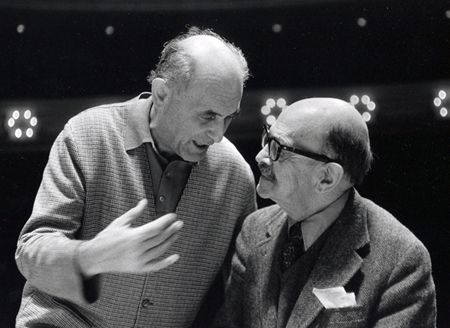
Sessions with conductor Georg Solti.
Source: Albany Records CD (My rip!)
Formats: FLAC(RAR), DDD Stereo, mp3(320)
File Sizes: 289 MB / 154 MB (FLAC version incl. cover & partial booklet)
The FLAC link has now expired. No more requests for this, please!
mp3 version – https://mega.co.nz/#!fU0wiZ6C!PuRRrrRRiyzGW57RmgJo7E5Xqa_5ua1yna1wlii 09-U
Enjoy! Don’t share! Buy the original! And please click on "Like" if you enjoyed this upload! 🙂
Jon Lord (1941-2012), of Deep Purple, composed his first "classical" work back in 1969.
The Concerto for Group and Orchestra has become a cult favourite, but Lord had to be prodded
and pushed into completing it by his "classical mentor", Malcolm Arnold. This disc, featuring two recent,
much more confident pieces, was issued not long after Arnold’s death, and Lord dedicated his
Disguises (for strings) to his erstwhile mentor.
The Piano Concerto Boom of the Tingling Strings was inspired by the poem "Piano"
by D.H. Lawrence:
"Piano (1918) by D.H. Lawrence
Softly, in the dusk, a woman is singing to me;
Taking me back down the vista of years, till I see
A child sitting under the piano, in the boom of the tingling strings
And pressing the small, poised feet of a mother who smiles as she sings.
In spite of myself, the insidious mastery of song
Betrays me back, till the heart of me weeps to belong
To the old Sunday evenings at home, with winter outside
And hymns in the cozy parlor, the tinkling piano our guide.
So now it is vain for the singer to burst into clamour
With the great black piano appassionato. The glamour
Of childish days is upon me, my manhood is cast
Down in the flood of remembrance, I weep like a child for the past."
Says Lord: "I began this piece after reading Lawrence‘s splendid poem late in 1998.
The poem’s depiction of a small boy sitting under the piano in “the boom of the tingling
strings” – a wonderful phrase – had an enormously strong resonance with my own
memories of childhood, and, in the first movement, I wanted to describe the same
nostalgic yearning for a vanished, maybe rose-tinted, past. What follows might be
seen to depict my journey forward from there, with occasional fond backward
glances, towards a world beyond Lawrence’s “flood of remembrance”, and his
weeping for the past. Although prone to that myself, I wanted to end in a more
hopeful and joyous world where one perhaps learns from the past rather than
living in it."
Lord on Disguises: "These portraits of three people were chosen in some way
for their similarities as well as their contrasts. They are: In the first movement,
a famous composer who was a seminal influence on my musical life [Arnold].
In the second movement, my late mother who, when she died, left me, among
countless wonderful memories, the little six-note theme that appears throughout
Music for Miriam. In the third movement an old friend, who brings me occasional
benign madness and hilarity when I most need it, and whose joviality disguises
a certain wistfulness."
Music Composed by Jon Lord
Played by the Odense Symphony Orchestra
With Nelson Goerner (piano)
Conducted by Paul Mann
"Boom of the Tingling Strings is a fourmovement piano concerto in the mould of those
essays by Ravel, Prokoflev, Shostakovich and Gershwin where the piano is a busy
primus inter pares. The title comes from a DH Lawrence poem about a small boy
crouching underneath a piano played by his mother. The music celebrates some
obvious Lord favourites – Sibelian pedal-points, a little recreation of "the" theme
from Saint-Saens’s Organ Symphony, bright Arnold-like brass fanfares – and
manages some memorable keyboard effects and an infectious energy all of its
own, not least in a barnstorming, virtuoso finale that has Proms Favourite written
all over it. In addition to Arnold ("MAs.q.u.e"), the friends pictured within the
tone-poems of Disguises are his mother ("Music for Miriam") and an important
friend called "The Clown", identified only by initials but well characterised in
some angular, Nordic string writing."
Gramophone
Source: EMI Classics CD (My rip!)
Formats: FLAC(RAR), DDD Stereo, mp3(320)
File Sizes: 293 MB / 165 MB
The FLAC link has now expired. No more requests for this, please!
mp3 version – https://mega.co.nz/#!mVMHmRCS!LgEV57vFsf7NnHEVUqfznQT5Q7ZEDZxENJRnbrx YSIo
Enjoy! Don’t share! Buy the original! And please click on "Like" if you enjoyed this upload! 🙂
Brilliant stuff. A great listening experience. Many thanks indeed for this.
Alison Young, the flutist on this recording, writes: "Two years ago, conductor Charles
Anthony Johnson approached me with the idea of producing a recording of flute concertos
together. We decided to concentrate on American music, exploring new territory by locating works
that had never been recorded or were currently unavailable on CD. Our decision to record the
particular four works on this recording was based on the music’s unique American characteristics,
defined by their compelling individualism. They are products of this century, but their composers
chose to use more traditional styles, utilizing familiar rhythmic patterns and tuneful melodies.
It was a sad discovery for us that these exceptional pieces were not only unavailable on recordings,
but had also seen little performance exposure. As I began studying and practicing, I realized that
this was a great injustice to the composers themselves as well as a loss to musical audiences.
The four works on this CD represent some of the finest flute music written in this country."
A romantic twentieth century classicist, David Diamond was a brilliant orchestrator, who
infused his clearly structured music with intensely individualistic lyricism. He had a large and varied
output, the core of which includes symphonies, quartets, and songs. The Flute Concerto is in
the traditional concerto form with three movements and an extended cadenza in the first movement.
It makes use of a large orchestra, which adds variety and excitement to the flute solo.
Hungarian-born conductor and composer, Antal Dorati (1906-1988), writes in a style he
describes as "recognizably contemporary but not unafraid of melody." Written in 1970, at a time
when Dorati was completing a tenure with the Stockholm Philharmonic and returning to the U.S.
to begin work with the National Symphony in Washington, D.C., Night Music for Flute and
Orchestra is a five-movement programmatic piece, rich in orchestral color and nostalgia, with
ad libitum cadenza passages for the flute and orchestra.
Published in 1954 for flute and piano and later arranged for a string orchestra accompaniment,
Ernst Krenek’s Suite, op. 147 is a simple, neo-classical work in four movements with
some atonal sections. It was premiered by Paul Horn, flutist, and Paul Katz, pianist, at the Pasadena
Art Museum in California on February 9,1958.
Music by (see above) & Bernard Rogers
Played by the Bohuslav Martinu Philharmonic Orchestra
With Alison Young (flute)
Conducted by Charles Anthony Johnson
"Alison Young, who has served as principal flutist for the Houston Ballet and Atlanta
Symphony, has chosen for this attractive collection American flute concertos that have
suffered "sad" neglect and have gone unrecorded, even though they are tuneful and
engaging. The spooky eloquence of Antal Dorati’s Night Music recalls the slow movements
of Bartok’s Piano Concerto 2 and Music for Strings, Percussion and Celeste. It is a nice
contrast to the brilliant, bristling playfulness of David Diamond’s Flute Concerto….The
most immediately appealing piece is Bernard Rogers’s coolly elegant Soliloquy. Ernst
Krenek’s Suite is more subdued and abstract. Alison Young is a lyrical player, just right
for this repertory. The Bohuslav Martinu Philharmonic – yet another Czech ensemble
recording American music because American Orchestras cost too much – offers colorful
support, especially in the impressionist swirlings of the Dorati."
American Record Guide
Source: Albany Records CD (My rip!)
Formats: FLAC(RAR), DDD Stereo, mp3(320)
File Sizes: 238 MB / 136 MB (FLAC version incl. cover & liner notes)
The FLAC link has now expired. No more requests for this, please!
mp3 version – https://mega.co.nz/#!CdUxhYaI!o7rVmcC3z8ojjzDYzQDmm7cYIiWD13g7Iri6pnz 7-FY
Enjoy! Don’t share! Buy the original! And please click on "Like" if you enjoyed this upload! 🙂
Aarre Merikanto (1893-1958) was a Finnish composer. He studied music in Helsinki
1911, Leipzig 1912–1914 and Moscow 1916–1917. Merikanto’s early style was rooted in
Finnish romanticism, but in the 1920s he developed a personal, atonal but not dodecaphonic
Modernist style. The reception of Merikanto’s works of this period was mixed: the
"Schott" Concerto for nine instruments was awarded in a competition organized by the
German publishers Schott & S???hne, but his domestic Finnish audiences and critics were generally
unenthusiastic and his opera Juha, today considered one of his major works, was never
performed during Merikanto’s lifetime. Disappointed with the reactions, starting in the early 1930s,
Merikanto gradually abandoned his more radical style and turned towards a more traditional
idiom based on Neoclassicism. The contrast is evident when you listen to the Violin Concerto No.2,
which is more modernistic, and the more accessible, neo-classical Violin Concerto No.4.
Music Composed by Aarre Merikanto
Played by the Helsinki Philharmonic Orchestra
With Kaija Saarikettu (violin)
Conducted by James DePreist
"The Violin Concerto No. 2, from 1925, is quite reminiscent in its sound-world of the
violin concerti of Karol Szymanowski, in the pervasive sound of shimmering strings
underpinned by the celesta, particularly in its first two movements. The concerto’s
third movement is more extrovert by comparison (Heikinheimo even baldly states in
the notes that "the finale does not unfortunately reach the same high standard"),
but with one last surprise at the very end, where the ending is not the standard
fortissimo, up-tempo crowd-pleasing ending that one would expect of a conventional
concerto, but is something rather quieter. But this concerto is a very appealing work,
and would be worth revival by some enterprising violinist (most likely, if it were to
happen, by a Finnish violinist).
The ‘Ten Pieces for Orchestra’ (1930), in spite of the word orchestra in the title,
utilize more chamber-like scale musical forces, sometimes on the scale of a chamber
orchestra (the premiere featured a 21-piece ensemble), and in other movement
literally just a handful of instruments. Given their eclectic and somewhat scattershot
nature, the work overall doesn’t necessarily claim to have a particular unifying
theme. It has to be said that featuring several slow movements in succession
somewhat made this listeners attention wander at times. Of course, your own
listening mileage may vary. Merikanto seemed to have a gift for surprise endings
in his works, because the last of the Ten Pieces has its own surprise ending,
which stops suddenly before seeming to be played out, musically speaking.
The Violin Concerto No. 4, from 1954, is more outgoing and overtly playful and
light-hearted in spirit compared to the 2nd Violin Concerto. The first part of its
slow movement is perhaps a bit diffuse in argument, but things tighten up by its
end. This concerto also has its own surprise ending in its finale, which again, like
the 2nd Violin Concerto, doesn’t go for the standard crowd-pleasing ending, but
ends in rather mezzo-dynamic territory. If the 2nd Violin Concerto is more exotic
in nature, the 4th Violin Concerto is more of a charmer, of a divertimento-like
character, and would be worth reviving in its own right."
Amazon Reviewer
http://i1164.photobucket.com/albums/q574/taliskerstorm/merikanto_zpsc7mcmwbk.gif
Source: Finlandia Records CD (My rip!)
Formats: FLAC(RAR), DDD Stereo, mp3(320)
File Sizes: 281 MB / 170 MB
The FLAC link has now expired. No more requests for this, please!
mp3 version – https://mega.co.nz/#!zYkCxQgQ!_E5bbNEPcTenzTa-jvOA8j9em6UjNYB9e0BRzYC0M5Q
Enjoy! Don’t share! Buy the original! And please click on "Like" if you enjoyed this upload! 🙂
Gentle in many places but overall very powerful. A delight.
Many thanks for this.
Sir Malcolm Arnold’s preference for classical forms is fully explored in this representative but
uniquely distinctive programme. Orchestrations of earlier works form the lyrical Concertino for Flute
and Strings and a Saxophone Concerto whose bold statements foreshadow the gritty and
powerful Symphony for Strings. Arnold’s virtuoso Fantasy for Recorder and String Quartet is a
late work, and the Cello Concerto was the composer’s last in this form; a piece which speaks directly
from the soul, appearing here in its premi???re recording.
Music by Sir Malcolm Arnold
Played by Northern Chamber Orchestra & Manchester Sinfonia
With Raphael Wallfisch (cello) & John Turner (recorder)
And Esther Ingham (flute) & Carl Raven (alto sax)
Conducted by Nicholas Ward & Richard Howarth
"Arnold’s concertos span his productive life from the 1940s to the 1980s and so do his
symphonies. The Cello Concerto was his last and was premiered – as was the solo cello
Fantasy – by Julian Lloyd-Webber. Never broadcast and rapidly disappearing after the
RFH premiere one wonders why it never made it into concert and radio lists. Perhaps
the performing rights were exclusively held and not further licensed; who knows. Not
sure why Novellos did not promote it at a time when Arnold’s star was rising. That’s not
the only mystery. When premiered it sported the title The Shakespearean but now that
has been magicked away. Did the title have any linkage with the music? The otherwise
useful liner-notes here tell us nothing about that. While not as lustrous and catchy
as the Oboe Concerto it’s certainly a quicker win than the grim torturous passions of
the Seventh and Ninth symphonies. The emotional core is the soulful middle movement.
The outer movements are rhythmically lively. The finale admits paragraphs of touching
depth at times recalling the Finzi Cello Concerto itself a work that looked in its outer
movements to tragedy but leavened and intensified by joy. This is a more compact
work but radiates a grand schema. You might compare this with another work which
was very much the property of Julian Lloyd-Webber: the Rodrigo Concierto como
un Divertimento (1981) as against the instant popularity of the same composer’s
Aranjuez Concerto. Like its companions here the recording is vivid and, as expected,
the faultlessly executed and inspired playing of Raphael Wallfisch is totally
engrossing. Has anyone recorded as much and always with such acumen and
communicative success.
The Flute Concertino is – like all four concertante works here – crafted and made
concert-playable by Liverpool-born composer David Ellis on this occasion orchestrated
from the 1948 Flute Sonatina. Flautist Esther Ingham catches the winks and
beguilement very well indeed and picks up on the resonances with Francis Poulenc;
the last movement has Arnold sauntering along very much the boulevardier and
fl???neur languidly intent on seduction. This is classic Arnold cantabile and can cosy
up rather comfortably with his two Flute Concertos recorded for EMI Classics by
Richard Adeney and John Solum (sadly never reissued). Ellis kits the work out
with idiomatically Arnoldian wings.
John Turner is very much a benevolent immanence when it comes to evangelising
work for the recorder among British composers. We are in his capable presence
for the five movement Fantasy for recorder and string quartet. He is more than
put through his paces as the cheeky humming bird of an Allegro emphasises.
The faster music has all the gamin helter-skelter of an Auric film score. Serenades
and sprints abound. I do not know who the quartet are.
The Piano Sonata dates from wartime. It forms the springboard for the Saxophone
Concerto. This is a most valuable addition as is the Flute Concertino. Carl Raven’s
sax plays the field from music that touches base with Glazunov’s concerto (review).
It ranges from hauntingly metropolitan nostalgia to the acidic Weill-like sardonics
of the finale.
You expect and get real perception from Paul Harris’s liner-note. He draws attention
to the Bart???kian asperity of the Symphony for Strings which he quite rightly says
links with the similarly stern Concerto for Two Violins. It was written for the Kathleen
Riddick String Orchestra which in 1946 had his first wife Sheila Nicholson as a
leading member. Do not expect Arnold the melodic weaver here although there
are tunes in the thorny melos. Fascinating material which places Arnold close to
Rawsthorne and Shostakovich. This is the psychological vein from which sprang
the asperities and snarling gloom of the Seventh and Ninth symphonies.
The disc is a hands-down winner in the Naxos catalogue and slips nicely into the
same rank occupied by Penny’s box of the symphonies. It is in complementary
company alongside the equally well targeted Naxos CD of the piano and
orchestra works."
Musicweb
Source: Naxos CD (My rip!)
Formats: FLAC(RAR), DDD Stereo, mp3(320)
File Sizes: 298 MB / 168 MB (FLAC version incl. cover & booklet)
The FLAC link has now expired. No more requests for this, please!
mp3 version – https://mega.co.nz/#!PJtSGDYL!gUZu-mM28w-UOH92LurS35XcSgxkHE27ITyDsf64orE
Enjoy! Don’t share! Buy the original! And please click on "Like" if you enjoyed this upload! 🙂
Japanese musicians have often taken the connection between man and nature as their
theme and award-winning composer Toshio Hosokawa stands strongly in that
artistic lineage. His Horn Concerto ‘Moment of Blossoming’ imagines the solo instrument
as a lotus flower and the orchestra as the cosmos. The theme of the blossoming lotus
continues in the piano concerto Lotus under the moonlight and in the songful Chant for
cello and orchestra, influenced by Sh???my??? singing (the ceremonial music of Japanese
Buddhism). The Horn Concerto was co-commissioned by the Berlin Philharmonic, the
Concertgebouw of Amsterdam and London’s Barbican Centre.
Music Composed by Toshio Hosokawa
Played by the Royal Scottish National Orchestra
With Stefan Dohr (horn) & Momo Kodama (piano)
And Anssi Karttunen (cello)
Conducted by Jun M???rkl
"Born in 1955, Toshio Hosokawa has become one of today’s leading Japanese composers
who are taking their musical world into the twenty-first century. With both musical feet
planted in tonality, his works often link nature and mankind…His orchestration follows
European traditions, a fact immediately made clear in the Horn Concerto with its subtitle,
Moment of Blossoming, the horn not viewed in its usual guise as a heroic instrument,
but one that pictures the blossoming of the lotus flower. That theme continues in the
Piano Concerto, Lotus under the moonlight…it does not forget that the beauty of the
flower eventually dies. Chant is, by any other name, a cello concerto, and uses as its
influence the ceremonial music of Japanese Buddhism. I imagine Hosokowa is delighted
with the performance by Anssi Karttunen, while Stefan Dohr…and the much acclaimed
Japanese pianist, Momo Kodama, complete the solo line-up. I have the greatest
admiration for the Scottish orchestra who recorded these extremely difficult scores
in just two days. Excellent sound."
David’s Review Corner
Source: Naxos CD (My rip!)
Formats: FLAC(RAR), DDD Stereo, mp3(320)
File Sizes: 192 MB / 138 MB (FLAC version incl. cover & booklet)
The FLAC link has now expired. No more requests for this, please!
mp3 version – https://mega.co.nz/#!PJVjRIoS!lhwBvr-O3luCyotc9nppEhBNUBN_y_ggRnRvuNK9XHE
Enjoy! Don’t share! Buy the original! And please click on "Like" if you enjoyed this upload! 🙂
The FLAC links for posts Nos. 301-310 have now expired. No more requests for these, please!
Malcolm Forsyth, honoured as Canadian Composer of the Year in 1989, has earned international recognition
as one of Canada’s leading composers. Born in 1936 in Pietermaritzburg, South Africa, Forsyth majored in trombone,
conducting and composition at the University of Cape Town and played trombone 8 years with the Cape Town
Symphony Orchestra (CTSO) while obtaining his Master’s and subsequently Doctorate degrees. His career as a
composer was launched when the CTSO performed Overture Erewhon (1962), and its success led to an invitation
to write the Jubilee Overture for the orchestra’s 50th anniversary in 1964. Sketches from Natal, commissioned
and broadcast by the Canadian Broadcasting Corporation in 1970, was Forsyth’s first major commission in Canada.
This vibrant work for chamber orchestra is the first of many subsequent compositions which explore the tribal
rhythms of his native country. Other works Forsyth produced during the seventies include the critically acclaimed
Concerto for Piano and Orchestra (1979), two symphonies, several works for brass and woodwind ensemble,
as well as two concerti grossi written for the Canadian Brass, Sagittarius (1975) and Quinquefid (1976).
Forsyth died in 2011.
Music by Malcolm Forsyth, Sergei Prokofiev & B???la Bart???k
Played by the Calgary Philharmonic Orchestra
With Jane Coop (piano)
Conducted by Mario Bernardi
"Pianist Jane Coop, one of Canada’s most prominent and distinguished artists, was born
in Saint John, New Brunswick and grew up in Calgary, Alberta, where she began her musical
education with Alexandra Munn and Gladys Egbert. For advanced studies her principal
teachers were Anton Kuerti in Toronto and Leon Fleisher in Baltimore.
At the age of nineteen she won First Prize in the CBC’s national radio competition (the
Young Performers Competition), and this, along with prizes at New York’s Kosziusko
Foundation Competition and the Washington International Competition, launched her
career. In the early years she made recital debuts at Wigmore Hall and Carnegie Recital
Hall (now called Weill Hall), as well as giving performances with the Toronto Symphony,
the Calgary Philharmonic the Victoria Symphony and the CBC Vancouver Orchestra.
In 1976 she was invited to tour the New England States as soloist with Mario Bernardi
and the National Arts Centre Orchestra of Canada in Mozart’s Concerto in D minor, K.466.
Subsequently she has played in over twenty countries, in such eminent halls as the Bolshoi
Hall in St. Petersburg, the Kennedy Center, Alice Tully Hall, Roy Thomson Hall, the Hong
Kong Cultural Centre, the Beijing Concert Hall and the Salle Gaveau (Paris). In her own
country she has given concerts from north to south: Whitehorse (Yukon) and Niagara Falls
(ON), and from west to east: Tofino (BC) and St. John’s (Nfld) and many, many cities,
towns and communities in between. She is in fact one of the few who has remained
resident in Canada throughout her career. Commissions from Stephen Chatman,
Ramona Luengen and others have been included in both her live performances and
her recordings.
Coop’s love of chamber music has led her to collaborate with artists from many parts
of the world. Her longtime association with violinist Andrew Dawes, and her more recent
partnership with cellist Antonio Lysy have given her the opportunity to delve into the
sonata literature of Beethoven, a body of music to which she feels particularly drawn."
Source: CBC Records CD (My rip!)
Formats: FLAC(RAR), DDD Stereo, mp3(320)
File Sizes: 222 MB / 155 MB (FLAC version incl. cover & artist bio)
The FLAC link has now expired. No more requests for this, please!
mp3 version – https://mega.co.nz/#!KI8zkA5R!PsMcebhfVtnA8B7eYRUv6_zJnMHdsl95SDob1u2 OetU
Enjoy! Don’t share! Buy the original! And please click on "Like" if you enjoyed this upload! 🙂
The Times called it a "superbly played concert" Ivan Ženat??? and the BBC Symphony Orchestra
conducted by Jiř??? Bělohl???vek performed Josef Bohuslav Foerster’s First Violin Concerto at
London’s Barbican Hall in December, 2007. The concerto was written at the urging of Czech violin virtuoso Jan
Kubel???k, the dedicatee of the work, and the soloist who premiered it in Chicago in 1910. The second concerto,
recorded in the studio, is a somewhat neglected part of the solo repertoire, not being a work for the presentation
of superficial violin virtuosity. Ženat???, however, succeeds in delving beneath the piece’s surface and uncovering
its introverted beauty for the audience. Thus these pieces appear together for the first time ever on this album,
produced in cooperation with BBC Radio 3.
Foerster was born in Prague in 1859. His ancestors were of Bohemian German ethnicity, but had assimilated
into the Czech community. The family normally lived in Prague and was musical. His father, a composer
also named Josef Foerster, taught at the Conservatory. (His father’s students included Franz Leh???r.) His brother
was artist Viktor Foerster. Josef was educated accordingly, and duly studied there. He also showed an early
interest in the theatre, and thought of becoming an actor. From 1884 he worked as a critic, and he would
prove to be a writer of distinction. In 1893 he married the leading Czech soprano Berta Lautererov???
(Bertha Lauterer) in Hamburg, during ten years making his living there as a critic, and she was engaged
at the Hamburg Staatsoper. In 1901 he became a teacher at the Hamburg Conservatory. Foerster produced
numerous compositions. His music is not nationalistic in the sense of employing the idioms of Czech
folk music. His work, words and music, is considered very subjective and personal, mystical and idealistic.
Music Composed by Josef Bohuslav Foerster
Played by the BBC Symphony Orchestra
With Ivan Ženat??? (violin)
Conducted by Jiř??? Bělohl???vek
"Josef Bohuslav Foerster (1859-1951) was a contemporary of Gustav Mahler and, like him, was
born in Bohemia, then still part of the Austrian Habsburg empire. Yet where Mahler is now unequivocally
regarded as an Austrian composer, Foerster’s lesser but still significant music is firmly part of a
Czech tradition that stretched from Smetana and Dvorak well into the 20th century. Foerster was
hugely prolific, a poet and critic as well as a composer, and nowadays his reputation rests largely
on his six operas and handful of orchestral works couched in a late romantic style that owes more
to Brahms than anyone else. This is claimed as the first complete recording of the two violin
concertos, which were completed in 1911 and 1926 respectively. They are intensely lyrical works,
mostly conventional in form but gorgeously expansive in the best of their melodic writing.
The performances seem beautifully judged, and the soloist Ivan Zenaty has the perfect
pure-toned expressiveness the music needs."
The Guardian
Source: Supraphon CD (My rip!)
Formats: FLAC(RAR), DDD Stereo, mp3(320)
File Sizes: 294 MB / 149 MB
The FLAC link has now expired. No more requests for this, please!
mp3 version – https://mega.co.nz/#!OQ10yLpQ!MLRQ0WL41DzhZZpwO8jJw-eWTcXzXyI4JEWJj1LvIMY
Enjoy! Don’t share! Buy the original! And please click on "Like" if you enjoyed this upload! 🙂
William Busch (1901-1945) was born of German-naturalised parents in London in 1901. His early musical
life focussed on the piano, with which he first made his name as a musician and earned his living as a young
man. His natural inclination, however, was always towards composition and through his friendship with Alan
Bush and then study with John Ireland and Bernard van Dieren, Busch developed his skills, The Two Pieces for
Wind Instruments was his first composition to be performed, in 1927. As the 1930’s progressed, just as his
mind turned more and more to composition so he curtailed his career as a pianist. In the mid 1930’s he made
the first of his important contributions to the canon of British song, wrote (unsurprisingly) several piano pieces
and in 1937 completed his breakthrough work, the Piano Concerto. The composition of the concerto had
been a self-critical struggle but its premiere was a success, gathering much praise from the likes of Finzi and
Vaughn Williams. It was from this time onwards, despite evacuation to Devon at the onset of the Second World
War and the frustrations at being distanced from the centre of musical life in London, that Busch composed
the bulk of his small output. He was also newly married to Sheila, with whom he was later to have two children,
Nicholas and Julia. William Busch’s life was cruelly cut short in 1945 when he was at the height of his creative
powers. Whilst most of his output consisted of songs, piano and chamber music (including the masterful Piano
Quartet), he also completed the Cello Concerto in 1941 and at the time of his death a violin concerto
was left incomplete. Busch’s voice was definitely English, lyrical but with an economy of material and a certain
toughness that set him apart from most other English composers of his generation and perhaps can be seen to
stem from his German heritage.
Music Composed by William Busch
Played by the Royal Philharmonic Orchestra
With Raphael Wallfisch (cello) & Piers Lane (piano)
Conducted by Vernon Handley
"Proving that there are still forgotten twentieth century English composers deserving of being
recognized, Lyrita has released the first recordings of the Cello Concerto and the Piano Concerto of
William Busch. A student of Ireland and a friend of Alan Bush, Busch had a deserved dual reputation
as a sharp-edged, strong-willed modernist composer and a kind-hearted and retiring man when he
died in 1945 at the age of 43, leaving behind a beloved wife, two children, and an impressive but
soon-forgotten body of works. This is a shame: the works here are fully worthy of joining the
English standard repertoire. Busch’s Piano Concerto was premiered in 1937 and dubbed by Vaughan
Williams as a "masterly" work, while his Cello Concerto was premiered in 1941 under Adrian
Boult, and he, too, was favorably impressed by the composer’s craft and inspiration.
As played here by pianist Piers Lane and cellist Raphael Wallfisch and accompanied by Vernon
Handley leading the Royal Philharmonic, both works live up to these compliments. Lean, muscular
music full of powerful ideas and gripping developments expressed with intensity, Busch’s music
is still resolutely tonal and unfailingly direct. And yet it’s also deeply melodic music with expressive
themes that will stick in your ear given half a chance. Both the Cello Concerto and the Piano
Concerto make virtuoso demands on the soloists as well as the orchestral players, but the writing
is never merely showy but rather always straight to the point without a wasted note or gesture.
Imagine a more sinewy and less sarcastic Walton or a more refined and less bucolic Vaughan
Williams and you’ll have some idea what to expect. If you enjoy those composers’ works, you’ll
surely enjoy Busch, as well. Lyrita’s digital sound is clean, clear, colorful, and deep."
All Music
Source: Lyrita Records CD (My rip!)
Formats: FLAC(RAR), DDD Stereo, mp3(320)
File Sizes: 206 MB / 119 MB (FLAC version incl. covers & booklet)
The FLAC link has now expired. No more requests for this, please!
mp3 version – https://mega.co.nz/#!fcEiiAoI!25lErd_DXCLt_MmuQRa-310xp7jUw4_sfi7GXqhTV2I
Enjoy! Don’t share! Buy the original! And please click on "Like" if you enjoyed this upload! 🙂
The recorder has been part of Western music for more than seven hundred years, during which
time it has enjoyed a particularly special relationship with the composers and musicians of England.
The present recording showcases the music of three generations of English composers who have
embraced the recorder, making significant contributions to the repertoire in the process. Gordon
Jacob, the eldest, composed numerous works for the recorder from the 1950s up until his last year.
Sir Malcolm Arnold was to follow Jacob’s example contributing his Concerto for Recorder,
originally written for and premiered by Michala Petri. Arnold’s amphibious existence as a composer
for both film and the concert hall is echoed in the career of our youngest contributor, the BAFTA award-
winning composer and recorder player Richard Harvey. The result? Pure musical enchantment!
Jacob’s delightful Suite has been a mainstay for recorder players (and an audience favourite…) since
its premiere, while Arnold’s rarely performed concerto is a late masterwork truly deserving a wider
audience makes a most welcome return to the catalogue. The program is capped off by Harvey’s
magical Concerto Incantato (composed especially for Michala) – a true concert piece for the Harry
Potter generation.
Music by Richard Harvey, Malcolm Arnold & Gordon Jacob
Played by The City Chamber Orchestra of Hong Kong
With Michala Petri (recorder)
Conducted by Jean Thorel
"What a lovely disc this is! This is a collection of three English recorder concertos by
Malcolm Arnold, Gordon Jacob, and Richard Harvey…Petri is asked to play several different
recorders throughout, from tenor to sopranino. The recorders are accompanied by a
delicate orchestra, consisting of strings, flutes, clarinets, harp, celesta, and percussion.
As the movement titles suggest, this is elfin, magical music.I have to confess it: I’ve
loved every Michala Petri CD that has come my way, and it is too late to turn back now.
She offers proof—if proof were needed—that the recorder transcends its schoolhouse
associations by producing sounds that are both uncommonly plangent and sweet.
Her many fans might be reluctant to duplicate the Arnold and Jacob works, but
Harvey’s concerto is a most enjoyable discovery, and so there’s really nothing to do
but to go out and purchase this CD as well!"
Raymond Tuttle – Fanfare
Source: Our Recordings CD (My rip!)
Formats: FLAC(RAR), DDD Stereo, mp3(320)
File Sizes: 254 MB / 184 MB (FLAC version incl. covers & booklet)
The FLAC link has now expired. No more requests for this, please!
mp3 version – https://mega.co.nz/#!TUUCyBIJ!BgIdXSoBVR3_LXPxU4w_d11Lh8dKY9Cod_-CeaAPp54
Enjoy! Don’t share! Buy the original! And please click on "Like" if you enjoyed this upload! 🙂
Andrzej Panufnik (1914-1991) made a dramatic escape from his homeland, Soviet-dominated Poland,
in 1954. Soon thereafter he settled in England and became conductor of the City of Birmingham Symphony
Orchestra. After 1959 he was able to retire from all regular positions and devote his time to composing.
His compositions often restrict themselves to pre-defined sets of intervals or notes, and he tended to use
geometric patterns as models in building his music. When he agreed to write a Piano Concerto he first
set the following aims: to write a virtuoso work, implying display of the soloist’s poetic sensitivity and technical
ability; to explore the entire sonic range of the piano; to give the orchestra a significant, powerful role; and
(this was a general goal of his) to impose very strong compositional discipline in order to achieve "maximum
expression with minimum means." The concerto is in three movements, amounting to about twenty-four
minutes. The first movement is not in a sonata-allegro form; it is entitled "Entrada," is moderately fast in
tempo, and at four and a half minutes functions as an introduction to the whole work. Panufnik uses a
three-note cell consisting of a major second and minor second. The second movement, Larghetto molto
tranquillo, comprises quiet dialogues, not only between the piano and the orchestra but among the wind
The third movement, Presto molto agitato, follows without pause with a violent eruption from the orchestra.
The movement is based on a pair of intervals, the major and minor third, except for a lyrical middle section
instruments and strings.
Although Witold Lutoslawski (1913-1994) was a concert pianist for five years of his career, he did not
get around to writing a Piano Concerto until the last decade of his life, a time when his music was
mellowing. The work is in four continuous movements and features greater emphasis on melody and less on
aleatoric counterpoint, an element found in many of his previous large compositions. Cast in four sections,
the opening panel serves as a sort of introduction, presenting the materials from which the succeeding
movements spring. The driving second movement begins menacingly in the bass register, swirling upwards,
taking on a Bart???kian sort of rhythmic spring, both on the keyboard and then in the orchestra. The music
mixes playfulness with a queasy sense of risk, of danger lurking around the corner. The third movement
also begins on the piano, the music slowly taking shape, initially seeming to struggle to find its lyrical way
in the long piano solo that dominates the first half. The theme for this final movement is delivered
throughout by the orchestra and is made up of short phrases filled out by rests. The music, then, has
a sort of stop-and-start character in its creepy opening.
Paweł Szymański (*1954) is a Polish composer. His music is based on strict technical discipline
and the initial sound material of Szymański’s pieces has roots in past conventions but is always processed
and composed from the beginning. Szymański himself talks of his music using the qualification “surcon-
ventionalism”. His single-movement Concerto for Pianoforte is episodic and atmospheric in character,
alternating between quiet passages and sudden eruptions.
Music by (see above)
Played by the Warsaw National Philharmonic Orchestra
With Ewa Poblocka (piano)
Conducted by Kazimierz Kord
"Ewa Poblocka is one of the Polish most distinguished pianists. She studied at the Music Academy in Gdansk,
and is the holder of top awards from piano competitions in Vercelli, Bordeaux and Warsaw. Ewa Pobłocka
has performed throughout most of Europe, as well as both North and South America, Singapore, Korea,
Japan, and Australia, appearing in such famous venues as the Herkules-Saal in Munich, the Musikhalle in
Hamburg, the Auditorio Nacional in Madrid, the Barbican Centre and Wigmore Hall in London, the
Musikverein in Vienna, New York’s Lincoln Center and Glenn Gould Studio in Toronto.
She has given concert performances with, among others, London Symphony Orchestra, English Chamber
Orchestra, Orchestra del Maggio Musicale Fiorentino, Bayerisher Rudfunkorchester, Nieder???sterreichisches
Tonk???nstlerorchester, Polish National Philharmonic Orchestra in Warsaw, Polish Chamber Orchestra and
the Polish Radio National Symphony Orchestra in Katowice."
Source: CD Accord CD (My rip!)
Formats: FLAC(RAR), DDD Stereo, mp3(320)
File Sizes: 263 MB / 151 MB (FLAC version incl. covers & booklet)
The FLAC link has now expired. No more requests for this, please!
mp3 version – https://mega.co.nz/#!KNsXza4Q!ebIWzPcrWQS6DOpsC4VNtNcrwBbaWWweSIz1Ocj Y2ao
Enjoy! Don’t share! Buy the original! And please click on "Like" if you enjoyed this upload! 🙂
Vytautas Bacevičius (1905-1970) remained virtually unknown as a composer during his lifetime, in
contrast to the fortunes of his sister Grażyna Bacewicz, who retained her Polish nationality. Rendered
stateless by the outbreak of World War II while he was on tour as a concert pianist in Argentina, he
eventually settled in New York until his death in 1970, giving acclaimed piano recitals, teaching, and
writing astoundingly original orchestral scores. He never lost his deep allegiance to and nostalgia for
Lithuania. This recording gives an eloquent introduction to his pianistic virtuosity and to his mystical,
Scriabinesque vision of the orchestra.
The Piano Concerto No.3 dates from his earlier years in the country (1946–49), when he was still
optimistic about his prospects, and when his ears were still very firmly in Europe. Thus, it has powerful
echoes of the “French” idiom of works such as the Troisieme and Quatrieme Mot, of Vision, written in
Kaunas, and of the Second Symphony ‘della Guerra’, composed while he was trapped in Buenos Aires.
Following a rather conventional “martial” opening, we hear a lyrical, chromatic oboe theme; it will be
with this contrasting second subject that the piano opens its argument, continuing with a transposed
version of the same music at the second solo entry. Then later, the piano soloist explores a third theme,
also lyrical and cantabile (marked Moderato), that is never shared in exact form with the orchestra.
There is a sense until the very concluding pages that piano and orchestra are less interlocutors and
collaborators than somewhat estranged observers of each other. In a similar way, the staccato themes
of the rondo Finale are related in type of movement, rather than in dialogue with each other.
In Bacevičius’s work chronology, the composition of Piano Concerto No.4 (1962), subtitled (in an
echo of Karol Szymanowski) "Symphonie Concertante," is sandwiched between two of the composer’s most
important achievements: the Symphony No. 6 ‘Cosmic’ of 1960, and Graphique, a symphonic poem
of 1964. 15 Thus, it is a vital work for the understanding of his “cosmic” period, and is in stark contrast
with the “French” lyricism of the third concerto. By “cosmic”, Bacevičius intends the inner world of the
non-verbal soul, the limitless imagination of the human mind liberated from corporeal concerns: "… I searched
for new creative and asthetic ideas in my own [Universe]; in this I was much helped by my subconscious,
which is an inexhaustible treasure and source of previously undiscovered ideas and creative elements of
abstract and tonal music."
Music Composed by Vytautas Bacevičius
Played by the Lithuanian National Symphony Orchestra
With Gabrielius Alekna (piano)
Conducted by Christopher Lyndon-Gee
"Though born in Poland in 1905, and spending his life in exile, Lithuania lays claim to the musical soul
of the virtuoso pianist and composer, Vytautas Bacevičius. The booklet’s biography sets out his years of
self-imposed exile from his father’s Lithuanian homeland, when he first went to study in Paris, followed
by years of touring as a concert pianist. He was on an extended visit to South America when the Second
World War began, and found his dual passport worthless. Fortunately he gained sanctuary in the United
States where he enjoyed a successful life in the concert hall and as a teacher. Yet from his younger years
he was intent on becoming a composer—his sister Grażyna enjoying success in that field—and was to
publish an extensive portfolio of scores. Sadly, from the vast volume of letters he wrote, we learn he
has always homesick for Lithuania, where he had spent his formative years. Stylistically he was wedded
to tonality through to the 1940’s, Scriabin the ever present inspiration, with the technical demands of
the Third concerto also owing much to Liszt. He then made a very conscious move towards the post-
war avant garde of the new Polish era of Lutosławski, and at that point he should have been readily
embraced into the concert repertoire, his Fourth concerto, ‘Symphonic Concertante’, from 1962, a
masterpiece of that period. Often forming part of the orchestral texture, the piano part is extremely
difficult, a second movement seemingly one of improvisation as it moves to the central orchestral
eruption. The highly coloured Spring Suite stands between the two, both in the date of composition
and style, at times following in the footsteps of Charles Ives. Throughout there is a deep commitment
in the playing of the Lithuanian Orchestra under Christopher Lyndon-Gee, the multi-award winning
pianist, Gabrielius Alekna, unfazed by his taxing role. I look forward to this ongoing series of discs."
David’s Review Corner
Source: Naxos CD (My rip!)
Formats: FLAC(RAR), DDD Stereo, mp3(320)
File Sizes: 264 MB / 175 MB (FLAC version incl. covers & booklet)
The FLAC link has now expired. No more requests for this, please!
mp3 version – https://mega.co.nz/#!bIEFgaRI!ps5PRWatckgviyapqfJnp-_CgZaGUX_rXvOxjX2zyn0
Enjoy! Don’t share! Buy the original! And please click on "Like" if you enjoyed this upload! 🙂
With his four concertos for marimba the Danish composer Anders Koppel (b. 1947) has played
a crucial role for the development of a concert repertoire for this distinctive instrument. His
concertos have been performed by virtuoso percussionists all over the world, but for this premiere
recording the composer has personally selected a quite special soloist, the young Polish marimba
player Marianna Bednarska, who is thus making her CD debut – accompanied by the Aalborg Symphony
Orchestra conducted by Henrik Vagn Christensen.
Anders Koppel was a co-founder in 1967 of the rock group Savage Rose. From 1976 to 2012 he was a member
of the trio Bazaar. He plays in the trio Koppel-Andersen-Koppel which includes his son, saxophone player
Benjamin Koppel. Koppel has twice received the Danish film award "Robert" for best film score (1994 and 1996).
His first daughter Sara Koppel is an animator and artist, and the second daughter Marie Carmen Koppel is a
renowned gospel, soul and jazz singer. Koppel has composed music for eight ballets for the New Danish Dance
Theatre and music for more than 150 movies, 50 theatrical plays and three musicals. He has also composed
more than 90 works for classical ensembles, chamber music and 20 concertos.
Music Composed by Anders Koppel
Played by the Aalborg Symphony Orchestra
With Marianna Bednarska (marimba)
Conducted by Henrik Vagn Christensen
"When Anders Koppel (b1947) was part of the rock band Savage Rose I doubt he – or anyone else –
would have expected him to pen four concertos for marimba. He has produced a sizeable number
of concertos, such as those for saxophone recorded by his son Benjamin in 2005.
The First Marimba Concerto (1995) was written as a test piece for the Luxembourg International
Percussion Competition. Two compact movements are succeeded by a much longer bravura finale
which rather unbalances the structure, and in truth outstays its welcome a touch away from
competitive occasions. The later ones are more satisfying musically. The string-orchestral
accompaniment of the Second (2000) provides a leaner context and expressively the subject
of time’s passing – suggested perhaps by the millennium – is gripping. The Third Concerto (2002,
rev 2003), like the Fourth (2006), was written for the virtuoso Martin Grubinger. No 3, Linzer, is
named for the Bruckner Orchestra in Linz, who premiered it, and deploys their standard late-
Romantic instrumental complement. No 4, In memory of things transient, is the most varied,
adding an organ into the mix in an engaging eight-movement suite occasioned by the 250th
anniversary of Mozart’s birth and including quotes from Mozart, Balkan folk music and an old
pop tune of Koppel’s.
The young Marianna Bednarska plays all four works – and the solo encore PS to a Concerto
(1995) – with ???lan and is expertly supported by the Aalborg Symphony Orchestra. Dacapo’s
sound is superb. Listening to this disc is a hugely enjoyable way to spend 79 minutes."
Gramophone
Source: Dacapo CD (My rip!)
Formats: FLAC(RAR), DDD Stereo, mp3(320)
File Sizes: 352 MB / 199 MB (FLAC version incl. cover & booklet)
The FLAC link has now expired. No more requests for this, please!
mp3 version – https://mega.co.nz/#!3NEwkToR!SbVE-Ll_BAsPVBVWnQJxCHeeDXHO6tNgwP_2kzBquj0
Enjoy! Don’t share! Buy the original! And please click on "Like" if you enjoyed this upload! 🙂
Lyell Cresswell, one of New Zealand’s most distinguished composers, is
represented on this recording by three examples of his mastery of the orchestral
sound world. His Piano Concerto is cast in seven movements, written in memory
of his fellow composer Edward Harper, and suffused in expressive intensity, by turns
grieving and unsettled. I Paesaggi dell’anima explores affinities between music
and art through imaginary landscape patterns. The Concerto for Orchestra and String Quartet
is ingeniously constructed and pursues the idea of progression from solo voices, to quartet
interplay and finally to a unanimous voice.
Music Composed by Lyell Cresswell
Played by the New Zealand Symphony Orchestra
With Stephen De Pledge (piano)
And the New Zealand String Quartet
Conducted by Hamish McKeich
"In December 2009 I wrote: ‘my first acquaintance with the New Zealand-born composer, Lyell Cresswell,
has been one of the most rewarding in recent times’. This second disc shows a composer moving forward
into new sound-worlds, and we have to journey with him, even when the going gets tough. Performances
from the New Zealand orchestra demonstrate much detailed rehearsal, with the fine New Zealand String
Quartet adding much to the Concerto for Orchestra. The pianist, Stephen De Pledge, readily moves from
his role of contemplation to frenetic activity in the Piano Concerto. The sound quality is excellent."
David’s Review Corner
Source: Naxos CD (My rip!)
Formats: FLAC(RAR), DDD Stereo, mp3(320)
File Sizes: 308 MB / 174 MB (FLAC version incl. cover & booklet)
The FLAC link has now expired. No more requests for this, please!
mp3 version – https://mega.co.nz/#!jVlk2QJQ!CGCm7XU7YrmxYZsSJb9PM3gCz9Fe_eYhxfsBCei LggE
Enjoy! Don’t share! Buy the original! And please click on "Like" if you enjoyed this upload! 🙂
If you found the PC enjoyable, you owe it to yourself to seek out Unsuk Chin’s PC, which was released by DG very recently.
???mile Jaques-Dalcroze (1865 – 1950), was a Swiss musician and an inspiring
music educator. He studied composition with Anton Bruckner, Gabriel Faur??? and L???o
Delibes, and in 1892 he became professor of harmony at the Geneva Conservatory. In
the early twentieth century he invented eurhythmics, an experimental and highly
successful method of learning that involves teaching musical concepts through movement
to develop an integrated and natural feel for musical expression. Turning the body
into a well-tuned musical instrument, Dalcroze thought, was the best way to provide
a solid musical foundation. As well as being an outstanding teacher – eventually
founding his own Institut in Geneva in 1915 – Jaques-Dalcroze was an accomplished
composer, writing operas such as Le Violon maudit, Sancho Panza and Les Jumeaux
de Bergame, as well as songs, choral and chamber works, and music for orchestra.
This outstanding CD features his two beautiful Violin Concertos, which show
him to be a master of his craft.
Music Composed by ???mile Jaques-Dalcroze
Played by the Moscow Symphony Orchestra
With Rodion Zamuruev (violin)
Conducted by Alexander Anissimov
"A good friend of several legendary late-romantic violin virtuosos, including Eug???ne Ysa???e
(1858-1931), the composer fully exploits the solo instrument in both works. The first of
these, completed in 1901, is in the usual three movements, beginning with an allegro that
for the most part adheres to sonata form. The two thematic ideas in the opening statement
are reservedly regal (RR) and cheerfully lyrical (CL) respectively. The sophisticated
development that follows is notable for a clever central fugato in the orchestra, which
the soloist transits in stately fashion, playing RR as if it were a chorale. The thrilling
recapitulation which soon follows features some fancy fiddling in addition to remembrances
of past themes.
The delicate largo is a melodic gem with cyclic references to RR and CL that make the work
all the more coherent. It’s the lull before the boisterous finale quasi fantasia, which is
brilliantly orchestrated with harp and wind embellishments. Additional memorable melodic
material is introduced at the outset, and then this masterfully constructed concerto ends
with the main thematic protagonists taking final bows.
The Poem for Violin and Orchestra came eight years later in 1909. When it first appeared
in print it was misleadingly subtitled his second concerto, probably at the insistence of
the publisher in hopes of selling more copies. A considerably more serious and advanced
work than the previous one, it’s in two extended free-form rhapsodic sections lasting
about twenty-minutes each. The first is sad, and may bring to mind Ernest Chausson’s
(1855-1899) Poem… of 1896. With spun-out melodies and a late romantic chromatic angst,
it’s extremely moving.
The last section is noteworthy for a recurring sinister martial ostinato pessimistically
proclaimed by the orchestra. But the violin eventually refuses to have any part of it,
rallying everyone into a triumphant outpouring of hope for the future. Again cyclic
thematic flashbacks endow this music with a satisfying sense of continuity.
The winner of many violin competitions, Rodion Zamuruev distinguishes himself in
dramatic, yet meticulous renditions of these little known selections. Many readers will
remember conductor Alexander Anissimov for his memorable accounts of Alexander
Glazunov’s (1865-1936) symphonic music. And it would seem he’s equally at home with
Jaques-Dalcroze’s, judging from the ideal support rendered by the Moscow Symphony Orchestra.
Recorded in the Mosfilm Studios, Moscow, the sound is superb, and presented across
a wide soundstage with just the right amount of reverberation. Zamuruev’s violin tone
is extremely rich, and he’s perfectly balanced against the orchestra."
Classical Lost and Found
Source: Guild CD (My rip!)
Formats: FLAC(RAR), DDD Stereo, mp3(320)
File Sizes: 386 MB / 180 MB (FLAC version incl. cover & booklet)
The FLAC link has now expired. No more requests for this, please!
mp3 version – https://mega.co.nz/#!vMsAGRbQ!tQg7hFVvO76UknW8LvPQryPRUg_SfdvuL2JOTF3 67MA
Enjoy! Don’t share! Buy the original! And please click on "Like" if you enjoyed this upload! 🙂
No more updates for the next ten days.
Have a good time wherever you go!!
The German composer Ulrich Leyendecker was born in Wuppertal in 1946, studying in Cologne and later teaching
at the Musikhochschule in Hamburg, followed in 1994 by a similar appointment as Professor of Composition at the
Heidelberg-Mannheim Musikhochschule. In his style of writing he represents a post-modernist generation, writing works
under traditional formal titles, while avoiding rigid adherence to these or a doctrinaire approach to composition.
This distinguished and ought-after composer gives his compositions titles from historically defined genres, such as
the Symphony No.3 and Violin Concerto included here, yet he avoids mimicking the styles of past
masters. Both works vividly demonstrate Leyendecker’s interest in music as sonic architecture, while managing to
communicate directly and emotionally with the listener.
Music Composed by Ulrich Leyendecker
Played by the NDR Sinfonieorchester
With Roland Greutter (violin)
Conducted by Johannes Kalitzke
"Of the Concerto the composer tells us "Constant changes in the relationship between solo and
orchestra and increasingly disparate instrumentation determine still more strongly the working
out in the middle section of the first movement". We should not deny that this work is powerful
and gripping. It demands your attention and will occasionally bowl you over. You embark on a
varied and exciting musical journey once it starts. First there is a scurrying idea which made me
immediately think of a Hardanger fiddler. Added to it are tiny points of colour which increase
until suddenly at 1’22" the pulse slackens to expose a fragile but still pointillist world. This
also grows in intensity, meanwhile the violinist’s virtuosity increases. After a further minute
even this idea is halted as the soloist weaves a melancholy line over curious forest noises.
And so it goes on fascinating the ear, new tempi, new textures, but all related. This section
too builds to a frantic and totally dissonant climax.
And incidentally, just to surprise you, the third movement is a set of nine variations on a song
which the composer had written a few years ago as part of his ‘Hebrew Ballads’.
Sometimes these pieces reminded me of James Dillon; sometimes of Hans Werner Henze.
But these analogies are stupid because frankly this music is pan-European and yet totally
individual."
Musicweb
Source: Naxos CD (My rip!)
Formats: FLAC(RAR), DDD Stereo, mp3(320)
File Sizes: 214 MB / 134 MB (FLAC version incl. cover & booklet)
The FLAC link has now expired. No more requests for this, please!
mp3 version – https://mega.co.nz/#!rR8FFbAK!KqvYbAxCJlBsRo7ohGyNqPmTLh7UvCqJ-On11kHOM2Q
Enjoy! Don’t share! Buy the original! And please click on "Like" if you enjoyed this upload! 🙂
All three works in this programme were written for the celebrated viola virtuoso Lionel Tertis (1876–1975),
an artist who dominated British viola-playing in the first half of the twentieth century, commissioning many
new works, setting new standards of playing and in the process designing a new model of solo instrument.
Tertis, almost single-handedly, ran an immensely successful campaign to make the viola an acceptable solo
instrument in its own right and to provide it with a repertoire. With his unprecedented virtuosity and rich
tone he particularly influenced the student composers at the Royal Academy of Music in the early years of
the twentieth century, including Arnold Bax, Benjamin Dale and York Bowen. Tertis toured this repertoire
abroad.
Tertis’s first major commission was the Viola Concerto by the Scottish composer John Blackwood
McEwen, and although this work did not generate a big following at the time it certainly drew attention
to Tertis’s playing and to the possibilities inherent in the viola as a solo instrument. The Viola Concerto
pre-dates the influence of Impressionism on British music, but was pioneering for its presentation of the
viola as soloist in a substantial three-movement work. Indeed, this is a viola concerto on the largest scale.
McEwen recognizes the difficulty of projecting the solo viola above the full orchestra.
Ralph Vaughan Williams’s Flos Campi (‘Flower of the field’) was first performed at London’s
Queen’s Hall by Lionel Tertis with the Queen’s Hall Orchestra and a choir from the RCM conducted by Sir
Henry Wood, on 10 October 1925. With its unusual scoring and biblical superscriptions from the ‘Song of
Songs’ (the choir only vocalize to ‘ah’) it puzzled its first audience. This is one of the most original pieces
in Vaughan Williams’s entire output. Not only are the forces required unusual but at the first performance
the words were printed in the programme in Latin, with that unthinking intellectual arrogance that once
led educated men to append quotations in classical Greek. Flos Campi’s six movements play continuously.
The Suite for Viola and Small Orchestra was written nearly ten years later, also for Lionel Tertis,
who gave the first performance with the London Philharmonic Orchestra conducted by Malcolm Sargent
at the Queen’s Hall on 12 November 1934. This work consists of three ‘groups’ of pieces—respectively of
three, of two and again of three movements. Individual numbers have been widely played with piano
accompaniment, but the complete Suite is a rarity, which is a pity because it contains some of the
composer’s most mellifluous invention. The chief characteristic of this work is the varied colour and
lightness of the orchestration.
Music by John Blackwood McEweb & Ralph Vaughan Williams
Played by the BBC National Orchestra of Wales
With Lawrence Power (viola)
And the BBC National Chorus of Wales
Conducted by Martyn Brabbins
"Lawrence Power is one of the pre-eminent viola soloists performing today, and has a number
of well-received recordings of British viola works under his belt (Walton & Rubbra concertos—
Bowen & Forsyth concertos—Bowen sonatas). His performances here are everything you
would expect, and the support he gains from Martyn Brabbins and the Welsh orchestra and
chorus are first class.
Production values are the usual high standard from Hyperion, and there is really nothing
more I can say than if you are a lover of British music and this passed you by in 2011 as
it did all but one of our reviewers, make haste to your usual source of record purchases."
Musicweb
Source: Hyperion Records CD (My rip!)
Formats: FLAC(RAR), DDD Stereo, mp3(320)
File Sizes: 275 MB / 178 MB (FLAC version incl. cover & booklet)
The FLAC link has now expired. No more requests for this, please!
mp3 version – https://mega.co.nz/#!GddiTArK!Uw4TF0Aops-K-A1CIh3EIyq6IHrlVmrFdzHQ0qaAZeQ
Enjoy! Don’t share! Buy the original! And please click on "Like" if you enjoyed this upload! 🙂
In 1938 Sir Arthur Bliss (1891-1975) was an adjudicator at the Ysa???e International Competition for pianists;
in his autobiography "As I Remember" he recalled that ‘Hearing … so much brilliant playing made me wish to write
a work for the instrument myself. I must have put intense concentration into the wish for almost immediately
afterwards the opportunity arose’. It came from the British Council, which commissioned Bliss to compose his
Piano Concerto to mark British Week at the 1939 New York World’s Fair. The premi???re took place on 10th
June that year, with Solomon as the soloist, and the New York Philharmonic Orchestra under Adrian Boult.
As to the character of the concerto, Bliss described it in his own programme note: ‘It was to be played by Solomon
and dedicated to the people of the U.S. so obviously it had to be a concerto in the grand manner and what is
loosely called “romantic”. Surely the Americans are at heart the most romantic in the world’. ‘Grand’ and ‘romantic’
are certainly the key words for it is both. Here is a big-boned work, energetic, ebullient, and forthright, but within
this expansive framework there is also room for quieter, more personal emotions portrayed in a rich vein of lyricism.
The adjective ‘romantic’ is equally appropriate for a work following in the tradition of concertos by Liszt, Tchaikovksy
and Busoni. Indeed the ferocious double octaves at the opening of the work indicate Bliss’s intentions and a
virtuoso of a high order is required to fulfil them.
Music Composed by Sir Arthur Bliss
Played by the Royal Liverpool Philharmonic Orchestra
With Philip Fowke (piano)
Conducted by David Atherton
"If I were to describe this concerto as Rachmaninov’s Fifth, or even Grieg’s Second, I suppose
it would be taken as a sneer rather than as a compliment, the implication being that Bliss’s music
is eclectic and unoriginal. But to have written a work like this in 1938 in a deliberately grand and
romantic manner to a commission from the New York World Fair and for it then not to have turned
out to sound Rachmaninovian would have been surprising. And since Bliss was half-American and
Rachmaninov spent many years in America, the points of similarity were even more coincidental.
But I mustn’t lay too much stress on these. This is a work very obviously by the composer of Things
to Come and the Music for Strings and it remains one of his most successful compositions, with a
pleasing astringency of which Rachmaninov was incapable.
Like, I imagine, many other older Gramophone readers, I learned this concerto from Solomon’s
splendid wartime HMV recording [scheduled for reissue in the autumn—Ed.], made like this one in
Liverpool. Philip Fowke plays it with the same kind of flair and conviction. He believes in it and he
makes the listener do likewise. The recording is rather ‘tubby’ in places but always acceptable and
has transferred well to CD. Also on the disc is the rather moving March of Homage written after
Churchill’s death in 1965.’"
Gramophone
Source: Unicorn Kanchana CD (My rip!)
Formats: FLAC(RAR), DDD Stereo, mp3(320)
File Sizes: 188 MB / 101 MB
The FLAC link has now expired. No more requests for this, please!
mp3 version – https://mega.co.nz/#!bEVSRJRR!kB1aLmppY0k-mgArE2zCkaOk41GRb6XovdSuOjkbshc
Enjoy! Don’t share! Buy the original! And please click on "Like" if you enjoyed this upload! 🙂
Show Piece for Orchestra was written in the spring of 1954 on commission from Columbia Records Incorporated,
as the musical element of an LP demonstrating the composer’s most advanced means of reproducing orchestral
instruments. It was first performed by the Philadelphia Orchestra on May 7, 1954, with Eugene Ormandy conducting.
Given its origin, it may be understood that "Show Piece" is a good title for this work, and the music contains a great
deal of virtuosic writing for a modern symphony orchestra. However, Morton Gould has disavowed any intention of writing what
he describes as "a trick piece." Gould has chosen as the framework for his thoughts the theme and variations form,
with (as might be expected from his agile mind) one difference. If the players seem to be tuning up while the conductor
is on the podium giving them cues, no contretemps has occurred.
StringMusic is a large-scale suite, or serenade, for string orchestra, consisting of five movements. There is
much antiphonal writing sometimes suggesting two separate string orchestras, using such devices as col legno
(tapping the strings with the wood part of the bow) and playing without vibrato. Basically, StringMusic is a
lyrical work. It won Gould a Pulitzer Prize in Music.
As far as anyone can determine, there have been just two public performances of Morton Gould’s Piano Concerto;
the 1938 radio premiere, with Gould at the piano and Alfred Wallenstein on the podium and a concert performance in
1993 at Queens College, with pianist Randall Hodgkinson and conductor Maurice Peress. The 1993 performance was
in honor of the composer’s 80th birthday. Gould showed up for a two-piano rehearsal, with Leslie Amper, Mr. Hodgkinson’s
wife, who performed the orchestral part. Mr. Peress remembers that after the first movement, which is full of note
clusters and mixed rhythms, Mr. Gould said, "That guy Stravinsky’s been stealing from me ever since I was a kid."
After the bluesy second movement, Mr. Gould commented, "That shows I was just as miserable in 1938 as I am
today." About the virtuosic third movement, Mr. Peress recalls Mr. Gould did not make any particular observations.
Music Composed by Morton Gould
Played by the Albany Symphony Orchestra
With Randall Hodgkinson (piano)
Conducted by David Alan Miller
"Three world-premiere recordings of large-scale pieces by Morton Gould are cause for celebration, and
with this release we are close to having all of Gould’s orchestral pieces on either LP or CD… not the least
here is Gould’s String Music, the work for which he won the 1995 Pulitzer Prize in music. The work is a
five-movement suite reflecting, as Gould wrote in his program note to the score, the “man and musician
we have all come to know for the intensity and emotion of his commitment to music and life, Mstislav
Rostropovich”’ anyway, what’s important is that the work is a lovely, intensely lyrical, and thematic work’
Conductor David Alan Miller leads the Albany Symphony in totally sympathetic performances that I can’t
imagine being bettered. [In the Piano Concerto] Randall Hodgkinson tosses off his solo lines with aplomb.
Albany’s sound is complimentary to the music’s colours. This CD is a prime example of intelligent
A&R planning.’"
Fanfare
Source: Albany Records CD (My rip!)
Formats: FLAC(RAR), DDD Stereo, mp3(320)
File Sizes: 264 MB / 134 MB (FLAC version incl. cover & liner notes)
The FLAC link has now expired. No more requests for this, please!
mp3 version – https://mega.co.nz/#!nMcnTaYL!NFnFXalFbmdxaLXPR2XlYLiJSJpITvUyDtzKMlD omlw
Enjoy! Don’t share! Buy the original! And please click on "Like" if you enjoyed this upload! 🙂
Ernst von Dohn???nyi was for many years a little known and unjustly neglected composer. Chandos’
series of recordings of works performed by Matthias Bamert and the BBC Philharmonic significantly
increased his profile, and are regarded as best examples of this repertoire. 2010 marked the fiftieth anniversary of
Dohnanyi’s death. To commemorate this anniversary, Chandos has packaged the two Piano Concertos on one
album, released on the Classics label. Fifty years separate Dohn???nyi’s Piano Concerto No.1 from his Piano
Concerto No.2. For the first concerto, completed when he was just twenty-one, won the prestigious B???sendorfer
Prize. The second is a thoroughly engaging work and notable for being perhaps the last substantial piano concerto
written in the grand Romantic tradition. The irrepressible Howard Shelley performs these virtuosic concertos.
Music Composed by Ernst von Dohn???nyi
Played by the BBC Philharmonic Orchestra
With Howard Shelley (piano)
Conducted by Matthias Bamert
"Ernst (or Ern???) von Dohn???nyi was Bart???k’s classmate, saw his music dismissed by the Nazis
as too Hungarian (and, moreover, related by marriage to Dietrich Bonhoeffer) and by the
Hungarian Communists as not Hungarian enough, and ended up as a teacher at Florida State
University. He suffered a final indignity when modernist fundamentalists rejected his music
as too conservative, but a modest revival has been helped along by the fame of his grandson,
conductor Christoph von Dohn???nyi. The two piano concertos here could each be programmed
by a middle-rung symphony orchestra and visiting pianist and would send an audience home
happy. Although they were composed almost 50 years apart, they are recognizably similar in
structure. Both first movements introduce the piano early and use it to subject the orchestral
material to lively questioning in complex, rather episodic dialogues. The middle movements are
lushly lyrical, and the finales are more motoric, with the sole hints of Hungarian flavor in a
generally Brahmsian style. Originally recorded in 2002 and 2004, the two concertos were put
together in a sensible 2010 reissue. British pianist Howard Shelley and the BBC Philharmonic
under veteran conductor Matthias Bamert deliver engaging, not overly sentimental readings
that fit the music, and the Chandos sound is unimpaired in the reissue. At a budget price
this is a nice find for those interested in national styles, or, indeed, any lover of the late
Romantic concerto."
All Music
Source: Chandos Records CD (My rip!)
Formats: FLAC(RAR), DDD Stereo, mp3(320)
File Sizes: 270 MB / 172 MB (FLAC version incl. cover & liner notes)
The FLAC link has now expired. No more requests for this, please!
mp3 version – https://mega.co.nz/#!WZtAUBqI!ev2QyEKAkuHLZuNsgH_B6RlhbN-0wA4ltw-bNFhe908
Enjoy! Don’t share! Buy the original! And please click on "Like" if you enjoyed this upload! 🙂
PS: by the way, i’ve finally found the Khatchaturian i was looking for in this forum
this one by Frederick Fennell wind ensemble, i love it.
 (http://www.hostingpics.net/viewer.php?id=993169MI0003424382.jpg)
(http://www.hostingpics.net/viewer.php?id=993169MI0003424382.jpg)
if someone is interested i have it in lossless (pm me)
Although written in a difficult modern style, the dramatic qualities of Peter Maxwell Davies’s
Piano Concerto does not lack in appeal for the reasonably experienced average classical listener.
Davies was born in 1934. When asked whether he is surnamed "Davies" or "Maxwell Davies" his publisher
says everyone just calls him "Max." He came to prominence in the 1960s as a member of
the radical "Manchester Group" of young composers and musicians. He moved away from formally
twelve-tone composition into a style that uses "extended tonality": that is, music with a tonal center
but using all chromatic pitches and considerable dissonance freely.
His interest in a Piano Concerto was stimulated by the playing of Kathryn Stott whom he
had heard play often and worked with as conductor with the Scottish Chamber Orchestra in a Mozart
concerto. He says he was also especially impressed with her playing of the very upbeat piano
concerto by English composer John Ireland. Of his keyboard writing in this concerto Max writes:
"I listened to her playing very carefully and much of the piano writing is related exactly to how
she plays." The concerto was finished on September 24, 1997, and is dedicated "for Kathy."
Once a plan had begun for Max to write a concerto for Kathryn Stott, their initial plan was for a
concerto for a chamber-sized orchestra on a Mozart model. But Max soon developed plans for a
bravura and virtuosic work of the dimensions and power of the Tchaikovsky Piano Concerto No.1.
Other models that might be mentioned are the crisp and powerful concertos of B???la Bart???k and
Sergei Prokofiev. Accordingly, the concerto is over 35 minutes long and contains sharp-edged contrast
between powerful, rushing music and tense, quiet episodes – a reminder of Prokofiev.
With the seemingly contradictory characteristics of being both charming and modern, the Piccolo
Concerto goes to the top (along with Lowell Liebermann’s concerto) of the slim repertory of this
bright, smaller brother of the flute. He wrote this work for relatively small orchestral forces and
the piccolo on a commission from one of London’s major ensembles, the Royal Philharmonic Orchestra,
for its principal piccolo player. It was first performed by Stewart MacIlwham and the Royal Philharmonic,
the composing conducting, at the Royal Concert Hall in Nottingham, England, on April 23, 1997.
Although the piccolo has a tone that can cut through the orchestra — or ride above it — in its high
register, Davies did not rely on that quality to assure a balance between soloist and orchestra.
The concerto lasts about 15 minutes and is in the standard three movements, though they are
played without pause.
[I]Music Composed and Conducted by Sir Peter Maxwell Davies
Played by the Royal Philharmonic Orchestra
With Kathryn Stott (piano) & Stuart McIlwham (piccolo)
"Peter Maxwell Davies has written more concertos than most, but this is his first
for the most popular of all concerto instruments. It is dedicated to Kathryn Stott,
whom he has heard in a wide range of repertory (including a Mozart concerto that
he conducted); he says that “much of the piano writing is related exactly to how
she plays”. Just so, and he might have added “and to what she evidently enjoys
playing”. It is a virtuoso piece, with florid solo writing in both the outer movements,
and a deal of grand pianistic rhetoric.
The Piccolo Concerto (in both senses: its total duration is less than the Piano
Concerto’s first movement) is full of long-lined lyricism and dazzling brightness,
but the piccolo’s thinness of tone is also dramatically and effectively set against
orchestral mass and its high lines often hover above cavernous depths. Maxwell’s Reel,
with Northern Lights is another of Maxwell Davies’s exuberant lighter pieces, like
An Orkney Wedding, with Sunrise, and it could prove just as popular.
Excellent performances; I could have done with a little more impact to the
piano sound, but the recordings are otherwise good."
Gramophone
Source: Collins Classics CD (My rip!)
Formats: FLAC(RAR), DDD Stereo, mp3(320)
File Sizes: 236 MB / 174 MB
The FLAC link has now expired. No more requests for this, please!
mp3 version – https://mega.co.nz/#!rJVVFJrY!D22SpYmX8Wf-cW66xkkDaz3S9egeaJIEsFDRkf4Y0uE
Enjoy! Don’t share! Buy the original! And please click on "Like" if you enjoyed this upload! 🙂
Attracted by a delightful fusion of early music sonorities with modern expressiveness, Philip Glass,
John Rutter and Jean Francaix in this amazingly rich and varied programme build on the
magnificent harpsichord concerto legacy of JS Bach. John Rutter’s beautiful Suite Antique is full
of rich and haunting themes, with a significant solo flute part and a jazzy Waltz which is as much Brubeck as
Bach. Philip Glass delivers an exciting experience of virtuoso instrumental blending and solo expressiveness,
and with typical wit and elegance. Jean Fran???aix’s Concerto is terrific fun throughout.
Music by John Rutter, Philip Glass & Jean Francaix
Played by the Westside Chamber Orchestra
With Christopher D. Lewis (harpsichord)
Conducted by Kevin Mallon
"What a great disc this is: three delightful contemporary works for harpsichord and orchestra,
easy on the ear, but clever and consistently interesting. John Rutter’s Suite Antique might be
English Poulenc. The tunes are captivating, and the “antique” element needs to be taken with a
large grain of salt (the “waltz” is subtitled “A Jazz Waltz”). The writing for flute and strings is
immaculate, graceful, and sounds like great fun to play, while the keyboard solo takes excellent
advantage of the instrument’s sparkling timbres and ability to delineate rhythmic patterns with
gentle persistence. The performance is also terrific, as fine as the composer’s own, with John
McMurtery an excellent flute soloist with a firm, round tone.
Glass’ Harpsichord Concerto also has plenty of arresting harmonies and a wide range of textures.
The outer movements chug along with unquenchable vitality, and even touches of humor in the
finale, while the central slowish movement makes imaginative play with a variety of melodic
shapes. It’s extremely visual: you can almost see the music as it unfolds. Glass takes full advantage
of the harpsichord’s natural ability to act both as soloist and accompaniment, with the result
that the music’s shifting layers consistently entertain through, and not despite, the usual
abundance of repetition.
As for the Fran???aix, the Concerto begins with two contrasting toccatas, followed by a songful
andantino, minuet, and finale. It’s a zesty romp that brings the disc to a wholly winning close.
Christopher D. Lewis plays a bright, sweet-toned harpsichord with minimal mechanical clatter.
His digital dexterity proves very satisfying, and he’s excellently balanced against the extremely
capable West Side Chamber Orchestra under Kevin Mallon. This is one of those discs that you
might overlook, but you’d be missing a real treat. I’ve already played it several times just
for pleasure, and so will you."
Classics Today http://i1164.photobucket.com/albums/q574/taliskerstorm/p10s10_zpsu1jpvciv.gif
Source: Naxos CD (My rip!)
Formats: FLAC(RAR), DDD Stereo, mp3(320)
File Sizes: 315 MB / 153 MB (FLAC version incl. cover & booklet)
The FLAC link has now expired. No more requests for this, please!
mp3 version – https://mega.co.nz/#!eVEFgDzJ!uR-eOnwz-qHv0PRF9Ggcj8r7Cdb-lAvOIQSUltiee18
Enjoy! Don’t share! Buy the original! And please click on "Like" if you enjoyed this upload! 🙂
Christopher Rouse on his work: "I completed my Concert de Gaud??? in
Pittsford, New York on August 1, 1999. The work was a joint commission for guitarist
Sharon Isbin from the Norddeutsche Rundfunk and the Dallas Symphony Orchestra,
with additional funding provided by Richard and Jody Nordlof, to whom the work is dedicated.
In conceiving a guitar concerto, my thoughts went immediately to the great Spanish tradition
of music for this instrument, and it seemed logical for me to exhibit my admiration for this
tradition in my own composition. This in turn led me to reflect upon the work of the extraordinary
Catalan architect Antoni Gaud???, hence the Catalan-language title for the concerto. What has
always struck me particularly strongly about Gaud??? is his quintessentially Spanish combination
of surrealism and mysticism, and I strove to include these elements in this score.
Towards this end, I used that music which most might well recognize as archetypically
Spanish — flamenco — as a foundation for the score. I then proceeded to "melt," "bend,"
and otherwise transform this material into something I hoped would be musically akin to
the way in which Gaud??? would take a traditional design and add fanciful, phantasmagoric
touches to make it unlike the work of any other architect.
"Balance and counterpoint is one of the most important things to me in writing music,"
writes composer Tan Dun about his Guitar Concerto (Yi 2), "not only note-to-
note in a single style and tempo, but in a much broader sense. Through the Yi-Ching
(the Chinese philosophical work Book of Changes, 5th century BC), I became interested
in the balance between that which already exists, and that which has not yet come to
be. I learned that ways of balancing the existing and the potential are truly unlimited.
This idea began to enlarge my understanding of counterpoint. I began to think that it
could include not only the relationship of notes, but of styles, tempos, timbres,
dynamics, structures — even of different ages, of the converging worlds of East and West.
Yi 2 presents a “counterpoint of styles” to Yi 1, a concerto for cello and
orchestra entitled Intercourse of Fire and Water. The writing for solo guitar is totally
different from that for the cello; rhythmically and melodically, the guitar’s materials are
influenced by Spanish flamenco music. Furthermore, a “cultural counterpoint” is found
within the guitar part itself: it blends and contrasts the different traditions, relationships,
and characteristics of two plucked instruments: Spain’s flamenco guitar and China’s pipa.
The guitar’s solo line is no longer coherent as flamenco or pipa music; it has been
transformed by this mingling and exchange of two cultural traditions. Something entirely
new has been created which doesn’t echo tradition, but nevertheless retains the
“shadow” of its roots.
Music by Christopher Rouse & Tan Dun
Played by the Gulbenkian Orchestra
With Sharon Isbin (guitar)
Conducted by Muhai Tang
"Isbin herself is a dazzler; her work as a technician is top notch.
Even more importantly, she possesses an outstanding sense of color
and understanding of the world of textures available to her as a master
guitarist. Her crisp articulation also is remarkable, perhaps reflecting
the influence of her former teacher, the celebrated keyboardist and
Bach expert Rosalyn Tureck. It’s hard to judge much of the contributions
of the Lisbon-based Gulbenkian Orchestra, or even those of conductor
Muhai Tang, who seems to be pretty much following Isbin’s lead.
The sonic quality of the recording is sharply divided; Isbin is miked
crisply and brightly but the orchestra is distant, dark, and dim."
Musicweb
Source: Teldec CD (My rip!)
Formats: FLAC(RAR), DDD Stereo, mp3(320)
File Sizes: 220 MB / 118 MB
The FLAC link has now expired. No more requests for this, please!
mp3 version – https://mega.co.nz/#!XNFxETKR!D6qlctN-pLEiU2M6QDo2Zo1UWx7UjIbpueD0OOOIQyc
Enjoy! Don’t share! Buy the original! And please click on "Like" if you enjoyed this upload! 🙂
Named by the Baltimore Sun as an ‘Artist to Watch’, New Jerseyborn Jonathan Leshnoff (*1973) is swiftly
gaining international recognition. This disc shows three facets of his musical personality: the Violin Concerto,
praised as ‘remarkably assured, cohesively constructed and radiantly lyrical’; Distant Reflections, a lyrically
meditative chamber work that reaches an intense climax before fading back into silence; and the String Quartet
No. 1 “Pearl German”, whose four movements trace the cycle of seasons through an everchanging musical landscape.
Music Composed by Jonathan Leshnoff
Played by the Baltimore Chamber Orchestra
With Charles Wetherbee (violin)
And the Carpe Diem String Quartet
Conducted by Markand Thakar
"The music of Jonathan Leshnoff (b 1973) falls squarely in the middle of contemporary
American romanticism. Its melodic lines are quite distinct, its harmonics balanced, its
depth given by the composer’s mastery of both counterpoint and colorful orchestration.
Though richly tonal, this is music quite distinct from anything else that’s out there at the
moment.
Leshnoff’s Violin Concerto (2006) is a five movement work loosely based on the travails
of a Holocaust survivor. The violin conjures Jewish folk melodies without quoting them
directly, as the work’s movements alternate between fast passages and very slow,
elegiac ones. Distant Reflections (2003) is for violin and orchestra and is something of
an American Lark Ascending without any of Vaughan Williams’s melancholy. As in the
previous work, Charles Wetherbee is the violinist, and his style has a selflessness to
it that’s quite refreshing. He shines where cadenzas call for it, but seems quite
comfortable in his obligato roles.
Quartet 1, Pearl German (2006) is based on the four seasons, with Winter coming first.
That helps the work seem more coherent than most other string quartets: it has more
depth and is much more thematically cohesive. IV, Summer, is the standout: a solemn
cross between Barber and Shostakovich in their more dour moments. This is very
attractive music and the kind of release that Naxos is known for. Sound is superb,
especially for the quartet."
American Record Guide
Source: Naxos CD (My rip!)
Formats: FLAC(RAR), DDD Stereo, mp3(320)
File Sizes: 261 MB / 130 MB (FLAC version incl. cover & booklet)
The FLAC link has now expired. No more requests for this, please!
mp3 version – https://mega.co.nz/#!PI0y1a7Y!Kf6mPIVNPt69Qb28w5YdMqAY3J3JKiA1hgmBS6H u2Ds
Enjoy! Don’t share! Buy the original! And please click on "Like" if you enjoyed this upload! 🙂
Paul Hindemith wrote much varied music for the piano with orchestral accompaniment. He intended his
Theme with Four Variations (The Four Temperaments) as an experimental ballet, and it was first performed in
this way in 1946 with choreography by George Balanchine. The manuscript of the Piano Music with Orchestra
was found amongst pianist Paul Wittgenstein’s papers after his wife’s death in 2001. The Concerto for Piano and
Orchestra is astutely conceived, whilst the Concert Music for Piano, Brass and Two Harps reveals Hindemith’s
constant search for varied sound colour in his instrumentation.
Music Composed by Paul Hindemith
Played by the Yale Symphony Orchestra
With Idil Biret (piano)
And Oivia Coates & Chelsie Lane (harps)
Conducted by Toshiyuki Shimada
"I have always enjoyed the music of the mid-twentieth violist, theoretician and composer,
Paul Hindemith. As a composer, Hindemith’s style is a direct outgrowth of his theories on
musical structure and harmony, as he wrote of in The Craft of Musical Composition. Hindemith
stressed what, for him, were the two critical physical phenomena, the overtone series and
the combination tones. In part, his harmonic structure depended on a very careful and
systematic selection of pitches based on their position in an overtone series (which he
referred to as Series 1) and as a sequence of intervals built on the full chromatic scale,
arranged in increasing order of dissonance (in his system, Series 2).
This is only fascinating to those who study Hindemith’s music or like analyzing why his
music sounds unlike anyone else’s. The fact that, to many, his music is unique is also
why his music; despite some genuine masterworks, like his opera, Mathis der Maler
(Matthias the Painter), remains a bit of a niche attraction. Many – I am not one – find
his music dry or cold or sterile or mathematical; as opposed to genuinely emotive and
exciting.
This collection does present, in one very well-presented package, his piano and
orchestra repertory. I think each of these works, covering a period in his life from
1923 to 1945, is quite interesting in their own right."
The Audiophile Audition
Source: Naxos CDs (My rip!)
Formats: FLAC(RAR), DDD Stereo, mp3(320)
File Sizes: 582 MB / 331 MB (FLAC version incl. covers & booklet)
The FLAC link has now expired. No more requests for this, please!
mp3 version – https://mega.co.nz/#!7AszSYyA!wwmOxKsjIhLvPGOLTxXMtqJT7aUx8ZAReweegpo I9_Q
Enjoy! Don’t share! Buy the original! And please click on "Like" if you enjoyed this upload! 🙂
Andrew List composes music in many different genres including orchestral works, string quartet, vocal,
choral music and opera, music for children, solo works and a variety of chamber ensembles. A resident of
Boston, Massachusetts, Mr. List is a Professor of Composition and Theory at the Berklee College of Music.
Born in St. Louis, Missouri, List is a graduate of the New England Conservatory of Music. He received his
doctorate in music composition from Boston University where he studied with Bernard Rands and Nicholas
Maw. Lee. T. McQuillan, a resident of Middletown, Connecticut, studied Music Education at Barrington
College in Rhode Island and later received his Bachelor of Music in composition from the Hartt School of Music.
Arthur Welwood is a Professor of Composition at the Berklee College of Music. Wind Sky Clouds,
commissioned by jazz trumpeter Greg Hopkins, was completed in the summer of 2003. The premiere performance
took place in Hartford, Connecticut on November 16, 2003, with Hopkins playing the solo trumpet and flugelhorn
and Tibor Puszati conducting the Connecticut Valley Chamber Orchestra. The piece is an example of "Third
Stream," a phrase first coined by composer Gunther Schuller to describe the fusion of jazz and classical styles
and where the crossover from one to another in the course of the piece is blurred and often imperceptible.
Music by [see above]
Played by the Dvor???k Symphony Orchestra
With Eva Szekely (violin) & Linda Lister (soprano)
And Everett McCorvey (tenor) & Greg Hopkins (trumpet)
Conducted by Julius P. Williams
"Professor Szekely has concertized throughout North America, Europe, and South America.
She has appeared on the Musique en Seine series in France and the Lambach Festival in Austria.
In Brazil, she has been a regular guest artist at the internationally acclaimed Chamber Music
Festival of Par??? and the Londrina Music Festival, and has presented concerts and masterclasses
in all of that country’s major musical centers. She has premiered works written and dedicated
to her by distinguished contemporary composers including, among others, James Willey,
Chester Biscardi, Erich Leitner, and Roberto Escobar. She has been heard on national radio
and television broadcasts in the United States and abroad and has recorded for CRI and
Albany Records.
Professor Szekely received her bachelor of music and master of science degrees in violin
performance from The Juilliard School, where she was a student of Ivan Galamian. She
studied chamber music with Franco Gulli, Zoltan Szekely, and members of The Juilliard
Quartet. She teaches violin and is first violinist of the Esterhazy Quartet, ensemble-in-
residence at MU. She currently holds the Catherine P. Middlebush Chair in Fine Arts."
Source: Albany Records CD (My rip!)
Formats: FLAC(RAR), DDD Stereo, mp3(320)
File Sizes: 301 MB / 141 MB (FLAC version incl. liner notes)
The FLAC link has now expired. No more requests for this, please!
mp3 version – https://mega.co.nz/#!WcMTDJqb!XXagfl1YuCJNrizsdxZQFLtTuV7MhS4cfDvr6oA i4N8
Enjoy! Don’t share! Buy the original! And please click on "Like" if you enjoyed this upload! 🙂
Dutton Epoch explores the music of French composer Benjamin Godard (1849-1895), until now known only
for his violin concertos, in this disc featuring his equally delectable First Piano Concerto. Dating from 1875, this
substantial four-movement work is brought brilliantly to life by pianist Victor Sangiorgio with the Royal Scottish
National Orchestra conducted by Martin Yates. It is accompanied by the showpiece Introduction et Allegro for
piano and orchestra of 1880, and the Symphonie Orientale of 1884, which reflects the highpoint of French Orientalism.
Lovers of tuneful, romantic orchestral music will respond to these vividly imagined scores, all of which are world premiere
recordings.
Music Composed by Benjamin Godard
Played by the Royal Scottish National Orchestra
With Victor Sangiorgio (piano)
Conducted by Martin Yates
"Godard’s four-movement Piano Concerto is a spirited, showy work that never becomes overly
aggressive or bombastic, the downfall of so many 19th-century vehicles in the Lisztian mold.
My criterion for evaluating a newly recorded piece like this is to consider whether I would like to
hear it in concert, and the answer here is unquestionably yes. It resembles and could easily
substitute for a Saint-Sa???ns piano concerto. The aforementioned scherzo romps along at a
restrained Allegretto non troppo and could stand alone as a charming, single-movement
showpiece like the Litolff Scherzo or the Saint-Sa???ns Wedding Cake . The Introduction and
Allegro is another good-natured showpiece, a perfect pops selection whose Allegro section
had me picturing elephants again, this time in a Disney-like ballet.
The Royal Scottish National Orchestra is a first-rate ensemble and Martin Yates leads it with
verve. The Australian pianist Victor Sangiorgio plays on an appropriately clangy instrument
with all of the flair and technical command that the music needs, and Dutton provides
vibrant recorded sound. A diverting, welcome disc."
Fanfare
Source: Dutton Epoch CD (My rip!)
Formats: FLAC(RAR), DDD Stereo, mp3(320)
File Sizes: 300 MB / 152 MB (FLAC version incl. covers & booklet)
The FLAC link has now expired. No more requests for this, please!
mp3 version – https://mega.co.nz/#!mddwmawD!iTY5cff3uCKde1wbTQncrhOPP6fqMaU50eNnGzO WC_0
Enjoy! Don’t share! Buy the original! And please click on "Like" if you enjoyed this upload! 🙂
It’s amazing how natural Samuel Barber’s Violin Concerto sounds as Barber’s Flute Concerto.
You wouldn’t think it would work: on the violin, Barber’s lines sound long and lyrical, but nonetheless assertive
and even aggressive; on the flute, Barber’s lines sound even longer and lots more lyrical and not at all
assertive, much less aggressive. But nevertheless, it works. As transcribed and performed by flutist Jennifer
Stinton, Barber’s Flute Concerto is elegantly plush, passionately pastoral, and extremely expressive.
Music by Samuel Barber & Aram Khachaturian
Played by The Philharmonia Orchestra
With Jennifer Stinton (flute)
Conducted by Steuart Bedford
"Jennifer Stinton is a fine flautist and the Barber deserves a public outing (apparently this recording
predates any such event though things may have changed during the past ten years since it was
made) and she goes fearlessly for the technical hurdles just like any violinist would. Obviously she
cannot double stop and both ends of the instrument’s range are curtailed, but she provides skilful
alternatives on the whole. Rampal provided his own cadenza for the Khachaturian and the composer
professed himself highly satisfied. In the case of the Barber, if you haven’t got it already, get the
violin concerto in its original form and add this highly interesting alternative to it."
Musicweb
Source: Regis/Collins CD (My rip!)
Formats: FLAC(RAR), DDD Stereo, mp3(320)
File Sizes: 217 MB / 133 MB
The FLAC link has now expired. No more requests for this, please!
mp3 version – https://mega.co.nz/#!OV8TxTRI!EUnOq1Vg8NGVlEWKCMOX9zF80bao2gCI5AFlF-YKap8
Enjoy! Don’t share! Buy the original! And please click on "Like" if you enjoyed this upload! 🙂
Elizabeth Raum (*1945) has established herself as one of Canada’s most eminent composers with commissions
coming from numerous, important Canadian as well as many other performing organizations. Ms. Raum has
been presented with the Commemorative Medal for the Centennial of Saskatchewan, the 125th Anniversary
of the Confederation of Canada medal and in 2010 received the Saskatchewan Order of Merit. Performances
by Canadian soloists highlight "Myth, Legend, Romance", which features three of Raum’s concertos that
weave together stories and folklore – three orchestral concertos telling stories ancient, old and modern.
Raum has won numerous awards, grants and accolades throughout her career. Here her compositions
may not be the most adventurous but her romantic-infused melodies and harmonies and storytelling
programmatic ideas result in lush colours, challenging virtuosic soloist parts and clear orchestral writing.
Music Composed by Elizabeth Raum
Played by the Regina Symphony, Calgary Philharmonic & Sneak Peek Orchestras
With Rivka Golani (viola), Erika Raum (violin) & Kurt Kellan (horn)
Conducted by Victor Sawa & Victor Cheng
"Persephone and Demeter is a tone poem based on the ancient Greek legend.
The mother and daughter are musically represented by violist Rivka Golani and
the composer’s violinist daughter Erika Raum. Both soloists are touching in their
performances of their relationship, especially when the daughter is stolen to the
Underworld. The tuba and horns of the Regina Symphony under Victor Sawa are
menacing as Hades and the Underworld.
The liner notes describe Sherwood Legend as “movie music without the movie.”
And so it is! In this extremely uplifting, amusing piece based on Errol Flynn’s
Robin Hood, French horn soloist Kurt Kellan’s performance hits the bull’s eye in
tone, touch and technique, with a fine performance by the Calgary Philharmonic
under Sawa.
Concerto for Violin (Faces of Woman) is less programmatic figuratively speaking
but the writing brings out a tour-de-force performance by violinist Erika Raum
and the Sneak Peek Orchestra under Victor Cheng. Using snippets from her
daughter’s own compositions, Elizabeth has created the best musical gift a
mother could give!"
Wholenote
Source: Centredisques CD (My rip!)
Formats: FLAC(RAR), DDD Stereo, mp3(320)
File Sizes: 350 MB / 170 MB (FLAC version incl. cover & bio)
The FLAC link has now expired. No more requests for this, please!
mp3 version – https://mega.co.nz/#!mFdVGRoA!uqyNkb2y_hlzj2OFnWcmALPqKGHqWEHtVDeBvVK 84BM
Enjoy! Don’t share! Buy the original! And please click on "Like" if you enjoyed this upload! 🙂
The earliest of these three works by English composer Richard Rodney Bennett (1936-2012,
Murder on the Orient Express) is the Violin Concerto of 1975, a period when Bennett was
bringing the idiom of his concert works closer to that of his highly successful film music, embracing tonality
more firmly, where earlier he was more uncompromising in his serialism. Not that the nature of Bennett’s
lyricism altered greatly. Though the first of the two substantial movements of the concerto is marked
Allegro, it only intermittently gives the impression of being fast. After a bold, brassy orchestral gesture
the violinist enters and launches into a reflective solo, establishing the predominant mood. The second
movement, Andante lento, is more clearly contemplative.
The Third Symphony, dating from 1987, is in three compact movements, marked Andante,
Allegretto and Adagio, and there too the feeling is of a predominantly reflective work, bleaker than
before. If the main emotional weight is conveyed in the passionate first movement, the melancholy
final Adagio erupts too, if more briefly. After these two works the energy and directness of the
Diversions of 1990 is all the more attractive, for here you have a set of variations lasting
19 minutes, brilliantly scored, based on a sort of Irish jig theme, which Bennett varies in ever
more inventive ways, sustaining the length well. This is a totally unproblematic, approachable
work which has left serialism far behind.
Music Composed by Richard Rodney Bennett
Played by the Orchestre Philharmonique de Monte-Carlo
With Vadim Gluzman (violin)
Conducted by James DePreist[/B
"Vadim Gluzman, plays superbly; his expressive warmth, technical command and
flawless intonation have one wanting to hear much more of him on disc. James DePreist
is most persuasive, too, both in the concerto and in the other two works, drawing well-
drilled, strongly committed playing from the Monte Carlo Philharmonic."
[B]Gramophone
Source: Koch International CD (My rip!)
Formats: FLAC(RAR), DDD Stereo, mp3(320)
File Sizes: 271 MB / 147 MB (FLAC version incl. artwork & booklet)
The FLAC link has now expired. No more requests for this, please!
mp3 version – https://mega.co.nz/#!6Y8QSaBR!TnfsGVXMJ76fRZsHDwIReakEvFw5FHpkADYYOOf ys2c
Enjoy! Don’t share! Buy the original! And please click on "Like" if you enjoyed this upload! 🙂
Nino Rota’s two Concertos for Cello and Orchestra, composed over the two-year period 1972–3,
share not a few characteristics. Some of these are common to all Rota’s music, such as the general tendency towards melodic and
harmonic chromaticism, the extreme clarity of structure, and the varied but also well balanced scoring which eschews recherch??? or
what might be called experimental effects. But there are also more specific affinities. For example, Rota’s natural inclination to
demonstrate and even maximise the melodic possibilities of a theme is reflected in both concertos through his deployment of the
technical device known as augmentation, or the slowing down of the speed by doubling the note values. Of course, the procedure,
simple in itself, is complemented by well-judged changes in harmonisation, instrumentation and register.
Yet each of the two concertos has its own distinctive character. The climate of the first is dramatic and intense, that of
the second lighter and calmer. The solo part in the first concerto is extrovert and virtuosic, especially in the finale;
it is more restrained in the second concerto even though the writing makes all the expected demands on the soloist.
Such diversity is accompanied by natural differences in the treatment of form, which is freer in the first concerto and more
symmetrical in the second, a symmetry reinforced by Rota’s casting the central movement in the form of a theme and
variations. Also the tonal layout of Concerto No.1 is freer in that each movement is in a different key, while
Concerto No.2 follows tradition by opening and closing in the same key, G major.
Music Composed by Nino Rota
Played by the Philharmonisches Orchester Augsburg
With Friedrich Kleinhapl (cello)
Conducted by Dirk Kaftan
"The music of Nino Rota is featured on this album with cellist Friedrich Kleinhapl and Philharmonisches
Orchester Augsburg conducted by Dirk Kaftan. Rota is a musical chameleon who convincingly conjures
Mozart, 19th-century Romantics, or Hollywood. The first of his two cello concertos on the album is a
romantic throwback to the 19th century, though written in 1972. Kleinhapl is a perfect choice to perform
this work, for his playing is very agile and expressive. His tends to have a thinner, more lyrical style of
playing, like a violin, and his bow technique is fluid, moving easily between the strings. The concerto is
highly dramatic, rather like a Romantic violin concerto, and both Kleinhapl and the orchestra build drama
through observing every possible dynamic contrast, accelerando, and tempo change. Sometimes the
recording’s balance between the cello and orchestra sounds a little weak, as though the cellist needs
to be brought more to the audio forefront. One can hear Kleinhapl hook into the emotion of the piece,
particularly in the second movement. The third movement sounds more 20th century in tonality, and
Kleinhapl makes the descending scales seem effortless. Rota’s highly colorful orchestration gets the
best out of each instrument. The second cello concerto is much more in the character of Mozart or
Haydn, more "square" and classical in its rhythm and tone. The orchestra dialogues with the cello
in the first movement, where listeners will note the virtual quotes from Mozart’s Violin Concerto in
G major. The second movement creates a sense of yearning, of seeking and searching. This movement
is disproportionately long, but very beautiful, and there are hints or echoes of early to mid-20th
century Russian composers. The third work on the album, a suite of dances and waltzes from the
film Il Gattopardo by Italian director Luchino Visconti, is a delicious delight. "Valzer Verdi" suggests
Viennese waltzes by Strauss, while Mazurka is Italian with a dash of Prokofiev or Dvor???k thrown in.
The Augsburg Philharmonic performs the Polka in perfect understanding of Central European spirit,
while the "Balletto," which is undeniably Slavic in character, is phrased with intelligence: the players
know where the music is going. It is to the credit of both the composer, who is capable of creating
an incredible range of moods and styles, and the artists that the album is an absolute delight
for the listener."
All Music
Source: Ars Produktion CD (My rip!)
Formats: FLAC(RAR), DDD Stereo, mp3(320)
File Sizes: 329 MB / 148 MB (FLAC version incl. artwork & booklet)
The FLAC link has now expired. No more requests for this, please!
mp3 version – https://mega.co.nz/#!nIdBRAAI!vPEdpa-21LBvOWn9m5oRyZx9ZjhKTD-P70UbSNKmAIU
Enjoy! Don’t share! Buy the original! And please click on "Like" if you enjoyed this upload! 🙂
Paul Neebe — soloist, orchestral musician and chamber player — performs widely
in the United States and Europe. He is principal trumpet of the Roanoke Symphony Orchestra
and the Wintergreen Festival Orchestra. A graduate of Juilliard and the Catholic University
of America, Neebe has taught at the University of Virginia, James Madison University, Elon
University and the Summer University in Bayreuth, Germany. His commitment to the
commissioning and recording of contemporary American works for trumpet was the impetus
for this CD. All four trumpet concertos (by Richard Cioffari, Walter Ross, Roger Petrich,
and Eddie Bass) were commissioned and premiered by Mr. Neebe and represent major
additions to the trumpet repertoire.
Music by Richard Cioffari, Walter Ross, Eddie Bass & Roger Petrich
Played by the Slovak State Philharmonic Orchestra (Kosice)
With Paul Neebe (trumpet)
Conducted by Steven White
"Paul Neebe is a complete trumpet player; he’s got great chops, but also a keen ear,
a beautiful tone, and excellent musical taste. I’m enjoying writing a piece that will
make use of all of his abilities."
Eddie Bass
”I consider myself extremely fortunate to have had the opportunity to write Concerto
Iberico for Paul Neebe. What a pleasure it has been to see my work come to life in
the hands of such a highly skilled artist! He brings to the Concerto everything I had
hoped for.”
Richard Cioffari
"Writing for Paul is a delight. His technical mastery is displayed in singing
lyricism, sparkling brilliance, and flawless tone. He is a virtuoso of the first rank."
Roger Petrich
"What I admire above all in Paul Neebe’s performance is his purity of tone and
consummate musicianship."
Walter Ross
Source: Albany Records CD (My rip!)
Formats: FLAC(RAR), DDD Stereo, mp3(320)
File Sizes: 351 MB / 188 MB (FLAC version incl. cover & booklet)
The FLAC link has now expired. No more requests for this, please!
mp3 version – https://mega.co.nz/#!eMdBQTjC!3MwdE3LtQbWSN3Kp95bSjIFVetHYeMzuJfl9G4Q 9DaQ
Enjoy! Don’t share! Buy the original! And please click on "Like" if you enjoyed this upload! 🙂
Late/Neo Romantic
In the early years of the twentieth century, composer Cyril Scott was briefly heralded as one
of the brightest hopes for English music, but after the First World War, as public tastes shifted, his
work fell out of favor with audiences, and it was only toward the end of the twentieth century that a
critical reappraisal began. His music, which was admired by Debussy, Elgar, and Strauss, is being
played with greater frequency and is finding new listeners.
Scott’s music is at once intellectually rigorous and sensuously appealing, and it’s easy to understand
the respect that such eminent composers felt for his work. His First Piano Concerto (1913-1914)
shows the influence of the harmonies of Debussy and Ravel, while retaining that indefinable
Englishness that also characterized the much of the work of his contemporaries, Ralph Vaughan
Williams and Gustav Holst. The Second Piano Concerto, written in the late ’50s, was never
performed during the composer’s lifetime. While not stylistically too far removed from the first
concerto, its tone is more cosmopolitan and generically neo-romantic. Early One Morning (1931)
is a rhapsodic and highly attractive tone poem for piano and orchestra that recalls the world of La Mer.
Music Composed by Cyril Scott
Played by the London Philharmonic Orchestra
With John Ogdon (piano)
Conducted by Bernard Herrmann
"The recordings were the result of a volatile collaboration between Richard Itter, John Ogdon
and the irascible Anglophile conductor and composer Bernard Herrmann.
The First Piano Concerto was written just before the Great War. Beecham conducted at the
premiere and the composer was the soloist. Latterly it was taken up by Kendall Taylor,
Moura Lympany and Esther Fisher. The work is subtly perfumed with solo textures abounding
and an overpowering atmosphere of mystery and idyllic lambency. After the Chinese hieratics
of the first movement the second shares the enigmatic ritualism of John Ireland’s Legend
and Forgotten Rite. The arcane beauties of the piece can be sampled in the dialogue of gong
and celesta. Liquid Debussian touches create a meditative art nouveau kaleidoscope –
a Klimt canvas in motion. The mood changes for the finale with its Handel-out-of-Grainger
jocularity.
The Second Concerto cannot be precisely dated but it is known that the composer was
working on it in 1956. It is quite short and is in three movements. A tougher nut than
the First Concerto, its themes are more subtle. Its haunted swaying harmonic world recalls
an overgrown, lichen-festooned castle. Herrmann’s Xanadu was perhaps an influence;
I wonder if Scott saw Citizen Kane? More plausibly we might hazard that the concerto
was influenced by Debussy’s Pell???as et M???lisande."
Musicweb
Source: Lyrita Records CD (My rip!)
Formats: FLAC(RAR), DDD Stereo, mp3(320)
File Sizes: 312 MB / 181 MB
The FLAC link has now expired. No more requests for this, please!
mp3 version – https://mega.co.nz/#!fc8kgTgR!IEVkXKKxZlgc0591j3_PTcKtLo9U3Ks-ZFOEXrREHNk
Enjoy! Don’t share! Buy the original! And please click on "Like" if you enjoyed this upload! 🙂
Modern: Neo-Classical
The combination of piano and orchestra might seem ideally suited to the style(s) of Ottorino Respighi,
offering as it does the generic possibilities for weighty declamation, broad melodies and attention-drawing
virtuosity: all these qualities can be heard in abundance in his best works in for this medium, the Concerto in
modo misolidio and the Toccata. Presented here for the first time as a coupling, both of Respighi’s
great works for piano and orchestra take inspiration from early music, as may be judged from their archaic
titles. Pre-Baroque modes and forms, in which Respighi became something of an expert in the dawn of early-
music scholarship, pepper these score with an exotic, yet historically conscientious flavour.
The Concerto is grand in manner and generous in scale; the single-movement Toccata is much more
driven, and indeed hectic at times. The combination of these two works on a single album makes for a
sensational pairing, full of Romantic melodies and high-quality pianistic thrills.
Music Composed by Ottorino Respighi
Played by the Staatsorchester der S???chsischen Landesb???hnen
With Sandro Ivo Bartoli (piano)
Conducted by Michele Carulli
"OK so the title Toccata does not lead us to expect a grand concerto but that is what we get.
This beefy three movement work is strong on clamorous rhetoric in the outward facing parts
but has a place for delicious quiet and contemplation in the centrepiece (4:27). If you have
heard Respighi’s orchestrations of Bach organ works and liked them then you will be at home
with the Toccata. In the first and third movements the invention mediates between Rachmaninov’s
grandiloquence and Bachian rectitude. There are some flighty forays across the heavens too.
The finale is more playful and once bows in the direction of Wagner. The Toccata was premiered
in 1928 in the Carnegie Hall by Mengelberg with the NYPO and the composer at the piano just as
was the Misolidio three years before.
The Concerto in Modo Misolidio is in the line of plainchant-influenced works that also includes the
Concerto Gregoriano (1921) the Quartetto Dorico (1924) and the piano solo Tre preludi sopra
melodie Gregoriano (1920). The composer had married Elsa Olivieri Sangiacomo in 1919. She
was herself something of an authority on plainchant. The pearly chimes and charms of the
Misolidio marry a Rachmaninovian pesante quality with the same suffocating drapes of plainchant
to be heard at times in the Roman poems and in Vetrate di Chiesa. Bartoli and Carulli pull no
punches and much of this is on the grandest scale without evicting prayerful intimacy.
Here is a chance to acquire – at minimum outlay – Respighi’s two mature works for piano
and orchestra. Not to be missed if you have a place in your heart for heroic piano concertos
of a Rachmaninovian cast matched up with Respighi’s gloriously overblown bombast and zest.
The notes are by the pianist."
Musicweb
Source: Brilliant Classics CD (My rip!)
Formats: FLAC(RAR), DDD Stereo, mp3(320)
File Sizes: 246 MB / 157 MB (FLAC version incl. cover & booklet)
The FLAC link has now expired. No more requests for this, please!
mp3 version – https://mega.co.nz/#!7FMSAJ6C!vso8jAn1FoxikWO3J_S1ThECDV6CgKSJvex2MQ4 P25E
Enjoy! Don’t share! Buy the original! And please click on "Like" if you enjoyed this upload!
It was the Polish-born American violinist Samuel Dushkin (1891–1976) who in 1938 commissioned his friend
Bohuslav Martinu to compose a suite for violin and orchestra. Despite the fact that Martinu’s Violin Concerto
No.1, H226, which he wrote for Dushkin in 1932–3, had not yet been performed in 1938, the composer did not
hesitate to begin work on the project, and started to write a group of short virtuoso dances inspired by the Czech
folk music. (He originally intended to call the work ‘Czech Dances for violin and orchestra’, before eventually
settling on the title Suite concertante.)
The Suite concertante, first version, H276, is one of the few works in Martinu’s large output (over 400
compositions) where the composer found creation complicated and difficult. In November 1938 he wrote to
V???tezslava Kapr???lov???, his composition student: ‘I feel very lonely and my work is not moving forward. Three
dances were already finished, but today I threw it all away and will start anew.’ The impending war made any
performance in France impossible. Typically, if a work of Martinu’s was not performed immediately after its
completion, it remained unperformed for a long time. The first version of the Suite concertante holds the
record among these unfortunate works: it did not receive its first orchestral performance for exactly fifty years.
This small jewel remained unperformed for many decades primarily because several scholars presumed that
neither the composer nor the violinist was satisfied with the piece. The premiere performance of Suite
concertante’s orchestral version took place on 25 May 2000 at the Prague Spring Festival. Bohuslav
Matoušek performed the solo violin part with the Pardubice Chamber Philharmonic Orchestra conducted
by Douglas Bostock.
The Suite concertante, second version, H276A, like the first version dedicated to Samuel Dushkin, is
so radically different from its predecessor that it justifies its status as a separate work, rather than merely
as a revision. Its four movements were probably written between November 1943 and February 1944. Dushkin
premiered the second version of the Suite concertante on 28 December 1945 in St Louis, Missouri, with
Vladimir Golschmann and the St Louis Orchestra. Although all the reviews in the local newspapers were
positive and the Suite concertante was soon published by the German publishing house Schott, there is
no evidence of any other performance of this piece. The European premiere took place only in November
1999 in Zl???n with Bohuslav Matoušek and the Bohuslav Martinu Philharmonic Orchestra Zl???n under
Tom???š Koutn???k.
The only well-known piece on this disc is the Rhapsody-Concerto for viola and orchestra, H337.
It was commissioned by the Ukrainian-born American viola player Jascha Veissi (1898–1983) and written
in New York City from 15 March to 18 April 1952. In the Rhapsody-Concerto Martinu started his final
major stylistical development towards neo-Romanticism (he himself described it as a turn from ‘geometry’
to ‘fantasy’). His ability to build up extensive lyrical passages ending in strong catharsis here reaches
here its first peak. The work has just two movements. The premiere of the Rhapsody-Concerto took
place on 19 February 1953 with Jascha Veissi accompanied by the Cleveland Orchestra and George Szell.
After Veissi’s period of exclusivity expired Martinu’s Rhapsody-Concerto became one of the most performed
viola concertos of the twentieth century.
Music Composed by Bohuslav Martinu
Played by the Czech Philharmonic Orchestra
With Bohuslav Matoušek (violin & viola)
Conducted by Christopher Hogwood
"In the Rhapsody-Concerto Matoušek shows himself as adept a viola-player
as he is a violinist, sweeter-toned than Telecky and a match for Imai and Bukac …
this third volume in Hyperion’s invaluable series is as desirable as its predecessors:
highly recommended."
Gramophone
"The performance of the two-movement Rhapsody-Concerto is exemplary …
Matoušek exchanges violin for viola and luxuriates in the radiant lyricism of
Martinů’s last period. Hogwood shapes the structures with magnificent insight
and, with the orchetsra, provides attentive accompaniment throughout."
BBC Music Magazine
Source: Hyperion Records CD (My rip!)
Formats: FLAC(RAR), DDD Stereo, mp3(320)
File Sizes: 310 MB / 159 MB (FLAC version incl. cover & booklet)
The FLAC link has now expired. No more requests for this, please!
mp3 version – https://mega.co.nz/#!LEFADSCD!3dPFW7bzQpJZvuS3kBxH5RwsTcjiVZdlYER49YQ dbu0
Enjoy! Don’t share! Buy the original! And please click on "Like" if you enjoyed this upload! 🙂
BTW: As some of your might have noticed, I have scrupulously avoided posting any of the Hyperion series
of recordings entitled "The Romantic Piano Concerto" or "The Romantic Violin Concerto". This is because those
albums have been shared many times on the web already, and I assume you already have most or all of those!
Late-Romantic
Richard Wetz was born in Gleiwitz, Upper Silesia (Austria) on February 26th, 1875, and died
in Erfurt on January 16th, 1935. He began by self-teaching, then enrolled in the Leipzig Conservatory
but stayed for only six weeks. He took instruction privately from Richard Hofmann, director of the
Choral Society of Leipzig. In 1899 he headed to Munich to study with Ludwig Thuille, an instructor/
composer perhaps best-known today for a sextet. In 1906, Wetz was named Director of the Erfurt
Music Society. Erfurt is a small city located about thirty miles to the west of Weimar and it became
Wetz’s base for the rest of his life. Here he could compose without being influenced by the trends
of the day.
The Violin Concerto is a typical of Wetz’s use of stock-in-trade late Romantic elemenrts –
nervous tremolos, doom-laden chords, Wagnerian fanfares, Brucknerian chorales, etc. – surmounted
by a violin part of cycling arpeggios. Although it is divided in four movements, this Concerto really
seems like a loosely structured tone poem in the Lisztian mold, and quite an archaism for a work
completed in 1933. The choral Traumsommernacht and Hyperion for baritone and choir
are pleasant, quasi-Mahlerian fillers.
Music Composed by Richard Wetz
Played by the Staatsphilharmonie Rheinland-Pfalz
With Ulf Wallin (violin) & Manfred K???hler (baritone)
Conducted by Werner Andreas Albert
"This work is also formally striking within the genre of violin concertos, unfolding as a single
movement demarcated into sections by tempo and textural changes. These sections follow
each other without clear breaks and with considerable interweaving of thematic material. The
most clearly traditional section, banded as the third track (of four) on this recording, strikes
one, an aggressively rustic, almost Mahlerian L???ndler, but one which nevertheless dissolves into
an undulating, wandering introversion that reprises the unfocused wistfulness of the work’s
opening, albeit pulsing in a clear triple meter that is otherwise submerged in the work. The
formal complexity of this concerto, the last by Wetz to carry an opus number, suggests a
surprising kinship, if not with Berg’s concerto of only two years later, then the longer works
of Reger. It is modernist in its sensibility, its ascetic restraint, if not in its tonal language. As
he has on other recordings for the cpo label, violinist Ulf Wallin deftly weaves his way through
the work’s ruminatively wandering lines as they twist through long chains of sighing figures.
His tone remains strong and forceful, but also capable of the liquid lyricism that Wetz’s long,
twisting melodies seem to demand. This is not a flashy, virtuoso showpiece, but a concerto
whose difficulties are primarily interpretive and are compounded by wide registral leaps
and strenuous chains of double and triple stops. Perhaps it is no coincidence that Wallin
has also been one of the leading exponents of the violin works of Max Reger, whose
style kept coming back to me in my mind as I listened."
Fanfare
Source: CPO Records CD (My rip!)
Formats: FLAC(RAR), DDD Stereo, mp3(320)
File Sizes: 237 MB / 120 MB (FLAC version incl. cover & booklet)
The FLAC link has now expired. No more requests for this, please!
mp3 version – https://mega.co.nz/#!2FsVDJLD!fsc42t4TpI9BGACmvl8RS1Y8R81sFczx01B0N1g IMck
Enjoy! Don’t share! Buy the original! And please click on "Like" if you enjoyed this upload! 🙂
Modern: Neo-Classical/Neo-Romantic
Lennox Berkeley’s Piano Concerto (in B-flat) was written for Colin Horsley and its premiere
came at a Prom in August 1948 when Basil Cameron conducted the LSO. Certain qualities will strike the
ear immediately – the clear, clean wind writing and the increasingly effusive Rachmaninovian hues that
are generated. It’s a fully-fledged and highly successful Romantic concerto, eloquently extrovert, assured
in supportive orchestration and allowing the soloist plenty of moments of drama and crunching chordal
writing. Note too the little “pop” tunes that Berkeley infiltrates in to the piano and high wind writing at the
end of the first movement. Such writing for winds, agile, lyric, reappears in the slow movement where
the lazy drift of the writing wanders between indolent reflection and a certain brass-activated assertion.
The finale opens in rather frivolously style with a sportive Poulencian profile. The pawky and the dramatic
writing meet in exciting and vibrant skirls and the whole thing is realised here with complete panache
and perception.
The Concerto for Two Pianos and Orchestra was written a year later in a Henry Wood Concerts
Society commission for Phyllis Sellick and Cyril Smith. Cast in two movements this time – with the
second a "Theme and Variations" – it’s the longer work by some way. It has moments of insouciant
drama for the pianists but doesn’t neglect a bristly, brass led profile either. It’s a hard work to
characterise – French models are undeniable, there’s something neo-classical about some elements,
and there’s a strange feeling of displaced Martinů about other parts as well. The stentorian percussive
punctuation points are certainly striking. The second movement utilises Bobby Shaftoe and the hymn
Westminster Abbey (adapted by Purcell). The opening string writing is luscious and finely sustained
in this performance. Variation four, an andante, introduces a note of withdrawal and reflectiveness –
the stasis eloquently drawn out through string figures. Variation six is almost Rawsthornian –
listen to the flutter-tongue flute’s vehemence. The seventh is a waltz and the eleventh has a
satisfying arch to it, romantic in feel and reminiscent of the Rachmaninovian writing of the
earlier concerto.
Music Composed by Lennox Berkeley
Played by the New Philharmonia & London Philharmonic Orchestras
With David Wilde (piano)
And Garth Beckett & Boyd McDonald (pianos)
Conducted by Norman Del Mar & Nicholas Braithwaite
"Both of the compositions on this disc are really enjoyable. The booklet notes call the
First Piano Concerto a “masterpiece”, and it’s hard to find cause to disagree. Berkeley’s
writing is fluent, his ideas are attractive and even memorable. The piano writing has
plenty of brilliance perfectly balanced by lyricism, and David Wilde’s performance of the
solo had the composer’s own imprimatur. Perhaps if the piece were better known,
Berkeley’s qualities as a composer would be more widely recognized. Certainly this
is one of the finest British piano concertos.
The Concerto for Two Pianos consists of a brief, preludial opening movement followed
by a lengthy Theme and Variations. Berkeley packs this unusual format with plenty
of contrast. His writing for the two pianos is expert: the music never sounds unduly
thick and heavy, with the orchestra sometimes functioning as an unnecessary
appendix to the full mass of piano tone. Again, the performance is excellent, and
the sonics, while perhaps a touch distant, are otherwise up to Lyrita’s extremely
high standards. It’s a pity that both of these pieces aren’t more popular–and
who knows, perhaps Berkeley is due for a reassessment."
Classics Today
Source: Lyrita Records CD (My rip!)
Formats: FLAC(RAR), ADD Stereo, mp3(320)
File Sizes: 265 MB / 133 MB (FLAC version incl. covers & booklet)
The FLAC link has now expired. No more requests for this, please!
mp3 version – https://mega.co.nz/#!zUcDjRab!ZYpwmyGOfigfbIFtJmHfJoNFS12TiqhZuP9CeNH Bwls
Enjoy! Don’t share! Buy the original! And please click on "Like" if you enjoyed this upload! 🙂
Modern: Neo-Tonal
Edward Gregson is one of Britain’s most versatile composers, whose music has been performed, broadcast and
recorded worldwide. Gregson was taught never to write notes that were not absolutely necessary. ‘I can’t stand
the sentimental in music’, he has said. He learned much from the structural clarity of Bart???k and Hindemith, the
economy and incisiveness of Stravinsky, the rhythmic flair of Walton and the simple modality of Vaughan Williams.
To that list of influences one could also add Tippett, Lutoslawski, Messiaen and John Adams. This is a consciously
eclectic mix, informing an approach to writing which is rigorous, disciplined and rooted firmly within the symphonic
mainstream, and amply demonstrated in the four works recorded here.
A vivid and energetic work, Blazon was first performed in 1992. Gregson divides his large orchestra into
concertante groups, each given its own music.The Clarinet Concerto was commissioned by the BBC for the
musicians who have recorded it here.They gave the first performance in Manchester in 1994.
Gregson describes Stepping Out, composed in 1996 for the string orchestra of the Royal Northern College
of Music, as a short, ‘up-front’ kind of piece in an internationally eclectic style: ‘John Adams meets Shostakovich,
with a bit of Gregson thrown in.’ The Violin Concerto is Gregson’s "Millennium piece," first performed in
2000. It is his most overtly neoromantic work to date. ‘I find it impossible to resist the temptation to look back
and give some respectful nods in certain musical directions’, says Gregson. Concerto ‘spotters’ may hear
echoes of works by Prokofiev,Walton, Elgar and even Szymanowski, but the underlying musical argument
is very much Gregson’s own.
Music Composed by Edward Gregson
Played by the BBC Philharmonic Orchestra
With Olivier Charlier (violin) & Michael Collins (clarinet)
Conducted by Martyn Brabbins
"Edward Gregson, principal of the Royal Northern College of Music in Manchester, is far more
than an academic composer, as all four of these works amply demonstrate. The sequence
starts boldly with Blazon, a brilliant combination of fanfare and concerto for orchestra. That
leads to the formidable Clarinet Concerto, with Michael Collins a commanding soloist. Over
two massive sections – with the second encompassing an evocative slow movement and a
dramatic finale – the argument is based on two contrasted motifs that, with satisfying logic,
resolve at the end in a warmly diatonic melody.
The Violin Concerto conversely starts in melodic sweetness, with Olivier Charlier the
sympathetic soloist. Each of its three movements builds to a powerful climax, using
striking material to dramatic effect. Committed performances from the BBC Philharmonic
under Martyn Brabbins, richly recorded."
The Guardian
Source: Chandos Records CD (My rip!)
Formats: FLAC(RAR), DDD Stereo, mp3(320)
File Sizes: 313 MB / 173 MB (FLAC version incl. cover & booklet)
The FLAC link has now expired. No more requests for this, please!
mp3 version – https://mega.co.nz/#!XYsilZoC!MOkppqjmqqRBse3HNxE3KaA1YxZao17OkBvDI4r GHik
Enjoy! Don’t share! Buy the original! And please click on "Like" if you enjoyed this upload! 🙂
———- Post added at 03:55 PM ———- Previous post was at 03:49 PM ———-
The FLAC links for uploads Nos. 331-350 have now expired. No more requests for these, please!
Romantic
The violinist Joseph Joachim (1831-1907) has a secure place in the history of violin-playing and in the wider
history of music because of his close association with Brahms and his clear influence on the latter’s writing for the violin
and on his techniques of orchestration. He wrote the Violin Concerto in D minor in the Hungarian Style, Op. 11,
in 1857. It was published in Leipzig in 1861, the year in which Joachim made his first return to Vienna after his earlier
studies there, and was included in the five concerts he gave at the Musikvereinsaal, with a repertoire that included
Beethoven’s Violin Concerto and the Romances, his version of Tartini’s Devil’s Trill Sonata, Schumann’s
Fantasy, Op. 131, and works by Bach and by Spohr. The critic Eduard Hanslick recorded Joachim as having
been for some ten years the greatest living violinist. His review of the Concerto in the Hungarian Style was more
guarded, describing it as too expansive, complicated and striking in its virtuosity to be evaluated at a first hearing.
The first movement starts with a conventional orchestral exposition and a principal theme of Hungarian inflection.
To this a second theme offers a contrast. The entry of the soloist leads to technical display before the first theme
is stated again, to be elaborated before the soloist introduces a version of the second theme. The development
and recapitulation both call for virtuosity, further displayed in the cadenza, partly accompanied. The second
movement is a G major Romanze, its lyrical first theme contrasted with a more aggressive secondary theme.
The movement ends with reminiscences of the first theme, with its characteristically Hungarian ending. The
Finale alla zingara is an opportunity for assumed gypsy abandon, with themes suited to the prevailing mood
and the greatest demands on the technique and stamina of the soloist.
Music Composed by Joseph Joachim
Played by the London Philharmonic Orchestra
With Elmar Oliveira (violin)
Conducted by Leon Botstein
"Joachim’s most famous work, his second violin concerto, was written in 1858 (parallel with
Brahms’s piano concerto in the same key of D minor) and was called by Tovey ”one of the most
important documents of the middle of the 19th century”. Extremely long and exacting, it is
certainly one of the most difficult of violin concertos, though Joachim had no interest in virtuosity
for its own sake. The solo instrument’s first entry, after a lengthy initial tutti, is strikingly original;
themes make play with Lombard rhythms and the exotic interval of the augmented second;
there is a finely controlled freedom in the construction of the first Allegro; features of the second
movement are the violin’s embroideries over the cellos’ reprise of the romantic main subject,
and the echo of the slow movement of the Beethoven Concerto; and the gipsy finale is brilliant
and fiery. Only very occasionally does the American violinist Elmar Oliveira (a gold medallist
in the 1978 Tchaikovsky Competition in Moscow) betray any discomfort at the work’s fiendish
demands: his playing is indeed impressive, and he is backed up with spirit by the LPO, which
in the overtures gives committed performances, recorded with great clarity but just a slight
edginess. Altogether, for those of an enquiring mind, a disc well worth investigating: the
Hamlet Overture in particular deserves to be rescued from oblivion.’"
Gramophone
Source: IMP/Pickwick Records CD (My rip!)
Formats: FLAC(RAR), DDD Stereo, mp3(320)
File Sizes: 326 MB / 171 MB
The FLAC link has now expired. No more requests for this, please!
mp3 version – https://mega.co.nz/#!CYMXQBLJ!9g4LmevCMOr_4dCdUKjtwb4w2RWnkLNqtMGY0YQ WM-A
Enjoy! Don’t share! Buy the original! And please click on "Like" if you enjoyed this upload! 🙂
Modern: Tonal/Neue Sachlichkeit
Late in his life, despite his earlier prominence in Weimar, Germany, Ernst Toch
sadly assessed his standing as “the world’s most forgotten composer.” Toch was among
those Jewish refugee composers from the Third Reich who, having been disinterested (to
varying degrees) in the religious practices of their forebears—and in some cases even
distanced, by choice, from Jewish identity altogether—rediscovered a measure of that
identity in America and became reacquainted with their Judaic roots.
Music Composed by Ernst Toch
Played by the Sofia Philharmonic Orchestra
With Jenny Zaharieva (piano) & Pierre-Yves Pruvot (baritone)
Conducted by Amaury du Closel
"Ernst Toch, who lived from 1887 to 1964, is a somewhat anomalous composer. His work is
not particularly innovative, although he lived in an environment in which and through decades
during which music changed a great deal. His biography goes some way to explaining this.
Counted by some a child prodigy, he was basically originally self-taught; but had to leave the
Vienna Academy in 1902 for lack of funds. He then fled Germany in 1933 at the onset of the
fascist regime. A relatively prolific composer, Toch’s work was taken up in the 1920s and 1930s
by prominent and eminent performers and conductors like Gieseking, Kleiber and Klemperer. He
associated with the recognized "greats"… Milhaud, Weill and Hindemith. Yet by the end of his
life Toch could quite reasonably complain that he was the world’s "most forgotten composer".
Given the extent of his output, the fewer than 20 CDs in the current catalog devoted exclusively
to Toch’s work suggest the time has come for some reappraisal.
The playing on this CD goes a long way towards contributing to such a project. It contains two
works: the "Symphony" for piano and orchestra (Opus 61) in four movement in which Jenny
Zaharieva joins the Sofia Philharmonic Orchestra in just over half an hour of scintillating and
insightful, varied and expressive playing.
And the "Music for Orchestra and Baritone Voice" with Pierre-Yves Pruvot. Each work (both
written in 1932) is ably conducted by Amaury du Closel. In each it is indeed the orchestra that
receives the lion’s share of the musical invention and drive. Echoes of Toch’s fellow pupil in
Frankfurt, Hindemith, are strong – the broad theme at the close of the piano piece [tr.4] is
typical. The same can be said of the end of the allegro incalzato ("pushed") end of the "Music
for Orchestra and Baritone Voice" [tr.8], although it’s here that the tendency of the Sofia
Philharmonic to lose a little of the sprightliness needed for broad orchestral tutti is discernible.
Toch’s writing has the sensitivity and depth to grow on the listener too. Like the music of other
of his contemporaries in the conservative Austrian tradition, he has little to prove. The music
is both taut and delicate without being unduly pointed or precious. The pace and sense of the
music’s structure which du Closel draws from the Sofia Philharmonic make what Toch wrote
sound inevitable in ways in which the Neoclassical timbres and textures of Stravinsky and
Prokofiev do not. In fact, Toch might be described as a Germanic simulacrum, or more kindly,
brother of the latter.
There is contrast in the dynamics of these works, too. The first movement of the "Music for
Orchestra and Baritone Voice", for instance, is as pensive as it is confident. To ensure clarity
and communicativeness, each soloist in their different way projects not their own instrument
or voice; but Toch’s somewhat dour and always reflective tone. Pruvot’s articulation is superb
as he weaves his way through the devotion and dedicated sincerity of Rilke’s text.
The recording is close and focused, though Karusel haven’t "embossed" the music in any way.
The short booklet is illuminating; it also contains the text in German and English. If Toch is new
to you or little more than a name, this will serve as a convincing and faithful introduction. There
is one other recording of the "Sinfonie"; but none of the "Musik f???r Orchester und eine
Baritonstimme". There is more to listening to Toch than wondering which direction music
might have taken, had not Schoenberg intervened. For the most part it’s compelling music
in its own right. And here played – again for the most part – very well."
Mark Sealey, Classical Net
Source: Ind???sens/Karusel Records CD (My rip!)
Formats: FLAC(RAR), DDD Stereo, mp3(320)
File Sizes: 218 MB / 122 MB (FLAC version incl. cover & Toch bio)
The FLAC link has now expired. No more requests for this, please!
mp3 version – https://mega.co.nz/#!fBNjVTwT!zYHqUY0nPKetUq-knmCVwan2m1_4sJ3vSM29HKS6Os4
Enjoy! Don’t share! Buy the original! And please click on "Like" if you enjoyed this upload! 🙂
The Romantics
Violinist Ara Malikian has an extensive discography that includes works by Vivaldi,
Bach, Paganini, Ysaye, Schumann, Sarasate, Arb???s, Piazzolla, Khachaturian, Armenian
music and flamenco. The recordings included in this CD are part of the project that Ara
Malikian has started, together with the Orquesta Sinf???nica de Castilla y Le???n, to
recover and record concerts for violin and orchestra by Spanish composers.
Jes???s Monasterio (1836-1903), violinist, composer and director, was one of the most important
figures in the development of chamber music and symphonic Spanish. He came to the post
of violinist in the Royal Chapel of Madrid where he composed his first works for violin.
Tom???s Bret???n (1850-1923) was formed as a violinist at the Royal Conservatory. During
that period he composed some works. He began his stage career as a scenical composer in
1872. Bret???n is now best known for his lyrical side.
Music Composed by Tom???s Bret???n & Jes???s de Monsterio
Played by the Orquesta Sinf???nica de Castilla y Le???n
With Ara Malikian (violin)
Conducted by Alejandro Posada
"Ara Malikian (born 1968) is a Lebanese violinist of Armenian descent. Ara Malikian began
studying the violin at an early age with his father. He gave his first concert at the age of 12
and when he was 14 he was invited to study in Hochschule f???r Musik und Theater Hannover
in Berlin. At 15 he was the youngest student to be admitted in this school. Later he continued
his studies in the Guildhall School of Music & Drama in London, at the same time receiving
lessons from professors Franco Gulli, Ruggiero Ricci, Ivry Gitlis, Herman Krebbers and
members of the Alban Berg Quartet. He has assimilated the music of other cultures like
those of the Middle East (Arab and Jewish), Central Europe (gipsy and Klezmer),
Argentina (tango) and Spain (flamenco)."
Source: Trit??? Records CD (My rip!)
Formats: FLAC(RAR), DDD Stereo, mp3(320)
File Sizes: 296 MB / 147 MB (FLAC version incl. cover & booklet)
The FLAC link has now expired. No more requests for this, please!
mp3 version – https://mega.co.nz/#!eVkDSAqK!d3AtLdoqrYuTYcuxm3dfE33je4KhoubInYK_qXv ZfaU
Enjoy! Don’t share! Buy the original! And please click on "Like" if you enjoyed this upload! 🙂
Modern: Neo-Tonal
Stephen Paulus’s (1949-2014) musical style is melodic and highly rhythmic.
He tends to work in traditional forms, and his music is accessible to listeners
possessing a wide range of tastes. He is a methodical composer and works on one
project at a time, seeing each piece through to completion before beginning the
next. Those seeking well-crafted contemporary music with a decidedly neo-Romantic
bent will find these three orchestral works very much to their liking.
Music Composed by Stephen Paulus
Played by the Atlanta Symphony Orchestra
With William Preucil (violin)
Conducted by Robert Shaw & Yoel Levi
"If you think that modern music is all random notes sounding like computer-generated
bleeps and bloops, think again. A lot of music that young composers produce these days
is very much concerned with communicating with a large audience. This CD is a good
place to start. Stephen Paulus’ language is very much rooted in Stravinsky, Bartok and
many of the great composers from the beginning of the 20th century. The Violin Concerto
is in a traditional three-movement structure with a gorgeous slow movement in the middle.
This is a superb, well-crafted score. Concertante, as the name suggests, is a mini Concerto
for Orchestra. It’s cast in three sections, slow-fast-slow, with the last section using ideas
from the first section. I definitely think orchestras will have a ball with this piece.
The Symphony for Strings is cast in four movements, slow-fast-slow-fast. His writing
for the strings is marvelous. Both Shaw and Levi draw oustanding performances from
the Atlanta Symphony Orchestra. This is a must-have CD if you want to start your new
music collection."
Amazon Reviewer
Source: New World Records CD (My rip!)
Formats: FLAC(RAR), DDD Stereo, mp3(320)
File Sizes: 241 MB / 152 MB (FLAC version incl. cover & liner notes)
The FLAC link has now expired. No more requests for this, please!
mp3 version – https://mega.co.nz/#!mFtmyIib!cAi8Z27CCXSKEtFkb1_4nXHgH31E2DYN-e0h8v-ySyg
Enjoy! Don’t share! Buy the original! And please click on "Like" if you enjoyed this upload! 🙂
Modern: Pre-1945 Tonal
As late as 1982 Soviet musicologists claiming any significance for Nikolai Roslavets (1881-1944) were
vigorously suppressed. Only in 1990 was his unmarked grave identified. How many scores were lost when
his flat was ransacked just after his death in 1944? The ruthless vengeance of a reactionary proletariat—
branding Roslavets, himself born of peasant stock and a fervent 1917 revolutionary, a mere pedlar of
bourgeois ‘art for art’s sake’—has fortunately now given way to a gradual recognition of the very rea
l significance of this ‘Russian Schoenberg’. Hyperion has played an important part in the composer’s
contemporary rehabilitation, with a benchmark recording of some orchestral works performed by Ilan
Volkov and the BBC Scottish Symphony Orchestra. The same performers are joined here by the brilliant
young violinist Alina Ibragimova.
Roslavets’s Violin Concerto No.1 was thought to exist only in piano reduction form until 1989 when
the full score was unearthed in the archives of the State Music Publishers in Moscow. It is an ambitious work,
laid out on a large scale. Roslavets’s mastery of a leaner symphonic idiom, virtuosic and elegant, is immediately
apparent. It ranks as one of the most important Russian works of its era.
Violin Concerto No.2 was completed in 1936, and was written shortly after the composer’s remarkable
Chamber Symphony of 1934–5. Thus it belongs to the period following Roslavets’s return to Moscow
from Uzbekistan, when he seems to have been trying to re-establish his reputation as a composer of substantial
works, but after the notorious Pravda denunciations of Shostakovich and musical modernism in January 1936
he probably felt it stood little chance of performance. Since then it has remained in total obscurity until very
recently, and these notes were heard for the first time in Glasgow’s City Hall in January 2008—the performance
on the present disc is in fact the world premiere.
Music Composed by Nikolai Roslavets
Played by the BBC Scottish Symphony Orchestra
With Alina Ibragimova (violin)
Conducted by Alina Ibragimova
"This disc is a major discovery. How many listeners, even the most dedicated fans of early Soviet
composers, can claim to have heard anything by Nikolay Roslavets? A victim of Stalin’s life and death
culture wars, Roslavets was all but expunged from the historical record after his death in 1944.
Only a tiny fraction of his music has been recorded or even performed while the vast majority is
either unpublished or lost. This 2008 Hyperion disc featuring the composer’s two violin concertos is
the first recording of the Second and only the second recording of the First; the first was on a 1989
Wergo disc with violinist Tatiana Grindenko. But in its deep-seated conviction, big-hearted passion,
and hair-raising virtuosity, these performances of the work by Alina Ibragimova with the BBC Scottish
Symphony Orchestra under Ilan Volkov must count as a major discovery.
As she demonstrated in her awe-inspiring 2007 recording of Hartmann’s Concerto funebre, Ibragimova
has a huge technique, a supple but intense tone, and an attack that brooks no resistance, and in
Roslavets’ concertos, she deploys them again with stunning effectiveness. Her account of his enormous
First Concerto from 1925 never allows the listener to doubt, but that they are in the presence of a
masterly interpretation of one of the twentieth century’s finest works in the genre, a work of ardent
sensuality, reckless virtuosity, and breathtaking audacity. While Ibragimova’s performance is no
less dedicated in the Second Concerto from 1936, the work itself is clearly less inspired — the
tunes are tame, the tempos are driven, and the tone is faintly sentimental — and the results are less
persuasive. Still, with the devoted accompaniment of Volkov and the Scottish musicians, her
performance does what can be done, and there are moments, particularly in the central Adagio,
that come close to the First Concerto’s impassioned expressivity."
All Music
Source: Hyperion Records CD (My rip!)
Formats: FLAC(RAR), DDD Stereo, mp3(320)
File Sizes: 239 MB / 135 MB (FLAC version incl. cover & booklet)
The FLAC link has now expired. No more requests for this, please!
mp3 version – https://mega.co.nz/#!uYliTTBY!tbdcWXnDzRv4UpGKmQEvkcICul0BG23HPN1kyn5 B954
Enjoy! Don’t share! Buy the original! And please click on "Like" if you enjoyed this upload! 🙂
Modern: Minimalism
Michael Nyman’s The Piano Concerto is based on the music he wrote for the film "The Piano",
re-organized into four phases (one movement). The saxophone is omitted ("Here to There" is given to the piano
soloist) and the piano is accompanied by a traditional orchestra. The work is Nyman’s second concerto, having
previously written a saxophone concerto, Where the Bee Dances, for John Harle. The Piano Concerto
was first premiered 26 September 1993 at the Festival de Lille, which was also the debut of MGV. In his
liner notes to the original Decca album featuring Kathryn Stott. Nyman states that the order of composition of
the work was thus: Autumn 1991, piano music for Holly Hunter to play in the film; Summer 1992, orchestral
score for the completed film; concerto commissioned by Festival de Lille in Spring 1993. Jean-Claude Casadesus
conducted the premiere of both works. Stott was the premiere soloist. Nyman states that the principal goals
of this "reconsideration" threefold: "to create a more coherent structure" for the musical material, elaborates
upon the texture for full orchestra (the original was for saxophone and string orchestra), and to make the
piano part more virtuostic. The first phase, in A minor, is derived from the Scottish folk song, "Bonny Winter’s
noo awa"; the second phase is original and chromatic; the third is in G/D major and based on "Flowers
of the Forest" (much faster and cut apart) and "Bonnie Jean" "massively slowed down" on cellos, trumpet,
and divisi violins, and a harmonic phrase derived from material in the first phase, followed by reprises
of "Bonny Winter’s noo awa" and "Flowers of the Forest."
Nyman on his work On the Fiddle: "On the Fiddle consists of three pieces derived from music from
the scores I have written for Peter Greenaway films. The first, Miserere Paraphrase, was written for use
in ‘The Cook, The Thief, His Wife and Her Lover’ (1989), and is a transcription of my setting of the
‘Miserere’ text (Psalm 51) sung in the film by a boy soprano and mixed chorus. The second, Angelfish
Decay, is an arrangement of an arrangement: the music for the speeded up time lapse decaying
animal sequences in ‘A Zed and Two Noughts’ was written for two violins and harpsichord: this was
subsequently ‘reduced’ to a violin solo for ‘Zoo Caprices’ (1996) and also recomposed in a slowed-
down version in which, however, every B-flat chord is represented in its original high speed form.
For On the Fiddle, a piano part has been added. The final piece, Full Fathom Five, is a version of
the Shakespeare song setting I made for ‘Prospero’s Books’ (1990).
The soundtrack for Peter Greenaway’s film Prospero’s Books is one of Nyman’s most ambitious
accomplishments. Where his previous film scores had been obsessively minimalist and cleverly derivative
of past musical styles, Nyman’s stylistic approach is more varied and rather free, since many of these
pieces are settings of Shakespeare’s song texts and require a flexible approach. Though Nyman’s
neo-Baroque minimalism is still present in such instrumental pieces as the extended processional music
of "Prospero’s Magic" and the sedate "Cornfield."
Music Composed by Michael Nyman
Played by the Royal Philharmonic Orchestra
With Peter Lawson (piano) & Jonathan Carney (violin)
Conducted by Jonathan Carney
"Michael Nyman declared himself surprised by the Romanticism of his score for the film The Piano.
And yet in this new disc of The Piano Concerto, the accompanying works spell out clearly that Nyman
has been a Romantic composer for some time. The Piano soundtrack has been in the top ten since its
release in 1993. Nyman reworked the score to produce a more-or-less standard piano concerto of
greater technical demand for the pianist Kathryn Stott which, together with Nyman’s remarkable
MGV, was recorded in 1993 for Argo with the Royal Liverpool Philharmonic. Whether you go for this
new recording with Peter Lawson and the RPO or Argo’s depends on whether you want the
accompanying works, in this case seven reworkings of film-score numbers. The recorded sound
of the RPO disc is superior in its astonishing clarity, emphasising details of instrumental colouring
that would never be heard in the concert hall. It’s a pity, however, that Peter Lawson’s keyboard
sound is clangy. Jonathan Carney conducts and is the passionate violin soloist in Nyman’s
hauntingly beautiful ‘Miserere Paraphrase’ in On the Fiddle."
BBC Music Magazine
Source: RPO Records/Tring CD (My rip!)
Formats: FLAC(RAR), DDD Stereo, mp3(320)
File Sizes: 395 MB / 157 MB
The FLAC link has now expired. No more requests for this, please!
mp3 version – https://mega.nz/#!bU0inBjJ!6AL8MitGh1sKcRbBR7D1161PXlm0TKRqZtn4WKcrmPk
Enjoy! Don’t share! Buy the original! And please click on "Like" if you enjoyed this upload! 🙂
Modern: Tonal/Neo-Classical
Although he had been composing since early high school, Hugh Aitken (1924-2012) studied chemistry for
two years at New York University, not being sure that his career would be in music. He volunteered for the Army
Air Corps in 1943, serving as a navigator on B-17s flying out of Italy. After the war he entered The Juilliard
School of Music, studying composition with Bernard Wagenaar, Vincent Persichetti and Robert Ward, graduating
in 1950. He retired years before his death from the faculty at William Paterson University in New Jersey. Before
that he had taught for twenty years at Juilliard, where he first met Gerard Schwarz, who was a trumpet major
at the time. Their first collaboration was a quintet for trumpet and string quartet which Schwarz played several
times with the Concord String Quartet and other quartets.
The titles of two of Aitken’s pieces on this album obviously suggest influences from the fifteenth and eighteenth
centuries. Rameau Remembered is for solo flute with an orchestra of strings (Schwarz remains faithful to
antiphonal violins and left-positioned double basses behind the cellos) and a few woodwind instruments, which are
sparingly used. 22 minutes of updated Rameau is I think a little too much. Each of the five movements is charming
though, Aitken faithful to the originals but adds his signature through what he calls "unexpected harmonic or
rhythmic turns". There’s nothing offensive in what Aitken does – it’s done with affection – and I found the whole
very enjoyable, the performance sympathetic and sensitive. In Praise of Ockeghem (for strings) is a sonorous
12-minute piece that uses fragments of Ockeghem’s Masses as Hindemith might have arranged them –
Mathis der Maler is a strong presence in the meditative opening section.
Hindemith surfaces again at the start of the Aspen Concerto (Aitken’s second violin concerto) – British
listeners might also think of Alan Rawsthorne. The most recent music here (1989), Aitken’s succinct concerto
begins with a purposeful, clearly structured opening movement, almost Baroque in its concentration of form –
something emphasised perhaps by Aitken again restricting the orchestra to strings; rhythmic patterns and the
use of solo orchestral instruments owe something to Bartok’s Divertimento. The slow movement is
the concerto’s heart – soulful, long-lined, it has an emotional core similar to the Passacaglia of Shostakovich’s
First Violin Concerto. Perhaps the finale doesn’t quite ‘wrap’ the concerto effectively enough. It’s a mixture
of cadenza and lyrical invention to begin with in which Aitken moves closer to his countryman Samuel Barber
in its nostalgic expression; then the rhythmic ingenuities of Aitken’s ‘twentieth century Baroque’ return with
an interlude of quiet reminiscence.
Music Composed by Hugh Aitken
Played by The Seattle Symphony
With Elmar Oliveira (violin) & Scott Goff (flute)
Conducted by Gerard Schwarz
"I am sure that many listeners, randomly hearing on the radio the slow movement of Hugh Aitken’s
Aspen Concerto, would rush to the nearest record shop in search of it. It is a grave passacaglia,
rising to a beautiful, sober eloquence at the soloist’s first entrance, and again after the violin
has exchanged confidences with string soloists from the orchestra, when the passacaglia resumes.
Just as many listeners, I am almost equally sure, would have been put off if I had begun this
review by saying, quite truthfully, that Aitken sounds like (though he wasn’t) a pupil of Hindemith
(and a talented one: the Concerto’s first movement has much of the older composer’s vigour and
strength), but a pupil of Hindemith who has spent most of his life teaching music (at the Juilliard
School and William Paterson University, New Jersey) in the conviction that ‘our taste, imagination
and intuition have all been shaped and coloured by the music we have grown up with … I have
always rejoiced in and drawn strength from the knowledge that I was part of an ongoing, essentially
social enterprise.’
The other two works here are both ‘after’ composers that Aitken either grew up with or to whom
he feels a close affinity. In Rameau Remembered he takes pieces by Rameau and sometimes
arranges them relatively ‘straight’, sometimes with quirky harmonic and rhythmic dislocations.
A prelude from Castor et Pollux sounds richly Respighian, while the loure from Les Indes galantes
again recalls Hindemith quite strongly. There are strange moments of stasis where a harmony
seems to be resolving but doesn’t. In Praise of Ockeghem is an ‘original’ work containing several
quotations from the object of Aitken’s homage, and here the effect, rather touchingly, is of a
sonorous contrapuntal idiom in which Hindemith and Ockeghem might both feel at home.
For my taste the Concerto’s finale is on the fitful side (though with a charming pastoral
interlude), and both the other pieces, attractive though they are, contain passages which
recall the way ‘early music’ sounded before we all learned about authenticity. But Aitken’s is a
likeable and individual voice. Gerard Schwarz conducts his former teacher’s music with great
affection, Elmar Oliveira is a formidable soloist in the Aspen Concerto."
Gramophone
Source: Artek Records CD (My rip!)
Formats: FLAC(RAR), DDD Stereo, mp3(320)
File Sizes: 217 MB / 134 MB (FLAC version incl. covers & booklet)
The FLAC link has now expired. No more requests for this, please!
mp3 version – https://mega.nz/#!bAF3GDrR!KUuYyzfyv1xayC7DWlCA0ibgHod95o-FeILErpQj2TQ
/>
Enjoy! Don’t share! Buy the original! And please click on "Like" if you enjoyed this upload! 🙂
Modern: Neo-Classical/Neo-Romantic
Paul Graener (1872-1944) was the musical director at the Haymarket Theatre in London, the
director of the Mozarteum in Salzburg, a professor of composition at the Leipzig Conservatory, the
director of the Stern Conservatory in Berlin, and a diligent composer who enjoyed a fair measure of
success. Beginning in 1933, however, he was also a member of the National Socialist Party and the
Kampfbund f???r deutsche Kultur, and later he served as the head of the composers’ section within the
Reichsmusikkammer. His early years in London, happy ones both personally and professionally,
occasioned him to become a British subject, and he retained this status for the rest of his life. A
curious fact: a British subject who held Nazi posts! It is thus also not surprising that until recently
musicians and musicologists steered rather clear of Graener. Nevertheless, his music merits attention.
It is anything but martial and nationalistic. Graener represented the latest of late romanticism and
strongly tended toward French impressionism, which makes him unique among the composers from
Germany during the first half of the twentieth century. This month cpo is releasing its third Graener
CD, which contains an impressive selection from his symphonic oeuvre. His Piano Concerto of
neoclassical character and popular flair from 1926 and his Sinfonietta of 1906 occupy the
focus. Like Graener’s great Symphony in D minor, the Sinfonietta lends moving expression
to the insurmountable grief felt by the composer when his son died in boyhood. Once again we
see that this music more than merits rediscovery.
Music Composed by Paul Graener
Played by the Munich Radio Orchestra
With Oliver Triendl (piano) & Uta Jungwirth (harp)
Conducted by Alun Francis
"If it were not for the presence of the Symphonietta – and remember this is the first time I
have ever listened to any of this composer’s works – I would have said that he was a polished
miniaturist who wrote very appealing, well-crafted compositions of a resolutely conservative nature.
With that one work I would promote his art to a much higher plane and want to hear more of his
music. Alun Francis and his M???nchner Rundfunkorchester prove to be reliable guides. The two
earlier volumes were both with Werner Andreas Albert and the NDR Radiophilharmonie Hannover.
Aside from the Symphonietta this is recorded in CPO’s usual clear and detailed manner and
certainly all the wind and brass solos are well-played … as is the solo piano part by Oliver Triendl.
The piano concerto is the piece that lingers least in my memory simply because it seems to fall
between the profundity of the Symphonietta and the light good humour of the other works."
Musicweb
Source: CPO Records CD (My rip!)
Formats: FLAC(RAR), DDD Stereo, mp3(320)
File Sizes: 374 MB / 164 MB (FLAC version incl. cover & booklet)
The FLAC link has now expired. No more requests for this, please!
mp3 version – https://mega.nz/#!jdUFgIhJ!7181tXyIhDPhwCRfjtC66kDbn4HzJcXNPcBrmlg9lWI
Enjoy! Don’t share! Buy the original! And please click on "Like" if you enjoyed this upload! 🙂
Graener and Braunfels are my ‘best of’ for this year.
Billion thanks wimpel69.
20th Century: Jazz
In his famous novel The Great Gatsby, F. Scott Fitzgerald coined the phrase ???the Jazz Age???
to describe the flamboyant era that emerged in America after World War I. George Gershwin???s
immortal A Rhapsody in Blue is heard here in its complete original version for jazz band
as orchestrated by Ferde Grof???, who also orchestrated the Concerto in Three Rhythms
by Dana Suesse (dubbed the ???Girl Gershwin??? by The New Yorker). The second theme from her
Jazz Nocturne became a popular hit when Bing Crosby crooned it under the title My Silent
Love. Master banjoist Harry F. Reser???s exuberant Suite demands an extraordinary
technique from the soloist. ???Fats??? Waller was the pianist for the premi???re of African-American
composer James Price Johnson???s blues-inflected Yamekraw.
Music by James Price Johnson, Harry Reser, George Gershwin & Dana Suesse
Played by the Hot Springs Music Festival Symphony Orchestra
With Gary Hammond, Tatiana Roitman, Peter Mintun & Michael Gurt (pianos)
And Don Vappie (banjo)
Conducted by Richard Rosenberg
"This unique album is a wonderful snapshot of American jazz in an orchestral setting. Most classical
music aficionados are familiar with George Gershwin and his works such as Rhapsody in Blue, but
there are also a number of less-famous composers who wrote around the same time who are no less
brilliant. These composers also interacted with and influenced each other. For example, James Price
Johnson also wrote a rhapsody, entitled Yamekraw, Negro Rhapsody, which is a sophisticated work
full of tempo changes, varied rhythms, and various moods and character. (William Grant Still
orchestrated this piece.) Yamekraw swings and is syncopated, giving it a very dancelike feel, and
the Hot Springs Music Festival Symphony Orchestra does an excellent job bringing the music alive
without ever making it rigid. Not only do it play beautifully on this first piece, but also through the
rest of the album, where it truly captures all the moods jazz pieces require while never losing
strong classical technique. It is much to conductor Richard Rosenberg???s credit that all of the pieces
have energy and good musical taste. The Suite for banjo & orchestra surprisingly showcases the
instrument much like a violin, and even a mandolin in the second movement. Two works by
Dana Suesse are another joy to hear. Her Jazz Nocturne begins with an ethereal feel that conjures
up the night, and then a jazz melody enters on the piano. The piece is romantic, with a sweeping
melody in the strings (not surprisingly, a popular song was based on one of the melodies in this
piece). Suesse???s Concerto in Three Rhythms is a complex piece that draws on syncopations,
active dialogues between instruments, and long, legato lines in the strings. The third movement
is especially exciting, an orchestrally fleshed-out rag that shows the strength of this talented
yet relatively unknown composer. Suesse and Gershwin were well acquainted with each other,
so it is fitting that Rhapsody in Blue should also be included on this album. What sets apart
this recording of an arguably overplayed piece is its interpretation: it is like a work of jazz
that happens to be played by an orchestra, rather than an orchestra trying to play a jazz
composition. Pianist Tatiana Roitman???s style is clean and bright, accompanied by a sprightly
orchestra. The legato lines are never schmaltzy, but crisp. Highly recommended and highly
enjoyable."
All Music
Source: Naxos CD (My rip!)
Formats: FLAC(RAR), DDD Stereo, mp3(320)
File Sizes: 277 MB / 161 MB (FLAC version incl. covers & booklet)
Download Link – [Click on "Like" and send me a PM to get the FLAC version]
mp3 version – https://mega.nz/#!rdEDwJpI!MuWbov_xiNFO8CI1M3SYkWfrdG37yTC9meL0jm_xL7Q
Enjoy! Don’t share! Buy the original! And please click on "Like" if you enjoyed this upload! 🙂
Modern: Neo-Romantic
Cellist Raphael Wallfisch plays in his warm-hearted, romantic style this fascinating exploration
of unknown cello concertos by York Bowen, Alan Bush and Havergal Brian. York Bowen
calls his big romantic piece a Rhapsody for Cello and Orchestra, while Alan Bush terms his four-
movement virtuoso vehicle a Suite. Brian’s Cello Concerto dates from 1964 but is in an
unexpectedly light and engaging style quite different to his writing in most of the symphonies, which
will surely find him new friends. Three notable discoveries, and all who hear them will be wondering
why they have not been recorded before.
Music by Alan Bush, York Bowen & Havergal Brian
Played by the BBC Concert Orchestra
With Raphael Wallfisch (cello)
Conducted by Martin Yates
"Allied with Dutton, Raphael Wallfisch continues his odyssey through the cello and orchestra
legacy of British music of the last century. Here his orchestra and conductor are staunchly
sensitive collaborators. The results are nothing less than sumptuous. The acoustic is benevolent
and the engineering team have made the most of it.
The capriciously romantic, indeed Rachmaninovian, Rhapsody by Bowen is luxuriously put
across with more than a few Delian moments along the way. It is a burnished sunset
meditation of a piece ending with a satiated sigh.
The Alan Bush is a very substantial Concert Suite in five movements. Vera Denes played
the work at its Budapest premiere in May 1952, Zara Nelsova in 1953 for its BBC radio first
performance and Florence Hooton for the Proms in 1956. It’s a typically serious though
emotional piece occasionally making me think of Bloch. There’s a raucously pounded celebratory
Ballet, a serene Poem (recalling the affable warmth of the Sherwood Forest movement of
Bush’s Second Symphony) and a Finale that has the pattering euphoria of the finale of the
Second Symphony.
In the case of Havergal Brian there are two concertos – nothing for piano – one each for
violin and this one for cello receiving its world premiere recording. Conscientious Brianites
will have known the piece for years from the broadcast tape of the Thomas Igloi premiere
with the Polyphonia orchestra conducted by Boult. It’s typical mature Brian with stuttering
note-cells, toppy woodwind and march interruptions. After a dignified yet trudgingly emotive
Andante comes a haughty Allegro finale. Much of the work evinces a sturdy determination –
a not unfamiliar quality in Havergal Brian scores."
Musicweb
Source: Dutton Epoch CD (My rip!)
Formats: FLAC(RAR), DDD Stereo, mp3(320)
File Sizes: 319 MB / 188 MB
Download Link – [Click on "Like" and send me a PM to get the FLAC version]
mp3 version – https://mega.nz/#!KRkxFKYD!_WJOabVQ3VmTMLp_Wb0yn4QdOlzTmJ2o2-qm3lQXXP8
/>
Enjoy! Don’t share! Buy the original! And please click on "Like" if you enjoyed this upload! 🙂
It looks like Dutton learned from cpo to bring out a 2CD set which comes together to just over 80 minutes…
Modern: Avantgarde
Alan Pettersson’s Violin Concerto No.2 is one of the longest and most difficult violin concertos in the
entire repertory. Pettersson (1911 – 1980) had begun composing with the bitterness and anger of an artist who
grew up and lived in poverty and protested its existence in society often welling up into his music. The struggles
for recognition and the pain of his rheumatoid arthritis — which kept him confined to a squalid upper-story walk-
up apartment from 1968 to 1976 (an apartment where he could see out the window only a dump, and have to
hear the rock music his neighbor played incessantly) added multiple layers of hurt to his musical expression.
At times his pessimism and agony create a music so dark and suffering that they make Shostakovich or Mahler
sound like Offenbach by comparison. Yet his music often journeys toward a broad, affirmative resolution to all
this pain, however long and tortuous the journey is. The Second Violin Concerto was written when Pettersson’s
situation had improved. His growing fame and some documentary films made for Swedish Television by Peter
Berggren led to the Swedish government finding him more congenial living quarters: A ground floor house
in a pleasant suburban setting.
But there was one ordeal before he could move: He had to leave the old apartment and walk down the stairs.
Berggren filmed that agonizing journey, showing the stooped, pain-wracked Pettersson negotiating it with
awful slowness, moaning and sometimes screaming with the pain. The move occurred in 1976. In 1977 he
composed this concerto for the Polish-born Canadian violinist Ida Haendel. The violinist, though never
attaining a widely famous reputation, was one of the most powerful violinists of the post-War era, and he
provided her with an amazing test of her endurance, patience, and musicianship: A violin concerto that is
55 minutes long and in a single movement.
The concerto begins with a high, almost obsessive violin line, twining dissonantly with other high sounds
from the orchestra. The sound is like a wrack of pain, like the bands of tension that seem to form across
your chest during a bout of unremitting pain. Those who have seen the above-described scene in Berggren’s
documentary might find the image being recalled by this music. However, something contradictory and
very important is happening in the bass line: Although it clashes with the upper parts, it is diatonic,
carrying a theme that will emerge later and prove to be the foundation for the entire concerto: It is
Pettersson’s song "God Walks in the Meadow," one of the famous cycle called Barefoot Songs that are
a foundation to his symphonic music in the way Songs of a Wayfarer and Des Knaben Wunderhorn are
to Mahler’s symphonies.
Music Composed by Allan Pettersson
Played by the Swedish Radio Symphony Orchestra
With Ida Haendel (violin)
And the Stockholm University Chorus
Conducted by Herbert Blomstedt & Eskil Hemberg
"Ida Haendel, the soloist and dedicatee, does a phenomenal job with an essentially ungrateful part.
She’s "on" at full intensity almost throughout the near-hour. Furthermore, the concerto doesn’t give
her the chance to play the dashing heroine (as in the Tchaikovsky) or the wise woman (as in the
Beethoven) or the sweet singer (as in the Mendelssohn). She’s very much a team player, a part of
the instrumental fabric, sometimes thrown into momentary relief, mostly prima inter pares. The
concerto doesn’t spotlight a soloist. Even while the soloist plays, material of at least equal interest
sounds in the orchestra. Pettersson concerns himself almost entirely with his musical message,
rather than with concerto-theater. To this extent and in the demands it makes upon the concentration
of everyone involved (soloist, conductor, orchestra, and listener), it reminds me a bit of the
Schoenberg concerto. Ultimately, the anguish and struggle — and there is plenty of that —
resolve in a broad and consoling statement of that song. "
Classical Net
Source: Caprice Records CD (My rip!)
Formats: FLAC(RAR), AAD Stereo, mp3(320)
File Sizes: 395 MB / 157 MB
Download Link – [Click on "Like" and send me a PM to get the FLAC version]
mp3 version – https://mega.nz/#!zA0giaIB!NgBPisfuvVw7oVQjFo_8JsX9ztFSmOJc1EgjBC4VLas
Enjoy! Don’t share! Buy the original! And please click on "Like" if you enjoyed this upload! 🙂
This is not ‘easy’ music by any stretch of the imagination, but it is incredibly powerful. It is like going on a long, difficult journey – whether that be physical or mental – and emerging from it stronger and wiser.
In addition to the lossless Lyrita posts, this forum also contains a wealth of highly interesting music on, for me, unfamiliar labels and by composers I’m curious to sample.
I’m new to this forum so how do I PM you wimpel69?
———- Post added at 08:38 AM ———- Previous post was at 08:33 AM ———-
Modern: Tonal
German Boris Blacher (1903-1975) was an important twentieth century cosmopolitan composer
whose best works linger near the fringes of the standard repertory. The music from the first half of his
career was tonal and largely approachable, though in the latter half he adopted serial techniques with
less emphasis on atonality. He was quite versatile, composing operas, ballets, symphonies, various
instrumental works and choral, chamber, film, and electronic music.
Blacher was born in Niu-chang, China, to parents of German-Baltic descent. His father was a banker
who was often transferred to different parts of China and even to Siberia. Blacher, an only child,
began taking piano lessons when the family lived in Irkutsk, Siberia, and later (1917) worked as a
stagehand for the opera company there. In 1922, he traveled to Berlin and studied mathematics
and architecture, but by 1924 decided his musical inclinations must be followed. He enrolled at the
Hochschule f???r Musik there and studied composition with Friedrich E. Koch. In 1925, he began
work on his first large composition, the score for Bismarck, a silent film whose music he
produced in collaboration with colleague Winfried Wolf. From 1927 to 1931 he took advanced musical
studies at Berlin University, supporting himself as an arranger and copyist of commercial music.
Meanwhile, he continued to compose, producing such works as his 1929 symphony (which score
he later destroyed) and an opera for radio, Habemajaja (1929). In 1935, Blacher’s orchestral work
Capriccio drew sharp criticism at its public premiere from the Nazis owing to its "un-German"
qualities. The following year, he managed to offend them again with another orchestral work,
Concertante Musik, which was nevertheless recorded under a pseudonym by conductor Carl Schuricht.
Blacher taught composition at the Dresden Conservatory from 1937 until 1939, when he was dismissed
because his methods were at odds with Nazi policy. From 1943 until the end of the war, Blacher took
refuge in the home of Gottfried von Einem in Ramsau, fearing Nazi reprisal over discovery his grandfather
had Jewish ancestry. In 1945, he began teaching composition at the Berlin International Institute of Music.
Blacher produced probably his most popular orchestral work in 1947, the Paganini Variations. He left
his teaching post in 1948, but took another the following year as professor of composition at the Berlin
Hochschule f???r Musik. It was around this time that he began to use modified serial techniques in his
works; later, he also wrote electronic music. In 1953, he became director of the Hochschule and held
the post until 1970. He also became a member of the music division of the West Berlin Academy of Arts
in 1955. He became its director in 1961 and president in 1968, holding the title for three years until his
retirement in 1971.
Music Composed by Boris Blacher
Played by the Frankfurt/Oder Symphony Orchestra
With Kolja Blacher (violin)
Conducted by Nikos Athin???os
Source: Signum Records CD (My rip!)
Formats: FLAC(RAR), DDD Stereo, mp3(320)
File Sizes: 277 MB / 139 MB
Download Link – [Click on "Like" and send me a PM to get the FLAC version]
mp3 version – https://mega.nz/#!eJVRQTjR!Rv2FTZhUiwb7JqukhmcL-cNxPqsh3TLQAYz0GUHZkqE
/>
Enjoy! Don’t share! Buy the original! And please click on "Like" if you enjoyed this upload! 🙂
Modern: Tonal
American composer David Winkler (*1948) has written some two hundred works to date, including operas,
symphonies, concertos, chamber music, choral music and song cycles. In recent years, he has developed a
unique and powerful style which at once connects with traditional architecture while looking forward through
a new kind of thematic and harmonic vocabulary. This recording is the composer’s first commercial recording
for Naxos and features his first Piano Concerto and Elements Concerti, a four-movement concerto
for violin and string orchestra.
The Piano Concerto was composed at the request of conductor David Handel and completed in 2006.
It was recorded later that same year as part of an ongoing recording project with several South American
orchestras led by Handel. The work is in three separate, contrasting movements and calls for a piano soloist
with great power, technical facility and a keen sense of the poetic. Alexander Panizza was therefore selected
for this recording as he possesses all of these qualities and so much more.
Elements Concerti is a four-movement concerto for violin and string orchestra commissioned by the
Orchestre de Chambre Fran???ais???the resident chamber orchestra of Senlis, France. This work also calls for
a soloist of extraordinary technical and artistic gifts and so it was created specifically for violinist
Anna Rabinova. The Elements referred to in the title are: Air, Earth, Water and Fire. The four movements
of the work are meant to correspond to or evoke those earthly elements in that order. Each movement is a
kind of mini concerto, possessing in itself a multi-part form. And while the work is meant to suggest this kind
of extra-musical ???program??? about nature???the subtext has, ultimately, more to do with our own human
situation within it.
Music Composed by David Winkler
Played by Orquesta Sinf???nica de la Universidad de Cuyo & Orchestre de Chambre Francais
With Alexander Panizza (piano) & Anna Rabinova (violin)
Conducted by David Handel & Ivan Meylemans
"This is an excellent addition to the Naxos label’s acclaimed "American Classics" series.
The CD offers an opportunity to hear recent orchestral music by New York-based composer
David Winkler in first rate performances. Although firmly rooted in the tradition of the
great romantic piano concerto, Winkler’s sophisticated post-twentieth century musical
vocabulary makes his "Piano Concerto (2006)" a relevant contemporary work.
The atmospheric and engaging "Elements Concerti", a violin concerto in four
movements: Air, Earth, Water, Fire, also receives a fine reading on this recording."
Amazon Reviewer
Source: Naxos CD (My rip!)
Formats: FLAC(RAR), DDD Stereo, mp3(320)
File Sizes: 352 MB / 157 MB (FLAC version incl. covers & booklet)
Download Link – [Click on "Like" and send me a PM to get the FLAC version]
mp3 version – https://mega.nz/#!WJNymCBI!TtSSfa_bBOIYrNYwnLAFGkBNC32WoUhbzfLQEo4QvlY
Enjoy! Don’t share! Buy the original! And please click on "Like" if you enjoyed this upload! 🙂
As a new member of this community I’m not (yet) allowed to pm anyone, but I would greatly appreciate having the links to the Lyrita posts of Music by Cyril Scott and Lennox Berkeley.
Thanks in advance!!
Modern: Neo-Classical
Why don???t we know about French composer Jean-Michel Damase who died in 2013 at
the age of 85? Martin Yates??? exploration of Damase???s music for Dutton Epoch is a triumph,
revealing an appealing composer in the vein of Poulenc and Honegger. Ashley Wass plays the
alluring, jazz-inflected Second Piano Concerto and the Poulenc-indebted Concertino with
sparkle and wit, and Anna Noakes the melodic and graceful Flute Concerto, perhaps
bringing Jean Fran???aix to mind. Completing the disc is the Symphonie of 1952, with its
lyrical first movement, modal slow movement and gripping finale featuring a radiant transformation
of the theme from the first movement and a noble conclusion.
Music Composed by Jean-Michel Damase
Played by the BBC Concert Orchestra
With Ashley Wass (piano) & Anna Noakes (flute)
Conducted by Martin Yates
"French composer Jean-Michel Damase died last year at the age of 85. He was a student of B???sser
and Dupr??? and at nineteen won the Paris Conservatoire’s first prize with his Quintet while his cantata
Et la Belle se reveille secured the Prix de Rome.
He was a prolific producer of music; but what kind of music? Damase can loosely and a bit crudely
be grouped with Fran???aix, Tournier, Poulenc and Milhaud when he is in lighter vein. He is no purveyor
of dissonance. When I greeted a Melba CD of his Horn Concerto and Rapsodie in 2009 I said that
we were in need of more orchestral Damase and urgently. It has taken a while but here is close-on
eighty entrancing minutes of Damase.
The Piano Concerto No. 2 is in three movements which encompass insouciant charm, a swirling
Ravelian buoyancy and a smoothly melodious, bouncy finale. If you enjoy the Poulenc piano
concertos then add this one to your shortlist. The Flute Concerto has a magical fluttery Allegretto,
a shaded mystical Andante with a most touching tune and a flighty Allegro. Everything is most
transparently orchestrated and the solo and ensemble playing in this and in the piano concertante
works is well up to the very best standards. It would be easy to represent this music as facile
but there are depths and subtly shaded surprises along the way. The Concertino is up to the
mark with concisely expressed ideas and a romantic accent that even drifts into Rachmaninov
territory. It trifles with dissonance at track 1, 3:53. A drifting dream of a bluesy pavane marks
out the central Adagio. Then comes a quick-flowing Allegro which smiles and sighs as it
sprints by – with a touch of Ronald Binge in the string writing.
Finally we reach the 1952 Symphonie. This three-movement work is the earliest Damase
score here. It makes a break from the style of the other works. It is grave and dark-hearted
with a sometimes tight-lipped indomitable air. There’s even a touch of Vaughan Williams in
the air (tr. 10, 2:40) – a long-spinning melody with acre-deep lung power. This moves into
a nightmare redolent of Rubbra at 4:30 but this fades on a shallow gradient to a pre-echo
of the peacefully easy, jog-trotting tune that ends the first movement in the setting sun.
The Adagio is very much in character and is similar at times to Vaughan Williams’ Pastoral
Symphony. The Damase strings glimmer more piercingly. The central movement has a
mesmerisingly steady Holstian pulse. The finale is rhythmically active with a serenade
melody floated over brusquer string writing. The darkness of the first movement is
subdued now and the spirit of the music more in the nature of the concertos.
The performances are unfailingly stylish and spot-on. All magnificently presented
as you would expect from Dutton."
Musicweb
Source: Dutton Epoch CD CD (My rip!)
Formats: FLAC(RAR), DDD Stereo, mp3(320)
File Sizes: 328 MB / 181 MB (FLAC version incl. cover & composer bio)
Download Link – [Click on "Like" and send me a PM to get the FLAC version]
mp3 version – https://mega.nz/#!bd8X0DCJ!x1xTWvMxDhal79FitDyhZaz0E2vkZ7GlPTObRJuyDJw
Enjoy! Don’t share! Buy the original! And please click on "Like" if you enjoyed this upload! 🙂
Modern: Neo-Romantic
George Walter Selwyn Lloyd’s (1913-1998) career was completely destroyed by ill health and a shift
in critical favor, but was revived again when audiences, that had by then had enough sterile modernism,
happily embraced him as "the modern composer who writes tunes." His formal school studies were
seriously interrupted by rheumatic fever, but he did receive composition lessons from Harry Farjeon.
At 19 he heard his First Symphony premiered, leading to two more symphonies and two operas produced
in the 1930s. He received acclaim as one of the most promising young British composers. With the
outbreak of World War II Lloyd enlisted in the Royal Marines. A gunner, he served on a cruiser on the
Murmansk convoy route. In 1942 a faulty torpedo reversed directions and blew up his ship. He was
below decks at the time, and witnessed his mates drown in oil. He was rescued from the frigid Arctic
waters. "My whole nervous system seemed burned out," he said, describing his post-traumatic shock
syndrome. He recovered his health slowly in Switzerland after the war. He wrote music, with difficulty,
coming to terms with his wartime experiences in his Fourth and Fifth Symphonies.
George Lloyd writes: "In the early 60s, I was browsing over the idea of writing a piano concerto
when I heard John Ogdon for the first time; from then on I knew the style of playing I needed and
always had the sound of that great player in my head. It was fortunate for me that Sir Charles Groves
decided to give the first performance of my Piano Concerto No.1 with the Royal Liverpool Philharmonic
and John Ogdon as soloist. I had intended writing a large scale concerto with three movements but
early on the first movement took on so much life of its own that it became the single-movement
concerto I called "Scapegoat." When I had finished "Scapegoat" I still had the ideas for
a long slow movement and a finale for the concerto I had intended to write so I set to work
providing another first movement. Alas, I was no more fortunate than I had been at my first
attempt. Once again the music dictated events, became too long and turned itself into another
single-movement concerto which is my Piano Concerto No.2."
Music Composed and Conducted by George Lloyd
Played by the BBC Philharmonic Orchestra
With Martin Roscoe (piano)
"How can anyone give George Lloyd a bad review? He’s one of those rare souls – at least
in contemporary music – who writes effortlessly in a fluent conservative idiom and who
is never at a loss for a good tune or an evocative atmosphere….The first two concertos
are both large-scale single movements which were initially intended as merely the first
of three conventional movements, but they "got out of hand" in a productive way, leading
to some of the most powerfully cohesive and driven music Lloyd has ever written."
Fanfare
Source: Albany Records CD CD (My rip!)
Formats: FLAC(RAR), DDD Stereo, mp3(320)
File Sizes: 219 MB / 134 MB (FLAC version incl. covers & booklet)
Download Link – [Click on "Like" and send me a PM to get the FLAC version]
mp3 version – https://mega.nz/#!vUEG3aKK!y4eWK7QrIu-wm6Zxsg3n5XdZj5f7_quFOYnjlZXNEbM
/>
Enjoy! Don’t share! Buy the original! And please click on "Like" if you enjoyed this upload! 🙂
Late Romantic
With the short, brightly-coloured but powerful Dahomenian Rhapsody of 1894, August de Boeck (1865-1937)
earned himself a leading place among Belgian composers of the first half of the 19th century. More then forty years
later, he wrote his tranquil Nocturne. His career, stretching between these two masterpieces, produced opera’s
such as The Rhine Dwarfs, chamber music, songs and his highly personal and extremely lyrical Violin
Concerto which was premiered after his death, in 1965. Like many of his Belgian contemporaries, De Boeck
was a full-blooded romantic, who composed in a supple, vocally oriented stile and with rich, colourful instrumentation.
At the same time he was full of spontaneity and humour. It makes him a unique figure in Belgian music history.
Ning Kam won First Prize of the Folkestone Menuhin International Violin Competition in 1991 and won
second Prize at the prestigious Queen Elisabeth International Competition of Belgium in 2001. Hailed by the
press as “manifestly the best violinist of the competition”, she also received the price of the listeners of Klara,
the Flemish public classical music station. Ning Kam has appeared with numerous orchestras across the world
and has worked with conductors such as Yehudi Menuhin, Lorin Maazel, Leif Segerstam and Alun Francis.
The Flemish Radio Orchestra was founded in 1935 as a studio ensemble under the aegis of the public
radio network; today it is a modern and flexible symphony orchestra that remembers its past with pride but
nevertheless has its sights resolutely fixed upon the future. Marc Soustrot is an established name among
international conductors; he has made a steady career as principal conductor and artistic director. He is also
a much sought-after guest conductor.
Music Composed by August de Boeck
Played by the Flemish Radio Orchestra
With Ning Kam (violin)
Conducted by Marc Soustrot
"In the early 1980s the boundaries of my knowledge of classical music were being pushed further
and further out to find a new periphery. The Pizers, Mark Lehman, Walter Wells and Mike Herman
were among my US contacts before the demands of family, employment and the hectic pace of
tape exchange could no longer be sustained by me. Mike, who now contributes invaluable
discographies to the site, introduced me to the Belgian-Flemish composer, August de Boeck
with tapes of the Dahomeyan Rhapsody (Belgian RTVSO/Irwin Hoffmann) and the romantic
Violin Concerto (Pierre Domeux (violin) RTBCO/Clemence Quattacker). As de Boeck CDs were
issued I tracked them down: the Marco Polo label Symphony, Violin Concerto and Rhapsody
(8.223740, Frederic Devreese) and on Discovery, the Symphony with Gilson’s De Zee
(BRTNPO/Karl-Anton Rickenbacher).
The Rhapsody is short and entertaining with little trace of exotic local colour. The style of
the Concerto is romantic in the saturated hoarse manner of Bruch, Delius, Karlowicz,
Coleridge Taylor, Tchaikovsky and even Korngold at his most tender and touching. It remains
a succulent work well worthy of revival and of being showcased by a young and talented
violinist for an international competition. The concerto is most lovingly shaped by Ning Kam
and Marc Soustrot who are a shade more closely recorded by Etcetera than is Guido De Neve
for Marco Polo. They time out at 26:25. The Nocturne is superbly done to show us that
recordings can be magical when the extremes of volume are used as in the barely whispered
shimmer of the Nocturne. Something of an echo here of Bantock’s Pierrot of the Minute
overture though the Nocturne is from late in de Boeck’s creative career. In de Schuur
is an uproariously jolly romp. The orchestral movements from De Klijne Reinkoning are
warm and even Wagnerian, falling away into a fade before a stirringly glowing fanfare.
The Epilogue includes a caramel sweet violin solo as part of a Straussian sunset.
The Fantasy on two Flemish Folk Songs is an amiable piece – calming and flashily
demonstrative. On this evidence de Boeck was an outstanding companionable fellow
who revelled in the late-romantic style and was happy expressing himself through
its resilient qualities."
Musicweb
Source: Klara/Et’Cetera Records CD (My rip!)
Formats: FLAC(RAR), DDD Stereo, mp3(320)
File Sizes: 305 MB / 165 MB
Download Link – [Click on "Like" and send me a PM to get the FLAC version]
mp3 version – https://mega.nz/#!bB9g3CwD!xhVbn_ooawRtV_cXr8-jlyw_NLbfld9sNiF5XT_UsCY
/>
Enjoy! Don’t share! Buy the original! And please click on "Like" if you enjoyed this upload! 🙂
Modern: Avantgarde
A collaboration of conductor/composer Peter E???tv???s and the soloist in a programme that boasts
an intense series of connections. Between Bart???k, Ligeti, E???tv???s and violinist Kopatchinskaja,
there are many links: Hungary, the land of the 3 composers featured – Peter E???tvos was the conductor
of the first performance of the second version of Ligeti Violin Concerto, in 1992, with Ensemble Modern
and, Patricia Kopatchinskaja and Peter E???tv???s have been working together for 4 years, performing
several concertos including those recorded here.
Of course, I’ll use every pretext possible to post new versions of one of the greatest concertante
works of the 20th century (the Bart???k).
Music by B???la Bart???k, Peter E???tv???s & Gy???rgi Ligeti
Played by the HR Sinfonieorchester & Ensemble Modern
With Patricia Kopatchinskaja (violin)
Conducted by Peter E???tv???s
"Patricia Kopatchinskaja performs these three concertos by composers born in Hungary with her
trademark panache and the recorded balance gives her all due prominence. The importance of
the orchestral contribution can???t be denied, however, and there???s an impressive sense of common
purpose and collaborative zeal throughout.
Bart???k???s Second Violin Concerto has long since been accorded classic status and in ??? my guess ???
making a determined effort to ???think it new???, Kopatchinskaja and E???tv???s sometimes risk exaggerating
what is already pretty intense. The effect can be downright hectic; but it???s a mightily exciting
account, which certainly doesn???t rush its fences or sell the score short. When Bart???k slackens
the tension and allows lyric reflectiveness to emerge, as in the first movement???s development,
this performance is poetic and subtly shaded to a fault; and even though the second and third
movements are usually played with a somewhat lighter touch, I found the sheer intensity of
Kopatchinskaja and E???tv???s???s advocacy compelling.
Such qualities are even more appropriate for Ligeti???s extraordinarily wide-ranging and
idiosyncratic take on concerto form. Other conductors might underline the refinement of
what are often delicate as well as febrile textures but this account goes for the jugular,
projecting the music???s macabre and scintillating mixture of styles and moods with maximum
precision as well as maximum virtuosity. In the culminating cadenza ??? which Ligeti asked
the soloist to devise ??? Kopatchinskaja???s violin comes close to disintegrating under the force
of her spectacular display and the final orchestral cut-off has never seemed more brutal.
Even more powerful is the tortured serenity of the second and fourth movements, helping
to mark the concerto out as one of Ligeti???s supreme achievements. Even in this company,
E???tv???s???s own work, seven, stands up well. This is a tribute to the seven astronauts who
died in the Columbia space shuttle disaster in 2003 and the music???s ???seven-ness??? extends
to having six subsidiary solo violins distributed around the performing space. Pious restraint
is no more in E???tv???s???s vocabulary than it is in Ligeti???s; and even if the result teeters on the
verge of kitsch on occasion, there???s no doubt whatever that seven merits repeated
listening."
Gramophone
Source: Naive Records CD (My rip!)
Formats: FLAC(RAR), DDD Stereo, mp3(320)
File Sizes: 429 MB / 206 MB (FLAC version incl. covers & booklet)
Download Link – [Click on "Like" and send me a PM to get the FLAC version]
mp3 version – https://mega.nz/#!yYdmlbTB!C5kekDhUzED1Euz0g9Dn–PhH_Ja4wMnfUDkryGf7o0
/>
Enjoy! Don’t share! Buy the original! And please click on "Like" if you enjoyed this upload! 🙂
This makes me very sad 🙁
production album Denouement Records Album New England Landscape Kevin Kaska Boston Metropolitan Orchestra repload please !
production album Denouement Records Kevin Kaska Album OLD SOUTH BRASS, ORGAN, AND TIMPANI, Heroic Sounds repload please !
entire board. Don’t think for a second that I’ll honor any one of your requests!
You never contributed a SINGLE upload here, you just keep asking for free stuff.
You’re useless and deplorable! GO AWAY !!!!!!
No.380
20th Century: Neo-Romantic
New rule for FLAC: Since the "Like" button is gone, if you want the FLAC links please click instead on
the reputation button (bottom left of each post) and leave a comment (or just add to reputation) and PM me.
The three works on this recording come from the first phase in the musical development
of Malta’s prolific composer Charles Camilleri, and are some of his most rewarding
and enduring works. The Piano Concerto No. 1 ‘Mediterranean’ owes much to the Romantic
concerto tradition but is suffused with the distinctive flavours of music from southern
Europe and North Africa. A virtuoso of the accordion, Camilleri wrote a Concerto for the
instrument that journeys humorously from the eighteenth to the twentieth centuries. The
Malta Suite, a set of colourful dances, is widely considered the island’s musical emblem.
Music Composed by Charles Camilleri
Played by the Malta Philharmonic Orchestra
With Charlene Farrugia (piano) & Franko Božac (accordion)
Conducted by Miran Vaupotić
"Over the years the record industry has heightened the international awareness of the Maltese
composer, Charles Camilleri, this new addition being most welcome. He grew up in appalling
conditions as the island was under constant siege in the Second World War, though that did
not prevent him becoming proficient as a pianist, accordionist and composer. The war at an end,
he then emigrated to Australia, before arriving in London where he earned a living as an arranger,
composer and conductor. In 1958 he left the UK eventually arriving in Canada where he returned
to studying composition. His globe-trotting did not end there, though his need to return ‘home’
took him back to Malta in 1983 where he enjoyed an ‘Indian Summer’ completing a library of
compositions. The present release opens with the First Piano Concerto, ‘Mediterranean’, composed
in 1948, when he was just 17, and owes much to Rachmaninov. Though the orchestral parts
add weight to the dramatic moments, the work concentrates on the keyboard, the first movement
decorated with charming filigree. The second is slow and reflective in character; the third eventually
bringing Mediterranean sun to shine on the fast and happy conclusion. The solo part keeps the
nimble fingers of the Maltese pianist, Charlene Farraguia, very busy in a most likeable performance.
Two years earlier, aged fifteen, the Malta Suite shows his early ability to write light music, the
four movements conveying picture postcards of his homeland. The Accordion Concerto comes
from his mature years, the orchestral part now much more fulsome than in the Piano Concerto,
and includes a long introduction to the first movement. Until the hyperactive finale of the work
it does not explore the performer’s technique, but rather uses the accordion as part of the
music’s texture. My first acquaintance with the Malta Philharmonic is one of admiration."
David’s Review Corner
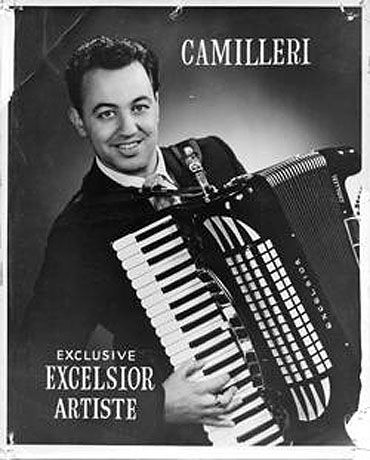
Is it truly Polka time? Charles Camilleri wasn’t just Malta’s
finest composer, he was also a virtuoso accordionist.
Source: Naxos CD (My rip!)
Formats: FLAC(RAR), DDD Stereo, mp3(320)
File Sizes: 311 MB / 139 MB (FLAC version incl. covers & booklet)
Download Link – [Click on the reputation button, leave a comment (or not) and PM me to get the FLAC link]
mp3 version – https://mega.nz/#!HAsx1YiS!V8JkextxIVSKsSEauVee9afNNxYasTAk2wOhptCPt-E
Enjoy! Don’t share! Buy the original! And please click on "Reputation" button if you downloaded this album! 🙂
A Accordion Concerto is very rare in Repertoire, many thanks wimpel69.
Modern: Neo-Classicism
After a successful cycle of Chopin works for solo piano, exclusive Chandos artist
Louis Lortie plays here works by Poulenc with his duet partner H???l???ne Mercier.
In Aubade and the two concertos they are joined by Edward Gardner and the
BBC Philharmonic.
The French-Canadian pianists draw a persuasive portrait of the melancholic Parisian that
Poulenc was: playful and depressed, like his tutor, Erik Satie. There is always a sense of
palpable anxiety in these pieces, be it the sarcastic joie de vivre of the ???choreographic
concerto??? Aubade or the ironic melancholy of the explosive Concerto for Two Pianos
??? Mozartean and Stravinskyan at the same time. Further examples are the contrasting pair of
works for two pianos, in which the evocation of the sound of accordion and smell of fried
potatoes in L???Embarquement pour Cyth???re complement the ???l???gie which, as Poulenc
indicated, should be played with ???a cigar in your mouth and a glass of cognac on the piano???.
Similarly, the dazzling and dissonant Sonata for Piano Duet alternates between passages
of charme and others that are f???roce and strident. ???Inventing his own folk tunes???, as Ravel
noted, Poulenc took a decisive step in his musical emancipation with this very ???dissident??? work.
Music Composed by Francis Poulenc
Played by the BBC Philharmonic Orchestra
With Louis Lortie (piano) & H???l???ne Mercier (piano)
Conducted by Edward Gardner
"French-Canadian pianist Louis Lortie achieved international recognition by his mid-twenties. His strong,
yet sensitively crafted playing has served him well in a repertory of considerable breadth, with a concentration
on composers from the late Classical period to the early 20th century. Through a particularly fruitful association
with his record company, he has been able to preserve on disc many of his most impressive interpretations
and to enjoy a wide audience for his artistry.
After studying with Yvonne Hubert, Lortie made his first professional public appearance as soloist with the
Montreal Symphony Orchestra. He was then 13 years old and, wisely, elected not to pursue a concert career
immediately. After winning first prize in Canada’s two premiere competitions, the Canadian National Music
Competition and the CBC National Competition when he was 16, he made what he considers his official debut
with the Toronto Symphony in 1978 and joined the orchestra in a subsequent tour of Japan and the People’s
Republic of China. While in his early twenties, Lortie moved to Baltimore in order to work with Leon Fleisher
and to expand his knowledge of the piano literature.
In 1984, Lortie was first prizewinner of the Busoni International Competition and a prizewinner as well
at the Leeds Piano Competition. Along the way, he had traveled to Europe, living for a time in Paris,
Florence, and Vienna. Following his exposure to European culture and the recognition resulting from
his successes in competition, Lortie began to undertake a more extensive number of concert engagements
and made his first recording in 1986.
Within the first few years of an active career, Lortie performed throughout the United States, Canada,
and Europe. His engagement calendar included dates with such orchestras as the Cleveland Orchestra,
the San Francisco Symphony, the Houston Symphony, the Dallas Symphony, the Saint Louis Symphony,
the Los Angeles Philharmonic, the BBC Philharmonic, the Royal Scottish National Orchestra, the
Deutsche Symphonie Orchester, and the Orchestre National de France. With the latter ensemble he
performed on tour. Recital tours in Italy became yearly occurrences and, under the auspices of the
Australian Broadcasting Corporation, Lortie was well-received throughout an extensive tour of Australia.
Over the course of a number of summers, Lortie performed with the Montr???al Symphony in program
series devoted to a single composer. Complete cycles of the 32 Beethoven sonatas have been given in
London, Toronto, Berlin, and Milan. Acknowledging one of his London appearances, the Daily Telegraph
described Lortie as "one of perhaps half a dozen pianists who is worth dropping everything to go and
hear."
Few pianists have enjoyed such a long-term and mutually satisfying relationship with a recording
company as that existing between Lortie and Chandos. Lortie has been afforded the opportunity to
preserve his interpretations of composers extending from Mozart to Ligeti. Among them is his
collection of the complete piano works of Ravel, a set that has received several awards. His
recordings of Chopin’s Preludes and Etudes are also of particular interest.
Having found exposure to a variety of performing traditions of great value, Lortie has taught at
the piano institute at Imola, Italy, when his schedule has allowed. That school’s philosophy is
congenial to him and he has been pleased to work with advanced students similarly interested
in a concert career.
Lortie was honored by being made an Officer of the Order of Canada, and he was made a
Knight of the National Order of Quebec."
Source: Chandos Records CD (My rip!)
Formats: FLAC(RAR), DDD Stereo, mp3(320)
File Sizes: 296 MB / 168 MB (FLAC version incl. covers & booklet)
Download Link – [Click on the reputation button, leave a comment (or not) and PM me to get the FLAC link]
mp3 version – https://mega.nz/#!ONVwDZAY!wjjWLkKbcEBJwIR_gHd5t7te6fs7fV47Nw5JmqW3nss
Enjoy! Don’t share! Buy the original! And please click on "Reputation" button if you downloaded this album! 🙂
Btw, the reputation button seems to work only once?
thanks, wimpel ! !
20th Century: Tonal/Romantic
Henning Mankell (1868-1930), whose grandson and namesake has become one of Sweden???s
most successful authors of crime novels, was himself a modest person, not very interested
in a public career. Mankell earned his livelihood as a private teacher of piano and music
theory in Stockholm, as a music critic and as a member of the board of the Academy of Music.
If Mankell???s life was a tranquil one, his compositions were all the more colourful, at
least those from the last two decades of his life. His works were given labels such as
???Impressionism??? or ???Futurism??? by the critics of the age. He was probably interested in
French Impressionism, but he did not identify with it. Many of Mankell???s works, and
especially the bolder ones, remained unpublished for a long time, but were still
occasionally performed by musicians who recognized their value.
G???sta Nystroem (1890-1966) had an obvious talent both for pictorial art and music.
He had a lifelong fascination for the sea and loved to be among fishermen, sometimes even
taking part in their work at sea. Two composers had a special influence on him in
Paris: Stravinsky and Honegger. For a few years, Nystroem used dissonance extensively,
influenced by the style of The Rite of spring. Nystroem followed Vincent d???Indy???s
historically oriented teaching, which was of great importance to him, but his most
inspiring teacher in Paris was the Russian music theorist Leonid Sabaneyev, with
whom he worked for several years. The composer later declared himself to be both
???a great lover of absolutely pure music??? and ???an incurable romantic???, a description
that is relevant for this recording and also for his instrumental music in general.
Music by Henning Mankell & G???sta Nystroem
Played by the Deutsche Staatsphilharmonie Rheinland-Pfalz
With Anna Christensson (piano)
Conducted by Roberto Paternostro
"At first this might seem an odd pairing, on the one hand we have a work by one of Sweden???s romanticists,
which is coupled with a concerto by a composer who, along with Hilding Rosenberg, was one of the
country???s leading modernists. However, this works surprisingly well with each work proving a fine
contrast for the other.
Henning Mankell, who is the grandfather of the author of the ???Wallander??? series of books and much
besides, is deeply rooted in the romantic tradition; this is evident in Anna Christensson???s fine survey
of his solo piano works (Phoenix Edition PE184 – review), where his music shows the influence of
Chopin and to a lesser extent of Schumann and Brahms. Here, the Concerto still shows the influence
of the Polish master, although with the scale and grandeur of Rachmaninov. The first movement alone
is just over seventeen minutes long and has a fast-slow-fast structure so could be construed as a
mini-concerto in its own right. The second and third movements follow in a similarly romantic vein,
and at nearly ten minutes each it all adds up to quite a substantial and unjustly neglected work.
Here the Concerto receives its premiere recording, and I can only ask why. It may not be a
masterpiece, but it is interesting and attractive enough to warrant an occasional recording
and public performance. There are far less worthy works out there which have achieved a
popularity beyond their status.
The second work on this disc is a different kettle of fish altogether. G???sta Nystroem, despite
being born only twenty two years after Henning Mankell, is stylistically streets ahead of his
compatriot. I have come to know his music through the excellent recordings of his symphonies
on Bis (BIS-CD-782 (Espressiva and Seria), BIS-CD-1082 (Shakeseariana and Tramontana)
and BIS-CD-682 (various including Sinfonia Concertante)) as well as some of his many fine
songs (BIS-CD-38L Songs at the Sea). Yes this is obviously music that is more modern than
Mankell???s but it is tuneful modernity. It has a definite sequence and progression. It is not
just a case of notes for the sake of it. I should suggest that Nystroem???s music has more
in common with that of Allan Pettersson, Dag Wir???n and with the Danish composer Vagn
Holmboe than with that of Hugo Alfv???n, Ture Rangstr???m or even Kurt Atterberg.
The Concerto Ricercante follows in the same vein as the symphonies; it is full of
dramatic intensity with quite difficult and demandingly virtuosic passages. Nystroem
asks a lot of both the soloist and the ensemble, and this despite it only being a
chamber orchestra. I am glad to say that all perform well here. The performance
in both concertos is in fact excellent."
Musicweb
Source: Capriccio CD (My rip!)
Formats: FLAC(RAR), DDD Stereo, mp3(320)
File Sizes: 250 MB / 143 MB
Download Link – [Click on the reputation button, leave a comment (or not) and PM me to get the FLAC link]
mp3 version – https://mega.nz/#!zZ8nQLQb!ROxWu0Z4VYEGipvqVS1xK9V2xRj0Ev7m_CMpa_S1HEc
Enjoy! Don’t share! Buy the original! And please click on "Reputation" button if you downloaded this album! 🙂
Thanks, wimpel!
Yeah, the orchestra comes from my homeland.
Louis Lortie is one of the best pianists of this generation and I don’t think he will disappoint. Coupled with the fine Chandos engineering, we might have the best album that has both the Piano(s) Concertos by Poulenc!
Gotta leave French music to French artists. 😀
Modern: Tonal
The selected works on the disc seems to have been chosen for the showcasing of the interpretative skill and
artistic sensibility of the performer. The repertoire is framed in the transition to XXI, during which seem
to summarize the convulsive century artistic movements.
In Sones I and II of Arturo M???rquez will reveal the composer???s Mexican roots through the recovery
of rhythms and emotions resulting from the American cultural hybridization. Sinfonietta-Concerto was the
last work composed by Xavier Montsalvatge and dedicated to the flutist and conductor Jaime Martin.
This work asks a technical skill and creative interpretation to the performer. Northern Concert was
commissioned to Joan Albert Amarg???s by the recorder player Michala Petri. Designed originally for recorder,
the work had to be redesigned to accommodate differences and technical-sounding flute. This is the first recording
of the Amargos concert in flute version.
Music by Arturo M???rquez, Xavier Montsalvatge & Joan Albert Amarg???s
Played by the Orquesta Sinf???nica de Castilla y Le???n
With Clara Andrada (flute)
Conducted by Alejandro Posada
"Clara Andrada de la Calle is one of the leading Flute players of her generation currently
holding Solo Flute positions of both the Chamber Orchestra of Europe and the Frankfurt Radio
Symphony Orchestra.
Born in Salamanca in 1982, she commenced her musical studies with Pablo Sagredo and
Magdalena Mart???nez at the Syrinx School of Music. Scholarships from the Spanish Ministry
of Culture and the London Wall Trust Foundation enabled her to continue her studies at the
Geneva Conservatory of Music under Prof. Emmanuel Pahud and Prof. J.D Castellon as
well as the London Royal College of Music under the guidance of Jaime Mart???n.
As a Principal Flute player she has worked with many leading orchestras, including the
London Symphony Orchestra, Rotterdam Philharmonic, Swedish Radio Symphony
Orchestra, Asian Philharmonic, Bamberger Symphoniker under esteemed conductors
including N.Harnocourt, V. Gergiev, C.Davis, B.Haitink, V. Ashkenazy, M.W Chung,
L. Maazel etc.
She is an active Chamber musician, performing regularly as a member of the ???Hindemith
Wind Quintet??? as well as various other ensembles including the ???Auryn Quartet???,
???Mir??? Wind Quintet???, ???Plural Ensemble???, ???Trio Arb???s??? and the ???Duo Neopercussi???n???.
She has appeared as a soloist with the Chamber Orchestra of Europe, Frankfurt
Radio Symphony Orchestra , Orquesta Filarm???nica Ciudad de M???xico and with the
Symphony Orchestra of Castilla & Le???n with whom she recorded her first CD of
Flute concertos by Spanish and South American composers. She is their Artist
in Residence for the 2014-15 season.
Clara Andrada de la Calle has given masterclasses at the Royal College of
Music (London), the Buchmann Mehta School of Music (Tel Aviv), at the
Conservatories in Valencia, Badajoz and Salamanca, worked as a coach for
the National Youth orchestras of Barcelona (JONC) and the National Spanish
Youth Orchestra (JONDE) and held the position of Flute Professor at the "Centro
Superior de Musica"at the Musikene in Basque Country."
Source: Trit??? CD (My rip!)
Formats: FLAC(RAR), DDD Stereo, mp3(320)
File Sizes: 260 MB / 140 MB
Download Link – [Click on the reputation button, leave a comment (or not) and PM me to get the FLAC link]
mp3 version – https://mega.nz/#!WNsB2LpR!6-xJV6L3AQgWy1vUIabsXG26j9qMbvWlGTJ-CSWOpdA
/>
Enjoy! Don’t share! Buy the original! And please click on "Reputation" button if you downloaded this album! 🙂
🙂
Dutton scans are very hard to find.
Thanks in advance!
I don’t keep a journal on the shelf time of the flac links, they’re usually available for 1.5 to 2 months after posting.
I was unable to send personal messages due to the restrictions on new members. I have now done so.
I don’t keep a journal on the shelf time of the flac links, they’re usually available for 1.5 to 2 months after posting.
Thank you, I will try in a few days. I didn’t want to bombard you with requests, but your posts are so irresistable!
🙂
s messed up. The track goes silent after a short distortion at 9:35
Sorry, I could not correct that. The disc is faulty. 🙁
No.384
Modern: Tonal
The euphonium has a relatively rare place in the symphony orchestra, but has
assumed an important role in wind and brass bands. It is an instrument capable of
amazing agility, as revealed in the present recording of original compositions that
feature the instrument. These reveal something of the potentiality of this member
of the brass family, capable of graceful lyricism and of brilliant panache.
The works on this album are:
Kevin Kaska: Majestic Journey
John Golland (arr. A.Frey): Peace
Vladimir Cosma: Euphonium Concerto
Kevin Kaska: Ballade
Peter Graham: Brillante
Philip Sparke (arr. A.Frey): Pantomime
Music by [see above]
Played by the New Zealand Symphony Orchestra
With Adam Frey (euphonium)
Conducted by Bruce Hangen
"In the euphonium world (granted, a small one), Adam Frey is the man of the moment.
He has released several outstanding albums in quick succession (March/April 2008: 234),
in the process introducing a number of new works. While not all of the literature is of the
highest quality, some of it is excellent, and all of the playing is first-rate. That’s the situation here.
Kevin Kaska’s ‘Majestic Journey’ is a loud and rather obnoxious opener, but it does get things
off to an energetic start, and it makes for a big contrast with the elegiac quality of John
Golland’s lovely ‘Peace’. The Euphonium Concerto by Vladimir Cosma (b 1940) is a Spanish*-style,
virtuoso showpiece that gives Frey the opportunity to unleash his formidable technical skill in III.
Kaska’s ‘Ballade’ is unremarkable, and Peter Graham’s ‘Brillante’ is based on standard brass
exercises and ‘Rule Britannia’. The program ends with Philip Sparke’s Pantomime, sentimental
for a while (with touches of Andrew Uoyd Webber) until it becomes a happy*go-lucky romp.
The ending is over the top, but it fits.
Adam Frey has full and rich tone at all dynamic levels and in all registers, tasteful vibrato,
genuinely excellent technique (all notes are distinct, not blurry), and the gregarious nature
of a soloist. And since euphonium with orchestra is among the rarest of sonic combinations,
this is a special treat. Fine readings by the New Zealand Symphony."
American Record Guide
Source: Naxos CD (My rip!)
Formats: FLAC(RAR), DDD Stereo, mp3(320)
File Sizes: 235 MB / 122 MB (FLAC version incl. covers & booklet)
Download Link – [Click on the reputation button, leave a comment (or not) and PM me to get the FLAC link]
mp3 version – https://mega.nz/#!OAMHnBZI!oJGuOZJifybma5M8hAMJIe0PhPnjoyB9vyydU6TFaQU
Enjoy! Don’t share! Buy the original! And please click on "Reputation" button if you downloaded this album! 🙂
Please can you explain how the reputation button works? When I click on it I get a message saying ‘You must spread some Reputation around before giving it to wimpel69 again.’
Anyway, thanks for this post.
You may be able to patch this CD via an "official" download – it is available from Quobuz in FLAC and the last track is priced at EURO 1.29.
Hope this helps.
———- Post added at 08:22 PM ———- Previous post was at 08:05 PM ———-
Dear wimpel69,
Please can you explain how the reputation button works? When I click on it I get a message saying ‘You must spread some Reputation around before giving it to wimpel69 again.’
I think what you have to do is click on the Reputation button of a few other forum members (not hard to do!), maybe leave some nice comments also. In a short while you can then add Reputation to the original recipient.
(Fingers crossed!)
download – it is available from Quobuz in FLAC and the last track is priced at EURO 1.29.
Thanks. But since the CD has no physical damage I assume there’s the same pressing flaw on
all of them. Besides, I never pay more than once for the same music. At least not since the days
I bought CDs of albums I had purchased earlier as LPs – and that’s 30 years ago. 😉
No.385
Modern: Tonal
Sergey Zhukov had in his mind not only Eleonora Bekova’s skills as a soloist but
also her psychological profile. ‘Eleonora is able to be in deep meditation at the same time
as she is performing at the piano. She can simultaneously express sound and silence’. The theme
of the concerto is that special relationship between sound and silence. ‘Silentium’ stems from
the 1910 poem by the Jewish poet, Osip Mandelstam. The Angel’s Day Concerto was designed to
fit the character of violinist Elvira Bekova, using her remarkable capacity to perform exactly
according to the composer’s intention. It also reflects the theatrical style of the composer. The
concerto, in many ways eccentric, even carnival-like, also has pure moments of lyricism. This
reflects Zhukov’s portrait of both the Angel and the performer. ‘Angel’s Day’ is presented in four
parts, recalling the classical symphony: morning, noon, evening and night. Sergei Zhukov is an
eclectic composer having produced a large catalogue of chamber, choral, orchestral and theatrical
works. He has placed particular emphasis on the genre of the concerto. He has composed three
concertos for piano, violin and cello, which he dedicated to each of the Khazak Nakipbekova
sisters (The Bekova Trio). This series of concertos earned him the award of ‘Composer of the
Year’ made by Musical Review in 2002.
Music Composed by Sergei Zhukov
Played by the Karelia and Moscow State Symphony Orchestras
With Eleonora Bekova (piano) & Elvira Bekova (violin)
Conducted by Marius Stravinsky & Konstantin Krimets
"What of Zhukov and the music? He has a fairly thorough English language website which is well
worth a look. He was born in the Ukraine and studied music locally before moving to the Moscow
Conservatory and graduating in 1978. There are six ballets and more than handful of concertos
alongside plenty of chamber and vocal music. There are also two symphonies, dating from 1985
and 2009. TV and movie music jostles with a musical (Life of insects, or Deceit and Love) staged
in Moscow in 2010 and an oratorio Moments running in succession.
Going by this Cameo disc his music can be both lyrical and strangely avant-garde in a 1960s
sense. The two aspects are made to mediate in a most natural and fluent way. There’s something
of the ritual and the arcane about these two concertos. Ancient Sorceries is the title of one of
Algernon Blackwood’s John Silence stories. That title could equally well have been applied to
these two large-scale works except that the pagan, while not absent, makes way for Christian
mysteries in the Violin Concerto.
Silentium is in five movements which are contemplative and manic-panic by turns. Impressions
come and go: Stravinsky’s Firebird in sinister mode, John Tavener, Scriabin, Bridge’s Phantasm
and Oration, Griffes’ Pleasure Dome, Ives’ Unanswered Question and Ireland’s Forgotten Rite
and Legend – all of this given a dissonant skew among the New Age devotions. The atmosphere
created is potent with strands of incense trailed by a slowly swinging thurible contrasted with
the insistent machine-gun rhythmic tattoo of the piano (II: 3.44). In III there’s the glint and
shimmer of the tam-tam and some mercilessly jazzy piano syncopation in IV. The soloist
intones Mandelstam’s poem ‘Silentium’ in the finale while the guitar adds plangency and
colour to the orchestra’s dripping opalescent notes. Something rich and strange indeed,
although more pedestrian souls might regard it as hocus-pocus.
The oneiric theme is continued with the Violin Concerto which is in four movements. The character
of the music is incantatory but not static. We are in strange realms but ones where the ideas
often seem to reference Russian nationalism of the late 19th century. In Morning Touch (I)
the violin speaks as a high, thin wail, trembling and distant. Messenger (II) is full of hyper-
tense excitement which is, in character, part Midsummer Nights Dream and part chattering
freshness from Rachmaninov’s The Bells. In Vespers plangent single rain-drop notes splash
down gently. The finale – Nightflight – links to the archingly sanguine melody of Prokofiev’s
Seventh Symphony and the faery mystery of the same composer’s First Violin Concerto –
wonderful fluttering violin at 8:07. Along the way we meet, at 5:35-7:07, a playful
Nutcracker flight before the music ascends to the stratosphere amid celesta sparkling
and the shimmer of silver chains.
Something out of the ordinary rut. Surreal music that holds the listener."
Musicweb
Source: Cameo Classics CD (My rip!)
Formats: FLAC(RAR), DDD Stereo, mp3(320)
File Sizes: 289 MB / 176 MB (FLAC version incl. covers & booklet)
Download Link – [Click on the reputation button, leave a comment (or not) and PM me to get the FLAC link]
mp3 version – https://mega.nz/#!3QslxSLY!ttot0AOxxNPpgAksnSoNYNZuXOu1KFb8N7AjEFmvGUA
Enjoy! Don’t share! Buy the original! And please click on "Reputation" button if you downloaded this album! 🙂
Well, I might find a copy, but amazon doesn’t seem to have it physically available. then I could get you a fixed version after Christmas 🙂
(EDIT: Was still referring to the No.383 with the faulty closing track, but the QUOTE doesn’t work as I hoped :-))
Modern: Neo-Classical
French composer Aubert Lemeland’s (1932-2010) neo-classical Concerto
for Flute, Oboe and Orchestra (Double Concerto), coupled with works for solo piano.
Music Composed by Aubert Lemeland
Played by the Orchestre de la Suisse Romande
With L??? Angellioz (flute) & Jean-Pierre Surget (oboe)
And Genevi???ve Ibanz (solo piano)
Conducted by Jean-Francois Monot
Source: Cybelia Records CD (My rip!)
Formats: FLAC(RAR), DDD Stereo, mp3(320)
File Sizes: 226 MB / 150 MB
Download Link – [Click on the reputation button, leave a comment (or not) and PM me to get the FLAC link]
mp3 version – https://mega.nz/#!qQFCyYiL!SggGxsaMispUM1ZqI_D0mkzo88zZROmHvwQwV6wVLrY
Enjoy! Don’t share! Buy the original! And please click on "Reputation" button if you downloaded this album! 🙂
Late Romantic
Charles Martin Loeffler (1861-1935) was a significant American composer of the generation who came
into prominence before the First World War. In this pioneering programme of first recordings,
distinguished soloists and the BBC Concert Orchestra explore the music Loeffler wrote
soon after he became an American citizen in the 1880s and joined the Boston Symphony Orchestra.
Soloist Lorraine McAslan brilliantly rises to the music’s very considerable technical
demands, velvet-toned in the Une Nuit de Mai, a sumptuous musical picture of a spring
night in the Ukraine. In the extended Divertissement in A minor – effectively a three-
movement violin concerto – McAslan throws off Loeffler’s virtuosic passagework with aplomb and
his romantic tunes with gorgeous tone. Prizewinning soloist Amy Dickson delights with the
compact Divertissement Espagnol for saxophone and orchestra. The programme is completed
with the vivid symphonic fantasy La Villanelle du Diable (The Devil’s Round).
Music Composed by Charles Martin Loeffler
Played by the BBC Concert Orchestra
With Lorraine McAslan (violin) & Amy Dickson (saxophone)
Conducted by Johannes Wildner
"Charles Martin Loeffler (1861-1935) studied in Berlin and Paris, and emigrated to the
United States in his early twenties. A gifted violinist, he held the post of second concertmaster
with the Boston Symphony for more than two decades, before devoting himself to composition
full time. He left a number of genuinely imaginative, fastidiously crafted and instantly appealing
works, not least the headily sumptuous La Mort de Tintagiles and A Pagan Poem (the latter a
great favourite of Leopold Stokowski), Five Irish Fantasies for tenor and orchestra (remarkably
intuitive settings of W B Yeats and William Heffernan the Blind), and the gorgeous Two
Rhapsodies for oboe, viola and piano. Truth to tell, there’s nothing on this likeable compilation
that hits comparable heights, though both the La Villanelle de Diable and violin-and-orchestra
Une Nuit for Mai in particular contain flashes of melodic flair and readily demonstrate Loeffler’s
command of the orchestra. Nor can there be any complaints with the admirably crisp and
dedicated performances or top-notch production-values (Abbey Road Studio No 1 was the
venue) To sum up, a typically enterprising effort from those kind folk at Dutton ???
collectors with a sweet tooth should most definitely investigate!"
Andrew Achenbach, Classical Ear
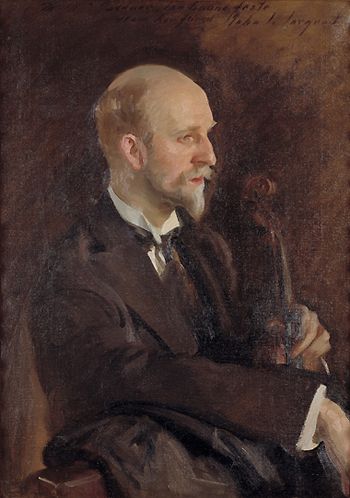
Loeffler, as portrayed by the famous American
painter John Singer Sargent ("Carnation, Lily, Lily Rose")
Source: Dutton Epoch CD (My rip!)
Formats: FLAC(RAR), DDD Stereo, mp3(320)
File Sizes: 328 MB / 155 MB (FLAC version with covers and booklet)
Download Link – [This is a new CD, both mp3 and FLAC versions are available upon PM(!) request only]
Please add to my reputation if you download and like this album!
Enjoy! Don’t share! Buy the original! And please click on "Reputation" button if you downloaded this album! 🙂
———- Post added at 12:38 PM ———- Previous post was at 12:25 PM ———-
The FLAC links for posts Nos. 351-370 have now expired. No more requests for these, please!
No.384
Modern: Tonal
The euphonium has a relatively rare place in the symphony orchestra, but has
assumed an important role in wind and brass bands. It is an instrument capable of
amazing agility, as revealed in the present recording of original compositions that
feature the instrument. These reveal something of the potentiality of this member
of the brass family, capable of graceful lyricism and of brilliant panache.
The works on this album are:
Kevin Kaska: Majestic Journey
John Golland (arr. A.Frey): Peace
Vladimir Cosma: Euphonium Concerto
Kevin Kaska: Ballade
Peter Graham: Brillante
Philip Sparke (arr. A.Frey): Pantomime
Music by [see above]
Played by the New Zealand Symphony Orchestra
With Adam Frey (euphonium)
Conducted by Bruce Hangen
"In the euphonium world (granted, a small one), Adam Frey is the man of the moment.
He has released several outstanding albums in quick succession (March/April 2008: 234),
in the process introducing a number of new works. While not all of the literature is of the
highest quality, some of it is excellent, and all of the playing is first-rate. That’s the situation here.
Kevin Kaska’s ‘Majestic Journey’ is a loud and rather obnoxious opener, but it does get things
off to an energetic start, and it makes for a big contrast with the elegiac quality of John
Golland’s lovely ‘Peace’. The Euphonium Concerto by Vladimir Cosma (b 1940) is a Spanish*-style,
virtuoso showpiece that gives Frey the opportunity to unleash his formidable technical skill in III.
Kaska’s ‘Ballade’ is unremarkable, and Peter Graham’s ‘Brillante’ is based on standard brass
exercises and ‘Rule Britannia’. The program ends with Philip Sparke’s Pantomime, sentimental
for a while (with touches of Andrew Uoyd Webber) until it becomes a happy*go-lucky romp.
The ending is over the top, but it fits.
Adam Frey has full and rich tone at all dynamic levels and in all registers, tasteful vibrato,
genuinely excellent technique (all notes are distinct, not blurry), and the gregarious nature
of a soloist. And since euphonium with orchestra is among the rarest of sonic combinations,
this is a special treat. Fine readings by the New Zealand Symphony."
American Record Guide
Source: Naxos CD (My rip!)
Formats: FLAC(RAR), DDD Stereo, mp3(320)
File Sizes: 235 MB / 122 MB (FLAC version incl. covers & booklet)
Download Link – [Click on the reputation button, leave a comment (or not) and PM me to get the FLAC link]
mp3 version – https://mega.nz/#!OAMHnBZI!oJGuOZJifybma5M8hAMJIe0PhPnjoyB9vyydU6TFaQU
Enjoy! Don’t share! Buy the original! And please click on "Reputation" button if you downloaded this album! 🙂
Thanks i appreciate highly Concertos for Euphonium and orchestra particularly two by Golland or by Jenkins!
http://www.euphoniumstore.net/cds/steven-mead-cds
No.388
Late Romantic/Modern: Neo-Romantic
Two British violin concertos in a romantic idiom – one dating from 1928, the other, well, from 1989.
Haydn Wood is best remembered as one of the country’s most significant composers of light music,
and he also wrote a substantial body of songs. His Violin Concerto in A minor of 1928 is firmly in
the late 19th century romantic idiom, very lush, with the expected amount of lovely themes.
The album also includes an Adagio for violin and orchestra Wood composed for a aborted
attempt on a first violin concerto in his student days.
Lionel Sainsbury, despite being born in 1958, writes in traditional tonal idiom, his Violin Concerto, op.14
is a big-boned, large scale virtuoso piece that recalls earlier 20th century works like Ernest Bloch’s
epic Violin Concerto. The piece alternates between powerfully dramatic, even restless passages,
and lush cantilenas. Although the language is far more advanced than Wood’s, it must still strike
listeners as being very, very conservative for a late 20th century work. If you can accept that,
then it’s certainly worth a listen.
Lorraine McAslan has been a firm advocate of forgotten music in the past, and she makes a great
case for both these pieces (she premiered the Sainsbury concerto in 1995).
Music by Lionel Sainsbury & Haydn Wood
Played by the BBC Concert Orchestra
With Lorraine McAslan (violin)
Conducted by Barry Wordsworth & Gavin Sutherland
"Lionel Sainsbury was born the year before Haydn Wood died (1958), yet both concertos, composed
60 years apart, are underpinned by the same tonal impulses that continue to drive mainstream music
to the present day.
Anyone who thrills to the sound of the Khachaturian Concerto will find the Sainsbury especially conducive,
while the Wood should appeal to those drawn to Delius and the virtuosity of Wieniawski.
Lorraine McAslan soars aloft in both concertos, shading her ecstatic cantabile with portamentos
reminiscent of Jascha Heifetz ??? indeed at times Heifetz???s classic West Coast recordings of the
1950s are brought irresistibly to mind.
McAslan plays both concertos as though they were among the most treasured in the repertoire,
producing a special lyrical intensity in the slow movement of the Wood guaranteed to have
Romantic diehards misting over within seconds. The BBC Concert Orchestra provides devoted
support and the recording is out of the top drawer."
BBC Music Magazine (*****/*****)
Source: Dutton Epoch CD (My rip!)
Formats: FLAC(RAR), DDD Stereo, mp3(320)
File Sizes: 323 MB / 167 MB
Download Link – [Click on the reputation button, leave a comment (or not) and PM me to get the FLAC link]
mp3 version – https://mega.nz/#!vVVREKjY!aX7NMn9Um3eOuTWiEM6olwLgZRa8QiueSgz1gThLNk0
Enjoy! Don’t share! Buy the original! And please click on "Reputation" button if you downloaded this album! 🙂
20th Century: Tonal
Richard Itter had a life-long fascination with recording and he habitually acquired
professional equipment for disc and tape recording even for solely private use.
From his home in Burnham he was able to receive a good signal from the BBC Wrotham
transmitter, which was constructed in 1951 and began broadcasting VHF/FM on 2 May
1955. His domestic recordings from BBC transmissions (including Proms, premieres,
operas, symphonies and chamber music – more than 1500 works in total), date from
1952-1996. Everything was initially recorded on magnetic tape, but up to 1955
particularly important performances were transferred to acetate disc. These
fragile discs were never played and have remained in excellent condition, as
have the majority of the tapes which make up the bulk of the collection. In
2014 the Lyrita Recorded Edition Trust begun to transfer this priceless
archive and has put in place formal agreements with the BBC and the Musicians
Union to enable the release of items from it to the public.
Music by Arthur Benjamin, E.J. Moeran, Arnold Bax & William Walton
Played by the BBC Symphony Orchestra & BBC Northern Symphony Orchestra
With Derek Collier (violin) & Alfredo Campoli (violin)
And Andr??? Gertler (violin) & Gregor Piatigorsky (cello)
Conducted by Stanford Robinson, Rudolf Schwartz & Sir Malcolm Sargent
"These are mono recordings, but the combination of the BBC’s high broadcast standard and Richard
Itter’s superb tape recorder, the sound is remarkably good. You can find Arthur Benjamin’s Violin
Concerto in modern sound on the Dutton Epoch label (see review), but Derek Collier’s 1961
recording is superbly shaped and much of the orchestral detail comes through. This is a work
which was famously admired by Constant Lambert as “a brilliantly executed work”, and the same
can be said of this performance. I remember Derek Collier as a teacher at the Royal Academy
of Music when I was a student there in the 1980s and having this recording with him clearly
at his best is a very fine tribute.
Lyrita’s own 1979 debut commercial recording of the E.J. Moeran very Irish Violin Concerto is
inevitably more refined sonically (see review), but even with a little tape hiss and a few
extraneous noises this is a very moving performance. Renowned soloist Alfredo Campoli is
heard on top form in this recording and is worth the asking price for this set alone. One has
the feeling the BBC Symphony Orchestra are also raising their game to meet the heartfelt
expressiveness of Campoli’s solo, and the warmth of the accompaniment is present without
a doubt, even if the recording is a little on the crisp side. The playful central movement is
full of verve and energy, and the final Lento puts the seal on this work as a masterpiece
which deserves far wider recognition.
Arnold Bax’s Violin Concerto has appeared in a modern recording from Chandos, as well
as Dutton’s historic 1944 version from the BBC with soloist Eda Kersey conducted by
Sir Adrian Boult. Made shortly after its premi???re in 1943 and not long before Kersey’s tragic
early death, this is a precious recording, but the present performance with Belgian violinist
Andr??? Gertler is certainly worth having. Gertler was a champion of the music of his time,
and this is a colourful and commited performance, the solo violin not quite as closely
recorded as with some of the other works in this collection but certainly audible in most
essential respects. The heart of the work, the central Adagio is beautifully played and
Sir Malcolm Sargent proves a sensitive accompanist, though the consumptive audience
is hard to ignore at times.
We have to be grateful to Richard Itter for his enthusiastic taping of these and many other
broadcasts, and I’m sure there is much more to be discovered from this source. Lyrita’s release
of this collection of concertos is very valuable indeed, and with informative booklet notes by
Paul Conway it is of more than just historical interest. These fine performances and recordings
are a snapshot of the BBC’s programming in the late 1950s and early 1960s, and part of the
foundation of its hard-earned reputation. Now, let’s see what’s on tonight."
Musicweb
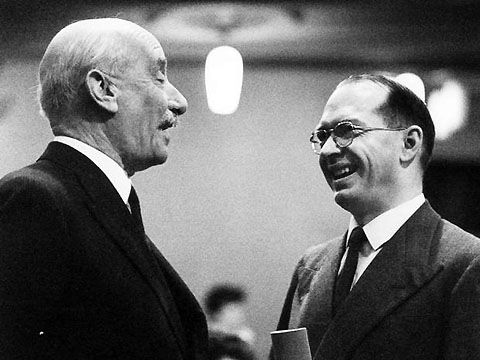
Richard Itter with conductor Sir Adrian Boult.
Source: Lyrita Records CDs (My rip!)
Formats: FLAC(RAR), ADD Mono, mp3(320)
File Sizes: 457 MB / 280 MB (FLAC version incl. covers & booklet)
Download Link – [Click on the reputation button, leave a comment (or not) and PM me to get the FLAC link]
mp3 version – https://mega.nz/#!WcMBkaaJ!mCrqCpeT66SsdGpbISlCPRNLGpdA03O7wy7KzPs4eTU
Enjoy! Don’t share! Buy the original! And please click on "Reputation" button if you downloaded this album!
Modern: Tonal
Nareh Arghamanyan is not only one of the most technically resourceful pianists of
today’s generation, but her interpretations, her rich and colourful tone, combined with
an exceptional gift for storytelling also enable Ms. Arghamanyan to present something
remarkably unique and precious. We are fortunate to be able to savour it once again in
the upcoming PENTATONE release of Sergei Prokofiev’s Piano Concerto No.3
and Aram Khachaturian’s Piano Concerto.
The Prokofiev 3rd is a work that calls for virtuosity, and Ms. Arghamanyan delivers in full.
She exits with a hair-raising finale that leaves you both drained and delighted at the
same time. This brilliant artist accomplishes an equally marvellous performance with the
bold and gregarious Khachaturian concerto as with Prokofiev’s intricate concerto. She
skilfully uses its spicy harmonies and colourful orchestration to charm and captivate.
The collaboration between Nareh Arghamanyan, the Rundfunk-Sinfonieorchester Berlin and
conductor Alain Altinoglu resulted in a strong sound recording that surpassed
expectations. Engineered by Polyhymnia International, needless to say that this SACD
recording lives up to the extremely high standards of any other PENTATONE recordings.
Music by Aram Khachaturian & Sergei Prokofiev
Played by the Rundfunk-Sinfonie-Orchester Berlin
With Nareh Arghamanyan (piano)
Conducted by Alain Altinoglu
"Prokofiev’s Third Piano Concerto has never been more popular but for her second concerto
collaboration on disc the young Armenian-born Nareh Arghamanyan has come up with a
refreshingly individual take on the piece, soft-grained, spacious and full of colour. Eschewing
the volcanic knockabout of Denis Matsuev, she also sidesteps the cooler nonchalance which,
for me at least, makes Jean-Efflam Bavouzet’s reading one of the less compelling entries in his
complete cycle. Whether self-consciously bubbly or dreamily withdrawn, Arghamanyan’s
pointing of line is intensely individual, always super-articulate and without percussiveness.
Granted, the lack of forward momentum won’t please everyone – the likes of William Kapell
had different priorities – but she is greatly assisted by an up-and-coming maestro who has
lately conducted The Love for Three Oranges at the Paris Op???ra. Audiophile sound helps too:
her warm, deep-pile piano tone is set against an orchestral backdrop of unusual clarity and
refinement.
The Prokofiev is actually placed second in physical format, something of a surprise given
that Khachaturian’s Piano Concerto remains deeply unfashionable (his Violin Concerto has
been relatively well served in the recording studio). Those critics amenable to its populist
style have tended to hold fast to classic renditions of the distant past and, in truth,
Arghamanyan is not in the young Kapell’s league as purveyor of blistering bravura. That
said, she’s no slouch either and, although the music is less tautly conceived than in 1946,
Khachaturian’s exotic orchestral fabric glitters more persuasively in today’s higher-fi.
It was apparently Alain Altinoglu’s idea to replace the flexatone doubling the violin melody
in the second movement with a ‘whistling’ musical saw. Julia Wesely’s cover art is nothing
if not original and there are helpfully detailed booklet-notes."
Gramophone
Source: Pentatone Classics CD (My rip!)
Formats: FLAC(RAR), DDD Stereo, mp3(320)
File Sizes: 259 MB / 128 MB (FLAC version includes cover & booklet)
Download Link – [Click on the reputation button, leave a comment (or not) and PM me to get the FLAC link]
mp3 version – https://mega.nz/#!eQ0WkISA!itZCYuwBM0GnRVXN4LuY5GugeQTFugQNI9Vu4LanyeA
Enjoy! Don’t share! Buy the original! And please click on "Reputation" button if you downloaded this album! 🙂
Late Romantic
As a boy Benjamin Godard (1849-1895) was a celebrated violin prodigy, but later turned to composition
as his life’s work. With the notable exception of the ever-popular "Berceuse" from the opera Jocelyn, the
most of Godard’s works have fallen out of the repertoire. A thorough romantic in the Schumann-Mendelssohn
mould, Godard was best known for his short atmospheric pieces and stave works, while his short piano pieces
have recently garnered new respect. Two of his most successful longer works are the Concerto Romantique
and the Violin Concerto No.2, both featuring deft virtuoso writing for the violin and the romantic sensibility
of the mid-19th century.
Music Composed by Benjamin Godard
Played by the Slovak State Philharmonic Orchestra, Kosice
With Chloe Hanslip (violin)
Conducted by Kirk Trevor
"Benjamin Godard was an excellent violinist and his style was essentially that of the middle, rather
than late, 19th century. He was especially attracted to the music of Schumann. Quite a prodigious
composer, he wrote in many forms, though he was perhaps most successful as a miniaturist???
his popular Berceuse is his best-known work. The Violin Concerto No. 2 begins in a dramatic
manner, though richly romantic melodies quickly take over. A brooding slow movement follows,
followed by an exceptionally gay and vivacious finale???where the spirit of Offenbach enters.
The much earlier Concerto Romantique is written in four movements. The opening movement
has a lively, rustic quality which is very appealing, while the two slower central movements have
much sentimental charm. The finale begins dramatically with the orchestra, but the violin enters,
contrastingly, Agitato ed appassionato molto. The mood lightens with a perky violin theme about
90 seconds in, and the work ends brilliantly with a riot of double-stops and the like from the
soloist. The Sc???nes po???tiques are four bucolic movements depicting outdoor scenes: In the
Woods, In the Fields, On the Mountain and In the Village. They are delightfully picturesque,
in the manner of Massenet???s Sc???nes for orchestra. It is all thoroughly entertaining and tuneful,
made all the more enjoyable when so persuasively presented. Well worth the asking price."
Penguin Classical Guide
Source: Naxos CD (My rip!)
Formats: FLAC(RAR), DDD Stereo, mp3(320)
File Sizes: 329 MB / 151 MB (FLAC version includes covers & booklet)
Download Link – [Click on the reputation button, leave a comment (or not) and PM me to get the FLAC link]
mp3 version – https://mega.nz/#!6d12hIxb!937kPVWrHZAoiRTvTUZJnQvGfSMIMEz4cfADgD7C6Po
Enjoy! Don’t share! Buy the original! And please click on "Reputation" button if you downloaded this album! 🙂
Brilliant.
Modern: Tonal
This recording, the first devoted entirely to the music of Paul Fetler (*1920), features Ann Arbor poet and attorney
Thomas H. Blaske as narrator in the evocative Three Poems by Walt Whitman, written to commemorate
the American Bicentennial in 1976. An elegant solo violin quasi-cadenza opens the remarkable third movement,
after which the narrator intones the haunting line, “Ah, from a little child, thou knowest, Soul, how to me all sounds
became music…” The phrase is heard again, reflected near the close and carried as if by a distant music box,
simulated by a toy piano. A labor of love, Fetler’s Violin Concerto No.2 mixes spry energy and elegant
orchestration with expressively flowing melody into an irresistible tour de force, a perfect example of the
“progressive lyricism” that characterises his musical style. Cast in a formal, three movement scheme, the work
seems to conjure a flowing rhapsody, in particular through the first two movements, and brightly mirrored in the third.
Fetler’s delightful, one-movement Capriccio was written in 1985. The piece is at once modern, listener-
friendly and chock-full of musical mischief, with bright, dance-like rhythms. In fact, the score would serve well as
a ballet vignette, where the opening flute solo conjures the image of Pan, who is tempted into a playful dance
with forest spirits and sprites, with a brief, afternoon reverie before the game resumes.
Music Composed by Paul Fetler
Played by the Ann Arbor Symphony Orchestra
With Aaron Berofsky (violin) & Thomas H. Blaske (narrator)
Conducted by Arie Lipsky
"The disc concludes with another substantial and immediately appealing work—the Violin Concerto No.2.
Sinuous lyricism is again a phrase that springs to mind. Fetler has the ability to write melodic lines that
although they are widely spaced and range across the instrument’s entire spectrum cohere. I am always
loath to say any new composer or work “sounds like”—that is usually down to my lack of deeper
knowledge of the new work in question—but I heard strong echoes of the Syzmanowski Violin
Concerto No.1. Not that Fetler is in any way copying the other work—simply they seem to share
a similar aesthetic with aural images of birdsong and night common to both. I like the way he creates
an atmosphere at once both tranquil yet tinged with foreboding. Berofsky plays with all assurance
he showed in the Whitman settings. Praise here to the engineers who have him ideally placed within
the orchestral sound picture. Berofsky matches his tone ideally to the rhapsodic mood of the work—
this is not a work which would benefit from a muscular powerhouse approach. Although the work
is cast in the traditional fast/slow/fast format Fetler has created a highly original work. The
orchestration tends to be more sparing than in the Whitman, certainly in the opening two
movements, but that is very much in keeping with the night-music mood. The central Adagio
opens with a lyrically simple song without words over sustained chords and arpeggiated pizzicato
figures. There are beautiful dialogues for the violin and oboe and then horn before the violin
continues on its wistfully nostalgic way returning to the opening song. The tutti violins join and
a very gentle climax is reached. The movement draws to its dream-filled conclusion with
further rhapsodising from the solo violin and a final recalling of the opening material—this is
a beautifully proportioned and deceptively innocent movement. Again, Fetler enjoys the
theatricality of a jolting opening to the concerto’s finale—a fuller orchestra than we have
heard elsewhere in the work. There is a Waltonian bustle and energy with orchestra and
soloist chasing each other around a musical playground. A quasi-fugal passage allows the
soloist some brief respite and when the violinist does re-enter it is with another lyrical
passage although the orchestra seems intent on continuing its game of tag beneath him.
As in the rest of the concerto the solo writing sounds eminently well conceived and practical.
After one last reflective cadenza the scampering energy of the opening resumes (Fetler does
like his temple-blocks, they add a distinctive timbre to his orchestral palette) and all involved
dash to the finishing post. This is one of those lucky pieces that is immediately appealing on
first listening but continues to impress the more one gets under the skin of the work.
Conductor Arie Lipsky clearly has full measure of these works and Fetler is fortunate to
have him and his orchestra as such enthusiastic advocates of his work. The engineering
of this disc is not by any of the usual Naxos teams but as mentioned above, with the
single exception of the spoken voice, it sounds exceptionally well…a disc of moving,
beautiful and very involving music."
Musicweb
Source: Naxos CD (My rip!)
Formats: FLAC(RAR), DDD Stereo, mp3(320)
File Sizes: 269 MB / 153 MB (FLAC version includes covers & booklet)
Download Link – [Click on the reputation button, leave a comment (or not) and PM me to get the FLAC link]
mp3 version – https://mega.nz/#!mYkC2DLZ!hOa-fV1Og_qKitg4cCiHgA2I5K_SzSN_9EXwqMfLCnw
/>
Enjoy! Don’t share! Buy the original! And please click on "Reputation" button if you downloaded this album! 🙂
After the first few moments, I thought WTF… and looked at the album cover again. The picture on the front bore no relation to the music. What I was listening to in no way came to be from ‘The Mississippi in Peace Time’, (or even in war time for that matter). Strange, like putting a picture of a Peacock (loverly as it is to look at) on a tin of delicious Caviar.
But like I said, a beautiful listening experience. I’m sure there would certainly have been available some Ukranian pastrol artwork somewhere abouts that may have been more congurant.
Again, many thanks.
Modern: Tonal
Dorothy Howell was born in Handsworth, Birmingham and, like Joseph Holbrooke, entered
the Royal Academy of Music ??? something she did at the unusually early age of fifteen ??? where
she studied composition under Sir John Blackwood McEwen. Apart from Lamia and the
Piano Concerto, Howell???s compositions for orchestra are not many, but they
are all of a uniformly high standard.
Sir Eugene Goossens called Cyril Scott the ???Father of modern British music???; he has
also been referred to as ???the English Debussy???. A prolific composer, Scott wrote more than
400 works, though many of these were piano pieces or songs. Major compositions include four
symphonies, four operas, four large-scale choral works including the outstanding Hymn of
Unity, and numerous concertos. There is also a considerable body of chamber music.
Lillian Elkington was born in Birmingham and studied piano and composition at the
Birmingham and Midland Institute School of Music with Sir Granville Bantock. She also studied
the organ, and became a Licentiate of the Royal Academy of Music and an Associate of the
Royal College of Organists in her early twenties.
Music by [see above]
Played by the Malta Philharmonic & Orion Symphony Orchestras
With Valentina Serafinova (piano) & Michael Laus (harpsichord)
Conducted by Toby Purser & Michael Laus
"Although this CD is billed as "British Composers Premiere Collections Volume 4 plus 1 – I assume
the plus one is Salomon Jadassohn’s Serenade No.3. I am somewhat of a loss as to why it was
included on this CD as he certainly was not British.
A fascinating disc. The Lilian Elkington’s "Out of the Mist" is a tone poem surrounding images of
HMS Verdun emerging out of the mist carrying the Unknown Warrior back to England after the
The Great War. The mood is very sober and evocative of the occasion. The notes included give a
fascinating history of how the piece was discovered in a second-hand book shop in Worthing in
the late 1970s.
Dorothy Howell’s Concerto in D minor is highly enjoyable and demonstrates the composer’s
considerable talent.
Cyril Scott’s Harpsichord Concerto is a little more challenging. It has other-worldly harmonies
punctuated by the harpsichord.
Salomon Jadassohn’s Serenade No.3 fills the remainder of the CD.This seems slightly out of
place with the other works being from a different country and earlier generation. However it
is extremely pleasant and fits well with the Cameo Classics series of Jewish German composers.
An extremely enjoyable and unusual CD and well worth purchasing."
Amazon Reviewer
Source: Cameo Classics CD (My rip!)
Formats: FLAC(RAR), DDD Stereo, mp3(320)
File Sizes: 319 MB / 163 MB (FLAC version includes covers & booklet)
Download Link – [Click on the reputation button, leave a comment (or not) and PM me to get the FLAC link]
mp3 version – https://mega.nz/#!akxT2DLa!Y4nFje26cUeBXxVMjpUPKSAcTfpwtKj6G9ID6B_H1ew
Enjoy! Don’t share! Buy the original! And please click on "Reputation" button if you downloaded this album! 🙂
20th Century: Tonal
Violinist Philippe Graffin couples his recording of Britten???s bittersweet
Violin Concerto with Delius???s Violin Concerto, the latter given special
resonance by being played from the perspective of Albert Sammons???s extensively marked
playing copy of the solo part. To both works, Graffin brings a personal view and warmly
expressive playing. The programme is completed by a world premiere recording of Robin
Milford???s delightful The Darkling Thrush for violin and orchestra, a sort of
wintertime Lark Ascending after a Thomas Hardy poem. Dating from 1928, this gloriously
atmospheric piece proves to be a worthwhile discovery that all enthusiasts for inter-war
English orchestral music will want to explore.
Music by Frederick Delius, Robin Milford & Benjamin Britten
Played by the Royal Scottish National and Philharmonia Orchestras
With Philippe Graffin (violin)
Conducted by David Lloyd-Jones & Nicholas Collon
"I first encountered Philippe Graffin in his recording of the neglected Violin Concerto by Samuel
Coleridge-Taylor (review) and subsequently in a very good recording of the Elgar Violin Concerto
(review). It???s germane to recall the Elgar disc because for that recording Graffin went back to Elgar???s
original thoughts for the solo violin part. In doing so he ignored the alterations that were made at
the suggestion of Fritz Kreisler prior to the first performance and which were incorporated into the
published score. As we shall see, Graffin has done something pretty similar for one of the works
on this present disc.
His programme contains a novelty in the shape of the first recording of The Darkling Thrush by
Robin Milford. This short tone poem for violin and orchestra was inspired by a poem by Thomas
Hardy which is printed as part of Lewis Foremen???s booklet essay. During the most recent session
in the MusicWeb International Listening Studio this was one of the discs that we auditioned and
we listened to the Milford work. Our initial verdict on the piece was that it couldn???t quite break
free from Vaughan Williams and, specifically, from the shadow cast by The Lark Ascending.
Perhaps that???s unsurprising since VW and Holst were Milford???s teachers at the Royal College of
Music. More to the point, in The Lark VW had given what is arguably the definitive musical
portrait of a bird in flight. However, subsequently I???ve had the opportunity to listen to the piece
in more detail and to read Hardy???s lines. As a result, while I can see that first-time listeners are
likely to hear the influence of The Lark I think that Milford???s piece is rather more than a pale
shadow of that masterpiece.
The key difference is that VW???s is a summer piece and, probably, describes a young bird in flight.
Hardy???s poem ??? and Milford???s music ??? depicts a wintry scene and, in Hardy???s words, ???An aged
thrush, frail, gaunt and small???. Thus The Darkling Thrush opens with some lovely writing for
solo winds and horn over hushed strings; the music is pastoral but the mood isn???t innocent
and the landscape is somewhat chilly and dark in hue. The violin enters at 3:46 and thereafter
is rarely silent until just before the end. The solo writing features a great deal of arabesque-
like writing which bears similarities with The Lark but I think it would have been difficult for
Milford to devise a different way of portraying a bird in flight. Frequently the flute is an agile
partner for the solo violin. Eventually a vigorous dance-like episode leads to a short but effective
climax (9:06-9:40) and then the music gradually winds down. At the end Milford doesn???t
portray his bird soaring ever higher into the skies away from our sight in the manner of
Vaughan Williams. In fact to do so would have been at odds with Hardy???s poem. Instead
the thrush comes to rest and it???s the orchestra that has the last word, bringing us back to
earth, almost literally as the writing reminds us of the wintry landscape depicted at the start.
Those who have investigated Milford???s more substantial Violin Concerto (review) will certainly
want to hear The Darkling Thrush. It???s an attractive and imaginatively written piece and
I???m very glad to have discovered it, especially in a fine performance such as this.
The Violin Concerto by Delius is much better known, though it???s scarcely a repertoire piece.
In a booklet note David Lloyd-Jones tells us that in certain textural ways this recording
is different to most of its predecessors. In the first place, Albert Sammons, the work???s first
interpreter, made a number of modifications to the solo part over the years. Philippe
Graffin has been able to go back to various manuscript sources, including Sammons??? own
copy of the solo part with his markings in it to reconstruct, as it were, the solo part as
he played it. He???s also consulted Sammons??? 1944 recording with Sargent. Nor is it just in
terms of the solo part that this new recording has gone ???back to basics???. Lloyd-Jones
points out that the 1985 Delius Trust edition of the score incorporated editing work done
by Sir Thomas Beecham. Lloyd-Jones says that though he greatly admires Beecham???s
Delius-related work he rather parts company with him in respect of this concerto since,
for his taste, Beecham introduced far too many slurs into the orchestra parts. These
smooth out the orchestral textures too much so for this recording Beecham???s well-
intentioned additions have been jettisoned. So this new recording is more likely than
others to mirror the text as played in Sammons??? 1944 recording (review). David
Lloyd-Jones admits that the changes made may not be all that evident to the listener.
I think it???s right to mention them, however, because even if you don???t notice the
changes ??? as, I confess, I didn???t – the preparatory work that has been done evidences
the great care taken over this recording.
This isn???t the first time that Graffin and Lloyd-Jones have recorded Delius together for
this label (review) and once again their partnership is very successful here. I like the
way that Graffin, while by no means eschewing beauty, projects the solo line strongly.
Lloyd-Jones is similarly positive over the accompaniment; clearly both musicians
understand that backbone is an essential component of much of Delius???s music. The
second movement is in some ways a dreamy idyll with the strings muted and the
brass silent with the exception of the horns. But even here Graffin is positive ??? as well
as poetic ??? in his delivery of the solo line. The finale contains a lot of rhapsodic
flights of fancy for the soloist. Graffin???s way with the music is winning; it???s also
purposeful. Lloyd-Jones accompanies his soloist sympathetically. There???s a strong
climax at around 3:00 and shortly thereafter we hear an attractive dancing episode
led by the soloist, which is engagingly done. As the end of the concerto draws near
Delius indulges himself ??? and us ??? with some achingly beautiful musings which are
sensitively accomplished in this performance. Indeed, the performance as a whole
strikes me as being a very fine one. And yet ??? I???ve accumulated several recordings
of this concerto over the years, including the Sammons performance, the 1946
recording by Jean Pougnet with Beecham (EMI) and the 1984 Ralph Holmes/Vernon
Handley version (review), originally issued by Unicorn-Kanchana. The score contains
many beautiful passages yet I find that the music has never really lodged in my
memory. Perhaps the composer???s solo writing is too decorative for its own good.
Delius devotees, however, can be assured that the concerto is very well served here.
The Britten concerto receives an extremely strong performance. For this Graffin is
joined by the Philharmonia and the up-and-coming young British conductor, Nicholas
Collon. I was interested to be reminded by Lewis Foreman???s notes that the premiere
of this concerto was given in New York with Barbirolli conducting; apparently the
conductor lobbied his orchestra hard to be allowed to give the first performance.
That was in March 1940 and twelve months later JB performed a similar service to
Britten by giving the first performances of Sinfonia da Requiem. Apparently Britten
was pleased with both premieres; the broadcast of the second performance of Sinfonia
da Requiem has survived and shows that Barbirolli was well up to the task ( review).
What a shame that after this early championship of his music Britten seems to have
cooled towards the conductor. I hope he???d be pleased by the advocacy of Graffin
and Collon for his concerto.
Graffin does the first movement very well; he plays with poise and passion and his
tone is crystal clear, which is ideal for this piece. Having played with a great deal
of sweetness in the Delius, in this concerto he adds just the right degree of edge to
his sound and that???s entirely appropriate. The second movement, which follows
without a break is a vivacious affair, crisply done here. The performance has great
???lan and the driving rhythms are strongly articulated. The cadenza, which starts at
5:42 and runs through to the end of the movement, demands no little virtuosity
from the soloist; Graffin really delivers. Sometime before that (3:33-3:53) there???s
a short but arresting passage in which two skittish piccolos are heard in concert
with a tuba. Lewis Foreman plausibly suggests that this passage calls Shostakovich
to mind, and so it does. However, I???m put even more strongly in mind of the
Soviet master by the orchestral writing in the first couple of minutes of the finale.
Moreover, the finale is in the form of a passacaglia, a form strongly associated with
Shostakovich. All this, I presume, must be coincidence because though the two
composers came not only to admire each other???s work greatly and to become friends
that was much later and I???m not sure how much of Shostakovich???s music Britten
could have heard by 1940.
Britten???s last movement is a complex and highly skilled compositional tour de force.
Graffin and Collon rise to its challenges; Graffin with virtuoso playing and Collon with
understanding conducting. I found the Largamente, lento climax (around 7:30) a
riveting experience; here the tonal weight of the Philharmonia is especially impressive.
The concluding Lento e solenne section (from 9:29) really makes its mark. This is
unsettling music; the orchestral accompaniment is relatively subdued but the
passionate violin is struggling to find a resolution.
This is a fine disc of British music for violin and orchestra. There???s no obvious link
between the three works but the link, if we need to devise one, is that all three receive
excellent performances. It???s the Britten that makes the strongest impression on me
but, then, it???s the strongest work. And I???m delighted that Philippe Graffin has given us
the opportunity to discover Robin Milford???s attractive and engaging piece. The recording
quality is very good throughout the disc and, having had the chance for more detailed
listening, I can confirm the initial verdict that we reached in the Listening Studio
that the Britten recording is particularly successful, with space and depth to
the sound."
John Quinn, Musicweb
Source: Dutton Epoch CD (my rip!)
Formats: FLAC(RAR), DDD Stereo, mp3(320)
File Sizes: 326 MB / 158 MB (FLAC version incl. covers & booklet)
Download Link – [This is a new CD, both mp3 and FLAC versions are available upon PM(!) request only]
Please add to my reputation if you download and like this album!
Enjoy! Don’t share! Buy the original! And please click on "Reputation" button if you downloaded this album! 🙂
The Romantics
Carl Reinecke’s three-movement Cello Concerto is classic/romantic, in the style
of Mendelssohn and Schumann (both teachers of Reinecke). Samis brings it to life this with
great skill and dedication. Michael Sami’s plush tone draws the listener in from the first
statement of the shapely opening theme, and he soars in the calisthenic cadenza that concludes
the first movement. (Reinecke was known for his cadenzas.) The yearning Andante con moto
functions as a kind of song without words, again enhanced by Samis’ warm, caressing tone,
and he fills the Allegro Vivace finale with folk-like verve and good humor. Gregory Wolynec
leads the Gateway Chamber Orchestra in a precise, well-crafted accompaniment. All in
all, it is more than enough to persuade one that Reinecke’s Concerto should take its place
among the active works in the cello repertoire.
Incredibly, this recording of a superbly polished 19th century cello concerto
had to be crowd-funded! A major find!
Music by Carl Reinecke, Robert Schumann, Ernest Bloch & Osvaldo Golijov
Played by the Gateway Chamber Orchestra
With Michael Samis (cello)
And Eric Willie (marimba) & James Button (oboe)
Conducted by Gregory Wolynec
"How is such fantastic music so little-known? The Reinecke has never been recorded before; Samis discovered
it himself. Ansermet’s arrangement of the Schumann piece is new to disc, too. Ernest Bloch’s cello suites are
available on one other disc, by Emmanuelle Bertrand on Harmonia Mundi. Michael Samis funded the recording
of this CD on Kickstarter, and many of the donors are listed in the booklet.
Given it’s recorded on a Kickstarter budget (Samis raised $11,887), the “emerging” Gateway Chamber
Orchestra from Tennessee, make for very good partners and the recorded sound is at the height of
professional standards. Everything was recorded in one concert hall, so the solo pieces are surrounded
by a little more reverb. Did I mention that Samis gives a truly heroic, attention-grabbing and, I hope,
career-advancing performance in every single work?
So it’s an album built up from weird, unknown parts and worth much more than their sum. The twin
threads of lament (Tavener, Bloch, Golijov) and romantic warmth (Reinecke, Schumann), plus the thrill
of discovering over an hour of new stuff make this a major release. How many great recordings will be
crowd-funded online by their listeners? We don’t know, but judging from this and another disc I have
received, the answer is at least two."
Musicweb
Source: Delos CD (My rip!)
Formats: FLAC(RAR, 24 bit), DDD Stereo, mp3(320)
File Sizes: 1.1 GB / 152 MB (FLAC version includes covers & booklet)
Download Link – [Click on the reputation button, leave a comment (or not) and PM me to get the FLAC link]
mp3 version – https://mega.nz/#!ygZgSLYT!HUjciPl7gxEgncG1l4WvBQiDzSScdT4zDXLn_NjTcqs
Enjoy! Don’t share! Buy the original! And please click on "Reputation" button if you downloaded this album! 🙂
Modern: Tonal/Jazz
The young Chinese-born pianist Xiayin Wang, now resident in the USA, has been enthralling audiences
worldwide and gaining ever greater international acclaim with her winning combination of consummate technical
brilliance, fine musicianship, and personal verve. Equally renowned as a recitalist and chamber musician, she is
here the soloist in three great piano concertos by the American composers George Gershwin, Aaron Copland,
and Samuel Barber, performed with the Royal Scottish National Orchestra under Peter Oundjian.
The Concerto in F by Gershwin, composed in 1925, represents one of his finest syntheses of the classical and
jazz traditions. His extraordinary skill as a tunesmith is heard in full force within the concerto???s three movements,
the work expressing his ???unabashed delight in the stridency, the gaucheries, the joy and excitement of life as it
is lived right here and now???. Xiayin Wang has already shown her natural affinity with Gershwin???s music in her
previous Chandos release, playing Earl Wild???s Gershwin transcriptions with ???verve, brilliance and sheer delight???, as
American Record Guide put it.
Copland???s Piano Concerto from 1927 is another work influenced by jazz. At the time of its premiere,
comparisons were inevitably drawn between this and Gershwin???s Concerto but Copland dismissed the influence
of Gershwin. Rather, his style reflects the jazz elements used by composers living in Paris in the 1920s, such
as Milhaud and Stravinsky. The work???s two distinct sections reflect what Copland believed to be the two basic
moods of jazz, ???the slow blues and the snappy number???.
Barber???s Pulitzer Prize winning Concerto for Piano dates from 1962. Like the other two works on the disc
it shows the diversity of influence in American music in the twentieth century. Moments of harmonic ambiguity
and muscular dissonance reflect Barber???s interest in Russian music, a subtle jazz influence enriching the
musical language, especially in the rhythms of the compact finale. The music manifests a dramatic and
rhetorical style, however, that is deeply rooted in a romanticism which pervades all of Barber???s output.
Music by Samuel Barber, Aaron Copland & George Gershwin
Played by the Royal Scottish National Orchestra
With Xiayin Wang (piano)
Conducted by Peter Oundjian
"Wang, a young and rather glamorous Chinese pianist, knows how to play American music… Her
approach is careful and technically amazing, but with plenty of fire as well. The orchestra matches
her sound perfectly, too, in a flawless partnership… The soundstage is spacious, but not as vast
as I???ve heard from other Chandos recordings; the piano is right up front, and none of the orchestra
gets lost. The low and middle ranges are rich, and the top is present but not too bright."
American Record Guide
Source: Chandos Records CD (my rip!)
Formats: FLAC(RAR), DDD Stereo, mp3(320)
File Sizes: 292 MB / 174 MB (FLAC version incl. covers & booklet)
Download Link – [Click on the reputation button, leave a comment (or not) and PM me to get the FLAC link]
mp3 version – https://mega.nz/#!qoBDCKJY!IG-QGWLYnAxPrcG7FLyb77STHfGdneXPR7ECJajZFkc
/>
Enjoy! Don’t share! Buy the original! And please click on "Reputation" button if you downloaded this album! 🙂
I paticularly was drawn to the ‘The Darkling Thrush’ – when contrasted to the noisy scrapping that goes on out side when viewing the birds pecking away at our bird-feeder.
Of course it took my wife to point out that the birds feeding were actually starlings and not thrushes. Big difference. Shows what I know. Funny how people make associations, isn’t it.
Great album. Thanks much.
Played by the Royal Scottish National and Philharmonia Orchestras
With Philippe Graffin (violin)
Conducted by David Lloyd-Jones & Nicholas Collon
I always get the feeling that Delius would have been a great soundtrack composer for romantic flicks. Many thanks for this well-themed album!
Can not tell a lie – It’s the ‘jazz’ element that gets me every time.
Thanks again.
Modern: Tonal
For the past few years, American flutist Judith von Hopf has been expanding
the flute repertoire. As an advocate of new music, Judith has commissioned flute
concertos from Carson Cooman, Brent Pierce and Yevhen Stankovych.
The album also includes the world premiere of an arrangement of Ralph Vaughan
Williams’s The Lark Ascending for flute and orchestra.
Music by [see above]
Played by the National Symphony Orchestra of Ukraine
With Judith Hopf (flute)
Conducted by Guido Lamell & Vladimir Sirenko
"Judith von Hopf is an extraordinary flautist/businesswoman with an incredible dream.
In the past three years she has accomplished goals that few of us have the guts to
dream and she continues to break the rules by charting a dazzling path … I highly
recommend all of [her] recordings."
Jim Walker
Source: Cambria Records CD (my rip!)
Formats: FLAC(RAR), DDD Stereo, mp3(320)
File Sizes: 355 MB / 169 MB (FLAC version incl. cover & booklet)
Download Link – [Click on the reputation button, leave a comment (or not) and PM me to get the FLAC link]
mp3 version – https://mega.nz/#!LsoWgICL!SViLNoM3E1yhoPKOoKl7yqubGdE4mhM22ODWYldYL4c
Enjoy! Don’t share! Buy the original! And please click on "Reputation" button if you downloaded this album! 🙂
Late Romantic
David Popper was the son of a Prague synagogue cantor and grew up in the Josefov
Jewish quarter. He received his education from the cellist August Julius Goltermann at the
Prague Conservatory. Popper not only was one of the most outstanding cellists of his time
but also contributed a number of top-quality compositions to the cello literature. Today
Popper???s name continues to be associated with Robert Volkmann???s Cello Concerto in A
minor op. 33, a work with which he celebrated great successes throughout Europe
beginning in 1864. He also went on successful major concert tours with the Liszt pupil
Sophie Menter, who was his piano accompanist and first wife. The experiences garnered
by him as a traveling cello virtuoso are reflected in the more mature Cello Concerto No.2
from 1880 and in the masterstroke formed by his one-movement Cello Concerto No.3 of 1888.
The Concerto No. 2 not only has power but also considerable drive. Here Popper produced an
early masterpiece. He presumably penned his Concerto No.3 for a private setting. H
is dedication of this work to ???His Excellency, the Imperial Russian Staatsrat von Ogarev???
points in this direction. Moreover, the orchestral ensemble is somewhat smaller than in
the Concerto No.2. Nevertheless, the compact swing and welcome melodies pervading
the entire work produce a stirring effect. Wen-Sinn Yang masters the challenging playing
technique on the highest level.
Music Composed by David Popper
Played by the WDR Funkhausorchester K???ln
With Wen-Sinn Yang (cello)
Conducted by Niklas Will???n
"Prague-born David Popper achieved eminence early. He was still in his teens when he
performed with the Gewandhaus Orchestra in Leipzig and it was at Hans von B???low’s suggestion
that he was appointed the solo cellist of the Vienna Court Opera in 1868. As with many
leading soloists of the time he also composed and it was during this prestigious engagement
in Vienna that he wrote his first Concerto, Op.8. Rather like his distinguished colleague
the violinist Henri Vieuxtemps, who a decade later wrote his own first Cello Concerto,
Popper impatiently pitches the cello immediately into the fray. Richard Eckstein’s booklet
notes are commendably honest about this concerto’s occasional limitations – gaucheries
of construction for one – and about the profusion of material which never quite manages
to develop ideally. Popper’s concern here seems to be to alternate lyrical material with
contrasting scampering passagework. Clearly in the hands of a ripe nineteenth-century
player the tension generated between legato lyricism and technical virtuosity would have
been sufficient, but even with the best possible advocacy – such as it receives here from
Wen-Sinn Yang – little can be done to minimise such flaws. Yet the slow movement, rather
Schumannesque, is attractive with some nice wind writing and the finale is even better.
Unbuttoned and unfettered by the need to live up to a technical reputation Popper leads
us back to Bohemia. There is some surprisingly proto-Dvoř???kian material and some rich
rustic passages. This is a concerto that gets better and better as it goes on, so don’t
be disheartened if you feel the opening something of a disappointment.
By 1880 he was writing music significantly more sophisticated than he had in his mid-
twenties. Phrases in the Concerto of 1880 have more breadth than before, where they
tended to be somewhat foursquare. An enthusiasm for Wagner seems to have entered Popper’s
musical thinking, as well as an increased mastery of orchestration. Technical virtuosity
is subsumed in the body of the musical argument, not knowingly used as an end in itself.
Passagework is deft and there’s a real vocalised quality to the melodic writing. With
a richly textured slow movement, the music emerges as a kind of aria-reverie, commendably
demonstrated by the excellent Yang and his sympathetic collaborator Niklas Will???n who
directs the WDR Orchestra Cologne. Despite a few, perhaps forgivable technical excursions –
the nineteenth-century cellist was allowed to mark his accomplishment here – the finale
is fresh, confident and surges with a March theme that enlivens and thrills. The Third
Concerto followed in 1888 and what a difference we encounter. It’s only ten or so minutes
long, cast in a single movement, and written for a smaller orchestra than is the case with
No.2. Supposedly written for a private event, this is a much more essentially lyrical
work than its companions, being largely shorn of extraneous gestures. The lyric moments
themselves are delicious. There is a touch of percussion overload in the tuttis in this
performance.
Antonio Meneses has recorded No.2, coupled with the famous Op. 50 Suite, for Pan
Classics, a disc I’ve yet to hear but in presenting all three concertos on the one
disc, Yang is staking a central place in the discography of these works. Originally
broadcast by WDR, these fine studio tapes, with the cello spectrum quite forwardly
balanced, offer still unusual fare in excellent performances."
Jonathan Woolf, Musicweb
Source: CPO Records CD (my rip!)
Formats: FLAC(RAR), DDD Stereo, mp3(320)
File Sizes: 315 MB / 158 MB (FLAC version incl. covers & booklet)
Download Link – [Click on the reputation button, leave a comment (or not) and PM me to get the FLAC link]
mp3 version – https://mega.nz/#!Dkx1zBBY!ABWZZuJNkjbxj3OoCbkw_n6ET1WeDkkG0wz8N_qUgk0
Enjoy! Don’t share! Buy the original! And please click on "Reputation" button if you downloaded this album! 🙂
Modern: Avantgarde
The most substantial work on this album of works by British composer Simon Bainbridge (*1952) is the
27-minute Viola Concerto, composed between April and August 1976 to a commission by Walter Trampler,
who plays it here. The plangent minor seconds that permeate the first movement shift almost imperceptibly as soloist
and chamber orchestra elaborate their material, sometimes overlapping, sometimes fully independent but always
moving forward in a continuous line of development. The central climactic chords shudder on harp, strings and
pitched percussion while the viola sings its mournful song, a memorable moment. The second movement is more
reflective. Particularly intriguing is Bainbridge???s introduction of two off-stage violas who play little melodic and
harmonic games with the soloist and members of the orchestra. It is a brooding, intense and powerful work.
The Fantasia for Double Orchestra is fully in line with other great English works that exploit the varying
spatial effects that a split ensemble can bring, especially in skillful hands. It is divided into three movements
that play without a break. The first movement exploits the harmonic relationships between E flat at the start
and the B flat climax later on. The power and momentum is generated by intense rhythmic undercurrents that
bring to mind the American minimalists, something the composer is happy to acknowledge. The work has
sharp edges, colourful sonorities and is an altogether more outgoing piece than the Viola Concerto.
The shortest work, Concertante in Moto Perpetuo, betrays even more overtly the influence of
minimalism and in particular Steve Reich, whose Six Pianos and Desert Music hover over the piece.
Originally begun as a work for oboe and piano, Bainbridge extended the structure and enlarged the
forces, transforming the whole into something bigger and more elaborate. It is effectively a pulsating
8-minute toccata.
Music Composed by Simon Bainbridge
Played by the BBC Symphony Orchestra & London Sinfonietta
With Walter Trampler (viola)
Conducted by Michael Tilson Thomas & Simon Bainbridge
"Simply because he has not kept up a flow of major works since his first large-scale success,
the Viola Concerto, Simon Bainbridge might be regarded as a relatively peripheral figure on the
contemporary British scene. Yet the concerto, and its substantial successor, the Fantasia for Double
Orchestra, are among the most significant British compositions of the last 20 years. The Fantasia,
in particular, is approachable in a way that is often talked down by having the label "neoromantic"
stuck on it. But this is coherent music with a distinctive tone of voice, its style eclectic enough to
tease the listener with echoes of Dos Rheingold at the outset, yet rendering attractive and convincing
the authentically modern conclusions which Bainbridge draws from this archetypal harmonic premiss.
I found the music’s chain of events even more fascinating than the spatial give-and-take which
the symmetrical layout of the two orchestras makes possible, and which is fully explained in
the useful notes.
The Viola Concerto is an ambitious early effort: Bainbridge was only 24 when he finished it.
This CD reissue of a particularly sensitive, sympathetic performance comes up very well, and
although the concerto is less personal and more protracted than the Fantasia it builds its large,
generally restrained paragraphs with notable thematic resourcefulness and prodigious aural
imagination. The hardedged moments, and the almost aggressive ending, emerge organically
from this more gentle, reflective background. Nothing is simply stuck on, or in, for effect.
The cheerful, neo-minimalist Concertante in Moto Perpetuo completes a finely performed and
recorded disc which demonstrates the expressive vitality of a language that is all the more
personal for not shutting the door on tradition, and a style that can be serious and expansive
without lapsing into ponderousness. Bainbridge’s music has a satisfying range of expressive
shades, so this is a disc to persuade the sceptics as well as to please the already-converted."
Gramophone
Source: NMC Ancora CD (my rip!)
Formats: FLAC(RAR), DDD Stereo, mp3(320)
File Sizes: 202 MB / 124 MB
Download Link – [Click on the reputation button, leave a comment (or not) and PM me to get the FLAC link]
mp3 version – https://mega.nz/#!TgYTjbJT!DMoWSKAsUc7weSEGgJ2Av1KeVPRTIor4jyFEoisUhIg
Enjoy! Don’t share! Buy the original! And please click on "Reputation" button if you downloaded this album! 🙂
Modern: Tonal
Bernard Hoffer was born October 14, l934 in Zurich, Switzerland received early musical
training at the Dalcroze School in New York, and attended Eastman School of Music (BM-MM) in
Rochester, New York – where he studied composition with Bernard Rogers and Wayne Barlow,
and conducting with Paul White and Herman Genhart.
Music Composed by Bernard Hoffer
Played by the RT??? National Symphony Orchestra of Ireland
With Elmar Oliveira (violin), & Randall Hodgkinson (piano)
And Thomas Stacy (English horn)
Conducted by Richard Pittman
"Bernard Hoffer???s 2012 Violin Concerto begins with the unaccompanied violin announcing the work???s
germinal motive: repeated staccato notes followed by a longer-held chord. Soon the soloist and his
orchestral partners are tossing it back and forth in spirited interplay until, four minutes in, comes a big
surprise: a brief but instantly recognizable phrase from Beethoven???s Fifth Symphony! Suddenly we realize
that although Hoffer???s concerto is the most un-Beethovenian music imaginable, filled with color, optimism,
and geniality, it uses almost the same primal motive from which Beethoven built his taut, hard-driven
masterpiece. Each time the motive reappears, as the concerto wends its way through songful reflection or
high- spirited exuberance, it???s like meeting an old friend brimming over with good stories and merry
companionship. Hoffer???s pristine, transparent scoring is another de- light. The violin vaults acrobatically
over sharply-articulated brass chords, or muses above radiant harp arpeggios; distant horn fanfares
reach out over Brittenesque string tremolos. That a man of 78 could write music so fresh, endearing,
and salubrious seems a miracle. No wonder the performers respond to it with so much enthusiasm.
Elmar Oliveira???s playing is richly sonorous, Dublin???s RTE orchestra superlative, and Artek???s sonics
crisply detailed yet open, airy, and expansive."
The Absolute Sound
Source: Artek Records CD (my rip!)
Formats: FLAC(RAR), DDD Stereo, mp3(320)
File Sizes: 322 MB / 184 MB (FLAC version incl. covers)
Download Link – [Click on the reputation button, leave a comment (or not) and PM me to get the FLAC link]
mp3 version – https://mega.nz/#!fxYjkDKa!gfGHhzZuG0L_JXo-I9FVS09BS0Mzick7FQjH-LPG7p8
/>
Enjoy! Don’t share! Buy the original! And please click on "Reputation" button if you downloaded this album! 🙂
20th Century: Neo-Classical/Neo-Romantic
Alfredo Casella’s Cello Concerto of 1934/35, is a typical triptych (running without a break),
and merits at least some of the credit Casella claimed for it in his autobiography a few years later: ???the balance
between cello and orchestra is one of the greatest difficulties a composer has to face, and I think I cracked
it. This problem had interested me for years, and I was exceptionally well equipped to solve it because I
came from a family of cellists and studied the instrument myself for several years as a boy.??? Casella???s
grandfather Pietro, a friend of Paganini, was a gifted cellist and so were all three of his sons: Cesare,
Gioacchino and Casella???s father Carlo, who had a concerto dedicated to him by the great cellist Alfredo
Piatti, Casella???s godfather. ???The Cello Concerto???s central aria seems to me one of my best melodies,???
Casella added, ???and the finale deserves the name I gave it in an interview, ???the flight of the
improved bumblebee???.???
Ildebrando Pizzetti’s 1962 Cello Concerto is in neo-Romantic style, with moments of exalted lyricism,
something of the Richard Strauss opulent, convulsive style. The scale of the concerto rivals the Dvor???k for girth and
personal statement, a four-note motif operant in the manner of Beethoven???s ???fate??? motif. The Largo utters huge
sighs, a gloomy meditation whose dark, pensive spirit echoes Mahler. Cello and oboe pick up troubled figures
in the low strings and snare drum, but the melancholy remains tonal, accessible and tragic. A Roman march
ensues, then it yields to a nostalgia that could be Ernest Bloch but is lyrically unique. The final movement,
Allegro energico, proceeds with another cadenza-like arioso for cello, followed by a resolute series of figures
from the orchestra. The structure seems more rhapsodic than rondo-esque.
Ottorino Respighi’s Adagio con variazioni includes elements of folk song, its mournful theme
and variations for cello underpinned by orchestral colour.
Music by Alfredo Casella, Ildebrando Pizzetti & Ottorino Respighi
Played by the Orchestra Sinfonica Nazionale della RAI
With Silvia Chiesa (cello)
Conducted by Corrado Rovaris
"???Passionate??? (Sole 24 Ore), ???Convincing??? (American Record Guide), ???Rich in personality??? (Diapason).
Cellist Silvia Chiesa has conquered public and critics thanks to a brilliant solo career that has made her
one of the best loved performers of her kind, touring regularly Europe, and also China, United States,
Australia, Africa and Russia.
Her wide ranging repertoire includes lesser known or unjustly forgotten music and composers. She is
credited with the felicitous rediscovery of two obscure masterpieces by Nino Rota: the two Cello
Concertos, which she recorded for Sony Classical with the Orchestra Nazionale Rai di Torino, conducted
by Corrado Rovaris. Her last CD is dedicated to the Italian music from the early 20th century and
includes the first recording of the Cello Concert in C minor by Ildebrando Pizzetti (Orchestra Rai
conducted by Rovaris , Sony Classical). Both CDs received rave reviews. The Milanese cellist has
also provided an important contribution to her instrument???s contemporary repertoire. The Concerto
per violoncello e orchestra by Matteo D???Amico is dedicated to her, and she also gave the Italian
premiere of works by Gil Shohat, Nicola Campogrande, Aldo Clementi, Michele Dall???Ongaro, Peter
Maxwell Davies and Giovanni Sollima. In 2015 in Pordenone, Teatro Verdi, she gave the international
premiere of ???tra la Carne e il Cielo, tribute to Pier Paolo Pasolini, that Azio Corghi dedicated to her.
As a soloist she has recorded live for television and radio, on Rai Radio3, Rai Sat, France Musique
and France 3.
Since 2005 she has played in a duo with pianist Maurizio Baglini on international stages such as
the Salle Gaveau in Paris, the Oriental Art Center in Shanghai and the Sala Cecilia Meireles in
Rio de Janeiro. The Suite for violoncello e pianoforte by Azio Corghi and a Sonata by Gianluca
Cascioli are both dedicated to the duo. Their discography also includes the whole cello and piano
works by Saint-Sa???ns (???Amadeus???), and Brahms and Schubert: Cello Sonatas (Decca). Their
new CD will be released in the next months and will include the complete works for cello and
piano by Rachmaninov (Decca).
She is artist in residence for the international chamber music ???Amiata Piano Festival???
and she teaches at the Istituto Superiore di Studi Musicali ???Monteverdi??? in Cremona.
She plays a cello by Giovanni Grancino from 1697."
Source: Sony Italia CD (my rip!)
Formats: FLAC(RAR), DDD Stereo, mp3(320)
File Sizes: 317 MB / 145 MB
Download Link – [Click on the reputation button, leave a comment (or not) and PM me to get the FLAC link]
mp3 version – https://mega.nz/#!6tYEGYoY!KjWakfRLGKxv5r4JR2ZCzMECObpl3jf7By6VtHgjCXc
Enjoy! Don’t share! Buy the original! And please click on "Reputation" button if you downloaded this album! 🙂
Late Romantic
Since the revival of so-called "Entartete Musik" in the 1990s, interest in Karl Ignaz Weigl’s
(1881-1949) music has grown but he still remains a largely unknown figure to most listeners. Weigl was born
in Vienna in February 1881 and had private composition lessons with Alexander Zemlinsky, a
family friend. By the early-1920s, Weigl was an established figure in the musical landscape
of Vienna and it was probably for this reason that he was approached by the one-armed pianist
Paul Wittgenstein to compose a Left-Hand Piano Concerto. Paul’s family fortune enabled
him to commission some of the most eminent composers of the day to write works specially
for him: Korngold, Britten, Hindemith, Prokofiev, Ravel, Franz Schmidt, Richard Strauss and
Karl Weigl.
Unfortunately, for reasons unknown, Wittgenstein failed to perform Weigl’s concerto. Thus
it was that the concerto received its belated premiere in 2002 in Vienna by Florian Krump???ck,
the soloist on the present recording. Despite his no doubt discouraging experience with
Wittgenstein, Weigl returned to the concerto medium four years later with a Violin Concerto.
It can be hoped that recordings such as the present one will help to further draw attention
to his large and varied output which may yet contribute to the repertoire it was designed
to enrich.
Music Composed by Karl Weigl
Played by the Norddeutsche Philharmonie Rostock
With Florian Krump???ck (piano) & David Fr???hwirth (violin)
Conducted by Markus Lehner
"Other than a CRI LP recording of his songs that came out in I believe the early 1980s,
I have heard nothing of his music until now.
That all changes with a fine recording of his Piano Concerto for the Left Hand and his Violin
Concerto (Capriccio 5232), performed by the Norddeutsche Philharmonie Rostock under
Manfred Hermann Lehner. Florian Krumpock and David Fruhwirth happily take on the solo
piano and violin roles, respectively.
The music is in every way deserving of our ears. It is post-Brahmsian, tonal with few
modernist traces. But it is music of high craftsmanship and beauty. The works were
written in 1924 and 1928, respectively, when Weigl was at the height of his career.
And they seem exemplary and significant to me.
The "Piano Concerto for the Left Hand" was one of those commissioned by Paul
Wittgenstein after an injury in WWI left him without his right arm. Thus Weigl joined
the illustrious company of Prokofiev, Ravel, Britten, Hindemith, Korngold, Schmidt
and Richard Strauss to receive a commission. Wittgenstein never performed the
Prokofiev or the Hindemith works, which were too modern and incomprehensible
to him, but for some reason he did not perform the Weigl concerto either. Incredibly
it went unperformed until 2002, when Florian Krumpock gave its world premiere.
So it is fitting that he is the soloist for this recording.
It is a work of glowing lyricism and depth, notably missing the sturm und drang of
his late romantic counterparts but in no way lightweight in substance. Weigl might
well have triumphed if the work had been performed at the time. Nonetheless we
are well served by the modern-day recording with soloist and orchestra giving the
work a very spirited and sonorous reading.
The Violin Concerto fared somewhat better in the day, getting one performance in
1930, whether well-received or not I do not know. It received several performances
after Weigl’s death but did not get any significant attention again until 2009.
David Fruhwirth gives it a marvelous reading on the present recording, as does
the orchestra. Like the Piano Concerto it is on the neo-classic side of romanticism,
in that there is a contained expressive content that plays out as part of the work’s
tripartite form. So we get more Brahmsian symmetry than Straussian maelstroms
of expression. Yet for all that Weigl does not sound at all derivative.
What matters is the quality of the music, which is a revelation to those of us that
know little of Weigl. He may not have been the leader of a new music movement
in his lifetime, but the two concertos have very much a life of their own and sound
fresh and appealing to present-day ears, mine anyway.
There is nothing lacking in the performances and the sound quality is of the highest
order. Here is a modern composer of definite weight, not certainly a part of the
progressive modernist movements going on around him, but that matters little
at this point.
This is Weigl in very persuasive terms. The music brings much to us. He did not
deserve such neglect. Listen and I think you will agree."
Classical Modern Music
Source: Capriccio Records CD (my rip!)
Formats: FLAC(RAR), DDD Stereo, mp3(320)
File Sizes: 320 MB / 163 MB
Download Link – [Click on the reputation button, leave a comment (or not) and PM me to get the FLAC link]
mp3 version – https://mega.nz/#!WkAFSKLb!hC7n-AdIWhQTa-MImhOdASXVu5ZoP_Aik8yfNUtrcsE
/>
Enjoy! Don’t share! Buy the original! And please click on "Reputation" button if you downloaded this album! 🙂
P.S.: I have now frequently received requests for FLAC without the person even adding to the reputation for one release, even if they’re asking for five or more albums at the same time. In the past I have gently reminded those users, and then again the next time – and then ignored further requests. Yes, I do know that you cannot click on the reputation button more than once in a while, if you don’t "spread" the reputation (Which you should, I’m almost certain that other providers will be more than happy to receive them, too!). So, in the future, please identify yourself when giving a reputation.
Kaia Saariaho’s Orion (2002) is more
elemental but never over-scored. Some might find this music stand-offish but Saariaho’s second movement, with
its pedal tones and delicate, slowly shifting sonorities, gives that rare sense of a composer knowing exactly where
she wants to go and how to get there.
Andrew Achenbach, Gramophone
Music by John Corigliano, Zhou Long & Kaija Saariaho
Played by the BBC Symphony Orchestra
With Michael Collins (clarinet)
Conducted by Leonard Slatkin & Jukka-Pekka Saraste
Source: BBC CD (my rip!)
Formats: FLAC, DDD Stereo, mp3(320)
File Sizes: 271 MB / 149 MB
Download Link – https://mega.co.nz/#!EUJwiDCA!JaYUW0JF0Ox_znlrjLJ7AAPF-5xltB6hTtQMc4VJPkk
mp3 version: https://mega.co.nz/#!kVRyiTIB!CHv7GGWkGfoPhtOZHTpd92f4y4ZerZVxEdwj70T 2TmQ
Replacement for corrupted Zhou Long work (FLAC) – https://mega.co.nz/#!2w5nBAjS!KJje1sbc4rOgOPRTwpsUdR6JCPc9Pv9woaOc9qK 3jBw
Enjoy! Don’t share! Buy the original! 🙂
Thanks for this!
Saariaho has recently been added to the Edexcel high school curriculum in England for music classes, and I’m happy to find her work.
Thanks again!
No.403
Modern: Jazz/Popular
This programme brings together four works for piano and orchestra by composers best
known from the fields of jazz, popular song and progressive rock. Neil Sedaka???s
Manhattan Intermezzo explores the New York of today and yesterday with its
melting pot of nationalities. Keith Emerson is best known as a founding member of
Emerson Lake & Palmer. His remarkably inventive semi-autobiographical Piano Concerto No.1
fuses his classical training with jazz. Duke Ellington???s sublime New World a-Comin???
is a visualisation of improved conditions for black people in America, while the rarely
heard original version of Gershwin???s Rhapsody in Blue represents the quintessential
style of New York City in the Roaring Twenties.
Music by [see above]
Played by the Brown University Symphony Orchestra
With Jeffrey Biegel (piano)
Conducted by Paul Phillips
"In 2015, Moravian College in Bethlehem, PA, conferred the honorary degree of Doctor of Humane
Letters upon Jeffrey Biegel for his achievements as a pianist, recording artist, chamber music
collaborator, champion of new piano music, composer, arranger and educator. His recordings include
The Complete Piano Sonatas of Mozart, and works by Lucas Richman, Steve Barta, William Bolcom,
Dick Tunney, Ellen Taaffe Zwilich, and Kenneth Fuchs, as well as his own version of Vivaldi???s Four
Seasons for solo piano, C???sar Cui???s 25 Preludes, and compositions of Carolyne Taylor. In 1997 he
created and performed the first live audio/video recitals on the internet from historic Steinway Hall
in New York, a CD recording of which is preserved bearing the website name at the time,
???cyberecital.com???. As a pioneer of projects joining large numbers of orchestras as a model for
commissioning new music in the 21st century, Jeffrey Biegel assembled a record-setting consortium
of 27 orchestras in 1998 for Ellen Taaffe Zwilich???s Millennium Fantasy, premi???red by the Cincinnati
Symphony Orchestra in 2000, followed by Tony award-winning composer Charles Strouse???s
Concerto America with the Boston Pops, conducted by Keith Lockhart in 2002. In 2010 Jeffrey
Biegel performed the world prem???re of William Bolcom???s Prometheus for piano, orchestra and
chorus, with Carl St.Clair leading the Pacific Symphony Orchestra and Pacific Chorale, followed
by performances with the Detroit Symphony Orchestra under Leonard Slatkin, and the Calgary
Philharmonic and Chorus representing Canada. In addition he gave the world premi???re of
Richard Danielpour???s Mirror with the Pacific Symphony Orchestra, Carl St.Clair conducting.
Premi???res also include Lowell Liebermann???s Concerto No. 3, Op. 95, and Jake Runestad???s
Dreams of the Fallen. Jeffrey Biegel???s choral music is published by the Hal Leonard Corporation,
Carl Fischer, Porfiri & Horvath and The LeDor Group."
Source: Naxos CD (my rip!)
Formats: FLAC(RAR), DDD Stereo, mp3(320)
File Sizes: 311 MB / 167 MB (FLAC version incl. covers & booklet)
Download Link – [This is a brand-new album, mp3 and FLAC available on PM request only!]
Enjoy! Don’t share! Buy the original! And please click on "Reputation" button if you downloaded this album! 🙂
Modern: Pre-1945 Tonal
Ralph Vaughan Williams (1872-1958) wrote the first two movements of this Piano Concerto in 1926,
and the last in 1930-1931, which contradicts the composer’s program note for the first performances, which
suggest the finale was written entirely in the year 1930. He composed the work for pianist Harriet Cohen; it was
not a success, coming under criticism for its supposed excess of ferocity and grimness. True, the work has a
measure of these qualities, but it also contains much wit and many lighthearted passages.
Vaughan Williams scored the concerto for a large orchestra and much of the writing demands the soloist hold
his/her own against huge washes of sound. Adrian Boult, who was the conductor at the premiere, and several
others suggested to the composer that he might provide a two piano version of the work to create what they
perceived as a greater sonic balance between the keyboard and orchestra. In 1946, Joseph Cooper, in
collaboration with Vaughan Williams, fashioned a two piano and orchestra rendition which, apart from a few
small changes, is largely a faithful arrangement. The original version was neglected for a time, but when
this concerto is played today, it is usually heard in the single-piano rendition.
John Foulds, the British composer, son of a bassoonist in the Hall??? Orchestra, born in Manchester in 1880,
and he died suddenly less than 60 years later in Calcutta, where he was in charge of music on an Indian
radio station. Foulds lived a fascinating life which incorporated a career as a professional cellist, a conductor,
a successful composer of light music and music for the troops in the First World War. He worked as a cinema
pianist, and he became fascinated by modes, microtones, and the ragas of Indian music.
Foulds was a radical composer in Paris in the late 20s, when he wrote the Dynamic Triptych,
a bravura re-interpretation of the piano concerto. Each movement focuses on a different aspect of
Foulds’ musical language. ‘Dynamic Mode’ is first, an energetic virtuosic display based only on
seven pitches of a South Indian raag. The second movement, ‘Dynamic Timbre’, is an exercise
in subtle orchestral colour, quarter-tones included…and the finale is a rhythmic toccata based on
a sequence of time signatures that allow it to morph into a waltz and a march as it romps along.
Music by Ralph Vaughan Williams & John Foulds
Played by the Royal Philharmonic Orchestra
With Howard Shelley (piano)
Conducted by Vernon Handley
"When Lyrita first released this disc in 1984, it was a major revelation for fans of English twentieth
century music. Of course, Vaughan Williams was already well known and well loved for "Greensleeves"
and "Tallis" Fantasias, but his fierce and forceful Piano Concerto of 1931, considered unsuccessful even
by his admirers, had been transformed into the brawny and brutal Two-Piano Concerto in 1946 — and
then dropped from the repertoire. But Howard Shelley’s magnificent recording of the original version
with Vernon Handley leading the Royal Philharmonic Orchestra completely overturned that common
assumption. Shelley, who was at the same time recording Rachmaninov’s complete piano works for
Hyperion, tears into the opening Toccata with immense strength and unerring technique, yet he also
illuminates the passionate yearning of the central Romanza and especially the serene bliss of the
Finale’s coda with consummate sensitivity. With Handley’s firm support and the Royal Philharmonic’s
superb playing, Shelley’s performance of Vaughan Williams’ original Piano Concerto was enough to
make this disc mandatory listening for fans of English twentieth century music.
But then came the Dynamic Triptych for piano and orchestra by John Foulds — and the disc went
immediately from mandatory to indispensable. Foulds, a now nearly unknown English composer
who had been lionized in the early ’20s for his A World Requiem in commemoration of the war dead,
had written the Dynamic Triptych in 1929 in Paris under the influence of exotic music theories.
With Handley’s unfailing strength and RPO’s superlative playing, Shelley grants exuberant life to
Foulds’ intensely dramatic and wildly experimental music: to the opening Dynamic Mode’s
extravagant virtuosity, to the central Dynamic Timbre’s uncanny luminosity, to the closing Dynamic
Rhythm’s unstoppable energy. A hit of sorts after its premier in England in 1931 — Havergal Brian,
for example, liked it very much — Foulds’ Dynamic Triptych left the repertoire when the composer
left England for India and seemingly died when he died of cholera in 1939 in Calcutta. This
recording was the work’s first performance since 1933 — and it totally blew the minds of fans
of English twentieth century music when it was first released. And, recorded in vividly realistic
and vibrantly colorful sound by Lyrita, this disc will still blow the mind of any fan of English
twentieth century music who doesn’t already know it."
All Music
Source: Lyrita Recorded Edition CD (my rip!)
Formats: FLAC(RAR), DDD Stereo, mp3(320)
File Sizes: 211 MB / 132 MB (FLAC version incl. cover & booklet)
Download Link – [Click on the reputation button, leave a comment (or not) and PM me to get the FLAC link]
mp3 version – https://mega.nz/#!a4gUWTCL!PAL_MM3xMHBBT0vqj_Xj3snC9Yq-zSXbwU0N3WkyXmc
/>
Enjoy! Don’t share! Buy the original! And please click on "Reputation" button if you downloaded this album! 🙂
Modern: Tonal
Kenneth Kiesler has been Director of Orchestras and Professor of Conducting at the School
of Music of the University of Michigan since 1995. Here Kiesler directs the University of Michigan
Symphony Orchestra and the world premiere recordings of three works by Leslie Bassett,
William Bolcom and Michael Daugherty.
Music by [see above]
Played by the University of Michigan Symphony Orchestra
With Amy Porter (flute) & Harold Smoliar (English horn)
And Clifford Leaman (alto sax)
Conducted by Kenneth Kiesler
"I heard William Bolcom’s Lyric Concerto in London a little over a decade ago when James Galway,
with the Saint Louis Symphony and Leonard Slatkin, gave what must have been the UK premiere of
a then virtually new work. I thought it was a terrific piece, and this recording confirms that first
impression. Typical of Bolcom, there’s a range of derivation—but he makes it his own: the deftly
detailed scampering opening movement with a burgeoning melodic idea; then a colorful waltz
pastiche that yields to something more reflective; a slow, atmospheric movement called “Memory”
that marries flute technicalities with peripheral sounds; and a varied finale that includes recall to
Dizzy Gillespie (who died while Bolcom was writing the work). The whole work is entertaining,
inventive, and enjoyably unpredictable. Maybe someone will record Bolcom’s Symphony No. 6
now. I wait to hear No. 7 too.
“Spaghetti Western” films motivated Michael Daugherty’s English horn concerto. Musically this
translates into a score dominated by atmosphere and image suggestion. It’s reasonably
effective, the English horn showcased on its own terms and in masquerade; for example, a
mouth organ is implied in the first movement. Whether the work quite adds up beyond its
parts is another matter.
Leslie Bassett (born 1923) composed his one-movement alto sax concerto in 1999. It lasts
just under 18 minutes. It’s a piece of serious endeavor, the saxophone used expressively…
Excellent performances and sound; the Bassett and Daugherty pieces feature the original
soloists…Each composer provides a note, and there are numerous photographs from the
sessions, the three composers gracing the cover."
Colin Anderson
Source: Equilibrium Records CD (my rip!)
Formats: FLAC(RAR), DDD Stereo, mp3(320)
File Sizes: 286 MB / 141 MB (FLAC version incl. cover & booklet)
Download Link – [Click on the reputation button, leave a comment (or not) and PM me to get the FLAC link]
mp3 version – https://mega.nz/#!6IoQiASK!MPXvKy92SxpL8mVTnVDCF16JHWJ6-hrQiiSKcu89sr0
/>
Enjoy! Don’t share! Buy the original! And please click on "Reputation" button if you downloaded this album! 🙂
Late-Romantic
It is all-but forgotten that before the arrival of those composers whom we now think of as quintessentially American
(from Ives onwards) there was thriving group composing in the USA who had studied in Europe and transferred its
traditions to their homeland. It is to this school that Henry Holden Huss (1862-1953) and Ernest Schelling (1876-1939) belong.
The Huss Piano Concerto is written on the grandest scale and makes great virtuoso demands on the performer
(think of it as an American ‘Brahms’ concerto). Its lack of success is perhaps partly due to the mediocre pianistic talents
of the composer; though he did play the work these performances were apparently sad occasions!
As befits its title, the Schelling ‘Suite’ is most more light-weight (think of Moszkowski or Paderewski, the latter
a great friend of Schelling). It was written to charm and entertain. The Finale is particularly memorable, being a
pot-pourri of American themes???Dixie, Way down upon the Swanee River, and Yankee Doodle.
Music by Henry Huss & Ernest Schelling
Played by the BBC Scottish Symphony Orchestra
With Ian Hobson (piano)
Conducted by Martyn Brabbins
"Two virtually unknown American late-romantics make a surprising contribution to Hyperion???s
Romantic Piano Concertos series. Henry Holden Huss (pronounced ???Hoos???) was of German extraction
and so went back there, like Chadwick and Parker, to study composition with Rheinberger. He also
studied the piano but, according to Tchaikovsky, had technical shortcomings: a critic advised him
not to play his own music. Huss died at the age of 91 in 1953 and, like Schelling, was barely
known on record ??? just a setting of Tennyson???s Crossing the Bar and a single prelude for piano.
He looks like a one-work composer and this Concerto, in the unusual key of B major, is getting
its first real chance exactly a century after he wrote it. At first it sounds like a predictable assembly
of all the gestural paraphernalia of the romantic idiom with some pleasant orchestral textures.
But, after further hearings, Huss gradually convinces with his own dialect of this inherited language,
although reminiscences of other composers can be irritating; for example, a subsidiary theme from
Chopin???s Fourth Ballade in the second movement at 3’13” and later, and a certain hovering on the
edge of Wagner???s Liebestod. But Huss does forge a continuity which, although not original, is
convincing ??? especially in a committed performance like this. Hobson, who had to score a small
missing passage, makes no grand claims in the CD booklet, preferring to let the music speak
for itself.
Ernest Henry Schelling had a piano piece recorded by Paderewski (HMV, 4/28), who was one
of his teachers, and a symphonic poem, A Victory Ball (after Alfred Noyes), by the NYPO under
Mengelberg in 1926 (HMV, 2/27 ??? both nla). Otherwise the recording of his Suite Fantastique
from 1905 must be his finest hour. Unlike the Huss, it was particularly successful in Europe.
Schelling, a child prodigy who went to study in Paris at the age of six, gave the first performance
of the Suite with the Concertgebouw Orchestra under Mengelberg and it was regularly played
by Moiseiwitsch, including a Prom under Wood in 1914. The work has a certain superficial
charm with some neat touches. The central section of the very Russian scherzo is in five-time
(1’24”) and the last movement, written when Schelling was homesick for the US, combines
popular songs ??? in the manner of Gottschalk rather than Ives.
What makes the release unexpectedly compelling listening is the real dedication brought
to these performances by Hobson and the BBC Scottish SO under Brabbins."
Gramophone
Source: Hyperion Records CD (my rip!)
Formats: FLAC(RAR), DDD Stereo, mp3(320)
File Sizes: 242 MB / 141 MB (FLAC version incl. covers & booklet)
Download Link – [Click on the reputation button, leave a comment (or not) and PM me to get the FLAC link]
mp3 version – https://mega.nz/#!vQJzUIBQ!8u-8aJ-EcS2-6sDVHkbwU2nPklm0jA4yRxQzIIBYPus
/>
Enjoy! Don’t share! Buy the original! And please click on "Reputation" button if you downloaded this album! 🙂
Romantic
Following the cpo release of two of Friedrich Gernsheim???s symphonies and his piano
quintets, the company released these two violin concertos of this composer,
whose life was very much a European one. Born in Worms in 1839, Gernsheim became the
youngest student at the Leipzig Conservatory when he was thirteen. His further musical
training then took him to Paris, Europe???s musical capital, where he enjoyed daily
contact with the most famous musical personalities of those times: Liszt, Saint-Sa???ns,
Rossini, and Rubinstein. His further stations included the post of city music director
in Saarbr???cken, six years as a professor and music director in Cologne, and Rotterdam.
He then spent the last fifteen years of his life in Berlin.
A good decade ago Christoph Schl???ren wrote in his introduction (well worth reading)
to the score of the Violin Concerto No. 1 that all three works [for violin and
orchestra] had been forgotten and were awaiting rediscovery. This recording is intended
as the first step ??? and not only that ??? toward their rediscovery. Very much in the spirit
of German romanticism, with influences from Mendelssohn, Schumann too, and plenty of
Brahms and Bruch, Gernsheim???s music is immediately familiar to the ear though unknown
in its specifics. What is special about Gernsheim is his talent for beautiful, extended
melodies of Brahmsian character incorporating a touch of Tchaikovsky. In 1912, a good
two decades after his Violin Concerto No. 1, Gernsheim wrote a second violin
concerto, his op. 86, a work dedicated to the premiere violinist Henri Marteau.
Its premiere at the Philharmonic Concerts in Hamburg brought him a ???sensational
success.??? Gernsheim had reduced his musical vocabulary to what he regarded as
the essentials.
Music Composed by Friedrich Gernsheim
Played by the Hamburger Symphoniker
With Linus Roth (violin)
Conducted by Johannes Zurl
"Friedrich Gernsheim (1839-1916) clings to the footnotes of musical history. A child prodigy (at his
Frankfurt debut he was the soloist in Hummel???s A minor Concerto, played a set of variations on the
violin and heard the orchestra play his new overture, all at the age of 11), he prospered as a composer
and conductor, becoming known as ???the Dutch Brahms??? ??? optimistically, but you can see why. His First
Violin Concerto, in the same key as the older composer???s, boasts a last-movement subject that is too
close for comfort to the finale of Brahms???s, as close as the ???Ode to Joy??? is to the fourth movement of
Brahms???s First Symphony. Listening blind to the first movement of Gernsheim???s Op 42 (composed in
1880), your reaction might well be the same as mine ??? how pleasant, how very like Mendelssohn at
times and Bruch at others, and what a shame it does not quite have their melodic genius. It???s a
delightful work.
Let me emphasise: it is well worth hearing, as is the earlier Fantasiest???ck, Op 33 (1876). As the
informative booklet observes, ???a genuinely great qualitative gap between [it] and, say, Bruch???s
Scottish Fantasy is not really in evidence???. Linus Roth makes the most of its soaring flights of fancy.
Gernsheim???s Violin Concerto No 2 might have been composed more than three decades after No 1
but inhabits the same world, though it is more concentrated in its musical arguments and with
more individual touches. At one time it looked as though it might take off when it was championed
by Georg Kulenkampff. Here it is given a well-merited second chance in an excellent, focused
recording."
Gramophone
Source: CPO Classics CD (my rip!)
Formats: FLAC(RAR), DDD Stereo, mp3(320)
File Sizes: 347 MB / 146 MB (FLAC version incl. covers & booklet)
Download Link – [Click on the reputation button, leave a comment (or not) and PM me to get the FLAC link]
mp3 version – https://mega.nz/#!bFwmRJCS!ViZF9Ud_75aVIB-w-4DeTh0D5a9wiOzh6WdU4NGcZCE
/>
Enjoy! Don’t share! Buy the original! And please click on "Reputation" button if you downloaded this album! 🙂
Modern: Avantgarde
The daughter of the composer Elizabeth Maconchy and Professor of Music at York University, Nicola LeFanu (*1947)
has composed some sixty works, orchestral, chamber, solo and operatic, which have been played and broadcast all over
the world. Her music is modern yet accessible, with a stimulating use of traditional instrumental sonorities in a highly
individual way. Influences of late 20th century Russian composers can be heard in the String Quartet No.2 where
the musical thought is carried forward in a succession of changing images, in contrast with the more lyrical Concertino.
Canci???n de la luna revisits the world of Lorca???s moonlit forest. Catena was inspired by the view from the
composer???s studio in the High Pyrenees.
Music Composed by Nicola LeFanu
Played by the Goldberg Ensemble
With Fiona Cross (clarinet) & Nicholas Clapton (countertenor)
Conducted by Malcolm Layfield
"A much-respected composer, teacher and director, Nicola LeFanu (b1947) has written more than 60 works
to date, yet remains neglected by the record companies. This new Naxos compilation of disciplined performances
from the Goldberg Ensemble under their founder director Malcolm Layfield should do much to introduce her
music to a wider audience.
The disc opens auspiciously with the compact, single-movement Second String Quartet, completed in 1996
and dedicated to the memory of LeFanu???s parents (she is the daughter of composer Elizabeth Maconchy).
Anyone who knows and loves the quartets by, say, Bart???k, Britten, Tippett and (yes!) Maconchy herself,
should investigate without further ado.
Even more rewarding is Catena for 11 solo strings: written in 1999 during a stay in the High Pyrenees, it???s
an absorbing, subtly evolving and imaginatively textured study which, like the quartet, employs microtonal
intervals to judicious and liberating effect. The Concertino for clarinet and string orchestra of 1997 is a
reworking of LeFanu???s 1986 Invisible Places for clarinet quintet. Fiona Cross (principal clarinet of the
English Sinfonia and Manchester Camerata) gives a brilliant, urgently communicative performance, as does
countertenor Nicholas Clapton in Canci???n de la luna, a scena-like setting of the speech for the Moon
from Act 3 of Lorca???s Blood Wedding that has its roots in LeFanu???s 1992 opera of the same name.
Both sound and balance are excellent throughout. Well worth exploring."
Gramophone
Source: Naxos CD (my rip!)
Formats: FLAC(RAR), DDD Stereo, mp3(320)
File Sizes: 258 MB / 142 MB (FLAC version incl. covers & booklet)
Download Link – [Click on the reputation button, leave a comment (or not) and PM me to get the FLAC link]
mp3 version – https://mega.nz/#!nA4GAJhR!C6GWKjbgX6QxsXj3UVP5IUwTjuE7MEhQLXGsXOSvYBE
Enjoy! Don’t share! Buy the original! And please click on "Reputation" button if you downloaded this album! 🙂
Modern: Tonal
"The American Masters," Anne-Akiko Meyers???s 5th recording for eOne Music, features
two world premier recordings: a Violin Concerto written for her by Mason Bates
and the exquisite Lullaby for Natalie by John Corigliano, composed on the
occasion of the birth of Anne???s first child, Natalie. Also included is Samuel Barber???s
seminal Violin Concerto, a work with which Anne made her recording debut at the age
of 18. The musical DNA of Samuel Barber flows deeply throughout the entire program. Barber
was Corigliano???s mentor, and Corigliano mentored Mason Bates. Bates??? Violin Concerto,
which was co-commissioned by the Pittsburgh, Nashville, Detroit, Richmond and Chicago
Symphony Orchestras in just the last two seasons. Four Generation of friendship and shared
ideas are captured in this recording, with liner notes written by Corigliano himself.
Music by Samuel Barber, Mason Bates & John Corigliano
Played by the London Symphony Orchestra
With Anne-Akiko Meyers (violin)
Conducted by Leonard Slatkin
"The American Masters may be an invidious title considering that two of the three works
here are world premieres, and one composer, 1977-born Mason Bates, is hardly a household
word. But the three composers represent a chain of influence and a thread in American music
that has gradually emerged as critically important: tonal in orientation, Romantic in aesthetic,
and yet not really describable with the word "conservative." The booklet notes, well worth reading
for his take on the story of the genesis of Samuel Barber’s Violin Concerto, Op. 14 (compare it
with the Wikipedia version to which he refers), are by John Corigliano, who was an informal
student of Barber and a teacher to Bates. Corigliano’s own contribution is the small Lullaby
for Natalie, dedicated to the infant daughter of violinist Anne Akiko Meyers. It’s placed between
the two major works (not at the close as the booklet says), both of which are well worth hearing.
Meyers’ reading of the Barber concerto is spot on in the difficult finale, and her 1741 Guarneri
violin is magnificently warm in the lyrical opening movements. For conductor Leonard Slatkin,
leading the London Symphony Orchestra, this is bread and butter. But the biggest find is Bates’
Violin Concerto, composed in 2012. This composer has been known for incorporating aspects
of techno music into concert compositions. Here he sticks with the acoustic symphony orchestra,
but the influence is easy to hear (start with the way the violin is treated in the finale for those
sampling). The work’s program is related to fossils of dinosaurs and birds, and to the links
between them, and the middle movement represents a German lake where key fossils were
found. Meyers’ work here at the very top of the violin’s capabilities is worth the price of admission in
itself, and ultimately the album lives up to its title."
James Manheim, All Music
Source: eOne Music CD (my rip!)
Formats: FLAC(RAR), DDD Stereo, mp3(320)
File Sizes: 244 MB / 124 MB (FLAC version incl. cover & booklet)
Download Link – [Click on the reputation button, leave a comment (or not) and PM me to get the FLAC link]
mp3 version – https://mega.nz/#!iQYTzZaD!GPY8nKM3FkAanO-UYTrCv_yuCUdt4w1KOiqqGK-VO5E
/>
Enjoy! Don’t share! Buy the original! And please click on "Reputation" button if you downloaded this album! 🙂
NOTE: I couldn’t load MEGA through Firefox this morning ("not found"), but it worked fine in Chrome.
I see you are online so I write you now. I don’t know how to communicate with you because I can’t send PMs. I’m interested in Pizzetti&Casella works for cello & orchestra flac links. Thanks in advance and sorry to disturb you.
do you know what kind of activity I need to be able to send PMs? Thanks
Modern: Tonal
David Stock (1939-2015) was born in Pittsburgh, whcih remained his principal home throughout his life. He studied trumpet
and composition with Nikolai Lopatnikoff and Alexei Haieff at the Carnegie Institute of Technology (later Carnegie Mellon University),
where he received his Bachelor of Fine Arts degree in 1962 and his Master of Fine Arts degree a year later. He earned another master???s
degree at Brandeis University, studying with Arthur Berger. He also studied at the ???cole Normale de Musique in Paris and at the
Berkshire Music Center. Stock???s music has been performed throughout the United States and Europe, and in England, Mexico,
Australia, and Korea. Among his most prized commissions are Kickoff, which was premiered by the New York Philharmonic,
conducted by Kurt Masur during the orchestra???s 150th anniversary season, and his Violin Concerto, which received its premiere
performance by Andr???s C???rdenes and the Pittsburgh Symphony under Lorin Maazel???s baton.
By the 1970s Stock had come to realize the need for finding a middle ground between new music that challenges its listeners
and music that is nonetheless capable of resonating with the sensibilities of audiences not confined to so-called contemporary
music aficionados. He dedicated his energies to increasing the public???s appreciation for new music, developing a strategy he
called ???rediscovery of the audience.??? One of his related goals was to render serious new music attractive to young audiences.
Music Composed by David Stock
Played by The Seattle Symphony
With Susan Gulkis Assadi (viola)
Conducted by Gerard Schwarz
"This was quite a discovery. I never heard of Mr. Stock before, then I read a passionately enthusiastic review
of this disc on Fanfare, so I decided to give it a try and man, was I rewarded. That this guy is not famous is a good
measure of the depressing conservatism in which the American concert scene has fallen. If people like John Adams
are much more performed here in Europe than in their country there has to be something wrong. I mean , how many
Beethoven cycles can you have every year? Well, thankfully there are the recordings , and thanks to a small entreprising
label we get a good sample of Stock’s music in a pretty deluxe guise: the Seattle Symphony and Gerard Schwarz are
a first choice, especially for this kind of repertoire, see their output for Delos , then Naxos. The main piece on the disc is ,
of course, the symphony, and the more I listen to it, the more I like it. It’s pretty compact ( less than 30 min. ) and
divided in four strongly differentiated movements. The general mood of the music is very dramatic, sometimes gloomy
eminently abstract despite the composer’s rather "pictorial" markings. It’s always difficult to describe music with words ,
but in this case the composer’ s makings are a good starting point, because they describe perfectly the feel you get.
The first movement ( Inexorable ) relies on strong ostinato figurations over pounding timpani . It recalls a minimalistic
sound, but it’s clear how this composer uses minimalism as a tool to launch a piece in a propulsive way (he does the
same in the viola concerto), and not as the generalstyle of the piece. In fact the developments are numerous , always
interesting and seamless in their logic. Actually this movement, and mr.Stock’s music in general, sounds a bit like a
strange conflation of Philip Glass and some of the best scores by John Barry, with their swelling climaxes, plus a great
knack for a proper use of percussion. The 2nd , brief, movement is indeed "Like the wind" but it’s not scored in the
way you could expect. Instead of feathery strings or flutes, Stock uses of percussions and woodwinds, to great and
thankfully non-banal effect. The final movement, "Ominous ", relies a lot on the rumble fron the low strings, but then
it opens up, and the final peroration is luminously triumphant. A convincing finale for their symphonies has always
been a big problem for most 20th-21st century composers, but I believe mr.Stock pulls it off very nicely. The Viola
Concerto follows the same lines , but with greater warmth and a strong lyricism that I find very seductive. The solo
writing for the viola (a notoriously difficult instrument to write for) is some of the best this side of Walton. One special
mention for the wonderful 3rd movement, a "Slow waltz" that, depending on my mood, I find alternatively gently
melancholic or more than a little eerie. The soloist, Susan Assadi, is the first viola of the Seattle Symphony ,has a great
velvety sound, commissioned the piece and audibly loves it. The final piece , American Accents, is a fast concert
overture, definitevely "lighter" and more upbeat tha the other music. It’s the only piece not conducted by Schwarz,
but by the composer himself. It’s a very effective curtain-raiser, but I think that mr. Stock’s best talents reside in the
"big" pieces. The Seattle Symphony sounds first class as ever , and Schwarz has the full measure of the music.
Everything is recorded in full and warm, but appropriately detailed sound. If you’re looking for new music that is rich
and accessible, but not dumbed down, and that rewards repeated listenings, look no further."
Barnes & Noble Reviewer
Source: Innova CD (my rip!)
Formats: FLAC(RAR), DDD Stereo, mp3(320)
File Sizes: 253 MB / 136 MB
Download Link – [Click on the reputation button, leave a comment (or not) and PM me to get the FLAC link]
mp3 version – https://mega.nz/#!7FpHESCD!uEnG6y2_TE85HWCRYymwvHFG8N_H996ui3Z1dZ0R4qQ
Enjoy! Don’t share! Buy the original! And please click on "Reputation" button if you downloaded this album! 🙂
———- Post added at 09:55 AM ———- Previous post was at 09:52 AM ———-
Thanks wimpel for this excellent post…
Modern: Americana (Wind Band)
Born in 1943, David Maslanka studied composition at Oberlin and received his graduate degrees from Michigan
State University where his teacher and mentor was H. Owen Reed. He has served on the faculties of the State University
of New York at Geneseo, Sarah Lawrence College, and Kingsborough Community College of the City University of New York.
He now lives in Missoula, Montana. Maslanka has written nearly 30 major works for wind ensemble, among them five
symphonies, nine concertos, a Mass, and a large variety of concert pieces. Four of the five works on this recording are
world premier recordings, the one exception being Symphony No.4, which appears on another Albany Records
recording (TROY503). The Concerto for Piano, Winds and Percussion (1974-76) was Maslanka’s first work for wind
ensemble. The work received its premiere three years later by the Eastman Wind Ensemble conducted by Frederick Fennell.
According to Maslanka, "That fine first performance opened the door to my long and happy career of writing for winds."
Concerto No.2 for Piano, Winds, and Percussion is in five movements – each one songlike with a programmatic
backdrop. Maslanka says of Testament: "A testament is a statement of belief, in this case in the power of music
to harmonize and to heal. Testament was written in response to the events of September 11. Out of the initial stunned
confusion has come my firm conviction that making music is now more important than ever." Traveler was written in 2003
to commemorate the career of Ray Lichtenwalter, the Director of Bands at the University of Texas at Arlington. It is based
on the chorale melody Nicht so traurig, nicht so sehr ("Not so sad, not so much.") According to Maslanka, "The roots
of Symphony No.4 are many. The central driving force is the spontaneous rise of the impulse to shout for the joy of life…"
Music Composed by David Maslanka
Played by the Illinois State University Wind Symphony
With Alexandra Mascolo-David & Steven Hesla (piano)
Conducted by Stephen K. Steele
"If you’ve somehow managed to miss the wonderful work of…David Maslanka, this two-disc set is
a good way to get acquainted with his unique and uncompromising voice."
American Record Guide
Source: Albany Records (my rip!)
Formats: FLAC(RAR), DDD Stereo, mp3(320)
File Sizes: 458 MB / 250 MB (FLAC version includes booklet)
Download Link – [Click on the reputation button, leave a comment (or not) and PM me to get the FLAC link]
mp3 version – https://mega.nz/#!Wc53HJ7Y!35tMVWMmptVDMuYWf7AbgLfMkBVEECqjUyTEFAD5RC4
Enjoy! Don’t share! Buy the original! And please click on "Reputation" button if you downloaded this album! 🙂
Modern: Neo-Romantic
Robert Ward’s Concertino for String Orchestra is perhaps the best example of his neo-classicism
in which 20th-century rhythm, harmony and melody are cast in forms from the baroque or classical periods.
In the Introduction and the Siciliano, the juxtaposition of concertino (string quartet) and tutti (full orchestra),
typical of the baroque concerto grosso, is fully exploited. The Scherzo, originally the 3rd movement of Ward’s
first string quartet, is a lively dance, full of asymmetric rhythm. The concluding March also borrowed from the
same string quartet, is by turn energetic and sardonic, with a mellifluous fugato as its trio.
Walter Ross’ Piano Concerto "Mosaics" is in three movements. The first opens with a lively fanfare
followed by the principal theme presented by the piano. Ragtime and Charleston rhythms are prominent. The
second movement, in ABA form, begins with a rather languid theme which is interrupted by a dance section
in the middle. The last movement begins with a misterioso which soon becomes an energetic devil’s dance
and the concerto ends in a whirlwind finish.
Of the many artistic homages that have been paid to the spirit and poetry of Emily Dickinson, one of the
finest tributes is Martha Graham and Hunter Johnson’s collaboration, Letter to the World.
Premiered in 1940, this synthesis of dance, music and poetry soon became an established modern dance
classic. In the early 1950’s Mr. Johnson extracted the present concert suite from the full score. It "is a
wonderful blend of melodic eloquence, harmonic richness and extraordinary rhythmic variety." The
music (and dance) describe the legend of Emily Dickinson and the world of her imagination rather than
the actual facts of her real life. There are five main sections to the suite, each divided into a small
tableaux headed by a line of Dickinson poetry.
Richard Rendleman’s Concertino for Tenor Saxophone and Orchestra was commissioned by
saxophonist James Houlik and premiered by the Elon College Community Orchestra in September, 1991.
Written in two movements, the Concertino combines classical, jazz and pop elements reflecting, perhaps,
my early exposure to popular and jazz forms prior to my classical studies with Robert Ward. The first
movement, written in slow tempo, is an outgrowth of a jazz ballad entitled "Anytime" that I began writing
for piano around 1987. Although I have written in a number of different styles, the slow jazz style of the
first movement is, perhaps, the style in which I feel most comfortable as a composer. The second
movement, written primarily in a fast 3/8 tempo, is also based on an idea that I had sketched out
several years earlier. When I had the opportunity to write for tenor saxophone and orchestra it became
immediately obvious that both ideas could be used as the primary themes for the concertino.
Music by [see above]
Played by the St. Stephen’s Chamber Orchestra
With James Houlik (saxophone) & Marjorie Mitchell (piano)
Conducted by Lorenzo Muti
"Who says they don’t write good music anymore? The spine on the jewel box says The North
Carolinians; these North Carolinian composers give us some of the best neo-Romantic 20th-
century American music on the market. Robert Ward’s Concertino for Strings and Johnson’s
Letter to the World are the most congenial works here; fans of Roy Harris will go absolutely
ape for the Johnson piece. Walter Ross’ Mosaics is an effervescent piano romp for orchestra;
Richard Rendleman’s Concertino for Tenor Sax and Orchestra is full of cabaret high spirits,
though is no less consequential because of it. Inside and out, excellent."
Classical Pulse
Source: Albany Records (my rip!)
Formats: FLAC(RAR), DDD Stereo, mp3(320)
File Sizes: 211 MB / 157 MB (FLAC version includes cover & liner notes)
Download Link – [Click on the reputation button, leave a comment (or not) and PM me to get the FLAC link]
mp3 version – https://mega.nz/#!iYh2xZgC!WpSApfejcxpx1sdHDqphqy-JTUZKAe2AAH5ylBPf23k
/>
Enjoy! Don’t share! Buy the original! And please click on "Reputation" button if you downloaded this album! 🙂
Modern: Neo-Tonal
Carson Cooman (b. 1982) is an American composer with a catalog of hundreds of works
in many forms???from solo instrumental pieces to operas, and from orchestral works to hymn
tunes. His music has been performed on all six inhabited continents in venues that range
from the stage of Carnegie Hall to the basket of a hot air balloon. Cooman???s music appears
on over forty recordings.
Music Composed by Carson Cooman
Played by the Slovak Radio Symphony Orchestra
With Nora Skuta (piano) & Robert Kozanek (trombone)
Conducted by Kirk Trevor
"American composer Carson Cooman has written hundreds of works and is also quite active as an
organist and editor. A good deal of his music has been recorded, some of it by Naxos; the present
album, on the New York-based Artek imprint, is distributed by that label. It’s a little surprising to read
in the composer’s introductory note that the pieces included "were specifically chosen to create an
interrelated program," for they’re quite diverse. Cooman identifies the sources of his style as "the
gestures and structural templates of Medieval and Renaissance sacred and secular music and my
intertwined interest in American neo-romanticism and athletic modernism." One might add some
of the sources of the last two as major influences, notably Copland, the impressionists, and perhaps
Bart???k, whose treatment of the solo instrument seems to have shaped the three-movement Enchanted
Tracings (Piano Concerto No. 2). The early music forms tend to show up in Cooman’s writing for brass,
which accounts for three of the seven works on the album, while the American Romantic mainstream
is heard the the orchestral works, with Copland’s evocation of vast physical spaces mirrored in
Beyond All Knowing for chamber orchestra, Op. 538. The Oboe Quartet, for oboe and string trio,
doesn’t fit any of these classifications; it’s a dense work with a sort of evolving variation form and
a lot of pizzicato writing. What is it, then, that makes these pieces interrelated? Perhaps it is their
tone, serious yet generally accessible. The Slovak Radio Symphony Orchestra, which has been
pressed into service by so many American composers, gives a decent account of itself; pianist Nora
Skuta, in the diverse roles required of the piano in Enchanted Tracings, is a standout. The musicians
in the smaller works are also Slovak and apparently drawn from the larger ensemble. Although
their styles are not really similar, this music can be recommended to admirers of Alan Hovhaness
on the basis of a common relationship of composer to audience."
All Music
Source: Artek Records (my rip!)
Formats: FLAC(RAR), DDD Stereo, mp3(320)
File Sizes: 276 MB / 158 MB (FLAC version includes cover & booklet)
Download Link – [Click on the reputation button, leave a comment (or not) and PM me to get the FLAC link]
mp3 version – https://mega.nz/#!3URG0JBJ!hGHPMKH76M4XCNpNBuBTIe8Vu7RsJwDB1aEa0Wp9VYQ
Enjoy! Don’t share! Buy the original! And please click on "Reputation" button if you downloaded this album! 🙂
Modern: Tonal
Leo Sowerby (1895-1968) knew his life vocation prior to leaving elementary school. Born 1 May 1895, in Grand Rapids,
Michigan, his first composition came two weeks after his tenth birthday. Both as composer and pianist, his talents quickly
went beyond the Grand Rapids musical scene and at the age of fourteen, he was lodged in Chicago to continue his training.
Before his nineteenth birthday his catalog numbered more than ninety works, including a Violin Concerto that had been
premiered by the Chicago Symphony Orchestra. Meanwhile the organ had replaced the piano as Sowerby’s chosen instrument.
Though he had but five lessons, he became one of the finest church and recital organists of his time. His legacy of nearly
eighty compositions for the instrument, including the monumental Symphony in G major (1930-31) is a corpus unequalled
in quantity and quality by any composer since Bach. Among the organ works are six large-scale compositions with orchestra
beginning with the Medieval Poem and concluding with the as-yet unperformed Second Organ Concerto, written in the final
year of Sowerby’s life.
Festival Musick and Classic Concerto were both written for E. Power Biggs, who had given the premiere of
Sowerby’s Organ Concerto in C major with the Boston Symphony in 1938. Festival Musick, written in a single week
during the summer of 1953, was first heard on Riggs’ weekly CBS radio broadcast from Harvard’s Germanic Museum on 3
January 1954. The Classic Concerto had its premiere on the same program on 9 April 1944, having been written in
the first three months of the year. In both instances the instrumentalists were from the Boston Symphony Orchestra,
Richard Burgin conducted.
Festival Musick is in three movements: "Fanfare" begins with a pungently dissonant but effective brass flourish.
The organ enters with a toccata-like figuration in the right hand over a strongly angular theme in the left hand and pedals.
After a reception of both motifs in another key, the movement elaborates on this material, progressing in excitement and
intensity to a bold conclusion. After the unrestrained exuberance (and volume) of the first movement, the quiet "Chorale"
is an effective foil. It is in variation form and relies largely upon the organ and one of two of the brasses used intermittently
for solo lines of great beauty. The idea for the final movement came from Biggs. The A.G.O. (American Guild of Organists)
awards two degrees on the basis of examinations: Associate and Fellow (A.A.G.O.; F.A.G.O.). The three acronyms provide
the major thematic content of a movement marked "With verve". While the A, G, and F are, of course, part of the musical
scale, Sowerby’s dual solution to the "O’ is ingenious. To reveal it here, however, would spoil the composer’s little joke,
so it will be left to the listener.
The Classic Concerto emphasizes his lifelong comfort in expressing his distinctive harmonic muse and free counterpoint
with traditional formal structures. Its texture is also more transparent than earlier Sowerby scores. The three connected
movements in "fast-slow-fast" relationship, the interplay between organ and strings, and the avoidance of lengthy introductions
prior to the main thematic content of each movement are all reminiscent of the 17th and early 18th century concerto grosso.
Finally, for a composer who was sometimes accused by others and himself of lacking brevity (like Cesar Franck, whom
Sowerby greatly admired), the Classic Concerto is tightly compacted. Even the organ cadenza, here found in the
third movement is telling in its succinctness.
In his notes for the Medieval Poem, Sowerby wrote: "Has endeavored to interpret the atmosphere of mystery which
pervade the poem by translating into tone something of the vision of the heavenly pageant which St. James or any devout
soul might have imagined". The day before the composer set to work on Medieval Poem, he had received a warm letter of
appreciation from the Rector of St. James Episcopal Church in Chicago, where he had filled in as organist-choirmaster
during a six-week emergency, so the choice of text can hardly have been coincidence. The same rector would hire
Sowerby on the composer’s thirty-second birthday, 1 May 1927, as permanent organist-choirmaster at St. James’
Church, beginning a thirty-five-year career there.
Music Composed by Leo Sowerby
Played by The Fairfield Orchestra
With David Craighead (organ) David Mulbery (organ)
And Rita Lilly (soprano)
Conducted by John Welsh
"Sowerby’s most famous (or perhaps, more accurately, least obscure) composition is the overture
Come Autumn Time which Solti conducted with the Chicago SO during the 1980s. Before that the
music had dropped from orchestral programmes for many years and still struggles to make headway
even in these times of more catholic tastes in which people are recapturing the romance of the first
half of the century.
Sowerby, born in Grand Rapids, Michigan, became a devotee of the organ and many of his compositions
are for that instrument. The Classical Concerto is in three movements: snappy, dreamy and in the finale
echoing the string writing of Vaughan Williams (Partita and Concerto Grosso). The Medieval Poem is
in a more challenging language with suggestions of Hovhaness (the wandering trumpet tune at 1.55)
and Delius (his Dance Rhapsodies). This Delian impressionism is intensified by the solo voice of
soprano Rita Lilly. The 1931 Pageant I found predominantly rather drab but the three movement
Festival Musick is a different proposition with its clashing harmonies, Waltonian brass, and quiet
chorales.
The musical form of Medieval Poem is a rhapsodically free set of variations on an original chorale
theme. A disc that is largely of most promising calibre."
Musicweb
Source: Naxos CD (my rip!)
Formats: FLAC(RAR), DDD Stereo, mp3(320)
File Sizes: 237 MB / 161 MB (FLAC version includes covers & booklet)
Download Link – [Click on the reputation button, leave a comment (or not) and PM me to get the FLAC link]
mp3 version – https://mega.nz/#!nJo1QIRQ!yLo_lMuOppdzf58pRoEX-3F1tRR3GSD2FX3K2-AYIDM
/>
Enjoy! Don’t share! Buy the original! And please click on "Reputation" button if you downloaded this album! 🙂
No.415
Modern: Tonal
This new recording of British music for oboe and strings features the highly
gifted Jinny Shaw in three recent Concertos for oboe and string orchestra
by John Joubert, Kenneth Leighton and John McCabe, alongside two
other works for oboe and string trio by Benjamin Britten and Cecilia McDowall.
Several of these works are receiving their world premiere recordings on this beautifully
played and excellently balanced album. The Orchestra Nova, one of the more
enterprising of British orchestras, is conducted by the much admired musician
George Vass. An important record.
Music by [see above]
Played by the Orchestra Nova of London
With Jinny Shaw (oboe)
Conducted by George Vass
"…Throughout, Jinny Shaw allies splendid musicianship to
a virtuosic technique, with George Vass and Orchestra Nova
the most sympathetic of partners. Similarly, the musicians
making up the string trio, Sarah Trickey, Sarah-Jane Bradley
and Bozidar Vukotic, are equally dedicated to their task.
The recording is excellet in its immediacy and good balance
… music well worth getting to know."
International Record Review
Source: Guild CD (my rip!)
Formats: FLAC(RAR), DDD Stereo, mp3(320)
File Sizes: 316 MB / 184 MB (FLAC version includes cover & booklet)
Download Link – [Click on the reputation button, leave a comment (or not) and PM me to get the FLAC link]
mp3 version – https://mega.nz/#!jcRQzTzQ!lTyEAwahpp0sT_Nkg–ytVY5-6pW3VWBKVo-ZMhzrV0
/>
Enjoy! Don’t share! Buy the original! And please click on "Reputation" button if you downloaded this album! 🙂
20th-Century: Neo-Romantic
In this release, playing works by Vaughan Williams, Moeran, Elgar, Delius, and
Holst, Tasmin Little once again demonstrates her unique affinity with some of
the best-loved British composers of the twentieth century. Her previous Chandos
recordings of British music have been acclaimed, Gramophone writing of her
performance of Elgar???s Violin Concerto: ???For sheer beauty of tone and expressive
nostalgia, Tasmin Little and Sir Andrew Davis out-Elgar their rivals.??? E.J. Moeran
composed his Violin Concerto during visits to Ireland, and the work strongly reflects
his love of the landscape in County Kerry. The Lark Ascending, Ralph Vaughan Williams???s
much-loved romance for violin and orchestra, has long been considered a pi???ce de
resistance for Tasmin Little, one that she is often called on to perform in concert.
The disc also features three works by Elgar, all heard in arrangements for violin
and orchestra by Roger Turner: Chanson de matin of 1899, its companion piece, Chanson
de nuit, which features a dark-coloured main melody appropriate to its title, and Salut
d???amour, one of the early works that made the composer???s name.
Music by [see above]
Played by the BBC Philharmonic Orchestra
With Tasmin Little (violin)
Conducted by Sir Andrew Davis
"Tasmin Little is a versatile and appealing English violinist who has left few musical stones unturned in
her busy career. As a concerto soloist, a recitalist, a chamber musician, and even as a scholar and television
producer, she has proved that her interests know few boundaries, and, especially in England, she has become
somewhat of a celebrity.
Little studied at the Yehudi Menuhin School and the Guildhall School of Music, where she was a gold medal
winner. She later studied privately in Toronto with Lorand Fenyves. 1988 marked two important debuts:
a recital at London’s Purcell Room with the pianist Piers Lane (who has remained a frequent chamber
music partner), and her solo debut with the Hall??? Orchestra. During the 1990s, Little built a solid
international reputation, often working with Kurt Masur, Simon Rattle, Vladimir Ashkenazy, Andrew
Davis, and other renowned conductors, and presenting unusually personable recitals in which she
engages directly with the audience in discussion of the music.
During the same period, Little began a prodigious recording career, appearing on excellent issues
from EMI, Chandos, Decca, Virgin, and Hyperion. The real breadth of her repertory comes into focus
when examining her discography, which includes a range of concertos (Brahms, Bruch, Delius, Dvor???k,
Lalo, Sibelius, Walton, and others); chamber works by Debussy, Poulenc, and Ravel; and a variety of
miniatures. She has been particularly associated with the music of Frederick Delius, about whom she
produced a television documentary (BBC2’s The Works). She was awarded the Diapason d’Or for her
recording of Delius’ sonatas, and the Delius Society published her scholarly paper on the composer’s
Violin Concerto. Another documentary in 2008 followed her creation of The Naked Violin, a solo recital
program offered for free internet download. Her 2010 Chandos recording of the Elgar Violin Concerto
was named "Critics Choice" at the 2011 Classics BRIT Awards."
All Music
Source: Chandos CD (my rip!)
Formats: FLAC(RAR), DDD Stereo, mp3(320)
File Sizes: 312 MB / 179 MB (FLAC version includes cover & booklet)
Download Link – [Click on the reputation button, leave a comment (or not) and PM me to get the FLAC link]
mp3 version – https://mega.nz/#!PRhVlIYD!3ToqmZAlAYDyJAnolEB48k-WmC4Xf1-4csbQyQa8imI
/>
Enjoy! Don’t share! Buy the original! And please click on "Reputation" button if you downloaded this album! 🙂
Late Romantic
The Catalan composer Juli Garreta (1875-1925) had already made a name for himself as a master of
the sardana (a circle dance strongly associated with the autonomous region) before turning to symphonic music
in the first half of the 1920s. Pau Casals and his eponymous orchestra were his foremost champions and it was
they who gave the Barcelona world premiere, on October 23, 1925, of his large-scale Violin Concerto.
Sadly Garreta died just a few weeks later, and, apart from a lone performance the following year at a tribute
concert, his magnum opus wasn???t heard again until 1971. This is its first commercial recording.
Eduard Toldr??? (1895-1962) was born in Vilanova i la Geltr???, Eduard Toldr??? moved to Barcelona in 1906
to study at the Municipal School of Music, where his teachers included Llu???s Millet (solfeggio), Rafael G???lvez
(violin) and Antoni Nicolau (harmony). At the age of eighteen he founded and led the ???Renaixement??? quartet,
a group that performed widely until 1921. At that point, he embarked on his career as a composer.
The Suite in Mi is the first orchestral work of Toldr??? and it was performed in 1919, but this is the first
record of the piece. It???s a work that gets to combine successfully a romantic nacionalist style with tradicional
elements from the catalan music and dance.
Music by Juli Garreta & Eduard Toldr???
Played by the Orquestra Sinf???nica de Barcelona i Nacional de Catalunya
With Santiago de Juan (violin)
Conducted by Jaime Martin
"Clocking in at nearly 43 minutes, it???s an endearingly garrulous, strongly lyrical outpouring (the slow
movement basks in a romantic glow reminiscent of Bruch and Saint-Sa???ns), and by no means lacking in
fresh-faced charm and formal intrigue (Garreta unexpectedly places the cadenza at the start of the third-
movement finale). Not a forgotten masterpiece, perhaps, but a lovable find none the less, as is the Suite
in E from 1919 by another Catalan figure, Eduardo Toldr??? (1895-1962). Surprising to read in the booklet
that Toldr??? withdrew the work after a mere two performances, for it proves something of a gem, displaying
a melodic fecundity, captivating lightness of touch and playful whimsy that can hardly fail to lift the spirits.
Soloist Santiago Juan (a pupil of Agust???n Le???n Ara) makes an impressive showing in the Garreta Concerto,
and the Barcelona orchestra, while not in the luxury class, respond with pleasing polish and application
for Jaime Mart???n. Very decent sound and a nicely judged balance, too. Collectors who enjoy hunting
down repertoire well off the beaten track will, I think, find much to relish here."
Gramophone
Source: Trit??? CD (my rip!)
Formats: FLAC(RAR), DDD Stereo, mp3(320)
File Sizes: 334 MB / 161 MB (FLAC version includes covers)
Download Link – [Click on the reputation button, leave a comment (or not) and PM me to get the FLAC link]
mp3 version – https://mega.nz/#!rQo1QbAb!pEyY38RjzNpeRjxYkLWDWgI7f7c5ls1EeCPnVdcSai0
Enjoy! Don’t share! Buy the original! And please click on "Reputation" button if you downloaded this album! 🙂
———- Post added at 12:58 PM ———- Previous post was at 12:22 PM ———-
Mega deleted the very first album in this thread, the Violin Concertos by Aaron Copland, Samuel Barber and David Stock. I just re-upped this.
Modern: Post-Modern
Danish Bjarke Mogensen (b. 1985) is the new star of the accordion in a country where
there are already fine accordion traditions. On this CD Bjarke is accompanied by the Danish
National Chamber Orchestra conducted by Rolf Gupta in new Danish accordion concertos by
Per N???rg???rd, Ole Schmidt, Anders Koppel and Martin Lohse ??? the last two written specifically
for the young soloist.
Music by [see above]
Played by the Danish National Chamber Orchestra
With Bjarke Mogensen (accordion)
Conducted by Rolf Gupta
"In classical recordings, it is generally the music that draws purchasers ??? but by no means always.
Sometimes it is the chance to hear a specific performer???s virtuosity, or to hear high-quality playing of
an unfamiliar instrument, that is the major attraction. For most listeners outside Denmark and other
countries with a strong accordion tradition, the interest in a Dacapo SACD featuring Bjarke Mogensen
will likely be more in the instrument he plays than in the specific works in which he plays it. The accordion
generally has a less-than-stellar reputation in the musical world, and certainly is not a primary instrument
of choice in classical compositions in most countries. But the four 20th- and 21st-century works played
by Mogensen, if unlikely to change the general opinion of accordion music, at least show how it can be
skillfully incorporated into traditional forms and can become far more emotionally expressive than it is
usually considered to be. Two of the pieces here, Anders Koppel???s Concerto Piccolo (2009) and Martin
Lohse???s In Liquid??? (2008/2010), were specifically written for Mogensen, and it is easy to see why.
He seems able to make the accordion into something it does not naturally appear to be: an instrument
of considerable emotional range, tonal impact and sonic beauty. Both Koppel and Lohse demand
accordion playing that is not only virtuosic but also refined and emotive, and Mogensen delivers it
with seeming effortlessness throughout both pieces. He brings elegance and even charm to the two
earlier works here as well: Per Norg???rd???s Recall (1968/1977) and Ole Schmidt???s Symphonic Fantasy
and Allegro (1958), the latter being particularly interesting because it is a wholly traditional sort of
display piece, written for an instrument that would not seem to be well-suited to the demands of
such a work. In Mogensen???s hands, though, the accordion is not to be trifled with or taken lightly ???
it sounds as worthy of being studied and highlighted as other instruments."
Infodad
Source: Dacapo CD (my rip!)
Formats: FLAC(RAR), DDD Stereo, mp3(320)
File Sizes: 272 MB / 140 MB (FLAC version incl. covers & booklet)
Download Link – [Click on the reputation button, leave a comment (or not) and PM me to get the FLAC link]
mp3 version – https://mega.nz/#!vIxXFJJQ!MY4LKDyZQdwTKu5UWWmSzgzB3zu7KPI4LdxqaJNMSE0
Enjoy! Don’t share! Buy the original! And please click on "Reputation" button if you downloaded this album! 🙂
Modern: Post-Modern
Danish Bjarke Mogensen (b. 1985) is the new star of the accordion in a country where
there are already fine accordion traditions. On this CD Bjarke is accompanied by the Danish
National Chamber Orchestra conducted by Rolf Gupta in new Danish accordion concertos by
Per N???rg???rd, Ole Schmidt, Anders Koppel and Martin Lohse – the last two written specifically
for the young soloist.
Music by [see above]
Played by the Danish National Chamber Orchestra
With Bjarke Mogensen (accordion)
Conducted by Rolf Gupta
"In classical recordings, it is generally the music that draws purchasers – but by no means always.
Sometimes it is the chance to hear a specific performer’s virtuosity, or to hear high-quality playing of
an unfamiliar instrument, that is the major attraction. For most listeners outside Denmark and other
countries with a strong accordion tradition, the interest in a Dacapo SACD featuring Bjarke Mogensen
will likely be more in the instrument he plays than in the specific works in which he plays it. The accordion
generally has a less-than-stellar reputation in the musical world, and certainly is not a primary instrument
of choice in classical compositions in most countries. But the four 20th- and 21st-century works played
by Mogensen, if unlikely to change the general opinion of accordion music, at least show how it can be
skillfully incorporated into traditional forms and can become far more emotionally expressive than it is
usually considered to be. Two of the pieces here, Anders Koppel’s Concerto Piccolo (2009) and Martin
Lohse’s In Liquid… (2008/2010), were specifically written for Mogensen, and it is easy to see why.
He seems able to make the accordion into something it does not naturally appear to be: an instrument
of considerable emotional range, tonal impact and sonic beauty. Both Koppel and Lohse demand
accordion playing that is not only virtuosic but also refined and emotive, and Mogensen delivers it
with seeming effortlessness throughout both pieces. He brings elegance and even charm to the two
earlier works here as well: Per Norg???rd’s Recall (1968/1977) and Ole Schmidt’s Symphonic Fantasy
and Allegro (1958), the latter being particularly interesting because it is a wholly traditional sort of
display piece, written for an instrument that would not seem to be well-suited to the demands of
such a work. In Mogensen’s hands, though, the accordion is not to be trifled with or taken lightly –
it sounds as worthy of being studied and highlighted as other instruments."
Infodad
Source: Dacapo CD (my rip!)
Formats: FLAC(RAR), DDD Stereo, mp3(320)
File Sizes: 272 MB / 140 MB (FLAC version incl. covers & booklet)
Download Link – [Click on the reputation button, leave a comment (or not) and PM me to get the FLAC link]
mp3 version – https://mega.nz/#!vIxXFJJQ!MY4LKDyZQdwTKu5UWWmSzgzB3zu7KPI4LdxqaJNMSE0
Enjoy! Don’t share! Buy the original! And please click on "Reputation" button if you downloaded this album! 🙂
Thanks a lot
Modern: Tonal
On his Navona Records release Three Pastels for Piano and Orchestra, composer
Carl Vollrath (*1934) presents his three piano concerti, written between 2012 and
2015. Representing some of his most recent work, these concerti are connected to each
other thematically, and in a way portray a different hue of the same color.
Vollrath prefers to regard these works as ???pastels??? since he approaches them with a
functional intention, evoking imagery or scenery in an abstract way, allowing the listener
to create their own interpretation. While written in a neo-impressionistic lexicon,
these ???pastels??? are influenced significantly by Stravinsky???s Rite of Spring, Bart???k???s
piano concerti, Eastern classical scales and folk music, and jazz piano. Performed by
pianist Karolina Rojahn and the Moravian Philharmonic Orchestra, conducted
by Petr Vronsk???, the piano and various orchestral sections develop unique characteristics,
supporting, contrasting, and complimenting each other. The piano???s lyrical personality weaves
itself throughout the works??? movements, from sensual and controlled sections to frantic and
spontaneous moments, employing jazz elements, chromaticism, and rhythmic emphasis to develop
its narrative. Although these works have passages of dramatic flourish, Vollrath???s sense
of lightheartedness remains a building block, placing ironic and witty phrases throughout
to deliver a captivating, dynamic, and moving experience.
Music Composed by Carl Vollrath
Played by the Moravian Philharmonic Orchestra
With Karolina Rojahn (piano)
Conducted by Petr Vronsk???
"American Record Guide calls Vollrath a composer who ???approaches his pieces with respect and care.???
An avid proponent of contemporary music, pianist Karolina Rojahn has premiered over 100 new works by
both established and emerging composers, and has recorded over 18 albums of contemporary solo and
chamber music repertoire for MMC and Navona Records, including music by Carl Vollrath, Jason Barabba,
Byron Petty, William Fletcher, Alan Beeler, Michael J. Evans, Rachel Lee Guthrie, Martin Schlumpf, Ron
Nagorcka, David Stewart, Sergio Cervetti, and Alexandra Ottaway.
Established in 1945, the Moravian Philharmonic Orchestra is one of the foremost and oldest symphonic
orchestras in the Czech Republic and has been premiered and recorded hundreds of works by contemporary
composers.
Conductor Petr Vronsk??? is recognized for his highly vivid technique and strong sense of interpretation.
His repertoire includes more than 200 classical and modern symphonic works and operas
Vollrath???s two volumes of works for clarinet and piano, PAST RECOLLECTIONS (2015) and LINGERING
LONGINGS (2016) are available on Navona Records, and are praised for having ???a straightforward
lyricism at times, and a dance-like colloquial feel at others, but always a nicely unpretentious air of
somewhat complicated simplicity??? (Gapplegate Classical-Modern Music Review).
His compositional output includes an opera, orchestral music, symphonies for winds, chamber music,
and solo piano works. Since 1965, Vollrath has been a member of the music faculty at Troy
University in Alabama."
Source: Navona CD (my rip!)
Formats: FLAC(RAR), DDD Stereo, mp3(320)
File Sizes: 244 MB / 145 MB (FLAC version incl. covers & booklet)
Download Link – [This is a new album, mp3 and FLAC links available per PM request only!]
Enjoy! Don’t share! Buy the original! And please click on "Reputation" button if you downloaded this album! 🙂
Modern: Neo-Classical
Jacques Ibert???s music is the very epitome of French style, with its ???elegance, lightness, tonal perfection,
a dash of insolence and a chronic triviality of inspiration??? (Jacques Tchamkerten???s booklet essay). Although much
of this music is far from serious, the Capriccio (perhaps the finest work here) has a delicate touch of nostalgia
at its centre, which balances the bonhomie of the rollicking opening and closing allegros. The first of the Trois Pi???ces
br???ves which follow skips in infectiously on the woodwind; the Andante is gently melancholy but high spirits
return in the engagingly piquant finale. The Cello Concerto is introduced with a brief ???Pastorale??? before the
soloist dominates the central ???Romance??? with an accompanied cadenza, then the finale bustles away headily.
The Deux Mouvements move from relaxed charm to Assez vit et rythm???, followed by the captivating
miniature duet for soprano voice and flute, Deux St???les orient???es, based on the oriental poems of Victor
Segalen. The Cinq Pi???ces en trio (oboe, clarinet and bassoon) show Ibert at his most engaging.
The collection ends appropriately with the most complex work here, Le jardinier de Samos, scored for flute,
clarinet, trumpet, tambourine, violin and cello, which ends the concert with great flair but is the least interesting
work melodically.
Music Composed by Jacques Ibert
Played by the Ensemble Initium
With Henri Demarquette (cello) & Karine Deshayes (mezzo-soprano)
Conducted by Cl???ment Mao-Takacs
"The Concerto for Cello and Winds (1925) is a short piece in three compact movements scored
for wind octet, horn and trumpet. At times the music hints at jazz and polytonal harmonies
inherited from Milhaud and Les Six with Stravinsky nearby. It is Ibert’s first concerto and it
fared rather less well than either the Flute Concerto (1934) or the Saxophone Concerto (1935).
The reason for this comparative neglect is due to the less than grateful thematic material; a far
cry from what may be heard in, say, the delightful Flute Concerto. It is worth more than the
occasional hearing.
It would be unfair to single out any of the musicians of Ensemble Initium. Each plays with immaculate
technique and commitment to the music which each of them obviously cherishes. These superb
performances are magnificently recorded in natural acoustics making the best of Ibert’s meticulously
laid-out music. A pure joy from first to last. Ibert may not have been a composer of ground-breaking
importance in his time but his music is badly needed in our troubled times. That is enough to earn our
gratefulness. So, do not hesitate for this is a disc to enjoy with open ears and ??? more importantly ???
open heart. A lovely disc."
Musicweb
Source: Timpani CD (my rip!)
Formats: FLAC(RAR), DDD Stereo, mp3(320)
File Sizes: 293 MB / 177 MB (FLAC version incl. cover & booklet)
Download Link – [Click on the reputation button, leave a comment (or not) and PM me to get the FLAC link]
mp3 version – https://mega.nz/#!aMh1BYRL!HEGSR2lZQabkamdb0nbbCZEbTN_52mlAICzQNyUtNns
Enjoy! Don’t share! Buy the original! And please click on "Reputation" button if you downloaded this album! 🙂
I like many Concertos but mostly those CDs with some symphony coupling.
No.421
Modern: various
Twice Grammy-nominated Amy Dickson made history by becoming the first saxophonist and the first
Australian to win the 2013 MasterCard Breakthrough Artist of the Year Classic Brit Award. Recognised
widely for her remarkable and distinctive tone and exceptional musicality, she has performed throughout
the world in prestigious venues such as the Wigmore Hall, the Royal Albert Hall and the Sydney Opera
House, and as a soloist with orchestras including the Philharmonia Orchestra, Royal Philharmonic
Orchestra, London Philharmonic Orchestra, Ulster Orchestra, Sydney Symphony Orchestra, Melbourne
Symphony Orchestra and the Vienna Chamber Orchestra. Peter Sculthorpe’s "Island Songs" contains
some of the most beguilingly lyrical music written by the foremost Australian composer of his
generation, whose death in August 2014 was lamented throughout the world. Ross Edwards’ "Full Moon
Dances" is made up of five seamless movements, creating a kaleidoscope of sound featuring
fragments of birdsong, plainsong, drones and Indigenous chants from around the world. These sounds
are brought together around the central figure of the solo saxophonist. "The Siduri Dances", by
composer, conductor and violist Brett Dean, celebrates another female figure: ???a wise
female divinity from the Epic of Gilgamesh’.
Music by Peter Sculthorpe, Brett Dean & Ross Edwards
Played by the Sydney Symphony Orchestra
With Amy Dickson (soprano & alto saxophones)
Conducted by Benjamin Northey & Miguel Harth-Bedoya
"Sony has packaged this album like a 1980s disc of music to snog by, but the saxophonist
Amy Dickson???s new release is an intriguing and entirely serious collection of recent works by
Australian composers, works she did much to create. The title work, premiered by Dickson in
2012, is a late score by Peter Sculthorpe. The first movement is sun drenched and full of yearning,
the saxophone soaring over a teeming orchestra; the second is a more unsettled expression of
homesickness. Ross Edwards???s concerto entitled the Full Moon Dances ??? recorded, unlike the rest,
live in concert ??? is elegantly scored and evocative, especially in the opening Mantra, in which the
saxophone interweaves with the orchestral soloists, and in the pulsing, almost Stravinsky-esque
First Ritual Dance. But it is Brett Dean???s 2007 flute concerto The Siduri Dances, here arranged
for saxophone, which offers the most wide-ranging demonstration of Dickson???s mastery with
its note-bending, buzzing effects and hectic rhythms."
Erica Jeal, The Guardian (****)
Source: Sony Classics CD (my rip!)
Formats: FLAC(RAR), DDD Stereo, mp3(320)
File Sizes: 271 MB / 145 MB (FLAC version incl. cover & booklet)
Download Link – [Click on the reputation button, leave a comment (or not) and PM me to get the FLAC link]
mp3 version – https://mega.nz/#!aF5l0TKB!S7J-FBFkiPTtYvmgL7f5KkRd91jr2cbdUwowPs-ZEdU
/>
Enjoy! Don’t share! Buy the original! And please click on "Reputation" button if you downloaded this album! 🙂
Modern: Tonal
Maestro Kirk Trevor praises composer Lee Actor as "one of the refreshing new
classical voices … who can still use a traditional language with a freshness that makes
the music alive and interesting." On his latest Navona Records release PIANO CONCERTO,
Actor presents three orchestral works, performed by Trevor and the Slovak National Symphony
Orchestra, that are engaging and tonal yet dramatic and modern.
Concerto for Piano and Orchestra is a work in 3 movements that highlights the composer’s
depth and range of emotion as well as his strength for creating captivating lyrical themes
and rhythmic charges. The exciting and intense Symphony No. 3 is a 5-movement work for full
orchestra that has its origins in Actor’s earlier single-movement piece Premonition, a name
which expresses the often foreboding, desolate, and furious qualities of Symphony No. 3.
The single-movement piece Divertimento for Small Orchestra reimagines the lighthearted
18th-century form into a modern style, filled with unexpected harmonic twists and turns, and
sudden "off-kilter" rhythmic passages.
Actor received master’s degrees in electrical engineering from Rensselaer Polytechnic Institute
and in composition from San Jose State University, followed by further graduate study in music
composition at the University of California at Berkeley. After a long and successful career in
the videogame industry, in 2001 Actor devoted himself fulltime to composition and conducting.
He was named Composer-in-Residence of the Palo Alto Philharmonic in 2002, following his appointment
as Assistant Conductor.
Music Composed by Lee Actor
Played by the Slovak National Symphony Orchestra
With Daniel Glover (piano)
Conducted by Kirk Trevor
"In the ever-permutating stylistic world of modern classical we have music to consider on today’s blog
post built of neo-classical and neo-romantic elements. The composer is Lee Actor (b. 1952) and his Piano
Concerto (Navona 5986) (2012) is the featured work alongside his "Divertimento" (2011) and his
"Symphony No. 3" (2013). The Slovak National Symphony Orchestra under Kirk Trevor does the honors
fittingly, with Daniel Glover in the piano role for the "Concerto." All comes across well.
Actor is a polymath personality, practicing in his career as software engineer as well as a concert artist/
composer. Perhaps this explains his deft manipulation of structural elements in his music. At any rate
all three works bring traditional elements to bear in ways that both hearken back and look forward.
The music has a general rhythmic vitality, a sure sense of orchestrational color and an inventiveness
that makes his music neo- more than retro-. It is music that has a tonal centrality that does not introduce
much in the way of dissonance, instead using rhythmic continuity-discontinuity and thematic development
to express a compositional ethos. (The symphony has an increased chromaticism in keeping with a late-
romantic/modern ethos, however.)
You can hear both rhythmic and developmental elements especially vividly at work in the "Divertimento"
and the final movement of the "Concerto," but it is continually a factor.
Here is the sort of music that grows inside of you with repeated listens. That of course may be true of
most classical music but in Actor’s case it is especially true. On the first hearing of the program, style
hit me foremost. Then on subsequent listens the internal workings within style became more and
more apparent and memorable.
"Symphony No. 3" is a good example. There is late romantic seriousness of purpose in the opening
movement "Premonition," but it comes at you more and more impressively as you hear the movement
a number of times. Perhaps, yes, there is something that reminds you of Schumann, Brahms, Wagner,
Bruckner in its monumental moroseness. Yet as you listen again the articulation of the orchestral
blocks of sound become more and more Lee Actor and less derivative in the way it all hangs together
beautifully.
The inner movements break the spell with a great headlong plunge into rhythmically rapid string
figuration and grand punctuations from brass and woodwinds ("Scherzo I"). In contrast "Reflections"
begins in a lyrically dark-somber mood, then goes on to a rather chromatic music of contemplation
with dynamic outbursts that remind you we are in a post- and neo- world. "Scherzo II" brings us back
to fleeting motion, the entire orchestra taking part in the moving panorama of tone with deftly
orchestrated passages. The "Finale" returns to an ominous darkness that creeps forward with insistency
and shows off the coloration-orchestrational acuity of the composer with distinctive writing for winds,
brass and strings in various combinations. Somewhere in midpoint there are darkly dramatic outbursts
that gradually build momentum into agitated climaxes of tangible power and clout. The cloudiness of
the opening movement returns before a great hurrah ends it all.
So there you have it. Actor comes through with three distinctive works that give us a vivid picture of
his latest orchestral music. This is not music on the edge of avant futurism so much as a new synthesis
of classical-to-modern orchestral practices, resulting in an idiomatically personal approach that shows
thematic and orchestrational prowess.
It is music that one welcomes more heartily back into one’s music hearth the more one returns to it.
If you like new music that delves into the past transformatively, this will give you plenty to savor!"
Classical Modern Music
Source: Navona Records CD (my rip!)
Formats: FLAC(RAR), DDD Stereo, mp3(320)
File Sizes: 312 MB / 185 MB (FLAC version incl. covers & booklet)
Download Link – [Click on the reputation button, leave a comment (or not) and PM me to get the FLAC link]
mp3 version – https://mega.nz/#!PEx1VDSZ!mF_LdCvmIDKOfXtb58y1jWuCvG0Lv5WuLF5XVznzHZc
Enjoy! Don’t share! Buy the original! And please click on "Reputation" button if you downloaded this album! 🙂
Here is the complete list to look each Concerto CD posted since 2013 by wimpel. Many thanks for your work.
———- Post added at 11:16 AM ———- Previous post was at 10:30 AM ———-
I love this work, thank you very much for your post and bringing it to the attension of other shriners.
Modern: Minimalism
Lou Harrison’s ambitious composition La Koro Sutro (translated from Esperanto as "Heart Sutra") does
not simply borrow from the gamelan tradition of Indonesia. An Americanized gamelan ensemble, with instruments built
by William Colvig utilizing more Western tunings, allows Harrison’s composition a new, more stable sonic texture,
and the ability to add various different percussive sounds that build on the virtues of the ancient metallophone.
The American gamelan is complemented by the 100-voice choir of the University of California, Berkeley, along with
harp, violin and organ players, and percussion instruments consisting of inverted metal garbage cans, bell-like
oxygen tanks with stripped bottoms, brake drums, aluminum sheets, and a gigantic over six-foot triple contrabass
metallophone made of huge PVC pipes, tin can resonators, and steel and aluminum components. You cannot imagine
the sound produced until you hear it, and it is otherworldly. The nearly 30-minute title track is very modern
and also traditionally pan-Asian, using distinct Javanese rhythms under the soaring vocal choir, and bright,
shimmering layered percussion underneath.
The Suite for Violin and American Gamelan has seven parts, with the three-part "Jhala" inserted in
the middle. It is very delicate and traditionally Balinese, surrounded by the upbeat and interactive
"Estampie" and the funereal finale, "Chaconne."
Music Composed by Lou Harrison
Played by the Boston Modern Orchestra Project
With the Providence Singers
And Gabriella Diaz (violin)
Conducted by Gil Rose
"One of BMOP???s most memorable concerts of the last several years took place in 2009, a Jordan Hall
performance that culminated in George Antheil???s brutalist percussion symphony, the ???Ballet M???canique.???
But Antheil???s paean to pounding ??? a prime specimen of Machine Age interwar modernism ??? was preceded
by another percussion work that seemed to drift in from an altogether distant cultural universe, tranquil
and sun-drenched: California of the early 1970s.
The work was Lou Harrison???s ???La Koro Sutro,??? a serenely beautiful choral setting of an ancient Buddhist
text in an Esperanto translation. Under Gil Rose???s baton, the Providence Singers sang with distinction, but
the work???s spell was equally cast by the sui generis ensemble of percussion instruments on stage, assembled
from the likes of steel washtubs, PVC piping, and sawed-off oxygen tanks. Harrison and his partner Bill Colvig
invented this percussion orchestra, with its own custom tuning, and dubbed it the ???American Gamelan.???
By 2009 the instruments were too fragile to be shipped, so BMOP commissioned its own American
Gamelan to be built by Richard Cooke, based on the original.
The fruits of that Jordan Hall concert have been finding their way to the ensemble???s in-house record label,
with ???Ballet M???canique??? previously released. ???La Koro Sutro??? may not have the same visual charisma
when experienced on disc, but the instruments still sound glorious in their resonant plinking, polychrome
rumbles, and deeply intoned vibrations, which call to mind the voicing of some cosmic background hum.
Above this bed of sound, the Providence Singers (Andrew Clark, director) again render this lullingly
pentatonic music with warmth and clarity.
On this album, BMOP also includes Harrison???s Suite for Violin with American Gamelan, in a bewitching
performance by soloist Gabriela Diaz, who finds just the right blend of heartfelt expression and cool
restraint. Harrison created this modest yet mesmerizing score, a kind of imagined sonic meeting of
East and West, with help from his student and friend, the violinist Richard Dee. The closing Chaconne
has a seductive poetry in its steady tread, one that almost rises to the level of its own worldview.
The airborne solo line appears to chart its course in real time, gliding on the music???s warm thermals,
blowing in from a West Coast cultural moment no less palpable for its unmistakable distance."
The Boston Globe
Source: BMOP/sound CD (my rip!)
Formats: FLAC(RAR), DDD Stereo, mp3(320)
File Sizes: 263 MB / 144 MB (FLAC version incl. cover & booklet)
Download Link – [Click on the reputation button, leave a comment (or not) and PM me to get the FLAC link]
mp3 version – https://mega.nz/#!1kszwaqB!Da09tYB86fh8t0lECk_zmxhCmH_86kNKKZFdg-3Ayno
/>
Enjoy! Don’t share! Buy the original! And please click on "Reputation" button if you downloaded this album! 🙂
Modern: Neo-Romantic
Christopher Ball (*1936) is a British composer, conductor and clarinettist. Ball was born in Leeds, England.
He tudied clarinet and piano at the Royal Manchester College of Music now known as the Royal Northern College
of Music where he began his career as an orchestral clarinettist in the Halle Orchestra when the conductor was
Sir John Barbirolli. His college contemporaries included Harrison Birtwistle then a fellow clarinet student, Peter
Maxwell Davies and the world famous pianist John Ogdon Later at the Royal Academy of Music he studied clarinet
with three of the world’s most famous clarinet soloists: Jack Brymer, Reginald Kell and Gervase de Peyer and
later took part in conducting master- classes having won a Gulbenkian Scholarship at the Guildhall School of
Music and Drama.
Ball’s own compositions are in a conservative, safe neo-romantic idiom that will appeal to lovers of
Vaughan Williams, Holst or Moeran. These are sunny, unproblematic pieces.
Music Composed and Conducted by Christopher Ball
Played by the Emerald Concert Orchestra & the Adderbury Ensemble
With Paul Arden-Taylor (Cor Anglais, recorder)
"This is English pastoral music of the highest order, beautifully played and recorded.
The slow movement of the recorder concerto is particularly eloquent. It shows how, in
the right hands, this often maligned instrument can be supremely expressive.
The orchestral accompaniment is polished and refined. Outstanding."
Amazon Reviewer
Source: Musical Concepts CD (my rip!)
Formats: FLAC(RAR), DDD Stereo, mp3(320)
File Sizes: 329 MB / 182 MB (FLAC version incl. cover & composer bio)
Download Link – [Click on the reputation button, leave a comment (or not) and PM me to get the FLAC link]
mp3 version – https://mega.nz/#!c1dHSQYA!EB36joyc0E95SyvdRdP_5JxbUgoisvBaEb4DjMUHuDs
Enjoy! Don’t share! Buy the original! And please click on "Reputation" button if you downloaded this album! 🙂
Modern: Eclectic
Honored in 2009 with an award by the New York Academy of Arts and Letters, David Gompper (*1954) has traveled
the world working as a pianist, conductor and composer, and developing a fascination with all manner of things, from the
experience of echoes in the mountains, to the images of popular film and TV, and even old Russian icons. Putting such
disparate ideas into play, his music often has a tightly-organised yet free flowing character making it endlessly fascinating.
David Gompper???s compositions are heard throughout the United States and Europe.
The composer reflects on his Violin Concerto: "In 2005 Wolfgang David encouraged me to write a Violin Concerto,
which I began during a three-week artist-residency at the Banff Centre over the winter break. I continued to collect
material and sketch out ideas, and eventually I wrote a violin and piano version called Echoes. Before each of the
performances, Wolfgang David and I reconsidered every note, phrase and section. I would add or subtract material
until a ???final??? version emerged. I allowed myself about three years to ???orchestrate??? Echoes. I spent one entire summer
on this effort, only to start again one year later. From these experiences???duet performances and three different
orchestrations???solutions to pacing and instrumentation became evident. I also related my sonic experience in the
mountains to points of sound heard over time and distance, repeated and bounced back and forth: cycles of echoes,
long or short, sudden or predictable. The idea of ???echo??? refers directly to the dialogue that occurs between violin and
instruments within the orchestra, including the notion of echoes from the distant past (musical ideas referenced
from earlier movements), often discursively, sometimes directly and simultaneously."
Music Composed by David Gompper
Played by the Royal Philharmonic Orchestra
With Wolfgang David (violin)
Conducted by Emmanuel Siffert
" ???this release is the first of what I hope will be many full discs devoted entirely to his music.
Gompper is a superb composer, and these four excellent works are presented in first-rate,
composer-supervised performances. Gompper has related that the inspiration of the work comes
from hearing echoes in the mountains (with shapes both predictable and unpredictable).
The opening movement is very dramatic, the second movement beautifully lyrically, and the
third joyous. This is an exhilarating and deeply expressive piece.
The performances by the Royal Philharmonic are excellent. Violinist Wolfgang David has
performed more of Gompper???s music than probably any other single performer, and he
plays it with conviction and deep understanding. Strongly recommended."
Fanfare
Source: Naxos CD (my rip!)
Formats: FLAC(RAR), DDD Stereo, mp3(320)
File Sizes: 317 MB / 163 MB (FLAC version incl. cover & booklet)
Download Link – [Click on the reputation button, leave a comment (or not) and PM me to get the FLAC link]
mp3 version – https://mega.nz/#!Y4UnCCpA!UypWULqKkU838cIotFpgniO9_pfOu5H4eBQt0Sn2nJ4
Enjoy! Don’t share! Buy the original! And please click on "Reputation" button if you downloaded this album! 🙂
Modern: Tonal
David Stock (1939-2015) was born in Pittsburgh, whcih remained his principal home throughout his life. He studied trumpet
and composition with Nikolai Lopatnikoff and Alexei Haieff at the Carnegie Institute of Technology (later Carnegie Mellon University),
where he received his Bachelor of Fine Arts degree in 1962 and his Master of Fine Arts degree a year later. He earned another master???s
degree at Brandeis University, studying with Arthur Berger. He also studied at the ???cole Normale de Musique in Paris and at the
Berkshire Music Center. Stock???s music has been performed throughout the United States and Europe, and in England, Mexico,
Australia, and Korea. Among his most prized commissions are Kickoff, which was premiered by the New York Philharmonic,
conducted by Kurt Masur during the orchestra???s 150th anniversary season, and his Violin Concerto, which received its premiere
performance by Andr???s C???rdenes and the Pittsburgh Symphony under Lorin Maazel???s baton.
By the 1970s Stock had come to realize the need for finding a middle ground between new music that challenges its listeners
and music that is nonetheless capable of resonating with the sensibilities of audiences not confined to so-called contemporary
music aficionados. He dedicated his energies to increasing the public???s appreciation for new music, developing a strategy he
called ???rediscovery of the audience.??? One of his related goals was to render serious new music attractive to young audiences.
Music Composed by David Stock
Played by the Boston Modern Orchestra Project
With Andr???s C???rdenes (violin) & Alex Klein (oboes & French horn)
And Lisa Pegher (percussion)
Conducted by Gil Rose
"Boston, MA (For Release 2.23.16) – Known as the nation’s foremost label launched by an orchestra
and devoted exclusively to new music, BMOP/sound today announced the release of David Stock:
Concertos (Released 2.23.16). Celebrating its recent 2016 Musical America Ensemble of the Year award,
the Boston Modern Orchestra Project (BMOP) under conductor Gil Rose maintains its trademark skill and
insight in interpreting and performing the music of today’s most innovative composers.
In Concertos, BMOP honors the work and imagination of Pittsburgh-based composer David Stock, who
passed away in November 2015. Stock pursued residencies and performances throughout the world, but
was above all an icon of the Pittsburgh music community, where he founded the Pittsburgh New Music
Ensemble in 1976, served as composer-in-residence of the Pittsburgh Symphony, and was a longtime
faculty member at Duquesne University. The disc reflects his admiration for three virtuosic soloists and
friends, each the dedicatee of their respective works. Cuban-born violinist Andr???s C???rdenes brings fiery,
magnetic playing to the Concierto Cubano. Oboist Alex Klein delves into the characters, quirks, and charms
of all five of the oboe family’s instruments (Klein’s own request upon the work’s commission) in the
five-movement Oborama. Stock and percussionist Lisa Pegher teamed up with a consortium of symphonies
to commission the Percussion Concerto, in which Stock and Pegher achieve a breadth of expression-
propulsive, lyrical, and improvisatory-that shines a revelatory spotlight on the capabilities of the
percussion battery."
Source: BMOP/sound CD (my rip!)
Formats: FLAC(RAR), DDD Stereo, mp3(320)
File Sizes: 296 MB / 159 MB (FLAC version incl. cover & booklet)
Download Link – [This is a fairly new album, mp3 and FLAC links available per PM request only!]
Enjoy! Don’t share! Buy the original! And please click on "Reputation" button if you downloaded this album! 🙂
Modern: Tonal
This collection of American works for cello is remarkable in more ways than one: Not only does
it feature the premiere recording of a notable work by Walter Piston, Variations, but it’s also "special"
in that cellist Luis Leguia plays on a carbonfibre cello he devleoped with Steve Clark, then head
of Rhode Island’s Vanguard Sailboats(!). The concluding Cello Concerto No.2, dedicated to Leguia by composer
Robert Evett, and recorded more than 30 years before, is played on a "conventional" Guarneri cello.
Music by [see above]
Played by the University of Texas Symphony & The National Gallery Orchestra
With Luis Leguia (cello)
Conducted by Kevin Noe & Richard Bales
"Cellist Luis Legu???a, a native of Hollywood, California, trained at the Ecole Normale in Paris, and at
Juilliard; his teachers included Arthur Van der Bo garde, Kurt Reher, Andr??? Navarra, Leonard Rose,
and Pablo Casals. Mr. Legu???a has played concerts and solo recitals in the United States, Europe, South
Africa, South America, Canada, Lebanon, and Ethiopia.
A member of the Boston Symphony Orchestra since 1963, Mr. Legu???a has given numerous first
performances, including the Boston premiere of Schoenberg’s Cello Concerto and the world premiere
performances of works by Walter Piston, Robert Parris, and Vincent Frohne. Robert Evett composed
a cello concerto for Mr. Legu???a, who gave the world premiere of that composition at the National
Gallery of Art in Washington, D.C. on the occasion of its hundredth anniversary. Other composers
who have written works expressly for Mr. Legu???a include Walter Piston, Edgar Valcarcel, and Joseph
Soler. While on sabbatical from the Boston Symphony during the winter of 1984-85, Mr. Legu???a
performed the complete cello suites of J.S. Bach in Madrid, Spain. For the last ten years,
Mr. Legu???a has made and developed carbon fiber cellos."
Source: Albany Records CD (my rip!)
Formats: FLAC(RAR), DDD Stereo, mp3(320)
File Sizes: 297 MB / 165 MB (FLAC version incl. booklet)
Download Link – [Click on the reputation button, leave a comment (or not) and PM me to get the FLAC link]
mp3 version – https://mega.nz/#!FkE0AYBZ!2iEb35e5JCrxqVtRB-itnGgZBgstZYWyVk5Z-J2Bq1I
/>
Enjoy! Don’t share! Buy the original! And please click on "Reputation" button if you downloaded this album! 🙂
Modern: Avantgarde
Thierry Lancino???s background includes extensive periods of research at IRCAM and elsewhere, but
his recent work concentrates on a lyrical and bold freedom of style embracing ideas of both seduction and
spirituality. Inspired by a scene of historical impact, his Prelude and Death of Virgil dramatizes
the demise of a daunting genius. Lancino writes of his Violin Concerto that his imagination was fired
by ???the thought of a little piece of wood (in reality a 1704 Stradivarius), played by Isabelle Faust,
confronting a gigantic machine (the full orchestra)???. Thierry Lancino???s Requiem (Naxos 8.572771) was
described as ???exhilarating??? by BBC Music Magazine.
Music Composed by Thierry Lancino
Played by the Orchestre Philharmonique du Luxembourg & Orchestre National de France
With Isabelle Faust (violin) & Matteo de Monti (baritone)
Conducted by Arturo Tamayo & Gerard Schwarz
"The Violin Concerto enjoyed a celebrity outing here. It’s no mean feat to have attracted Isabelle Faust to
champion this challenging work. As for the orchestra and conductor, we know them for their excellent work
on Timpani – often in avant-garde music including Xenakis and Ohana. This concerto is not in an ultra-modern
style. There are three successively shorter movements. The first spins a sultry web redolent of Szymanowski
and Berg. The violin has a commanding muscularity and singing flight and these aspects are highlighted by an
imperious positioning in what we hear. The slow moving, surreal and faintly melancholy Lent is atmospheric
and is more diaphanously scored. The final Fugato treats the listener to a panoply of modern and occasionally
explosive sounds but is not dissonant; more like later Bart???k. There’s even a twittering and buzzing section
for the orchestra which recalls a similar effect at the start of Nielsen’s Fifth Symphony. The smoothly plunging
and at times aggressive solo ‘flight’ carries the impress of the rapid eldritch passages in Prokofiev???s
Violin Concerto No. 1. The writing for solo and orchestra has a physical impact.
The Prelude and Death of Virgil is sung in French and the text is given as sung and with side by side
English translation. In fact the singing is confined to one of the four separately tracked sections – the
longest one. In the Prelude the brass groan quietly and there are shimmering, shivering cymbals.
A nocturnal ambience is established atmosphere. It’s quite eerie, alive with detail and rising to brassy
rasping expostulation. The Interlude again wanders the same dark groves: tense and dense. The weave
of violins predominates. ???The Death of Virgil??? is the longest section and is sung by the mature-voiced Matteo
de Monti. He is not called on to do anything outlandish but sings in an often stern and declamatory
manner. The music becomes increasingly wild in the manner of some nightmare pursuit. There’s a
touch of Peter Pears about this singer; in fact I was reminded, more than once, of the sound of Pears
in the classic Decca recording of Les Illuminations. Mercifully, de Monti lacks the other singer’s braying
vibrato. The final section has a hooded tone. This is music of a steadily upward boiling restlessness
and although tenderness does put in appearance it is threaded with a surge doom-laden."
Musicweb
Source: Naxos CD (my rip!)
Formats: FLAC(RAR), DDD Stereo, mp3(320)
File Sizes: 293 MB / 146 MB (FLAC version incl. covers & booklet)
Download Link – [Click on the reputation button, leave a comment (or not) and PM me to get the FLAC link]
mp3 version – https://mega.nz/#!QkUSQRJJ!KDX1uWlDhRMJtIq9H3BbhoUcZaMs-yXNw0en6mQFqLY
/>
Enjoy! Don’t share! Buy the original! And please click on "Reputation" button if you downloaded this album! 🙂
Modern: Tonal
The first of his pieces for solo instrument and orchestra which Arnold Bax officially
designated a ???concerto??? was the Cello Concerto of 1932. In the Cello Concerto, the
instrument is centre stage virtually from beginning to end and the composer takes great pains
to ensure that it is clearly audible at all times. To accomplish this, he uses modest forces:
three flutes, two oboes, cor anglais, two clarinets, two bassoons, contrabassoon, four horns,
two trumpets, timpani, harp, celesta and strings. By the composer???s usual standards, this
orchestration is notably restrained, with an absence of trombones and tuba and only two
trumpets, the second of which does not feature at all in the first movement. When supporting
the soloist, textures often take on the transparency of chamber music and are varied with
such invention and flair (including much creative use of divided strings) that we rarely
encounter the same combination of instruments accompanying the cellist for two phrases
in succession.
Before he wrote his Cello Concerto in 1953, Stanley Bate had produced a couple
of instrumental works for cello and piano, consisting of a Recitative, op.52a (1945),
and a Fantasy, op.56 (1947). The fluency of his writing in the concerto suggests that
the composer had a natural empathy with the solo instrument???s lyrical and declamatory nature.
It was premiered in late 1954 by the Eastman Rochester Orchestra at the Eastman School of Music,
New York. Compact and sparingly scored, Bate???s concerto maintains the spotlight firmly on
the soloist throughout. A sizeable orchestra is rarely exerted at full stretch and then only
fleetingly. It is made up of two flutes, two oboes, clarinet, two bassoons, four horns,
three trumpets, three trombones, tuba, timpani, cymbals and strings.
Music by Arnold Bax & Stanley Bate
Played by the Royal Scottish National Orchestra
With Lionel Handy (cello)
Conducted by Martin Yates
"The two cello concertos on this Lyrita CD, one by a well-known composer which has been recorded
previously (by Chandos), but rarely gets an airing in the concert hall, the other by a lesser-known composer
which is enjoying its premiere recording here, complement each other very well. Both are attractively tonal
and romantic in feel, and both have an immediate appeal.
Sir Arnold Bax (1883-1953) wrote his concerto for the instrument in 1934 in the midst of composing his
major cycle of seven symphonies, and in its own way this work is just as monumental, extending for
almost forty minutes, although, that having been said, he uses his orchestral forces sparingly, often in
chamber groups, reserving the tuttis for passionate climaxes, and allowing the cello to sing. As in the
symphonies, Bax conducts the listener through a wide range of moods, some of considerable subtlety,
and takes us into a world of light and shadow. Bax himself considered this to be one of his best pieces,
and lamented that it was not taken up more often, although Beatrice Harrison became a persuasive
advocate.
Stanley Bate (1911-59) was a prolific composer and concert pianist whose total neglect after his death
was entirely undeserved, as his cello concerto will demonstrate. In fact, he seems to have been more
warmly received in the USA than in his homeland.His idiom is unmistakeably English, and his style
certainly has affinities with Bax in places, although it is by no means derivative. Like Bax, Bate chooses
to use his orchestra (larger than Bax’s) sparingly, so that the cello line is always clearly audible.
The heart of the piece, for me, is the heartfelt slow movement with its opening cello line slowly
descending on a soft bed of strings. It is a magical moment of which any more celebrated composer
would have been proud.
Listeners wishing to explore more of Bate’s substantial output can do so on the Dutton label where
they will find excellent recordings of his Third and Fourth Symphonies, the Viola Concerto, the
Piano Concerto No. 2, and the Sinfonietta No. 1.
Lionel Handy, a hugely experienced and talented cellist, is the soloist in both works, and that
redoubtable champion of English music, Martin Yates, is at the helm of the versatile Royal Scottish
National Orchestra. The imaginative pairing of these concertos works a treat, and the recording
quality is everything one would expect from Lyrita. Highly recommended."
Amazon Reviewer
Source: Lyrita Records CD (my rip!)
Formats: FLAC(RAR), DDD Stereo, mp3(320)
File Sizes: 265 MB / 143 MB (FLAC version incl. cover & booklet)
Download Link – [Click on the reputation button, leave a comment (or not) and PM me to get the FLAC link]
mp3 version – https://mega.nz/#!xhk0gabQ!yWt-BPtKt7B4Aqd7eNk1kNsXeIOZTokIcnUKVBYMca0
/>
Enjoy! Don’t share! Buy the original! And please click on "Reputation" button if you downloaded this album! 🙂
Late Romantic/Impressionism
Following their acclaimed Elgar and Moeran concerto recordings, Tasmin Little and
Sir Andrew Davis again display their special affinity for British music with an
exciting account of works by Coleridge-Taylor, Wood, and Delius.
Born in England of an English mother and a Sierra Leonean father, Samuel Coleridge-Taylor
was much revered as a composer and conductor, dubbed ???the black Mahler??? in the US in his
later years. He was commissioned to write a violin concerto in 1910 for the Norfolk Festival
in Connecticut and responded with a work based on several spirituals. After submitting
it, he decided to rewrite it completely, concluding that the new one was ???ten thousand
times better than the other???. The premiere, in 1912 ??? delayed because scores had gone
astray ??? met with critical acclaim. The composer died a few months later.
Like his older countryman Coleridge-Taylor, Haydn Wood studied violin at the Royal College
of Music and composition with Sir Charles Stanford. This concerto is his only surviving
one for violin. The high-romantic expression of the first movement is followed by a
virtually continuous stream of lyrical melody in the second, and a full-blooded finale
that at the same time is light and lively.
The album also features a Suite of four short character pieces by Delius, in the spirit
of the Lyric Pieces for piano by his friend and mentor, Edvard Grieg.
Music by Samuel Coleridge-Taylor, Haydn Wood & Frederick Delius
Played by the BBC Philharmonic Orchestra
With Tasmin Little (violin)
Conducted by Sir Andrew Davis
"Violin Concerto for Chandos, on a disc that includes his other string concertos. But the work
that forms the centrepiece of her latest collection of British so-called concertos is the Suite for Violin
and Orchestra that Delius composed around 1890. It???s an odd mix of movements, three looking
forward to the music that would come a few years later while the fourth seems to have strayed in
from from some forgotten work by Mendelssohn or Max Bruch. Little pays it just as much careful
attention as the other two equally unfamiliar works on her disc, though, both of them composed
significantly later than the Suite.
Samuel Coleridge-Taylor???s Concerto dates from 1912, the year of his premature death, and more
than a decade after he had earned the undying gratitude of choral societies around the country
with his cantata Hiawatha???s Wedding Feast. It???s a patchy but striking work ??? with echoes of Elgar
and (in the slow movement) even Puccini, as well as the more predictable Dvoř???k ??? which probably
deserves to be heard more often than it is. I???m not sure the same can be said for Haydn Wood???s
1928 Concerto, with its overblown medley of hand-me-down romantic styles ??? a bit of brash
Rachmaninov here, a mellow Elgarian tune there ??? though as always Little and Andrew Davis
and the BBC Philharmonic try hard to make it all seem convincing."
Andrew Clements, The Guardian
Source: Chandos Records CD (my rip!)
Formats: FLAC(RAR), DDD Stereo, mp3(320)
File Sizes: 340 MB / 181 MB (FLAC version incl. covers & booklet)
Download Link – [Click on the reputation button, leave a comment (or not) and PM me to get the FLAC link]
mp3 version – https://mega.nz/#!xhV10bbL!34Z4Unng-pO–HiYXV1QIYjry0zvst98VEjtR3SU-TY
/>
Enjoy! Don’t share! Buy the original! And please click on "Reputation" button if you downloaded this album! 🙂
Modern: Neo-Romantic
Cellist Alice Neary’s championship of Herbert Howells’ three-movement Cello Concerto
(now in a performing edition by Jonathan Clinch) and conductor Ronald Corp’s own recent Cello
Concerto make for a rewarding coupling in the best Dutton Epoch tradition. The Howells,
now heard complete for the first time, is a glorious and expansive score from the mid-1930s and the
RSNO and Alice Neary rise to its pastoral romanticism and bittersweet half-lights with
characteristic brio and understanding. Howells’ two atmospheric encores, Merry Eye and
Puck’s Minuet, complete a fully satisfying programme.
Music by Herbert Howells & Ronald Corp
Played by the Royal Scottish National Orchestra
With Alice Neary (cello)
Conducted by Ronald Corp
"Herbert Howells made initial sketches for a cello concerto in 1933 but it was the tragic death in
1935 of his nine-year-old son Michael that changed the nature of the work. Composition provided a
means of dealing with his grief. One result was his masterpiece Hymnus Paradisi. Another was the
Cello Concerto, though only the first movement (entitled Fantasia) was ever completed; the second
was orchestrated by Christopher Palmer in 1992 (entitled Threnody). Both were recorded by Moray
Welsh and Richard Hickox back in 1995 on Chandos (3/96). The third has now been completed by
Jonathan Clinch, whose booklet (and Gramophone blog) tells the whole fascinating story.
One has to be in the right frame of mind to listen to the Concerto. It is not, frankly, a work to put
a spring in your step on a sunny summer Monday morning; rather it puts one in mind of one of
Atkinson Grimshaw???s rain-sodden gaslit landscapes. No wonder Howells referred to it as a private
???medical document??? ??? the two anguished climaxes of the first movement, for instance, scream
with misery. It???s a powerful and heartfelt work. Alice Neary???s burnished tone captures its
melancholy to perfection without the least show of superfluous sentimentality.
Ronald Corp, knowing that the Howells was ???dense, heavy and relatively dark??? and that his own
new Cello Concerto (2014) was to sit alongside it on disc, wanted his to be ???a foil???lighter, less
intense and more relaxed, even joyous???. It is indeed a work that is surely going to attract many
in the future, with its haunting second movement especially appealing. Before this premiere
recording come ???Puck???s Minuet??? and ???Merry-Eye???, Howells???s Two Pieces for small orchestra,
as near as he got to writing ???light music???. Corp the conductor, of course, is a past master
in this repertoire."
Gramophone
Source: Dutton Epoch CD (my rip!)
Formats: FLAC(RAR), DDD Stereo, mp3(320)
File Sizes: 353 MB / 165 MB (FLAC version incl. covers & booklet)
Download Link – [Click on the reputation button, leave a comment (or not) and PM me to get the FLAC link]
mp3 version – https://mega.nz/#!csdVCboY!oTgXM9jZOOVHANhCguwQYbGzoyNsJjF6Y84kj7O46CY
Enjoy! Don’t share! Buy the original! And please click on "Reputation" button if you downloaded this album! 🙂
Modern: Americana
Aaron Copland???s popular Clarinet Concerto, with its tender and poignant opening, highly virtuosic
central cadenza and brilliantly jazzy final movement, is preceded by Robert L. Aldridge???s Clarinet Concerto,
which has been described as the direct descendant of the Copland. Classical, folk, jazz and klezmer influences
are brought together in a work which is infectious in its driving rhythms and soaring melodies. Aldridge???s Samba
for clarinet and string quartet is an attempt to make this instrumentation sound like a Latin big-band. David Singer,
the acclaimed longtime principal clarinetist of the Orpheus Chamber Orchestra, is joined on this recording by the
internationally renowned Shanghai Quartet and A Far Cry Orchestra, a Boston-based collective of young
professional string players who perform without a conductor and with rotating leadership.
Music by Aaron Copland & Robert Aldridge
Played by A Far Cry Orchestra
With David Singer (clarinet)
And The Shanghai Quartet
"Aaron Copland???s clarinet concerto of 1948, composed for Benny Goodman, is among the most popular
works in the canon of clarinet music. It???s in Copland???s accessible, tonal style, and naturally enough it
harks back to the composer???s jazz-influenced works of the 1920s. Although he is probably one of America???s
most-loved composers, Copland???s iconic style has always been difficult for other composers of concert
music (although certainly not for those of film music) to follow. There are other good recordings of the
clarinet concerto (those by Richard Stoltzman are worth seeking out), but the real attraction here is the
Aldridge clarinet concerto of 2004, which manages the trick of clearly referring to Copland without aping
him. The jazz influence in the outer movements of both works is introduced as a contrasting element to
syncopated but non-jazz material providing the basement for the movement. But Aldridge???s concerto is
looser and more diverse, with hints of klezmer (and in the finale even polka) music at times. Aldridge???s
slow movement is one that clarinetists are going to salivate over, and it???s completely different in
conception from Copland???s rising cadenza: Aldridge offers a long, lyrical melody growing out of Ivesian
nocturne material. The final wrinkle in the album is also extremely effective; Aldridge???s Samba for
clarinet and string quartet (1993) picks up on the Brazilian touches in the last movement of the
Copland concerto. The playing of the innovative A Far Cry Orchestra and the sound quality, from
Mechanics Hall in Worcester, MA, are both draws, but the samba was recorded elsewhere and
doesn???t fit with the overall sound environment. Recommended for anyone who loves Copland
and wishes there were more contemporary music related to his style."
All Music
Source: Naxos CD (my rip!)
Formats: FLAC(RAR), DDD Stereo, mp3(320)
File Sizes: 224 MB / 114 MB (FLAC version incl. covers & booklet)
Download Link – [Click on the reputation button, leave a comment (or not) and PM me to get the FLAC link]
mp3 version – https://mega.nz/#!Ml1VFI6D!FZd7XTewloBFB_pNCyTJDELyyei1DM68euX5rml-T-M
/>
Enjoy! Don’t share! Buy the original! And please click on "Reputation" button if you downloaded this album! 🙂
Modern: Avantgarde
Born on November 28th 1931 in Riudoms (Tarragona, Spain), Joan Guinjoan studied piano at
the Conservatori del Liceu, Barcelona and the ???cole Normale de Musique (Paris). He later
studied composition with Taltabull (Barcelona) and at the Schola Cantorum (Paris).
After a brief but intense career as a pianist, from 1960 onwards he devoted himself to both
composition and the dissemination of contemporary music. He founded the chamber group
Diabolus in Musica together with Juli Panyella. With this formation, which he directed
until 1986, he premiered many of his own works and those of other Spanish and international
composers, and also offered a traditional 20th century repertoire including works by
Stravinsky, Schoenberg and Webern, to mention but a few.
Music Composed by Joan Guinjoan
Played by the Orquesta Sinf???nica de Galicia & Orquesta de Cadaques
And the Orquesta Sinf???nica de Galicia
With Miquel Bernat (percussion)
And the Cor de Cambra del Palau de la Musica Catalana & Orfe??? Catal???
Conducted by Jaime Martin, Victor Pablo P???rez & Sir Neville Marriner
"Born in 1931, Joan Guinjoan is one of Catalonia???s most distinguished composers, having been
part of the establishment of what was then the avant-garde in Spain after his studies at the Schola
Cantorum in France and founding the group Diabolus in Musica to that end. What was once avant-
garde no longer seems so, of course; rather, Guinjoan is a representative of an established high-
modernist tendency in Spain. This disc provides us with a survey of recent work.
His music is beautifully written, his facility with the orchestra (one of classical dimensions here)
and his rather Gallic sense of colour evident at every turn. The Percussion Concerto plunges us
into swathes of densely scored sound, from which single lines emerge intermittently, only to be
swallowed up again, the timpani a constant, threatening presence, to be replaced by a wider
variety of instruments, including marimba and vibraphone, when the mood changes ??? though
the sense of threat does not abate. The central movement is mysterious and there is a reluctant
lyricism in the solo writing that begins to infect the orchestra near the end; there is certainly
a sense of a journey having been travelled, though still unfinished. Whether the final movement
resolves that ambiguity is difficult to say. It is initially festive in feeling but gets caught up
in yet another journey, complete with a cadenza that Miquel Bernat dispatches with magnificent
aplomb, as he does the rest of the concerto, before rather suddenly deciding that it has run
its course and coming to a buzzing close.
In tribulatione mea invocavi Dominum is scored for choir and orchestra but the two are
nothing if not equal partners. It is quite different in character from the Percussion Concerto,
with far more melodic character. In any event, it has resulted in a striking work that more
than occasionally glances backwards to parts of Stravinsky???s Symphony of Psalms. The Cor
de Cambra del Palau and the Orfe??? Catal??? are the choirs in this recording, and they do a
superb job.
The style of Pantonal for orchestra, on the other hand, is initially more reminiscent of that
of the Percussion Concerto but it gradually acquires an engaging dance-like character.
A disc worth investigating; In tribulatione in particular is a hugely impressive work by
a composer at the height of his powers."
Ivan Moody, Gramophone
Source: Trit??? CD (my rip!)
Formats: FLAC(RAR), DDD Stereo, mp3(320)
File Sizes: 235 MB / 134 MB (FLAC version incl. cover & composer bio)
Download Link – [Click on the reputation button, leave a comment (or not) and PM me to get the FLAC link]
mp3 version – https://mega.nz/#!11kkzABD!8sU4hEde__seAc7_7pPc1G2mCqua63Kv9-0QM8FTkXk
/>
Enjoy! Don’t share! Buy the original! And please click on "Reputation" button if you downloaded this album! 🙂
No.434
Modern: Neo-Classical
???An important component in cpo???s meritorious Atterberg series.??? This is how klassik-heute
described our release of the Piano Concerto and Rhapsody op. 1 by Kurt Atterberg (2073531).
We are now completing our edition of his concertos with the Cello Concerto and the Horn Concerto.
When the Swedish composer wrote these two concertos in the 1920s, he was already a very experienced musician
known throughout Europe and active at home and on the international level. Since he was more intuitive
than analytical as a composer, it is not always possible to apply traditional concepts to his works.
However, one may understand the ???movements??? of the Cello Concerto as the representatives of the
???normal??? sonata form in which the motifs are reconfigured and then taken up again. In the Horn Concerto
he employed the unusual combination of strings, piano, and percussion toward the purpose of producing
a tonal phenomenon completely different from the Cello Concerto. Otherwise the Horn Concerto adheres
to the traditional form. The Allegro pathetico, for instance, is designed as a sonata movement and pervaded
by characteristic horn signals. The soloist plays in the high range and has to demonstrate bravura, energy,
and vitality.
Music Composed by Kurt Atterberg
Played by the Radio-Philharmonie Hannover des NDR
With Nikolai Schneider (cello) & Johannes-Theodor Wiemes (horn)
Conducted by Ari Rasilainen
"The Cello Concerto is in three movements which play without a break. The first movement opens with
a substantial Andante cantabile introduction in which there???s a good deal of plaintive, ruminative writing for
the soloist. The main body of the movement, an Allegro, is often passionate and the soloist is kept very
busy. Here the solo part is taken by Nikolai Schneider, the solo cellist with the NDR Radiophilharmonie
since 1996. I admire his virtuosity very much but even more do I admire the lustrous quality of his tone.
At 10:31, after a still and pensive passage for the soloist, a nimble scherzo-like section begins and this
occupies the remainder of the movement.
The slow movement, an Adagio, affords ample opportunity to enjoy Nikolai Schneider???s singing tone.
The music is profound and meditative. This soulful movement is eloquently played, not just by Schneider
but also by his orchestral colleagues. The finale is marked Allegro. It???s scarcely got into its stride
before its progress is stalled by what I take to be the cadenza ??? I haven???t seen a score. This is quite
a lengthy section (0:54 ??? 2:58) and partway through the soloist???s efforts are underpinned by a quiet
timpani roll. Once the movement resumes its course I have to say that I???m not entirely clear of
Atterberg???s direction of travel. Much of the music is lively but there???s a lengthy slow digression,
reminiscing, I think, about the Adagio. The end of the concerto almost comes as a surprise. If I???m
not entirely convinced by the finale I???m certainly impressed by the first two movements. I???m
impressed also by the quality of the performance. Nikolai Schneider is a fine soloist and he receives
excellent support from Rasilainen and the orchestra.
Another NDR Radiophilharmonie principal is in the spotlight for the Horn Concerto. Johannes-Theodor
Wiemes has been the orchestra???s principal horn since 1988 and on the evidence of this performance
he too is an extremely accomplished player. This concerto took Atterberg far less time to write than
the Cello Concerto. The scoring is rather unusual ??? but highly effective. The orchestra consists of
strings, piano and percussion. This scoring is at times somewhat brittle, especially in the first
movement ??? I don???t mean that in a derogatory way ??? and the lean orchestration acts as a fine
foil to the rich tones of the solo instrument. The booklet notes suggest that the concerto???s
three movements are played without a break but, in fact, there are short pauses between
each movement in this performance."
Musicweb
Source: CPO Classics CD (my rip!)
Formats: FLAC(RAR), DDD Stereo, mp3(320)
File Sizes: 371 MB / 139 MB (FLAC version incl. cover & booklet)
Download Link – [Click on the reputation button, leave a comment (or not) and PM me to get the FLAC link]
mp3 version – https://mega.nz/#!ZwkgBayL!HJF5S_WsBDLWxWfs84a4J9SxpA9ef7f-LS5WVB3YLX8
/>
Enjoy! Don’t share! Buy the original! And please click on "Reputation" button if you downloaded this album! 🙂
No.435
Various
A varied collection of works for organ and orchestra, including concertos by Ferdinando Paer
and German film composer Norbert J???rgen ("Enjott") Schneider.
Music by Ferdinando Paer, "Enjott" Schneider, Charles Widor
And Jean Langlais and some fellow named Bach
Played by The Georgian Chamber Orchestra, Ingolstadt
With Franz Hauk (organ)
Conducted by Markus Poschner
"Entirely Satisfying in its execution and intriguing in its conception is Enjott Schneider???s new (2002)
Echo Concerto for organ and string orchestra… Schneider???s music is intelligently written and scored.
The idiom is broadly tonal, although developing in intensity as the music progresses, and there are
some arresting effects. While this is undoubtedly the most unusual piece on the disc, other works are
just as interesting for their rarity. The apparently unpublished Concerto in D for organ and orchestra,
written in the 1790s by the irrepressibly cheerful Ferdinando Pa???r, well deserves its outing. At the other
end of the spectrum, indeed very much more serious, are three works for organ with brass ensemble.
Salvum fac populum tuum, written by Widor in anticipation of the end of the First World War, is better
known that the Choral M???dieval and Th???me, Variations et Final of Jean Langlais. Unpublished in these
versions, the Langlais pieces have a novelty value, though there are some problems of intonation
between brass and solo instrument. Organist Franz Hauk deserves credit for recording this repertoire;
this is now the sixth disc of organ and orchestral music he has made for Guild in collaboration
with various Ingolstadt-based orchestras."
International Record Review
Source: Guild Classics CD (my rip!)
Formats: FLAC(RAR), DDD Stereo, mp3(320)
File Sizes: 249 MB / 174 MB (FLAC version incl. cover & booklet)
Download Link – [Click on the reputation button, leave a comment (or not) and PM me to get the FLAC link]
mp3 version – https://mega.nz/#!twNCWKBb!cAn05e7VCA2xrKOI9_kFuL3RTiphOn7RaE1TUK8tZ-M
Enjoy! Don’t share! Buy the original! And please click on "Reputation" button if you downloaded this album! 🙂
Modern: Neo-Classical
"Writing a concerto for two pianos is a complex procedure. Jean Fran???aix wanted his own one to be
brilliant and cheerful, with numerous technical ???acrobatics. The challenge it represents has been
brilliantly resolved by Mona and Rica Bard directed by Ariane Matiakh. The three musicians
have realized the composer???s hope throughout his life: making music ???that gives pleasure???."
Claude Fran???aix, 2014 (Pianist and composers daughter) – In his musical aesthetics, Fran???aix was
close to the ???Groupe des six??? from the outset, and in the connection between cheerfulness and elegance
so typical of him to Poulenc in particular. This applies especially to the Concerto for Two Pianos
and Orchestra, written in 1965, which the composer premiered in Maastricht with his daughter
Claude on 26 November of the same year.It is not difficult to discern that Fran???aix was well acquainted
with Poulenc???s Double Concerto when he composed his piece. Of the six, the Paris-born Poulenc
was probably the ???most French???. Influenced by Surrealism and Apollinaire, on the one hand, and then
to a large degree by Catholicism after roughly the middle of his life, he derived his stylistic
elements from the greats of music history ??? from Mozart to Stravinsky. Most striking is surely the
second movement of the concerto representing a dialogue of the composer with Mozart.
Music by Francis Poulenc & Jean Francaix
Played by the Deutsche Staatsphilharmonie Rheinland-Pfalz
With Mona Bard (piano) & Rica Bard (piano)
Conducted by Ariane Matiakh
"With its attractive programme and the excellent musicianship of these performers this
Capriccio disc is a real treat and very easy to recommend. With a delightful touch and
plenty of drama and excitement this is by no means an offering of just fluffy and feminine
Frenchness. The recording is not too close, but still captures plenty of detail. Well-chosen
and fabulously executed, what???s not to love?"
Musicweb
Source: Capriccio CD (my rip!)
Formats: FLAC(RAR), DDD Stereo, mp3(320)
File Sizes: 283 MB / 174 MB (FLAC version incl. covers & booklet)
Download Link – [Click on the reputation button, leave a comment (or not) and PM me to get the FLAC link]
mp3 version – https://mega.nz/#!J9FGWJ5K!IImmVHV9Aoln50YCDHVdUBSgX-ZleXf9AtvYOieLpOk
/>
Enjoy! Don’t share! Buy the original! And please click on "Reputation" button if you downloaded this album! 🙂
Many thanks for this, for me, unknown recording.
Modern: Neo-Romantic
Arnold Rosner (1945-2013) was one of the true mavericks among the American composers
of his generation. Born in New York City in 1945, he lived and worked there for most of his
life, which ended on his 68th birthday in 2013. Rosner rejected all the compositional trends
that appeared on the scene during the years he was active. He had developed his own musical
language during his teens—a language based on simple modal scales, but he later came to embrace
elements of Medieval and Rennaissance music, aspects of non-Western music, and even an idiosyncratic
adaptation of minimalism, all of which he integrated into his own unique style. He continued to
develop and refine his approach throughout his life, creating a medium for expressing a wide range
of personal feelings and emotions, from spiritual ecstasy to violent rage. Despite these
relatively exotic influences, he described his aesthetic as basically “neo-romantic.”
During a period when audiences have often found new music hard to grasp and appreciate,
Rosner’s work is readily accessible to casual listeners, yet remains fascinating to
connoisseurs as well. His output comprises more than 120 works, including three operas,
eight symphonies, six string quartets, and numerous choral, vocal, instrumental, and
keyboard compositions.
Music Composed by Arnold Rosner
Played by the London Philharmonic Orchestra
With Peter Vinograde (piano)
And Peter Riegert (narrator)
Conducted by David Amos
"An outstanding interpreter of J.S. Bach and contemporary composers, pianist Peter Vinograde
regularly tours the U.S., Canada, and Asia. Recent seasons featured the world premiere in New York
City of Michael Matthews’ De Reflejo a Fulgor for piano and digital sound, an all-Bach recital at
Washington, D.C.’s National Gallery, and other engagements in Santa Fe, San Francisco, Singapore
and Xiamen. Most recently, he performed in Rome, and recorded Arnold Rosner’s Piano Concerto #2
with the London Philharmonic (in London). He will visit Winnipeg and Buenos Aires in 2016.
As a chamber musician, Peter Vinograde has appeared at the Bard, Bargemusic, Caramoor, and
Wolftrap Festivals. As a collaborative artist, he toured throughout Asia with violinist Midori,
including her Singapore debut, also performing with her at the Cape Cod and Mostly Mozart Festivals.
His numerous distinctions began with first prize in the 1971 J.S. Bach International Competition,
followed by a New York debut at Carnegie Recital Hall and an N.E.A.-sponsored Lincoln Center
recital at Alice Tully Hall. He has been featured on NPR’s Performance Today and CBC-TV’s the
Journal. CDs include releases on the Albany, CBC, Decca and Phoenix labels. His primary teacher
was Zenon Fishbein.
In conjunction with his Bach for Pianists class at the Manhattan School of Music, Dr. Vinograde
annually presents Bach recital/lectures at conservatories and universities. This season features
French Suite #4 and Partita #4 at Juilliard, as well as at conservatories in California and Taiwan.
He also teaches at Lehman College (CUNY)."
Source: Toccata Classics CD (my rip!)
Formats: FLAC(RAR), DDD Stereo, mp3(320)
File Sizes: 343 MB / 190 MB (FLAC version incl. cover & composer bio)
Download Link – [This is a new album, mp3 and FLAC links available per PM request only!]
Enjoy! Don’t share! Buy the original! And please click on "Reputation" button if you downloaded this album! 🙂
They probably rather listen to Tchaikovsky No.1 over and over. 😉
Or, asking for the link is just too much of a strain on them. 😀
No.438
Modern: Neo-Romantic
The popular The Butterfly Lovers Concerto, originally for violin and orchestra, is often heard in arrangements for the
erhu or pipa, sometimes with Chinese folk orchestra. But this is an arrangement made for piano and orchestra,
which makes the coupling with the inimitable The Yellow River Concerto all the more useful. Fresh, well-played
versions of these two popular classic, one in rarely heard garb.
Music by Chen Gang, He Zhan-Hao & Xian Xing-Hai (arr. Yin et al)
Played by the New Zealand Symphony Orchestra
With Chen Yie (piano)
Conducted by Carolyn Kuan
"Butterfly Lovers has become China’s most popular classical violin concerto, a fact much helped
by the performances of the Naxos violinist, Takako Nishizaki. Chen Gang was to later make a version
for piano and orchestra, now edited by the disc’s soloist, Chen Jie. The romantic story is of two lovers
who become separated, one of them dying and the other jumping into his grave from where they emerge
as two butterflies, now united for ever. Using Western classical music as it’s basis, it uses Chinese
melodies that would have pleased the Communist leadership of the time. Whether this version is equal
to the beauty and singing quality of the violin is a matter of personal taste, the general texture of the
piano writing leaning towards Tchaikovsky in the big gestures. But as easy listening it makes a pleasing
work. The first three movements of The Yellow River Concerto is much from the same mould, the Chinese
‘committee’ of composers sketching the various moods of the river from its placid flowing moments to
the anger of its passing in the third movement. The rather sentimental second movement comes
straight from Hollywood, but as light entertainment it is very pleasing. Then comes the fourth
movement, Defend the Yellow River, where we move to politically correct music, its closing
triumph of the people joining in victory. For the soloist the work has some very effective writing
taking Rachmaninov as its starting point, at times calling for a degree of virtuosity. The American
trained multi-award-winning Chinese pianist, Chen Jie, has all the firepower for the big moments,
and the New Zealand orchestra, with Carolyn Kuan conducting, offer a powerful and atmospheric
backdrop with ample patriotic pomp in The Yellow River finale…"
David’s Review Corner
Source: Naxos CD (my rip!)
Formats: FLAC(RAR), DDD Stereo, mp3(320)
File Sizes: 189 MB / 113 MB (FLAC version incl. cover & booklet)
Download Link – [Click on the reputation button, leave a comment (or not) and PM me to get the FLAC link]
mp3 version – https://mega.nz/#!gsc1UTpI!biEO0CEtNFtrSYDBo1O6tr9RkcFIJly0dg10b33uKUg
Enjoy! Don’t share! Buy the original! And please click on "Reputation" button if you downloaded this album! 🙂
Modern: Neo-Romantic/Tonal
This recording brings together for the first time some of Portugal???s leading composers
in a unique programme dedicated to their works for cello and orchestra. The impressionistic
and luxuriant harmonies of Luiz Costa???s Poema contrast with Fernando Lopes-Gra???a???s
sombre and austere Concerto da Camera, a commission from Mstislav Rostropovich.
Lu???s de Freitas Branco???s Cena L???rica is an early, romantically expressive piece,
while the Concerto by his eminent pupil Joly Braga Santos is a hauntingly poetic
symphonic masterpiece.
Music by Joly Braga Santos, Fernando Lopes-Graca, Luiz Costa & Lu???z de Freitas Branco
Played by the Gulbenkian Orchestra, Lissabon
With Bruno Borralhinho (cello)
Conducted by Pedro Neves
"The disc collects together four works for cello and orchestra from Portuguese composers working
on the international stage during in the Twentieth Century. Opening with the cello singing eloquently
against an often intrusive orchestral backdrop, the following highly aggressive central Allegro of Joly
Braga Santos???s Cello Concerto returns without a break to the contemplative world of the first movement.
Completed in 1987, the year before his death, its musical language is very much in keeping with the
later part of the last century, but remains easily approachable even to conservative ears. Rather more
reluctant to make an early impression, the title of Fernando Lopes-Gra???a???s Concerto da Camara col
Violoncello is somewhat misleading, the cello being a major player in all three movements. This is
music that embraces atonality to a degree, the orchestra so pugnacious it sounds in turmoil with
the cello, while the finale almost reaches antagonistic levels. It sure does not ask you to like it, but
it is a fine score worthy of a place in the cello repertoire. Luiz Costa belonged to an earlier generation
having been born in 1879, his beautiful Poema from the 1950???s written in the style of the late
Romantic era. The orchestration, uncompleted at his death, is now receiving its premiere recording
with the help of the composer, Pedro Faria Gomes. Dating back to 1916, Lu???s de Freitas Branco???s
Cena Lirica shares much of the same mood of poetic intensity. The young Portuguese cellist,
Bruno Borralhinho, seduces the ear with a gorgeous tonal quality while brushing aside the
many technical challenges posed by Santos and Lopes-Gra???a. Under the direction of Pedro
Neves, this is some of the finest playing I have heard from the Gulbenkian orchestra on disc,
and the sound quality is in the superb bracket."
2016 David???s Review Corner
Source: Naxos CD (my rip!)
Formats: FLAC(RAR), DDD Stereo, mp3(320)
File Sizes: 260 MB / 150 MB (FLAC version incl. covers & booklet)
Download Link – [This is a new album, mp3 and FLAC links available per PM request only!]
Enjoy! Don’t share! Buy the original! And please click on "Reputation" button if you downloaded this album! 🙂
No.440
Modern: Tonal
On his latest Navona Records release, PARAGONIA, composer Michael G. Cunningham explores
ways in which the orchestra can interact with itself on several levels. Counter Currents presents contrary
phrases and themes simultaneously stated while TransActions portrays dimensions of density,
emphasizing orchestral blur and presenting gestures and passages that prompt interplay between the sections
of the orchestra. In Cunningham’s Piano Concerto, the orchestra and piano, evocatively played by
Karel Ko??????rek, are equally matched, using elements of stylized jazz and vocal-like passages to
structure the themes. Highlighting textural and tonal fragmentation within the orchestra, his
Trumpet Concerto demonstrates different conversational techniques among the voices, such as
chatter, flippancy, and imitation.
Cunningham holds music degrees from Wayne State University, the University of Michigan, and Indiana
University. Between 1967 and 1973 he taught theory and composition-related courses at universities
in Michigan, Indiana, Kansas, and California. From 1973 to 2006, he was Professor of Theory and
Composition at the University of Wisconsin-Eau Claire.
Music Composed by Michael G. Cunningham
Played by the Kiev, Moravian and Russian Philharmonic Orchestras
With Karel Ko??????rek (piano) & Yuri Kornalov (trumpet)
Conducted by Ovidiu Marinescu , Petr Vronsk??? & Robert Ian Winstin
"I have written about Michael G. Cunningham before and I remain a big fan of some of his music; most
notably his Violin Concerto and the Clarinet Concerto. I had also pointed out that Cunningham is not a
???new??? name in music. He has been a veteran of the Midwest collegiate scene for a while now, particularly
through his work at Wayne State University and as the author of some books on composition and harmony.
Navona and Naxos frequently release collections of music by fairly obscure composers and sometimes (but
not always) these collections rise above the level of ???legacy album??? and showcase music that genuinely
deserves to be known. The music in this set is a little bit of a mixed bag in my opinion but there a few
genuine gems.
The set opens with Counter Currents for orchestra which is a brief but bracing work that rides a line
between an almost cinematic drama and a more abstract neo-tonal mood. The composer???s notes where
he indicates that the work is from the ???so-called Camelot era, with its waning period of radically modernistic
art??? lost me. I???ve never heard that expression before but if his point is that this work carries vestiges
of the purposefully abstract and leans in the direction of a more accessible sound, I agree.
The Trumpet Concerto from 1967 is a very entertaining three-movement work that has a bit of
resemblance to Hindemith. I found the whole work to be very engaging and it seems to place
considerable demands on the trumpet soloist, played quite well here by Yuri Kornalov. I was particularly
taken by the ???night club??? vibe of the second movement, ???Dulcet???.
The Piano Concerto is also a very attention-getting work with a very diverse set of moods characterizing
each of its three movements. For example, the aptly named ???Jive??? with its jaunty rhythms gives way
to the completely different ???Requiem.??? While I liked this whole work, I especially like the finale, ???Toccata.???
Here, too, the soloist (uncredited on the packaging, unfortunately) does a fine job.
This collection concludes with three fairly short orchestral studies in a row and each possesses a somewhat
abstract but still interesting demeanor. I found Transactions to be the most rewarding. As Cunningham
points out, there are some wonderful and virtuosic moments that occur between the violin section, a solo
violin and the rest of the orchestra. Much of Cunningham???s music sounds depictive but, rather, what is at
stake are moods and aspects of music; not actual imagery of some sort. A good example is the brief
three movement suite, Islands, where the impressions here are whatever the listener can conjure up;
perhaps ???islands??? but no musical portrait of any actual and specific islands. This is a somewhat thorny
and evocative work that might suffer a bit from brevity; the first two movements, in particular, seem
to just get involving and then they???re done.
From the several pieces, over four albums, of Cunningham???s music I have heard, it feels to me that
he is at his best with concerto structures and even with some wind ensemble repertory. I liked this
album (except the Schubert thing!) and especially the Concertos for trumpet and piano. He is a
gifted and interesting composer and I do recommend that you hear some of his music."
Daniel Coombs, The Audiophile Audition
Source: Navona Records CD (my rip!)
Formats: FLAC(RAR), DDD Stereo, mp3(320)
File Sizes: 315 MB / 191 MB (FLAC version incl. covers & booklet)
Download Link – [Click on the reputation button, leave a comment (or not) and PM me to get the FLAC link]
mp3 version – https://mega.nz/#!0p8HRRxJ!C-0czvmJj72uKBPEkB2tx4OqWIuZqFEjosBPt0m5M3A
/>
Enjoy! Don’t share! Buy the original! And please click on "Reputation" button if you downloaded this album! 🙂
Modern: Neo-Classical
The CD presented here is a reissue of the one released on the Trit??? label in 2002.
At that time, the album had been conceived not only as a tribute to the composer in his
ninetieth year, but above all as a gift from a group of friends to the Maestro. It brought
together many of the ideas that had emerged in conversations that friends and musicians
had with Xavier Montsalvatge.
This compilation includes concertos as well as chamber pieces.
Music Composed by Xavier Montsalvatge
Played by the Orchestra de Cadaqu???s
With Jaime Mart???n (flute) & Pepe Romero (gguitar)
And Alicia de Larrocha (piano) & Mar???a Jos??? Montiel (soprano)
And Josep Colom (piano)
Conducted by Gianandrea Noseda
"Catalonian composer Xavier Montsalvatge began violin lessons at the age of nine, around the same
time as his father’s death and his move to Barcelona to live with his grandfather. This move later
allowed him to attend the Barcelona Conservatory and numerous concerts that greatly influenced
him. His teachers at the conservatory were Francisco Costa for violin and Enrique Morera and
Jaume Pahissa for composition. He himself became a teacher at the school in 1933. His first
important works were the 1934 Tres impromptus for piano, for which he won the Rabell prize
from the Patxot Foundation, and the Suite burlesca, for which he won the Pedrell prize in 1936.
Rejecting the legacies of Wagner and Richard Strauss that dominated in Spain at the time, he
was instead attracted to the works of Les Six and Stravinsky and made his first trip to Paris
around 1934. He also soon began writing musical criticism for local papers, eventually writing
for the weekly publication Destino for more than 30 years, as well as for La mat??? and
La Vanguardia. The 1940s were fruitful years for Montsalvatge. He began a series of
teaching jobs in prominent schools in Barcelona. He met fellow Catalan composer
Federico Mompou in 1942. He married Elena P???rez de Olaguer in 1947 and a son was
born in 1949. Compositions from the period include 19 ballets for the Paul Goub???/
Yvonne Alexander company and the Album de habaneras, songs he had collected in
the West Indies. Cinco canciones negras of 1945-46, also with a West Indian influence,
and his first opera, El gato con botas (Puss in Boots), remain his most popular works.
A daughter was born in 1952, and the next year, both Henryk Szeryng and Alicia de
Larrocha asked for concertos from him. Through the next decades, he continued to
write, teach, and compose, producing works in nearly every genre and winning
numerous awards and honors along the way. In the 1980s, he wrote an autobiography
that was published in both Spanish and Catalan, and in 1989, a piano competition
was founded in his name. He retired from his official positions in the early 1980s, but
continued composing into the 1990s, becoming one of the most respected composers
of twentieth century Spain."
Source: Trit??? CDs (my rip!)
Formats: FLAC(RAR), DDD Stereo, mp3(320)
File Sizes: 340 MB / 209 MB
Download Link – [Click on the reputation button, leave a comment (or not) and PM me to get the FLAC link]
mp3 version – https://mega.nz/#!NxdhkJZb!eO4oQcsFuAKjtG7OptuipIC4SKR0c16D262slET6hmY
Enjoy! Don’t share! Buy the original! And please click on "Reputation" button if you downloaded this album! 🙂
Modern: Tonal
Ulvi Cemal Erkin was one of the ???Turkish Five???, contemporaries who established the
foundations of twentieth-century Turkish music by combining Western forms with their own
folk traditions. His most performed work is K??????ek???e, a dance suite inspired by the
traditional k??????ek dancers of his native country. The Violin Concerto employs a classical
Western structure but also includes a taksim section in its final movement, typical of
improvisatory Turkish violin music. The evocative Symphony No. 2 is the apex of
Erkin???s symphonic works, its last movement consisting entirely of folk tunes he himself
discovered.
Music Composed by Ulvi Cemal Erkin
Played by the Istanbul State Symphony Orchestra
With James Buswell (violin)
Conducted by Theodore Kuchar
"Erkin was a student of Nadia Boulanger in Paris (1925???30). His presence there was attributable
to the modernising element that was in the ascendant as the Republic of Turkey was formed by
Kemal Ataturk in the wake of the Great War. He returned to Turkey in 1930 to work as a teacher
of piano and harmony at the Musiki Muallim Mektebi in Ankara. Major works followed, including
a Piano Concerto and a First Symphony. The next was the Violin Concerto which is a bright spark
of a thing. It is easily accessible and without obviously nationalistic aspects except in the skirl
and janissary jingle of the finale. Its ideas are catchy – a hinterland between Barber and Walton
but a degree cooler than both.
James Buswell, the soloist here, will be remembered first for his RVW Concerto Accademico
with Previn in the 1960s (review) but there have been some recentish tasty outings for him on
Naxos: Piston, Barber and Lees. Buswell revels in this romantic-athletic music and there is
gripping shared attack between him and the orchestra in the finale.
The Second Symphony (also Erkin’s last) began its life in 1948 and was completed three years
later. The orchestration was finished in 1958. It was premiered on 2 July 1958 in Munich under
the baton of Karl ???hring. Like the other two works it is strongly tonal but the nationalistic
elements are more vibrant, as they were in the K??????ek???e, with a first movement full of crunching
cataclysmic protest alternated with romantic reflection. There are moments that recall RVW’s
Fourth Symphony. At those points it feels like a true symphony of strife – a wartime statement
in reminiscence. Its spirit is comparable with Rubbra’s Fourth and Stanley Bate’s Third although
those two works were written contemporaneously with the war. The second movement Adagio
starts in a relaxed way but becomes increasingly intense with woodblock impacts and a steadily
rising gale of despair. The finale is in some measure a let-down; rather than developing the
war-time trauma of the first two movements it adopts a dancingly nationalistic celebratory
tone akin to the dance music of Bart???k."
Musicweb
Source: Naxos CD (my rip!)
Formats: FLAC(RAR), DDD Stereo, mp3(320)
File Sizes: 371 MB / 154 MB (FLAC version incl. covers & booklet)
Download Link – [This is a new album, mp3 and FLAC links available per PM request only!]
Enjoy! Don’t share! Buy the original! And please click on "Reputation" button if you downloaded this album! 🙂
Modern: Tonal/Eclectic
Donald Crockett is professor and chair of the composition department and director of
Thornton Edge at the USC Thornton School of Music, and senior composer-in-residence with the
Bennington Chamber Music Conference. He has also been very active over the years as a
composer and conductor with the venerable and famed Monday Evening Concerts in Los Angeles.
His recordings as a conductor can be found on the Albany, CRI, Doberman/Yppan, ECM and
New World labels.
Music Composed by Donald Crockett
Played by the Boston Modern Orchestra Project
With Kate Vincent (viola)
Conducted by Gil Rose
"The orchestra is a vessel for swirls of colour and animated incident in the creative
hands of Donald Crockett. The three works the Boston Modern Orchestra Project
perform on this new disc show the American composer fully engaged with nature,
especially as experienced in his home state of California, as well as myriad emotional
states. Crockett has a knack for developing musical kernels and summoning rich
contrasts of atmosphere."
Gramophone
Source: BMOP/sound CD (my rip!)
Formats: FLAC(RAR), DDD Stereo, mp3(320)
File Sizes: 290 MB / 164 MB (FLAC version incl. cover & booklet)
Download Link – [Click on the reputation button, leave a comment (or not) and PM me to get the FLAC link]
mp3 version – https://mega.nz/#!loVziKwQ!kh6Oizgd8V7rND8tPDS4tRBIBHd-eKsnGXqTjyY0sv0
/>
Enjoy! Don’t share! Buy the original! And please click on "Reputation" button if you downloaded this album! 🙂
Modern: Tonal
Here are four rare Swiss concertos for wind instruments. They will provide provocative and sometimes
testing listening for anyone who is already won over by the Nielsen wind concertos and wants to know
where to go next. The Hans Schaeuble and the Hermann Haller concertos are the most approachable.
The Wladimir Vogel and the Robert Blum embrace various brands of dissonance though not the
wilder extremities explored by the likes of 1970s vintage Thea Musgrave, Alexander Goehr and Maxwell Davies.
There is no Malcolm Arnold counterpart in this group. All the concertos/concertinos are with string orchestra.
Haller was born in Burgdorf and studied with Volkmar Andreae and Czesław Marek as well as attending
Paul Hindemith???s lectures at Z???rich University. High office in the Swiss musical establishment came his way.
The outer movements of his concerto after a quiet introduction in the case of the first tend towards vortices
of capricious energetic activity. The wilder moments seems to suggest a gale-buffeted tree in full leaf.
The flute and clarinet often shadow each other???s material.
Vogel was born in Moscow (where he was influenced by Scriabin ??? not apparent in this concertino),
moved to Berlin after the Great War and was then swept to Switzerland by the Nazi rise to power. His
music is more ???advanced??? and fragmented than Haller???s work but preserves a slightly acidic Bergian
immediacy. The style sometimes recalls 1960s Penderecki and at others the Schoenbergian writing of
Humphrey Searle. However Blum???s Clarinet Concerto is a much more lyrical work than my first
listening suggested.
Schaeuble???s warm and lambent Concertino is an Elysian work in an idiom that might be
compared with Faur??? with Bergian edginess. It is in five movements played without break.
Music by Hermann Haller, Waldimir Vogel, Robvert Blum & Hans Schaeuble
Played by the Camerata Z???rich
With Philipp Jundt (flute) & Elisabeth H???fliger (clarinet)
Conducted by R???to Tschupp
"Hermann Haller was one of the most important figures in Swiss musical life. He was president of
the Swiss Musician’s Union and of the performing rights society SUISA. His oeuvre is not large,
but includes works in almost all genres except opera. His Double Concerto was written in 1961
and was premiered in March 1962. Vladimir Vogel was born in Moscow to a German father and a
Russian mother. After World War I he moved to Berlin where he studied with, among others,
Busoni. When the Nazis took over, he moved to Switzerland. His Concertino for Flute and String
Quartet was written in 1979. The version recorded here with string orchestra was authorized
by the composer. Robert Blum was born in Zurich and he also studied with Busoni where his
classmates were Vladimir Vogel and Kurt Weill. He returned to Switzerland where he taught
at the Zurich Music Academy. He wrote his Concertino for Clarinet and String Orchestra in
1974. Hans Schaeuble was born in Switzerland and studied at the Leipzig Conservatory
from 1927 to 1931. He then moved to Berlin where he had considerable success as a
composer. His Symphonic Music for Large Orchestra, Op. 22 was premiered in 1939 by
the Berlin Philharmonic under Carl Schuricht. Sadly, he was not able to continue his
success after the Second World War. He composed less and less, and occupied himself at
the last only with repeated reworkings of his earlier works. His Concertino for Flute and
String Orchestra was written in 1959 and was given its first performance in 1966."
Source: Guild Classics CD (my rip!)
Formats: FLAC(RAR), DDD Stereo, mp3(320)
File Sizes: 273 MB / 135 MB (FLAC version incl. cover & booklet)
Download Link – [Click on the reputation button, leave a comment (or not) and PM me to get the FLAC link]
mp3 version – https://mega.nz/#!Z5U2FZBB!0IJozGoJLsqYUZjBjd_dz3Cvf3plEsBYVe181COtwjI
Enjoy! Don’t share! Buy the original! And please click on "Reputation" button if you downloaded this album! 🙂
Late Romantic
In 2012, Antonio Meneses celebrated the 30th anniversary of winning the Gold Medal
at the Tchaikovsky Competition, which launched the his brilliant international career and
a string of acclaimed recordings including a half dozen for Avie. His latest for the
label includes a couple of firsts: the world-premiere recording of the Cello Concerto
by Hans G???l, and Antonios first recording of the Elgar Concerto. Bringing the
G???l Concerto to light reveals the two works commonality. With beautiful, broad orchestral
brushstrokes, neither is a dazzling virtuoso showpiece, rather both are lyrical, contemplative,
elegiac. Both were written in the UK, Elgars in the Sussex countryside where he retired,
G???ls in Edinburgh where he settled after escaping Nazi persecution in the 1930s. Elgar
wrote his last major work in the aftermath of World War I, by which time his music had
gone out of fashion ??? a circumstance difficult to fathom today. G???ls Cello Concerto was
completed in the years following World War II. Throughout his long career G???l adhered
steadfastly to his lyrical compositional style which was usurped by post-war modernism.
Today his music is being rediscovered and appreciated anew. The Elgar regained popularity
in the 1960s, the decade when the G???l was last performed. As Antonio says of the latter,
???This concerto by G???l could be considered one of the greatest discoveries in a long time,
at least in the cello repertoire. It is a really beautiful concerto!???
Music by Edward Elgar & Hans G???l
Played by the Northern Sinfonia
With Antonio Meneses (cello)
Conducted by Claudio Cruz
"The Austrian composer Hans G???l (1890???1987) settled in Britain after escaping the Anschluss
in 1938, making his home in Edinburgh. The Cello Concerto, completed in 1944 but not premiered
until 1950, reveals him as a composer of impressive technical fluency with an astute ear for
translucent orchestration, particularly important when writing for the cello as a solo instrument.
With a nostalgic, elegant lyricism, the concerto has some striking ideas, not least the start of
the opening Allegro and ensuing Andante. By contrast, the Allegretto finale is perhaps the weakest
movement, offering somewhat pedestrian invention. However, Antonio Meneses is a persuasive
emissary in this clear recording. Memorably expressive in the lyrical melodies, he also brings a
strong intelligence to the music???s contrapuntal passages and a carefully delineated dialogue
with the orchestra.
Partnering the G???l with Elgar???s Cello Concerto reveals the extent to which both composers???
music stemmed from the Austro???German tradition, although equally the coupling demonstrates
the Englishman???s superior imagination and skill. Meneses, again, is winningly expressive in the
Elgar, but allows himself no indulgence, scrupulously following the composer???s markings with
an economy of gesture that enhances the impact of his performance."
Joanne Talbot, The Strad Magazine
Source: Avie Records CD (my rip!)
Formats: FLAC(RAR), DDD Stereo, mp3(320)
File Sizes: 262 MB / 151 MB (FLAC version incl. cover & booklet)
Download Link – [Click on the reputation button, leave a comment (or not) and PM me to get the FLAC link]
mp3 version – https://mega.nz/#!IllzSSBZ!8LblIPPkkjWcd7ZCqiFsT7HYXVXdFaKUdMbApaITMbg
Enjoy! Don’t share! Buy the original! And please click on "Reputation" button if you downloaded this album! 🙂
Modern: Neo-Romantic
George Frederick McKay, known as the Dean of Northwest Composers and revered Professor of Music at
the University of Washington for 41 years, from 1927 to 1968, was born to a pioneering family in the small
wheat-farming community of Harrington, Washington on 11th June, 1899. He spent most of his childhood in
Spokane where his father worked as a farmland surveyor for a local bank, and began composing orchestral
music as early as his high school years. Two years later a scholarship allowed him to study composition with
Christian Sinding and Selim Palmgren at the Eastman School of Music at Rochester, New York, earning the
first composition degree awarded there. His first published compositions were written and published during
this time.
In 1941 George Frederick McKay entered his recently composed Violin Concerto in the Heifetz Competition,
newly established by Jascha Heifetz and the music publisher Carl Fischer. By 1940, when he wrote his Violin
Concerto, McKay was an established composer who could point to many performances and broadcasts by
some of the great musicians of the day. His position at the University of Washington in Seattle, however, far
removed from the musical centres of the northeast, meant that he was still seen as an artist of largely local
significance. McKay???s concerto shares strong formal affinities with Max Bruch???s famous Violin Concerto No. 1
in G minor, a rather operatic first movement, an inward and poetic slow movement and rhythmically vigorous
finale, all written to lie well on the instrument while sounding extremely virtuosic. Like the Bruch, McKay???s
work is in one movement divided into three sections that correspond to the standard fastslow- fast scheme
of romantic concerti. Unlike Bruch???s concerto, the first movement is actually a three-themed sonata-arch form.
The character is declamatory and lyrical. It begins with a brief orchestral introduction of the first theme,
followed by the solo violin stating the second, primary theme in double stops. After much recitativelike
interplay by orchestra and soloist, the ravishing third theme is played by a soaring solo violin, underpinned
by undulating triplets in the winds. The middle section is both development and cadenza, after which the
recapitulation reveals the movement???s arch form by returning the themes in reverse order. Another cadenza
serves as a bridge to the second movement. This movement is the intimate heart of the concerto. A solo
oboe gives a four-bar introduction and the violin enters with a soulful melody resembling a folk-tune.
Throughout, the violin spins an endless cantilena until the winds restate the theme of the introduction.
This is followed by a striking passage scored only for solo flute and solo violin, in which the composer???s
love of nature is most evident. This passage is also a seamless bridge to the finale. The third movement
is a vehicle for pure virtuoso enjoyment. Highly rhythmic in a mildly jazzy way, the composer slightly
offsets its flow with two dance episodes in irregular metre. The movement ends in triumph after a
cyclical return of the first movement???s main theme combined with the irregular dance motive.
The Suite on 16th Century Hymn Tunes is based upon the music for psalms composed by the
Frenchman Louis Bourgeois (c.1510-1561). Bourgeois was a follower of John Calvin, and in 1541 went
to Geneva, where he was charged with bringing order to the Genevan Psalter (hymnal). Showing great
flair for this work, he introduced some unapproved changes to the hymns, and was subsequently jailed
briefly. He was released through the intervention of Calvin, who saw the value of Bourgeois??? highly
musical adaptations and had them implemented for the Psalter???s publication. After the Psalter was
published, he returned to France, where nothing is heard of him after 1560.
McKay wrote five sinfoniettas, each preceding some further stylistic development realised in a later
work. In the case of Sinfonietta No. 4 the work is most certainly a conscious precursor of the
true symphony McKay planned to write one day, achieved with the commission of his Evocation
Symphony in 1951. His study of contemporary European compositional developments
had a decisive impact upon the evolution of his late style, and this can first be seen clearly in
his Sinfonietta No. 4. From its opening it is apparent that McKay???s expression has taken on
a new astringency. The motives are angular and are based upon chords of the fourth or tritonal
relationships. The overall orchestral sound has taken on a steely, burnished quality and a rough-
hewn spareness that will be completely realized in the Evocation Symphony.
Music Composed by George Frederick McKay
Played by the National Symphony Orchestra of Ukraine
With Brian Reagin (violin)
Conducted by John McLaughlin Williams
"The Violin Concerto, dating from 1940, is a vigorous neo-classical piece with a rugged opening
movement, a lyrical central Andante, and a really exciting finale. It sounds very well-written for
the soloist and would make a rewarding concert novelty. Sinfonietta No. 4, from the same
period, may remind you of Roussel or Honegger (the opening sounds very much like the
beginning of the latter???s First Symphony) in that it features driving rhythms and pungently
spiced harmonies that titillate rather than torture the ear. Two short outer movements enclose
a memorable Moderato pastorale. As with the previous orchestral music release in this series,
conductor John McLaughlin Williams leads energetic and assured performances, and violinist
Brian Reagin brings plenty of gusto to his role in the Violin Concerto. The Ukrainian orchestra
plays very well, and the sonics are just dandy. Good stuff!"
Classics Today
Source: Naxos CD (my rip!)
Formats: FLAC(RAR), DDD Stereo, mp3(320)
File Sizes: 348 MB / 179 MB (FLAC version incl. covers & booklet)
Download Link – [Click on the reputation button, leave a comment (or not) and PM me to get the FLAC link]
mp3 version – https://mega.nz/#!El8QkQYS!e0ez-LGghQBLgT_vg9TvsLHU06kgj1lxOoymdPm8t04
/>
Enjoy! Don’t share! Buy the original! And please click on "Reputation" button if you downloaded this album! 🙂
Amazing… and a bit scary….
Thanks once more for all your work.
Three cheers for him!
I think it’s wonderful to have you in the community for the next forty years 🙂
Modern: Tonal
Successful as pianist, composer, and especially as conductor, Andr??? Previn (*1929) has frequently bridged the
gap between popular and so-called "serious" music, and in doing so broadened the horizons of both. His father was an
accomplished pianist (though a lawyer by profession) and determined that his son would follow in his musical footsteps.
The talented young Andr??? received instruction on the piano at the Berlin Hochschule, and also absorbed music in a
less formal environment during the many private recitals given in the Previn home. In the mid-1930s the Jewish
family fled to France where Andr??? continued as a scholarship student at the Paris Conservatoire. In 1939, the
Previn family relocated to southern California.
At 14 Previn started working at MGM (Charles Previn, Andr???’s great uncle, was head of music at Universal Studios),
orchestrating and arranging film music, and slowly saved enough money to study composition with Castelnuovo-Tedesco.
At 18 Andr??? was asked to compose his own full-length film score (The Sun Comes Up, 1949), which resulted in his first
experience on the podium in front of a real orchestra — Previn quickly realized that his future lay in conducting,
though he understood the gulf between film music and serious conducting to be a wide one indeed.
Previn readily admits that he is not driven to compose, but only does so on occasion, and then only on specific
request. Nevertheless he has composed a generous quantity of concert music, including a Piano Concerto for
Vladimir Ashkenazy and Cello Sonata at the request of Yo-Yo Ma. His musical play, Every Good Boy Deserves
Favour, was produced in London in 1978. The year 1998 saw the release of his full-length opera, A Streetcar
Named Desire at the San Francisco Opera. In 2009, Houston Grand Opera presented his Brief Encounter,
based on the film of the same name and the No???l Coward play, "Still Life".
Music Composed and Conducted by Andr??? Previn
Played by the Royal Philharmonic Orchestra
With Vladimir Ashkenazy (piano)
And Eduardo Fern???ndez (guitar), Mitch Dalton (electric guitar) & Herbie Flowers (bass guitar)
"Conductors are continually exposed to a wide variety of musics and those who occasionally
compose (as distinct from composers who sometimes conduct) are particularly vulnerable to
attacks of eclecticism. The sweeping strings and punctuating horn near the beginning of the
Piano Concerto recall Rachmaninov, the first of the work’s Russian echoes, whilst the intrusions
of the electric guitar into the final movement of the Guitar Concerto, which EG found ”Ives-like”,
are surely the offspring of Bartok’s Concerto for Orchestra???”O Freunde, nicht diese Tone!”
indeed (can the descending ‘tonic-dominant-tonic’ figure that recurs in the preceding movement
be pure coincidences.). Though what happens between the two, I leave the listener to play
his/her own game of ‘Spot the influence’, but marks for detecting that of jazz and popular
music are only modest.
The Piano Concerto has by far the greater substance, a virtuosic and finely orchestrated work
(here brilliantly played by its dedicatee) which no less than the Guitar Concerto, changes its
ideas and moods with the adeptness of a cross between a chameleon and a mongoose.
The piano is Previn’s own instrument, the guitar is not, but with the aid of a chart (and a
little help from Williams) he writes gratefully for it???and with a good variety of textures.
Fernandez comes so close to Williams, except in consistency of tone-production, that his
recording suffices as a representation of a work that, whilst no masterpiece, is lightly
‘entertaining’, as its composer intended it to be. The recording is superbly clear, and in
some respects better balanced than that of Williams."
Gramophone
Source: Decca CD (my rip!)
Formats: FLAC(RAR), DDD Stereo, mp3(320)
File Sizes: 230 MB / 143 MB (FLAC version incl. covers & booklet)
Download Link – [Click on the reputation button, leave a comment (or not) and PM me to get the FLAC link]
mp3 version – https://mega.nz/#!h4cB3TAI!E31Jp5Ufd6F5idZy0rv7d5yeX2gjTdP4QQguGP3fhi8
Enjoy! Don’t share! Buy the original! And please click on "Reputation" button if you downloaded this album! 🙂
Gratulations and huge THANKS for these years of great shares and pure hapiness !
Modern
This is an intriguing orchestral programme of pieces dating mostly from the 1970s. Despite the disparity
in dates there’s remarkable stylistic consistency, even to the extent of the occasional twang of Tippett in the
string writing, as in the delightful Six-Minute Symphony (1997) ??? invigoratingly rattled off in 5’18" ???
as in the Concertante Variations on a Theme of Maw of 1970. Why this latter work should be
better known: it may lack the exuberance and virtuosity of Britten’s Frank Bridge Variations but is
subtler and more integrated. So, too, is the wonderful Sonata on a Motet (1976), John McCabe’s
atmospheric, closely argued fantasia on Tallis’s Spemin alium. Curiously, it’s in the Sonata, rather than
the Concertante Variations, that he allows his source to be distinctly heard, as for example in the
climactic, rip-roaring fugue on the Elizabethan’s ground bass. By contrast, the Six-MinuteSymphony
eschews variation form for a real symphonic plan in miniature.
The largest piece, by virtue of its internal cohesion and gravitas rather than mere duration, is the
Second Piano Concerto (1970). Subtitled "Sinfonia Concertante", the music plays out on three
levels: solo piano, a concertino group of nine instruments and the orchestra. Listen past the dissonance
of the opening minute: what emerges, like order from chaos, is one of the finest post-war piano concertos.
Music Composed by John McCabe
Played by St Christopher Chamber Orchestra
With Tamami Honma (piano)
Conducted by Donatas Katkus
"I have not previously come across the names [of the performers] … But in these four
pieces by John McCabe they have produced a visiting-card of high quality … All in all,
McCabe demonstrates once again that he is a fine and under-valued composer. I hope
this new CD (in excellent sound, incidentally) brings more of the recognition that his
music deserves."
International Record Review
Source: Dutton Epoch CD (my rip!)
Formats: FLAC(RAR), DDD Stereo, mp3(320)
File Sizes: 260 MB / 147 MB
Download Link – [Click on the reputation button, leave a comment (or not) and PM me to get the FLAC link]
mp3 version – https://mega.nz/#!twUkGARD!pdX8jAYx9k6Ru9XEhnolkdMSs3N8qeFUB1J_qYrPMOQ
Enjoy! Don’t share! Buy the original! And please click on "Reputation" button if you downloaded this album! 🙂
Modern: Tonal
Richard Arnell (1917-2009) may be have been a British composer but he has had little truck with pastoralism.
His Piano Concerto was written towards the end of his New York wartime exile. It was premiered by Vera Brodsky
with the CBS Symphony Orchestra conducted by Arnell’s chief supporter of the time Bernard Herrmann. It’s a work
in three movements with a dark and even ruthless mien in the outer movements, sometimes lightened by a very
mildly astringent romanticism. The style is akin to early Rawsthorne with the edges softened and made yet more
eloquent by Kabalevsky. His massive Third Symphony bore the Shostakovich impress and that can be heard
here as well. The Arnell concerto would go rather well with Shostakovich’s Second Piano Concerto or
Kabalevsky 2 and 3. The concerto has not been widely played despite spells when it was championed by
Moura Lympany and by the Canadian pianist Ross Pratt. Interest just fizzled out in the 1950s.
The Second Symphony was also unlucky. Having been written under the pseudonym ???Rufus??? for a
competition it had to wait until September 1988 for its first performance – Edward Downes and the BBCPO.
It was written before the symphony we now know as No. 1 and was dedicated, with permission, to Aldous
Huxley. Its style reflects the turbulence of the times and of an America just entering the war after Pearl
Harbour. There’s a determined Allegro quasi presto in a thorny lyrical style close to late 1940s Alwyn.
The orchestration is transparently structured and everything strikes with the utmost clarity – no doubt
in part due to the evident artistry of the RSNO and Martin Yates. This is music in emotional turmoil
with strong rhythmic impetus and brass emphasis.
Music Composed by Richard Arnell
Played by the Royal Scottish National Orchestra
With David Owen Norris (piano)
Conducted by Martin Yates
"The torrent of enterprising offerings from Dutton Epoch shows no sign of abating. Martin Yates and
the RSNO follow up their exciting premiere recording of Richard Arnell’s Third Symphony with no
less compelling and spirited rendering of its predecessor from 1942. Not heard until 1988, this is
a most invigorating, tautly argued achievement, its clean-heeled outer movements framing a fretful
Allegretto of considerable emotional intensity. The crowd-pleasing 1946 Piano Concerto is likewise
brimful of ear-tickling colour, effective contrast and arresting drama – all relished to the max by
the indefatigable David Owen Norris."
Gramophone
Source: Dutton Epoch CD (my rip!)
Formats: FLAC(RAR), DDD Stereo, mp3(320)
File Sizes: 304 MB / 152 MB
Download Link – [Click on the reputation button, leave a comment (or not) and PM me to get the FLAC link]
mp3 version – https://mega.nz/#!U5tREKJR!dCZ6r3s_ku-pOn0C5wHT8t1Fqi1V7tb3SpCzZtfUdbw
/>
Enjoy! Don’t share! Buy the original! And please click on "Reputation" button if you downloaded this album! 🙂
Late Romantic
Both York Bowen concertos on this Dutton album are in the grand late 19th century tradition, requiring both technical
skill and sheer stamina from their respective soloists. The Violin Concerto is certainly the more substantial –
it’s a "grand design", not dissimilar from Elgar’s epic concerto – which might have been Bowen’s model.
The Piano Concerto No.1 is a youthful, vigorous virtuoso piece that Bowen wrote for himself to perform
when he was only 19. It lacks the sophistication of the Violin Concerto, but makes up for it in melodic
fluency and energy.
Music Composed by York Bowen
Played by the BBC Concert Orchestra
With Lorraine McAslan (violin) & Michael Dussek (piano)
Conducted by Vernon Handley
"Michael Dussek negotiates the note splattered [Piano Concerto], Scharwenkian terrain with infectious
bravado and sensitivity, and ‘Tod’ Handley directs with all his customary sympathy andunderstanding.
It is wonderful to hear Lorraine McAslan [Violin Concerto] … playing with the kind of dashing swagger,
vibrato intensity and quicksilver portamento that distinguished Heifetz’s concerto recordings of the
1950s. It is a mesmerising performance captured in opulent sound."
BBC Music Magazine
Source: Dutton Epoch CD (my rip!)
Formats: FLAC(RAR), DDD Stereo, mp3(320)
File Sizes: 273 MB / 146 MB
Download Link – [Click on the reputation button, leave a comment (or not) and PM me to get the FLAC link]
mp3 version – https://mega.nz/#!U1MUkC4Q!j5yYFLApnHHXl8KEEfPye5Uh2E63jYewykLcRsikyfc
Enjoy! Don’t share! Buy the original! And please click on "Reputation" button if you downloaded this album! 🙂
Modern: Tonal/Neo-Romantic
Dutton Epoch’s tribute to the late Vernon Handley comes with this reissue of a
programme that was one of his triumphs from the 1980s (on the defunct Conifer label), but has
long been unavailable. Kathryn Stott’s ringing performances and Handley’s inspired
direction of the Royal Philharmonic Orchestra remind us piquantly of Handley’s all too
brief association with Dutton Epoch.
I owned the original Conifer release, but it got broken, so when the Dutton came out
I re-purchased it because I love these pieces and these performances so much.
Music by John Ireland, Frank Bridge & William Walton
Played by the Royal Philharmonic Orchestra
With Kathryn Stott (piano)
Conducted by Vernon Handley
"An old friend returns wearing new clothes provided by Dutton Epoch. This collection was one of
Conifer’s most enduring successes. Second-hand copies of CDCF175 still circulate. Now you have
no need to scour e-bay or Amazon to experience these three British works of the 1930s.
Never mind the dedication of the Walton work to the three Sitwells. The movements are dedicated
to: I Osbert; II Edith (she of the Facade poems); and III Sacheverell. Never mind the title:
Sinfonia Concertante. This is to all intents and purposes Walton’s piano concerto. It is saved for
last on the disc and leaves the listener on an emphatic upbeat. This is life-enhancing music –
neither precious nor dry. As for the triptych of dedications there is no need to regard this as a
sort ???friends pictured within??? indulgence. The music flies on its own sinew-driven lyrical wings
whether syncopated, soughing or startlingly heroic. The first movement is stunning – and its
jazzily hip-swaying peroration is glorious. It is topped off with a flurry of strutting confidence.
After a touching central movement we come to the joyous finale with its romping euphoria
and castanet echoes of Constant Lambert. The original 1928 orchestration used here is more
dense than the version you may be familiar with but the luxury of intricacy has not leached
the kick and zest imparted to it by Stott, Handley and the RPO. Wow! It was premiered in this
version at the Queen???s Hall in 1928 by the Royal Philharmonic Society. York Bowen was the
soloist and Ernest Ansermet, the conductor.
Frank Bridge’s Phantasm bears the impress of the Second Viennese school. It inhabits the
world of the Second Piano trio, the last two string quartets and Oration. The tonality twists
in ways that Bridge’s Summer and The Sea would never have prepared you for. This work
is endlessly fascinating and has its heroic rhetoric (as at 20:10) as well as its pastoral
poetry even if the world is one of lichen and ferns rather than bleached fields and sun-lit
forests. The recording is powerful – listen to the RPO horns at 24:30 and to Stott’s obsidian
verve at 24:03. Every detail emerges unmistakably. This is music that is both angry and
grimly atmospheric. It joins other fine versions by Peter Wallfisch on Lyrita and Howard
Shelley on Chandos.
The Ireland Piano Concerto often emerges for me as rather precious; blanched Prokofiev
at best. His Legend and Forgotten Rite are so much better. Not so here where Stott,
Handley and the RPO give the work a sharply delineated captivating character. This is
the most touching and affecting of readings. It steers well clear of the lavender water
we sometimes hear when this work is played."
Musicweb
Source: Dutton Epoch CD (my rip!)
Formats: FLAC(RAR), DDD Stereo, mp3(320)
File Sizes: 263 MB / 158 MB
Download Link – [Click on the reputation button, leave a comment (or not) and PM me to get the FLAC link]
mp3 version – https://mega.nz/#!Bp9jRAjR!dvx1gwQ_KWTwddOLN3PCEa0LinO5edYhFzP_3igw1kY
Enjoy! Don’t share! Buy the original! And please click on "Reputation" button if you downloaded this album! 🙂
Modern: Tonal/Neo-Romantic
In his third programme for Dutton Epoch, the celebrated viola player Roger Chase again
presents repertoire associated with the great Lionel Tertis, played on Tertis???s own Montagnana viola.
The Bax Phantasy for viola and orchestra is the highlight, and it proves to be a lyrical delight,
the slow movement based on a particularly enticing Irish folk song. Vaughan Williams???s lyrical
eight-movement Suite for Viola and Orchestra, too, has elements of folksong, this time English,
and is virtuosic and catchy by turns. Theodore Holland was a friend of Bax at the Royal Academy
of Music, later the composition teacher of John Joubert. A remarkable discovery, his substantial tone poem
Ellingham Marshes is a wartime musical picture of the dreamy and wistful atmosphere of the
Suffolk marshes in their changing moods. The programme is completed by Richard Harvey???s Reflections,
a four-movement score in today???s most approachable idiom.
Music by [see above]
Played by the BBC Concert Orchestra
With Roger Chase (viola)
Conducted by Stephen Bell & Richard Harvey
"Chase conjures the most gorgeous tone from the Montagnana viola that once
belonged to Lionel Tertis…and his alliance with Stephen Bell and the BBC CO
radiates such joy, lyrical ardour and freshness of new discovery as to make me
fall in love all over again with what is arguably Bax’s most nationalistic statement."
Gramophone
Source: Dutton Epoch CD (my rip!)
Formats: FLAC(RAR), DDD Stereo, mp3(320)
File Sizes: 390 MB / 245 MB (FLAC version incl. covers & booklet)
Download Link – [Click on the reputation button, leave a comment (or not) and PM me to get the FLAC link]
mp3 version – https://mega.nz/#!x1ZH3Qjb!49r7f01vzov_WuDn5vG3PKMCbMx1GxjaoCN5kv54j_Q
Enjoy! Don’t share! Buy the original! And please click on "Reputation" button if you downloaded this album! 🙂
Romantic
Dutton Epoch???s first recording with Royal Northern Sinfonia features pianist
Victor Sangiorgio, brilliant in two romantic concertos of the mid-nineteenth century
but given a modern twist: Martin Yates??? realisation of the surviving fragments of
Mendelssohn???s unfinished Piano Concerto in E and Balakirev???s very Russian
orchestration of Chopin???s Piano Concerto No.1. With this realisation of the Mendelssohn
Piano Concerto, Martin Yates has produced another compelling performing edition that
stands alongside other similar projects for Dutton Epoch such as his realisation of
E. J. Moeran???s Sketches for Symphony No.2. Balakirev scored Chopin???s Concerto at
the very end of his life. He viewed it as a ???Grand Concerto,??? and with its use of modern
brass and the cor anglais, he brings a Russian flavour to Chopin???s sound-world that has
to be heard.
Music by Felix Mendelssohn & Fr???d???ric Chopin
Played by the Royal Northern Sinfonia of England
With Victor Sangiorgio (piano)
Conducted by Martin Yates
"Mendelssohn???s early one-act comic opera Die Heimkehr aus der Fremde (usually translated as
???Son and Stranger???) had, I thought, entirely escaped me until I realised it is from where that
dreadful old bass patter-song ???I am a roamer??? comes (Malcolm McEachern and Peter Dawson were
among those who recorded it in the 1920s). Perhaps it???s funnier in German. This ???Liederspiel???,
written to celebrate the 25th wedding anniversary of Mendelssohn???s parents, was confined to a
single private performance in 1829. Like Saint-Sa???ns and his Carnival, Mendelssohn banned
publication of the work. It only saw the light of day in 1851 after his death. The Overture is
unmistakably Mendelssohn: the orchestration and even certain figures inhabit the same
fairy-tale world as the Midsummer Night???s Dream Overture and it is, ipso facto, quite delightful.
The E minor Piano Concerto (Mendelssohn???s so-called third but in fact his fifth) was left unfinished.
Various scholars have produced three-movement completions despite there being sketches for
only the first two. R Larry Todd???s version used a transcription of the finale of the Violin Concerto
for the last movement; Marcello Bufalini???s 2006 completion was recorded by Oleg Marshev
(Danacord, A/14) and has a completely different third movement to the present one made
by Martin Yates in 2013. Both are expertly and convincingly realised (even if Yates???s Mendelssohn
seems occasionally to have a prescient acquaintance with Offenbach and Saint-Sa???ns) but the
work can only really be described as a concerto in the style of Mendelssohn.
Rounding off this enchanting disc is Balakirev???s reorchestration of Chopin???s E minor Piano
Concerto. This is, as Roderick Swanston???s booklet puts it, ???a respectful revisit [representing]
the changes in sound and aesthetics between Chopin in the 1830s and Balakirev in 1910???.
Victor Sangiorgio???s playing of this is fine."
Gramophone
Source: Dutton Epoch CD (my rip!)
Formats: FLAC(RAR), DDD Stereo, mp3(320)
File Sizes: 304 MB / 176 MB
Download Link – [Click on the reputation button, leave a comment (or not) and PM me to get the FLAC link]
mp3 version – https://mega.nz/#!Y8YSVaZZ!vEqBOUT4ludTMovWPEjE6kGUSeAFx77nYPgawfjRID0
Enjoy! Don’t share! Buy the original! And please click on "Reputation" button if you downloaded this album! 🙂
Late Romantic
Cyril Scott???s early works are preserved at the University of Melbourne, part of the collection
assembled by Scott???s friend Percy Grainger. From that source Martin Yates has rescued three
gorgeous romantic scores: the overture Pelleas and Melisande of 1900, perhaps written in the
shadow of Tchaikovsky, the lovely Cello Concerto, Op.19 written in 1902 with its glorious D
major melody, and the unfinished three-movement Piano Concerto in D, also from 1900. This is
lovely music and all are worthwhile scores, but the crown of this collection is Scott???s early Piano Concerto,
which conductor Martin Yates has salvaged from a chaotic manuscript and for which he has provided a
completion to the third movement. Played in his grandest romantic style by pianist Peter Donohoe,
what is revealed is a striking romantic concerto on a big scale, and with a strong personal voice. This was
a remarkable achievement for a twenty-year-old composer at the beginning of a new century.
Furthermore, some of the stylistic elements that make the later First Concerto so distinctive
are explored here, especially in the first two movements. World premiere recordings.
Music Composed by Cyril Scott
Played by the BBC Concert Orchestra
With Peter Donohoe (piano) & Raphael Wallfisch (cello)
Conducted by Martin Yates
"The indefatigible Martin Yates has rescued and edited substantial
early works by Cyril Scott, including a previously unknown Piano Concerto
and Cello Concerto: Donohoe and Wallfisch show they contain music
of surprising merit."
BBC Music Magazine
Source: Dutton Epoch CD (my rip!)
Formats: FLAC(RAR), DDD Stereo, mp3(320)
File Sizes: 292 MB / 157 MB (FLAC version incl. covers & booklet)
Download Link – [Click on the reputation button, leave a comment (or not) and PM me to get the FLAC link]
mp3 version – https://mega.nz/#!w0oX2azT!LvpkmDfPUVwpO33oWueudLq2aenpKDzfD_AuPDwHZY4
Enjoy! Don’t share! Buy the original! And please click on "Reputation" button if you downloaded this album! 🙂
Modern: Avantgarde
This album showcases three large-scale orchestral pieces; the dark, Mahlerian
Cort???ge (1988) being the earliest work recorded here. Violin Concerto (2009)
was composed for Leila Josefowicz; the piece emerged naturally from her musical
personality, style and technique. Cello Concerto No.2 (1996) was composed for
Mstislav Rostropovich, who gave its first performance with the London Symphony Orchestra
and Sir Colin Davis at the Barbican, London, on 17 September 1996.
Colin Matthews is David Matthews’ brother.
Music Composed by Colin Matthews
Played by BBC Symphony & Royal Concertgebouw Orchestras
With Leila Josefowicz (violin) & Anssi Karttunen (cello)
Conducted by Oliver Knussen, Rumon Gamba & Riccardo Chailly
"Such is Colin Matthews???s influence on UK music, as composer, arranger, teacher and
catalyst, that it would have been impossible for the record label he founded to ignore his
70th birthday this year. This disc leads with his Violin Concerto as performed by Leila
Josefowicz and the BBCSO under Oliver Knussen at the 2010 Proms; Josefowicz, for whom
Matthews tailored the work, soars high above the orchestra as if on a thermal. This
supple, lyrical concerto is balanced with two of Matthews???s more characteristically time-
stretching scores. The 1996 Cello Concerto No 2, with Anssi Karttunen as soloist, is
arresting if not as immediately engaging, and the clouds clear at the beginning of its
final movement in a passage of rapt meditation. In between, comes Cort???ge, written
in 1988. Recorded by the Concertgebouw under Riccardo Chailly, it???s sombre but driven ???
monumental, yes, but one somehow feels inside the monument rather than gazing on it."
Erica Jeal, The Guardian
Source: NMC Records CD (my rip!)
Formats: FLAC(RAR), DDD Stereo, mp3(320)
File Sizes: 270 MB / 156 MB (FLAC version incl. cover & booklet)
Download Link – [This is a brand-new album, FLAC and mp3 links upon PM request and reputation-add only]
Enjoy! Don’t share! Buy the original! And please click on "Reputation" button if you downloaded this album! 🙂
I just got this in the mail on Friday and can’t praise it enough. I feel pretty secure already calling this the classical music release of the year.
Modern: Tonal
For the most serious of the orchestral works of English modernist Frank Bridge, skip The Sea,
Cherry Ripe, and Sally in our Alley and head straight for the two works on this disc: Oration
(aka, Concerto elegiaco for cello and orchestra) and Phantasm (aka, Rhapsody for piano and orchestra).
Both are on the twin subjects that haunted so many English modernists: war and peace, and life and death.
Oration from 1930 is tragically noble and heartbreakingly beautiful, while Phantasm from the
following year is boldly aggressive and weirdly atmospheric. Neither work has been granted many recordings —
when this disc was re-released in 2007, there were only three other recordings of Oration and just one
of Phantasm — but the two performances here as easily as good or better than the best of the competition.
Music Composed by Frank Bridge
Played by the London Philharmonic Orchestra
With Julian Lloyd-Webber (cello) & Peter Wallfisch (piano)
Conducted by Nicholas Braithwaite
"Bridge’s Oration is a funeral oration. As is becoming well known, the impact of the
Great War left him permanently changed, and set his music on a new and more
searching course. The Piano Sonata was a powerful elegy for a friend killed in battle:
the Oration is a full scale concerto elegiaco for cello, in one movement, which seems
to respond in more general terms to the devastation. It is in many ways a more
approachable work; which is not to say that this is comfortable or comforting music.
It is, as always with Bridge, beautifully constructed, on the largest and most elaborate
scale; and within the framework of the arch form lie episodes—a weird funeral march,
passionate outpourings from the solo cello, a sombre processional, a final statement
of dignified grief—which make the work the fullest of all Bridge’s utterances of
abhorrence at the waste and misery of war. Julian Lloyd-Webber commits himself
with the greatest sympathy to the piece, which cannot be an easy one to shape
and control: Bridge’s subtitle concerto elegiaco is in a sense misleading, for this
is really more in the nature of an orchestral tone poem with cello obbligato.
The recording gives him an appropriate prominence, without loss of detail
in the orchestra."
J.W., Gramophone
Source: Lyrita Recorded Edition CD (my rip!)
Formats: FLAC(RAR), ADD Stereo, mp3(320)
File Sizes: 278 MB / 134 MB (FLAC version incl. covers & booklet)
Download Link – [Click on the reputation button, leave a comment (or not) and PM me to get the FLAC link]
mp3 version – https://mega.nz/#!xkYFjJ7B!xut9pLbq6EAdxwAhQKzAoLC2YZl97nSuI9O3EiGkYzU
Enjoy! Don’t share! Buy the original! And please click on "Reputation" button if you downloaded this album! 🙂
Modern: Avantgarde/Jazz
A musician of great versatility, the English composer Richard Rodney Bennett (1936-2012) studied
in London with Lennox Berkeley and Howard Ferguson, and subsequently with Pierre Boulez. In addition to
his very varied work as a composer, he was also known as a pianist, not least in jazz performances. Bennett???s
operas date from the 1960s and include the powerful The Mines of Sulphur, with Victory, based on
Conrad, the last of the five. His ballet score Isadora was written in 1980. His film music includes scores
for "Far from the Madding Crowd", "Murder on the Orient Express" and "Four Weddings and a Funeral2.
He wrote concertos for a number of different instruments, including two piano concertos (of which this one
is the first) and concertos for violin, viola, oboe, saxophone, double bass, horn, and bassoon. There is
a similarly wide range of scoring in his chamber music, which includes a guitar concerto and a sonatina
for the same instrument. He was knighted in 1998 and during his later years was based in New York.
Music Composed by Richard Rodney Bennett
Played by the London Symphony Orchestra
And the Philip Jones Brass Ensemble
With Stephen Kovacevich (piano)
And Richard Rodney Bennett & Thea Musgrave (pianos)
And Philip Jones & Elgar Howarth (trumpets)
Conducted by Sir Alexander Gibson
"At the corner of cool jazz and serial technique, the hot spot where sweet lyricism and edgy
modernism met, you’ll find Richard Rodney Bennett. A brilliant pianist, a skilled jazz player and
arranger, a trained dodecaphonic composer, and above all a superb craftsman, Bennett has
made his mark in several genres. This 2007 Lyrita disc features Bennett as both brilliant pianist
and serious composer with a program, including his four-movement Piano Concerto from 1968,
his Five Studies of Piano Duet from 1962-1964, his single-movement Capriccio for piano duet
from 1968, and, as an offbeat addition, his Commedia IV for two trumpets, horn, trombone,
and tuba from 1973. It’s hard to say which of the four performances is the best. The Five Studies
are played most convincingly by the composer himself, but the Capriccio is played just as
convincingly by the composer and his friend and fellow composer, Thea Musgrave. Similarly, the
Piano Concerto is played with tremendous energy by Stephen Kovacevich, the pianist who gave
the work its world premiere, accompanied by Alexander Gibson leading the London Symphony
Orchestra. The Commedia is played with terrific verve by the Philip Jones Brass Ensemble, the
ensemble for whom it was written. For fans of English twentieth century music who don’t already
know Bennett’s music, this disc is a first-rate introduction. Recorded in stereo in the early ’70s,
Lyrita’s sound is utterly natural no matter what the size or type of performers."
All Music
Source: Lyrita Recorded Edition CD (my rip!)
Formats: FLAC(RAR), ADD Stereo, mp3(320)
File Sizes: 242 MB / 128 MB (FLAC version incl. covers & booklet)
Download Link – [Click on the reputation button, leave a comment (or not) and PM me to get the FLAC link]
mp3 version – https://mega.nz/#!MopwyKLS!NhPDDpre7kSpu7FGxvNDUeOCIu3G7wyNzo-Lvobz2TA
/>
Enjoy! Don’t share! Buy the original! And please click on "Reputation" button if you downloaded this album! 🙂
Modern
Malcolm Williamson shocked Australia with his jagged Organ Concerto in 1961, his brutal
Piano Concerto No.3 in 1962, and his Sonata for two pianos in 1967. In this 2007 collection of
those three works played with unbridled enthusiasm and unstoppable energy by the composer himself, they
still sound fresh and bracing. Aside from a few outstanding examples, the organ concerto genre seems to
bring out the big and bombastic in composers, and Williamson’s three-movement work, though big and
bombastic in its scoring for romantic organ, mostly plucked strings and mostly hammered percussion, is
nonetheless both sharper in its forms and edgier in its harmonies. His Piano Concerto is even more
aggressively modernist, and the Two Piano Sonata is, in terms of form and content, past Stravinsky
and headed out toward Schoenberg in its tonal materials.
Music Composed by Malcolm Williamson
Played by the London Philharmonic Orchestra
With Malcolm Williamson (organ/piano) & Richard Rodney Bennett (piano)
Conducted by Sir Adrian Boult & Leonard Dommett
"Having gone back and listened to this disc while in the process of covering Hyperion???s new release
of all the Williamson piano concertos, I noticed that I hadn???t written about it previously, so here we are.
The Organ Concerto, dedicated to Adrian Boult, is one wild piece. The opening movement, for brass,
percussion, harps, and limited strings, is a crazy sort of toccata in which a belligerent keyboard
soloist confronts an equally antagonist orchestra. Nothing sounds nuttier than an angry organist,
and this is no exception. The final bars of the first movement give some idea of the extravagant
range of colors and timbres involved.
Williamson???s own comments about the work???s critical reception are so wonderful that I have to quote
them: ???The first performance was received with enthusiastic abuse by the more conservative elements
of the British organ world for being too venturesome, by Baroque enthusiasts for its use of the
romantic organ, and by some critics for not being sufficiently venturesome. It recovered.??? The ensuring
two movements are more normal, by the way, but the concerto remains a quirky piece, to be sure.
The Third Piano Concerto is, as mentioned in that Hyperion review, a masterwork. It has four
characterful and thematically appealing movements. Interestingly the Sonata for Two Pianos, a brief
work in a single movement, was allegedly inspired by the composer???s affection for Sweden, and this
is telling because the finale of the concerto, while described by Williamson as a moment of
???Caribbean sunshine,??? sounds amazingly like a sort of honky-tonk variation on the trio of the
scherzo in Stenhammar???s Serenade. Go figure.
Anyway, these performances, by the composer on piano and organ, are about as authoritative as
it gets. Richard Rodney Bennett plays an effective second piano in the Sonata, while the London
Philharmonic has Adrian Boult and Leonard Dommett on the podium, both conductors who led their
respective works??? premieres. The sonics are excellent in the Piano Concerto and the Sonata, but
the acoustics of Guildford Cathedral produce some puzzling balances and perspectives in the
Organ Concerto, perhaps not surprisingly."
Classics Today
Source: Lyrita Recorded Edition CD (my rip!)
Formats: FLAC(RAR), ADD Stereo, mp3(320)
File Sizes: 242 MB / 128 MB (FLAC version incl. covers & booklet)
Download Link – [Click on the reputation button, leave a comment (or not) and PM me to get the FLAC link]
mp3 version – https://mega.nz/#!1oIhALJJ!K57kTLRgKTwy1F2ys29dKM6j7XW71785TVdcv4OMrA4
Enjoy! Don’t share! Buy the original! And please click on "Reputation" button if you downloaded this album! 🙂
http://www.kolobok.us/smiles/user/drag_05.gif
Modern: Neo-Romantic
To understand the context of E.J. Moeran’s works for cello it is necessary to look at his relationship
with the cellist Peers Coetmore – originally Kathleen Coetmore-Jones. The composer first met Peers in
1930 whilst visiting the painter Augustus John. She had been an exceptional pupil at the Royal Academy of
Music, winning a number of prizes. Nothing came of this first encounter. Many years later they were to meet
once again at a concert in Leominster. This time their friendship blossomed and for Moeran at any rate it
developed into love. One of the outcomes of this relationship was a number of cello works dedicated to her.
On 26 July 1945 the couple were married. However it was not a particularly ???successful??? union. Moeran needed
to escape into solitude and Peers had considerable concert commitments which led to long separations. Gradually
they drifted apart, with Peers finally working in Australia. All one can say is that they were ???incompatible???.
Yet they shared some happy moments, and this is well reflected in the one or two surviving photographs of
the couple [as in the cover photo of this album].
The Cello Concerto is surely the highlight of this present CD release. This is a work that manages to
balance the formal constructs of a classical concerto with the beauties of Irish folktunes. It is well known that
Peers Coetmore had a style of playing that was more appropriate to chamber music. Moeran was conscious of
this limitation ??? if that is what it was. The work uses the orchestra as a partner for the soloist ??? not as an
adversary. The work was created solely for her: he wrote ???I would not allow anyone else to play it and I will
not, while it is still under my control ?????? Earlier he had written to Peers with enthusiasm, ???Now please write
and tell me you would like me to write a concerto specially for you, and I give you my promise that I will
put my whole heart into it ??? I will be able to walk the Kerry Mountains with a real happy object in view.???
It was to be their own special work ??? a union of player and composer.
The Cello Sonata is, to be frank, a depressing piece. Some of the pages have been likened to the
peat bogs of Ireland: gloomy and dark. There are moments of optimism and occasional flashes of light
but surely the lasting impression is of quiet and shadowy restraint and perhaps even melancholy.
The Prelude for Cello and Piano is a uncomplicated, yet profound piece. A broad and lyrical
melody is played over an extremely simple accompaniment. Common chords and secondary sevenths
are the staple harmonic feature. The Prelude was Moeran???s first piece which he dedicated to Peers.
It was gifted to her as a ???keepsake??? whilst she was on tour with ENSA during the war. Strangely, but
not surprisingly, the first performance of the piece was in Alexandria in Egypt.
For an alternative version of the Cello Concerto, see No.317 (Thread 130729).
Music Composed by Ernest John Moeran
Played by the London Philharmonic Orchestra
With Peers Coetmore (cello) & Eric Parkin (piano)
Conducted by Sir Adrian Boult
"E.J. Moeran is not a name that’s come across very often. Although during his lifetime,
the English composer was rather prolific and even well-regarded, few of his compositions
have survived to modern times and those that have are seldom performed. The three works
heard on this Lyrita album stem from his unhappy marriage to cellist Peers Coetmore and are
considered by some to be among his strongest works. The liner notes even claim that Moeran’s
Cello Concerto is "one of the most successful twentieth century cello concertos," although
this claim is certainly unsubstantiated. Coetmore is the soloist on this album, appearing with
the London Philharmonic Orchestra under Adrian Boult. Unfortunately, no aspect of this
album does any favors for the obscurity of Moeran’s works. Coetmore is well past her
playing prime and struggles mightily with everything from intonation, articulation, sound
projection, coherent musical interpretation, and even maintaining steady tempos.
Surprisingly, the LPO is not much better off; the orchestra sounds as if it is sight-reading
throughout the performance, and not even doing a stellar job of it. Rhythms across
sections are a mess, and there’s virtually no connection between soloist and orchestra.
The album also features the Cello Sonata in A minor with pianist Eric Parkin. Nothing
improves with a change of instrumentation; Coetmore’s playing is still difficult to sit
through and little sense is made of Moeran’s work."
All Music
Source: Lyrita Recorded Edition CD (my rip!)
Formats: FLAC(RAR), ADD Stereo, mp3(320)
File Sizes: 253 MB / 138 MB (FLAC version incl. covers)
Download Link – [Click on the reputation button, leave a comment (or not) and PM me to get the FLAC link]
mp3 version – https://mega.nz/#!kx5TDTqY!34H6Qt5ahnqWvZZAQ5gd8qnmMoLiCEBHsqONlXWplTY
Enjoy! Don’t share! Buy the original! And please click on "Reputation" button if you downloaded this album! 🙂
Modern: Tonal
British horn virtuoso David Pyatt performs five little-known horn concertos by his countrymen
and -women on this effort. The composers are of approximately the same generation, all born around
the turn of the twentieth century, and four of the pieces (excluding Ruth Gipps’ 1969 concerto)
were written between 1942 and 1957, during the height of Dennis Brain’s remarkable career. Three of those
concertos were specifically written for Brain, and he played all four of them at one time or another.
The concertos by Gordon Jacob and Malcolm Arnold, by far the best-known composers represented
here, are well crafted and pleasantly lyrical, but do not quite rise to the level of eloquence, or to the
blood-stirring bravura for which the horn is such a natural vehicle. York Bowen’s Straussian concerto
has a genuinely Romantic impetuosity that makes it highly attractive, and he makes full use of the horn’s
broad expressive capabilities. Gipps’ concerto is colorfully orchestrated and makes enough virtuosic demands
on the horn to keep the soloist and audience on their toes. Gilbert Vinter’s name is not well known,
but his Hunter’s Moon for horn and orchestra is probably the most frequently performed piece
on the CD. Its unabashed romantic gestures, reckless sense of melodrama, and lush orchestration make
it sound like very good period movie music, and it seems like it’s fun for the soloist and the orchestra.
Music by [see above]
Played by the London Philharmonic Orchestra
With David Pyatt (horn)
Conducted by Nicholas Braithwaite
"Brain gave the first performance of Gordon Jacob???s Horn Concertos in 1951: almost a string
serenade in dialogue with the solo horn???and Jacob concentrates on the upper reaches of the
instrument, where Brain???s gleaming sound was so strong and flexible, the first movement ending
with an exultant top C. The slow movement is gentle, wistful nocturne, before the explosive
brilliance of the finale: rapid tonguing, then a broad horn melody over scampering strings. It???s
a genuinely catchy concerto???and so???s the Second Horn Concerto by Jacob???s pupil, Sir Malcolm
Arnold. Dennis Brain premiered it in July 1957, just over a month before his fatal car crash.
Arnold concentrates on high-lying lyrical writing, allowing Brain to bathe his audience in golden
tone???and it???s to David Pyatt???s immense credit that he???s able to follow in Brain???s footsteps,
absolutely equal to the demands.
York Bowen was a horn player himself, and it sounds like it; his Horn Concerto is from 1955,
and it opens with a compelling flourish and recitative, before broadening into lush romanticism,
and the sighing string-writing of the slow movement. Ruth Gipps was another Gordon Jacob
pupil, but her Concerto was written after Brain???s death for her son Lance Baker to perform,
which he did at the Royal Academy of Music in London in 1969 with his mother conducting.
It???s less overtly virtuosic than the others, yet in terms of range, it???s very demanding:
Lance Baker???s bottom end must have offered more solid foundations than Brain???s, given
the way Gipps exploits it. It???s another attractive tonal concerto, which saves its best for
the finale: some inspired changes of texture and tempo, and a genuinely original duet for
horn and celeste where time stands still ??? suddenly we???re in the world of
Britten???s ???A Midsummer Night???s Dream???.
The disc ends with a lollipop: Hunter???s Moon by Gilbert Vintner, hunting calls echoing
over a nocturnal landscape, with the striking rasp of hand-stopped horn punctuating
the gallop.
The Lyrita label has been reborn thanks to its new relationship with Nimbus, but this
isn???t a reissued recording. It was made in the mid-90s, but it???s never been released until
now. Apparently, this would have been the 19-year old David Pyatt???s debut recording.
We know now what a superb horn player he is, but even then he seems to have been
the complete artist, and Nicholas Braithwaite and the LPO only occasionally show signs
that there???s been little rehearsal time for what must have been unfamiliar works.
The recording is Lyrita at its best: warmly welcoming???and that???s exactly how we
ought to react to the CD now that it???s finally made it into the shops."
BBC Music Magazine
Source: Lyrita Recorded Edition CD (my rip!)
Formats: FLAC(RAR), DDD Stereo, mp3(320)
File Sizes: 288 MB / 171 MB (FLAC version incl. covers & booklet)
Download Link – [Click on the reputation button, leave a comment (or not) and PM me to get the FLAC link]
mp3 version – https://mega.nz/#!Nt52FZYL!LLwzq7ZagGtDKQdAUFWWqvvHbZKGv-kdOY3rQzt2FE8
/>
Enjoy! Don’t share! Buy the original! And please click on "Reputation" button if you downloaded this album! 🙂
Modern: Tonal
Among the most versatile of contemporary performers, cellist Raphael Wallfisch
is especially celebrated as a passionate advocate of British music. Concertos by
Elgar, Finzi and Walton lie at the heart of his repertoire, which also includes
concertante works by Arnold, Bax, Bliss, Havergal Brian, Britten, Alan Bush, Geoffrey
Bush, William Busch, Delius, Dyson, Foulds, Holbrooke, Ireland, Maw, Moeran, Andrjez
Panufnik, Rawsthorne, Rubbra, Lionel Sainsbury and Hugh Wood. He has expanded this
genre by commissioning and premiering an impressive and eclectic array of new pieces
by, among others, Richard Rodney Bennett, Sir Peter Maxwell Davies, Kenneth Leighton,
James MacMillan, Robert Saxton, Giles Swayne, John Tavener and Adrian Williams.
All three items presented on this disc were written especially for Wallfisch.
Music by John Joubert, Robert Simpson & Christopher Wright
Played by BBC National Orchestra of Wales
Conducted by William Boughton
"At the heart of this CD is the cellist Raphael Wallfisch. He not only performs these pieces
with the utmost musicianship but they were also all written for him. Since the BBC NOW play
with their customary skill under William Boughton, about as well established an expert on his
native British music as one could wish to have, this CD is home and dry. The Hoddinott Hall is
one of the best acoustics in the country and Lyrita’s engineers have, as usual, produced a
splendid sound. I did wonder about the slight left-placement of the cello but that is where
soloists usually sit so it may simply reflect reality.
Joubert’s work is, as the title states, in two movements. Each lasts a little over 11 minutes.
Considering it is scored for only double woodwind, horns and strings, it displays a wide range of
instrumental colours and is not only impressively coherent but also makes a very pleasurable
sound. There is plenty of energy in the work. This is not a pastoral idyll one can allow to just wash
over you. Joubert keeps one firmly engaged throughout and reminded me that I have neglected
my sole Joubert CD prior to this, the First Symphony, also on Lyrita.
The late Robert Simpson was a very important symphonist and composer of string quartets.
His musical structures require close attention from his listeners. This concerto, one of a mere
handful, is typical of his later style. It was in fact his last orchestral piece. It consists of a
theme and eleven variations played without a break and lasting very nearly half an hour.
It is by turns lyrical and dramatic, ending quietly. Though the orchestra is large the textures
are always clear and I found myself gripped by his typically involved musical argument right
up to the ‘calm resignation’ of the coda, described thus in the excellent notes by Paul Conway.
Finally Christopher Wright has come to my attention only recently, having heard an extract
from his lovely Violin Concerto of 2010 (Dutton CDLX 7286), so I was not surprised to discover
that his Cello Concerto is also a fascinatingly individual creation full of lovely sounds but also
of much energy and momentum.
We do not hear many different cello concertos in the concert hall. Those by Elgar, Dvorak,
Schumann and Shostakovich are deservedly the most frequently performed. The three
recorded on this CD are of a quality and approachability to match such as Saint-Sa???ns,
Hindemith, Martinu and Walton. They should most certainly not be allowed to lapse
into obscurity."
Dave Billinge, Musicweb
Source: Lyrita Recorded Edition CD (my rip!)
Formats: FLAC(RAR), DDD Stereo, mp3(320)
File Sizes: 266 MB / 173 MB (FLAC version incl. covers & booklet)
Download Link – [Click on the reputation button, leave a comment (or not) and PM me to get the FLAC link]
mp3 version – https://mega.nz/#!xp4mAQoT!4CDrvRJ1Kd7-d-og14rRYln3d-UJr0_uTScmHpqTwBk
/>
Enjoy! Don’t share! Buy the original! And please click on "Reputation" button if you downloaded this album! 🙂
Modern: Tonal
For his new concerto recording, Johannes Moser has selected three rarely
heard 20th century concertos. This artist continues to thrill audiences around
the world with his stunning virtuosity and creative programming.
The most popular modern cello concertos tend to be lyric-dramatic, works that appear
to tell a story, such as Elgar???s, Shostakovich???s First, Myaskovsky???s. The three works
performed here by Johannes Moser have their roots in more Classical models, their expressive
purpose arising from but in balance with their architectural-structural concerns.
Honegger???s Concerto (1929) is the earliest and by some way briefest of the three.
Its winning opening lyrical idea recurs at key points, providing thematic unity. Martinu???s
First Concerto followed a year later but was twice revised (1939 and 1955).
Like Hindemith???s Cello Concerto (1940), its three-movement format is more traditional
in ethos, fast-slow-fast, and the heart of both lies in their central slow spans. Both are more
complex than they at first seem.
Music by Bohuslav Martinu, Paul Hindemith & Arthur Honegger
Played by the Deutsche Radio Philharmonie Saarbr???cken Kaiserslautern
With Johannes Moser (cello)
Conducted by Christoph Poppen
"Though their national heritages differed as widely as their musical backgrounds and mature musical
language, contemporaries Martinu, Hindemith, and Honegger each turned their backs on the highly
popular and influential serial movement and blazed their own paths. Their cello concertos serve as ideal
illustrations; from the Czech infused rhythmic intensity of the Martinu to the lean, academic focus of the
Hindemith, to the nearly palpable colors and textures of Honegger, these three concertos are highly
individualistic yet work quite well together on a disc. Cellist Johannes Moser appears again on the
H???nssler Classic label along with the Deutsche Radio Philharmonie under Christoph Poppen for performances
as vibrant and intriguing as the compositions themselves. This type of music — which combines elements of
both demanding technical bravura across the range of the instrument with moments of passionate lyrical
beauty — seems to be Moser’s forte. His left hand here is staggeringly precise, no matter how big the shift,
how awkward the chord, or how rapid the passagework. This technical ease allows listeners to remove their
attention from the actual execution of the score and instead focus on the enjoyable musical content.
Moser’s sound is quite powerful, though never forced, and from low to high pitches he penetrates the
sometimes dense orchestration with ease. Poppen’s orchestra is just as precise and nuanced as Moser,
and their collaboration results in a truly enjoyable listening experience."
Mike Brownell, All Music
Source: H???nssler Classics CD (my rip!)
Formats: FLAC(RAR), DDD Stereo, mp3(320)
File Sizes: 245 MB / 149 MB (FLAC version incl. cover & booklet)
Download Link – [Click on the reputation button, leave a comment (or not) and PM me to get the FLAC link]
mp3 version – https://mega.nz/#!U5pHiaaC!iu7WeNNEIK5_un7nc–C8Jnumhg2GXI27dFNxzQ09N0
/>
Enjoy! Don’t share! Buy the original! And please click on "Reputation" button if you downloaded this album! 🙂
http://www.allsmileys.com/files/kolobok/laie/36.gif
Modern: Avantgarde
Martin Boykan (*1931) has written for a wide variety of instrumental combinations
including 4 string quartets, a concerto for large ensemble, many trios, duos and solo works,
song cycles for voice and piano as well as instrumental ensembles and choral music. His
Symphony for Orchestra and Baritone solo was premiered by the Utah Symphony in 1993, and
his Violin Concerto was premiered by Curt Macomber in 2008 with the Boston Modern
Orchestra Project conducted by Gil Rose. His work is widely performed and has been
presented by almost all of the current new music ensembles including the Boston Symphony
Chamber Players, The New York New Music Ensemble, Speculum Musicae, the League ISCM, Earplay,
Musica Viva and Collage New Music.
Music Composed by Martin Boykan
Played by the Boston Modern Orchestra Project
With Curtis Macomber (violin) & Sanford Sylvan (baritone)
Conducted by Gil Rose
"Martin Boykan is certainly one of the most influential of our modern composers, as well as one of
those most clearly influenced beneficently by grounding both in the modern European orchestral
traditions and in the modern American neo-classical traditions of the early and mid-Twentieth Century.
Anyone whose influences are both Copland and Schoenberg should have an intriguing outlook on
musicality, and Boykan, in his compositions, shows a clear and, while frequently unusual, still
appealing, philosophy of sound.
Best known as a chamber music composer, he has nonetheless written a fine orchestral pieces,
which are on display in the recent BMOP release, MARTIN BOYKAN: ORCHESTRAL WORKS. With
the assistance of violin virtuoso Curtis Macomber and popular opera baritone Sanford Sylvan, who
has multiple Grammys to his name, the Boston Modern Orchestra Project and conductor Gil Rose
have, under their successful BMOP label, released a compact disc illustrating Boykan’s mastery of
composition for full orchestra and soloists. Boykan’s 2003 Concerto for Violin and Orchestra is
followed by the worthy Symphony for Orchestra with its baritone setting of Keats’ sonnet "To Sleep".
The Concerto begins with an andante movement, opening with a deep, lyrical string line
accompanied by clarinet and more strings, strongly reminiscent of Schoenberg, and perpetually
returns to the opening notes as Macomber moves up the register. Macomber’s handling of the
solo line has a deft lightness to it, especially as both he and the orchestra end the movement
dramatically but quietly. The second movement, "L’istesso tempo," opens with Macomber soloing
as in the first movement, but in higher register and with a more determined pace, while
percussion enters more prominently than in the first movement. Finally, the Allegro giocoso
brings strings and percussion into competition at a more pronounced tempo, leading into a
dissonance punctuated by Macomber’s rising register (yet with a continued lightness in a
particularly dynamic moment). Macomber’s solo contrasts with the strong, ever-darkening
mood of the rest of the orchestra as the movement ends. A combination of traditional
structure with a modern and fresh interpretation of rhythm and use of orchestra against
the soloist, the Concerto is presented masterfully under Rose’s baton."
Broadway World
Source: BMOP/sound CD (my rip!)
Formats: FLAC(RAR), DDD Stereo, mp3(320)
File Sizes: 214 MB / 119 MB (FLAC version incl. cover & booklet)
Download Link – [Click on the reputation button, leave a comment (or not) and PM me to get the FLAC link]
mp3 version – https://mega.nz/#!U9AGwKTT!LvSvok0cHK0hgdAErlhQNtbj9NcVhWWThJB3ewGSgGc
Enjoy! Don’t share! Buy the original! And please click on "Reputation" button if you downloaded this album! 🙂
Late/Neo-Romantic
Yep, it’s The Butterfly Lovers Concerto again – a piece I openly admit I love. It may be kitsch, but it’s
good kitsch. This time, the "twist" is that violinist Lu Si-Quing (Lu Si-Ging) is accompanied by
a traditional Chinese orchestra (you know, of erhus etc) – including some rather intriguing versions
of Western "romantic classics" especially re-arranged for Chinese orchestra, including Henryk Wieniawski’s
wonderful Legende – surely one of the most brilliant single-movement works for violin and orchestra.
Music by Cheng Gang & He Zhan-Hao, Fritz Kreisler, Henryk Wieniaswki and others
Played by the Taipei Chinese Orchestra
With Lu Si-Quing (Lu Si-Ging) (violin)
Conducted by Chung Yiu-Kwong
"The ???Butterfly Lovers??? Concerto is, along with the ???Yellow River??? Piano Concerto,
probably the best-known work of Chinese music in Western concert halls. Written by
two Chinese composers in 1959, the piece has no shortage of recordings (one of them
by Gil Shaham, reviewed January 2008), including one by Lu Siqing, who recorded
it in the 1990s.
The difference here is that the accompanying ensemble is a Chinese rather than a
Western orchestra. Two-string fiddles replace violins; bamboo flutes and shawms create
a totally different sound from Western woodwinds. While the concerto is often performed
with such backing, virtuoso pieces by the likes of Wieniawski and Kreisler are not. And
yet, from the eerie opening of L???gende to the shrill winds in Sarasate???s Zigeunerweisen,
it works wonderfully across this precise and well-balanced recording. Lu Siqing???s tone
and pinpoint delivery stand out against the reedier accompanying texture and his
playing is frequently sumptuous.
After such an intriguing opening to the programme, the Chinese and Mongolian folk
pieces that follow are less impactful but move the listener towards the pentatonic,
three-movement Concerto itself, which sizzles with energy, the thinner orchestral
sound never overpowering Lu???s deft, impassioned playing. This is a well-conceived
and finely played disc."
The Strad Magazine
Source: BIS Records CD (my rip!)
Formats: FLAC(RAR), DDD Stereo, mp3(320)
File Sizes: 294 MB / 153 MB (FLAC version incl. covers & booklet)
Download Link – [This is a brand-new album, FLAC and mp3 links upon PM request and reputation-add only]
Enjoy! Don’t share! Buy the original! And please click on "Reputation" button if you downloaded this album! 🙂
Modern: Tonal
Walter Ross, whose works have been performed in over 40 countries, is perhaps best
known for his compositions featuring brass and woodwinds. Raised in Nebraska, he became
a professional orchestral French horn player by the age of seventeen and went on to
gain more performance experience in college as a member of the University of Nebraska
symphonic band, and as a flute player with a baroque ensemble. Currently he plays bass
in the Blue Ridge Chamber Orchestra. After four years of engineering and astronomy, he
switched to music, receiving much of his early compositional training under Robert
Beadell. While working on his doctoral degree at Cornell (where he studied under Robert
Palmer and Karel Husa), he received an Organization of American States Fellowship to
study composition privately under Alberto Ginastera in Argentina. The influences of his
own extensive performance background and his musical training under composers who stressed
bright orchestration and rhythmic excitement can be heard in many of Ross’ over one
hundred works. He likes to write music that musicians enjoy performing and audiences
enjoy hearing. Many of his recent works are representative of his current interest in
neo-modal, pandiatonic composition.
Music Composed by Walter Ross
Played by the St. Petersburg State Philharmonic & Slovak Radio Symphony Orchestras
And the Warsaw National Philharmonic Orchestra
With Marjorie Mitchell (piano), Richard Stoltzman (clarinet) & Artem Chirkov (double bass)
Conducted by Vladimir Lande, Robert Black & George Manahan
"On TRIUMVIRATE, composer Walter Ross’ second release on Ravello Records, the concerto
is showcased as a genre, illustrating that tension and opposition can create balance and richness.
Throughout the three concerti, themes, timbres, rhythms, and tempos juxtapose each other,
building webs of contrasting musical elements and textures. In Ross’ Clarinet Concerto, the two
outer movements, "Fantasia" and "Capriccio," move with the energy of dance rhythms while the
middle movement, "Romanza," drifts with dreaminess and impressionistic lyricism. His Piano
Concerto, Mosaics opens with an episodic first movement, pairing syncopated rhythms with
tuneful melodies. The second movement, "Largo malincolico," dynamically matches a melancholic
section with a celebratory section as the third movement, considered a "devil’s dance fantasy,"
builds suspense and mystery before going into a playful and percussive flourish.
Walter Ross is a retired tenured professor at the University of Virginia, whose works have been
performed in over 40 countries. In 1965, Ross received the Organization of American States
Fellowship, providing him the opportunity to study composition under famous Argentinian
composer Alberto Ginastera. He served as the President of the Southeastern Composers League,
has had two residencies at the MacDowell Colony, and has been a visiting composer at
the Aspen Music Festival."
Source: Ravello Records CD (my rip!)
Formats: FLAC(RAR), DDD Stereo, mp3(320)
File Sizes: 259 MB / 160 MB (FLAC version incl. cover & booklet)
Download Link – [Click on the reputation button, leave a comment (or not) and PM me to get the FLAC link]
mp3 version – https://mega.nz/#!9oACnZqb!ggDQkWH91W_YKppYRBac8Fla-6hrCBK5QQlrCaF3VcA
/>
Enjoy! Don’t share! Buy the original! And please click on "Reputation" button if you downloaded this album! 🙂
Modern: Neo-Classical
The prolific Danish composer Vagn Holmboe (1909-1996) favoured the symphonic and the concerto forms.
In his catalogue there are 21 works for solo instrument(s) and orchestra- The three concertos on the present CD are
all part of the series that Holmboe initially called ???chamber concertos???, reverting to the more conventional title
???concertos??? mid-way. But still: the format is smaller than a full-blown, romantic concerto ??? both in terms of
scoring (the Piano Concerto is scored for piano, strings and timpani only) and in duration. Written over
a period of six years (1939-1945) the concertos for piano, clarinet and oboe show the various influences
(Bart???k, neo-classicism etc) that the composer integrated in his own music ??? music that The New Grove Dictionary
of Music describes as being of ???a rare continuity and quality of thought.??? And to round off the disc is a rarity: a
setting of Psalm 32, Beatus Parvo, for choir and orchestra, composed in 1972 and an example of the
composer???s important choral output. (According to the Grove article quoted above, Holmboe is ???one of the
few post-World War II Scandinavian composers to possess a natural feeling for vocal line and for polyphony.???)
Music Composed by Vagn Holmboe
Played by the Aalborg Symphony Orchestra
With Noriko Ogawa (piano), Martin Fr???st (clarinet) & Gordon Hunt (oboe)
And the Danish National Opera Choir
Conducted by Owain Arwel Hughes
"Something of Vagn Holmboe’s approach to writing concertos may be discerned in his numeration:
they are not grouped according to the solo instrument (e.g., Piano Concerto No. 1), but counted
merely as Concertos in the sequence of their composition, regardless of the featured instruments.
This suggests that the soloist’s role is somewhat altered: still central as a leading part, but frequently
incorporated into the orchestral mass as a coloristic instrument among many others. The Concerto
No. 1 for piano and orchestra, Op. 17 (1939), clearly demonstrates Holmboe’s procedure, for the
piano switches back and forth between lyrical solos and more emphatically rhythmic passages as a
percussion instrument. Holmboe’s Concerto No. 3 for clarinet and orchestra, Op. 21 (1940-1942),
also presents interesting mixtures of the instrument’s distinctive tone with other timbres, most
strikingly with the brass section. The Concerto No. 7 for oboe and orchestra, Op. 37 (1944-1945),
is most beguiling in the many chamber-like, concertino combinations of the oboe with other
woodwinds. Pianist Noriko Ogawa, clarinetist Martin Frost, and oboist Gordon Hunt strike the
right balance with conductor Owain Arwel Hughes and the ???lborg Symphony Orchestra, since
all give prominence to the leading part where Holmboe indicates, but equal attention to the
ever-shifting background textures."
All Music
Source: BIS Records CD (my rip!)
Formats: FLAC(RAR), DDD Stereo, mp3(320)
File Sizes: 314 MB / 178 MB (FLAC version incl. cover & booklet)
Download Link – [Click on the reputation button, leave a comment (or not) and PM me to get the FLAC link]
mp3 version – https://mega.nz/#!h4oQjAoY!yThNbDFFw3we4Tv_dW4GQes00jUlbppEbKPE6hBxzpc
Enjoy! Don’t share! Buy the original! And please click on "Reputation" button if you downloaded this album! 🙂
Late Romantic
Irish-born Victor Herbert (1859-1924) was one of the most celebrated names in American music in the late
nineteenth and early twentieth centuries. A cellist, conductor, and composer of light operas, he was also a recording
artist. His two Cello Concertos are full of graceful melodies, the First Concerto having a song-like slow
movement and a spirited Polonaise finale that earned praise at its 1885 premi???re in Stuttgart. The Second Concerto,
scored for a large orchestra, is more tightly constructed than the first. It was hearing this work that inspired Herbert???s
boss at the National Conservatory in New York, Antonin Dvoř???k, to write his own great B minor Cello Concerto.
Music Composed by Victor Herbert
Played by the Ulster Orchestra
With Mark Kosower (cello)
Conducted by JoAnn Falletta
"There???s a tendency to consider all of Victor Herbert???s concert works in the same category as his
operettas: ???light??? music, amiable and diverting, but not terribly substantial. Certainly these two
concertos are tuneful, and I???m not trying to go revisionist on you and insist that they represent the
acme of profundity, but they contain fine music. Also, both works are surprisingly well-structured
for their dates (1884 and 1894 respectively). To cite just one example, the outer quick movements
in both concertos really move well, with none of that ???allegro moderato??? noodling at the start, or
those flabby finales that kill so many romantic concertos for any instrument. They are, in short, impressive.
The best recent competition in this music comes from Lynn Harrell on Decca, accompanied by the
rather bland Neville Marriner and his Academy of St. Martin in the Fields. This newcomer offers
cello playing that is just as assured from Mark Kosower???sweetly lyrical but never tacky, always in
tune (especially in the high register), and virtuosic by turns???and a more positively shaped orchestral
contribution from the Ulster Orchestra under JoAnn Falletta. Kosower and Falletta are especially
compelling in the first movement of Concerto No. 1, possibly the only place where the music has
the potential to bog down in its own melodic effusions. It sure doesn???t do that here.
The coupling too, Herbert???s very pretty and enjoyable Irish Rhapsody, gives the program greater
substance than Harrell???s arrangement of short pieces for cello and strings. It???s often mentioned
that it was a performance of Herbert???s Second Cello Concerto that inspired Dvor???k to write his own
masterpiece in the form, but Herbert can certainly hold his own when the concertos get the
respect and care that they deserve, and receive, on this winning new disc."
Classics Today
Source: Naxos CD (my rip!)
Formats: FLAC(RAR), DDD Stereo, mp3(320)
File Sizes: 273 MB / 154 MB (FLAC version incl. covers & booklet)
Download Link – [This is a fairly new album, FLAC and mp3 links upon PM request and reputation-add only]
Enjoy! Don’t share! Buy the original! And please click on "Reputation" button if you downloaded this album! 🙂
Modern: Tonal
Peter Breiner (*1957), best known as a Marco Polo/Naxos "staff arranger" for over twenty
years, is also a prolific classical and popular music composer in his own right. Always the pragmatic,
he mixes elements of Stravinsky and Bart???k with minimal music, pop and a shot of neo-romanticism.
Music Composed and Conducted by Peter Breiner
Played by the Slovak State Philharmonic Orchestra (Kosice)
And the Trio Animae
"???one of the most prominent representatives of new music from over the Atlantic???
sensitive, emotional and breathtaking. An absolute must hear!"
(Revue Musicale de Suisse Romande, Switzerland)
"???there must be something??? is an impressive piece. Bold, unapologetic and inspired,
but not derivative, it has in this superb live recording a potential to stir a longing and
desire by the right means – the means of a composition confident in its strength and
direction, unafraid to startle the listener, and sure in its grip. I???m happy to report that
there is indeed ???something??? to Peter Breiner???s music."
(Robert Tomas, Wholenote, Toronto, Canada)
Source: Cascavelle CD (my rip!)
Formats: FLAC(RAR), DDD Stereo, mp3(320)
File Sizes: 304 MB / 161 MB
Download Link – [Click on the reputation button, leave a comment (or not) and PM me to get the FLAC link]
mp3 version – https://mega.nz/#!48hhXIAL!Je4P3FcEoV3D9SKhk0_6AMEgZ3stxI04JpLnhWrnwZ4
Enjoy! Don’t share! Buy the original! And please click on "Reputation" button if you downloaded this album! 🙂
Modern: Tonal
Thomas Sleeper (*1956) enjoys an active dual career as composer and conductor. His compositions include
three symphonies, six operas, 14 concerti and numerous chamber works. His music is regularly performed through
the U.S., in Europe, Asia and South America. He is director of orchestral activities at the University of Miami’s Frost
School of Music and music director of the Florida Youth Orchestra. With this world premiere recording of four of his
concerti, we discover a composer in full control of his considerable faculties. His musical voice is oblique, as
language in a dream, which tends to evaporate the more you attempt to sharpen your focus. These works display
a composer with something interesting and important to say in a voice that is uniquely, authentically and
unmistakably his.
Music Composed by Thomas Sleeper
Played by the Brno State Philharmonic Orchestra
With Huifang Chen (violin) & Dale Underwood (alto saxophone)
And Jennifer Culp (cello) & Tim Conner (trombone)
Conducted by Thomas Sleeper & Zoe Zeniodi
"The four works, all quite different from each other, display the
technique and musical mastery of a sure compositional hand, and given
the excellence of the performances brought to each work, the CD will
be a strong contender for my next Want List. Accord-ingly, recommended
as a ???must own??? disc for readers who like adventurous but accessible
contemporary music."
Fanfare
Source: Albany Records CD (my rip!)
Formats: FLAC(RAR), DDD Stereo, mp3(320)
File Sizes: 282 MB / 160 MB (FLAC version incl. cover & booklet)
Download Link – [Click on the reputation button, leave a comment (or not) and PM me to get the FLAC link]
mp3 version – https://mega.nz/#!JhxQRayD!9wp52Riftd3aEife4H_Ui3lbecvJHf-7HfBNPobVXnw
/>
Enjoy! Don’t share! Buy the original! And please click on "Reputation" button if you downloaded this album! 🙂
Sorry, this is the final upload in this thread for the next three weeks. 😉
Have a good break – and thanks again for all your work!
Modern: Tonal
The Age for Birds is the final work of Takashi Yoshimatsu???s ???Bird Trilogy??? (the others being
Threnody to Toki, 1980, and Chikap, 1981). The work is special to the composer as it was written
in response to his first orchestral commission, from the Japan Philharmonic Symphony Orchestra. ???Chikap???
means ???bird??? in the language of the Ainu, the aboriginal people of Hokkaido, Japan. The original work was
written for flute orchestra but has been arranged for full orchestra for this recording.
Yoshimatsu writes that he associates the cello with the human body, for not only does the shape resemble
a torso, but the range of sound is similar to that of a human, particularly male, voice. The composer???s fascination
with the cello is inextricably bound up with his love of Bach???s and Dvor???k???s writing for the instrument, the sound
of the Biwa or Japanese lute, the chanting of sutras by Buddhist monks, the reciting of the Koran, and
Kenji Miyazawa???s fairytale Gorsch, the Cellist. Yoshimatsu gave his Cello Concerto, Op. 91, which
incorporates all these images, the title Centaurus Unit, envisioning the upper body of the performer as
being that of a human (the cellist) and the lower half as being that of a brown horse (the cello). The bow
and end pin of the cello represent the bow and arrow of the mythical beast. The work is one of a series of
three works based on mythical creatures, the other two being the Guitar Concerto Pegasus Effect and
the Bassoon Concerto Unicorn Circuit. The work was composed in 2003 and dedicated to the cellist
Peter Dixon, who premiered the work in Japan and who performs the work on this disc.
Music Composed by Takashi Yoshimatsu
Played by the BBC Philharmonic Orchestra
With Peter Dixon (cello)
Conducted by Sachio Fujioka
"This [cello concerto, etc.] is an offhand and inelegant designation for some singularly elegant music’
with Peter Dixon as soloist in this striking work which is deceptive in its apparently innocuous tonality."
International Record Review
Source: Chandos Records CD (my rip!)
Formats: FLAC(RAR), DDD Stereo, mp3(320)
File Sizes: 279 MB / 150 MB (FLAC version incl. covers & booklet)
Download Link – [Click on the reputation button, leave a comment (or not) and PM me to get the FLAC link]
mp3 version – https://mega.nz/#!EsxAiTLa!TUCBTzyibcVHiS-wxe29gOielNmuRW6e1C__tuwH_6k
/>
Enjoy! Don’t share! Buy the original! And please click on "Reputation" button if you downloaded this album! 🙂
Спасибо! http://www.kolobok.us/smiles/artists/big/Connie_runner.gif
Спасибо! http://www.kolobok.us/smiles/artists/big/Connie_runner.gif
Inquiries and requests by personal message only, not in the thread. Please!
No.471
Modern: Tonal
"I am pleased to have been a composer who can satisfy all kinds, somewhat in the fashion of a Benjamin Britten,"
American composer Stephen Paulus (1949-2014) remarked a few years before his untimely death during a
retrospective interview on his career by Minnesota Public Radio. The wide range of audiences and performers for
whom he wrote music is reflected in his remarkably versatile and prolific list of works. It encompasses large-scale
orchestral and choral works, operas and chamber works, as well as pieces for community groups and young
musicians. Paulus???s complete catalogue tallies more than 450 compositions. Yet along with his own creative
work, Paulus found time to be a powerful advocate for fellow composers.
Concertos for string quartet and orchestra are a rarity, and Three Places of Enlightenment is both a
journey of discovery for the listener and a spectacular showcase for the principal strings of the Nashville Symphony.
Both this concerto and the reflective Veil of Tears are considered by the composer among his most significant
works. Employing hymn fragments, the Grand Concerto is a work of sweeping gestures and melodies as well as
wide contrasts of mood and texture. Nashville Symphony Music Director Giancarlo Guerrero had a close
working relationship with Stephen Paulus for many years.
Music Composed by Stephen Paulus
Played by the Nashville Symphony Orchestra
With Nathan Laube (organ)
Conducted by Giancarlo Guerrero
"For those listeners not familiar with the work of the American composer Stephen Paulus, this recent
release from Naxos serves as an excellent introduction, offering superb performances of Paulus???s orchestral
music from Giancarlo Guerrero and his Nashville Symphony.
Paulus???s large-scale Grand Concerto for Organ and Orchestra???opens up an array of possibilities, and
Paulus applies them to impressive effect. The organ is played admirably by the young American
organist Nathan Laube.
The concluding minutes of this concerto, and of the program, are as grand and powerful as you would
hope. The listener is left with an uplifting feeling suitable for an album that has come to serve as a
poignant tribute to one of America???s great contemporary composers. On the evidence of this excellent
release, Stephen Paulus???s works have secured a well deserved place in the contemporary American
repertory, and we should expect to enjoy them in concert halls and on disc for years to come."
Expedition Audio
Source: Naxos CD (my rip!)
Formats: FLAC(RAR), DDD Stereo, mp3(320)
File Sizes: 213 MB / 140 MB (FLAC version incl. covers & booklet)
Download Link – [Click on the reputation button, leave a comment (or not) and PM me to get the FLAC link]
mp3 version – https://mega.nz/#!5w5HHZYa!DogOo6Narx5zqaA47VONPfOAUioo3OIbHDTKORI0tOw
Enjoy! Don’t share! Buy the original! And please click on "Reputation" button if you downloaded this album! 🙂
Modern: Neo-Classical
The works of Robin Milford are no longer such an unknown quantity as they were back in 1982,
but the neo-classical Suite for Oboe and Strings is one of his most attractive pieces. The second
movement Minuet begins extraordinarily like the second movement – also a minuet – from Vaughan
Williams???s Oboe Concerto written some twenty years later. Was the older composer unconsciously
borrowing from memories of Milford???s work? Vaughan Williams was one of Milford???s teachers at the Royal
College of Music at the time the suite was written, so it is highly probable that he heard the work then.
By comparison with Milford, Walter Gaze Cooper is much less well-known although a number of
the composer???s own recordings of his music have been available on the internet for some years.
His Oboe Concertino is generally light-hearted in tone, although the slow movement (track 11)
begins with a plangent melody accompanied by pizzicato strings which has a charm all of its own.
The Serenade by the Australian Frederick Kelly is a similar work in what we would nowadays class
as neo-classical vein. In fact it was written before that musical movement had got under way since Kelly
was one of those composers who was killed during the First World War. One of his songs was included in
the valuable collection War???s Embers issued by Hyperion in 1988. His only other orchestral work, an
Elegy in memory of Rupert Brooke, has appeared on a Dutton CD. He does not appear to have had
the so cruelly snuffed-out potential of a composer like Butterworth, but the Serenade is charming music
and as Kelly???s most substantial orchestral score it is certainly worth an occasional airing.
The music of Maurice Blower, also featured on the first volume in this series, is almost totally
unknown today, although his Horn Concerto received its first performance with no less than Dennis
Brain as its soloist. The challenging opening horn fanfare seems to be clearly designed with that eminent
performer in mind. Although the work is listed as being in three distinct movements, they seem to lead
into each other with a delightful dying fade at the end of the first movement. The opening of the slow
central Lento (track 14) has a solemn sense of mystery which is most attractive. The disc begins with
Blower???s Eclogue, scored for the same forces as the concerto, which the booklet note informs us
was composed before that work but which one suspects may have been originally intended as a
movement for it. It has a more unified feel than the concerto, and makes an interesting
opening to the disc.
Music by [see above]
Played by the Malta Philharmonic Orchestra
With Jos??? Garcia Guti???rrez (horn) & John McDonough (oboe)
And Rebecca Hall (flute)
Conducted by Michael Laus
"This is Volume 2 of a fascinating survey of British rarities. There is a lovely variety of wind concerti
here. Maurice Blower’s Eclogue for Horn and Strings and Horn Concerto, complete with wonderful
description of Dennis Brain’s first performance.
Robin Milford’s Suite for Oboe and String Orchestra is British pastoral music at its best and you
can certainly hear the influence of Vaughan Williams here. The other wonderful oboe piece is
Walter Gaze Cooper’s Concertino for Oboe and Strings which is a great pleasure. Kelly’s Serenade
for Flute with accompaniment of harp, horn and string orchestra is extremely melodic. All the
pieces here are a real pleasure to listen to, wonderful we can appreciate them with such
beautiful performances, well recorded and fascinating booklet about these lesser known
composers. Thoroughly recommended. I shall be looking forward to the further CDs in the series."
Amazon Reviewer
Source: Cameo Classics CD (my rip!)
Formats: FLAC(RAR), DDD Stereo, mp3(320)
File Sizes: 319 MB / 170 MB (FLAC version incl. cover & booklet)
Download Link – [Click on the reputation button, leave a comment (or not) and PM me to get the FLAC link]
mp3 version – https://mega.nz/#!ExRGnSIB!lq_5epM2Q0v2nusyB4O2k7l5wt0nnwpF6BbKQ7nUDhs
Enjoy! Don’t share! Buy the original! And please click on "Reputation" button if you downloaded this album! 🙂
Modern: Tonal
Richard Mills (*1949) is a central figure in Australia’s musical life ??? one of the country’s most frequently
commissioned and performed composers, and a regular conductor of Australia???s leading orchestras. This
recording features the Tasmanian Symphony Orchestra as part of the Australian Composers Series.
The Cello Concerto is "a dramatic monologue for cello and orchestra", as Yvonne Frindle in her notes
rightly remarks. It is a tightly argued symphonic work in which all the musical material derives from the opening
gestures. Its four sections are thematically connected and the basic material is organically developed, thus
emphasising the symphonic structure of the whole piece. It opens with a declamatory prelude played by the
cello with some orchestral outbursts punctuating the cello???s meditation. This is followed by an Allegro section
leading into a meditative Adagio in turn fading into the final section Cadenza/Recitative restating variants
of the earlier thematic material. The concerto ends as abruptly as it had begun. Mills??? Cello Concerto is an
intense, utterly serious and often dramatic work of substance and of great beauty.
Mills??? Violin Concerto was written for Carl Pini. It is again a single movement in three linked section
following the traditional fast-slow-fast pattern; and, once again, most of the music derives from the opening
material consisting in a toccata-like motoric gesture followed by a lyrical cantabile. The solo part is quite
demanding and difficult, but this is never virtuosity for virtuosity???s sake. Again, the single movement structure
of the piece rather tends to emphasise the symphonic character of the work in which the soloist is just
a partner rather than an opponent. If you respond to, say, Walton???s Violin Concerto or to Prokofiev???s
concertos, you will know what to expect from Mills??? own essay in the genre.
Mills??? Concerto for Violin, Viola and Orchestra is scored for orchestral forces of almost classical
proportions (single wind quintet and a small body of strings), though with piano and some percussion.
This is Mills??? most classically poised concerto and the scoring for small forces results in transparent,
luminous textures never obscuring the soloists??? lines. The concerto is laid-out in three movements with
a fairly weighty and substantial central Passacaglia. Once again, the opening thematic material stated
in the first bars provides for most of the ensuing music.
Music Composed and Conducted by Richard Mills
Played by the Tasmanian Symphony Orchestra
With Sue-Ellen Paulsen (cello) & Barbara Jane Gilby (violin)
And Janet Rutherford (viola)
"Mills??? string concertos are serious, utterly honest and often beautiful works that clearly show another
facet of this composer???s music. They also demonstrate his remarkable instrumental and orchestral
flair, as well as his ability to think in term of symphonic development. His concertos are no mere
showpieces for instrumental virtuosity, and the soloists must be full partners rather than brilliant,
but indifferent outsiders. All three are really very fine (and the Cello Concerto much more than that)
and definitely deserve to be better known. I hope that these superb performances will prompt some
soloists to investigate these fine, though still too little known works. I for one now look forward
to hearing more of Richard Mills??? music."
Musicweb
Source: ABC Classics CD (my rip!)
Formats: FLAC(RAR), DDD Stereo, mp3(320)
File Sizes: 315 MB / 164 MB (FLAC version incl. cover)
Download Link – [Click on the reputation button, leave a comment (or not) and PM me to get the FLAC link]
mp3 version – https://mega.nz/#!45hUiRoC!4-NHoUL1ouLJZ1wCzandKBnYXG9VsBQ6wG1iJzoASRI
/>
Enjoy! Don’t share! Buy the original! And please click on "Reputation" button if you downloaded this album!:)
Modern: Tonal
"It???s a perfectly natural response when encountering a composer???s work
for the first time to compare it to music we already know. We all do it,
and this instinct to relate the new to the familiar can help us begin to
understand new musical languages and idioms. However, if we really want
to get to grips with new voices, to fully understand what we???re hearing
and how it???s affecting us, I think it???s important to move past reacting
to music in terms of what it is like, and to move on to engaging with
what it is as quickly as we can.
CELLO CONCERTO The cello concerto was commissioned by the Sydenham
International Music Festival in 2010 and written for cellist Maja Bogdanovic.
The work is in 3 movements and is scored for a classical-size orchestra.
SYMPHONY NO.2 Commissioned by the Sydenham International Music Festival,
it was premiered in June 2008 by the London Mozart Players conducted by Robert
Trory. The only stipulation on the commission was that the orchestral forces
were the same as in Beethoven???s Seventh Symphony, the last piece on
the programme.
CONCERTANTE FOR VIOLIN, PIANO & STRINGS This Concertante was commissioned
by the Czech violinist Tomas Tulacek in 2006 as a welcome addition to the
limited number of works, including examples by Haydn and Mendelssohn,
for this somewhat unusual combination of instruments."
Music Composed by Philip Sawyers
Played by the Orchestra of the Swan
With Maja Bogdanovic (cello)
And the The Steinberg Duo
Conducted by Kenneth Woods
"Philip Sawyers is a name I???ve never come across before but I must say that I am delighted to have
discovered his music. The three works included here have an instant melodic appeal without being in any
way populist. Added to this melodic gift the composer also writes music that actually goes somewhere.
There is a good ???old fashioned??? grasp of form and structure. His experience of playing at the highest level
in symphony orchestras for many years has bestowed on him a true expertise in how to orchestrate.
These comments could have been made about Malcolm Arnold but that???s where the similarity ends.
I love Arnold???s music but Philip Sawyers inhabits a different sound-world. I think we have something
really special here.
The Cello Concerto opens with a memorable, singing tune reminiscent of the Moeran Cello Concerto
and the Walton Violin Concerto. This tune is the basis for a movement that is contrapuntal in nature
and structurally satisfying. The hushed introduction to the slow movement leads to another superb melody,
given to the oboe and then the cello. In order to describe what the music actually sounds I think that
the corresponding movement of the Barber Violin Concerto is pretty close. There is a violent central
section where the brass section rudely interrupts the flow but then we are return to the repose of the
opening oboe theme. The finale is based on a 12 tone row but there???s no need to run for cover if you
aren???t a disciple of the Second Viennese School. The playful music to be heard here is more Walton
than Webern. This is a concerto in the great English tradition and the performance given here by
Maga Bogdanovic is superb. The repertoire isn???t exactly awash with great cello concertos. This one
deserves to join their ranks.
The opening of Symphony No.2 plunges the listener straight into the action – Nielsen 4 and Brian
22 come to mind. This is a virtuoso concerto for orchestra using the same forces as Beethoven???s
Seventh. Sawyer???s mastery of the orchestra is obvious throughout and some of the thematic
fragments used in the work remind me of one of my musical heroes – Bob Simpson – especially
his Third Symphony. Philip Sawyer manages to condense the traditional structure of a classical
symphony into a coherent span running for around twenty minutes. The symphony is emotionally
powerful and gripping. I can???t stop playing it. I bet Bob Simpson would have loved it.
We then come to the Concertante. Although on a smaller scale this breathes the same air as the
concerto and the symphony. It is melodically engaging and Sawyer yet again demonstrates his
knack of being able to communicate with his audience. This is a rare skill indeed.
The playing of the Orchestra of the Swan is dedicated and polished. Individual orchestral soloists
are outstanding, especially in the symphony. The recording is good rather than outstanding.
Woodwinds are a little distant and in the concerto their important contributions are swamped
by the soloist. Musically this is rather special. I hope that Nimbus is planning to record more
of Philip Sawyers??? work. Hugely impressive."
John Whitmore, Musicweb
Source: Nimbus Alliance CD (my rip!)
Formats: FLAC(RAR), DDD Stereo, mp3(320)
File Sizes: 251 MB / 141 MB (FLAC version incl. covers & booklet)
Download Link – [Click on the reputation button, leave a comment (or not) and PM me to get the FLAC link]
mp3 version – https://mega.nz/#!5koBAaLJ!3vWPfKeh5Kfalnj39v7PmFNFC7BAVN52KTyjJiS1dds
Enjoy! Don’t share! Buy the original! And please click on "Reputation" button if you downloaded this album! 🙂
Modern: Neo-Classical, Tonal
"This album is particularly close to my heart because it contains music written
especially for me; the composers have paid me the great compliment of writing with
my playing in mind, in some cases collaborating closely with me, in others simply
presenting me with a finished work, and in all cases creating a distinctive,
English piece which makes a worthwhile addition to the repertoire for solo
clarinet with orchestra.
These four composers have all also dared to write melodically whilst still
managing to find new things to say. Does it take courage to write melodically?
Well, yes, when you live in an age where art has to be forever stretching
boundaries to be taken seriously. However English Fantasy contains music which
I hope will entertain and move a contemporary audience whilst unapologetically
rooting itself in the traditions of the past."
Emma Johnson
Music by Will Todd, Paul Reade, John(ny) Dankworth & Patrick Hawes
Played by the BBC Concert Orchestra
With Emma Johnson (clarinet)
Conducted by Philip Ellis
"The British clarinettist, Emma Johnson, is a lively, delightful and eminent presence in the classical
music scene. She has been a multiple prize-winner and in 1996 was awarded an MBE for her services
to music. Not only has she made many recordings but also she has been the dedicatee of works by
John Dankworth, Will Todd, Patrick Hawes, Michael Berkeley, Matthew Taylor and Robin Holloway. She
also provides the very personal liner note here although the four composer profiles are by another
hand (not identified). These four concertos or concerto-type works inhabit various related English
styles but all of them are melodic.
Will Todd is one of the leading voices in British contemporary music. His range is wide: from a jazz
mass to accessible choral, from a grand opera Brunel to a violin concerto, from major choral-orchestral
to sacred music for choirs. Here he adds to the store of English clarinet concertos. This one goes with
a frictionless, swerving swing. It’s lyrical, yes, but also carries inflections from blues and jazz.. The
finale is punchy, howling and sinuous. The movement titles give a hint: I. Blues and Dance; II. Ballad
and III. Funky Tunes.
Lancastrian Paul Reade was something of a presence as a composer for British television. His work
included co-writing with Tim Gibson the theme for The Antiques Roadshow as well as – this time without
a co-writer – the music for the late-1980s BBC television series The Victorian Kitchen Garden. That
music has gone on to develop a life of its own as a look at YouTube will show you. The ballet world
appealed to him and he wrote two large-scale efforts: Hobson’s Choice (1989) and Far from the
Madding Crowd (1996).
Reade wrote the signature tune and incidental music for The Victorian Kitchen Garden, originally for
clarinet and harp. A later five-movement suite for clarinet and orchestra was dedicated to Ms Johnson.
The movements of this suite are: I. Prelude; II. Spring; III. Mists; IV. Exotica and V. Summer. It’s a
gentle sorbet of a piece and moves, with its own modesty, away from the jazz of the Todd concerto.
The tone is slow, casual and warm with a touch of the easy mastery of Herbert Chappell’s Pallisers
music. Spring has an Arnoldian lightness, while Mists is picked out poetically with prominence for
the harp and clarinet. Summer glides along, easygoing and sentimental.
John Dankworth mentored Johnson early in her career and, as one of her good angels, gave her
various opportunities to move onwards and upwards. Dankworth was best known in the jazz scene
but made raids into and alliances with the classical world. Some may recall his 1960s collaboration
with Matyas Seiber in the shape of the Improvisations for jazz band and symphony orchestra
recorded by the LPO and band with Hugo Rignold conducting (Saga XIP 7006, 1962). His well
thought of Mariposas suite, paying tribute to various jazz violinists, features on an EM Records disc.
This Clarinet Concerto is in four movements: I. Andante – Faster; II. Cantabile – Reggae; III. Slowly –
Nostalgically; IV. Boogie Woogie. The first makes gawky and halting progress. It’s dreamy but this
is a dream that senses nightmare at the margins and there is mildew there, sighs and even decay
worthy of Warlock and Bernard van Dieren. The music then morphs into something bubblingly apt
to the instrument. The second movement is a sophisticated meditation, touchingly filmic and
then merry. I am not at all sure about the reggae aspect but that hardly matters. The movement
Slowly – Nostalgically, evokes for me a picture: a warm gallic impressionistic haze and a punt
moored under thickly overhanging osiers. Johnson and Dankworth then shake off this mood with
Boogie woogie which at first gambols like a jackanapes. The mood of the penultimate movement
soon reaches out its tendrils with a piercingly poignant blade. Then comes a swirl of excitement
and a simmering dream. Johnson premiered the Concerto in the Royal Festival Hall with the LPO
in 1995. Quite apart from this Concerto Dankworth wrote various smaller-scale pieces for
Johnson which she has recorded.
I associate Patrick Hawes’ name with major tonal choral-orchestral scores and he has indeed
written a significant number of such works. The following have been recorded Lazarus Requiem,
Towards the Light and Blue in Blue. There are other examples including Song of Songs (2008),
Hearts of England (2008), Te Deum (2011), The Angel of Mons (2014) and Eventide: In Memoriam
Edith Cavell (2014). His The Great War Symphony is due its premiere in 2018. Of concertos or
concertante works there is just one other: a Pavane from "The Incredible Mrs Ritchie" (2002)
for guitar and chamber orchestra. The movements of the Clarinet Concerto bear standard
character-tempo titles: I. Allegretto; II. Sarabande; III. Allegro Marziale. The first is all pecked
out activity and then a sort of sauntering quietness. A happy smile brings things to a close but
none of this is taken at full tilt. The long central Sarabande recalls the Concertino Pastorale of
John Ireland and the middle movement of the Finzi Clarinet Concerto, the latter a work championed
by Johnson with ASV and Charles Groves in the 1980s. This Sarabande deploys a gleaming skein
of sound and a suggestion of heat haze. The finale at first steps up, bustling and busy, like the
Dag Wir???n Serenade for Strings. As with the Dankworth, but in a different way, this too soon
succumbs to a centripetal force that tugs towards sighing melancholy.
A predominance of contentment and poetry with the accent on the understated. Winning
ways from Emma Johnson again."
Rob Barnett, Musicweb
Source: Nimbus Alliance CD (my rip!)
Formats: FLAC(RAR), DDD Stereo, mp3(320)
File Sizes: 246 MB / 170 MB (FLAC version incl. covers & booklet)
Download Link – [This is a new album, FLAC and mp3 links upon PM request and reputation-add only]
Enjoy! Don’t share! Buy the original! And please click on "Reputation" button if you downloaded this album! 🙂
Modern: Neo-Classical
"The contrast between Walter Piston’s (1894-1976) career and his posthumous reputation and place in the repertory
exposes the ironies and shortcomings in the way the history of music often gets told. We are led to believe that there are
great figures who are overlooked and misunderstood in their own times, but who are posthumously revered. But often, the
opposite is the case. Many composers who were well-regarded and successful during and immediately after their lifetimes,
are sometimes altogether forgotten today. Walter Piston was not overlooked in his own time, and his reputation as a major
American composer was well deserved. This bodes well for a revival of his music in the future. He seems to have been quite
stable, happily married, and prosperous. By all accounts he was generous in spirit, a good citizen, and blessed with two
rare gifts: humor and wit.
Piston has a distinct voice, but it demands the capacity to appreciate the consummate command of musical materials.
Piston’s music is beautifully crafted. That should not be held against it. There is nothing academic about Piston’s music.
Its range and quality—in contrast to that of Roy Harris, for example—justify Elliott Carter’s view that Piston’s music
reveals a rare combination of elegance, wit, sparkle, craftsmanship, and a fluid and persuasive flexibility in its emotional
range and authenticity.
American music in the 20th century had its share of brilliant new voices such as George Antheil and Leo Ornstein, where
the promise of early success was never realized. There are other composers in history known in retrospect for just a few
works (e.g. Carl Ruggles), or one period, or even a single work (e,g, Leoncavallo). Piston represents a different case:
a career marked by consistency and growth over time. His music has the substance, sophistication, variety, and
unpretentious candor of feeling sufficient to sustain interest over time."
Leon Botstein
Music Composed by Walter Piston
Played by the American Composers Orchestra
With Miranda Cuckson (violin)
Conducted by Leon Botstein
"Addressing such inexplicable oversights is a specialty of the conductor Leon Botstein. Here he offered two
of Piston’s symphonies, his Second and Fourth, and two of his most appealing works with soloists, the
Concertino for Piano and Chamber Orchestra and the Violin Concerto No. 1.
In each Piston’s consummate skill came through in impeccably judged architecture, but also in a steady
supply of arresting details: bluesy bent notes, brassy fanfares and other stylistic turns of phrase that
caught the ear and stuck. The rightness of practically every gesture inspired a certain awe; at no point
did the music seem motivated by any agenda but sheer delight in sound.
The pianist Blair McMillen was a confident, compelling advocate for Piston’s Concertino, a single-movement
span of Gallic suavity and jazzy verve. The violinist Miranda Cuckson was agile and incisive in the concerto’s
frisky outer movements and soulful in its lyrical Andantino.
Throughout the concert Mr. Botstein drew stylish, committed work from the orchestra, moments of
rhythmic laxity in the concerto notwithstanding. In their many, varied spotlight turns, principal players
consistently rose to the occasion."
The New York Times
Source: ASO Records CD (my download!)
Formats: FLAC(RAR), DDD Stereo, mp3(320)
File Sizes: 181 MB / 118 MB (FLAC version incl. covers)
Download Link – [Click on the reputation button, leave a comment (or not) and PM me to get the FLAC link]
mp3 version – https://mega.nz/#!SAUBBCDC!9dBZ65D4QlqtKJJJLpnqj9K1R64AnOt8YttRvuiIZeQ
Enjoy! Don’t share! Buy the original! And please click on "Reputation" button if you downloaded this album! 🙂
Modern: Neo-Romantic/Neo-Classical
The Nikolai Miaskovsky (Myaskovsky) Violin Concerto was premi???red in 1938 by David Oistrakh. In spite of its
late composition date, this is largely "Old School" Romanticism, not far removed from the works of Glazunov and Gli???re.
There is hardly a trace of Socialist Realism in this concerto, which seems blithely unconcerned about the world around it.
The first movement often doesn’t even sound particularly Russian. This movement, marked Allegro ed appassionato,
accounts for more than half of the concerto’s 38-minute length. There is a longish cadenza that is well-integrated into
the movement’s thematic structure. The middle movement is an uncomplicated and… songful Adagio molto cantabile,
and finale, Allegro molto, is similarly primary – albeit attractive – within its emotional palette.
Mieczylsav Weinberg (Vainberg) (1919-1996) was a Pole who fled his homeland in 1939, not emigrating to the West
like many, but east to the Soviet Union. He was mentored both by Miaskovsky (who was almost forty years his senior)
and by Shostakovich, who intervened when Weinberg was arrested in 1953 for being an "enemy of the people." Shostakovich
sometimes praised the music of card-carrying Communist composers who weren’t fit to kiss the cuffs of his trousers, but
his appreciation of Weinberg feels like the real thing. No surprise, then, that Weinberg’s 1960-ish Violin Concerto bears
many stylistic resemblances to Shostakovich. The mood is sardonic and tinged with bitterness, the themes are slashing
and angular, the scoring is brittle, and the concerto chugs along like a Soviet newsreel. The Adagio third movement is
touched with bleak lyricism. Even its four-movement structure is reminiscent of Shostakovich’s First Violin Concerto,
which was just a few years old at the time. Leonid Kogan premi???red the concerto. It seems not to have had much
exposure in the West.
Music by Nioklai Miaskovsky & Mieczyslav Weinberg
Played by the Russian Philharmonic Orchestra
With Ilya Grubert (violin)
Conducted by Dmitry Yablonsky
"And what of Ilya Grubert’s playing? In short, it is utterly refreshing. Here is a soloist that takes
command of the stage, is not afraid of a risk or two, and plays in a manner that reflects his feelings
for the music. When called for, his playing can be as lyrical as the finest soprano, yet he never
shies away from putting forth a bit of gypsy abandon, allowing his tone to even at times be a
bit gritty. This is by no means a criticism. Grubert digs into the strings, coaxing every last ounce
of sound and spirit out of them. This is indeed a player worth watching, and if this recording is
harbinger at all, there are great things yet to come. Dmitry Yablonsky leads a finely honed instrument
in the Russian Philharmonic Orchestra. Gone is the customary Russian blatting and out of tune
wailing in the brass section. His strings are warm and lush, and there is a rhythmic tautness to the
playing. He paces both concerti perfectly, never hurrying the fast passages and never belaboring
the slow ones. Recorded sound is excellent."
Musicweb
Source: Naxos CD (my rip!)
Formats: FLAC(RAR), DDD Stereo, mp3(320)
File Sizes: 314 MB / 152 MB (FLAC version incl. covers & booklet)
Download Link – [Click on the reputation button, leave a comment (or not) and PM me to get the FLAC link]
mp3 version – https://mega.nz/#!SN8BmYiR!lbqE31B_G9iOWLMzgXs8q493sa_Im7jAR_OuECYMe68
Enjoy! Don’t share! Buy the original! And please click on "Reputation" button if you downloaded this album! 🙂
Modern: Tonal
The English composer John Gardner has been largely neglected, in spite of his prolific output.
His career began with great promise before the war, to be resumed gradually afterwards, but seldom
with the success he seemed to deserve. This recording should help to re-establish his reputation
with two relatively early works written in the post-war years, the Symphony No. 1, ???a superbly
crafted work… by a subtle and imaginative orchestrator??? (Paul Conway/Musicweb-International) and
the Piano Concerto No. 1, both premi???red by Barbirolli. The Piano Concerto here receives
only its third performance. Midsummer Ale is a classic piece of British light music with delightfully
catchy melodies.
Music Composed by John Gardner
Played by the Royal Scottish National Orchestra
With Peter Donohoe (piano)
Conducted by David Lloyd-Jones
"This coupling of two of John Gardner???s major works, plus a sparkling comedy of overture, could
not be more welcome, brilliantly played and recorded. Here is one of the most unjustly neglected
composers of his generation. The Symphony No. 1, the most extended of the works on the new disc,
is in four movements, spanning over 40 minutes. Though it was written in 1947, it was not performed
until 1951. Its brooding opening Lento e Grave movement leads to an Allegro with echoes of Walton
in its jazzy syncopations, though with sharper harmonies. As always in Gardner???s music the orchestration
is brilliantly clear. Full of good ideas, it has a structure which is quite hard to grasp but is well held
together in this superb performance. An attractively bucolic Scherzo follows, showing Gardner???s skill
at attractive, piquant orchestration. The dark lento is at times reminiscent of The Firebird in its
atmosphere, while the vigorous finale finally allows the work to end optimistically in D major. The
Piano Concerto No. 1 of 1957 offers a contrasted idiom in its percussive echoes of the Bart???k Piano
Concertos, suiting Peter Donohoe???s strong style admirably in another performance brilliantly backed
by David Lloyd-Jones and the Royal Scottish National Orchestra. The clangorous opening movement
leads to a still slow movement with more echoes of Bart???k but also of John Ireland. Its Tema con
Variazioni is not quite as distinctive as one might wish for, but this leads into a pleasing Rondo finale.
The disc is dazzlingly rounded off with a rumbustious Comedy Overture, Midsummer Ale, written for
the orchestra of Morley College, of which Gardner was music director. By rights this disc will bring
renewed attention to the music of a most attractive composer."
Penguin Classical Guide
Source: Naxos CD (my rip!)
Formats: FLAC(RAR), DDD Stereo, mp3(320)
File Sizes: 279 MB / 172 MB (FLAC version incl. covers & booklet)
Download Link – [Click on the reputation button, leave a comment (or not) and PM me to get the FLAC link]
mp3 version – https://mega.nz/#!6QlT2LAA!exLASyxDzz2hAMOYjva_XN0X_V3i8Ij4thmjg_doLng
Enjoy! Don’t share! Buy the original! And please click on "Reputation" button if you downloaded this album! 🙂
Modern: Neo-Classical
Tunefulness comes first and foremost in Nino Rota’s concert oeuvre: the theme of the Bassoon Concerto???s variation
finale is not only ideal for its purpose (how effortlessly it becomes a jolly waltz??? a rather Jean Fran???aix*style polka and so on)
but a real and memorable tune??? graceful and amiable: if he???d used it in one of his film scores we???d all know it and sing along
with it. Secondly a style that is basically neo*classical but always elegantly fresh: there is nothing in the least crabbed or dusty
to the Harp Concerto??? which could easily be described??? but undervalued in the process??? as a latter*day Brandenburg
Concerto. And in its central slow movement there is another of Rota???s trademarks: the use of extraneous material
(in this case fanfares??? or rather bugle*calls??? from trumpet and horn) to unexpectedly poetic effect.
Rota???s melodic gift is again strikingly heard in Castel del Monte??? which he calls a ???ballad for horn and orchestra???: its
opening idea is basically no more than a series of three* note figures??? but they add up to a tune of some nobility. His geniality
is heard in the way that he allows other instruments to become subsidiary soloists in all four pieces but also in the sheer good
humour that has the last word even in the rather formidable Trombone Concerto??? with its dramatic central lento.
Light music??? nearly all of it??? but of the most superior and entertaining kind.
Music Composed by Nino Rota
Played by I Virtuosi Italiani
With Luisa Prandina (harp) & Paolo Carlini (bassoon)
And Guido Corti (horn) & Andrea Conti (trombone)
Conducted by Marzio Conti
"This CD contains three premi???re recordings; only the Trombone Concerto has seen a prior recording.
These works were written over a period of three decades; the Harp Concerto dates from1947,
and the Bassoon Concerto was completed in 1977, two years before Rota’s death. From earliest to
latest, they show little stylistic evolution, but Rota was one of those composers who knew who he
was early on, and he remained comfortable with his identity throughout his career. His music’s
characteristics include sanity, charm, conservatism, humor, and a dedication to leaving the listener
with a good taste in his ears. Oh yes: they’re as tonal as tonal can be. Rota was not a film composer
with concert-hall pretensions; if anything, he was the opposite. His excellent academic training ???
with Casella and Pizzetti, among others ??? made it nearly impossible for him to commit errors of
technique. He was a skilled craftsman who seemed to want nothing more than to allow musicians
and their audiences enjoy themselves. Who can fault him for that?
The Harp Concerto sounds agreeably archaic. Rota has smoothed away the rough edges, yet there’s
enough of interest in the music’s subtly archaic writing to keep listeners intrigued. The Bassoon
Concerto is not only gently comical ??? as one would expect a bassoon concerto to be ??? it’s also sweet
and lyrical, gentlemanly in its good natured bumbling. Castel del Monte, a "Ballad for Orchestra"
from 1975, features ebullient and heroic writing for the soloist as befits the titular location ??? an old
Italian castle. Again, Rota tends to tip his hat toward the Romantic past, but stodginess is avoided
through angular modernistic gestures. Finally, the brief Trombone Concerto (1966) puts the soloist
through his paces with a series of virtuoso challenges. It takes the lungs of a knight in armor to
meet these challenges, and it takes a knight’s archaic soul to appreciate Rota’s heroic conservatism
fully.
I Virtuosi Italiani have participated in two previous Rota recordings for Chandos (CHAN 9681 and
CHAN9892), and they attack their task with skill and sympathy. The soloists are excellent too,
with Andrea Conti (any relation to the conductor?) earning special honors in the Trombone
Concerto. Chandos’ engineering is natural, and complementary to both the musicians and
the music."
Classical Net
Source: Chandos Records CD (my rip!)
Formats: FLAC(RAR), DDD Stereo, mp3(320)
File Sizes: 238 MB / 144 MB (FLAC version incl. covers & booklet)
Download Link – [Click on the reputation button, leave a comment (or not) and PM me to get the FLAC link]
mp3 version – https://mega.nz/#!TMcEyRjK!p1KqtYwYz56Ds8qrYmbAjBzp1lb8uNMdLLCCUy5lNxE
Enjoy! Don’t share! Buy the original! And please click on "Reputation" button if you downloaded this album! 🙂
http://www.kolobok.us/smiles/artists/laie/LaieA_060.gif
Modern: Tonal
Of the three Hungarian works for viola and orchestra on this latest release, the best-known is B???la Bart???k???s Viola Concerto,
completed after the composer???s death by Tibor Serly. Serly was Bart???k???s most constant and trusted Hungarian musician-friend in
his last years in the USA. William Primrose (who edited the viola part himself) was able to premiere Serly???s recension of the music on
2 December 1949, with the Minneapolis Symphony Orchestra conducted by Antal Dorati. Almost immediately it was recognized as
one of the major contributions to the small literature of concertos for the viola, and has been a cornerstone of the instrument???s
repertoire ever since.
Serly???s own Rhapsody for Viola and Orchestra dwells somewhat within Bart???k???s shadow, but is nevertheless a skilful and
elaborate work with a rollicking finale. The disc is completed by a modern Viola Concerto by Mikl???s R???zsa.
The overall impression of the work is individual, darkly Romantic, and authentically Hungarian in inspiration.
Music by Mikl???s R???zsa, B???la Bart???k & Tibor Serly
Played by the Bergen Philharmonic Orchestra
With Lawrence Power (viola)
Conducted by Andrew Litton
"[R???zsa] Everything comes across with maximum impact???Power’s agility at speed, his warm
‘walnut’ tone, and the innate musicality of his phrasing. Andrew Litton is in total command of
every aspect of the score, inspiring his Bergen players to a performance that’s dramatic, incisive
and atmospheric. The Bart???k concerto is presented in Serly’s familiar completion and again,
there’s an urgency about the playing that is offset by a profoundly poetic response to the work’s
many lyrical episodes, especially the central Adagio religioso. Litton has a keen ear for detail
and Andrew Keener’s engineering team supports him with sound that is both transparent
and full-bodied."
Gramophone
Source: Hyperion Records CD (my rip!)
Formats: FLAC(RAR), DDD Stereo, mp3(320)
File Sizes: 246 MB / 145 MB (FLAC version incl. covers & booklet)
Download Link – [Click on the reputation button, leave a comment (or not) and PM me to get the FLAC link]
mp3 version – https://mega.nz/#!nMtAQSAa!vqpME1kwUd9MeyRhecn3bwxNDrryTxXNGjjkxa6vA5A
Enjoy! Don’t share! Buy the original! And please click on "Reputation" button if you downloaded this album! 🙂
Modern: Neo-Classical
Mario Castelnuovo-Tedesco considered the 1924 Concerto Italiano to be his
first truly symphonic venture. This tuneful, fresh and transparently scored concerto
here receives its world premi???re recording. It was admired by the great violinist
Jascha Heifetz, for whom the composer wrote his Concerto No. 2 ‘I Profeti’ (The Prophets),
an impassioned work ‘of biblical character and inspiration’ with an almost cinematic
sweep. The recipient of the coveted Echo Klassik award for her album of Mendelssohn’s
two Violin Concertos [8.572662], Tianwa Yang is widely recognised as one of
the outstanding rising stars on the world classical music scene.
Music Composed by Mario Castelnuovo-Tedesco
Played by the SWR Sinfonieorchester Baden Baden und Freiburg
With Tianwa Yang (violin)
Conducted by Pieter-Jelle de Boer
"Listening to this disc it would be difficult to argue with those who include Mario Castelnuovo-Tedesco among
the most neglected composers of the 20th century. Today his name seldom appears in concert programmes,
and we rely on record labels to frequent us with his colourful scores. The Concerto Italiano, which he always
described as his first symphonic work, dates from 1924, and is a perfect example of the very differing sounds
he conjured-up, though they were sumptuous and had their roots in an earlier period. A lengthy opening movement
where the orchestra play a potent role, there is a technically remanding cadenza to excite any exhibitionist soloist.
By contrast the central movement is lyrical, to lead into a fast and exciting finale with the soloist’s left hand flying
around the instrument, while the orchestra offer a persistently rhythmic backdrop that propels the music forward.
The great violinist, Jascha Heifetz heard the work and later performed it, requesting the composer to write a
concerto for him resulting in the Second Concerto subtitled ‘I Profeti’ (The Prophets) using traditional Jewish
melodies. Though the great man later recorded it, it certainly does not have the charisma of the earlier work
and is largely quite, though it still requires considerable solo agility. Compared with Heifetz, who does his best
to add a Hollywood glitz, Yang is more subtle; enjoys more orchestral input, and is willing to melt into the
orchestral texture. In technical terms Yang is more than comparable, her tone more warm and rounded.
On that score alone I would commend her account in preference. The SWR orchestra under the young Dutch
conductor, Peter-Jelle de Boer, is excellent, and the German radio recording is outstanding."
David’s Review Corner
Source: Naxos CD (my rip!)
Formats: FLAC(RAR), DDD Stereo, mp3(320)
File Sizes: 276 MB / 147 MB (FLAC version incl. covers & booklet)
Download Link – [Click on the reputation button, leave a comment (or not) and PM me to get the FLAC link]
mp3 version – https://mega.nz/#!fUdyFJKI!DeuHwRoXyp-PgJfhsASvefhTC31ZX1eGxCllWrKVmLw
/>
Enjoy! Don’t share! Buy the original! And please click on "Reputation" button if you downloaded this album! 🙂
———- Post added at 03:14 PM ———- Previous post was at 02:25 PM ———-
In case you haven’t noticed: These are the two lists of my entire two main threads that hg007b has kindly put together:
wimpel69’s COULD-BE-FILM-MUSIC "CLASSICAL CORNER" (work in progress)
Thread 205188
The Mystical "wimpel69: THE CONCERTO COLLECTION" (list of posts since 2013)
Thread 205454
What a shame, no money for culture, in the homeland of the famous composers.
Modern: Tonal
"Music, like theatre, happens in time. Unlike a painting, which the viewer can understand in a flash, music
must unfold through time, filling up time, and is a slave to time to make itself manifest. Yet, unlike theatre,
which is effective in storytelling, music has the capacity to suspend time, to make us forget time. Storytelling
takes us from A to B with the anticipation of C. The ritual possibilities of music can dispense with narrative,
and give us the pulse and perfume of meditative ecstasy. In each of these three compositions, An American
Abroad, Rapture, and Jasper, the melodies and rhythms may sound directional, as the foreground aural
experience seems to transport us from one point to the next, but overall the music expresses a kind of
celebration of itself, a state of sustained feeling for its own sake.
W. B. Yeats, in a surreal late poem, News for a Delphic Oracle, describes a mythic and transcendent sexual
state. A kind of rapture: ???Those Innocents re-live their death??? Through their ancestral patterns dance ???
A brutal beating of drums may connote an earthly violence, but when it is organized and insistent, it begins
to have a ritualistic effect, and excite a kind of rapture that unites the religious with the sexual. It is that
kind of transcendence that I am interested in discovering in Rapture, Concerto for Percussion and
Orchestra. When Yeats writes, ???Down the mountain walls, From where Pan???s cavern is, Intolerable
music falls???, he is characterizing this transfigured state as over-brimming, over-flowing, and overpowering.
Since it is too much to bear, this rapture, we can only submit.
An American Abroad weaves themes and melodies that sound as if the listener were on a journey.
We hear the natural na???vety an American might feel travelling abroad, full of wonderment and curiosity.
We might expect to hear a transformative path from a point A to a point B, maybe even progressing to a
point C. Yet the end result for listeners is more of a composite of impressions, a travel log, a slide-show of
images, the lingering delight and melancholy of the romance of travel we might wish to savour in our
memories.
Jasper uses a melody with the unique characteristic of employing, only once, each of the seven
pitches of the diatonic scale (all the white keys of the piano are the notes that make up the diatonic
scale of C major, for example). That melody undergoes permutations and variations almost as if it were
trying on different wardrobes in a costume shop."
Michael Torke
Music Composed by Michael Torke
Played by the Royal Scottish National Orchestra
With Colin Currie (percussion)
Conducted by Marin Alsop
"Soloist Colin Currie plays as if he had three or more hands at times, never missing a beat. To call
this virtuoso playing would be to create a supreme understatement. One comes away from this recording
wishing it had been a DVD-V disc so that the visual part of the performance could have been experienced
as well as the audio. The orchestra provides excellent support…this is a thoroughly enjoyable disc of
music not to be heard anywhere else. And since it is in the Naxos series, one can adventure and
purchase it for minimal cost. It is by offering this kind of bargain that Naxos has become such a
prominent and successful company."
Soundstage
Source: Naxos CD (my rip!)
Formats: FLAC(RAR), DDD Stereo, mp3(320)
File Sizes: 254 MB / 140 MB (FLAC version incl. covers & liner notes)
Download Link – [Click on the reputation button, leave a comment (or not) and PM me to get the FLAC link]
mp3 version – https://mega.nz/#!WRtiABZR!I5HigTXsNOJwAYRSBZDqc_Q7CpKiewVxqNmqj7zIr2Q
Enjoy! Don’t share! Buy the original! And please click on "Reputation" button if you downloaded this album! 🙂
Late Romantic
Endowed with a spirit of his fine friend Proust, Reynaldo Hahn was also brilliant critic and
director of the Paris Opera at the end of his life. Best known for his lyrical works, "Chives"
(Ciboulette), and his melodies, his concert works, including the Violin Concerto are virtually
unknown until now, reflecting elegance, gaiety, and sensitivity.
The Violin Sonata (1926) was highly thought of by C???sar Franck. Humor appears in the second
movement, oddly subtitled "12 HP; 8cyl; 5000 rpm" a moment of high virtuosity. A beautiful lesson
from a composer that some would consider "light"!
Music Composed by Reynaldo Hahn
Played by the Orchestre Philharmonique de Lorraine
With Denis Clavier (violin)
And Dimitris Saroglou (piano)
Conducted by Fernard Quattrocchi
"Reynaldo Hahn, while born a Venezuelan, lived in and composed in the style of the French.
He???s best known for his composition of songs, bur wrote a great deal of operas, incidental music,
and chamber works as well. Here, Denis Clavier has chosen to put on display Hahn???s Violin Concerto
& Sonata. Even in these structured classical works, Hahn???s lightness of style is evident. He wrote once
of his composing, ???The heavy and boring are to be avoided at all costs; the muses do not wear glasses.???
This philosophy has made his music accessible to the musically educated and amateurs alike. Violinist
Denis Clavier currently holds the role of super-soloist with the Orchestre National de Lorraine, which
is also heard on this release, conducted by Fernand Quattrocchi."
Source: Maguelone Records CD (my rip!)
Formats: FLAC(RAR), DDD Stereo, mp3(320)
File Sizes: 285 MB / 148 MB (FLAC version incl. covers & liner notes)
Download Link – [Click on the reputation button, leave a comment (or not) and PM me to get the FLAC link]
mp3 version – https://mega.nz/#!OJ8X1DiA!YnoKaZdsJ16vBF-JmKr41prp6GyTRMy_diG0UOirpzs
/>
Enjoy! Don’t share! Buy the original! And please click on "Reputation" button if you downloaded this album! 🙂
Modern: Neo-Classical
Armando Jos??? Fernandes (1906-1983) intended to become an engineer, but then he entered the Lisbon Conservatory
in 1927, where he studied piano with Alexandre Rey Cola???o and Louren???o Varela Cid, music theory with Lu???s de Freitas Branco,
and composition with Ant???nio Costa Ferreira. During the 1930s he was part of the ???Group of Four,??? with Ferdinand Lopes-Gra???a,
Pierre do le Pr???, and Jorge Croner de Vasconcelos. The Concierto para Viol???n y Orquesta in E minor is evidence of the contribution
Jos??? Fernandes made to the world of Portuguese concertante music. Technically, this is a very difficult work, both for the omnipresent
soloist and for the orchestra. It is just as famous as Freitas Branco???s concerto for violin and orchestra (1916), doubtless the most
important work for violin and orchestra in the Portuguese repertoire.
There is a marked difference in style between Lu???s de Fraitas Branco’s Symphony No.2 and his fist entry in
the genre, written barely two years earlier. The entry, in February 1925, of the composer???s sister into a Camelite convent in
Navarre influenced the gestation of the second symphony; the composer dedicated it to Marie C???ndida, the future bride of
Christ. He drew the cyclic melodic motif that runs through the score from a Gregorian chant, a Tantum ergo in the cantuale.
Music by Armando Jos??? Fernandes & Lu???s de Freitas Branco
Played by the Orquesta Sinf???nica de Extremadura
With Alexandre Da Costa (violin)
Conducted by J???sus Amigo
"Alexandre Da Costa is a young Montr???al-based violinist who has taken the international concert stage by storm.
His debut ATMA recording is a salute to his roots and features music by two Portuguese composers, Armando
Jos??? Fernandes and Lu???s de Freitas Branco. The latter???s Sinfonia is representative of the Neoclassical style that
contributed to a renaissance in Portuguese concert music. Fernandes??? violin concerto was composed in 1948
and is the perfect vehicle to demonstrate Da Costa???s superb talent. Winner of many prestigious national and
international first prizes Da Costa???s career is soaring, with recent engagements with several European and
Canadian orchestras, including the London Royal Philharmonic Orchestra, the Berlin Philharmonic Orchestra,
the Vienna Symphony Orchestra, the Orchestre Symphonique de Montr???al and the Toronto Symphony Orchestra."
Source: Atma Classique CD (my rip!)
Formats: FLAC(RAR), DDD Stereo, mp3(320)
File Sizes: 255 MB / 168 MB (FLAC version incl. cover & booklet)
Download Link – [Click on the reputation button, leave a comment (or not) and PM me to get the FLAC link]
mp3 version – https://mega.nz/#!2VVzGRpR!W89unqYbbua4IHcwRyh0P1qVaGIppCLnv6WHIM-RHcU
/>
Enjoy! Don’t share! Buy the original! And please click on "Reputation" button if you downloaded this album! 🙂
Modern: Tonal/Avantgarde
Born in Barcelona, Leonardo Balada studied at the Conservatorio del Liceu there, and at the Juilliard School.
His Cello Concerto No. 2, ???New Orleans??? is a blending of negro spirituals and jazz elements with avant-garde techniques. T
he Concerto for four guitars and orchestra belongs to his second, avant-garde period. It makes a fascinating contrast
with Balada???s fourth concerto, the 1997 Concierto M???gico (>here< (Thread 130729)) which, like the Cello Concerto, mixes ethnic ideas
with contemporary sonorities.
Music Composed by Leonardo Balada
Played by the Barcelona Symphony & Catalonia National Orchestra
With Michael Sanderling (cello)
And the Versailles Guitar Quartet
Conducted by Colman Pearce
"Michael Sanderling plays a mean cello: the astonishing range of sounds that Balada requires holds no
terrors for him, and he manages to preserve a highly attractive tone besides.
This is an extremely enjoyable work, a tour de force by any measure and one of the most successful guitar-
and-orchestra essays that I have ever heard.
The evocative middle movement, featuring pearly-toned harmonics from the soloists, will linger in your
memory well past the work’s end. Kudos to the Versailles Guitar Quartet for playing of admirable
concentration and intensity.
Coleman Pearce leads totally committed performances of all four works, and the playing of the Barcelona
Symphony, et al. leaves no textural stone unturned no matter how unusual the noises they are called
upon to make. Fine sonics round out a very effective tribute to a composer of wide reach and real aural
imagination. Balada certainly deserves the attention that Naxos has been giving him."
Classics Today http://i1164.photobucket.com/albums/q574/taliskerstorm/p9r9_zpsfzemhzud.gif
Source: Naxos CD (my rip!)
Formats: FLAC(RAR), DDD Stereo, mp3(320)
File Sizes: 303 MB / 156 MB (FLAC version incl. covers & booklet)
Download Link – [Click on the reputation button, leave a comment (or not) and PM me to get the FLAC link]
mp3 version – https://mega.nz/#!CYU0nByI!vFpOzVebEkAI_wnBgkhqAPj0vBKr7taa5F_2v22INd8
Enjoy! Don’t share! Buy the original! And please click on "Reputation" button if you downloaded this album! 🙂
Modern: Tonal
Ondine is proud to present the first disc of Sergei Prokofiev???s (1891???1953) piano concertos
with pianist Olli Mustonen and the Finnish Radio Symphony Orchestra conducted by Hannu Lintu.
Prokofiev???s Piano Concertos are among 20th century masterpieces. The composer himself was a skilled pianist
and the works are marked with technical brilliance. The young composer made himself a major coup at the premiere
of his youthful 1st Piano Concerto in 1914 and confirmed his reputation as an enfant terrible. It took
several years for Prokofiev to complete his 3rd Piano Concerto ??? the most popular of his Piano Concertos.
The work received its world premiere in Chicago in 1921 and soon the work turned into a major success also
in Europe. Prokofiev???s 4th Piano Concerto (for the left hand) is slightly more austere in style and has
remained in the shadow of the two other concertos included in this disc. He wrote the 4th concerto in 1931 for
Paul Wittgenstein, but the work remained unperformed until 1956.
Music Composed by Sergei Prokofiev
Played by the Finnish Radio Symphony Orchestra
With Olli Mustonen (piano)
Conducted by Hannu Lintu
"The booklet notes that accompany this disc repeat Olli Mustonen???s deeply held conviction that each performance
???must have the freshness of a first performance???. He certainly keeps faith with that objective in the opening pages
of the Third Concerto, making clear that this will not become the barnstorming account to which have become
accustomed, the reading more akin to chamber music. That imparts a transparent quality to the orchestral part,
Mustonen avoiding the usual pounding of the keyboard in climatic passages. Tempos are unhurried throughout,
and there are mannerisms here and there that would be classified as spontaneous in the concert hall, but will
probably pale on repetition. The laboured opening to the First Concerto is certainly unusual, before we arrive at
a more familiar tempo, the following accelerando becoming his moment of outgoing personal brilliance. It has
thus far been a story of extremes that shape his whole approach, but the Fourth, for left hand only, takes us
back to a more familiar view. If I quibble about details, which I must convey to you, I have listened with
admiration to his dexterity and that rare ability in mercurial passages to make every note sparkle like a
diamond. The orchestra, directed by Hannu Lintu, are compliant partners. Not my first choice, but
certainly very different."
David’s Review Corner
Source: Ondine Classics CD (my rip!)
Formats: FLAC(RAR), DDD Stereo, mp3(320)
File Sizes: 284 MB / 166 MB (FLAC version incl. covers & booklet)
Download Link – [This is a new album, FLAC and mp3 links upon PM request and reputation-add only]
Enjoy! Don’t share! Buy the original! And please click on "Reputation" button if you downloaded this album! 🙂
Modern: Neo-Romantic
This was actually the first CD I ever shared on a board many moons ago. American film and television composer
Lee Holdridge wrote his truly beautiful, if very conservative, Violin Concerto No.2 for Glenn Dicterow,
then concertmaster of the New York Philharmonic. It’s a brilliantly orchestrated work with a lot of tricky passages
for the soloist, and true melodic beauty (never a problem for Holdridge, who, among many other things, wrote the
main theme for the TV series "Beauty and the Beast"). Also included is a short suite from his opera Lazarus and
His Beloved (the last 1 1/2 minutes of which still give me goosebumps after all these years). Unlike most
Bay Cities CDs, this one isn’t a "left-over" from the CRI catalogue. The 1981 digital recording offers
demonstration-quality sound.
Note: I’m using the Var???se cover here, but my rip is from my Bay Cities CD. So I’m playing by the rules! 😉
Music Composed and Conducted by Lee Holdridge
Played by the London Symphony Orchestra
With Glenn Dicterow (violin)
"In addition to having either written, arranged, or conducted for numerous respected pop artists, Lee Holdridge
has penned countless scores for both TV shows and motion pictures. Born in Port-Au-Prince, Haiti (but raised in Costa
Rica), Holdridge began studying music at the age of ten by taking violin lessons with a conductor of the National Symphony
Orchestra of Costa Rica. By the time he was a teenager, Holdridge decided he wanted to become a composer, and relocated
to Boston to study composition. A few years later, he moved once more, this time to New York City, where Holdridge
penned chamber works, rock compositions, theater music, and background scores for films. His work gained the attention
of Neil Diamond, who convinced Holdridge to move to Los Angeles and write for him, which resulted in numerous hit
albums (including both Diamond and Holdridge collaborating together on the film score for Jonathan Livingston Seagull).
This led to scoring for film and TV, including such movies as Splash, Big Business, Mr. Mom, Micki & Maude, 16 Days of
Glory, The Other Side of the Mountain, Pt. II, Mustang Country, The Beastmaster, Jeremy, the Cannes Festival-award-
winning Sylvester, A Tigers’ Tale, and El Pueblo del Sol; and the TV shows Moonlighting, Beauty and the Beast, the
complete eight-hour remake of East of Eden, The Tenth Man, Dreamer of Oz, Hallmark Hall of Fame’s One Against
the Wind, and The Story Lady. This led to work with such pop artists as Barbra Streisand, Brian May of Queen,
Stevie Wonder, John Denver, Al Jarreau, Dionne Warwick, Diana Ross, Natalie Cole, and opera tenor Placido
Domingo. Over the years, Holdridge has issued several albums, including El Pueblo del Sol, the Grammy-award-
winning Symphonic Hollywood, Film Music, and Into Thin Air: Death on Everest, among others."
Greg Prato, All Music Guide
Source: Bay Cities CD (my rip!)
Formats: FLAC(RAR), DDD Stereo, mp3(320)
File Sizes: 158 MB / 96 MB (FLAC version incl. covers)
Download Link – https://mega.nz/#!zNcBxTYT!8MKMXQ2u09xCxPhhaxu_E2rF3DN-gIurRpiAccsPSY4
mp3 version – https://mega.nz/#!jUkjWawa!d9hbKuHxo7CupeTqxG5tp-uC3RMB68ChSpEDNkRTOf8
Enjoy! Don’t share! Buy the original! And please click on "Reputation" button if you downloaded this album! 🙂
Thank you as always, wimpel!
Modern: Tonal
The Albany Symphony, conducted by David Alan Miller, gives world premiere performances of two
commissioned works by the distinguished American composer Michael Torke. Torke’s music has been called
"some of the most optimistic, joyful and thoroughly uplifting music to appear in recent years." (Gramophone)
Hailed as a "master orchestrator whose shimmering timbral palette makes him the Ravel of his generation"
(New York Times), Michael Torke has created a substantial body of works in virtually every genre. Torke has
served as Composer In Residence for the Royal Scottish National Orchestra and has founded Ecstatic Records.
The two works on this recording include a concerto for piano and orchestra titled Three Manhattan Bridges.
Torke uses bridges as a metaphor for connecting to an earlier stance that music once had of a direct relationship
with its audience. The second work, titled Winter’s Tale is a concerto for cello and orchestra. Though
not based on Shakespeare’s The Winter’s Tale, it is inspired by lines from the play.
Music Composed by Michael Torke
Played by the Albany Symphony Orchestra
With Joyce Yang (piano) & Julie Albers (cello)
Conducted by David Alan Miller
"???Torke writes orchestral music that feels inspired by the natural joy of jazz and pop,
without sounding quite like either. He’s probably our most instantly accessible modern
American composer, and any orchestra looking to expand its audience’s tastes ought to
consider Torke. You can’t help but smile when you listen, and when you’re leaving the
concert hall, that’s a good feeling to have."
Nathan Cone
Source: Albany Records CD (my rip!)
Formats: FLAC(RAR), DDD Stereo, mp3(320)
File Sizes: 249 MB / 145 MB (FLAC version incl. covers & booklet)
Download Link – [This is a new album, FLAC and mp3 links upon PM request and reputation-add only]
Enjoy! Don’t share! Buy the original! And please click on "Reputation" button if you downloaded this album! 🙂
Sorry, no more postings and link messages for the next 10 days. 😉
Bravo !!!
Modern: Tonal
For many years since its invention in 1843 the euphonium was only to be heard in ensembles, but
recent decades have seen a dramatic increase in the popularity of the euphonium as a solo instrument.
Today David Childs leads the way as the world???s foremost euphonium soloist, making the case for
this once neglected instrument to growing audiences worldwide with his stunning virtuosity and
extrovert musicality. Here, with Bramwell Tovey and the BBC National Orchestra of Wales, he performs
four important concertos by British composers.
Joseph Horovitz???s Concerto for Euphonium and Chamber Orchestra, commissioned by the National Brass Band
Festival in 1972, was among the first euphonium concertos ever written and set the benchmark for future
generations of soloists and composers. Philip Wilby???s Concerto was composed in 1995 and has remained
immensely popular ever since, especially for its fast and furious second movement, entitled ???Zeib???kikos???
after the plate-smashing Greek dance. The other two works on the disc were commissioned by David Childs
and represent a small part of his enormous contribution to the euphonium repertoire. Alun Hoddinott???s
The Sunne Rising ??? The King Will Ride is full of the Welsh composer???s characteristic orchestral colour,
while the solo part is dazzling in its virtuosity. Perhaps the most popular of Childs???s commissions
has been Karl Jenkins???s Euphonium Concerto from 2009. In its four character movements it encapsulates
the essence of the solo instrument.
Music by [see above]
Played by the BBC National Orchestra of Wales
With David Childs (euphonium)
Conducted by Bramwell Tovey
"Superlatives are much over-used in modern journalistic parlance, but this is a recording that,
in every possible way, deserves the adage of ???milestone???. In promoting the euphonium beyond the
realms of the brass band world, David Childs has done more for his instrument and its repertoire
than perhaps any other player before him, but with this latest release that accolade is taken to a
whole new level. .. showcasing four substantial, yet greatly contrasting concertos with the
accompaniment of the BBC National Orchestra of Wales, David Childs emerges not only as a
player of formidable technique, but also as an all-round performer of consummate musicality???"
Brass Band World Magazine
Source: Chandos Records CD (my rip!)
Formats: FLAC(RAR), DDD Stereo, mp3(320)
File Sizes: 309 MB / 196 MB (FLAC version incl. covers & booklet)
Download Link – [Click on the reputation button, leave a comment (or not) and PM me to get the FLAC link]
mp3 version – https://mega.nz/#!qFsgWSSL!8nxr-NvNdNRzIf_B7s0tyBxYlSgAMOO8s-rTfUaTaAc
/>
Enjoy! Don’t share! Buy the original! And please click on "Reputation" button if you downloaded this album! 🙂
Modern: Tonal
The Albany Symphony, conducted by David Alan Miller, gives world premiere performances of two
commissioned works by the distinguished American composer Michael Torke. Torke’s music has been called
"some of the most optimistic, joyful and thoroughly uplifting music to appear in recent years." (Gramophone)
Hailed as a "master orchestrator whose shimmering timbral palette makes him the Ravel of his generation"
(New York Times), Michael Torke has created a substantial body of works in virtually every genre. Torke has
served as Composer In Residence for the Royal Scottish National Orchestra and has founded Ecstatic Records.
The two works on this recording include a concerto for piano and orchestra titled Three Manhattan Bridges.
Torke uses bridges as a metaphor for connecting to an earlier stance that music once had of a direct relationship
with its audience. The second work, titled Winter’s Tale is a concerto for cello and orchestra. Though
not based on Shakespeare’s The Winter’s Tale, it is inspired by lines from the play.
Music Composed by Michael Torke
Played by the Albany Symphony Orchestra
With Joyce Yang (piano) & Julie Albers (cello)
Conducted by David Alan Miller
"…Torke writes orchestral music that feels inspired by the natural joy of jazz and pop,
without sounding quite like either. He’s probably our most instantly accessible modern
American composer, and any orchestra looking to expand its audience’s tastes ought to
consider Torke. You can’t help but smile when you listen, and when you’re leaving the
concert hall, that’s a good feeling to have."
Nathan Cone
Source: Albany Records CD (my rip!)
Formats: FLAC(RAR), DDD Stereo, mp3(320)
File Sizes: 249 MB / 145 MB (FLAC version incl. covers & booklet)
Download Link – [This is a new album, FLAC and mp3 links upon PM request and reputation-add only]
Enjoy! Don’t share! Buy the original! And please click on "Reputation" button if you downloaded this album! 🙂
Sorry, no more postings and link messages for the next 10 days. 😉
LINK RECEIVED !!!
Many thanks, dear wimpel69 ! 🙂 🙂 🙂
I posted another album for euphonium and orchestra (with different works) >here (Thread 130729)<
Late Romantic
These two concertos???one a staple of the repertoire, the other almost unknown???share melodic
richness and a Spanish influence. Lalo???s Symphonie espagnole reflects the quicksilver
technique of its dedicatee, Pablo de Sarasate, in its ingenious and virtuosic passagework, with
its moods and rhythms indelibly Iberian in feel. Joan Man???n, in his day almost as famous
as his fellow Catalan Pau Casals, was an admired virtuoso violinist and a prominent composer.
His Concierto espa???ol, the first of three violin concertos, is suffused with technical
demands, lyric warmth, and rhapsodic nostalgia. Soloist Tianwa Yang???s Sarasate recordings
have received international acclaim.
Music Composed by ???douard Lalo & Joan Man???n
Played by the Barcelona Symphony and Catalonia National Orchestra
With Tianwa Yang (violin)
Conducted by Darrell Ang
"Two Spanish works for violin and orchestra, the one that is imitative having become part of the standard
repertoire, the other one genuine Spanish and totally unknown. The first came from a composer who played
the violin; the second from a stunningly brilliant exponent of the instrument who also composed. As has often
been said, there is nothing fair in the world of music, for it was the French view of Spain that triumphed. With
good fortune Eduard Lalo???s Symphonie espagnole was championed by the great virtuoso, Pablo de Sarasate, its
easy listening melodies gaining audience approbation. Yet the work then struggled to retain its place in the
concert hall, and for many years appeared???and was recorded???in a four movement version that omitted the third
movement Intermezzo. It is, of course, played in its entirety by the remarkable Tianwa Yang, the technical hurdles
tossed to one side with apparent ease. As with her recent Sarasate discs, she is not averse to lingering so as to
savour moments of particular beauty, while rhythms are massaged to add interest. For all the magic of her
account, it is the colours that the Barcelona orchestra bring to the performance, and their intrinsic Spanish
mood, that sets the disc apart from an already oversubscribed catalogue. In complete contrast Joan Man???n???
born in Spain in 1883, sixty years after Lalo???enjoyed a spectacularly brilliant career as a young man as a
soloist of quite incredible brilliance. Later he was to compose in every genre, but become so totally forgotten
in later life, his funeral was attended by just a handful of people. Why such an attractive work is ignored is
strange. Dare I say that it offers more interesting twists and turns than Lalo, the quite extended opening
movement totally fascinating; the second hauntingly gorgeous, and a soloist???s showpiece for the finale.
If you buy the disc for the Lalo you will have Manen???s wonderful surprise awaiting you. First class sound
quality and my Naxos ???disc of the month???."
David???s Review Corner
Source: Naxos CD (my rip!)
Formats: FLAC(RAR), DDD Stereo, mp3(320)
File Sizes: 294 MB / 148 MB (FLAC version incl. covers & booklet)
Download Link – [This is a new album, FLAC and mp3 links upon PM request and reputation-add only]
Enjoy! Don’t share! Buy the original! And please click on "Reputation" button if you downloaded this album! 🙂
Romantic
A colleague of Mendelssohn, the Schumanns and Brahms, the virtuoso violinist Joseph Joachim was himself a
composer of note. His exuberant single-movement Opus 3 Violin Concerto from around 1851 was dedicated to
Liszt, from whom he subsequently distanced himself. It is a tour de force by a highly gifted twenty year old. The
Opus 11 Violin Concerto followed six years later, its Classical three movements frequently coloured by Hungarian
inflections, most strikingly in the ???gypsy finale??? which calls for astonishing technical control, immense stamina and fiery
abandon from the soloist. Suyoen Kim is the Winner of the 2006 Hannover International Violin Competition.
Music Composed by Joseph Joachim
Played by the Staatskapelle Weimar
With Suyoen Kim (violin)
Conducted by Michael Hal???sz
" ???this Naxos soundstage has Kim very slightly recessed and more part of the orchestral fabric. Kim plays with
adeptness and also with requisite warmth. Especially telling are her finely calibrated diminuendi and the excellently
wrought first movement cadenza???The gently spiced slow movement has some excellent running figures for the
soloist and some telling moments of elastic lyricism but the paprika count is highest in the finale, where Joachim
gives far fuller latitude to folkloric elements. These are duly relished in this performance, though not as much
as in the Tetzlaff-Dausgaard recording, which remains my preferred choice for this work.
There are strong brassy themes and urgent, commanding string ones too???though to be frank nothing truly
memorable emerges, and the work remains interesting mainly for its function as a showcase for the youthful
Joachim to parade his executant-compositional wares. It???s certainly authoritatively played here, and indeed
the disc as a whole has strong claims to make."
Musicweb
Source: Naxos CD (my rip!)
Formats: FLAC(RAR), DDD Stereo, mp3(320)
File Sizes: 298 MB / 150 MB (FLAC version incl. covers & booklet)
Download Link – [Click on the reputation button, leave a comment (or not) and PM me to get the FLAC link]
mp3 version – https://mega.nz/#!jVFG3bID!y_vqCPjxVVHNgOzWdz60NcUmRpkOdTw9y-ZRg_BJ5m0
/>
Enjoy! Don’t share! Buy the original! And please click on "Reputation" button if you downloaded this album! 🙂
Late Romantic/Impressionism
Joseph Jongen’s (1873-1953) Cello Concerto opens with a wonderful orchestral build-up launching
the entrance of the soloist, and only a certain lack of melodic distinction prevents the movement from being a
total success. Clearer differentiations between the first and second subject groups would have provided greater
formal definition, but either way the music is quite attractive. Jongen has no problem at all once that first
movement is out of the way. The slow movement is gorgeous, with a particularly delightful middle section in
quicker tempo, while the finale (another place that many composers come to grief) really does provide an
ideal combination of nobility and liveliness to what in the final analysis is a very serious statement.
In any event, the two shorter works (the programmatic Impressions of the Ardennes and the Fantasy on Two
Wallonic Christmas Tunes) are wholly captivating, something of a cross between d’Indy and Debussy,
and full of color.
Music Composed by Joseph Jongen
Played by the National Orchestra of Belgium
With Marie Hallynck (cello)
Conducted by Ronald Kofman
"Letting young composers loose on a full symphony orchestra is always a gamble and, although the
Brussels public responded well in 1902 to the 29-year-old Jongen???s Fantaisie, it can???t be said to have
worn well ??? Constant Lambert???s waspish words about folk song arrangement fit the case all too neatly.
Jongen???s training with d???Indy means that the orchestration, though a touch solid, is never less than
efficient, and at times pleasantly warm, especially in the Impressions d???ardennes. But he finds it hard
to take his tunes convincingly beyond the first phrase and really the Cello Concerto, at 30 minutes,
is far too long for its material, despite excellent playing all round.
But take away the brass, timpani and massed strings, and add another 20 years??? experience, and a
quite different, superior Jongen emerges. Yes, there are touches of Ravel and Roussel in the phrasing
and textures, but he has now learnt to give his themes a sharper cut, to build paragraphs that lead
the ear on, and to integrate his favourite pentatonic and whole-tone outlines into the discourse.
Ensembles wanting to play the Ravel Introduction and Allegro and looking around for complementary
pieces will find a good deal here to interest them. I???m not suggesting there???s anything here of
similar calibre (where is there?), but the music is shapely, varied in texture and rhythm, and
altogether pleasant on the ear."
Gramophone
Source: Cypres CD (my rip!)
Formats: FLAC(RAR), DDD Stereo, mp3(320)
File Sizes: 275 MB / 153 MB (FLAC version incl. covers & booklet)
Download Link – [Click on the reputation button, leave a comment (or not) and PM me to get the FLAC link]
mp3 version – https://mega.nz/#!aV9UCJDT!elc97BZwwNcrQyv29_ajBz4CSL8oJjas1sL8xTCDrks
Enjoy! Don’t share! Buy the original! And please click on "Reputation" button if you downloaded this album! 🙂
Modern: Americana/Minimalism
Violinist Tamsin Waley-Cohen continues her series of concerto recordings on Signum
with two contrasting works by American composers. Already considered by many to be a modern classic,
John Adams’s 1993 Violin Concerto was described by the composer as having a ‘hypermelody’,
in which the soloist plays longs phrases without stop for the duration of the 35 minute piece.
Although composed in 1949, the first performance of Roy Harris’ Violin Concerto didn’t occur
until 1984. Since then it has been championed for its “luminous orchestration and exalted tone"
and has been rarely recorded. For this recording Tamsin Waley-Cohen is joined by the
BBC Symphony Orchestra under American conductor Andrew Litton.
Music by Roy Harris & John Adams
Played by the BBC Symphony Orchestra
With Tamsin Waley-Cohen (violin)
Conducted by Andrew Litton
"Roy Harris may be the most all-American composer you have never heard of.
He was born in an Oklahoma log cabin and paid his way through Berkeley partly by
driving a truck, before following his contemporary Copland to Paris to study with
Nadia Boulanger. His 1949 Violin Concerto is an ambitious work, sprawling but
dynamic. Slower sections are rhapsodic, drawn-out and soaring – A Bluebird Ascending,
perhaps – while more driven passages have the wide open landscape sound so evocative
of the US, and which one might have previously labelled Coplandesque. The exuberant,
hoe-downish opening and abrupt ending sound more modern; they could almost be by
John Adams, whose dense, multi-layered 1993 concerto is the other work recorded
here. Tamsin Waley-Cohen handles its gruelling solo part with athleticism and
conviction, and both pieces benefit from the punchy playing of the BBC Symphony
Orchestra and insightful conducting of Andrew Litton."
Erica Jeal, The Guardian
Source: Signum Records CD (my rip!)
Formats: FLAC(RAR), DDD Stereo, mp3(320)
File Sizes: 307 MB / 146 MB (FLAC version incl. cover & booklet)
Download Link – [This is a new album, FLAC and mp3 links upon PM request and reputation-add only]
Enjoy! Don’t share! Buy the original! And please click on "Reputation" button if you downloaded this album! 🙂
Modern: Tonal
If you want to learn about the different instruments in the classical Chinese orchestra you can do so by listening to
Kwan Nai-Chung’s "Intrumental Guide to the Chinese Orchestra" which concludes this disc. Kwan also composed
a number of "concertos" which aim to fuse elements of classical Chinese and Western forms, including the
Banhu Concerto "Hilly Country Image". The third work is a "symphonic picture" Home Town and Native Land,
which – as ever so often – employs folk tunes along with the original material by Chen Neng-Ji.
Music by Kwan Nai-Chung & Chen Neng-Ji
Played by the Kaohsiung City Chinese Orchestra
With Ding Lu-Feng (banhu)
And Xiao Ya (narrator)
Conducted by Kwan Nai-Chung
"The banhu (板胡, pinyin: bǎnh??) is a Chinese traditional bowed string instrument in the huqin family of
instruments. It is used primarily in northern China. Ban means a piece of wood and hu is short for huqin.
Like the more familiar erhu and gaohu, the banhu has two strings, is held vertically, and the bow hair passes
in between the two strings. The banhu differs in construction from the erhu in that its soundbox is generally
made from a coconut shell rather than wood, and instead of a snakeskin that is commonly used to cover the
faces of huqin instruments, the banhu uses a thin wooden board.
The banhu is sometimes also called "banghu," because it is often used in bangzi opera of northern China,
such as Qinqiang from Shaanxi province.
The yehu, another type of Chinese fiddle with a coconut body and wooden face, is used primarily
in southern China."
Source: Hugo Classics CD (my rip!)
Formats: FLAC(RAR), DDD Stereo, mp3(320)
File Sizes: 371 MB / 156 MB
Download Link – [Click on the reputation button, leave a comment (or not) and PM me to get the FLAC link]
mp3 version – https://mega.nz/#!CFkkEA6B!qq0XntaEMBVwCcrIMP10VqEVnvS5TBdnC2agoCU8YiU
Enjoy! Don’t share! Buy the original! And please click on "Reputation" button if you downloaded this album! 🙂
Modern: Tonal
Another spectacular coup for SOMM is the recording and release of the world premiere of Vaughan Williams???s Fantasy for
Piano & Orchestra (Manuscript edited by Dr. Graham Parlett) coupled with two more first recordings, the William Mathias???s Piano
Concerto No. 1 (edited by the composer???s daughter, Dr. Rhiannon Mathias and Geraint Lewis) and Mathias???s Piano Concerto No. 2.
The single-movement Fantasy (1896-1902, revised 1904) contains arresting insights into the musical influences, inventive
outlook and technical development that helped shape its young creator???s mature artistic personality. Vaughan Williams began work
on the Fantasia in 1896, possibly during his second spell as a student at the Royal College of Music in London, revised the piece
six years later and made additional refinements in the summer and autumn of 1904. The Fantasia???s range of stylistic influences and
musical gestures, observes Mark Bebbington, testifies to Vaughan Williams??? intellectual curiosity and the wide scope of his search for
self-identity as a composer. Youthful exploration also lies at the heart of the CD’s coupling s– William Mathias???s
Piano Concerto No.1 and Piano Concerto No.2. ???The Mathias concertos are extraordinary compositions,??? Bebbington notes.
???You can hear a young man taking on Bart???k and coming up with something really very striking in both these Concertos.???
"The Concerto form always held a fascination for my father," writes Dr. Rhiannon Mathias. His compositional output was regularly
punctuated with Concertos ??? three for piano, one for orchestra, one each for flute, oboe, clarinet, violin, horn, organ, harp and
harpsichord. He wrote his Piano Concerto No. 1, Op. 2, in 1955 when he was a student at Aberystwyth University, and ???premiered???
the work (the solo part together with his own orchestral reduction) in 1956 as part of his B. Mus compositional ???exercise???:
Edmund Rubbra, the external examiner, was, by all accounts, taken aback and promptly awarded him a First Class degree!
In that same year, my father won an open scholarship to the Royal Academy of Music, London, to study composition with
Lennox Berkeley and piano with Peter Katin.
The public premiere of the First Concerto took place in London on 19 May 1957 when it was performed by the composer
(then in his second year at the Academy), the London Welsh Orchestra and Rhoslyn Davies (conductor). Even though several
more performances were given in the 1950s, my father chose to withdraw the work. Shortly before his death in 1992, however,
he rediscovered the piece and agreed to consider it for publication pending minor revisions. Although composed when he was
just 20 years old, Mathias musical fingerprints ??? in particular, acerbic harmonies and syncopated rhythms ??? already mark
this remarkably assured score.
Music by Ralph Vaughan Williams & William Mathias
Played by the Ulster Orchestra
With Mark Bebbington (piano)
Conducted by George Vass
"We are learning more and more about RVW’s prentice works courtesy of Chandos, Dutton and Hyperion. Here is another in
the shape of his Fantasy, this time shot through with touches in which we can assess the noonday maturity of the composer.
Alongside this there are other voices – slavonic orthodox chant (2:34) and a touch of epic Brahmsian heroic surge tirelessly
rising (9:30) to meet Lisztian thunder (13:02). This is juxtaposed with hymnal fervour as heard in his celebratory version of
The Old Hundredth and the Fantasia on the 104th. The epic and hymnal aspects meet in grandeur in the long peroration at
19:32 onwards.
Fingers crossed for more discoveries and revivals. So far as RVW is concerned there is the tone poem The Solent, the
major Cambridge Mass recently revived and to be second performed on 22 October 2011 at Bath Abbey and perhaps
a reconstruction/realisation of the Cello Concerto left incomplete or in shreds at the time of his death. To this might be
added a speculative suite drawing on the remaining evidence of the opera project Tom The Rhymer. Nor should recording
executives forget the short RVW work for cello and orchestra that was aired at the 2010 Proms.
Mathias, for all that he has done fairly well in discography terms, still has quite a few works waiting in the wings.
These include Earth’s Fire (a big work like This Worlde???s Joie) and the Violin Concerto.
This constantly revealing and pleasing CD is much more than a gap-filler ??? although it does fill gaps. Vass and
Bebbington bring to their revivals a questing spirit. It will refuse to make routine out of the inspiration that rests
even in works left in teenage tatters or forgotten or orphaned by their composers and certainly by the public and
concert promoters.
These are discoveries but more to the point are rewarding revelations that beckon the listener to return."
Source: Somm Classics CD (my rip!)
Formats: FLAC(RAR), DDD Stereo, mp3(320)
File Sizes: 341 MB / 161 MB (FLAC version includes LOG, CUE, artwork, booklet)
Download Link – [Click on the reputation button, leave a comment (or not) and PM me to get the FLAC link]
mp3 version – https://mega.nz/#!2QVDSSgT!h8tIBX3WPK-dExQPheOVjdrkGwyO_grXQ1rJZeKqAPY
/>
Enjoy! Don’t share! Buy the original! And please click on "Reputation" button if you downloaded this album! 🙂
William Mathias collection was one of my dreams since that CD I bought "Symphonies nos. 1 & 2 conducted by the composer".
Modern: Tonal
If you want to learn about the different instruments in the classical Chinese orchestra you can do so by listening to
Kwan Nai-Chung’s "Intrumental Guide to the Chinese Orchestra" which concludes this disc. Kwan also composed
a number of "concertos" which aim to fuse elements of classical Chinese and Western forms, including the
Banhu Concerto "Hilly Country Image". The third work is a "symphonic picture" Home Town and Native Land,
which – as ever so often – employs folk tunes along with the original material by Chen Neng-Ji.
Music by Kwan Nai-Chung & Chen Neng-Ji
Played by the Kaohsiung City Chinese Orchestra
With Ding Lu-Feng (banhu)
And Xiao Ya (narrator)
Conducted by Kwan Nai-Chung
"The banhu (板胡, pinyin: bǎnh??) is a Chinese traditional bowed string instrument in the huqin family of
instruments. It is used primarily in northern China. Ban means a piece of wood and hu is short for huqin.
Like the more familiar erhu and gaohu, the banhu has two strings, is held vertically, and the bow hair passes
in between the two strings. The banhu differs in construction from the erhu in that its soundbox is generally
made from a coconut shell rather than wood, and instead of a snakeskin that is commonly used to cover the
faces of huqin instruments, the banhu uses a thin wooden board.
The banhu is sometimes also called "banghu," because it is often used in bangzi opera of northern China,
such as Qinqiang from Shaanxi province.
The yehu, another type of Chinese fiddle with a coconut body and wooden face, is used primarily
in southern China."
Source: Hugo Classics CD (my rip!)
Formats: FLAC(RAR), DDD Stereo, mp3(320)
File Sizes: 371 MB / 156 MB
Download Link – [Click on the reputation button, leave a comment (or not) and PM me to get the FLAC link]
mp3 version – https://mega.nz/#!CFkkEA6B!qq0XntaEMBVwCcrIMP10VqEVnvS5TBdnC2agoCU8YiU
Enjoy! Don’t share! Buy the original! And please click on "Reputation" button if you downloaded this album! 🙂
BEAUTIFUL MUSIC, INDEED !!!
Bravo again, dear wimpel69 !!!
Modern: Tonal
Erich Wolfgang Korngold’s Violin Concerto is an unashamedly romantic work, with a vibrantly cinematic character,
begging the lie that no "hack" celluloid composer could write a work that not only ranked as one of the best concertos of its
time, but also retained the populist feel of a Hollywood movie in the unforgettable contouring of its thematic material.
The concerto comprises three movements. In the first (Moderato mobile), the soloist enters almost at once, with a lush,
broadly stated melody that is quintessential Korngold. The music moves steadily forward into a faster-moving episode,
with constant reminders of the opening ideas, and making searching demands on the soloist as a result of its highly
rhapsodic style. The movement also includes a virtuoso cadenza and a final coda of arresting power. The central movement
(Romanze) brings the required contrast, in a delicately scored piece in which the soloist reflects at length on material of
a touchingly nostalgic coloration. A powerfully assertive mood prevails once again with the arrival of the finale (Allegro
assai vivace), whose angular, strongly motoric rhythms serve as reminder that Korngold came from the same creative
stable as Schoenberg and Zemlinsky (his childhood mentor), while also being a modernist in the sense of being fully
able to write in a totally original, independent manner. Again, the movement calls for outstanding technique and
fearless virtuosity, but a more relaxed and lyrical central episode again brings the required contrast. The closing
section, a thrilling pyrotechnic tailpiece, again imposes severe technical demands on soloist and orchestra alike.
Mikl???s R???zsa’s first violin concerto, written during his student days in Leipzig, was never published, and by
the time he was looking forward to his first summer break from MGM, he felt ready to write a mature one.
Recalling that many of the great concerti were written with specific artists in mind (such as Brahms for Joachim)
he decided to approach Jascha Heifetz. He had met the great violinist only once but knew the virtuoso’s accompanist,
Emmanuel Bay. Through him he heard back that Heifetz was interested but wanted a sort of trial first movement
which they could work through together before he would make a final decision to sponsor the work. R???zsa knew this
would be risky (Heifetz had previously approved the opening pages of Schoenberg’s concerto only to refuse to play
the full work) but decided to go ahead anyway. After leaving Hollywood and settling with his family in a beautiful villa
in Rapallo, he began work on his Violin Concerto, only to be inspired to complete the entire work in just six weeks.
Heifetz liked the piece, and collaborated with the composer on a few changes. R???zsa arranged for a private read-through
to check the orchestral balance against the solo part, which resulted in much thinning of the orchestration. Heifetz finally
gave the premi???re of the concerto in Dallas on 15 January 1956. The work was enthusiastically received.
The first movement begins gently but seems unsettled, oscillating between D major and D minor, and between
duple and triple metre. The soloist enters immediately with a soaring theme which takes virtuosic flight into the
upper register of the instrument; after a short bridge featuring double stops it is taken over briefly by the full
orchestra before a more lyrical and less agitated theme appears in a duet between soloist and solo horn. Both
themes are extensively explored over a long development section which incorporates an impressive cadenza
for the soloist.
The lyrical second movement, one of many Hungarian-tinged nocturnes in R???zsa’s output, begins with a theme
which incorporates a very gypsy-like "Scottish snap" rhythm. It is succeeded by a simpler motif sustained by
a rocking accompaniment in clarinets (making use of the same "Scottish snap") and an echo of the first
theme in the oboe.
Unlike the first two movements, the finale opens with a long orchestral passage. The soloist enters with a
terse, argumentative motive that soon expands into a playful theme, only to be quickly succeeded by another.
These two ideas are developed amidst great rhythmic activity until a more lyrical contrasting subject provides
a short-lived moment of calm. The full orchestra soon regains control, however, and when the soloist reenters
the fray there is no stopping the wild rhythmic ride which propels the work to its dizzyingly virtuosic conclusion.
Music by Mikl???s R???zsa, Erich Wolfgang Korngold, etc
Played by the D???sseldorf Symphony Orchestra
With Matthew Trusler (violin)
Conducted by Yasuo Shinokazi
"The influence of Heifetz on the violin repertoire cannot be understated. Much like Rostropovich, who continuously
commissioned new works for the cello throughout his long career, Heifetz had many offers by composers to
write concertos for him in hopes that the esteemed artist would in turn premiere them. This Orchid Music album
features two such compositions, both written by composers who were active as film composers. For some, being
a film composer carries a stigma and perhaps because of this, the concertos of Mikl???s R???zsa and Erich Wolfgang
Korngold were not played as widely as they may have hoped for. Fortunately for listeners, these concertos (particularly
the Korngold) are being programmed much more frequently. Here, violinist Matthew Trusler and the D???sseldorfer
Symphoniker join forces for what proves to be a pair of commanding performances. Trusler’s playing in particular is
technically superb with near flawless intonation; crisp, precise articulation; and an amazing display breadth of dynamics
and tone colors. While both these concertos demand the utmost in technical abilities, they also possess a great deal
of emotional impact; Trusler is just as capable of delivering here. His sound is rich and penetrating, and just as sweet
and low on the G string as high on the E string. The orchestral accompaniment is also expertly performed, though
the sound quality is sometimes a bit muddy compared to the lucid tone of the violin. Balance between orchestra
and soloist is quite good, allowing listeners to easily hear the solo part throughout."
All Music
Source: Orchid Classics CD (my rip!)
Formats: FLAC(RAR), DDD Stereo, mp3(320)
File Sizes: 286 MB / 156 MB (FLAC version incl. liner notes)
Download Link – [Click on the reputation button, leave a comment (or not) and PM me to get the FLAC link]
mp3 version – https://mega.nz/#!lFwTGK5L!9fP_QibnTbGKX0Ll8xe2H4V4e90BOoB3duaCmkqY7TU
Enjoy! Don’t share! Buy the original! And please click on "Reputation" button if you downloaded this album! 🙂
Modern: Tonal
This is Volume 2 in the series of orchestral music by Mikl???s R???zsa. No fewer than four exclusive Chandos artists
perform on this release: the BBC Philharmonic, the conductor Rumon Gamba, and soloists Paul Watkins
on cello and Jennifer Pike on violin. Mikl???s R???zsa was best known for his film music, for which he was Oscar-nominated
on thirteen separate occasions, winning three times, with A Double Life, Ben Hur, and Hitchcock???s Spellbound. Alongside his
film music, R???zsa also wrote music for the concert hall, including some notable concertos.
The Cello Concerto, Op. 32 is a dark, savage, and often quite brutal work. It consists of three movements: a strong
driving first movement, an introspective second movement, and an energetic finale which brings the work to a brilliant conclusion.
The new, exclusive Chandos artist Jennifer Pike is the featured soloist in R???zsa???s colourfully orchestrated Variations on a
Hungarian Peasant Song, Op. 4. Here the theme is taken from a collection of Hungarian folk tunes. It is presented
very simply by solo violin, and followed by a series of fourteen variations.
Music Composed by Mikl???s R???zsa
Played by the BBC Philharmonic Orchestra
With Paul Watkins (cello) & Jennifer Pike (violin)
Conducted by Rumon Gamba
"Like many composers of his generation, Mikl???s R???zsa supplemented his earnings from concert hall compositions
with scores for the silver screen. R???zsa was highly successful as a film composer, earning Oscars for his work on
Ben Hur, Spellbound, and A Double Life. His true passion, however, still rested outside the movie studio. His
compositions ranged across nearly every major genre, and extended throughout the majority of his long life.
This Chandos album, the second volume dedicated to R???zsa’s orchestral works, begins his Variations on a Hungarian
Peasant Song, a work for solo violin and orchestra that R???zsa penned while a student at the Leipzig Conservatory.
This is no typical student work, though. Already R???zsa’s intricate synthesis of folk idioms with classical techniques is
quite developed, and the solo part is extremely demanding in parts while remaining idiomatic to the instrument.
Vol. 2 also includes the fiery, virtuosic Op. 32 Cello Concerto — written for Janos Starker — the Op. 23a Vintner’s
Daughter, and Op. 28 Notturno Ungherese, both scored for Eugene Ormandy and the Philadelphia Orchestra.
Performing here is the BBC Philharmonic under Rumon Gamba, with violinist Jennifer Pike and cellist Paul Watkins.
Both soloists deliver meticulous readings of their respective works while at the same time capturing Hungarian flair,
rhythmic panache, and melodic sensuousness that distinguishes R???zsa’s music. Gamba and the BBC provide sensitive
but robust accompaniments as well as rich, vibrant performances of the works for orchestra."
All Music
Source: Chandos Records CD (my rip!)
Formats: FLAC(RAR), DDD Stereo, mp3(320)
File Sizes: 267 MB / 150 MB (FLAC version incl. covers & booklet)
Download Link – [Click on the reputation button, leave a comment (or not) and PM me to get the FLAC link]
mp3 version – https://mega.nz/#!EYwlEa5L!WPLvnl1Dq9QQEiQjmbQMimwUrdarmKNXvn6cVVTotvQ
Enjoy! Don’t share! Buy the original! And please click on "Reputation" button if you downloaded this album! 🙂
Modern: Tonal/Light Music
Cherished, even revered (yes!) when first presented to the public, derided as "lollipops" in later decades, miniature piano
rhapsodies or concertos composed for movies were all the rage in the 1940s, particularly in England – with Richard Addinsell’s
still wildly popular Warsaw Concerto being the first – and certainly most famous – of its type. Other pieces, like
Charles Williams’ The Dream of Olwen or Hubert Bath’s Cornish Rhapsody followed in fairly quick
succession, and in the US Mikl???s R???zsa’s Spellbound Concerto and Max Steiner’s Symphonie moderne
(not included here) enjoyed great success, too. By the early Fifties the wave had subsided, and many classical
music critics have been voicing their disdain for these light(er)-hearted works since.
Taken for what they are, namely well-made and entertaining examples of (British) light music, I think they can still be
enjoyed today (which is more than one can say for most of the films they were written for) – which is why welcomed
this well-played collection of some of the more famous pieces in that sub-genre of concertante works. To fill the CD,
the producers added the concert suite devised by Richard Rodney Bennett from his most popular and highly
praised film score Murder on the Orient Express, featuring the famous waltz theme for the train.
Also included is a recording of Gershwin’s Rhapsody in Blue, which makes sense not only because
of the similar (if more ambitious) pattern it shares with the "film concertos", but also because Gershwin’s work
has been used in motion pictures many times, too.
Music by [see above]
Played by the Bournemouth Symphony & Orchestra of the Royal Opera House
With Daniel Adni (piano) & richard Rodney Bennett (piano)
Conducted by Kenneth Alwyn & Marcus Dods
"Legend has it that Rachmaninov was approached for a score for the 1941 wartime movie Dangerous
Moonlight and that when he failed to deliver Richard Addinsell was nominated as musical stand-in. What he
provided is a highly professional miniature pastiche concerto, mainly Rachmaninovian in flavour but with a
dash of Liszt at the opening. Its main theme is indelible. After that came Hubert Bath’s Cornish Rhapsody, in the
same mould but less distinctive. Harriet Cohen, no less, recorded the film soundtrack and the film (Love Story)
was a huge success in 1944. Charles Williams’s Dream of Olwen is little more than a ‘theme’ (in two sections)
but its popularity led to the film for which it was written being re-titled to match the music (which was the best
thing about it). Miklos Rozsa’s Spellbound Concerto (complete with electronic effects on a theremin) is not very
distinguished but helped to establish a Hollywood atmospheric-cum-romantic tradition. Gershwin’s Rhapsody in Blue
is one of the great twentieth-century masterpieces. It is given quite a distinguished performance here, though
with undisguised English overtones. The other pieces are played with vigour and commitment and are vividly
recorded. Kenneth Alwyn provides a fine rhapsodic flair at the climax of Addinsell’s piece (and there is a splendid
flourish on the timpani at the opening). An enjoyable disc."
Gramophone
Source: EMI "Classics for Pleasure" CD (my rip!)
Formats: FLAC(RAR), ADD Stereo, mp3(320)
File Sizes: 308 MB / 156 MB
Download Link – [Click on the reputation button, leave a comment (or not) and PM me to get the FLAC link]
mp3 version – https://mega.nz/#!FM4kyKjY!eUJJoF2kYvGAY88-5JQ2SS28Nd4oC8GaLjqzI7htapQ
Enjoy! Don’t share! Buy the original! And please click on "Reputation" button if you downloaded this album! 🙂
Whats the key to get the warsaw concerto disc
Thanks
FIXED
Thanks
Late Romantic
Two first recordings of concertos by a Scot (Sir Alexander Mackenzie) who settled in England as Principal of the Royal
Academy of Music and an Englishman (Sir Donald Tovey) who settled in Scotland as a Professor at Edinburgh University’s
Reid School of Music.
Mackenzie’s Scottish Concerto, premiered by no less a man than Paderewski in 1897, is a colourful and entertaining
work which uses several Scottish themes in a fundamentally Lisztian design. As befits the academic and scholarly Tovey,
his Piano Concerto of 1903 is in a much more serious and Brahmsian vein, indeed the first movement in particular sounds
uncannily like Brahms from beginning to end. The work is characterized by great rhythmic energy and superb, rich orchestration.
Not just another piano concerto, but a major and unaccountably neglected symphonic work.
Music by Sir Alexander Mackenzie & Sir Donald Tovey
Played by the BBC Scottish Symphony Orchestra
With Steven Osborne (piano)
Conducted by Martyn Brabbins
"From the horns??? call-to-arms at the outset to the irrepressible merrymaking of the closing pages, Edinburgh-born
Sir Alexander Mackenzie???s Scottish Concerto (1897) spells firm enjoyment, and I find it astonishing that it is only
now receiving its first recording. Cast in three movements, each of which employs a traditional Scottish melody,
it is a thoroughly endearing, beautifully crafted work which wears its native colours without any hint of stale cliche
or cloying sentimentality; indeed, the canny wit, genuine freshness and fertile imagination with which Mackenzie
treats his material are evident throughout, nowhere more so, perhaps, than in the lovely central Molto lento, a raptly
tender meditation on the shepherd???s love-song, The Waulking of the Fauld. This is preceded by an initially majestic
Allegro maestoso (based on The Reel of Tulloch) which soon bursts into mischievous life. The latter tune is also
worked into the delectably scored finale (which borrows Green Grow the Rushes O for its main idea).
By contrast, Edinburgh-based Sir Donald Tovey???s Piano Concerto in A major (1903) exhibits a rather more formal
demeanour, its three movements brimful of youthful ambition and possessing a very Brahmsian solidity and dignity.
Certainly, there???s plenty to admire in the imposing, lucidly structured first movement, which boasts a development
section of impressive emotional scope and satisfying rigour. To get some idea of Tovey???s considerable compositional
prowess, listen from the muscular orchestral paragraph beginning at 6’43” through to the powerfully achieved
recapitulation (from 9’50”). The ensuing F sharp minor Adagio ma non troppo features some radiantly luminous
dialogue between piano and orchestra, and the concerto concludes with a vigorous, high-spirited Alla marcia
finale. As the fugato episode early on in this last movement demonstrates, Tovey???s idiomatically assured writing
is not always entirely untouched by a certain academic earnestness, but on the whole any unwanted stuffiness
is deftly kept at bay. In fact, repeated hearings have merely strengthened my admiration for this work, and I am
now intrigued to hear some of Tovey???s other works (there exists a Symphony from 1913 as well as the
Cello Concerto, written for Casals and premiered by him in 1934).
No praise can be too high for Steven Osborne???s by turns outstandingly sensitive and dashing contribution,
while the excellent Martyn Brabbins draws a splendidly stylish and alert response from his fine BBC group.
Sound and balance are excellent too. As ever, John Purser???s extensive annotations are a veritable storehouse
of background information, infectious enthusiasm and perceptive observation. All told, a super disc.’"
Gramophone
Source: Hyperion Records CD (my rip!)
Formats: FLAC(RAR), ADD Stereo, mp3(320)
File Sizes: 240 MB / 141 MB (FLAC version incl. cover & booklet)
Download Link – [Click on the reputation button, leave a comment (or not) and PM me to get the FLAC link]
mp3 version – https://mega.nz/#!gRJW3YhA!rM1p3EleUDerQCRdPBLj41ediQq5KSMqK27mHt98w7o
Enjoy! Don’t share! Buy the original! And please click on "Reputation" button if you downloaded this album! 🙂
As a first damage control, no further FLAC links will be shared. All further postings, IF I decide to continue, will be mp3 only.
Modern: Neo-Classical
First performed by Joseph Szigeti in the same year it was composed (1928 in the Soviet Union), Alfredo Casella???s
Violin Concerto is not a product of the ???roaring Twenties.??? He did not intend to upend the instrumental-concerto genre ???
he wrote a diversified, sunny, bubbly piece of music with ingratiating cantilenas in the lyrical sections and virtuosic solos
in the incisively rhythmical fast passages. This is a piece rewarding to the violinist and the orchestra alike ??? not least
in the favour it finds with audiences.
Writing his autobiography in 1938, Casella???not renowned for modesty, false or otherwise???judged his Triple Concerto to
be one of his best pieces. He singled out the central Adagio as ???a type of middle movement without precedent in my work for
its great serenity and soft, luminous transparency??????suggesting that it refl ected the natural loveliness of the landscape around
the city of Siena in Tuscany, where he composed it in the summer of 1933. The slow movement, in Casella???s habitual 3/4 time
, is indeed the heart of the work: built around a warm, truly beautiful melody, with distinctive Casellian harmonic sideslipping
in the middle, which is introduced by the solo piano (Casella himself!), developed ???very sweetly and tenderly??? by the solo
violin and cello over a bed of low orchestral strings, and soon taken up by the whole orchestra, with counterpoint and decoration
from the solo trio, before the solo horn contributes its own memorable variants. Casella also ingeniously transforms the
Adagio???s melody into the happiest of the gigue themes that dance through the final Rondo. In the first movement???s ???Slow,
broad, imposing??? introduction, the orchestra announces fi rst the two string soloists and then the piano, before all three
solo instruments combine to propel us into the fast main body of the movement, driven forward by Casella???s typical motoric
rhythms. So far, so ???standardised???? Casella drew attention to another of the work???s genuinely special features, in the way
it treats ???the interplay between the trio and the orchestra???one of the most serious and difficult sonic problems a
composer can face, so much so that the only truly famous previous example was Beethoven’s.
Music Composed by Alfredo Casella
Played by the Rundfunk-Sinfonieorchester Berlin
With Matthias Wollong (violin) & Danjuio Ishizaka (cello)
And Frank Immo Zichner (piano)
Conducted by Michael Sanderling & Vladimir Jurowski
"Here are two Casella concertos that will have escaped all but the most assiduous devotees of the composer.
They both derive from his so-called ???Third Period??? of compositional development, a very amorphous categorisation
that rather fails to get to grips with stylistic specifics. Capriccio???s SACD set-up sounds, though I played it on a
conventional system, full of a bloom that doesn???t stint detail. The performances are accomplished and sure-footed
even if none of the soloists is the ultimate in characterful individualists. The documentation is perfectly adequate
and helpful. Neither work necessarily adds much to the lifeblood of concerto literature but they do plough previously
under-tilled soil as far as the catalogues are concerned."
Musicweb
Source: Capriccio CD (my rip!)
Formats: FLAC(RAR), mp3(320), DDD Stereo
File Size: 255 MB / 141 MB (FLAC link includes cover)
Download Link – [Click on the reputation button, leave a comment (or not) and PM me to get the FLAC link]
mp3 version – https://mega.nz/#!IZwGBZ6Q!Nyvhf6gfgvjJ-q32vED3MJLbIlu5Dc-HIzuxECO0RcE
/>
Enjoy! Don’t share! Buy the original! And please click on "Reputation" button if you downloaded this album!
FLACS are BACK!
FLACS are BACK!
I agree
Modern: Tonal
Two major works from Sir James Macmillan make their CD debut! The Violin Concerto is
performed on this disc by its dedicatee Vadim Repin. Reviewing the world premiere,
David Nice of The Arts Desk lauded, "As soloist Vadim Repin and conductor Valery Gergiev
whirled us tumultuously through its hyperactive songs and dances, there was so much I wanted
to savour, to hear again. That won’t be a problem. So long as there are violinists of Repin’s
calibre able to play it, the work is here to stay."
The 4th Symphony is dedicated to Donald Runnicles and was written to celebrate his
60th birthday. Sir James MacMillan is one of today???s most successful composers. His musical
language is flooded with influences from his Scottish heritage, Catholic faith, social conscience
and close connection with Celtic folk music, blended with influences from Far Eastern,
Scandinavian and Eastern European music. The 4th Symphony recording is from the 2015
BBC Proms and was the world premiere performance "Densely, at times exotically scored, it
was grandly played. Runnicles conducted it with great affection and dignity" (Tim Ashley,
The Guardian).
Music Composed by James MacMillan
Played by the BBC Scottish Symphony Orchestra
With Vadim Repin (violin)
Conducted by Donald Runnicles
"Repin has made this concerto his own on the live circuit, and here turns in
another virtuosic performance with Donald Runnicles and the BBC SSO, also on
top form. In his Symphony No 4, MacMillan claims to present a more abstract
musical statement. Yet I find it impossible not to feel embraced by its strength
of personality and expression, much of it arising from the ghostly references
to Robert Carver???s music."
The Scotsman
Source: Onyx Classics CD (my rip!)
Formats: FLAC(RAR), DDD Stereo, mp3(320)
File Sizes: 310 MB / 162 MB (FLAC version incl. cover & booklet)
Download Link – [This is a new album, FLAC and mp3 links upon PM request and reputation-add only]
Enjoy! Don’t share! Buy the original! And please click on "Reputation" button if you downloaded this album! 🙂
NOTE: A word of warning though. The next time I see one of my post-11/9 releases
(The Age of Trump) on that blog, then I’ll be gone for good!
Late Romantic
Super-virtuoso Marc-Andr??? Hamelin plays two of the lushest products of late Romanticism. The Joseph Marx Piano Concerto,
("Romantic") long awaited by pianophiles the world over, is a first recording. Written in the 1930s, it is perhaps closest in style to Richard Strauss with its
gushing melodies and rich orchestration. Erich Wolfgang Korngold’s Piano Concerto "for the Left Hand" was written (like that of Ravel)
for Austrian pianist Paul Wittgenstein who had lost his right arm during the First World War. It is Korngold at his most experimental and features
a very large and colourful orchestra, and a particularly demanding (and somewhat awkward) piano part.
Music by Joseph Marx & Erich Wolfgang Korngold
Played by the BBC Scottish Symphony Orchestra
With Marc-Andr??? Hamelin (piano)
Conducted by Osmo V???nsk???
"Lush as lush can be ??? that???s the Joseph Marx Romantisches Klavierkonzert. It???s all the most wildly romantic concertos you can
think of rolled into one huge pianistic feast. Without sounding too much like the wine expert Jilly Goolden, it???s early Scriabin, it???s
Korngold (particularly in the ravishing slow movement), it???s Debussy (I???m thinking of the Fantasie for piano and orchestra here),
it???s Delius, it could even at times be the grandaddy of all those 1930s and 1940s quasi-piano concerto film scores. From the very
first bar you know why Joseph Marx (1882-1964) gave the concerto the epithet Romantic.
Though by no means a profound piece, it???s a delight to listen to and a work of exceptional craftsmanship also. Its pianistic difficulties
are legion and this could well be the reason for the work???s neglect since the 1920s. Jorge Bolet had it in his repertoire but this is
the first commercial recording of the piece. As ever Marc-Andre Hamelin delivers the music with consummate ease.
After a similar period of neglect Korngold???s left-hand Piano Concerto is making a remarkable comeback on disc. Unlike many of
the pieces composed for Paul Wittgenstein after he lost an arm in the First World War, this one actually makes a virtue out of all
the inevitable spread-chords trickery required when writing for one hand. Listening to the Concerto afresh it struck me how
incredibly difficult it would be to play it with both hands and still make it sound the way the composer intended ??? perhaps this
was why Wittgenstein enjoyed playing it so much. Whatever, it???s a splendid work that thoroughly deserves its current revival.
Its gladiatorial solo part certainly emphasizes the ???struggle??? inherent in the concerto form, but it is certainly not a concerto in the
traditional sense, more, as Brendan Carroll suggests in the booklet-notes, a symphonic poem for piano and orchestra.
Hamelin???s main rival here is a fine account by Howard Shelley and Matthias Bamert on Chandos. Shelley???s approach is, overall,
more luxuriant perhaps, but Hamelin???s reading has plenty of poetry as well and is allied to tremendous power and authority.
I???m sure I will vacillate between these two performances, but for now Hamelin just gets my recommendation. Korngold fans
will want both, and of course there???s the marvellous Marx Concerto to get acquainted with. An inspired coupling. Good recorded
sound, and superb accompaniment from the BBC Scottish SO under Osmo Vanska."
Gramophone
Source: Hyperion Records CD (my rip!)
Formats: FLAC(RAR), mp3(320), DDD Stereo
File Size: 258 MB / 148 MB (FLAC link includes cover & booklet)
Download Link – [Click on the reputation button, leave a comment (or not) and PM me to get the FLAC link]
mp3 version – https://mega.nz/#!VcRGGTBJ!nLwD1gFyqKLHhzz9kaCijsC39NFWye7EYW3DiX2Qb9o
Enjoy! Don’t share! Buy the original! And please click on "Reputation" button if you downloaded this album! 🙂
Modern: Neo-Classical
???I found that the form of the Concerto did better correspond to my spiritual position.
The Symphony, in fact, with its large employment of orchestral means, seems to be the
best form to express general, collective feelings; but, honestly, I do not think I am
very inclined to these; quite the contrary, I am a hardened individualist (I can???t tell
whether this is a good or a bad thing). Therefore a solo instrument, or an instrument
associated with the orchestra, better suits my personality; because in the relation
between the soloist and the instrumental mass I can find the exact equivalent of the
human individual condition, sometimes in keeping, sometimes in contrast with
the world around him.???
Mario Castelnuovo-Tedesco
Music Composed by Mario Castelnuovo-Tedesco
Played by the Orchestra Sinfonica Abruzzese
With Massimo Felici (guitar) & Lorenzo Micheli (guitar)
Conducted by Michael Summers
"Hailed by the musical critics as ???virtuoso extraordinaire??? (Nice Matin), ???absolutely astonishing??? (Fort Worth Star-Telegram),
???prodigious talent??? (Soundboard), Lorenzo Micheli burst onto the international guitar scene in 1999 when he won the Guitar
Foundation of America???s annual competition in Charleston, South Carolina. Since then, Micheli has maintained an active touring
and teaching schedule that have brought him all over North America, Europe, Africa, and Latin America. Prior to the GFA win,
he also captured first prize at competitions such as Gargnano (1996), Alessandria (1997) and ARAM (Rome, 1999). He has
given master classes throughout North America, South America and Europe and is currently on faculty at the Conservatory
of Aosta in the Italian Alps region. As SoloDuo, Lorenzo Micheli has formed with Matteo Mela a critically acclaimed guitar duo
that has been welcomed by The Washington Post as ???extraordinarily sensitive, with effortless command and an almost unbearable
delicacy of touch: nothing less than rapturous – profound and unforgettable musicianship of the highest order???.
Having studied with Paola Coppi, Fr???d???ric Zigante, and Oscar Ghiglia, Micheli is a graduate of both the Conservatory of Trieste
and the Musik-Akademie of Basel, Switzerland. Lorenzo has recorded numerous works of the guitar repertoire, including the
music of Dionisio Aguado (Stradivarius), a selection of guitar works by Mario Castelnuovo-Tedesco (Naxos), the Three
Quartets, op. 19, by Fran???ois de Fossa (Stradivarius), the complete works for solo guitar by Miguel Llobet (Naxos), the
complete guitar Concertos by Castelnuovo-Tedesco (Brilliant), a CD of Italian Music from the 17th Century for theorbo,
baroque guitar, and archlute (Stradivarius), a double CD of chamber music by Mauro Giuliani (Amadeus), a couple of
live DVD???s (Mel Bay), ???Solaria???, an anthology of 20th Century masterworks for two guitars (Pomegranate Music), and
Antoine de Lhoyer???s works for two guitars (Naxos)."
Source: Brilliant Classics CD (my rip!)
Formats: FLAC(RAR), mp3(320), DDD Stereo
File Size: 293 MB / 159 MB
Download Link – [Click on the reputation button, leave a comment (or not) and PM me to get the FLAC link]
mp3 version – https://mega.nz/#!wMZCwTaT!HuzGyeKkSyRaR7YYcVowTESSfFdxHCh6JXUcAu9S-dQ
Enjoy! Don’t share! Buy the original! And please click on "Reputation" button if you downloaded this album! 🙂
Modern: Tonal
Roy Harris became a renowned composer on the American scene in the 1940s, owing to the immense popularity
of his Third Symphony (1937-39). His mature compositions incorporated folk music or folk-inspired elements with fresh
harmonies, often in orchestration that favored wind instruments, fashioning a style that could embrace a mixture of savagery,
lyricism, celebration, tenderness, and rural Americana. His choral music divulged characteristics of both chant and the hymn and
folk styles of his rural background. Harris was born in Lincoln County, Oklahoma. After the family moved to the San Gabriel
Valley when Roy was about five, he began showing talent on the piano. He quickly developed his keyboard talents and even
learned to play the clarinet in high school. By the time he was 18, his skills on the piano and clarinet were quite advanced,
but he had not yet written any music. In 1919, he enrolled in the University of California at Berkelely to study sociology,
philosophy, history, and economics. He began studying composition in his college years, first with Charles Demarest and
Ernest Douglas, organists both, and in 1924 with Arthur Farwell. At the behest of Aaron Copland, Harris departed for
France in 1926 to study with Nadia Boulanger. While there, he wrote the Concerto for Piano and Orchestra.
Music Composed by Roy Harris
Played by the International String Congress Orchestra & Portland Junior Symphony
And the UCLA Wind & Brass Ensembles
With Johana Harris (piano)
Conducted by Roy Harris, Jacob Avshalomov & James Westbrook
"Harris is not far from all that (especially in the Dance part from the 1958 "Elegy and Dance") but there is something
different at play too, which I find winning: an irresistible heroic sweep which I somehow do not find bombastic, a way
to develop crescendos over sometimes very long spans (the Chorale for organ and brass takes 9 minutes) to exhilarating
climaxes of intensity. I am not a musicologist, but it seems to me that Harris’ orchestral procedures are original and
remarkable, in that he often writes monophonic lines for the strings, which may overlap but not in a chordal way, and
which are played with heart-rending intensity. More still than of Bach’s counterpoint, it is reminiscent of Renaissance
choral music. There are also deep baritonal long-lined melodies (usually for strings but also for woodwinds in "Cimarron"
for Wind Ensemble) pitted against powerful brass riffs that never fail to release the adrenalin. Even Harris’ personal brand
of brooding pastoralism, as in the Chorale referred to above, I find very moving, maybe because the main melodic line
is attributed to trumpet rather than the customary and clich???d flute and/or oboe over carpet of strings. The effects
may be simple but I find them immensely effective – and in that respect Harris reminds of Shostakovich, even if these
two composers’ voices are very different.
The Concerto for Piano and Strings is the expansion to string orchestra, made in 1959-60, of Harris’ early
Piano Quintet (1937): long polyphonic string lines, first meditative and lyrical and increasingly intense, against piano
figurations following the same arch, from brooding to busily agitated – in its own way, I find it as personal and
intense as Britten’s Concertos, and this is no small praise in my personal pantheon. Elegy and Dance was written for
the Portland Junior Symphony and its first title was "Reverie and Dance". "Cimarron-Overture" from 1941 is Harris’
first work for Wind Band. "Toccata", "Chorale" and "Fantasy" are actually three different pieces for Organ, Brass and
Timpani, written respectively in 1944, 1943 (for E. Power Biggs) and 1964. They are substantial, lasting in all 25
minutes, and, for the reasons I tried to express above, elating."
Amazon reviewer
Source: Bay Cities CD (my rip!)
Formats: FLAC(RAR), mp3(320), ADD Mono/Stereo
File Size: 280 MB / 139 MB
Download Link – [Click on the reputation button, leave a comment (or not) and PM me to get the FLAC link]
mp3 version – https://mega.nz/#!NZYR0JoQ!NYS6-6zs7u4bQDfD73UrzZTsKqNqMddFJ05pKWWNv8U
/>
Enjoy! Don’t share! Buy the original! And please click on "Reputation" button if you downloaded this album! 🙂
Modern: Neo-Romantic
Ant???n Garcia Abril’s Piano Concerto, a work dating from 1966, underwent ample revision and restructuring
in the 1994 version premiered by Guil1ermo Gonzalez at that year’s Granada Festival. The original,
now withdrawn from circulation, was Garcia Abril’s first experience in the world of the concertante,
a world to which he has since successful1y returned on several occasions. The composer, a pianist
himself with major piano solos to his credit before and after the Concerto, decided to pour into
this latter work al1 the experience of a career spanning close on thirty years.
Alhambra is a symphonic poems that colorfully depicts the famous castle in the Granada region of Spain.
Music Composed by Ant???n Garcia Abril
Played by the Orquesta Sinf???nica de la R???gion de Murcia
With Daniel Ligorio (piano)
Conducted by Jos??? Miguel Rodilla
"Ant???n Garc???a Abril was born in Teruel on 19 May in 1933. Between 1952 and 1955, he studied at the Madrid Royal
Conservatory of Music under Julio Gmez and Francisco Cales, and at the Accademia Chigiana in Siena under Vito Frazzi
(composition), Paul van Kempen (orchestral conducting) and Angelo Francesco Lavagnino (film music). In 1964, he
furthered his studies at the Santa Cecilia National Academy in Rome under Goffredo Petrassi, on a scholarship from the
Juan March Foundation in Madrid. In the following year he won the Tormo de Plata Prize on the occasion of the IV Cuenca
religious Music Week for Cantico delle creature. With Luis de Pablo and Cristbal Halffter, he also represented Spain at the
39th International Festival held by the International Contemporary Music Society (SIMC) in Madrid. He became lecturer
in Musical Composition and Form at the Madrid Royal Conservatory Music in 1974. Five years later his Hispavox recording
of Concierto aguediano granted him the Ministry of Culture Prize and in 1981 the Ministry of Cultures Andr???s Segovia
Composition Prize for Evocaciones and Cross of San Jorge (St. George) awarded by the Teruel Provincial Authority.
In 1982 he became an elected member of the San Fernando Royal Academy of Fine Arts in Madrid and in 1985 he took
the Tom???s Bret???n medal from the Association of Spanish Authors and Artists. Following an international symposium held
to discuss the figure of Valle-Incl???n in 1986, Abril was commissioned by the National Institute of Dramatic Arts and Music (INAEM)
to write an opera based on Divinas palabras, to be pr???miered at the Teatro Real in Madrid after completion of its reconversion
into an opera house. Between 1988 and 1989, he participated in the International Contemporary Music Festival, Festival of
Peace, held in Leningrad, the Ministry of Culture Board of Cultural Affairs and in the Hispano-Soviet Festival held in Georgia.
In 1993 he was awarded the Aragon Regional Authority Medal for Cultural Merit, the National Music Prize and the Guerrero
Foundation Spanish Music Prize. "
Source: Columna Musica Records CD (my rip!)
Formats: FLAC(RAR), mp3(320), DDD Stereo
File Size: 189 MB / 121 MB (FLAC version incl. cover & bio)
Download Link – [Click on the reputation button, leave a comment (or not) and PM me to get the FLAC link]
mp3 version – https://mega.nz/#!8UoA2Zzb!kye0o919guon8_qVLCDuiT8sHDPymOXqvVOAXy0x86A
Enjoy! Don’t share! Buy the original! And please click on "Reputation" button if you downloaded this album! 🙂
Modern: Tonal
An American born B.C. – which in the present context means "before Copland" – had a hard time of it if he wanted to become a
composer. The job, rather like that of an actress in the 18th century, was not considered quite proper for a gentleman. By virtue alike
of his talent and international recognition, of his character, and of his dedication to the support and encouragement of his colleagues,
Aaron Copland changed all that in the public mind, and already by the time Elie Siegmeister, Norman Dello Joio, and Jacob Avshalomov
came on the scene, composing was beginning to be seen as a perfectly feasible and respectable, if not necessarily lucrative, profession.
Thus it was that even a musician who came to be as widely admired as Frederick Converse, after graduating in 1893 from Harvard
College with high honors in music, tried for some months to be a businessman, in accordance with his father’s wishes, before an irresistible
inner need compelled him to turn to music; and Bernard Tuthill pursued a similar course for much longer, despite having a father, W.B. Tuthill,
who was the architect of Carnegie Hall, and a mother, Henrietta Corwin Tuthill, who was a professional organist. It is a real treat to have
the fine American conductor, JoAnn Falletta conducting the equally fine American clarinetist Robert Alemany and the
Czech National Symphony in these wonderful performances.
Music by [see above]
Played by the Czech National Symphony Orchestra
With Robert Alemany (clarinet)
Conducted by JoAnn Falletta
"…with the soloist’s remarkable virtuosity and energetic support from Falletta and the Czech musicians,
this disc is worth investigating by all those curious about the byways of American music."
Grnmophone
Source: Albany Records CD (my rip!)
Formats: FLAC(RAR), mp3(320), DDD Stereo
File Size: 308 MB / 167 MB (FLAC version incl. cover & booklet)
Download Link – [Click on the reputation button, leave a comment (or not) and PM me to get the FLAC link]
mp3 version – https://mega.nz/#!RRwkBYyR!LKOjxxRkX32hQaPEORz6sZNhxX3FvHoEBkAVzHU9GXA
Enjoy! Don’t share! Buy the original! And please click on "Reputation" button if you downloaded this album! 🙂
Modern: Tonal
Revered as one of Hollywood???s leading film composers, Franz Waxman was also a conductor and
impresario. He founded the Los Angeles Festival Orchestra, and he gave many premi???re performances
on the West Coast. His own Sinfonietta for String Orchestra and Timpani was written on board a ship
whilst en route from New York to Europe in 1955. Full of exciting contrast, it has recently been revived as
a ballet score. Waxman premi???red the revised version of Lukas Foss???s Piano Concerto No 2 in 1953.
The multi-talented Foss, who plays the piano part, crafted a work accommodating the past and the present.
Arthur Rubinstein championed it, calling it ???one of the finest pieces written in our time???.
Music by Franz Waxman & Lukas Foss
Played by the Los Angeles Festival Orchestra
With Lukas Foss (piano)
Conducted by Franz Waxman
Source: Naxos CD (my rip!)
Formats: FLAC(RAR), mp3(320), ADD Mono
File Size: 175 MB / 111 MB (FLAC version incl. covers & booklet)
Download Link – [Click on the reputation button, leave a comment (or not) and PM me to get the FLAC link]
mp3 version – https://mega.nz/#!BZwyjapK!fa3ZMf9lnRXjplyR6kP5-ot7H54T4BPDBWjwaNilyfI
/>
Enjoy! Don’t share! Buy the original! And please click on "Reputation" button if you downloaded this album! 🙂
I used to have the LP released by Var???se almost forty years ago but never heard of this NAXOS CD edition !!!
I would be more than happy to listen to it again in great conditions !!! 😉
Modern: Tonal
Eduardo Angulo, born in 1954 in Puebla, Mexico, began his musical studies, aged seven, at the National Music Conservatory, Mexico
City where, under the direction of Vladimir Vulfman, he began his training as a violinist. As a young man he featured in chamber music
concerts at Carnegie Hall, New York and performed in the World Youth Symphony Orchestra. In 1973, after graduating with high honours
from the Mexico City Conservatory, he was awarded a scholarship by the Dutch government to study at the Royal Conservatory of
The Hague where, two years later, he was awarded the Prize for Excellence. He stayed on for a further year giving recitals with his string
quartet throughout Holland and Germany. On his return to Mexico, Eduardo Angulo dedicated himself to composition, writing symphonic
works, chamber and choral music, and concertos for a wide variety of instruments including violin, harp, viola, guitar, harpsichord and flute.
His music, mainly written for individual musicians and chamber groups, has been performed in the United States, Europe, and Central and
South America, often with the composer in the role of soloist in his own concertos.
Music by Eduardo Angulo, Joaqu???n Rodrigo & Heitor Villla-Lobos
Played by the Bournemouth Sinfonietta
With Rafael Jim???nez (guitar)
Conducted by Terence Frazor
"The first movement of Angulo???s concerto is cheerful and airy-adjectives that could just as easily be applied to 1 of
the Aranjuez. But while Rodrigo???s beloved work is infused with a wholly Spanish spirit, Angulo???s work is more stylistically
diffuse, with some subtle exotic effects and even hints of jazz. Angulo, who has composed several works for guitar, writes
in a rhythmically exuberant, melodically driven tonal language. Moments of chromaticism are few and they do little to disrupt
the sense of tonal security. The work darkens somewhat with the serene Andante but quickly brightens again with the lively
Allegro Vivace??? There are some really beautiful tunes in the first two movements, and 111 has a few nice dramatic twists.
But isolated moments notwithstanding, this piece needs more drama. On the whole it is very pleasant, but something so
consistently tranquil and untroubled does not make for a very vivid musical experience.
Jimenez, Frazor, and the Bournemouth Sinfonietta deliver musically satisfying performances of all three works, and the
recording accurately captures the balance of soloist and orchestra. Jimenez???s playing is most secure and effective in the
Villa-Lobos-he shapes its idiomatic lines expertly and with passion. The whole piece is very nicely etched by both Jimenez
and Frazor, who manages to coax some sounds out of the orchestra that rarely emerge from the texture in other readings
(the bassoons in 1, for example). In alt three concertos, however, Jimenez???s playing is marred by occasional technical slips,
buzzes, and an inconsistent tone. Editing out such glitches is more difficult in a concerto recording than a solo one, but
still??? I hate to point out such trivial issues as technical slips and buzzes in a recording; such things have little to do with
an artistic product. But there is a level of accuracy expected in a recording these days as a result of modern editing t
echnology. This expectation isn???t realistic-it isn???t the way music actually goes in performance-and it can cause rnusically
inhibited interpretations. But listeners don???t expect mistakes and slips on a recording these days, and artists should
not be surprised when obvious unedited blemishes attract attention."
Classical Music Review
Source: Guild Music CD (my rip!)
Formats: FLAC(RAR), mp3(320), DDD Stereo
File Size: 305 MB / 161 MB (FLAC version incl. cover & booklet)
Download Link – [Click on the reputation button, leave a comment (or not) and PM me to get the FLAC link]
mp3 version – https://mega.nz/#!gcBnnK5I!6Xm7TwpJttQZYxvlYvcoP4uesXWfJMHQ_w3iwmYm9gg
Enjoy! Don’t share! Buy the original! And please click on "Reputation" button if you downloaded this album! 🙂
Modern: Tonal
It is our contention that George Lloyd put some of his most imaginative and unusual music into
his chamber music and concertos. The symphonies and choral works are big, romantic, immediately appealing.
The concertos and chamber music are like – well, the two works contained on this disc. As a young man,
Lloyd studied violin with the great English violinist Albert Sammons. Writing for the violin came naturally
to him. These two concertos are unusual in that Violin Concerto No. 1 is written for violin and wind
strings and Violin Concerto No. 2 is written for violin and winds only. These two works were recorded during the
week before George Lloyd died on July 3, 1998. In fact, he was supposed to conduct these performances, but
David Parry stepped in at the last minute and with the wonderful Rumanian violinist Cristina Anghelescu
and members of the Philharmonia Orchestra to complete the project. The recording was made in Henry Wood Hall.
George was even too ill to attend the sessions, but he was making suggestions as to the best placement of the
players to achieve just the recorded sound he wanted 48 hours before his death. This beautiful recording is a
fine and lasting memorial to this composer whose music brings such passionate joy to so many music lovers all
over the world.
Music Composed by George Lloyd
Played by the Philharmonia Orchestra
With Cristina Anghelescu (violin)
Conducted by David Parry
"Over the years I have tried several times to come to grips with George Lloyd???s music. The first work I heard
was his Fifth Symphony and my immediate impression was how admirably he handled the orchestra. As the two
works presented on this disc amply demonstrate, there???s certainly no denying that in terms of orchestration
and tonal colouring Lloyd was an extremely fine craftsman. Appreciation of the craftsmanship, however, seems
to be as far as I can go, for I have never been able to discover the pleasures that so many others in recent
years have found in his music. Finzi does it for me; Howells, Arnold and Alwyn too, so why not Lloyd? If I am
honest, I think it is simply because I find the greater part of his output lacking in strong, memorable ideas.
If a composer takes the path that Lloyd chose then I think it is vital for him to say something new and to say
it with a richness of melody and invention that makes it stand apart from everything else that has, and is,
being created. A movement such as the last movement of the Concerto for violin and strings recorded here,
with its somewhat banal principal subject, simply doesn???t meet the right criteria for me, however superficially
pleasant and expertly crafted it may be.
To be honest, I almost thought that I had misjudged Lloyd???s music when I first played this disc. The opening
movement of the Concerto for violin and strings (1970) is one of the finest things I???ve heard by him. It has
real gravitas, memorable ideas (the strings??? gently punctuated, sinister rising chords at 2’31”, track 1, against
the lyrical solo violin is genuinely powerful) and the movement as a whole is superbly structured. But the
remainder of the work does little for me. The Concerto for violin and winds (1977) even less so, though the
closing pages of the Lento second movement have beauty that can???t be denied (Howard Hanson???s Second
Symphony sprang to mind here).
Following the death of Lloyd last year, the insert-notes understandably spend much time reminiscing about
his connection with the Albany label, while telling us very little about the two works presented here save for
the facts that as a young man, Lloyd studied the violin with the great Albert Sammons and that ???The symphonies
and choral works are big, romantic, immediately appealing. The concertos and chamber music are like – well
the two works contained on this disc??? . The notes even confuse the two works (assuming the dates on the
track listings are correct).
For all I have said here, Lloyd enthusiasts will snap up this disc without hesitation, and all power to their
elbows. For me, however, the struggle for enlightenment continues – why can???t all Lloyd be like the first
movement of the First Concerto? Performances from all concerned (in particular Cristina Anghelescu) are
impeccable and thoroughly committed – enthusiasts will not be disappointed.’"
Michael Stewart, Gramophone
Source: Albany Records CD (my rip!)
Formats: FLAC(RAR), mp3(320), DDD Stereo
File Size: 316 MB / 155 MB (FLAC version incl. cover & composer bio)
Download Link – [Click on the reputation button, leave a comment (or not) and PM me to get the FLAC link]
mp3 version – https://mega.nz/#!I9o2QSKY!UhCnDTAbqfZaUgwISd5f8_84uH-JvgOW6cdO_70J5ws
/>
Enjoy! Don’t share! Buy the original! And please click on "Reputation" button if you downloaded this album! 🙂
Modern: Neo-Classical
Gottfried von Einem’s (1918-1996) life was often as dramatic as one of his operas, but he managed to forge a
unique style that combined Romantic elements with jazz and atonal sounds and methods. The son of a military attach???
to the Austrian embassy in Bern, von Einem was educated in Holstein at a school with an emphasis on music, in Ratzeburg,
and in England. In 1938, he became a coach for the Berlin Staatsoper and the Bayreuth Festspielhaus, and felt that
experience to be formative, leading him toward composing for the stage. From 1941 — 1943 in Berlin, he began studying
privately with the officially "degenerate" (entartete) composer Boris Blacher, who was very influential on his style and
wrote libretti for four of von Einem’s five operas. At this time, von Einem also established friendships with Carl Orff, Egk,
and Wagner-R???geny. Aside from musical friends and experiences, von Einem’s personality was, of course, also affected
by the serious developments in Europe. For several years, he had been helping people escape from the totalitarian
German state. Somehow, the Gestapo learned of this, and he was arrested and interrogated.
Von Einem was released, and obtained the position of resident composer and musical adviser to the Dresden Staatsoper
in 1944, simultaneous with the success of his first stage work, a ballet entitled Prinzessin Turandot (Princess Turandot,
in two scenes). Shortly after the war’s end, his first opera Dantons Tod (The Death of Danton, 1944 — 1946) was
given at the 1947 Salzburg Festival, securing international fame for the composer. In these first two operas, the von Einem
"sound" is clearly heard with its strong jazz-influenced rhythms, its touches of Stravinsky and Blacher, rich harmonies,
powerful string writing, and a sectional organization that avoids traditional continuity.
In addition to Von Einem’s classically-shaped Violin Concerto, this album includes his own orchestral versions
of Mussorgsky’s The Night on Bare Mountain and Schubert’s Kuppelwieser Walzer.
Music by Gottfried von Einem, Modest Mussorgsky & Franz Schubert
Played by the Radio-Philharmonie Hannover des NDR
With Christiane Edinger (violin)
Conducted by Alfred Walter
"While she has often been associated with the standards of the violin repertory, particularly those
from the German School, Christiane Edinger has played a variety of works throughout her career,
including concertos by Tchaikovsky, Saint-Sa???ns, Elgar, Prokofiev, Bart???k, and Khachaturian, as well
as several by contemporary composers like Penderecki, Bernd Alois Zimmermann, Boris Blacher, Howard
Blake, and Cristobal Halffter, who wrote two concertos specifically for her. Though she has lacked the
superstar status of modern string players like Anne-Sophie Mutter, Edinger was and still is recognized
as one of the finest German violinists of her generation. She has performed with the leading orchestras
in Europe and the Americas and has collaborated with such conductors as Herbert von Karajan, Neville
Marriner, Kurt Masur, Christoph Eschenbach, and many others. She has also regularly performed chamber
music, notably in her ensemble, the Edinger Quartet. Her recordings are still widely available on a range
of labels, including ASV, Arte Nova, Audite, Naxos, Orfeo, and others.
Christiane Edinger was born in Potsdam, Germany, on March 20, 1945. Her father was the virtuoso pianist
Gerhard Puchelt. Edinger began studying the violin at five and her advanced studies were at the Berlin
Hochschule fur Musik and Juilliard School of Music. Her list of teachers is impressive: Vittorio Brero (Berlin),
Nathan Milstein (Switzerland), and Joseph Fuchs (Juilliard).
At 19 Edinger appeared at the Berlin Festival playing works by Boris Blacher, risky repertory at the time.
Her performances were so impressive, though, that she was immediately invited to appear with the
Berlin Philharmonic Orchestra, with whom she played the Mendelssohn Violin Concerto.
Edinger was soon an imposing presence on the international scene, regularly performing at the major
concert venues across the globe. She has appeared with the Berlin Philharmonic more than a dozen
times, in concerto repertory by Mozart, Beethoven, Tchaikovsky, Blacher, Zimmermann, and many others.
From the 1990s Edinger began making more frequent chamber music appearances. The Edinger Quartet
has garnered much critical acclaim, notably from recordings on the Audite label of music by Eduard
Franck, which feature the Opp. 54 & 55 quartets (2001) and the Op. 49 quartet and string quintet (2002).
Edinger has also collaborated in concert and on recordings with American pianist James Tocco.
Its recording of four violin sonatas by Eduard Franck was issued on Audite in 2008. Edinger plays
a 1623 Amati."
Source: Marco Polo CD (my rip!)
Formats: FLAC(RAR), mp3(320), DDD Stereo
File Size: 216 MB / 115 MB (FLAC version incl. covers & booklet)
Download Link – [Click on the reputation button, leave a comment (or not) and PM me to get the FLAC link]
mp3 version – https://mega.nz/#!RpRDDITC!zUmQJ7qO6hwfAgwmHXCTbJWF8p2-u3qd5CnAcpctlzk
/>
Enjoy! Don’t share! Buy the original! And please click on "Reputation" button if you downloaded this album! 🙂
Modern: Tonal/Jazz
A new recording with Riccardo Chailly, a top classical conductor, and Stefano Bollani,
a top jazz pianist, following their phenomenally successful Gershwin Rhapsody/Concerto album.
A new exciting programme focused on the magic ???30s: a decade full of energy and creativity, in
which several top classical composers were strongly influenced by such modern trends like jazz,
tango and fox-trot. This is a delightful collection, with an outstandingly "jazzy" performance
of Maurice Ravel’s magnificent Piano Concerto in G and the colorful ballet suite Mille e una notte by
Victor de Sabata being particular highlights – with some Weill piano music and Stravinsky
thrown in for good measure.
Music by Maurice Ravel, Kurt Weill, Igor Stravinsky & Victor de Sabata
Played by the Gewandhausorchester Leipzig
And Stefano Bollani (piano)
Conducted by Riccardo Chailly
"These "sounds of the 30s" are classical pieces, not jazz recordings or popular songs. But, from America to
France to even the Soviet Union, the influence of vernacular music in the concert hall reached a high point not
matched again until the 1990s and beyond. This release, reuniting the forces heard on an earlier Gershwin
recording, makes sense programmatically in its collection of works influenced by popular models; the works
here, with the exception of Victor de Sabata’s Mille e una notte, are common enough, but they gain by being
heard together. Jazz-oriented Italian pianist Stefano Bollani nails the Piano Concerto in G major of Ravel: it is a
work deeply influenced by Gershwin and by the jazz Ravel heard directly in New York, but it was by no means
an imitation, and it is actually one of Ravel’s more intricately structured works. Tending even more toward the
use of a vernacular style accent a composer’s own personality is Stravinsky’s Tango, which stretches out the
Argentine dance’s characteristic rhythms into dry, angular shapes. The Tango is included twice here, in piano
and orchestral versions, for what seems to be no very good reason. Kurt Weill, by contrast, reacted to popular
music by embracing it wholeheartedly; he is represented by orchestral versions of a pair of not very familiar
but entirely lovely tunes. Which leaves de Sabata, better known as a conductor but also one of the original
"pops" composers; Mille e una notte is a splashy work that wears out its welcome after a while but nevertheless
offers an obviously much-enjoyed good time for the performers. Generally coherent, enjoyable, and recommended."
James Manheim, All Music
Source: London/Decca CD (my rip!)
Formats: FLAC(RAR), mp3(320), DDD Stereo
File Size: 271 MB / 161 MB (FLAC version incl. covers & Bollani bio)
Download Link – [Click on the reputation button, leave a comment (or not) and PM me to get the FLAC link]
mp3 version – https://mega.nz/#!90pgFBiT!aTQBsJscQEQSEpUZToKnBVcaoXzMQOkjOimU-11mGY4
/>
Enjoy! Don’t share! Buy the original! And please click on "Reputation" button if you downloaded this album! 🙂
Late Romantic
Being "one of the last giants of music" as Hindemith described Max Reger, his works are still unnecessarily
seldom featured in concert programs today. This release invites to listen to a captivating performance of Reger???s
Violin Concerto, a hugely charming big romantic work with broad sentimental gestures. Also the composer himself
felt extremely confident about the work as he wrote: "I know this sounds arrogant, but I believe that this violin
concerto will follow in the footsteps of those of Beethoven and Brahms." The CD winds up with a virtuosic
Chaconne for Solo Violin, Op. 117/4, a work inspired by Reger???s greatest idol
Johann Sebastian Bach.
Known for his exceptionally wide repertoire and a great sense of musicality Benjamin Schmid is one of the
most versatile violinists of today. Described as "one of the most valuable of today???s golden-age-violinists"
(The New York Sun), Schmid has performed with orchestras such as Wiener Philharmoniker, Philharmonia Orchestra,
Royal Concertgebouw, Gewandhausorchester Leipzig, Tonhalle-Orchester Z???rich, National Symphony Orchestra Washington,
Gulbenkian Orchestra, and Chamber Orchestra of Europe. He is also a sought-after jazz violinist. In 2006 the Strad
Magazine wrote: "Schmid mesmerises from his very first entry, shaping phrases with a skin-rippling sensitivity to
send the spirits soaring. His golden tone, immaculate intonation, faultless technique and total identification
with this magical score are truly things of wonder."
Music Composed by Max Reger
Played by the Tampere Philharmonic Orchestra
With Benjamin Schmid (violin)
Conducted by Hannu Lintu
"Once dismissed as daunting because of its length, Reger’s Violin Concerto has attracted a new generation
of interpreters of late. Benjamin Schmid’s recording marks its second appearance on disc this year, and offers
a very different experience from its immediate predecessor, on Hyperion, with Tanja Becker-Bender. Schmid’s
playing is technically pristine, if cool, while the Tampere Philharmonic under Hannu Lintu opt for clarity rather
than depth. The underlying idea, presumably, is to emphasise the classical sinews beneath the post-Romantic
surface. But it’s too detached for my taste, and you’ll probably prefer Becker-Bender’s fiery engagement and
the greater warmth of Lothar Zagrosek’s conducting on the Hyperion disc. Schmid’s choice of filler is the
exacting Chaconne for Solo Violin, which he plays with terrific finesse."
Tim Ashley, The Guardian
Source: Ondine Classics CD (my rip!)
Formats: FLAC(RAR), mp3(320), DDD Stereo
File Size: 282 MB / 150 MB (FLAC version incl. covers & booklet)
Download Link – [Click on the reputation button, leave a comment (or not) and PM me to get the FLAC link]
mp3 version – https://mega.nz/#!sgYjgLiR!L0wz4UK9J202DbpFHNeZ7MlA35apFzWMPaYU6Tc8HBU
Enjoy! Don’t share! Buy the original! And please click on "Reputation" button if you downloaded this album! 🙂
Late Romantic
When the symphonic poem The Raven after Edgar Allan Poe celebrated its premiere in London in March 1900,
the critics showered hymns of praise on this work so rich in unique orchestral colors and on its young composer
Joseph Holbrooke. It brought him his breakthrough and firmly established his reputation as an innovative
and original contemporary composer. There are certainly many settings of Poe’s poem, but Holbrooke was the first
composer who did not merely set the text but used it as the poetic basis for his first ???Poem for Orchestra.???
Holbrooke’s idiom was the musical language of the late nineteenth century obliged to the primacy of expression,
and he enriched it with his constant quest for new tonal effects. In his orchestral variations on the beloved
Scottish folk song ???Auld Lang Syne??? he again displays his extraordinary gift for employing his absolutely
inexhaustible inventive talent and fine feeling for harmony in order to endow simple song forms with subtle
expressive variety. And his only Violin Concerto, The Grasshopper, radiates carefree lightness and is
brimming with rhythmic wit – as the title itself suggests.
Music Composed by Joseph Holbrooke
Played by the Brandenburgisches Staatsorchester Frankfurt/Oder
With Judith Ingolfsson (violin)
Conducted by Howard Griffiths
"Violinist Judith Ingolfsson made her first appearances on the international music scene as a prize
winner of the celebrated Premio Paganini Competition in Genoa and the Concert Artists Guild Competition
in New York. Winning the Gold Medal at the prestigious International Violin Competition of Indianapolis in
1998 provided her with the final breakthrough as an internationally sought-after soloist. In 1999, National
Public Radio’s "Performance Today" named her "Debut Artist of the Year" for her "remarkable intelligence,
musicality, and sense of insight.” The New York Times has since characterized her playing as producing
“both fireworks and a singing tone,” the Washington Post praised the “finely honed bowing and stylistic
finesse” of her playing, and Strings Magazine described her tone as “gorgeous, intense, and variable,
flawlessly pure and beautiful in every register."
Source: CPO Classics CD (my rip!)
Formats: FLAC(RAR), DDD Stereo, mp3(320)
File Sizes: 395 MB / 195 MB (FLAC version incl. covers & booklet)
Download Link – [This is a new album, FLAC and mp3 links upon PM request and reputation-add only]
Enjoy! Don’t share! Buy the original! And please click on "Reputation" button if you downloaded this album! 🙂
And thank you so much, dear wimpel69, for the Holbrooke’s violin concerto !
Late Romantic
Known as a conservative, Alexander Glazunov (1865-1936) rarely, if ever, strayed in his vast output from the mold that
tag denotes. His keyboard and orchestral works are especially Romantic in temperament, nineteenth century in outlook.
His Piano Concerto No. 1, dating to 1910-1911, came about near the beginning of an artistic crisis, a time when his
artistry started to decline owing to his taxing work as director of the St. Petersburg Conservatory. Yet the Piano Concerto No. 1
is generally considered one of his strongest compositions from this period. The Piano Concerto No. 1 is cast in two
movements, the first an Allegro Moderato and the concluding panel a lengthy theme and variations that is really the center
of gravity here. The work’s form is borrowed from that of Beethoven’s last piano sonata, Op. 111, whose two-movement
(Allegro and Theme and Variations) structure would also inspire Prokofiev in his Symphony No. 2 (1924-1925). But Glazunov
takes a different approach in this lush, richly Romantic work, neither scaling the transcendental heights of Beethoven nor
attempting the "iron-and-steel" extravagance of Prokofiev. The concerto’s first movement is colorful and tuneful, the theme
and variations lush and brilliantly crafted, but neither attempts to etch out an especially individual character. It should not
seem surprising that Glazunov, who had spent much time in England in 1907, divulges a somewhat Elgarian manner in his
orchestration, especially of the second movement. Still, the work is not imitative and if it is not a major accomplishment,
it is quite a worthwhile effort.
Cast in a more traditional form – that is, in three movements — than the composer’s Piano Concerto No. 1 (1911),
Glazunov’s Piano Concerto No. 2 is an altogether more reserved and mature work than its predecessor. The opening
theme of the first movement (Andante sostenuto), which sets the mood for the entire work, forms a foundation upon which
the composer liberally sprinkles dance-like rhythms and carefully crafted decorative motifs. The brief but powerful Andante
draws much of its inspiration from the thematic material of the lyrical finale of the composer’s Piano Sonata No. 1 (1900).
The Allegro finale is crowned by an anthem-like recapitulation of the main theme in the finest neoclassical tradition.
Music Composed by Alexander Glazunov
Played by the Slovak Radio Symphony Orchestra
With Karl-Andreas Kolly (piano)
Conducted by Howard Griffiths
"Karl-Andreas Kolly studied with Hans Schicker at the Music Academy in Zurich, in Karl Engel???s masterclass in Berne
and with Mieczyslaw Horczowsky in Lucerne. Successful participations in many competitions including first price at
Jecklin, Landolt and Duttweiler Price in Zurich, Tschumi-Price for the best soloist-diploma and Prix Maurice Sandoz.
In 1990 he won the first price for Young Musicians of the UBS.
Karl-Andreas Kolly is performing as a soloist and a chamber musician all over Europe, in Japan, China, Korea,
Australia and the USA and has been invited to several international festivals. He played with the Tonhalle-Orchester
Z???rich, the Basel and the Berne symphony orchestra, the Barcelona National orchestra, the Vienna Jeunesse,
the Slovak Radio Symphony and many others.
Kolly???s huge repertoire is recorded on more than 90 CDs. Among them:The Goldberg Variations, the Well-tempered
Piano I&II and the complete Suites and Partitas by J.S.Bach, all the Etudes, Ballades, Nocturnes, Polonaises,
Valses and Mazurkas by Chopin, works of Liszt, Mendelssohn, Schumann, and the piano concertos of Skrjabin,
Glasunow, Busoni, d???Albert and Franz Schmidt."
Source: Pan/Note 1 Classics CD (my rip!)
Formats: FLAC(RAR), mp3(320), DDD Stereo
File Size: 288 MB / 136 MB (FLAC version incl. cover & artist bio)
Download Link – [Click on the reputation button, leave a comment (or not) and PM me to get the FLAC link]
mp3 version – https://mega.nz/#!F5wV0byA!hH5S3kgI35SE13dihNI9I29QHh_BYFpLJkX-HD7AyuQ
/>
Enjoy! Don’t share! Buy the original! And please click on "Reputation" button if you downloaded this album! 🙂
Modern: Avantgarde
Born in Templeglantine, Co. Limerick, in 1951, John Buckley studied the flute with Doris Keogh and composition
with James Wilson at the Royal Irish Academy of Music. His subsequent composition studies were in Cardiff with the Welsh
composer Alun Hoddinott. Following a number of years as a teacher he became a full-time composer in 1982 and has since
written a diverse range of work, from music for solo instruments to compositions for full orchestra.
The Concerto for Organ and Orchestra was commissioned jointly by the National Concert Hall Dublin, Radio
Telef???is ???ireann and the Irish Arts Council for the new Concert Hall organ built by Kenneth Jones and inaugurated in
September 1991. "In composing the work one of my principal concerns was to maintain a balance between the orchestra
and organ, which, in a sense, is like a second orchestra. Frequently, the development of the musical argument takes the
form of a dialogue, with organ and orchestra in counterbalance to each other. Throughout the work elaborate organ solos
have analogous passages in the orchestra: elsewhere organ and orchestra blend and reinforce each other’s material.
The orchestral writing is often bravura in character making the work a concerto for orchestra as much as for organ.
The concerto is in a single movement, which falls broadly into three sections," the composer comments.
The first sketches for Symphony No.1 date from 1983 but the main work on the piece was done during 1987 and
the early part of 1988. The first performance was given in June 1988 in the National Concert Hall, Dublin by the Radio
Telef???s ???ireann Symphony Orchestra (now the National Symphony Orchestra of Ireland) conducted by Albert Rosen.
The piece is in two movements, each of which falls into two large-scale sections, giving the impression of a four-movement
work. These sections correspond loosely to the form of the classical and romantic symphony. The main musical material of
the first movement is a rapid scale passage first heard on the strings. In conjunction with vigorous brass fanfares and
woodwind and percussion interjections, this material is expanded and developed by a variety of means. The slow second
section concentrates on a lyrical melodic growth and transformation of the earlier material. The first scherzo of the second
movement is built around short woodwind figures dramatically interrupted by brass and strings. The tranquil trio which
features clarinet, oboe and flute melodies lightly accompanied by strings and harp is followed by the lively rhythmically
impelled second scherzo. The final section of the work initially juxtaposes contrapuntal woodwind and strings with chordal
writing for the brass. The rapid swirling scales of the first scherzo return to combine with the brass fanfares and metallic
percussion to bring the work to an energetic and decisive conclusion.
Music Composed by John Buckley
Played by the RT??? National Symphony Orchestra of Ireland
With Peter Sweeney (organ)
Conducted by Colman Pearce
"The main musical material of the first movement is a rapid scale passage first heard on the strings. In conjunction
with vigorous brass fanfares and woodwind and percussion interjections, this material is expanded and developed by
a variety of means. The slow second section concentrates on a lyrical melodic growth and transformation of the
earlier material. The first scherzo of the second movement is built around short woodwind figures dramatically
interrupted by brass and strings. The tranquil trio which features clarinet, oboe and flute melodies lightly
accompanied by strings and harp is followed by the lively rhythmically impelled second scherzo. The final section
of the work initially juxtaposes contrapuntal woodwind and strings with chordal writing for the brass. The rapid
swirling scales of the first scherzo return to combine with the brass fanfares and metallic percussion to bring
the work to an energetic and decisive conclusion."
Classics Today
Source: Marco Polo CD (my rip!)
Formats: FLAC(RAR), mp3(320), DDD Stereo
File Size: 258 MB / 150 MB (FLAC version incl. covers & booklet)
Download Link – [Click on the reputation button, leave a comment (or not) and PM me to get the FLAC link]
mp3 version – https://mega.nz/#!04AAjSpQ!pd3mn2jDV0O1KjuH1y–HQOGEdBvu2HA5i7MV0WTkd4
/>
Enjoy! Don’t share! Buy the original! And please click on "Reputation" button if you downloaded this album! 🙂
Modern: Tonal
Two of the three concertos on this recording were composed on commission from New Heritage Music, a publicly supported
non-profit organization which promotes the creation of works inspired by persons, events and ideas central to history.
Chen Yi and Behzad Ranjbaran feel a particular connection to individuals striving for self-realization, as they were
each born in countries where they suffered the lack of the freedoms that Americans hold dear. Both on this basis and artistically,
they proved to be ideal choices to create musical works celebrating the adoption of the Universal Declaration of Human Rights
by the United Nations (Chen) and the life and thought of Thomas Jefferson (Ranjbaran). According to New Heritage criteria,
neither work is intended to be narrative or programmatic; rather, they reflect the artists’ creative responses to an event or idea
that has personal significance. By contrast, Barber’s Cello Concerto was not commissioned with any patriotic or historical
intention; yet it can hardly fail to have reflected the intensity and angst of the world situation – the last months of World War II
and the first few months of the peace – amidst which it was written, the more so because the composer was wearing the uniform
of an American soldier at the time. The three works on this program are thus linked by the struggle for human rights and freedom,
experienced through singular, individual life experience of the loss of those rights or through participation, in uniform, in worldwide
armed conflict on behalf of those rights. Chen Yi, born in China, experienced first hand the lack of those rights. She is one of several
talented Chinese composers to have moved to the United States after having been caught up in the terrors of the Cultural Revolution,
with its express intent of suppressing China’s intellectual life. She came to the United States in 1986, and studied with Chou
Wen-chung and Mario Davidovsky and earned her Doctor of Musical Arts degree at Columbia University in 1993. In 1998, she
became Lorena Searcey Cravens/Millsap/Missouri Distinguished Professor in Composition at the Conservatory of the University
of Missouri-Kansas City. Behzad Ranjbaran began his musical studies early when he entered the Tehran Music Conservatory at
the age of nine. Following his graduation, he came to the United States as a young violinist to continue his studies at Indiana
University, with composition as a secondary major. He went to Juilliard for a doctorate in composition. His teachers were David
Diamond, Vincent Persichetti and Joseph Schwantner. He has remained on the Juilliard faculty ever since.
Music by Behzad Ranjbaran, Samuel Barber & Chen Yi
Played by the Virginia Symphony Orchestra
With Paul Tobias (cello)
Conducted by JoAnn Falletta
"This is a stunning disc, even if the title is, well, rather silly and musically not particularly on point. I won’t bore
you with the details behind the commissioning of the concertos by Behzad Ranjbaran and Chen Yi, which suggest
the dubious theme "connecting" the three works, particularly as the musical facts speak for themselves. I’ve never
much warmed to Chen Yi’s output, which strikes me as being largely of the impersonal, atonal/ugly variety, but I
have to say that this concerto has wonderful moments. She tastefully deploys expressive effects (glissandos in double
notes, for example), takes the trouble to exploit the soloist’s lyrical qualities, and contrives a colorful accompaniment.
At barely more than 15 tightly woven minutes, this single-movement piece doesn’t outstay its welcome even if its
mood seldom varies from the determinedly grim.
By contrast, Behzad Ranjbaran’s piece is totally lovable. Its first movement began life as a sort of cross between
Copland’s Lincoln Portrait and Bloch’s Schelomo, being a musical picture of Thomas Jefferson with optional narration.
Happily, it works just as well without the spoken text, and Ranjbaran added the present two movements to create a
marvelous–albeit stylistically traditional–piece full of good tunes, wit, a healthy dollop of sentiment, and effective
exchanges between soloist and orchestra. Even the long, rhapsodic opening movement really contrives somehow to
cheat the clock, maybe simply because its thematic material is so instantly appealing. It would bring the house down
in concert and deserves to be widely known. Barber’s concerto, of course, is widely known, but perhaps not as widely
as it should be, and this performance can only promote the cause as it’s the best one available, certainly more
involving than the comparatively detached Ma/Zinman on Sony.
Indeed, cellist Paul Tobias (for whom the two newer works were written) plays sensationally throughout. He handles
Barber’s mercilessly high tessitura with total confidence and generously heeds Barber’s "appassionato" directive
in the finale. His account of the Ranjbaran offers tremendous enthusiasm and warmth of personality, and he
preserves a beautiful, singing tone no matter what Chen Yi asks him to do. Joann Falletta leads her Virginia players
in ideally paced and excellently balanced accompaniments, while the engineers put you in the best seat in the house.
I am truly astonished at the wealth of fine new string concertos popping up lately, to say nothing of the superb
soloists available to play them. This disc is as impressive as any–a very worthwhile acquisition even if Chen Yi’s
particular brand of modernism won’t be to all tastes."
Classics Today https://s24.postimg.org/n9veyxkdx/1010.gif
Source: Albany Records CD (my rip!)
Formats: FLAC(RAR), mp3(320), DDD Stereo
File Size: 297 MB / 166 MB (FLAC version incl. cover & booklet)
Download Link – [Click on the reputation button, leave a comment (or not) and PM me to get the FLAC link]
mp3 version – https://mega.nz/#!R9YEWBaK!bYqsauT_cOAEe3hWhveXUX2RLKUl_23RNw8keU5N3YU
Enjoy! Don’t share! Buy the original! And please click on "Reputation" button if you downloaded this album! 🙂
Modern: Tonal
Kwan Nai-Chung is a highly regarded Taiwanese composer and conductor whose works embrace Chinese and Western influences.
He has written music for symphony orchestra, Chinese orchestra as well as "traditional Chinese music".
The Cello Concerto, entitled "Endless Way" (alluding to a poem by Qu Yuan: "Endless may be the way to truth. I shall never cease
pursuing it."). The concerto is scored for Cello and Chinese(!) Orchestra and presents an intriguing mix of Asian and Western concepts:
The form is in three movements, and Kwan has adopted a major-minor tonality. The basic language would be neo-Romantic,
but of course the very exotic (sometimes harsh, sometimes glittering) sonorities of the Chinese traditional plucked & bowed string
instruments plus winds and percussion imbues the work with a very peculiar, unusual sound.
The Erhu Concerto No.1 is entirely for traditional Chinese ensemble, but it, too, adopts a form in three movements and the
basic theme-and-development structure that is alien to Chinese folk music. The erhu is a kind of Chinese violin, but of
course the sound is very different indeed: sad, lean, even depressing. But that may just be the outsider’s view of
the instrument, and it is used for every kind of emotional state here.
The disc is completed by a short programmatic work, the somewhat clumsily titled Rite of Bumper Harvest. It is a celebration
of the autumn harvest of the native inhabitants of Taiwan and turns into a colorful, boisterous thanksgiving dance.
Music Composed and Conducted by Kwan Nai-Chung
Played by the Kaohsiung City Chinese Orchestra
With Jay Humeston (cello)
And Ding Lu-Feng (erhu)
"The Erhu is a kind of violin (fiddle) with two strings which, together with zhonghu, gaohu, sihu, etc, belongs
to the "huqin" family. It is said that its origin would be dated up to the Tang dynasty (618-907) and related
to the instrument, called xiqin originated from a Mongolian tribe Xi. During Song dynasty (960-1279), the
instrument was introduced to China and was called "Ji Qin". Soon the second generation of the huqin was
among the instruments played at the imperial banquets. During the Dynasties of Yuan (1206-1368), Ming (1368-1644)
and Qing (1644-1911), the erhu underwent a great development at the time of the golden age of the local operas.
The erhu then developed in a different "schools". Two famous artists Hua Yanjun (1893-1950) and Liu
Tianhua (1895-1932) made an exceptional contribution to the improvement of the erhu, and it was indeed
due to the latter that the erhu, an instrument mainly for accompaniment in an opera, becomes a solo
instrument. After the foundation of People’s Republic of China (1949), the manufacture of the erhu, the
playing techniques, the repertoire as well as the musical education of this instrument have undergone an
unpresidented development. The repertoire has grown rapidly in the genres of solo, with ensemble as well
as concerti with symphony orchestra. Erhu now has become one of the most popular instruments in China.
The sound body of the erhu is a drum-like little case usually made of ebony or sandalwood and snake skins.
It usually has a hexagonal shape with the length of approximately 13 cm. The front opening is covered with
skin of python (snake) and that of the back is left open. The functions of this case of resonance are to amplify
the vibrations of the strings. The neck of the erhu is about 81 cm long and is manufactured with the same
materials as the drum. The top of the stem is bent for decoration. The two strings of the erhu is usually tuned
D and A. The two tuning handles (pegs) are found close to the end of the stem. There is no frets (as contrast
to the lute) or touching board (as contrast to violin). The player creates different pitches by touching the
strings at various positions along the neck of the instrument. The strings are usually made of silk or nylon.
Nowadays, metal strings are commonly used. The bow is 76 cm long and is manufactured of reed which one
curves during cooking, and arched with horse hair in the same way as the bow of violin. However, in the case
of erhu, the horse hair runs between the two strings. In another word, one cannot take off the bow from the
instrument unless one of the two strings is taken off or broken."
Source: Hugo Classics CD (my rip!)
Formats: FLAC(RAR), mp3(320), DDD Stereo
File Size: 312 MB / 143 MB
Download Link – [Click on the reputation button, leave a comment (or not) and PM me to get the FLAC link]
mp3 version – https://mega.nz/#!Zp5AETqA!egJmuOkGvSVCVebj3LhqfJMJXmWkK9ZdEbvRM9_tayU
Enjoy! Don’t share! Buy the original! And please click on "Reputation" button if you downloaded this album! 🙂
Modern: Tonal
Edward Gregson is one of Britain???s most versatile composers, whose music has been performed, broadcast,
and recorded worldwide. This is the third volume in Chandos??? series devoted to concertos by Gregson, of whom
International Record Review said: ???He [Gregson] speaks to a large audience, without sacrificing integrity.
With superb performances and sound??? this [CHAN 10105] is a release of vital, attractive and immensely likeable
music.???
The life-long fascination which Gregson has had with the concerto form began early but as he was brought up
in a Salvationist family it was inevitable that the brilliant sound of the British brass band should play an
important role in the early years of his composing career. This led to a parallel universe of musical
experiences: ???On the one hand I was playing music by some fine brass band composers and on the other being
absorbed in the music of Bart???k, Prokofiev, Hindemith, Webern, Stravinsky, Shostakovich, Tippett, and
others.??? It is a musical environment that has greatly influenced his compositional style to this day.
One of the key works on this release is the Concerto for Trombone and Orchestra. The solo part is
here performed by Peter Moore, who at the age of twelve years was the youngest contestant ever to win BBC???s
Young Musician of the Year award in 2008. Gregson describes the writing for the soloist as ???virtuosic,
encompassing the whole range of the instrument [trombone], but it also exploits the rather beautiful lyrical
sound of which the instrument is capable???. Gregson???s most recent commission ??? A Song for Chris, a concerto
for cello and chamber orchestra for Manchester Camerata ??? was premiered at the 2007 Royal Northern College of
Music International Cello Festival.
Here, the solo part is played by Guy Johnston who was voted BBC???s Young Musician of the Year in 2000
and went on to receive numerous awards, including the BRIT award for Best British Newcomer, the SHELL /
LSO Gerald MacDonald Prize, and the Musiciens B???n???voles Fund Award. Since making an extraordinary debut at
the BBC Proms performing Elgar???s Cello Concerto with the BBC Symphony Orchestra under Leonard Slatkin, he
has become a fast-rising star on the international stage and enjoyed successes with major symphony orchestras
across Europe and in Japan.
For other works by this composer, look >here< (Thread 121898) and >here< (Thread 130729).
Music Composed by Edward Gregson
Played by the BBC Concert Orchestra
With Guy Johnston (cello) & Peter Moore (trombone)
Conducted by Bramwell Tovey
"Edward Gregson is a versatile and prolific composer who may be particularly well known and appreciated
for his imaginative works for wind and brass bands. That said, the three Chandos discs (CHAN 10105;
CHAN 10478) mainly devoted to some of his numerous concertos show that he is also a successful composer
of orchestral music. One of his earliest orchestral works, if not his first substantial score for orchestra, is the
Music for Chamber Orchestra completed in 1968 when the composer was a mere twenty-three year old. It is
dedicated to his teacher at the Royal Academy of Music, Alan Bush. It might be regarded as a sort of chamber
symphony although the title and some of the music rather points towards Bart???k???s Music for Strings, Percussion
and Celesta. The Bart???k model clearly shows through in the fugal introduction of the first movement. Other
influences such as Hindemith and Shostakovich may be spotted here and there, but the music already displays
remarkable assurance. The second movement is a lively, fleet-footed Scherzo with some fugal writing again.
The slow movement is a somewhat more serious affair. The Finale is a lively rondo with a jolly, jaunty main
theme. This is clearly a young man???s work, ambitious while still showing some of his influences. I found it
wholly convincing.
Composed some ten years later, the Trombone Concerto is clearly a fully mature work. It is compact and is
in one single movement, albeit falling into several contrasted sections. The slow introduction states some
basic material on which much of the ensuing music is based. It leads into a series of varied episodes in which
the trombone???s agility and lyrical voice are exploited in turn. After an imposing climax the music calms down
in a slow lyrical section followed by the soloist???s cadenza, at first unaccompanied, later joined by the
orchestra. It thus bridges into the final section that dances along until it stops rather abruptly. A brief
restatement of the very opening is capped by a brilliant final flourish. The soloist???s part is quite demanding
although it does not call for any ???modern playing tricks and gimmicks???. Peter Moore is a fine player technically
and musically who has the full measure of the music.
Two Pictures for String Orchestra was not originally conceived as a true diptych since Stepping Out was
composed in 1996 and Goddess in 2009. Goddess, inspired by a painting of Dorothy Bradford in whose
memory the work was composed, is a beautiful and moving elegy with an eloquent part for solo viola.
The chiming climax is somewhat reminiscent of Vasks or P???rt. Stepping Out, of which this is the second
recording (the first is on Chandos CHAN 10105), is a short, dashing work of great energy which the composer
rather jocularly describes as ???John Adams meets Shostakovich, with a bit of Gregson thrown in???. Anyway
this short work is the perfect encore for any concert of string music and, as such, deserves a permanent
place in the repertoire.
A Song for Chris for cello and chamber orchestra was composed in memory of Christopher Rowland,
a friend and colleague of the composer. Christopher Rowland was a member of the Fitzwilliam String Quartet
who ??? among other things ??? recorded the first complete set of Shostakovich???s string quartets. The composer
mentions that ???the ghost of Shostakovich looms large throughout the concerto in more ways than one???.
These words need some explanation, some of which will be heard in the music itself. The work opens with
a brooding meditation by the soloist alone. At first somewhat fragmentary the music coalesces as it
unfolds. It then opens into the second section Intermezzo in which the composer weaves the start of
Shostakovich???s Third String Quartet (composed in 1946, the year Rowland was born). A short cadenza-like
passage leads into the third section Toccata-Scherzo in which echoes from Shostakovich???s First Cello
Concerto may also be spotted. This ends with a forceful timpani tattoo leading into the final section Song
in which a simple melody, already heard in various guises earlier in the work, soon builds in intensity
before reaching its optimistic close. A Song for Chris is a deeply moving and strongly expressive work
as well as a highly personal statement on the composer???s part. I am in no doubt that this is the finest
work in this release. Guy Johnston plays with committed intensity and superb technique. This is a work
that definitely should be in any cellist???s repertoire.
This release is the worthy successor to the earlier volumes, be it for the high quality of the playing,
the very fine recorded sound and ??? most importantly ??? the quality of the music itself. I hope that
more will follow soon. In the meantime I cannot but recommend this release most heartily."
Musicweb
Source: Chandos Records CD (my rip!)
Formats: FLAC(RAR), mp3(320), DDD Stereo
File Size: 266 MB / 175 MB (FLAC version incl. covers & booklet)
Download Link – [Click on the reputation button, leave a comment (or not) and PM me to get the FLAC link]
mp3 version – https://mega.nz/#!09RWBDhY!UOX2XKqJxCo3n8ojM4MRSt3odmsnKGMkpFoPrTMVSes
Enjoy! Don’t share! Buy the original! And please click on "Reputation" button if you downloaded this album! 🙂
We needed new versions!
Modern: Neue Sachlichkeit/Jazz
The music of the Czech composer Erwin Schulhoff, who died of tuberculosis in W???lzberg concentration camp, was effectively
unknown until Decca released his opera Flammen as part of their valuable and innovative Entartete Musik series nearly twenty years
ago. Since then his name has become one of the more familiar of those composers whose careers were so murderously cut short by
the Holocaust. His music is a peculiar mixture of expressionist, neo-classical, jazz and outright romantic idioms, thrown together in
a perplexing and often fascinating mixture of styles.
The Concerto for Piano and Small Orchestra written in 1923 is described in the informative booklet notes by Susanne Zeise
as his ???last Dadaist composition.??? In fact the beginning is positively minimalist in style with strong impressionist influences noticeable
throughout. The title ???small orchestra??? serves to conceal the fact that Schulhoff employs an enormous percussion section in addition
to woodwind and strings ??? including steamboat siren, car horn, anvil, cowbell, ratchet and ???laughing bag??? ??? whatever that may be.
This phantasmagoric assemblage colours the more violent sections of the score, but the constant changes of colour and texture do
not disturb the onward progress of the music.
The Double Concerto is by contrast decidedly neo-classical in style, and although it is lively and approachable it lacks the
depth of engagement that one finds in the earlier concerto. This is a work which recalls the Frenchman Poulenc rather than the
German Hindemith, with a lively spring to the music and plenty of rhythmic bounce. Zicher is joined here by Jaques Zoon, and
both seem to thoroughly enjoy themselves. The Concerto for String Quartet and Wind Ensemble shows more the influence of
Stravinsky???s neo-classical style, although this may be simply the result of the forces employed. It bubbles along infectiously.
Music Composed by Erwin Schulhoff
Played by the Deutsches Symphonie-Orchester Berlin
With Frank-Immo Zichner (piano) & Jacques Zoon (flute)
And the Leipzig String Quartet
"Here are three substantial concertos from the pen of the Czech-Jewish composer Erv???n Schulhoff (1894-1942),
the earliest being the second (though not labelled as such) of his piano concertos. Composed in 1923, it???s an
exuberantly inventive, bewitchingly colourful and often affectingly tender creation in three linked parts, brimful
of cocky personality and culminating in a veritable knees-up of a finale featuring a battery of percussion. Jazz
plays a prominent role in this riotous movement, as it does in the memorably bluesy central section of the finale
of the scarcely less appealing Concerto doppio for flute, piano, string orchestra and two horns. Conceived in 1927
for the French virtuoso Ren??? Le Roy, it???s a bustling concerto grosso stylistically akin to contemporaries such as
Hindemith and Martin≤, and wears an altogether more approachable demeanour than the Concerto for string
quartet and wind ensemble that Schulhoff composed in 1930. For all the immaculate craftsmanship on show,
the latter proves a rather more obdurate offering ??? in the first two movements at least, a little of the irreverent
gleam has gone out of the composer???s inspiration. Bringing up the rear is a deft orchestration of Beethoven???s
Rage Over a Lost Penny that Schulhoff made for Czech radio in 1940 (the following year he took on Soviet
citizenship, only to be arrested and interned by the Nazis).
Performances are unfailingly tidy and sympathetic, the 2007 recordings by Deutschlandradio Kultur excellent,
and any readers yet to encounter the varied output of this fascinating figure (who succumbed to tuberculosis
at the age of 48 in a Bavarian concentration camp) could do a lot worse than investigate this likeable release."
Gramophone
Source: Capriccio Records CD (my rip!)
Formats: FLAC(RAR), mp3(320), DDD Stereo
File Size: 265 MB / 159 MB (FLAC version incl. covers)
Download Link – [Click on the reputation button, leave a comment (or not) and PM me to get the FLAC link]
mp3 version – https://mega.nz/#!YlxzVQBT!9Dtze1n6-e8B-gSU9rCpH5IOhHfoYBDU1jyxcOpI19Y
/>
Enjoy! Don’t share! Buy the original! And please click on "Reputation" button if you downloaded this album! 🙂
Late Romantic
Joachim Raff’s Violin Concerto No.1 was dedicated to the great virtuoso Wilhelmj who premiered it in August 1871.
It had been begun a year earlier. Partly though Wilhelmj’s championing, the work became popular throughout the
last quarter of the 19th. century. Although of only around 30 minutes duration it has the expansive and confident air
typical of Raff at the zenith of his career. The opening "Allegro patetico" is a very substantial movement by the
standards of the day and is characterised by a lyrical and defiant spirit. The extended, faintly melancholy "Andante"
non troppo slow movement follows without a break, as does the brief but brilliant concluding "Allegro trionfale",
whose martial character is probably assocaited with Raff’s feeling of national pride after the Franco-Prussian war.
La f???e d’amour (The Fairy of Love), to which Raff gave the subtitle morceau caract???ristique de concert (literally:
"characteristic concert piece" or "concert piece with a distinctive character") is in fact virtually a concerto for violin and
orchestra, albeit of moderate length and ambition (18+ minutes). (We should remember here, though, that Liszt’s two
numbered piano concertos, written some five years earlier, are themselves of similar length.) Furthermore, although it
does not employ Lisztian chromaticism, La f???e d’amour is Lisztian in form, consisting as it does of three movements laid
out in one continuous span. Musically, one is often reminded of Mendelssohn in Midsummer Night’s Dream mode – after
all, this is explicitly "fairy" music. Thus woodwind chirpings and violin scurryings characterise the opening movement
with its catchy main theme and the soloist is hard at work virtually throughout. The central slow section follows attacca
with a beautiful cantilena typical of the composer and with further woodwind chirpings and shimmering strings suggesting
a continuation of the fairy theme, the movement later rising to appropriately amorous climaxes. The finale, also following
attacca, develops the opening allegro’s material, the mood being bright and cheerful almost throughout, although with
a hint of mystery. An extended and very brilliant cadenza precedes the coda which scurries breathlessly to a quiet
close on a high solo violin harmonic.
The Suite for Violin and Orchestra is a quite different conception. This is no concerto, not even one in disguise:
rather, it comprises five separate movements of baroque-style dances in romantic-era dress – an early example, in fact,
of neo-classicism. The work begins with a Prelude, a lively movement in semi-moto perpetuo style; there then follow a
stately Minuet which alternates courtly grandeur with more lyrical interludes and a Corrente which is a swift gallop for
the soloist featuring a broader theme in the orchestra. The fourth movement Aria is a soulful, but dignified slow
movement which rises to more passionate climaxes. The concluding movement, Il Moto Perpetuo, is just that –
a breathless moto perpetuo with further exacting, rapid passage work for the soloist over a more flowing theme
in the orchestra.
Music Composed by Joachim Raff
Played by the Symphony Orchestra of Norrlands Opera
With Tobias Ringborg (violin)
Conducted by Andrea Quinn
"Dapper, deftly orchestrated and with a light, lyric profile: that’s the opening panel of Joachim Raff’s 1854
Le F???e d’Amour. It accords well with Raff’s reputation as a tunesmith, though one forever condemned to be
known as a miniaturist when, in fact, as this disc and others have demonstrated, he worked on a bigger
span entirely.
The Violin Concerto No.1 had a tortuous history. It was written in 1870 for August Wilhelmj, but the noted
virtuoso intervened and subjected the work to his own re-write. He cut 50 bars, refashioned orchestral
passages, pumped up the solo violin part, added counterpoint and beefed up the orchestration. And it was
this free reworking that accrued to the work, Raff’s original only resurfacing in 1930. Fortunately it’s the
original version that we hear in this recording. Again it’s cast as a single movement with obvious demarcation
points. The orchestration is not over-colourful but always apt. Themes are strong, the music well laid out.
The fine performances, abetted by excellent notes and recording quality, make the best case possible for
works that are on the lighter side of the Romantic divide."
Musicweb
Source: Sterling Records CD (my rip!)
Format: mp3(320), DDD Stereo
File Size: 175 MB
Download Link (mp3) – https://mega.nz/#!pvBhlRrD!kANru0TGyHd2bdeLdRERjKwETCoOKsxWv4Ra1TEWbCU
Enjoy! Don’t share! Buy the original! And please click on "Reputation" button if you downloaded this album! 🙂
Modern: Avantgarde
British composer Dominic Muldowney (*1952) studied at Southampton University with Jonathan Harvey, at York University
with Bernard Rands and David Blake, and privately with Sir Harrison Birtwistle. Recent commissions include Leaves on the Line,
premiered at 2002 BBC Proms by The King’s Singers, The Fall of Jerusalem (2000) for Leeds Festival Chorus, Piano Concerto No.2 (2002),
which was premiered to much acclaim by pianist Angela Hewitt, with Leonard Slatkin and the BBC Symphony Orchestra, and a Serenade
for Horn and Strings written for Richard Watkins and The Goldberg Ensemble.
Muldowney is best known perhaps for the moody score he wrote for the John Hurt-remake of 1984 (1984), early in his career.
Unfortunately, much of the score was replaced with music by The Eurythmics. In his concert works, Muldowney’s language
is fiercely "constructivist", as in the Piano Concerto No.1, less so in the occasionally lyrical, sometimes jazzy and Weill-esque
(but still very much contemporary-sounding) Saxophone Concerto. Both works are played by leading English soloists
of the time.
Music Composed by Dominic Muldowney
Played by the BBC Symphony Orchestra & the London Sinfonietta
With Peter Donohoe (piano) & John Harle (saxophone)
Conducted by Sir Mark Elder & Diego Masson
"The first thing to say about this record is that the performances and recordings give the music every chance to make
its mark. I have not seen the scores, but aural evidence alone suggests that Peter Donohoe and John Harle are ideal
soloists and that EMI have captured them, and the orchestral contributions, to maximum effect.
The first thing to say about the music is that both pieces sound like concertos, in that the solo parts are showy and
exhibitionist, with effectively judged relationships to their accompaniments. The Piano Concerto exploits Donohoe’s
special affinity for the twentieth-century repertoire; the Saxophone Concerto does not censor out any of the
instrumental associations which might possibly cause embarrassment—the Paris Conservatoire test piece the
television advertisement, the big-band sound, the ‘crossover’ style of pieces like Berg’s Violin Concerto.
So are we dealing with pastiche? In a sense surely yes, since the Piano Concerto seems to be structured around
a series of portraits most obviously of Stravinsky, Berg, Ives and Messiaen, and since the Saxophone Concerto
seems out to emulate the sensuous charm of a Jean Francaix in its first movement and the dynamism of a Bernstein
in its finale. But that isn’t the whole story. Just when the Saxophone Concerto seems to have blundered by starting
its middle movement in the same lyrical vein as the first, it starts to grow intriguingly into something more active
and more vital; and I like the way this work lays a false trail at the beginning, with long-term musical consequences
as well as a pleasing local effect. No less appealing are the unexpected flare-ups and cross-cuttings which break
into the Berg ‘portrait’ in the Piano Concerto.
If I understand Muldowney correctly—from his interview with Paul Griffiths in the latter’s New Sounds,
New Personalities (Faber: 1985)—he is not interested in neo-romanticism (though what could be more neo-romantic
than the middle movement of the Saxophone Concerto, with its regular swinging from one juicy harmony to the next?),
nor does he set much store by irony. It seems he is simply after direct communication and effective, perceptible
structure. In those terms one might query whether the varied reprises in the Piano Concerto are not a little too
meandering, and whether the endings of both concertos are not rather contrived. And in terms of the ideas
themselves it might be doubted whether Muldowney delivers the goods in quite the way that certain similarly
eclectic concertos of the mid 1930s do (Ravel, Shostakovich and Berg are the obvious examples).
The fact remains that this is an attractive record, and both concertos are certainly marvellous vehicles for their
respective soloists. Many will also applaud Muldowney’s refusal to hide behind an intellectual smoke-screen.
Getting to know these works has been a rewarding experience, and it may be that more leisurely acquaintance
will reveal even more of an individual voice. Definitely one of the more enjoyable contemporary releases of the year."
Gramophone
Source: EMI CD (my rip!)
Format: mp3(320), DDD Stereo
File Size: 123 MB (incl. covers & booklet)
Download Link (mp3) – https://mega.nz/#!p3xByJQA!XP9FIohHfgRs4qnNqENMKQ_OwlUbtPBijd__UPyp0mo
Enjoy! Don’t share! Buy the original! And please click on "Reputation" button if you downloaded this album! 🙂
Late Romantic
In his day, Johan Halvorsen was one of Norway’s most talented violinists and an internationally renowned
conductor and composer. With its beautifully lyrical themes and Norwegian character including Hardanger fiddle
effects, his Violin Concerto was described by contemporary critics as ‘an outstanding work’ and performed
to great acclaim in 1909. It was considered lost, only to be rediscovered in 2015 in the archive of its original
soloist. With its equally confident opening and symphonic proportions, Carl Nielsen’s Violin Concerto
combines emotive power with a delightfully pastoral character, while Johan Svendsen’s spontaneously
inventive and melodic Romance has become one of his best-loved works.
Music by Johan Halvorsen, Carl Nielsen & Johan Svendsen
Played by the Malm??? Symphony Orchestra
With Henning Kraggerud (violin)
Conducted by Bjarte Engeset
"Thought to have been irrevocably lost, Johan Halvorsen’s Violin Concerto was found in 2015 in the original
soloist’s archive more than a hundred years previous. Somewhat happier in mood, it was written in the mould
and stature of Sibelius’s concerto which had appeared five years earlier in 1903. At the time Halvorsen was at
the epicentre of Norwegian music having started out as one of its leading violinists, he had become a prolific
conductor, and in charge of opera and operetta performances at the National Theatre. The concerto formed part
of his catalogue of over 170 works, and was given critical acclaim when first performed in 1909, but probably
burned by the composer in his later years. In three movements, a honey-sweet central Andante is surrounded
by the weighty and virtuoso opening movement and a cheerful finale. Let me make no exaggerated claims, but
I often hear in the standard repertoire far less enjoyable music. Maybe it was just a little unkind to pair it with
Carl Nielsen’s frequently heard concerto, a score that stylistically looked forward to the new world of twentieth
century music, while Halvorsen looked back to the sunset of the Romantic era. Already in the Naxos catalogue
we have a much recommended performance from Jonathan Carney and the Bournemouth Symphony made
special among those available by the repose of his second movement. From the outset this new one, with
Henning Kraggerud and the Malm??? Symphony, is more dramatic and pungent in the framing sections of the
opening movement, his famous Guarneri violin eloquent in the central adagio, while his faster tempi for
the finale is to be preferred. The disc is completed by Svendsen’s Romance, a short work that comes straight
from the world of musical soir???es. Outstanding orchestral playing in admirable sound quality."
David’s Review Corner
Source: Naxos CD (my rip!)
Format: mp3(320), DDD Stereo
File Size: 170 MB (incl. covers & booklet)
Download Link (mp3) – https://mega.nz/#!8yJU0b4b!gee1AOM06UZsISbozGTgWTk_z4JfyLP7x0H-12wZf2M
/>
Enjoy! Don’t share! Buy the original! And please click on "Reputation" button if you downloaded this album! 🙂
Modern: Tonal
Jennifer Higdon (*1962) is one of the most distinguished composers working in America today,
and her music is a perfect fit for the Nashville Symphony, which has long maintained a commitment to
championing the country’s most important voices. All Things Majestic is a four-movement suite which
vividly captures the breathtaking beauty of the American landscape, and her wonderfully expressive
Viola Concerto and Oboe Concerto bring out the unique textures and sonorities of these
frequently overlooked solo instruments.
Music Composed by Jennifer Higdon
Played by the Nashville Symphony Orchestra
With Roberto D???az (viola) & James Button (oboe)
Conducted by Giancarlo Guerrero
"A violist of international reputation, Roberto D???az is president and CEO of the Curtis Institute of Music,
following in the footsteps of renowned soloist/directors such as Josef Hofmann, Efrem Zimbalist, and
Rudolf Serkin. As a teacher of viola at Curtis and former principal viola of the Philadelphia Orchestra,
Mr. D???az has already had a significant impact on American musical life and continues to do so in his
dual roles as performer and educator.
As a soloist, Mr. D???az collaborates with leading conductors of our time on stages throughout North and
South America, Europe, and Asia. He has also worked directly with important 20th- and 21st-century
composers, including Krzysztof Penderecki, whose viola concerto he has performed many times with
the composer on the podium and whose double concerto he premiered in the United States; and
Edison Denisov who invited Mr. D???az to Moscow to work on his viola concerto. Ricardo Lorenz,
Roberto Sierra, and Jennifer Higdon have all written concerti for Mr. D???az.
As a frequent recitalist, Mr. D???az enjoys collaborating with young pianists, bringing a fresh approach
to the repertoire and providing invaluable opportunities to artists at the beginnings of their careers.
In addition to performing with major string quartets and pianists in chamber music series and festivals
worldwide, Mr. D???az has toured Europe, Asia, and the Americas a member of the D???az Trio with violinist
Andr???s C???rdenes and cellist Andr???s D???az. The D???az Trio has recorded for the Artek and Dorian labels.
Mr. D???az’s recordings on the Naxos label with pianist Robert Koenig include the complete works for
viola and piano by Henri Vieuxtemps and a Grammy-nominated disc of viola transcriptions by
William Primrose. Also on Naxos are Brahms sonatas with Jeremy Denk and Jonathan Leshnoff’s
Double Concerto with violinist Charles Wetherbee and the Iris Chamber Orchestra led by Michael Stern.
On the New World Records label is a live recording of Mr. D???az’s performance of Jacob Druckman’s
Viola Concerto with Wolfgang Sawallisch and the Philadelphia Orchestra. On the Nimbus label is a
recording of the Walton Viola Concerto with the New Haven Symphony and William Boughton.
On the Bridge Records label are works for viola and orchestra by Peter Lieberson with the
Odense Symphony Orchestra and Scott Yoo.
Since founding Curtis on Tour eight seasons ago, Mr. D???az has taken the hugely successful program
to North and South America, Europe and Asia, performing chamber music side-by-side with Curtis
students and other faculty and alumni of the school. His tenure as president of Curtis has also seen
the construction of a significant new building which doubled the size of the school’s campus; the
introduction of a classical guitar department and new conducting and string quartet programs;
the launch of Curtis Summerfest, summer courses open to the public; and the debut of an online
stage called Curtis Performs. In the fall of 2013 Curtis became the first classical music conservatory
to offer free online classes through Coursera.
Also under Mr. D???az’s leadership, Curtis has developed lasting collaborations with other music and
arts institutions in Philadelphia and throughout the world and established a dynamic social
entrepreneurship curriculum, supported by a prestigious Advancement Grant from The Pew Center
for Arts and Heritage. Designed to develop the entrepreneurial and advocacy skills of young
musicians, this curriculum includes the project-based Community Artist Program (CAP) and
post-graduate Curtis ArtistYear Fellowship Program. Curtis was the first higher-education arts
institution to join ArtistYear and respond to the challenge issued by the Aspen Institute’s Franklin
Project: to foster a 21st-century national service system, with a goal of one million service-year
positions created by 2023.
Mr. D???az received an honorary doctorate from Bowdoin College and was awarded an honorary
membership by the National Board of the American Viola Society. In 2013 Mr. D???az became a member
of the prestigious American Philosophical Society founded by Benjamin Franklin. As a member of
the Philadelphia Orchestra, he was selected by Music Director Christoph Eschenbach to receive the
C. Hartman Kuhn Award, given annually to "the member of the Philadelphia Orchestra who has shown
ability and enterprise of such character as to enhance the standards and the reputation of the
Philadelphia Orchestra." Mr. D???az received a bachelor’s degree from the New England Conservatory
of Music where he studied with Burton Fine, and a diploma from the Curtis Institute of Music where
his teacher was his predecessor at the Philadelphia Orchestra, Joseph de Pasquale. Mr. D???az also
has a degree in industrial design.
In addition to his decade-long tenure as principal viola of the Philadelphia Orchestra, where he
performed the entire standard viola concerto repertoire and gave a number of Philadelphia Orchestra
premieres, Mr. D???az was principal viola of the National Symphony under Mstislav Rostropovich,
a member of the Boston Symphony under Seiji Ozawa, and a member of the Minnesota Orchestra
under Sir Neville Marriner. Mr. D???az plays the ex-Primrose Amati viola."
Source: Naxos CD (my rip!)
Format: mp3(320), DDD Stereo
File Size: 155 MB (incl. covers & booklet)
Download Link (mp3) – https://mega.nz/#!puY3mJRI!meBy2kNEp3XFDRWDe1ORacQRenwRd-eAKbqAH-nKOyY
/>
Enjoy! Don’t share! Buy the original! And please click on "Reputation" button if you downloaded this album! 🙂
Modern: Tonal
Paul Hindemith’s post-war Clarinet Concerto was commissioned by Benny Goodman and
showcases the composer’s distinctive harmonies and rhythmic bounce. Dedicated to Eddy Vanoosthuyse,
Jan Van der Roost’s Clarinet Concerto, which here receives its premi???re recording, reveals a
work that balances the instrument’s serious and mysterious side against its acrobatic virtuosity.
Richard Strauss composed his Romanze at the age of fifteen, his ambitious precocity
creating music of great charm and elegance. Sergio Rosales, hailed as one of one of Venezuela’s
foremost ‘El Sistema’ conductors, conducts the Central Aichi Symphony Orchestra.
Music by Paul Hindemith, Jan Van der Roost & Richard Strauss
Played by Central Aichi Symphony Orchestra
With Eddy Vanoosthuyse (clarinet)
Conducted by Sergio Rosales
"Born in Belgium in 1956, and best known in the field of wind band music, the Clarinet Concerto by Jan Van der Roost
is receiving its world premiere recording. Having originally worked in his homeland, he now spends much of his time in
Japan where he has developed a conducting career. Expressed in a modern tonality, and in two extended movements, the
concerto soon registers it’s intention to offer the soloist a score that requires a formidable technique, though it stops short
of becoming a popular virtuoso showpiece. In two extended movements, the sombre and brooding nature of the first
movement moves to a fast and happy “bravura” final section that requires exceedingly nimble solo fingers. A hint of a
harmonic language derived from Hollywood films, hastens headlong towards its whimsical quiet conclusion. It is coupled
with Paul Hindemith’s Clarinet Concerto, a score that formed part of his four concertos for wind instruments, this one
commissioned by the famous jazz musician, Benny Goodman. A severe opening movement that never smiles does seem
a strange offering for a clarinettist from the world of jazz, the more energetic rhythms of the finale making amends.
As the disc’s ‘encore’ the suave sounds of Richard Strauss’s Romance is a score very much in contrast to Hindemith.
The soloist is Eddy Vanoosthuyse, one of Belgium’s foremost clarinet exponents and currently the principal of the
Brussels Philharmonic. Technically brilliant, it is a delight to hear his smooth tonal quality. From the Japanese region o
f Aichi, the modest sized orchestra is admirable, though the engineers at times coagulate their sound in the Hindemith."
David’s Review Corner
Source: Naxos CD (my rip!)
Format: mp3(320), DDD Stereo
File Size: 138 MB (incl. covers & booklet)
Download Link (mp3) – https://mega.nz/#!Aj4l1Sob!jD5tWlCYC7o8VxQwBJi0veslKfm7sY4LCbhCpeMBocA
Enjoy! Don’t share! Buy the original! And please click on "Reputation" button if you downloaded this album! 🙂
Modern: Tonal
In 1938, Arthur Bliss (1891-1975) was an adjudicator at the Ysa???e International Competition for pianists; in his autobiography
"As I Remember" he recalled that ‘Hearing … so much brilliant playing made me wish to write a work for the instrument myself. I must have
put intense concentration into the wish for almost immediately afterwards the opportunity arose’. It came from the British Council, which
commissioned Bliss to compose his Piano Concerto to mark British Week at the 1939 New York World’s Fair. The premi???re took
place on 10th June that year, with Solomon as the soloist, and the New York Philharmonic Orchestra under Adrian Boult. As to the
character of the concerto, Bliss described it in his own programme note: ‘It was to be played by Solomon and dedicated to the people
of the U.S. so obviously it had to be a concerto in the grand manner and what is loosely called “romantic”. Surely the Americans are at
heart the most romantic in the world’. ‘Grand’ and ‘romantic’ are certainly the key words for it is both. Here is a big-boned work,
energetic, ebullient, and forthright, but within this expansive framework there is also room for quieter, more personal emotions
portrayed in a rich vein of lyricism. The adjective ‘romantic’ is equally appropriate for a work following in the tradition of concertos
by Liszt, Tchaikovksy and Busoni. Indeed the ferocious double octaves at the opening of the work indicate Bliss’s intentions and a
virtuoso of a high order is required to fulfil them.
The Concerto for Two Pianos has its origins in one of the experimental works exploiting the voice that Bliss wrote in the
years immediately after the first World War, the Concerto for piano, tenor and strings of 1921, which is now lost. Realising that
this unusual combination would be a hindrance to further performances, yet being fond of the work, Bliss decided to recast it as
a concerto for two pianos accompanied by an orchestra of wind, brass and percussion. In this form it received its premi???re in
Boston in 1924. Bliss was still not satisfied, however, and reorchestrated it for full orchestra, and as such it was first heard at
the Proms in 1929. A final revision in 1950 resulted in the work heard here, although there was to be yet one more metamorphosis,
for Bliss sanctioned a version for three hands in 1968 for the pianists Phyllis Sellick and Cyril Smith.
Solomon’s performances of the concerto led Bliss, in 1952, to compose his Piano Sonata for him and he gave the
premi???re in a BBC broadcast the following year. It has a similar overall romantic and heroic mood to the concerto. The first
movement has a relentless, driving force and grows from a rhythmic figure in triple time marked by a characteristic upbeat.
Contrast arrives with a singing melody decorated by grace notes. Two climaxes are shaped from these ideas but the movement
ends with a mysterious coda. A set of variations on the calm sequence of richly harmonized chords forms the basis of the
Adagio, while the finale opens with a passionate dramatic statement, which is immediately recast in a lyrical vein. A second
idea appears in dotted rhythm which gradually assumes the character of a swirling dance, to lead to the calm centre of the
movement with the initial idea played in an almost improvisatory manner. The tempo takes off again and the sonata ends
in bravura display.
Music Composed by Sir Arthur Bliss
Played by the Royal Scottish National Orchestra
With Peter Donohoe (piano) & Martin Roscoe (piano)
Conducted by David Lloyd-Jones
"In recent times Bliss’s swaggering Piano Concerto has found a champion in Peter Donohoe, and it’s good that he
has been able to set down his powerful interpretation as part of Naxos’s British Piano Concerto series. As those
thunderous octaves at the outset demonstrate, Bliss’s bravura writing holds no terrors for Donohoe and he
generates a satisfying rapport with David Lloyd-Jones and the RSNO.
[Peter Donohoe] With his commanding presence and rich tonal palette, exhibits remarkable empathy with Bliss’s
red-blooded inspiration. This rewarding Naxos disc deserves every success."
Gramophone
Source: Naxos CD (my rip!)
Format: mp3(320), DDD Stereo
File Size: 173 MB (incl. covers & booklet)
Download Link (mp3) – https://mega.nz/#!ovIjTRpB!5E24PI74rAOIa6iGaxMGj8Dkwe_lavSZgpcLTZFdCfg
Enjoy! Don’t share! Buy the original! And please click on "Reputation" button if you downloaded this album! 🙂
Modern: Tonal/Neo-Romantic
Sir Arthur Bliss on his Violin Concerto: "This violin concerto is the result of an invitation given me some two years ago
by the BBC. I have had to interrupt my work on it from time to time in order to write several pi???ces d’occasion, but perhaps this very
sidetracking has enabled me to see my main musical path the more clearly. Taking a comfortable tempo for its composition,
I completed the score at the beginning of 1955. It is designed with the customary three movements, takes about forty minutes to
perform, and conspicuously displays the soloist as the protagonist throughout. In my first movement I have followed classical
precedent and made its structure depend on clearly defined and contrasting themes, with interlocking sections in which these
themes, or most of them, show growth. (…) Without imitating a recent Russian example of self-criticism, I must say the third
movement gave me considerable trouble. There were several problems to reconcile. Up to this moment there had been no slow
movement. This finale had to start with a complete change of mood and tempo. I felt, however, that the character of the concerto
as a whole demanded a brilliant finish, and, for balance, a considerable cadenza for the violin without accompaniment."
A Colour Symphony, dedicated to legendary conductor Sir Adrian Boult, was Bliss’ first major work for orchestra. Completed
in 1922, it shares the full-blooded Romantic style of his teachers at the Royal College of Music in London (Charles Stanford, Gustav
Holst, and Ralph Vaughan Williams), but is laced with a more progressive twentieth century edge. No less a musical figure than
Sir Edward Elgar encouraged the Gloucester Three Choirs Festival to commission the work, along with pieces by two other promising
young English composers: Eugene Goossens and Herbert Howells. Its premiere in Gloucester Cathedral in 1922, conducted by the
composer, was marred by a badly prepared performance. Some, including Elgar, found it disconcertingly "modern." Bliss revised
large portions of the symphony in 1932, and it is that version that is popular today. Bliss found his inspiration for A Colour
Symphony in a book about the symbolic associations of the primary colors in heraldry. The four movements, episodic in nature,
each characterize a particular color. The composer contended that the intent behind the work was to evoke or imply certain feelings
and moods rather than to dictate a specific program or scenario. This work is marked with vivid orchestration and a
tuneful accessibility.
Music Composed by Sir Arthur Bliss
Played by the BBC National Orchestra of Wales
With Lydia Mordkovitch (violin)
Conducted by Richard Hickox
"When Richard Hickox and the BBCNOW brought Bliss’s Colour Symphony to the Proms in July, it made less of an
impression than might have been expected; the lack of memorable ideas seemed to tell against it. On disc, though,
their studio-recorded performance is far more involving – the competence of Bliss’s orchestral writing, with its
heraldic programme and Elgarian grandeur given an extra tang by borrowings from Stravinsky and the French Les Six,
has to be admired, even if one doesn’t exactly go away whistling any of the tunes from a work that is traditionally melodic.
It’s well matched here with the Violin Concerto, where the vein of lyricism that runs through the first of its three
movements seems much more personal than anything in the symphony. Lydia Mordkovitch’s performance
is sometimes indulgent, but Hickox makes sure that she is perfectly etched against the orchestral textures
that are woven around the solo line."
The Guardian
Source: Chandos Records CD (my rip!)
Format: mp3(320), DDD Stereo
File Size: 169 MB (incl. covers & booklet)
Download Link (mp3) – https://mega.nz/#!83hG3aIL!can8R8XA0uuhxztf7oaKXblZ2uqLbDQwe4adOcscdiA
Enjoy! Don’t share! Buy the original! And please click on "Reputation" button if you downloaded this album! 🙂
Modern: Neo-Classical
Boris Papandopulo (1906–1991) was a Croatian composer and conductor of Russian Jewish descent. He was the son of Greek
nobleman Konstantin Papandopulo and Croatian opera singer Maja Strozzi-Pečić and one of the most distinctive Croatian musicians of
the 20th century.[2] Papandopulo also worked as music writer, journalist, reviewer, pianist and piano accompanist; however,
he achieved the peaks of his career in music as a composer. His composing oeuvre is imposing (counting cca 460 works): with
great success he created instrumental (orchestral, concertante, chamber and solo), vocal and instrumental (for solo voice and choir),
stage music and film music. In all these kinds and genres he left a string of anthology-piece compositions of great artistic value.
Papandopulo’s youthful opuses were marked by features of the “national music style”, as it was called, that is, of patterns from
folk music (either direct quotations or in the sense of the raw material and modal scale structures), while cosmopolitan influences
are also appreciable: the application of composition technique elements of the neo-Classical style: polyphonic in structure, with
Baroque energy and vital rhythmic movement, elementary touches of Impressionist and Expressionist musical idioms. Along with
a treatment of the instruments that makes great demands on skill, technique and virtuosity, very visible are the optimism and
serenity that permeate the music to the full.
Music Composed by Boris Papandopulo
Played by the Rijeka Opera Symphony Orchestra
With Oliver Triendl (piano) & Dan Zhu (violin)
Conducted by Ville Matvejeff
"Dan Zhu is widely recognized as one of the finest Chinese musicians on the international stage today, praised as “an
artist of affecting humility and beautiful tone production” by The Strad magazine, performing internationally in North
America, Europe, and Asia. His recent triumphant performance with the Boston Symphony at the Tanglewood Festival
has been raved by the critics as "truly brilliant, compelling, and polished". A native of Beijing, Zhu made his first public
appearance at the age of nine, performing Mendelssohn’s violin concerto with the China Youth Chamber Orchestra.
At age twelve he entered the Central Conservatory of Music in Beijing, where he studied with Xiao-zhi Huang. Four
years later he was awarded the Alexis Gregory Scholarship to study with Lucie Robert at Mannes College of Music in
New York. He made his Carnegie Hall debut with Tchaikovsky violin concerto at the age of eighteen. His mentors have
included Ivry Gitlis, Gerard Poulet, and Aaron Rosand. As recording artist, Dan Zhu has appeared on several international
labels, such as Cascavelle, CPO, Naxos, ORF. His latest world premiere recordings of Boris Papandopulo’s violin concerto
and Bright Sheng’s chamber music album, both will be released in 2017."
Source: CPO Classics CD (my rip!)
Format: mp3(320), DDD Stereo
File Size: 184 MB (incl. covers & composer bio)
Download Link (mp3) – https://mega.nz/#!ZvpVwQZT!ET20_w27bFx0CAL8cvx4PrID4zQF8Uo2Hip_nazlQZs
Enjoy! Don’t share! Buy the original! And please click on "Reputation" button if you downloaded this album! 🙂
Modern: Neo-Romantic
A premiere recording of Christopher Ball’s Horn Concerto and his Oboe Concerto, featuring soloists Tim Thorpe
and Paul Arden-Taylor, respectively. Also included are several other works by Ball for flute (Burgess) and accompaniment.
Ball’s aim is to compose music which will communicate with and appeal to as wide an audience as possible, eschewing atonal or
avant-garde style, which makes these works highly listenable and enjoyable to all audiences. The style is akin to Vaughan Williams’s
pastoral idiom (as in his Oboe Concerto), minus the underlying "angst".
For more concertante works by this composer, look >here< (Thread 130729).
Music Composed and Conducted by Christopher Ball
Played by the Emerald Concert Orchestra & Adderbury Ensemble
With Tim Thorpe (horn), Paul Arden-Taylor (oboe/cor anglais) & Roger Armstrong (flute)
And Jonathan Burgess (flute) & Leslie Craven (clarinet)
"Ball’s standard biographical sketch tells us that he was born in Leeds, and studied clarinet and piano at the Royal
Manchester College of Music among contemporary adherents of dissonance: Birtwistle, Maxwell Davies, Goehr and
Ogdon. His teachers at the Royal Academy of Music were Jack Brymer, Reginald Kell and Gervase de Peyer. He took
conducting master-classes with Monteux, Silvestri, Mackerras, Del Mar and Solti. His first interests in early music
had him founding the Praetorius Consort with oboist and recorder player Paul Arden-Taylor. Composition gradually
wooed and won him over and there are now concertos for recorder, oboe, flute, clarinet, violin, cello (2) and horn.
The Horn Concerto is a winner. It’s very much in the English pastoral tradition as the cover of the booklet might infer.
Gusty buffeting music written perhaps to depict gale-swept hillside crests meets the stirring RVW-bluff and robust
manner. The middle movement with its delicate echoes of Tchaikovsky Fourth’s second movement contrasts with an
excitingly windblown finale rife with hunting-calls. The attractively wind-carolling In the Yorkshire Dales is rather
Delian and just as mellifluously emollient as On a Beautiful Day (minor typo on cover of booklet). The willowy lad
of an Oboe Concerto strides out with all the confidence of an April morning romancer. In its central movement it
finds Ball’s accustomed calming centre of stillness. The finale has the buffeting energy and yeoman lungs of the
Horn Concerto as well as something of an Arnoldian glint and hiccup. This recording has been reissued from the
Pavane CD listed above. Peace and misty highland scenes pervade the Celtic Moods for flute, cor anglais and
orchestra. The flute alone remains on the stage for the Invocations of Pan which is in three movements:
Pagan Piper; Pan Overheard and Pan Piping. Two of these movements were heard on that Pavane CD in
versions for solo recorder. The music is pensive-reflective in the manner of a classically Mediterranean pagan
idyll. A Summer Day for flute and oboe and orchestra lilts and sways in a modern
take on the Mozartean serenade."
Musicweb
Source: Musical Concepts CD (my rip!)
Format: mp3(320), DDD Stereo
File Size: 187 MB (incl. cover & composer bio)
Download Link (mp3) – https://mega.nz/#!xnJmzZRb!013wbsURu4jLEI8VmJedxnzkSyJNiR3R8q5Fk0aoqbQ
Enjoy! Don’t share! Buy the original! And please click on "Reputation" button if you downloaded this album! 🙂
Late/Neo-Romantic
Violinist Thomas Albertus Irnberger from Salzburg, Austria, together with the Israel Symphony Orchestra
and conductor Doron Salomon present with this new release two violin concertos, which are still relatively
underrepresented in todays concert programs. Austrian composer Erich Wolfgang Korngold, mainly known for his
opera Die tote Stadt and his later work as a composer for soundtracks in Hollywood, incorporates in his
Violin Concerto D major Op. 35 themes and melodies from his movie scores. Of composer and violinist
Julius/Jules Conus of French and Russian descent on the other hand there have until today been hardly any other
compositions discovered besides his Violin Concerto in E minor. One to be mentioned, being a world premiere
recording, is the Elegy Op. 2 No. 1 for violin and piano. Pianist Barbara Moser is also the musical
partner to Irnberger with the four pieces from "Much Ado About Nothing" by Korngold.
Music by Erich Wolfgang Korngold & Jules Conus
Played by the Israel Symphony Orchestra
With Thomas Albertus Irnberger (violin) & Barbara Moser (piano)
Conducted by Doron Salomon
"There is a richness and lyricism to Thomas Albertus Irnberger’s playing which makes it ideally suited to the lush,
almost pictorial romanticism of Korngold’s Violin Concerto. He draws an immensely luxurious tone from his instrument
and has a wonderful feeling for the character of the work which accords well with Doron Salomon’s broadly sweeping
direction. For their part, the Israel Symphony Orchestra play this with enormous feeling and passion, producing some
particularly fine orchestral colour in what is already a vividly colourful score.
With well over three dozen recordings of the work available, and from some of the great violinists of the recording age,
not to mention a magnificent recent release from Vilde Frang on Warner Classics, Irnberger has his work cut out to
make an impression. He certainly does with his sound, but I find this all a little too extravagantly demonstrative to be
wholly satisfactory. It dwells a little too lovingly on what sounds nice and spends too little effort on tightening up the
detail so that the architecture is fully revealed. Perhaps, though, Korngold’s Concerto is all about what sounds nice,
and in that light this performance does stand up as a very worthwhile contribution to the work’s recorded heritage.
However, the companion pieces on the disc are what provide the most attractive aspect of the whole package.
Accompanied by Barbara Moser, Irnberger offers up the four pieces which constitute the Suite from Korngold’s
incidental music to a stage performance in Vienna of Shakespeare’s Much Ado About Nothing. This comes across
very well indeed, especially given Irnberger’s instinctive feel for the idiom and the charmingly unobtrusive way
Moser supports him with some deliciously discreet piano playing.
Even more interesting is the first appearance on disc of the Elegy for violin and piano by Conus. This inhabits a much
more dramatic world, full of dark and passionate deeds. From the booklet notes, it seems that the piece’s origins are
shrouded in mystery, but as it first appeared in print just a year after the Concerto’s triumphant premi???re (given by
Conus himself) in Moscow during 1898, it is probably fair to assume this was an attempt to capitalise on that
success as well as to provide Conus with a showpiece solo of his own. Irnberger takes the work on its journey
from dark, sombre beginnings, through fiery passion to the deeply felt, and almost painfully sorrowful conclusion
with total assurance and conviction. Given such a compelling performance as this, one wonders why the work has
basked in obscurity for so long."
Musicweb
Source: Gramola Records CD (my rip!)
Format: mp3(320), DDD Stereo
File Size: 159 MB (incl. covers & booklet)
Download Link (mp3) – https://mega.nz/#!Z65w1SYK!mqYCYSJksvg3fXVIY8gXuAigeec7-Sa_e5nR64YteSQ
/>
Enjoy! Don’t share! Buy the original! And please click on "Reputation" button if you downloaded this album! 🙂
Modern: Neo-Classical
Boris Papandopulo’s name may sound Greek, but he has to be regarded as the most important composer of the twentieth
century in Croatia. His father was an aristocrat of Greek descent, while his mother, Maja Strozzi, was the most famous Croatian
opera singer of her time and on close personal terms with Igor Stravinsky, who quickly became the young musician’s mentor and
promoter. Papandopolu quickly made a name for himself as a composer and as a conductor of the leading Zagreb ensembles, the
local opera, and the radio orchestra prior to World War II. Following a short obligatory pause (because of supposed collaboration
with the enemy), he again soon went on to play a prominent role in the music world of the newly created Yugoslavia. He was also
active as a music writer, journalist, critic, pianist, and r???p???titeur. Papandopulo’s musical oeuvre is imposing, and it may be said
that every genre is represented in his more than 450 compositions. Stylistically, he is uncommonly multifaceted: folklore,
neoclassicism, and neobaroque as well as impressionistic and expressionistic idioms flow into his musical language.
Most importantly, however, his music is always full of optimism and vibrancy, full of captivating resiliency.
His Piano Concerto No.2 and the Sinfonietta form the ideal introduction to this artistic cosmos.
Music Composed by Boris Papandopulo
Played by the Zagreb Soloists
With Oliver Triendl (piano)
Conducted by Sreten Krstic
"When CPO strikes gold, it doesn’t just find a tiny nugget: it opens up a whole seam. The latest gold mine is
Boris Papandopulo, a Croatian composer active throughout the entire 20th century.
Papandopulo’s name comes from nowhere. He studied composition with nobody famous, although his soprano
mother got her friend Stravinsky to write him a recommendation letter. He spent most of his career conducting
regional ensembles and choirs in Croatia, with a break to lead a symphony orchestra in Cairo. In different periods,
he dabbled with folk music, neo-classicism, and the avant-garde. This is, so far as I can tell, the second-ever
Papandopulo CD, after a solo piano recital on Albany TROY1274 but what incredible music this is.
The piano concerto, scored for piano and string orchestra, has two short, speedy movements bookending an
astonishing 16-minute lament. The beginning leaps and dances in a way that will appeal to any neo-classical
music lover: you’ll think of Poulenc, Martinů, Dag Wir???n and the second Shostakovich piano concerto. A sunny,
emphatically tonal main melody gets spiced with fun Prokofievan dissonances as it develops. Then, as quickly
it is over.
That slow movement marks the introduction of a strong folk music element, transporting us instantly from
Paris to the hot, sun-baked Croatian hills. The piano does not enter for five entire minutes, waiting even for
the violas to introduce a solo chant-theme. The soloist gets a cadenza, then collaborates with the orchestra on
a song which builds to a big, conflicted climax. The structure is symmetrical, which means a piano is playing
for only six minutes out of sixteen. Then the finale brings us back to a lighter, livelier atmosphere, and a
joyful conclusion. I have no idea why this structure works, but it works very well.
The Sinfonietta for strings is another work of neo-classical and highly contrasted moods. The introduction
begins as purely and sweetly as Tchaikovsky, then slides downwards into a disturbing funk. Out of that
comes what else but a perky march. This tune resembles Dag Wir???n’s famous Serenade.
Papandopulo’s music in general is hard to describe without sounding far crazier and more illogical than
it is when you actually hear it. It may take twists and turns, but they make sense to the ears. He sticks
carefully to old-fashioned structures and harmonies, except for a nice helping of 1920s chromatic and
dissonant high-jinks.
Again, the slow movement of the Sinfonietta reaches into a deep bag of melancholic folk-tunes, and is
beautifully constructed around a long violin solo which is played with impressive skill, full tone and
heartfelt expression.
The short “dessert” on the recital is a suite of four orchestrations and adaptations of works by a
Croatian composer from the 1700s. Pintarichiana is thus comparable to Casella’s Scarlattiana,
Rodrigo’s Soleriana or a pocket-sized, strings-only version of Respighi’s Boutique fantasque.
Papandopulo was clearly taking his orchestration notes from Mozart serenades and Eine kleine
Nachtmusik with delightful results.
The performances are really superb and the Zagreb Soloists are at the height of their art. Sreten Krstic
conducts skilled performances and he gives one, too, as the violin soloist in the Sinfonietta. The music
always sounds fresh, vibrant and worth hearing repeatedly. Pintarichiana has an electric zip which
makes the music even more fun. Oliver Triendl is a good piano soloist in the concerto, too, handling
all the leaps and dancing rhythms with ease but his piano is seemingly placed right under the
microphones. Aside from that, the production is superb. I hope this is the beginning of a series,
because it’s non-stop pleasure and a major discovery."
Musicweb
Source: CPO Classics CD (my rip!)
Format: mp3(320), DDD Stereo
File Size: 173 MB (incl. covers & booklet)
Download Link (mp3) – https://mega.nz/#!5uZhjShD!c0ZuJGpQVvlhHKLGZE2M1AyJ9dBWigOTAbsrsA6a8W0
Enjoy! Don’t share! Buy the original! And please click on "Reputation" button if you downloaded this album! 🙂
It’s always nice to make the acquaintance of lesser-known composers!
Modern: Tonal
Francis Shaw was born in Maidenhead, Berkshire, in 1942 and has become one of the most versatile of contemporary
British composers, having written a wide range of music, most notably for film and television. In addition, he has
enjoyed parallel careers as a respected professor of composition and musical administrator.
As with many composers whose work has taken them into diverse musical fields, the range of his accomplishments has
tended to draw attention away from what lies at the heart of his output – his serious music, less extensive than that
of his more commercial work, but which – as the concertos on this disc amply demonstrate – is of a quality and
achievement manifestly deserving of far greater recognition than it has received hitherto.
Music Composed and Conducted by Francis Shaw
Played by the Slovak National Symphony Orchestra
With Martin Jones (piano)
"The Lyrita label has been known in the mid-2010s for reissues of radio broadcasts from the 1960s and 1970s, featuring
largely forgotten British music of the middle 20th century. This release of music by Francis Shaw is not part of that series;
it offers a pair of piano concertos by Shaw, one written in 2013 and the other revised in that year. Yet, sonics aside, it might
easily have been part of the reissue series, for this is retrospective music. Shaw has been best known as a composer of film
music, but that idiom plays hardly any role in the Piano Concerto No. 1, originally written in 1988. Instead, the concerto
refers back to the Piano Concerto in G major of Ravel with its dreamy central movement designated as a blues and its
jazzy accents elsewhere. The music is more dissonant than Ravel, and there are hints of Ravel’s English followers and of
a rhythmic tension that seems to be Shaw’s own, but it’s essentially music of a century ago. More interesting is the
Piano Concerto No. 2, in which Shaw the film composer is more audible, but his modern training is also given room to
develop. The locus classicus for this work is Prokofiev, and both the tonal and the rhythmic aspects of his music are
pushed toward new limits. Sample the substantial opening movement for music that develops in the manner of exploring
the experiences of an individual protagonist, but also is tightly knitted together and has a good deal of rhythmic
dynamism. Individual passages here might have been written by other composers, but the whole could not have been.
Shaw himself conducts the Slovak National Symphony Orchestra, with pianist Martin Jones an ideal foil in the high-
energy passages, and these performances may be taken as definitive. Fine sound from a Slovak Radio studio in
Bratislava is a plus."
All Music
Source: Lyrita Records CD (my rip!)
Format: mp3(320), DDD Stereo
File Size: 132 MB (incl. covers & booklet)
Download Link (mp3) – https://mega.nz/#!UnYCHQAI!Eb7j6E3RZ71lPB2Np66iscy5dOaFCEOxHtphub9dl08
Enjoy! Don’t share! Buy the original! And please click on "Reputation" button if you downloaded this album! 🙂
Modern: Tonal/Wind Band
For their first commercial recording, the Alabama Wind Ensemble offers three concertos by American composers.
James Beckel’s The Glass Bead Game is a horn concerto loosely based on the Hermann Hesse novel of the same name.
Scott McAllister’s Black Dog is a rhapsody for solo clarinet and wind ensemble, inspired by Led Zeppelin’s rhapsodic-style
song "Black Dog". David Maslanka’s Trombone Concerto is a memorial to Christine Capote, a flutist and teacher who
was a dear friend. The performers and conductor Kenneth Ozzello are all faculty members at the University of Alabama.
Music by James Beckel Jr, Scott McAllister & David Maslanka
Played by the Alabama Wind Ensemble
With Charles Snead (horn), Osiris Molina (clarinet) & Jonathan Whitaker (trombone)
Conducted by Kenneth Ozzello
"The outstanding piece of chamber music composed recently by Indianapolis Symphony Orchestra principal trombonist
James Beckel takes as its program Hermann Hesse’s novel by the same title. It is a tightly-constructed piece, juxtaposing
tonal centers of E-flat and A in representing Hesse’s existential philosophy of life: the conflict between man and his
environment. Performers most familiar with the novel will undoubtedly understand the underlying leitmotif ideas about
characters [Joseph] Knecht, Father Jacobus, and the Music Master. However, audiences and performers not as familiar
with the literary background to the work will still be struck by the musical content. The work utilizes rising 5ths, . . .
motivic repetition and ostinato, oscillating figures, many meters, whole-tone scale fragments, and bitonality. It is in
three-movement design and lasts nearly 20 minutes, making this a major work for recital programs. A great variety
of percussion instruments add drive and mood to the work: piano, harp, xylophone, chimes, glockenspiel, marimba,
bell tree, triangle, timpani, vibraphone, drum set, gong, and wind chimes. A gamut of moods from the most subtle to
powerful and angular keep the listener’s attention throughout. This is a marvelous new work that deserves to be
explored further."
The Horn Call
Source: Albany Records CD (my rip!)
Format: mp3(320), DDD Stereo
File Size: 160 MB (incl. covers & booklet)
Download Link – https://mega.nz/#!4uJCCDxZ!FS3lgQTmqf4FN1hG8lg_8u1cdi4JwOaqKbssXtFqW4s
Enjoy! Don’t share! Buy the original! And please click on "Reputation" button if you downloaded this album! 🙂
Modern: Neo-Romantic
Howard Blake (*1938) is a living composer best known for his film and television scores (a.o. The Snowman).
At the age of 18 years Blake won a scholarship to the Royal Academy of Music as both pianist and composer but found
himself at odds with his contemporaries in regard to musical style. He virtually stopped composing and became interested
in film and on leaving the Academy briefly worked as a film projectionist at the National Film Theatre. Missing music he
played piano in pubs and clubs for a couple of years until being discovered and signed by EMI to make a solo album and
work as a session musician on many recordings. This led him to work as an arranger and a composer, a role which gradually
became his full-time occupation.
This album features new classical compositions by Howard Blake, all world premiere recordings. There is a story to the
way Howard Blake and Sir Neville Marriner got to know each other: through the fact that they both have a house in
Kensington and use the same hair dresser who made the connection. The three concertos and the octet are easily
accessible, breezy and likeable works in a neo-romantic style.
Music Composed by Howard Blake
Played by the Academy of St. Martin in the Fields
With Jaime Martin (flute) & Andrew Marriner (clarinet)
And Gustavo Nunez (bassoon)
Conducted by Sir Neville Marriner
"This disc is a delight from start to finish. The three wind concertos by Howard Blake all make for highly enjoyable
listening while the Serenade for Wind Octet is equally attractive and no mere ‘filler’.
The Concerto for bassoon and string orchestra is the only one of the works that I’ve previously heard. There’s a story
behind this work. Some years ago Dr Len Mullenger proposed that MusicWeb International would commission the work
for the young bassoonist, Karen Geoghegan, then at the start of her career, to perform and record. Unfortunately, due
to circumstances outside the control of either Len or Howard Blake it wasn’t possible to bring that project to fruition but
Blake wrote the concerto anyway and here it’s played by Gustavo N??????ez, the principal bassoonist of the Royal
Concertgebouw Orchestra. The concerto, which plays for some 12 minutes, is cast in three short movements and
it exploits the various facets of the bassoon very effectively. The music is thoroughly attractive. The first movement
is fluent and makes full use of the instrument’s compass. In the pensive little slow movement the bassoon’s singing
qualities are brought out while the finale is perky and sprightly. N??????ez is an excellent soloist.
The Clarinet Concerto was written for Thea King who gave its first performance and recorded it. Sadly, however, she
never returned to the work for reasons that are explained in the booklet. Blake made some revisions to the first
movement and it’s that revised version that’s presented for the first time on disc in this recording. If you have
Thea King’s Hyperion disc containing this concerto and works by Lutoslawski and M???ty???s Seiber that will be her
recording of the original version of the Blake concerto (CDA66215). The Clarinet Concerto strikes a slightly more
serious tone than the other works on this disc. The first movement has a somewhat mysterious air to it. I particularly
like the second movement, which follows without a break. Here the music is mellow and songful; it’s gently expressive
and is expressively played There are ample opportunities for display in the lively finale. This concerto also benefits
from the advocacy of an expert soloist in the person of Andrew Marriner.
The Flute Concerto is simply captivating. The first movement is dominated by a lovely, airy melody which is sung by
the flute right at the outset. As the movement unfolds and the string orchestra gets involved with the melody the
flute decorations are most attractive. The second movement sparkles, living up fully to the fact that the term con Spirito
is included in the tempo indication; there’s also a more relaxed central section, which is very pleasing. The slow
movement consists of a beguiling theme which is then subject to variation, followed by a cadenza. The finale is,
for the most part, vivacious and high spirited. Just before the close there’s a welcome reminiscence of the melody
with which the concerto began. This concerto is zestful and delightfully fresh. Jaime Martin does it full justice."
Musicweb
Source: Pentatone Classics CD (my rip!)
Format: mp3(320), DDD Stereo
File Size: 161 MB (incl. covers & booklet)
Download Link (mp3) – https://mega.nz/#!JvwwBRzS!MBvSK8sEJTajn1wAxgKvSzQyurOU0o3QpWJx4RhDvbI
Enjoy! Don’t share! Buy the original! And please click on "Reputation" button if you downloaded this album! 🙂
I will continue to share music here, but no FLAC versions anymore. Just mp3(V0) with miniature covers.
Modern: Tonal/Jazz
These three Michael Gandolfi concertos spotlight less familiar instruments: bass trombone, bassoon and alto-saxophone.
The orchestra responds quickly with glittering colors with little introspection in these briskly moving, extroverted essays.
Gandolfi dabbles with popular styles: Jazz/rock explicitly for the trombone; the saxophone navigating Purcell, a bolero and
mambo. There are moments in the bassoon concerto, as with the Presto finale, which recall Copland’s popular idiom. Gandolfi
sports an easy-going language, reflecting bold American minimalism and an admiration for Wagner’s imposing edifices.
Music Composed by Michael Gandolfi
Played by the Boston Modern Orchestra Project
With Kenneth Radnofsky (alto saxophone) & Angel Subero (bass trombone)
And Richard Svoboda (bassoon)
Conducted by Gil Rose
"Michael Gandolfi is one of our most unique, visionary contemporary composers. His music cuts across all manner of styles
and influences, from jazz and rock to works intended for a children’s audience, such as his Pinocchio’s Adventures in Funland.
Galdolfi’s music has been played by many of the country’s major symphony orchestras and audiences have consistently
appreciated the approachable and eclectic nature of his work.
The three works here are a perfect example of the most appealing aspects of his music and make for a terrific introduction to
his music for the novice listener. Each piece here is – essentially – a concerto for a wind instrument and orchestra.
The opening work,From the Institutes of Groove, is scored for the versatile – but seldom heard – bass trombone. Written
for the present soloist, Angel Subero, and the BMOP, this work draws upon the talents of the soloist; especially in the
“salsa”-inflected opening movement, “Too Jazz for Rock.” I was especially taken by the second movement, “Rising in the
Wing”, that draws from minimalism and even a slightly “Renaissance-brass” sound but with what Gandolfi calls the “twist”
that – unlike most minimal music – the pulse and melody remain steady and long-lined, the harmonies change constantly.
This is a really fine and compelling work that keeps the listener engaged from start to finish.
Gandolfi’s Concerto for Bassoon and Orchestra is an equally interesting piece and, although not as unusual a choice as
bass trombone; a new bassoon work is always welcomed! This piece was written for Richard Svoboda, the principal
bassoonist with the Boston Symphony and is scored in a fairly traditional three movements. However, the voice and tone
of the work is hardly “traditional” in its approach. I enjoyed every minute of this refreshing and innovative work.
Svoboda is a wonderful player and this concerto with its sparkling orchestration is an essential addition to the bassoon
repertoire.
The Fantasia for alto saxophone has the most unusual structure of the works represented here. Gandolfi considers each
of the four movements a “panel” characterized by an approach to orchestration that defines the movement as well as
provides its title. In “Rising Steps”, the music is built in the manner of ascending scalar passages. The coyly-named
“Bolero, Scissors and Paste” is a reference to the jazzy “snake charmer” melody that infuses the movement and “cut
and paste” to the composer’s use of small motives within the whole. The equally attention-getting “Recitative Surreale”
takes material from the first movement and joins it to a quote of a recitative from Purcell’s Dido and Aeneas and
played in mirror-fashion as well (surreal…) The closing “Minimal Security” is comprised of two opposing motives;
chromatic and bright versus diatonic and dark. Eventually the two minimalist-treated ideas occur at once as the work
comes to a close. This, too, is a very impressive work and this is another great addition to the repertory. Kenneth
Radnofsky, for whom it was written, is a great player.
The more I hear of Michael Gandolfi’s music, the more impressed I am. He has a very personal style grounded in
an engaging approach to harmony and rhythm, in particular which makes his music immediately accessible.
The inspirations for his pieces are eclectic and fascinating and they seem like great fun to play as well
as to listen to."
Daniel Coombs, The Audiophile Audition
Source: BMOP/sound CD (my rip!)
Format: mp3(320), DDD Stereo
File Size: 128 MB (incl. cover & booklet)
Download Link (mp3) – https://mega.nz/#!RiZ3TaoL!1cCfqAiAP5rp2r_u3WTk9qqpD2Lc_je5uWjmjHFMfVY
Enjoy! Don’t share! Buy the original! And please click on "Reputation" button if you downloaded this album! 🙂
———- Post added at 01:30 PM ———- Previous post was at 01:28 PM ———-
Erwin Schulhoff: Piano Concerto No.2 – so good to hear this great recording. Thank you.
Modern: Tonal
David Rakowski’s (*1958) music is prized for its originality, its explosive high energy, its visceral surface,
it unusual and quirky turns, its meticulous attention to detail, and for its unfaltering sense of form. He writes both
in large forms (nine concertos and six symphonies) and small forms (170 published piano ???tudes and pr???ludes). He is most
well-known for his set of 100 high-energy piano ???tudes, which are regularly performed worldwide. He is currently at work
on a set of 100 piano pr???ludes, of which 70 are written. He has received the Rome Prize, the Stoeger Prize from the
Chamber Music Society of Lincoln Center, the Barlow Prize, two Fromm Foundation commissions, two Koussevitzky Foundation
commissions, and he has twice been a finalist for the Pulitzer Prize. He is a member of the American Academy of Arts
and Letters.
Music Composed by David Rakowski
Played by the Boston Modern Orchestra Project
With Amy Briggs (piano) & Sarah Bob (piano)
Conducted by Gil Rose
"Continuing its impressive scheduled releases of new music as well as of overlooked twentieth century works,
Gil Rose’s Boston Modern Orchestra Project has recently completed two new recordings, David Rakowski’s
Stolen Moments and Piano Concerto No.2 and Virgil Thomson’s Four Saints in Three Acts and Capital Capitals.
Under its eight-year-old “BMOP/sound” independent record label, these two CDs are more evidence of the
significant role of Rose in providing access to important contemporary compositions as well as classics of
the previous century.
David Rakowski’s Stolen Moments is a listenable and approachable example of his witty take on emotion
which challenges one’s cerebral involvement with his music. With a healthy emphasis on jazz elements (as well
as the blues and even the tango), the four movements are assisted by the pianist Sarah Bob in a bravura
display of technique and stamina. The same could be said for the incredibly complex and demanding playing
of Rakowski’s frequent collaborator, the amazing pianist Amy Briggs and what she brings to the
Piano Concerto No.2, demonstrating just how incredibly versatile and competent she is as a performer.
What she does with the three movements in the concerto is absolutely amazing. Few pianists would even
attempt to play the demanding piece, and one wonders how someone survives beyond such taxing and
seemingly exhausting demands. While it would be wonderful, if a bit daunting, to see her do such a
marvelous interpretation of Rakowski’s composing, it’s still a wonder to listen to."
South Shore Critic
Source: BMOP/sound CD (my rip!)
Format: mp3(320k), DDD Stereo
File Size: 170 MB (incl. cover & booklet)
Download Link (mp3) – https://mega.nz/#!hi5BULTQ!pWN3lLBNnfTKQjjWYSFJ2s_gSExwghQJ2jM0V7YXh8g
Enjoy! Don’t share! Buy the original! And please click on "Reputation" button if you downloaded this album! 🙂
Modern: Tonal
With a gift for color, beautiful melodic style, clear musical form and engaging, dramatic work,
the music of Douglas Knehans (*1957) has gained the attention and warm appreciation of
audiences and performers around the world. This recording includes concertos for orchestra,
cello, oboe and violin.
Music Composed by Douglas Knehans
Played by the Bohuslav Martinů Philharmonic Orchestra
With Jir??? Hosek (cello) & Dora Bratchkova (violin)
Conducted by Christopher Lyndon-Gee
"American-Australian composer Douglas Knehans has a great facility for melody and these works amply demonstrate that.
Soar, his cello concerto started life as a work for cello and piano and was orchestrated in 2006. Remarkably there is little
indication while listening that it could ever have existed in another form since it works so well for cello and orchestra.
Despite its short length of 14 minutes this single movement concerto not only fully exploits the cello’s many and varied
colours but is a highly charged and emotionally rich work that also belies its American origins in that it has a distinctly
European sound, at least to my ears. The emotionally dark and disturbed nature is immediately apparent from the very
beginning and the powerfully stated argument is maintained throughout leaving a lasting impression on the listener.
Drift for solo oboe and strings is an ocean of calm by contrast and beautifully stated. Knehans explains in the booklet
notes that his inspiration in part was a mental picture of clouds against sky dissolving into each other as they move
across it and it certainly conjures up such an image. His hope in writing it was that the listener can appreciate this in
such a way as to have the impression that time has been suspended and that all that remains “is the beautiful sounds
of stillness hanging in the air” and I can concur that that was precisely the impression it had on me.
Clearly his desire to describe the natural world in music is a major motivating factor in his aim as a composer for the
next work …Mist, Memory, Shadow… seeks to articulate his reaction to Tasmania where he was resident for eight years
between 2000-2008 and indeed he regards Australia as his second home. He points out in his notes that mist is a key
feature in Tasmania, one which cloaks the island in a shroud of mystery along with its majesty. The element of memory
comes from his feelings of contemplation heralded by the mists, encouraging him to reflect upon that majesty that is
Tasmania’s natural wilderness and how it fits in with past, present and future which is something we should all reflect
upon given the impact we humans are continuing to have on the fragility of the Earth and its natural features and
resources. The violin emerges as if it is part of the mist rising up into the sky and is a powerful image. It is so
heartening that gone are the days when composers fought shy of writing tuneful music and that they recognise
that how they say what they want to say can embrace all methods of expression without fear of disapproval.
Knehans’ rapturously gorgeous melodies are a delight to listen to.
Cascade –Concerto for Orchestra is an orchestrated version of a work originally written for two pianos and once again
it seems a perfectly natural approach for this music that falls into three short movements, Drift echo, Waves and Torrent.
There is a relentless energy here in the opening movement, less so in the first half of the second and on my first had
me wondering if the titles of the two would not have fitted better reversed so I mentally discounted them and
concentrated on the music which once again is extremely satisfying with lots of ideas being thoroughly exploited.
Then the music burst out of its more languid mood before once again subsiding and becoming calm once more.
The third movement has some more superb writing for strings with expressive themes which are worked through
in highly attractive ways and which sweep the listener on towards the concerto’s exciting conclusion. Knehans seems
full of ideashis music is never less than totally engaging and I found this disc a marvellous introduction to his
musical world as I am sure you will too. It is also very pleasing to hear two less wellknown orchestras, both of which
play so brilliantly with each conductor in firm control of these forces while each of the three soloists clearly admir
the music and admiration through their committed playing. All in all a fascinating disc of engaging music from
another composer whose music needs wider circulation."
Steve Arloff, Musicweb
Source: Ablaze Records CD (my rip!)
Format: mp3(320k), DDD Stereo
File Size: 153 MB (incl. covers & booklet)
Download Link (mp3) – https://mega.nz/#!ZjgjQICI!suJmva2uHbs0Lr4uvOT2njY7R83ghKceM4d9_8odPag
Enjoy! Don’t share! Buy the original! And please click on "Reputation" button if you downloaded this album!:)
Modern: Tonal/Neo-Romantic
The Walton and the Bliss Violin Concertos make a compelling programme, given added interest here by the revival of the original
version of the Walton Concerto, unheard since the early 1940s. After the earliest performances, Walton rescored it without altering
the solo part, and in this superb new recording featuring the eloquent violin of Lorraine McAslan, we can fully appreciate the
composer’s first thoughts, which perhaps are more a reflection of the pre-Second World War musical world. The Bliss Concerto remains
the most impressive British violin concerto not in the day-to-day repertoire, and Lorraine McAslan not only underlines its lyrical
qualities but also plays the complete version, reinstating the minor cuts that are sometimes made.
Music by William Walton and Arthur Bliss
Played by the BBC Concert Orchestra
With Lorraine McAslan (violin)
Conducted by Martin Yates
"Initially trained in London with David Martin, Lorraine moved to New York at the age of 17 on the recommendation
of Isaac Stern to study with Dorothy Delay at the Juilliard School. Since then she has shared the concert platform with
many of Britain’s greatest orchestras, including the London Symphony, London Philharmonic, Royal Scottish National,
Royal Philharmonic, Royal Liverpool, Scottish Chamber Orchestra and English Chamber Orchestra, and with conductors
including Andrew Davis, Raymond Leppard, Jerzy Maksymuik, Libor Pesek, the late Alexander Gibson and Jukka Pekka
Saraste.
Her European debut with the Bern Symphony Orchestra under Eliahu Inbal was broadcast live on Swiss Radio. She has
performed regularly on BBC Radio 3 and her TV appearances have included performances with BBC Welsh and BBC
Scottish Orchestras and on BBC 2’s Music in Camera series. Her most recent venture has been the premiere broadcast
of the violin concerto of the British composer Lionel Sainsbury with the BBC Concert Orchestra and conductor Barry Wordsworth.
She has performed extensively throughout Europe, America, Canada and Japan. Lorraine has been guest soloist with
the Singapore Symphony Orchestra and performed with the Royal Oman Symphony Orchestra for the Sultan of Oman.
A committed chamber musician, Lorraine has performed in recital with John Blakely, Nigel Clayton, John Lenehan,
Michael Dussek and Piers Lane at festivals throughout the UK including Aldeburgh, Three Choirs, Bath and Cheltenham.
Lorraine started her recording career in 1985 with an acclaimed disc of the Elgar and Walton violin and piano sonatas
for ASV. Since then her recordings to date for ASV, Collins, Naxos and Dutton include concertos by Mozart, Hoffman
and sonatas by Beethoven, Debussy, Ravel, Saint-Saens, Martinu, Jan???ček, Holst, Bridge and Britten. Her critically
acclaimed recording of the Britten concerto with the English Chamber Orchestra, conductor Steuart Bedford, was
released in 1990 and re-released in 2007 by Naxos.
Her interest in neglected British composers has led her to record several discs for the Dutton Epoch series including
works by Kenneth Leighton, Arthur Benjamin, Sir Granville Bantok , Dorothy Howell, Benjamin Dale and two discs by
Rebecca Clarke. Lorraine’s performance of the York Bowen Concerto with the BBC Concert Orchestra, conducted by the
late Vernon Handley, was released in 2006.
Her long awaited recording of the Samuel Coleridge-Taylor Concerto and Julius Harrison’s Bredon Hill with the London
Philharmonic Orchestra, conducted by Nicholas Braithewaite, was released by Nimbus in 2008. Lorraine was the
leader of the Maggini String Quartet 2006–08, during which time she continued to champion British music by
recording Sir Lennox Berkeley, William Alwyn, and Sir Peter Maxwell Davies for Naxos."
In 2009, she recorded concertos by Richard Arnell, Guirne Creith and Thomas Pitfield with the Royal Scottish
National Orchestra and Martin Yates conducting and in 2010 the Haydn Wood and Lionel Sainsbury Concerti with
the BBC Concert Orchestra with Gavin Sutherland and Barry Wordsworth conducting."
Source: Dutton Epch CD (my rip!)
Format: mp3(320k), DDD Stereo
File Size: 195 MB (incl. covers & booklet)
Download Link (mp3) – https://mega.nz/#!xyYm2QwZ!RnvRNZDp5TyvuVSJEa7xG32a3QDKT4wMmwUjaQdE-Ds
Enjoy! Don’t share! Buy the original! And please click on "Reputation" button if you downloaded this album! 🙂
Modern: Tonal/Light Music
Cherished, even revered (yes!) when first presented to the public, derided as "lollipops" in later decades, miniature piano
rhapsodies or concertos composed for movies were all the rage in the 1940s, particularly in England – with Richard Addinsell’s
still wildly popular Warsaw Concerto being the first – and certainly most famous – of its type. Other pieces, like
Charles Williams’ The Dream of Olwen or Hubert Bath’s Cornish Rhapsody followed in fairly quick
succession, and in the US Mikl???s R???zsa’s Spellbound Concerto and Max Steiner’s Symphonie moderne
(not included here) enjoyed great success, too. By the early Fifties the wave had subsided, and many classical
music critics have been voicing their disdain for these light(er)-hearted works since.
Taken for what they are, namely well-made and entertaining examples of (British) light music, I think they can still be
enjoyed today (which is more than one can say for most of the films they were written for) – which is why welcomed
this well-played collection of some of the more famous pieces in that sub-genre of concertante works. To fill the CD,
the producers added the concert suite devised by Richard Rodney Bennett from his most popular and highly
praised film score Murder on the Orient Express, featuring the famous waltz theme for the train.
Also included is a recording of Gershwin’s Rhapsody in Blue, which makes sense not only because
of the similar (if more ambitious) pattern it shares with the "film concertos", but also because Gershwin’s work
has been used in motion pictures many times, too.
Music by [see above]
Played by the Bournemouth Symphony & Orchestra of the Royal Opera House
With Daniel Adni (piano) & richard Rodney Bennett (piano)
Conducted by Kenneth Alwyn & Marcus Dods
"Legend has it that Rachmaninov was approached for a score for the 1941 wartime movie Dangerous
Moonlight and that when he failed to deliver Richard Addinsell was nominated as musical stand-in. What he
provided is a highly professional miniature pastiche concerto, mainly Rachmaninovian in flavour but with a
dash of Liszt at the opening. Its main theme is indelible. After that came Hubert Bath’s Cornish Rhapsody, in the
same mould but less distinctive. Harriet Cohen, no less, recorded the film soundtrack and the film (Love Story)
was a huge success in 1944. Charles Williams’s Dream of Olwen is little more than a ‘theme’ (in two sections)
but its popularity led to the film for which it was written being re-titled to match the music (which was the best
thing about it). Miklos Rozsa’s Spellbound Concerto (complete with electronic effects on a theremin) is not very
distinguished but helped to establish a Hollywood atmospheric-cum-romantic tradition. Gershwin’s Rhapsody in Blue
is one of the great twentieth-century masterpieces. It is given quite a distinguished performance here, though
with undisguised English overtones. The other pieces are played with vigour and commitment and are vividly
recorded. Kenneth Alwyn provides a fine rhapsodic flair at the climax of Addinsell’s piece (and there is a splendid
flourish on the timpani at the opening). An enjoyable disc."
Gramophone
Source: EMI "Classics for Pleasure" CD (my rip!)
Formats: FLAC(RAR), ADD Stereo, mp3(320)
File Sizes: 308 MB / 156 MB
Download Link – [Click on the reputation button, leave a comment (or not) and PM me to get the FLAC link]
mp3 version – https://mega.nz/#!FM4kyKjY!eUJJoF2kYvGAY88-5JQ2SS28Nd4oC8GaLjqzI7htapQ
Enjoy! Don’t share! Buy the original! And please click on "Reputation" button if you downloaded this album! 🙂
Great share, thanks 🙂
Modern: Neo-Classical/Tonal
A collection of French works for saxophone and orchestra.
Music by [see subject]
Played by the Rundfunk-Sinfonieorchester Berlin
With Johannes Ernst (saxophone)
Conducted by Vladimir Jurowski
"Johannes Ernst is a very good saxophone player … and the Berlin Radio Symphony under conductor Jurowski is also very
good. But the most impressive thing about this recording are two works that together represent less than 25 minutes of
music … but are worth it all on their own: The Henri Tomasi Ballade and the Florent Schmitt Legende. Both compositions
are far more than concertante works — with their composers’ inventive orchestration and rhapsodic writing, each piece of
music is turned into its own special adventure. Placing the Schmitt first on the CD might not have been the best move on
the part of the producers, because the listener is emotionally spent at the end of its nine minutes — the score is that moving!
The Tomasi introduces us to a completely different sound-world, incorporating trademark "echt-Tomasi" jazz elements that
are highly effective (as always with this composer).
The d’Indy, Debussy and Milhaud works are certainly OK, but not as noteworthy. Besides, you can get the Debussy
Rapsodie and Milhaud Scaramouche on any number of other recordings. But by all means get this for the Tomasi and
Schmitt — you won’t be disappointed!"
Amazon Reviewer
Source: Arte Nova/BMG CD (my rip!)
Format: mp3(320k), DDD Stereo
File Size: 144 MB (incl. covers & booklet)
Download Link (mp3) – https://mega.nz/#!o7R0QAJC!bYxhYV2Lhf1jK8Brk6ssF5Yl1_sOeTC0w2-zXW9rAZU
/>
Enjoy! Don’t share! Buy the original! And please click on "Reputation" button if you downloaded this album! 🙂
Modern: Tonal
Aulis Sallinen’s Concerto for Flute and Orchestra, Opus 70, commissioned by the Finnish Broadcasting Corporation, was completed in
1995 and dedicated to the well-known flautist Patrick Gallois. The concerto, given the title Harlekiini, is scored for four string quartets, six
brass-players and a number of wind and percussion instruments, the last placed mid-stage to give a stereophonic division between strings
and brass. It is in four connected sections and opens with evocative orchestral sonorities, before the entry of the solo instrument into what
are firmly tonal textures. To the orchestral chords the flute adds fragments of melody, based on recurrent figures and motifs, passed from
soloist to orchestra. The Adagio section that follows harsh accompanying tone-clusters, offers an element of relative tranquillity, the flute
solo now accompanied by dense orchestral chords and by a percussion counterpoint. The third section is introduced by the soloist, after
the interweaving of the flute and solo violin line. Related material, sometimes angular in outline and often fragmentary in form, is passed
between the participants, varying in mood from the meditative to the energetic, before a gong initiates the fourth and final section.
Here a prolonged flute solo, suggesting a cadenza, leads to the return of the orchestra in all its varied instrumental colourings and
to a conclusion that seems to leave much unsaid.
Toru Takemitsu’s Toward the Sea was originally written for alto flute and guitar, a combination of instruments that must recall the
shakuhachi and biwa which, in the hands of some modern Japanese composers have something of Ravel or Debussy about them.
Takemitsu’s work was arranged in a second version for alto flute, harp and strings and first performed in this form in Sapporo in 1981.
As so often, poignant use is made of silence in all three movements, with their subtle nuances of flute tone. Although the movement
titles suggest the work of Herman Melville, the music itself paints another picture. Takemitsu himself spoke of his music as fragments
thrown together, as if in a dream, creating imaginary soundscapes, be it the serenity of night or, as in the third movement, the
evocative dawn over the tranquil sea.
Krzyszstof Penderecki’s Concerto for Flute and Chamber Orchestra was completed in December 1992 and is in one continuous
movement, although the tracks given mark some of the changes in mood. It is scored for a varied orchestra with an extended percussion
section and is dedicated to Jean-Pierre Rampal. Penderecki is eclectic rather than doctrinaire in his choice and use of musical materials
and makes considerable use of the varied instrumental timbres available to him, while his writing for the flute itself lacks the varied
nuances that Takemitsu could derive from Japanese and Chinese musical tradition.
A clarinet starts the concerto, presenting fragments of melody to which the solo flute responds and which will form the basis of what
follows. A passage for flute alone ends in a short chromatic melodic figure that is inverted and explored as the music increases in
momentum. A flute cadenza is followed by a passage marked Vivace in which the two melodic figures, one angular and wide-spaced
and the other chromatic, are featured. There is an intervention by the trumpet and suggestions of Baroque counterpoint, which are
to return. Track [9] of the present recording is marked Andante and offers a moment of rest and poignancy in its descending melodic
line and its oscillating flute octaves. There is an increase in harmonic tension before the energetic Allegro con brio, with its fierce
tom-tom accompaniment. The flute, following the percussion, introduces a further melodic fragment for development. An Adagio
brings, as at the beginning of the work, a duet between a clarinet and the soloist, but the pace soon increases, bringing a passage
for solo flute, briefly accompanied. An angular Vivace offers music of increased ferocity and then interrupted passages of Andante
recitativo for the flute. The oscillating octaves and descending melodic line of the central Andante return and it is in this mood of
melancholy that the work ends, with a final resolution on a chord of G, its major third implied.
Music by [see above]
Played by the Tapiola Sinfonietta
With Petri Alanko (flute)
Conducted by Okko Kamu
"Only in our time has the flute found composers able to reveal the full range of its expressive potential. This marvelous
collection of 20th century works for flute and orchestra is a perfect display for this multi-faceted instrument: joyous and
unpredictable with Aulis Sallinen, vaporous and languid with Toru Takemitsu, pungent and incisive with Krzysztof Penderecki.
Entitled “Harlekiini”, Sallinen’s concerto abounds in scintillating colors and mischievous instrumental effects, as one would
expect from the depiction of a Commedia dell’arte character. The solo part acrobatically attempts to follow the steps of
Harlequin, and Sallinen’s mildly modern idiom makes the whole adventure even more entertaining. The Finnish composer’s
work is as funny as Penderecki’s concerto is dark, packed as it is with angular chromatic lines, violent dynamic contrasts,
and tense rhythms. Toru Takemitsu’s impressionistic tone poems couldn’t be more different from the other works on the
program. His triptych Toward the Sea II (originally for alto flute and guitar) adds a soft Debussyan tapestry of harp and
strings to the solo alto flute. The Night, Moby Dick, and the mysterious fluidity of Cape Cod create a magic sound world
suspended between sky and sea. Petri Alanko finds the right atmosphere for every piece, while the Tapiola Sinfonietta
provides a richly expressive palette under the baton of the experienced Okko Kamu. A smooth initiation to the music
of our time."
Classics Today
Source: Naxos CD (my rip!)
Format: mp3(320k), DDD Stereo
File Size: 138 MB (incl. covers & booklet)
Download Link (mp3) – https://mega.nz/#!8rQRyZBb!FH8fctTVq6G1UW8bGgyTage0A_zJFrQDCkDw4nwbR-k
Enjoy! Don’t share! Buy the original! And please click on "Reputation" button if you downloaded this album! 🙂
Modern: Tonal
By the 1930s many of France’s leading composers were jazz besotted, and Jacques Ibert was no exception.
His Concertino da Camera not only appropriates jazz’s most characteristic instrument, but employs plenty of
syncopation and, in the slow section, some bluesy material. Still, this is not crossover music, but a classical piece
inspired by a few specific pop trends of the day. The brief work begins with an Allegro con moto entering with a raucous
blast from the small ensemble of strings and winds. The soloist quickly bursts in with a percolating tune that eventually
makes way for a second subject that croons in the saxophone’s high register. Here and in the very brief development
section, Ibert maintains a close, complex interplay between the soloist and the little band; indeed, the saxophone is
reduced to noodling in the background when the strings take over the second subject. The Larghetto is a lonely, bluesy
solo that sends the saxophone gliding oh-so-gradually up and down its entire range, with the strings entering at length
to provide simple support for the sax’s ballad-like material. Eventually the woodwinds provide their own paraphrase of
the theme, followed by a string statement. Without a break, the concluding Animato molto arrives with jittery material
over which the saxophone dances and hovers. One of the soloist’s main themes is lyrical but still syncopated.
The concertino’s only cadenza arrives near the end, a free riff on tiny fragments of the movement’s main,
sewing-machine theme; soloist and ensemble offer a bright restatement of this main theme in full, scampering
to an upbeat conclusion.
The Ballade for saxophone and piano/orchestra is the first in a series of similarly titled works by Frank Martin,
each of which features a different instrument in a prominent role. This work, nearly 15 minutes long, has the dimensions of
a single-movement concerto. The particular instrument called for is the alto saxophone, whose solo repertoire at the time
was rather slender. Martin deftly explores the instrument’s still-emerging possiblities — using it, for example, in the far
reaches of what was then its upper range. Though much of the rhythmic activity in is marked by syncopation, the composer
makes no overt reference to the saxophone’s associations with jazz and popular music. Martin makes notable use of
dissonant sonorities in the work, lending considerable harmonic spice. Like most of the Ballades, this one was first written
with piano accompaniment and later orchestrated.
Lars-Erik Larsson (15 May 1908 – 27 December 1986) was a Swedish composer. The son of a factory worker and
a nurse, he studied with Ellberg at the Stockholm Conservatory (1925–1929) and with Alban Berg and Fritz Reuter in Vienna
and Leipzig (1929–1930), then worked for Swedish radio and taught at the Stockholm Conservatory (1947–1959) and
Uppsala University where he held the position as Director musices (1961–1966). His style as a composer is eclectic,
ranging from the late Romantic to techniques derived from Arnold Schoenberg’s twelve-note system, but original in
method. He was the first Swede to write serial music (1932). Yet other works of that period are post-Sibelian or neo-
classical, and his output generally is characterized by variety of style. His Concerto for Saxophone and String Orchestra
is a typically neo-classical work of this period.
Music by Jacques Ibert, Frank Martin & Lars-Erik Larsson
Played by the Ostrobothnian Chamber Orchestra
With John-Edward Kelly (saxophone)
Conducted by Juha Kangas
"For those that like saxophone concertos, these are well chosen. Jacques Ibert, a Prix de Rome winner in his student days,
became renowned as an administrator in the Parisian music world. He wrote in a delightful neo-classical manner (his
Homage ??? Mozart gives a strong hint where his sympathies pointed), and had a kindred spirit in Jean Fran???aix. His wind
concertos, for flute and this one for saxophone, are of fiendish difficulty and high jollity.
The Ballade by Frank Martin is an excellent work, utterly typical of this fastidious Swiss composer and reminiscent of
Concerto for 7 Wind Instruments. Brooding and dramatic, it features an almost concertante piano part, and skilfully
pits the athletic solo parts against a more lugubrious string section.
Larsson is a Swedish composer, unknown to me. This concerto is well written, with some interesting effects to enliven
the sound of the solo instrument. It is not a concerto to frighten the horses, and there is nothing very original about
it, but sax enthusiasts will find this a pleasant work.
John-Edward Kelly’s playing is excellent throughout. Technically secure and agile and solid in intonation even in the
highest register, frequently demanded in these works. The accompaniment of the little known Finnish orchestra is
satisfactory. A disc that can be heartily recommended to saxophone enthusiasts.
Staples of the saxophone repertoire, enlivened by excellent performances from the soloist. Well worth investigating
for sax lovers."
Source: Arte Nova CD (my rip!)
Format: mp3(320k), DDD Stereo
File Size: 134 MB (incl. covers & booklet)
Download Link (mp3) – https://mega.nz/#!U6BFESIQ!agWKSIYLzW2i2J8_Yt0Fwz3v1mnvvAnG3SQcKRYjgX4
Enjoy! Don’t share! Buy the original! And please click on "Reputation" button if you downloaded this album! 🙂
Modern: Tonal
Daniel Asia (b. 1953, Seattle, WA) is one of a small number of composers who have traversed both the realms of
professional performance and academia with equal skill. As testament to this he is a 2010 recipient of a major American
Academy of Arts and Letters award. Elliott Hurwitt writes in a Schwann Opus review of the composer’s music, “Daniel Asia
is a genuine creative spirit, an excellent composer… He is a welcome addition to the roster of our strongest group of living
composers.”
Asia’s celebratory “Gateways” caught the CSO full sail. Written in honor of the CSO’s 100th anniversary, the title
recalls Cincinnati’s historic “gateway” role. Combining intricate rhythms and boisterous Midwestern braggadocio, it sounds
like a mix of Stravinsky and Leonard Bernstein. Brassy, robust “oompahs” alternate with quieter episodes, conveying an
infectious, all-American optimism… In fact, if another “Fanfare for the Common Man” (by Aaron Copland, premiered by
the CSO in 1943) is to come from this season’s crop of centennial fanfares, Asia’s “Gateways” may be it. –M. E. Hutton,
The Cincinnati Post
"Schub’s performance of the challenging but listener-friendly Piano Concerto is a tour de force. Sedares and
the orchestra handle the complex and varied orchestration with an excellence that underscores the New Zealand
Symphony’s fine reputation….this recording should make a major step toward getting Asia the recognition he deserves."
Music Composed by Daniel Asia
Played by the New Zealand Symphony Orchestra
With Andr???-Michel Schub (piano)
Conduced by James Sedares
"Gateways, a five minute overture dating from 1993 was written on commission from the Cincinnati Symphony. It is an
immensely appealing, extroverted work written in a highly accessible style. It is full of syncopated rhythms, suggestive at
times of popular music, expertly orchestrated. At times the piece reminds me of Stravinsky’s Circus Polka.
The Piano Concerto written the following year is fairly much in the same harmonic idiom. From a stylistic standpoint I am
reminded of the music of Tippett, his Piano Concerto in particular, and "Riverrun" by Stephen Albert. From time to time
I hear some of the harmonic sense found in much of what I have heard by Torke. Listening to the first movement I found
myself picking out all of the stylistic influences. Only after the first few listenings was I able to get beyond those references
and found it to be engaging, expertly crafted music. The second movement was almost bereft of distinguished thematic
material and at a duration of twenty minutes, far outstayed its welcome. While it was marked with some expressive
moments, it seems to me that it would be much more convincing at half its length. The spirited finale is filled with many
of the aspects that make for a successful concerto, including repeated iterations of the thematic material offering the
soloist an opportunity to display some of that technique they work so hard to perfect. Considered as a whole, there is
much that I find attractive about this work, especially in the first movement. It is the most convincing musical
statement I have heard from him.
"Black Light" is a two movement work derived from a portion of Asia’s "Scherzo Sonata" for piano of 1987. Its realization
in orchestral form is a relatively intense work which quickly traverses a variety of moods without really conveying to my
ears much of a sense of purpose. Asia has come a long way in a short period of time. The first movement of his
Concerto is my first indication that his potential as a composer is being fulfilled.
Andr???-Michel Schub gives an expert performance of the Concerto. Sedares’ expert conducting is clearly in sympathy
with the music. The playing of the New Zealand Symphony Orchestra is excellent. Great recorded sound."
Classical net
Source: Koch International Classics CD (my rip!)
Format: mp3(320), DDD Stereo
File Size: 150 MB (incl. covers & booklet)
Download Link (mp3) – https://mega.nz/#!0yRjiJSL!Vz1ipwHb04QglOUjjFk6WhdBoi8pR37cFkBKrlLhiK0
Enjoy! Don’t share! Buy the original! And please click on "Reputation" button if you downloaded this album! 🙂
Modern: Tonal
A native of Inner Mongolia, Wenchen Qin grew up with the folk music of his homeland and is now one of
China’s most influential composers. His violin concerto The Border of the Mountains exploits the extraordinary
colours and flexibility of both orchestra and soloist, echoing nature and the songs and spirituality of the mountains.
Each movement of the cello concerto Dawn is based on a fragment of text by the poet Hai Zi, while Calling for
Phoenix, inspired by the series of paintings Phoenix in Fire by Xiao-he Tang and Li Cheng, is an intensely virtuosic
concerto for suona, a traditional double-reed instrument.
Music Composed by Qin Wenchen
Played by the ORF Sinfonieorchester
With Mengla Huang (violin) & Li-Wei Qin (cello)
And Qianyuan Zhang (suona)
Conducted by Gottfried Rabl
"Born in Inner Mongolia in 1966, Wenchen Qin studied composition in China before completing his education in Europe,
and there he has found considerable success. Though the notes that come with the disc would stress his connection with
the folk music of his homeland, it is at the forefront of a modernity that we find in much of the music on this disc. It is
fashioned in a world of atonality, the opening movement of the Violin Concerto often brutal in its orchestral outbursts
that have connections with the extreme avant garde Polish and Russian composers in the late 20th century. The solo
violin remains a lone voice trying to be heard like a lost soul in a strange world, and in the final bars it dies in peace and
quietness. The Cello Concerto came four years earlier in 2008 and is also in three movements given the name Dawn,
Wind and Fire, the music a recreation of those visions. Again it is created by atonality, the cello a more potent presence
than the soloist in the Violin Concerto, and shows his virtuosity in the brilliant finale. Both Mengla Huang and Li-Wei Qin
were born in Shanghi, Huang completing his violin studies in London, while Qin moved to live in Australia as a young
boy and musically graduating there. Both enjoy a major presence on both sides of the Atlantic, Qin playing a gorgeous
Joseph Guadagnini cello of 1780. In Western terms the Suona is a double-reed woodwind akin to a shawm, and is
here pictured as the mythical Phoenix who flies to the sun. Here the composer is more kind to the solitary musical
voice of Qianyuan Zhang, while the Austrian Radio Orchestra and their conductor, Gottfried Rabl, is kept under
fetters. The massive dynamic range required is captured in an outstanding recording."
David’s Review Corner
Source: Naxos CD (my rip!)
Format: mp3(320k), DDD Stereo
File Size: 161 MB (incl. covers & booklet)
Download Link (mp3) – https://mega.nz/#!N6AS3bhI!raoSZYncWxW5kv1e4Bt3L3pDMIZQZr6H7zT8r1ynly4
Enjoy! Don’t share! Buy the original! And please click on "Reputation" button if you downloaded this album! 🙂
Modern: Tonal
Alberto Ginastera’s choice of concerto instruments was mainly conventional; he wrote one concerto for violin and
two each for piano and cello. Yet the fact that he also produced a concerto for harp shouldn’t seem uncharacteristic; it can
convincingly be considered a close relative of the guitar, and the guitar was essential to the Argentine folk music that so
fascinated Ginastera. He wrote his Harp Concerto during a period when he was consolidating folk influences into a
more rugged contemporary language; earlier, he had used folklore more directly, and later he would give it all up in favor
of serialism and other advanced techniques.
The Harp Concerto’s first movement opens percussively and along with the third movement, are both inspired by
the Argentine malambo, a 6/8 dance contest for gauchos that involves much stamping of heels. Argentina’s tango
embraces the eroticism of both sexes, but the rural malambo is purely virile; this is rather ironic in the context of this
concerto, given that the harp is played by more women than men. The opening "Allegro giusto" is strongly rhythmic and
viscerally exciting, although it does include as its second subject, material that is more mysterious and slightly antique-
sounding, but still with a throbbing undercurrent. The slow second movement, "Molto moderato," keeps the harp in the
foreground and employs the orchestra mainly for discrete support. The numinous, nocturnal ambience evokes Bart???k,
particularly with its use of celesta and a brief canonic passage for strings. A long solo cadenza (Liberamente capriccioso)
opens the final movement. It surges and hesitates, incorporating special effects with pedals, fingernails, and harmonics
without ever falling in line with the avant-garde (unlike Ginastera’s Violin Concerto of the following decade).
The inevitable harp glissandi are interrupted by a slap from the orchestra, which brings on another malambo
(Vivace). The rhythmic pressure never lets up, not even when the orchestra is reduced to the strings’ thumping
under the wood of their bows. It all builds to a dissonant, exceptionally dramatic conclusion.
To fulfill a commission from the National Institute of Culture and Fine Arts of Venezuela for a work to be premiered by
Eugene Ormandy and the Philadelphia Orchestra at a 1966 festival in Caracas, Ginastera simply expanded much of his
1958 String Quartet No. 2 to create the Concerto for String Orchestra. He jettisoned the first of the quartet’s
five movements, shuffled the others, beefed up the instrumentation, and, in places, composed additional passages.
The quartet had been Ginastera’s first entirely serial work, but its powerful rhythms and melodic contours tied it closely
to Argentine folk dance and song. This is more apparent in the raw, direct four-instrument version; the string-orchestra
expansion seems a bit more distant and abstract.
Music Composed by Alberto Ginastera
Played by the Orchestre de Picardie
With Marie-Pierre Langlamet (harp)
Conducted by Edmon Colomer
"Is Ginastera as popular as he ought to be? He is reasonably represented in the record catalogue (though his operas are
noticeably absent) but I can’t help feeling that his music ought to be more popular than it is. Perhaps he has the misfortune
to be still regarded as a Nationalist composer, at best a sort of Argentinian Bart???k. His music has gone through distinct
phases, starting with works in a purely nationalistic folk-idiom he gradually absorbed and sublimated the folk material.
Experimenting with serialism in the 1950s, his style developed into something unique which, whilst still owing something
to his Argentinian roots, is worlds apart from kitsch folkloric extravaganzas.
The Harp Concerto was written in 1956 but only received its first performance in 1965 when Nicanor Zabaleta performed
it with the Philadelphia Orchestra under Eugene Ormandy. An attractive work which flirts with dissonance whilst remaining
attractively melodic, it is well scored so that the harp is never overwhelmed by the orchestra. In the first movement,
highly rhythmic sections on the full orchestra alternate with rather more rhapsodic episodes which allow the harp to shine.
It concludes with a surprisingly quiet finale. This leads in to the rather Bart???kian slow movement. The rather angular
melodic material, hauntingly played, creates an atmospheric movement. This leads, via a surprisingly low key cadenza,
into the finale which is driven along by the underlying syncopated rhythms. The Orchestra de Picardie respond very
well to Ginastera’s taut rhythms and harpist Marie-Pierre Langlamet relishes the opportunities that Ginastera gives her.
It is not a bravura work, but the solo parts contains much that is subtle and attractive.
In the Variaciones Concertantes, written in 1953, we reach one of Ginastera’s most well known and attractive orchestral
works. In the composer’s own take on concerto grosso form, a series of 12 variations on an original theme provide solo
opportunities for most of the section principals in the orchestra. The harp and cello introduce the theme in a prelude
suffused with warm Latin light, the composer then carefully shapes the different variations so that the resulting work
has a satisfactory shape, concluding with a rousing rondo, a sort of South American fiesta. All the principals play well
and the different variations show the orchestra off well, though there was the odd moment of uncertain tuning. The most
virtuoso variations are probably the giocoso flute one and the clarinet scherzo, but the horns have a striking pastorale
moment and the trumpet and trombone a rather rhythmic one.
The Concerto for Strings was written for Ormandy and the Philadelphia Orchestra and was premiered in 1966. Ginastera’s
style had developed, during the late 1950s and 1960s he had been writing music in his own, distinctive brand of serialism.
The composer himself described the ‘Concerto for Strings’ as belonging to his neo-expressionist period. Like the Variaciones
Concertantes the concerto calls for a solo quintet (2 violins, viola, cello and double-bass) to contrast with the main body
of the strings. This is tougher music than the other two pieces on this disc. And lacking woodwind and brass, it does not
have the attractive gloss which Ginastera’s brilliant orchestration gives. But it is a strong piece and given a fine
performance here. It begins with a series of variations for each of the members of the solo quintet. The cadenza-like
theme is stated first by the first violin and incorporates quarter tones. The second movement is the suitably titled
Scherzo Fantastico. The slow movement is a beautifully anguished Adagio which leads to a hard-driven, fast and
furious finale. This is strong music and at times the strings of the Orchestre de Picardie seemed a little stretched,
but they give a tremendous performance and their lean tone suits this masterly work. I Musici di Montreal on Chandos
have the benefit of a somewhat clearer recording and give a technically brilliant performance. But their disc is devoted
simply to string music from a variety of composers, rather than the current disc’s rather illuminating survey of
Ginastera’s music.
The Orchestre de Picardie is composed of 35 musicians and gives around two dozen concert a year both in Picardie
and in the larger towns in France. Their musical director, Edmon Colomer, is a Spaniard. He seems entirely in sympathy
with Ginastera’s music and the orchestra respond well to his direction. You could imagine performances given with
lusher string tone perhaps, but I rather think that the Orchestre de Picardie’s lean tone serve this music well. They
have also recorded discs of music by Honegger and Milhaud, so it is enterprising of them to commit a whole disc
to the South American, Ginastera.
You can gain some insight into the reasons for the critical reaction to Ginastera in Europe when you consider the sort
of music being produced by the European avant-garde at this time. No matter how much he experimented with
serialism, Ginastera’s brand of well crafted, approachable music must have seem enormously old fashioned. But in
today’s rather more forgiving, pluralistic society there is no reason why this attractive music should not get the
success it deserves."
Robert Hugill, Musicweb
Source: Assai CD (my rip!)
Format: mp3(320), DDD Stereo
File Size: 214 MB (incl. covers & booklet)
Download Link (mp3) – https://mega.nz/#!13giCZSC!P_lb0AZW-suiwB681vGKAHbWvMlRoc_GbJj1RrvmsBU
/>
Enjoy! Don’t share! Buy the original! And please click on "Reputation" button if you downloaded this album! 🙂
Modern: Tonal/Neo-Romantic
Anthony Ritchie was born in New Zealand in 1960, the son of prominent composer John Ritchie. He completed a Ph.D.
on the music of Bartok in 1987, studying at the Bartok Archives in Budapest. He also studied composition with Attila Bozay at the
Liszt Academy, and completed his Mus.B (Honours) at the University of Canterbury. During this time his Concertino for Piano and
Strings was recorded onto LP by Kiwi Pacific. Anthony is a senior lecturer in composition at the University of Otago, as well
as freelance composing. His works are regularly performed in New Zealand, and increasingly overseas as well.
John Ritchie, Anthony’s dad, (1921-2014) was a New Zealand composer and professor of music at the University of Canterbury.
He graduated in music at the Otago University and trained as a teacher at Dunedin Teachers’ College. Ritchie served in the navy in
World War II and subsequently undertook post-graduate study with Walter Piston at Harvard University from 1956-57. As a composer
he is known for choral music, music for brass, concerto-type works, carols and church music.
Chloe Moon, born in 1952, was educated at the University of Canterbury, graduating with a BMus (hons) in 1973. From
1974 to 1977 she was a member of the Camerata Quartet. She was awarded a post-graduate scholarship by the Belgian
Government for violin study at Ghent in 1977. From 1978-83 she was a part-time lecturer at the School of Music, University
of Canterbury. From 1985 to date she has been a private music teacher, freelance composer, and Principal Viola for the
Christchurch Symphony Orchestra.
David Hamilton (*1955) was, until the end of 2001, Head of Music at Epsom Girls Grammar School (Auckland).
He has been Deputy Music Director of Auckland Choral (1996-2011). During 1999 he was Composer-in-Residence with the
Auckland Philharmonia, and took a second year???s leave from school in 2000 to pursue a number of composition projects.
In addition to being a composer, he is well-known as a choral conductor, workshop leader and clinician. He has had works
commissioned by major orchestras, instrumental groups and choirs throughout New Zealand.
All music on this album is in a highly approachable neo-romantic idiom.
Music by [see above]
Played by the New Zealand Symphony Orchestra
With Alexa Still (flute)
Conducted by James Sedares
"A New Zealander, Alexa???s graduate study was in New York (SUNY Stony Brook) where she also won competitions
including the New York Flute Club Young Artist Competition, and, East and West Artists Competition. Alexa then won
principal flute of the New Zealand Symphony Orchestra at the age of 23. While home, she received a Churchill
Fellowship and a Fulbright award. In 1998, she left the NZSO to become Associate Professor of Flute at University
of Colorado at Boulder. She then moved to Sydney in 2006, where she became Professor of Flute and Director of
Performance research at the Sydney Conservatorium of Music. She began in her new position at Oberlin
Conservatory, USA, in 2011.
Alexa has also served her profession as President of the National Flute Association (USA), and regularly contributes
articles to flute journals across the globe. She plays a silver flute made for her by Brannen Brothers of Boston
with gold or wooden headjoints by Sanford Drelinger of White Plains, New York. When her flute is in its case,
Alexa is an avid motorcyclist, and she shares a daughter and two dogs with her husband."
Source: Koch International CD (my rip!)
Format: mp3(320k), DDD Stereo
File Size: 111 MB
Download Link (mp3) – https://mega.nz/#!typlxbTK!H_XlqO7q6_aDMHBRyJdkOsMtRBF6l67J-IaodNtc_1o
/>
Enjoy! Don’t share! Buy the original! And please click on "Reputation" button if you downloaded this album! 🙂
Modern: Tonal/Neo-Romantic
By the time Czech composer Bohuslav Martinu (1890 -1959) wrote his Rhapsody-Concerto for Viola and Orchestra he
had made a decision to stop emulating the texture and approach of the Baroque concerto grosso and write a work more in the spirit
of the typical Romantic concerto. One of the reasons for this seems to have been that he was feeling homesick for Czechoslovakia.
From 1923 to 1938 he had remained away from his homeland in favor of living and working in the lively artistic atmosphere of Paris,
where he embraced the neo-classical ideal. He had just about decided to move home in 1938 when the Nazi German occupation
began. After the war another exploratory trip to Prague had come to nothing when the Soviet-backed Communist party took full
power in 1948. Unlike the Nazi occupation, which Martinu could envision ending as soon as Germany went to war with the Allies,
there was now no prospect for liberation. Unlike his prior concerto-grosso-like works, where even single soloists tended to intertwine
with equally important orchestral strands in neo-classical polyphony, this is a work where the soloist is clearly the protagonist,
playing in contrast to the orchestra, if not in full opposition to it, as is often the case in Romantic concertos. (It is perhaps
because Martinu was not ready to write a concerto in such a "heroic" mood that he chose as soloist the viola, one of the
instruments considered the least assertive. The textures are, however, that of a regular concerto, not a concerto grosso.
Martinu’s regular polyphony is de-emphasized. Being a bit unfair to his early music, Martinu wrote that now he was ready
to move "from geometry back to fantasy."
Kenichiro Kobayashi (小林 研一郎, *1940) is a Japanese conductor and composer. Born in Iwaki, Fukushima, Kobayashi’s
father was a high school music teacher, and mother was a primary school teacher. Kobayashi started composing music
at the age of 11, studied composition and conducting under Mareo Ishiketa (composition), Kazuo Yamada (conducting),
and Akeo Watanabe (conducting) at Tokyo University of the Arts. Kobayashi won the 1st prize and the special award at
the International Conductors Competition on Hungarian television in 1974. He has led orchestras in Germany, Austria,
Britain, and Netherlands. Kobayashi has been resident conductor of the Tokyo Metropolitan Symphony Orchestra and
Kyoto Symphony Orchestra. Kobayashi was appointed to the principal conductor of Japan Philharmonic Orchestra (1988–90),
chief conductor (1990–94, 1997–2004), music director (2004–07) and conductor laureate since 2010.
His Violin Concerto No.1 of 1978 fuses Japanese and Western forms, each movement being based on
a poem. The musical language is highly accessible for Western listeners.
Music by Bohuslav Martinu & Kenichiro Kobayashi
Played by the Slovak Radio Symphony & Bratislava Chamber Orchestras
With Viktor Simcisko (violin) & Milan Telecky (viola)
Conducted by Vlastimil Horak, Ondrej Len???rd & Otakar Trhlik
"This disc, made up of tapes from the archive of Slovak Radio, Bratislava, features the Leader and Principal Viola of
the Slovak Radio Symphony Orchestra in music by Martinu and Kenichiro Kobayashi. Together, they are the soloists
in Martinu’s delightful early Divertimento, composed in 1932 when he was a pupil of Roussel in Paris. Written for a
small orchestra, it’s almost Mozartian in its style and spirit. Then, Viktor Simcisko gives a splendid performance of
the Violin Concerto No. 1 by the 62-year-old Japanese composer, Kobayashi. It’s an attempt to fuse the idioms of
Japanese and Western music and each movement is inspired by an ancient Japanese poem. The first is nocturnal,
the second elegiac and the last toccata-like with interruptions from the timpani—the poem being a description of
warships setting out to sea.
The major work on the disc is Martinu’s Rhapsody-Concerto for viola and orchestra, a piece I learned to love from
the performance by Rivka Golani and the Berne Symphony Orchestra (Conifer). With Golani’s warm tone and the
smooth playing of the orchestra, they rightly gave the work a reflective and autumnal quality—it was after all
composed in America at the time when Martinu realized that he would never see his beloved Czechoslovakia again.
Yet the Slovak Radio orchestra, with a brisker tempo in the first movement and in the coda of the second, bring
to the work more rhythmic excitement, and they have a better feel for the textures. This is partly due to the
Slovak balance, which brings out more details of the orchestration than does the Conifer. Finally, once you
have accustomed yourself to Milan Telecky’s wiry viola tone and got past his first entry, his performance
becomes very acceptable.’"
Gramophone
Source: Campion Records CD (my rip!)
Format: mp3(320k), AAD Stereo
File Size: 130 MB
Download Link (mp3) – https://mega.nz/#!UjoBVALS!NotUpITmm1SLjq9QwWafYPPUTEp6R6UIkfG4qEi9RBQ
Enjoy! Don’t share! Buy the original! And please click on "Reputation" button if you downloaded this album! 🙂
Modern: Neo-Classical
Bohuslav Martinu’s exceptional Concerto for Piano Trio and Strings was utterly lost and forgotten for 30 years when
its posthumous premiere revealed it as a missing masterpiece by one of the most individual and important composers of the
twentieth century. Its style is the spicy, polytonal modernism of Paris in the ’20s and ’30s, along with a full measure of neo-
Baroque elements. Martinu (born in Bohemia, now the Czech Republic, in 1890, and died in Basel in 1959) wrote this concerto
in the tenth year of his residence in Paris. This triple concerto blends all the elements that had mixed in his music during that
decade. The music is securely tonal; it would be years before Paris embraced the atonal and serial experiments of the Viennese
composers of the day. Martinu quickly wrote this concerto once he received a commission for a concerto from the Hungarian Trio.
He completed the full score on time, but was unable to find the manuscript to deliver it as agreed. The Hungarian Trio accepted
his request to let him write a work to substitute. Martinu wrote it in just 11 days. It was in the same key and the same basic
four-movement layout as the concerto. These facts led some researchers to believe that when Martinu wrote of his "concertino"
and his "concerto," he was referring to the same work. The concertino’s score eventually made its way to the Martinu archives
in his hometown of Policka. After musicologist Harry Halbreich studied the original score there, Martinu’s widow got in touch
with him in 1962 and said she had discovered another work in her husband’s effects. Halbreich determined that it was another
concerted work for trio and string orchestra and arranged its premiere by the Festival String Lucerne under Rudolf Baumgartner
in 1963. It was acclaimed as one of Martinu’s strongest works from the highly polyphonic, chamber orchestra-oriented years in
the early ’30s. The four-movement work lasts 25 minutes. The opening Poco Allegro is muscular with strong, propulsive bass
lines. It only partly uses the concerto grosso form. By a good margin, the longest movement, the Andante, starts with a serious
but richly harmonized solo that is succeeded by a lonely variant of it for the two string soloists. The third movement, Scherzo,
Allegro, is a work in classic scherzo form with a trio middle section for the soloists alone and a literal repeat of the opening
section. The movement is full of the feeling of the Classical-era Scherzo, but its sound is anything but. Shifting accents and
other rhythmic tricks make it firmly twentieth century. The finale, Moderato, poco allegro, does begin a bit like a crib from
one of the Brandenburg Concerto and there is more tendency to use the trio as a separate group. Canons and other
contrapuntal devices abound, but still keep the tart harmonies of the polytonal era.
Unusually, Martinu wrote two pieces in the same unusual genre during the same year. The explanation comes from his
somewhat untidy habits and absent-minded character. A chamber ensemble called the Hungarian Trio (violin, cello, and
piano) engaged him to write a work for the group to play as a concerto with an orchestra. They approached him at the
beginning of 1933, asking for the work to be ready for an Easter premiere – but it wasn’t finished on time. Always
the pragmatist, Martinu quickly contrived a shorter work, the Concertino for Piano Trio and Strings. Martinu
made the concertino about five minutes shorter (18 in all) and used a simpler texture than the concerto. Martinu
relied more on his excellent (and highly characteristic) melodic sense, less on complex motivic interrelationships
and development. The result is one of his freshest, clearest neo-Baroque pieces. All the four movements are
concise, especially the rapid outer ones.
Music Composed by Bohuslav Martinu
Played by the Georgisches Kammerorchester Ingolstadt
With The Storioni Trio
Conducted by Ruben Gazarian
"I very much enjoyed conductor Rubin Gazarian’s Tchaikovsky disc (Serenade for Strings and Souvenir de Florence).
I enjoyed his "Simply Strings" compilation with the same forces slightly less. Both were superbly recorded by Bayer
Records on SACD. For his latest disc, he is recorded by ARS and utilizes a different group, a small ensemble,
Georgisches Kammerorchester Ingolstadt. It sounds leaner and brighter than did the previous ensemble. The clean,
bold, brightly lit and slightly forward ARS recording is likely as much responsible for this as the players themselves.
As for the music, this is Martinu in an almost aggressive mood, at his most spiky. There is very little French warmth
here – and perhaps that’s exactly what this music demands. I was not familiar with either concertante piece (for
piano trio and string orchestra). Neither is a masterpiece. I enjoyed the Partita Suite #1 rather more. A larger string
orchestra would have benefited all of this music. The contrast between the solo violin and cello in the the triple
concertos is greatly minimized since the contrasting "full ensemble" is so small and meager. It all sounds rather
like angry chamber music, which I’m not sure is was what Martinu intended.
This group sounds as if each member is playing soloistically, projecting their tone as in a concerto rather than
blending into the ensemble. This, along with the bold, bright recording, adds to the aggressiveness here.
All of the performers are excellent and I enjoyed listening to this disc."
Amazon Reviewer
Source: Ars Produktion CD (my rip!)
Format: mp3(320k), DDD Stereo
File Size: 185 MB
Download Link (mp3) – https://mega.nz/#!Ij4jkTTL!S00j0O1XvkNVKhJWLycrflcaLNWRFj7ugU0vMq3rU6g
Enjoy! Don’t share! Buy the original! And please click on "Reputation" button if you downloaded this album! 🙂
Modern: Neo-Classical
Mario Castelnuovo-Tedesco’s Concerto for Guitars and Orchestra makes enormous demands on the performers, no least because
of the fragile sounds of the soloists when pitted against the full orchestra. He uses the solo instruments extremely skilfully.
The first movement forms a lively overture, the second is a meditative interlude, while the third develops into a fiery
Mexican fiesta. The Sonata Canonica, as indicated by the title, is composed in the form of a canon, with the soloists
constantly imitating each other. As so often in this composer’s oeuvre, the finale draws its inspiration from folk music.
Joaqu???n Rodrigo began this two-guitar concerto in 1966, intending it for the husband-and-wife duo of Alexandre Lagoya
and Ida Presti. The 1970 premiere, however, fell to Pepe and Angel Romero, who recorded it several years later. More a suite
than a traditional concerto, the Concierto madrigal falls into ten brief movements, many of them based on the anonymous
Renaissance madrigal "Felices ojos mios" (Happy Eyes of Mine). The composer wrote that "the element that sustains [the work]
is the variation. Each of the variations or episodes is indicated by the title, which gives a clue to its atmosphere or scenario, a
delicate poetic sketching that imbues the whole score. At times, because of the origin of the theme, the episodes have a modal
or archaic character; at other times, the melody that acts as a thread through the whole work is permeated by a much more
popular feeling."
Music by Mario Castelnuovo-Tedesco & Joaqu???n Rodrigo
Played by the Capella Cracoviensis
With the Duo Tedesco
Conducted by Roland Bader
Source: Koch Schwann CD (my rip!)
Format: mp3(320k), DDD Stereo
File Size: 136 MB
Download Link (mp3) – https://mega.nz/#!AiJFnB4A!0lnZMMwmSJ_vU_gsYTuW7nBsTRw93AJnX43EglyZRnU
Enjoy! Don’t share! Buy the original! And please click on "Reputation" button if you downloaded this album! 🙂
Modern: Jazz/Neo-Romantic
The versatile guitarist and composer Walter Abt (*1953) is remarkable for his flair and the delight he takes in discovering
unusual and innovative musical avenues. His outlook was largely shaped by his collaborations with jazz and gipsy musicians.
His performance repertoire and discography have earned him numerous awards and cover a broad spectrum ranging from
Spanish and Italian Renaissance music and the classical guitar repertoire to flamenco and contemporary Latin American
guitar music (viz. his pioneer records of Leo Brouwer???s music, sometimes with Brouwer himself, – or playing with the
incomparable clarinet player Giora Feidman). Alongside his career as a soloist, Walter Abt is much in demand as a
composer and arranger. His Concerto del Benaco owes its origin to a commission by the Italian province of Trentino,
the area at the northern end of Lake Garda where Abt has chosen to live. Walter Abt was founder and leader of the Munich
Guitar Orchestra and of the flamenco ensemble SOL Y SOMBRA, and was the founder and director of the summer school
for guitarists which he set up at the Bavarian Academy of Music. He likes to surprise his audience with musical crests
between classical music, jazz and worldmusic -as well as with ancient instruments like lute or vihuela.
Music by Walter Abt & Joaqu???n Rodrigo
Played by the Virtuosi di Praga
With Walter Abt (guitar)
Conducted by Gianfranco Grisi
https://s13.postimg.org/vjjad256f/abt.gif
Source: Calig CD (my rip!)
Format: mp3(320k), DDD Stereo
File Size: 151 MB
Download Link (mp3) – https://mega.nz/#!B6QHSCKS!9duw8ovOlW_mZd3ATtWaVbSi4dVrZXe9_SlyzaaU6tM
Enjoy! Don’t share! Buy the original! And please click on "Reputation" button if you downloaded this album! 🙂
Modern: Avantgarde
Armenian composer Yuri Ter-Osipov was born in Kirovabad on November 4, 1933. He graduated from
the Hajibeyov Conservatory of Azerbaijan (1958) in the composition class of Kara Karayev, and in the
class for children’s compositions of Boris Zeydman. He then taught at a music school and then the
Institute of Arts in Dushanbe, Tajikistan (1958???74) where he taught a whole pleiad of Tajik composers.
He died in Moscow on November 16, 1986.
Very little can be found about this composer on the web. The above short biographical
info was in fact the *only* thing I could find.
Music Composed by Yuri Ter-Osipov
Played by the USSR Goskino State Symphony & Moscow Philharmonic Orchestras
With Alexey Mikhlin (violin) & Valentin Feigin (cello)
And Larisa Tedtoeva (mezzo-soprano)
Conducted by Emin Khachaturyan, Gennady Provotorov & Dmitri Kitajenko
Source: Music2Business CD (my rip!)
Format: mp3(320k), ADD/DDD Stereo
File Size: 182 MB
Download Link (mp3) – https://mega.nz/#!UzIFnRSS!cl3eLzlZQOJObiB-ieJDxef7cur5-P4gZIZzsefyf2k
/>
Enjoy! Don’t share! Buy the original! And please click on "Reputation" button if you downloaded this album! 🙂
Modern: Neo-Classicism/Tonal
Henri Tomasi (1901-1971) was a French composer; his music is tonal, attractive, and a little exotic. His Trombone Concerto was
written in 1956. A sixteen-minute piece in three movements, it is a very French work in its elegance and its propensity to echo the tones of
popular and street music. The first movement, at nearly half the length of the concerto, begins with a self-important, even grandiose,
statement by the trombone. But this soon yields to sounds of French Impressionism, soft, alluring, and colorful. The movement ends with
a waltz theme, like an older French salon orchestra. The second movement gives the trombone a lyrical, nocturnal theme over an
accompaniment based on an ostinato. This rises to powerful statement from the trombone, but before the movement ends it has
subsided to a quiet theme with a hint of blues. Themes from the first two movements provide the subjects of the final movement,
but they are transformed by South American rhythms. The composer named the movement a "tambourin," an older French form of
fast dance-piece, that pushes the trombone into a virtuosic ending.
Italian composer and conductor Bruno Maderna (1920-1973) was one of the pre-eminent figures in contemporary European
music in the mid-twentieth century. Born in Venice, Maderna was a child prodigy who played hot violin in a local combo and made
his conducting debut at La Scala at age 12. By 1935 the course of Maderna’s career was redirected by Italian fascists, who sent the
talented child out to tour the capitals of Europe as a symbol of the superiority of the fascist order. By the age of 20 Bruno Maderna
had already earned his degree in composition from the Conservatory of Rome and returned to Venice to continue under composer
Gian Francesco Malipiero. Under Malipiero, Maderna began to master the complexities of serial composition.
In 1948 Maderna took a conducting class with legendary maestro Hermann Scherchen and through him probably got to know
Wolfgang Steinecke, the founder of the Darmstadt Festival. Maderna had already met composer Luigi Nono at Ricordi, and would
meet Luciano Berio in Milan after leaving the Venice Conservatory in 1952. Steinecke engaged Maderna as a conductor at the
Darmstadt Festival, a post that made Maderna a celebrity in postwar European avant-garde and one that he would hold until the
end of his days.
His half-hour Grande Aulodia is a kind of double concerto for flute, oboe and orchestra. Far more harmonically advanced
than the other two works on this album, it is nevertheless an atmospheric, approachable work cast in a single, continuous movement.
Music by Henri Tomasi, Ottorino Respighi & Bruno Maderna
Played by the Orchestra Sinfonica Nazionale della RAI
With Andrea Lucchi (trombone) & Roberto Ranfaldi (violin)
And Alberto Barletta (flute) & Francesco Pomarico (oboe)
Conducted by Enrique Mazzola, Christoph Eberle & Claire Gibault
Source: Videoradio Classics CD (my rip!)
Format: mp3(320k), DDD Stereo
File Size: 194 MB (incl. covers & booklet)
Download Link (mp3) – https://mega.nz/#!F6I2HIqT!bOCgKmhTGvPZW6ZK1fo825MzEYtExt9wbZcG4Dzl95M
Enjoy! Don’t share! Buy the original! And please click on "Reputation" button if you downloaded this album! 🙂
Late Romantic/Modern: Tonal
A generous and impressively performed selection of British works for viola and orchestra, with
the very substantial concertos by Wiliam Walton (in its revised 1962 version) and York Bowen at the center.
Helen Callus plays extremely(!) well in the Walton, rivalling even the best recordings of this oft-played concerto.
In the Bowen, the otherwise splendid account is marred by what seems to be a cut in the finale.
Ralph Vaughan Williams never composed a viola concerto proper, and his Suite for Viola and Small Orchestra
(of which Callus records only the fist half here) is a charming and graceful, but lightweight piece. On the other hand,
the Howells’ Elegy is a major find – a serene and well-argued piece that rises from a lyrical beginning to
a highly emotional climax (well, for an English composer anyway). It reminds me of Gustav Holst’s wonderful Lyric Movement.
Music by [see above]
Played by the New Zealand Symphony Orchestra
With Helen Callus (viola)
Conducted by Marc Taddei
"Helen Callus, British-born but based in America, plays with sumptuous tone matched by flawless intonation to give
the most beautiful account I have ever heard of the Walton Concerto. CALLUS brings out the warmth of Walton’s lyricism,
one memorable theme after another, and finds a rare mystery in the pianissimo passages, above all in the haunting
epilogue. Marc Taddei draws playing from the New Zealand orchestra that is warm in the lyricism and incisive in
Walton’s characteristic syncopations.
The coupled works are all valuable. The Vaughan Williams Suite, a rarity, has three brief movements, two in characteristic
pastoral vein followed by a vigorous finale. Then comes a most beautiful account of the Howells Elegy, orchestra members
making up the string quartet set against the solo viola. Lawrence Power (Hyperion, 7/05) alerted us to the abundant
lyricism of York Bowen’s Concerto. Callus is just as impressive, playing with a very wide dynamic range. The snag is
what seems to be a substantial cut in the brilliant finale. Power’s main Allegro takes eight minutes before the big cadenza
enters (allegedly the work of Tertis) but the Callus version lasts barely four minutes before she begins her own reflective,
impressive cadenza. I assume a cut was necessary to fit the CD running time. A pity nonetheless."
Gramophone
Source: ASV Classics CD (my rip!)
Format: mp3(320k), DDD Stereo
File Size: 179 MB
Download Link (mp3) – https://mega.nz/#!IuBjzArK!0AUZ8YkaNvSk8FLtbF50qaMSHq3dQ8klQwZUsvJh90w
Enjoy! Don’t share! Buy the original! And please click on "Reputation" button if you downloaded this album! 🙂
Modern: Tonal
Walter Ross, whose works have been performed in over 40 countries, is perhaps best known for his
compositions featuring brass and woodwinds. Raised in Nebraska, he became a professional orchestral
French horn player by the age of seventeen. Ross has received a number of awards and prizes and many
significant grants and fellowships. His work is widely performed, and many of his compositions have
been published and recorded. Currently a resident of Charlottesville, Virginia, he has served as
president of the Southeastern Composers League and served as a judge at international composition
symposia. He has been a visiting composer at the Aspen Music Festival and a featured composer at
several universities and forums and on national and international radio broadcasts, and a member
of the board of the Capital Composers Alliance.
Music Composed by Walter Ross
Played by the Slovak Radio Symphony Orchestra
With M. Turner (flute) & Radka Kubrova (guitar)
And Michal Sint???l (oboe d’amore) & Ramon Mesina (bassoon)
And Igor F???bera (oboe) & Adriana Antalova (harp)
Conducted by Kirk Trevor
"He was taught composition by Robert Beadell and later studied at Cornell with Robert Palmer – we need to hear his
Piano Quintet. Karel Husa was also his teacher as was Ginastera. He has had two residencies at the MacDowell Colony.
Ross founded the Charlottesville University and Community Orchestra and was its conductor for two years. His choral
works include Lux Aeterna to honour the victims of 9/11. This has been performed at Ground Zero. He has a real
predilection for concertos of which his roster includes ones for clarinet, trombone, tuba, double bass and violin.
The present concerto collection serves to assure us that if he can be placed in any school he is a tonal, life-enhancing
and dynamic lyricist. Add to this an evidently fine ear for timbres, instrumental meld and rhythmic strata.
The Concerto for Flute and Guitar is a carefree piece, able to draw on the sort of stirring pulse you find in a Walton
march or a Copland hoe-down. He sets time aside for pastoral musing in the work’s Adagio con elegiaca.
The Oboe d’Amore Concerto was written for Jennifer Paul, whose Amoris imprint helps revive the fortunes of this
rather marginalised instrument. The music is in a smooth, leafy-tonal idiom. It might almost be a marriage of RVW ‘s
Oboe Concerto and The Lark Ascending. There is an especially poignant Andante amabile and a toe-tapping and
entwining Adagio animato.
The Bassoon Concerto again displays his gift for fast-paced attractive writing both for orchestra and soloist.
In the Adagio pastorale he does what it says on the can and treads that the line between evolutionary languor
and forward motion. The racing finale again reminds us that Ross might perhaps also have been influenced by
that master of the compact concerto, Malcolm Arnold.
We start [No, we don’t!] with a poetic yet lively Double concerto and we also end with one. This one is for oboe,
harp and strings. It kicks the trend by starting with a warmly hazy Lento carezzando which again suggests
Anglophile sympathies. The fast pattering mercury-winged Festivo again had me thinking of Arnold. We end with
an Adagio patetica e Impetuoso. The first element of the finale provides an enchanting symmetry with the first
movement. Those dreamy horizons and heat-hazed fields at times give way to the devil-may-care quick-time
serenading of the two solo instruments.
The insert booklet is pretty good but what a shame about the lack of dates for these works, though this
information can be found on this website.
Ross’s music is well worth seeking out especially if you have a taste for new intelligent melodic-dynamic music. "
Musicweb
Source: Ravello Records CD (my rip!)
Format: mp3(320k), DDD Stereo
File Size: 168 MB (incl, covers & composer bio)
Download Link (mp3) – https://mega.nz/#!57hAgDBC!zItRf7ssDkkSqQVHHmQ8_UrFtFZpLhYEB5bwd2wY3dw
Enjoy! Don’t share! Buy the original! And please click on "Reputation" button if you downloaded this album! 🙂
———- Post added at 08:14 PM ———- Previous post was at 08:11 PM ———-
and thank you very very much for Darius Milhaud: Violin Concertos.
Fantastic
Modern: Tonal/Jazz
The first recording in our cpo SYMPHONIC JAZZ SERIES with the WDR Radio Orchestra of Cologne is entitled American Connection.
Concertos for jazz clarinet by Jorge Calandrelli, Daniel Freiberg, and Jeff Beal are heard in performances with the world-
famous clarinetist Andy Miles. Andy Miles is one of the youngest representatives of a guild whose members received posts as solo
clarinetists in German orchestras (in his case with the Hamburg Philharmonic). Later he made his way to Cologne as the principal
clarinetist of the WDR Radio Orchestra. Thanks to his ???wild past??? as a saxophonist in rock bands, a tin whistler in folk bands, and
a clarinetist in various jazz bands, Miles is able to exercise his activity in many musical fields. He numbers among the few genuine
crossover musicians who succeed in mediating between classical and jazz music because they feel at home in both of them. The press has
called him ???the Marco Polo of the Clarinet.??? It should also be mentioned that the famous Alan Silverman was in charge of an additional
mastering of our recording in the United States. Alan has worked for artists like Norah Jones, Chaka Khan, The Rings, Dolly Parton,
and Keith Richards and received more than fifty Grammy Awards. His Art! Mastering, one of the largest and best-equipped mastering
studios in New York City, offers first-class analogue and digital outboard equipment and an excellent monitoring system.
Music Composed by Jorge Calandrelli, Daniel Freiberg & Jeff Beal
Played by the WDR Funkhausorchester K???ln
With Andy Miles (clarinet)
Conducted by Wayne Marshall & Rasmus Baumann
Source: CPO Classics CD (my rip!)
Format: mp3(320k), DDD Stereo
File Size: 145 MB (incl, covers & artist bio)
Download Link (mp3) – https://mega.nz/#!9KgVSQza!sTEZDrjluFm159GrDF6thQiMO6VOhQL5s4MgWck3RME
Enjoy! Don’t share! Buy the original! And please click on "Reputation" button if you downloaded this album! 🙂
Modern: Tonal
Works for cello and orchestra by Brazilian composer Camargo Guarnieri and Mexican composer Federico Ibarra,
the complete production for cello by Carlos Ch???vez, an allegro from his unfinished Cello Concerto (an absolute
world premiere), as well as his Madrigal and his Sonatina for cello and piano . As always, accompanied
by Edison Quintana at the piano.
In this CD Carlos Prieto teams-up for the first time with his son, young Mexican conductor Carlos Miguel Prieto
conducting the Orquesta de las Am???ricas.
Music by Mozart Camargo Guarnieri, Federico Ibarra & Carlos Ch???vez
Played by the Orquesta de las Am???ricas
With Carlos Prieto (cello) & Edison Quintana (piano)
Conducted by Carlos Miguel Prieto
"Carlos Prieto, generally regarded the foremost Mexican cellist of his generation, has led an illustrious career, dazzling critics
and audiences across the globe, premiering more than 80 works, and developing close relationships with Stravinsky and
Shostakovich. A true Renaissance man, he is also the author of seven books, holds degrees in engineering and economics
from the Massachusetts Institute of Technology, and is the recipient of countless awards from governments, arts organizations,
and universities. While his repertory is very broad, from J.S. Bach to Shostakovich and contemporaries, Prieto has made a
special effort to advance the cello compositions of Spanish and Latin American composers, having devoted hundreds of
concerts and 11 CDs to their works. Prieto’s numerous recordings are available from Urtext Digital Classics and PMG Classics.
Carlos Prieto was born in Mexico City in 1937. At four he began playing the cello. His teachers would include Imre Hartman,
Pierre Fournier (National Conservatory in Geneva), and Leonard Rose (New York City). Prieto also had studies in Russia,
where he befriended Shostakovich and, in 1962, accompanied Stravinsky in Moscow when the composer traveled to Russia
for a concert tour.
In the early ’60s, Prieto introduced Shostakovich’s 1959 First Cello Concerto in Mexico and Spain. Gradually Prieto built his
career and from about 1980 began premiering new works for cello, many of which were written specifically for him by Latin
American and Spanish composers. By the turn of the century Prieto was among the foremost musicians to champion
contemporary music. He gave high-profile premieres to Eugenio Toussaint’s Second Cello Concerto (1999), Roberto Sierra’s
Cello Concerto (1999), and Arturo Marquez’s Concerto (2000), all of which he recorded to great acclaim for the Urtext label.
After receiving a string of distinguished awards and citations, Prieto was given the Order of Civil Merit by King Juan Carlos
of Spain in 2006, and the following year was awarded the National Prize for the Arts by Mexican President Felipe Calderon.
Among the more popular of Prieto’s six books are his 2006 The Adventures of a Cello, which has been translated into
English, Russian, and Portuguese, and the 2008 Throughout China with the Cello.
Prieto’s more acclaimed recordings include the 2006 Urtext CD of the Shostakovich sonatas for Cello and Piano, Op. 40,
and Viola and Piano, Op. 147 (transcribed for cello by Prieto). Prieto often performs and records with his son, Carlos
Miguel Prieto, renowned conductor of the National Symphony Orchestra of Mexico."
Source: Urtext CD (my rip!)
Format: mp3(320k), DDD Stereo
File Size: 175 MB (incl, covers & booklet)
Download Link (mp3) – https://mega.nz/#!UGYy0CQL!Q9KR8S6SM5jOaIE-R8hKFyBZPvaJNkLUMkQ3lKXHsDE
/>
Enjoy! Don’t share! Buy the original! And please click on "Reputation" button if you downloaded this album! 🙂
I’m a brand new member and just discovered your UH-MAZE-ZING posts! I have a fairly large classical collection myself (ca. 9000 albums) and you sir, have some incredible rarities! Thank you for your generoisty in sharing them with us! I don’t have enough "brownie" points yet to PM, but in the rare instance that you might be looking for something that I have, feel free to PM me!
Modern: Neo-Classical
Harald Genzmer (1909-2007) was a composition pupil of Paul Hindemith in Berlin from 1928 to 1934. Whoever studies Genzmer???s enormous
oeuvre in detail will recognize in the pupil???s music many Romantic gestures and a sensual imagination rarely occurring in
the teacher???s works. What Genzmer adopted from his mentor was the masterly craftsmanship, an awareness of classicism and form
and joy in performing in itself and in the colours of the most differing instruments. The broadly educated scion of an academic
family never regarded himself as a genius transcending boundaries, but as the servant of performers and the public: ???Music
should be zestful, artful and comprehensible. As practicable, it may win over the interpreter, and then the listener as
graspable???. Musicians have always enjoyed performing Genzmer???s inspired music, which is affectionally adapted to the most
varied instrumentations, and are now continuing to do so in increasing measure.
Music Composed by Harald Genzmer
Played by the Rundfunk-Sinfonieorchester Berlin
With Oliver Triendl (piano) & Patrick Demenga (cello)
And J???rgen Van Rijen (trombone)
Conducted by Ariane Matiakh
Source: Capriccio CD (my rip!)
Format: mp3(320k), DDD Stereo
File Size: 170 MB (incl. covers & booklet)
Download Link (mp3) – https://mega.nz/#!cXwzTA6R!3u41YgmMoZ9Yg7Ppdd4KXmCXZVcP_x4cnkltK-pk2ro
/>
Enjoy! Don’t share! Buy the original! And please click on "Reputation" button if you downloaded this album! 🙂
Modern: Tonal
South African-born Malcolm Forsyth became one of the more prominent
Canadian composers from the latter 20th century. He composed mostly in an
accessible style, though he acknowledged another more academic side to his
works. His music often employed folk elements from South Africa, as in
Sketches from Natal (1970) and the First Symphony (1972). After relocating
to Canada in 1968, he began absorbing North American folk styles, noticeable
in such works as Atayoskewin (1984) and in his arrangement, Three M???tis
Songs from Saskatchewan (1975-1976). Stylistically he often exhibited dreamy
and exotic moods, as in his cello concerto, Electra Rising (1995), but he
was rhythmic and jazzy in such compositions as Tre Vie, for alto saxophone
and orchestra (1992). His output includes concertos and orchestral works,
chamber music, songs and choral music. Some of Forsyth’s works, like his
Piano Concerto (1974; rev. 1985) and Trumpet Concerto (1987), are gaining
notice in the concert hall, and numerous Forsyth compositions are available
on disc, many on the CBC label.
Malcolm Forsyth was born in Pietermaritzburg, South Africa, on December 8,
1936. In his childhood he studied piano, and later took up trombone and
flute. From 1963, he studied trombone at Cape Town University, where he
stayed on to earn advanced degrees in composition and conducting. His
teachers included South-African born composer Stanley Glasser and conductor
Georg Tintner.
From 1960-1967, Forsyth played trombone in the Cape Town Symphony Orchestra.
Jubilee Overture, for orchestra (1964), is among his most significant
works from this period. After his 1968 move to Canada, Forsyth joined the
faculty at the University of Alberta. He also played trombone in the
Edmonton Symphony Orchestra from 1968, serving as principal until 1980.
In addition, he played in various studio orchestras and brass ensembles
during this period. Meanwhile, he turned out as his Aphorisms for Brass
(1971) and Symphony No. 2 (1976). He also increasingly turned to conducting,
leading the University of Alberta St. Cecilia Orchestra from 1977-1986
and the university’s orchestra from 1991-2002.
Forsyth’s 1995 Electra Rising: Concerto for cello and orchestra was
written for his daughter, Amanda Forsyth, who premiered the work with the
Calgary Philharmonic Orchestra and later recorded it with the Edmonton
Symphony for the CBC label. In 2002 Forsyth retired from teaching, and
the following year was given membership to the Order of Canada. Among his
later large works was the 2001 Concerto for Accordion and Orchestra. He
completed and saw the premiere of a final work, A Ballad for Canada,
despite suffering from pancreatic cancer.
Music Composed by Malcolm Forsyth
Played by the Edmonton Symphony Orchestra
With Amanda Forsyth (cello) & William Street (alto sax)
Conducted by Grzegorz Nowak
"The most eloquent work on the program (and, happily, the most recent – 1995) is the cello concerto, "Electra Rising," written for
the composer’s daughter, Amanda. A mere recital of the movement titles – "Cadenza. With gossamer lightness," "Mayibuye Afrika!
Scherzo-like; strictly rhythmic," "Cadenza. Dramatic," and "Paean. Hymn-like; radiant" – reveals Forsyth’s idiosyncratic mind. With
the first movement in particular, one faces with the composer the challenge of a ten-minute "cadenza" – actually, an accompanied
cadenza, much like a similar passage in Elgar’s violin concerto – a freely rhythmic song in the solo instrument against mainly a
background of chords. This could easily degenerate into aural soup or the equivalent of nattering, but there really is a symphonic
argument here which the listener can follow without strain. It’s also intensely beautiful. The second movement is polyrhythmic
counterpoint in mixed meters. It may also be that individual instruments could be in different meters – for example, 3/4 + 7/8 in
one line and 2/4+5/8+2/4 in another simultaneous line. The opening orchestration evokes for me the sound of the African thumb
piano, although one of symphonic size. Exuberant, the movement celebrates the end of apartheid in Forsyth’s birthplace of South
Africa. I catch snatches of African tribal dancing as well.
The second "cadenza" movement somewhat reverses the first. This time the orchestra material mostly takes up the thematic
argument, while the cellist explores all the way the instrument can make chords – strumming, plucking, bowing, arpeggiating,
and so on. Although half the length of the first movement, this cadenza runs the same artistic risk. Yet it comes across as lyrical,
rather than contrived, even though it lacks a "hummable" tune. The finale is essentially another slow movement (the concerto
has three altogether), but this time the soloist gets to sing in the way we associate with the instrument. The composer’s indication
"radiant" hits the mark of the music’s character.
The composer’s daughter and inspiration takes up the solo part, and, far from being Daddy’s Little Indulgence, she’s probably
one of the most distinguished string players I’ve heard. A cellist friend of mine once divided cellists into two camps: roughly
Casals vs. Feuermann or Rostropovich vs. Starker – a big tone as opposed to a clear one. I tend to favor the Feuermann,
Fournier, and Starker camp, and Amanda Forsyth belongs there. A student of, among others, William Pleeth, she has mastered
color, dynamics, and phrasing and has a grasp of musical architecture few players achieve in a lifetime. She’s still in her
thirties. I wish her a great career.
Valley of a Thousand Hills, a three-movement evocation of South African landscape and culture, lightens up emotionally.
I’ve not seen South Africa, so I’m not sure what pictures, if any, the music should bring forth. The most conventionally
descriptive movement is the second, "Mkambathini," the Zulu name for Table Mountain. The music puts it off in the distance
or surrounded by mist. More than that, however, the three movements are all technically "about" ostinato and orchestration.
Despite that description, this isn’t minimalist music. It lacks the expanded time-sense of most minimalist work. Development
happens within "normal" time frames. Nevertheless, Forsyth risks stasis with his ostinati, although he always knows when
to move on. Furthermore, he uses the patterns to create something new and expressive. For example, the striking opening
of the first movement, "Horizons," builds the music before your very ears, as the main theme looms out of wispy fragments
and becomes a buoyant dance. Forsyth also constructs a nifty transition between the second and third movements, the latter
called "Village Dance." Here we get Crestonian cross-rhythms in unusual meters (according to the liner notes, 17/8).
Forsyth scores so clearly that we actually hear each contributing strand to the polyrhythm. Nowak and the Edmonton
Symphony do a very good job with these.
The saxophone concerto is also a bit of an odd duck. Conceived in three movements, each inspired by one of the Roman
highways (Appian, Flaminian, and Salarian), it wound up with four. During its composition, Messiaen died, and Forsyth
wrote a second-movement homage. Forsyth’s music isn’t particularly Messiaenic, but perhaps Forsyth simply wanted to
acknowledge the passing of an influential figure, one who touched the musical thinking of so many after the Second
World War."
Classical Net
Source: CBC Records CD (my rip!)
Format: mp3(320k), DDD Stereo
File Size: 173 MB (incl. cover)
Download Link (mp3) – https://mega.nz/#!9PIHTRiB!Mmki4sjE_N4fSmYWiP_Y4Cf_q3CfX0qIrulORLKTcGA
Enjoy! Don’t share! Buy the original! And please click on "Reputation" button if you downloaded this album! 🙂
Regards…
Modern: Neo-Classical
Mario Castelnuovo-Tedesco’s Piano Concerto No.1 was written in a spirit of optimism and ebullience in 1927 when the composer was 32
years old. The opening movement, Allegro giusto, is both lyrical and virtuosic. Its good humoured vigour takes us directly to the vivid romantic
heart of Italian lyrical traditions. After an orchestral introduction the piano enters with bravura chords leading to a short interlude. Piano and
orchestra then join forces in an extended musical dialogue full of exquisite tunes and elegant flourishes. One delightful moment to cherish is a
short cello entry so characteristic of the composer. The development is full of instrumental colour as the piano trips along with insistent rhythms
and deft interplay with the orchestra. The recapitulation contains a few surprises not least of which is the witty, almost informal, ending.
The indication of the slow movement, Andantino alla romanza, clearly establishes its romantic credentials, and here the young Castelnuovo-
Tedesco exercises his imagination in a gently introspective mood. The central focus of the Andantino is a lyrical piano theme which develops
slightly darker shades of feeling as the work progresses. The final part quickens its tempo to greater urgency and dramatic intensity with
short cadenza passages and subtle orchestral atmospherics. The slow movement then leads directly to the concluding Vivo e festoso, a joyous
celebration initially reminiscent of the whirling dance of the Tarantella. A middle section offers a more thoughtful mood until, with a steady
raising of the temperature, the music resumes its former energetic momentum in ever increasing excitement.
Of Piano Concerto No.2, written between 1936 and 1937, the pianist Alessandro Marangoni has commented that the original score
was probably lost during the 1966 flood of the River Arno in Florence. The composer, however, had deposited a manuscript of the work
in the Library of Congress, Washington DC. It is a distinctly different work from its predecessor written a decade earlier. The first movement,
Vivace e brillante, begins with an orchestral statement of great directness and purpose before the pianoʼs entrance in brilliant passages
against the orchestra, followed by a short cadenza. The integration of the concerto elements is more controlled here with the orchestral
writing being tighter and more dramatic against the enhanced virtuosity of the piano.
Music Composed by Mario Castelnuovo-Tedesco
Played by the Neubrandenburgische Philharmonie
With Peitro Massa (piano)
Conducted by Stefan Malzew
"All of the works on the current recording, save one???the Hommage ??? Paderewski ???were written before the composer
left Europe. They are all pleasing to listen to, all idiomatically written for the instrument, and all unashamedly tonally inspired.
The two larger works, the piano concertos Nos. 1 and 2, were written at far different times in the composer???s career???the
First when he was rising to prominence, the Second when he was preparing to flee his homeland???yet both maintain a similar
construction and disposition, the latter of the two, perhaps having a bit more originality, a slightly more elaborate orchestration,
and above all else, more of a sense of urgency. The work feels more personal. Both the pianist and the orchestra handle the
scores well. The readings are spirited and highly polished, the pianist managing all of the difficulties of this music, from the
sprightly and light-hearted scale patterns and arpeggios to the trickier rhythmic idiosyncrasies. The lyrical middle movements
contrast well with the weightier (though not much) first movements. Each concerto ends with a dance-like finale.
The Neubrandenburger Philharmonie players accompany beautifully under the direction of Stefan Malzew, himself an
accomplished clarinetist and composer. The second disc of the set is devoted to some of the solo piano works of Castelnuovo-
Tedesco. Amazingly the numerous changes in texture, touch, and overall sonority lend these little works a colorful aura, an
almost orchestrated quality; that is surely their greatest asset and biggest challenge in performance. Throughout the recital
Massa proves himself a very fine guide to these neglected pieces. One of the highlights of the disc is the somewhat percussive
and rhythmic Le danze di Re David , a set of seven dances which are inspired by the composer???s own Jewish heritage; the
movements contrast well with each other, yet all fit together through the use of the common D repeated-note motive.
Though there are times when I wish that Massa would stress the rhythmic quality over the lyrical ones, such as in the
last dance, the Allegro guerrico , in general he characterizes the individual movements well. Equally fascinating is the
Passatempi , a set of five small waltzes in various styles. They range the gamut from the quirky second to the fifth,
a livelier 20th-century parody of a Viennese waltz.
For those looking for less well-known compositions of the 20th century, intriguing works without a bit of listening
discomfort then this music would suit one well. There is much great music here, not least the two fascinating
neoclassical concertos. In top quality sound, resonant enough to capture the numerous changes in sonority in the
solo literature, and without audience noise in the concertos, which were taped live in the Konzertkirche
Neubrandenburg on November 11, 2010, and with top-notch performances all around, there is little to discourage
one from acquiring this set. If the early 20th century is your time period, then this music is a must."
Fanfare
Source: Capriccio CD (my rip!)
Format: mp3(320k), DDD Stereo
File Size: 317MB (incl. covers & booklet)
Download Link (mp3) – https://mega.nz/#!AeoVgRwK!mBDtcnt0mPAAlFiV8JrbnDY6G77FRrwGKEQoTrDHI0A
Enjoy! Don’t share! Buy the original! And please click on "Reputation" button if you downloaded this album! 🙂
Modern: Tonal
Dale W. Underwood is professor at the Frost School of Music. An active performer for nearly five decades, Underwood
has developed a worldrenowned reputation as a phenomenal saxophone soloist and a teacher. Hailing from Cortland, NY,
Underwood began playing the saxophone at 9 years old. In high school, Underwood had the privilege of studying with
Donald Sinta, who was then professor of saxophone at nearby Ithaca College. Underwood entered the prestigious U.S.
Navy Concert band as second alto saxophonist in 1968 and was promoted to principal saxophonist and designated as a
tour soloist within 6 months. At age 20 on his first tour, Underwood was not only the youngest bandmember at the time,
but also one of the youngest tour soloists in the history of military.
Music by Radam???s Gnattali, Hudson Nogueira & Heitor Villa-Lobos
And by Edson Beltrami & Antonio Campos
Played by the Orquestra Sinf???nica Paulista
With Dale Underwood (saxophone)
Conducted by Dario Sotelo
Source: Albany Records CD (my rip!)
Format: mp3(320k), DDD Stereo
File Size: 136 MB (incl. covers & booklet)
Download Link (mp3) – https://mega.nz/#!ZX4FBLpI!hw9uYT-FEaT3cYk_IHFibgY5CMdnTEUT24JS1sqia9Q
/>
Enjoy! Don’t share! Buy the original! And please click on "Reputation" button if you downloaded this album! 🙂
Modern: Avantgarde
"In the music of Lee Hyla (b. 1952), without exception, I have always felt that the jagged,
honking, barking, raucous, strongly articulated rhythmic layer patrols and protects an inner layer of
timeless, crystalline beauty, almost too fragile to survive on its own. His obsessive recycling of
material, subtly transformed over the course of the piece, rude interruptions, and unexpected glimpses
of an internal radiance all add to a sense of uneasy striving towards a kind of transcendent experience.
The three works on this disc-Concerto for Bass Clarinet and Orchestra (1988), Trans (1996), and the
Violin Concerto (2001)-are intelligent, but not intellectual. They are obvious siblings, though each
piece sustains its own strong character. Lee has chosen, in all of these works, to tell a tale, to work
within a musical space whose boundaries consist of wildly contrasting elements. Bluntly cut transitions
range from slow to fast, soft to loud, classic and contained to raucous rock-and-roll-with an almost bizarre
use of Beethovenian techniques exercised on poached riffs. The source materials diverge wildly, from The Art
Ensemble of Chicago to Alban Berg. While at first it may seem like putting mustard on ice cream, such use of
contrast maps out a large space and plants markers-very bright markers-at the boundaries. These are the
unforgettable flags, made indelible by their very contrast, that articulate a large musical space. Like
in many works of Beethoven, the material is tightly controlled, but the scope of the pieces is vast."
Music Composed by Lee Hyla
Played by the Boston Modern Orchestra Project
With Tim Smith (bass clarinet) & Laura Frautschi (violin)
Conducted by Gil Rose
"Lee Hyla writes in a tremendously compressed style in which shape and gesture stand in for conventional melody
despite an often clear tonal orientation. Rhythm also plays an important role in activating his musical textures and
maintaining linear transparency, and it???s clear from a cursory listen to any of these three works that Hyla writes with a
great deal of talent and confidence. The Concerto for Bass Clarinet and Orchestra begins sweetly with innocent murmurs,
but the soloist evidently has anger-management issues and spends much of the work???s 11 minutes wailing like a demented
saxophone. To Hyla???s credit, he never lets the violence run out of control, and the use of orchestral color in a linear context
(in other words, he???s much more a ???line guy??? than a ???chord guy???) is often quite striking.
One of the more remarkable aspects of this work–as well as Trans, the three-movement orchestral piece that follows–is
that neither has recourse to percussion, so often a clich??? in modern music. Trans achieves its compelling rhythmic propulsion
using normal strings, winds, and brass, and while its outer movements have something of the Bass Clarinet Concerto???s violent
demeanor, the contrasts are broader and the lines longer. Composed in 1996, eight years after the concerto, it shows Hyla???s
compositional range expanding to the point where in the Violin Concerto of 2001 we have what strikes me as a flat-out
masterpiece in the genre. In this single-movement, 24-minute work, an extensive percussion section makes its first
appearance, providing an effective foil to the predominantly lyrical lines of the soloist. There are exquisite moments here,
often reminiscent of the Berg Concerto but with a Stravinskian rhythmic energy cloaked in an abrupt musical syntax that???s
strongly recognizable as Hyla???s own. I can???t recommend it to you highly enough.
As far as the performances go, Tim Smith plays an awesome bass clarinet solo in what sounds like a hellishly difficult part.
Violin soloist Laura Frautschi certainly offers accuracy (which is itself an achievement), but her timbre, though sweet, is quite
small and the work seems to ask for a more generous emotional outpouring. In all three cases, Gil Rose and the Boston
Modern Orchestra Project rise bravely to the occasion, and no matter how disjointed the music becomes, they never make
an ugly sound or lose sight of where the music is going–and make no mistake, Hyla both knows where he wants to go and
how to get there. Excellently detailed, well balanced sonics round out a most welcome portrait of a fascinating composer
who could well become a major voice in contemporary music."
David Hurwitz, Classics Today
Source: New World Records CD (my rip!)
Format: mp3(320k), DDD Stereo
File Size: 125 MB (incl. covers & liner notes)
Download Link (mp3) – https://mega.nz/#!tXAxTTpA!HShh9nMxp7HfgZ5tHyT-nj47-nBJ1bBUGdfMIC5zvMg
/>
Enjoy! Don’t share! Buy the original! And please click on "Reputation" button if you downloaded this album! 🙂
Modern: Tonal
Marcus Blunt (*1947) is a well established British composer with an international voice ??? his harmonic language is
distinctive and varied; arising from the Romantic tradition but full of complex contrapuntal chromaticism ??? and also touched
by the mystic in subtle ways, perhaps more apparent in his solo piano music. These works are firmly in the modern mainstream
and deserve a wide audience; from the convoluted lines of the Piano Concerto, the restrained small orchestration of
the Symphony No.2 to the picturesque nature of the Bassoon Concertino, Blunt???s works retain an intense interest
for the listener. Murray McLachlan, one of the UK???s most celebrated pianists, has long championed Blunt???s work.
Lesley Wilson is one of Britain???s most seasoned bassoonists and the award-winning Manchester Camerata has
recently risen to the highest ranking among British chamber orchestra.
Music Composed by Marcus Blunt
Played by the Manchester Camerata
With Murray McLachlan (piano) & Lesley Wilson (bassoon)
Conducted by Stephen Threlfall
"This CD presents four works by British composer Marcus Blunt (b.1947), the longest of which is the 27-minute
Piano Concerto, ably performed by English pianist Murray McLachlan. Blunt describes the second movement Largo
as ???tense, mysterious, subdued,??? words I???d apply as well to the first and third movements, up until the concerto???s
surprisingly upbeat, triumphal final two minutes. Another word I???d use for this work is ???ambiguous??? ??? both in tonality
and emotion ??? creating not-unpleasant sensations of disquiet and suspended disequilibrium.
At just under seven minutes, Aspects of Saturn for string orchestra continues the ambiguity, as Blunt observes that
in astrology, the planet Saturn somehow represents the contradictory qualities of ???self-discipline??? and ???ambition,???
???limitation??? and ???aspiration.??? The music is similarly both disciplined and assertive.
The 11-minute, five-movement Concertino for Bassoon and String Orchestra, reshaping material from two of Blunt???s
earlier works, was written for and performed here by Lesley Wilson. Here again, constant major-minor shifts and
indefinite tonality create emotional ambivalence in what would otherwise have been an innocently playful work.
Blunt???s Symphony No.2 lasts nearly 17 minutes, comprising an elegiac Andante, the most emotionally overt music
on the disc, plus three gently melodious Allegretto movements.
The pervading elusiveness of Blunt???s music makes for an unusually intriguing listening experience. The Manchester
Camerata under Stephen Threlfall provides solid support throughout."
The Whole Note
Source: M???tier CD (my rip!)
Format: mp3(320k), DDD Stereo
File Size: 148 MB (incl. covers & booklet)
Download Link (mp3) – https://mega.nz/#!tbgh1Qra!fMXKf6U0J99icHrfab59tlXlLgx2vA7h_t4jNwFtJBQ
Enjoy! Don’t share! Buy the original! And please click on "Reputation" button if you downloaded this album! 🙂
Modern: Neo-Classical
In his final year as BBC Philharmonic’s Chief Conductor, Juanjo Mena completes a highly-
acclaimed Alberto Ginastera series with this third volume. Like in his previous series ‘La Musica de Espa???a’,
Mena brings the composer’s creative genius to a more deserved fame, showcasing here three works that belonged
to three different period of his compositional life.
While the Concierto Argentino is the most significant score of his early years, drawing directly on
Argentinian folk music and full of youthful exuberance, the Variaciones Concertantes (more a concerto
for orchestra than a set of variations) assumes a more personal and abstract form in accordance with the development
of his harmonic ideas in the later stage of his life.
The rhythmic energy and magic scoring of the ‘neo-expressionist’ Piano Concerto No.1 (as Ginastera defined
the third phase of his life) is faithfully expressed by the highly technical and virtuosic playing of Xiayin Wang,
widely praised for her recent solo recording of piano works by Enrique Granados.
Music Composed by Alberto Ginastera
Played by the BBC Philharmonic Orchestra
With Xiayin Wang (piano)
Conducted by Juan Jos??? Mena
"Juanjo Mena, also known as Juan Jos??? Mena, is a Spanish conductor who has achieved international recognition
working with orchestras in Europe and the United States. Educated at the Conservatorio Jes???s Guridi in his home town
of Vitoria-Gasteiz, he advanced to the Real Conservatorio Superior de M???sica in Madrid, where he studied composition
and orchestration with Carmelo Bernaola, and conducting with Enrique Garc???a Asensio. He studied with Sergiu Celibidache
on a Guridi-Bernaolo Scholarship, and won the Ojo Critico Prize of Radio Nacional de Espa???a in 2002 for his work in
contemporary music. He was chosen by the Basque government to form the Youth Orchestra of Euskal Herria and
became the associate conductor of the Euskadi Symphony Orchestra. He conducted the Bilbao Orkestra Sinfonikoa
and the Orchestra of the Teatro Carlo Felice in Genoa, and in 2007 became the principal guest conductor of the Bergen
Philharmonic Orchestra. In 2011 he became the chief conductor of the BBC Philharmonic, though his appearances
with other orchestras included the Netherlands Radio Philharmonic, the Gothenburg Symphony, the Dresden Philharmonic,
and the Orchestre National de France, as well as the Philadelphia Orchestra, the Houston Symphony, the Los Angeles
Philharmonic, the Boston Symphony Orchestra, the Chicago Symphony Orchestra, and the Baltimore Symphony
Orchestra, among many others. Mena has recorded for Naxos and Chandos."
Source: Chandos Records CD (my rip!)
Format: mp3(320k), DDD Stereo
File Size: 158 MB (incl. covers & booklet)
Download Link (mp3) – https://mega.nz/#!NKBUSaCZ!oJa1hgMxiHABtdx7SfIR2LYkBKE3rBlro7F9DekTMDA
Enjoy! Don’t share! Buy the original! And please click on "Reputation" button if you downloaded this album! 🙂
Modern: Tonal/Late Romantic
After a brief period as an elementary and high school music teacher, Turkish composer Ahmed Adnan Saygun (1907-1991) won
a contest sponsored by the Ministry of Education which enabled him to go to Paris to study music in 1928. He returned to Turkey in
1931 and resumed teaching. He was forced to resign from a post as conductor of the Ankara Presidential SO because of hearing failure.
A position as an inspector of Halkevis or cultural institutions led to his research into Turkish folk music, collaborating with Bart???k. This
earned him a reputation as a leading authority on folklore. He is known as a notable figure in the Turkish Five and enjoys a rich creative
life in addition to his accomplishments in research. His compositions are a combination of Romantic and Impressionist styles, with
later works that employ more recent techniques. The oratorio Yunus Emre brought his work to the attention of the world.
Music by Ahmed Adnan Saygun & Edward Elgar
Played by the London Philharmonic Orchestra
With Rusen G???nes (viola)
Conducted by G???rer Aykal
"The Turkish composer Ahmed Adnan Saygun, now aged 82, studied in Paris with d’Indy in the late 1920s and later went
folk-song collecting with Bartok in the Balkans, Near East and North Africa. This latter experience led him to explore his
own country’s folk-music and resulted in operas and oratorios based on Turkish folklore. This Viola Concerto was first
performed in 1978 by the soloist and conductor on this recording and has nothing specifically Turkish about it. The flavour
of folk-song is Bartokian and its idiom generally is post-romantic European. While lacking strong individuality, it is obviously
the work of a cultured, receptive musician with a sensitive ear for colour.
The writing for the viola is of virtuoso calibre and evokes a masterly performance from Rusen Gunes, whose distinguished
career in British orchestras is well known by now. His rich tone and artistic phrasing are wholly pleasing.
Gurer Aykal, a pupil of Saygun, makes rather a meal of Elgar’s In the South, except that I liked the none-too-discreet use
of portamento in the string playing. Obviously this was recorded so that Gunes could play the viola solo, and most
beautifully he does it."
Gramophone
Source: Koch Schwann CD (my rip!)
Format: mp3(320k), DDD Stereo
File Size: 126 MB (incl. covers & booklet)
Download Link (mp3) – https://mega.nz/#!BGBBXLgL!idVjRRh3eNetub8MwiwdtDdYNltxSz0jli0gYWchbQQ
Enjoy! Don’t share! Buy the original! And please click on "Reputation" button if you downloaded this album! 🙂
Modern: Tonal
The works of English composer Malcolm Arnold embrace a wide variety of styles, moving freely between the idioms of concert,
popular, jazz, and folk music. His varied output includes such works as the film score for "The Bridge on the River Kwai" (which won him
an Oscar) and a harmonica concerto. For the most part, his music is conservative in language, although there are notable exceptions.
In works like his Seventh and Eighth symphonies, he takes a rather eclectic approach to composition, closely juxtaposing very different
styles.
The Concerto for Flute and Strings, Op. 45, is really a duet for flute and string orchestra; throughout the piece the orchestra
responds to, and comments on, the material presented by the flute, and only rarely is it assigned a purely accompanimental role.
The string writing reveals Arnold’s musical heritage in its similarity to that of earlier British composers such as Britten and Elgar.
Both flexibility and simplicity are required of the soloist. In the first movement, Allegro energico, metric ambiguity and the nearly
immediate entrance of the flute combine to create a feeling of extreme instability. The music briefly regains its balance during the
statement of a solitary theme, but then quickly returns to, and retains, the unsettled feeling of the opening. The second movement,
Andante, is songlike and understated. Whereas the first and third movements are largely rhythmic in conception, this one takes its
direction from the harmonic and melodic interaction between the flute and strings. The simple, restful tune "sung" by the flute, at
times becomes the basis of a struggle for power between the soloist and orchestra that causes tonal and rhythmic tensions; but,
for the most part, the mood is gentle. Concisely stated, the final movement, Con fuoco, is a frantic dash to the finish. Incessantly
driving orchestral rhythms and the running flute line provide the motion in a relatively static tonal environment (only a couple of
playful harmonic gestures provide relief from the otherwise ever-present tonic). Exceptional dexterity is required of the solo flutist.
The Flute Concerto No.2 followed the first flute concerto by about 20 years, and was written for the same soloist. Despite
these similarities, the works are very different. Although this is still a short work, the first movement is rather lengthy and serious,
about as long as the other two put together. This concerto includes wind instruments (the other one had strings only). Being a
representative work of a later period of Arnold’s career, the sound of the work is leaner and the tone of the melodies is more
troubled, even somewhat bitter. Oddly enough, there is no slow movement; the opening is Allegro moderato, the middle
movement is Vivace, and the finale is Allegretto. Both the two last movements evoke the rhythm of the waltz, although in
quite different ways. The concerto may lack the surface joyfulness which has made the first concerto a pretty popular work,
but it has almost as much brilliance and considerable depth of expression. A very good work.
Music Composed by Malcolm Arnold
Played by the Academy of St. Martin in the Fields
With Sir James Galway (flute)
Conducted by Sir Neville Marriner
"In this expert, sweet-toned and affectionate music-making, these fine artists audibly enjoy themselves hugely,
responding to Arnold???s idiomatic and resourceful writing as to the manner born. I especially enjoyed Galway and
friends in the sparkling early Three Shanties for wind quintet (written in 1943 for the composer???s LPO colleagues)
and the delicious Divertimento for flute, oboe and clarinet (1953). Cast in six pithy movements (and masterfully
played here), the latter piece contains invention of great freshness and charm, with definite echoes of the English
Dances from the same period.
In the wistful central Andante of the First Flute Concerto (1954), Sir Neville Marriner and his beautifully prepared
Academy strings provide a poignant backdrop to Galway???s ravishing playing, and this music???s kinship with the
great slow movement of Arnold???s Second Symphony (completed the previous year) is most perceptively brought
out. In fact, the performances of both concertos strike me as probably the best we???ve had since dedicatee Richard
Adeney???s admirable 1979 versions (now restored on an well-filled Eminence release devoted to six of Arnold???s wind
and brass concertos). Galway himself was, of course, the lucky recipient of the Flute Sonata (whose premiere he
gave at the 1977 Cardiff Festival), and he and Philip Moll do full justice to this work???s entrancing mix of lyricism
(the lilting Andantino centrepiece boasts a particularly indelible main idea) and exhilarating virtuosity.
Recording quality is nicely integrated, too, with Galway never overprominently balanced, though Moll???s piano can
sound just a touch rough in its lowest reaches. A delightful anthology all the same.’"
Gramophone
Source: RCA/BMG CD (my rip!)
Format: mp3(320k), DDD Stereo
File Size: 173 MB (incl. covers & booklet)
Download Link (mp3) – https://mega.nz/#!66ZDFRBS!6zgSxHzRRfSuAoH7aJwzWcUSmY0TS7Paig5OlbFOjsk
Enjoy! Don’t share! Buy the original! And please click on "Reputation" button if you downloaded this album! 🙂
Modern: Neo-Classical
The Concerto in Modo Misolidio was written in an incredibly short time during the summer of 1925, when Poema Autunnale for
violin and orchestra and large portions of the opera La Campana Sommersa were also composed. Respighi had no difficulty in
committing quantities of such differing music to paper, since he considered this final stage of composition a somewhat mechanical transfer
of already completed works, which might have had a mental gestation period of two or more years. The manuscripts were immediately
handed over to the publishers, who enjoyed the economically attractive prospect of possessing works which would never again be revised
by the composer. Respighi’s almost superstitious abhorrence of past activities often reached extremes. Even during moments leaving a
cheering audience with the following day’s programme already occupying his thoughts.
The score of the Concerto in Modo Misolidio bears the motto “Omnes gentes plaudit minibus” (“clap your hands, all ye nations”…
Psalm XLVII), and to the unfamiliar ear the music sounds quite exotic, similar to Respighi’s Concerto Gregoriano for violin and orchestra,
Quartetto Dorico and Tre Preludi sopra Melodie Gregoriane. All are eloquent testimony to the composer’s deep attachment to the musical
world of early Christianity. Inspired by hymns in the church modes, the works seldom quote actual melodies contained in the Graduale
Romanum. Instead Respighi created new themes of his own in the spirit of those ancient melodies. The mixolydian mode is a G major
scale with F in place of F sharp, transposable with the same intervallic pattern into any other key. Because of the flattened leading note
in the dominant seventh chord, the mixolydian mode on G resolves into C major. Its character is generally solemn, but Respighi’s
developmental skill and orchestral artistry provide a whole range of feeling from majestic grandeur to lyrical serenity.
Music Composed by Ottorino Respighi
Played by the Sydney Symphony Orchestra
With Sonya Hanke (piano)
Conducted by Myer Fredman
"Sonya Helen Hanke (1933–1993), pianist and music teacher, was born on 27 September 1933 at Hunters Hill, Sydney,
younger of two children of Sydney-born parents Henry Aloysius Hanke, artist, and his wife Emily, n???e Mortimer. Her father
was a well-known painter whose achievements included winning the 1934 Archibald prize and, in 1936, the inaugural
Sir John Sulman prize. Educated at North Sydney Girls’ High School, Sonya displayed an early aptitude for piano.
She studied at the New South Wales State Conservatorium of Music, graduating in 1951 with performance and
teaching diplomas. As a pianist, Hanke was much admired by leading music critics, who praised her interpretations
and technical mastery. Her meticulous preparation and her strength in playing flamboyant Romantic piano music were
also widely acknowledged, though some musicians described her approach as solid but lacking in method, a legacy
attributed to her long exposure to Italian piano culture. The critic Fred Blanks praised her ‘virtuosic technical agility’
and ‘affinity’ with the music of Franz Liszt; her performances of the composer’s works could ‘assume the stature of
musical revelation’ (1978, 21). An energetic musician, Hanke maintained a network of professional connections
and vigorously pursued her interests in Liszt and contemporary Italian composers."
Source: Marco Polo CD (my rip!)
Format: mp3(320k), ADD Stereo
File Size: 127 MB (incl. covers & booklet)
Download Link (mp3) – https://mega.nz/#!KzZ1HSBa!OoHD_nCpgKV_V9bUMNnr-4kdIt9kEWiX8IUibY1cStk
/>
Enjoy! Don’t share! Buy the original! And please click on "Reputation" button if you downloaded this album! 🙂
Romantic
A series of recording sessions in Hall One of the Sage Gateshead, with the Royal Northern Sinfonia conducted
by Martin Yates plus soloists Leon McCawley (piano) and Sergey Levitin (violin), yielded this
superb disc of early works by Irish composer Charles Villiers Stanford (1852-1924). The Piano Concerto is an
engaging work, with both poise and a flowing solo line ??? brilliantly performed here by Leon McCawley ??? but the
Violin Concerto is the more ambitious canvas, and demonstrates how quickly the young Stanford was maturing.
He had intended it for a virtuoso of his time, Italian violinist Guido Papini, but in the event it was never played.
In this recording, Sergey Levitin???s expressive and authoritative performance helps bring the music vividly to life.
Music Composed by Sir Charles Villiers Stanford
Played by the Northern Sinfonia of England
With Sergey Levitin (violin) & Leon McCawley (piano)
Conducted by Martin Yates
"Dutton Vocalion now let us hear early works written during Stanford’s sapling years between ages 18 and 28.
In that sense these first recordings parallel another Dutton special – the one coupling Cyril Scott’s unnumbered
prentice concertos for piano and cello, although those date from the 1900s. There were to be two other numbered
violin concertos (First; Second) from Stanford and three for piano (First; Second; Third). I should also mention the
Cello Concerto. The Clarinet Concerto gave Stanford a presence even during the extended darkness that for years
suffocated pretty well all of his music apart from the cathedral choral works. There are quite a few other concertante
works which he did not call ‘concerto’ and these include the two (Nos. 3 and 6) of the six Irish Rhapsodies.
Stanford’s generic title for the Overture does this smiling piece of Brahmsian sunlight less than justice. Its ideas and
lines are suave while the tempo is middlingly fleet. There’s little storm here – more Haydn Variations than Tragic Overture,
if I can push the Hamburg composer connection. Stanford dispenses Olympian light and contentment. That self-possessed
mien brims over into the articulate and curvaceous fluency of the three-movement Violin Concerto. This pre-dates the
Brahms concerto by three years but shares some of its determined lyrical character. Sergey Levitin is utterly secure and
captures the colours of this music in pages veined in wine red and aureate carnelian. The finale is chirpy and good-humoured
in the manner of a work dating from three decades earlier: the Mendelssohn Concerto. It ends with a cheeky companionable
cheerfulness. Levitin has already shown his mettle in Dutton’s pioneering work for the concertos by Steinberg,
Bortkiewicz (CDLX7323) and Widor and I hope we will hear more from him.
The short and romantically cooling Piano Concerto is redolent in general terms of the Schumann Concerto. In concert it
would make a nice adjunct to either of Schumann’s bipartite pieces for piano and orchestra (opp. 92 and 134). Leon McCawley
makes hay with this delightful if low-key work which would have fitted comfortably into Hyperion’s Romantic Piano Concerto
series. It’s in pretty much the same agreeable if unassuming constituency. I suspect a great deal of work went into preparing
the performance materials for this project. Such preparatory slog does not guarantee musical joys at the end of the creative
tunnel but this time they are there.
The Dutton recording is forthright and the performances from everyone are a spirited delight – no hint of dutiful gap-filling,
not even in the Piano Concerto. Examples are not in short supply but the golden Schumann-like tones of the brass are notable,
especially in the first movement of the Violin Concerto. Perhaps subtler still are the pleasing velvet sounds of the French
horns at the start of the finale.
Chris Howell’s articles on Stanford and the Piano and the Concertos are well worth reading, as of course is Jeremy Dibble’s
similarly authoritative liner-note for Dutton.
Dutton, Chris Yates, the Royal Northern Sinfonia (their first time with Dutton, I wonder), McCawley, Levitin and Dibble can
take a collective bow. Early works, but this makes a solidly enjoyable addition to the Stanford shelf."
Rob Barnett, Musicweb
Source: Dutton Epoch CD (my rip!)
Format: mp3(320k), DDD Stereo
File Size: 172 MB (incl. covers & booklet)
Download Link (mp3) – http://depositfiles.com/files/r8lsx1hcm
Enjoy! Don’t share! Buy the original! And please click on "Reputation" button if you downloaded this album! 🙂
No.566
Modern: Tonal
German composers Kurt Weill (1900 – 1950) and Ernst Krenek (1900 – 1991) were pursuing similar paths by the end of 1924.
Both were writing highly innovative violin concertos. That they were even thinking somewhat along the same lines is evident from the
opening of Krenek’s Violin Concerto No.1. The first movement, which is in a variety of tempi beginning with a Presto, starts with
a long passage for violin solo with only winds in accompaniment. At the same time, Weill was writing a concerto with a wind band only,
as accompaniment. In Weill’s case, this new sonority was the most distinguishing mark of the concerto. For Krenek, the idea was to
alienate the sound of the violin from the orchestra, and also to prepare for a dramatic moment in which the low strings suddenly enter,
transforming the character of the music from "feminine" to "masculine." The movement is a concise drama with moments of increasing
tension and reconciliation between these two moods. Fellow composer Berthold Goldschmidt interpreted the whole concerto as a kind of
portrait of developing domestic incompatibility (assuming the domestic situation involved was that of the composer and Miss Moodie).
Goldschmidt found the sound of the Adagio middle movement to convey a clear picture of a night train right in a sleeping compartment,
with the violin and instruments of the orchestra carrying on a serious discussion, which he thinks had to do with both determined to go
their own ways in their professional careers and the passionate conclusion to represent the actual separation.
Franz Schreker’s career was stifled by the Great War. After the brilliant successes of his ballet Der Geburtstag der Infantin in
1908 and his opera Der ferne Klang in 1912 – leading to his appointment as professor of composition at Vienna’s Imperial Music Academy –
the conservatism of the war years delayed the production of his latest opera. Meanwhile, he remained quietly busy. A commission from
the Academy prompted the composition of the Chamber Symphony, which incorporated music written for a prospective opera,
Die t???nenden Sph???ren. Accustomed to employing a Wagnerian orchestra for his operas, Schreker demonstrates with a mere 23
instruments — 11 strings, seven winds, harp, piano, celesta, harmonium, and percussion — that sonic witchery is not a matter of brute
force but of infinite cunning. A non-developing nod toward sonata form — the Chamber Symphony’s unbroken span includes an Allegro,
an Adagio, a Scherzo and a cyclic recall of the Allegro’s material — provides the merest thread along which Schreker strings a shimmering
aural phantasmagoria. Arresting feints, piquant harmonic shifts garbed in radiant auras of iridescent sonority, and glowing fragments of
beguiling melody pass in bewildering profusion. The upshot is expansive and diffuse, suffused with an air of constant distraction as strange,
hallucinatory moments yield to passionate intoxication, preternatural joy, or sudden terror.
Music by Ernst Krenek & Franz Schreker
Played by the Musikkollegium Winterthur
With Hanna Weinmeister (violin)
Conducted by Heinrich Schiff
"This Farao Classics disc features the Swiss Musikollegium Winterthur Orchestra under cellist-turned-conductor Heinrich Schiff
in two major, but rarely recorded works of the early twentieth century, Franz Schreker’s Chamber Symphony (1916) and Ernst
Krenek’s Violin Concerto (1924) featuring Hanna Weinmeister as soloist. Schreker’s Chamber Symphony was written in the
midst of the First World War and it represents a transitional phase between the late idiom of Mahler and something more
nebulous and challenging. Krenek’s first concerto sounds for all the world like a tersely concentrated twelve-tone composition
of the highest order, and yet, it is not — it predates his efforts in serial technique and demonstrates that Krenek was already
thinking along those lines independently before adopting them.
The name Musikollegium Winterthur may seem unfamiliar, but the orchestra is not — it is the ensemble formerly known as
the Stadtorchester Winterthur. It sure took a long time for the German label Farao to get this one out — it was recorded in
2000, and Heinrich Schiff had already moved on to accept his post with the Vienna Chamber Orchestra by the time this disc
appeared in 2004. Farao’s recording is top drawer, with an excellent sense of clarity and perspective on this small group that
sounds like a big one, although some very quiet passages drop a bit below the level of listening comfort. The performances
are tight and disciplined, and Weinmeister certainly has the Krenek under her fingers."
All Music
Source: Farao Classics CD (my rip!)
Format: mp3(320k), DDD Stereo
File Size: 125 MB (incl. covers & booklet)
Download Link (mp3) – https://mega.nz/#!CmRmFSwI!5BbOzvID1N-Hw7stHjrE7OYHf1E57_oYqgexJUxHMMI
/>
Enjoy! Don’t share! Buy the original! And please click on "Reputation" button if you downloaded this album! 🙂
Modern: Neo-Romantic
Ant???n Garc???a Abril was born in Teruel on 19 May in 1933. Between 1952 and 1955, he studied at the Madrid Royal Conservatory
of Music under Julio Gmez and Francisco Cales, and at the Accademia Chigiana in Siena under Vito Frazzi (composition), Paul van Kempen
(orchestral conducting) and Angelo Francesco Lavagnino (film music). In 1964, he furthered his studies at the Santa Cecilia National Academy
in Rome under Goffredo Petrassi, on a scholarship from the Juan March Foundation in Madrid. In the following year he won the Tormo de
Plata Prize on the occasion of the IV Cuenca religious Music Week for Cantico delle creature. With Luis de Pablo and Cristbal Halffter, he
also represented Spain at the 39th International Festival held by the International Contemporary Music Society (SIMC) in Madrid. He became
lecturer in Musical Composition and Form at the Madrid Royal Conservatory Music in 1974. Five years later his Hispavox recording of
Concierto aguediano granted him the Ministry of Culture Prize and in 1981 the Ministry of Cultures Andr???s Segovia Composition Prize for
Evocaciones and Cross of San Jorge (St. George) awarded by the Teruel Provincial Authority.
In 1982 he became an elected member of the San Fernando Royal Academy of Fine Arts in Madrid and in 1985 he took the Tom???s Bret???n
medal from the Association of Spanish Authors and Artists. Following an international symposium held to discuss the figure of Valle-Incl???n
in 1986, Abril was commissioned by the National Institute of Dramatic Arts and Music (INAEM) to write an opera based on Divinas palabras,
to be pr???miered at the Teatro Real in Madrid after completion of its reconversion into an opera house. Between 1988 and 1989,
he participated in the International Contemporary Music Festival, Festival of Peace, held in Leningrad, the Ministry of Culture Board of
Cultural Affairs and in the Hispano-Soviet Festival held in Georgia. In 1993 he was awarded the Aragon Regional Authority Medal for
Cultural Merit, the National Music Prize and the Guerrero Foundation Spanish Music Prize.
Music Composed & Conducted by Ant???n Garc???a Abril
Played by the Orquesta Sinf???nica de Madrid
With Gabriel Estarellas (guitar)
"Gabriel Estarellas (Palma de Mallorca, 1952) es un guitarrista cl???sico, considerado uno de los mejores int???rpretes
en su instrumento. Su primer acercamiento con la guitarra fue a la edad de diez a???os en el colegio de La Salle de la
misma ciudad donde naci???. Ha sido catedr???tico de guitarra en el Real Conservatorio Superior de M???sica de Madrid y
profesor honorario de la Universidad de San Agust???n de Arequipa, Per???.
Como heredero de la escuela espa???ola de guitarra es uno de los m???ximos exponentes de m???sica contempor???nea en
su instrumento. Cuenta con m???s de 200 obras estrenadas, numerosas composiciones y ha grabado 17 discos, como
su famoso Diez estudios de virtuosismo. En cada uno de sus conciertos ha obtenido el reconocimiento del p???blico
m???s exigente.
Adem???s de sus notables actuaciones como ejecutante, se ha caracterizado por impulsar el inter???s de compositores
contempor???neos, muchos de ellos espa???oles, con el prop???sito de ampliar con sus composiciones el repertorio de la
guitarra cl???sica. La mayor???a de ellos le han dedicado sus obras para este instrumento, en el que ha conseguido aunar
el virtuosismo con la intenci???n expresiva de las obras.
Ha impartido recitales en diversas ciudades de Europa, Asia y Am???rica. En sus conciertos suele interpretar diferentes
autores y estilos, difundiendo as??? nuevos repertorios. Sus claras ejecuciones denotan una l???gica formal, capaz de
acercar al oyente a la esencia musical de las composiciones, sin pretender sobresalir con alardes t???cnicos
exhibicionistas."
Source: A&B Music Masters Classics CD (my rip!)
Format: mp3(320k), DDD Stereo
File Size: 153 MB (incl. covers & booklet)
Download Link (mp3) – https://mega.nz/#!7uA3QABI!ESbAHki3XuFLaOkHpBaG_pc-DCLk_J3heORIyw014CY
/>
Enjoy! Don’t share! Buy the original! And please click on "Reputation" button if you downloaded this album! 🙂
Modern: Neo-Romantic
Between 1974 and 2003, Ant???n Garc???a Abril (*1933) was the head of the department of Compositions and Musical Forms (Composicion
y Formas Musicales) of the Real Conservatorio Superior de M???sica in Madrid, and in 1982 he was elected a member of the
Real Academia de Bellas Artes de San Fernando in Madrid. In 1994, he was awarded Spain’s Premio Nacional de M???sica for
composition, and in 2008, he was also named a member of the Real Academia de Bellas Artes de San Carlos in Valencia.
The final work on this album, Canciones y Danzas para Dulcinea, is in fact a selection of movements from
the concert suite the composer extracted from his acclaimed television score Monsignor Quixote, adapted for
a larger orchestra.
Music Composed and Conducted by Ant???n Garc???a Abril
Played by the Orquesta Filarm???nica de M???laga
With Mar???a Antonia Rodr???guez (flute) & Autora L???pez (piano)
Source: A&B Music Masters Classics CD (my rip!)
Format: mp3(320k), DDD Stereo
File Size: 160 MB (incl. covers & booklet)
Download Link (mp3) – https://mega.nz/#!K3BwkYhb!DqBkY2gWj5-A8z51OxtOIVR5r6WGLAlOISz5Pu70nSQ
/>
Enjoy! Don’t share! Buy the original! And please click on "Reputation" button if you downloaded this album!
Modern: Neo-Classical/Socialist Realism
Nino Rota (1911-1979), best known for his scores for the "Godfather" films as well as Italian classics by Federico Fellini and other directors,
also composed a good deal of abstract music. It’s never less than well wrought, and the end of modernist tyranny has brought a substantial
resurgence of interest in it. Rota composed four piano concertos, and the one recorded here grows on you with repeated hearings and has
been increasingly frequently performed and recorded. The casual Rota fan would be justified in asking whether his concert music resembles
his film scores; the answer is: sometimes, and increasingly often as his career proceeded. The Piano Concerto in E minor recorded here,
composed in 1978, is subtitled "Piccolo mondo antico," but many of its melodies could have come straight from one of Rota’s film scores.
To be sure, these were often written for films that depicted some kind of vanishing worlds, and his melodic genius was tinged with nostalgia.
But the appeal of the work lies not merely in its collection of melodies, but also in Rota’s skill at fusing his brand of melodicism with concerto
form. The space allotted to the prime Godfather-type melody is the second subject of the two outer movements, which fall into a loose sonata
form; the opening bars of the slow movement are also very cinematic. But in each case the material is artfully batted back and forth between
piano and orchestra, resulting in a texture that feels less like a traditional concerto than like an episodic film score, yet balances piano
and orchestra in consistently unexpected ways.
Although Aram Khachaturian (1903-1978) is revered in the Soviet Union for a large body of music, his fame in the West is based
largely on a mere handful of works, among which is the Piano Concerto (1936). The concerto’s widespread appeal is at once
understandable, given its virtuosic flair, honest, unabashedly passionate melodic sense, and rich orchestration, all in the Russian Romantic
manner of Tchaikovsky and Rachmaninov. The opening movement of the concerto is cast in a somewhat loose sonata form, the impatient
main theme developing almost immediately upon its appearance. Out of this sonic mass the secondary material arises and evolves into a
powerful, cerebral monologue for the soloist before the furious development leads into an exuberant, headstrong cadenza. The primary
theme returns in force as the subject of the coda. The second movement begins with a dignified melody, introduced by the bass clarinet.
The dramatic heart of the movement is the middle section, a potent combination of oriental flavoring and turbulent Russian drama that
builds to an ecstatic climax. The movement is rounded out by a return of the introductory material. The far-reaching, virtuosic Allegro
brillante finale is built around contrasting themes and an outrageous, bravura cadenza. The concerto comes to a close with the return,
on a grand scale, of material from the first movement.
Music by Nino Rota & Aram Khachaturian
Played by the Orquesta de C???rdoba
With Ana Cl???udia Girotto (piano)
Conducted by Elena Herrera
"Nino Rota (1911???1979) is one those composers, like recently deceased Gian Carlo Menotti, born the same year, that fell between
generational cracks. Having studied in Milan with Ildebrando Pizzetti (1880???1968), Rota is an extension of the late 19th- and early
20th-century generation of Italian composers that included Respighi (1879???1936), Malipiero (1882???1973), and Wolf-Ferrari (1876???1948).
He stood at the intersection between the old-guard and the avant-garde; in age, just young enough to have joined the ranks of
Luigi Nono (1924???1990) and Luciano Berio (1925???2003), but in musical temperament, just old enough to look back with nostalgia
on his Romantic heritage.
It is not surprising that both Menotti and Rota, out of step with the more radical camp, sought outlets for their considerable creative
talents mainly outside of elitist ???serious??? music circles. For Rota that outlet became the motion picture and television industry.
Between 1933 and the year of his death, 1979, he wrote scores for and contributed to at least 100 screen productions, including
Francis Ford Coppola???s The Godfather series and Franco Zeffirelli???s Romeo and Juliet . Rota???s association with famed film director
Federico Fellini was especially noteworthy, resulting in scores for 81?2, Juliet of the Spirits, La strada, Satyricon, and La dolce vita .
Like Korngold, however, Rota was determined to leave a legacy of purely instrumental and symphonic concert works, to which end
he composed three symphonies that have been recorded, sonatas for violin, viola, and for flute and harp, string quartets, a wind
nonet, a considerable volume of solo piano pieces, and at least 10 concertos for various instruments.
Rota???s 1978 E-Minor Piano Concerto recorded here is one of two he wrote for the instrument. Its subtitle or subtext, ???little world of
antiquity,??? is indeed curious, for there is nothing diminutive or archaic about it. This is a big, three-movement romantic concerto
with Grieg, Gershwin, and Greta Garbo nipping at its heels, and not a whiff of Respighi???s ???ancient airs.??? If you love the emotional
rush of sweeping orchestral movie music set to tragic melodramas, and a thrillingly virtuoso solo piano part, Rota???s concerto is
guaranteed to reduce you to blubbering and drooling. Such is the power of music to utter abstract sounds that have no material
meaning and yet to make us weep. I prefer Girotto???s performance and Lindoro???s recording to that of Massimo Palumbo on Chandos;
but I prefer the latter???s coupling that gives us Rota???s C-Major Piano Concerto in place of the too frequently recorded and sometimes
critically derided D-Flat Concerto of Aram Khachaturian.
Completed in 1936 and premiered by Lev Oborin, Khachaturian???s concerto, written more than 40 years before Rota???s, is melodically,
harmonically, and rhythmically more modernistic, but still closely tied to the romantic tradition and style of writing that we hear in
the concertos of Rachmaninoff and Gershwin. Being of Armenian extraction, however, Khachaturian???s melodies, harmonies, and
rhythms are of a more ethnically flavored, folkloristic bent than are those of the cosmopolitan Russian, Rachmaninoff. This issue???s
quiz consists of two questions, to which I will give you the answer to the first. What exotic instrument does Khachaturian make
use of in the concerto???s second movement? The answer is the flexatone, a percussion oddity that produces its sound by means
of wood beaters shaken on a metal sheet. You???re on your own to come up with the answer to the second question: what other
composers employed a flexatone and in which of their compositions? Surprisingly more than you might think.
This is a fine and satisfying performance of a piece that in my opinion has little if any substance to it. If you are so inclined, you
can hear it played, albeit on a recording made in 1946, by the pianist who premiered it 10 years earlier, Lev Oborin. William Kapell,
another early advocate for the concerto, recorded it more than once, but most notably also in 1946, with Koussevitzsky and the
Boston Symphony. Sad to say, I???m not familiar with either of these recordings, the one and only version I???ve had of the piece in
my collection prior to the arrival of this new one being a modern stereo recording with pianist Alberto Portugheis joined by Loris
Tjeknavorian conducting the London Symphony Orchestra on ASV. It is still available at a budget price. The main difference
between Girotto and Portugheis is the timings. Portugheis is consistently faster, and considerably so in the last movement,
which benefits the music???s brilliante forward-driving momentum. It also gets it over with that much quicker.
Still, if you???re interested in Girotto???s CD, more than likely it???s going to be for the Rota, which will bring you no end of
tearful pleasure."
Fanfare
Source: Lindoro CD (my rip!)
Format: mp3(320k), DDD Stereo
File Size: 189 MB (incl. covers & booklet)
Download Link (mp3) – https://mega.nz/#!Oz5zhYqZ!dZWMrbTCO36LprQNLt_IJsGYklJYtDI-BoUFfytNEyM
/>
Enjoy! Don’t share! Buy the original! And please click on "Reputation" button if you downloaded this album! 🙂
Modern: Neo-Classical
Stanley Weiner (1925-1991) was an American composer and violinist, conductor and music teacher. Weiner came from a Russian-Jewish
immigrant family; his father was deputy concertmaster of the Baltimore Symphony Orchestra. An eight-year-old Stanley appeared as soloist
with the National Symphony Orchestra of Washington DC. In 1947 he became concertmaster of the New York Symphony Orchestra under
Leonard Bernstein and later transferred to the Indianapolis Symphony. In 1953 he moved to Brussels as a violin soloist and teacher, and
in 1976 received a violin professorship at the Musikhochschule Hamburg.
Weiner’s oeuvre, which only began composing at the age of thirty, comprises more than 200 orchestral works with opus numbers.
His music deliberately sets itself apart from the avant-garde currents of the 20th century and uses mostly an easily accessible,
tonal and melodic idiom. The two featured Conciertos de Sanl???car (for violin and 2 guitars, respectively) are cast in a neo-classical
vein, with a light and humorous touch.
Music Composed by Stanley Weiner
Played by the Sinfonietta Hamburg
With Katharina Hempel (guitar) & Klaus Hempel (guitar)
And Stanley Weiner (violin) & Andreas Schneider (oboe)
Conducted by Juan Rodriguez Romero
Source: Koch Schwann CD (my rip!)
Format: mp3(320k), DDD Stereo
File Size: 145 MB (incl. covers & booklet)
Download Link (mp3) – https://mega.nz/#!7zp3xRTQ!iQelAr9ScXnX-s9A3wNmuHRRFHmbwR1CrHbDAoBOCbc
/>
Enjoy! Don’t share! Buy the original! And please click on "Reputation" button if you downloaded this album! 🙂
Late Romantic
Pianist and composer Eugen d’Albert (1864-1932) was a key figure in German post-Romanticism, born to German parents
in Glasgow, Scotland. His father, Charles Louis Napol???on d’Albert, was a popular orchestra leader in the U.K. who specialized in
light music. D’Albert began his musical training under his father, continuing it with Sir Arthur Sullivan and others. In 1881, d’Albert
went to Weimar to study with his idol, Franz Liszt, whose impact on d’Albert’s work both as a pianist and a composer proved
crucial. Armed with endorsements from Liszt, Clara Schumann, and Anton Rubinstein, d’Albert went on to an enormously
successful career as a concert pianist. By the early 1890s, d’Albert began to turn his compositional activity away from the
keyboard in favor of opera, and he scored his first hit, Die Abreise, in 1898. On November 15, 1903, d’Albert’s masterwork,
the opera Tiefland, opened in Prague. Tiefland’s was an alluring and innovative mixture of Italian verismo and Viennese
operetta, and proved a success beyond d’Albert’s wildest hopes, although he would never again match it.
After studying piano and organ with his father and music with Anacker, Robert Volkmann (1815-1883) studied composition
with Becker in Leipzig where he heard Mendelssohn and met Schumann. By 1841 he had settled in Budapest where he remained
for the rest of his life with only one exception, a three year stay in Vienna. He became quite cognizant and understanding of the
Hungarian national fervor in music and founded the Hungarian National Music Academy in 1875 with Liszt and Erkel. Composing
in almost all forms of music his songs were inspired by folk traditions of Hungary and his instrumental works became very
important. His "String Serenade, no. 3," and "B-flat minor Piano Trio" were particularly significant particularly the trio which
was lauded by Liszt, Wagner and Bulow. The most interesting aspect of Volkmann’s compositions was his implementation of
rhythmic structures as he continuously shifted accents and meters.
Music by Eugen d’Allbert & Robert Volkmann
Played by the Deutsches Symphonie-Orchester Berlin
Conducted by Jir??? St???rek & Miltiades Caridis
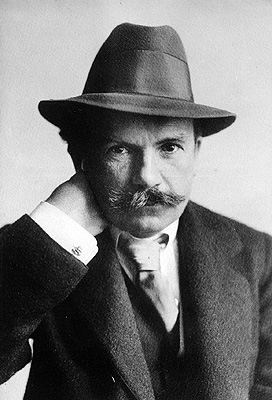
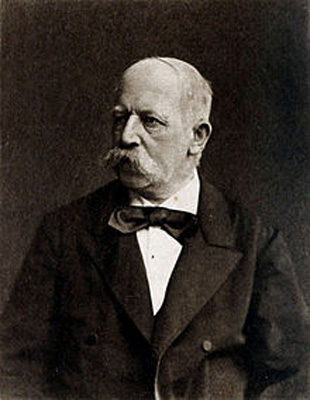
Eugen d’Albert, Robert Volkmann.
Source: Koch Schwann CD (my rip!)
Format: mp3(320k), ADD Stereo
File Size: 103 MB (incl. covers & booklet)
Download Link (mp3) – https://mega.nz/#!C343zbQR!bSJeVfEkkiCKdkgOlzr7wok64Xi9kjwrYvSRZfzCyqQ
Enjoy! Don’t share! Buy the original! And please click on "Reputation" button if you downloaded this album! 🙂
Modern: Neo-Classical
Stanley Weiner (1925-1991) was an American composer and violinist, and conductor and music teacher. Weiner came from
a Russian-Jewish immigrant family; his father was deputy concertmaster of the Baltimore Symphony Orchestra. Eight-year-old Stanley
appeared solo with the National Symphony Orchestra Washington. In 1947 he became concertmaster of the New York Symphony Orchestra
under Leonard Bernstein and later moved to the Indianapolis Symphony. In 1953 he moved to Brussels as a violin soloist and teacher,
and in 1976 received a violin professorship at the Musikhochschule Hamburg.
Weiner’s oeuvre, which began composing at the tender age of thirty, includes over 200 opus-numbered orchestral works (including
humoristically such as Schnuffib???r and the double bass op. 119 for speaker, large orchestra and double bass solo), chamber music,
vocal and church music. His music deliberately sets itself apart from the avant-garde currents of the 20th century and uses mostly
an easily accessible, tonal and melodic idiom.
Music Composed by Stanley Weiner
Played by the NOS Chamber Orchestra
With Stanley Weiner (violin/viola)
Conducted by Jan Stulen
Source: Koch Schwann CD (my rip!)
Format: mp3(320k), ADD Stereo
File Size: 136 MB (incl. covers & booklet)
Download Link (mp3) – https://mega.nz/#!3iZHjKgS!7lcQKuctUQowJ_p1cm5R4MJObRW-UlcfD4kYjFVQink
/>
Enjoy! Don’t share! Buy the original! And please click on "Reputation" button if you downloaded this album! 🙂
Modern: Neo-Romantic
Joaquin Rodrigo’s (1901-1999) Concerto in modo galante for cello and orchestra was written for cellist Gaspar Cassad??? and
dates from 1949. Although Rodrigo was somewhat reluctant to write another concerto at that stage of his career, he ultimately found the
structure that suited him: an opening Allegretto grazioso followed by an Adagietto and a Rondo giocoso. The work draws its inspiration
from eighteenth-century Spain and the music of Boccherini, and has a popular feel, along with touches of irony. Cassad??? judged the
concerto as ???an excellent work and a significant addition to the cello/orchestra repertoire … its instrumentation is so economical as to
make this one of the few scores in which the solo cello is never drowned out by the weight of the orchestra???. The premi???re took place
in Madrid???s Palacio de la M???sica, on 4th November 1949, with Cassad??? and the Orquesta Nacional de Espa???a, conducted by Ata???lfo Argenta.
The Concierto de Aranjuez was Rodrigo’s first attempt in the concerto genre; it quickly became, and has subsequently remained,
the most popular and recognizable of his works. Written for solo guitar and orchestra, it reveals the composer’s great affinity for those
two mediums, as well as his reverence for the long-standing traditions of Spanish Classical music. It was composed after Rodrigo’s return
to Madrid from France (he fled the turmoil of the Spanish Civil War) in 1939, and premiered there to great success in 1940.
Aside from its overt references to Spanish folk music and straightforward lyrical disposition, the Concierto de Aranjuez is notable for the
way in which Rodrigo managed to wed the relatively small voice of the solo guitar to that of the full orchestra. His writing is extremely
idiomatic for both guitar and orchestra, and one leaves a hearing of the work with the impression that writing for the two together is
quite natural; the guitar never seems overmatched or out of its element. Rodrigo’s orchestration is simple, clear, and yet interesting.
Sones en la Giralda means Sounds in the Giralda, meaning the area of the famous Moorish tower by that name, standing near the
main cathedral in Seville. Rodrigo’s piece portrays the tower in two eras. First comes a slow section reaching, as his music often does,
far into the past to evoke the sounds of the Arab occupation of Spain. The second movement is contemporary, evoking popular music,
folk song, and modern flamenco, all of which might be heard in the area in the composer’s day. It is an unusually attractive nine-minute piece.
Music Composed by Joaqu???n Rodrigo
Played by the North German Radio Sebastian Hess (cello)
With Eug???ne H???lzer (guitar)Philharmonic Orchestra
Conducted by Israel Yinon
Source: Koch Schwann CD (my rip!)
Format: mp3(320k), DDD Stereo
File Size: 137 MB (incl. covers & booklet)
Download Link (mp3) – https://mega.nz/#!nq42kCDC!uZEuoA7yd5ZECD8wOpjZr1q-M1lDHlt_0lOjPWlzPco
/>
Enjoy! Don’t share! Buy the original! And please click on "Reputation" button if you downloaded this album! 🙂
Modern: Neo-Classical
Ermanno Wolf-Ferrari (1876-1948) was an important Italian composer of the late nineteenth and early twentieth centuries.
His comic operas may be his best-known works, but none have endured in the standard repertory. Toward the latter twentieth century
his Op. 26 Violin Concerto (1901) began gaining some currency, as well as chamber works like Piano Trios, Opp. 5 and 7,
and the Idillio-concertino, Op. 15.
Wolf-Ferrari has generally been described as a gentle man with a childlike manner, whose music always reflected a conservative b
ent. Many have speculated the wartime woes he suffered in watching the two countries of his heritage divided by conflict, left indelible
scars that altered his compositional style and focus.
Indeed, after three decades away from the instrumental realm, Wolf-Ferrari returned to the genre with the 1933 Idillio-concertino,
for oboe, two horns, and strings, Op. 15. By the mid-1940s his opus number had reached above 30, largely on the strength of his
renewed efforts in instrumental music — only four operas followed Sly. Yet, outside of the 1946 Violin Concerto, most of these
works were subsequently ignored, despite their generally solid features. Wolf-Ferrari died in Venice on January 21, 1948,
his reputation already fading.
Music Composed by Ermanno Wolf-Ferrari
Played by the Folkwang Kammerorchester Essen
With Omar Zoboli (oboe/cor anglais)
Conducted by Robert Maxym
"Omar Zoboli: Oboe studies with Sergio Possidoni, Heinz Holliger, Paul Dombrecht. Experience and inspiration gained
by working with Nikolaus Harnoncourt and Frans Brueggen. Philosophy Faculty at Universit??? Bologna/ Italy. First Prizes
at the International Competition of Ancona and at the Italian Television (RAI) Competition for Young Performers 1978.
He owes his international reputation largely to his first recordings (among others a CD dedicated to A.Pasculli, the
???Paganini of the Oboe???) which were received with great acclaim, and brought engagements at various festivals and with
major orchestras in Berlin, Rotterdam, Paris, Warsaw, Lugano, Geneva, Zurich, Basel, Milan, London, Japan and the
United States. Besides being a soloist, he is an enthusiastic performer varying from duo to baroque ensemble, playing
on period instruments, and from wind octet (Ottetto Classico Italiano) to larger string-wind groups and contemporary
music included improvisation.
Composers like Bussotti, Castiglioni, Glass, Gaudibert, Hoch, Lucchetti, M???schinger, Pagliarani and many others have
written for and dedicated works to him.
He has recorded a DVD (Lebrun Concerto, Frans Br???ggen conducting) and about 30 LPs and CDs for Accord, Claves,
Divox, Ex Libris, Harmonia Mundi, Jecklin, Koch-Schwann, Stradivarius, Teldec and others with works that represent
the oboe repertoire of the last three centuries at its very best.
Omar Zoboli has been oboe soloist of the Radio Orchestras of Lugano (RSI) and Naples (RAI), of the St.Gallen Symphony
Orchestra and of the Basel Chamber Orchestra. Baroque and classical Oboes with Concentus Musicus Wien (Nikolaus
Harnoncourt), Il Giardino Armonico (Giovanni Antonini), Scintilla Orchester Z???rich, I Barocchisti (Diego Fasolis).
Since 1991 he has also been conducting with great succes his hown projects with large wind ensembles and orchestras.
He has been invited to give master classes in England (Royal College of Music in Kensington and Royal Academy of Music),
Spain, Portugal, Germany, Netherlands, Sweden, Czech Republic, Italy, Switzerland, South America, China.
Since 1988 he has been teaching oboe and chamber music at the Basel Music Academy."
Source: Koch Schwann CD (my rip!)
Format: mp3(320k), DDD Stereo
File Size: 114 MB (incl. covers & booklet)
Download Link (mp3) – https://mega.nz/#!TnRi2ahS!4Fds7FXj2raEKvxyfhSlBj5gL4aA8YLU0lIiZBVq5po
Enjoy! Don’t share! Buy the original! And please click on "Reputation" button if you downloaded this album! 🙂
Modern: Tonal/Neo-Romantic
Pianist, producer, and composer James Newton Howard (*1951) scored over 60 films beginning in the mid-’80s. Howard began
taking classical piano lessons at the age of four, playing on a piano owned by his grandmother, who was the Pittsburgh Symphony’s
concertmaster and violinist during the 1930s and ’40s. He went on to study at the USC School of Music and at the Music Academy of
the West (in Santa Barbara, California) with Reginald Stewart and Leon Fleisher. He also studied under orchestrator Marty Paich, who
would later conduct some of Howard’s scores. After graduating from college, Howard joined a short-lived rock band, then worked for a
couple of years as a session musician with artists including Diana Ross, Ringo Starr, and Harry Nilsson. In 1975, he joined the band
of the most popular artist of that time, Elton John, toured with him during the mid-’70s, and later re-joined for a tour in 1980
and again in 1986. He has received numerous Oscar nominations, and won an Emmy Award for his theme for the television
show Gideon’s Crossing and a Grammy Award in 2009.
Aaron Jay Kernis’ (*1960) musical character emerged early and has remained essentially constant throughout his career:
he is a composer with eclectic interests (both musical and non-musical), a theatrical, dramatic bent, and an uncompromising attitude
toward his art. Kernis’ style is accessible and popular, and his music is widely played. Kernis began his musical training on the violin,
and at the age of 12 began to teach himself piano. He studied for one year (1977-1978) at the San Francisco Conservatory with
John Adams, and then completed a degree in 1981 at the Manhattan School of Music, studying composition with Charles Wuorinen
and Elias Tanenbaum. In 1983 Kernis received a master’s degree from Yale, where he had studied with Jacob Druckman among others.
Like other American composers such as David Del Tredici or Christopher Rouse), Kernis has made frequent reference to music
of the past.
Music by Aaron Jay Kernis, James Newton Howard & Bramwell Tovey
Played by The Seattle Symphony & the Detroit Symphony Orchestras
With James Ehnes (violin)
Conducted by Ludovic Morlot & Cristian Macelaru
"There’s some entertaining, dazzling, smile-inducing, toe-tapping music here but I can’t give you a cast-iron promise
that there’s much more. Aaron Jay Kernis is the pre eminent orchestral showman of the age and his meeting of minds
with Heifetz’s representative on earth James Ehnes has resulted in a concerto that goes through just about every motion possible.
Kernis doesn’t just get multiple shades of feeling from the chord sequence of his opening Chaconne; he gets that sequence
to semaphore drastically different emotions while the music itself becomes stylistically more manic, roaring out that chord
sequence with ominous foreboding one minute and merrily tweeting it the next. There are interesting disruptive elements in
the slow movement, where Ehnes trades his fire-breathing for a pure ribbon of sound, and a dazzling finale that underlines
the piece’s credentials as a concerto as much for orchestra as for violin.
James Newton Howard’s Concerto is more straightforwardly built, which initially refreshes but soon frustrates, as every passage
feels cued up like a film score, in direct contrast to Kernis’s twisting kaleidoscope – reactive in the moment rather than long-term.
The white notes, clean intervals and fresh air of the Andante middle movement initially endear themselves but the feeling is of
Copland without the undertow; the Presto gets lovingly and refreshingly close to the cleanness of expression that lies behind
much American music but it can’t help fattening up and trying to lock into bigger narratives that aren’t there. The big-boned
coda feels somehow hollow.
There are no such aspirations in Bramwell Tovey’s Stream of Limelight, a flight of imaginative fancy inspired apparently by
Ehnes’s playing and again concerned with notions of display – a clever enough pastiche piece but of more personal than wider
musical value. Ehnes’s characteristic sweetness and tenderness married to unerring strength and direct musicianship are on
display in all three pieces. The one I’d be most keen to hear again is Kernis’s. How many times is another question."
Andrew Mellor, Gramophone
Source: Onyx Classics CD (my rip!)
Format: mp3(320k), DDD Stereo
File Size: 161 MB (incl. covers & booklet)
Download Link (mp3) – https://mega.nz/#!PmZWCSTY!mASODKYmhdRqoxNy1VAdwU0zJ7FP4eu8h4G_X_qsTMA
Enjoy! Don’t share! Buy the original! And please click on "Reputation" button if you downloaded this album! 🙂
Modern: Neo-Classical
Music by Michel Legrand, Andr??? Hossein, Bernard Herrmann & Jean Wiener
Played by the Orchestre Philharmonique de Monte-Carlo
With Danielle Laval (piano)
Conducted by Pascal Verrot
"All four of these composers are most famous for writing film music, although they wrote concert music as well. (Of the four, only
Michel Legrand is still alive, and (we hope) still writing.) It is Legrand who gets the largest font on the cover of this CD. The music
is from the film "Summer of ’42," of course ??? some might remember a vocal version of this melody with the title "The Summer
Knows." To call this a concertino is something of a stretch, however, because it lasts all of 3:53 in this performance. Better, perhaps,
to say that this is simply a lush and romantic arrangement of "The Summer Knows" for piano and orchestra, and to leave it at that.
Bernard Herrmann’s more substantial Concerto Macabre also comes from an American film ??? in this case, the nearly forgotten
"Hangover Square," about which Pascal Rivoire’s booklet notes say not a word. In the film’s climax, a composer has murdered his
deceiving mistress. Coming unglued, he sets fire to the concert hall in which he is premiering his new piano concerto. The orchestra
and audience scatter in alarm, and the composer is left to complete his concerto alone in the inferno. Macabre indeed. This twelve-
minute concerto sounds like what Liszt’s Mephisto Waltz might have sounded like had the devil preferred a tarantella instead.
The piano writing is flashy at first, and later stark and doom-haunted as Herrmann depicts the figuratively and literally collapsing
world of the composer.
Less known than these other two composers is Aminholla Andr??? Hossein, who came to the film music genre quite late in his career.
(His son, the actor and director Robert Hossein, asked him to score his first film in 1956, when the composer was already in his
late 40s.) This so-called "Fantasy Concerto" is not associated with a film, however. In three short movements (the total timing is
under 13 minutes), Hossein drops large hints about his Uzbekistani background ??? he was born in Samarkand in 1907. The music
has one foot in the West and the other in the East, and is attractive and lightweight.
The last composer represented here is the Frenchman Jean Wiener. His "Franco-American" concerto was written in 1924, and was
inspired (we are told in the booklet notes) by American music, especially by the music of George Gershwin. Don’t expect a
Rhapsody in Blue knock-off, however. Wiener’s concerto is cool and neoclassical, incorporating elements of jazz for spice, not
as the main ingredient.
Laval is a capable pianist, but other pianists have been more assertive and frightening in the Herrmann. Verrot and the Monte-
Carlovians give her excellent support, and Na???ve’s engineers make all the performers sound good. This is a short CD, and not a
very serious one, but it is worth exploring particularly for the works by Wiener and Hossein."
Raymond Tuttle, Classical Net
Source: Auvidis CD (my rip!)
Format: mp3(320k), DDD Stereo
File Size: 112 MB (incl. covers & booklet)
Download Link (mp3) – https://mega.nz/#!7qpzGAwD!cHTOuJdrsl_2b6V7cEP5LiHdTUj-vnjlo8j7DL5GCzU
/>
Enjoy! Don’t share! Buy the original! And please click on "Reputation" button if you downloaded this album! 🙂
Modern: Neo-Classical/Tonal
Francis Poulenc (1899-1963) composed the Concerto for Two Pianos and Orchestra in 1932, and played the first performance
with Jacques Fevrier on September 5 during the Fifth International Music Festival in Venice, with D???sire Defauw conducting the La Scala
Orchestra from Milan. It is scored for double winds and brass plus piccolo, English horn, tuba, assorted drums, and reduced strings.
While Poulenc was studying with Koechlin, Serge Diaghilev commissioned him to write Les biches (colloquially "The Girls") for his Ballets
Russes. Produced in 1924, this made Poulenc famous. He solidified his reputation in 1928 with the delectable Concert champ???tre for
harpsichord. The saucy-sentimental Two-Piano Concerto followed in 1932, commissioned by the Princesse Edmond de Polignac (herself a
composer, but more famous as a Parisian hostess and patron of the arts). Songs apart, the Two-Piano Concerto has proved to be the
composer’s hardiest work, clearly influenced by Ravel’s G major Concerto, which was premiered at Paris in January 1932 — especially
its instrumentation and "blues" passages (in their very French way). Each of the three movements has a slow central section, part-
bittersweet, part-sentimental, amounting to ABA form in the first and second, but a rondo-component in the finale.
Darius Milhaud’s (1892-1974) Concerto for Two Pianos and Percussion was written on commission from the Juilliard School
of Music and premiered there in August, 1963. In choosing his unconventional performing forces, Milhaud next set himself to the task of
ensuring that the music have as little resemblance as possible to the seminal work with such a configuration: B???la Bart???k’s
Sonata for Two Pianos and Percussion (1937). The writing for the piano, in contrast to the driving, hard-edged demands of the
Bart???k Sonata, is non-percussive and tending toward arabesque figuration that Milhaud weaves into colorful tapestry. The four
percussionists are deployed sparingly until the final movement and are used primarily as a source of punctuation and timbral interest.
The first movement is good-humored; the second, more solemn but infused with an ingratiating warmth. Milhaud characteristically
invests the finale with much exuberance and rollicking high spirits.
The composition date given in the headnote for B???la Bart???k’s (1881-1945) Concerto for Two Pianos, Percussion and Orchestra
is slightly misleading: yes, Bart???k produced this effort in 1940, but it is an arrangement of the 1937 Sonata for 2 pianos and percussion.
While for some time the chamber version may have been the preferred one, especially among critics, the orchestral rendition eventually
became the more popular choice in concert halls and the recording studio. Bart???k had originally conceived the work for solo piano and
percussion, but felt a second keyboard would supply sufficient sonic heft to provide the proper instrumental balances. Largely because
of the work’s success at its debut on January 16, 1938, the composer decided to arrange it for orchestra, changing relatively small portions
of the piano and percussion scoring. The concerto is cast in three movements, the first lasting around 13 or 14 minutes, about the length
of the other two combined.
Music by Francis Poulenc, Darius Milhaud & B???la Bart???k
Played by the Colorado College Summer Music Festival Orchestra
With Susan Grace (piano) & Alice Rybak (piano)
And with John Kinzie (percussion) & David Colson (percussion)
Conducted by Scott Yoo
"This enticing collection for the most part contains very fine performances by the piano duo Quattro Mani. Best of all is the
Milhaud Concerto No. 2 for Two Pianos and Percussion, a typically spiky and rhythmically charged essay in the composer???s
patented brand of polytonality, full of inventive sonorities. A rarity both on disc and in concert, it would make a welcome
change from the usual Bart???k sonata. Speaking of which, here we have the composer???s concerto version, also a rarity, and
one in which the orchestra contributes absolutely nothing of importance to the proceedings. Interestingly, the small size of
the ensemble is a plus, with the strings and winds simply enriching the basic piano plus percussion sonorities. I do wish,
though, that the timpani in the finale had more presence and solidity (even though Bart???k???s dynamics are correctly observed).
Leading off the program is Poulenc???s marvelous Concerto for Two Pianos, and in this piece the orchestra???s small-sounding
string section, with its relative lack of body, really does tell (though there???s nothing wrong with the conducting or ensemble
as such), particularly in those luscious melodies in the slow movement and latter half of the finale. Also the playing of both
pianists, while elegant and fluid, lacks the nervous edge and ???sec??? quality that gives Poulenc???s eclectic style its characteristic
point. But then, there are several fine versions of this concerto, beginning with the composer???s own, and very few of the
Milhaud and Bart???k. So for the latter two works particularly, this disc can certainly be recommended."
David Hurwitz, Classics Today
Source: Bridge Records CD (my rip!)
Format: mp3(320k), DDD Stereo
File Size: 162 MB (incl. covers & booklet)
Download Link (mp3) – https://mega.nz/#!GyYxnK7B!VILlrkaOdQ-sKR1vOmLpQnfziA6FulGWxBKHKYvVveI
/>
Enjoy! Don’t share! Buy the original! And please click on "Reputation" button if you downloaded this album! 🙂
Modern: Neo-Romantic
American composer and pianist John Alan Rose is an emerging, multi-talented artist of great insight who has successfully
performed his own music throughout the United States. Twice performing in ???Winners??? Concerts??? at Carnegie Hall in New York City,
Mr. Rose has received prizes at international music competitions both as a pianist and as a composer. He has appeared on radio
and TV commenting and playing his own music and has recorded his works on various labels.
Rose stuns from the outset with his imaginative Piano Concerto ???Tolkien Tale,??? a programmatic fantasy with clear Eastern
European folk elements. In the first movement ???Setting out on a great adventure,??? the listener, perhaps on a journey with famed
hobbit Bilbo Baggins, is introduced to playful syncopations and pentatonic explorations — perhaps in homage to folk explorations
of Bartok, Brahms, Dvorak, and Prokofiev. The Earth and all its elements can be heard in Rose???s masterful orchestration, highlighting
impressive writing for chimes and percussion. The warm ???Lullaby,??? the second movement, is a short interlude, a breathtaking look
at tandem possibilities for keyboard instruments and woodwinds. Concluding the work is ???March,??? a continuation of the fanciful
literary journey with musically atmospheric projections of things encountered along the way. The work is solid, accessible, and
most of all memorable — one that could work itself into standard orchestral repertoire for years to come.
Next is Old Father Time for cello and orchestra, a nostalgic, yet timeless work demonstrating the composer???s mastery of
the neo-Romantic style and the complexities of storytelling through music. Maestro Vaupotić has created such a purity in timbre
and sonority that the listener will be astonished at how clearly critical every part is in creating a whole. As concertist
Jungwon Choi (cello) humbly shares the stage as part of the orchestra.
The two-minute violin introduction to 25,000 Years of Peace is modern, seemingly improvisational and likewise experimental.
The violinist somehow replicates the hollow breaths heard in folk woodwinds. It is meditative and almost religious. Direction is
unclear. But then the grand orchestra enters and the listener is transported to the Western frontier in an Ives-like montage of
New World folk tune, Native American chant, and Shaker hymnsong. The modern aesthetic is so seamlessly woven into the
fabric, one wonders, at times, if Fleck and Wooten have entered the picturesque scene.
Listeners will enjoy Ticket to the Theater featuring soprano Sing Rose and the dark comedic narration of actor
Tyler Bunch (Sesame Street). John Alan Rose explains, ???my goal was to contribute a new piece to the vocal/orchestral
repertoire suggesting a grand operatic performance, but requiring only one performer, one narrator and no set.
It is supposed to seem off-the-cuff, and since "invented" by a musician onstage, resorts to the barest of bones of
a plot, without an identifiable lead character!???
Music Composed by John Alan Rose
Played by the Moravian Philharmonic Orchestra
With John Alan Rose (piano)
And Sing Rose (soprano) & Tyler Bunch (narrator)
Conducted by Miran Vaupotic
Source: Navona Records CD (my rip!)
Format: mp3(320k), DDD Stereo
File Size: 177 MB (incl. covers)
Download Link (mp3) – https://mega.nz/#!CjpxhYya!s8MAGiNNBnvPqX3dDjMlSIqknvuIXeMhhBZcdScI-cA
Enjoy! Don’t share! Buy the original! And please click on "Reputation" button if you downloaded this album! 🙂
Modern: Tonal/Contemporary
Brazilian-American composer Miguel Kertsman (*1965) writes in numerous genres embracing classical music, jazz, progressive
rock, electronica and film, bridging these diverse elements to craft a unique sound world. Concerto Brasileiro explores lyricism
and modernity through solemn chorale-like writing and seductive dances laced with Brazilian folk rhythms. Uncommon sonorities,
haunting themes and ethereal landscapes mark out the Concerto for Violin, Horn, Shofar and Orchestra, while traditionalism
and experimentation define the Journey for Bassoon and Orchestra. Chamber Symphony No.2 explores and celebrates
New York???s rich cultural diversity.
Music Composed by Miguel Kertsman
Played by the London Philharmonic Orchestra
With Maria Piccinini (flute) & Orsolya Korcsol???n (violin)
And Martin Kuuksmann (bassoon) & Gergely Sugar (French horn & shofar)
Conducted by Dennis Russell Davies
"Born in Brazil in 1965, Miguel Kertsman was musically educated in the United States, and has had a very diverse career
working in numerous genres and formats. The booklet with the disc comments that in the world of composition he bridges
elements in ???genre-bending music for the concert stage with unique sound and wide appeal???. Stylistically he is a very personal
composer working in a devolved modern tonality that seems to have a desire to embrace melody, but then shies away from it
to keep him in a modern world. The four works on the disc include soloists they were written for, and at times, as in the
Flute Concerto, his ideas mix Brazil with Oriental sensuality, the finale moving in to a rugged intensity. The second concerto
employs an ancient instrument, the shofar, originally made from a ram horn, it adds its own unusual sonority but its ability
to make ???music??? is very limited, the French horn thus becoming the dominant instrument. It certainly does not have, to my
ears, the ready impact of the flute concerto, but has a rather discursive feel. Composed one year earlier, in 2012, the
Bassoon ???concerto???, is by comparison, a very beautiful if, at times, rather sombre score, its shape consisting of three
musical pictures separated by interludes. Fashioned from his jazz compositions, the Second Chamber Symphony, completed
three years ago, is in one continuous movement and is an ???easy on the ear??? modern score. The soloists are familiar with
the concertos and having Dennis Russell Davies???who is equally involved with the composer???as the conductor, we only
have to add the outstanding London orchestra to complete a desirable disc of Twenty-first century music excellently recorded."
David’s Review Corner
Source: Naxos CD (my rip!)
Format: mp3(320k), DDD Stereo
File Size: 157 MB (incl. covers & booklet)
Download Link (mp3) – https://mega.nz/#!eqohgCyQ!hNrwiY4xH4tbEAsQRd0wMONnGP6XPJLYiOe6cBjp2Jw
Enjoy! Don’t share! Buy the original! And please click on "Reputation" button if you downloaded this album! 🙂
Modern: Late/Neo-Romantic
It is indeed a cause for excitement when two concertos by Florence Price, the first African American woman to write a
symphony performed by a major U.S. Orchestra, are recorded. There are no known performances of Price’s First Violin Concerto,
but the Violin Concerto No.2, completed in 1952 was performed posthumously by its dedicatee, Minnie Cedargreen Jemberg at the
opening of the Florence B. Price School in Chicago’s Kenwood neighborhood in 1964. The two concertos are joined on this recording by a
work for violin and orchestra by Ryan Cockerham, which is a tribute to Florence Price’s home state of Arkansas. Violinist
Er-Gene Kahng is on the faculty at the University of Arkansas in Fayetteville and is concertmaster of the Arkansas Philharmonic
Orchestra. She is on the violin faculty at the Montecito International Music Festival, the Beverly Hills International Music Festival,
and performs with the Bay View Music Festival string quartet. Ryan Cockerham’s creative work has been exhibited and performed
by leading arts and academic organizations around the world, including the English National Ballet, Art Expo Milano, and the
Texas Ballet Theater, among many others.
Music Composed by Florence Price
Played by the Jan???cek Philharmonic Orchestra
With E-Gene Kahng (violin)
Conducted by Ryan Cockerham
"By her own admission, composer Florence Price had two strikes against her.
"To begin with I have two handicaps ??? those of sex and race. I am a woman; and I have some Negro blood in my veins,"
is how she began a 1943 letter to Serge Koussevitzky, the revered conductor of the Boston Symphony Orchestra.
She added later, "I would like to be judged on merit alone."
Koussevitzky never gave her music a chance, but along the way a few others did. Even so, her music is little known ???
and some of it was lost for decades ??? but now Price is finally receiving a little belated recognition. There’s a profile in
the New Yorker by Alex Ross and a new recording of two recently discovered Violin Concertos on the Albany label.
Price completed her Violin Concerto No. 2 in 1952, the year before her sudden death at age 66, just as she was set to
explore career possibilities in Europe. The manuscript was never published and considered lost sometime after 1975,
when Price’s daughter died. The concerto, along with other music and personal papers, was discovered by accident in
2009 when renovators opened up an abandoned house Price once owned some 70 miles south of Chicago.
Unfolding over a relatively brief 14-minute span, the concerto opens with a sober orchestral introduction, pausing for
a beat to let the solo violin make its honeyed, serpentine entrance. Violinist Er-Gene Kahng’s tone, round and lustrous,
is well-suited to the concerto’s breezy melodic theme and dotted rhythm, which propels the music forward. Along
with Price’s harmonies ??? with their tasteful dabs of dissonance ??? the music is reminiscent of the sweeping, melody-
driven American violin concertos of the 1930s by Samuel Barber and Erich Korngold.
Price grew up in Little Rock, Ark. and published her first piece in 1899. She enrolled at the New England Conservatory,
where she studied with George Chadwick. Later, in Chicago, she earned a post-graduate degree in 1934. While working
on her compositions, she wrote radio jingles, popular songs under the name "Vee Jay" and accompanied silent films at
the organ. Later, she would write songs for contralto Marian Anderson, who sang Price’s arrangement of "My Soul’s
Been Anchored in the Lord" at her historic 1939 Lincoln Memorial concert in Washington, D.C.
A breakthrough came in 1932, when Price’s Symphony in E minor won Chicago’s Wanamaker Music Contest. Along
with the $500 award came a first performance. On June 15, 1933, conductor Frederick Stock debuted the symphony
with the Chicago Symphony Orchestra in a concert that included tenor Roland Hayes and music by Samuel Coleridge-
Taylor. The premiere secured Price her place in history as the first African American woman to have a symphony
performed by a major American orchestra.
Like her peers, William Grant Still and William Dawson, Price took inspiration from African American spirituals, although
its influence isn’t conspicuous in all her works. The Second Violin Concerto has distinctly American touches, but overall
it’s steeped in the European tradition, recalling the warmth and romantic facility of Anton???n Dvoř???k. But Price’s style
isn’t the only thread that connects her with the great Czech composer.
In 1892, Dvoř???k and his family set sail for the United States. By that time Price was five years old and had already
given her first public piano recital.
Dvoř???k couldn’t have known how prescient he was when, the following year, he told the New York Herald: "The future
music of this country must be founded upon what are called the Negro melodies. This must be the real foundation of
any serious and original school of composition to be developed in the United States."
While Dvoř???k’s pronouncement ruffled a few feathers in the music world, many others took the revered composer
seriously. If he could have only heard Louis Armstrong, James Brown, Sun Ra, Kendrick Lamar ??? and the alluring
music of Florence Price."
National Public Radio
Source: Albany Records CD (my rip!)
Format: mp3(320k), DDD Stereo
File Size: 128 MB (incl. covers & booklet)
Download Link (mp3) – https://mega.nz/#!C7R0xCjJ!oMzcE2Qpv9xnriNpx-qr9O-ZSjGew3p6IAjikNmhqdw
/>
Enjoy! Don’t share! Buy the original! And please click on "Reputation" button if you downloaded this album! 🙂
Modern: Tonal
Composed especially for and dedicated to his friend, the wonderfully gifted oboist Diana Doherty, Ross Edwards (*1943)
has sought, in his Oboe Concerto "Bird Spirit Dreaming" to imbue the traditional concerto with elements of theatre, ritual and dance,
whilst preserving its concert hall function as an accompanied soloistic display. As we have come to expect from this composer, the texture
is dominated by an almost kaleidoscopic interplay of material gleaned from the natural environment and diverse cultural sources, whose
symbolic meaning remains ultimately and tantalisingly elusive. There are, however, audible references to other Edwards works, notably
Dawn Mantras and Symphony No.2 (Earth Spirit Songs), whose common theme is renewal. Although it is unlikely that the
composer was conscious of a program or narrative, a hidden purport might suggest a lone voice crying in the wilderness, led through
various stages of socialisation before re-emerging, transformed into a joyful affirmation of unity embracing diversity.
The Heart of Night (for shakuhachi & orchestra), commissioned by the Melbourne Symphony and Symphony Australia, explore
s the intuitive ???night??? mode of consciousness in which linear, or clock time is suspended and lis- teners are invited to turn their attention
inwards in present-centered contemplation. This is not the sort of listening normally associated with western concert halls where
symphonic dramas are played out. It???s actually the response you???d expect to the traditional honkyoku pieces which have the effect
of relaxing the body while keeping the mind calmly alert. This capacity to still the unquiet mind has been universally recognised
through the ages as one of music???s great blessings to humanity, but it???s been neglected in the western world in recent centuries.
One cause for optimism in these turbulent times is that we???re beginning to rediscover its importance.
The Clarinet Concerto is at the same time a work of great contrasts in which vivid presences and dreamlike distances are
juxtaposed with the intention of keeping listeners alert and engaged. It opens with phrases from the plainsong Ave Maria Gratia Plena
(Hail Mary, full of Grace), fragments of which reappear in many guises throughout the work as a symbol of the universal Earth Mother,
source and nurturer of all living things.The ecological association will become audible as plainsong turns dramatically into birdsong.
Three movements are performed without interruption. Two of them are explosive dances, headlong, exuberant, but with episodes of
nimbleness and translucent delicacy ??? a flash of coloured bird wing, a hovering dragonfly, a shriek of parrots. At the core of the work,
an intricate melodic line evolves slowly over drones that anchor it to the earth.
Music Composed by Ross Edwards
Played by the Melbourne Symphony Orchestra
With Diana Doherty (oboe) & Riley Lee (shakuhachi)
And David Thomas (clarinet)
Conducted by Arvo Volmer
Source: ABC Classics CD (my rip!)
Format: mp3(320k), DDD Stereo
File Size: 144 MB (incl. covers & booklet)
Download Link (mp3) – https://mega.nz/#!lRtw3K4b!INRr9LYcENPNKDxCasWGCL0oXGJcbQtPz27FObxMYGk
Enjoy! Don’t share! Buy the original! And please click on "Reputation" button if you downloaded this album! 🙂
Modern: Tonal
From his earliest student days, Astor Piazzolla (1921-1992) had harboured the ambition to compose large-scale symphonic
music in addition to the more compact tango-inspired pieces for which he remains best remembered. It was somewhat inevitable, #
therefore, that he would at some point compose a full-scale concerto for bandone???n and orchestra. The Bandoneon Concerto in
three movements was first performed in Buenos Aires in 1979. After the composer???s death, his agent and publisher decided to give
the work a more poetic name. "Aconcagua" is the name of the highest peak in the Andes and Piazzolla???s agent chose this name as
he felt that the concerto represented the creative summit of the composer???s achievements.
The second composer on the album is the French composer Richard Galliano (*1950), who collaborated with Astor Piazzolla in
the 1980s and today is one of the absolute greats of bandoneon and accordion jazz with over 50 albums of his own. His Opale Concerto
musically links South America with the Mediterranean region, combining tango with elements of the New Musette that Galliano
Piazzolla’s New Tango opposes.
Music by Astor Piazzolla & Richard Galliano
Played by the Brussels Philharmonic Orchestra
With Gwen Cresens (bandoneon & accordion)
Conducted by Diego Matheuz
"???stor Piazzolla???s Bandone???n Concerto has been well-served on record, most notably by the composer himself in a
swaggering 1987 account on Nonesuch. A similarly trenchant performance by French accordionist/composer Richard Galliano
made a decade later is nearly as fine (Dreyfus/BMG). Galliano included his own Concerto Opale for accordion, closely modelled
on Piazzolla???s work, and a selection of his charmingly sentimental miniatures on his recording. Now here???s Gwen Cresens,
revisiting Galliano???s programme by offering both the Piazzolla and Galliano concertos (played on bandone???n and accordion,
respectively, as Galliano did), and his own mix of shorter works.
Cresens plays the Piazzolla Concerto with tremendous rhythmic ???lan. I admire how tautly he holds together the lyrical passages
while still sounding improvisatory, and also how sensitive he and the Venezuelan conductor Diego Matheuz are to the music???s
textural variety. Try the passage at 4’56" in the slow movement, where the bandone???n and orchestra???s pulsing staccato suggests
raindrops, heightening the melancholy atmosphere. The Galliano Concerto is episodic and sometimes gets stuck in a groove.
Galliano tears through the outer movements to electrifying effect in his recording. Cresens is less urgent but, again, makes
the most of the motoric rhythms, and lingers more affectionately in the nostalgically bittersweet Moderato malinconico.
The shorter pieces are a curious lot. Cresens prefaces the Granados and Alb???niz with a flamenco-inflected prelude of his own to
create an evocative suite. His enigmatically titled Nobody Likes an Angry Bunny is introduced by aching harmonies and continues
with a touching, Piazzolla-esque milonga but the denouement is saccharine. And while Cresens makes the most of Piazzolla???s
conversational Pedro y Pedro, his arrangement of Oblivion is too garishly coloured. Galliano plays Oblivion on his concerto disc,
too, but in a version much closer to the sepia-toned spirit of the original. Still, this is a gratifying programme overall, and the
recorded sound is sparklingly clear."
Gramophone
Source: Warner Classics CD (my rip!)
Format: mp3(320k), DDD Stereo
File Size: 163 MB (incl. covers & booklet)
Download Link (mp3) – https://mega.nz/#!ZJUVCCDL!E1QEpQA2-91Ku_lZUnxpyhREDjPOhdGS3FBheNFg5aw
/>
Enjoy! Don’t share! Buy the original! And please click on "Reputation" button if you downloaded this album! 🙂
Modern: Neo-Romantic
Following the Knoxville Symphony Orchestra’s rousingly successful premiere of Lucas Richman’s (*1964) Piano Concerto "In Truth"
in 2013, the Pittsburgh Symphony Orchestra, where Richman was resident conductor and a frequent guest conductor, was approached
about a recording of the piano concerto; a Concerto for Oboe and Orchestra (subtitled "The Clearing"), commissioned and premiered by
the Pittsburgh Symphony Orchestra; and his Three Pieces for Cello and Orchestra. With world-class soloists, and Lucas Richman conducting,
the recordings are brilliant and authoritative. Lucas Richman is music director of the Bangor Symphony Orchestra and was music director of the
Knoxville Symphony Orchestra for 12 years. His music has been performed by more than 200 orchestras across the United States. Pianist
Jeffrey Biegel, principal oboe of the Pittsburgh Symphony Orchestra, Cynthia Koledo DeAlmeida and Israeli-American cellist
Inbal Segev are the soloists. Richman’s music is neo-romantic and highly approachable, especially the big-boned, virtuoso Piano Concerto.
Music Composed and Conducted by Lucas Richman
Played by the Pittsburgh Symphony Orchestra
With Jeffrey Biegel (piano) & Cynthia Koledo DeAlmeida (oboe)
And Inbal Segev (cello)
"Russian romanticism and American triumphalism merge in the passionate, exciting first movement (???To One???s Self???) of
Lucas Richman???s Concerto for Piano and Orchestra: In Truth. Pianist Jeffrey Biegel and the Pittsburgh Symphony Orchestra
conducted by the composer give a bright, muscular account of this appealing music, whose aggressive tempos and friendly
tonalities suggest a concerto with a typical classical structure.
The second movement (???To One???s World???) counter expectations, beginning with a peaceful piano cadenza but exploding into
angular jazzy and ragtime colors, not at all the standard quiet center. A wind chorale and a gently flowing violin melody set
a contemplative mood for the final movement (???To One???s Spirit???). The orchestra picks up the violin theme, the piano supports
it with soft arpeggios, the music swells, the brass takes up the theme, and all is resolved in a huge major chord halfway
through that suggests an optimistic forecast for ???one???s spirit.??? The densely textured final section thunders to a movie-score
climax before ending with a hopeful sigh from the piano and a final Broadway-style orchestral flourish.
The whole work is built around the idea of ???truth??? and the conflict between ???abiding by society???s universal ???truths??? and railing
against those who create new ???truths??? so as to avoid personal culpability.??? Sound like anyone you???ve read about in the news
lately ??? on any day of the week? But with its dedication to ???self,??? ???world,??? and ???spirit??? the whole conception has a meditative
rather than an ideological flavor. While reading of the thoughts that inspired this accessible and often quite lovely concerto
may add a dimension to one???s listening, it???s by no means necessary. I???m tempted to say Richman writes for the masses, in
the best sense of the phrase.
For Concerto for Oboe and Orchestra: The Clearing, Richman took inspiration from Psalm 23 and skillfully programmed a
single-movement progression through life???s trials (???the valley of the shadow of death???) to a symbolic ???clearing??? of understanding
and acceptance. I couldn???t help thinking of the protagonist as Dorothy in The Wizard of Oz rather than a biblical or Pilgrim???s
Progress figure ??? except those stories don???t end in a celebratory dance, certainly not one in 7/8 time. The Pittsburgh Symphony???s
principal oboe Cynthia Koledo DeAlmeida gives a convincing account of the story, beginning with the ruminative and slowly
darkening introduction of subtle dissonances and romantic interludes.
Blaring brass note-clusters usher in rumbling passages in a section representing the ???onslaught of earthly reality,??? after which
the soloist/protagonist arrives at the titular ???clearing??? for a pastoral prayer of sorts. Here, as throughout, there???s an assured
melodic confidence in the solo lines. The whole album was recorded live in concert, and there???s also a thrilling spaciousness
to the sound.
The cinematic Three Pieces for Cello and Orchestra features cellist Inbal Segev (whose new album of Bach???s Cello Suites we
are highlighting here and here). The first of this trio of brief, related pieces, ???Declaration,??? boasts boiling interplay between
soloist and strings as one main theme recapitulates throughout.
The second piece, ???Prayer,??? suggests a melancholy Jewish air with a related, more inspirational major-key theme at its center.
Both it and the racing third piece, ???Freylach??? (Yiddish for ???festive???) with its klezmer dance, debuted appropriately with the
Los Angeles Jewish Symphony in 1999, while the Israel-born Segev was the soloist for the 2013 premiere of the three
pieces as a set.
On this album of accessible and enjoyable modern classical music, the cello pieces are the least challenging to the ear ???
perhaps the least mature as compositions ??? but as appealing and well played as the rest of the selections."
Blogcritics
Source: Albany Records CD (my rip!)
Format: mp3(320k), DDD Stereo
File Size: 152 MB (incl. covers & booklet)
Download Link (mp3) – https://mega.nz/#!IQ8l2QIJ!1s2eqYVjlPgslsF9PsvIaLSCa9GDsTJbz-02FADR-mw
/>
Enjoy! Don’t share! Buy the original! And please click on "Reputation" button if you downloaded this album! 🙂
Many thanks,wimpel!!!
Modern: Tonal/Contemporary
The vitality of these three works by the Irish composer Jerome de Bromhead (*1945) points to the sheer pleasure that their creator takes
in writing music. The swirling ebullience of the tone-poem A Lay for a Light Year suggests the scale and energy of the cosmos. The edgy,
elegiac lyricism of the Violin Concerto inhabits textures that are brittle and clear like Stravinsky???s. And the more chromatic Second Symphony
suggests a vast sense of space behind a glittering foreground of kaleidoscopic orchestral colours.
Music Composed by Jerome de Bromhead
Played by the RT??? National Symphony Orchestra of Ireland
With Alan Smale (violin)
Conducted by Colman Pearce
"Jerome de Bromhead’s name was completely unfamiliar to me and I suspect will be to the vast majority of music-lovers – even
those who are never happier than when sieving the ranks of the unusual. This Irish composer studied with A J Potter and S???oirse
Bodley. He is a guitarist and has spent many years working for the Irish broadcaster RT???.
It is no surprise that a disc of his orchestral music should be the handiwork of Toccata Classics, here working with RT??? Lyric fm.
That they are first recordings is a given.
A Lay for a Light Year is overture in scale. Its cosmological subject matter is first announced in rolling and roiling brass gestures
that curve and re-curve. It’s a modernistic piece yet not as wild-eyed and feral as some. It inhabits worlds that variously connote
later period Malcolm Arnold, Simpson’s Symphonies 5-7 and Hovhaness’s And god created great whales. The listener encounters
rushing abrasion and this is sometimes at extreme high volume. Towards the close the brass find an overtone of triumph. Had this
music been written at the time of Carl Sagan’s ‘Cosmos’ series it would have been a natural choice as a backdrop.
The Violin Concerto is akin to the Berg in its approach to melody. The writing has a meditative lunar chill. The middle movement is
a magically poised Mesto in which the gentlest swish of dissonance is threaded through by the solo violin’s involuted dreaminess.
In that sense it parallels the George Rochberg concerto. The third movement is a Vigoroso, belligerent and superbly recorded with
marimba prominent and the violin solo recessed at times. The style of the solo amid a jungle of minutely calculated orchestral detail
carries over from the Mesto. Credit to the composer for staying true to his star with a strikingly dithered patter of starkly quiet
staccato writing along the way.
The Violin Concerto’s adept soloist is Alan Smale, a native of Torquay in Devon. Smale also gave the world premiere of the concerto
by Frank Corcoran (2012) as well as having recorded the concertos by Raymond Deane (Marco Polo 8.225106) and James Wilson
with whom de Bromhead studied.
De Bromhead wrote his First Symphony in 1985. This is his Second and was premiered by the same forces as here on 22 January
2008. There are three movements, each sporting the word "Quasi …"
The building blocks of Quasi Corrento are brassy fanfares but the whole symphony inhabits a chrome-vanadium world smacking of
William Schuman’s statuesque way with the declamatory. There are also faintly dissonant and elegiac American-sounding (Barber)
episodes that provide contrast.
The disarmingly open and useful liner-notes are by the composer and are devoid of fluff."
Musicweb
Source: Toccata Classics CD (My rip)
Formats: mp3(320), DDD Stereo
File Size: 175 MB (incl. covers & booklet)
https://mega.nz/#!QJsEXCpD!HoENdihMoziHVBIXjZhC1un47JXgvPlWG3V2rH9JksQ
Enjoy! Don’t share! Buy the original! Click on "Reputation" button if you downloaded this album! 🙂
Modern: Tonal
Three of the best-known Australian piano concertos are featured on this specially priced CD. Ross Edwards’ well-known
Piano Concerto is brimming with exhuberant dance rhythms and luscious orchestral colours, while Peter Sculthorpe’s
Piano Concerto is more introverted, but immediately appealing with its fascinating Japanese and Balinese influences.
Malcolm Williamson presents a work very characteristic of the concerto genre, resplendent in its virtuosity.
These are three works that deserve to be in any collection, unashamedly Australian, they are powerful demonstrations
of the skill and breadth of our composers and their music.
Music by Ross Edwards, Malcolm Williamson & Peter Sculthorpe
Played by the Tasmanian, Melbourne & Queensland Symphony Orchestras
With Dennis Hennig, Malcolm Williamson & Anthony Fogg (piano)
Conducted by Myer Fredman & Barry Tuckwell
"It could take a while to find any Australian piano concertos in current CD catalogues, so it is heartening that all
three on this disc are worth hearing for their intrinsic merits as well as their comparative rarity. (Percy Grainger,
probably Australia???s best-known composer, once declared the piano concerto to be "antithetical to Australia and all
things Australian"!) Few contemporary Australian composers are widely celebrated in their own country and, so far
as I know, only Williamson and Sculthorpe are names likely to be recognised in Europe. All the more exciting, then,
to hear these accomplished performances in contrasting styles and authoritative interpretations.
Ross Edwards??? concise, three-movement concerto is full of original ideas expressed in a forthright diatonic idiom.
The most accessible work on this disc, it could almost be called a chamber concerto; yet this is "big country" music,
romantic but refreshingly unsentimental, like that of Copland. The concerto has considerable rhythmic subtlety, the
bold cross-rhythms of the first movement aided and abetted by a percussive piano, followed by a more lyrical,
reflective second movement full of night sounds and with Celtic overtones. A brilliant finale (do I discern a backward
glance at Spanish Renaissance music? I think so) rounds off a most satisfying work.
Since 1950 Williamson has spent most of his creative life in London, and his music usually shows a closer affinity to
Messian and Boulez than to native Australian influences. Few would assert that Australian music has yet found a truly
individual voice and so it is, perhaps, irritating for composers of this stature that they tend to be judged in terms of
European influences. Nevertheless, Williamson???s concerto can be identified with Stravinsky???s neo classical style —
restless, full of nervous energy and intricate dialogue between soloists and orchestra. The tension is high throughout,
but the musical argument clear and persuasive.
Sculthorpe???s concerto is the most substantial and challenging on this disc, a dark and tragic work that received an
award in 1983 for the Most Performed Australian Composition of that year. The concerto is divided into nine sections:
Grave, Animato, Grave, Calmo, Animato. Risoluto, Come Notturno (cadenza) and Estatio which creates an evolving
structure of complexity and power. In places it plays with minimalist techniques, but rises through them into powerful
large-scale periods that show Sculthorpe to be a commanding voice calling to be heard in today???s feverish quest for
superficial brilliance. For me Sculthorpe???s masterpiece is the best reason for buying this disc, though the other works
on it are by no means inconsiderable.
Orchestral playing is brisk and polished throughout, in a no-nonsense Aussie manner, and the demanding solo parts of
all three concertos are handled with a confident virtuosity that speaks of familiarity and affection. If the ABC can go
on finding such worthwhile examples of modern antipodean composers I will be first in the queue to buy them."
Musicweb
Source: ABC Classics CD (My rip)
Formats: mp3(320), DDD Stereo
File Size: 146 MB (incl. covers)
Download Link (mp3) – https://mega.nz/#!kB11jKCC!lQqLgSLkQsOjnyarU_c96tfVeHJfq6Hre5xTWJp2vSw
Enjoy! Don’t share! Buy the original! Click on "Reputation" button if you downloaded this album! 🙂
Late Romantic
Ricardo Castro Herrera (1864-1907) was a Mexican concert pianist and composer, considered the last romantic of the time
of Porfirio D???az. Castro was born at Hacienda de santa B???rbara, Durango. His father, Vicente Castro, was a deputy congressman;
his mother was Mar???a de Jes???s Herrera. Castro began his music education with Pedro H. Ceniseros. In 1879 his family moved to
Mexico City where the boy entered the National Conservatory of Music and studied piano with Juan Salvatierra and Julio Ituarte,
He studied harmony and counterpoint with Melesio Morales. He finished all his studies in just 5 years, half of the usual 10.
He graduated in 1883. Castro began his musical career as a concert pianist and composer before finishing his studies.
In 1882, he won two prizes. At 19, Castro finished his First Symphony in C Minor; the symphony was premiered in 1988,
81 years after his death. In 1883 the Government of Mexico chose some of Castro’s works to send to Venezuela for the Simon
Bolivar centenary and later in 1884 he made a concert tour through United States. 1896 was the year of the first premiere of the
first act of Castro’s opera Atzimba. The second act is lost.
Castro received a scholarship from the Government of Mexico and went to Europe from 1903 to 1906 to give master classes in
conservatories in Paris, Brussels, Rome, Milan and Leipzig. He published in Paris many Mexican dances for piano in the Habanera
style. He studied with Teresa Carre???o while in Europe. When he returned to Mexico he was appointed music director of the National
Conservatory of Music by Justo Sierra and kept that work until he died of pneumonia in Mexico City in November 1907.
Castro’s music for piano tends to be very colourful and sentimental with a kind of virtuosity in the style of Liszt.
Music Composed by Ricardo Castro
Played by the Orquesta Sinf???nica de San Luis Potosi
With Rodolfo Ritter (piano) and Vladimir Sagaydo (cello)
Conducted by Jos??? Miramontes Zapata
"Sterling tell us that these three works are the first examples of a piano concerto, cello concerto and symphonic poem
in Latin America. All three are performed live with an unobtrusive audience, the presence of which is signalled by applause
at the end of each piece. The Piano Concerto is storming and full-blooded with a poetic and glittering slow movement.
The ideas are good: listen to the self-effacing charm of the sauntering orchestral pages of the first movement before the
piano’s commanding entry. The finale is a Polonaise-style piece in an idiom in the same territory as the concertos and
concertante works by Gottschalk, Saint-Sa???ns and Arensky. The pianist Rodolfo Ritter acquits himself admirably as he
did in the two Ponce piano concertos on Sterling (CDS1102-2 – review). The orchestra’s violins are respectable even if,
in the piano concerto, they tend towards a fierce tone at fff. In those instances they could do with more caramel and
less jalapeno.
The Cello Concerto is also in three movements. It has a sweet yet aristocratic Andante and a great deal of smoothly suave
writing not that far distant from the Dvoř???k cello concerto and the little cello and orchestra pieces by Frank Bridge; not
Oration. I had thought it might have echoed the concertos for the instrument by Lalo and Saint-Sa???ns but Castro comes up
with strong memorable material instead. It’s a cut above – quite a discovery. The orchestra are here in better fettle than
in the Piano Concerto and the more than capable cellist, Vladimir Saygardo, seems to enjoy putting the work across.
I thought the name Oithona ??? after a poem by James Macpherson, itself based on a Celtic legend ??? rang a bell. It forms
the basis for an opera (unrecorded) by British composer Edgar Bainton (1880-1956) which was produced by Rutland
Boughton in Glastonbury in 1915. Castro’s symphonic poem on the subject is a tempestuous affair which would be a
good match with Tchaikovsky’s Hamlet. Here it’s certainly given a raw, hustling account, mordant yet in touch with many
poetic moments. It’s only a little longer than a concert overture. The orchestration is pleasingly artful.
The very full liner-notes by Jose Maria Alvarez are quite properly in Spanish first and then English. They are of the factual
and musical depth one finds in Toccata’s CDs. Sterling’s Bo Hyttner and Snr. Alvarez should take a bow.
That such enjoyable music was being written in these circumstances is a revelation. Discovery and delight are not always
companions but they are on this occasion."
Musicweb
Source: Sterling Records CD (My rip)
Formats: mp3(320), DDD Stereo
File Size: 148 MB (incl. covers & booklet)
Download Link (mp3) – https://mega.nz/#!IZsCBK6I!cSonf_xzN1qJylBLRlkuqoSRH3tgps5CBIuCIwuisP8
Enjoy! Don’t share! Buy the original! Click on "Reputation" button if you downloaded this album! 🙂
Modern: Tonal
These three concertos share a traditional three-movement structure and owe their origins to composers who are acclaimed
and highly respected in their field, but this is as far as their similarities go. Frank Ticheli???s Clarinet Concerto pays homage
to Gershwin, Copland and Bernstein in its jazzy influences and song-like central movement, while Brad Warnaar???s
Horn Concerto is based entirely around the diatonic or ???white??? scale, reverberating with bell motifs and concluding
with jocular musical banter between soloist and orchestra. Behzad Ranjbaran is a native of Iran, and his Flute Concerto
is packed with exotic color, expressing contrasts of grief and joy, dream-like tenderness, and festive energy.
Music by Frank Ticheli, Brad Warnaar & Behzad Ranjbaran
Played by the Nashville Symphony Orchestra
With James Zimmermann (clarinet) & Leslie Norton (horn)
And ???rik Gratton (flute)
Conducted by Giancarlo Guerrero
"Three wind concertos written in the present century by composers working in North America and who remain
within the world of tonality and melodic invention. With a reminder of Gershwin???s Rhapsody in Blue at the opening
of Frank Ticheli???s Clarinet Concerto, the three movements explore the instrument within its conventional sounds,
the silky beauty of the central ???Song for Aaron??????a tribute to Copland???moving into a jazzy mood for the finale inspired
by Bernstein in ???Riffs for Lenny???. It is a lightweight score, but one of immediate attractions. The career of Brad Warnaar
started out as an orchestral horn player, but in 1980 he relocated to Los Angeles where he entered the film and television
world as a horn player and composer. The quite short three-movement Horn Concerto from 2015 shows those diverse
influences in its many and varied moods, the buoyant finale owing something to Richard Strauss and Benjamin Britten.
Born in Iran in 1955, Behzad Ranjbaran has spent most of his adult life in the United States as a music student and now
as a composer and educator. He refers to the influences of Persian music, though without that comment I would have taken
this as mainstream American music. It is in three movements, the first two often quite slow, the third a whirlwind of
activity and solo virtuosity. All three concertos feature the outstanding principals of the Nashville Symphony???James
Zimmermann (clarinet), Leslie Norton (horn) and Erik Gratton (flute)???and together with the orchestra, under its
principal conductor, Giancarlo Guerrero, I can most strongly commend these ???World Premiere Recordings to you???.
The sound quality is outstanding."
David’s Review Corner
Source: Naxos CD (My rip)
Formats: mp3(320), DDD Stereo
File Size: 155 MB (incl. covers & booklet)
Download Link (mp3) – https://mega.nz/#!b34TlSCZ!0FvO2vk9r6otF_6-ISx18yUh7CwoD9T-JfC4MhNmaZE
/>
Enjoy! Don’t share! Buy the original! Click on "Reputation" button if you downloaded this album! 🙂
Modern: Tonal/Neo-Romantic
On his latest Navona Records release, American composer Michael G. Cunningham (*1937) explores ways in which the
orchestra can interact with itself on several levels. Counter Currents presents contrary phrases and themes simultaneously
stated while TransActions portrays dimensions of density, emphasizing orchestral blur and presenting gestures and passages
that prompt interplay between the sections of the orchestra. In Cunningham’s Piano Concerto, the orchestra and piano,
evocatively played by Karel Ko??????rek, are equally matched, using elements of stylized jazz and vocal-like passages to
structure the themes. Highlighting textural and tonal fragmentation within the orchestra, his Trumpet Concerto demonstrates
different conversational techniques among the voices, such as chatter, flippancy, and imitation.
Music Composed by Michael G. Cunningham
Played by the Kiev & Russian & Moravian Philharmonic Orchestras
With Karel Ko??????rek (piano) & Yuri Kornalov (trumpet)
Conducted by Petr Vronsk???, Vit Micka, Robert Winstin & Ovidiu Marinescu
"The set opens with Counter Currents for orchestra which is a brief but bracing work that rides a line
between an almost cinematic drama and a more abstract neo-tonal mood. The composer???s notes where
he indicates that the work is from the ???so-called Camelot era, with its waning period of radically modernistic
art??? lost me. I???ve never heard that expression before but if his point is that this work carries vestiges of
the purposefully abstract and leans in the direction of a more accessible sound, I agree.
The Trumpet Concerto from 1967 is a very entertaining three-movement work that has a bit of resemblance
to Hindemith. I found the whole work to be very engaging and it seems to place considerable demands
on the trumpet soloist, played quite well here by Yuri Kornalov. I was particularly taken by the ???night club???
vibe of the second movement, ???Dulcet???.
The Piano Concerto is also a very attention-getting work with a very diverse set of moods characterizing each
of its three movements. For example, the aptly named ???Jive??? with its jaunty rhythms gives way to the
completely different ???Requiem.??? While I liked this whole work, I especially like the finale, ???Toccata.???
Here, too, the soloist (uncredited on the packaging, unfortunately) does a fine job.
This collection concludes with three fairly short orchestral studies in a row and each possesses a somewhat
abstract but still interesting demeanor. I found Transactions to be the most rewarding. As Cunningham
points out, there are some wonderful and virtuosic moments that occur between the violin section, a solo
violin and the rest of the orchestra. Much of Cunningham???s music sounds depictive but, rather, what is at
stake are moods and aspects of music; not actual imagery of some sort. A good example is the brief
three movement suite, Islands, where the impressions here are whatever the listener can conjure up;
perhaps ???islands??? but no musical portrait of any actual and specific islands. This is a somewhat thorny
and evocative work that might suffer a bit from brevity; the first two movements, in particular, seem
to just get involving and then they???re done."
The Audiophile Audition
Source: Navona Records CD (My rip)
Formats: mp3(320), DDD Stereo
File Size: 178 MB (incl. covers & booklet)
Download Link (mp3) – https://mega.nz/#!LuRiFAAC!wC0kKVicYisT8ahNHvPK7WVgADwoPZNqlDLKfWdtl70
Enjoy! Don’t share! Buy the original! Click on "Reputation" button if you downloaded this album! 🙂
Modern: Tonal
Peter Fribbins (*1969) is a British composer. He studied music at the Royal Academy of Music, Royal Holloway and
Nottingham University, and composition with Hans Werner Henze in London and Italy. His concert work is often linked with
a group of British composers called ‘Music Haven’, not a school as such, but a collection of composers (c.f. the French ‘Les Six’
or the British ‘Manchester School’, from the early and late twentieth-century respectively), mostly London-based and with
broadly similar interests and aesthetic outlook, reflecting sympathies for British masters such as Britten and Tippett and the
music of the First Viennese School, especially Haydn and Beethoven, as well as the Scandinavian influences of Sibelius
and Nielsen.
Music Composed by Peter Fribbins
Played by the Royal Scottish National Orchestra
With Philippe Graffin (violin) & Christopher Hart (trumpet)
Conducted by Robertas Severnikas
"This refreshing recording takes its name from the subtitle of Peter Fribbins???s concerto for violin and orchestra, a showcase
for Philippe Graffin and the Royal Scottish National Orchestra that brims with vitality and clear, sinuous melody.
Fribbins (b1969) takes Purcell???s Sonata in G minor as a starting point to reimagine the dance forms of one age for
our own era. It???s an immediately engaging and satisfying addition to the violin repertoire. His In Xanadu for wind quintet
is altogether more agitated and angular and yet no less absorbing for that, but it???s in his new Soliloquies for trumpet
and strings, superbly played here by Christopher Hart, that Fribbins???s gift for long, searching and euphonious melody
is most on display."
The Guardian
Source: Resonus Classics CD (My rip)
Formats: mp3(320), DDD Stereo
File Size: 146 MB (incl. covers & booklet)
Download Link (mp3) – https://mega.nz/#!yuZHUCxS!x_ylzWfGgvzum1FSI1f1HHiZe_JrS9ukdgRb97YkjRk
Enjoy! Don’t share! Buy the original! Click on "Reputation" button if you downloaded this album! 🙂
Late Romantic
Manuel Ponce (1882-1948) was a Mexican pianist and composer whose style underwent a profound change in midlife;
his works are clearly divisible into two types. The earlier style was derived primarily from the brilliant salon style of Moszkowski
and Chaminade, and is represented by numerous light works for the piano and a huge quantity of sentimental songs.
After studying with Dukas, Ponce developed a style that combined French Impressionism and neo-Classical contrapuntal
techniques. Most of his guitar music and the majority of his more serious and larger works were written in this style.
In addition to the songs and early piano works, Ponce composed a piano concerto, several large symphonic works for
orchestra, the Concierto del sur for guitar and orchestra, which was premiered by Segovia, some chamber music, two
piano sonatas, and a large quantity of guitar music.
The present release is fashioned around two piano concertos, one of these being incomplete (just two movements)
and not previously recorded, at least not commercially and probably not at all. Add to this a splendid orchestral display
piece and two unobstructed and instantly engaging folk-influenced piano works.
Music Composed by Manuel Ponce
Played by the Orquesta Sinf???nica de San Luis Potosi
With Rodolfo Ritter (piano)
Conducted by Zaeth Ritter
"Ferial – dedicated "To Mexico", runs to nearly fifteen minutes. It can also be found in that Musica Mexicana set.
It is a lividly lit, although still subtle, counterpart to Ravel’s Rapsodie espagnole. The music is easy to take on board
being dreamy at times and lightly exotic but never cheesy. The composer’s aspirations, lying between entertainment
and symphonic momentum, are apparent in the subtitle, Divertimento sinf???nico. It is at times a folksy piece with
startling stylistic links with the Moeran Sinfonietta and at one point (12:50) the RVW March of the Kitchen Utensils.
Ponce embraced the romantic early in his career which is obvious from the First Piano Concerto. This is very traditional
music, with its lush orchestral and pianistic writing. He was to become more influenced by folk music as the years
passed. A dreamlike second movement (Andantino amoroso – Allegretto – Allegro come prima) follows a stormy
first (Allegro appassionato). It’s all grand and very colourful. At times it made me think of the lushly dripping pages
of the Marx Piano Concerto. It ends in an Allegro that is grand and showy. Of the Piano Concerto No.2 we have only
an Allegro non troppo and a Largo. This may be more modern but in no sense is it avant-garde. The textures are
cleaner but the same temperament is at work as in the First Concerto. What’s the betting someone will do a ‘completion’
or ‘realisation’ at some point? Finally we hear some colourfully entertaining, gawky, Poulenc-like piano pieces: Preludios
encadenados and Cuatro danzas mexicanas. Performances throughout are enthusiastic and the recording is bright and
forward. These recordings were made live in concert with applause.
The disc comes with a princely 18 pages of notes. The whole thing is something of a Ritter affair with Rodolfo Ritter
the pianist and executive producer, Zaeth Ritter the conductor and the cover picture being by
Julian Ritter (1909-2000)."
Musicweb
Source: Sterling Recordas CD (My rip)
Formats: mp3(320), DDD Stereo
File Size: 150 MB (incl. covers & booklet)
Download Link (mp3) – https://mega.nz/#!6yBxlAiJ!VM-xaJ7isTeuK-5RBLKtLu7FKcK45Oy0fEDgGlqrLqM
/>
Enjoy! Don’t share! Buy the original! Click on "Reputation" button if you downloaded this album! 🙂
Modern: Tonal
In Norway, the most famous example of the musical father/son relationship is the one between David Monrad Johansen (1888-1974)
and his son Johan Kvandal (1919-1999). Although Johan Kvandal always referred to his father as "The Boss", he chose not to
call himself by the family name. It could have given him a great support in his profession, but he wanted to make his own way and be
evaluated for his own artistic expressions, not in comparison to his father’s.
David Monrad Johansen had a key position in the Norwegian musical life in the time between the World Wars. In this period the whole
musical society was influenced by nationalistic ideas, and Monrad Johansen was inspired by the old Norwegian sagas as well as the writers
of his time. In his music he succeeded in blending the Norwegian roots with the musical expression of his time. Johansen’s orchestral
piece Pan, a tribute to the Norwegian writer Knut Hamsun, is probably his most popular work and the one performed the most
internationally. The piece combines impressionism and polyphony and is, according to the composer, an expression of the powers of
nature that exist in Hamsun’s literature. David Monrad Johansen’s striking but highly melodic Piano Concerto was given its
first performance in the mid 1950s is a three movement piece with a classical structure.
Joahan Kvandal shared his fathers relationship with the Norwegian arts and music, but his own style of writing was more influenced
by European music than Monrad Johansens. Kvandal’s Piano Concerto was the last thing he wrote, and it was finished in 1998.
The Norwegian pianist H???vard Gimse was the prime force behind this piece, and played all the movements as soon as they
were ready from the composer’s pen. The second movement is unique in the literature of concertos; opening as it does with
a 19 bar phrase for solo tuba.
Music by David Monrad Johansen & Johan Kvindal
Played by the Oslo Philharmonic Orchestra
With H???vard Gimse (piano)
Conducted by Christian Eggen & Ole Kristian Ruud
"Recording both concerts is a pianistic accomplishment by H???vard Gimse. However, it is raised above any doubt
that with these, Norwegian piano literature has been enriched by two works which deserve a prominent position.
It is eventful and thoroughly good music. Both composers know how to exploit the solist qualities of the piano,
and it swings invigoratingly between the emotional extremes, like they in both concerts are embodied in the
tension between the outer movement and the slow middle movements. With this recorrding, Gimse documents
that he is a top level performer, and also a outstanding executioner of Norwegian music.
The Oslo Philharmonic performs energetic under the direction of Christian Eggen, both during Monrad Johansen???s
piano concert and the orchestral work Pan, as well as under Kristian Ruud???s direction during Kvandal???s piano
concerto. Both conductors arise the co-performers??? response and thereby procuring impressing results."
Aftenposten
Source: Simax Recordas CD (My rip)
Formats: mp3(320), DDD Stereo
File Size: 161 MB (incl. cover)
Download Link (mp3) – https://mega.nz/#!eiIAySiL!T-3Qp-jw3Hhg2lnrDRl3sQ3nNcEq-fph0y9xrRHeOac
/>
Enjoy! Don’t share! Buy the original! Click on "Reputation" button if you downloaded this album! 🙂
Modern: Tonal
Following their successful first GENUIN release Loco, the Wave Quartet is turning on the heat – when we hear them, we’d be forgiven
for mistaking the marimba and percussion quartet for a full-fledged orchestra. Joining together with Bogdan B???canu, the world’s youngest
marimba professor and winner of many international competitions, the world-class musicians have committed two world premiere recordings
to CD – concertos by Emmanuel S???journ??? where they give full rein to their brilliant and varied malletwork. Romantic, with plenty of
humor, groove, and feeling – an inspiration for percussion fans and music lovers everywhere!
Music by Akira Ifukube & Emmanuel S???journ???
Played by the Romanian National Symphony Orchestra
With Bogdan B???canu (marimba) & The Wave Quartet
Conducted by Cristian Mandeal
Source: Genuin CD (My rip!)
Formats: mp3(320), DDD Stereo
File Size: 197 MB (incl. covers & booklet)
Download Link (mp3) – https://mega.nz/#!HywEEayD!qToHpu5k5ISS6exGW2cE1B2tALZKfu5kpd0q7KX57RE
Enjoy! Don’t share! Buy the original! Click on "Reputation" button if you downloaded this album! 🙂
Late Romantic
Selim Palmgren (1878-1951) was an important Finnish composer excelling in piano composition, many of whose works
contain impressionistic elements such as whole-tone scales and parallel-chord constructions. The single- movement
Piano Concerto No.4 ("April") is memorable for its sprays of notes and cheery orientalisms. There is an element of
Rachmaninov-style rhetoric but Palmgren soon swirls the listener back into allusive pictorialism. Around its central core things
become a degree or two more cool but this pastoral sorrow charms rather than leaving scar tissue or the memory of a shiver.
Soon the chiming piano imperceptibly claws us back towards the sunshine which starts the final lively dancing episode.
It’s all over in just short of twenty minutes.
The Piano Concerto No.5 is in three movements. The opening Allegro Moderato mixes catchy glittering piano work
with sighing romance usually allocated to the strings. The Andante tranquillo shares the slightly chilly embrace of the central
part of the Fourth Concerto. The movement’s slow amble avoids the music becoming inert but Palmgren is telling us
that there is time to wonder. The Allegro vivace finale starts with a quiet and slowly accelerating folk-dance at mezzo forte.
Soon the music speeds up yet further with athletic writing for the pianist and stomping emphasis from the orchestra.
The innocent countryside atmosphere is leavened by some pages that suggest troll-threats and others that take a
quick grasp on heroism.
Music Composed by Selim Palmgren
Played by the Pori Sinfonietta
With Janne Mertanen (piano)
Conducted by Jan S???derblom
"Selim Palmgren (1878-1951) appeared in these pages far more frequently in days of yore than he does now.
His star has faded, unfairly I*think, so this release is thrice welcome*??? repertoire (there is currently little of any
of his music available on any label), and performance and recording quality, both of which are first class.
Last year David Fanning gave a cautious welcome to the first three (of Palmgren???s five) piano concertos with the
same orchestra and conductor (Henri Sigfridsson was the soloist), reminding us that the best of the quintet is No*2,
The River, and of Palmgren???s episodic approach to the form. This is true of both concertos on this second volume,
where one is aware of a profusion of more or less interesting and arresting ideas which float pass the window never
to be seen again. While the music is in a genial, late-Romantic idiom (though No*4 veers heavily towards Impressionism),
it is hard to get a handle on where it is going. The single-movement (18’20") Fourth Concerto was written mainly in
Rochester in 1924 when Palmgren was (perhaps surprisingly) professor of composition at the Eastman School of
Music, and completed in his native Finland three years later. The Fifth Concerto (1940‑41) was composed, he said,
???to the accompaniment of bombs exploding???. It is*the only one of the five that has the customary three distinct
movements.
Recorded in the early 1990s, all five concertos appeared on a twofer (Ultima, 1/00*??? nla) with the Turku Philharmonic
Orchestra under Jacques Mercier and four pianists sharing duties, Juhani Lagerspetz in No*4 and Raija Kerppo in No*5.
Both are marginally brisker than the newcomer but really there is very little to choose between them, though the
Ultima discs were better filled with Palmgren???s Piano Sonata No*1 and various other rarities. However, Alba offers
as an extra the orchestral suite A*Pastorale in Three Scenes (1918), the second of these being ???Elegie???. This alone
is quite beautiful enough to merit a warm recommendation."
Gramophone
Source: Alba CD (My rip!)
Formats: mp3(320), DDD Stereo
File Size: 154 MB (incl. covers & booklet)
Download Link (mp3) – https://mega.nz/#!yeRE0CYR!-8ZLXbvVVbaP6pvVwMfNv-2lq_MyWV77M6vWh7E3Eyw
/>
Enjoy! Don’t share! Buy the original! Click on "Reputation" button if you downloaded this album! 🙂

